This index lists all of the metadata associated with the digitised audio recordings that are part of the British Library’s Oceanic wax cylinder collections. Through this index you can search for and filter information across all of the collections. You may also sort this list by clicking on the column headers.
Each row represents a unique cylinder and its contents, arranged by the British Library shelfmark. In some cases more than one performance is recorded on each cylinder. Click the green ‘plus’ icon to see more information about individual recordings, including a description of the content, the names of recordists and performers, and photographs of the wax cylinders. To listen to the associated recordings, please follow the link to the relevant collection page where the audio player is embedded.
| British Library shelfmark | Recording title | Performer name | Recording location | Recording date | Content description | Performer description | Recording notes | Languages | Genre | Recordist | Recording length | Recording trip | Description of cylinder | Collection title | Cylinder location | Images of cylinder containers / documentation | Related print publication: | Related print publication: | Related print publication: | Related print publication: | Related print publication: | Related print publication: |
|---|---|---|---|---|---|---|---|---|---|---|---|---|---|---|---|---|---|---|---|---|---|---|
| C46/1397 | Dobu | Unidentified (male chorus) | Trobriand Islands, Territory of Papua | July 1915 – October 1918 | 1. Unaccompanied male vocal group with leader. Leader's voice predominating and others faint. The language of Dobu was the lingua franca for the Kula region; the island and its surrounding district were important in Kula activities (Malinowski 1922:39-40). Although labelled as Dobu [dob] on the cylinder lid, it is questionable whether the language is Dobu or Kilivila. Certainly the musical style is very similar to those recordings identified as coming from the Trobriands, hence being in Kilivila language. | Reasonable quality recording but warbly speed fluctuations throughout. | Kilivila or Dobuan | Field recordings; Folk songs and music; Narrative songs; Ballads | Malinowski, Bronislaw Kasper | 2'23" | Bronislaw Malinowski's 1915-1918 fieldwork on Kiriwina, Trobriand Islands, Papua New Guinea | Black wax cylinder | Bronislaw Malinowski 1915 – 1918 Trobriand Islands, Territory of Papua Cylinder Collection (C46) | British Library | 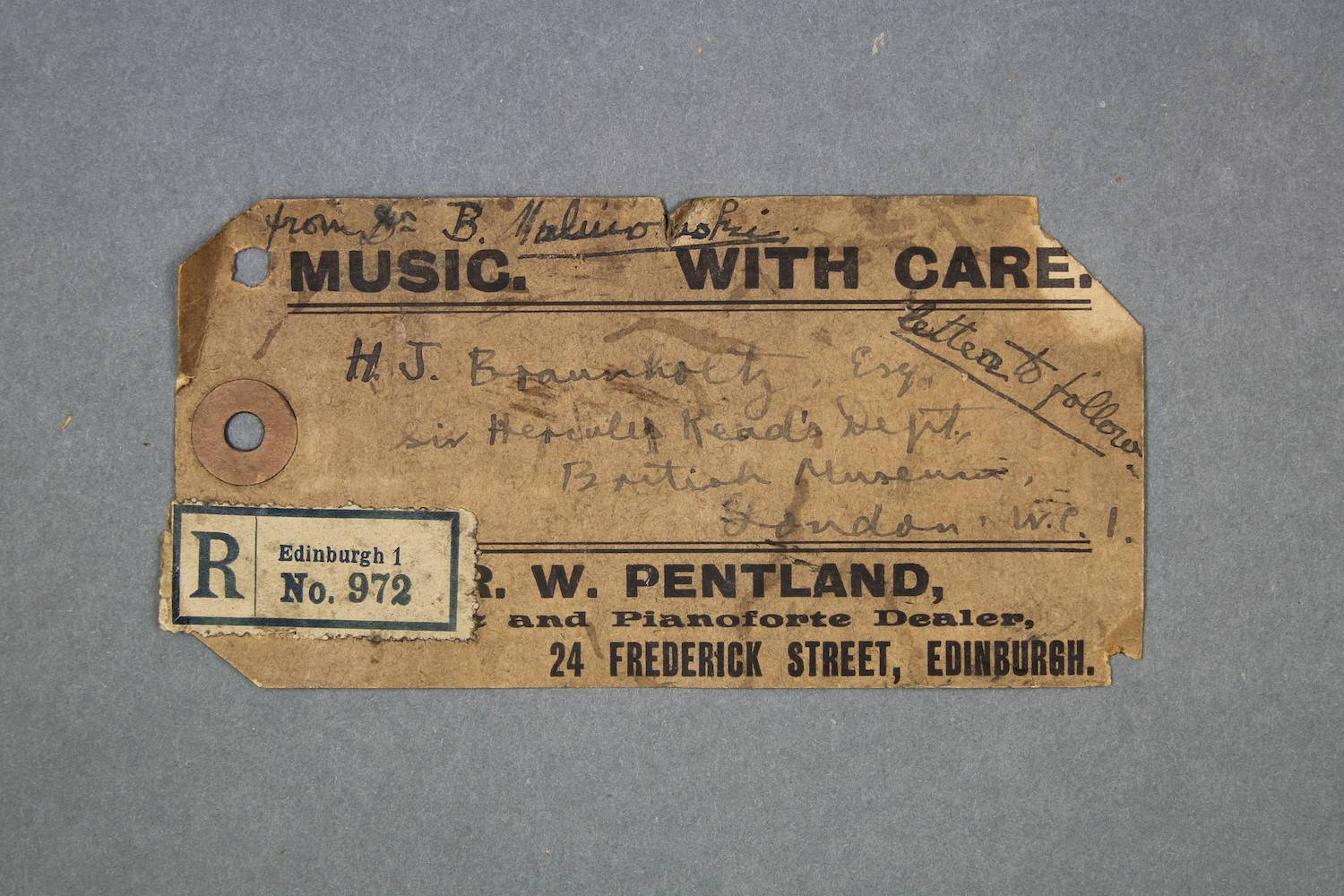 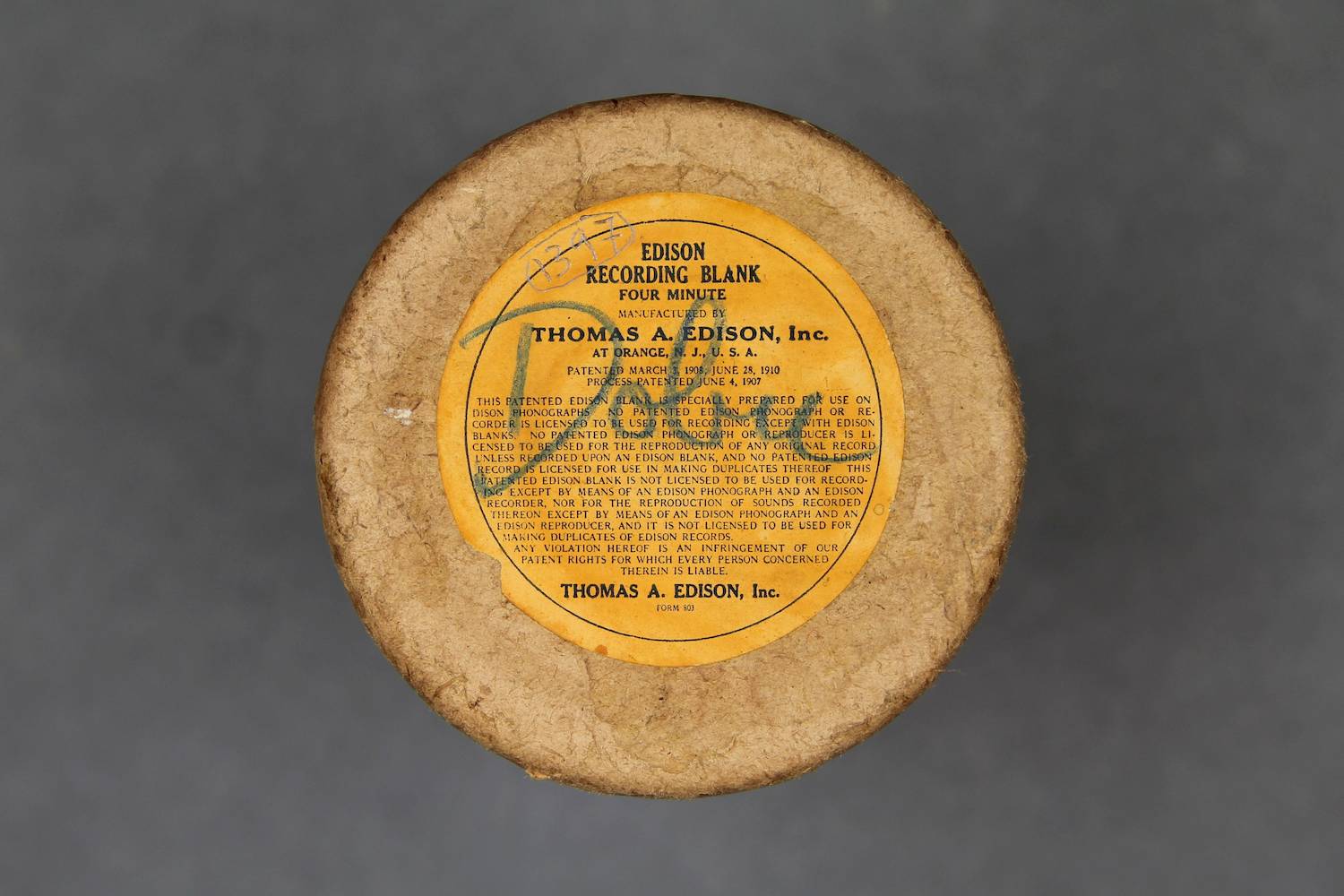 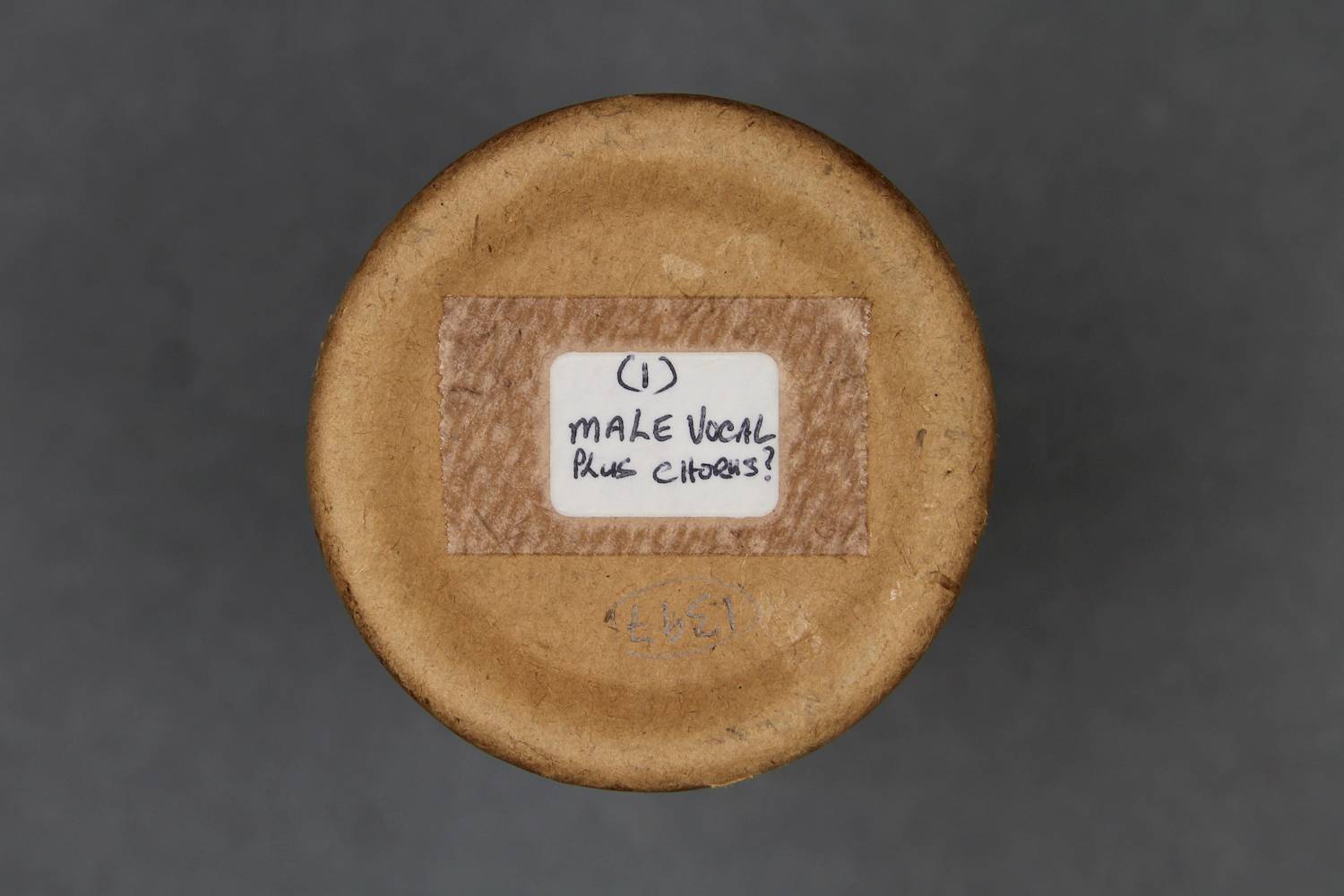    | Malinowski, Bronislaw. 1922. Argonauts of the Western Pacific: An Account of Native Enterprise and Adventure in the Archipelagoes of Melanesian New Guinea. London: Routledge. Read this at: https://wolnelektury.pl/media/book/pdf/argonauts-of-the-western-pacific.pdf | ||||||
| C46/1398 | Gumagabu | Paluwa (singer, male) | Trobriand Islands, Territory of Papua | July 1915 – October 1918 | 1. Unaccompanied male vocal solo singing. No further information available. Gumagabu is a song, dance and story/myth from Kiriwina; Malinowski explained and transcribed both the song and the story (Malinowski 1922:291-296) and photographed the dance (LSE photo archives MALINOWSKI/3/7/13). Both the song and the story of Gumagabu depicts the avenging expedition of a chief called Tomakam, although they do not quite tally. Tomakam’s aim was to avenge the earlier murder of his older brother, a chief called Toraya, in the district of Gabu in the D’Entrecasteaux Islands (Malinowski 1922:291-296). Malinowski mentioned seeing the dance of gumagabu (1916:380). The date of publication indicates that he must have seen it during his first period of fieldwork in the Trobriand Islands, between July 1915 and March 1916. Michael Young described it as a “Type of dance using dancing shields” (1998:283), and “the most popular” of the kaidebu dances (1998:94). The photograph in Malinowski 1929: plate 14, "Men in Full Festive Attire" and a similar one in LSE (LSE photo archives MALINOWSKI/3/7/13) almost certainly show the gumagabu dance being performed. | Paluwa was a Trobriand Islander of low rank from the village of Omarakana (Malinowski 1967:295). He had three sons, including Monakewo (see below), and three daughters, and “discussed his troubles … at length” with Malinowski (Malinowski 1929:80). | Reasonable quality recording, but with slight speed fluctuation throughout. | Kilivila | Field recordings; Folk songs and music; Narrative songs; Ballads | Malinowski, Bronislaw Kasper | 2'10" | Bronislaw Malinowski's 1915-1918 fieldwork on Kiriwina, Trobriand Islands, Papua New Guinea | Black wax cylinder | Bronislaw Malinowski 1915 – 1918 Trobriand Islands, Territory of Papua Cylinder Collection (C46) | British Library |  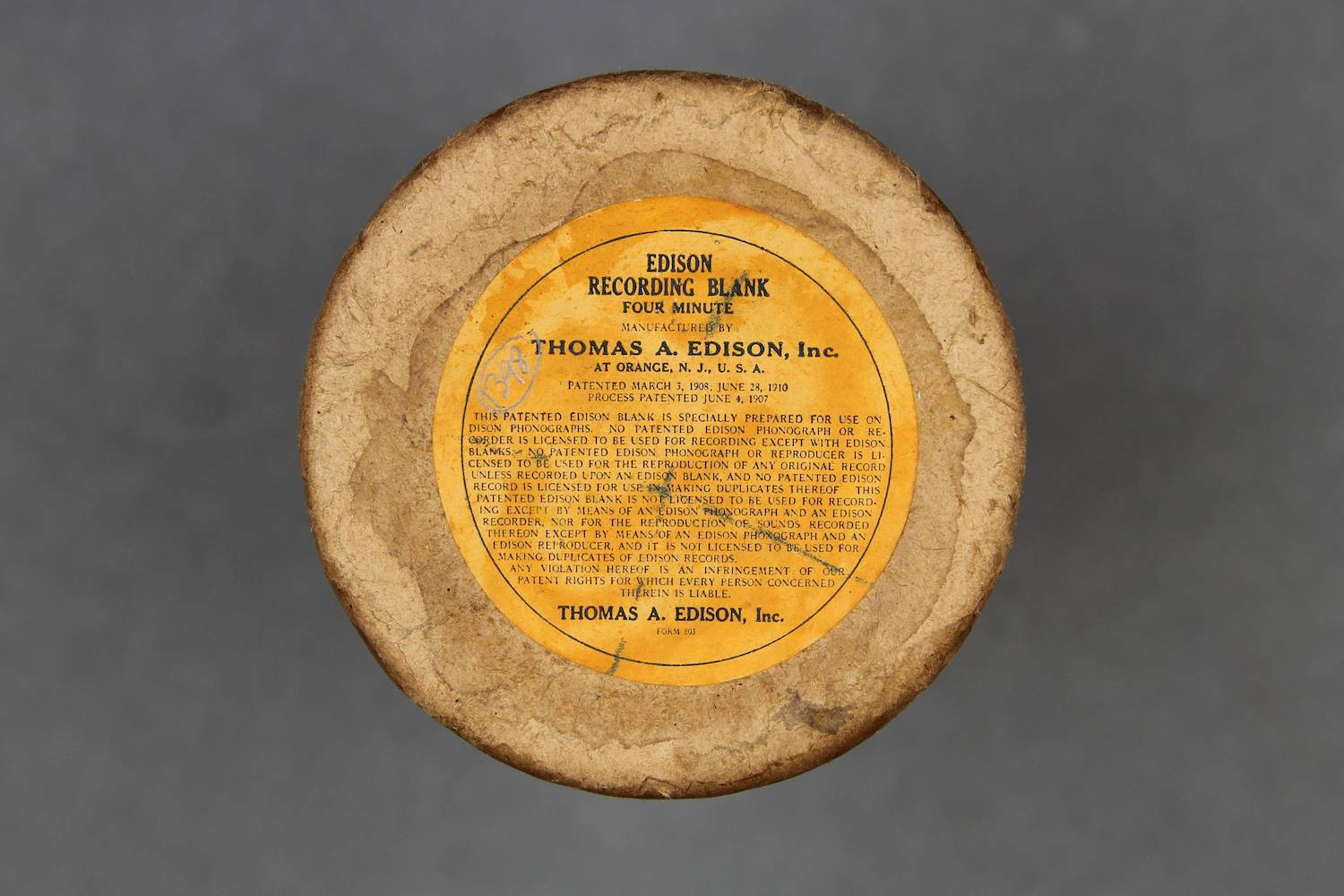  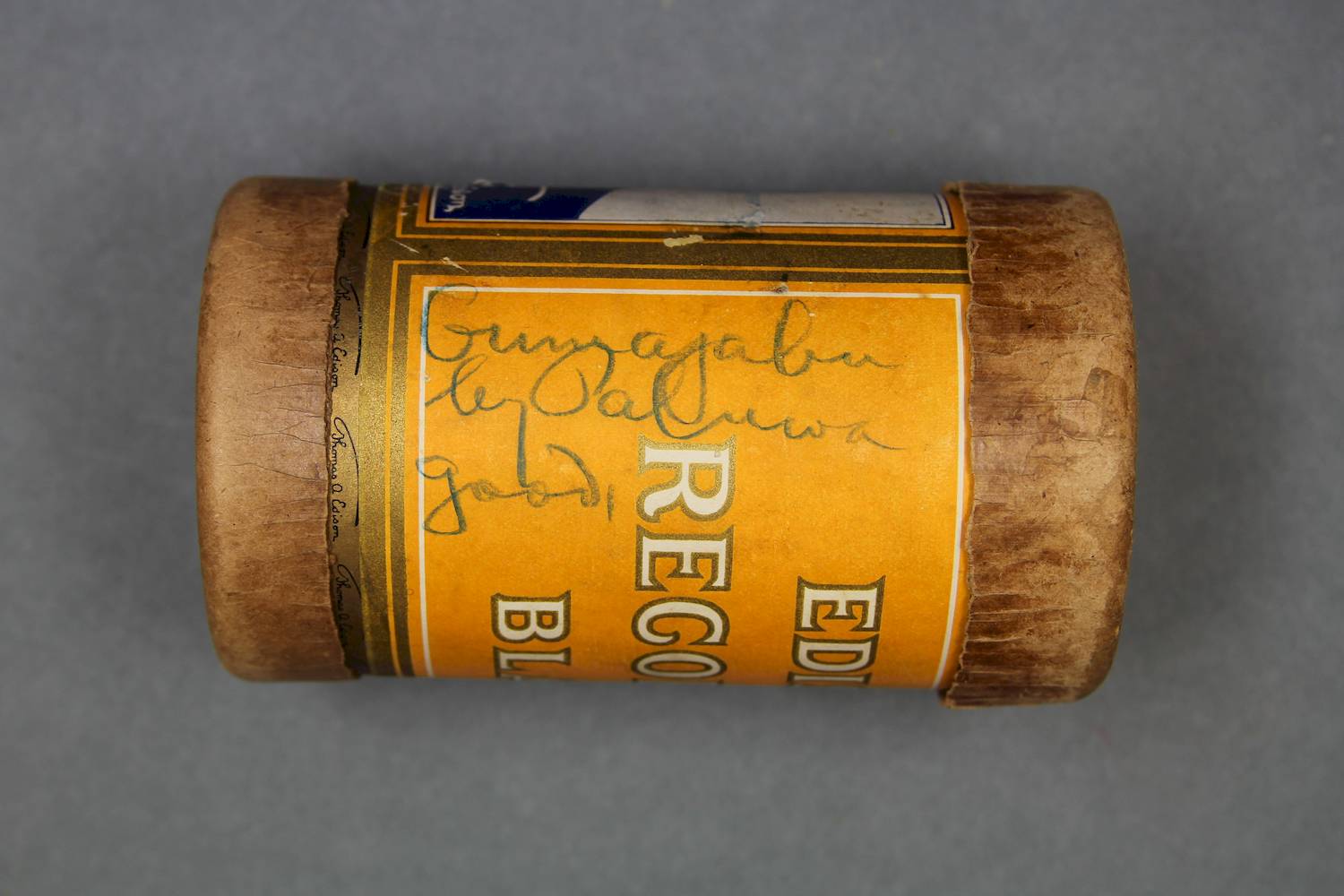   | Malinowski, Bronislaw. 1922. Argonauts of the Western Pacific: An Account of Native Enterprise and Adventure in the Archipelagoes of Melanesian New Guinea. London: Routledge. Read this at: https://wolnelektury.pl/media/book/pdf/argonauts-of-the-western-pacific.pdf | Malinowski, Bronislaw. 1916. ”Baloma: The Spirits of the Dead in the Trobriand Islands.” The Journal of the Royal Anthropological Institute of Great Britain and Ireland 46:353-430. Read this at: https://www.jstor.org/stable/2843398 | Malinowski, Bronislaw. 1929. The Sexual Life of Savages in Northwestern Melanesia. New York: Liveright. Read this at: http://www.berose.fr/IMG/pdf/malinowski_1929-the_sexual_life_of_savages.pdf | |||
| C46/1399 | Usi Tuma / Ragayewo | Monakewo (singer, male); Tokulubakiki (singer, male) | Trobriand Islands, Territory of Papua | July 1915 – October 1918 | 1-2. Unaccompanied male vocal solo singing. “Usituma is a song and dance of the Trobriand Islands … it is widely, and well known, being owned by six, or seven, different villages” (Baldwin 1945:201). Usi is probably an archaic pronunciation of wosi, the word for ‘song’ in Kilivila, the language of Kiriwina. Malinowski noted that Tuma is “a small island lying some ten miles to the north-west of the Trobriands,” where a person’s spirit went after their death (Malinowski 1916:354). Therefore usi tuma may have been a song about this spirit place. Malinowski noted that in the evening of 30th June 1918, on Kiriwina, after talking with “Monakewo about copulation,” he “Then sat and wrote down and translated Ragayewo” (Malinowski 1967:295). There are no other references to Ragayewo in his published material. Usi is probably an archaic pronunciation of wosi, the word for ‘song’ in Kilivila, the language of Kiriwina. | Malinowski described Monakewo as “a great friend of mine” (Malinowski 1929:68) and “one of my best linguistic commentators” (Malinowski 1935:38). Monakewo was Paluwa’s son, and lived in Omarakana. Malinowski mentioned him many times in his texts, and noted working with him on a number of occasions. Monakewo helped Malinowski back from another village one evening when Malinowski was unwell (Malinowski 1967:295). Malinowski described Tokulubakiki as his “best friend” (Malinowski 1929:148) and his “favourite informant in Omarakana,” saying that he could always rely on Tokulubakiki’s “honesty, goodwill and dispassionate reflection” (Malinowski 1929:161). He noted in a letter to his wife that Tokulubakiki was “a decent, honest, straightforward man” (Wayne 1995:151). Tokulubakiki was from the chiefly clan, and his father was one of the chiefs of Omarakana. Malinowski mentioned working with Tokulubakiki on many occasions, with magic and linguistics being common topics (Malinowski 1967:293, 295, 296, 310). Malinowski took a number of photographs of Tokulubakiki (Malinowski 1922:plate 9; 1929:236; Young 1998:50, 54, 68, 69, 129), and also of Tokulubakiki and Kuwo’igu, his wife (Malinowski 1929:plate 26), and also with his mother and children (LSE photo archives MALINOWSKI/3/ARG/15 LSE). | Surface noise caused by mould. | Kilivila | Field recordings; Folk songs and music; Narrative songs; Ballads | Malinowski, Bronislaw Kasper | 2'08" | Bronislaw Malinowski's 1915-1918 fieldwork on Kiriwina, Trobriand Islands, Papua New Guinea | Black wax cylinder | Bronislaw Malinowski 1915 – 1918 Trobriand Islands, Territory of Papua Cylinder Collection (C46) | British Library |  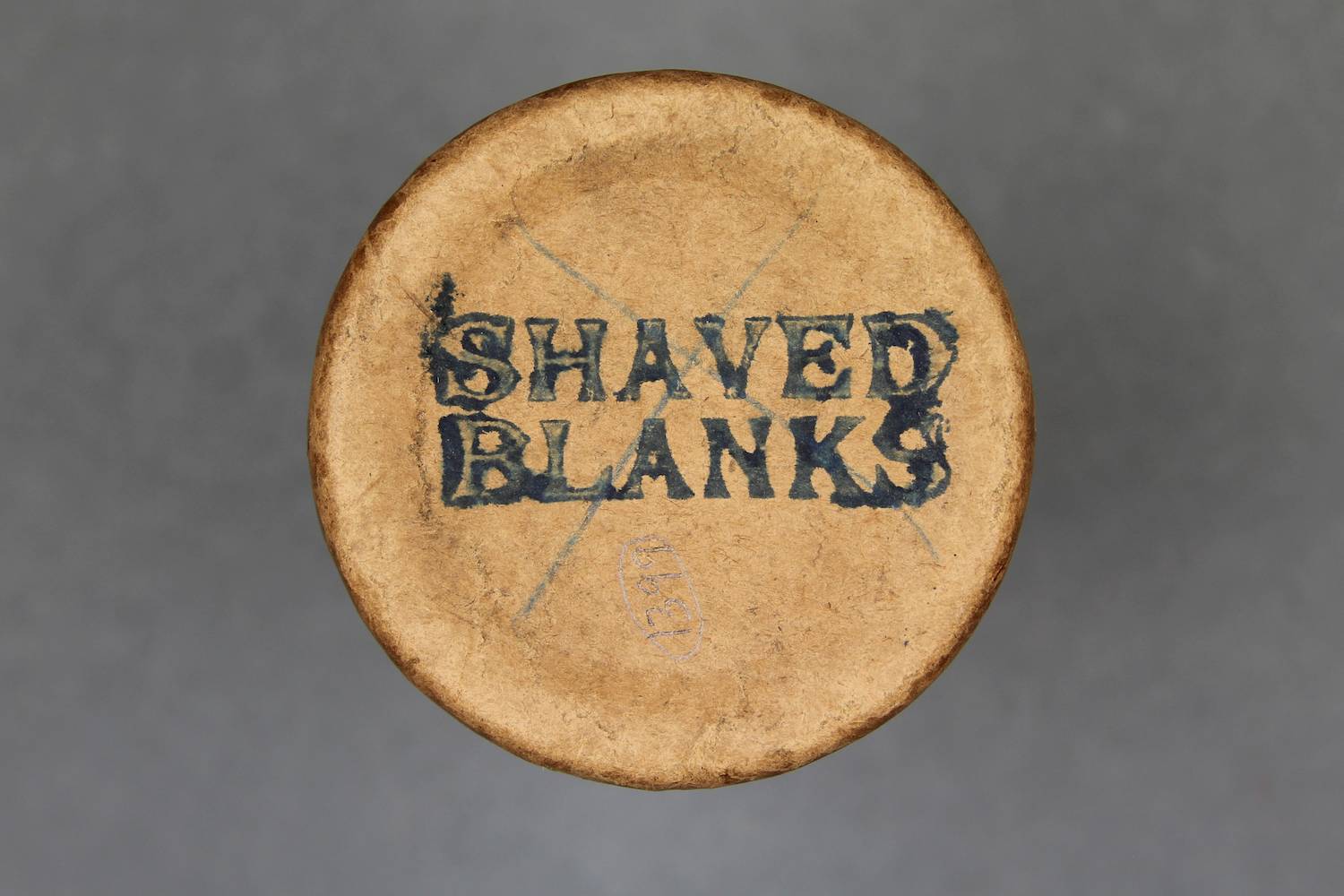 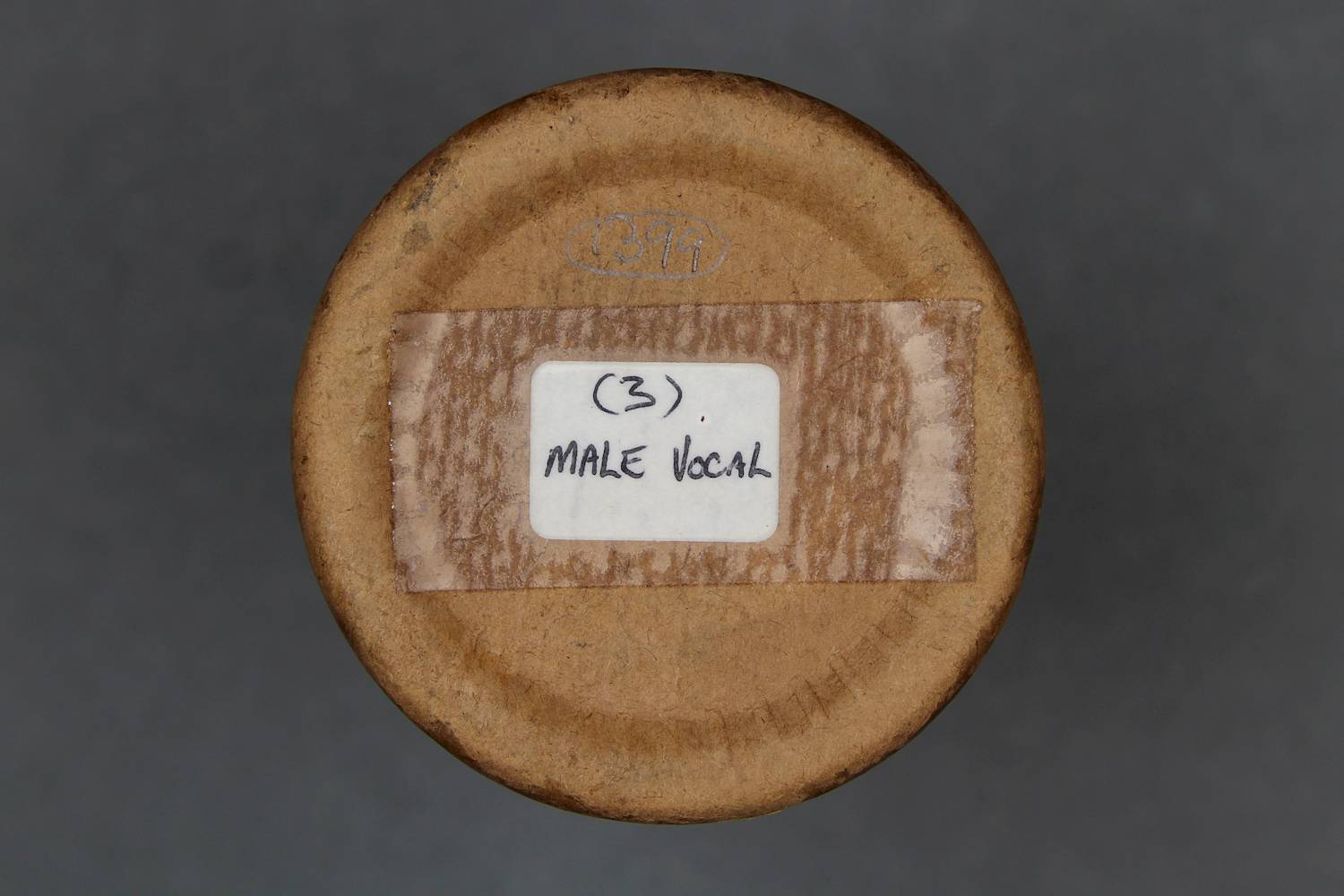 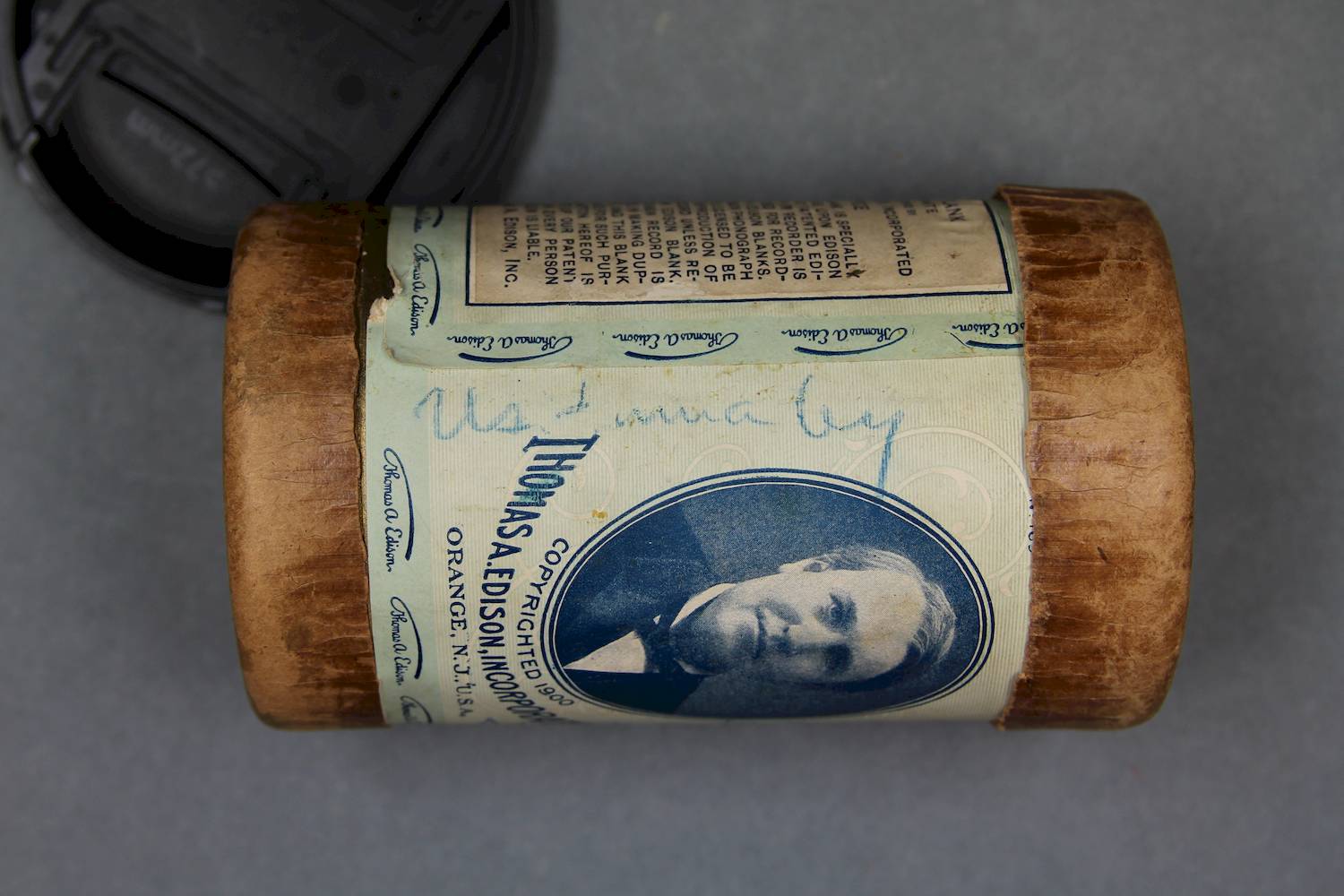 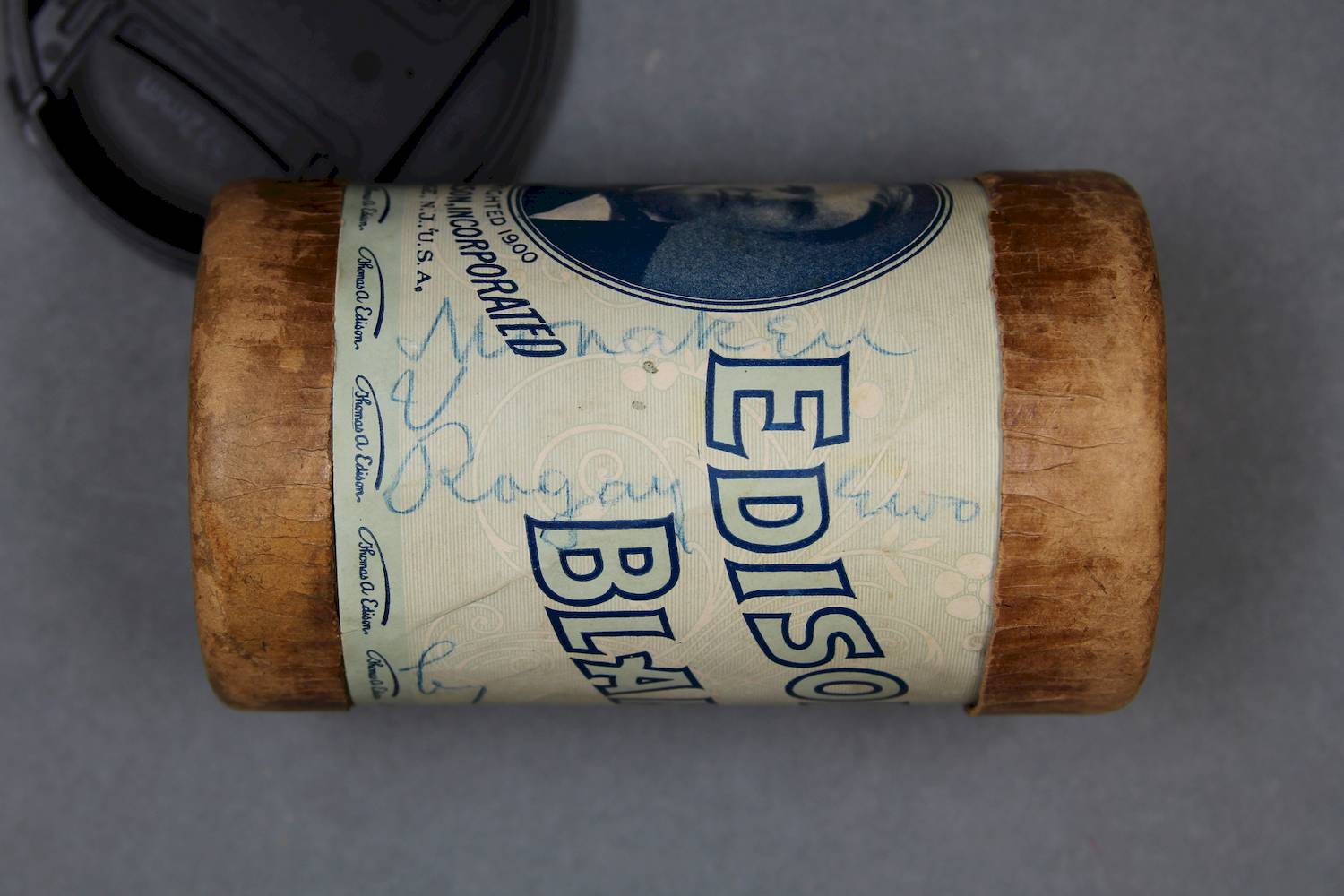 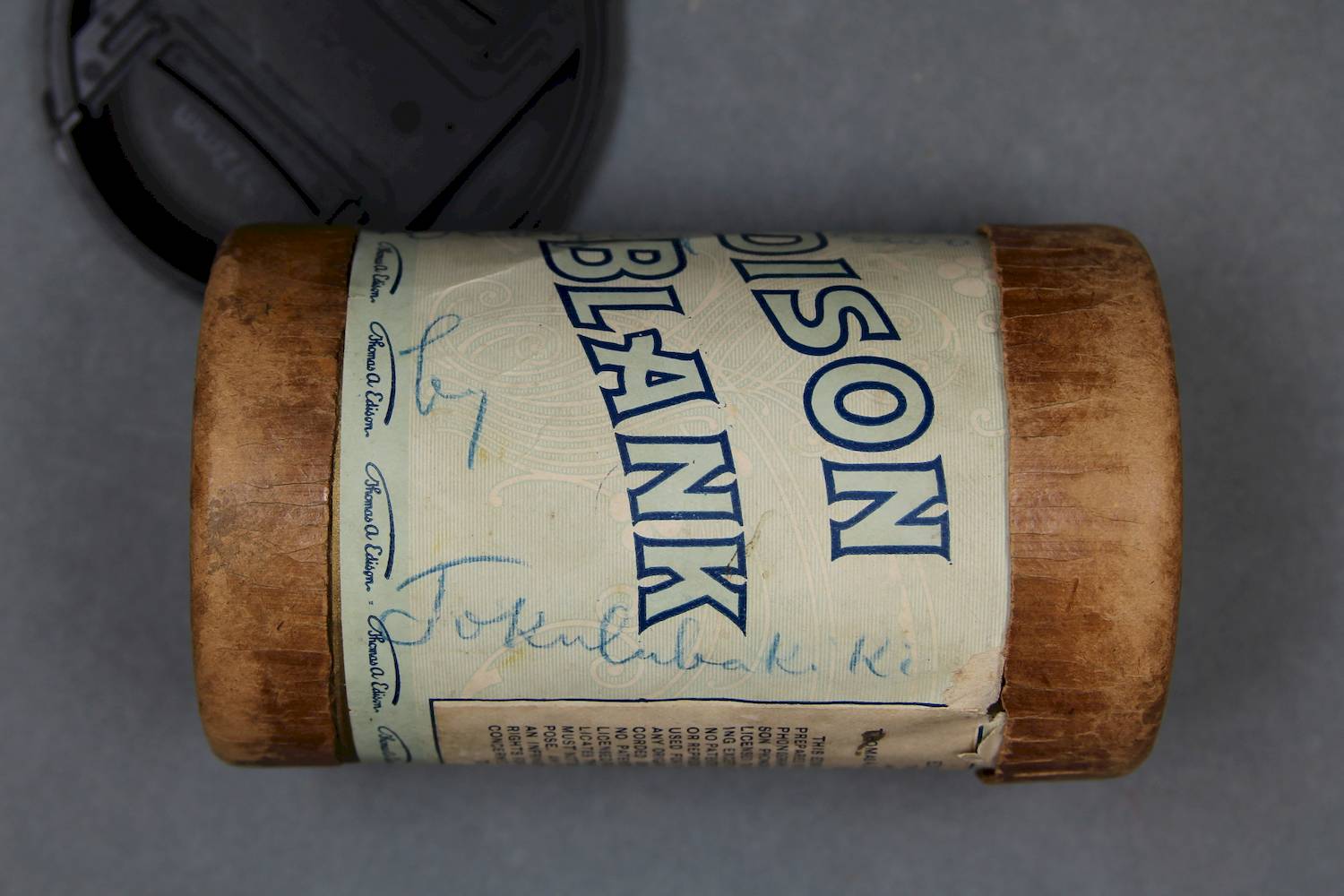 | Malinowski, Bronislaw. 1922. Argonauts of the Western Pacific: An Account of Native Enterprise and Adventure in the Archipelagoes of Melanesian New Guinea. London: Routledge. Read this at: https://wolnelektury.pl/media/book/pdf/argonauts-of-the-western-pacific.pdf | Baldwin, Bernard. 1945 "Usituma! Song of Heaven." Oceania, 15:201-238. Read this at: https://onlinelibrary.wiley.com/doi/abs/10.1002/j.1834-4461.1945.tb00425.x | Malinowski, Bronislaw. 1916. ”Baloma: The Spirits of the Dead in the Trobriand Islands.” The Journal of the Royal Anthropological Institute of Great Britain and Ireland 46:353-430. Read this at: https://www.jstor.org/stable/2843398 | Malinowski, Bronislaw. 1929. The Sexual Life of Savages in Northwestern Melanesia. New York: Liveright. Read this at: http://www.berose.fr/IMG/pdf/malinowski_1929-the_sexual_life_of_savages.pdf | Malinowski, Bronislaw. 1967. A Diary in the Strict Sense of the Term. Trans. Norbert Guterman. New York: Harcourt, Brace & World. Read this at: | Young, Michael. 1998. Malinowski’s Kiriwina: Fieldwork Photography 1915–1918. Chicago: University of Chicago Press. Read this at: |
| C46/1400 | Ilakavetega | Monakewo (singer, male) | Trobriand Islands, Territory of Papua | July 1915 – October 1918 | 1. Unaccompanied male vocal solo of spoken text with some sung parts. Ilakavetega is a story from Kiriwina known as 'The Reef Heron and Ilakavetega' (Malinowski 1929:341-342). Malinowski transcribed, translated and explained the story and song of The Reef Heron and Ilakavetaga, calling it a "gratuitous insult" and noting that it was told with "sing-song intonation" (Malinowski 1929:341-342). | Malinowski described Monakewo as “a great friend of mine” (Malinowski 1929:68) and “one of my best linguistic commentators” (Malinowski 1935:38). Monakewo was Paluwa’s son, and lived in Omarakana. Malinowski mentioned him many times in his texts, and noted working with him on a number of occasions. Monakewo helped Malinowski back from another village one evening when Malinowski was unwell (Malinowski 1967:295 | Surface noise caused by mould. | Kilivila | Field recordings; Folk tales; Storytelling | Malinowski, Bronislaw Kasper | 2'21" | Bronislaw Malinowski's 1915-1918 fieldwork on Kiriwina, Trobriand Islands, Papua New Guinea | Black wax cylinder | Bronislaw Malinowski 1915 – 1918 Trobriand Islands, Territory of Papua Cylinder Collection (C46) | British Library |  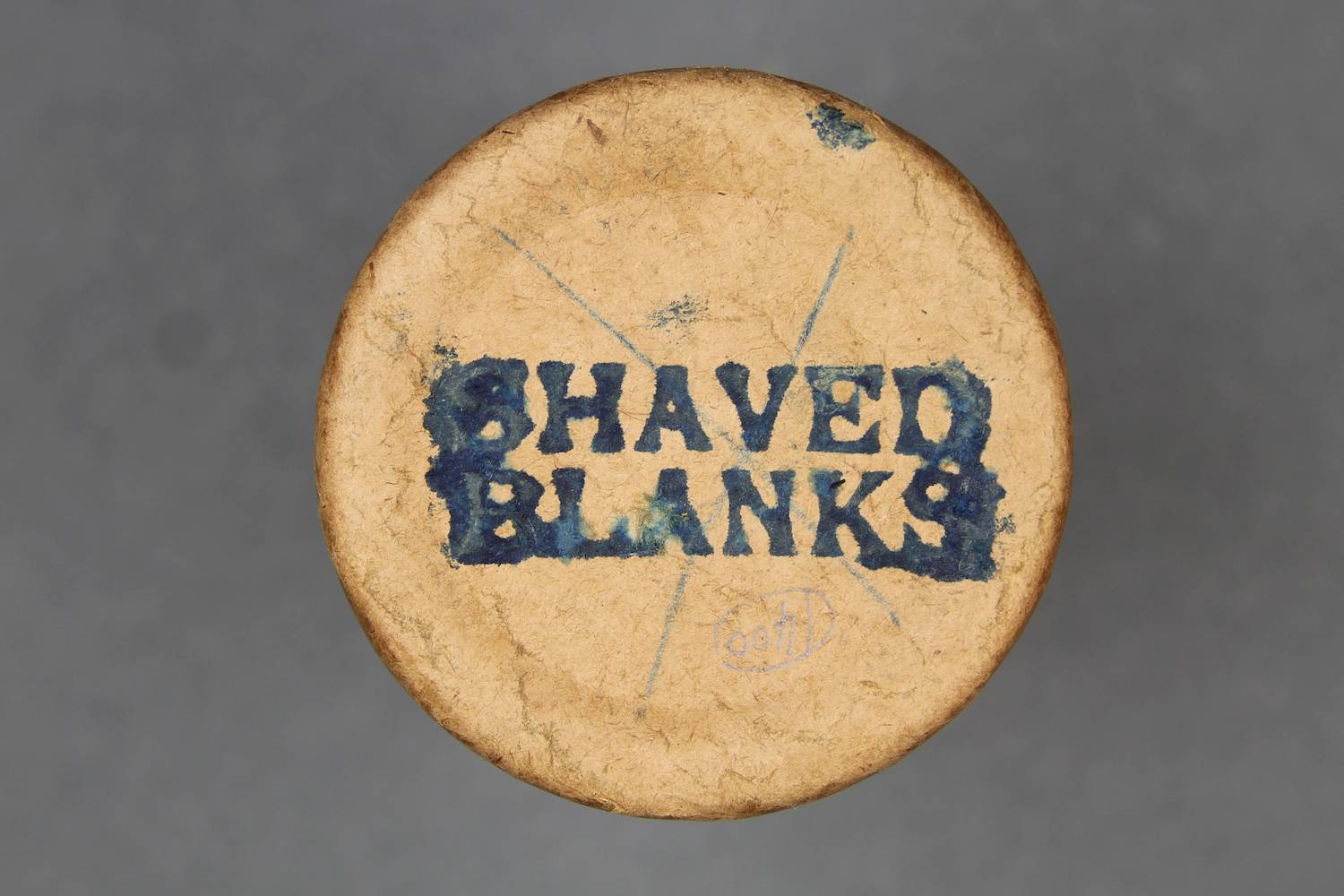 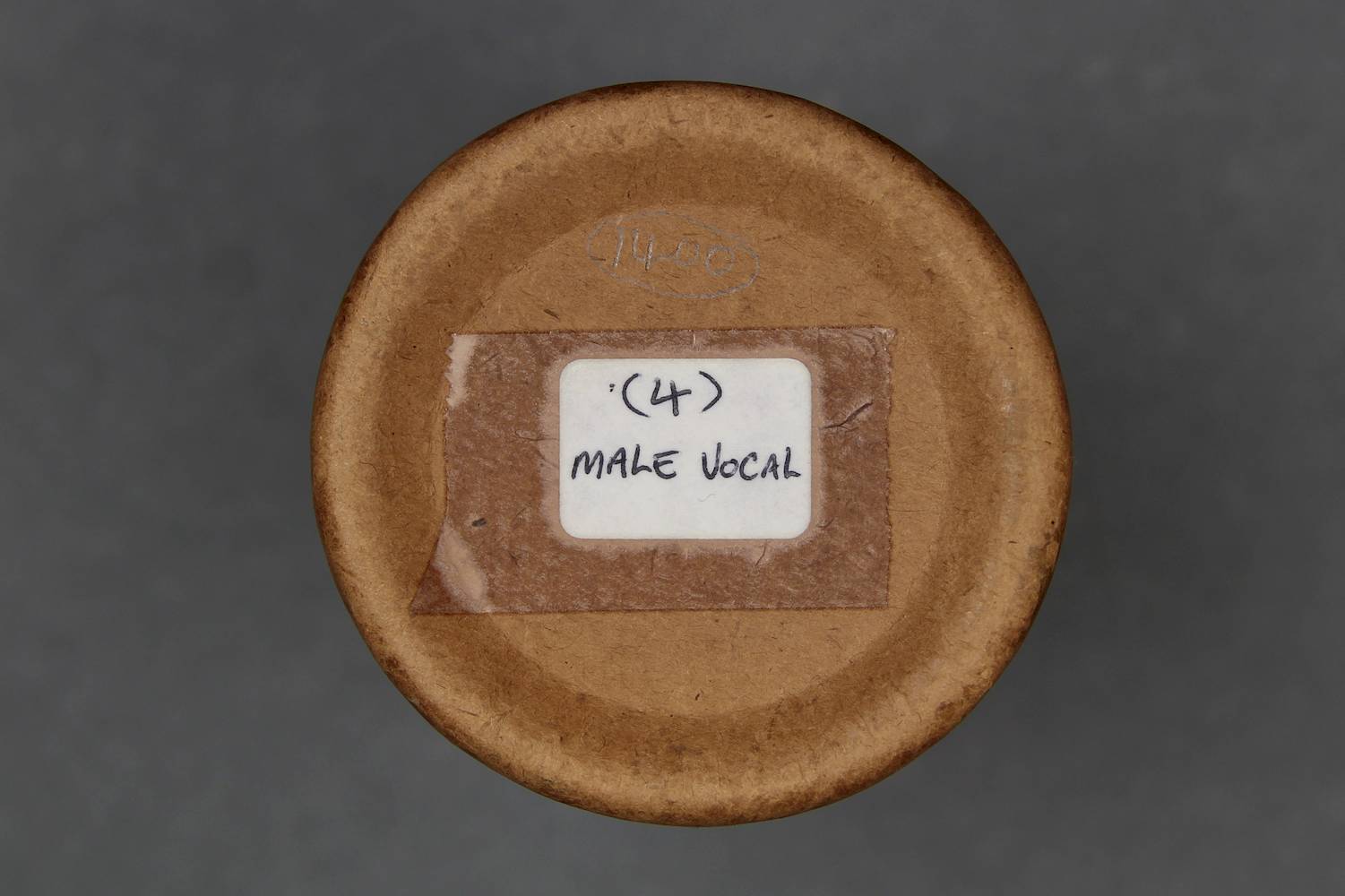 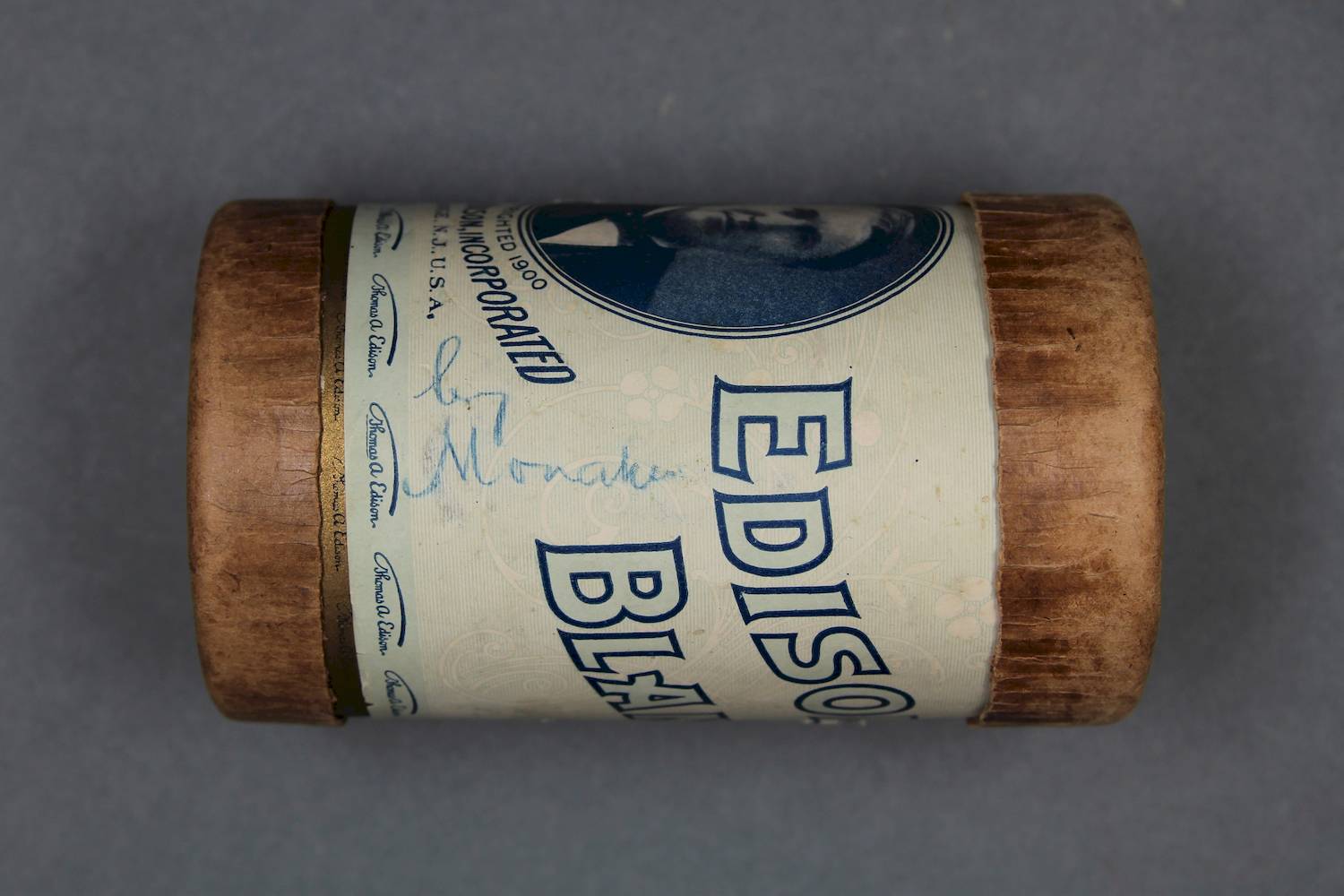 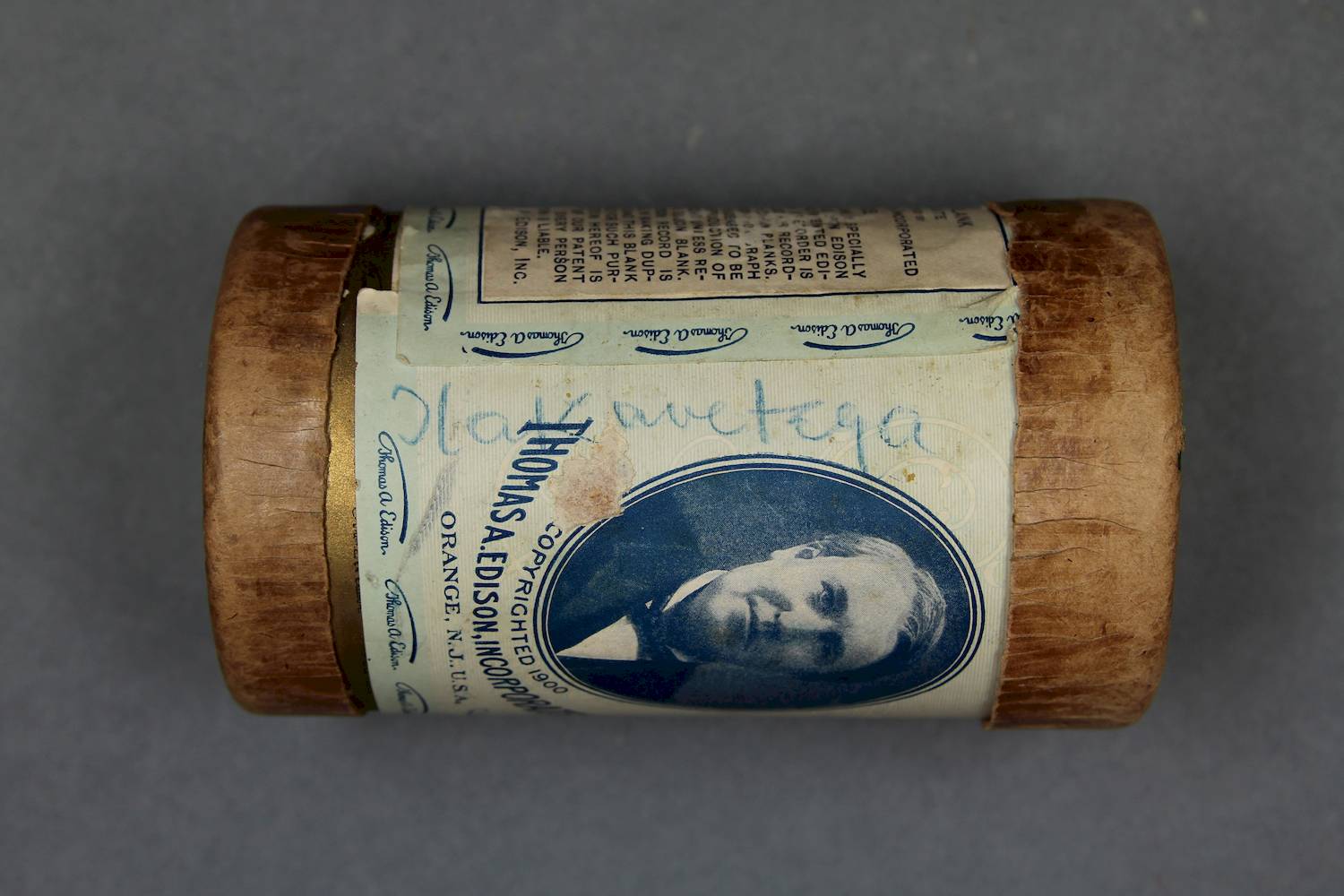  | Malinowski, Bronislaw. 1929. The Sexual Life of Savages in Northwestern Melanesia. New York: Liveright. Read this at: http://www.berose.fr/IMG/pdf/malinowski_1929-the_sexual_life_of_savages.pdf | |||||
| C46/1401 | Gumagabu | Paluwa (singer, male) | Trobriand Islands, Territory of Papua | 1918-07-17 | 1. Unaccompanied male vocal solo singing. Gumagabu is a song, dance and story/myth from Kiriwina; Malinowski explained and transcribed both the song and the story (Malinowski 1922:291-296). Both the song and the story of Gumagabu depicts the avenging expedition of a chief called Tomakam, although they do not quite tally. Tomakam’s aim was to avenge the earlier murder of his older brother, a chief called Toraya, in the district of Gabu in the D’Entrecasteaux Islands (Malinowski 1922:291-296). Malinowski mentioned seeing the dance of gumagabu (1916:380). The date of publication indicates that he must have seen it during his first period of fieldwork in the Trobriand Islands, between July 1915 and March 1916. Michael Young described it as a “Type of dance using dancing shields” (1998:283), and “the most popular” of the kaidebu dances (1998:94). The photograph in Malinowski 1929: plate 14, "Men in Full Festive Attire" and a similar one in LSE (LSE photo archives MALINOWSKI/3/7/13) almost certainly show the gumagabu dance being performed. | Paluwa was a Trobriand Islander of low rank from the village of Omarakana (Malinowski 1967:295). He had three sons, including Monakewo (see below), and three daughters, and “discussed his troubles … at length” with Malinowski (Malinowski 1929:80). | Cylinder is cracked, resulting in loud clicks throughout. | Kilivila | Field recordings; Folk songs and music; Narrative songs; Ballads | Malinowski, Bronislaw Kasper | 1'59" | Bronislaw Malinowski's 1915-1918 fieldwork on Kiriwina, Trobriand Islands, Papua New Guinea | Black wax cylinder | Bronislaw Malinowski 1915 – 1918 Trobriand Islands, Territory of Papua Cylinder Collection (C46) | British Library |  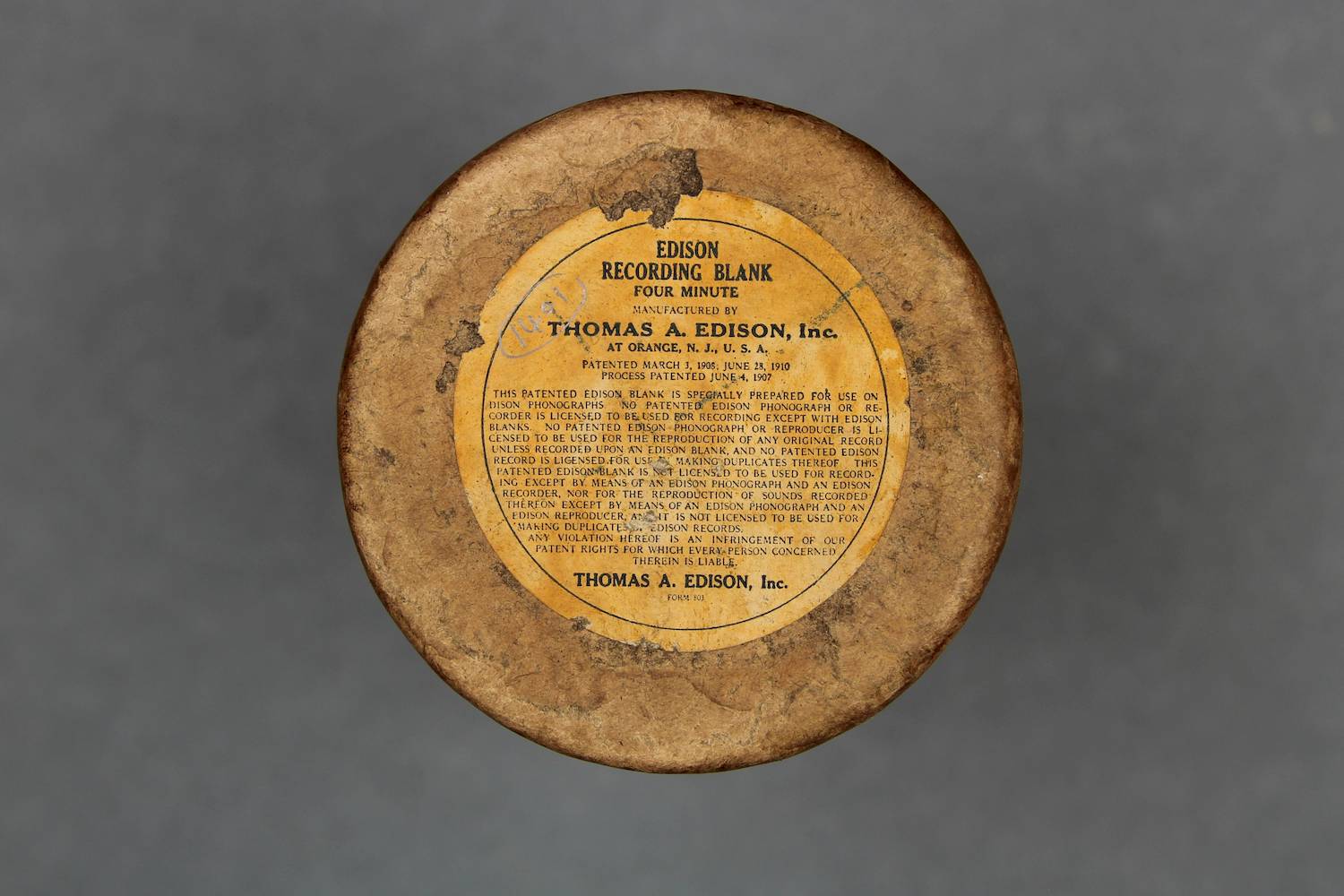 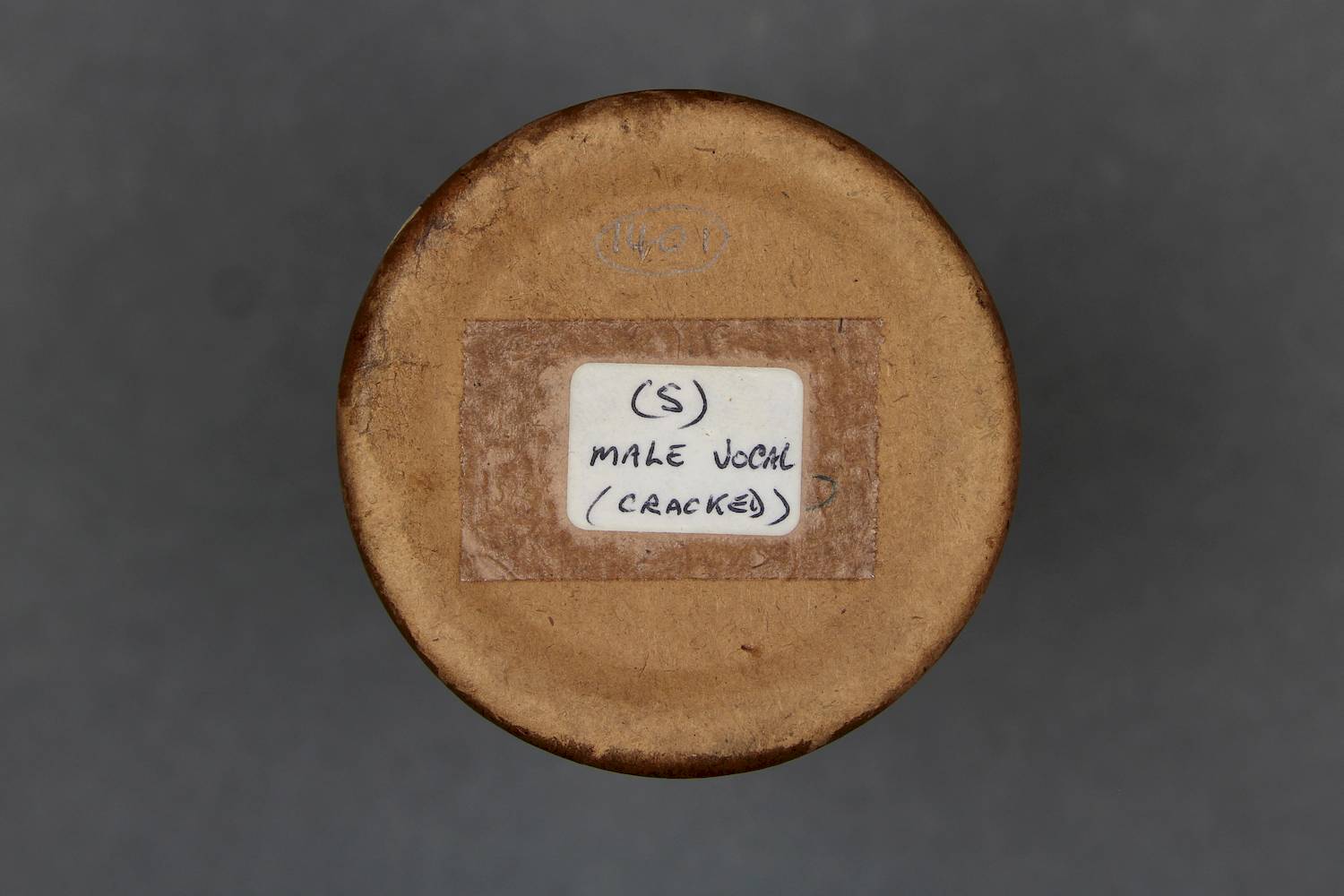 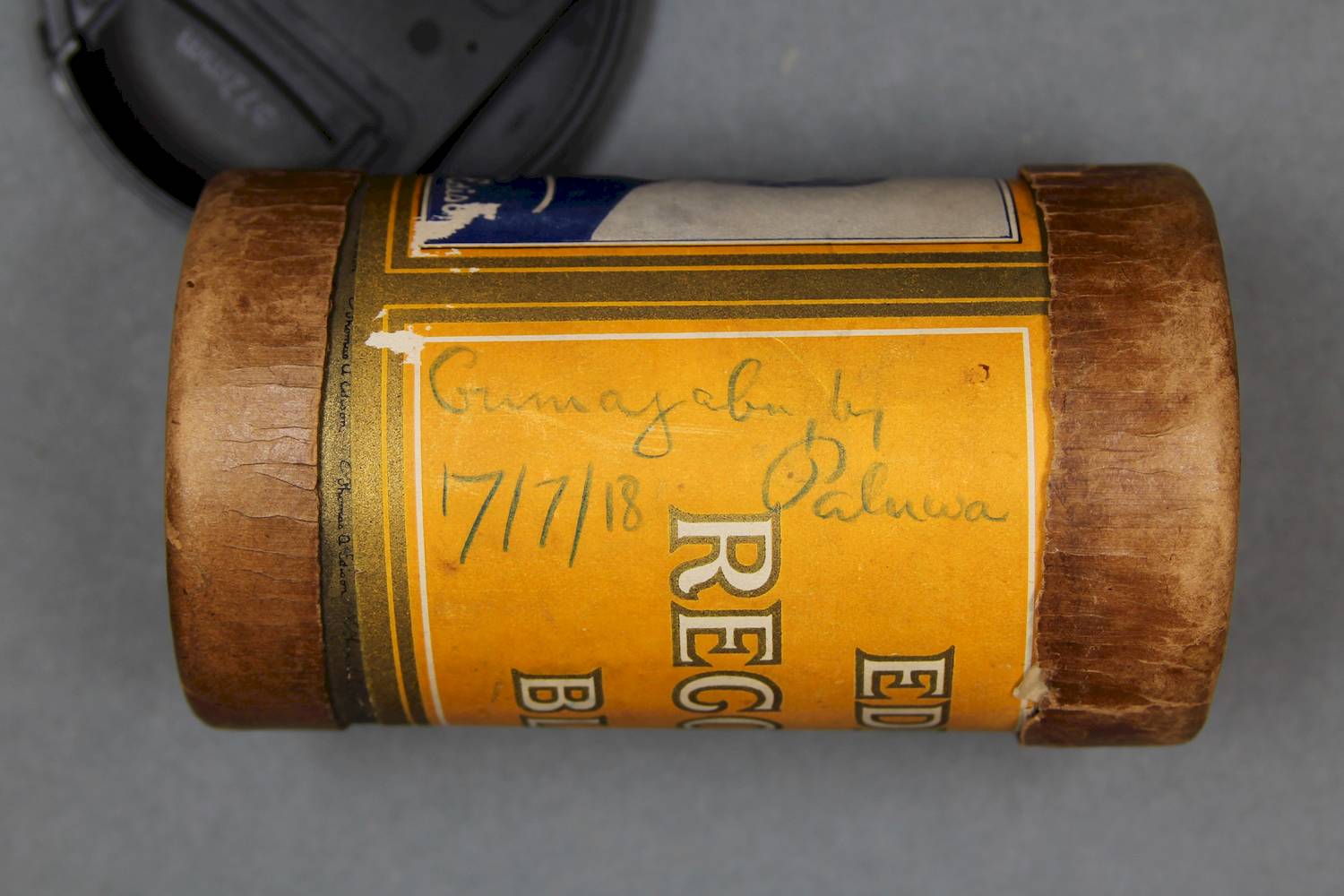   | Malinowski, Bronislaw. 1922. Argonauts of the Western Pacific: An Account of Native Enterprise and Adventure in the Archipelagoes of Melanesian New Guinea. London: Routledge. Read this at: https://wolnelektury.pl/media/book/pdf/argonauts-of-the-western-pacific.pdf | |||||
| C80/828 | Roro Dance | Unidentified (singer, male); unidentified (percussion) | Roro language area, Central District, British New Guinea | 7 July 1898 – 18 July 1898 | 1. Announcement: "[indecipherable] song. 2. Male vocal solo with drum accompaniment. | Poor quality recording with weak signal and surface noise. | Waima / Roro | Field recordings | Ray, Sidney | 2'43" | Alfred Cort Haddon 1898 Expedition, British New Guinea | Brown wax cylinder | Alfred Cort Haddon 1898 Expedition (Torres Strait and British New Guinea) Cylinder Collection | British Library | 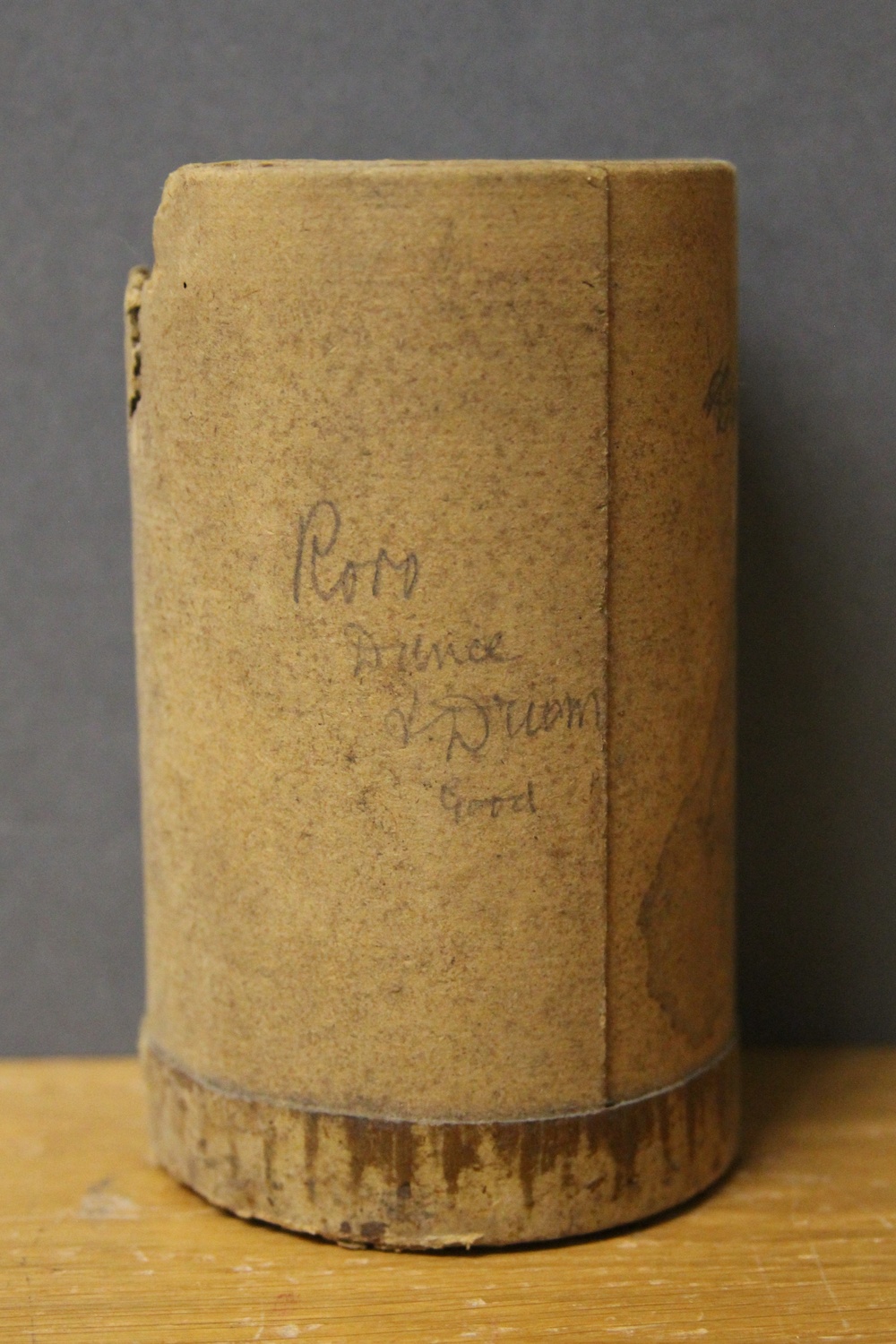 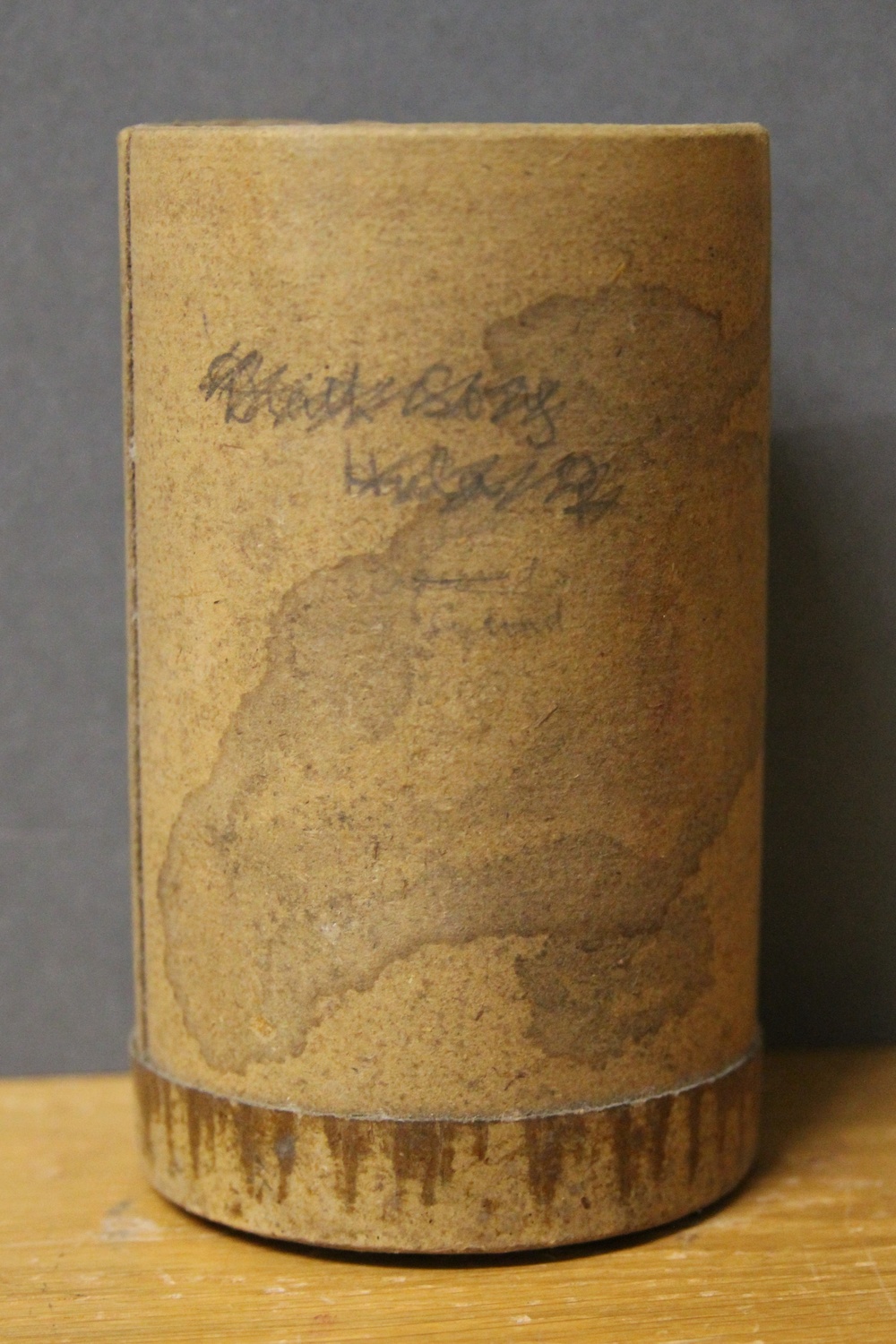     | |||||||
| C80/1035 | Kiwai Sairo [1] | Unidentified (singer, male) | Kiwai Island, Western District, British New Guinea | 13 September 1898 | Tracks 1 and 3 are Indecipherable announcement. Tracks 2 and 4 Unaccompanied male vocal solos. On insert note: 'Kiwai Sairo - male voice and drum'. A sairo was an old dance, a mimetic show related to folk-tales, according to Haddon (1935:219). | The recording is of a poor quality with heavy surface noise and weak signal. | Southern Kiwai (Island Kiwai dialect) | Field recordings; Mimetic dance | Ray, Sidney | 2'22" | Alfred Cort Haddon 1898 Expedition, British New Guinea | Brown wax cylinder | Alfred Cort Haddon 1898 Expedition (Torres Strait and British New Guinea) Cylinder Collection | British Library | 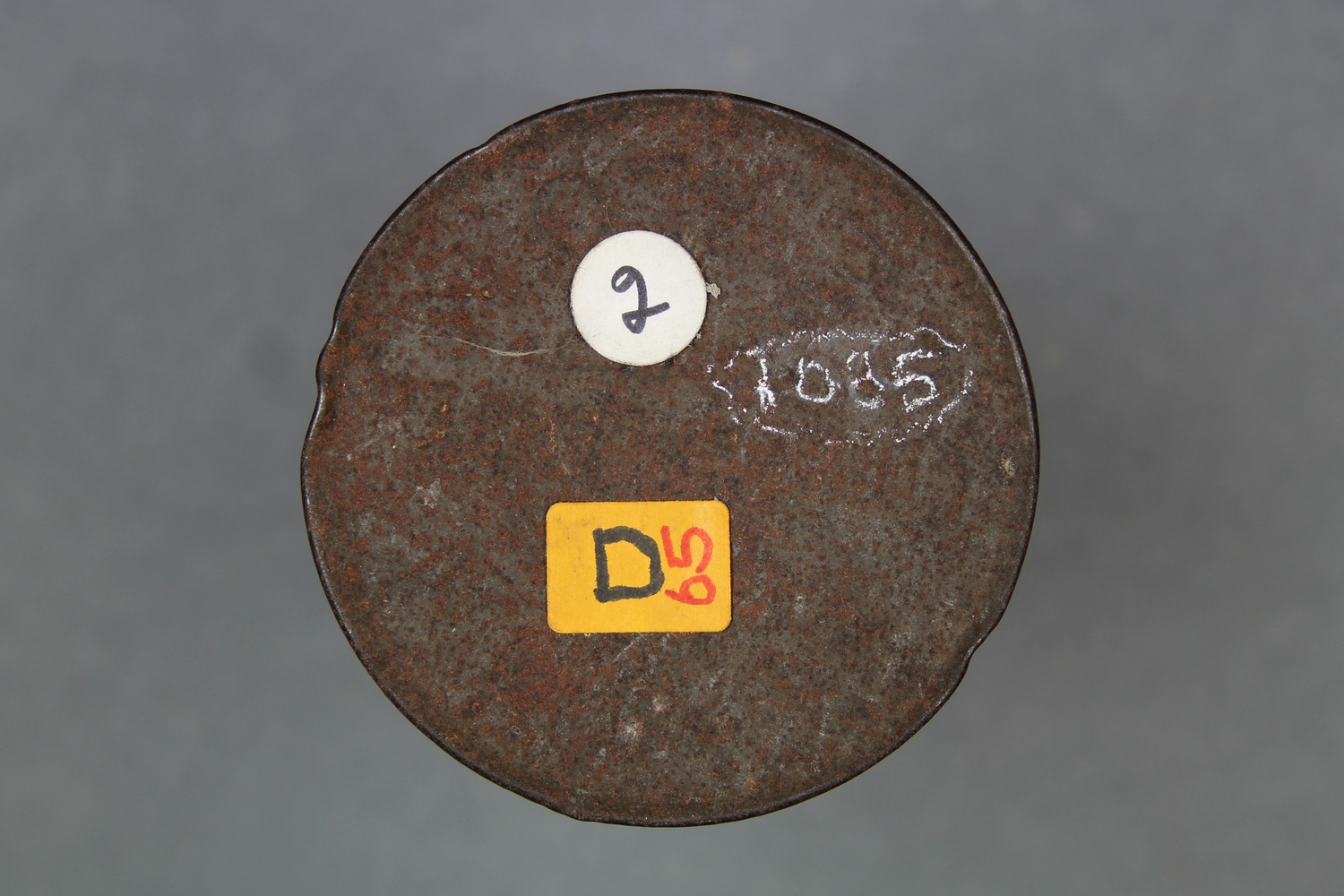      | Haddon, Alfred Cort (ed.) 1935. Reports of the Cambridge Anthropological Expedition to Torres Strait: Volume I, General Ethnography. Cambridge: Cambridge University Press. | ||||||
| C80/1062 | Koitapu sentences and Motu Hymn | Ahuia Ova (speaker, singer, male) | Port Moresby, British New Guinea | 6 July 1898 | 1. Announcement: "Koitapu sentences and Motu Hymn." 2. Solo male speech. 3. Unaccompanied male vocal solo. | Reasonable quality recording but with surface noise due to light mould on cylinder. | Koitabu and Motu | Field recordings; Speeches; Hymns | Ray, Sidney | 3'01" | Alfred Cort Haddon 1898 Expedition, British New Guinea | Brown wax cylinder | Alfred Cort Haddon 1898 Expedition (Torres Strait and British New Guinea) Cylinder Collection | British Library | 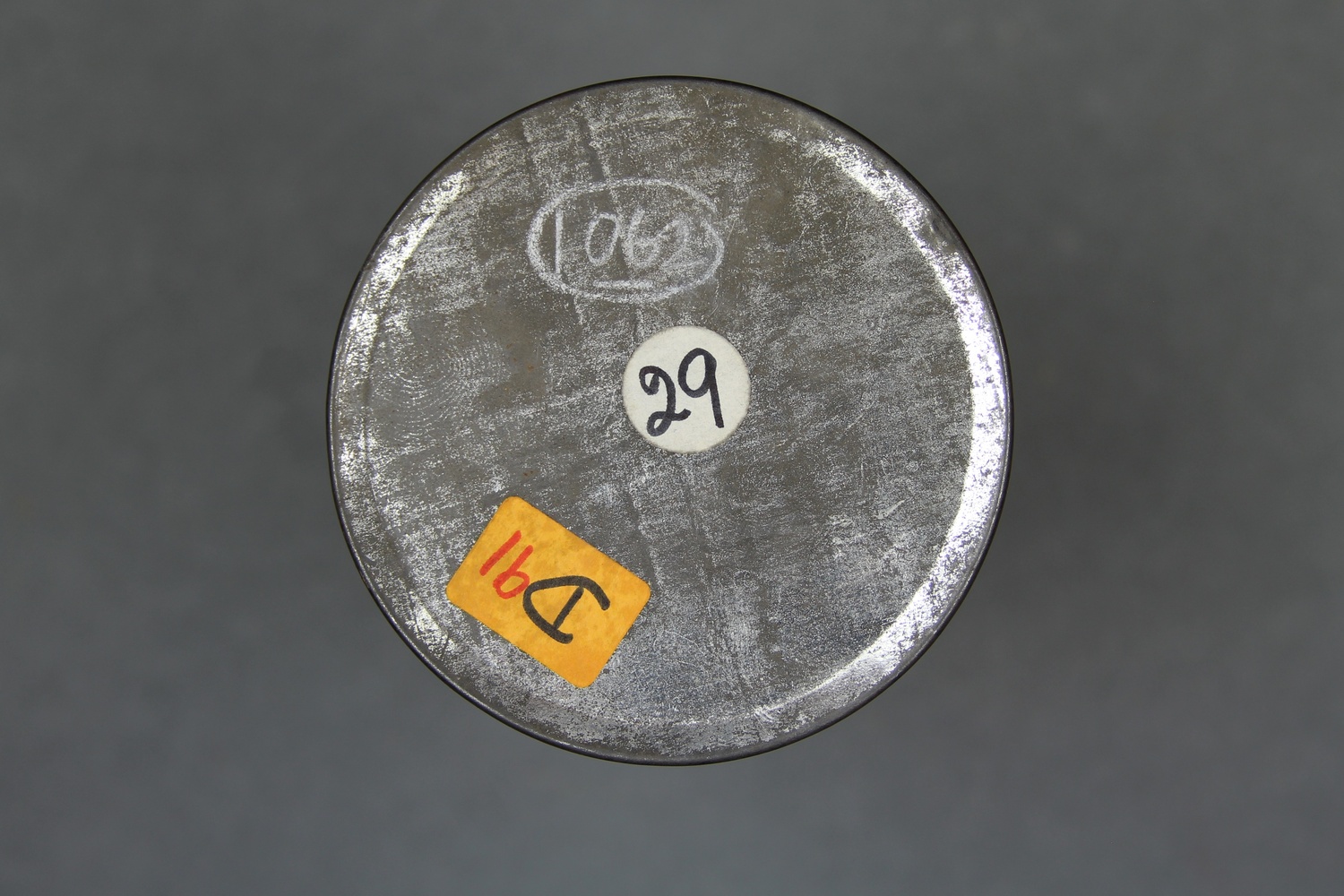 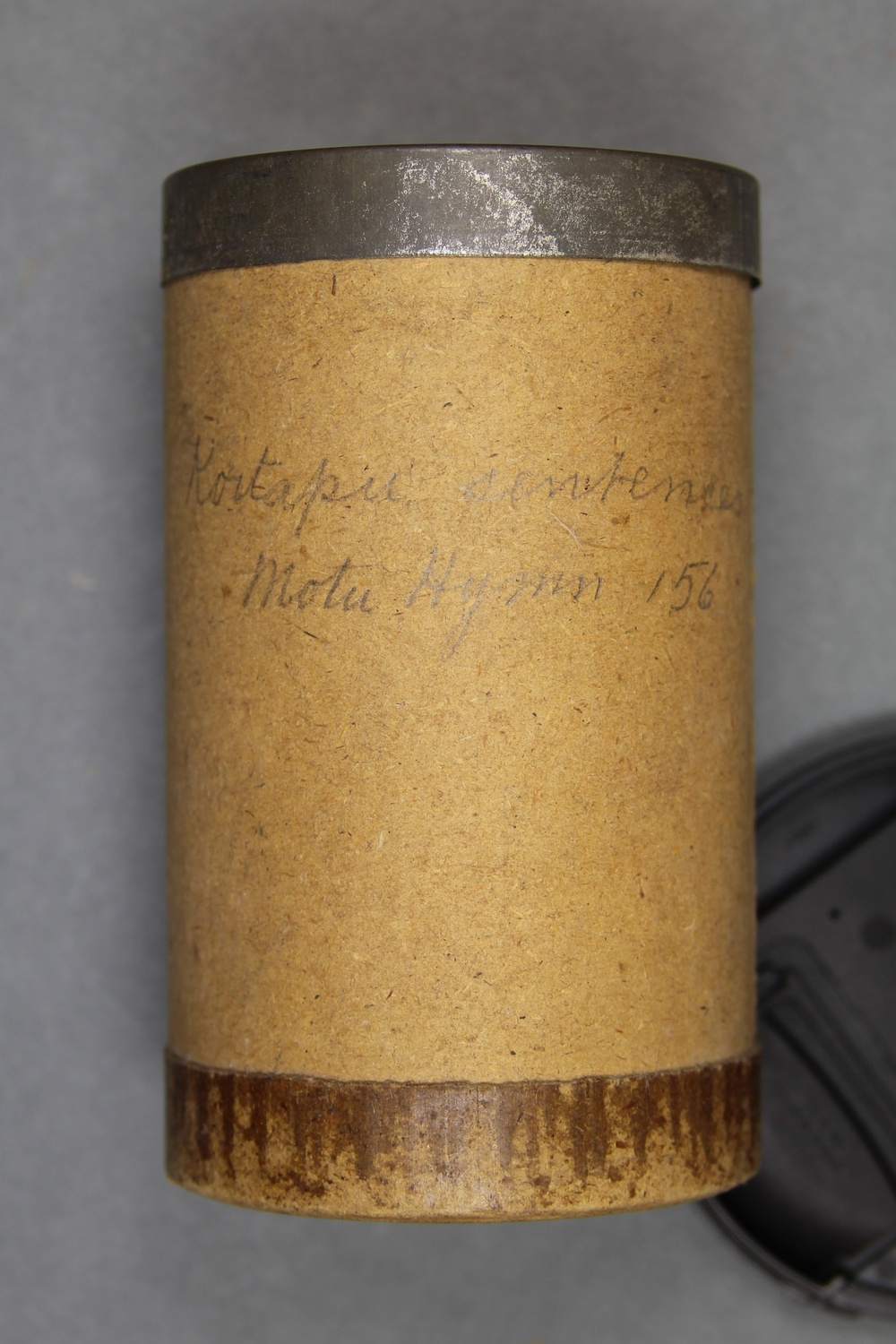 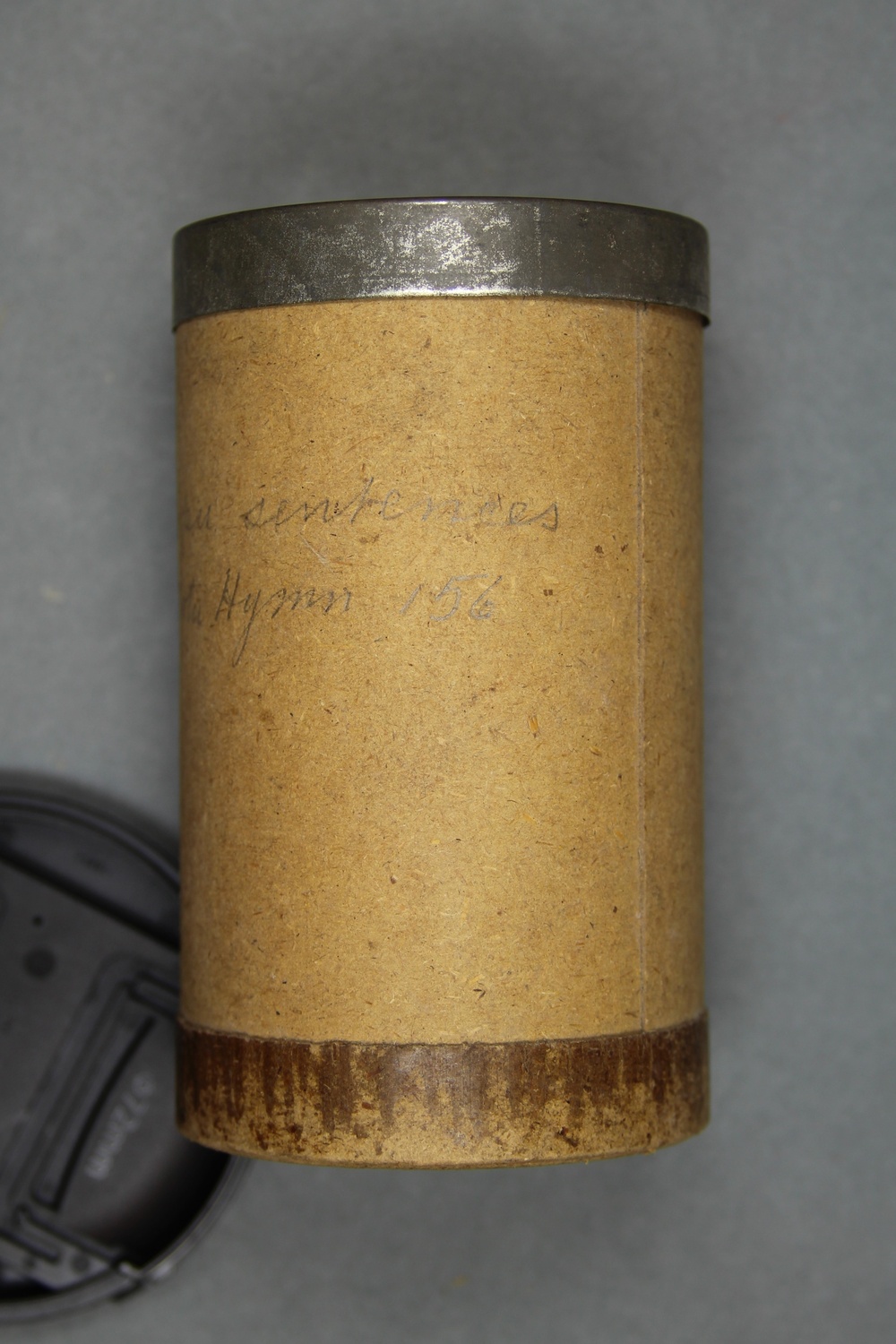    | |||||||
| C80/1082 | Male vocal solo | Dodoa? (singer, male) | Kiwai Island, Western District, British New Guinea | 15 September 1898 – 29 September 1898 | 1. Announcement: "Wayti naupui, sung by Bui [?]". 2. Unaccompanied male vocal solo. | Reasonable quality recording but with heavy surface noise due to mould on cylinder. | Southern Kiwai (Island Kiwai dialect) | Field recordings | Ray, Sidney | 2'12" | Alfred Cort Haddon 1898 Expedition, British New Guinea | Brown wax cylinder | Alfred Cort Haddon 1898 Expedition (Torres Strait and British New Guinea) Cylinder Collection | British Library | 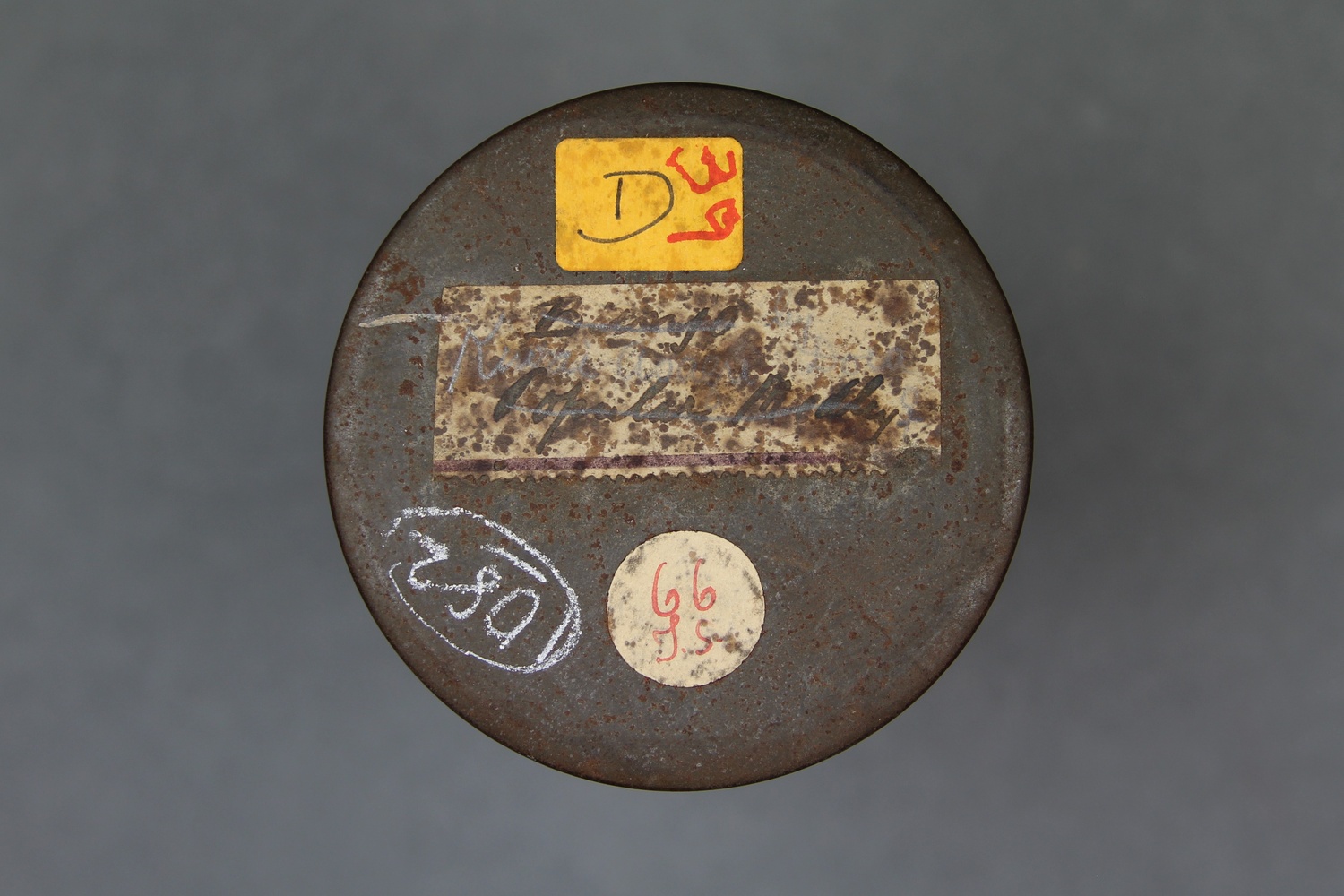      | |||||||
| C80/1083 | Kiwai Sairo [2] | Unidentified (singer, male); unidentified (percussion) | Kiwai Island, Western District, British New Guinea | 15 September 1898 – 29 September 1898 | 1. Indecipherable announcement. 2. Male vocal solo, accompanied by percussion. 3. Indecipherable announcement. 4. Male vocal solo, accompanied by percussion. According to Don Niles, 'Sairo' indicates a dialect of Island Kiwai, or Southern Kiwai). A sairo was an old dance, a mimetic show related to folk-tales, according to Haddon. | Reasonable quality recording but with fluctuating speeds and heavy surface noise. | Southern Kiwai (Island Kiwai dialect) | Field recordings; Mimetic dance | Ray, Sidney | 2'23" | Alfred Cort Haddon 1898 Expedition, British New Guinea | Brown wax cylinder | Alfred Cort Haddon 1898 Expedition (Torres Strait and British New Guinea) Cylinder Collection | British Library | 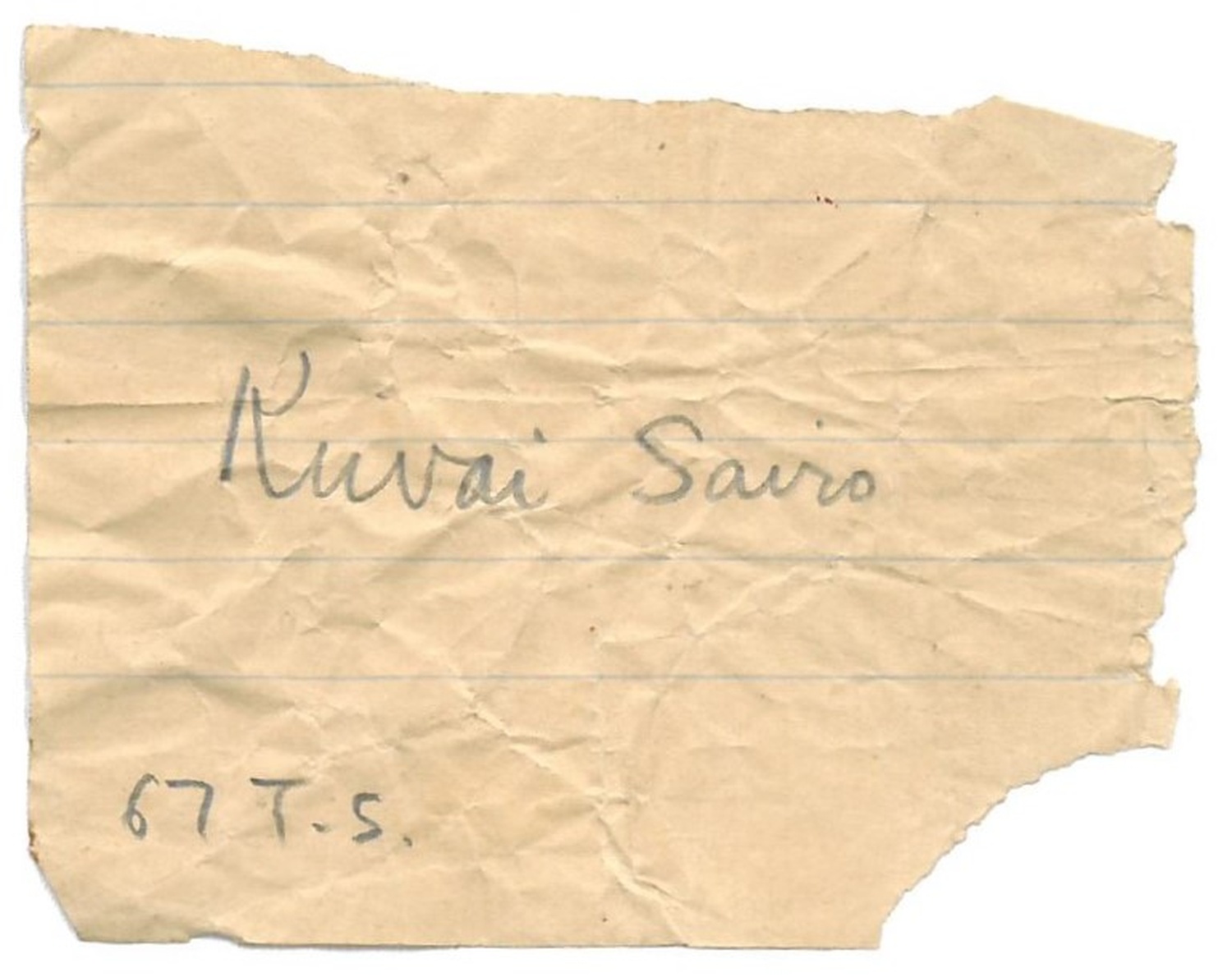 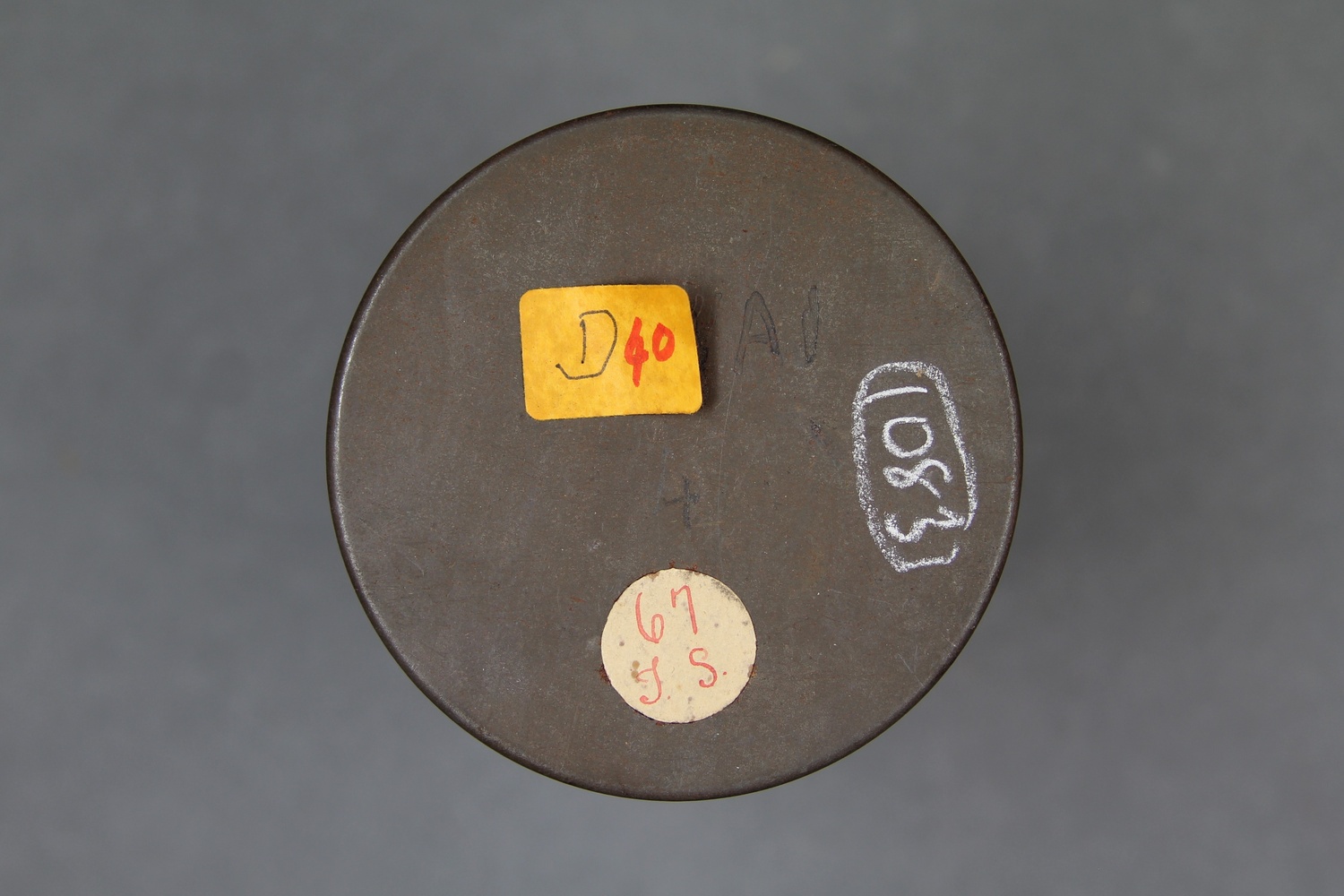     | Haddon, Alfred Cort (ed.) 1935. Reports of the Cambridge Anthropological Expedition to Torres Strait: Volume I, General Ethnography. Cambridge: Cambridge University Press. | ||||||
| C80/1084 | Kiwai Madio [1] | Unidentified (singer, male); unidentified (percussion) | Kiwai Island, Western District, British New Guinea | 15 September 1898 – 29 September 1898 | 1. Indecipherable announcement. 2. Male vocal solo, accompanied by percussion. A song relating to the madia initiation ceremonies, said to be very old (Haddon 1935:217). | Reasonable quality recording but with surface noise due to mould on cylinder. | Southern Kiwai (Island Kiwai dialect) | Field recordings; Initiation song | Ray, Sidney | 2'12" | Alfred Cort Haddon 1898 Expedition, British New Guinea | Brown wax cylinder | Alfred Cort Haddon 1898 Expedition (Torres Strait and British New Guinea) Cylinder Collection | British Library |  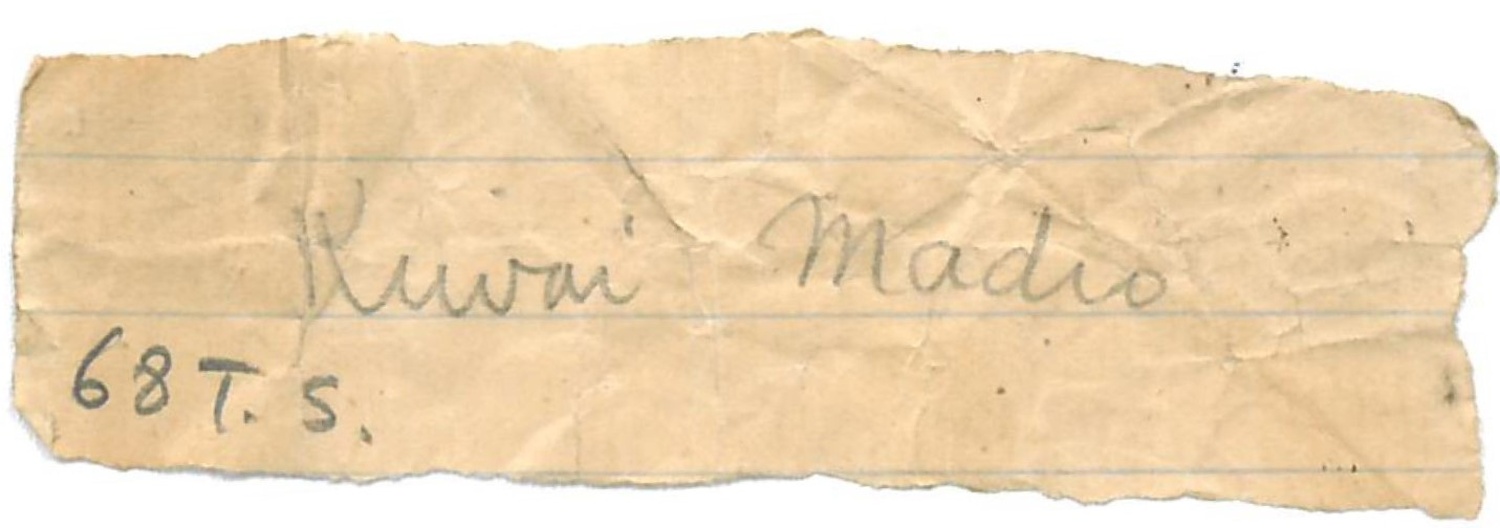 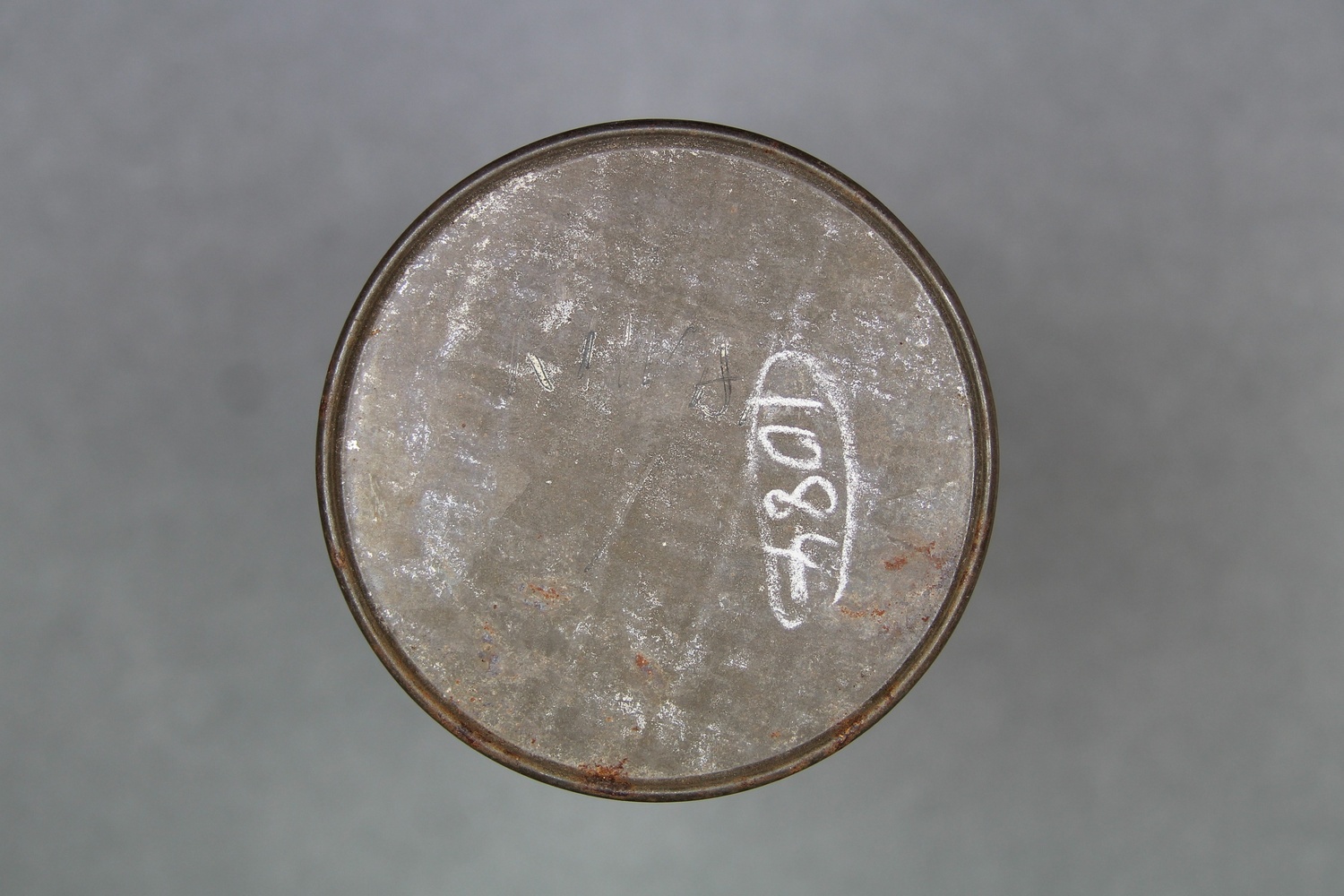    | Haddon, Alfred Cort (ed.) 1935. Reports of the Cambridge Anthropological Expedition to Torres Strait: Volume I, General Ethnography. Cambridge: Cambridge University Press. | ||||||
| C80/1085 | Kiwai Madia | Unidentified (singer, male); unidentified (percussion) | Kiwai Island, Western District, British New Guinea | 15 September 1898 – 29 September 1898 | 1. Indecipherable announcement. 2. Vocal group accompanied by percussion. A song relating to the madia initiation ceremonies, said to be very old (Haddon 1935:217). | Reasonable quality recording but with heavy surface noise due to mould on cylinder. | Southern Kiwai (Island Kiwai dialect) | Field recordings; Initiation song | Ray, Sidney | 1'46" | Alfred Cort Haddon 1898 Expedition, British New Guinea | Brown wax cylinder | Alfred Cort Haddon 1898 Expedition (Torres Strait and British New Guinea) Cylinder Collection | British Library | 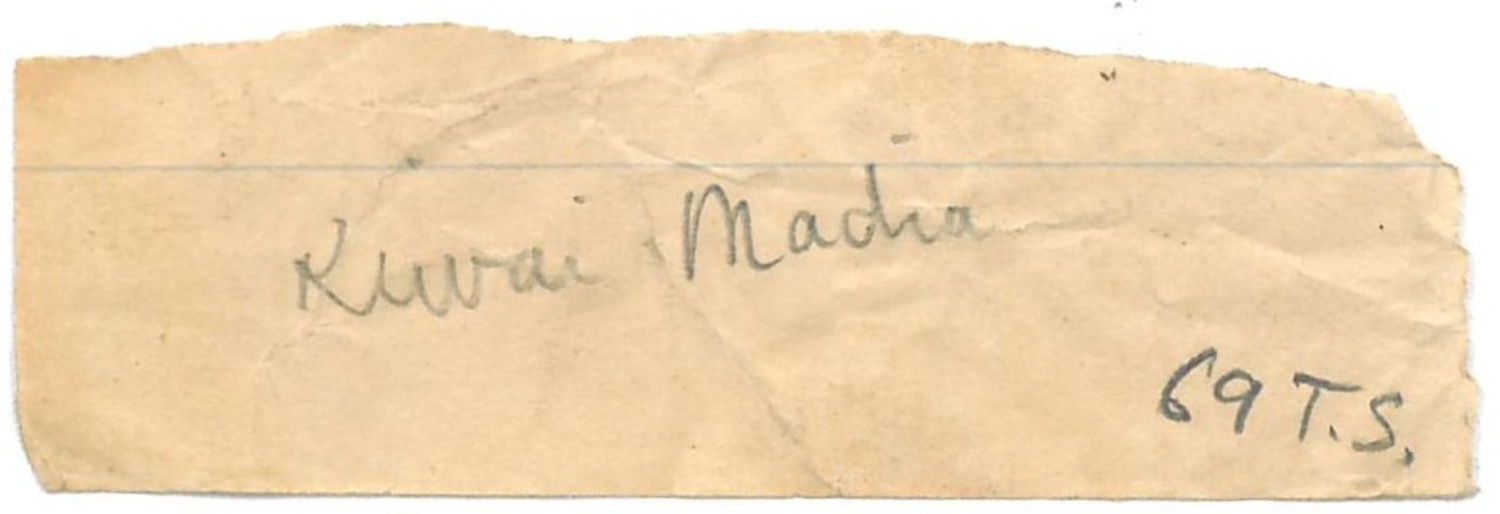 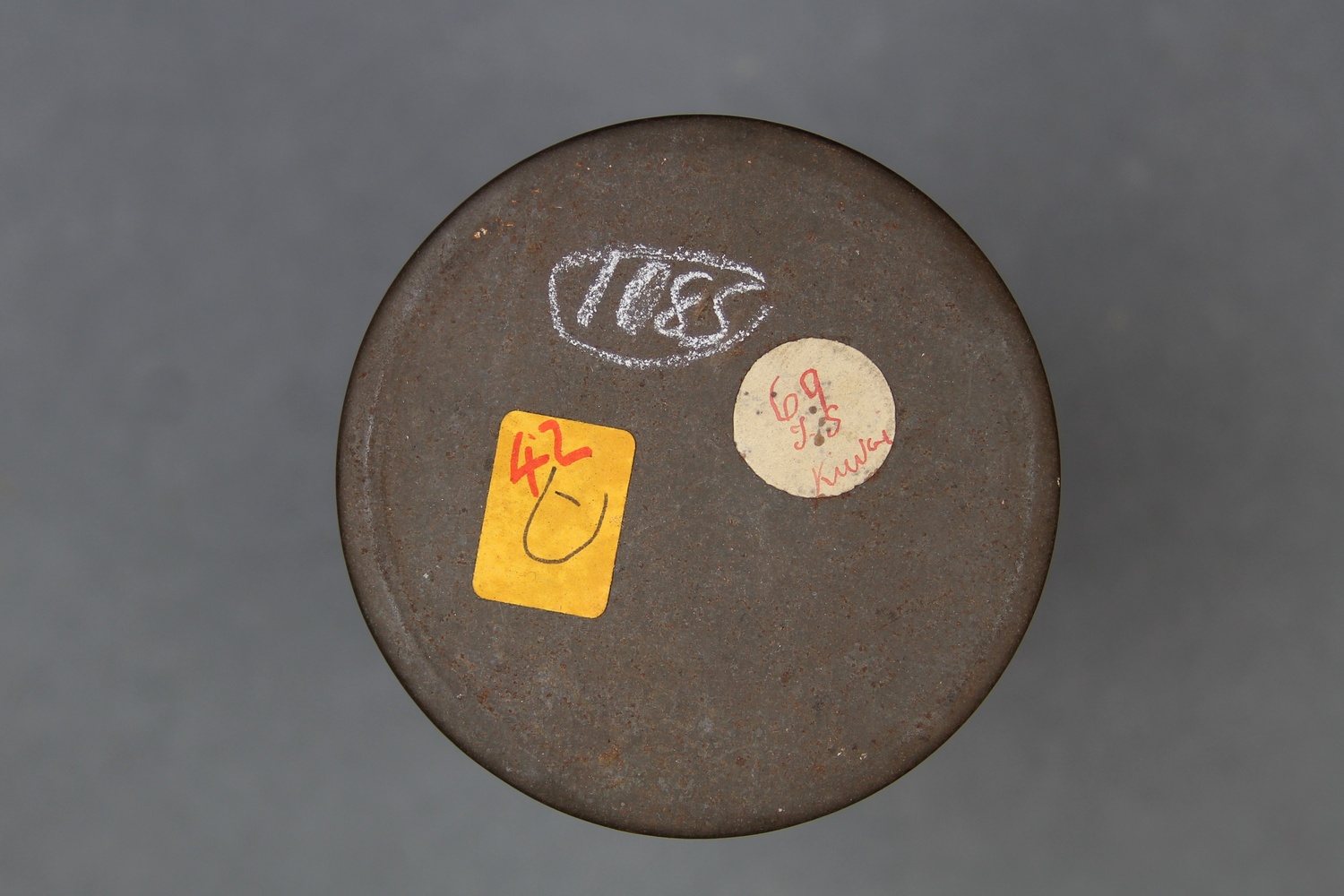     | Haddon, Alfred Cort (ed.) 1935. Reports of the Cambridge Anthropological Expedition to Torres Strait: Volume I, General Ethnography. Cambridge: Cambridge University Press. | ||||||
| C80/1086 | Kiwai Lament | Unidentified | Kiwai Island, Western District, British New Guinea | 11 September 1898 – 1 October 1898 | Cylinder damaged, unable to be digitised | Southern Kiwai [kjd] (Island Kiwai dialect) | Field recordings; Laments | Ray, Sidney | Alfred Cort Haddon 1898 Expedition, British New Guinea | Brown wax cylinder | Alfred Cort Haddon 1898 Expedition (Torres Strait and British New Guinea) Cylinder Collection | British Library |   | |||||||||
| C80/1087 | Kiwai Badara | Unidentified (singer, male) | Kiwai Island, Western District, British New Guinea | 15 September 1898 – 29 September 1898 | 1. Announcement: "Kiwai Badara [indecipherable]." 2. Male vocal solo, acc. percussion. 3. Indecipherable announcement. 4. Unaccompanied male vocal solo. A song relating to the badara outdoor mimetic dance, a secular dance held for general amuseument, apparently introduced from Bugi (Haddon 1935:219). | Reasonable quality recording but with heavy surface noise due to mould on cylinder. | Southern Kiwai (Island Kiwai dialect) | Field recordings; Mimetic dance | Ray, Sidney | 2'25" | Alfred Cort Haddon 1898 Expedition, British New Guinea | Brown wax cylinder | Alfred Cort Haddon 1898 Expedition (Torres Strait and British New Guinea) Cylinder Collection | British Library | 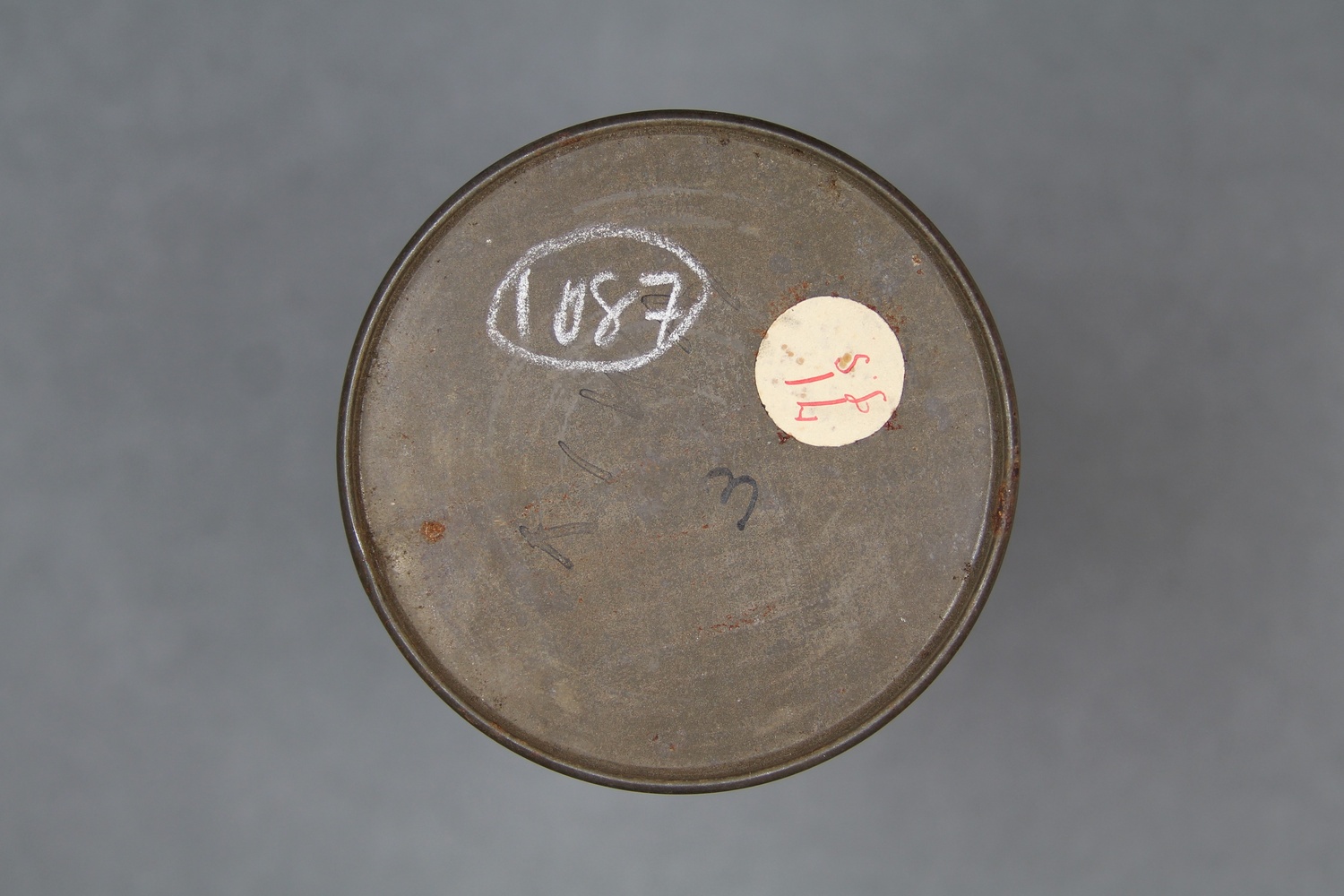 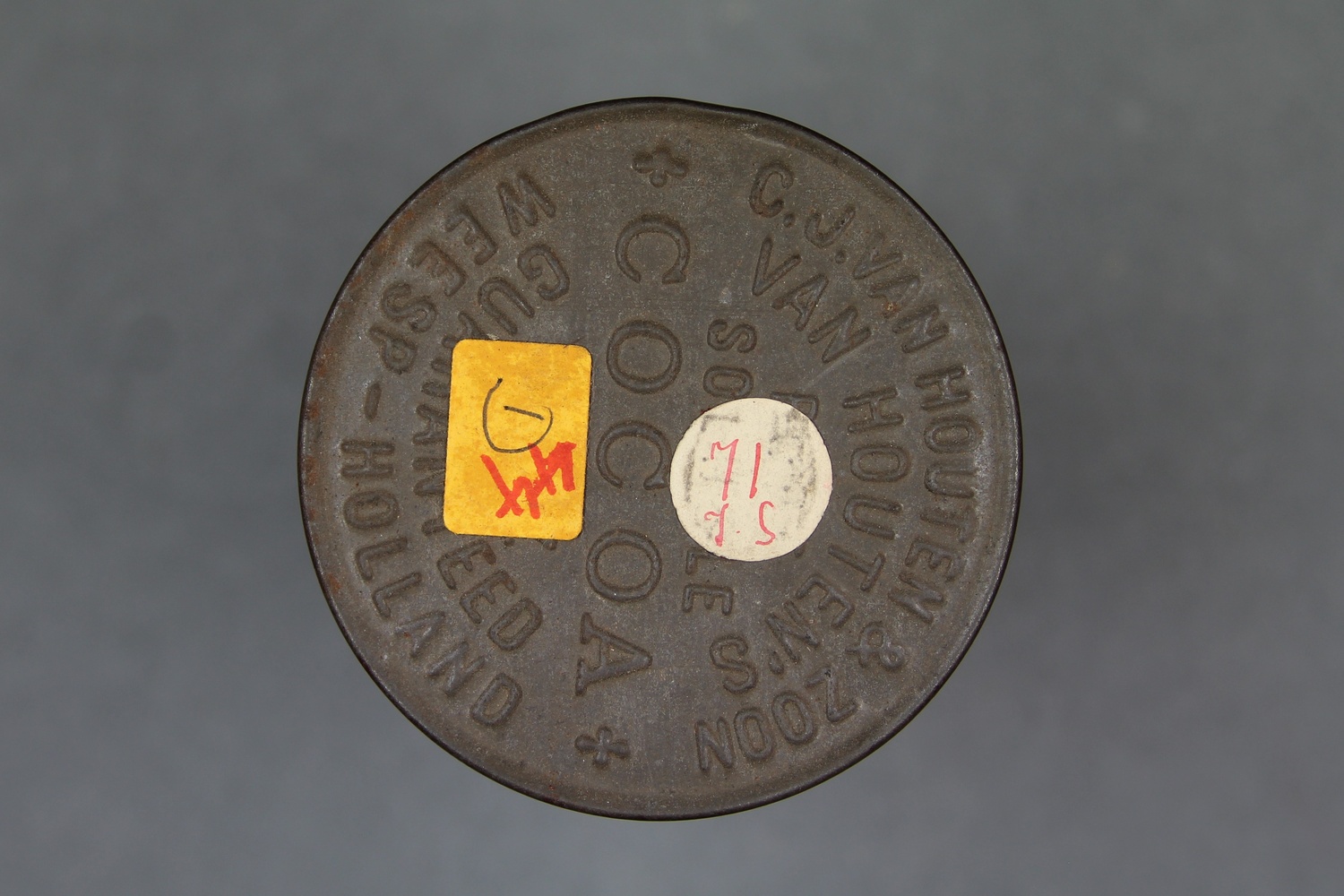     | Haddon, Alfred Cort (ed.) 1935. Reports of the Cambridge Anthropological Expedition to Torres Strait: Volume I, General Ethnography. Cambridge: Cambridge University Press. | ||||||
| C80/1088 | Moguru Wasare | Gamena, chief of Saguane? (singer, male) | Kiwai Island, Western District, British New Guinea | 28 September 1898 ? | 1. Indecipherable announcement. 2. Unaccompanied male vocal solo. "Moguru ceremony was the most secret and sacred ceremony of the Kiwai people (Haddon 1935:213-214) and Wasare meant hymn or song in the Kiwai langauge (Ray 1931). On 28 September he wrote that “Gamena's (chiefs) wife came this morning and sang into the phono. After women + children had gone Gamena sang the Moguru songs, which are chanted when the Orara is shown to the young men” (Ray 1898–1899:88). Gamena was the chief at Saguane (Ray 1907:318). | Poor quality recording with heavy surface noise and weak signal. | Southern Kiwai (Island Kiwai dialect) | Field recordings; Initiation song | Ray, Sidney | 2'10" | Alfred Cort Haddon 1898 Expedition, British New Guinea | Brown wax cylinder | Alfred Cort Haddon 1898 Expedition (Torres Strait and British New Guinea) Cylinder Collection | British Library | 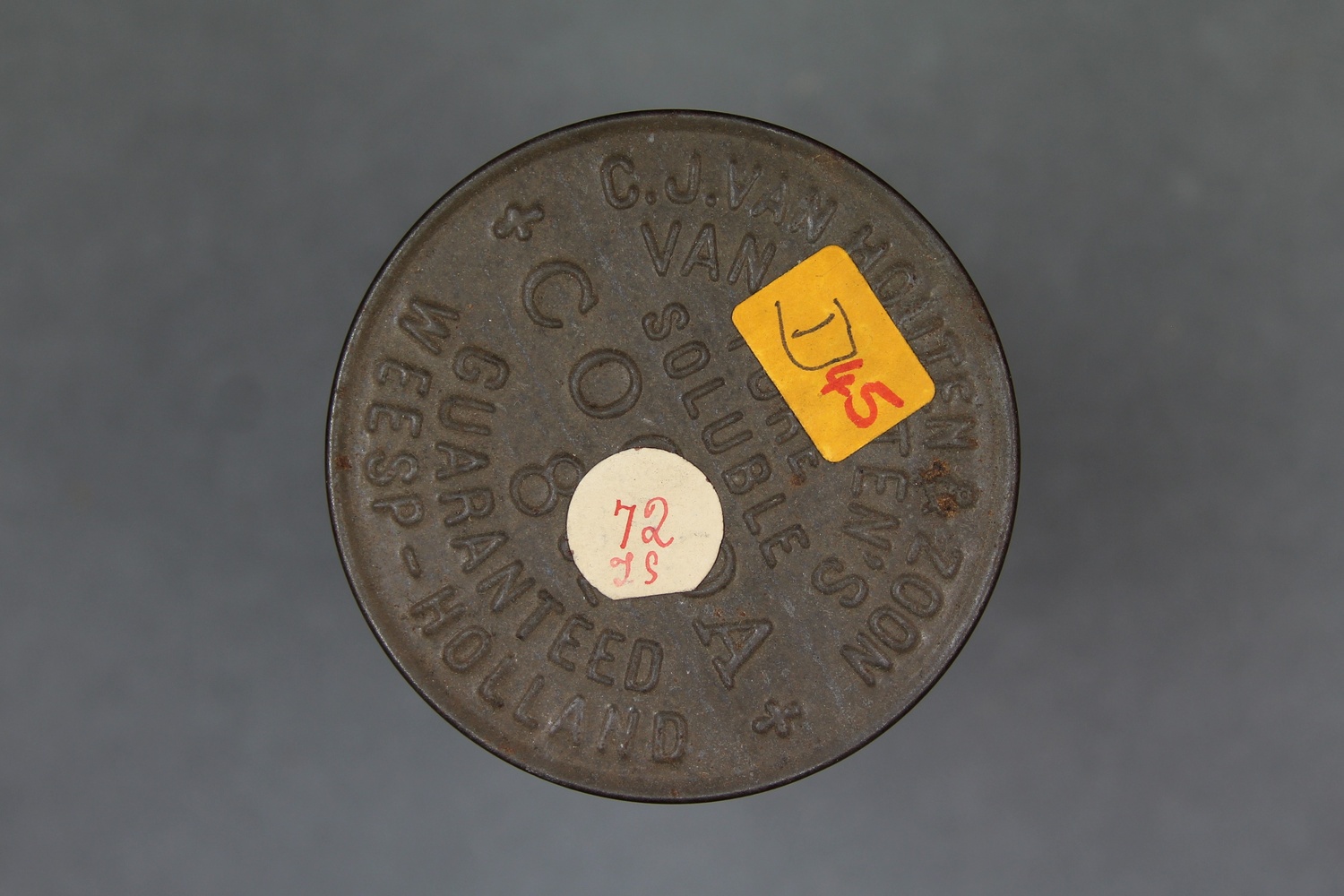 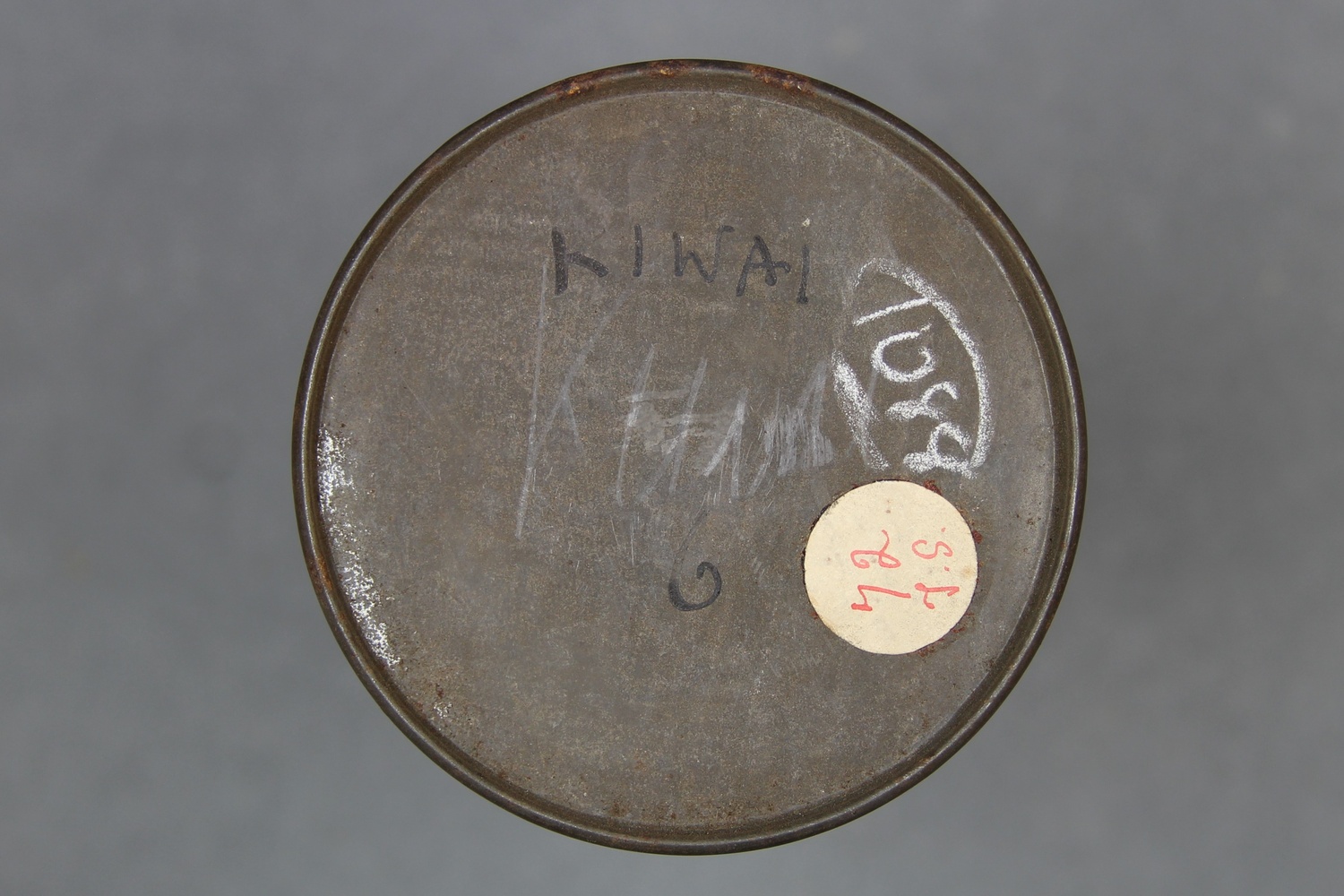     | Haddon, Alfred Cort (ed.) 1935. Reports of the Cambridge Anthropological Expedition to Torres Strait: Volume I, General Ethnography. Cambridge: Cambridge University Press. | ||||||
| C80/1089 | Kiwai Madio [2] | Unidentified (singer, male) | Kiwai Island, Western District, British New Guinea | 15 September 1898 – 29 September 1898 | 1. Indecipherable announcement. 2. Unaccompanied male vocal solo. 3. Indecipherable announcement. 4. Unaccompanied male vocal solo. The performance is performed in Map language. Probably a song relating to the madia initiation ceremonies, said to be very old (Haddon 1935:217); may be a song relating to mado dance, similar but not as highly ranked | Reasonable quality recording but with surface noise due to mould on cylinder. | Southern Kiwai (Island Kiwai dialect) | Field recordings; Initiation song | Ray, Sidney | 2'07" | Alfred Cort Haddon 1898 Expedition, British New Guinea | Brown wax cylinder | Alfred Cort Haddon 1898 Expedition (Torres Strait and British New Guinea) Cylinder Collection | British Library | 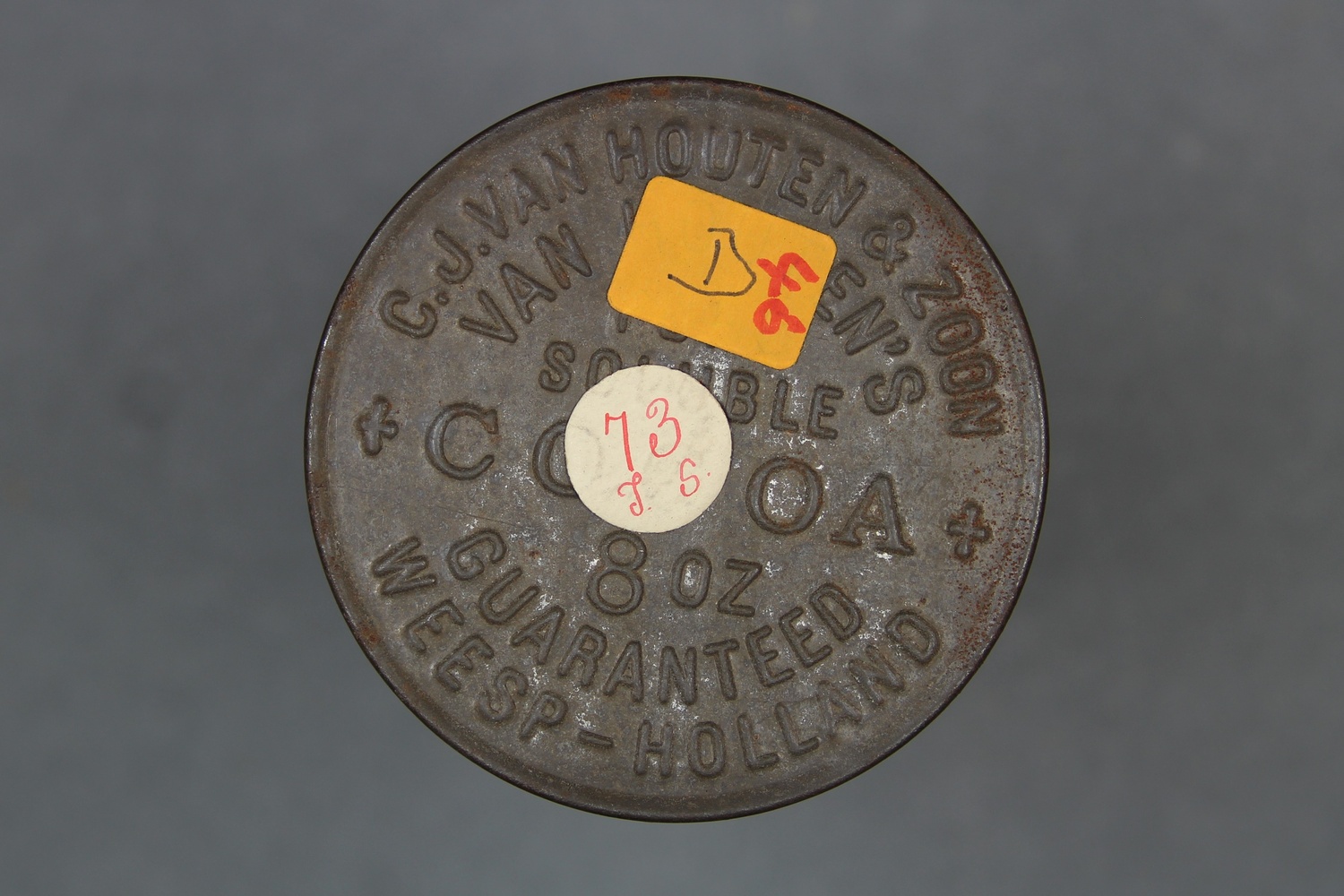 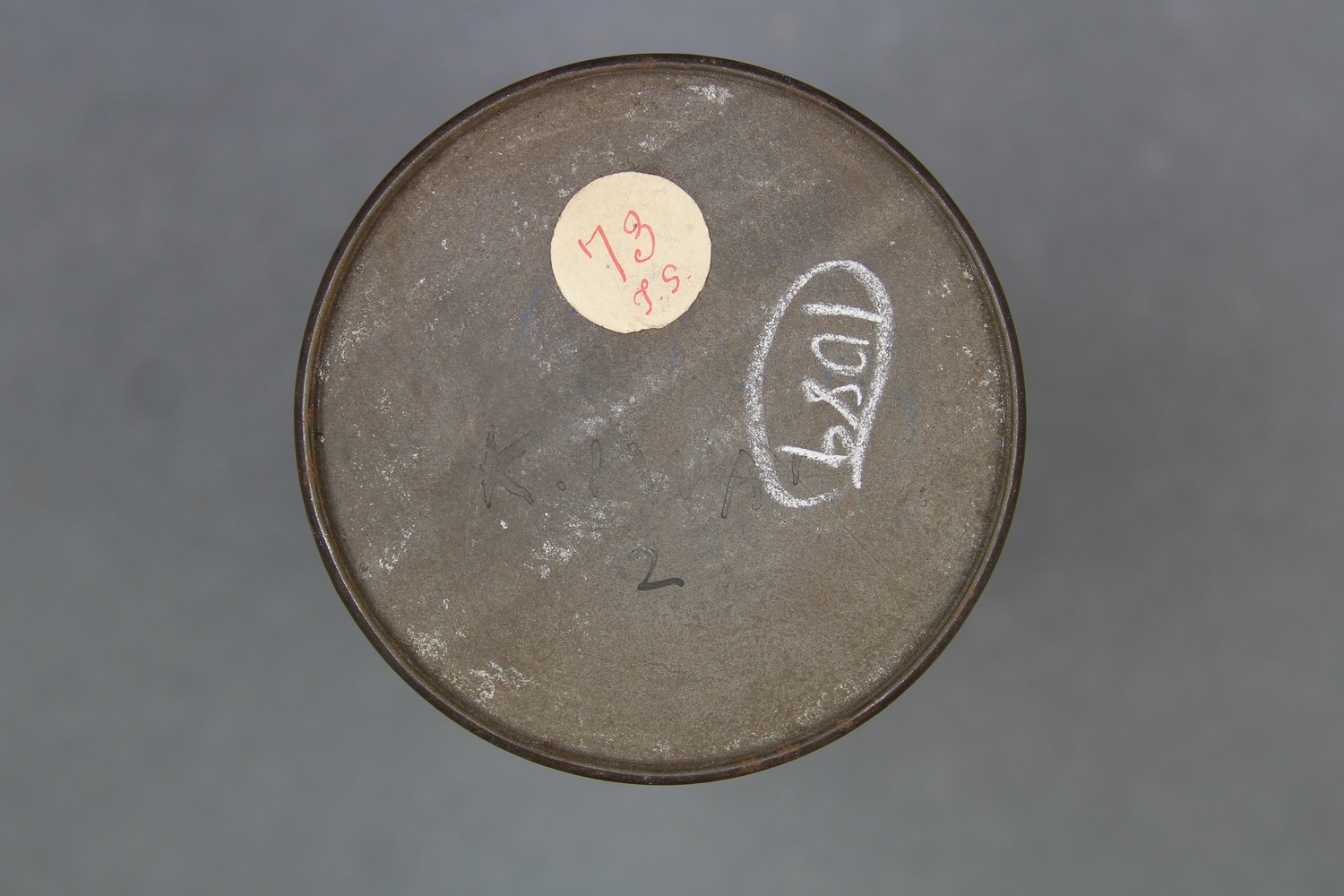     | Haddon, Alfred Cort (ed.) 1935. Reports of the Cambridge Anthropological Expedition to Torres Strait: Volume I, General Ethnography. Cambridge: Cambridge University Press. | ||||||
| C80/1090 | Kiwai 5 | Unidentified (singer, male) | Kiwai Island, Western District, British New Guinea | 15 September 1898 – 29 September 1898 | 1. Indecipherable announcement. 2. Unaccompanied male vocal solo. 3. Indecipherable announcement. 4. Unaccompanied male vocal solo. | Poor quality recording with heavy surface noise and large ungrooved area on cylinder tracks 2 and 3. | Southern Kiwai (Island Kiwai dialect) | Field recordings | Ray, Sidney | 1'27" | Alfred Cort Haddon 1898 Expedition, British New Guinea | Brown wax cylinder | Alfred Cort Haddon 1898 Expedition (Torres Strait and British New Guinea) Cylinder Collection | British Library | 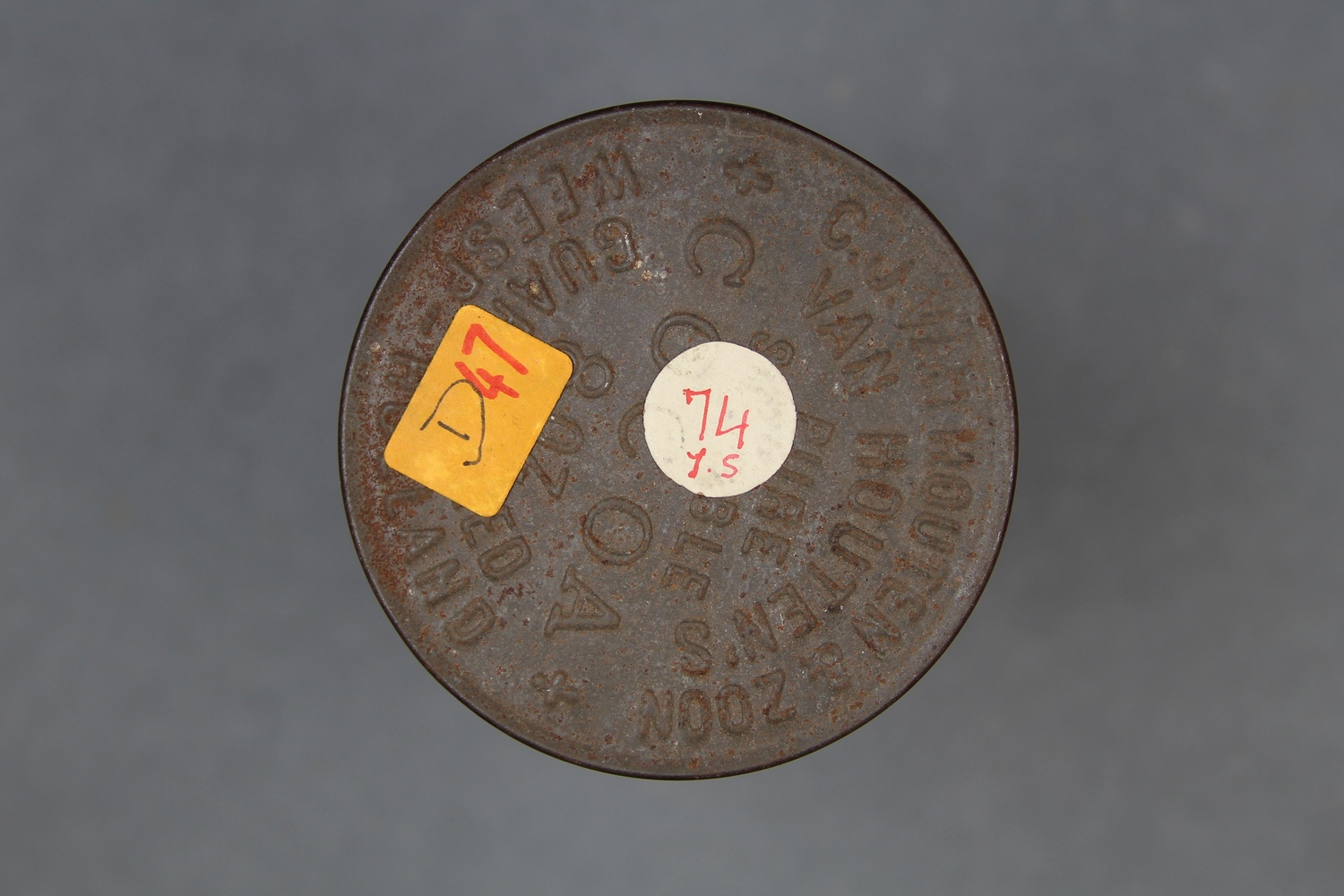 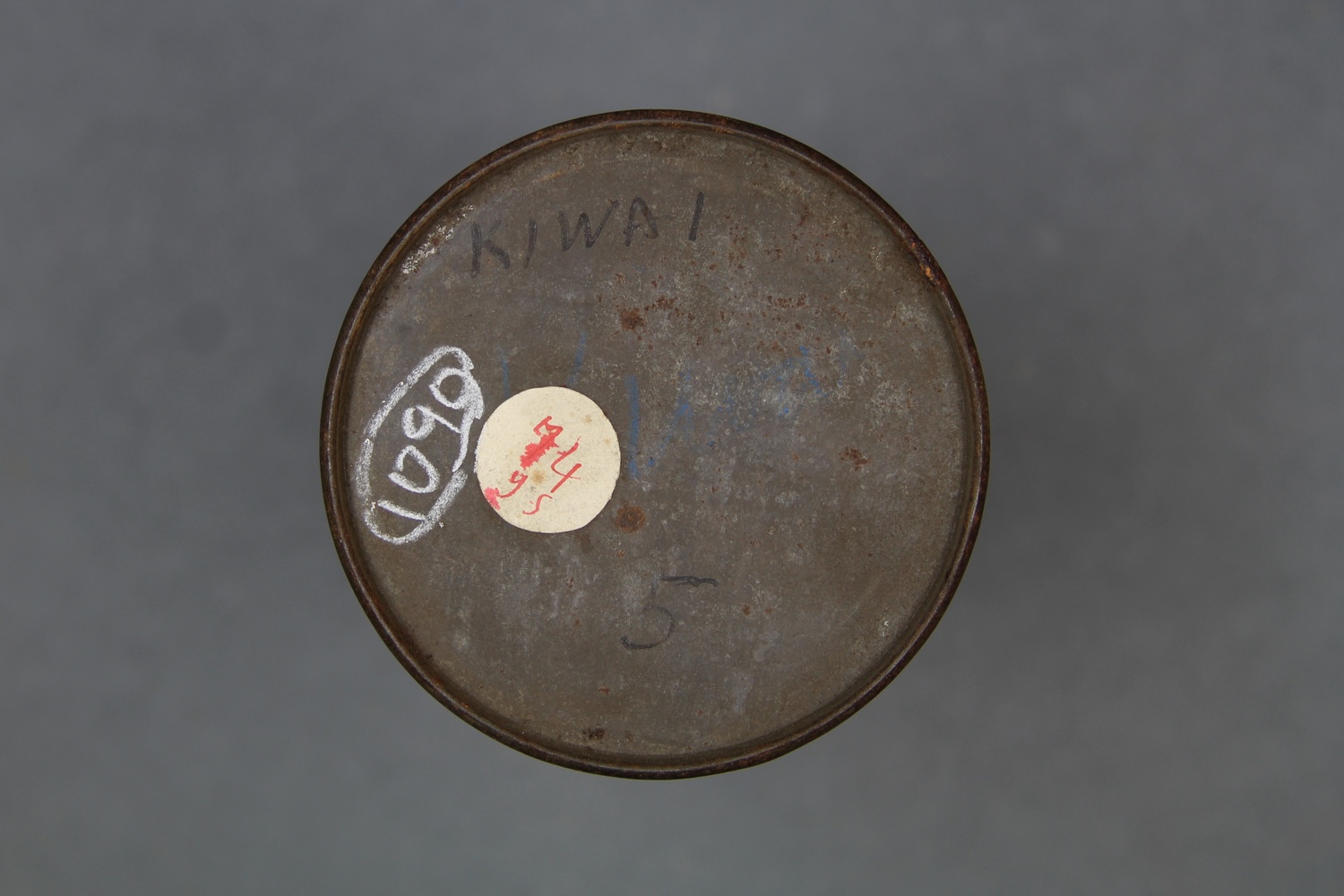     | |||||||
| C80/1094 | Mowatta | Pauna (singer, female) | Mowatta, Western District, British New Guinea? | 27 May 1898 – 30 October 1898 | 1. Indecipherable announcement. 2. Unaccompanied female vocal solo. Notes available: 'Mowatta. serasera arubia meaurami, sung by Pauna.' Pauna is mentioned a number of times in the Reports; she is referred to as “Pauna, wife of Maino of Tutu, herself originally a native of Mawata, New Guinea” (Haddon 1912:16), and again as Maino from Tutu-Yam’s wife (Haddon 1904:161). | Poor quality recording with weak signal and surface noise. | Southern Kiwai (Island Kiwai dialect) | Field recordings | Ray, Sidney | 2'09" | Alfred Cort Haddon 1898 Expedition, British New Guinea | Brown wax cylinder | Alfred Cort Haddon 1898 Expedition (Torres Strait and British New Guinea) Cylinder Collection | British Library | 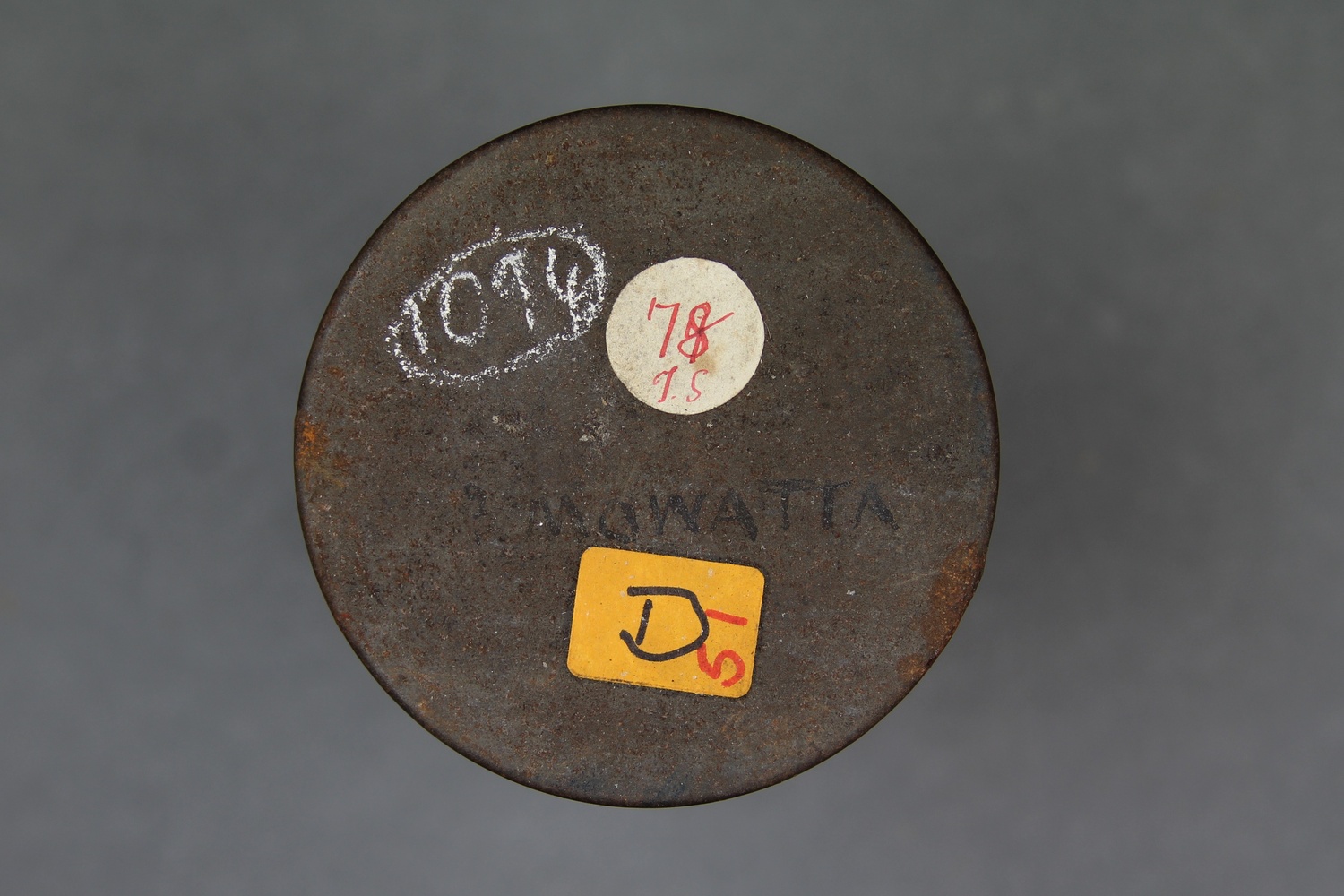 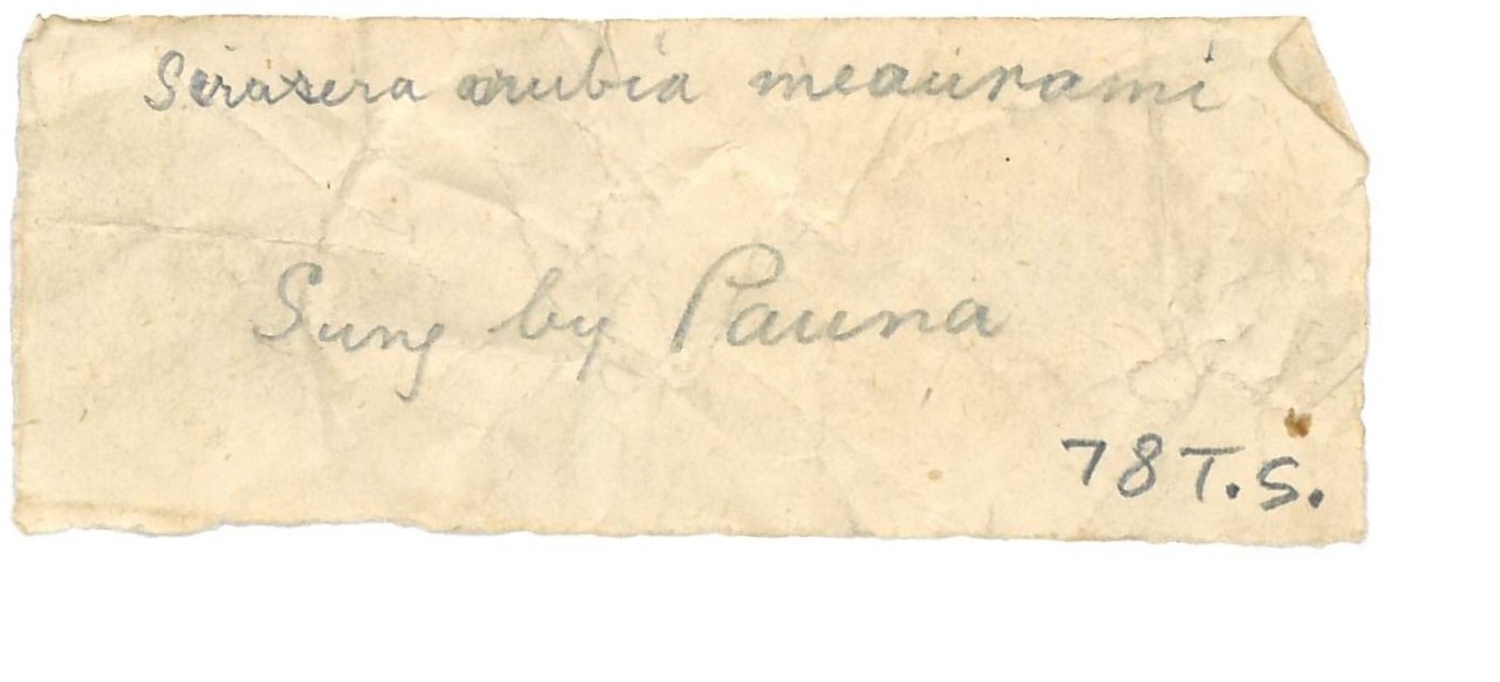     | |||||||
| C62/1415 | Waura Koita | Kabur (singer, male) | Port Moresby, British New Guinea | October 1904 | 1. Announcement: "Waura, a Koita song, sung by Kabur[?], Port Moresby, October 1904." 1. Unaccompanied male vocal solo. A song sung at dances and feasts. | Reasonable quality recording but with surface noise. | Koitabu | Field recordings | Seligman, Charles Gabriel | 3'40" | Daniels Ethnographical Expedition to New Guinea 1904 | Brown wax cylinder | Daniels Ethnographical Expedition to New Guinea 1904 Cylinder Collection (C62) | British Library | 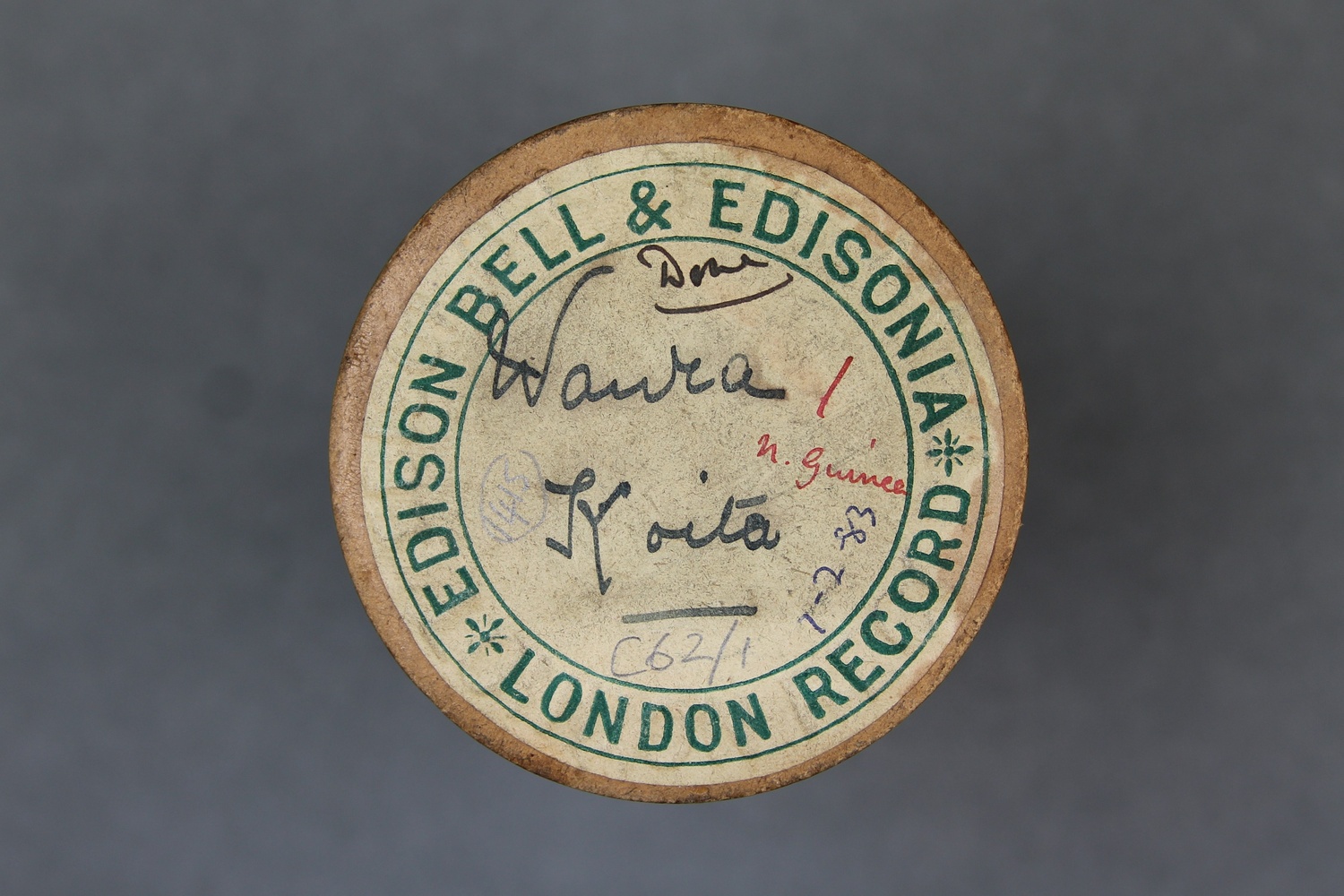 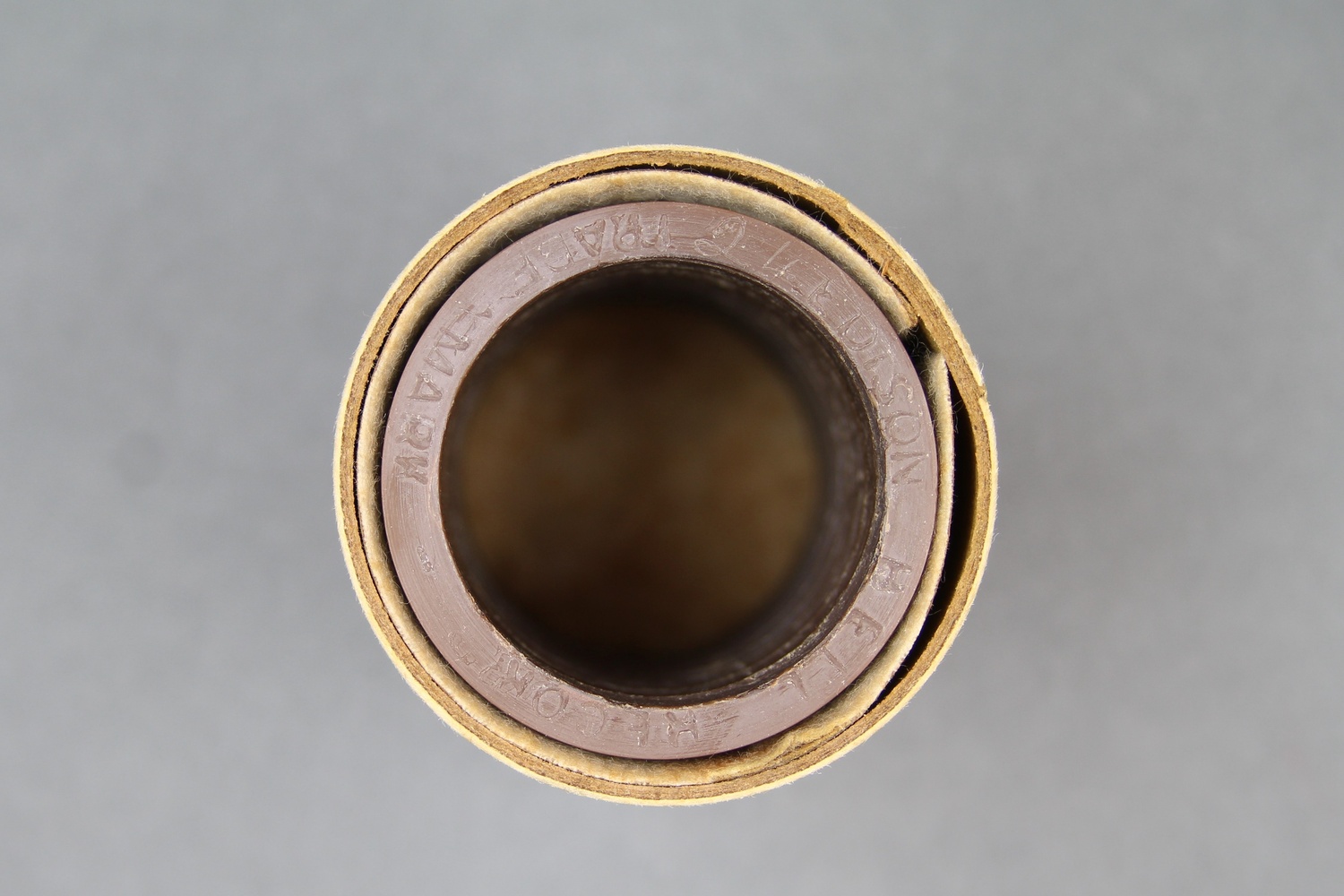     | This song is discussed and may be transcribed in Charles G. Seligmann, 'The Melanesians of British New Guinea', Cambridge University Press, 1910:151-152. | ||||||
| C62/1416 | Poru Koita | Kabur (singer, male) | Port Moresby, British New Guinea | October 1904 | 1. Announcement: "Poru, a Koita song, sung by Kabur[?] October 1904, Port Moresby." 2. Male vocal solo with percussion accompaniment. | Good quality recording but with some surface noise. | Koitabu | Field recordings | Seligman, Charles Gabriel | 3'29" | Daniels Ethnographical Expedition to New Guinea 1904 | Brown wax cylinder | Daniels Ethnographical Expedition to New Guinea 1904 Cylinder Collection (C62) | British Library | 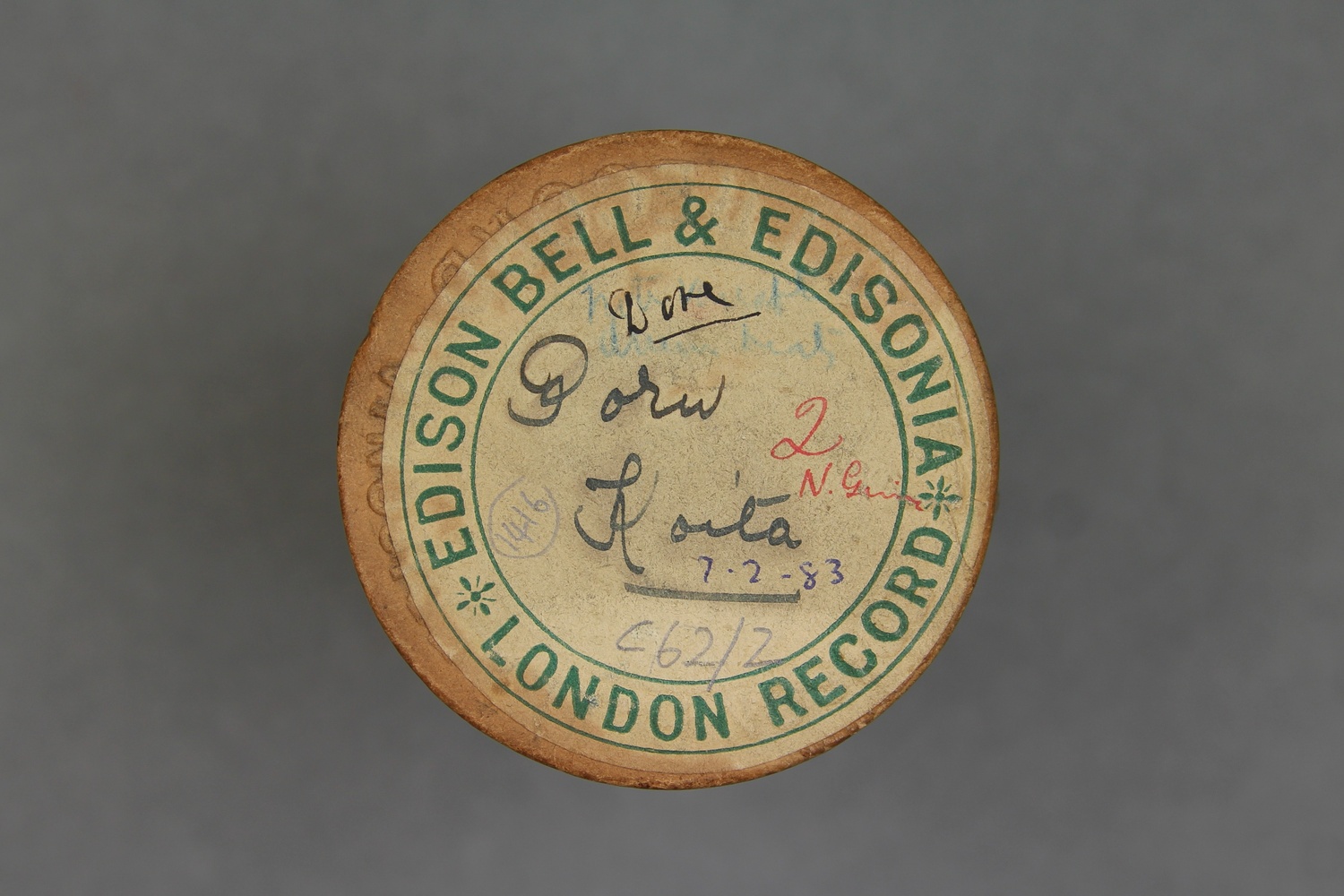      | This song may be discussed and transcribed in Charles G. Seligmann, 'The Melanesians of British New Guinea', Cambridge University Press, 1910:151-152. | ||||||
| C62/1417 | Berasi Koita | Unidentified (male chorus) | Port Moresby, British New Guinea | October 1904 | 1. Announcement: "Berasi - the Koita garden fencing song, sung at Port Moresby, October 1904." 2. Unaccompanied male vocal group. A song sung while fencing gardens; also a funeral dirge. | Good quality recording. | Koitabu | Field recordings; Garden fencing song | Seligman, Charles Gabriel | 3'51" | Daniels Ethnographical Expedition to New Guinea 1904 | Brown wax cylinder | Daniels Ethnographical Expedition to New Guinea 1904 Cylinder Collection (C62) | British Library |       | This song is discussed and may be transcribed in Charles G. Seligmann, 'The Melanesians of British New Guinea', Cambridge University Press, 1910:152-153. | ||||||
| C62/1418 | Ehona Lahato Koita | Igo Gow (singer, male) | Port Moresby, British New Guinea | October 1904 | 1. Announcement: "Lahato song, Ehona, sung by Igo Jow[?], Port Moresby, October 1904." 2. Unaccompanied male vocal solo. An ehona song. There are two photos of Igo Gow in the British Museum (Oc,B119.43 and Oc,B119.52). | Reasonable quality recording but with some distortion. | Koitabu or Motu | Field recordings; Trading song; Voyaging song | Seligman, Charles Gabriel | 3'43" | Daniels Ethnographical Expedition to New Guinea 1904 | Brown wax cylinder | Daniels Ethnographical Expedition to New Guinea 1904 Cylinder Collection (C62) | British Library | 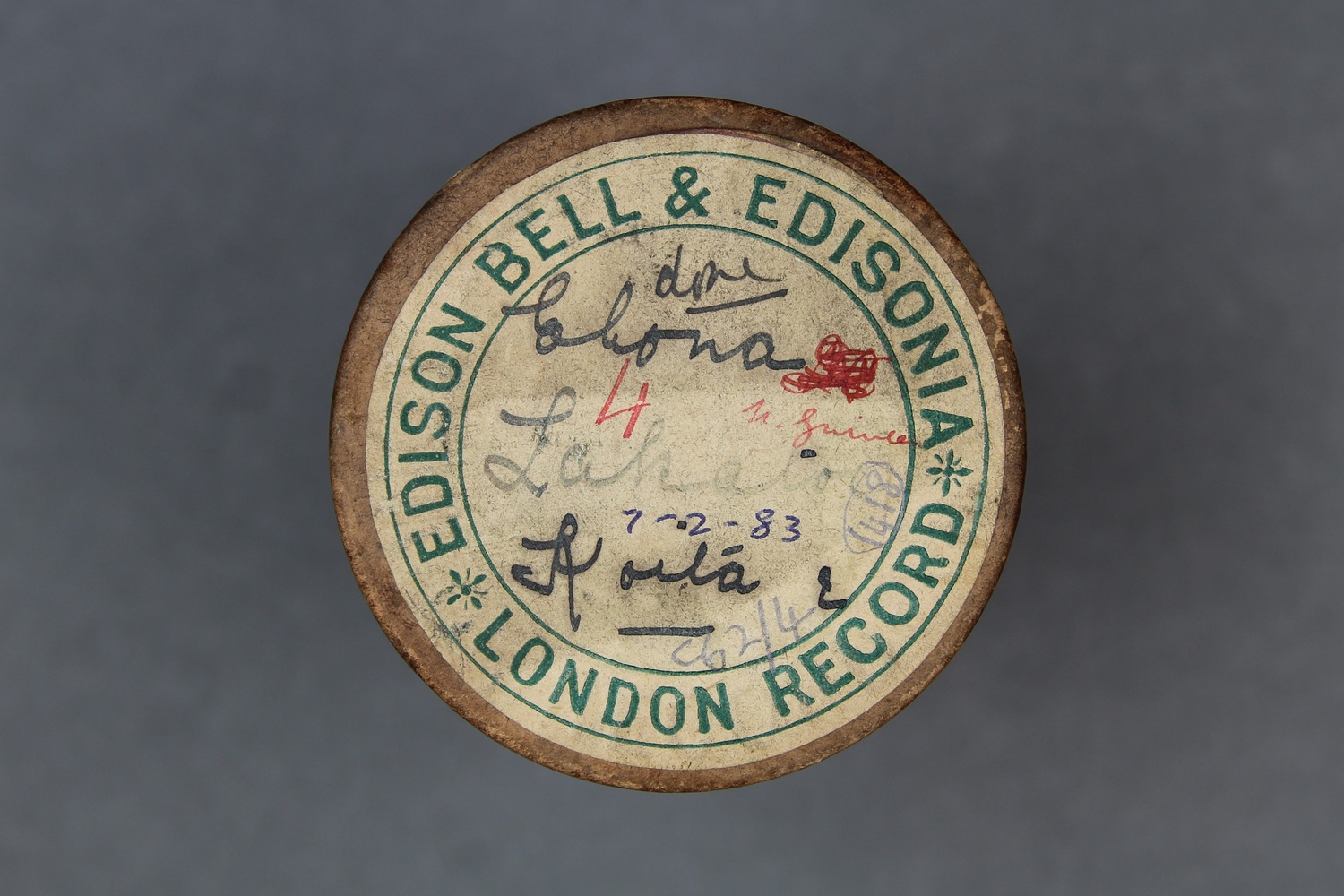      | This song may be discussed and transcribed in Charles G. Seligmann, 'The Melanesians of British New Guinea', Cambridge University Press, 1910:152. | ||||||
| C62/1419 | 27 Osebouta Trobriands | Unidentified (spoken, male) | Trobriand Islands, British New Guinea | September 1904 | 1. Announcement: "Osebouta. A sung [?] song at the Kaiwos Womilamala, by [indecipherable]. Trobriand Islands, September 1904." Song sung at a funeral feast. | Good quality recording. | Kilivila | Field recordings; Laments | Seligman, Charles Gabriel | 3'09" | Daniels Ethnographical Expedition to New Guinea 1904 | Brown wax cylinder | Daniels Ethnographical Expedition to New Guinea 1904 Cylinder Collection (C62) | British Library | 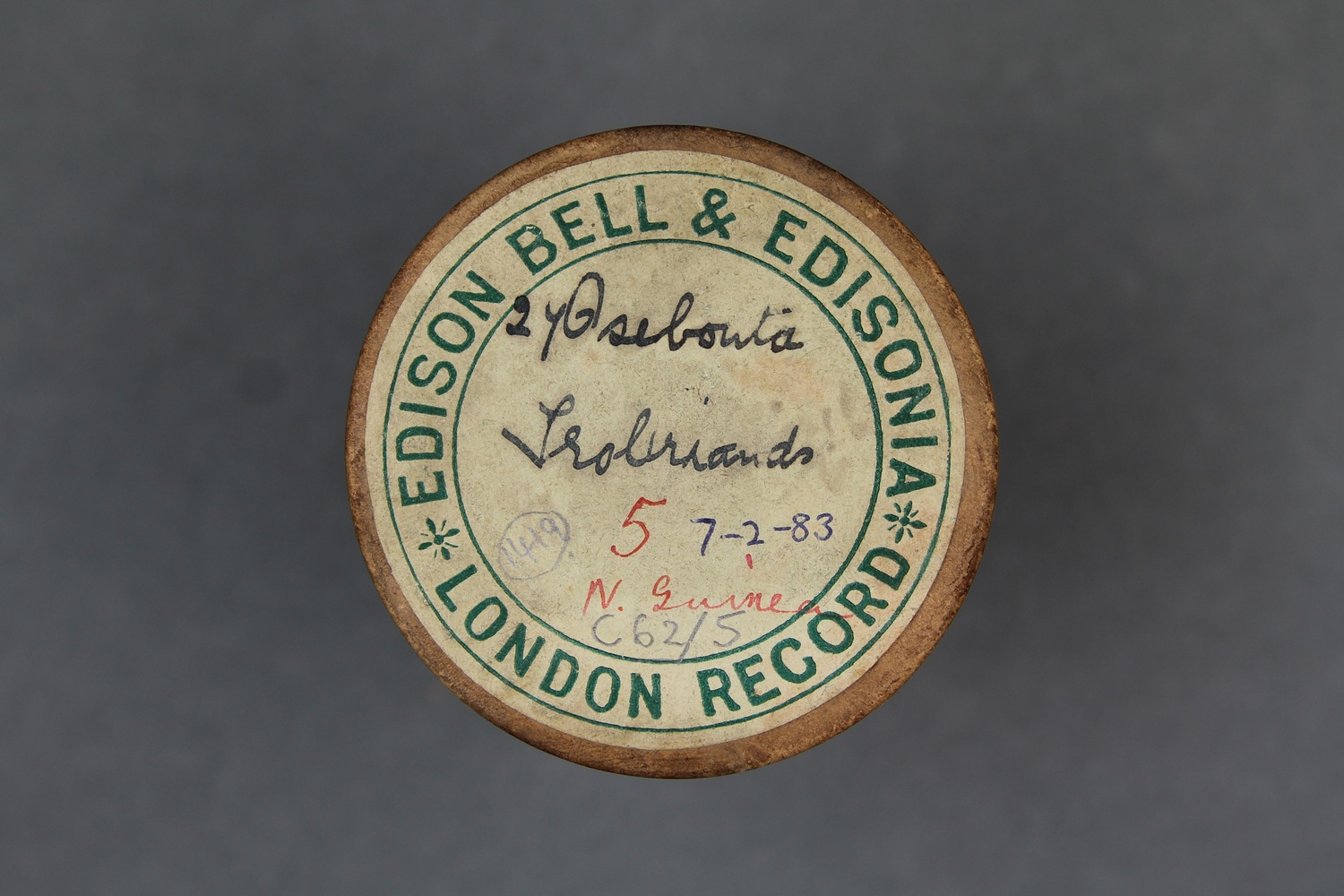      | The feast is mentioned in Charles G. Seligmann, 'The Melanesians of British New Guinea', Cambridge University Press, 1910:750. | ||||||
| C62/1420 | 26 Mamiepo | Unidentified (spoken, male); Unidentified (singer, male) | Trobriand Islands, British New Guinea | September 1904 | 1. Announcement: "Song sung at Kaiwos womilama, Trobriand Islands, September 1904." 2. Unaccompanied male vocal solo. Song sung at a funeral feast. | Good quality recording. | Kilivila | Field recordings; Laments | Seligman, Charles Gabriel | 3'09" | Daniels Ethnographical Expedition to New Guinea 1904 | Brown wax cylinder | Daniels Ethnographical Expedition to New Guinea 1904 Cylinder Collection (C62) | British Library |  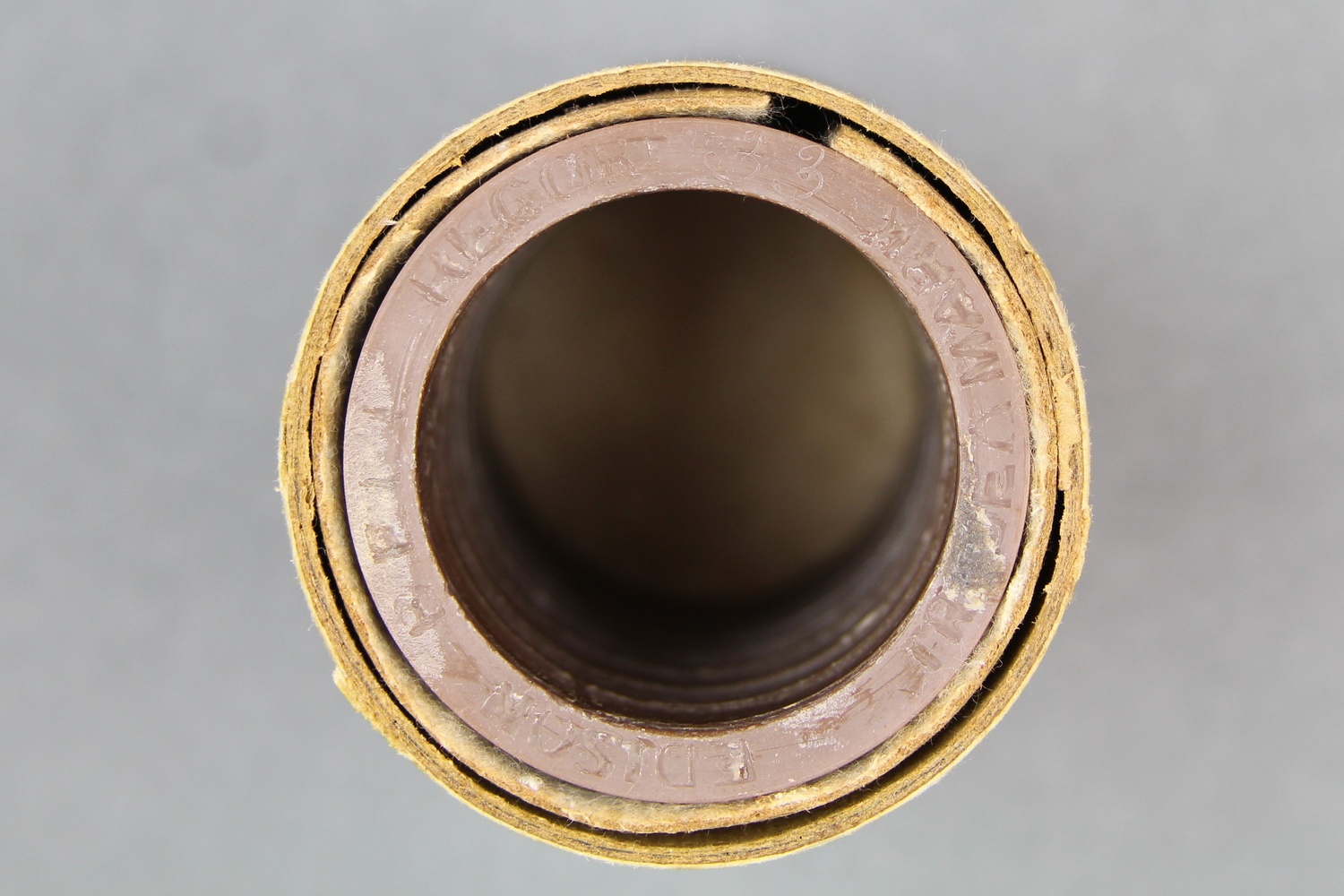     | The feast is mentioned in Charles G. Seligmann, 'The Melanesians of British New Guinea', Cambridge University Press, 1910:750. | ||||||
| C62/1421 | 13 Ariparla kulaa | Unidentified (male chorus) | Hula, Central District, British New Guinea | July 1904 | 1. Announcement: "Ariparla, lament for the dead, sung round the body for the first 24 hours. Kulaa." 2. Unaccompanied male vocal group singing in harmony. | Good quality recording. | Hula | Field recordings; Laments | Seligman, Charles Gabriel | 3'15" | Daniels Ethnographical Expedition to New Guinea 1904 | Brown wax cylinder | Daniels Ethnographical Expedition to New Guinea 1904 Cylinder Collection (C62) | British Library | 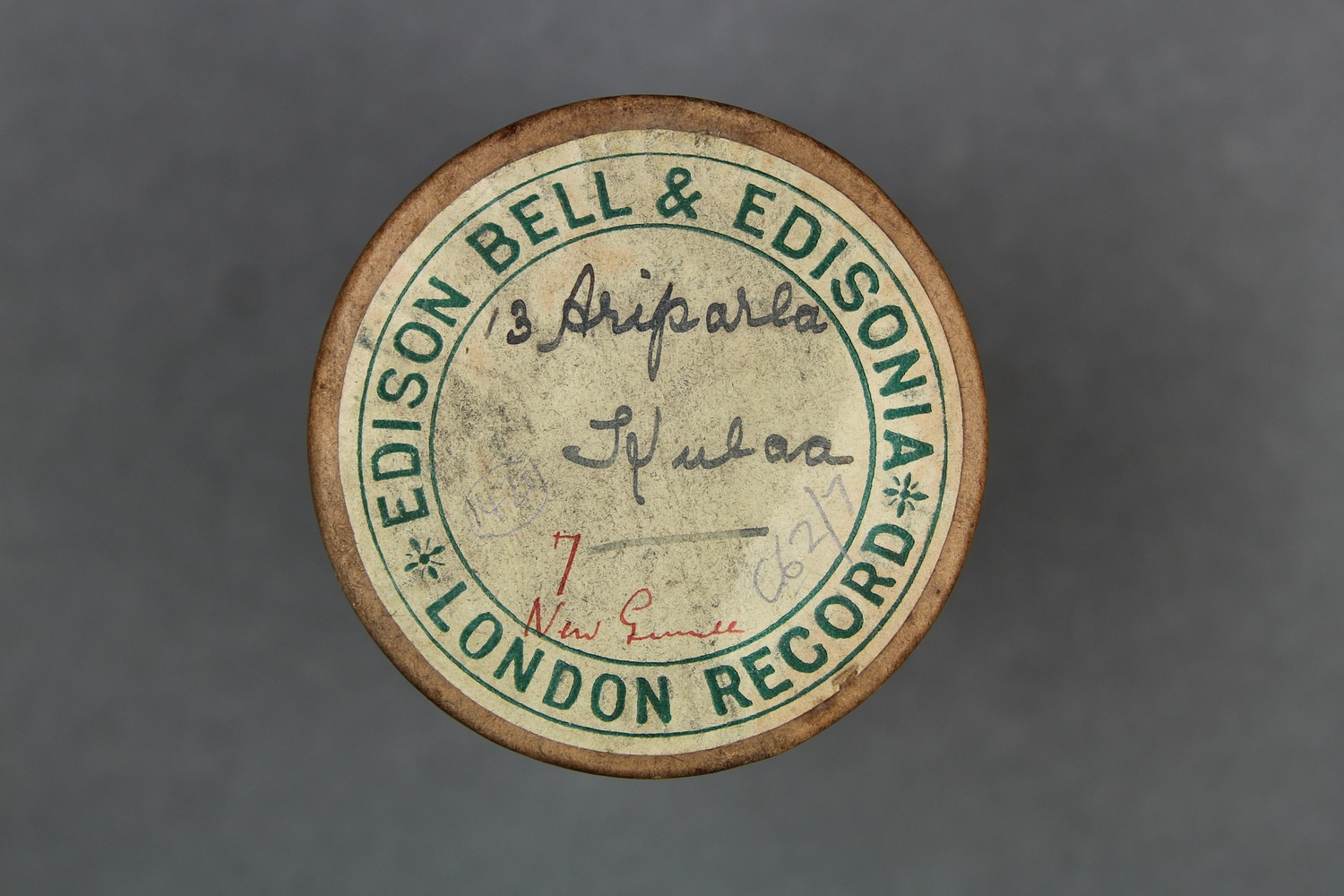      | |||||||
| C62/1422 | Roro Kulaa | Unidentified (male chorus) | Hula, Central District, British New Guinea | July 1904 | 1. Announcement: "Roro. A kulaa song, sung only by the older folk of both sexes." 2. Unaccompanied vocal group. | Good quality recording. | Hula | Field recordings | Seligman, Charles Gabriel | 3'15" | Daniels Ethnographical Expedition to New Guinea 1904 | Brown wax cylinder | Daniels Ethnographical Expedition to New Guinea 1904 Cylinder Collection (C62) | British Library |       | |||||||
| C62/1423 | 16 Palarupu Kulaa | Unidentified (male chorus) | Hula, Central District, British New Guinea | July 1904 | 1. Announcement: "Palarupa. Sung by successful [?] homicide, [indecipherable]. Kulaa." 2. Unaccompanied male vocal group. | Good quality recording although with some surface noise. | Hula | Field recordings; Sung after homicide | Seligman, Charles Gabriel | 3'04" | Daniels Ethnographical Expedition to New Guinea 1904 | Brown wax cylinder | Daniels Ethnographical Expedition to New Guinea 1904 Cylinder Collection (C62) | British Library | 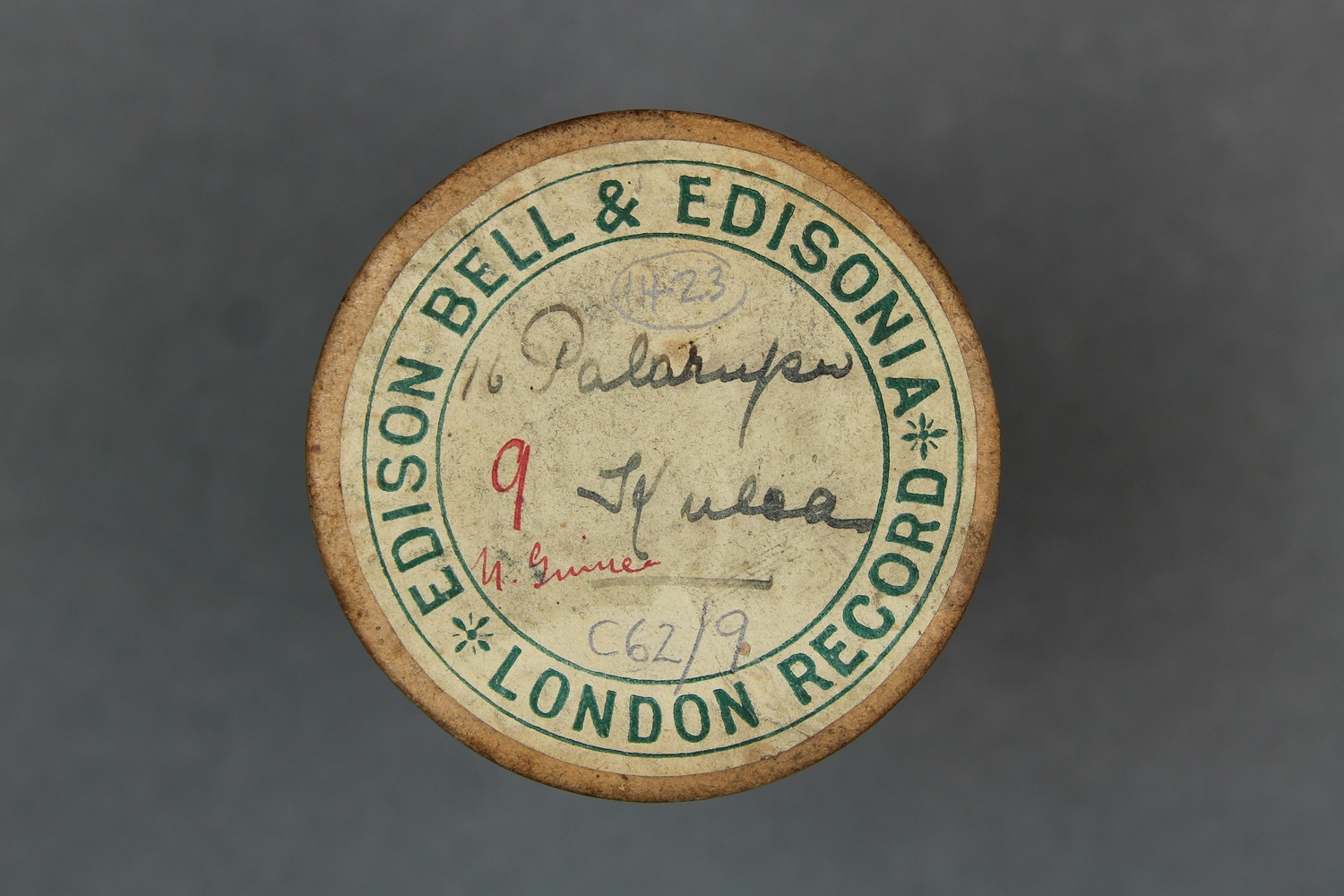      | |||||||
| C62/1424 | Hara Tabo Story | Ahuia Ova (narrator, male) | Port Moresby, British New Guinea | October 1904 | 1. Announcement: "The story of Hara Tabo, told by [indecipherable], Port Moresby, October 1904." 2. Unaccompanied male speech. | Good quality recording. | Koitabu | Field recordings; Speeches | Seligman, Charles Gabriel | 3'28" | Daniels Ethnographical Expedition to New Guinea 1904 | Brown wax cylinder | Daniels Ethnographical Expedition to New Guinea 1904 Cylinder Collection (C62) | British Library | 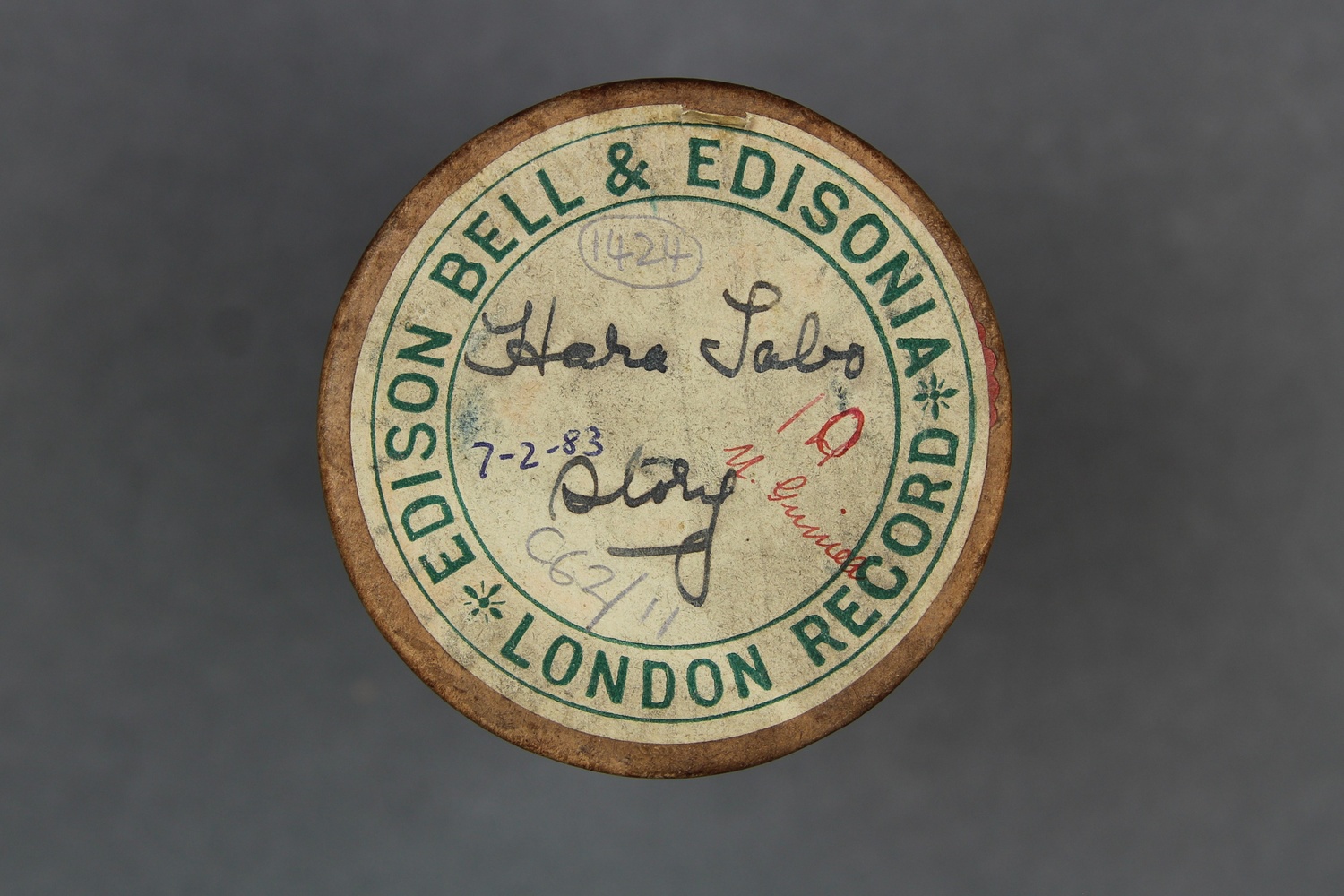      | This story is transcribed in Charles G. Seligmann, 'The Melanesians of British New Guinea', Cambridge University Press, 1910:183-185. | ||||||
| C62/1425 | 14 Kele kele Kulaa | Unidentified (male chorus) | Hula, Central District, British New Guinea | July 1904 | 1. Announcement: "Kele kele song sung in Naka'ana's [?] house, before the turtle neck was put upon the canoe. Kulaa." 2. Vocal group singing in harmony, accompanied by percussion. | Good quality recording, although track 2 begins and ends with repeating grooves. | Hula | Field recordings | Seligman, Charles Gabriel | 3'10" | Daniels Ethnographical Expedition to New Guinea 1904 | Brown wax cylinder | Daniels Ethnographical Expedition to New Guinea 1904 Cylinder Collection (C62) | British Library | 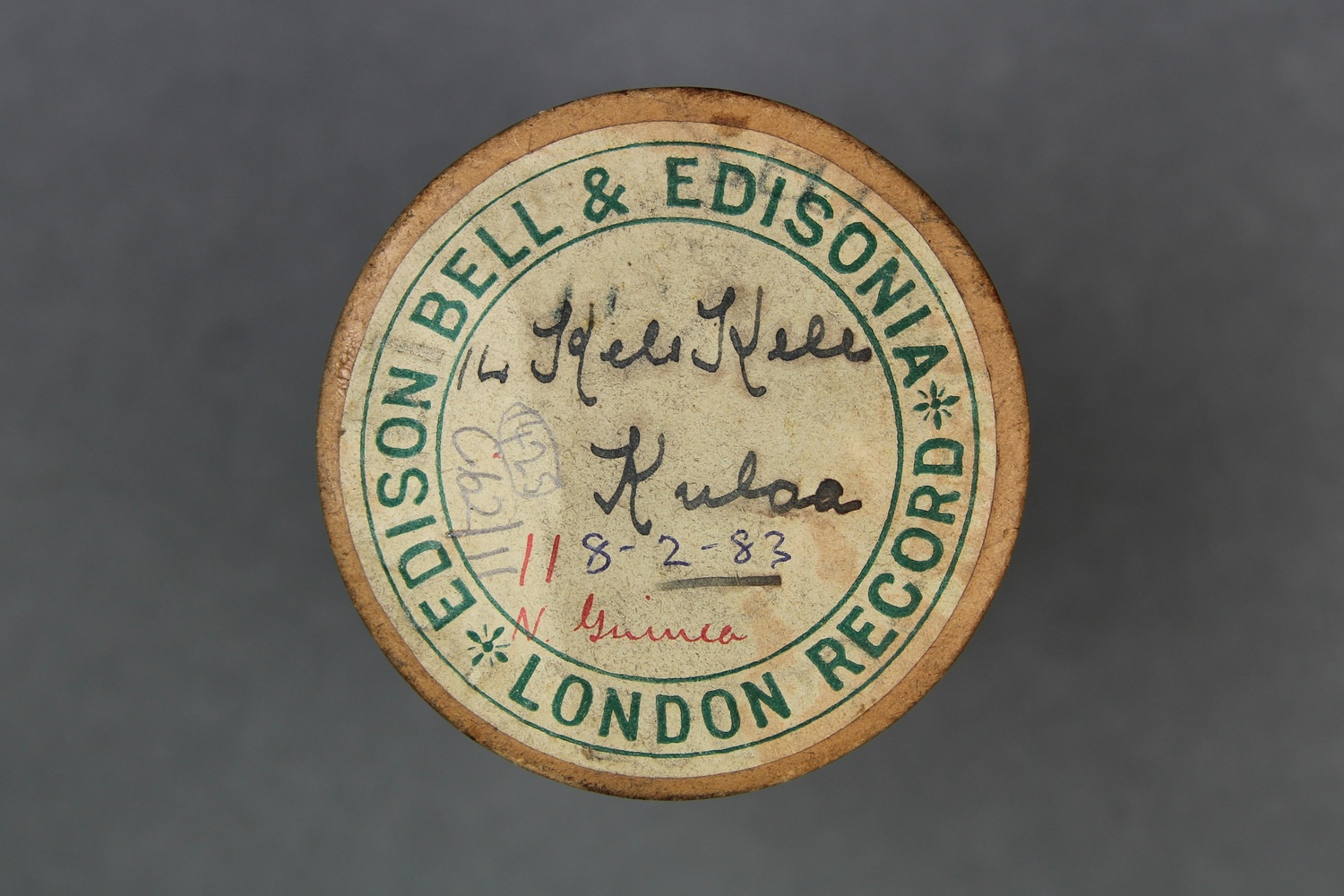 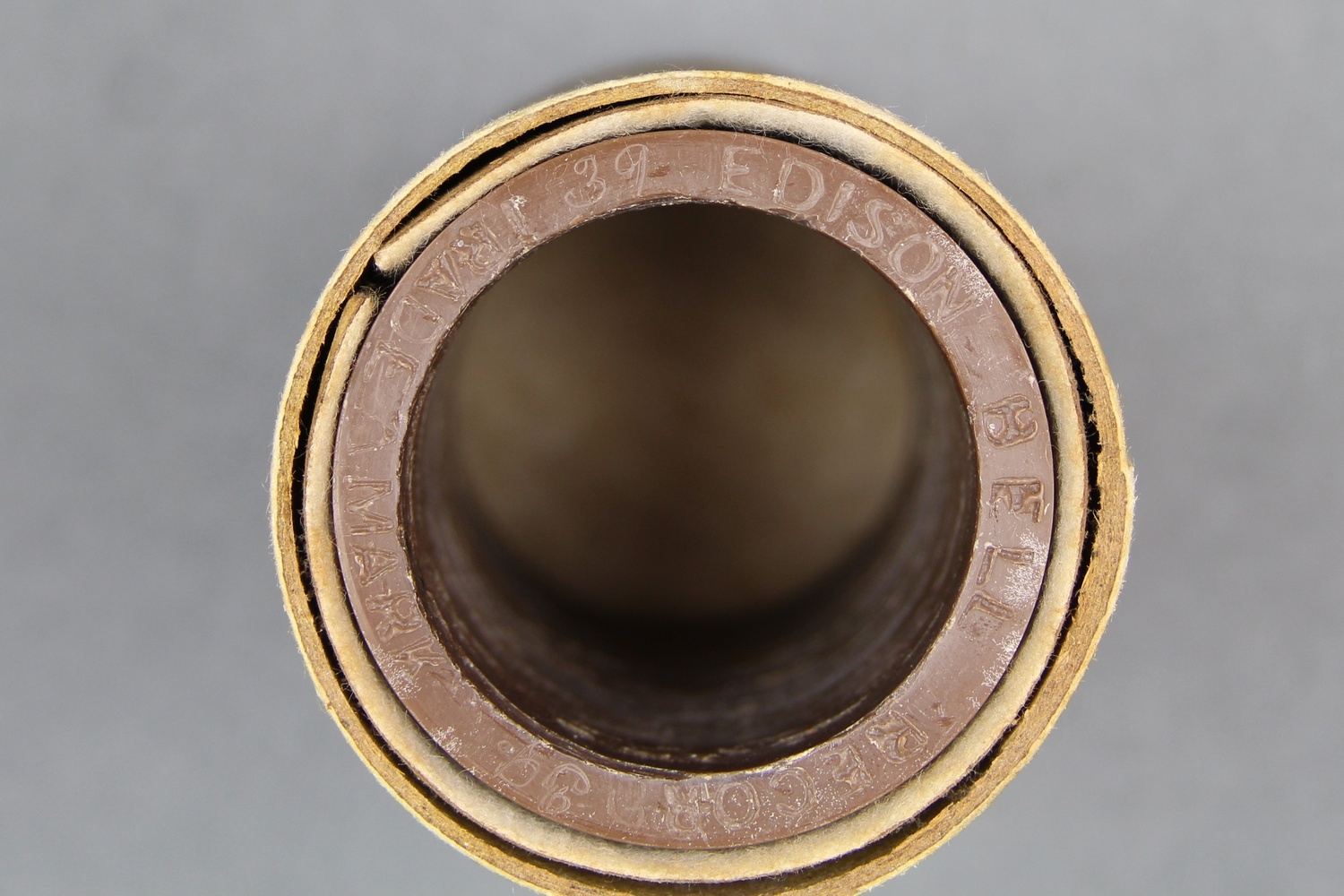     | |||||||
| C62/1426 | (Solo) Kaime – Gore. A.H.D | Unidentified (singer, male) | Port Moresby, British New Guinea | 5 January 1904 ? | 1. Male vocal solo, accompanied by percussion. This is probably a historical ehona song concerning Kaimegore, a man who sailed a lakatoi canoe as part of the hiri trading voyage. | Good quality recording. | Motu and/or Koitabu | Field recordings; Trading song; Voyaging song | Seligman, Charles Gabriel | 2'11" | Daniels Ethnographical Expedition to New Guinea 1904 | Brown wax cylinder | Daniels Ethnographical Expedition to New Guinea 1904 Cylinder Collection (C62) | British Library | 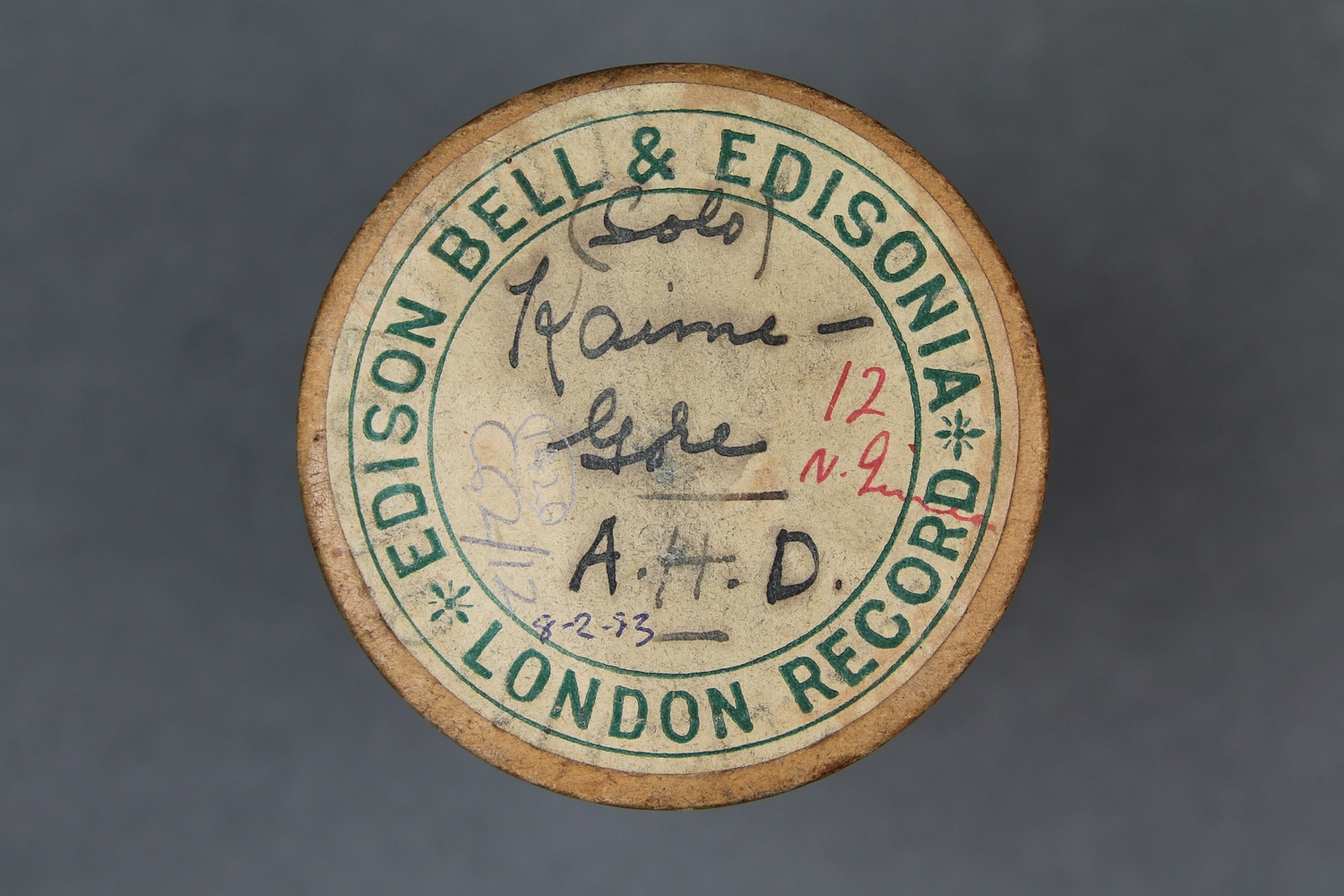      | Transcription of song in F. R. Barton's chapter in Charles Seligmann 'The Melanesians of British New Guinea', Cambridge Universtiy Press, 1910:117. | ||||||
| C62/1427 | Kornedoi Rigo | Unidentified (male chorus); unidentified (percussion) | Rigo, Central District, British New Guinea | July 1904 | Announcement: "Kornedoi, a koyori dance, adapted and used by the Garia. Sung by the Garia, at Rigo, July 1904." 2. Male vocal group with percussion accompaniment. | Good quality recording. | Uare. Garihe (Garia dialect); language also known as Kwale. | Field recordings | Seligman, Charles Gabriel | 2'33" | Daniels Ethnographical Expedition to New Guinea 1904 | Brown wax cylinder | Daniels Ethnographical Expedition to New Guinea 1904 Cylinder Collection (C62) | British Library | 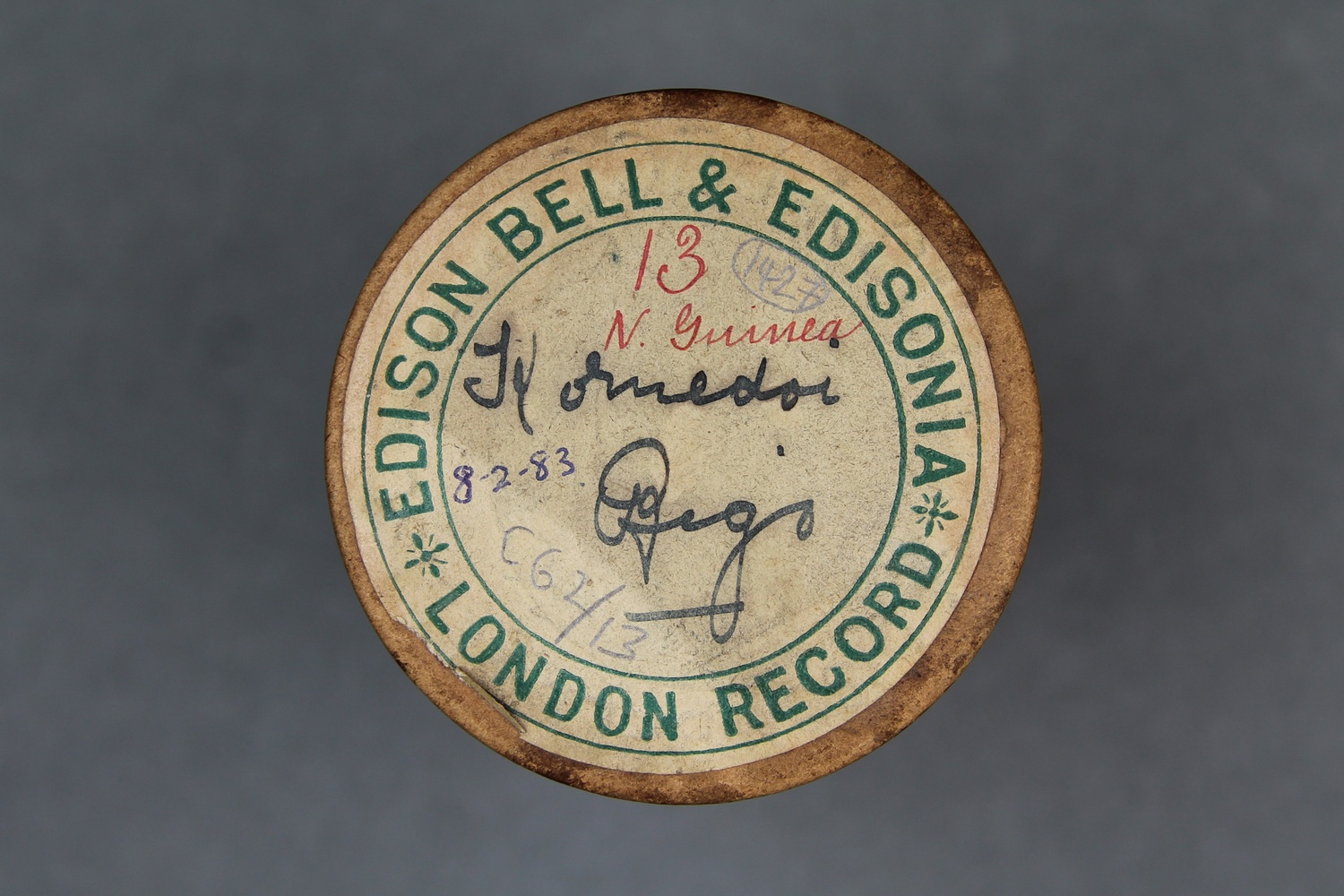      | |||||||
| C62/1428 | 6 Meori Rigo | Unidentified (male chorus); unidentified (singer, male); unidentified (percussion) | Rigo, Central District, British New Guinea | July 1904 | 1. Announcement: "[indecipherable], a kokila dance, sung by the natives at the foot of Mount Obree, Rigo District, British New Guinea." 2. Male vocal solo, accompanied by vocal group and percussion. | Good quality recording. | Doromu-Koki. Kokila dialect. | Field recordings | Seligman, Charles Gabriel | 2'49" | Daniels Ethnographical Expedition to New Guinea 1904 | Brown wax cylinder | Daniels Ethnographical Expedition to New Guinea 1904 Cylinder Collection (C62) | British Library |       | |||||||
| C62/1429 | Leku Leku Part 2 | Unidentified (male chorus); unidentified (percussion) | Rigo, Central District, British New Guinea | July 1904 | This cylinder continues on from cylinder no.11 (C62/1430). 1. Announcement: "... in honour of [indecipherable] after Kokila, Part 2. " 2. Vocal group accompanied by percussion. | Good quality recording. | Sinaugoro (?) | Field recordings | Seligman, Charles Gabriel | 2'39" | Daniels Ethnographical Expedition to New Guinea 1904 | Brown wax cylinder | Daniels Ethnographical Expedition to New Guinea 1904 Cylinder Collection (C62) | British Library | 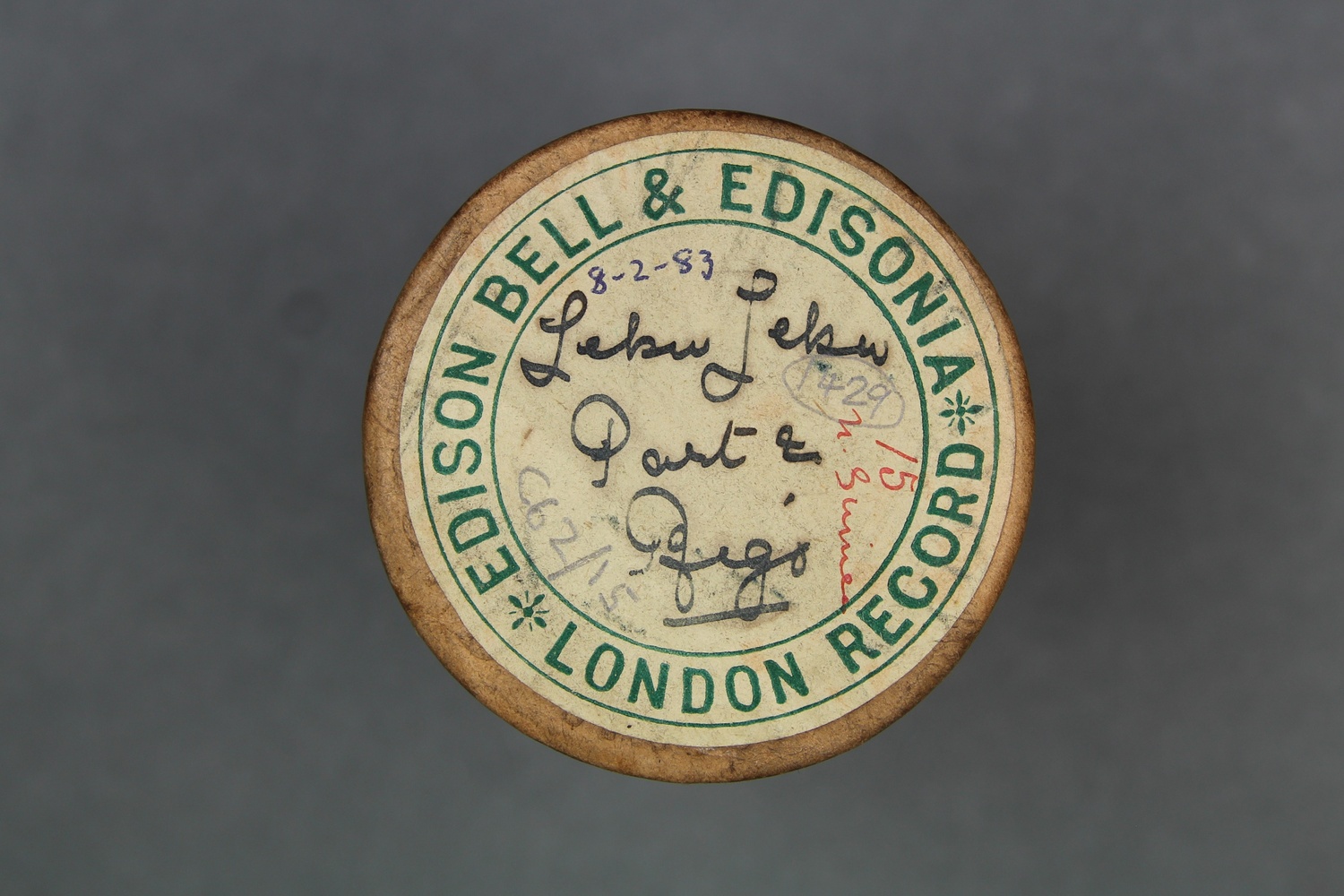      | |||||||
| C62/1430 | 11 Leku Leku Part 1 | Unidentified (male chorus); unidentified (percussion) | Rigo, Central District, British New Guinea | July 1904 | 1. Announcement: "Leku Leku, composed in [indecipherable]'s honour, by Kwaipo, after the battle of Kokila[?]." 2. Vocal group accompanied by percussion. | Good quality recording. | Sinaugoro (?) | Field recordings | Seligman, Charles Gabriel | 2'30" | Daniels Ethnographical Expedition to New Guinea 1904 | Brown wax cylinder | Daniels Ethnographical Expedition to New Guinea 1904 Cylinder Collection (C62) | British Library |       | |||||||
| C62/1431 | 7 Gomi Rigo | Unidentified (singer, male); unidentified (percussion) | Rigo, Central District, British New Guinea | July 1904 | 1. Announcement: "Gomi, a Kokila song, adopted by the Garia and used by them. [indecipherable] brought to the Garia, at the time of the ... [indecipherable] ...Kokila [indecipherable]." 2. Male vocal solo with percussion accompaniment. | Good quality recording but announcement is unclear. | Uare. Garihe (Garia dialect); language also known as Kwale; such is the language of the performers, but originally the song is said to be from Doromu-Koki [kac], Kokila dialect. | Field recordings | Seligman, Charles Gabriel | 2'37" | Daniels Ethnographical Expedition to New Guinea 1904 | Brown wax cylinder | Daniels Ethnographical Expedition to New Guinea 1904 Cylinder Collection (C62) | British Library | 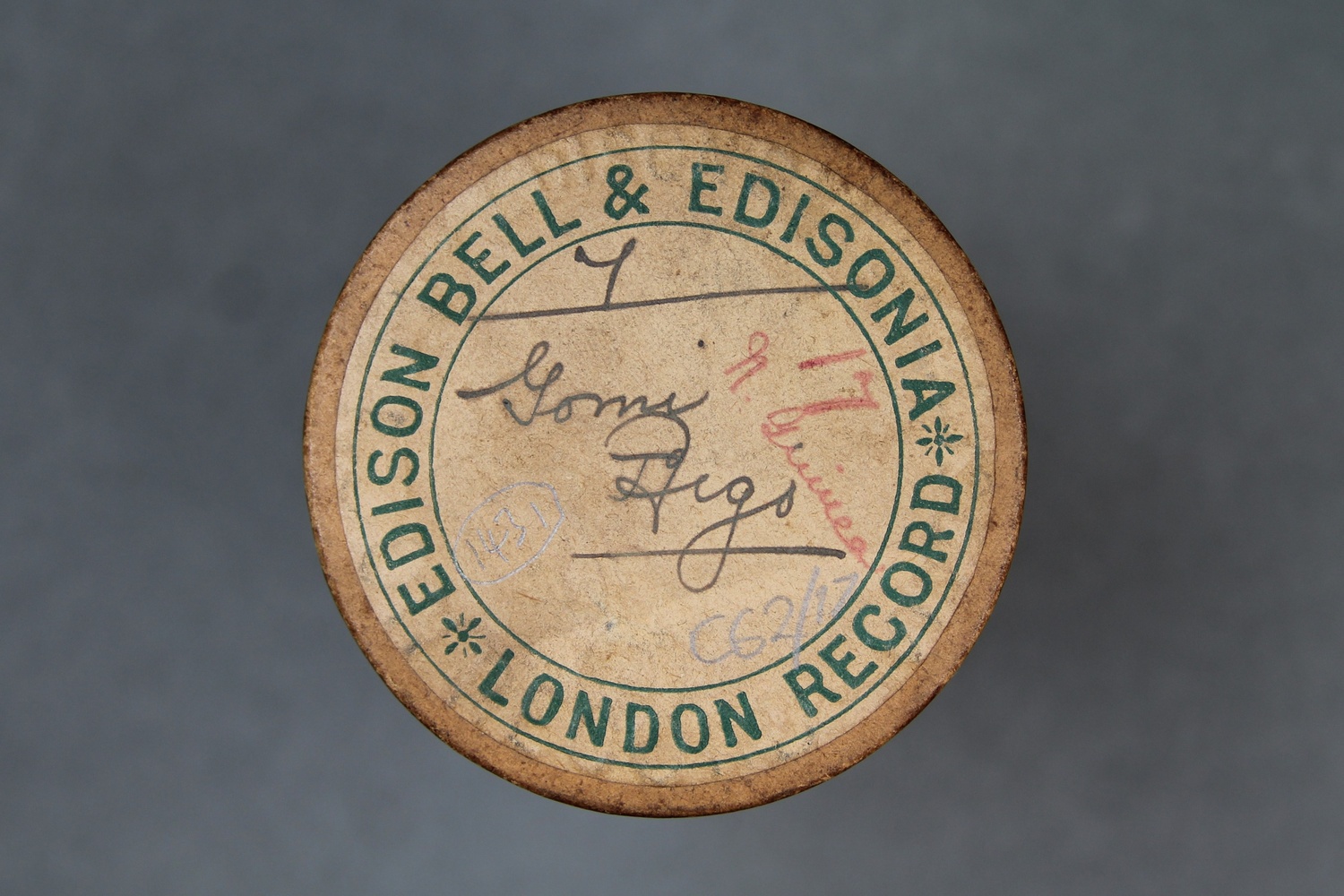      | |||||||
| C62/1432 | 1 Mada Rigo | Unidentified (singer, male); unidentified (percussion) | Rigo, Central District, British New Guinea | July 1904 | 1. Announcement: "[indecipherable] Mada, sung by Warina Koro[?], a native of Taboro Goro[?], an inland [indecipherable]. Rigo district, July 1904." 2. Male vocal solo with percussion accompaniment, ending with chorus of laughter. | Good quality recording. | Sinaugoro | Field recordings | Seligman, Charles Gabriel | 2'28" | Daniels Ethnographical Expedition to New Guinea 1904 | Brown wax cylinder | Daniels Ethnographical Expedition to New Guinea 1904 Cylinder Collection (C62) | British Library | 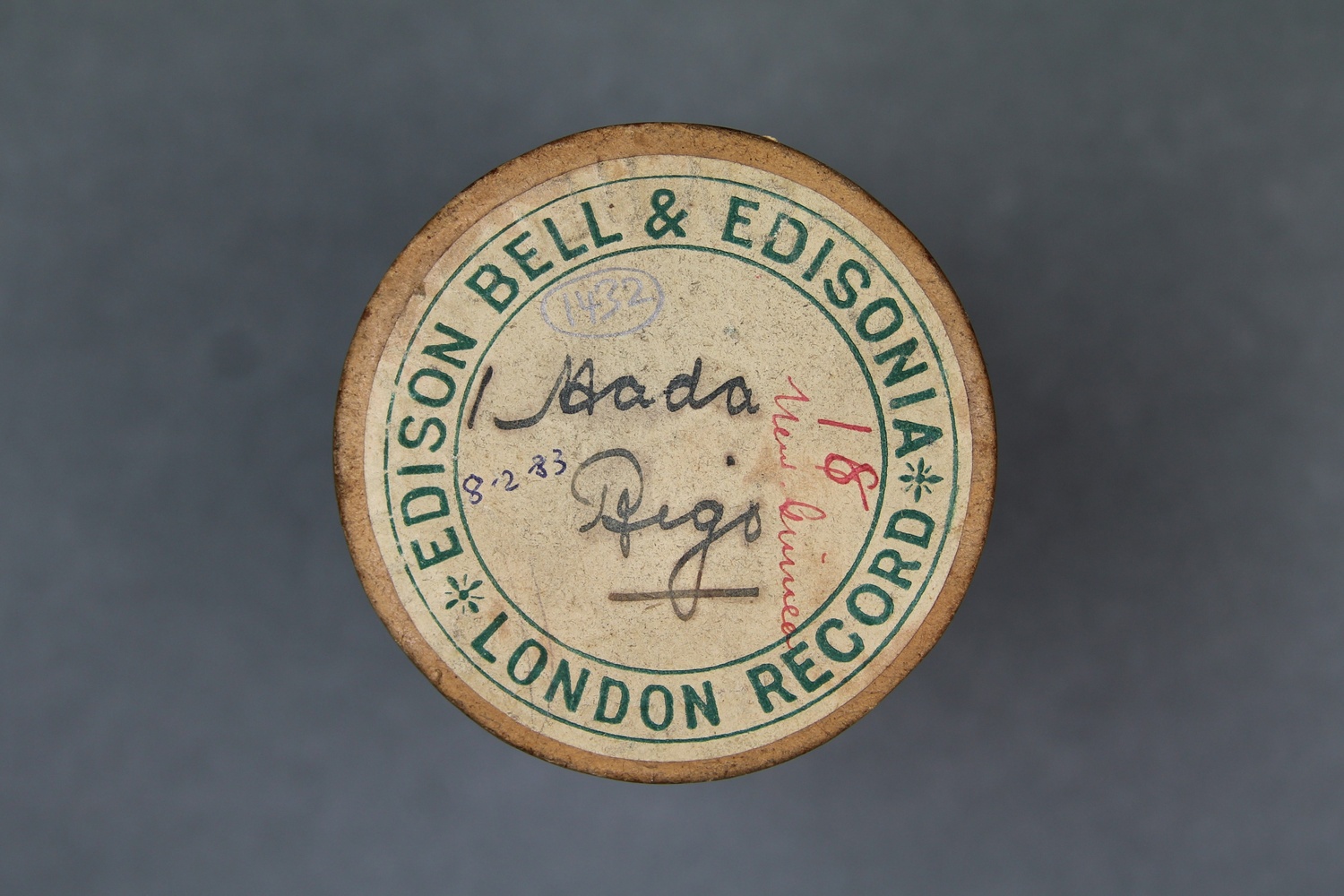      | |||||||
| C62/1433 | 4 Waula Rigo | Unidentified (singer, male); unidentified (percussion) | Rigo, Central District, British New Guinea | July 1904 | 1-2. Male vocal solo, accompanied by percussion. 3. Announcement: "Foregoing songs are sinaugolo waula, sung by [indecipherable] of Gumori-" [ends abruptly]. | Good quality recording but begins with wow, and some surface noise. | Sinaugoro | Field recordings | Seligman, Charles Gabriel | 2'41" | Daniels Ethnographical Expedition to New Guinea 1904 | Brown wax cylinder | Daniels Ethnographical Expedition to New Guinea 1904 Cylinder Collection (C62) | British Library | 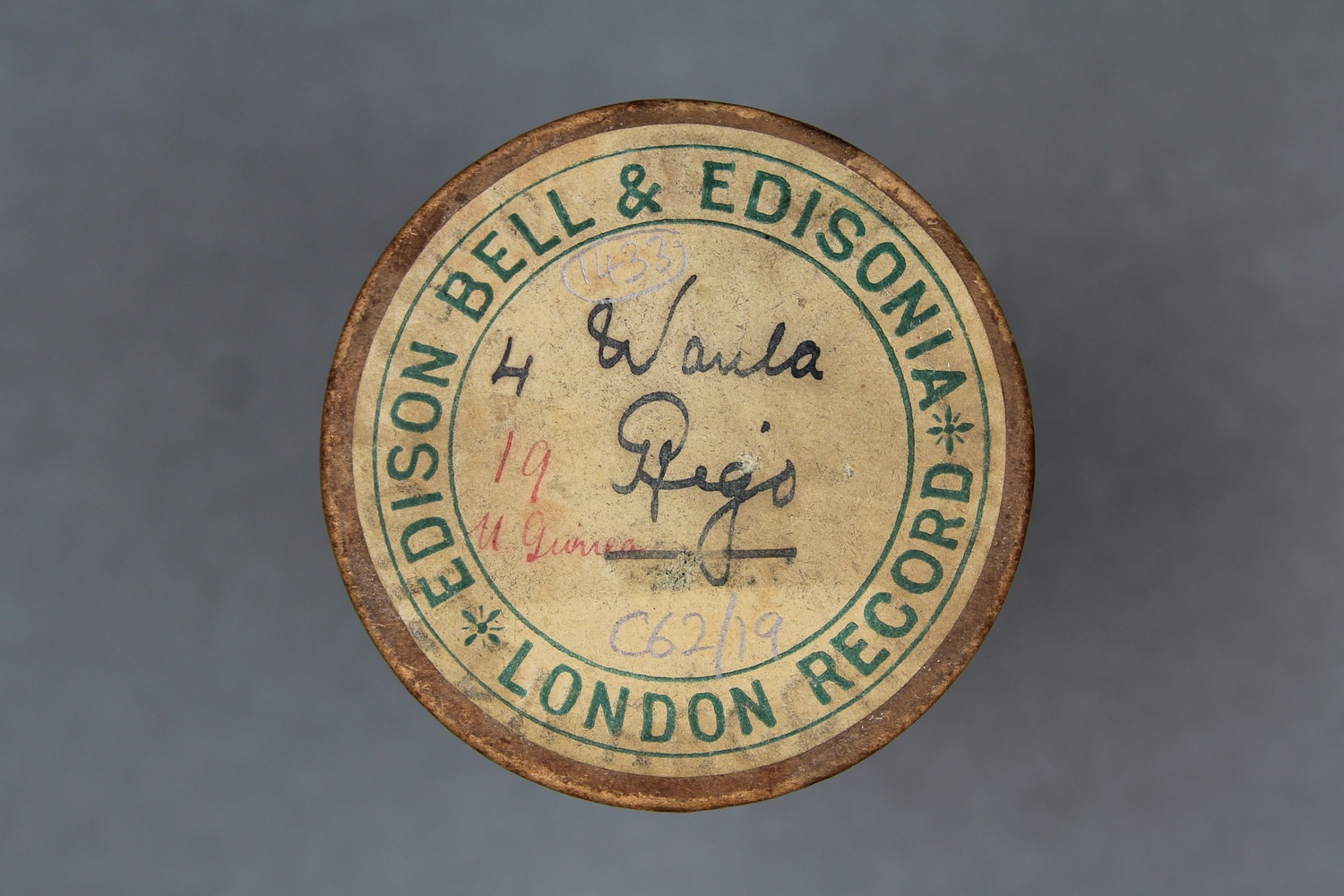      | |||||||
| C62/1434 | 3 Kebene Rigo | Unidentified (singer, male); unidentified (percussion) | Rigo, Central District, British New Guinea | July 1904 | 1. Announcement: "Kebene song, by [indecipherable] of the Garia tribe, Rigo district, July 1904." 2. Male vocal solo, accompanied by percussion. | Good quality recording. | Uare. Garihe (Garia dialect); language also known as Kwale. | Field recordings | Seligman, Charles Gabriel | 2'49" | Daniels Ethnographical Expedition to New Guinea 1904 | Brown wax cylinder | Daniels Ethnographical Expedition to New Guinea 1904 Cylinder Collection (C62) | British Library | 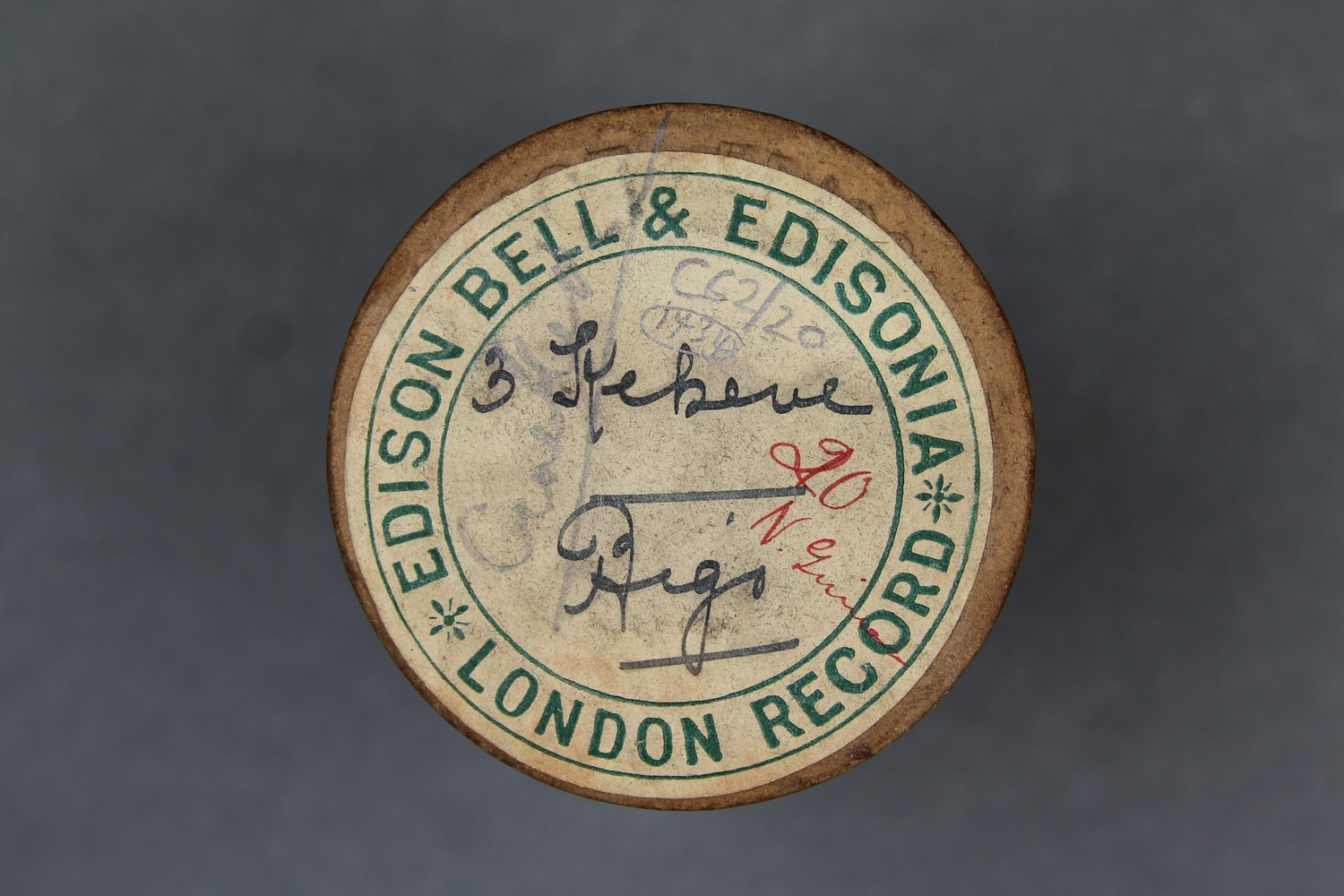      | |||||||
| C62/1435 | 9 Waula (Siromuka) Rigo | Unidentified (singer, male); unidentified (percussion) | Rigo, Central District, British New Guinea | July 1904 | 1. Announcement: "Sinaugolo Waula Siromuka, sung by [indecipherable] and [indecipherable] on Gumari Dobo, Rigo District, July 1904." 2. Male vocal duet with percussion accompaniment. | Good quality recording. | Sinaugoro | Field recordings | Seligman, Charles Gabriel | 2'49" | Daniels Ethnographical Expedition to New Guinea 1904 | Brown wax cylinder | Daniels Ethnographical Expedition to New Guinea 1904 Cylinder Collection (C62) | British Library | 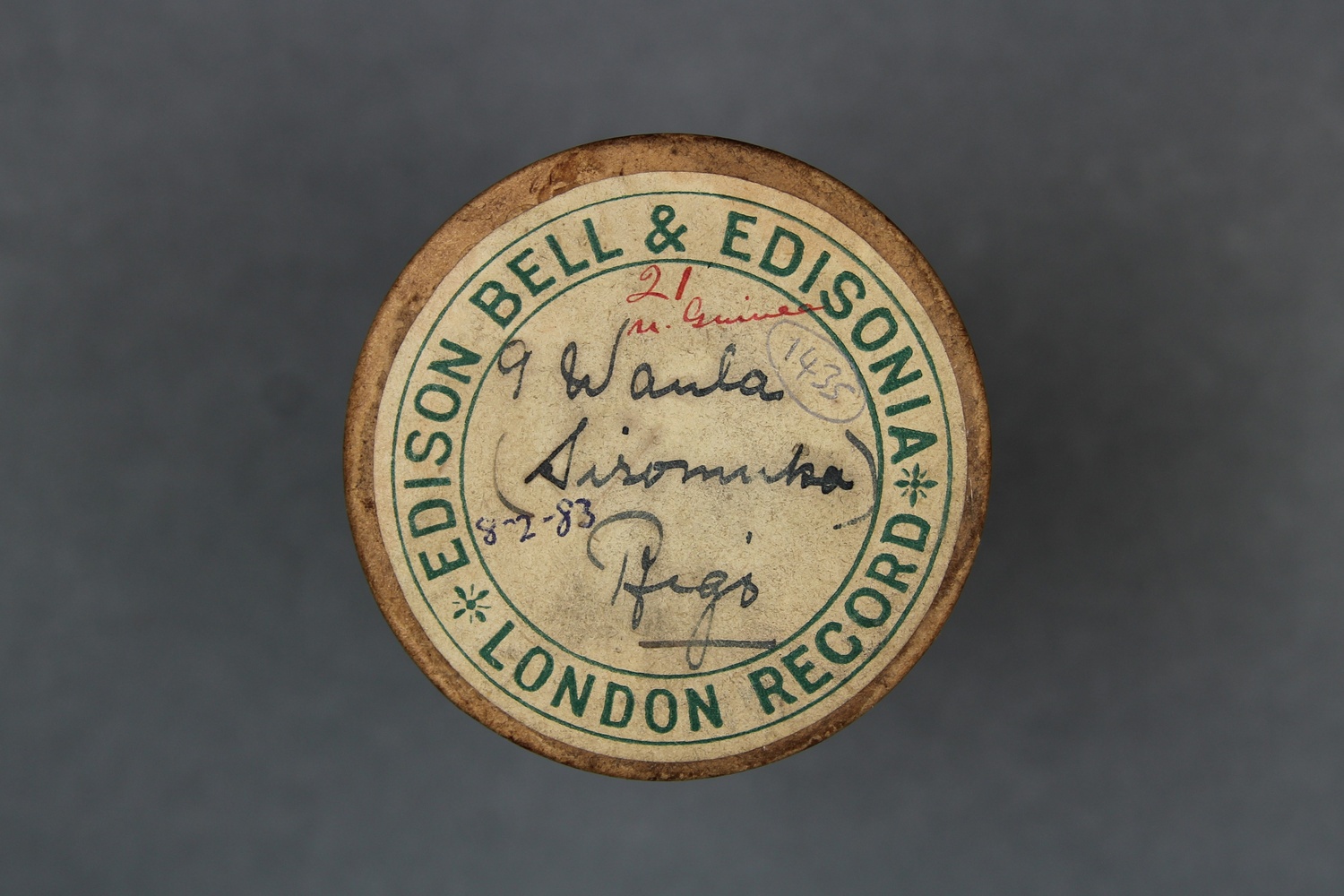      | |||||||
| C62/1436 | 5 Enaniori Rigo | Unidentified (singer, male) | Rigo, Central District, British New Guinea | July 1904 | 1. Announcement: "...[indecipherable] from their ancestral [indecipherable] the meaning of the words now completely forgotten." 2. Unaccompanied male vocal solo. | Sinaugoro | Field recordings | Seligman, Charles Gabriel | 2'46" | Daniels Ethnographical Expedition to New Guinea 1904 | Brown wax cylinder | Daniels Ethnographical Expedition to New Guinea 1904 Cylinder Collection (C62) | British Library | 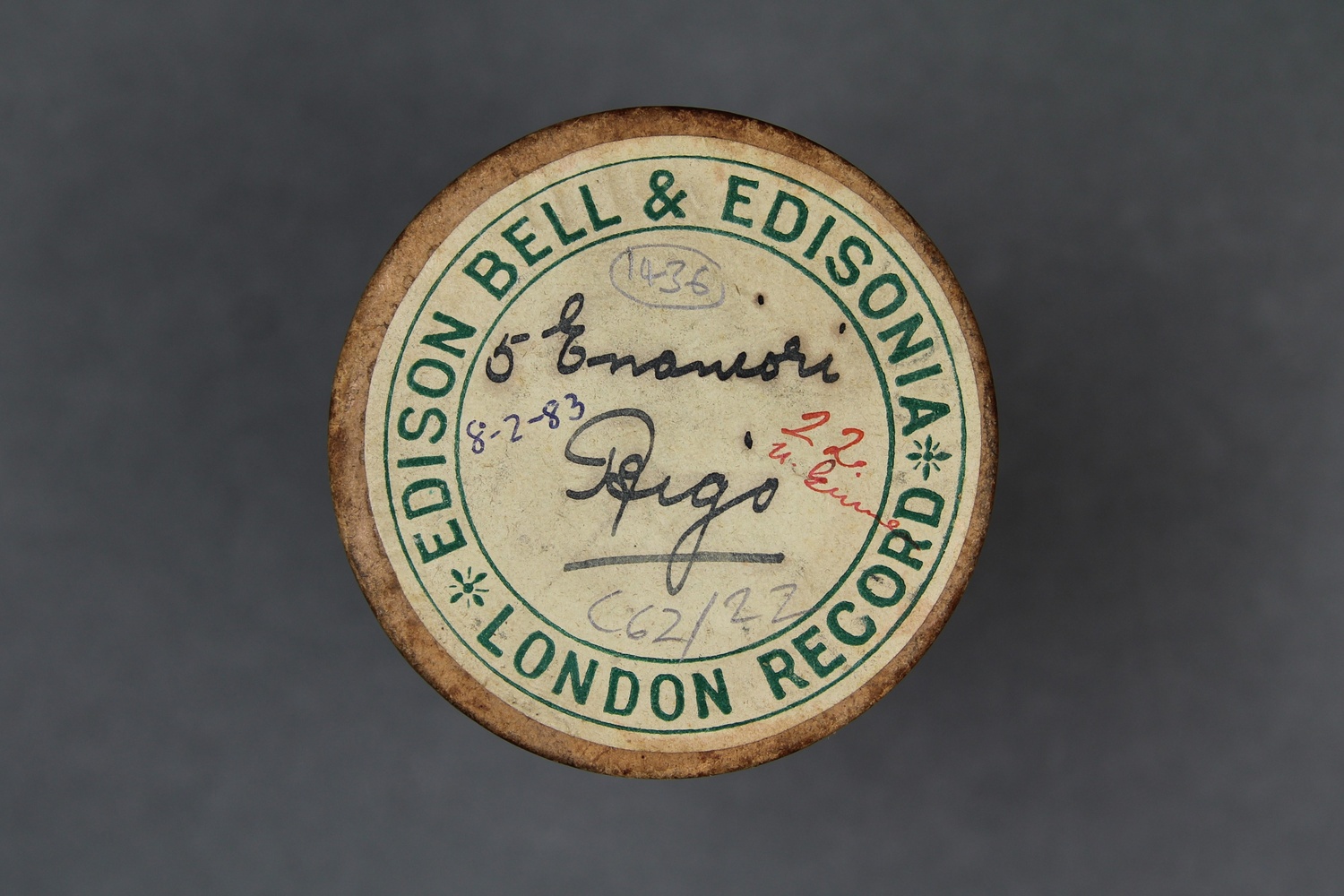      | ||||||||
| C62/1437 | Galo Galo. Motu | Unidentified (male chorus); unidentified (percussion) | Port Moresby, British New Guinea | October 1904 | 1. Announcement: "Galo Galo, a Motu song, sung when hauling captured dugung alongside the canoe, Hanuabada, October 1904." 2. Male vocal group with percussion accompaniment. Moto is presumably a typographical error and should read Motu. A dugong hunting song. | Good quality recording. | Motu | Field recordings; Dugong fishing song | Seligman, Charles Gabriel | 3'41" | Daniels Ethnographical Expedition to New Guinea 1904 | Brown wax cylinder | Daniels Ethnographical Expedition to New Guinea 1904 Cylinder Collection (C62) | British Library | 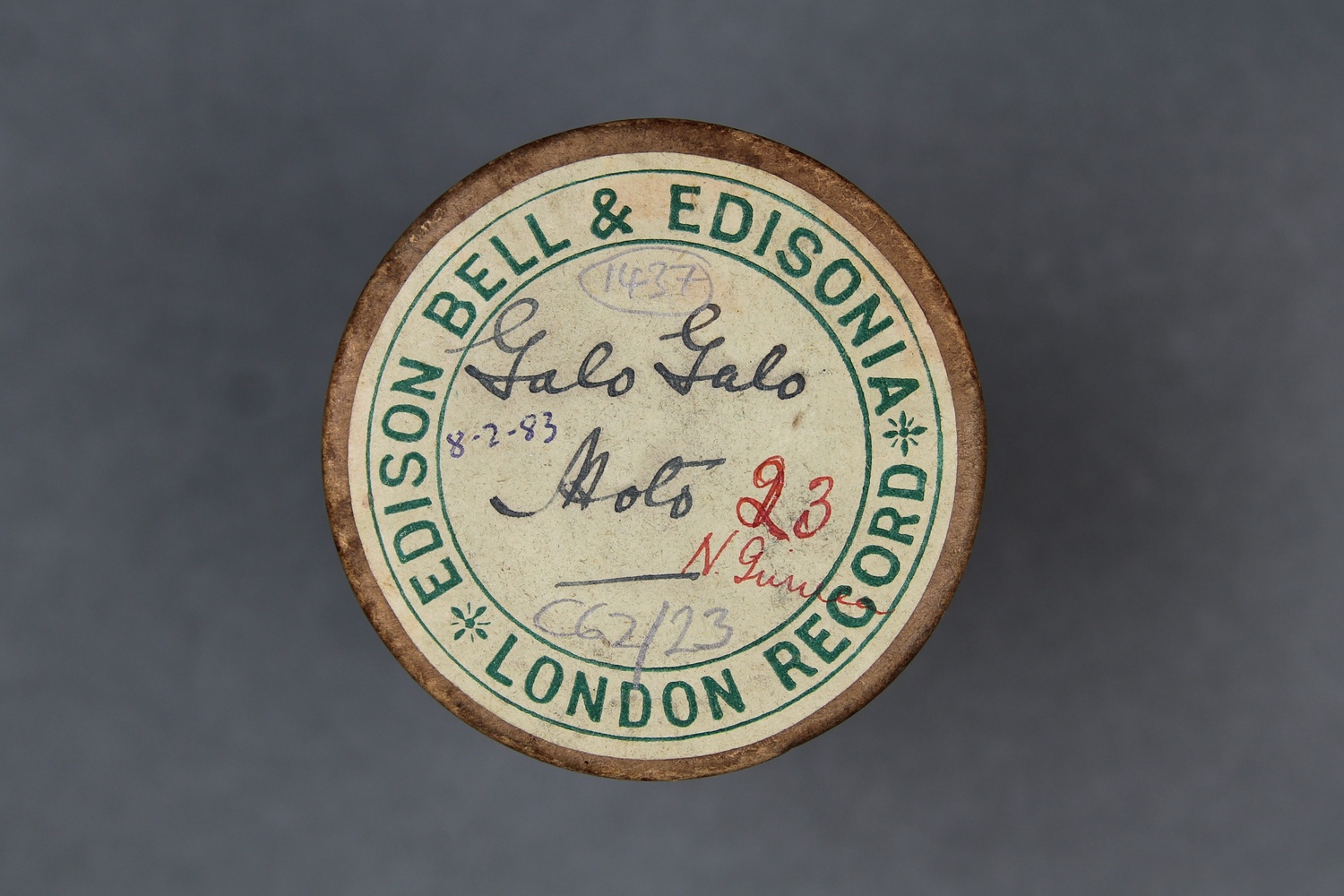      | |||||||
| C62/1438 | Bogi Bada | Unidentified (singer, male); unidentified (percussion) | Port Moresby, British New Guinea | 5 January 1904 | 1. Unaccompanied male vocal solo. 2. Male vocal solo with percussion accompaniment. This is a historical ehona song concerning a lakatoi canoe trip as part of the hiri trading voyage. | Reasonable quality recording but with surface noise. | Motu | Field recordings; Trading song; Voyaging song | Seligman, Charles Gabriel | 2'36" | Daniels Ethnographical Expedition to New Guinea 1904 | Brown wax cylinder | Daniels Ethnographical Expedition to New Guinea 1904 Cylinder Collection (C62) | British Library | 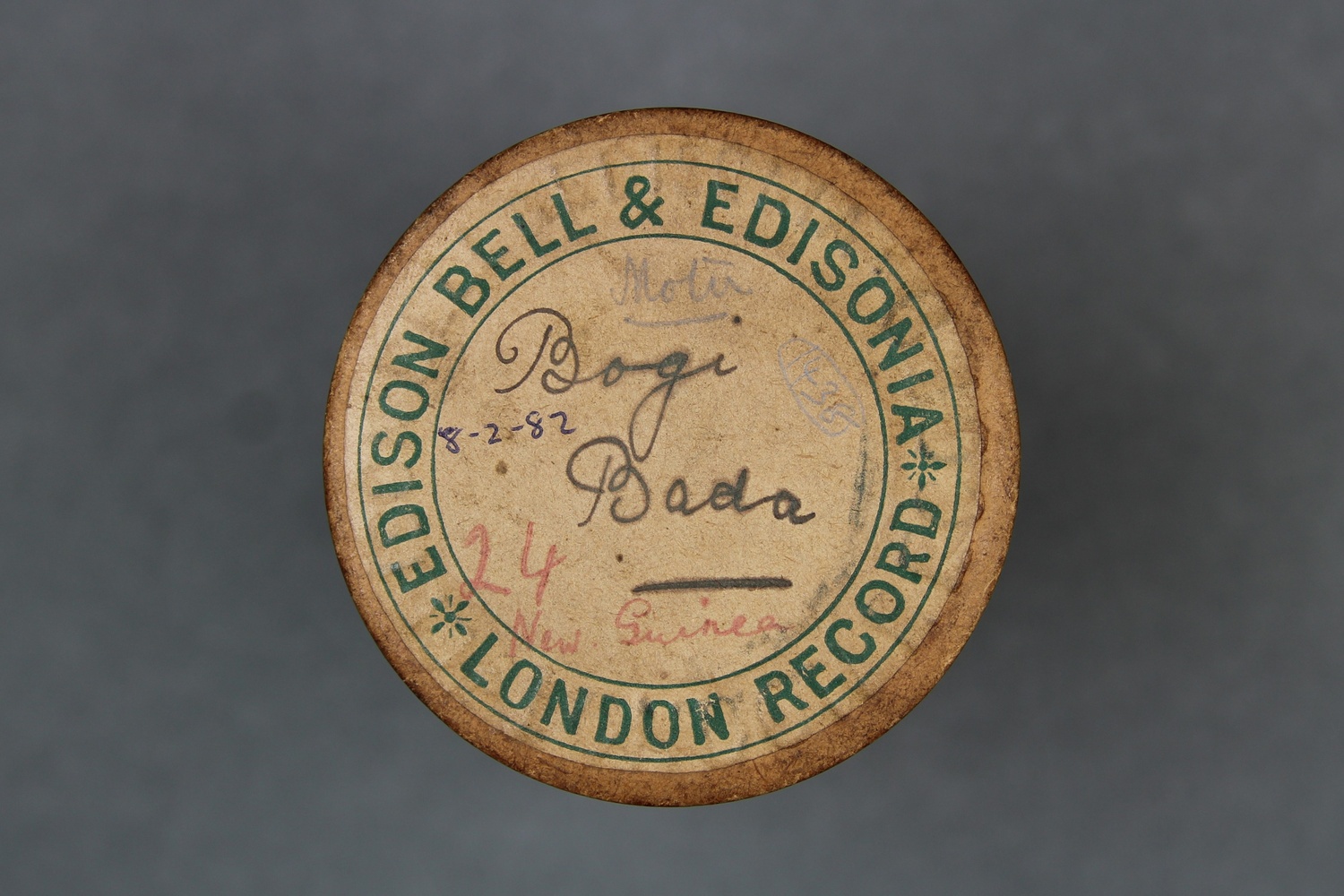      | Transcription of song in F. R. Barton's chapter in Charles Seligmann 'The Melanesians of British New Guinea', Cambridge Universtiy Press, 1910:116. | ||||||
| C62/1439 | Kaime Gore / Gaigo Lelova | Unidentified (male chorus); unidentified (percussion) | Port Moresby, British New Guinea | 5 January 1904 | 1-2. Male vocal group accompanied by percussion. This is probably a historical ehona song concerning Kaimegore, a man who sailed a lakatoi canoe as part of the hiri trading voyage. | Reasonable quality recording but with some surface noise. | Motu and/or Koitabu | Field recordings | Seligman, Charles Gabriel | 2'34" | Daniels Ethnographical Expedition to New Guinea 1904 | Brown wax cylinder | Daniels Ethnographical Expedition to New Guinea 1904 Cylinder Collection (C62) | British Library | 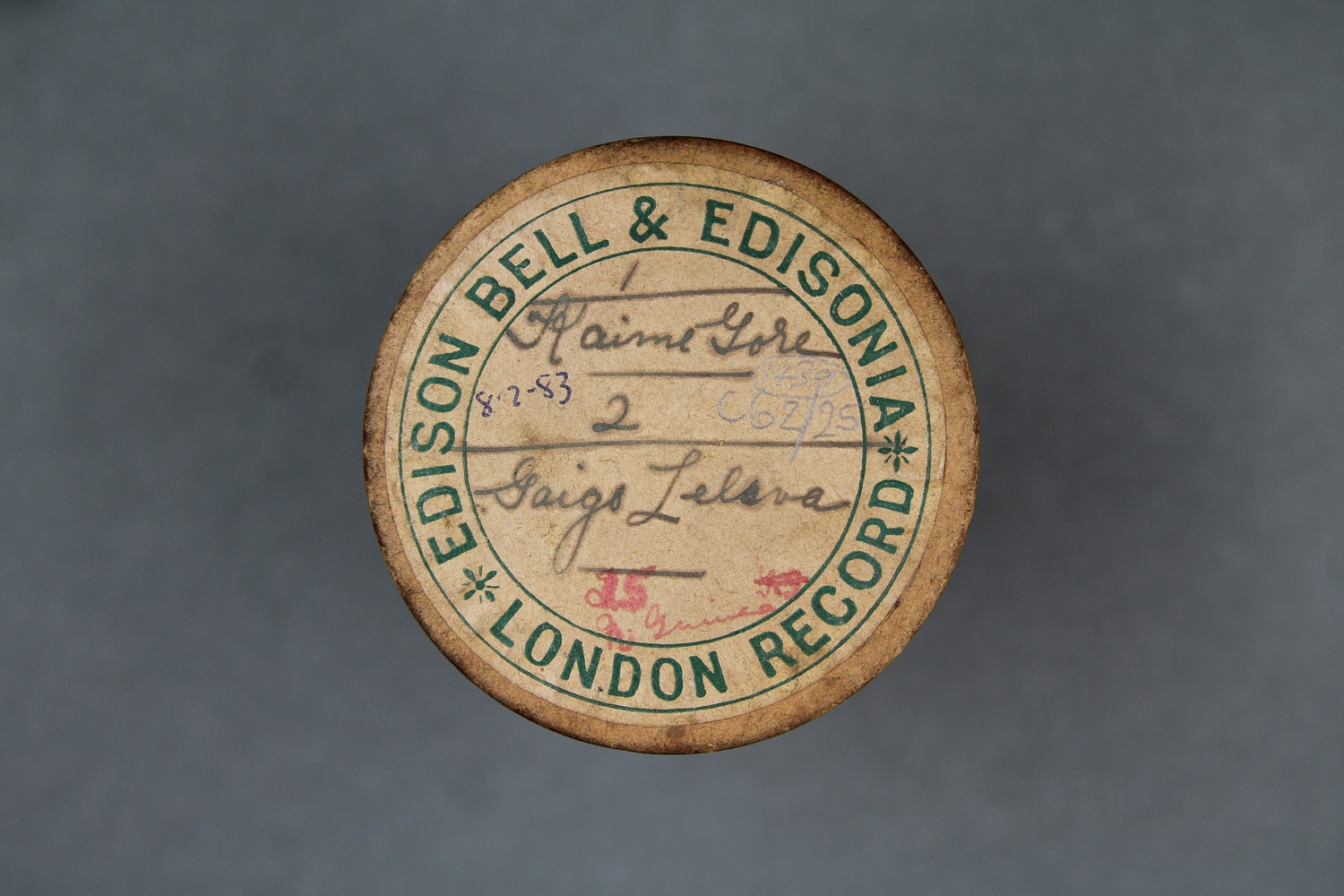      | Transcription of song in F. R. Barton's chapter in Charles Seligmann 'The Melanesians of British New Guinea', Cambridge Universtiy Press, 1910:117. | ||||||
| C62/1440 | 19 Yadarai Tube Tube | Unidentified (singer, male) | Tube Tube, Slade Island, British New Guinea | 5 August 1904 | 1. Announcement: "Yadarai. The third song, sung at the Waia ceremony, Rogeia. Originally learnt from the Durupi[?] in Milne Bay. Sung Tube Tube, 5th August 1904." 2. Unaccompanied male vocal solo. A favourite dancing song. | Good quality recording with strong signal, but some repeating grooves. | Bwanbwana | Field recordings | Seligman, Charles Gabriel | 3'18" | Daniels Ethnographical Expedition to New Guinea 1904 | Brown wax cylinder | Daniels Ethnographical Expedition to New Guinea 1904 Cylinder Collection (C62) | British Library | 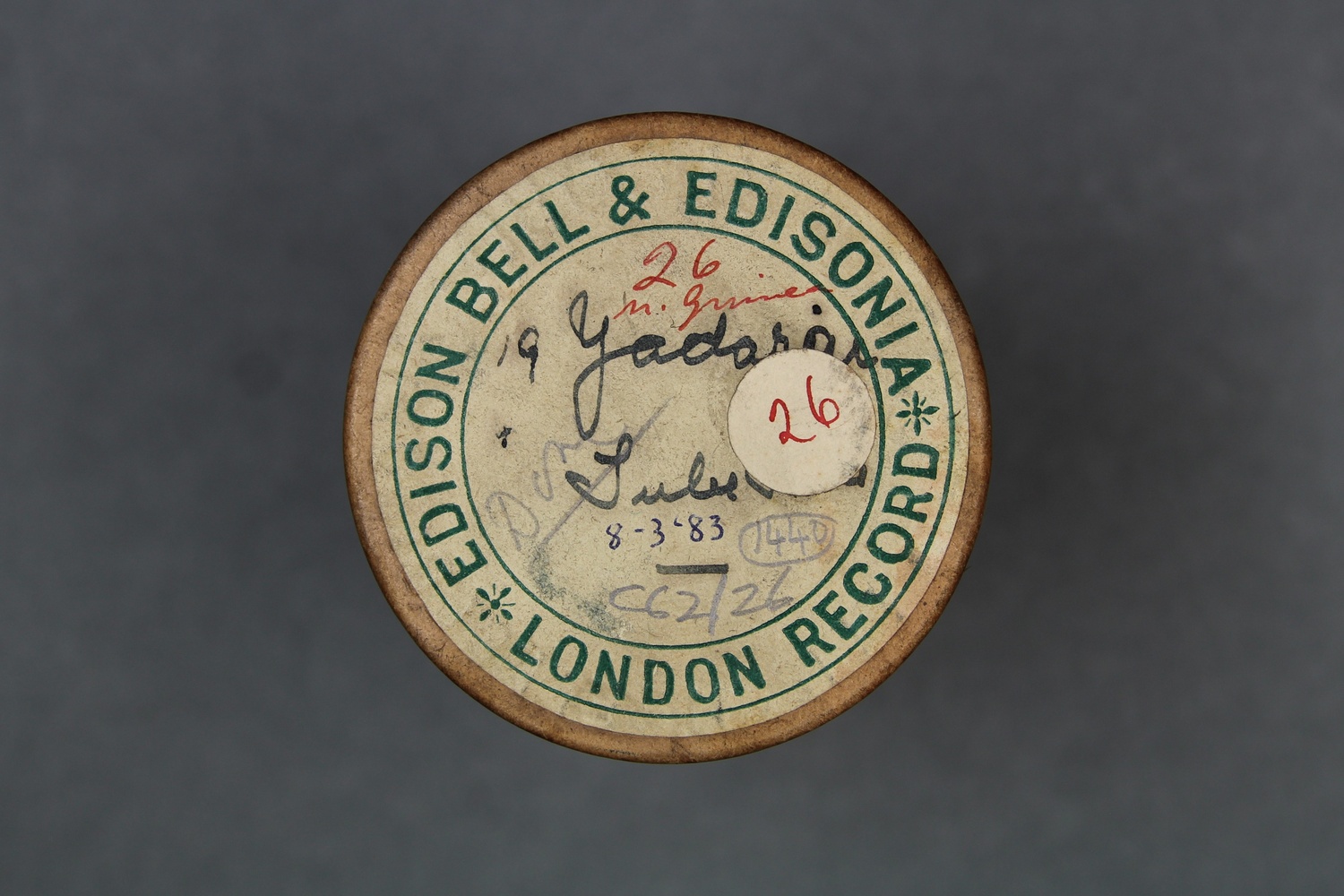      | This song is mentioned in Charles G. Seligmann, 'The Melanesians of British New Guinea', Cambridge University Press, 1910:588. | ||||||
| C62/1441 | Bona Bona Tube Tube | Unidentified (singer, male) | Tube Tube, Slade Island, British New Guinea | August 1904 | 1. Announcement: "Bona Bona. The secong song sung at the Waia ceremony, Rogeia. It was learned originally from the Durupi people of Milne Bay." 2. Unaccompanied male vocal solo. A favourite dancing song. | Good quality recording with strong signal but some surface noise. | Bwanbwana | Field recordings | Seligman, Charles Gabriel | 3'10" | Daniels Ethnographical Expedition to New Guinea 1904 | Brown wax cylinder | Daniels Ethnographical Expedition to New Guinea 1904 Cylinder Collection (C62) | British Library | 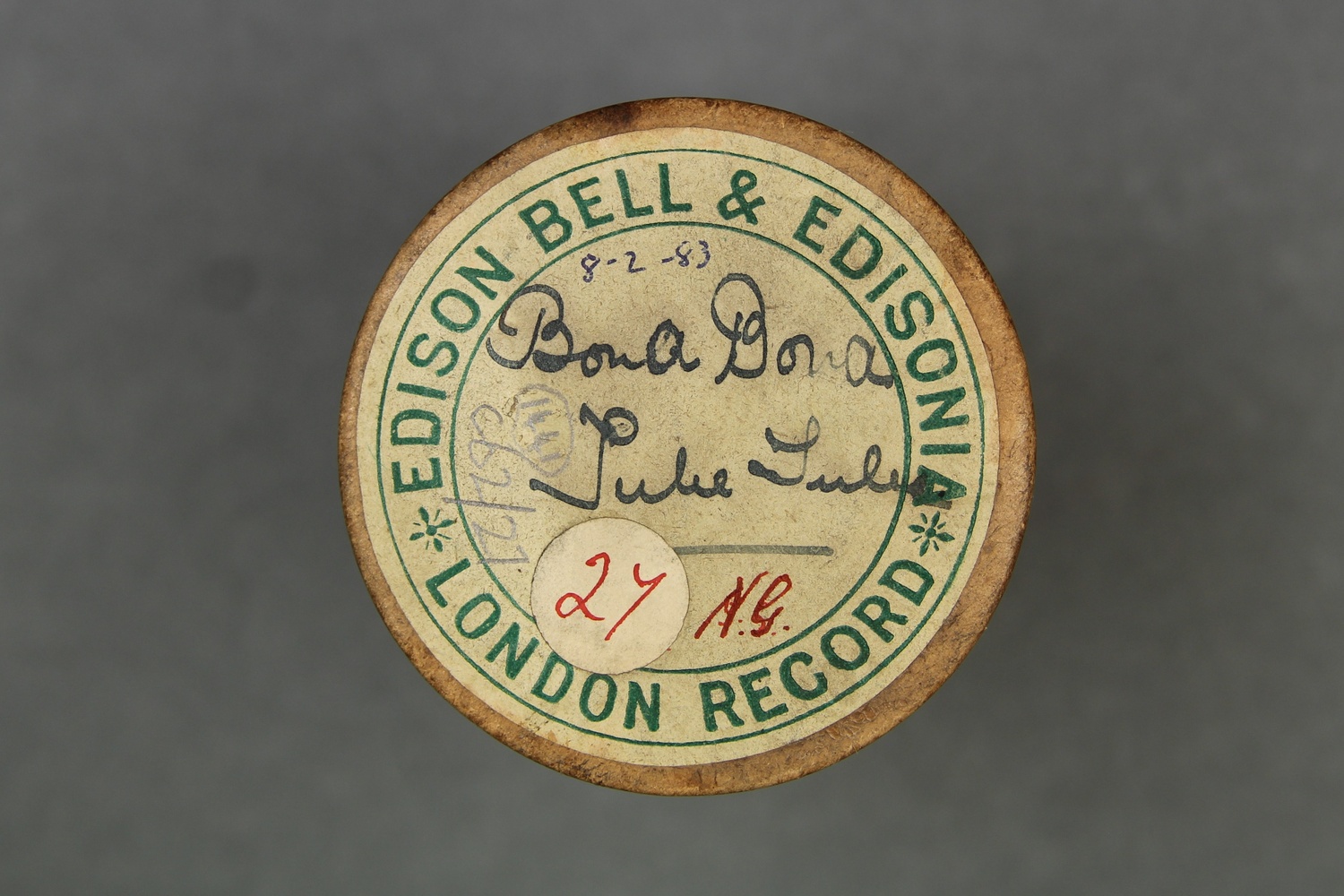      | This song is mentioned in Charles G. Seligmann, 'The Melanesians of British New Guinea', Cambridge University Press, 1910:588. | ||||||
| C62/1442 | Geagea | Unidentified (male chorus); unidentified (percussion) | Rigo, Central District, British New Guinea | July 1904 | 1. Announcement: "Geogeo, a Sinaugolo dance song, sang [sic] at Rigo, 1904." 2. Male vocal group with percussion accompaniment. | Good quality recording. | Sinaugoro | Field recordings | Seligman, Charles Gabriel | 2'47" | Daniels Ethnographical Expedition to New Guinea 1904 | Brown wax cylinder | Daniels Ethnographical Expedition to New Guinea 1904 Cylinder Collection (C62) | British Library |       | |||||||
| C62/1443 | Damorea Waga Waga | Unidentified (singer, male) | Waga Waga, Milne Bay, British New Guinea | October 1904 | 1. Announcement "Damorea. A Waga Waga song, sung at the Toreha by Wiri [?]." 2-3. Unaccompanied male vocal solo. A song sung at a funeral feast. | Good quality recording. | Wagawaga | Field recordings; Laments | Seligman, Charles Gabriel | 3'10" | Daniels Ethnographical Expedition to New Guinea 1904 | Brown wax cylinder | Daniels Ethnographical Expedition to New Guinea 1904 Cylinder Collection (C62) | British Library | 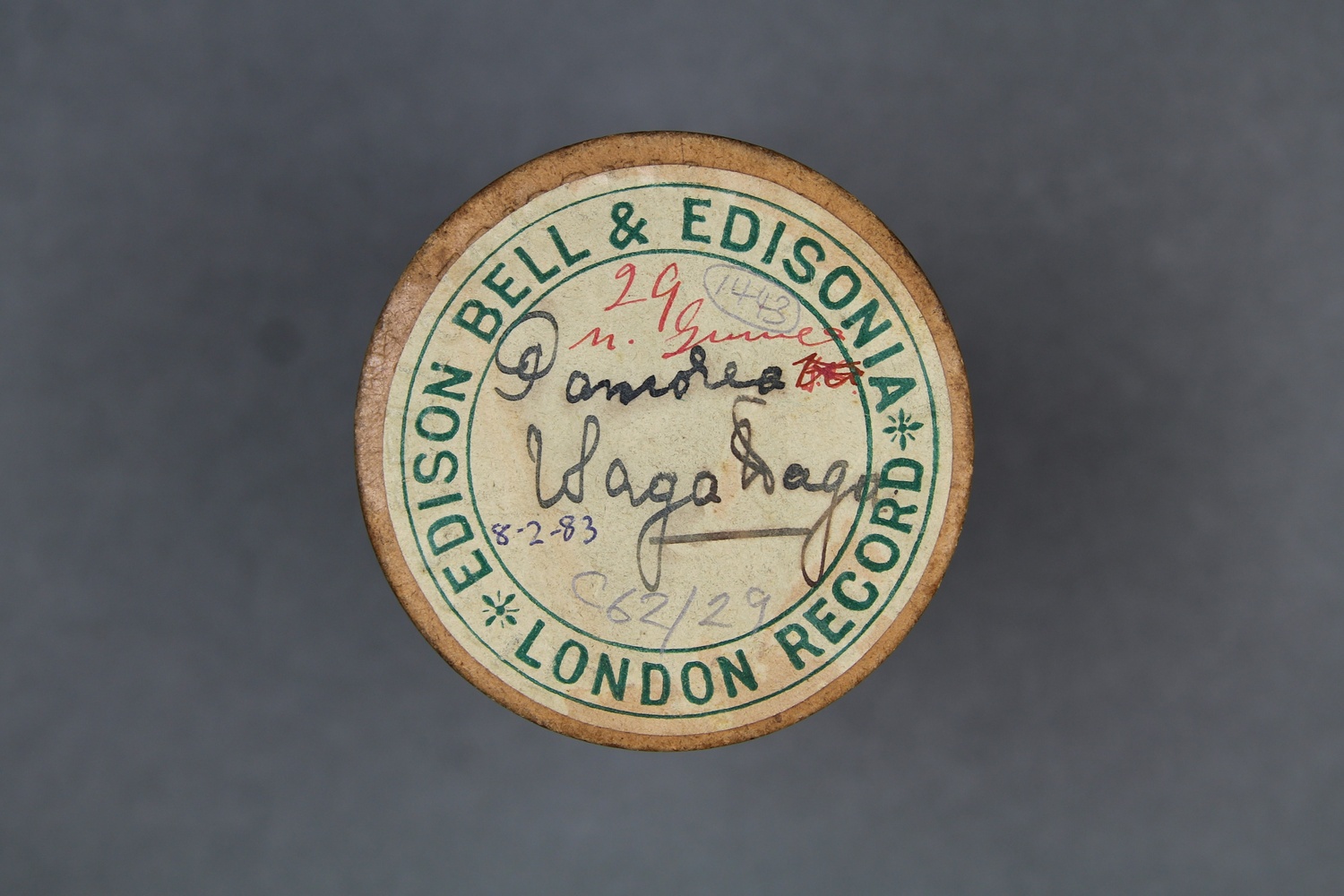      | This song is transcribed in Charles G. Seligmann, 'The Melanesians of British New Guinea', Cambridge University Press, 1910:587. | ||||||
| C62/1444 | Kwabiai Waga Waga | Unidentified (singer, male) | Waga Waga, Milne Bay, British New Guinea | October 1904 | 1. Announcement: "Kwabiaia, a Waga Waga song." 2. Unaccompanied male vocal solo (with some laughter). | Reasonable quality recording but short duration and some distortion. | Wagawaga | Field recordings | Seligman, Charles Gabriel | 1'47" | Daniels Ethnographical Expedition to New Guinea 1904 | Brown wax cylinder | Daniels Ethnographical Expedition to New Guinea 1904 Cylinder Collection (C62) | British Library |       | This song is transcribed and translated in Charles G. Seligmann, 'The Melanesians of British New Guinea', Cambridge University Press, 1910:588. | ||||||
| C62/1445 | Nuauuro Waga Waga | Unidentified (singer, male); unidentified (percussion) | Waga Waga, Milne Bay, British New Guinea | October 1904 | 1. Announcement: "..., a Waga Waga song." 2. Male vocal solo with percussion accompaniment. The first part of the Nuauuro song. | Reasonable quality recording but with weak signal and surface noise due to cracked cylinder. | Wagawaga | Field recordings | Seligman, Charles Gabriel | 2'52" | Daniels Ethnographical Expedition to New Guinea 1904 | Brown wax cylinder | Daniels Ethnographical Expedition to New Guinea 1904 Cylinder Collection (C62) | British Library | 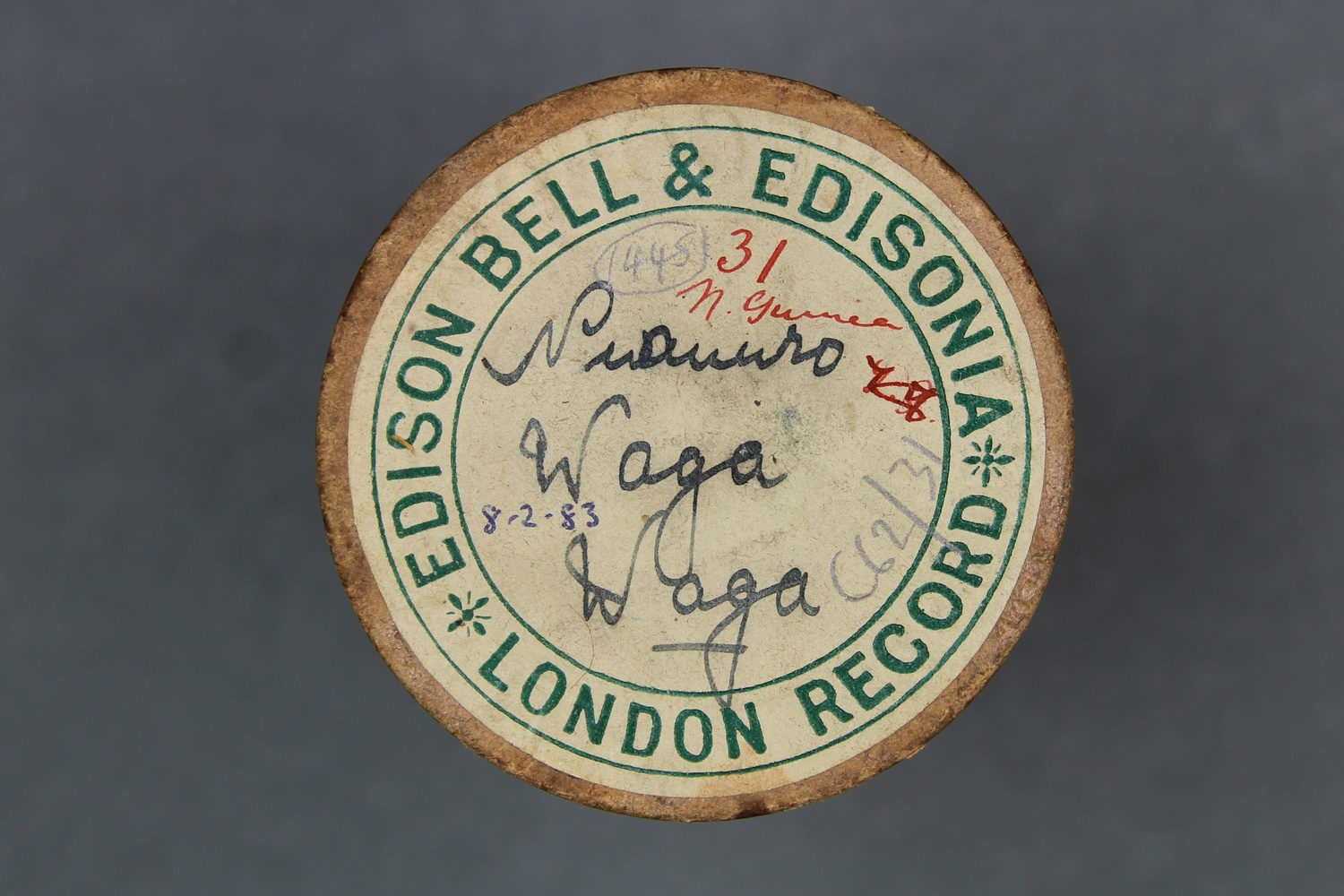      | This song is transcribed in Charles G. Seligmann, 'The Melanesians of British New Guinea', Cambridge University Press, 1910:587. | ||||||
| C62/1446 | Oge Oge Waga Waga | Unidentified (singer, male) | Waga Waga, Milne Bay, British New Guinea | October 1904 | 1. Announcement: "Oge Oge, a Waga Waga song." 2. Unaccompanied male vocal solo. A song whose meaning is not known. | Good quality recording. | Wagawaga | Field recordings | Seligman, Charles Gabriel | 3'22" | Daniels Ethnographical Expedition to New Guinea 1904 | Brown wax cylinder | Daniels Ethnographical Expedition to New Guinea 1904 Cylinder Collection (C62) | British Library | 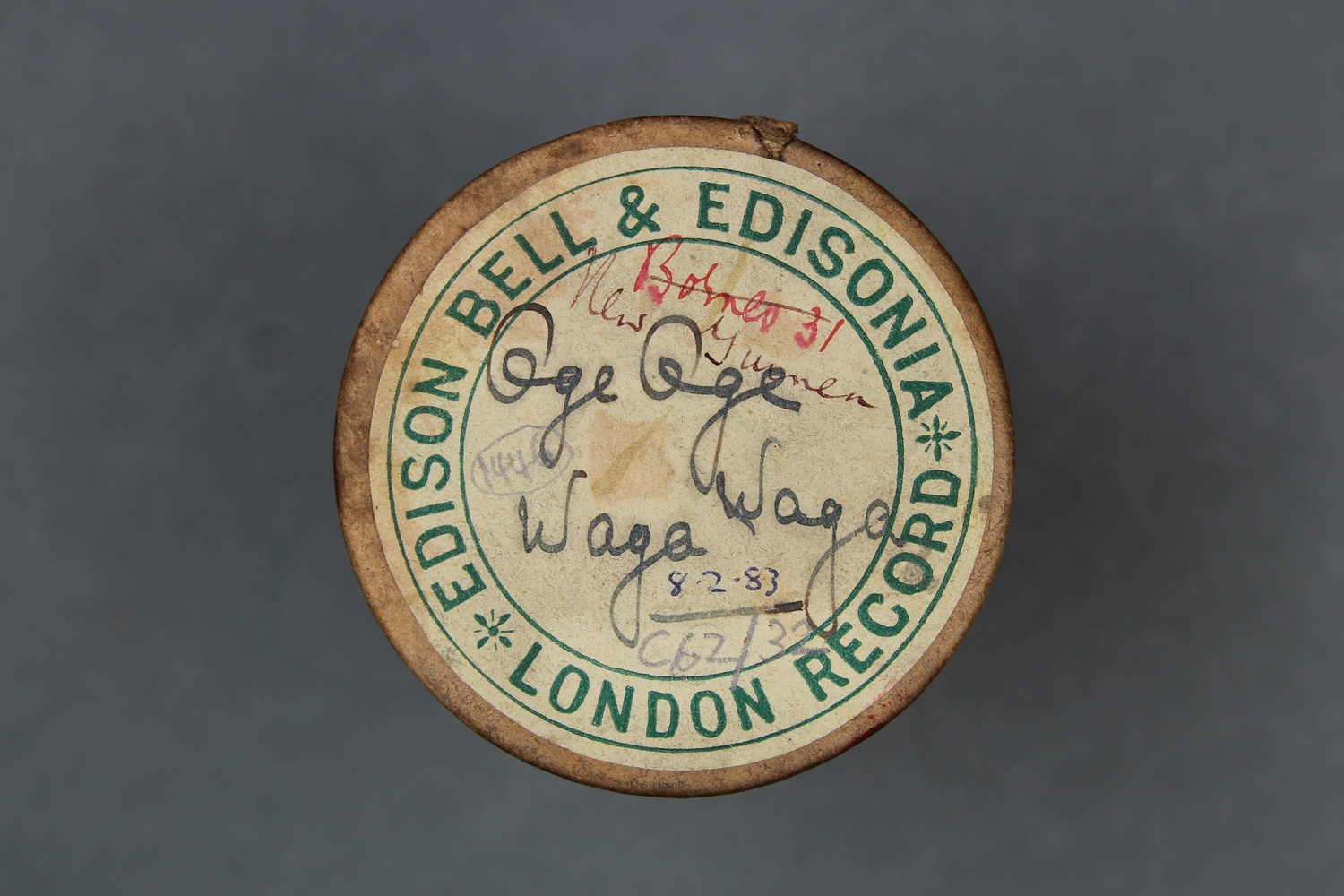      | This song is transcribed in Charles G. Seligmann, 'The Melanesians of British New Guinea', Cambridge University Press, 1910:587. | ||||||
| C62/1447 | Pediri Waga Waga | Unidentified (singer, male) | Waga Waga, Milne Bay, British New Guinea | October 1904 | 1. Announcement: "Pediri, a Waga Waga song.". 2. Unaccompanied male vocal solo. A song about a saling journey. | Reasonable quality recording but with surface noise. | Wagawaga | Field recordings | Seligman, Charles Gabriel | 2'28" | Daniels Ethnographical Expedition to New Guinea 1904 | Brown wax cylinder | Daniels Ethnographical Expedition to New Guinea 1904 Cylinder Collection (C62) | British Library | 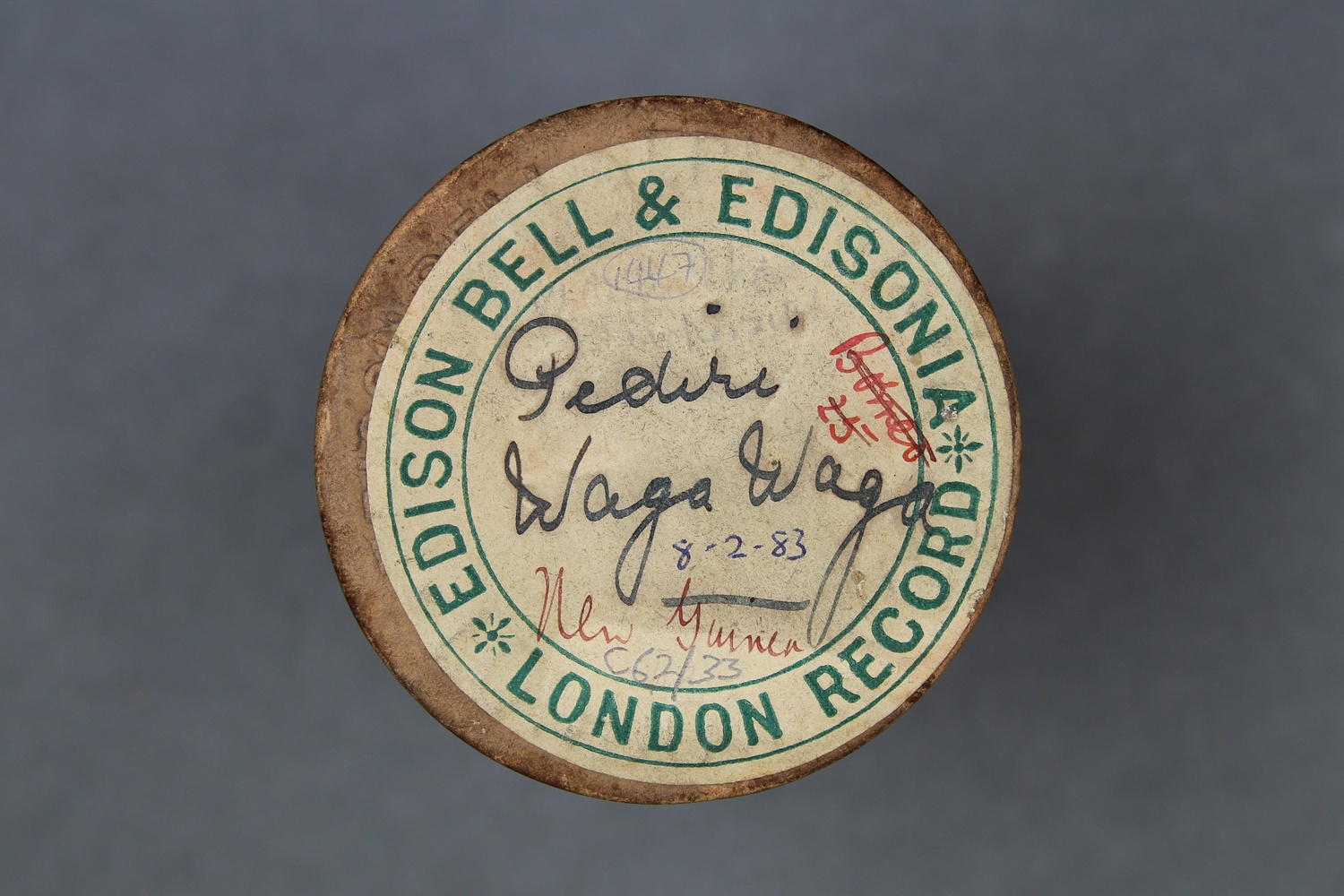      | This song is transcribed in Charles G. Seligmann, 'The Melanesians of British New Guinea', Cambridge University Press, 1910:586-587. | ||||||
| C62/1448 | 20 Yaubena Tube Tube | Unidentified (singer, male) | Tube Tube, Slade Island, British New Guinea | August 1904 | 1. Announcement: "Yaubena. The first song sung at the Waia ceremony, Rogeia. It was originally learned from the Durubi[?] a people from Milne Bay." 2. Unaccompanied male vocal solo. | Good quality recording with strong signal. | Bwanbwana | Field recordings | Seligman, Charles Gabriel | 3'13" | Daniels Ethnographical Expedition to New Guinea 1904 | Brown wax cylinder | Daniels Ethnographical Expedition to New Guinea 1904 Cylinder Collection (C62) | British Library | 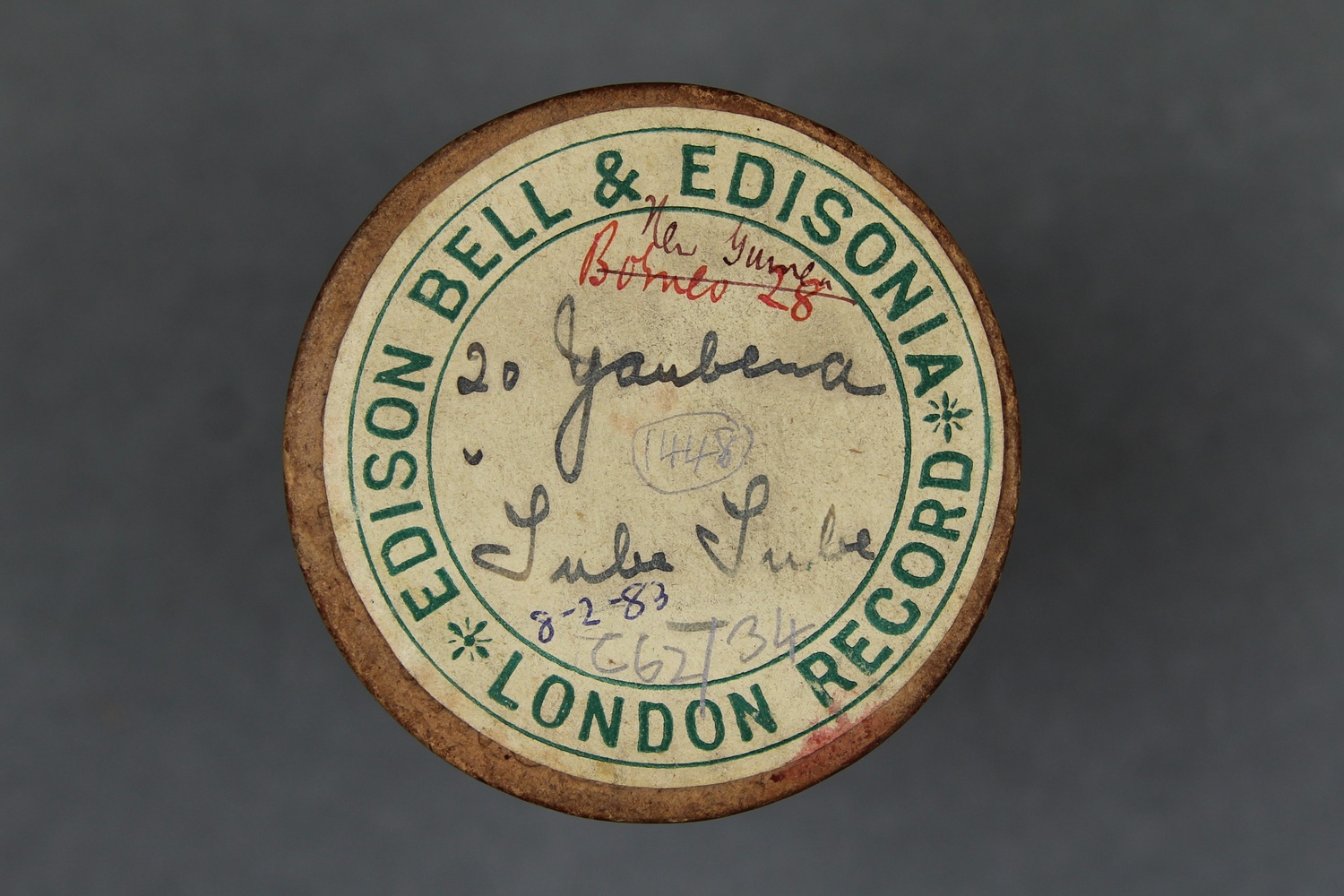      | This song is mentioned in Charles G. Seligmann, 'The Melanesians of British New Guinea', Cambridge University Press, 1910:520, 588, 753. | ||||||
| C62/1449 | 21 Gum Gum Tube Tube | Nabuyara (singer, male) | Tube Tube, Slade Island, British New Guinea | 5 August 1904 | 1. Announcement: "Wai-ina[?], a Kwararo song, called the Tube Tube Gum Gum. Sung by Nabuyara[?], August 5th 1904." 2. Unaccompanied male vocal solo. This song is said to have come from Kwararo, and is sung in canoes whilst paddling or sailing, and at other times. | Reasonable quality recording but with weak signal and surface noise. | Bwanbwana | Field recordings | Seligman, Charles Gabriel | 3'14" | Daniels Ethnographical Expedition to New Guinea 1904 | Brown wax cylinder | Daniels Ethnographical Expedition to New Guinea 1904 Cylinder Collection (C62) | British Library | 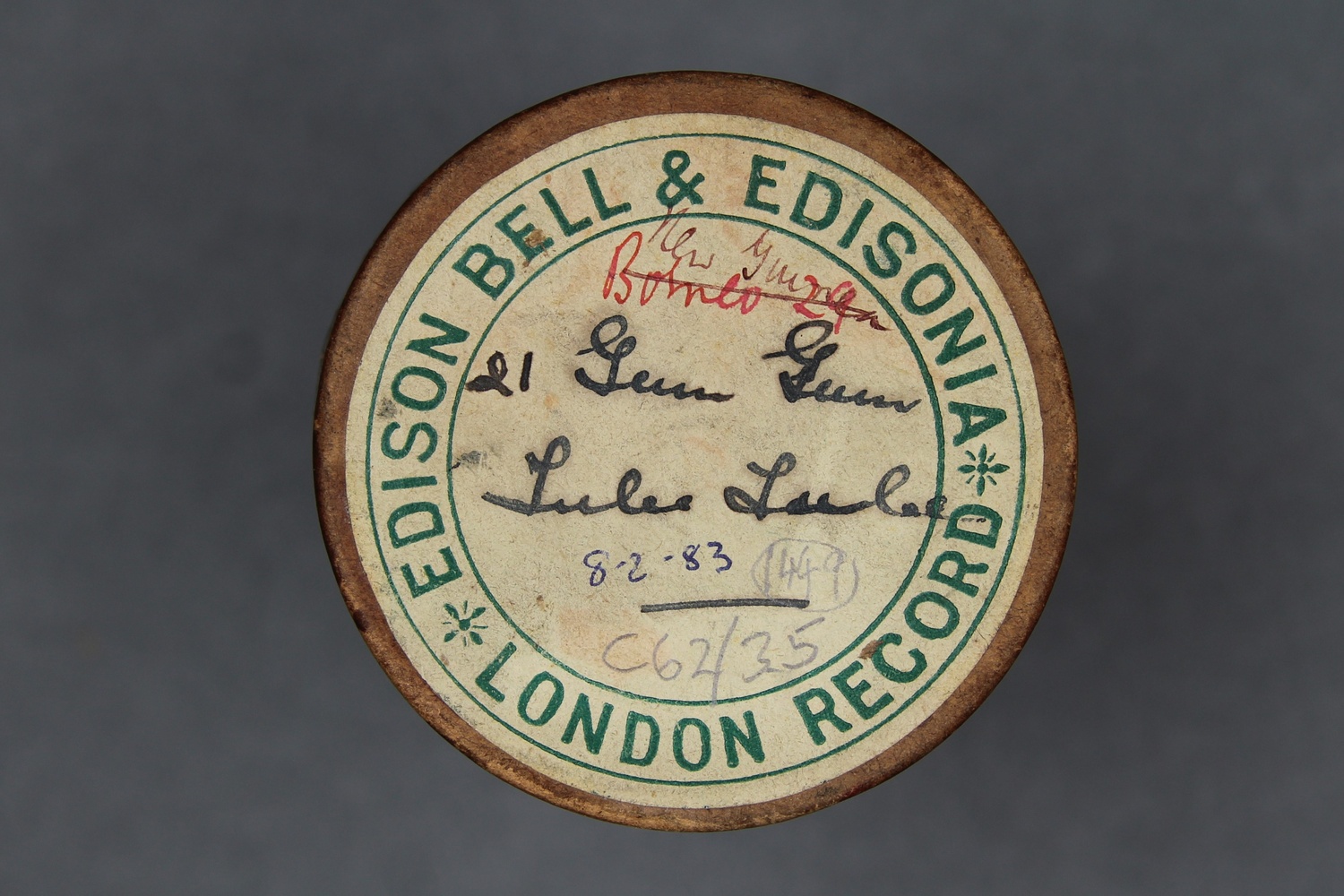      | This song is mentioned in Charles G. Seligmann, 'The Melanesians of British New Guinea', Cambridge University Press, 1910:588. | ||||||
| C62/1450 | Nuauuro B | Unidentified (singer, male) | Waga Waga, Milne Bay, British New Guinea | October 1904 | 1. Announcement: "Nuauro, a Waga Waga song." 2. Unaccompanied male vocal solo. The second part of the Nuauuro song. | Reasonable quality recording but with weak signal and surface noise. | Wagawaga | Field recordings | Seligman, Charles Gabriel | 3'26" | Daniels Ethnographical Expedition to New Guinea 1904 | Brown wax cylinder | Daniels Ethnographical Expedition to New Guinea 1904 Cylinder Collection (C62) | British Library | 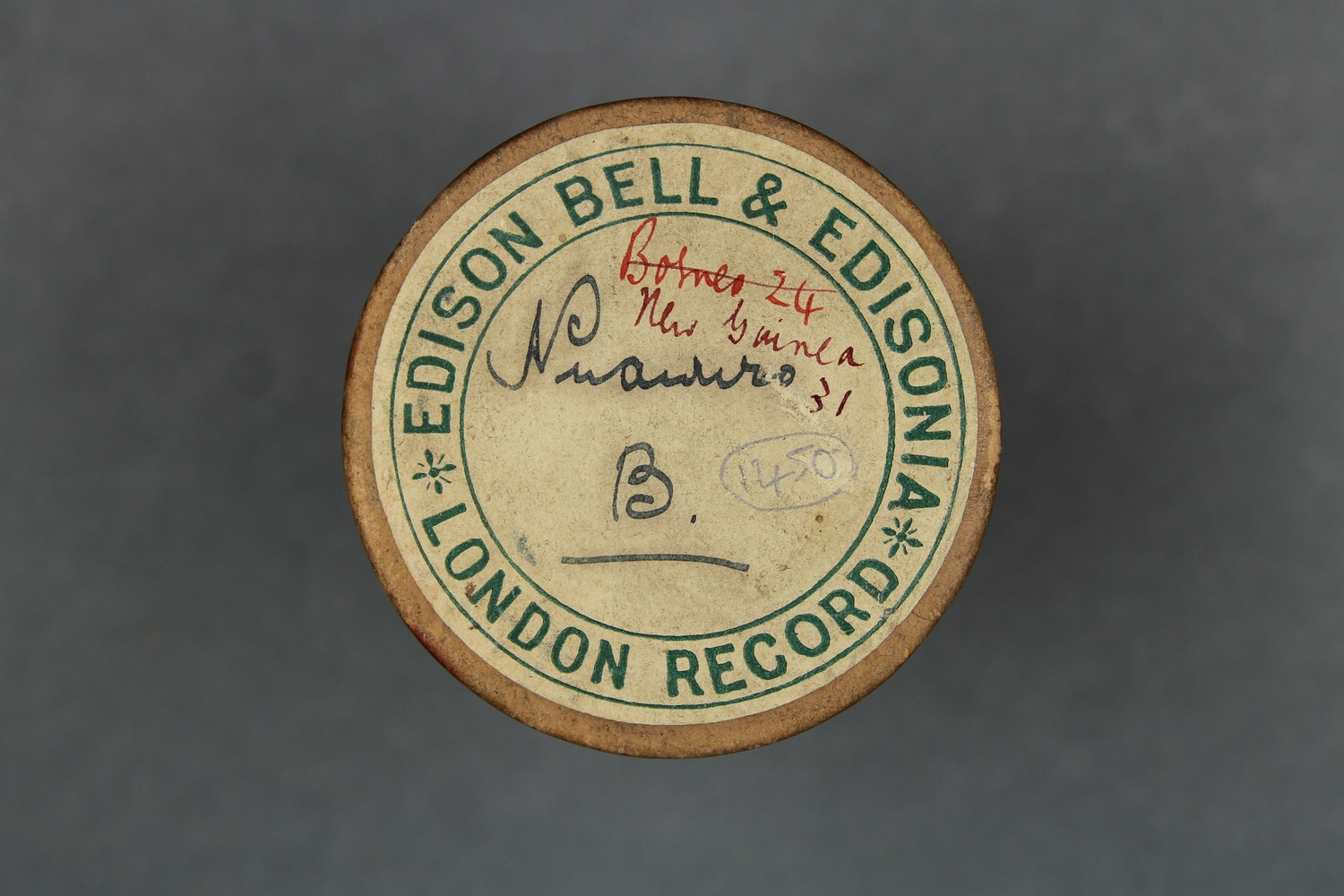      | This song is transcribed in Charles G. Seligmann, 'The Melanesians of British New Guinea', Cambridge University Press, 1910:587. | ||||||
| C62/1451 | Various calls. Koita | Unidentified (singer, male) | Port Moresby, British New Guinea | October 1904 | 1. Announcement: "[indecipherable] calling to [indecipherable] to be brought to [indecipherable]. 2. Unaccompanied male vocal solo. 3. "Hunting call, returning to village after catching fish." 4. Unacc. male vocal solo. 5. Call given from [indecipherable], signalling return of Lakatoi." 6. Unacc. male vocal solo. 7. "Call from [indecipherable] for folk to come and take baskets containing yams and portions of fish." 8. Unaccompanied male vocal solo. Calls related to hunting, fishing and sailing. | Good quality recording. | Koitabu | Field recordings; Speeches | Seligman, Charles Gabriel | 3'34" | Daniels Ethnographical Expedition to New Guinea 1904 | Brown wax cylinder | Daniels Ethnographical Expedition to New Guinea 1904 Cylinder Collection (C62) | British Library | 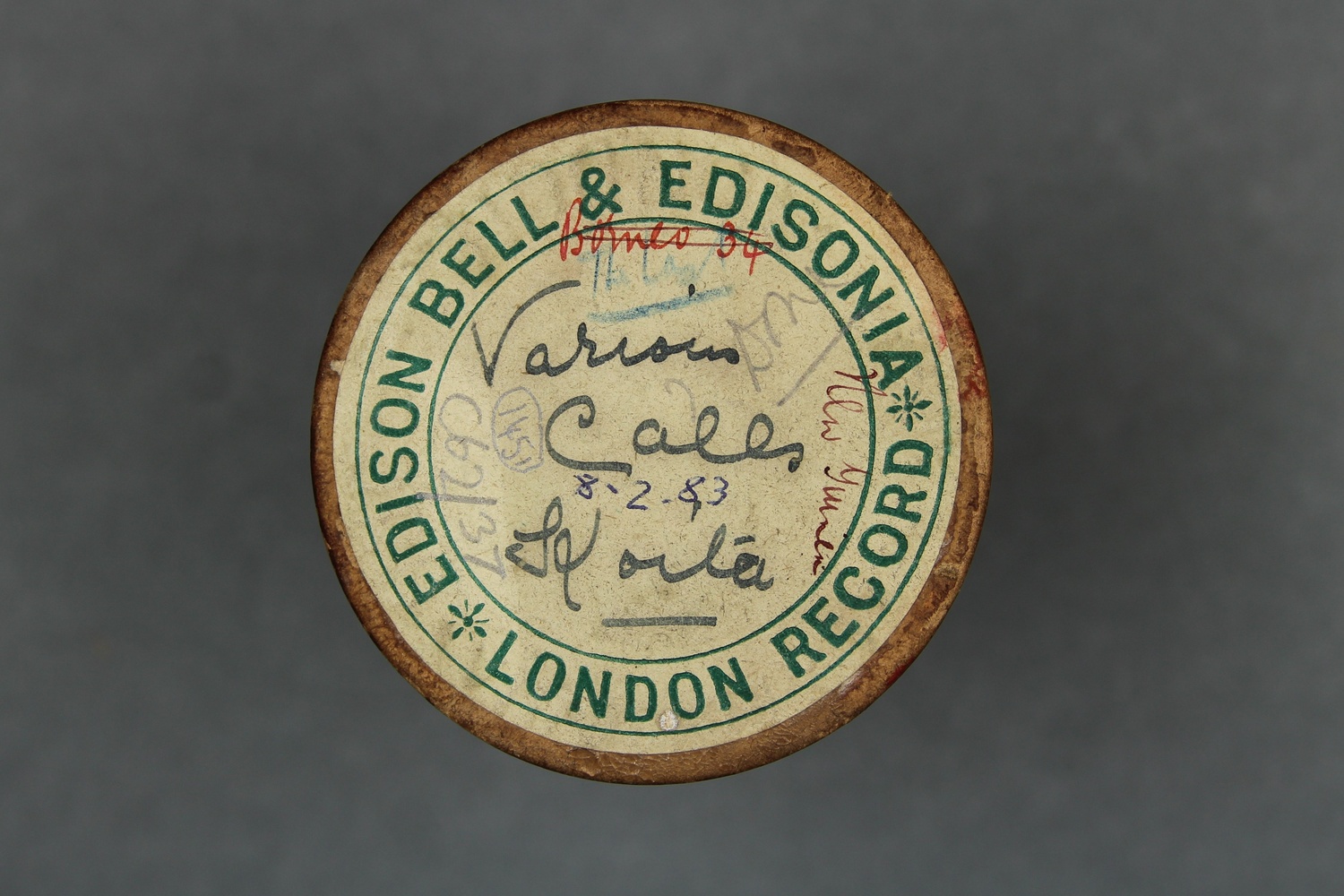      | |||||||
| C62/1452 | Ehona Koita | Igo Gow (singer, male) | Port Moresby, British New Guinea | October 1904 | 1. Announcement: "Ehona, a Koita and Motu dirge, sung by Igo[?], Port Moresby, October 1904." 2. Male vocal solo, accompanied by percussion. An ehona song. | Reasonable quality recording but with weak signal and some distortion. | Koitabu and/or Motu | Field recordings; Laments | Seligman, Charles Gabriel | 3'50" | Daniels Ethnographical Expedition to New Guinea 1904 | Brown wax cylinder | Daniels Ethnographical Expedition to New Guinea 1904 Cylinder Collection (C62) | British Library |       | This song may be discussed and transcribed in Charles G. Seligmann, 'The Melanesians of British New Guinea', Cambridge University Press, 1910:152. | There are two photos of Igo Gow in the British Museum (Oc,B119.43 and Oc,B119.52). | |||||
| C62/1453 | 23 Rausi Tube Tube | Unidentified (singer, male) | Tube Tube, Slade Island, British New Guinea | August 1904 | 1. Announcement: "Tube Tube song, and dance." 2. Unaccompanied male vocal solo. A song or dance performed during the soi funeral feast and festivities. | Poor quality recording with tracking problems throughout due to broken cylinder. | Bwanbwana | Field recordings | Seligman, Charles Gabriel | 3'09" | Daniels Ethnographical Expedition to New Guinea 1904 | Brown wax cylinder | Daniels Ethnographical Expedition to New Guinea 1904 Cylinder Collection (C62) | British Library | 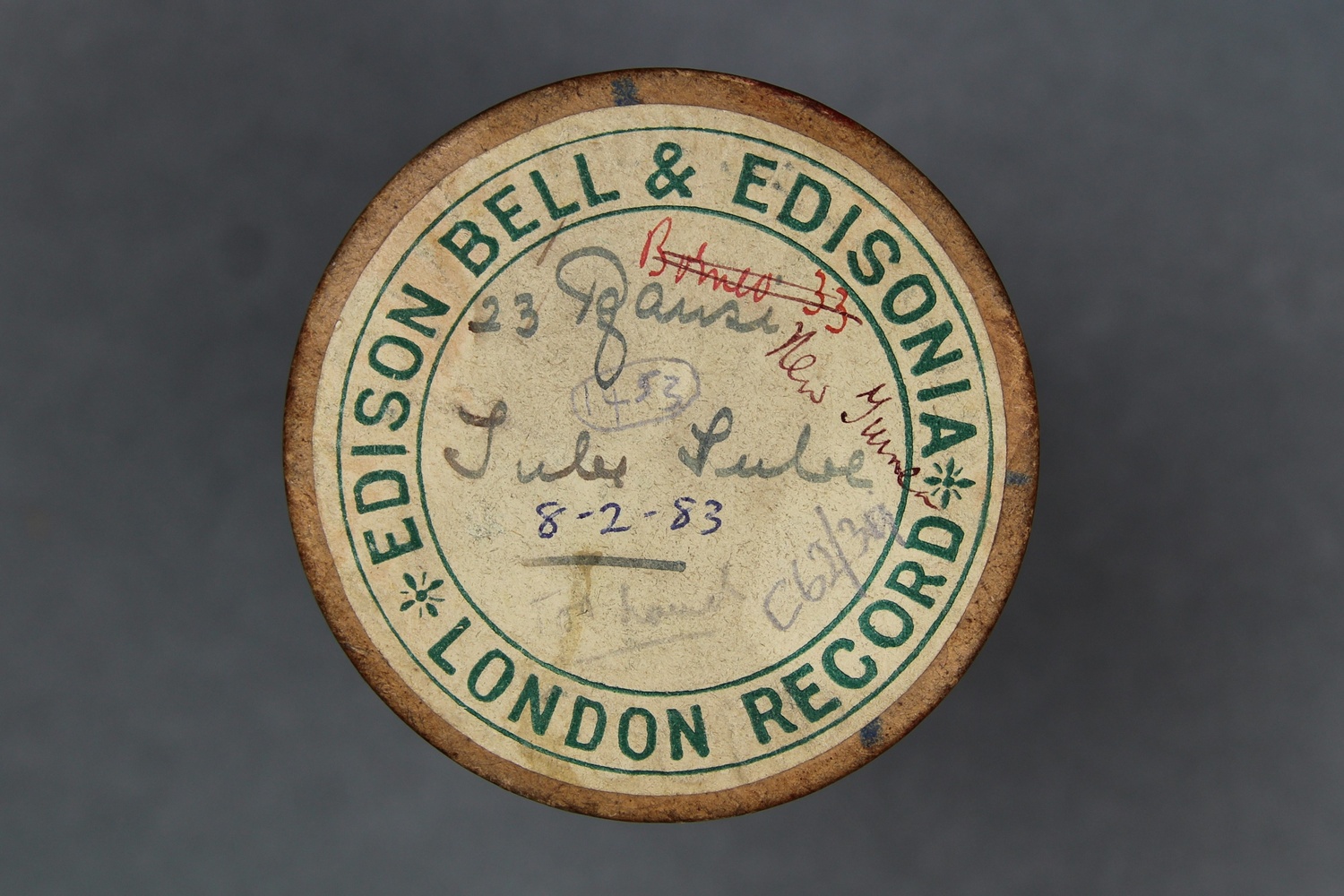      | This song may be discussed and transcribed in Charles G. Seligmann, 'The Melanesians of British New Guinea', Cambridge University Press, 1910:520, 588, 753. | ||||||
| C80/1455 | Hymn 41 Glory | Unidentified (male chorus) | British New Guinea | 27 May 1898 – 1 October 1898 | 1. Unaccompanied male vocal group. | Reasonable quality recording but some surface noise. | Field recordings | Ray, Sidney | 2'12" | Alfred Cort Haddon 1898 Expedition, British New Guinea | Brown wax cylinder | Alfred Cort Haddon 1898 Expedition (Torres Strait and British New Guinea) Cylinder Collection | British Library | 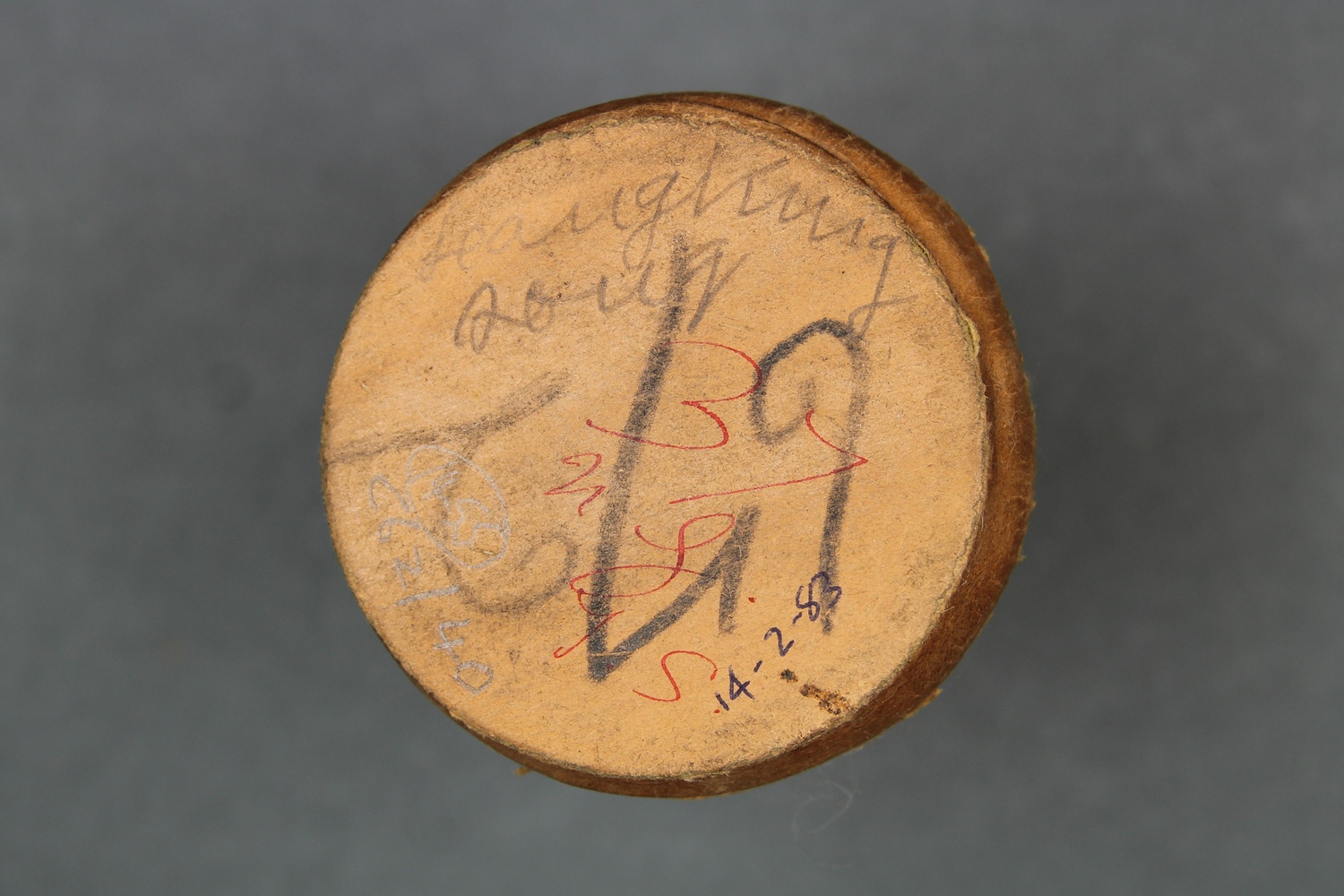 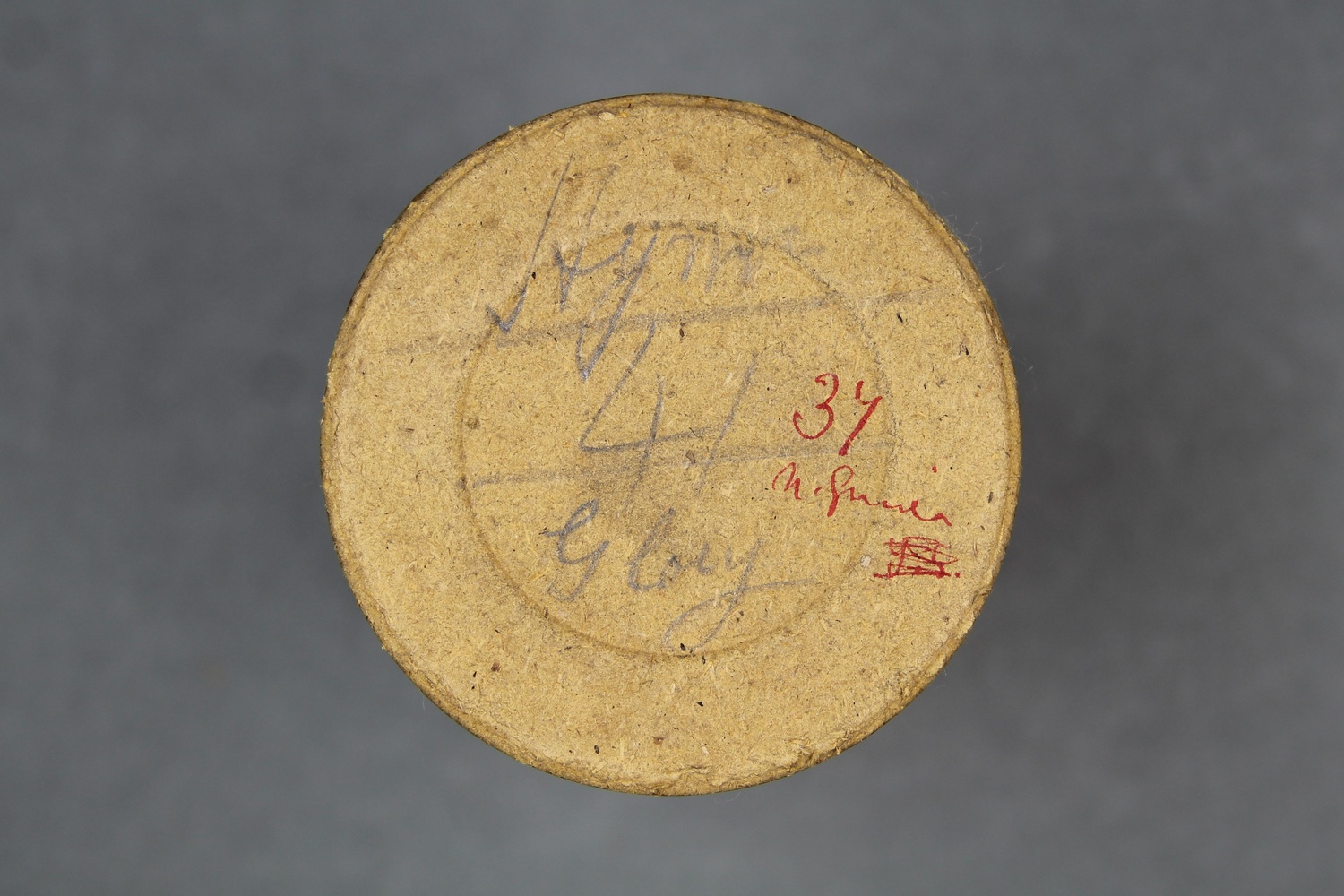     | ||||||||
| C80/1456 | Lakatoi Song | Unidentified (male chorus) | Port Moresby, British New Guinea | 20 June 1898 – 6 July 1898 | 1. Announcement: "A Lakatoi Song." 2. Unaccompanied male vocal group. | Reasonable quality recording but with weak signal and surface noise. | Motu (archaic language) | Field recordings; Sailing; Trade | Ray, Sidney | 2'20" | Alfred Cort Haddon 1898 Expedition, British New Guinea | Brown wax cylinder | Alfred Cort Haddon 1898 Expedition (Torres Strait and British New Guinea) Cylinder Collection | British Library | 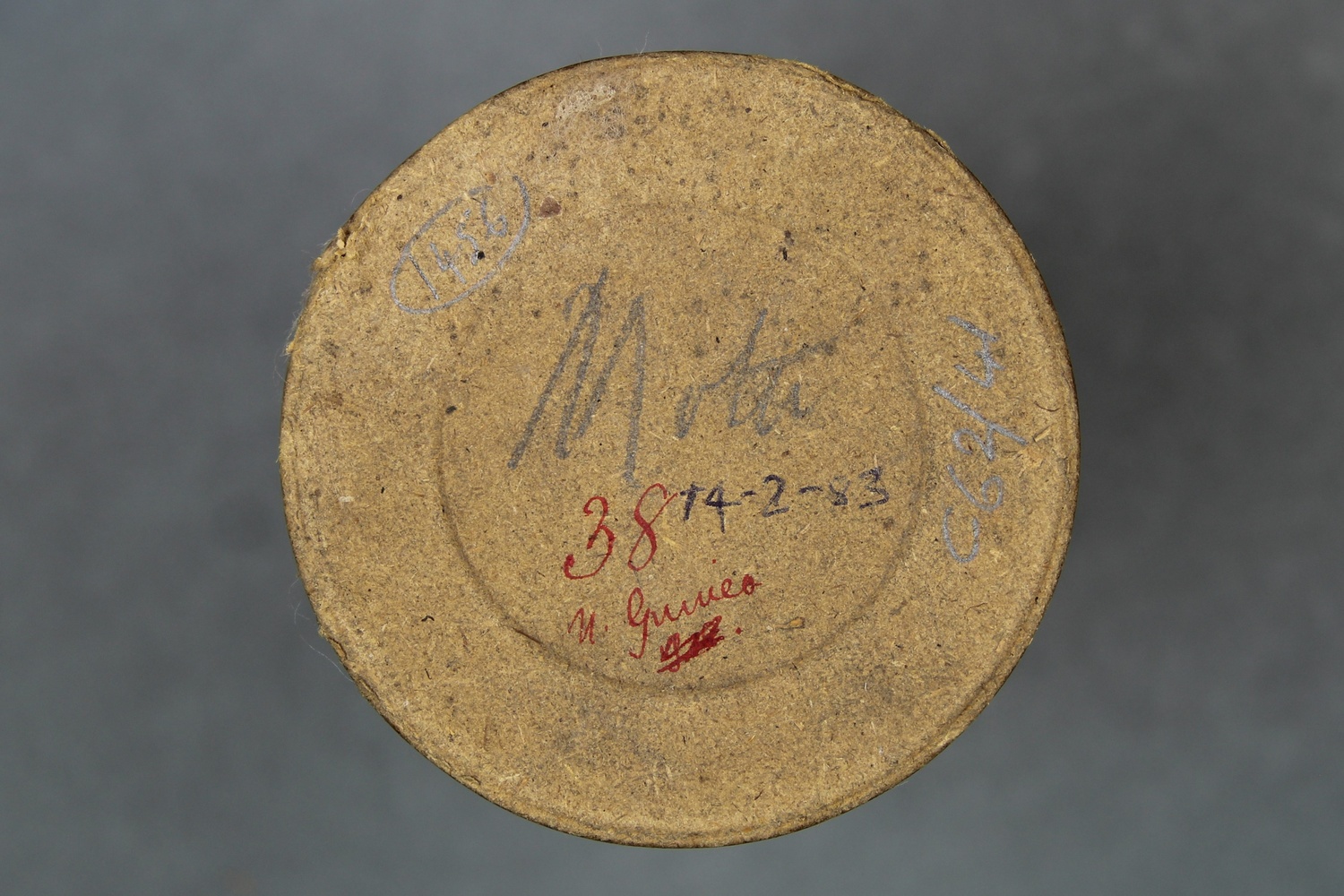 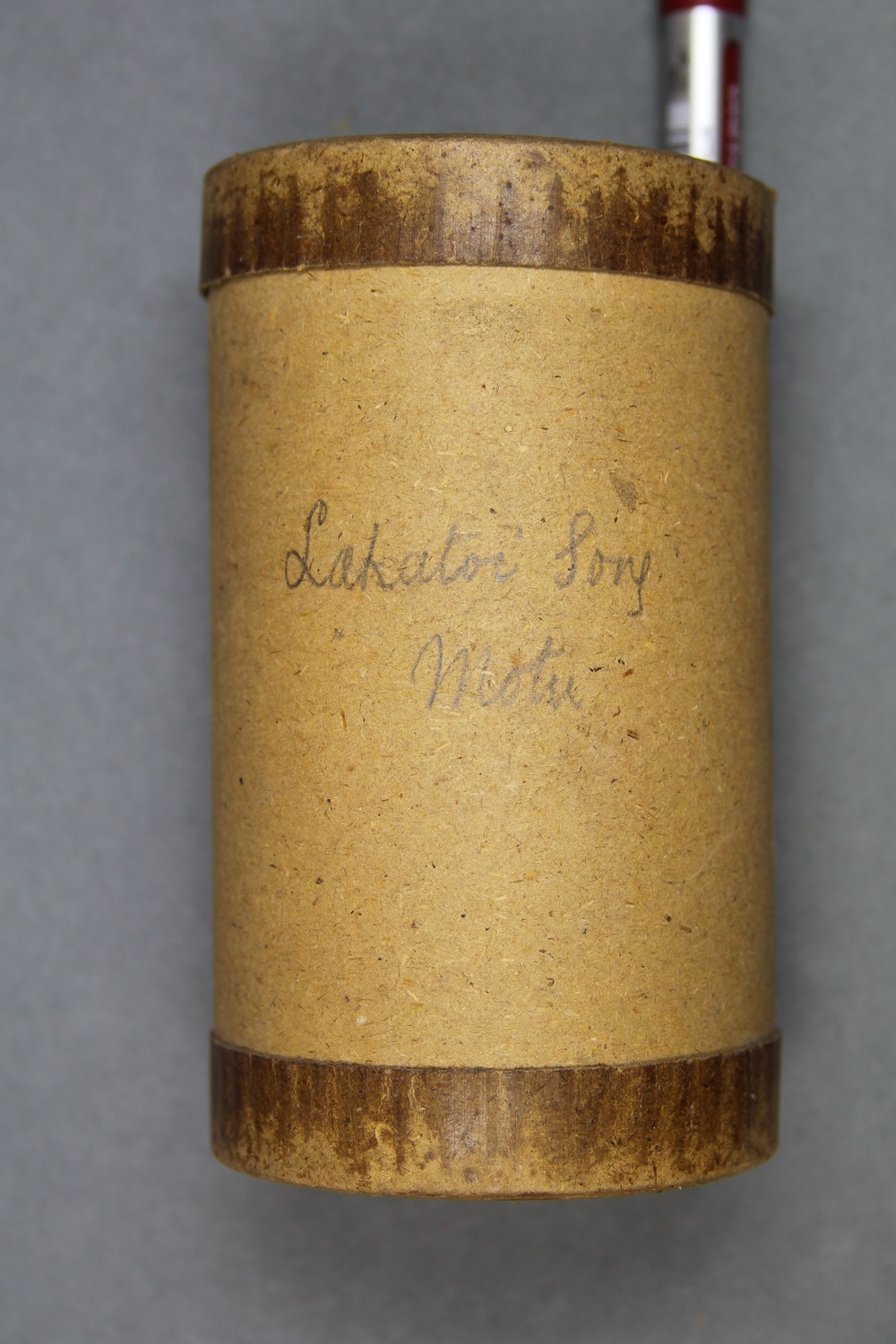     | |||||||
| C80/1457 | Hymn | Unidentified (male chorus) | British New Guinea | 27 May 1898 – 1 October 1898 | 1. Unaccompanied male vocal group. | Reasonable quality recording but with surface noise. | Field recordings; Hymns | Ray, Sidney | 2'13' | Alfred Cort Haddon 1898 Expedition, British New Guinea | Brown wax cylinder | Alfred Cort Haddon 1898 Expedition (Torres Strait and British New Guinea) Cylinder Collection | British Library | 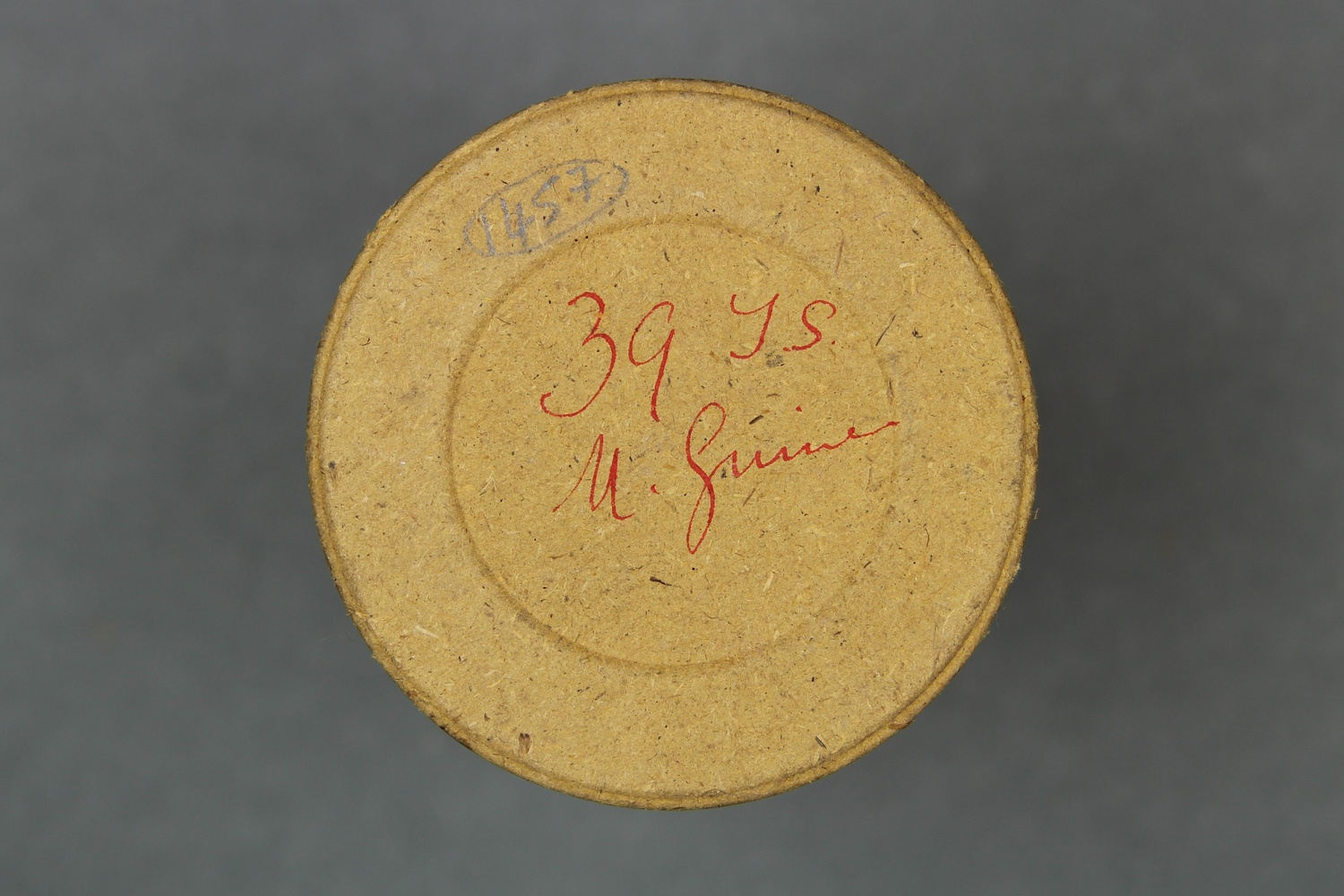 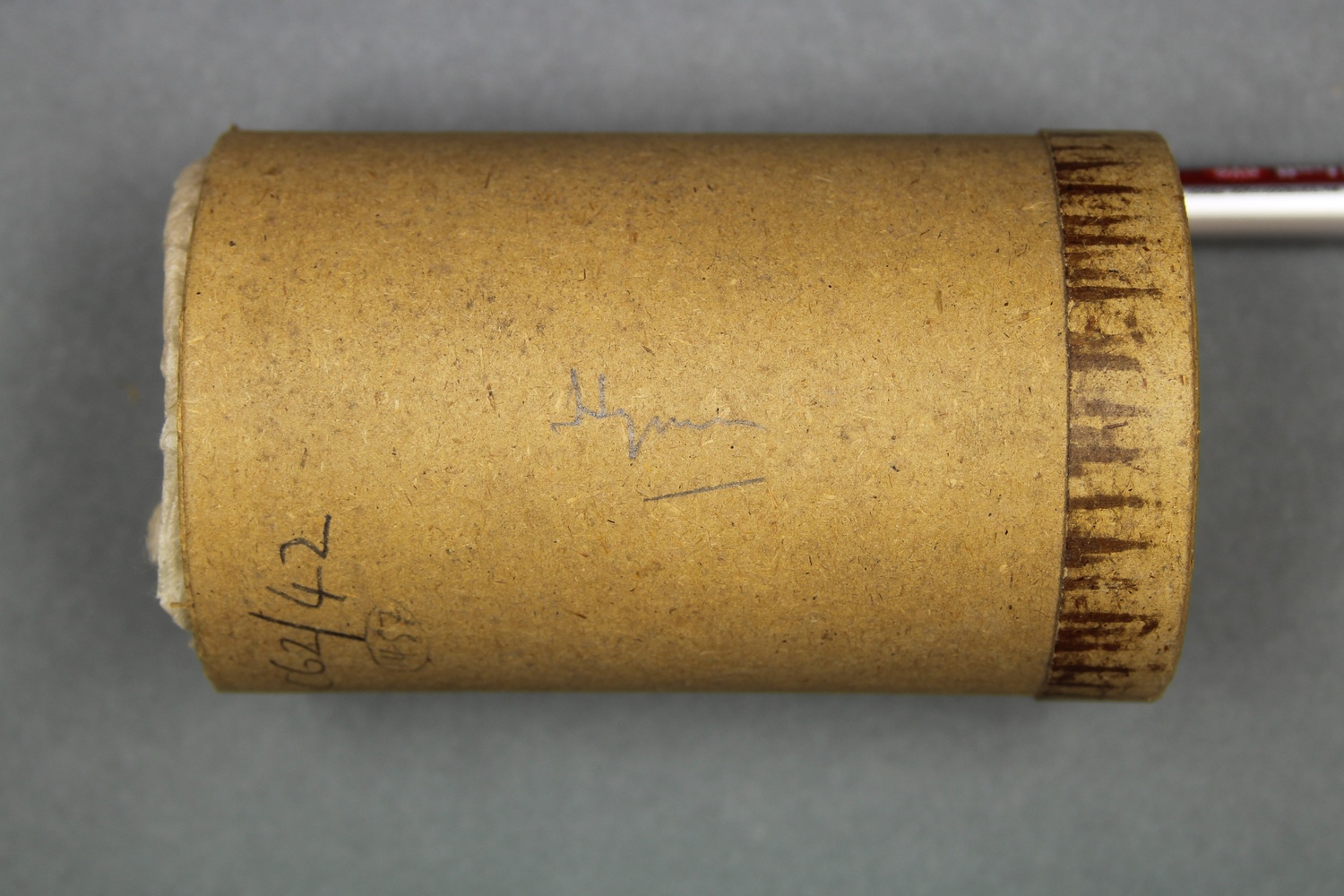     | ||||||||
| C80/1458 | Hymn No.23 Wareham | Unidentified (singer, male) | British New Guinea | 27 May 1898 – 1 October 1898 | 1. Unaccompanied male vocal solo. | Reasonable quality recording but with some surface noise. | Field recordings; Hymns | Ray, Sidney | 1'50" | Alfred Cort Haddon 1898 Expedition, British New Guinea | Light brown wax cylinder | Alfred Cort Haddon 1898 Expedition (Torres Strait and British New Guinea) Cylinder Collection | British Library | 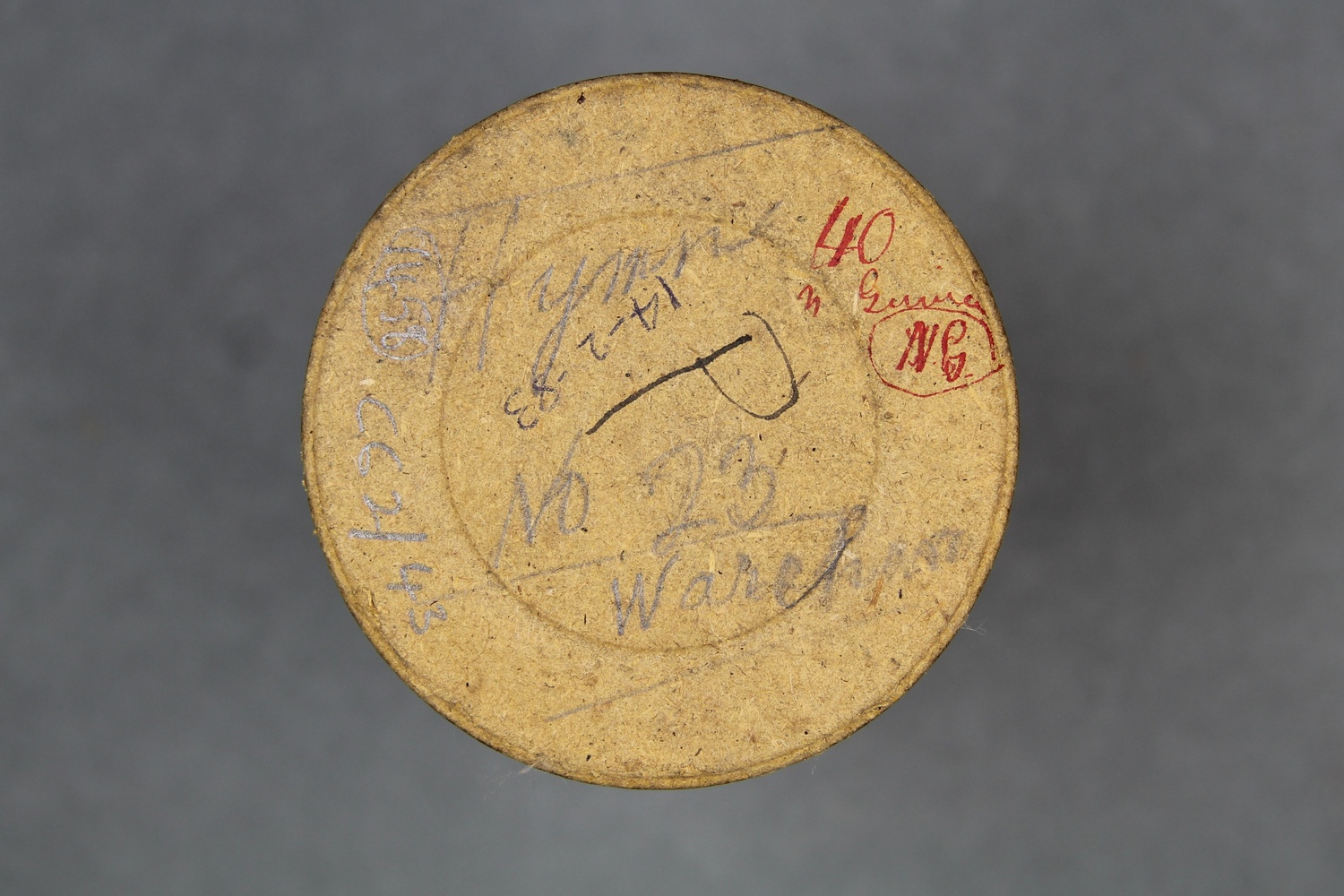 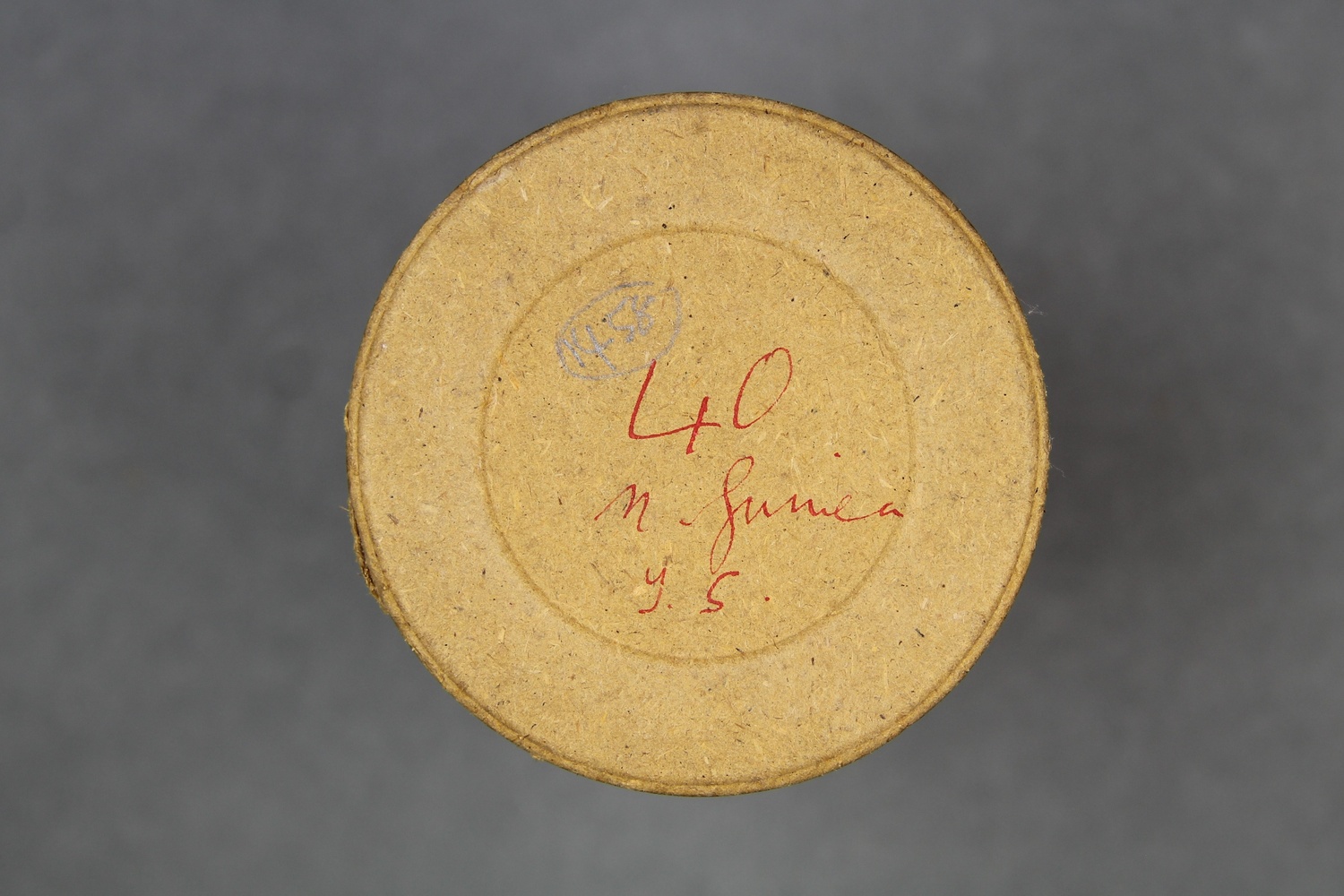     | ||||||||
| C80/1459 | Lekuleku by Gima, Chief of Hula | Gima (singer, male, chief of Hula) | Hula, Central District, British New Guinea | 10 June 1898 | 1. Indecipherable announcement. 2. Unaccompanied male vocal solo. "On 10 June, Ray noted in his diary that he persuaded [Gima] to sing some Lekuleku into the machine” (Ray 1898–1899:59). A leku was a war song according to Kolia (1975:187). | Reasonable quality recording with improving signal strength, but also with surface noise. | Hula | Field recordings; War song | Ray, Sidney | 2'44" | Alfred Cort Haddon 1898 Expedition, British New Guinea | Brown wax cylinder | Alfred Cort Haddon 1898 Expedition (Torres Strait and British New Guinea) Cylinder Collection | British Library |  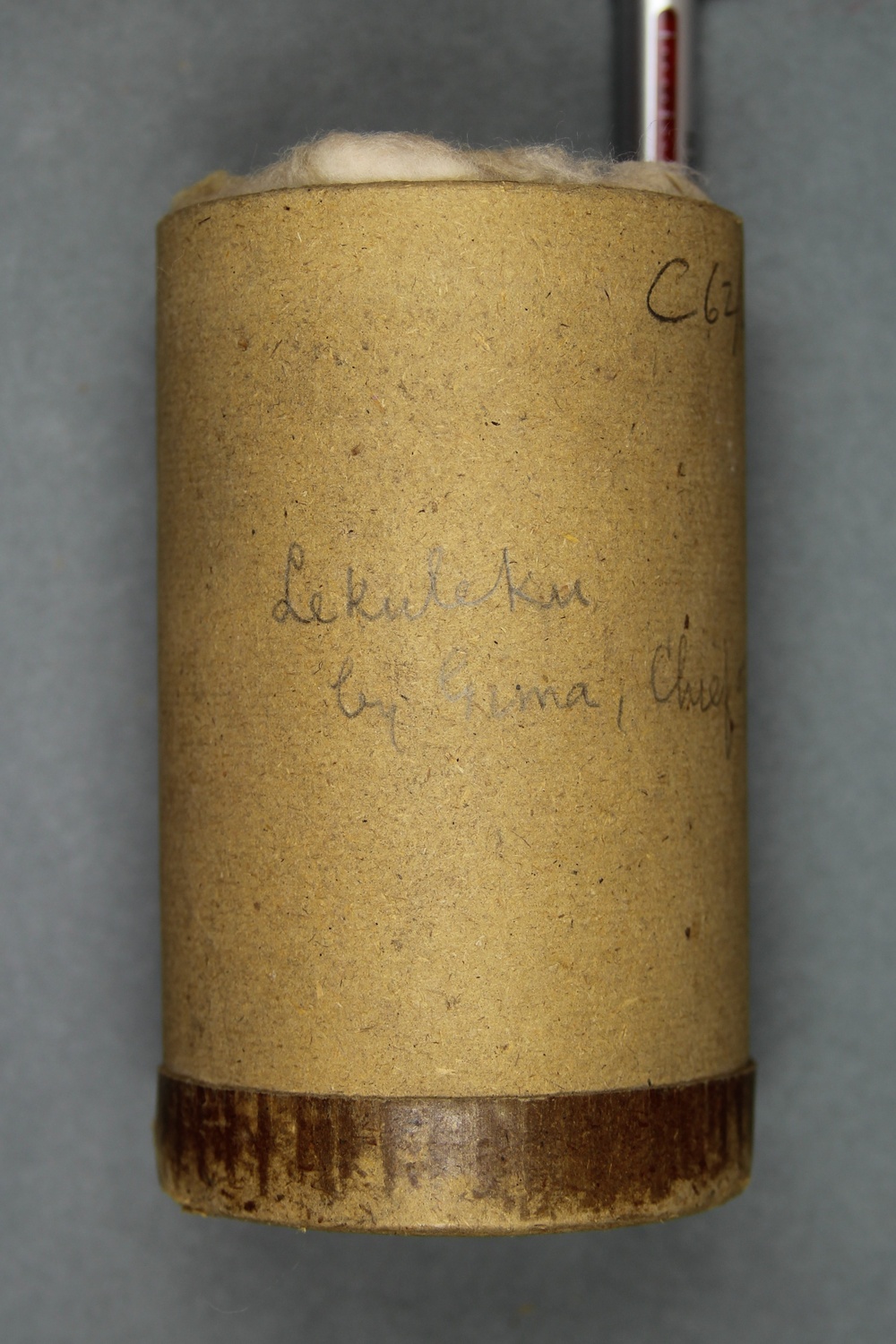 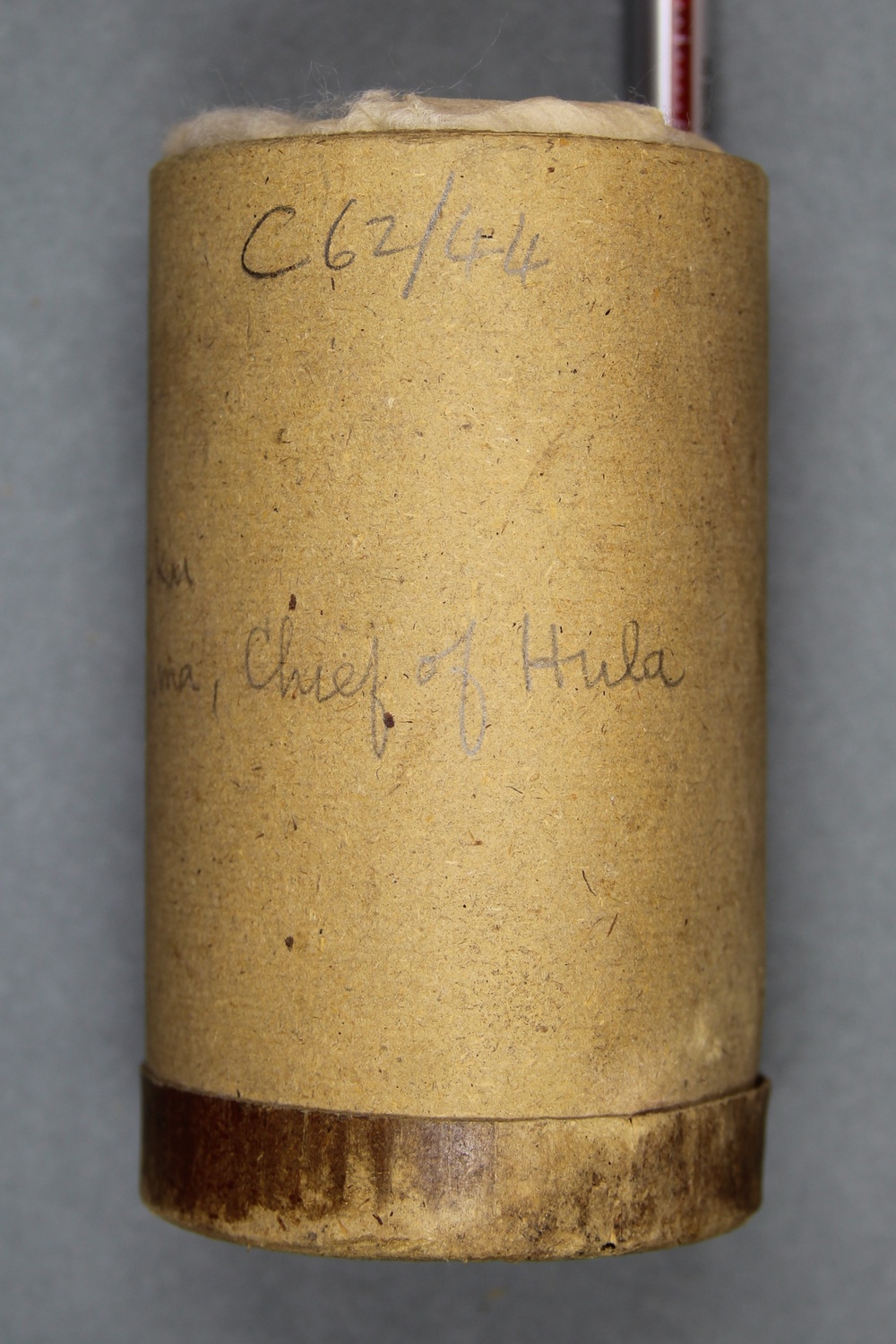    | Kolia, John. 1975. A Balawaia Grammar Sketch and Vocabulary. In Studies in Languages of Central and South-East Papua, edited by Tom E. Dutton, 107–226. Pacific Linguistics, C 19. Canberra: Australian National University. | ||||||
| C80/1460 | Dirge of Hula Women | Unidentified (male chorus) | Hula, Central District, British New Guinea | 4 June 1898 – 15 June 1898 | 1. Announcement: "[indecipherable] song, Hula." 2. Unaccompanied vocal group with male solo. 3. Unaccompanied vocal group. | Reasonable quality recording but with surface noise due to mould on cylinder. | Hula | Field recordings, Laments | Ray, Sidney | 3'19" | Alfred Cort Haddon 1898 Expedition, British New Guinea | Light brown wax cylinder | Alfred Cort Haddon 1898 Expedition (Torres Strait and British New Guinea) Cylinder Collection | British Library |  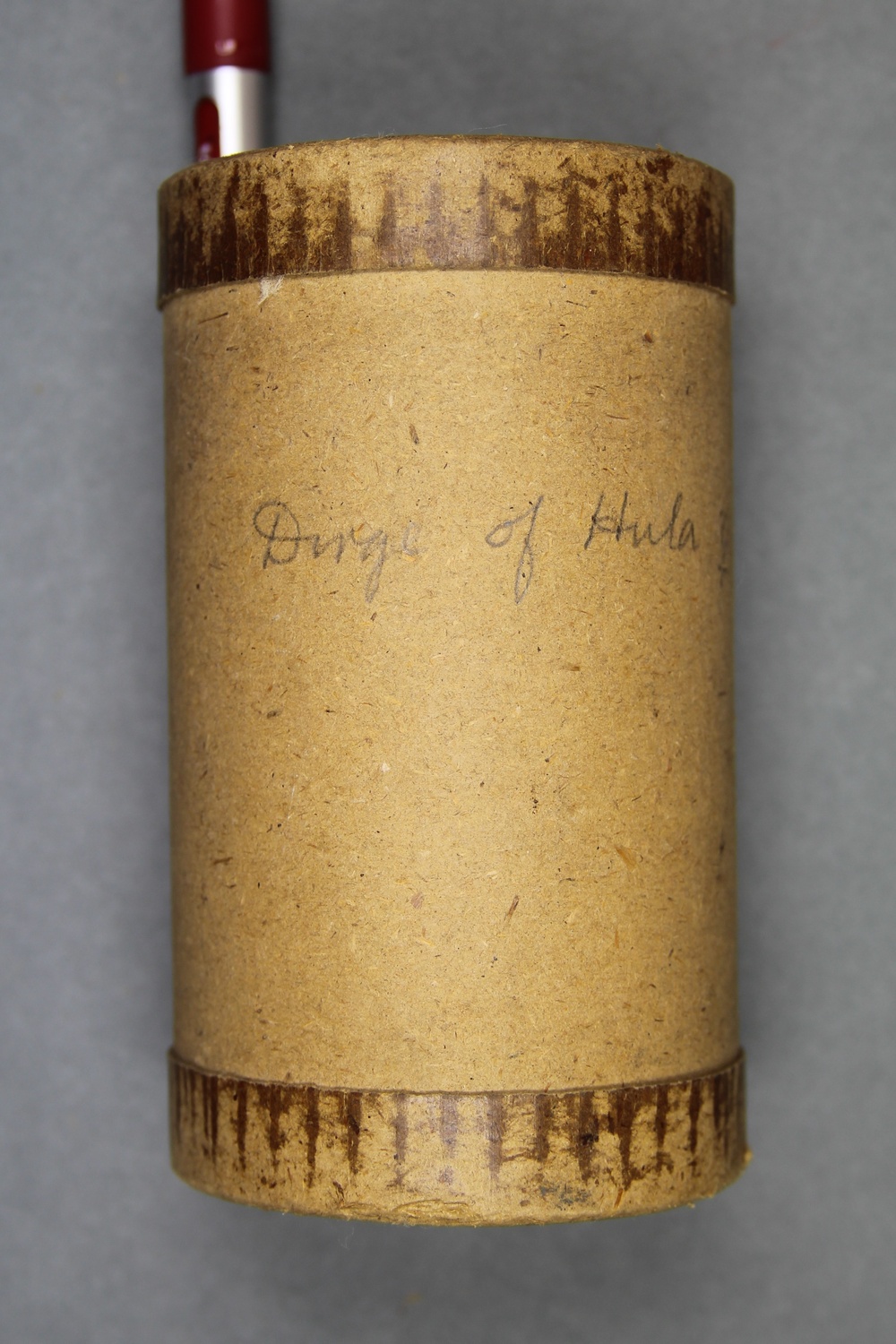     | |||||||
| C80/1461 | Hymn Hula | Takai (singer, female) | Hula, Central District, British New Guinea | 4 June 1898 – 15 June 1898 | 1. Announcement: "Hymn, sung by Takai, [indecipherable]. 2. Female and male vocal solo singing in harmony. 3. Unaccompanied female vocal solo. | Reasonable quality recording but with surface noise due to mould on cylinder. | Hula | Field recordings; Hymns | Ray, Sidney | 2'44" | Alfred Cort Haddon 1898 Expedition, British New Guinea | Light brown wax cylinder | Alfred Cort Haddon 1898 Expedition (Torres Strait and British New Guinea) Cylinder Collection | British Library | 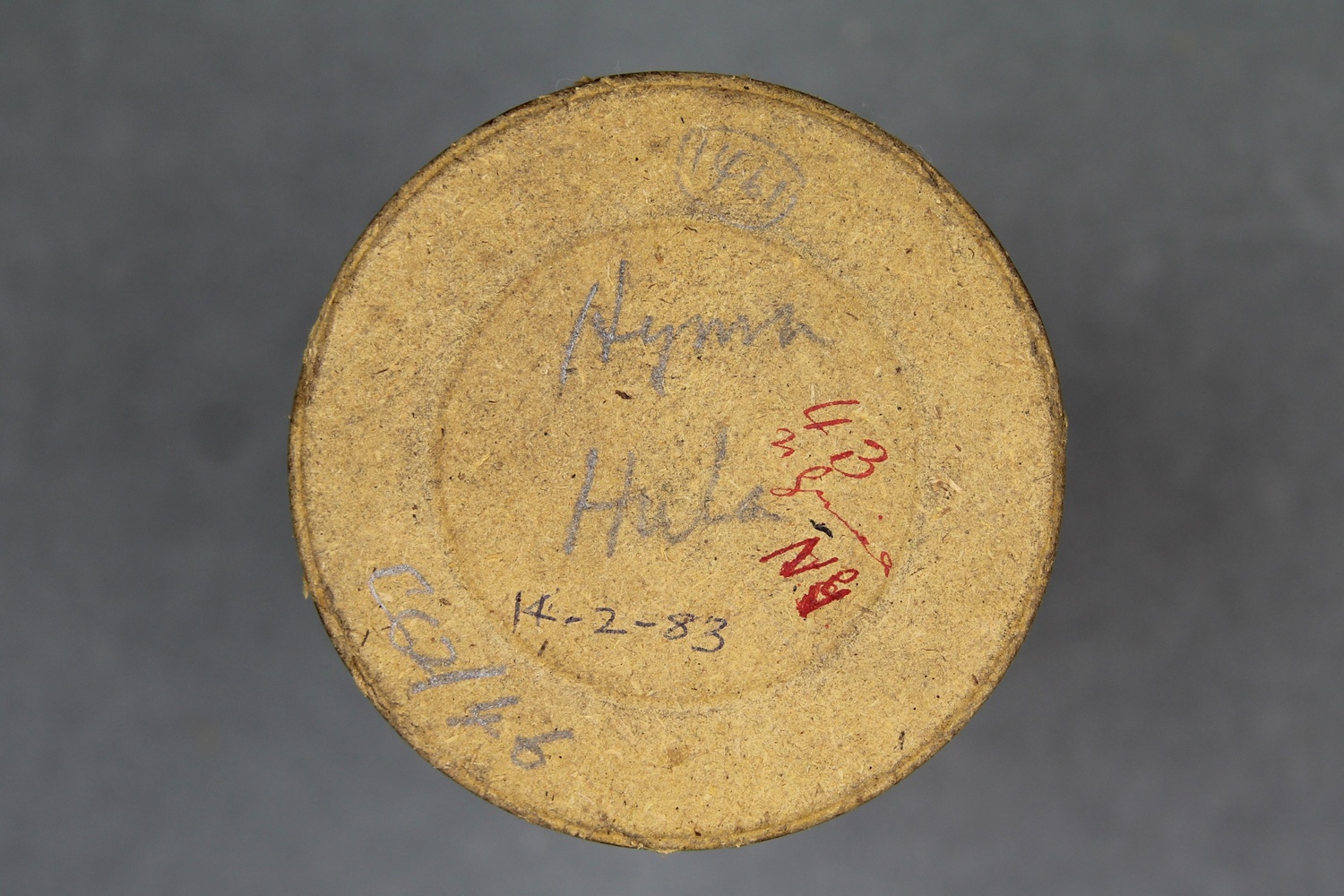 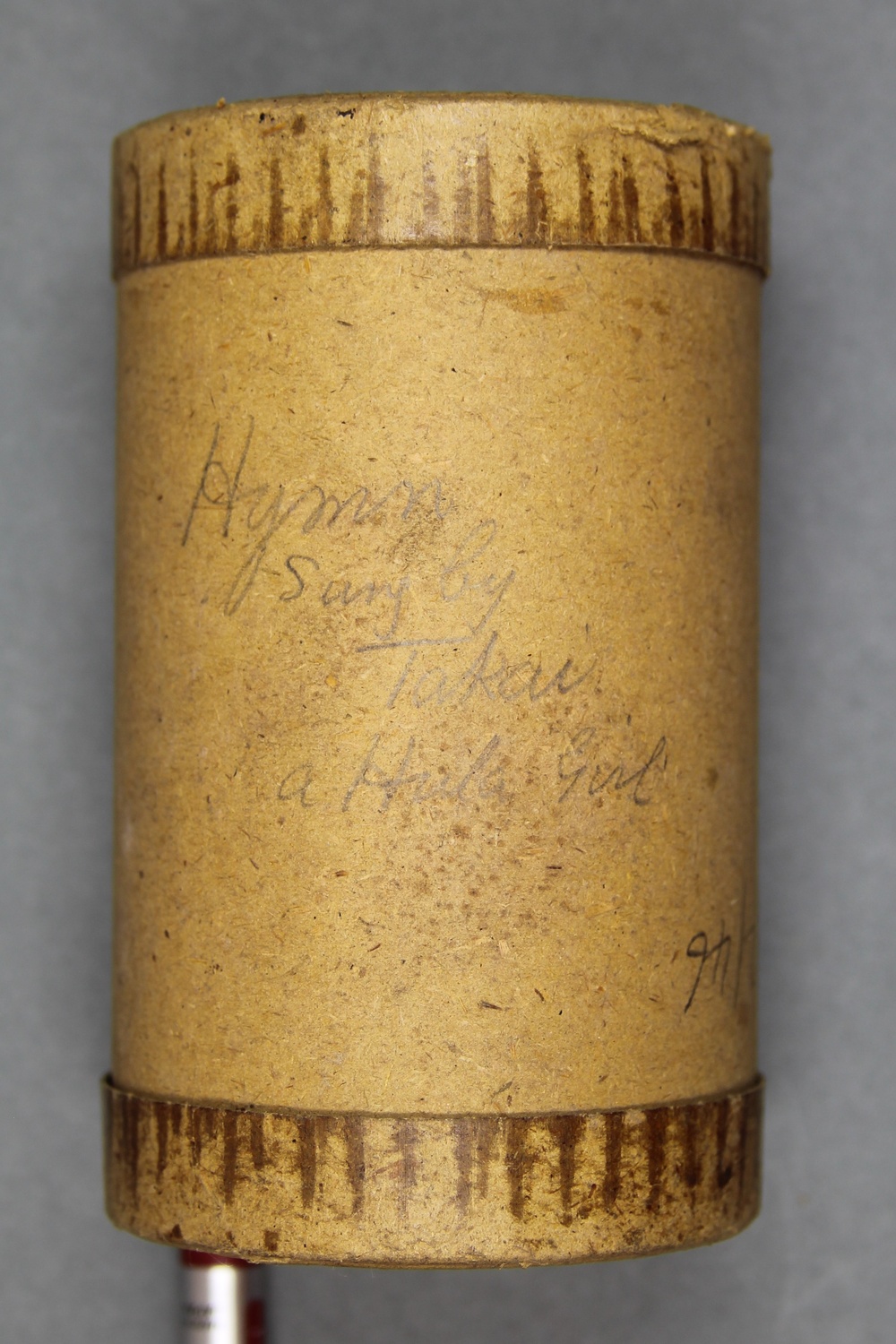     | |||||||
| C80/1462 | God save the Queen Hula | Takai (singer, female) | Hula, Central District, British New Guinea | 6 June 1898 | 1. Unaccompanied vocal group. On 6 June, Ray noted recording “God Save the Queen by Takai” (Ray 1898–1899:50) (British national anthem). | Reasonable quality recording but with some speed fluctuation and surface noise. | Hula and/or English | Field recordings; National anthems | Ray, Sidney | 1'56" | Alfred Cort Haddon 1898 Expedition, British New Guinea | Light brown wax cylinder | Alfred Cort Haddon 1898 Expedition (Torres Strait and British New Guinea) Cylinder Collection | British Library |       | |||||||
| C80/1463 | Hymns at Vatorata | Unidentified (female chorus) | Hula, Central District, British New Guinea? | 3 June 1898 – 15 June 1898 | 1. Indecipherable announcement. 2. Female vocal group. | Poor quality recording with weak signal and heavy surface noise due to mould on cylinder. | Hula | Field recordings; Hymns | Ray, Sidney | 2'41" | Alfred Cort Haddon 1898 Expedition, British New Guinea | Light brown wax cylinder | Alfred Cort Haddon 1898 Expedition (Torres Strait and British New Guinea) Cylinder Collection | British Library | 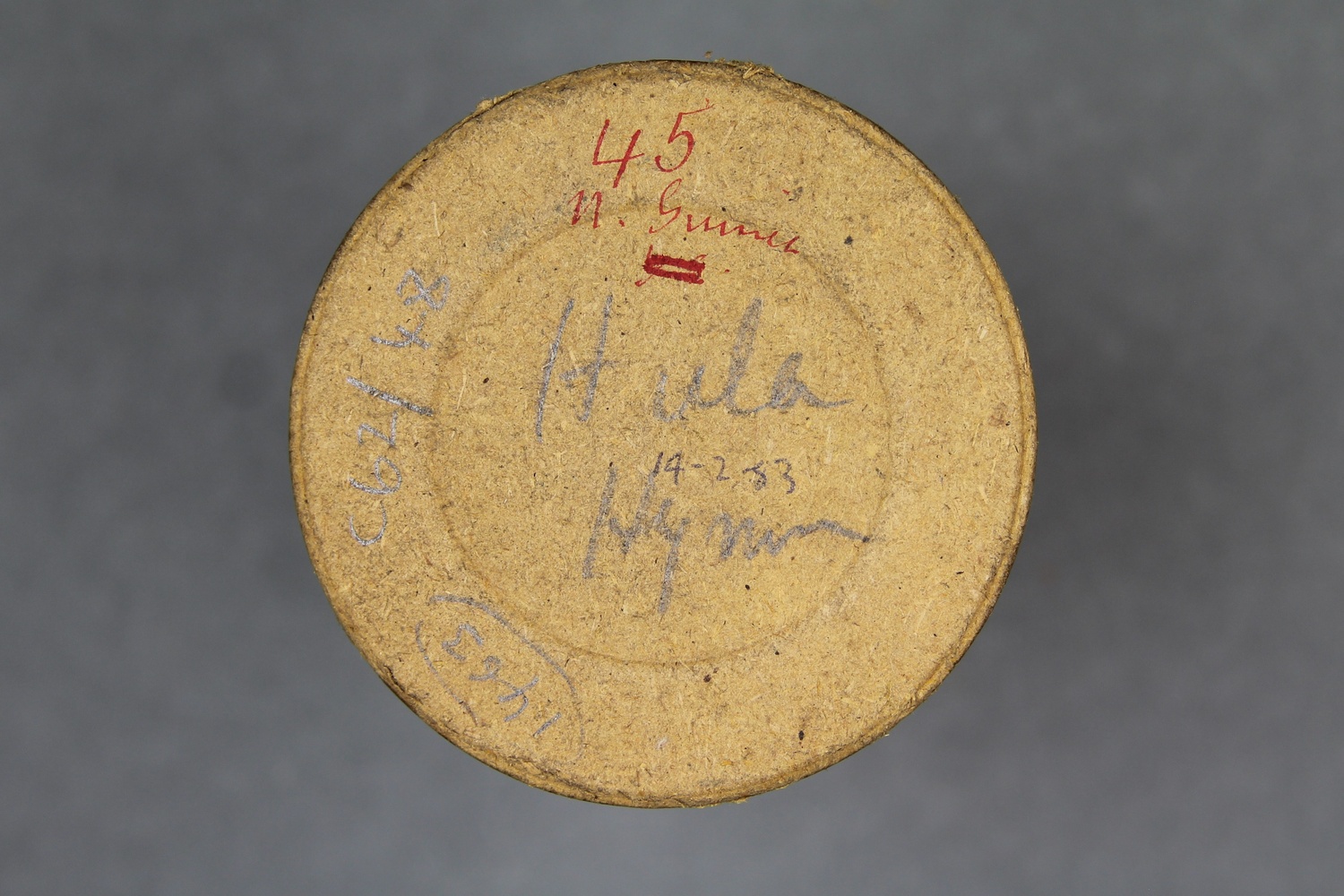 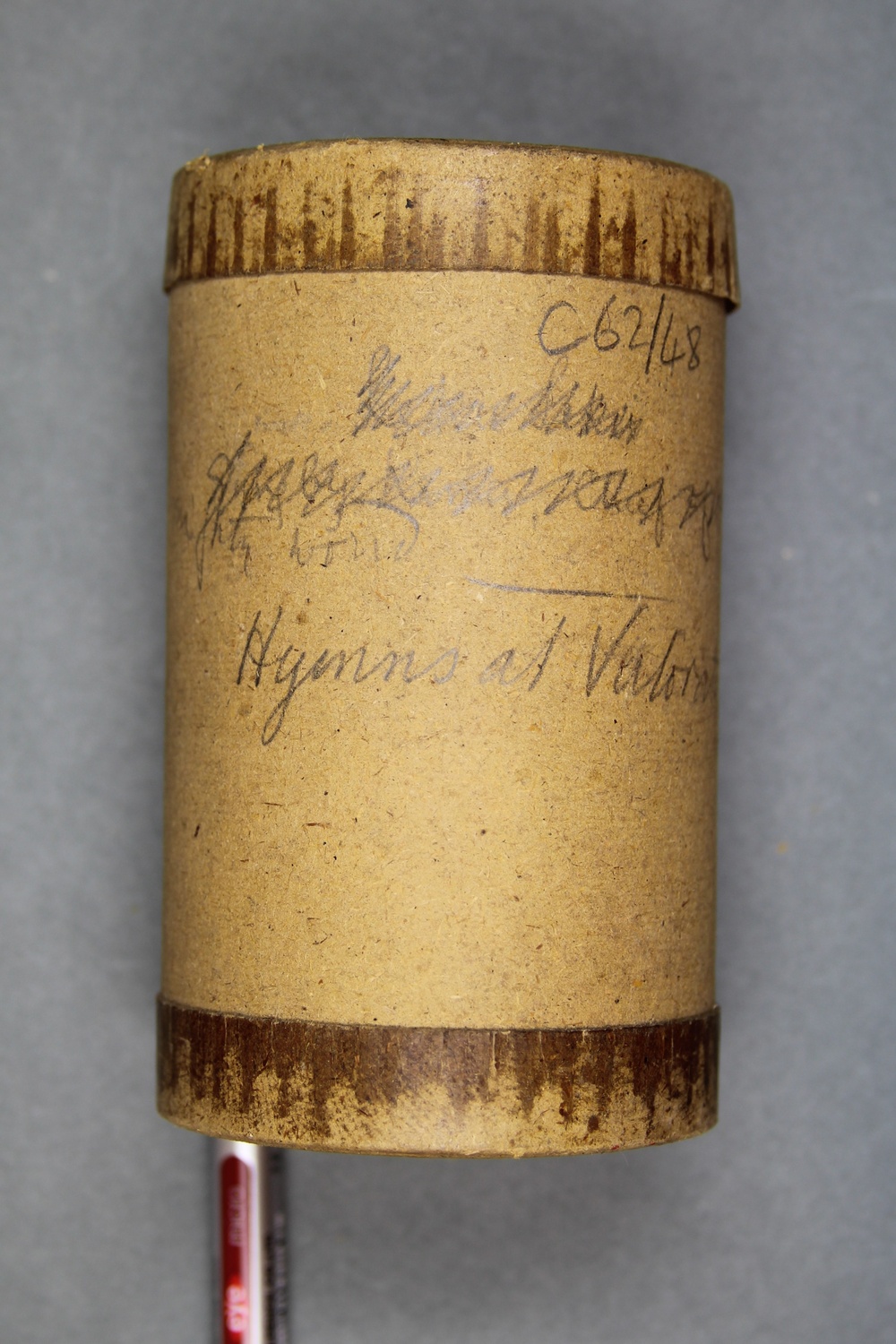  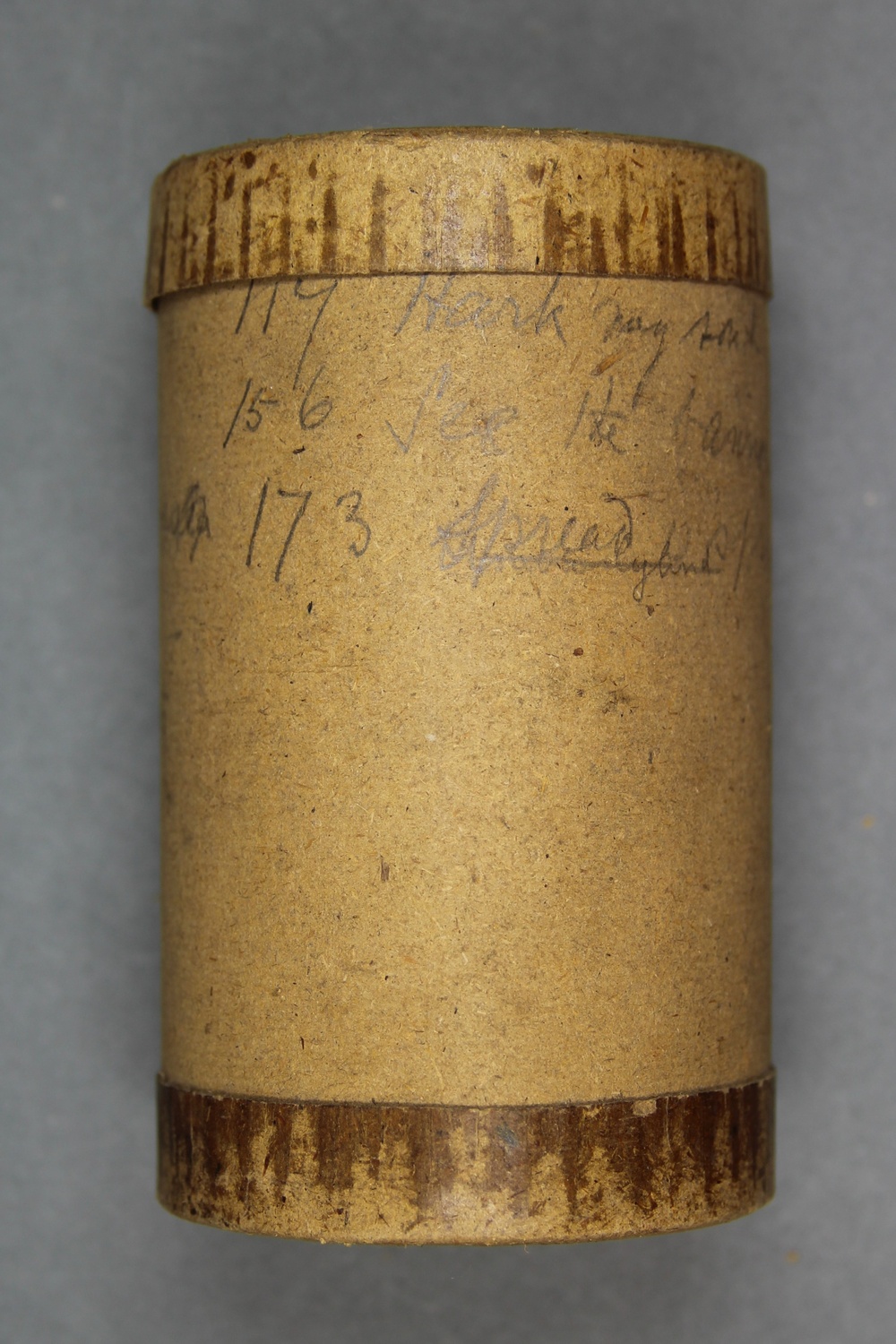 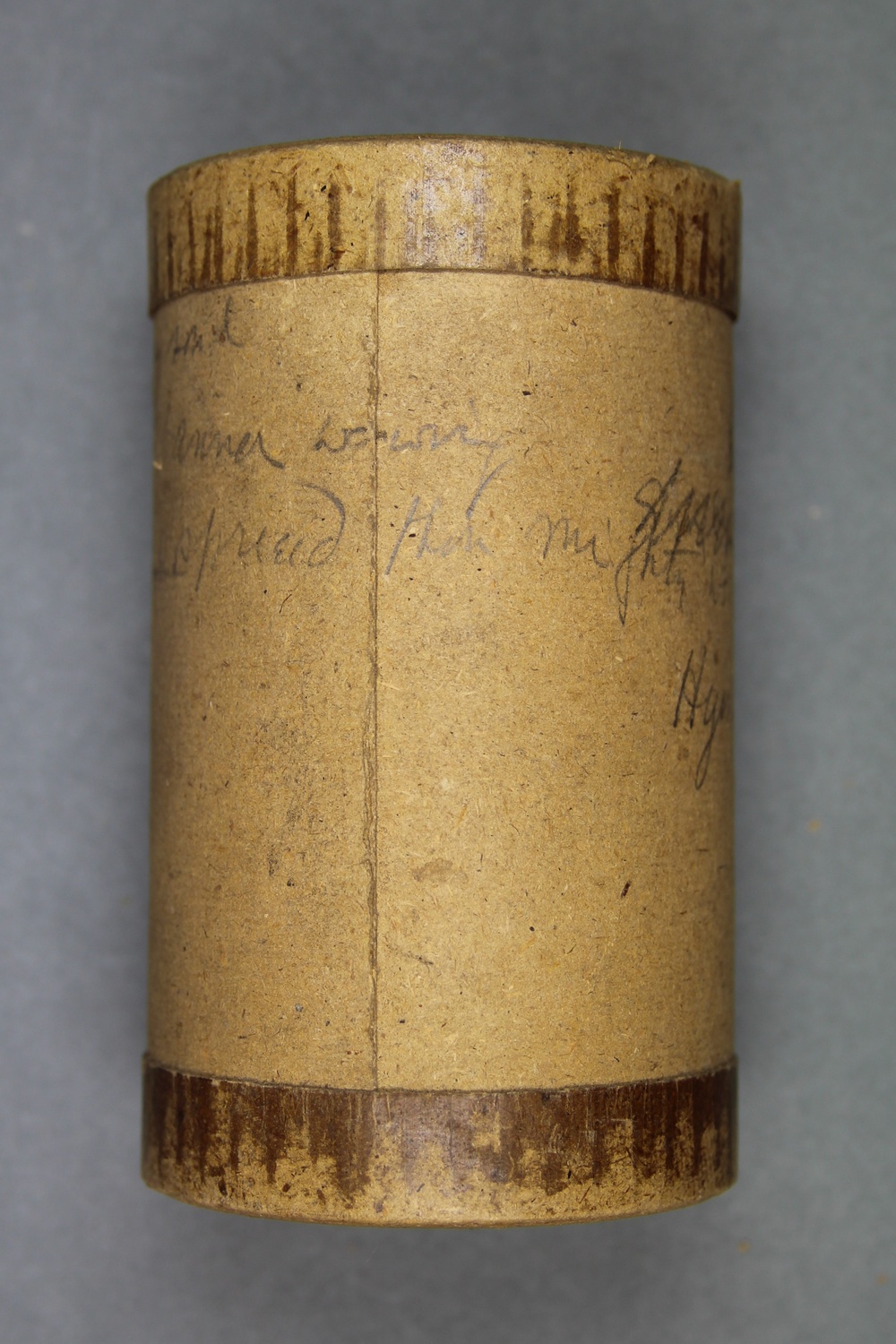  | |||||||
| C80/1464 | Dugong Fishers' Song [1] | Unidentified (male chorus) | Hula, Central District, British New Guinea | 4 June 1898 – 15 June 1898 | 1. Announcement: "Dugong fishers' song. Hulaa." 2. Unaccompaned male vocal group. | Reasonable quality recording but with surface noise due to patches of mould on cylinder. | Hula | Field recordings; Dugong fishing songs | Ray, Sidney | 2'00" | Alfred Cort Haddon 1898 Expedition, British New Guinea | Light brown wax cylinder | Alfred Cort Haddon 1898 Expedition (Torres Strait and British New Guinea) Cylinder Collection | British Library | 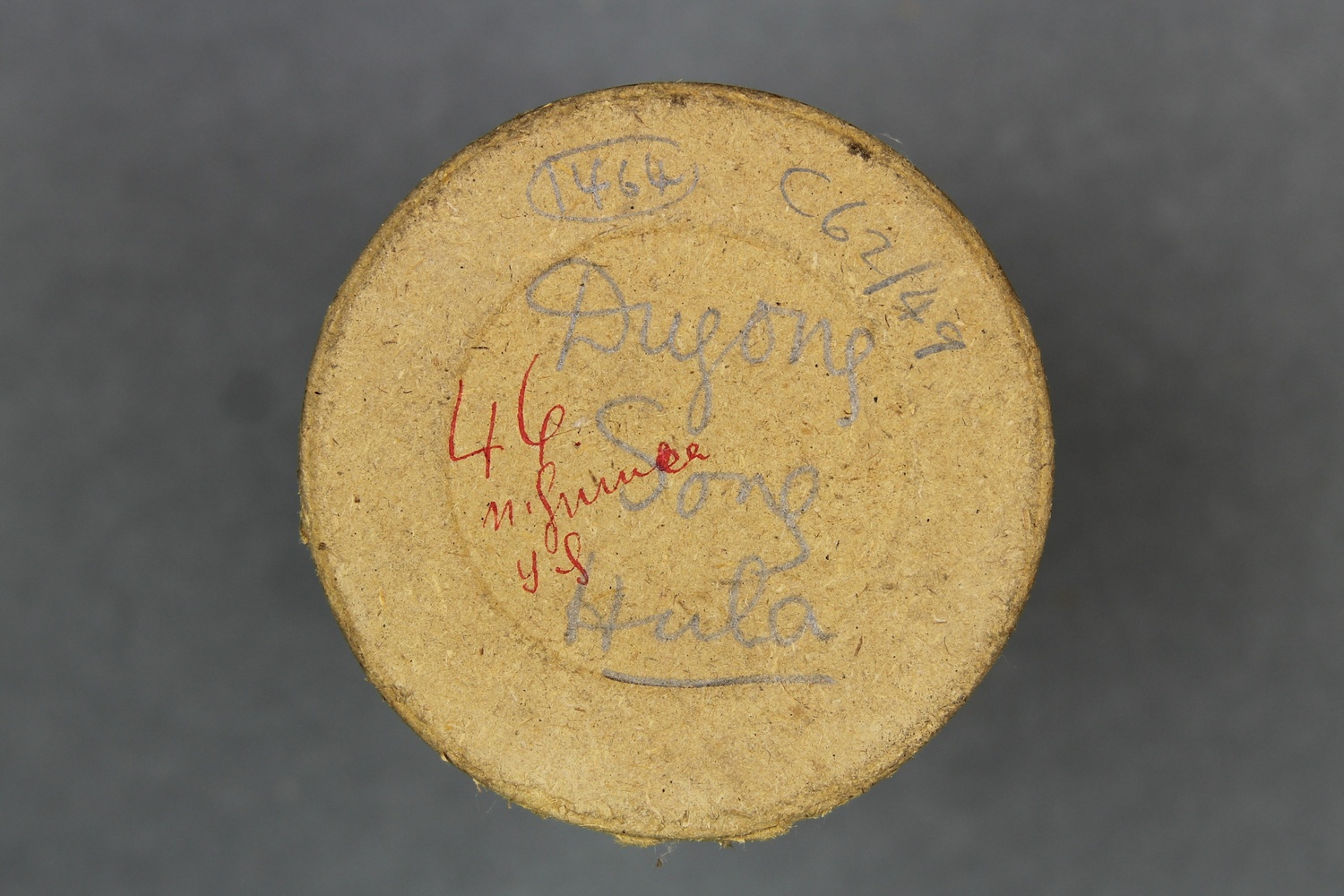 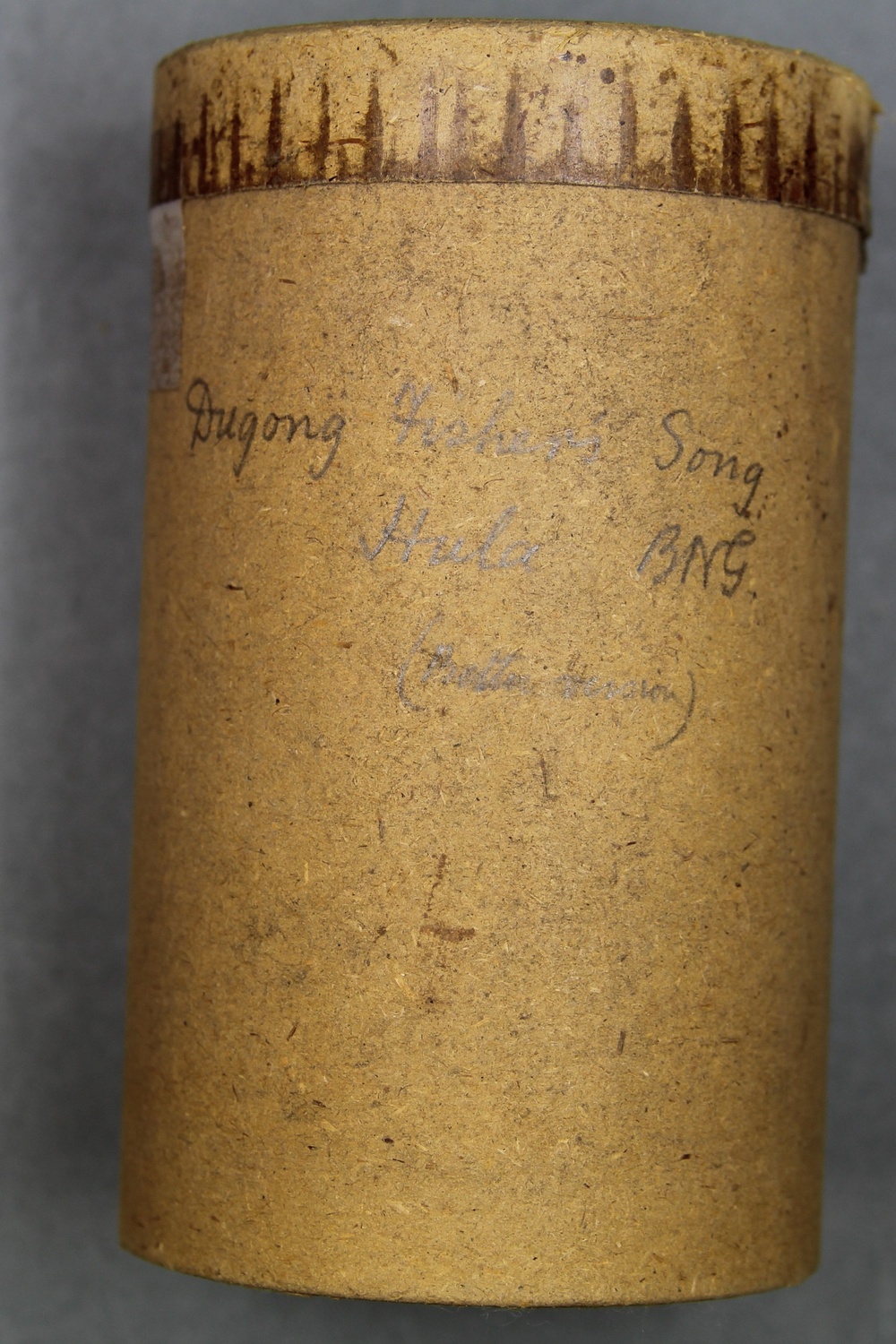     | |||||||
| C80/1465 | Dugong Fishers' Song [2] | Unidentified (male chorus) | Hula, Central District, British New Guinea | 4 June 1898 – 15 June 1898 | 1. Announcement: "Dugong Fishers' Song. Hulaa." 1. Unaccompanied male vocal group. | Reasonable quality recording but with surface noise due to patches on mould on cylinder. | Hula | Field recordings; Dugong fishing songs | Ray, Sidney | 2'10" | Alfred Cort Haddon 1898 Expedition, British New Guinea | Light brown wax cylinder | Alfred Cort Haddon 1898 Expedition (Torres Strait and British New Guinea) Cylinder Collection | British Library | 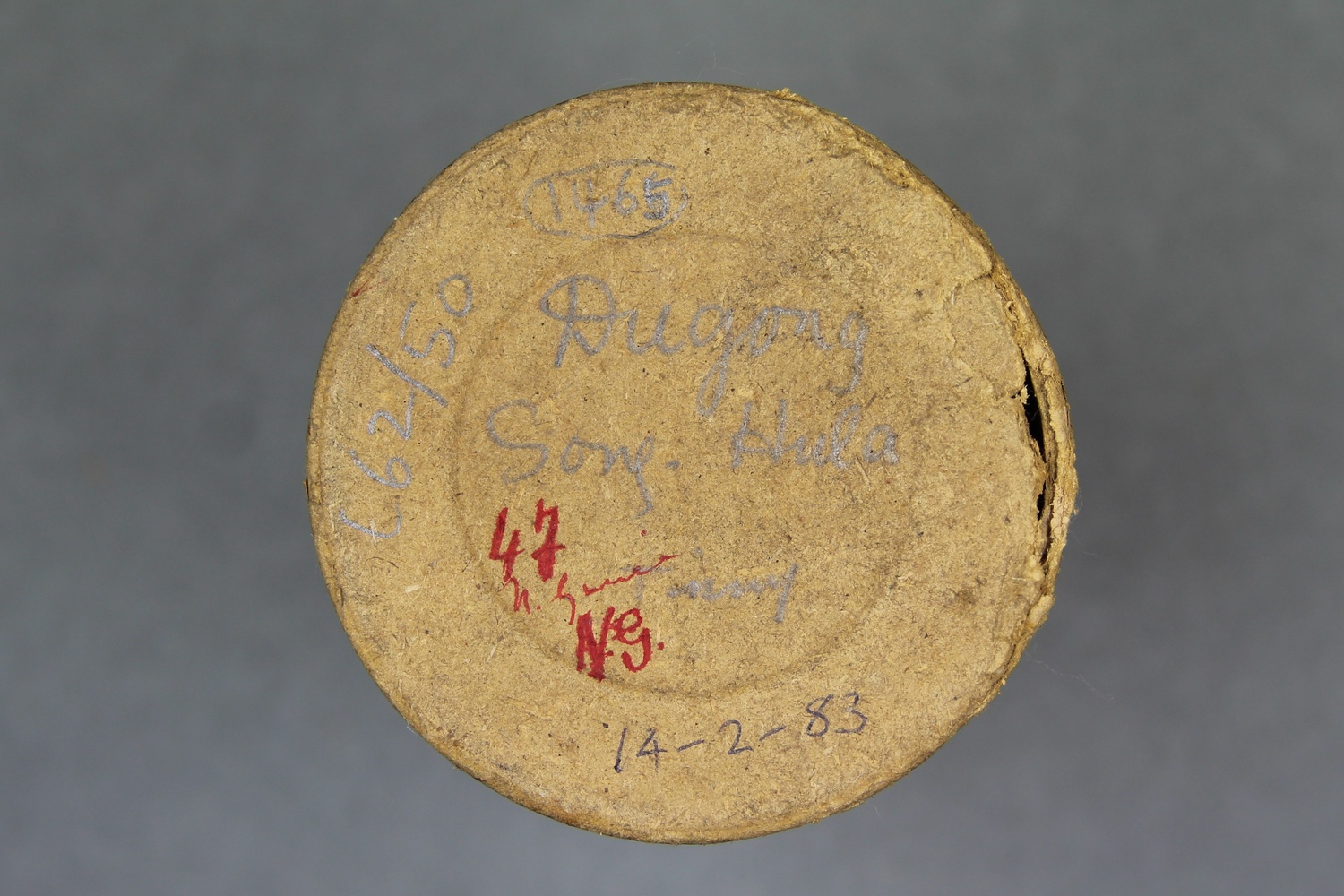      | |||||||
| C80/1466 | Hula Hymn | Unidentified (male chorus) | Hula, Central District, British New Guinea | 4 June 1898 – 15 June 1898 | 1. "[indecipherable] song of Hula, British New Guinea." 2. Mixed vocal group, singing version of 'Onward Christian Soldiers' in harmony. | Reasonable quality recording but with some surface noise. | Hula | Field recordings; Hymns | Ray, Sidney | 2'32" | Alfred Cort Haddon 1898 Expedition, British New Guinea | Light brown wax cylinder | Alfred Cort Haddon 1898 Expedition (Torres Strait and British New Guinea) Cylinder Collection | British Library | 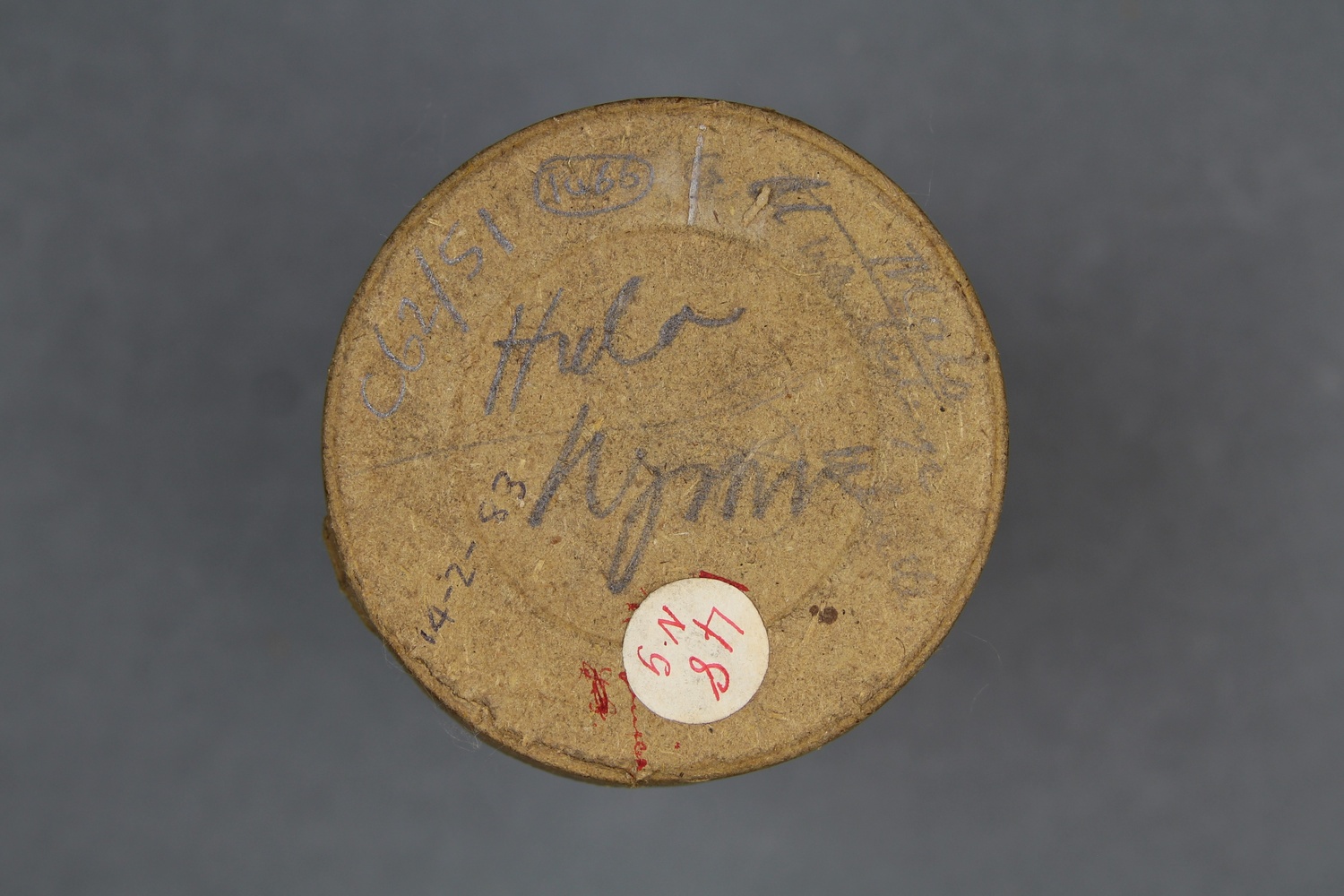 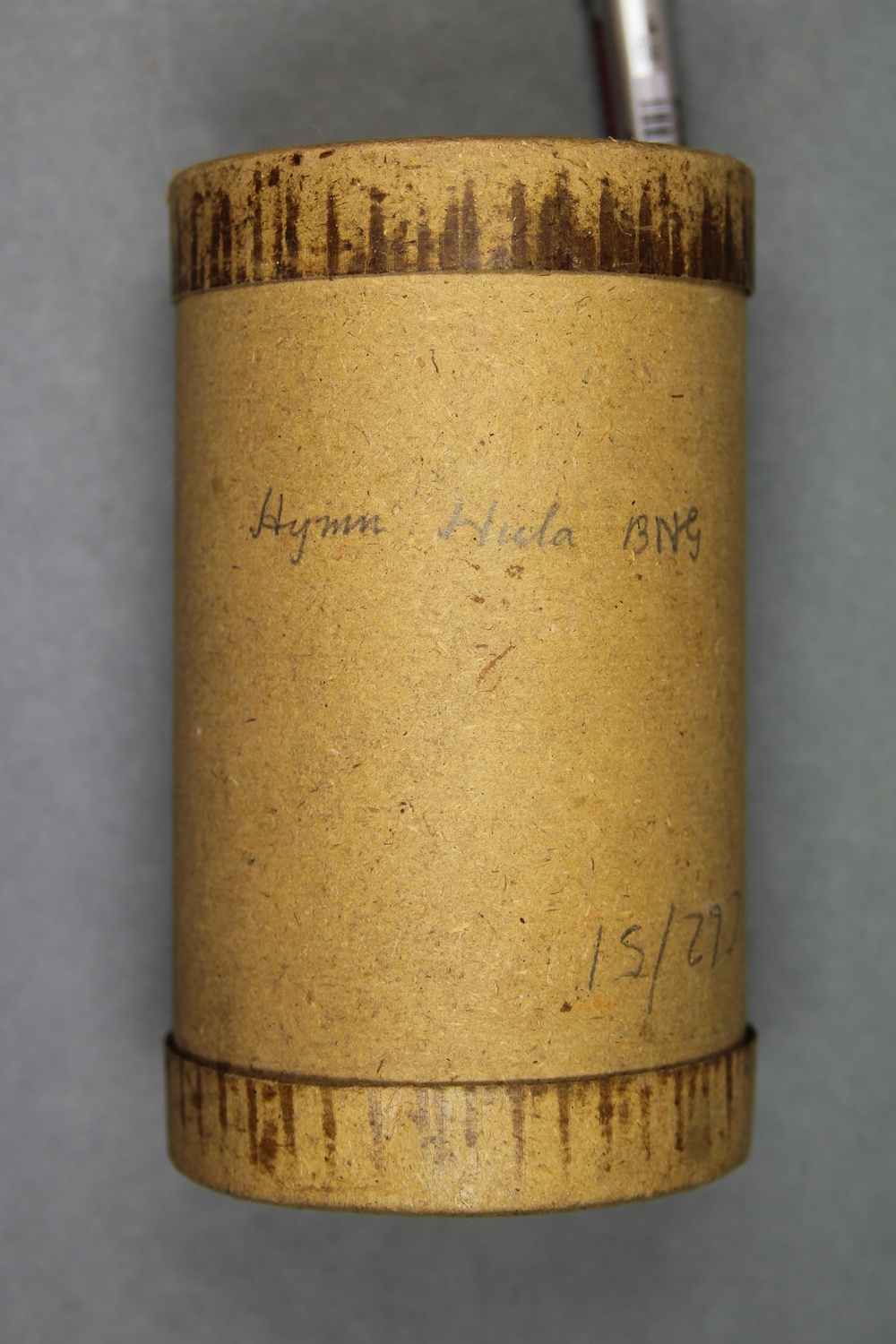     | |||||||
| C80/1467 | Canoe Song and Leku Leku Hula | Unidentified | Hula, Central District, British New Guinea | 13 June 1898 | 1. Indecipherable announcement. A leku was a war song according to Kolia (1975:187). | Hula | Field recordings; Canoe song; War song | Ray, Sidney | 2'30" | Alfred Cort Haddon 1898 Expedition, British New Guinea | Light brown wax cylinder | Alfred Cort Haddon 1898 Expedition (Torres Strait and British New Guinea) Cylinder Collection | British Library |  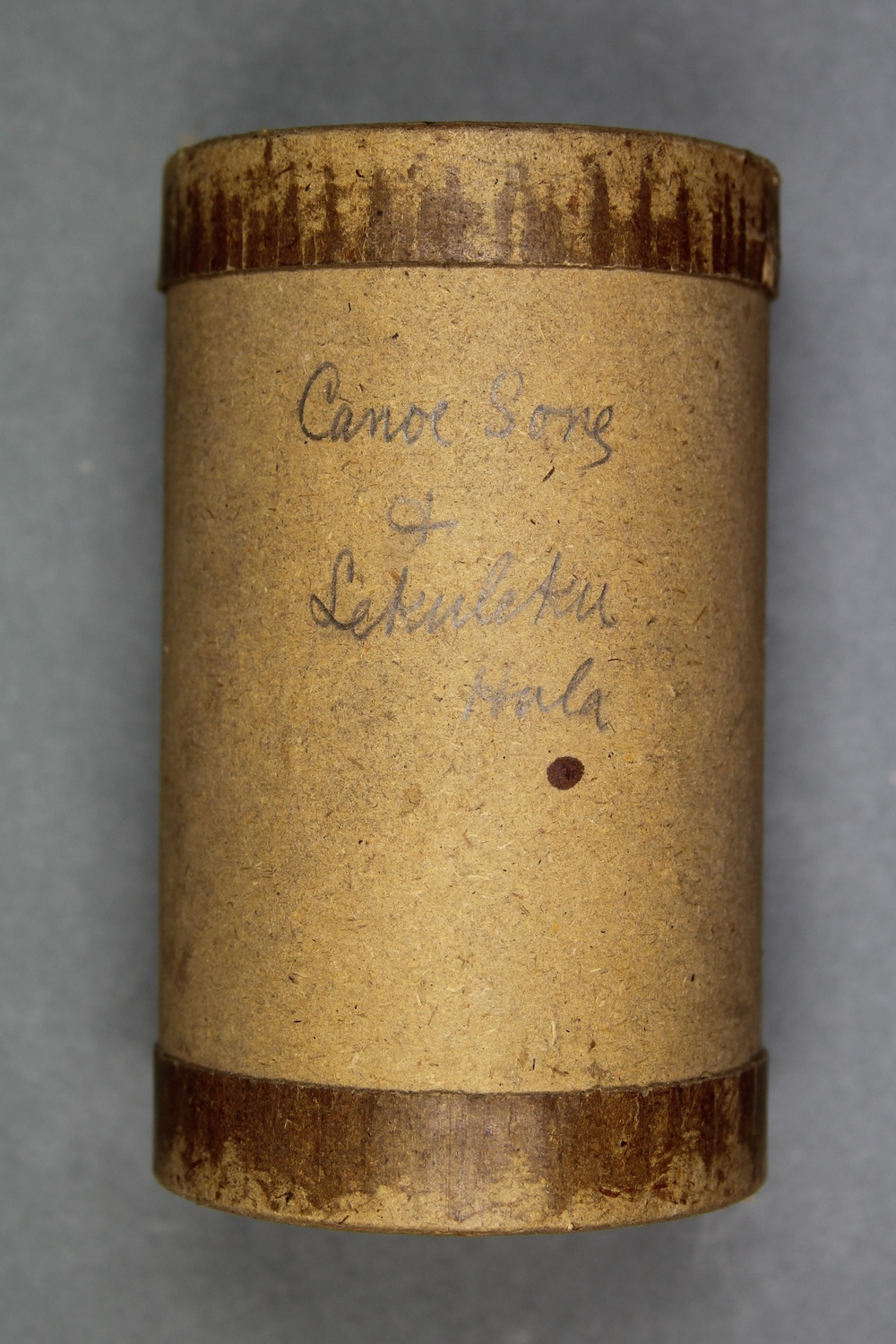     | Kolia, John. 1975. A Balawaia Grammar Sketch and Vocabulary. In Studies in Languages of Central and South-East Papua, edited by Tom E. Dutton, 107–226. Pacific Linguistics, C 19. Canberra: Australian National University. | |||||||
| C80/1468 | Kangaroo Hunting Song | Unidentified (singer, male) | Hula, Central District, British New Guinea | 9 June 1898 | 1. Announcement: "A hunting son, Hula." 2. Unaccompanied male vocal solo. “In the evening Ray phonographed 3 native songs in the school-house” (Haddon 1898–1899:114). Ray noted that he obtained 3 records, “a Lekuleku (ballad), a song sung by men when fishing for dugong, and a hunting song sung when hunting Kangaroo” (Ray 1898–1899:58). | Reasonable quality recording. | Hula | Field recordings; Wallaby hunting song | Ray, Sidney | 1'56" | Alfred Cort Haddon 1898 Expedition, British New Guinea | Light brown wax cylinder | Alfred Cort Haddon 1898 Expedition (Torres Strait and British New Guinea) Cylinder Collection | British Library | 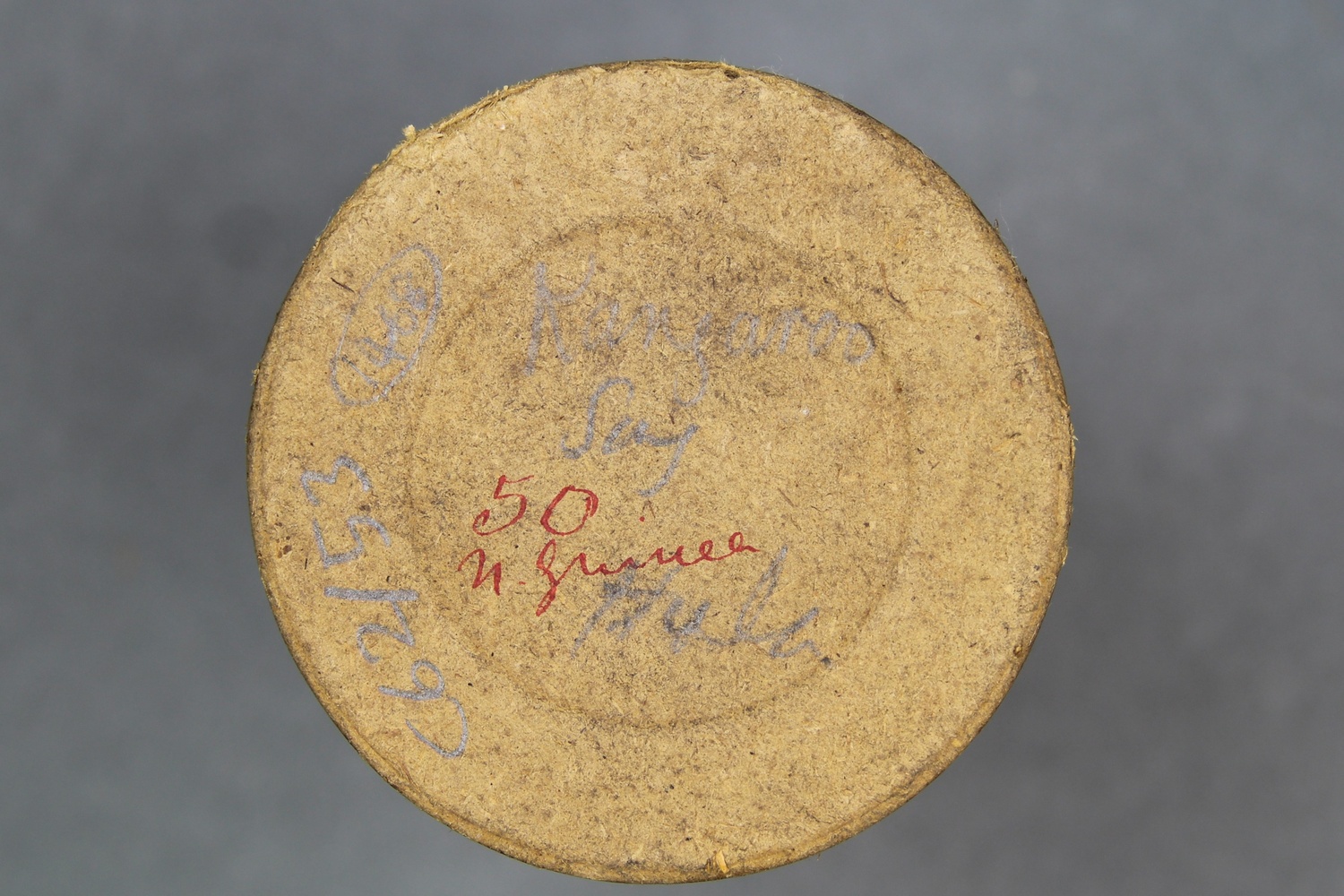      | |||||||
| C80/1469 | Kabau nau | Peter (singer, male) | Mabuiag / Jervis Island, Torres Strait Islands | 3 October 1898 – 22 October 1898 | 1. Announcement: "Kabau nau, sung by Peter, Mabuiag." 2. Unaccompanied male vocal solo. This cylinder was identified as a New Guinea recording, possibly due to a misreading of the cylinder insert note. However, the performer - Peter of Mabuiag - is featured on other C80 Torres Strait recordings and worked with Ray on Mabuiag. On insert note is written: 'Kabau | nau / sung by Peter Mabuiag' The phrase 'kabau nau' translates as 'dance song' (Myers 1912:269). 'Kab(a)' translates to 'a dance' (Ray 1907:103). Myers notes that Mabuiag Songs III and IV are dance songs. | Poor quality recording with widely fluctuating speeds, although signal is strong. The recording date corresponds to the dates that Expedition members visited Mabuiag / Jervis Island. According to Ray's journal, he worked with Peter from 15 to 17 October 1898. Ray also made a number of records, including songs (Ray 1898:89-90) | Kala Lagaw Ya | Field recordings | Ray, Sidney, H. | 2'52" | 1898 Cambridge Anthropological Expedition to Torres Straits | Light brown wax cylinder. Metal cylinder case. | Alfred Cort Haddon 1898 Expedition (Torres Strait and British New Guinea) Cylinder Collection | British Library |  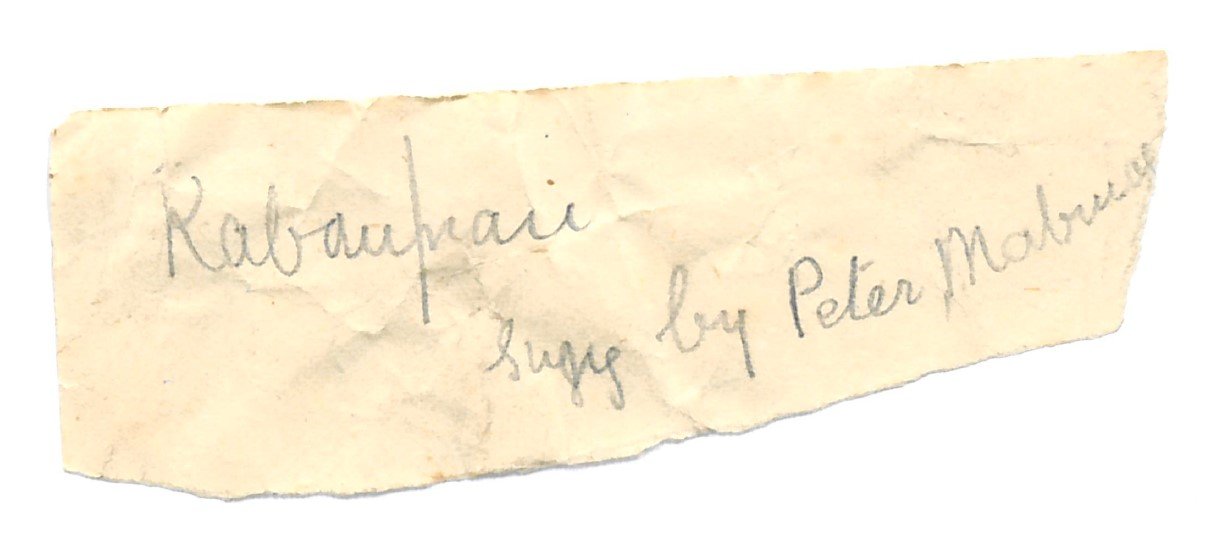     | Ray, S.H. 1898-99. Journal: Torres Straits Expedition 1898-99. [manuscript] Copies of journals and correspondence of Sidney Herbert Ray. MS 380314. London: SOAS Library. | Haddon, A.C. (ed.) 1907. Reports of the Cambridge Anthropological Expedition to Torres Strait: Volume III, The Languages of Torres Strait. Cambridge: Cambridge University Press. British Library shelfmark General Reference Collection YC.2011.b.631. | Haddon, A.C. (ed.) 1912. Reports of the Cambridge Anthropological Expedition to Torres Strait: Volume IV, Arts and Crafts. Cambridge: Cambridge University Press. British Library shelfmark General Reference Collection YC.2011.b.634. | ||||
| C80/1470 | Roro Song | Unidentified (singer, male) | Tsiria Island, Central District, British New Guinea | 12 July 1898 – 13 July 1898 | 1. Announcement: "Roro[?] song." 2. Unaccompanied male vocal solo. | Poor quality recording with weak signal and surface noise. | Waima / Roro | Field recordings | Ray, Sidney | 2'10" | Alfred Cort Haddon 1898 Expedition, British New Guinea | Light brown wax cylinder | Alfred Cort Haddon 1898 Expedition (Torres Strait and British New Guinea) Cylinder Collection | British Library | 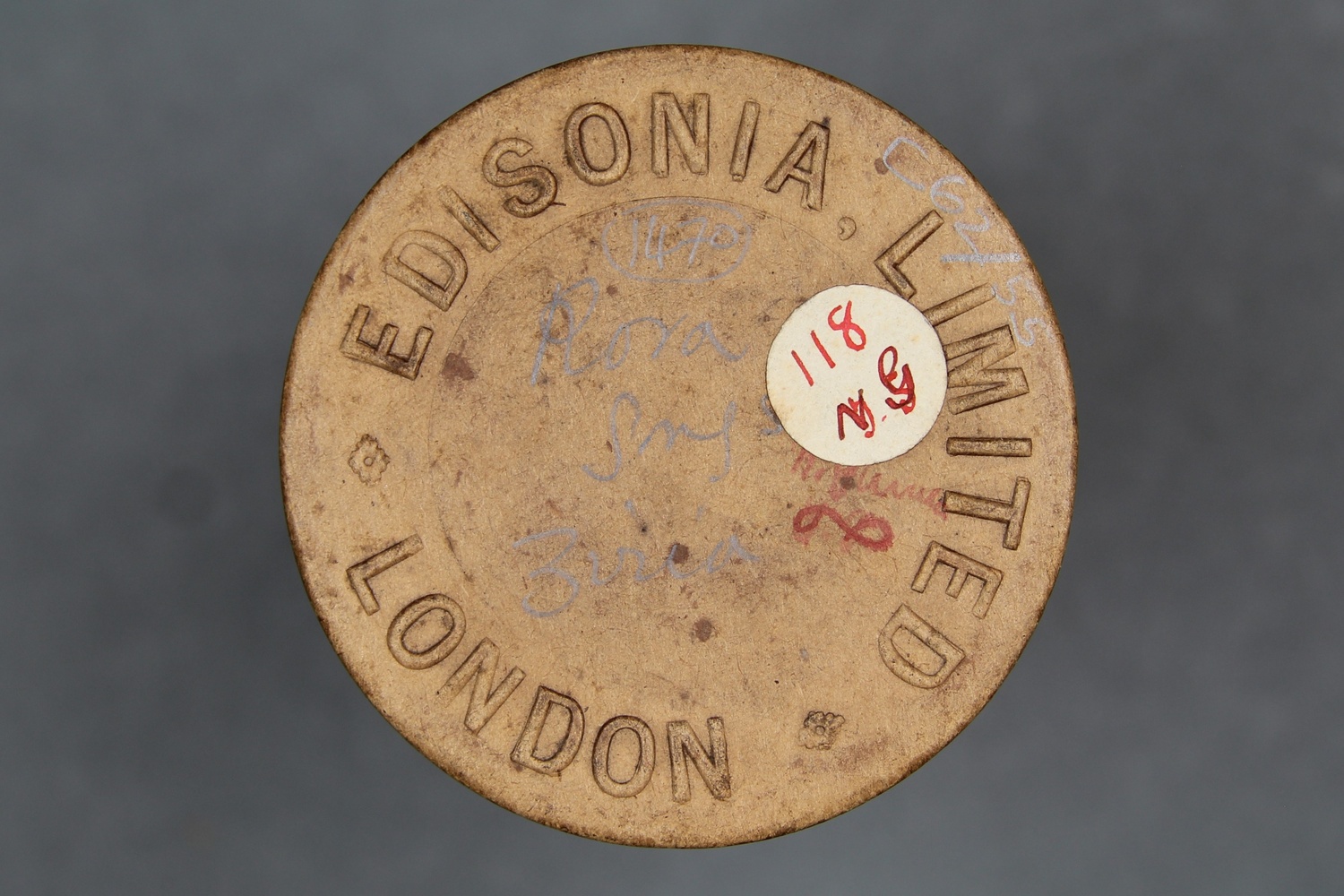 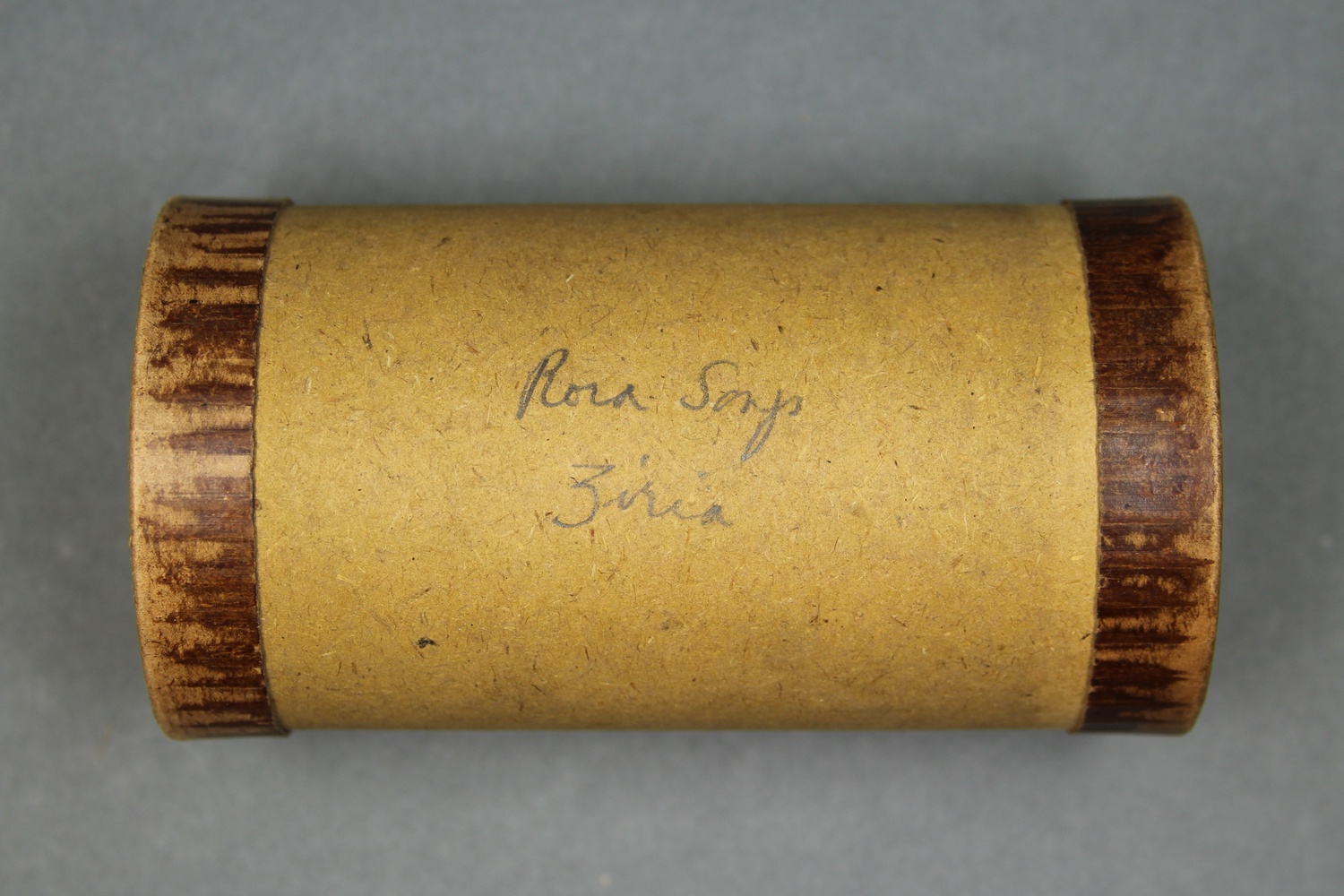     | |||||||
| C80/1471 | Mekeo War Song | Iniauna Kakouma (singer, male?, Eke of Veifaa) | Mekeo, Central District, British New Guinea | 7 July 1898 – 18 July 1898 | 1. 'Mekeo war song.' 2. Female [?] vocal solo, accompanied by percussion. 3. "Song [indecipherable]." 4. Unaccompanied female [?] vocal solo. | Reasonable quality recording. | Mekeo | Field recordings; War song and dance | Ray, Sidney | 2'46" | Alfred Cort Haddon 1898 Expedition, British New Guinea | Light brown wax cylinder | Alfred Cort Haddon 1898 Expedition (Torres Strait and British New Guinea) Cylinder Collection | British Library |   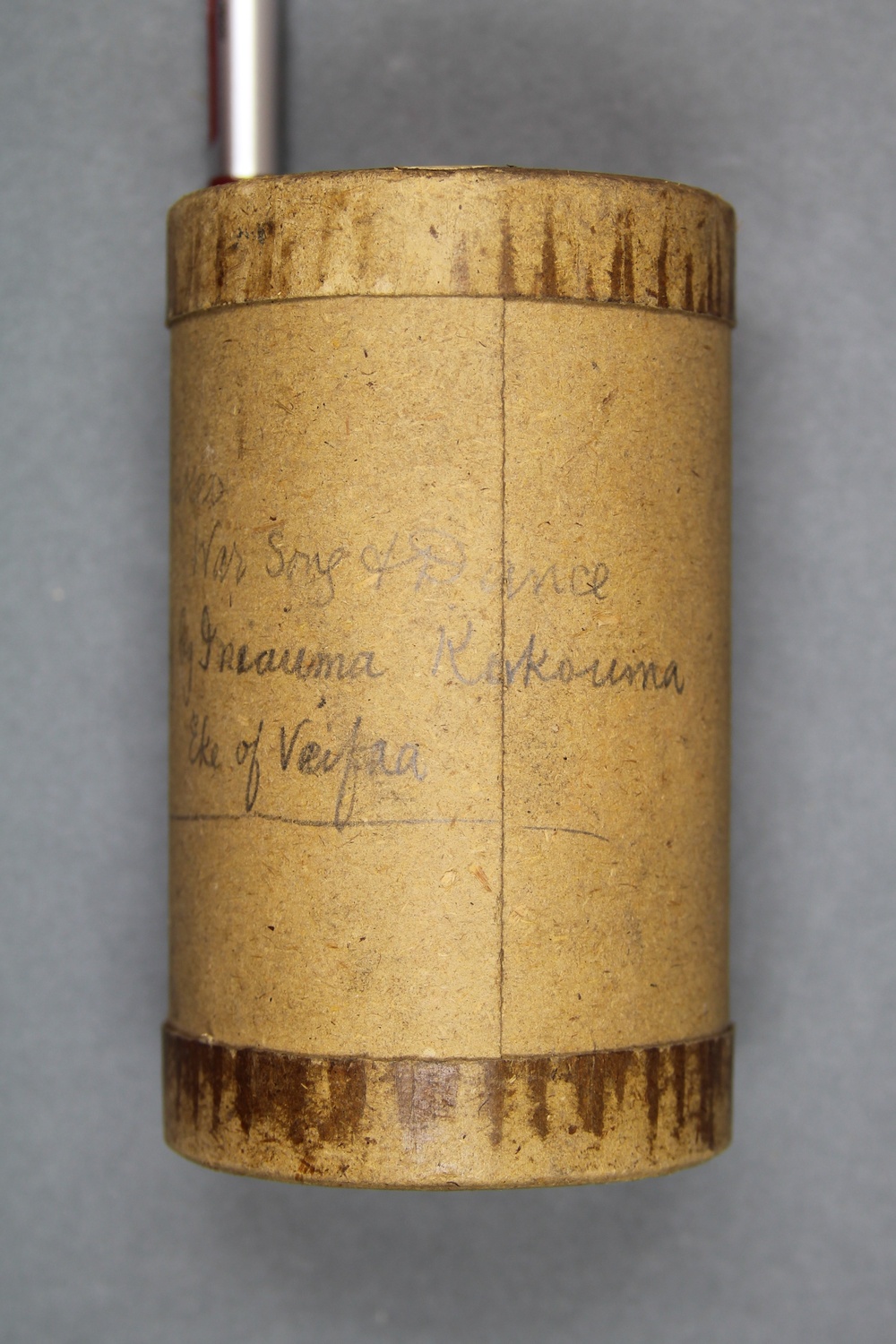    | |||||||
| C80/1472 | Roro Hymn [1] | Unidentified (singer, male); Unidentified (male chorus) | Roro language area, Central District, British New Guinea | 7 July 1898 – 18 July 1898 | 1. Announcement: "A Roro Humn." 2. Male vocal solo, occasionally acc. vocal group." | Reasonable quality recording but with surface noise due to mould on cylinder. | Waima / Roro | Field recordings; Hymns | Ray, Sidney | 2'44" | Alfred Cort Haddon 1898 Expedition, British New Guinea | Light brown wax cylinder | Alfred Cort Haddon 1898 Expedition (Torres Strait and British New Guinea) Cylinder Collection | British Library | 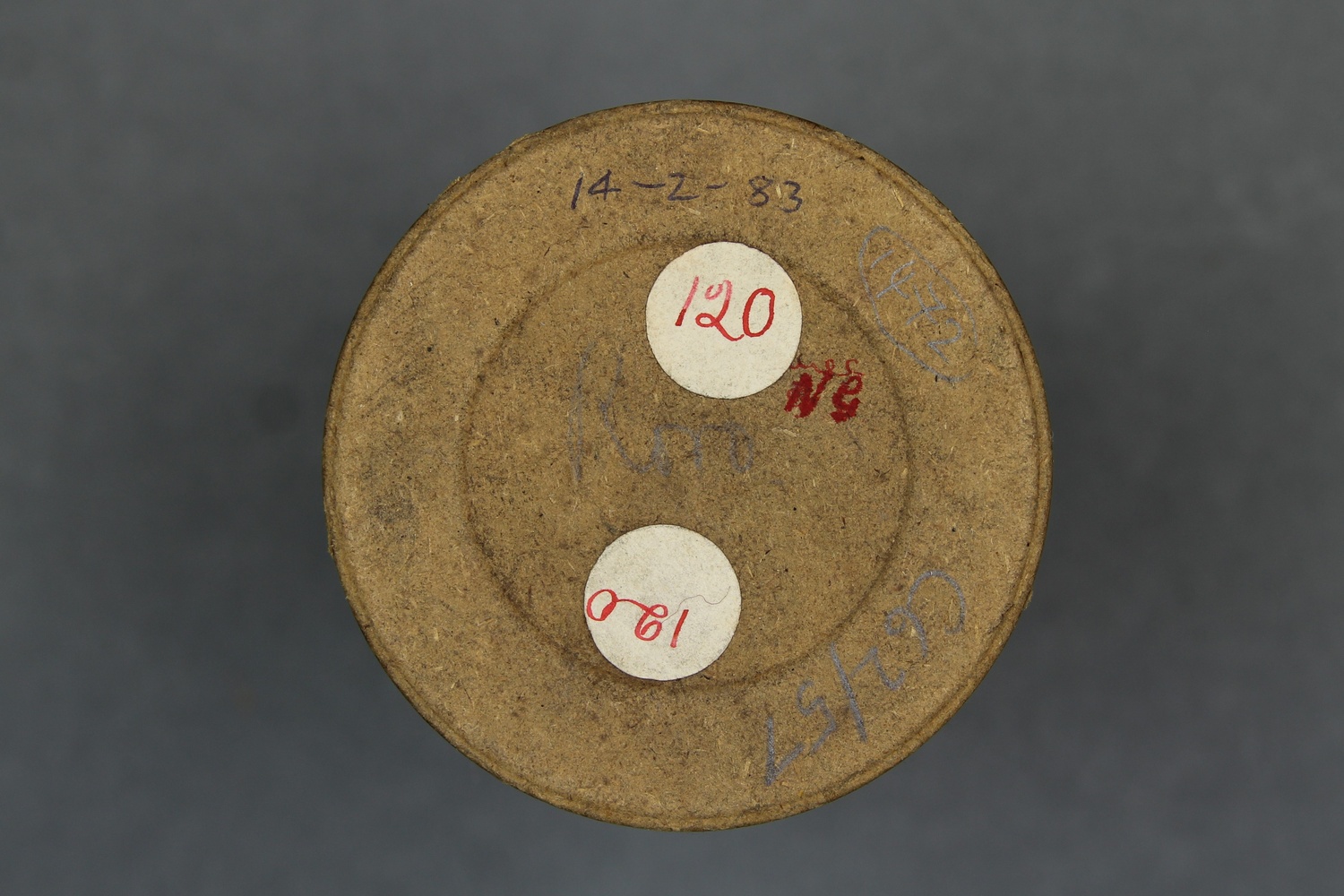      | |||||||
| C80/1473 | Roro Walking Song | Unidentified (singer, male) | Mekeo or Roro, Central District, British New Guinea | 7 July 1898 – 18 July 1898 | 1. Announcement: "A Roro walking song." 2. Unaccompanied male vocal solo. 3. "Mekeo dance song." 4. Unaccompanied male vocal solo. 5 "A mountain song." 6. Unaccompanied male vocal solo. | Reasonable quality recording but with surface noise due to patches of mould on cylinder. | Mekeo and Waima / Roro | Field recordings | Ray, Sidney | 2'58" | Alfred Cort Haddon 1898 Expedition, British New Guinea | Light brown wax cylinder | Alfred Cort Haddon 1898 Expedition (Torres Strait and British New Guinea) Cylinder Collection | British Library | 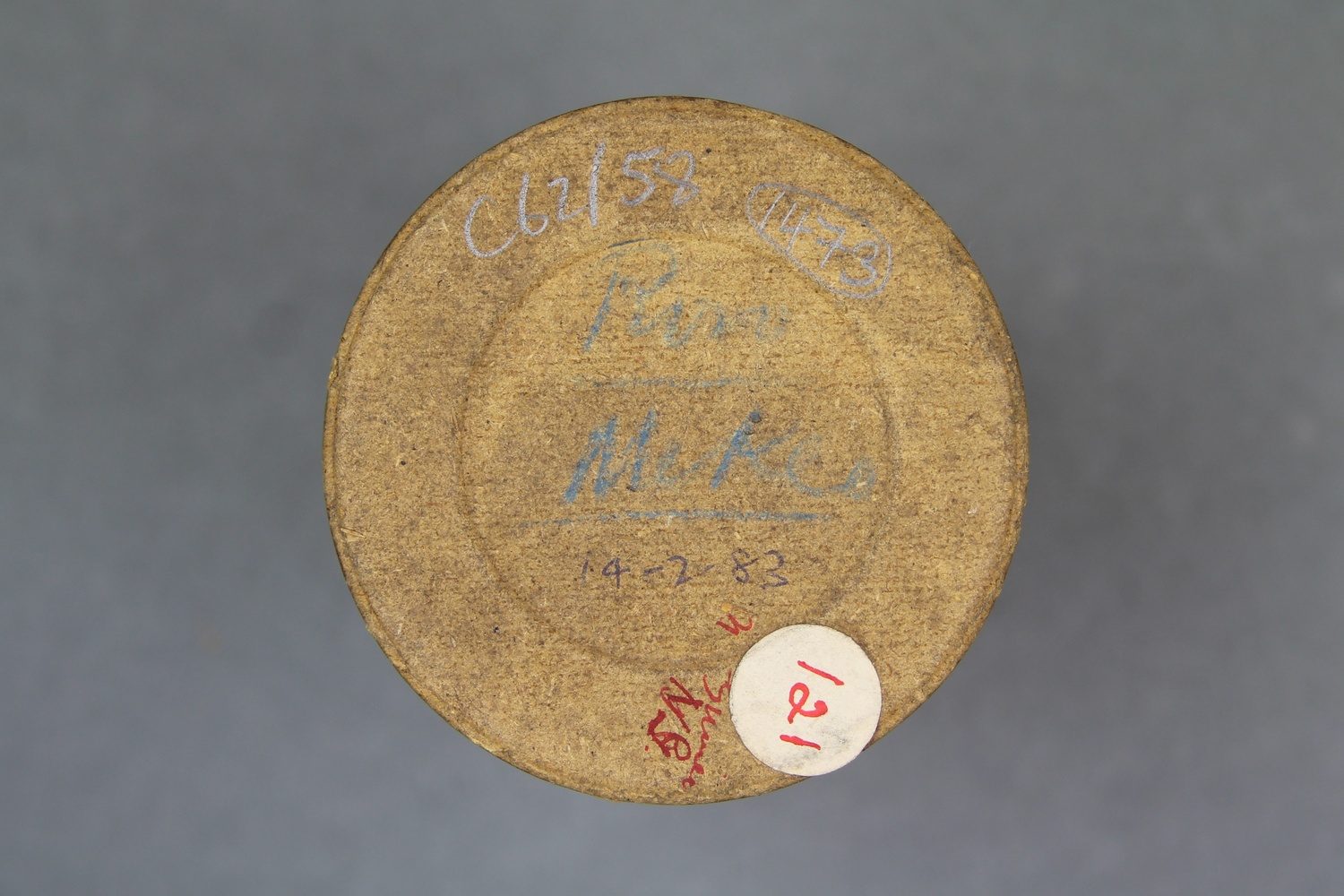 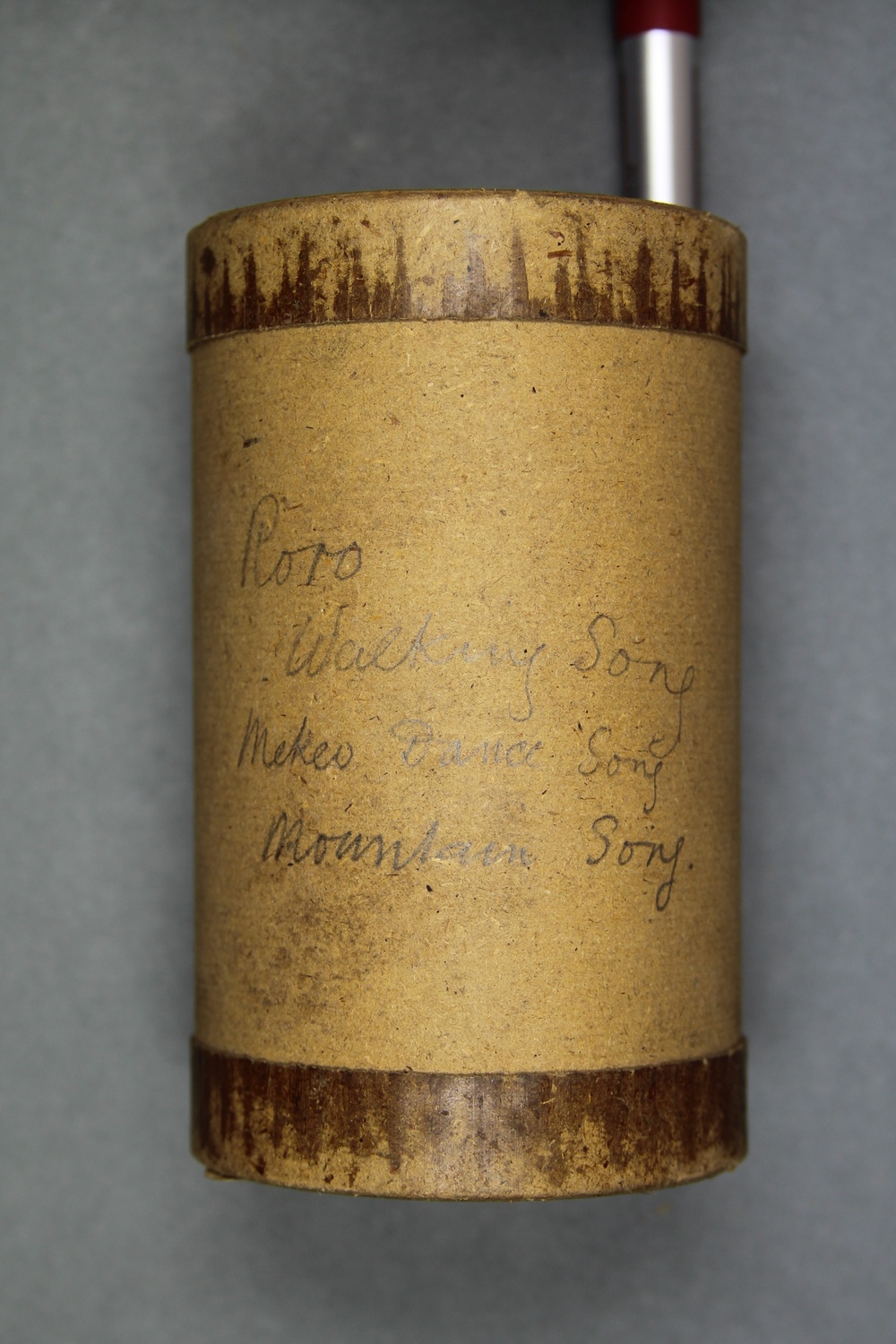     | |||||||
| C80/1474 | Roro Hymn Dominika | Unidentified (singer, male) | Roro language area, Central District, British New Guinea | 7 July 1898 – 18 July 1898 | 1. Announcement: "A Roro Hymn." 2. Unaccompanied male vocal solo. | Reasonable quality recording but with surface noise due to mould on cylinder. | Waima / Roro | Field recordings; Hymns | Ray, Sidney | 2'34" | Alfred Cort Haddon 1898 Expedition, British New Guinea | Light brown wax cylinder | Alfred Cort Haddon 1898 Expedition (Torres Strait and British New Guinea) Cylinder Collection | British Library | 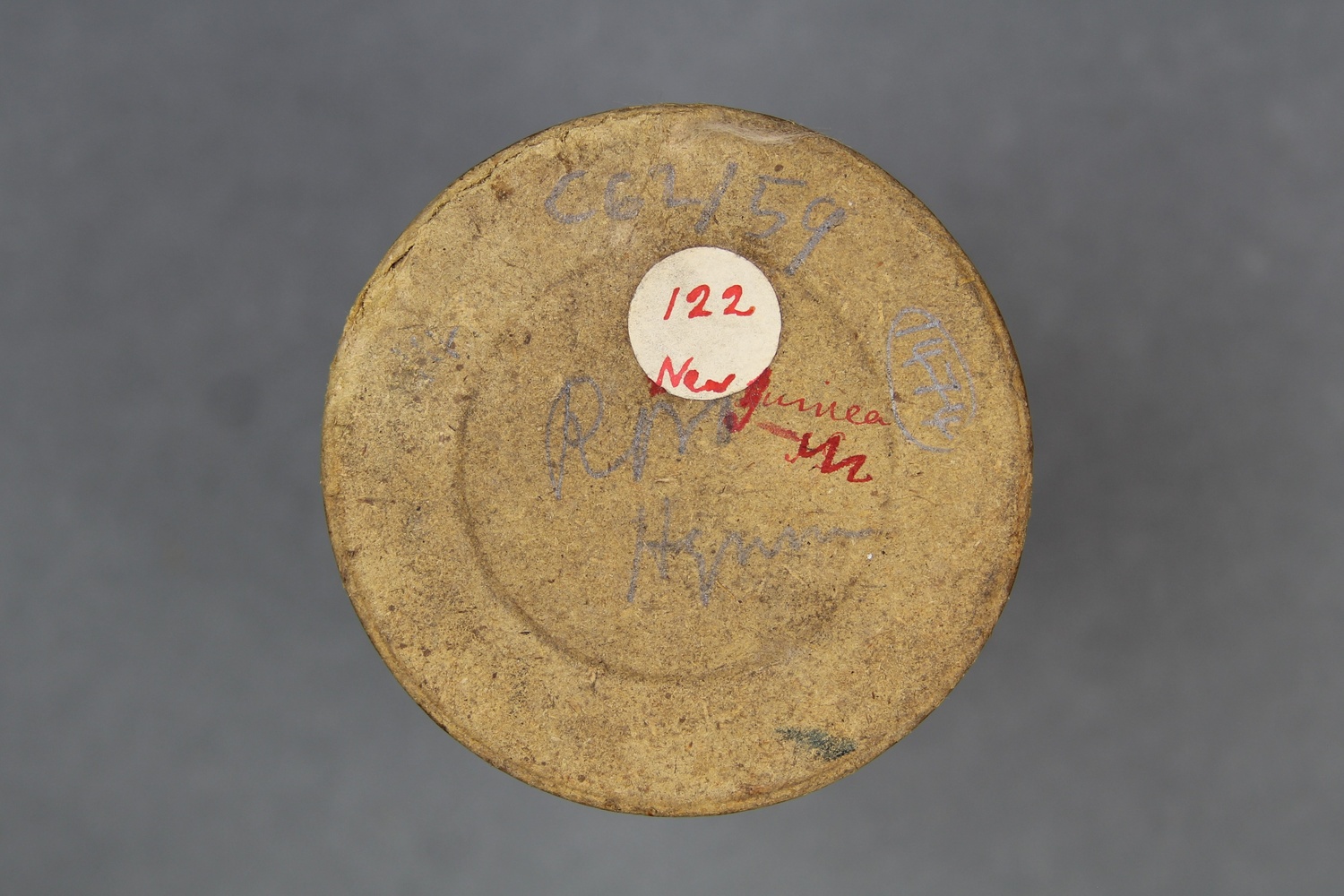 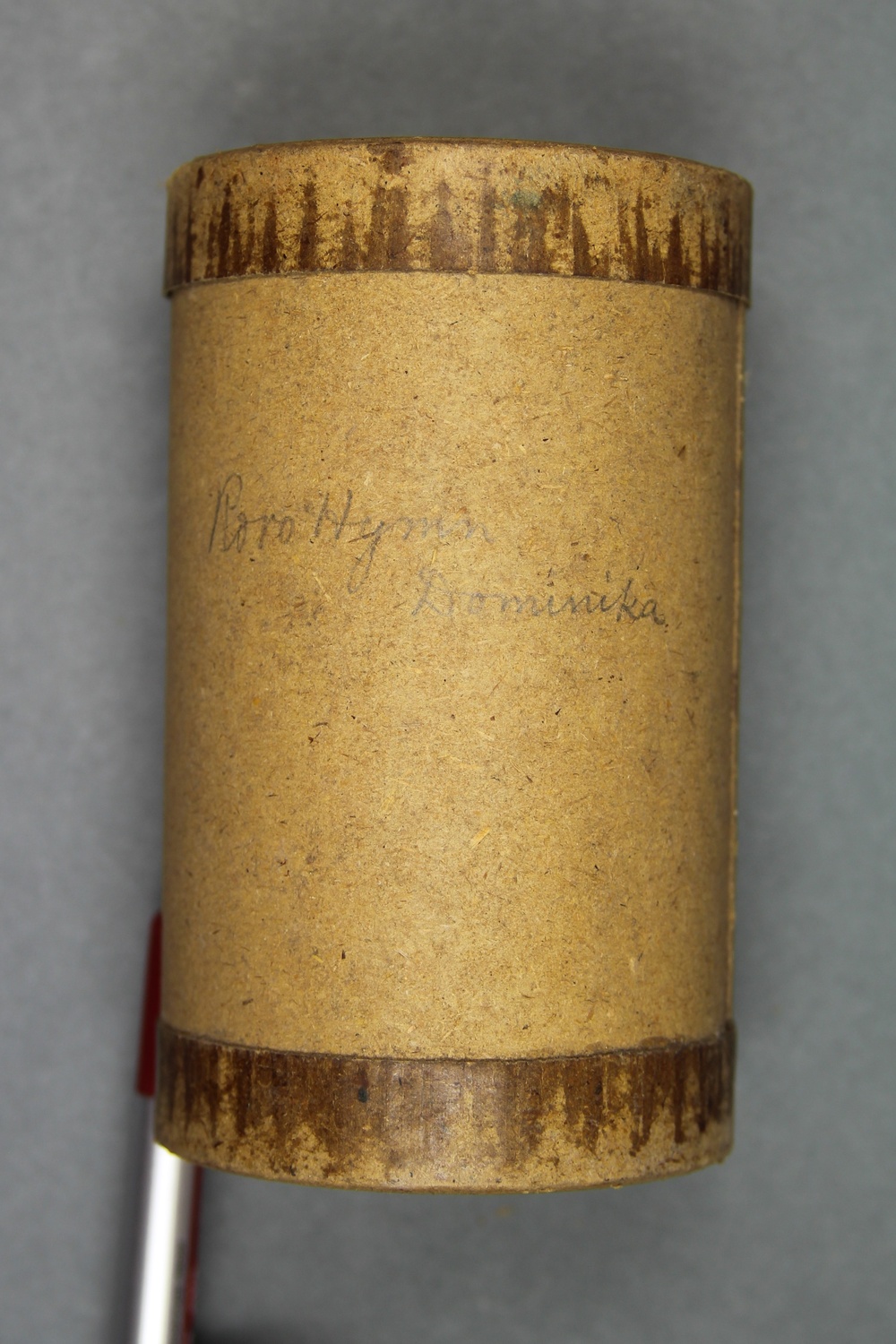     | |||||||
| C80/1475 | Mekeo Dance and Song | Unidentified (singer, male) | Mekeo, Central District, British New Guinea | 7 July 1898 – 18 July 1898 | 1. Announcement: "Mekeo Dance Song." 2. Unaccompanied male vocal group. 3. "Another Mekeo song." 4. Unaccompanied male vocal solo. 5. "Another Mekeo Song." 6. Unaccompanied male vocal solo. | Reasonable quality recording but with weak signal and surface noise. | Mekeo | Field recordings | Ray, Sidney | 2'52" | Alfred Cort Haddon 1898 Expedition, British New Guinea | Light brown wax cylinder | Alfred Cort Haddon 1898 Expedition (Torres Strait and British New Guinea) Cylinder Collection | British Library |  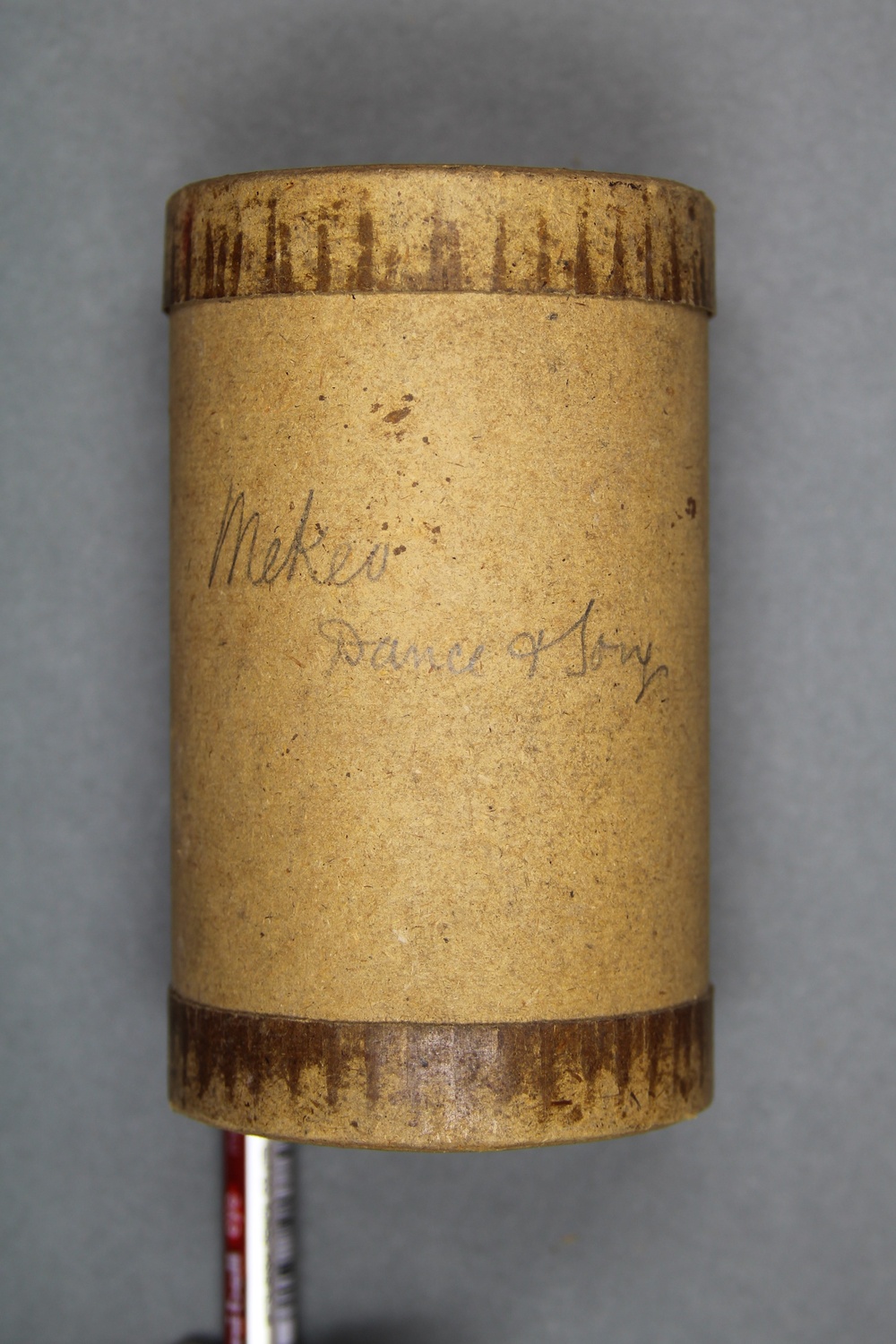     | |||||||
| C80/1476 | Roro Aroba Marching Songs | Unidentified (singer, male); Unidentified (male chorus) | Roro language area, Central District, British New Guinea | 7 July 1898 – 18 July 1898 | 1. Announcement: "An Aroba or Roro song" 2. Unaccompanied male vocal solo. 3. "Another Aroba." 4. Unaccompanied male vocal solo. 5. Another Aroba." 6. Unaccompanied male vocal solo. 7. "Roro [indecipherable] march." 8. Unaccompanied male vocal group. | Reasonable quality recording but with some surface noise. | Waima / Roro | Field recordings | Ray, Sidney | 3'01" | Alfred Cort Haddon 1898 Expedition, British New Guinea | Light brown wax cylinder | Alfred Cort Haddon 1898 Expedition (Torres Strait and British New Guinea) Cylinder Collection | British Library | 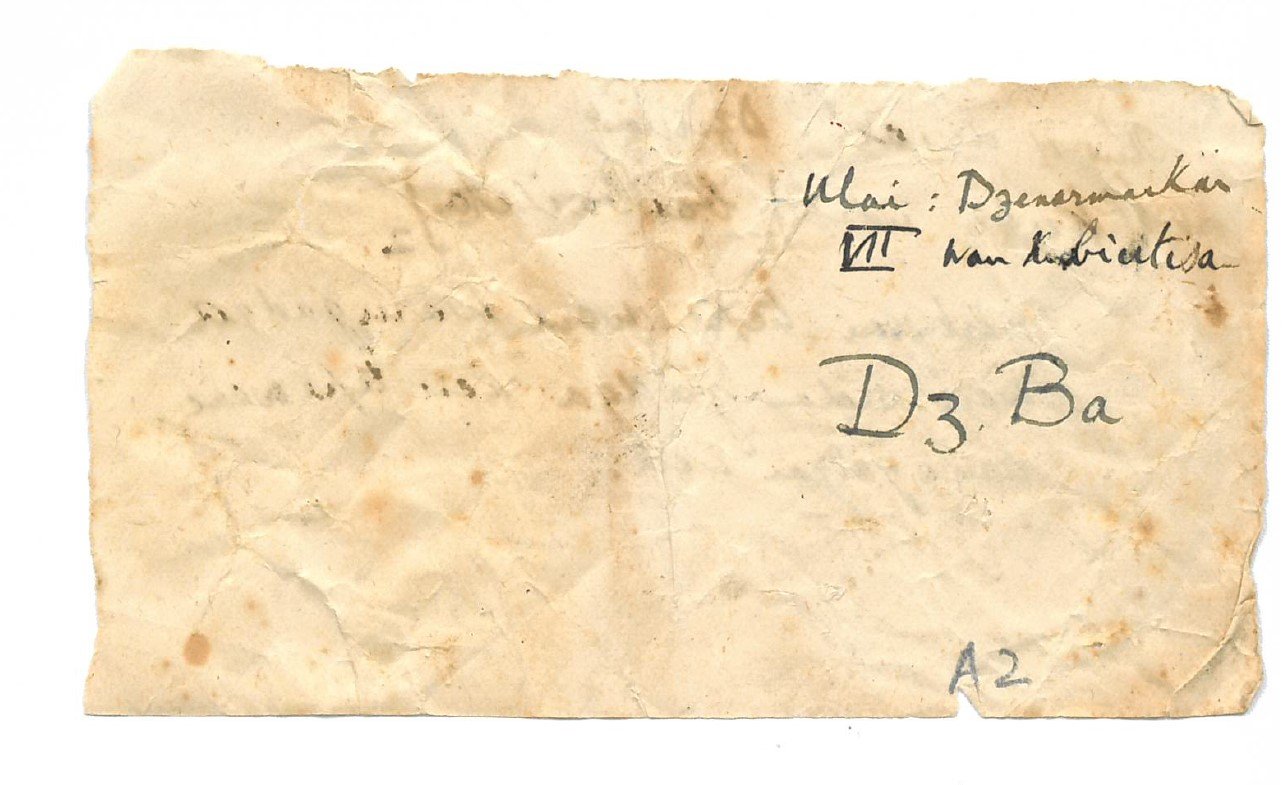 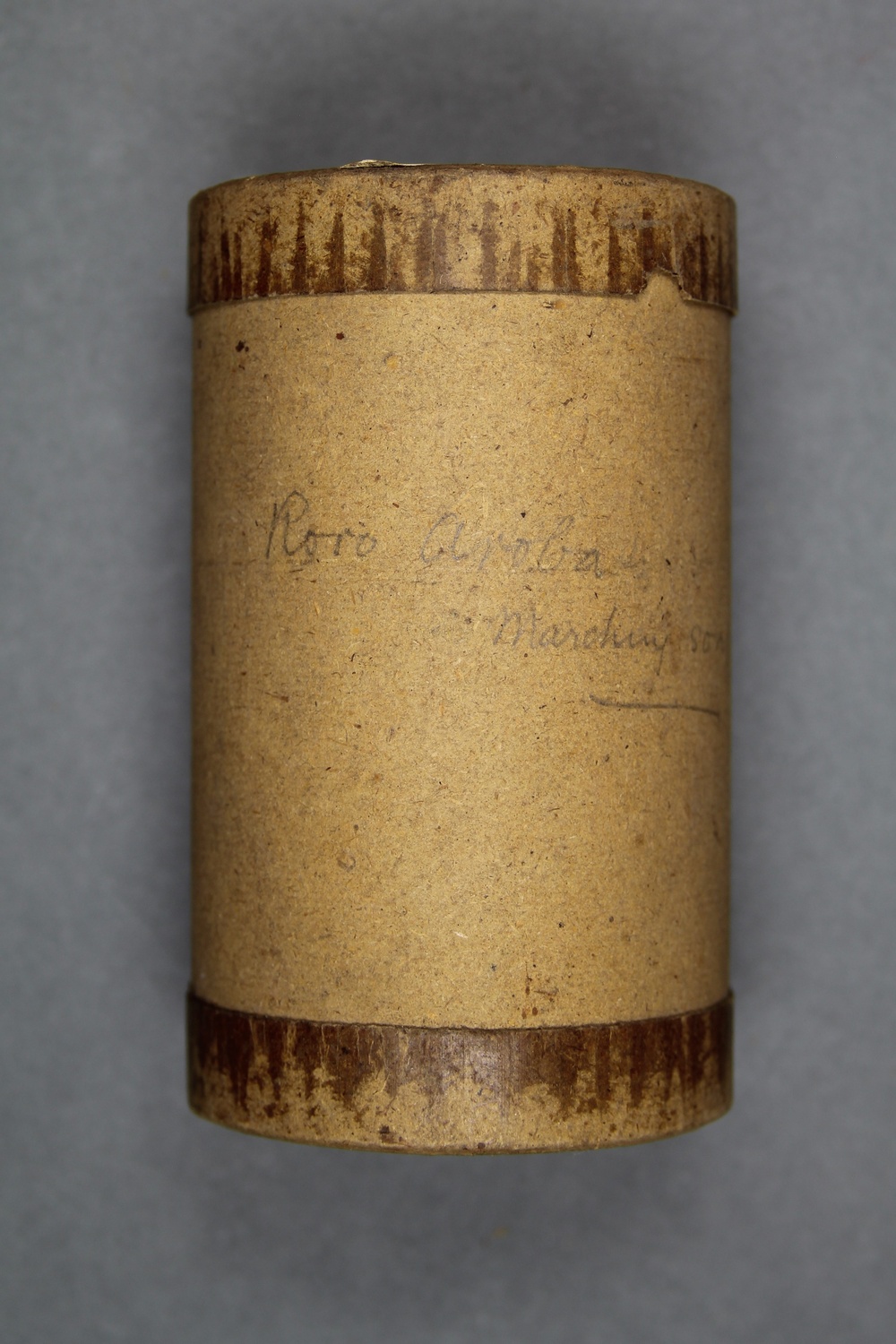     | |||||||
| C80/1477 | Mekeo Dance and Songs | Unidentified (male chorus) | Mekeo, Central District, British New Guinea | 7 July 1898 – 18 July 1898 | 1. Announcement: "Dance Song." 2. Unaccompanied male vocal group. 3. "[indecipherable] song". 4. Unaccompanied male vocal group. 5. "[indecipherable] song. 6. Unaccompanied male vocal group. | Poor quality recording with poor tracking throughout due to broken cylinder. | Mekeo | Field recordings | Ray, Sidney | 2'23" | Alfred Cort Haddon 1898 Expedition, British New Guinea | Light brown wax cylinder | Alfred Cort Haddon 1898 Expedition (Torres Strait and British New Guinea) Cylinder Collection | British Library | 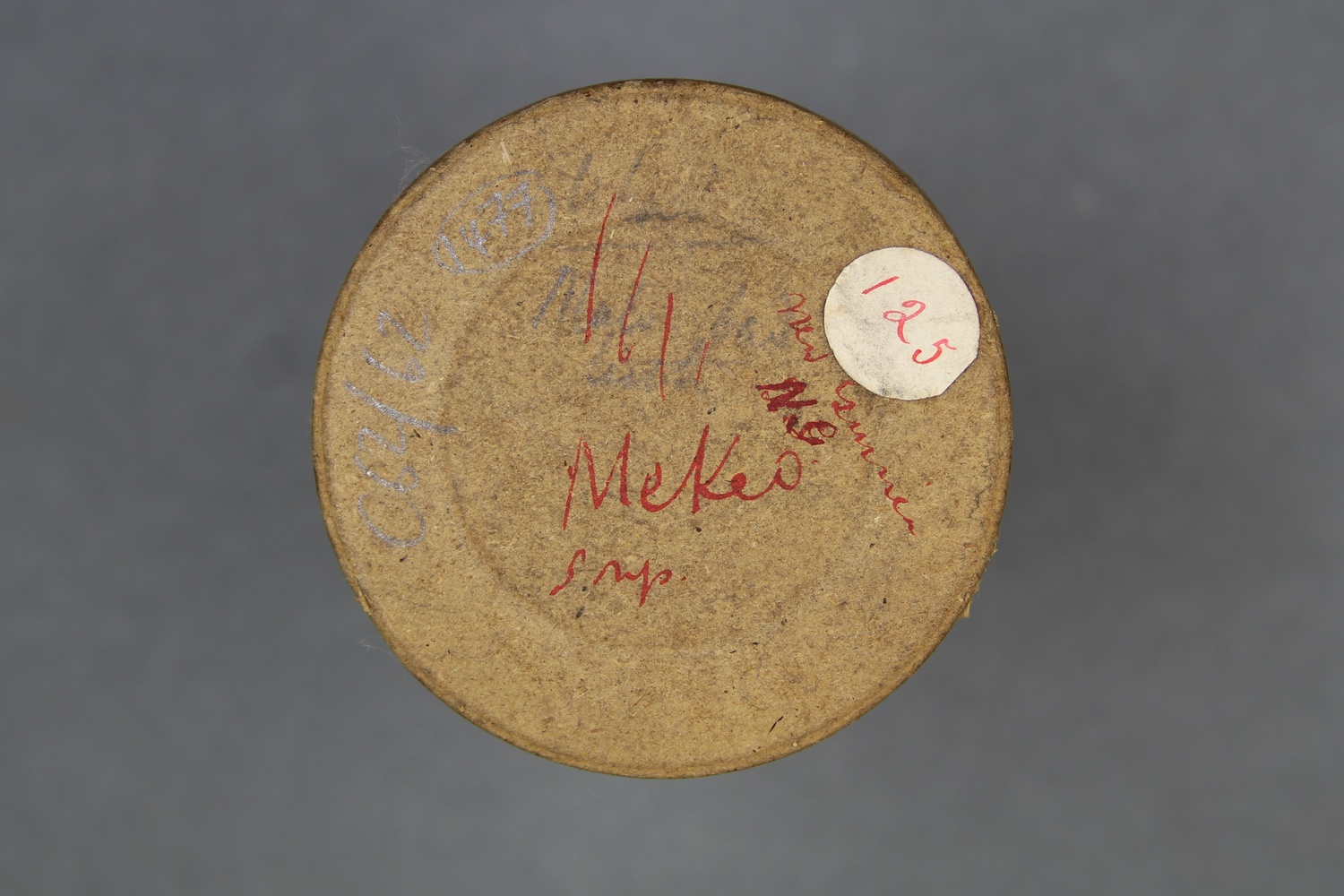 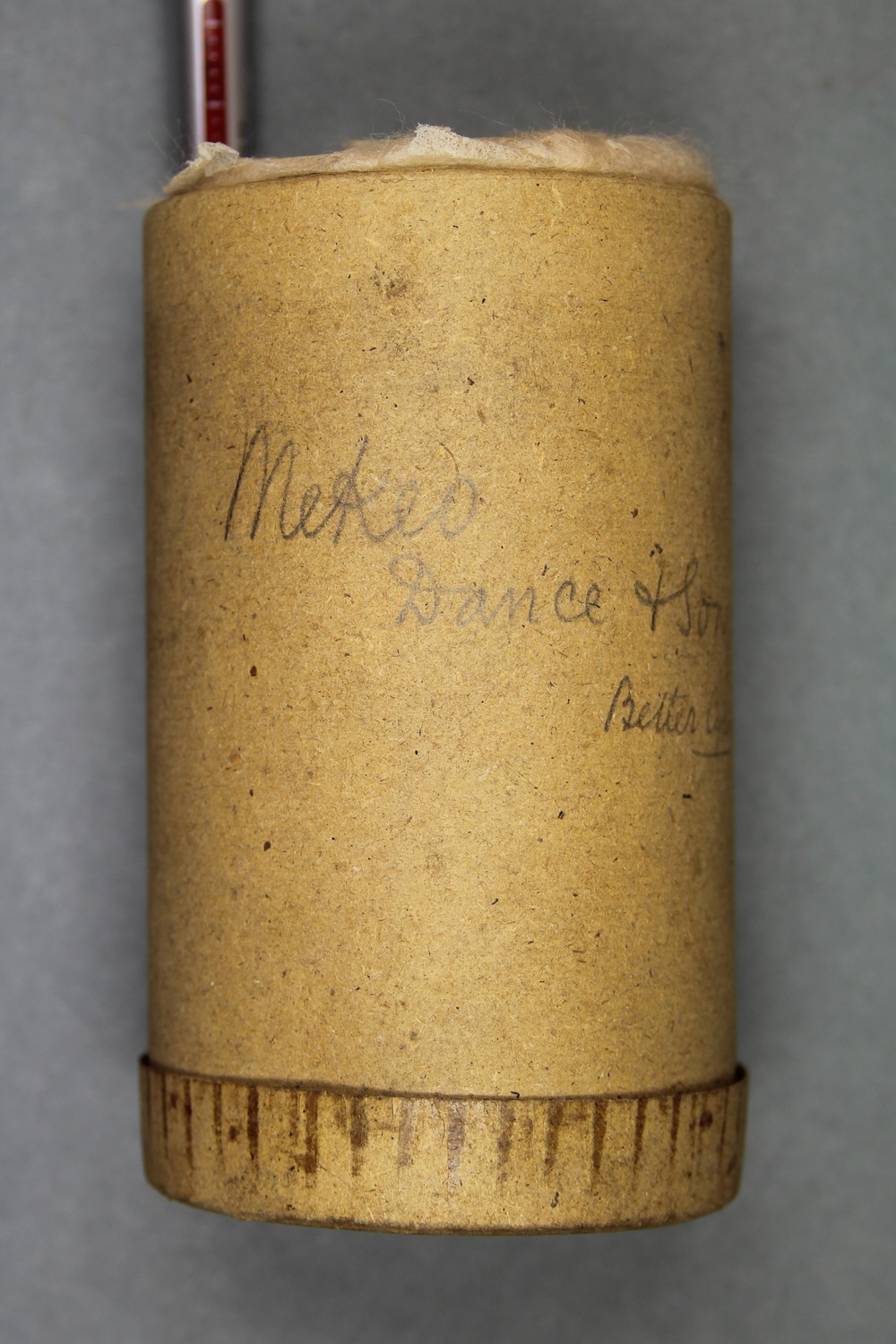 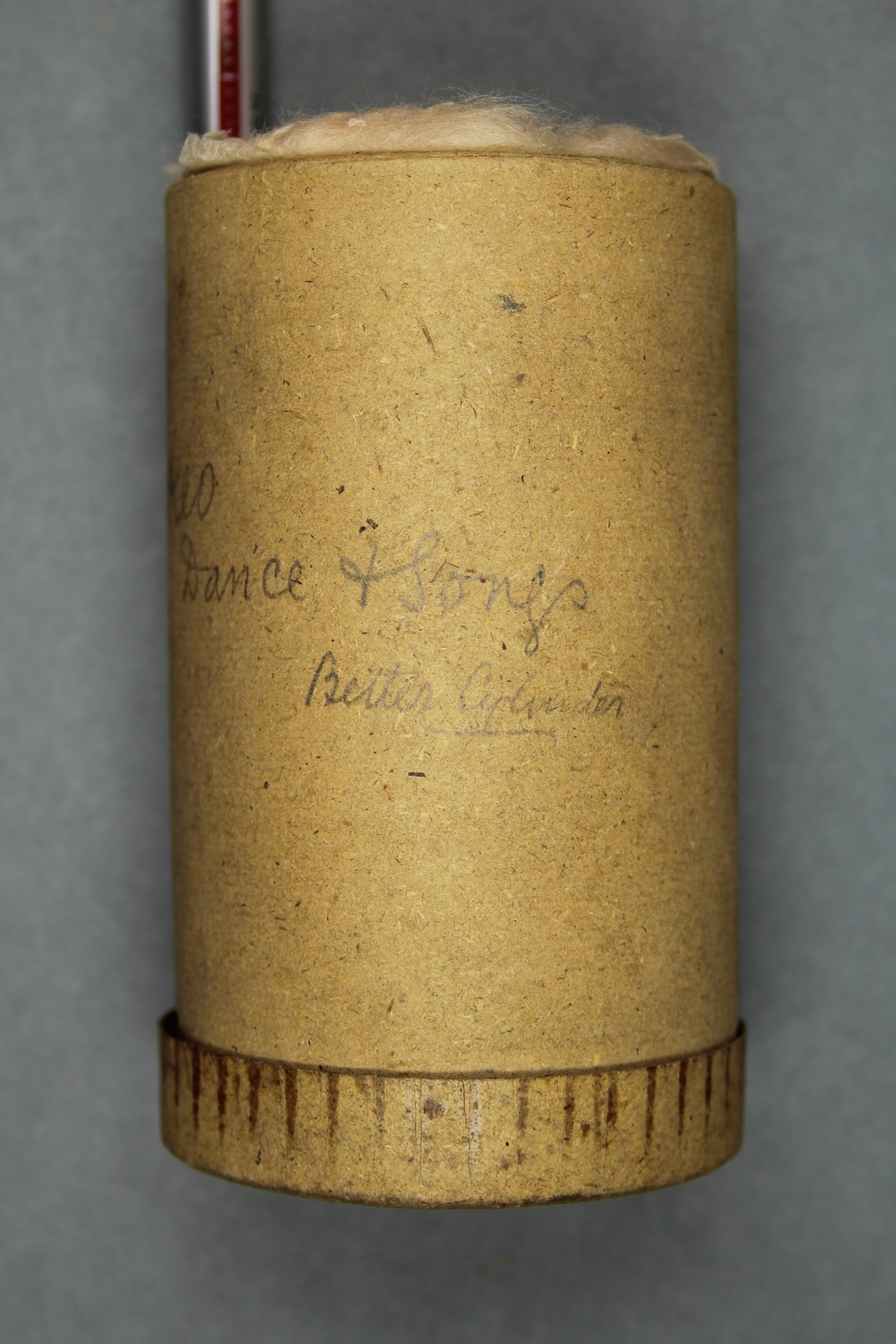    | |||||||
| C80/1478 | Roro Language | Matzu (speaker, male, chief of Mo'u) | Mohu, Central District, British New Guinea | 9 July 1898 | 1. Announcement: "Speech ...[indecipherable]... of Mon." 2. Solo male speech. 3. Indec. announcement. 4. Solo male speech. 5. "The song of the [indecipherable]. 6. Unaccompanied male vocal solo. Haddon commented that Ray had “recorded a speech by Matsu, the chief, in which he exhorted the people to make the Government road, and finished off with a hunting song. This speech sounded very fine; it begins with the customary loud clearing of the throat, and the sentences come in bursts, the intervals of silence being evidently part of the orator’s art” (Haddon 1901:268). | Reasonable quality recording. | Waima / Roro | Field recordings; Speeches | Ray, Sidney | 2'38" | Alfred Cort Haddon 1898 Expedition, British New Guinea | Light brown wax cylinder | Alfred Cort Haddon 1898 Expedition (Torres Strait and British New Guinea) Cylinder Collection | British Library | 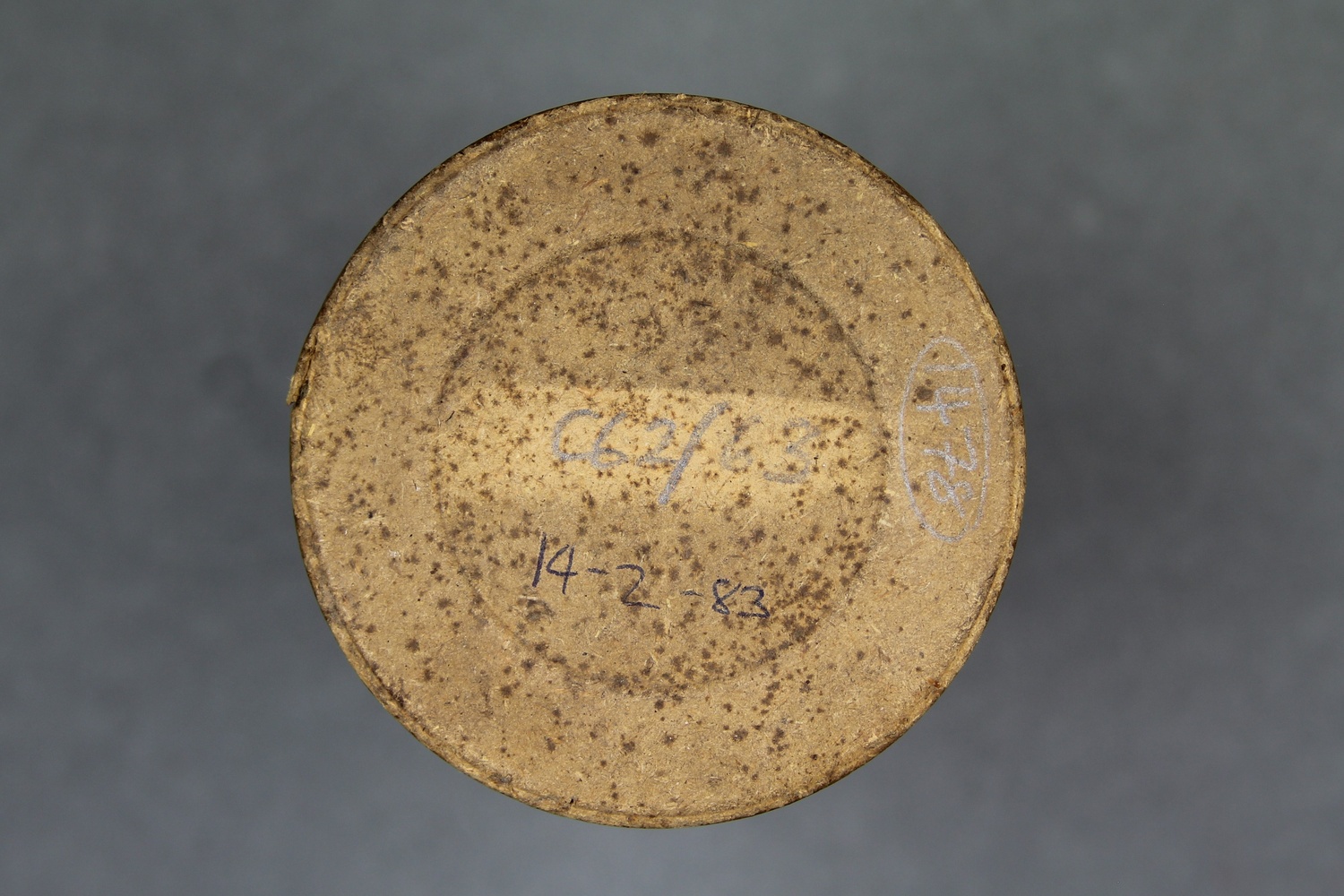      | Haddon, Alfred Cort. 1901. Head-Hunters. Black, White and Brown. London: Metheun & Co. | ||||||
| C80/1479 | Matth 5 in Motu. Read by Rev. Dr Lawes. | William Lawes (speaker) | Vatorata?, British New Guinea | 3 June 1898 – 15 June 1898 | Presumably this was Dr Lawes reading Matthew 5, the Sermon on the Mount, in Motu . | Unable to be digitised. | Motu | Field recordings; Speeches | Ray, Sidney | Alfred Cort Haddon 1898 Expedition, British New Guinea | Light brown wax cylinder | Alfred Cort Haddon 1898 Expedition (Torres Strait and British New Guinea) Cylinder Collection | British Library | 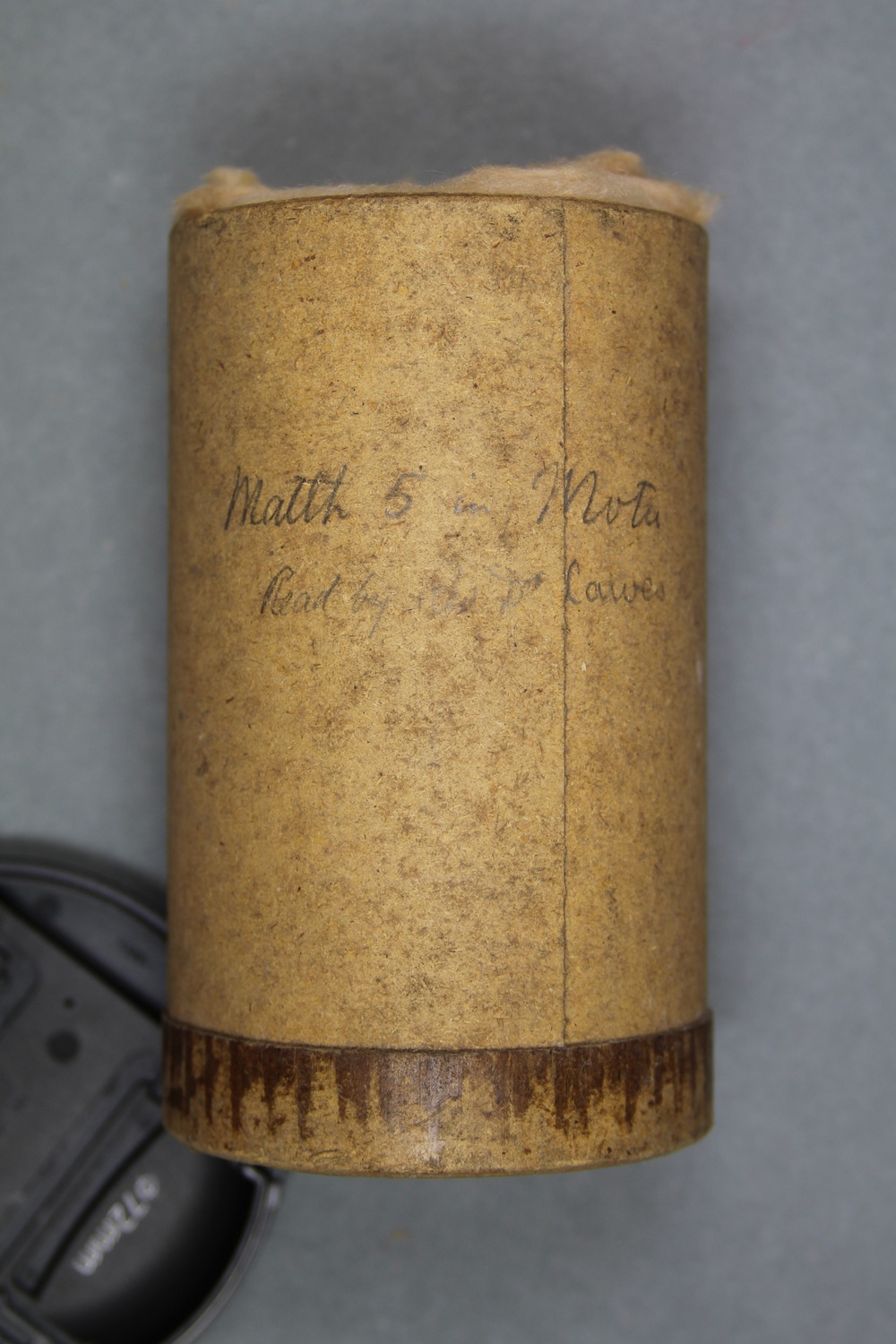      | ||||||||
| C80/1480 | Roro Hymn [2] | Unidentified (singer, male); unidentified (piano) | Roro language area, Central District, British New Guinea | 7 July 1898 – 18 July 1898 | 1. Solo male vocal, accompanied by piano. | Poor quality recording with weak signal and surface noise - improves towards end. | Waima / Roro | Field recordings; Hymns | Ray, Sidney | 1'55" | Alfred Cort Haddon 1898 Expedition, British New Guinea | Light brown wax cylinder | Alfred Cort Haddon 1898 Expedition (Torres Strait and British New Guinea) Cylinder Collection | British Library | 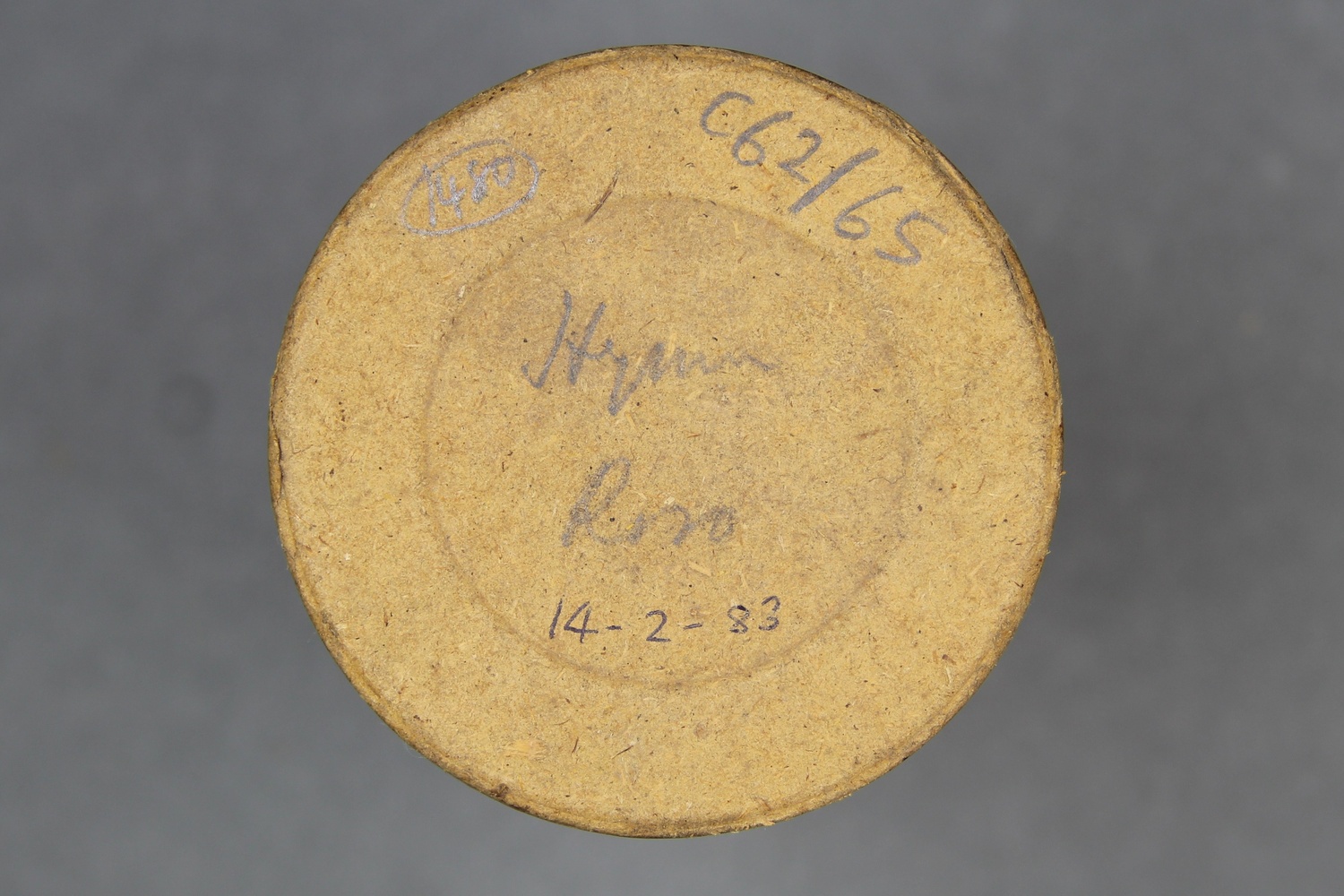 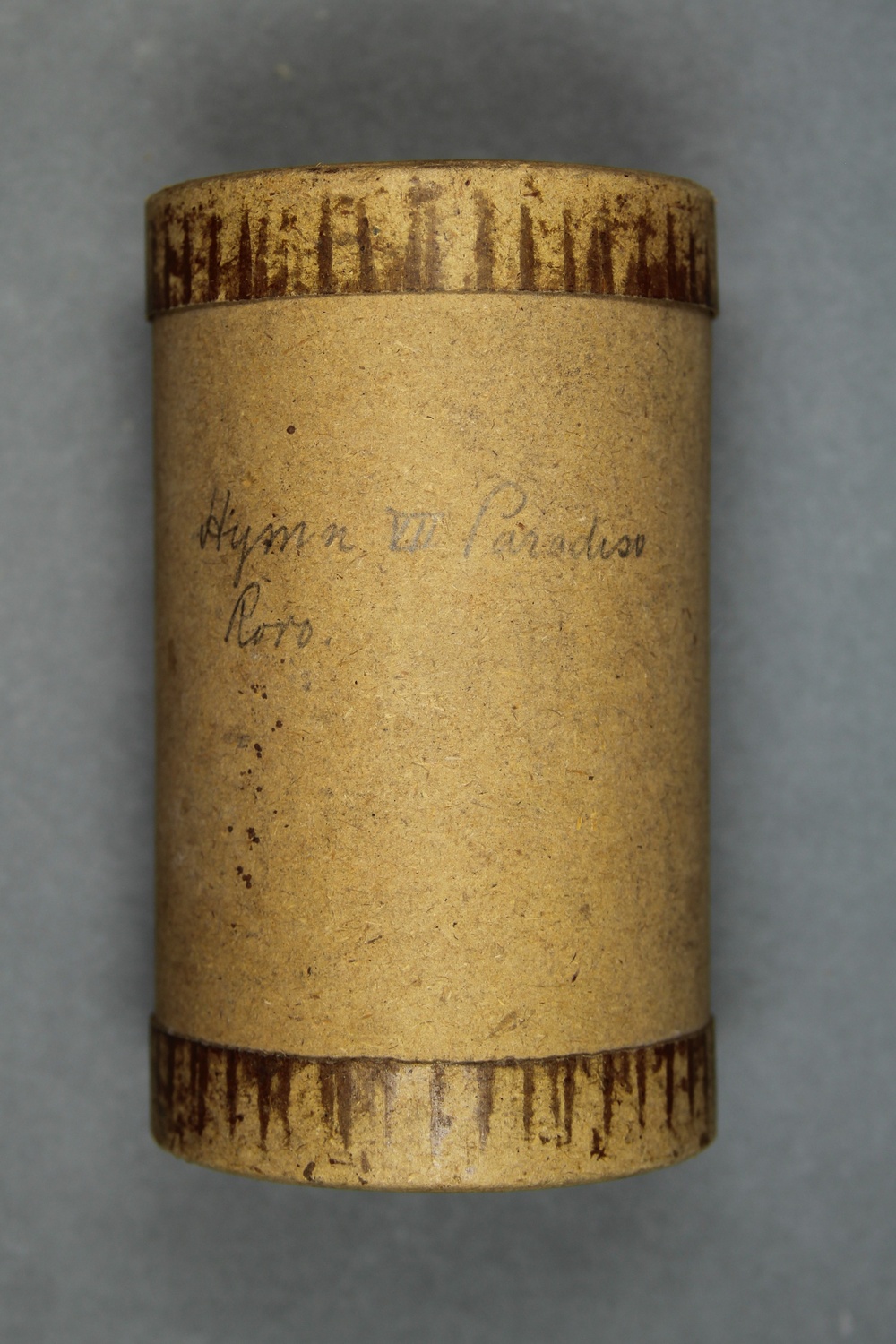     | |||||||
| C80/1481 | Lekuleku Hula | Unidentified (female chorus) | Hula, Central District, British New Guinea | 4 June 1898 – 15 June 1898 | 1. Announcement: "[indecipherable] Hula." 2-3. Unaccomapanied female vocal group. A leku was a war song according to Kolia (1975:187). | Poor quality recording with heavy surface noise and weak signal. | Hula | Field recordings; War song | Ray, Sidney | 2'30" | Alfred Cort Haddon 1898 Expedition, British New Guinea | Light brown wax cylinder | Alfred Cort Haddon 1898 Expedition (Torres Strait and British New Guinea) Cylinder Collection | British Library | 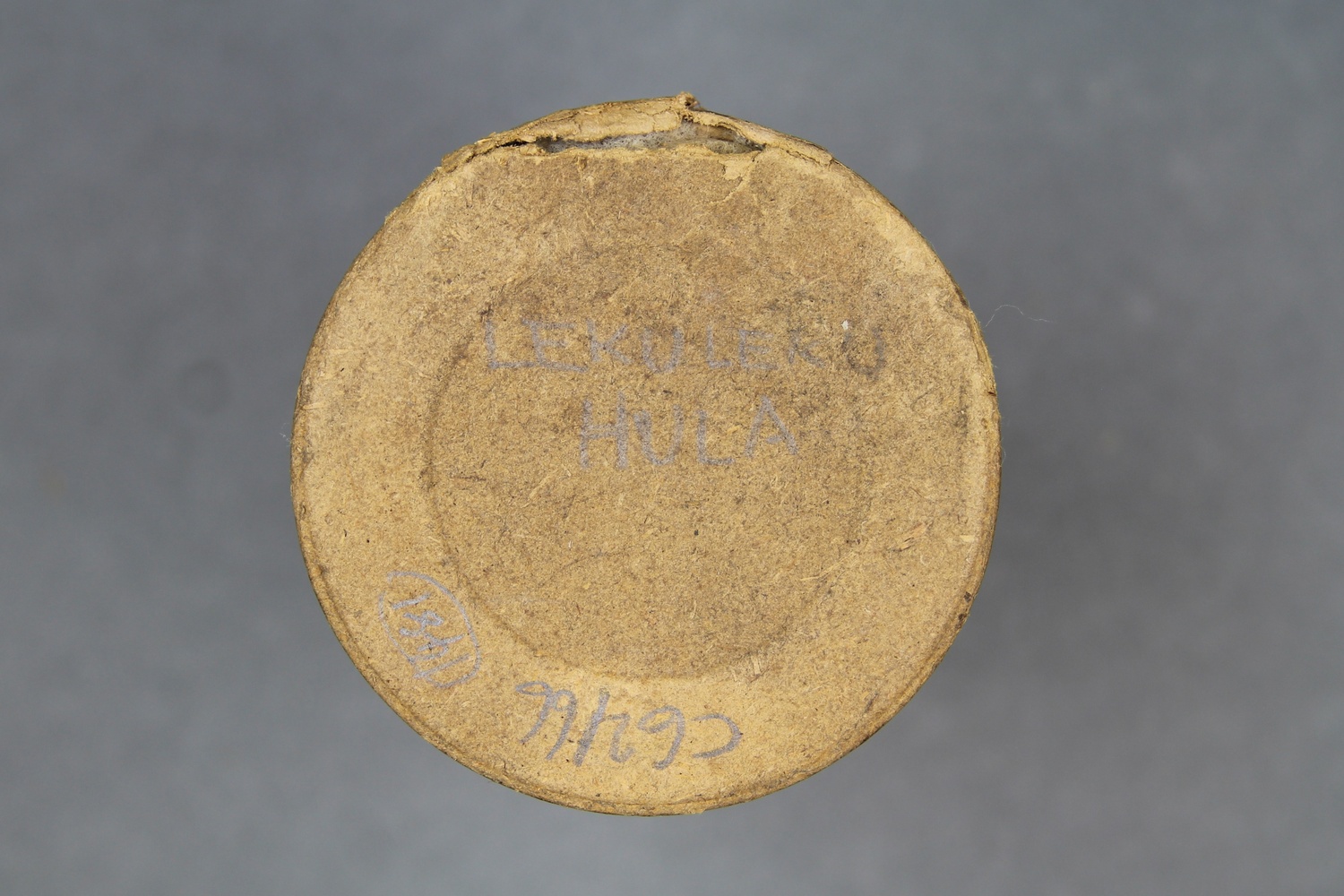 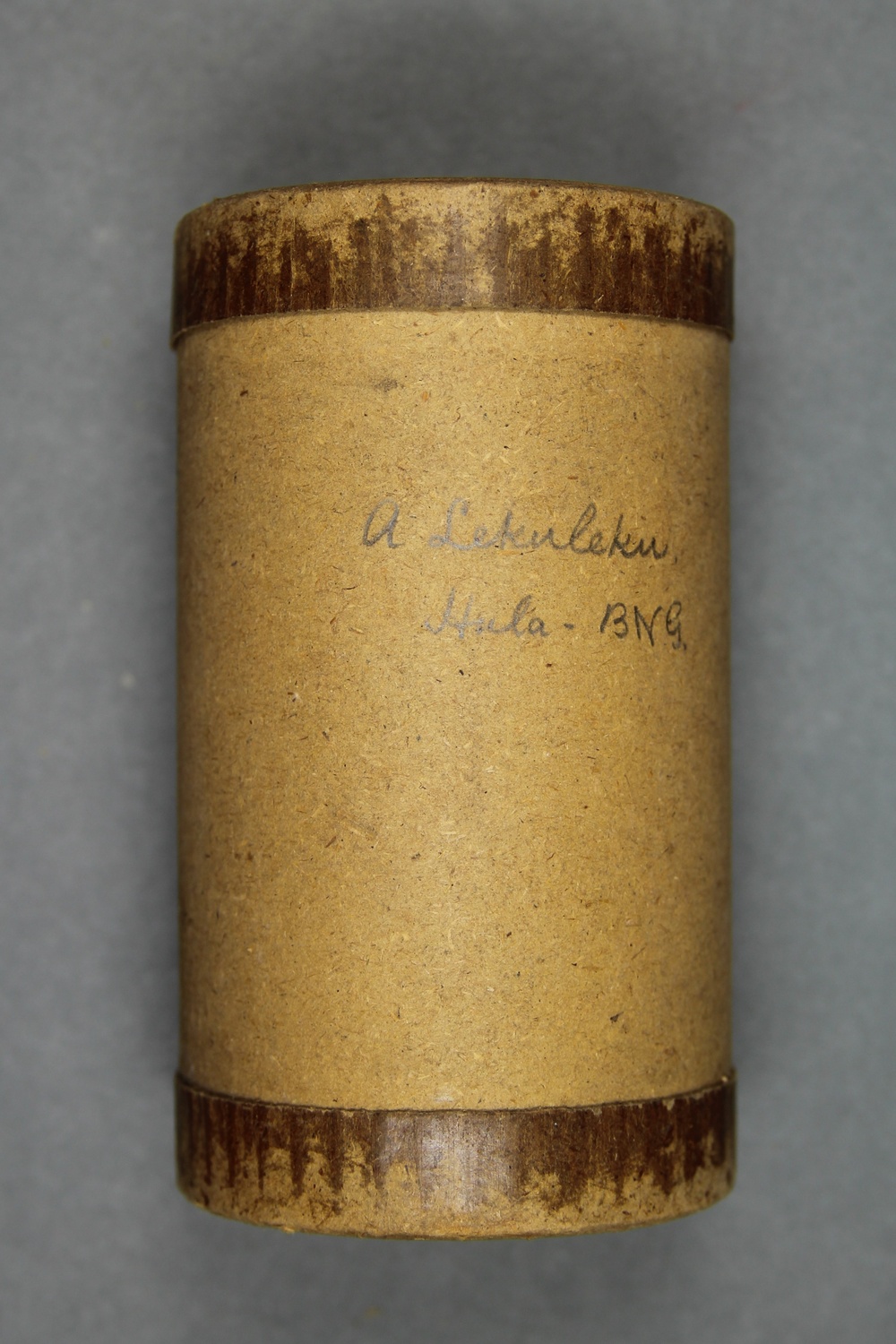     | Kolia, John. 1975. A Balawaia Grammar Sketch and Vocabulary. In Studies in Languages of Central and South-East Papua, edited by Tom E. Dutton, 107–226. Pacific Linguistics, C 19. Canberra: Australian National University. | ||||||
| C62/1491 | 15 Leku Leku Kulaa | Unidentified (chorus); unidentified (percussion) | Hula, Central District, British New Guinea | July 1904 | 1. Announcement: "Kwaipo Liku Liku, adopted and sung by the Kulaa." 2. Vocal group accompanied by drumming and clapping. | Good quality recording, although some surface noise. | Hula | Field recordings | Seligman, Charles Gabriel | 2'49" | Daniels Ethnographical Expedition to New Guinea 1904 | Light brown wax cylinder | Daniels Ethnographical Expedition to New Guinea 1904 Cylinder Collection (C62) | British Library | 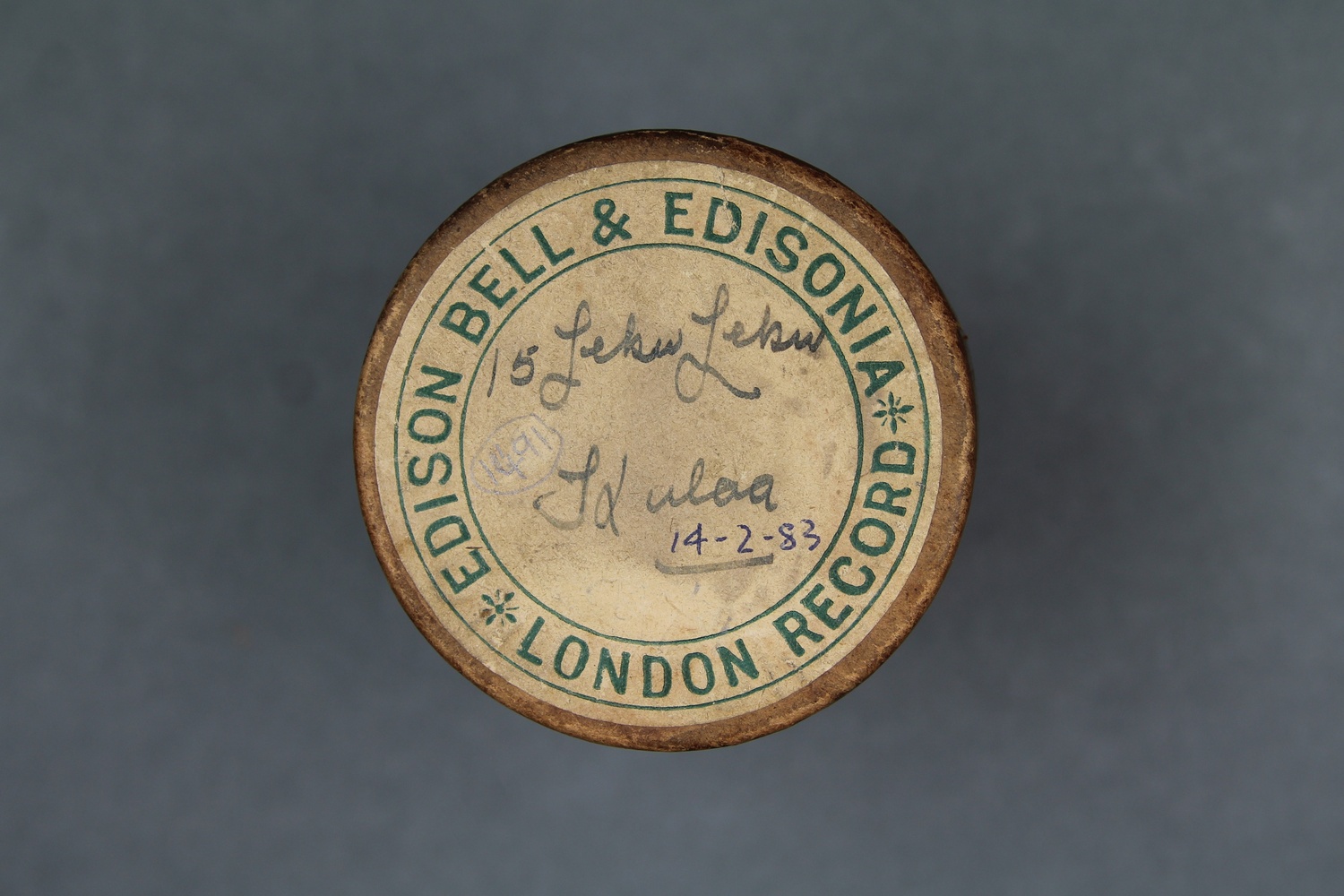      | |||||||
| C177/267 | Palu-ulen | Unidentified (male chorus) | Atchin, Malekula, New Hebrides Condominium (Vanuatu) | 28 September 1914 – 9 October 1915 | 1. Male vocal group. From Layard's fieldnotes (page 18): "wora nera, followed straight by Ias we" Notation indicates that both wora nera and las we were "sung by e she womu ni" In his fieldnotes (page 18) Layard noted that the Palu-Ulen songs were "sung by Melteg-to and Melteg-mari, Melteg-waru and Melteg-lingi together." | Reasonable quality recording. | Uripiv-Wala-Rano-Atchin | Field recordings | John Willoughby Layard, 1891-1974 | 5'39" | John Layard, 1914-1915 | Brown wax cylinder | John Layard 1914 Atchin, New Hebrides Cylinder Collection | British Library | 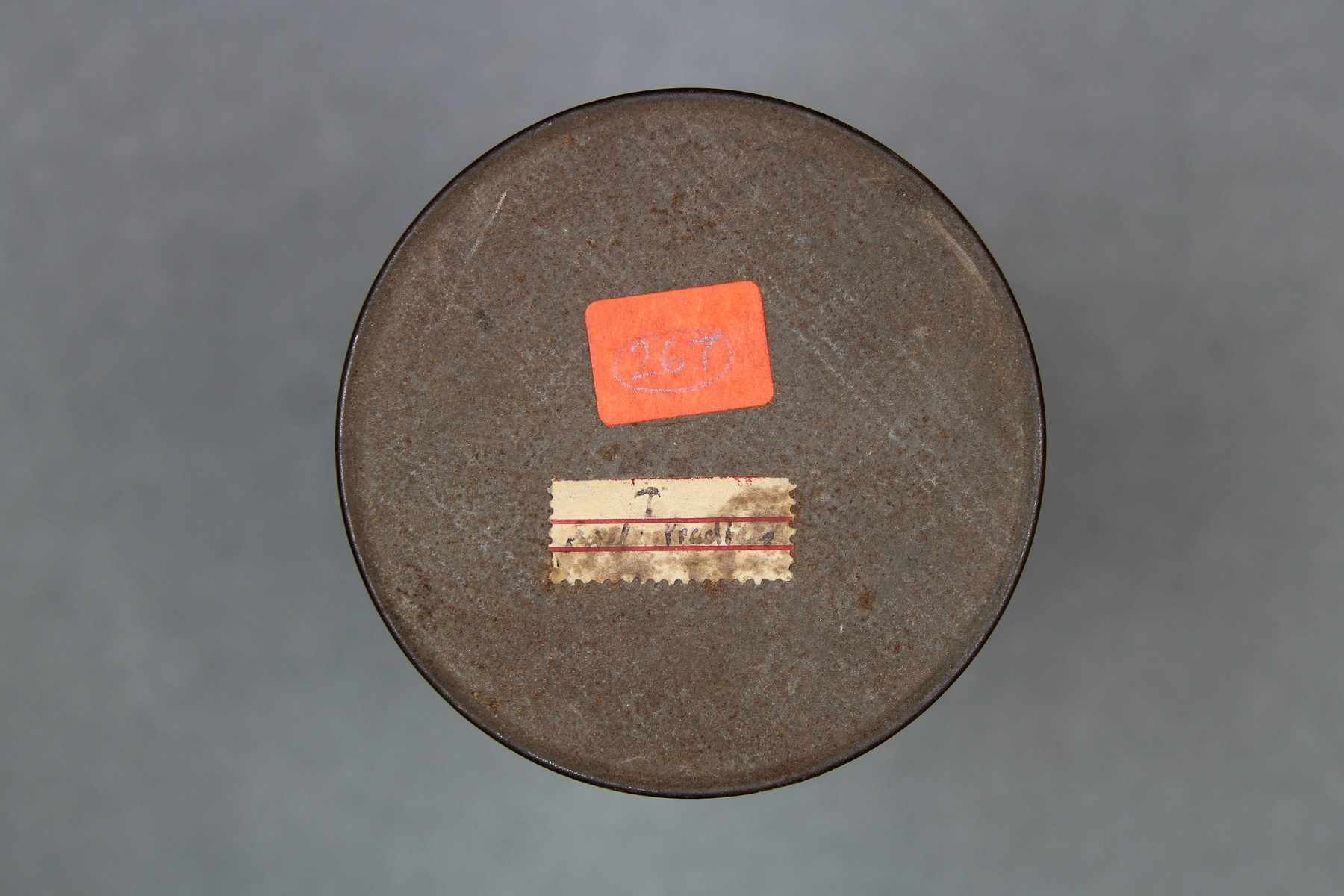 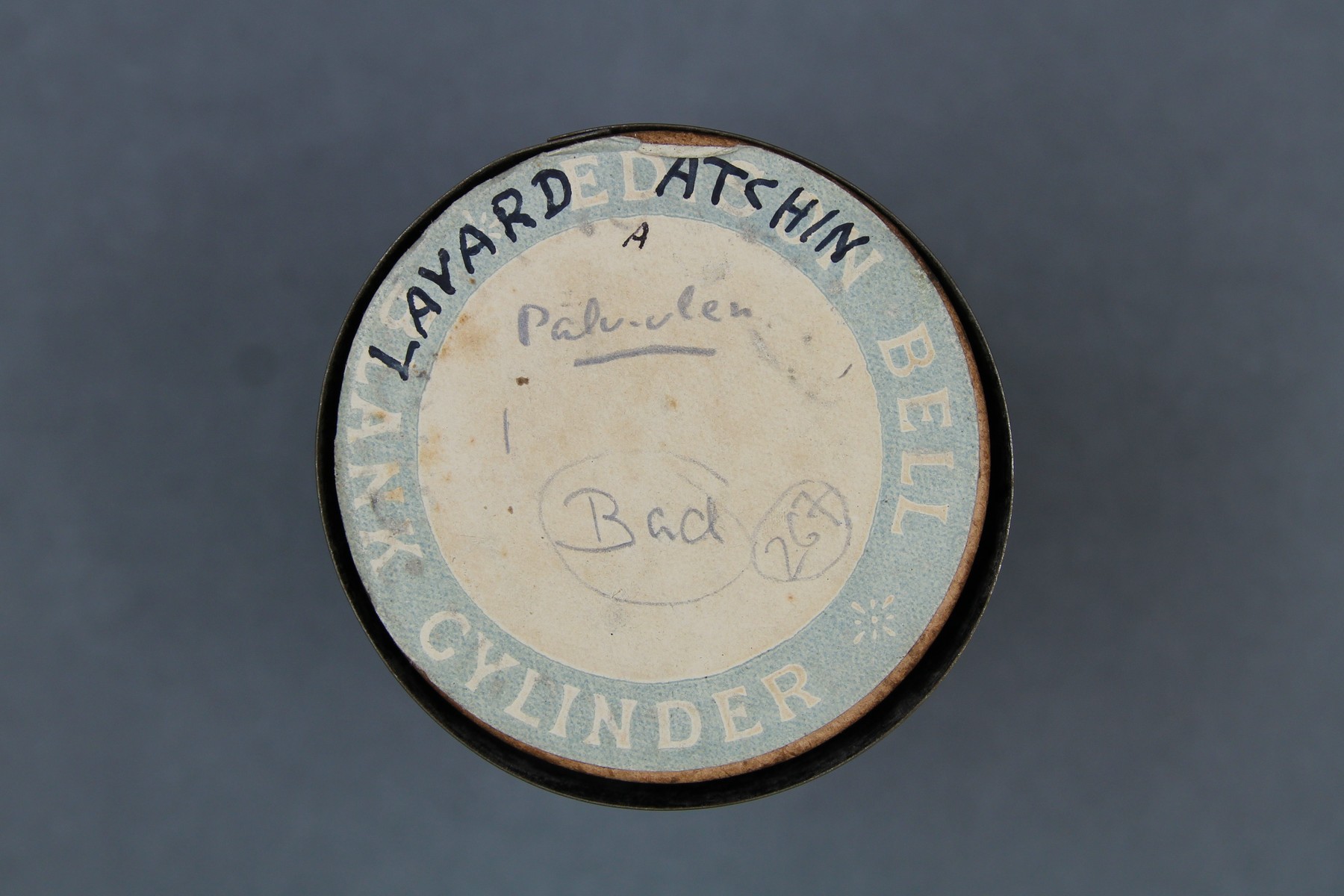     | Layard's fieldnotes are in the John Willoughby Layard papers (MSS 84) in the Special Collections & Archives of the University of California, San Diego. The music notes are compiled in a PDF titled ‘Unpublished Atchin book: “Folk Songs”: Annotated music books, with words and music, hand-written and typed notes, translations.’ from box 47, folder 8. This PDF is held by the British Library. | ||||||
| C177/268 | Male vocal group | Unidentified (male chorus) | Atchin, Malekula, New Hebrides Condominium (Vanuatu) | 28 September 1914 – 9 October 1915 | 1. Ref note followed by male vocal group. 2. Unaccompanied male vocal group. 3. Ref note followed by male vocal group. 4. Male vocal group. From Layard's fieldnotes (page 18): "Wetombara. Towiwi. Nawiri me lambe. Nawiri me lambe again. (Wetombara and Towiwi should be done twice)." Notation indicates that Wetombara, Towiwi and Nawiri were "sung by e she womu ni". In his fieldnotes (page 18) Layard noted that the Palu-Ulen songs were "sung by Melteg-to and Melteg-mari, Melteg-waru and Melteg-lingi together." | Reasonable quality recording with strong signal but some distortion. | Uripiv-Wala-Rano-Atchin | Field recordings | John Willoughby Layard, 1891-1974 | 4'19" | John Layard, 1914-1915 | Brown wax cylinder | John Layard 1914 Atchin, New Hebrides Cylinder Collection | British Library | 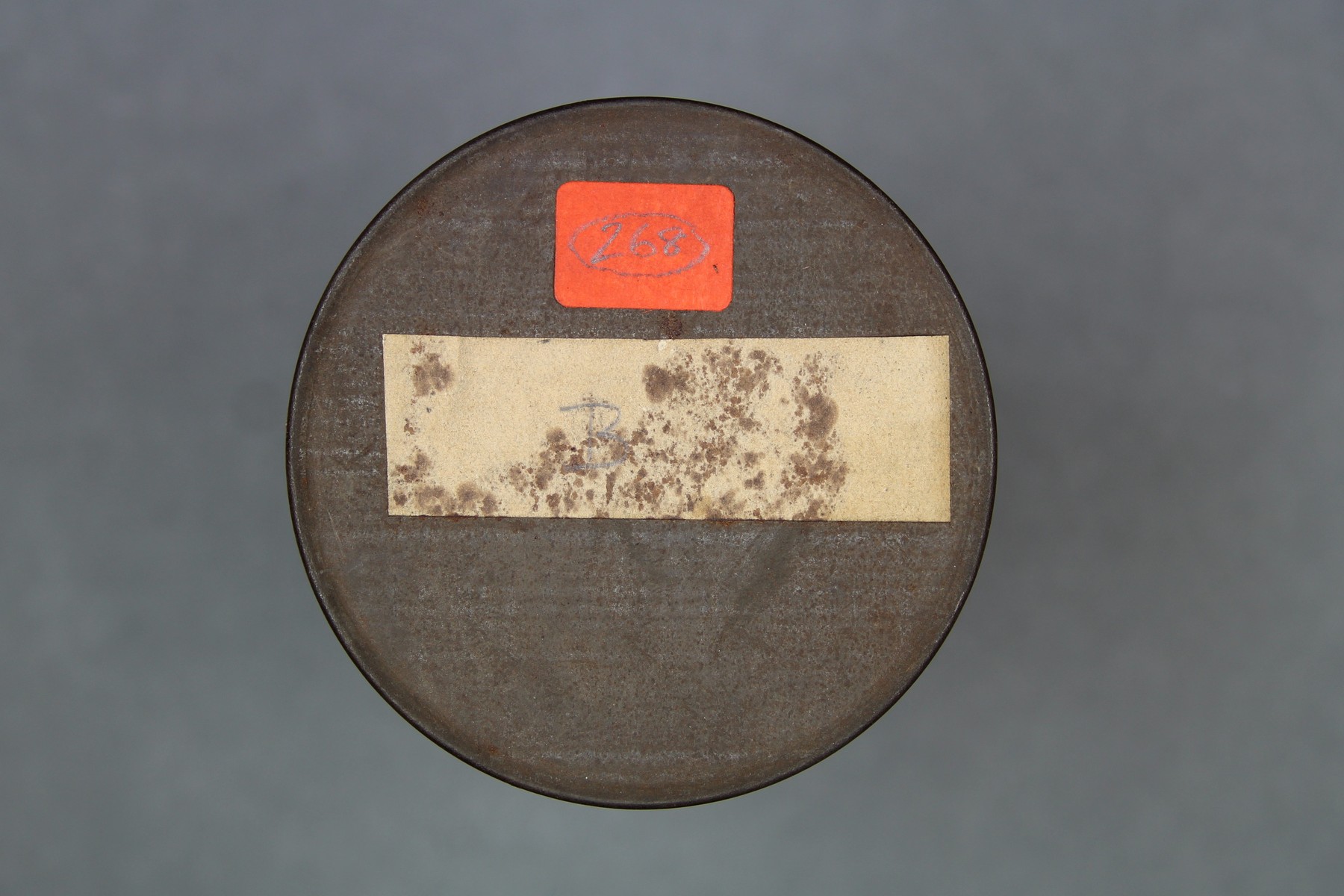 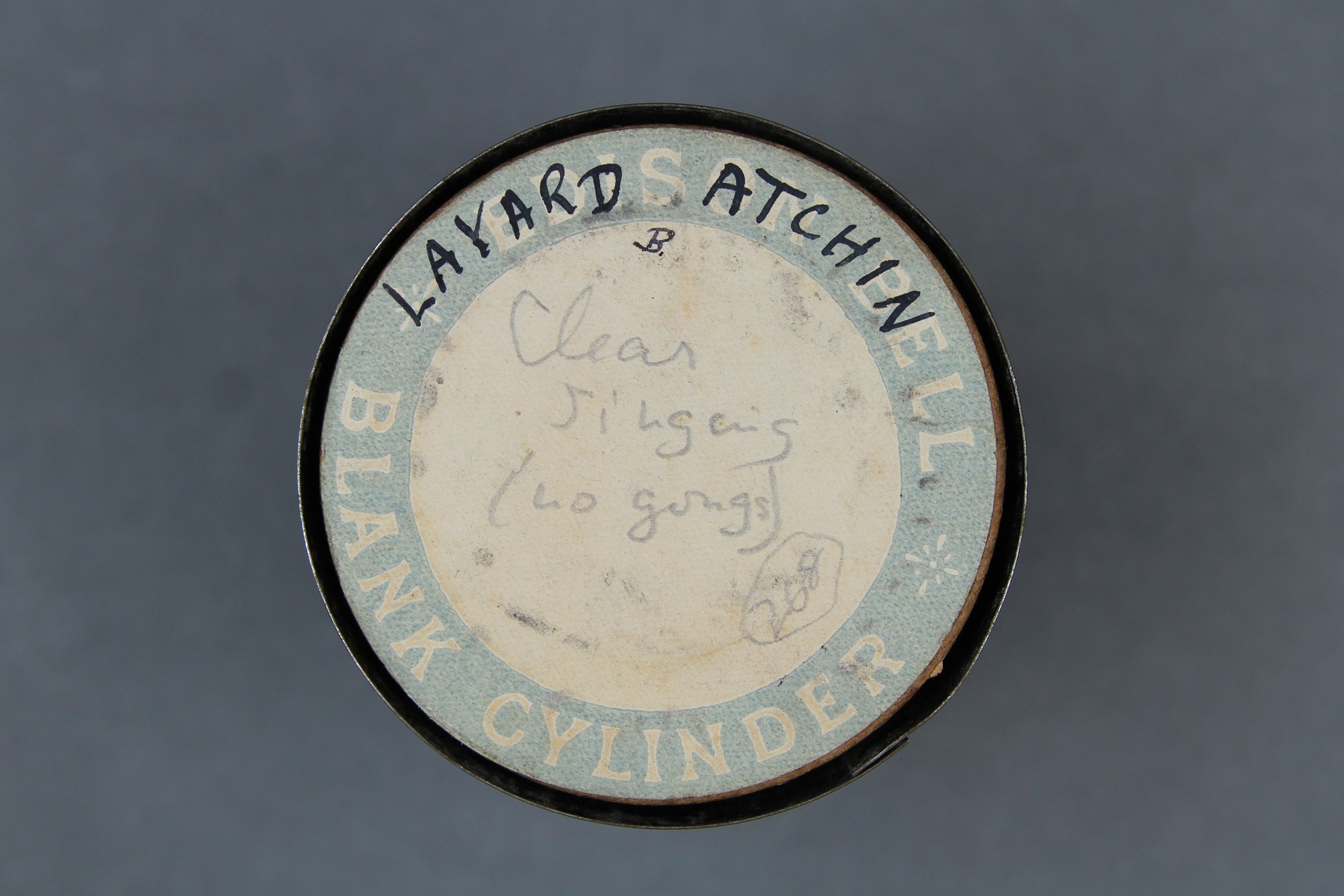     | Layard's fieldnotes are in the John Willoughby Layard papers (MSS 84) in the Special Collections & Archives of the University of California, San Diego. The music notes are compiled in a PDF titled ‘Unpublished Atchin book: “Folk Songs”: Annotated music books, with words and music, hand-written and typed notes, translations.’ from box 47, folder 8. This PDF is held by the British Library. | ||||||
| C177/269 | Male vocal group and solos [1] | Unidentified (male chorus) | Atchin, Malekula, New Hebrides Condominium (Vanuatu) | 28 September 1914 – 9 October 1915 | 1. Unaccompanied male vocal group. 2. Ref note followed by vocal group. From Layard's fieldnotes (page 18): "Neseau turelo. Nawits nororum." Notation indicates that these were "sung by e she womu ni" In his fieldnotes (page 18) Layard noted that the Palu-Ulen songs were "sung by Melteg-to and Melteg-mari, Melteg-waru and Melteg-lingi together." | Reasonable quality recording with strong signal but some distortion. | Uripiv-Wala-Rano-Atchin | Field recordings | John Willoughby Layard, 1891-1974 | 4'03" | John Layard, 1914-1915 | Brown wax cylinder | John Layard 1914 Atchin, New Hebrides Cylinder Collection | British Library | 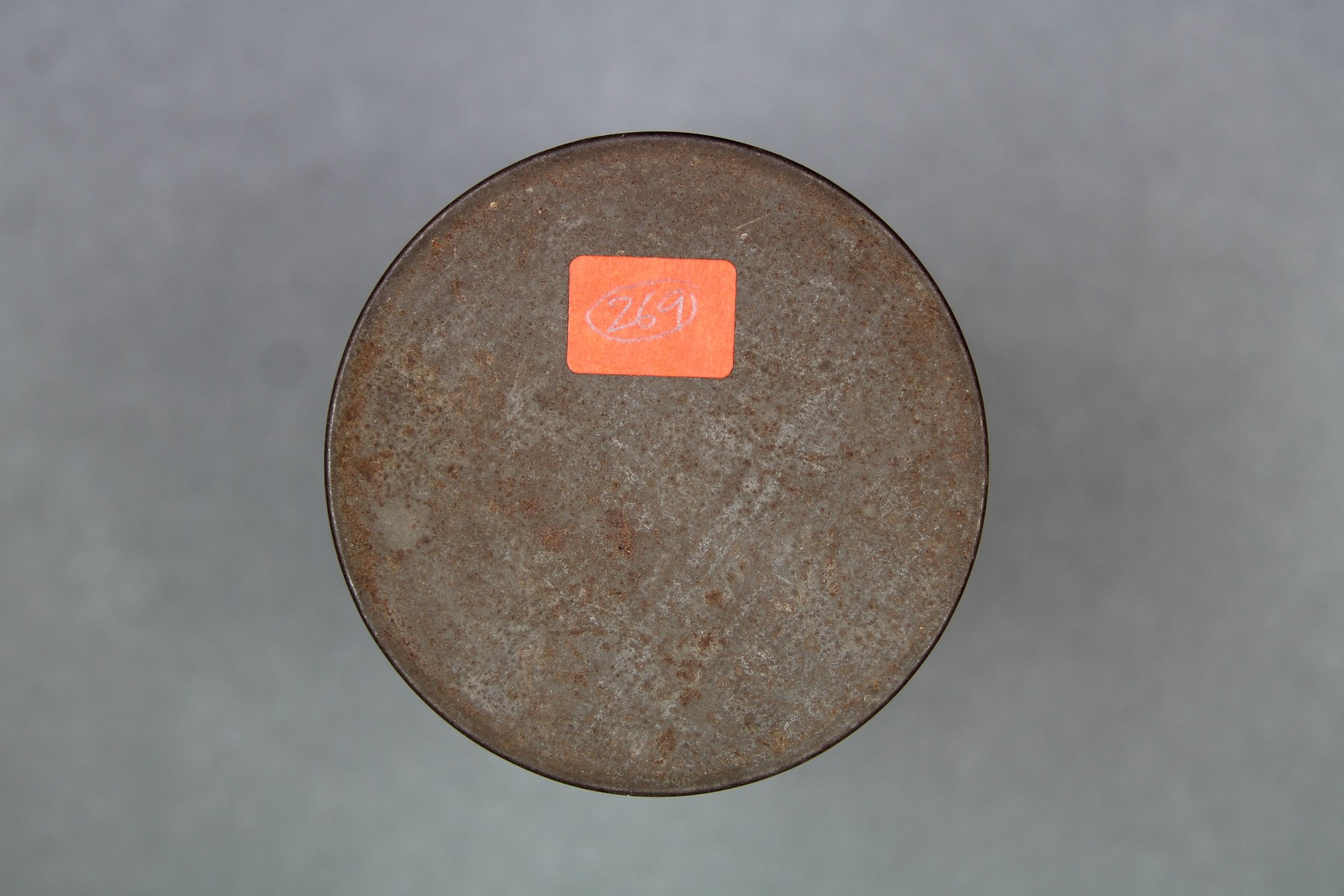 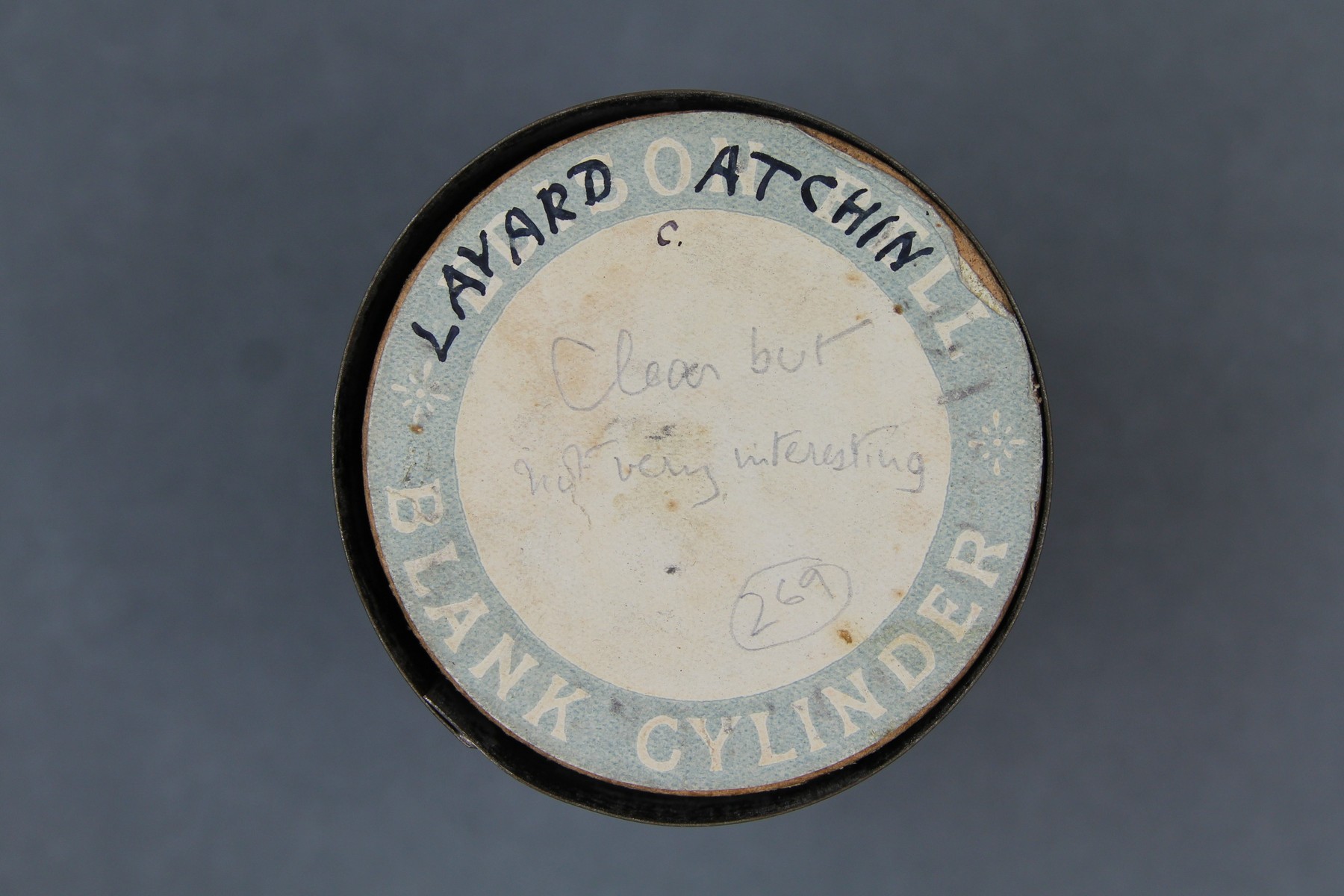     | Layard's fieldnotes are in the John Willoughby Layard papers (MSS 84) in the Special Collections & Archives of the University of California, San Diego. The music notes are compiled in a PDF titled ‘Unpublished Atchin book: “Folk Songs”: Annotated music books, with words and music, hand-written and typed notes, translations.’ from box 47, folder 8. This PDF is held by the British Library. | ||||||
| C177/270 | Male vocal group and solos [2] | Unidentified (singer, male) | Atchin, Malekula, New Hebrides Condominium (Vanuatu) | 28 September 1914 – 9 October 1915 | 1. Ref note followed by male vocal group (seemingly a continuation of C177/269). 2-4. Unaccompanied male vocal solo. From Layard's fieldnotes (page 18): "Pitseroto, pitseroto sung? (sts. through twice)" Notation indicates that these were "sung by e she womu ni" In his fieldnotes (page 18) Layard noted that the Palu-Ulen songs were "sung by Melteg-to and Melteg-mari, Melteg-waru and Melteg-lingi together." | Reasonable quality recording with strong signal but some distortion. | Uripiv-Wala-Rano-Atchin | Field recordings | John Willoughby Layard, 1891-1974 | 4'30" | John Layard, 1914-1915 | Brown wax cylinder | John Layard 1914 Atchin, New Hebrides Cylinder Collection | British Library | 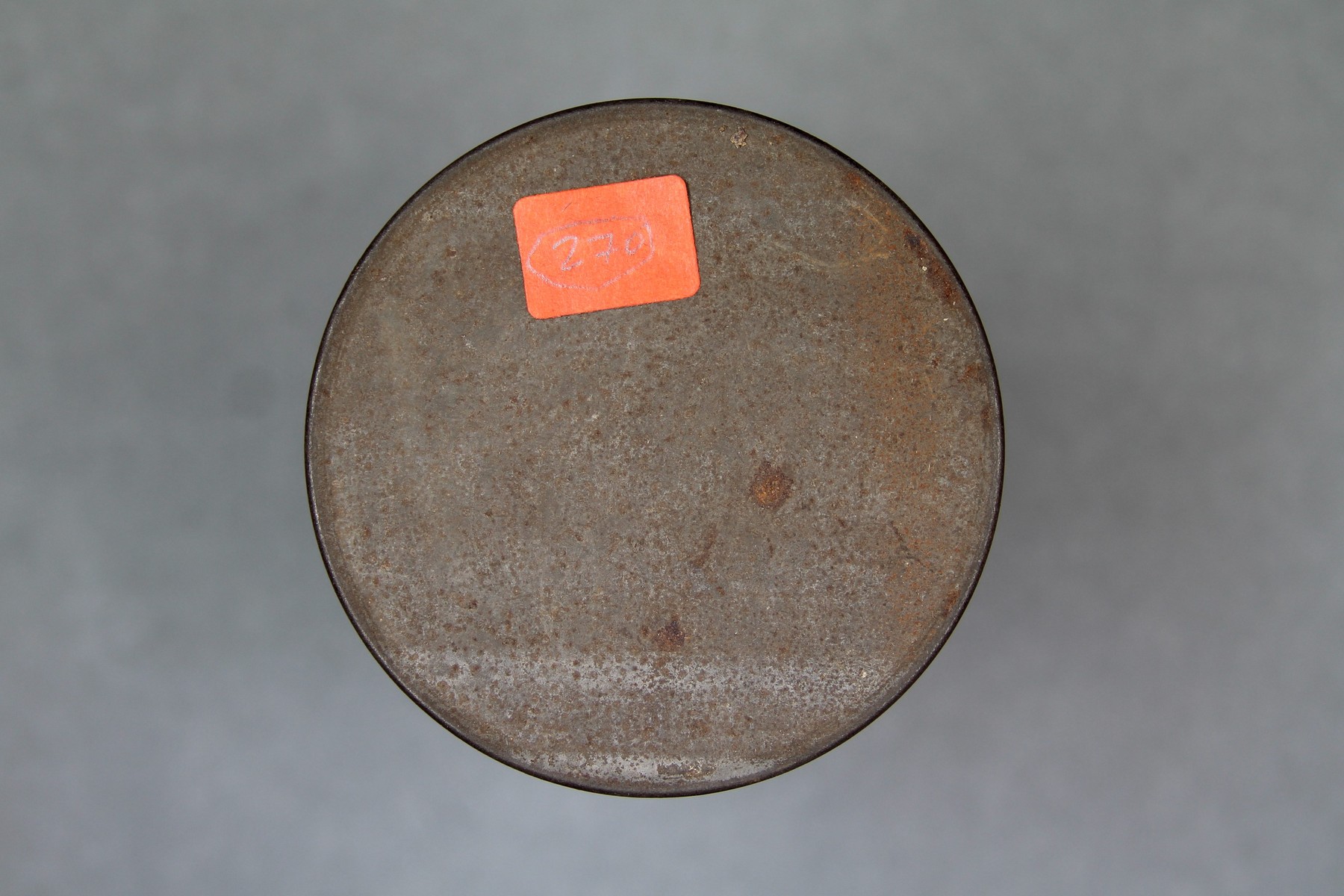 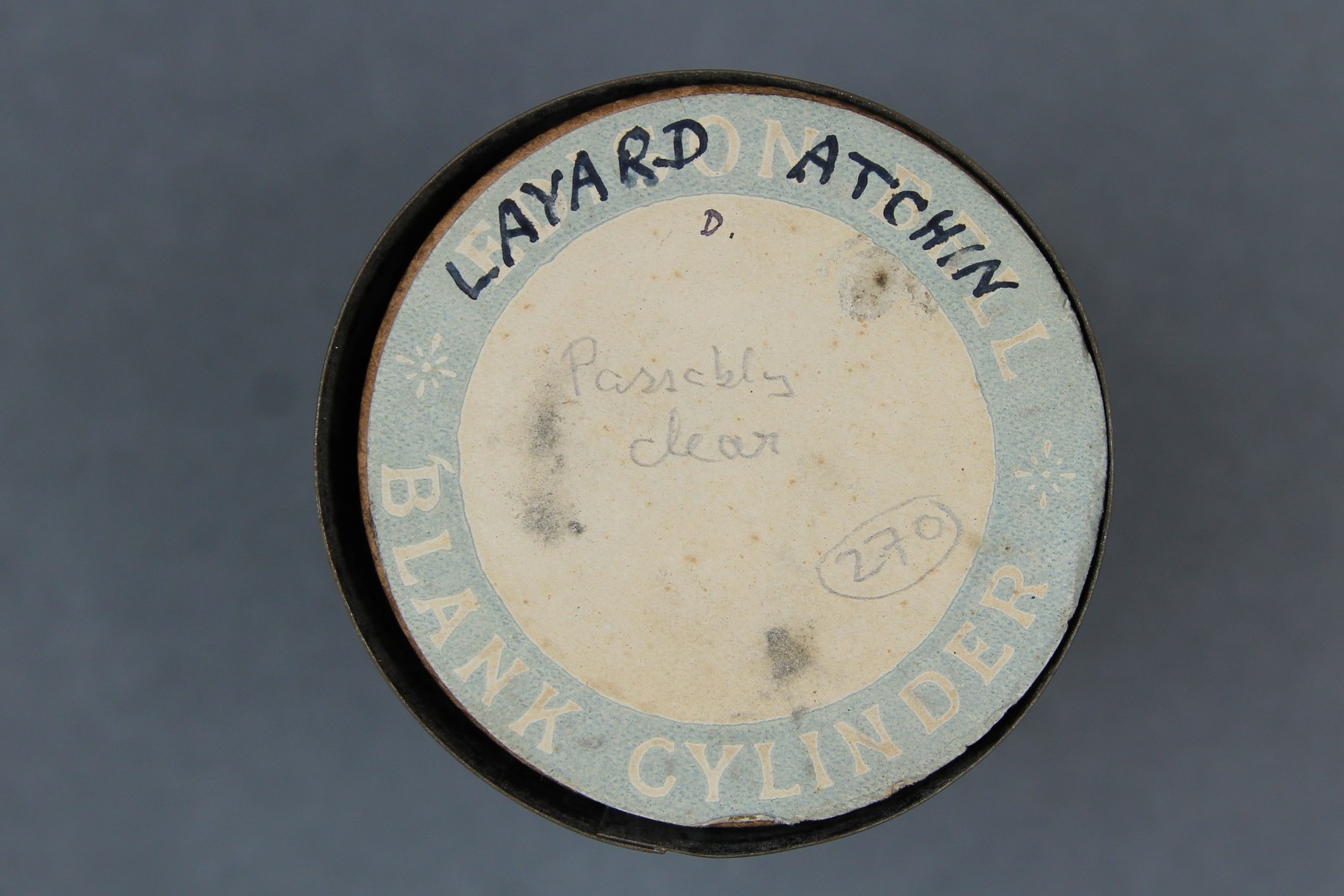     | Layard's fieldnotes are in the John Willoughby Layard papers (MSS 84) in the Special Collections & Archives of the University of California, San Diego. The music notes are compiled in a PDF titled ‘Unpublished Atchin book: “Folk Songs”: Annotated music books, with words and music, hand-written and typed notes, translations.’ from box 47, folder 8. This PDF is held by the British Library. | ||||||
| C177/271 | Palu-ulen songs | Unidentified (male chorus) | Atchin, Malekula, New Hebrides Condominium (Vanuatu) | 28 September 1914 – 9 October 1915 | 1-2. Unaccompanied male vocal group. In his fieldnotes (page 18) Layard noted that the Palu-Ulen songs were "sung by Melteg-to and Melteg-mari, Melteg-waru and Melteg-lingi together." | Reasonable quality recording. | Uripiv-Wala-Rano-Atchin | Field recordings | John Willoughby Layard, 1891-1974 | 5'01" | John Layard, 1914-1915 | Brown wax cylinder | John Layard 1914 Atchin, New Hebrides Cylinder Collection | British Library | 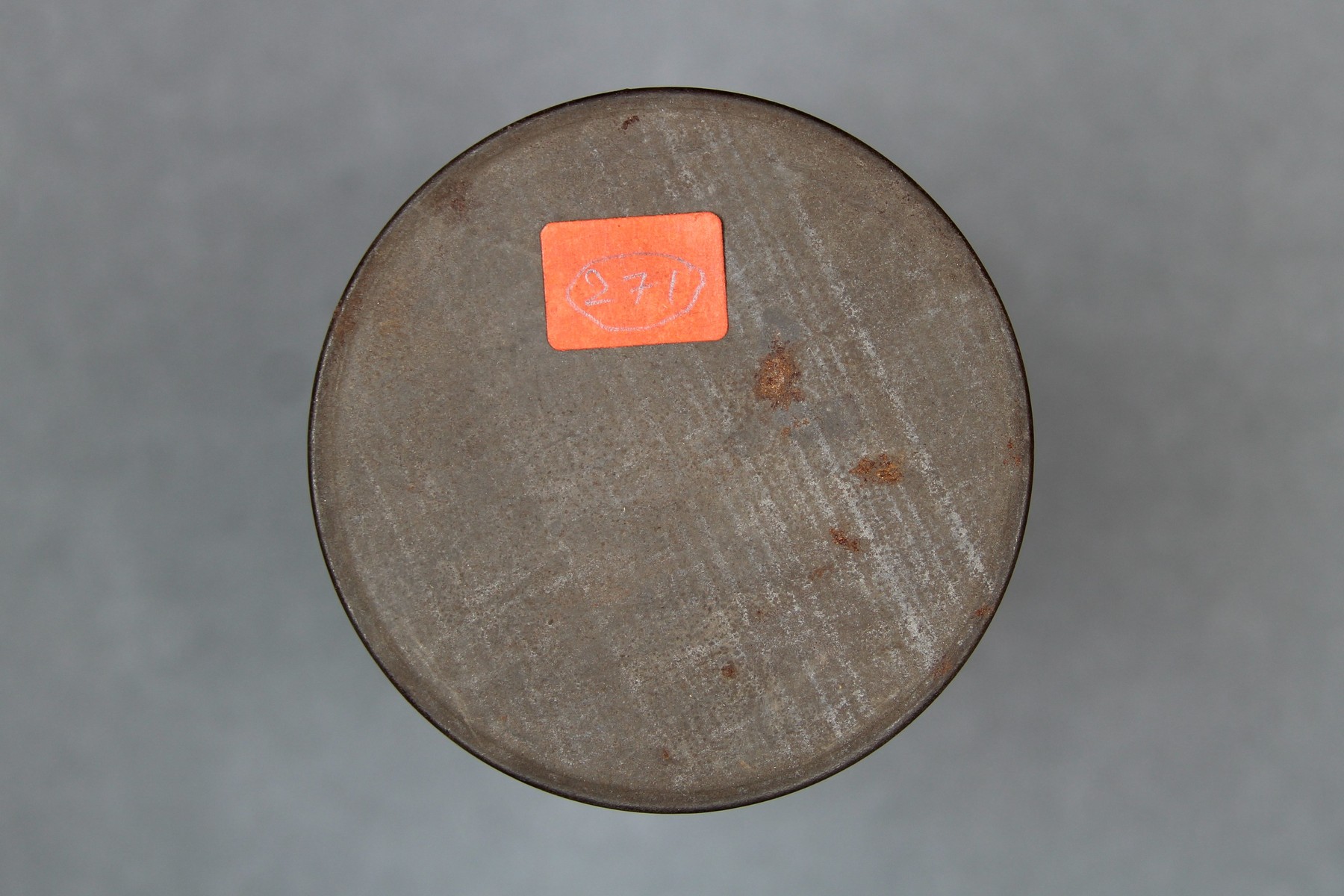      | Layard's fieldnotes are in the John Willoughby Layard papers (MSS 84) in the Special Collections & Archives of the University of California, San Diego. The music notes are compiled in a PDF titled ‘Unpublished Atchin book: “Folk Songs”: Annotated music books, with words and music, hand-written and typed notes, translations.’ from box 47, folder 8. This PDF is held by the British Library. | ||||||
| C177/272 | Songs of Durenambwe / sung by Meldektaus (Olep) | Meldektaus (singer, male) | Atchin, Malekula, New Hebrides Condominium (Vanuatu) | 28 September 1914 – 9 October 1915 | 1-5. Unaccompanied male vocal solo - recording technician noted "track 3 is the 'failure'". Song – Song – Failure / – Song – Continuation / of last song. From Layard's fieldnotes (page 104): “Songs of Durei-na-mbwe sung by Melteg-taus (of Olep) III Song -- Song -- Failure Song -- Continuation of last song” | Reasonable quality recording. | Uripiv-Wala-Rano-Atchin | Field recordings | John Willoughby Layard, 1891-1974 | 4'13" | John Layard, 1914-1915 | Brown wax cylinder | John Layard 1914 Atchin, New Hebrides Cylinder Collection | British Library | 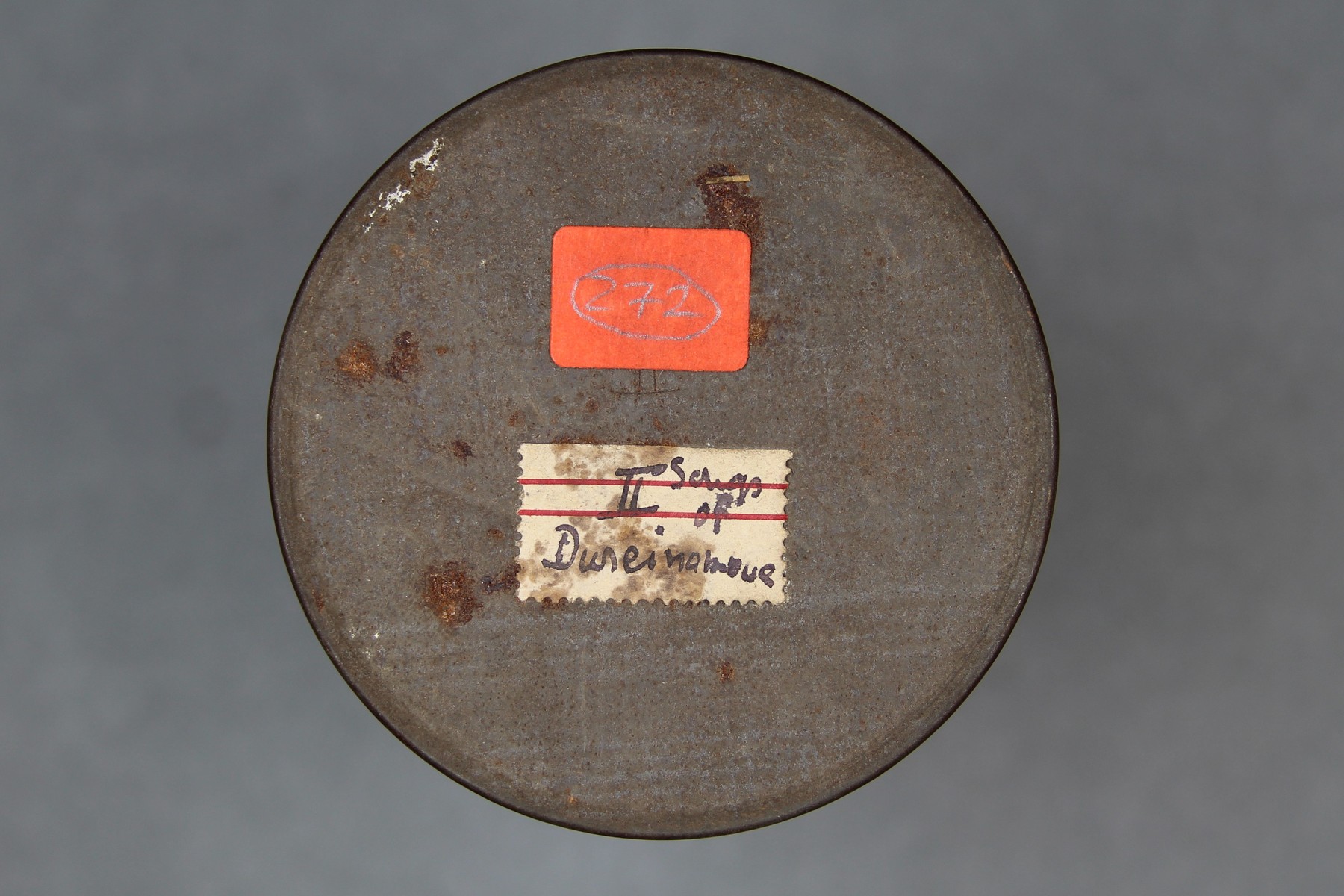 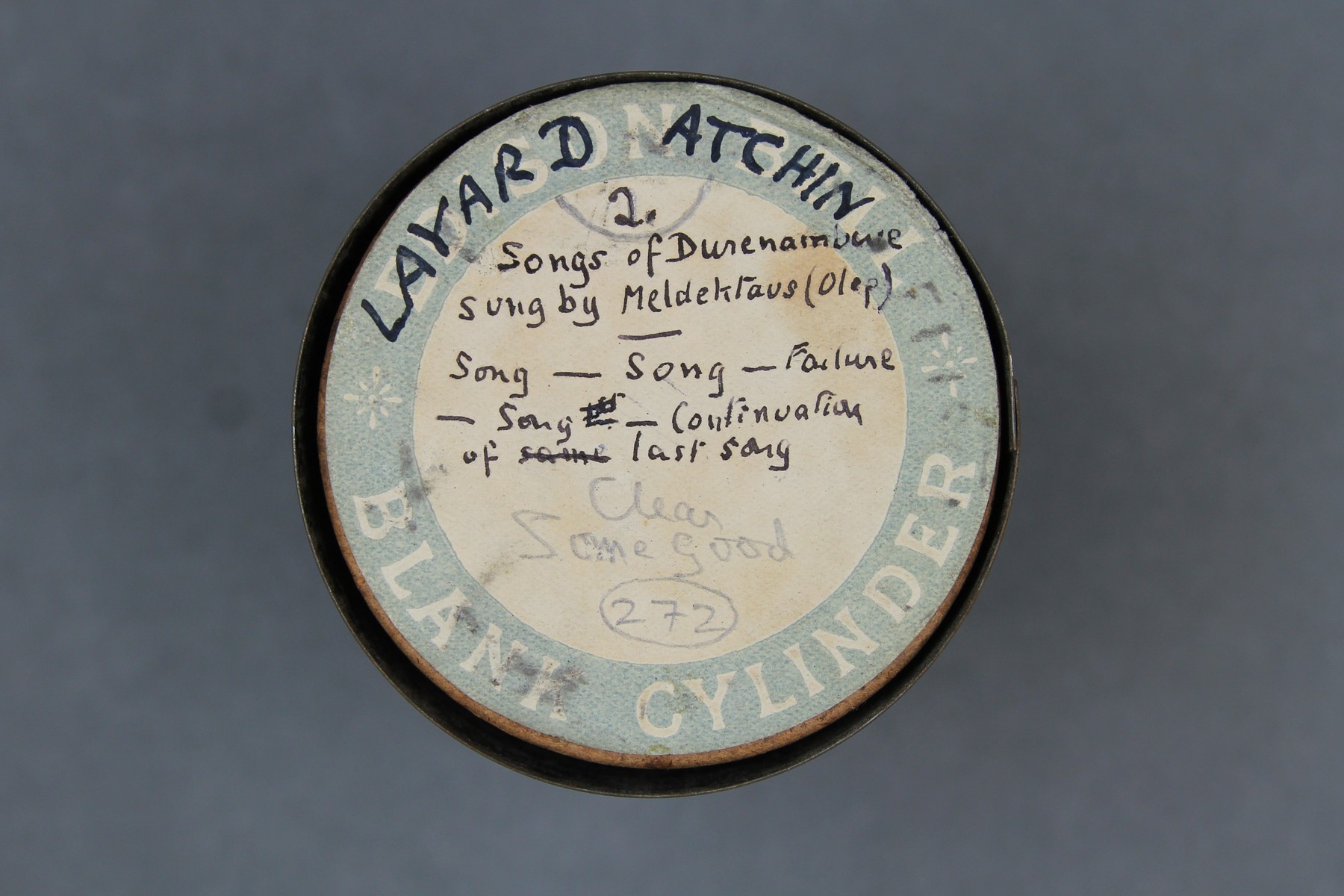     | Layard's fieldnotes are in the John Willoughby Layard papers (MSS 84) in the Special Collections & Archives of the University of California, San Diego. The music notes are compiled in a PDF titled ‘Unpublished Atchin book: “Folk Songs”: Annotated music books, with words and music, hand-written and typed notes, translations.’ from box 47, folder 8. This PDF is held by the British Library. | ||||||
| C177/273 | Songs from Welewelen | Unidentified (mixed chorus); unidentified (percussion) | Atchin, Malekula, New Hebrides Condominium (Vanuatu) | 28 September 1914 – 9 October 1915 | 1-4. Mixed vocal group accompanied by percussion. Songs from Welewelen / "dance along boat" / Olep & Pwetertsüs dancing / at Emil Parav. From Layard's fieldnotes (page 104): “Songs from WELEWELEN, “Boat consecration” Olep and Pweter-tsuts dancing at Emil Parav.” | Reasonable quality recording but weak signal and some surface noise due to cracked and bandaged cylinder. | Uripiv-Wala-Rano-Atchin | Field recordings | John Willoughby Layard, 1891-1974 | 4'46" | John Layard, 1914-1915 | Brown wax cylinder | John Layard 1914 Atchin, New Hebrides Cylinder Collection | British Library | 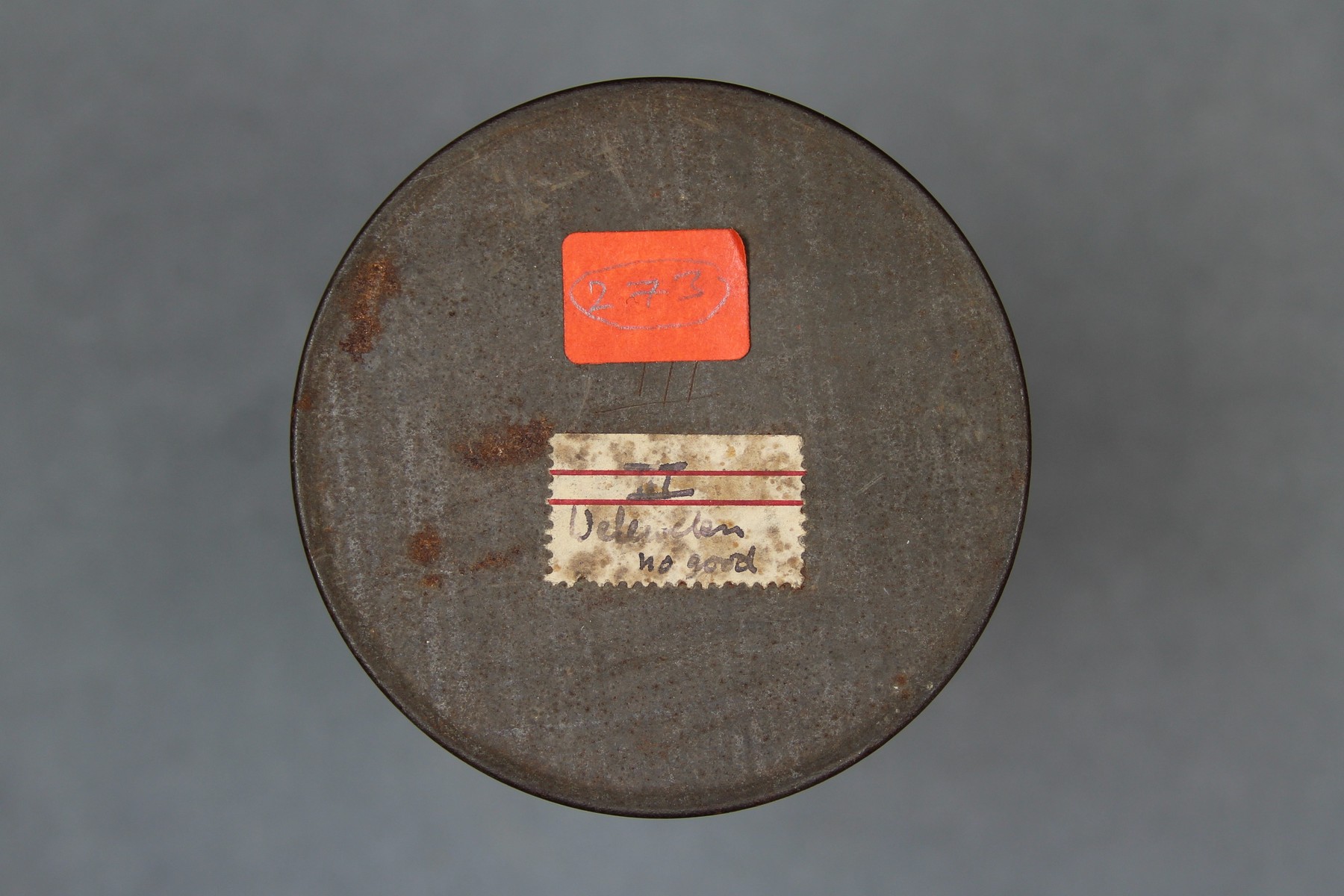      | Layard's fieldnotes are in the John Willoughby Layard papers (MSS 84) in the Special Collections & Archives of the University of California, San Diego. The music notes are compiled in a PDF titled ‘Unpublished Atchin book: “Folk Songs”: Annotated music books, with words and music, hand-written and typed notes, translations.’ from box 47, folder 8. This PDF is held by the British Library. | ||||||
| C177/274 | Songs in honour of Meldeksale | Unidentified (singer, male) | Atchin, Malekula, New Hebrides Condominium (Vanuatu) | 28 September 1914 – 9 October 1915 | 1-2. Unaccompanied male vocal solo. 1) Meldeksale songs / 2) Meldekwasengawül / (broken in middle). From Layard's fieldnotes (page 104): “Songs in honour of Melteg-sale (Fieldnote p.212) 1. Melteg-sale-ronge 2. Melteg-wa-sangawül (broken in middle)” | Reasonable quality recording but with deep rumble throughout. | Uripiv-Wala-Rano-Atchin | Field recordings | John Willoughby Layard, 1891-1974 | 8'00" | John Layard, 1914-1915 | Brown wax cylinder | John Layard 1914 Atchin, New Hebrides Cylinder Collection | British Library |       | Layard's fieldnotes are in the John Willoughby Layard papers (MSS 84) in the Special Collections & Archives of the University of California, San Diego. The music notes are compiled in a PDF titled ‘Unpublished Atchin book: “Folk Songs”: Annotated music books, with words and music, hand-written and typed notes, translations.’ from box 47, folder 8. This PDF is held by the British Library. | ||||||
| C177/275 | Tunes on Nambu marur | Meltektaus (pipes); Melteris (pipes); Meldeksongurei (pipes) | Atchin, Malekula, New Hebrides Condominium (Vanuatu) | 28 September 1914 – 9 October 1915 | 1-4. Ref note followed by musical instrument. Recording technician noted "some kind of very breathy aerophone". 1.) Dureinambwe, played by Meltektaus / 2.) Welalen, p. by Melteris / 3.) Naleng nato, / 4.) Selven (bilong Maki) / 3 & 4 played by / Meldeksongurei. From Layard's fieldnotes (page 104): "Tunes on Na-mbu marur (open pipes) 1. Durei-na-mbwe, played by Melteg-taus. VI 2. Welalen, played by Mal-teres. 3. Na-leng Na-to, played by Melteg-tsung-wurei. 4. Seluen (belong Maki), " " " " ." Nambu Marur – na-mbu\marur ‘open musical pipes’ (Capell and Layard 1980:119)". | Reasonable quality recording but with very weak signal and surface noise. | Uripiv-Wala-Rano-Atchin | Field recordings | John Willoughby Layard, 1891-1974 | 5'54" | John Layard, 1914-1915 | Brown wax cylinder | John Layard 1914 Atchin, New Hebrides Cylinder Collection | British Library | 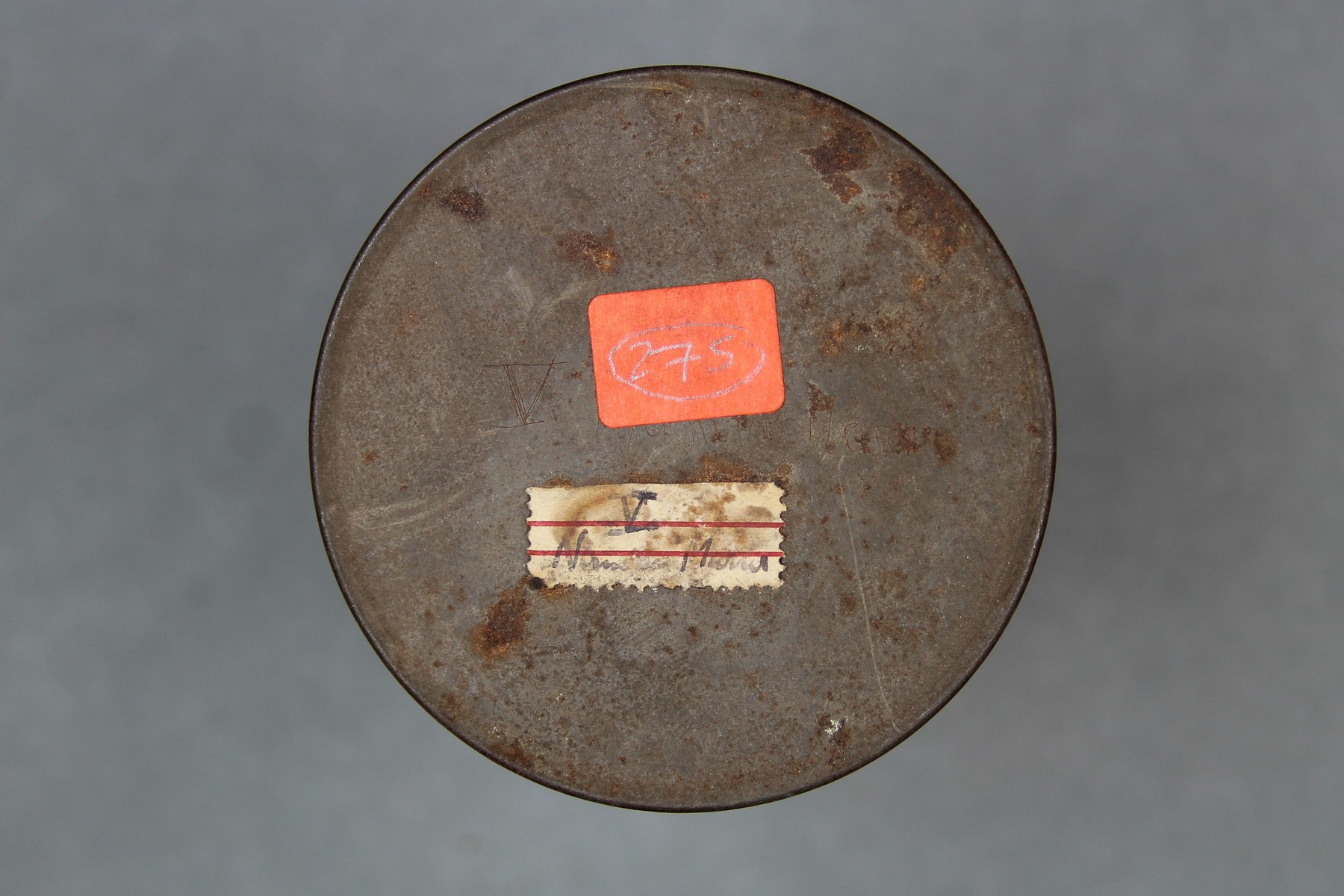 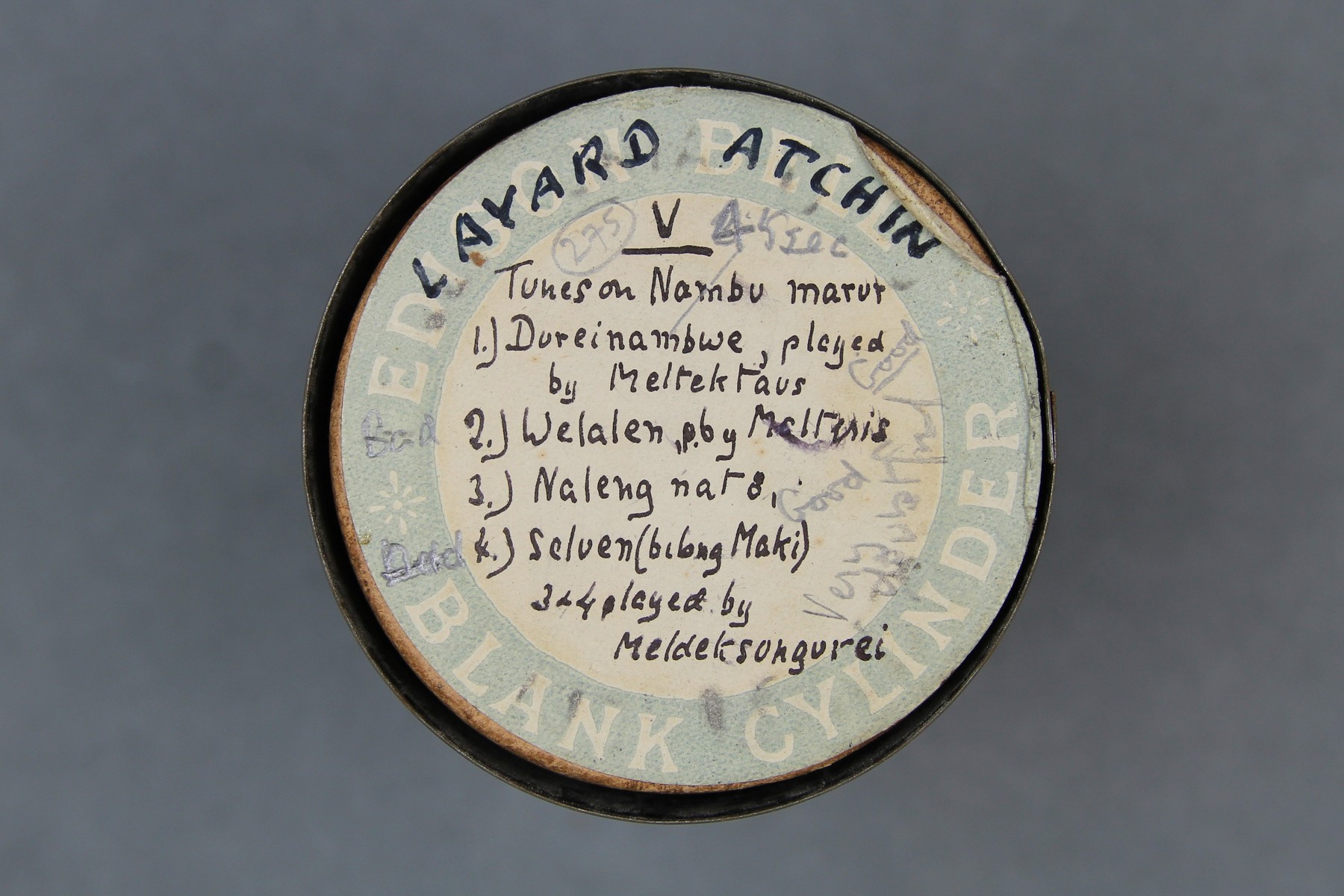     | Layard's fieldnotes are in the John Willoughby Layard papers (MSS 84) in the Special Collections & Archives of the University of California, San Diego. The music notes are compiled in a PDF titled ‘Unpublished Atchin book: “Folk Songs”: Annotated music books, with words and music, hand-written and typed notes, translations.’ from box 47, folder 8. This PDF is held by the British Library. | ||||||
| C177/276 | Songs taken at Dureinambwe, Emil Marur [1] | Unidentified (mixed chorus) | Atchin, Malekula, New Hebrides Condominium (Vanuatu) | 28 September 1914 – 9 October 1915 | 1-5. Unaccompanied mixed vocal group. From Layard's fieldnotes (page 104): “Songs taken at DUREI-NA-MBWE, at Emil Marur” | Poor quality recording with fluctuating speeds and 'cutter bounce' resulting in rumbling noise. | Uripiv-Wala-Rano-Atchin | Field recordings | John Willoughby Layard, 1891-1974 | 4'58" | John Layard, 1914-1915 | Brown wax cylinder | John Layard 1914 Atchin, New Hebrides Cylinder Collection | British Library | 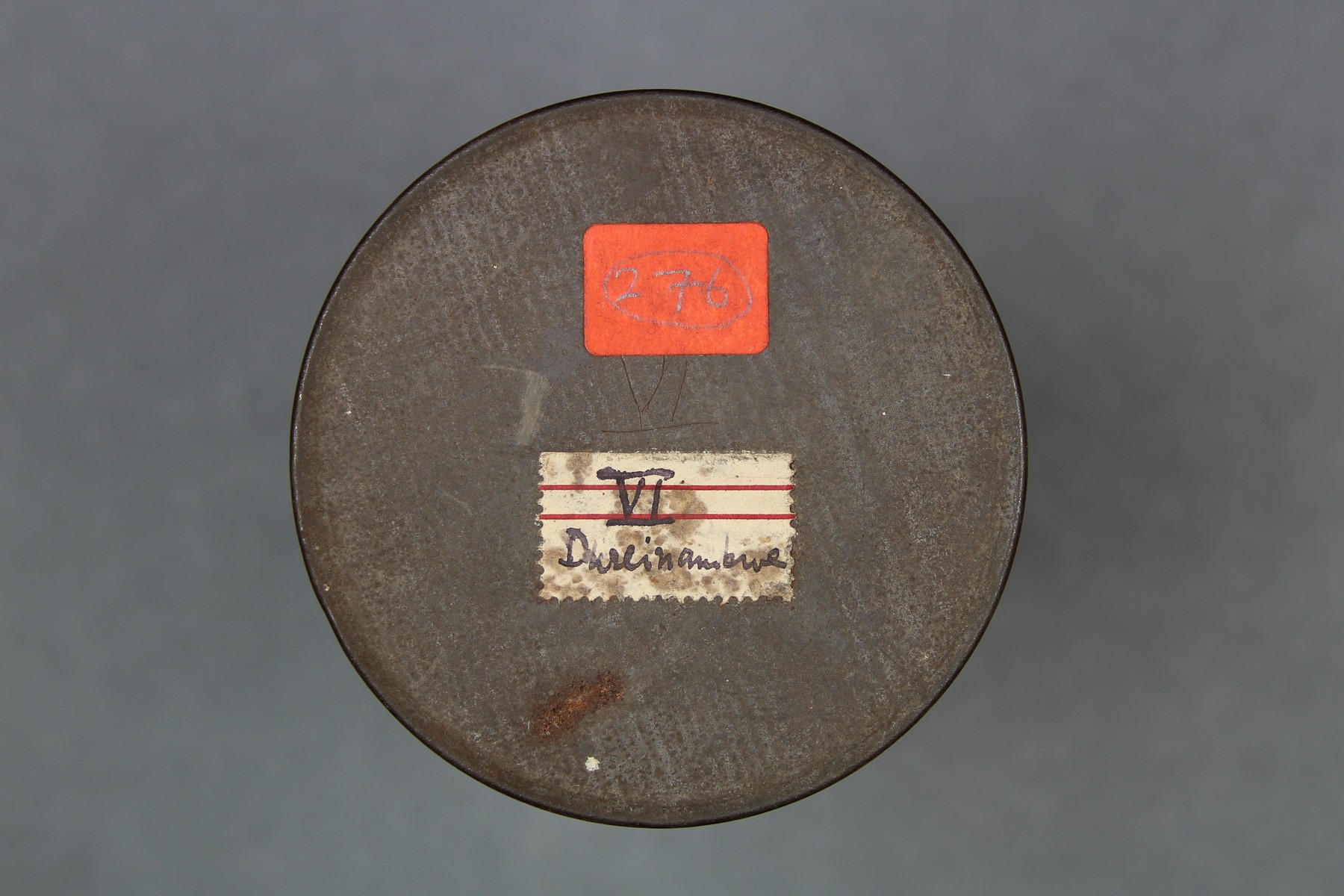 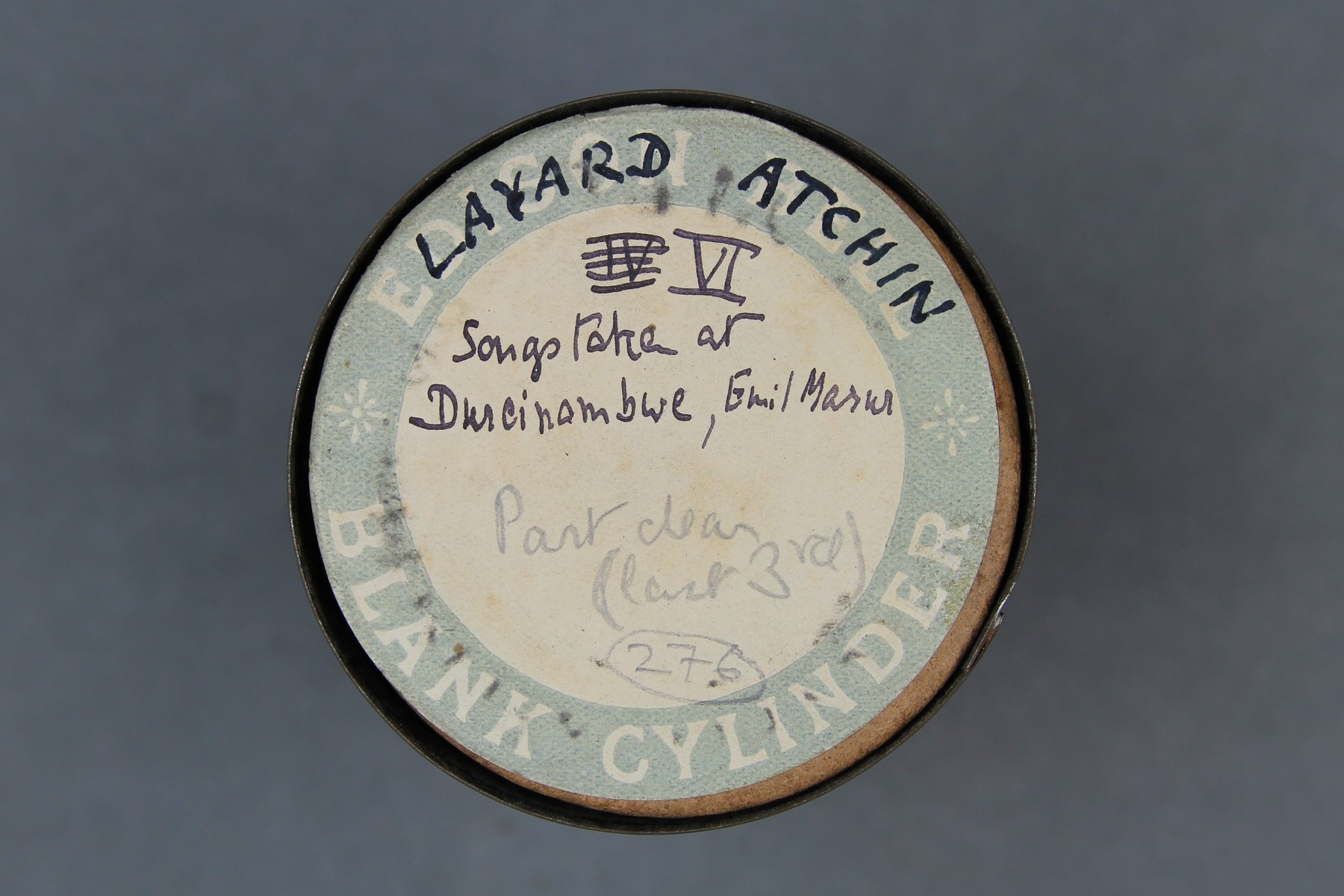     | Layard's fieldnotes are in the John Willoughby Layard papers (MSS 84) in the Special Collections & Archives of the University of California, San Diego. The music notes are compiled in a PDF titled ‘Unpublished Atchin book: “Folk Songs”: Annotated music books, with words and music, hand-written and typed notes, translations.’ from box 47, folder 8. This PDF is held by the British Library. | ||||||
| C177/277 | Songs taken at Dureinambwe, Emil Marur [2] | Unidentified (mixed chorus) | Atchin, Malekula, New Hebrides Condominium (Vanuatu) | 28 September 1914 – 9 October 1915 | 1-6. Mixed vocal group. From Layard's fieldnotes (page 104): “Songs taken at DUREI-NA-MBWE, at Emil Marur, spoilt by beating of feet on ground” | Poor quality recording due to cutter bounce. | Uripiv-Wala-Rano-Atchin | Field recordings | John Willoughby Layard, 1891-1974 | 3'12" | John Layard, 1914-1915 | Brown wax cylinder | John Layard 1914 Atchin, New Hebrides Cylinder Collection | British Library |       | Layard's fieldnotes are in the John Willoughby Layard papers (MSS 84) in the Special Collections & Archives of the University of California, San Diego. The music notes are compiled in a PDF titled ‘Unpublished Atchin book: “Folk Songs”: Annotated music books, with words and music, hand-written and typed notes, translations.’ from box 47, folder 8. This PDF is held by the British Library. | ||||||
| C177/278 | Tavü signals [1] | Meldekwaru (conch shell trumpet) | Atchin, Malekula, New Hebrides Condominium (Vanuatu) | 28 September 1914 – 9 October 1915 | 1-2. Ref note followed by unaccompanied wind instrument playing on one note. 1. For Mererpekes / 2. For Naru. Blown by Meldekwaru. Tavü - conch shell trumpet, conch shell blown at ceremonial exchange of tuskers. (Capell and Layard 1980:143) From Layard's fieldnotes (page 104): “Tavü (Conch Shell Trumpet) signals, blown by Melteg-waru 1. Circle-tusker 2. Curved tusker” | Reasonable quality recording with strong signal. | Uripiv-Wala-Rano-Atchin | Field recordings | John Willoughby Layard, 1891-1974 | 4'32" | John Layard, 1914-1915 | Brown wax cylinder | John Layard 1914 Atchin, New Hebrides Cylinder Collection | British Library |  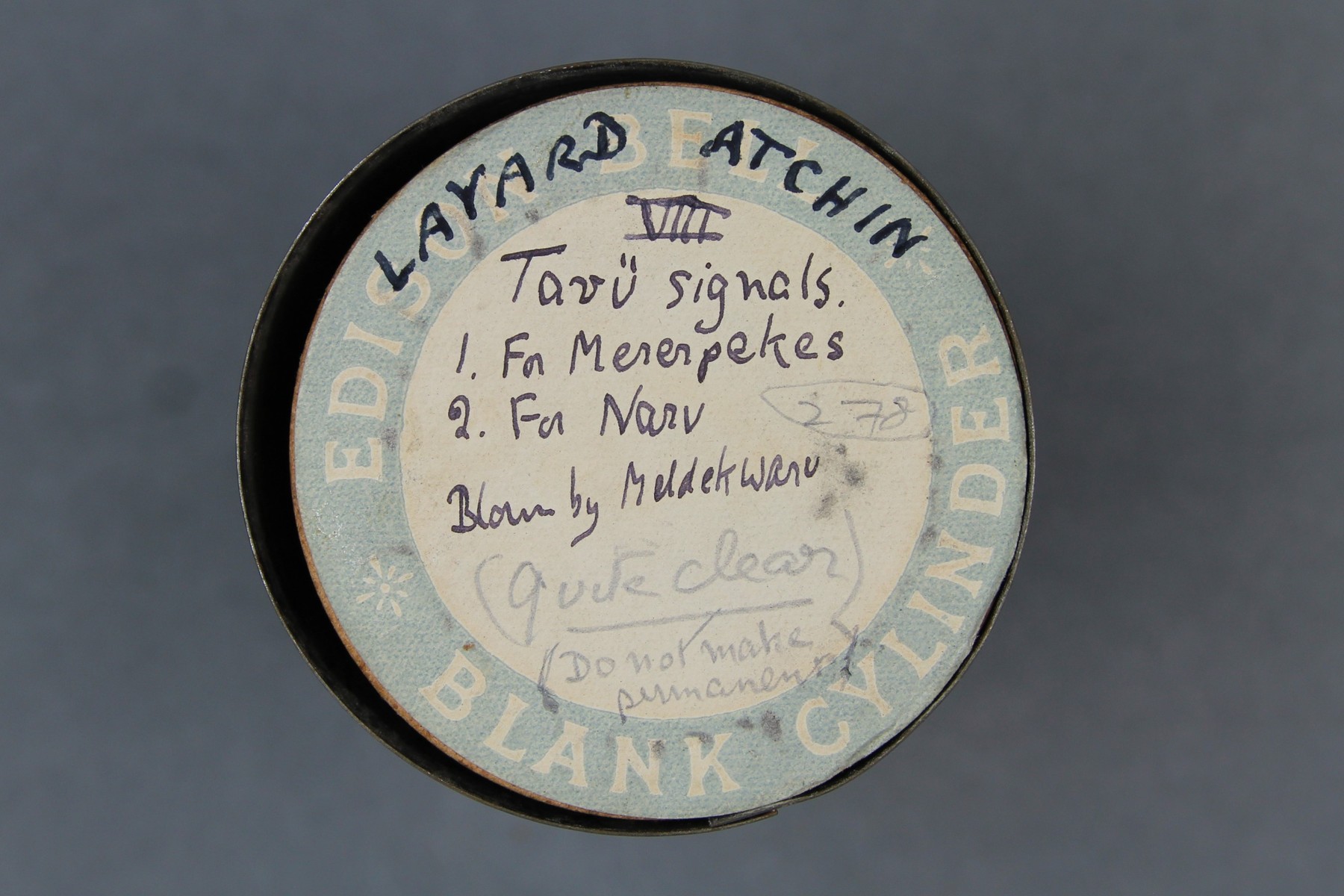     | Layard's fieldnotes are in the John Willoughby Layard papers (MSS 84) in the Special Collections & Archives of the University of California, San Diego. The music notes are compiled in a PDF titled ‘Unpublished Atchin book: “Folk Songs”: Annotated music books, with words and music, hand-written and typed notes, translations.’ from box 47, folder 8. This PDF is held by the British Library. | ||||||
| C177/279 | Tavü signals [2] | Meltegwaru (conch shell trumpet); Meldeksale (conch shell trumpet) | Atchin, Malekula, New Hebrides Condominium (Vanuatu) | 28 September 1914 – 9 October 1915 | 1-2. Unaccompanied aerophone. 1. For Mererpekes, by / Meltegwaru, / 2. For Niwara, by / Meldeksale. Tavü - conch shell trumpet, conch shell blown at ceremonial exchange of tuskers. (Capell and Layard 1980:143) From Layard's fieldnotes (page 104): “Tavü (Conch Shell Trumpet) signals 1. Circle-tusker, played by Melteg-waru 2. Re-entrant tusker, played by Melteg-sale.” | Good quality recording with strong signal and little surface noise. | Uripiv-Wala-Rano-Atchin | Field recordings | John Willoughby Layard, 1891-1974 | 3'51" | John Layard, 1914-1915 | Brown wax cylinder | John Layard 1914 Atchin, New Hebrides Cylinder Collection | British Library |  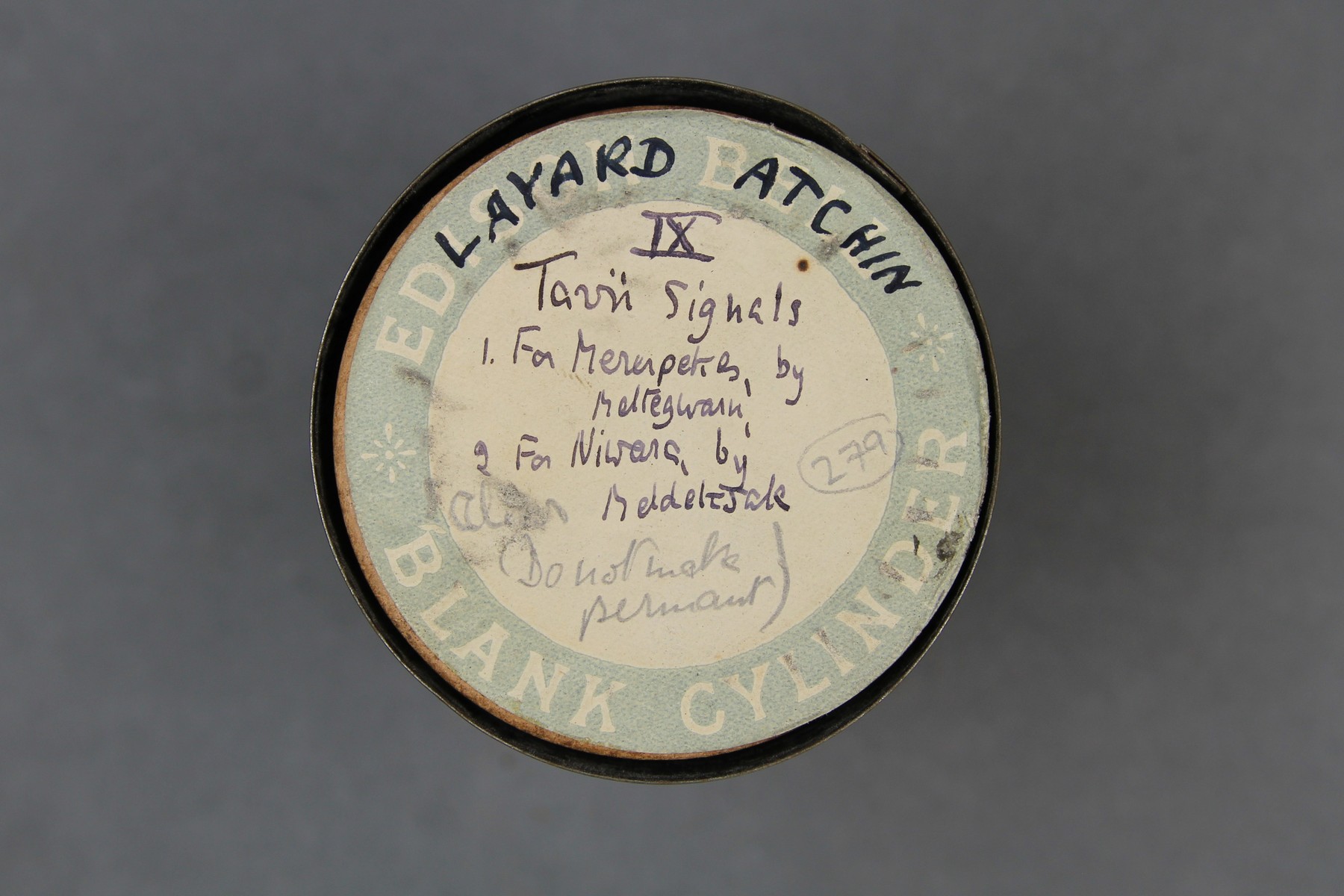     | Layard's fieldnotes are in the John Willoughby Layard papers (MSS 84) in the Special Collections & Archives of the University of California, San Diego. The music notes are compiled in a PDF titled ‘Unpublished Atchin book: “Folk Songs”: Annotated music books, with words and music, hand-written and typed notes, translations.’ from box 47, folder 8. This PDF is held by the British Library. | ||||||
| C177/280 | Tavü signals [3] | Meldekwaru (conch shell trumpet) | Atchin, Malekula, New Hebrides Condominium (Vanuatu) | 28 September 1914 – 9 October 1915 | 1-2. Unaccompanied wind instrument. 1. For Tama͜uẹr, by / 2. For Mererpekes, by Meldekwaru. Tavü - conch shell trumpet, conch shell blown at ceremonial exchange of tuskers. (Capell and Layard 1980:143) From Layard's fieldnotes (page 104): “Tavü (Conch Shell Trumpet) signals 1. Castrated re-entrant-tusker, played by ? 2. Circle-tusker, played by Melteg-waru.” | Good quality recording with strong signal and little surface noise. | Uripiv-Wala-Rano-Atchin | Field recordings | John Willoughby Layard, 1891-1974 | 4'08" | John Layard, 1914-1915 | Brown wax cylinder | John Layard 1914 Atchin, New Hebrides Cylinder Collection | British Library |       | Layard's fieldnotes are in the John Willoughby Layard papers (MSS 84) in the Special Collections & Archives of the University of California, San Diego. The music notes are compiled in a PDF titled ‘Unpublished Atchin book: “Folk Songs”: Annotated music books, with words and music, hand-written and typed notes, translations.’ from box 47, folder 8. This PDF is held by the British Library. | ||||||
| C177/281 | Drums beaten at Palu-ulen (morning) Amal / olep | Unidentified (percussion); unidentified (spoken, male) | Atchin, Malekula, New Hebrides Condominium (Vanuatu) | 28 September 1914 – 9 October 1915 | 1. Drumming, male voices audible towards end of recording. Nambwe Noso̊s for / first 135 seconds, then / nambwe rildralin. mbwe - gong ; nambwe - gong-signal (Capell and Layard 1980:119) From Layard's fieldnotes (page 17): "Begins with na-mbwe no-sos. After 45 secs. it dies down and stops, and then begins again. This is the signal for the dancers to leave MEL-NAMUL (where they stop to give the gong- beaters time to get ready). Nambwe nosos is beaten all the time the dancers are running across the dancing-ground (see p.444-) ar wela parav. After 135 secs. from the beginning it changes to nambwe rildralen, which is the gong for bureburine nosos, when the dances return in a deep serpentine course to the pal-pal. The record ends in the middle of this. When they reach the pal-pal they sing WELEN-NI-MBEK songs, and the gongs are played for WELEN-NI-MBEK." From Layard's fieldnotes (page 104) “Gongs beaten at Palu-ulen in the morning at Olep Na-mbwe nosȯs for first 135 seconds. Then Na-mbwe rildralen.“ | Good quality recording with clear signal and little surface noise. | Uripiv-Wala-Rano-Atchin | Field recordings | John Willoughby Layard, 1891-1974 | 6'17" | John Layard, 1914-1915 | Brown wax cylinder | John Layard 1914 Atchin, New Hebrides Cylinder Collection | British Library | 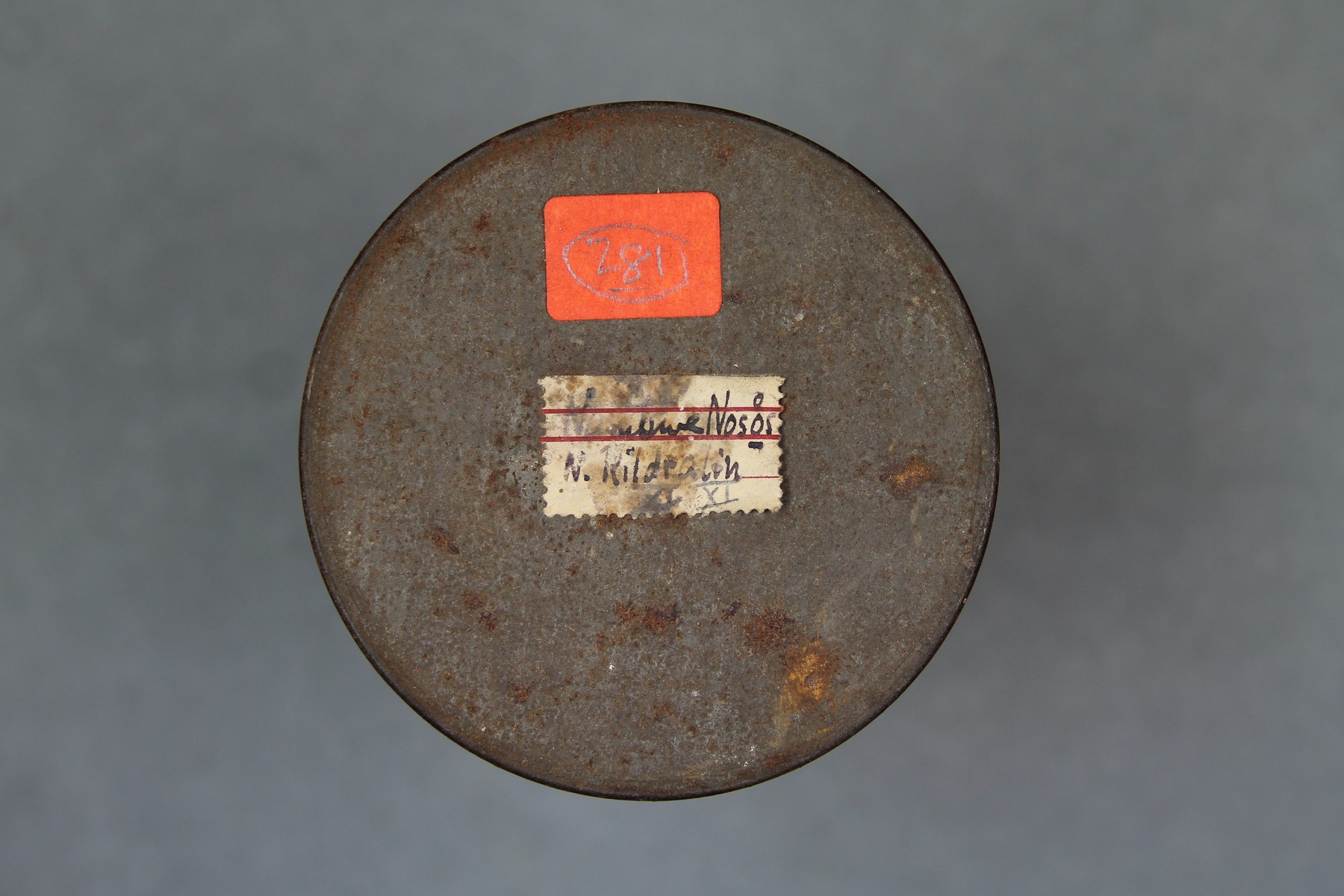 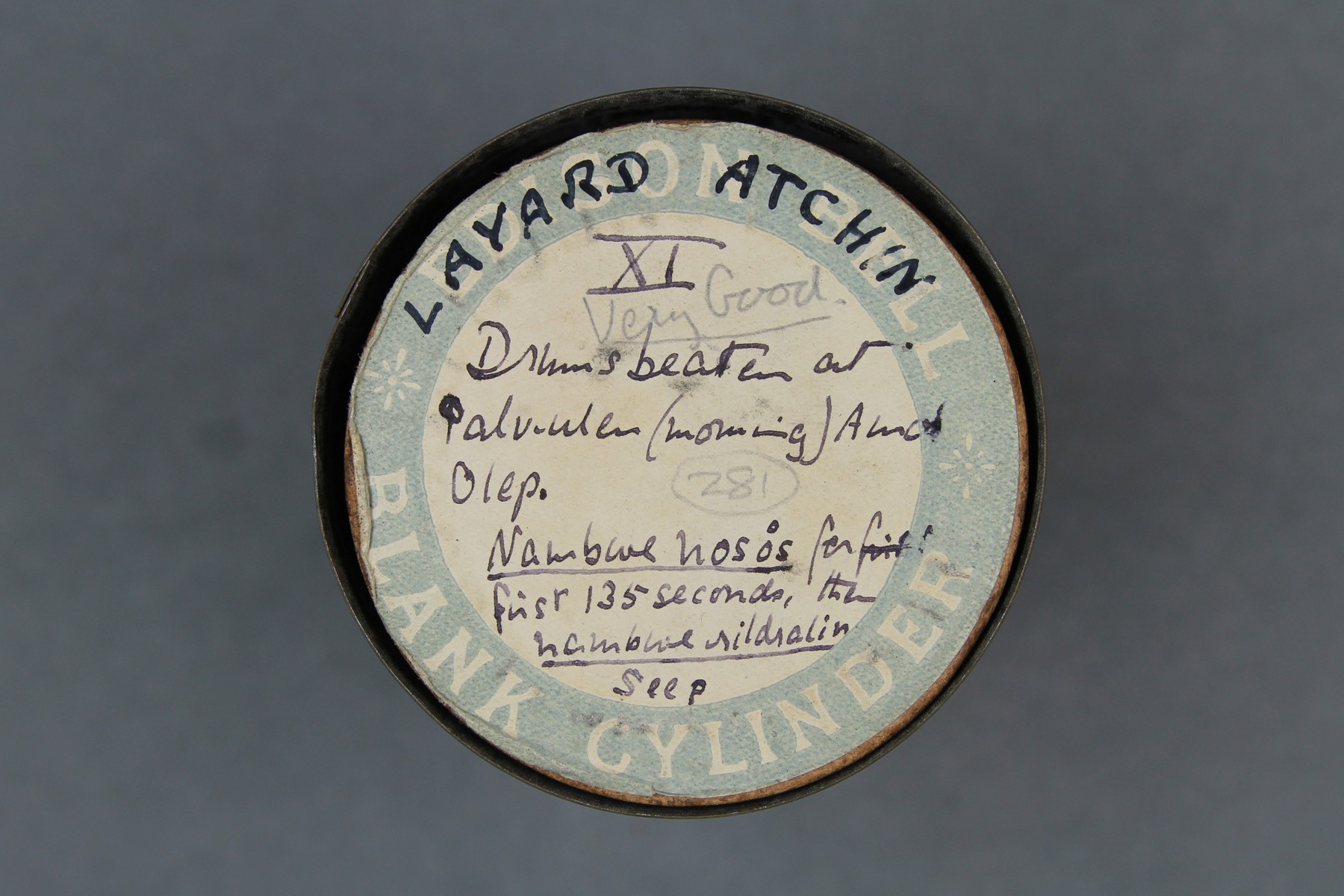     | Layard's fieldnotes are in the John Willoughby Layard papers (MSS 84) in the Special Collections & Archives of the University of California, San Diego. The music notes are compiled in a PDF titled ‘Unpublished Atchin book: “Folk Songs”: Annotated music books, with words and music, hand-written and typed notes, translations.’ from box 47, folder 8. This PDF is held by the British Library. | ||||||
| C177/282 | Drumming | Unidentified (percussion) | Atchin, Malekula, New Hebrides Condominium (Vanuatu) | 28 September 1914 – 9 October 1915 | 1-3. Ref note followed by drumming. 1. Welenimbek (twice over) / 2. Welenimbek (once) / 3. Maki: Selven (drums for) / called Ewala & Etur. From Layard’s fieldnotes (page 104): “WELENIMBEK (twice over) WELENIMBEK (once) MAKI:- SELUEN (gongs for, called e wala and e tur" | Uripiv-Wala-Rano-Atchin | Field recordings | John Willoughby Layard, 1891-1974 | 4'44" | John Layard, 1914-1915 | Brown wax cylinder | John Layard 1914 Atchin, New Hebrides Cylinder Collection | British Library | 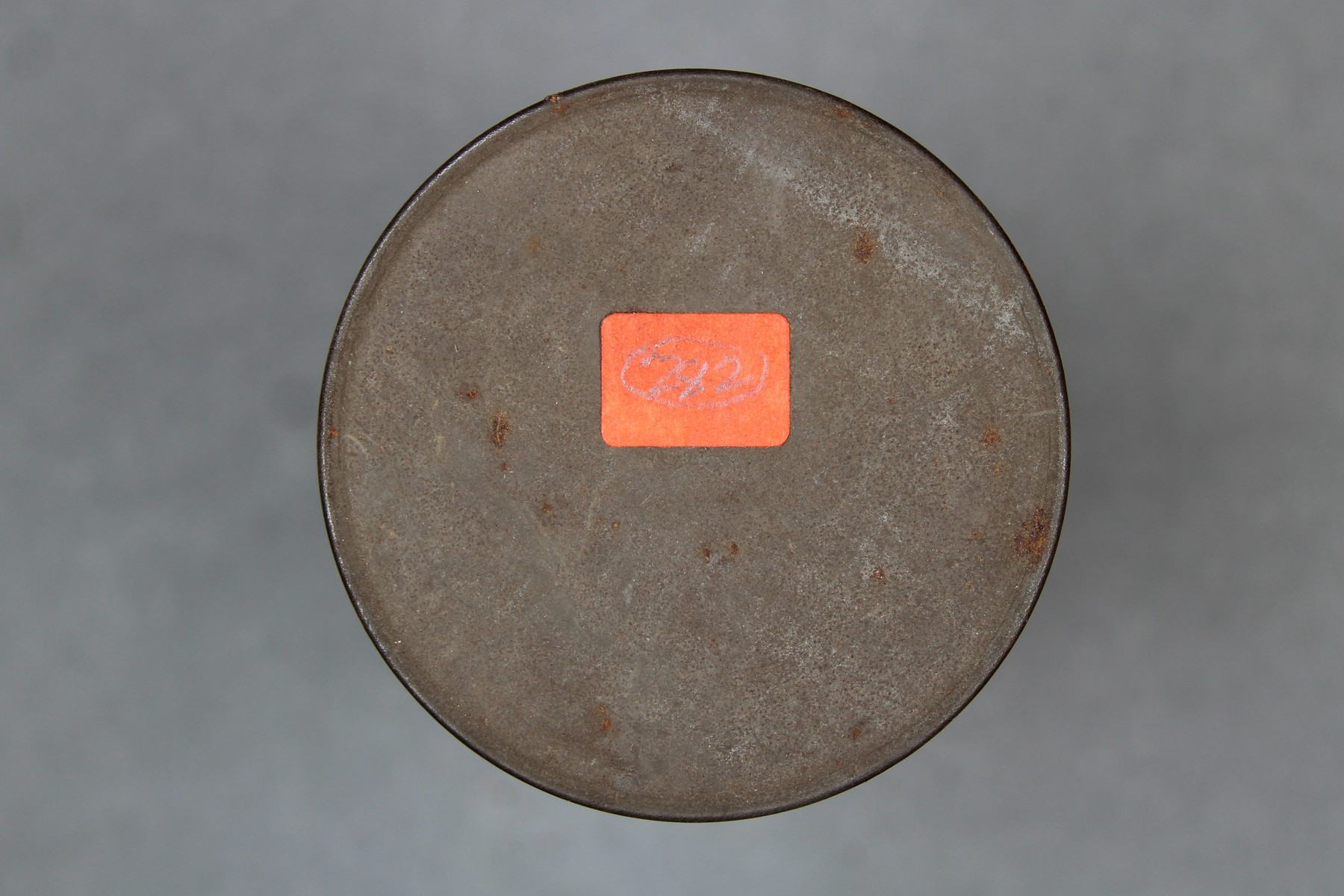 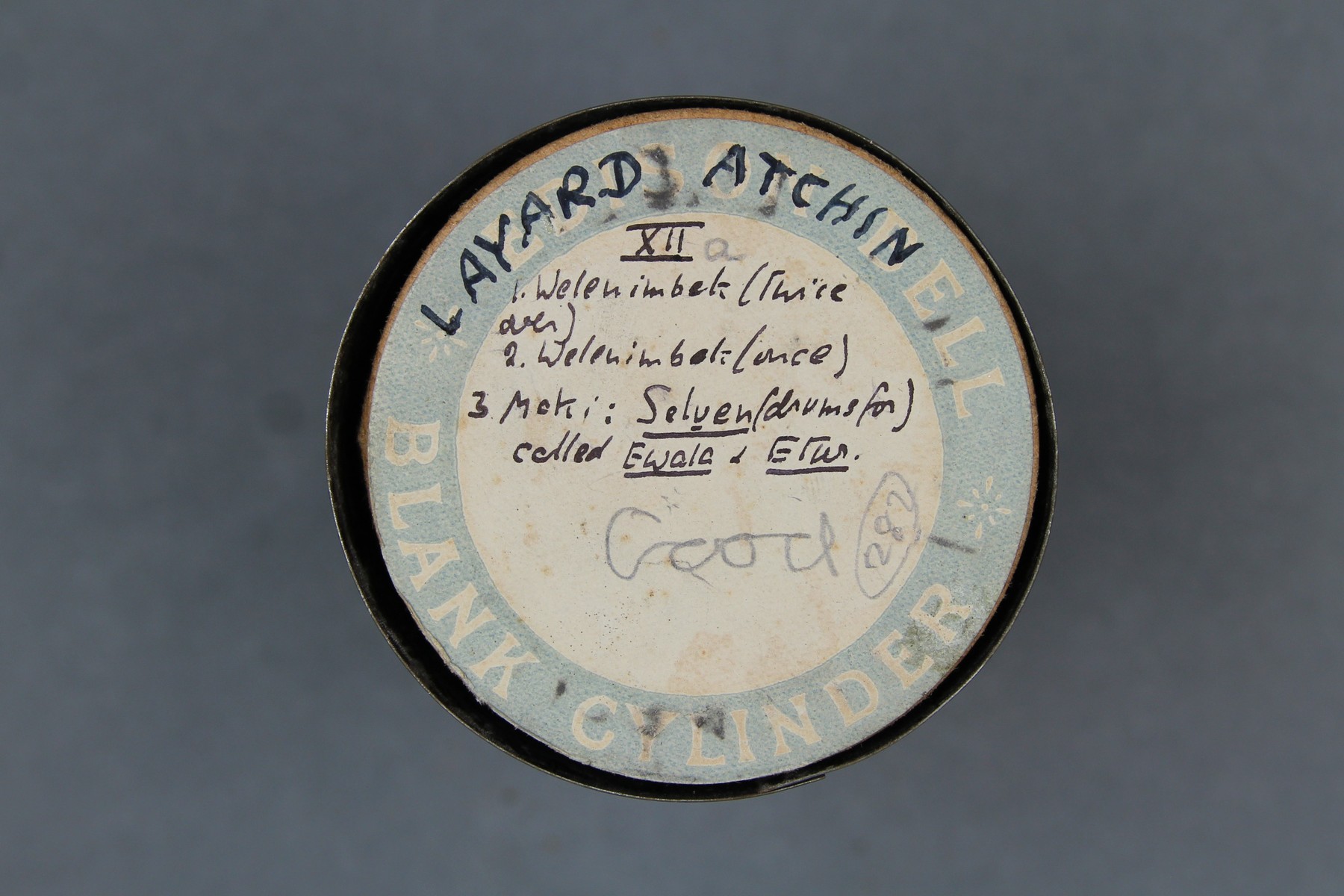     | Layard's fieldnotes are in the John Willoughby Layard papers (MSS 84) in the Special Collections & Archives of the University of California, San Diego. The music notes are compiled in a PDF titled ‘Unpublished Atchin book: “Folk Songs”: Annotated music books, with words and music, hand-written and typed notes, translations.’ from box 47, folder 8. This PDF is held by the British Library. | |||||||
| C177/283 | Songs of Welenimbek taken at Palu-ulen, Amal Olep | Unidentified (male chorus); unidentified (percussion) | Atchin, Malekula, New Hebrides Condominium (Vanuatu) | 28 September 1914 – 9 October 1915 | 1-2. Male vocal group with drumming accompaniment (in addition to the rhythmic thumping made by recording process). 1&2 Songs of Welenimbek / taken at Palu-ulen, Amal Olep. 2 Song + Gong. From Layard’s fieldnotes (page 104): “Songs of WELENIMBEK, taken at Palu-ulen at Olep” | Reasonable quality recording but with weak signal. | Uripiv-Wala-Rano-Atchin | Field recordings | John Willoughby Layard, 1891-1974 | 3'25" | John Layard, 1914-1915 | Brown wax cylinder | John Layard 1914 Atchin, New Hebrides Cylinder Collection | British Library | 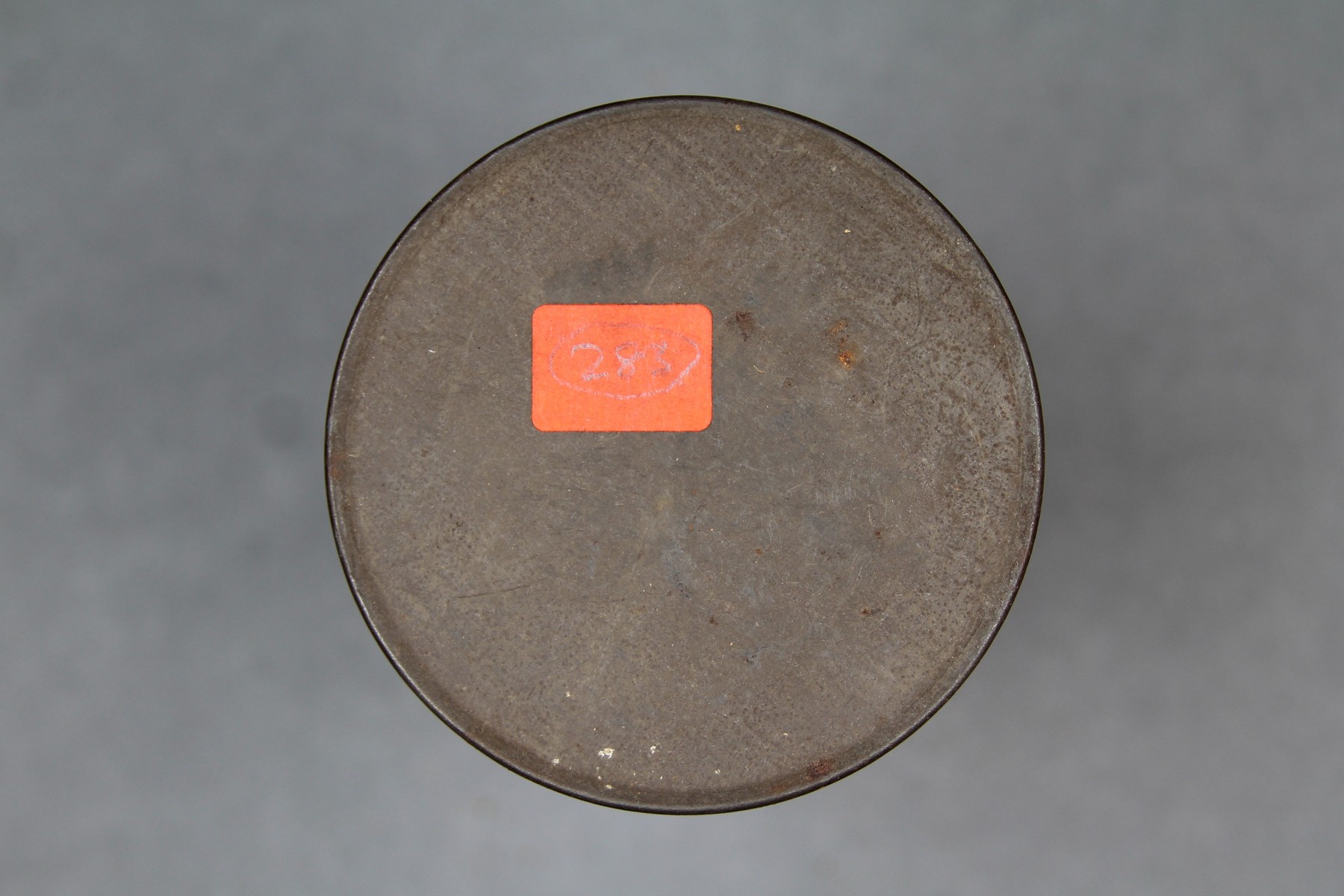 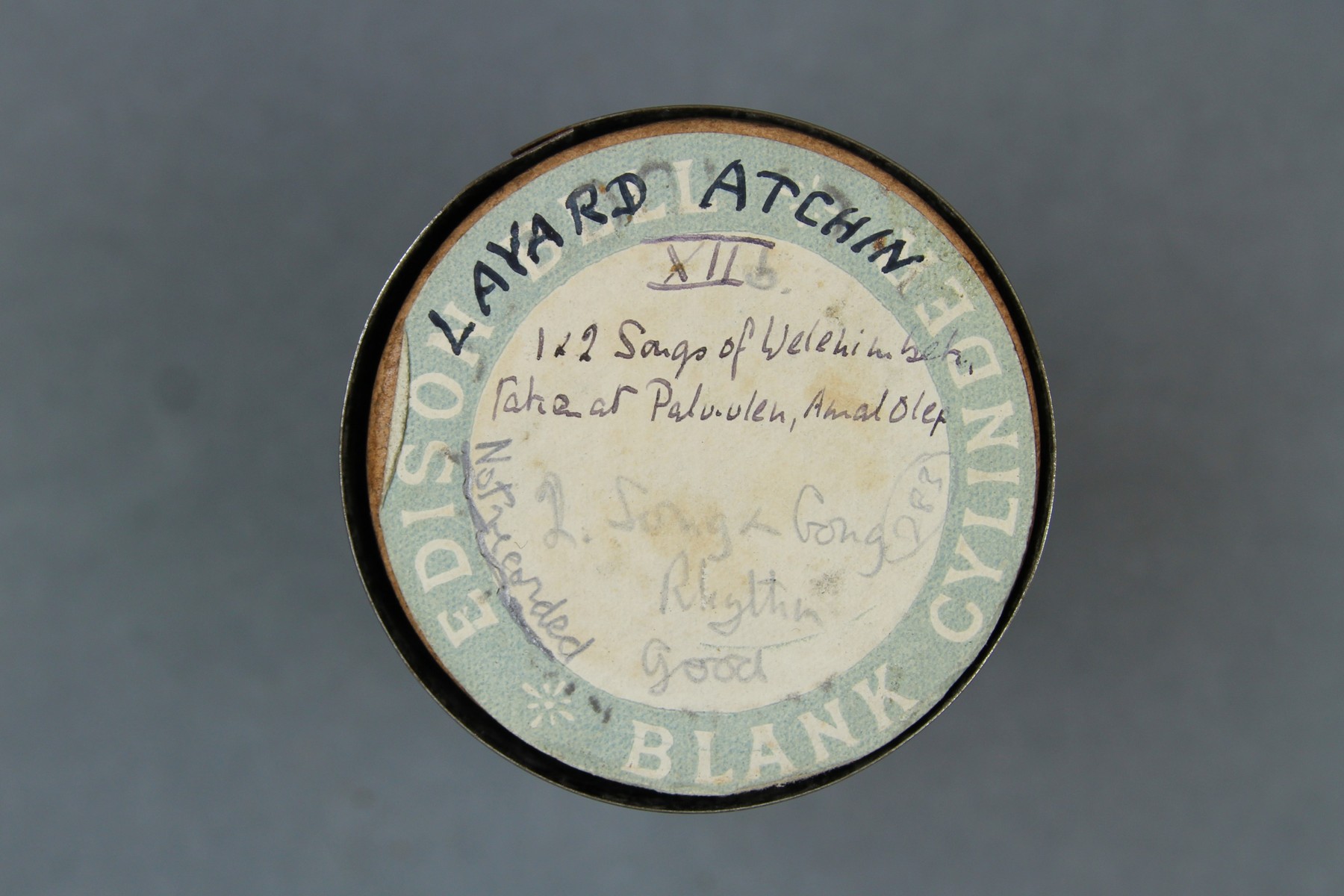     | Layard's fieldnotes are in the John Willoughby Layard papers (MSS 84) in the Special Collections & Archives of the University of California, San Diego. The music notes are compiled in a PDF titled ‘Unpublished Atchin book: “Folk Songs”: Annotated music books, with words and music, hand-written and typed notes, translations.’ from box 47, folder 8. This PDF is held by the British Library. | ||||||
| C177/284 | Drums for Maki | Unidentified (percussion) | Atchin, Malekula, New Hebrides Condominium (Vanuatu) | 28 September 1914 – 9 October 1915 | 1-3. Ref notes followed by drumming. 1. Ewala, then short pause / then Etur / 2. Nambwe Walain (beaten / during Narel) / 3. Maki emawun / (artev tavü) / 4. Nambwe epalpal (Pwetur) / (for a quarrel). mbwe - gong ; nambwe - gong-signal (Capell and Layard 1980:119) From Layard's fieldnotes (page 17): "Visitors approach. 30 secs. ar wala (dance with ne- Shul 40. secs. Back again 50. secs. ar wala. From Layard's fieldnotes (page 104) “Gongs for Maki: 1. e wala, then short pause, then e tur. } 2. na-mbwe walaim (beaten during na-rel) } 3. Maki e ma wun (ar tev tavü) } V 4. na-mbwe e pal-pal (for a quarrel) (on pwetur gong only)” 60. secs. Back again. 75.s “ ar wala. 85. “ Back again 105. “ Give ne-shul. 115. “ Gong stops" | Reasonable quality recording but with surface noise due to cracked and bandaged cylinder (the bandage may obscure a fourth track). | Uripiv-Wala-Rano-Atchin | Field recordings | John Willoughby Layard, 1891-1974 | 6'54" | John Layard, 1914-1915 | Brown wax cylinder | John Layard 1914 Atchin, New Hebrides Cylinder Collection | British Library | 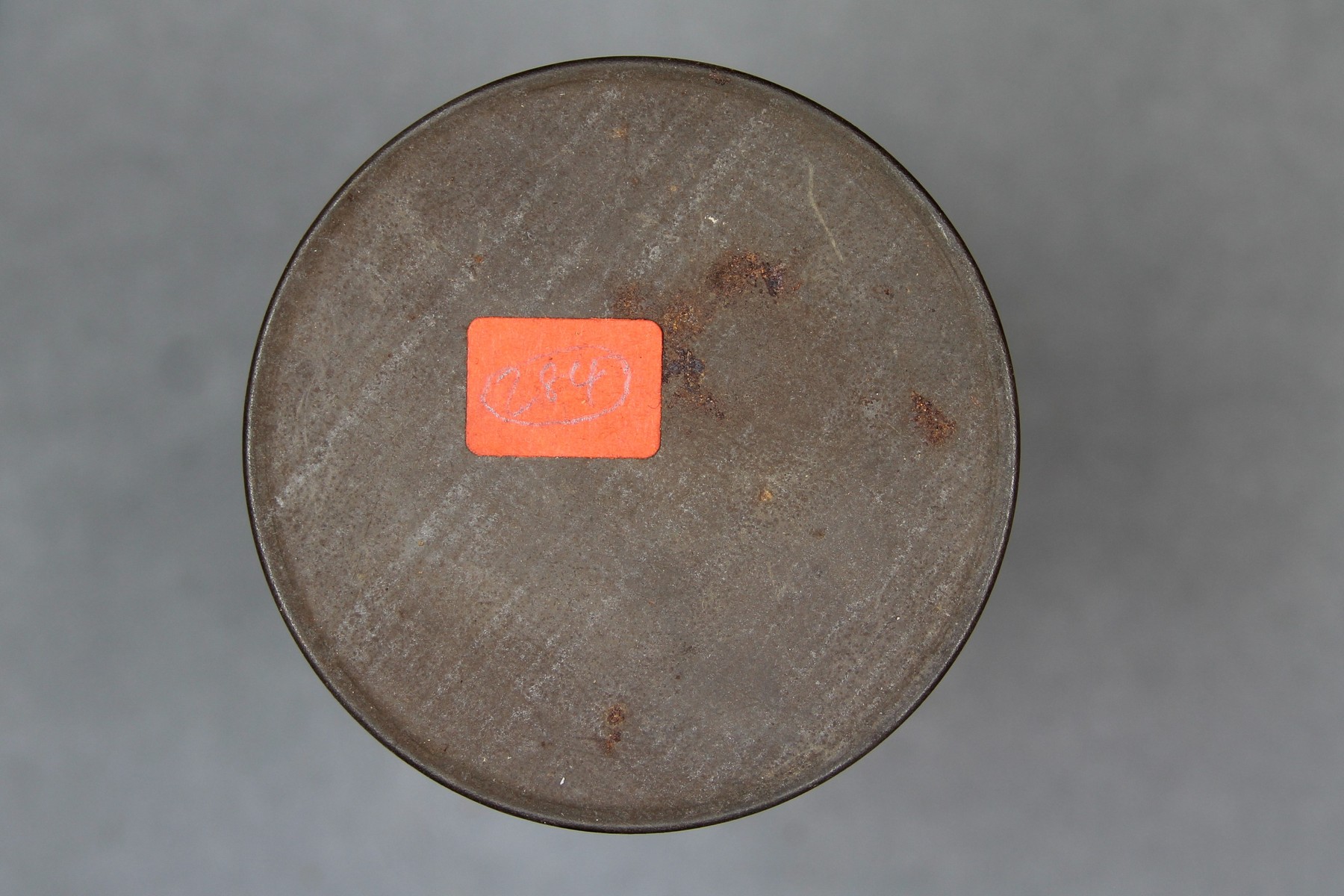      | Layard's fieldnotes are in the John Willoughby Layard papers (MSS 84) in the Special Collections & Archives of the University of California, San Diego. The music notes are compiled in a PDF titled ‘Unpublished Atchin book: “Folk Songs”: Annotated music books, with words and music, hand-written and typed notes, translations.’ from box 47, folder 8. This PDF is held by the British Library. | ||||||
| C177/285 | Nambwe Lui | Unidentified (percussion); unidentified (spoken, male) | Atchin, Malekula, New Hebrides Condominium (Vanuatu) | 28 September 1914 – 9 October 1915 | 1. Drumming, with male speech audible near end. From SAMI: "Probably a continuation of 'Drums for Maki' on C177/284?" mbwe - gong ; nambwe - gong-signal (Capell and Layard 1980:119) From Layard’s fieldnotes (page 104): “Na-mbwe Lui." | Good quality recording with clear signal and little surface noise. | Uripiv-Wala-Rano-Atchin | Field recordings | John Willoughby Layard, 1891-1974 | 4'49" | John Layard, 1914-1915 | Brown wax cylinder | John Layard 1914 Atchin, New Hebrides Cylinder Collection | British Library | 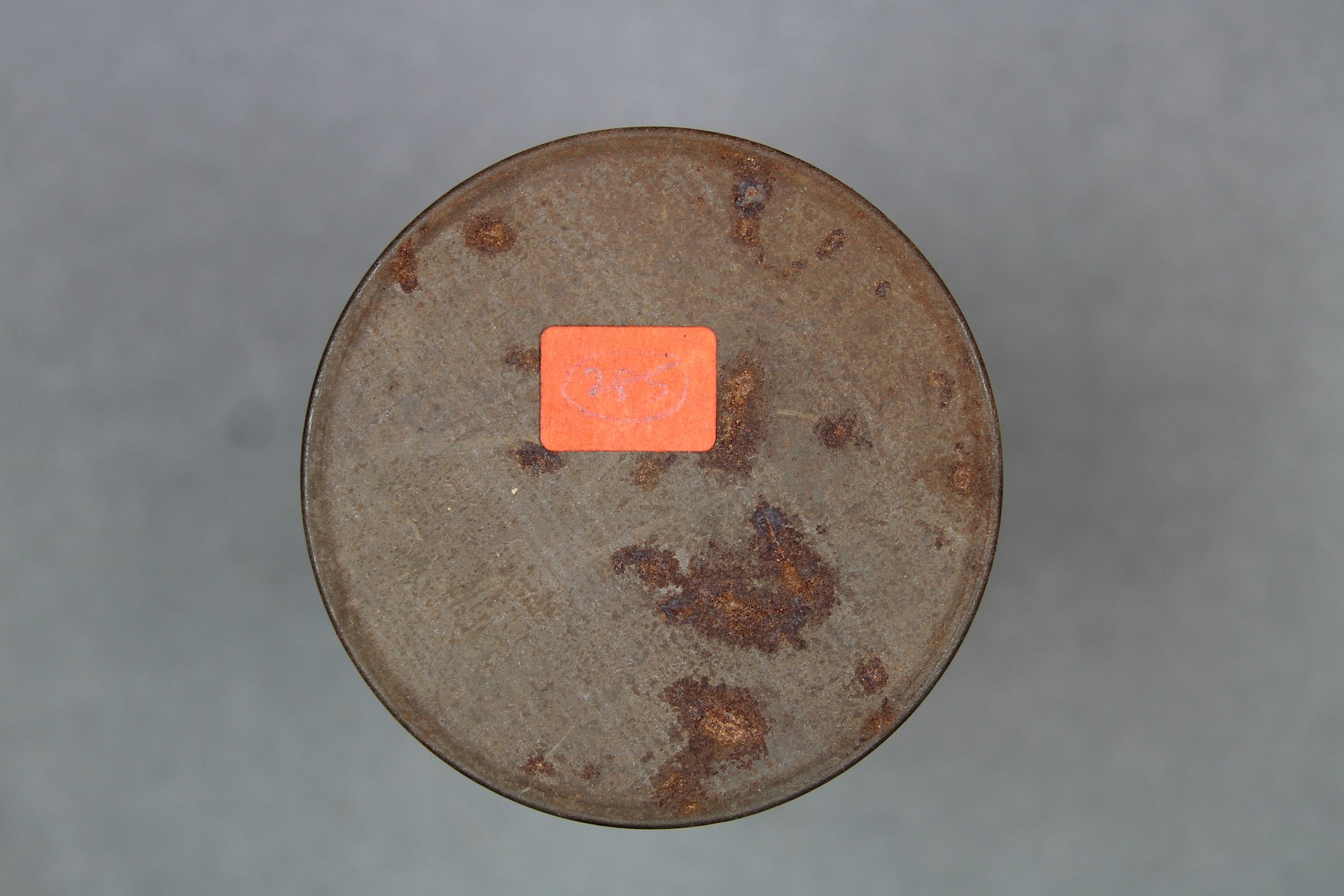 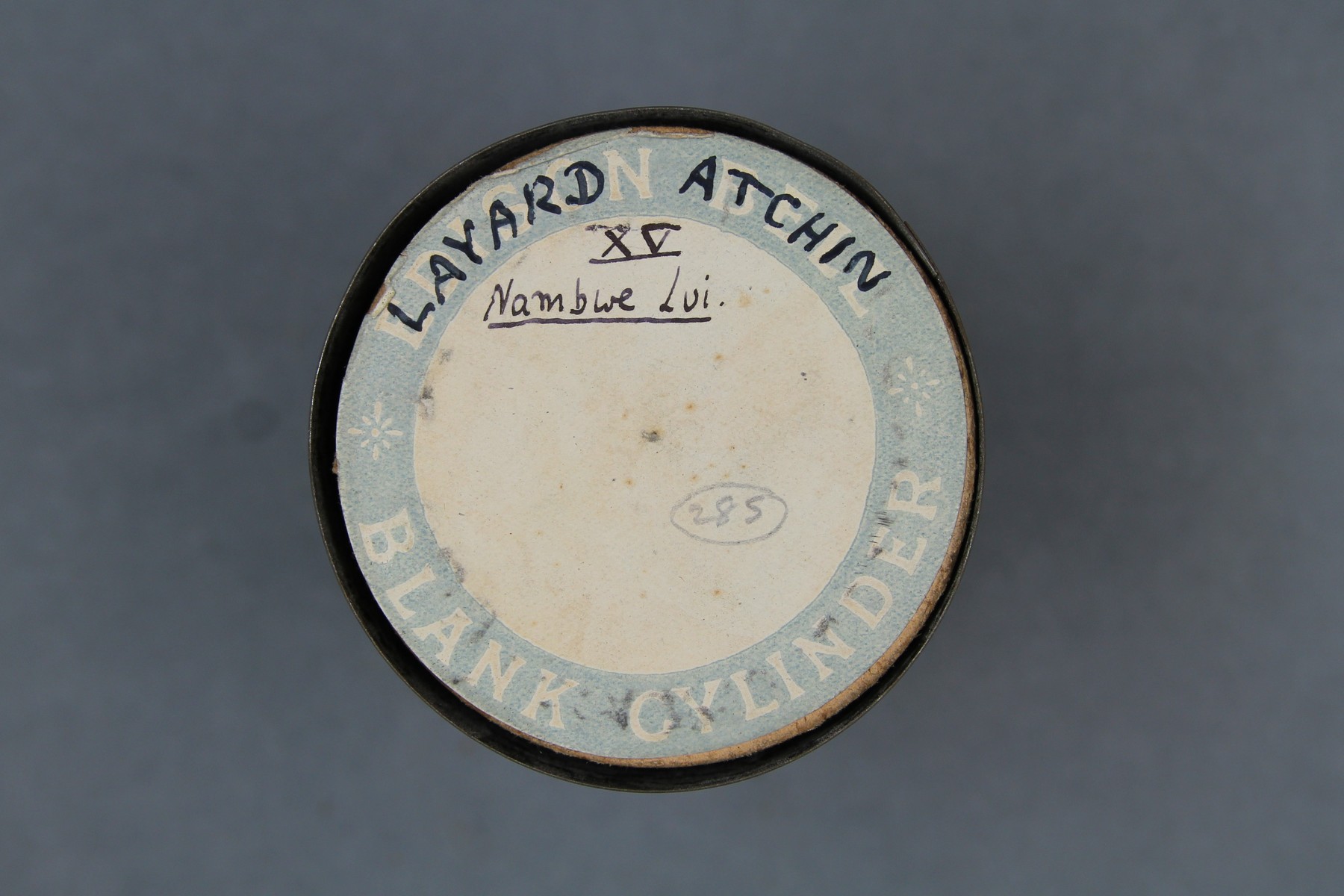     | Layard's fieldnotes are in the John Willoughby Layard papers (MSS 84) in the Special Collections & Archives of the University of California, San Diego. The music notes are compiled in a PDF titled ‘Unpublished Atchin book: “Folk Songs”: Annotated music books, with words and music, hand-written and typed notes, translations.’ from box 47, folder 8. This PDF is held by the British Library. | ||||||
| C177/286 | Nambwe Humanen | Unidentified (percussion); unidentified (spoken) | Atchin, Malekula, New Hebrides Condominium (Vanuatu) | 28 September 1914 – 9 October 1915 | 1-2. Drumming with male vocals. 1. Nambwe Humanen / 2. ditto, with song, / Orongdengdeng. mbwe - gong ; nambwe - gong-signal (Capell and Layard 1980:119) From Layard's fieldnotes (page 17): "Na-mbwe humanen. Tsoron only. This is played through the whole of the dance on field- note pp. 471-3. For approx.. first 80 secs., the couples arrive and the e hori comes and dances round his rokare. When the gongs are beaten fast they all shuffle away and jump (plainly marked by gongs). The gong stops and when it starts again they come back again, until at the fast beating they again shuffle away and he shuffles down the middle. At the end they jump again. The gong starts again and they come back and cast off, etc., and so away." From Layard's fieldnotes (page 105): “Na-mbwe Humanen Ditto, with song, orongdengdeng.” | Good quality recording with clear signal and little surface noise. | Uripiv-Wala-Rano-Atchin | Field recordings | John Willoughby Layard, 1891-1974 | 5'41" | John Layard, 1914-1915 | Brown wax cylinder | John Layard 1914 Atchin, New Hebrides Cylinder Collection | British Library | 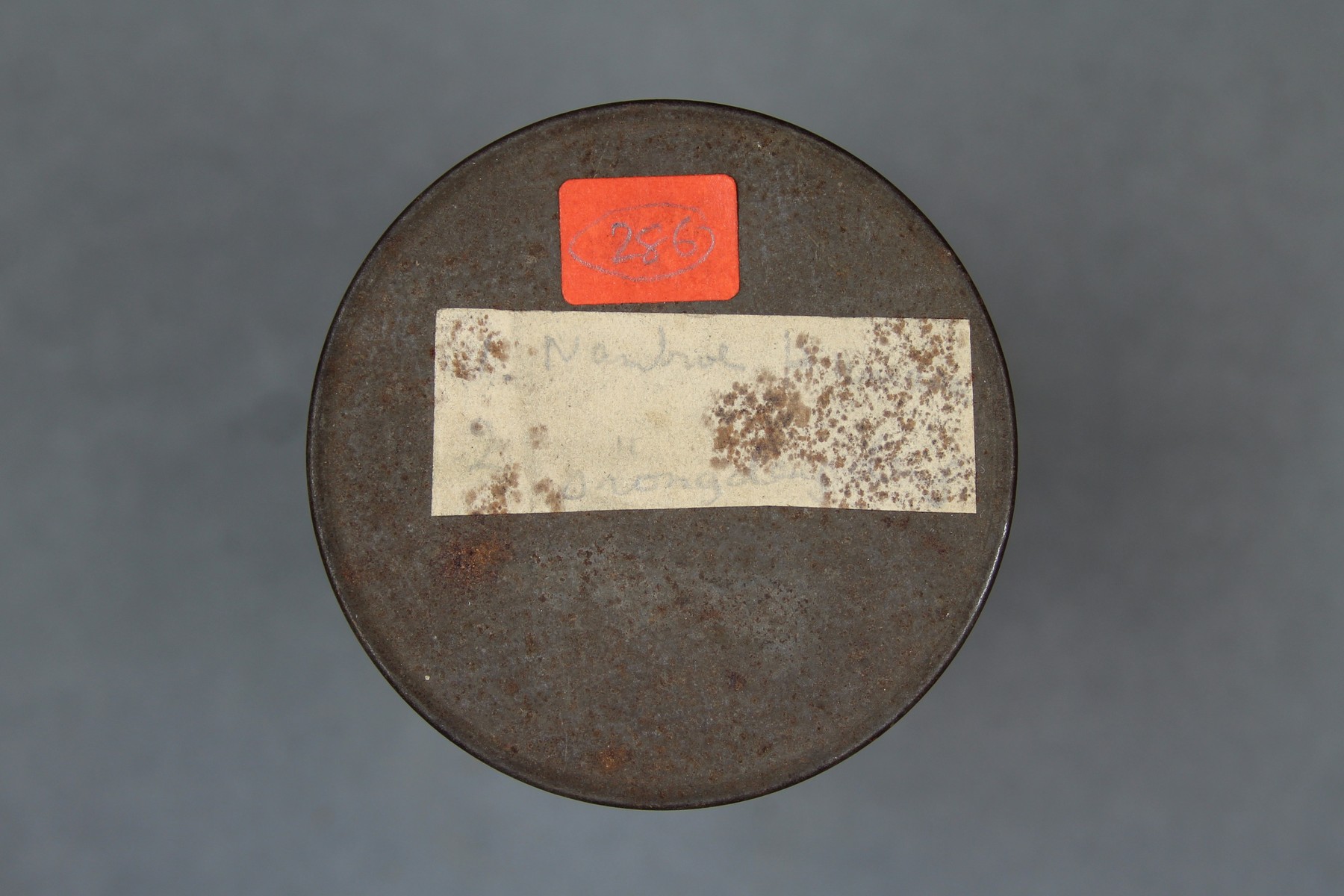 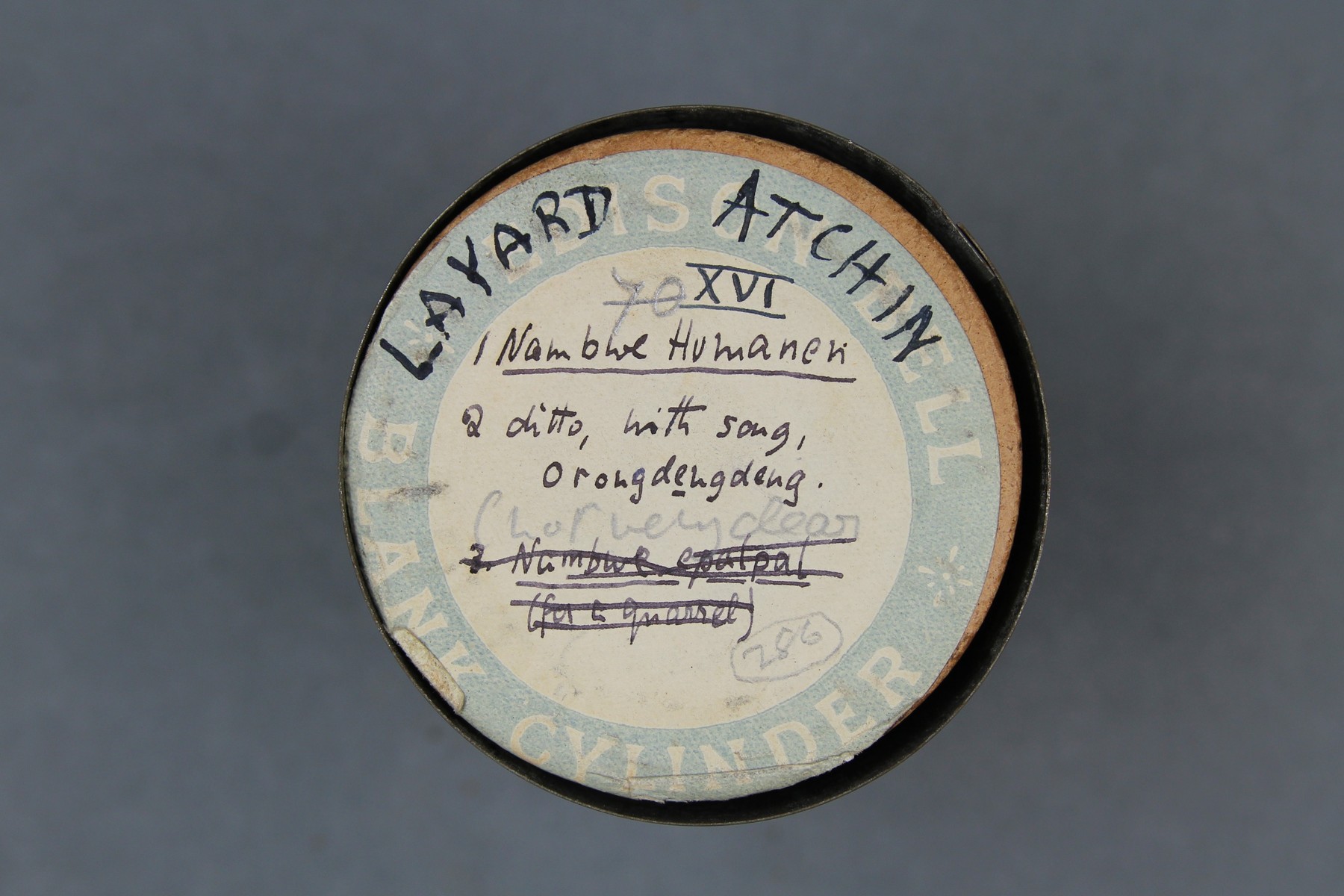     | Layard's fieldnotes are in the John Willoughby Layard papers (MSS 84) in the Special Collections & Archives of the University of California, San Diego. The music notes are compiled in a PDF titled ‘Unpublished Atchin book: “Folk Songs”: Annotated music books, with words and music, hand-written and typed notes, translations.’ from box 47, folder 8. This PDF is held by the British Library. | ||||||
| C177/287 | Nambwe noso̊s (twice) | Unidentified (percussion) | Atchin, Malekula, New Hebrides Condominium (Vanuatu) | 28 September 1914 – 9 October 1915 | 1-2. Drumming. From SAMI: "NB Ref note played on a reed instrument, thought to be A flat". mbwe - gong ; nambwe - gong-signal (Capell and Layard 1980:119) From Layard’s fieldnotes (page 19): “50. Na-mbwe no-sös. I. na-mbwe nosos. e bure-bure-ni - -------------c. ½ way through. Pause. e ter-ter hore. e ter-ter hore again.” | Good quality recording with clear signal and little surface noise. | Uripiv-Wala-Rano-Atchin | Field recordings | John Willoughby Layard, 1891-1974 | 6'07" | John Layard, 1914-1915 | Brown wax cylinder | John Layard 1914 Atchin, New Hebrides Cylinder Collection | British Library | 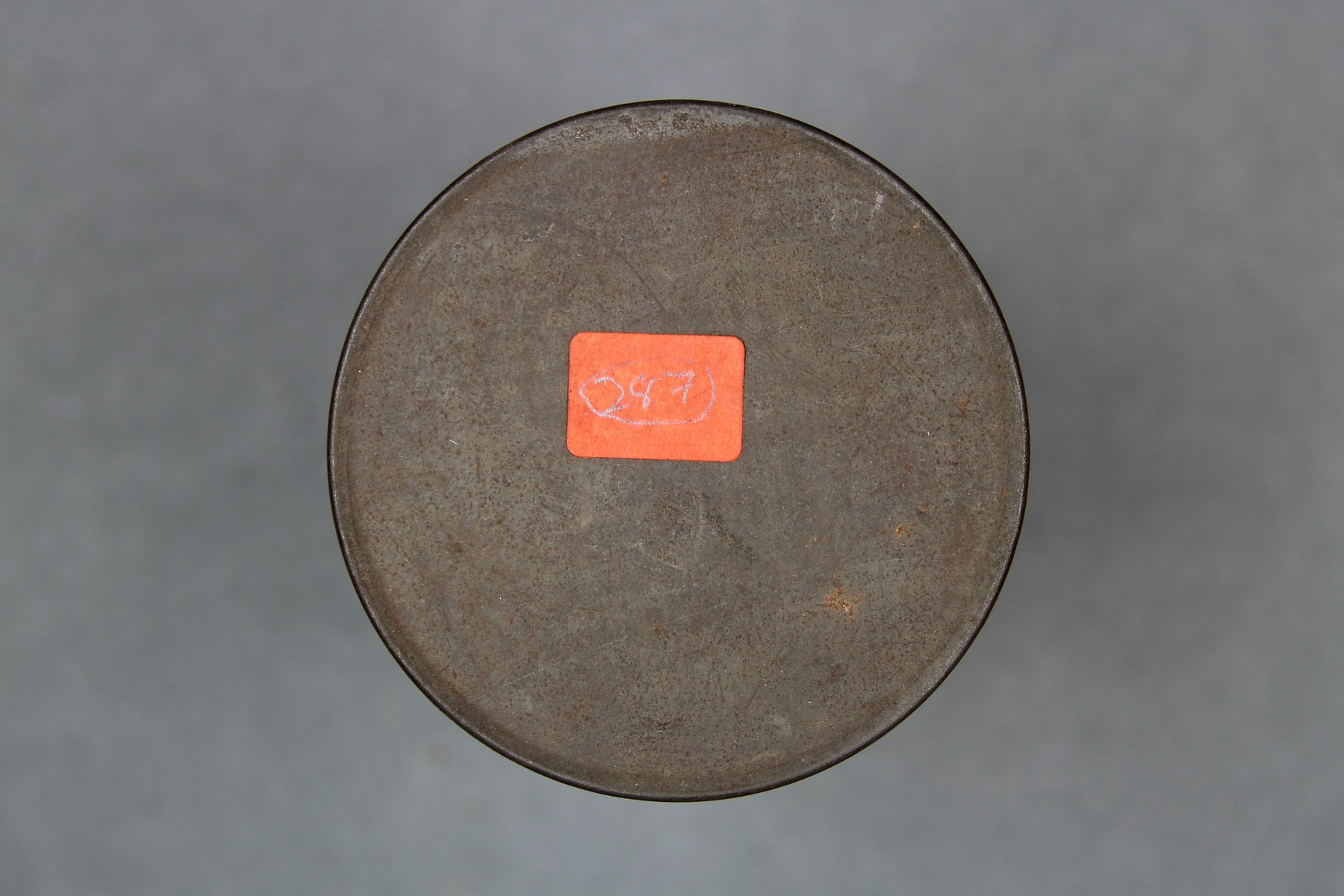      | Layard's fieldnotes are in the John Willoughby Layard papers (MSS 84) in the Special Collections & Archives of the University of California, San Diego. The music notes are compiled in a PDF titled ‘Unpublished Atchin book: “Folk Songs”: Annotated music books, with words and music, hand-written and typed notes, translations.’ from box 47, folder 8. This PDF is held by the British Library. | ||||||
| C177/288 | Arasar Tu'aen | Unidentified (percussion) | Atchin, Malekula, New Hebrides Condominium (Vanuatu) | 28 September 1914 – 9 October 1915 | 1. Ref note (probably A flat) followed by drumming. From Layard’s fieldnotes (page 19): “Asar-en. I. Asar. Pause Tuha-en (only sounded for giving of pigs or mats - ni-mbwen - )” From Layard's fieldnotes (page 105): “Arasar, Tuhaen." | Good quality recording with clear signal and little surface noise. | Uripiv-Wala-Rano-Atchin | Field recordings | John Willoughby Layard, 1891-1974 | 5'17" | John Layard, 1914-1915 | Brown wax cylinder | John Layard 1914 Atchin, New Hebrides Cylinder Collection | British Library | 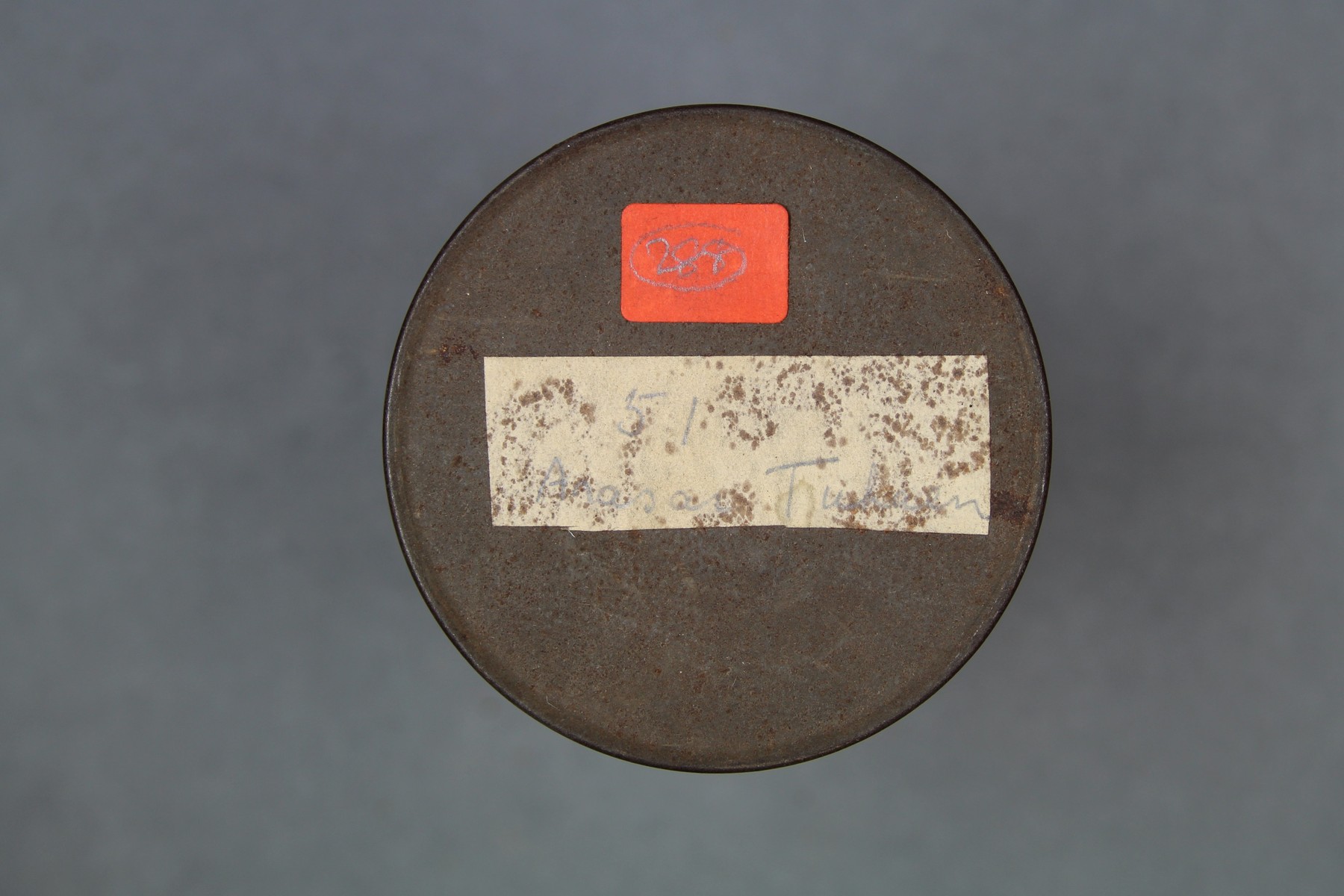      | Layard's fieldnotes are in the John Willoughby Layard papers (MSS 84) in the Special Collections & Archives of the University of California, San Diego. The music notes are compiled in a PDF titled ‘Unpublished Atchin book: “Folk Songs”: Annotated music books, with words and music, hand-written and typed notes, translations.’ from box 47, folder 8. This PDF is held by the British Library. | ||||||
| C177/289 | Botemöw | Unidentified (percussion) | Atchin, Malekula, New Hebrides Condominium (Vanuatu) | 28 September 1914 – 9 October 1915 | 1. Ref note (probably A flat) followed by drumming. From Layard’s fieldnotes (page 19): “Bot-mew (danced on eve of Maki.)” | Good quality recording with clear signal and little surface noise. | Uripiv-Wala-Rano-Atchin | Field recordings | John Willoughby Layard, 1891-1974 | 4'53" | John Layard, 1914-1915 | Brown wax cylinder | John Layard 1914 Atchin, New Hebrides Cylinder Collection | British Library |  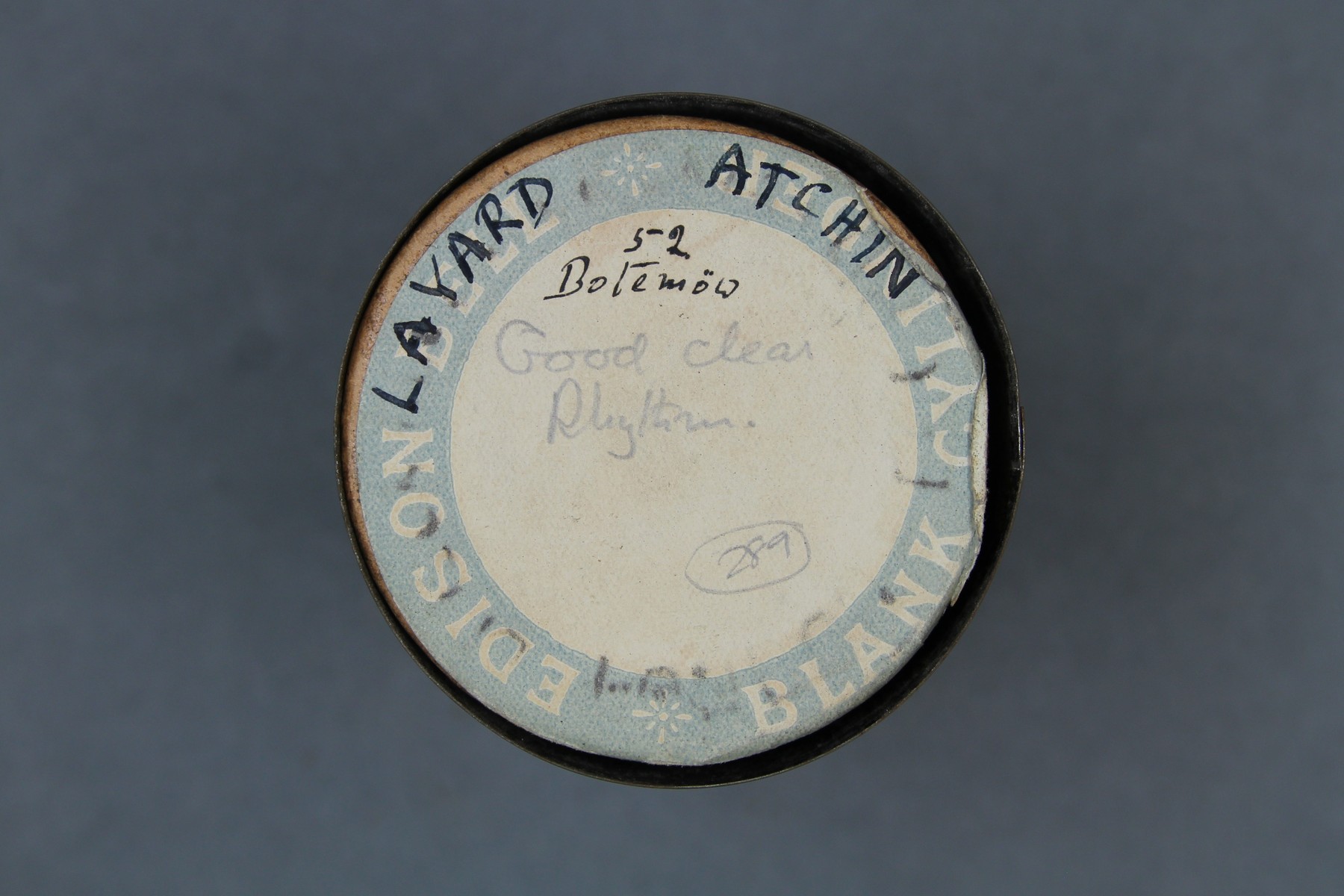     | Layard's fieldnotes are in the John Willoughby Layard papers (MSS 84) in the Special Collections & Archives of the University of California, San Diego. The music notes are compiled in a PDF titled ‘Unpublished Atchin book: “Folk Songs”: Annotated music books, with words and music, hand-written and typed notes, translations.’ from box 47, folder 8. This PDF is held by the British Library. | ||||||
| C177/290 | N. Rildralen | Unidentified (percussion) | Atchin, Malekula, New Hebrides Condominium (Vanuatu) | 28 September 1914 – 9 October 1915 | 1. Ref note (probably A flat) followed by drumming. mbwe - gong ; nambwe - gong-signal (Capell and Layard 1980:119) From Layard’s fieldnotes (page 19): “Na-mbwe ril-dralen” | Good quality recording with clear signal and little surface noise. | Uripiv-Wala-Rano-Atchin | Field recordings | John Willoughby Layard, 1891-1974 | 5'18" | John Layard, 1914-1915 | Brown wax cylinder | John Layard 1914 Atchin, New Hebrides Cylinder Collection | British Library | 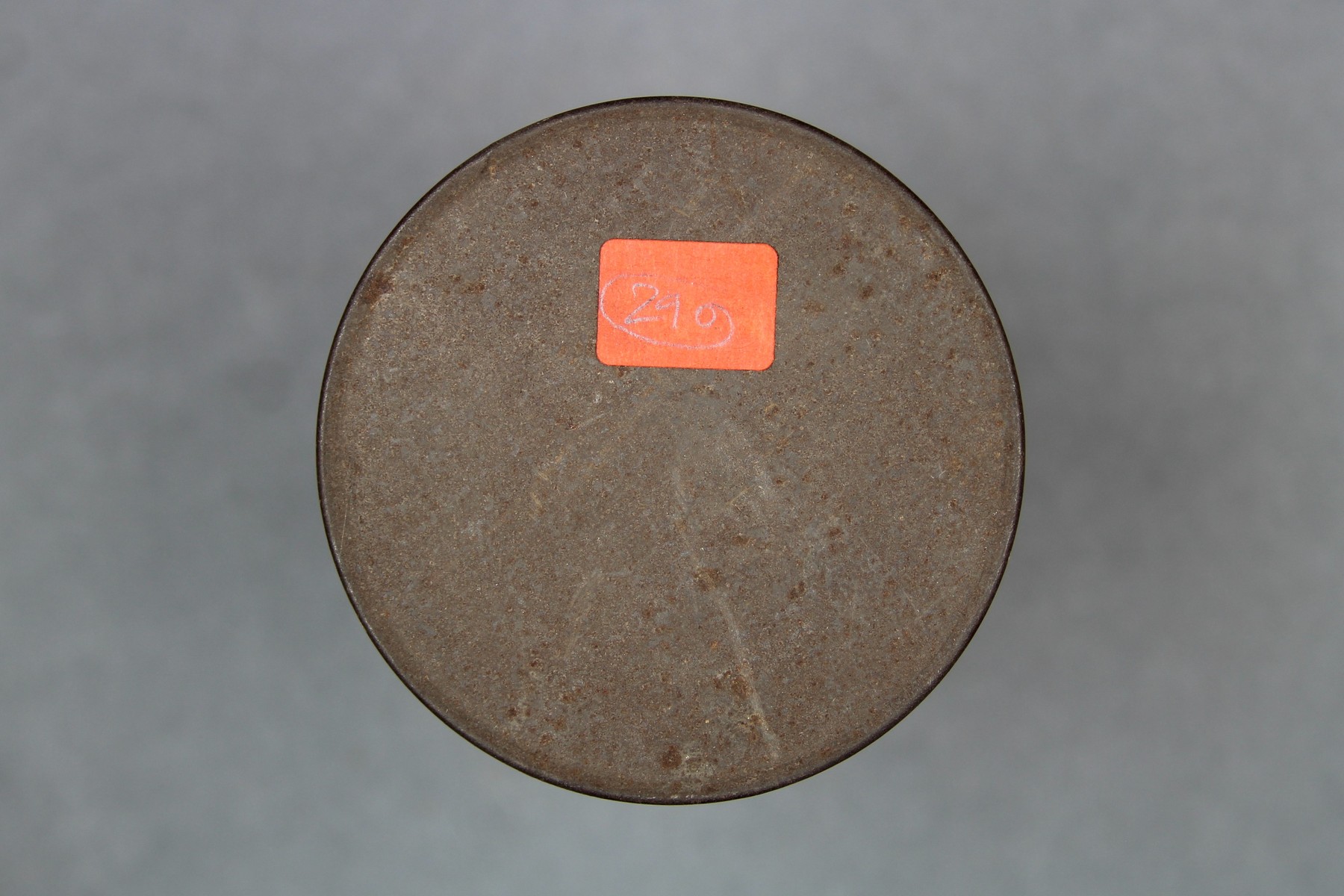 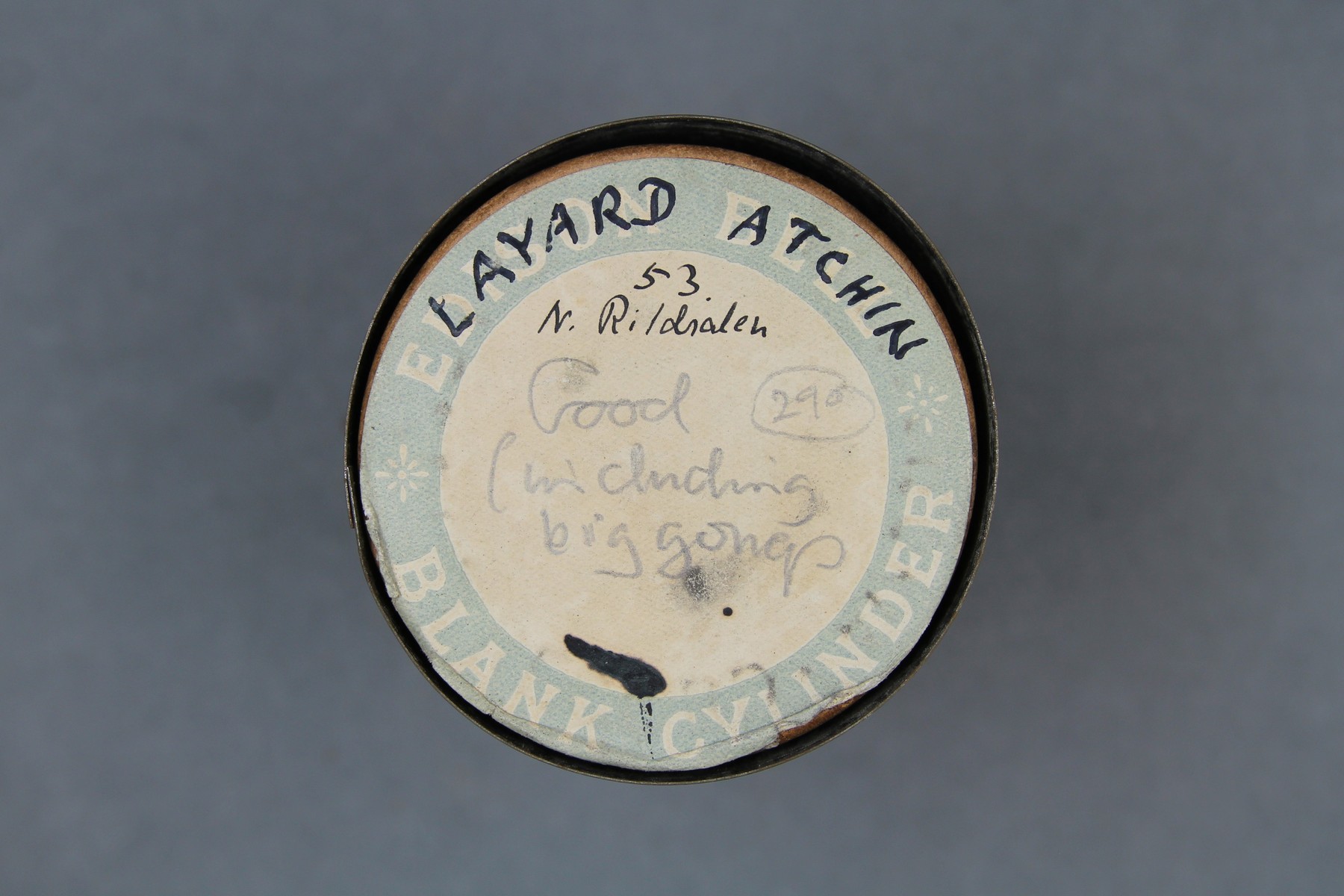     | Layard's fieldnotes are in the John Willoughby Layard papers (MSS 84) in the Special Collections & Archives of the University of California, San Diego. The music notes are compiled in a PDF titled ‘Unpublished Atchin book: “Folk Songs”: Annotated music books, with words and music, hand-written and typed notes, translations.’ from box 47, folder 8. This PDF is held by the British Library. | ||||||
| C177/291 | N. Rildralen. 2 Ser'aen | Unidentified (percussion) | Atchin, Malekula, New Hebrides Condominium (Vanuatu) | 28 September 1914 – 9 October 1915 | 1. Ref note (probably A flat) followed by drumming. mbwe - gong ; nambwe - gong-signal (Capell and Layard 1980:119) From Layard’s fieldnotes (page 19): “Na-mbwe ril-dralen. About ¾’ from the beginning Na-mbwe Serahen. For metsen. Rildralen followed straight by serahen without e bure- bure-ni.” From Layard's fieldnotes (page 105): "Na-mbwe rildralen and serhaen" | Reasonable quality recording with clear signal but with surface noise due to cracked cylinder. | Uripiv-Wala-Rano-Atchin | Field recordings | John Willoughby Layard, 1891-1974 | 5'49" | John Layard, 1914-1915 | Brown wax cylinder | John Layard 1914 Atchin, New Hebrides Cylinder Collection | British Library | 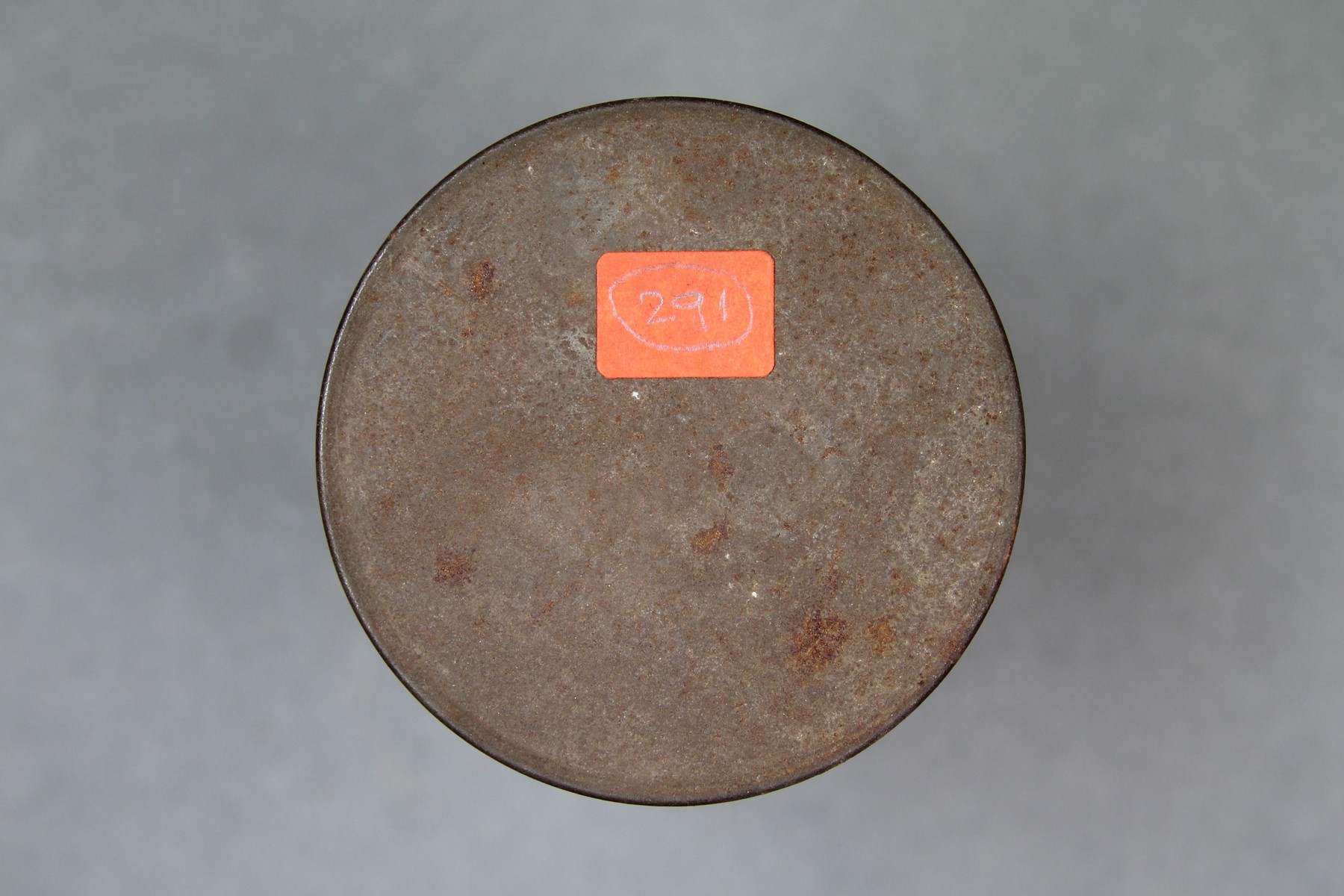 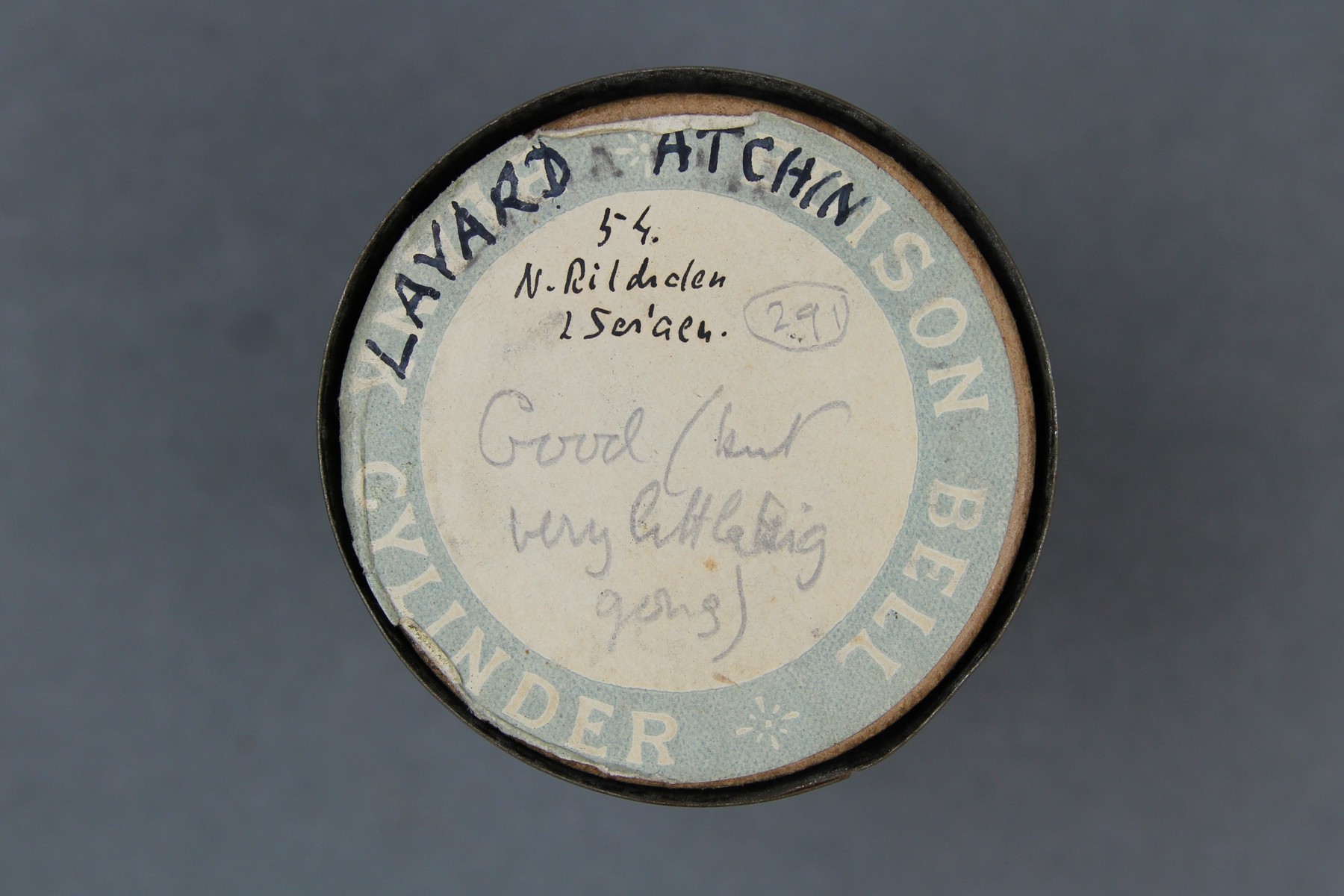     | Layard's fieldnotes are in the John Willoughby Layard papers (MSS 84) in the Special Collections & Archives of the University of California, San Diego. The music notes are compiled in a PDF titled ‘Unpublished Atchin book: “Folk Songs”: Annotated music books, with words and music, hand-written and typed notes, translations.’ from box 47, folder 8. This PDF is held by the British Library. | ||||||
| C177/292 | Etutu tuloni | Unidentified (percussion) | Atchin, Malekula, New Hebrides Condominium (Vanuatu) | 28 September 1914 – 9 October 1915 | 1. Inaudible due to cutter bounce. 2. Ref note (probably A flat) followed by drumming. From Layard’s fieldnotes (page 19): “E tututuloni – first by mother-gong, and, that being no good, by tsoron.” From Layard's fieldnotes (page 105): “e tu-tu-tu-loni, first on mother gong, but this not coming out well, then on portable gonglets.” | Track 2 is good quality with clear signal and little surface noise. | Uripiv-Wala-Rano-Atchin | Field recordings | John Willoughby Layard, 1891-1974 | 5'01" | John Layard, 1914-1915 | Brown wax cylinder | John Layard 1914 Atchin, New Hebrides Cylinder Collection | British Library |  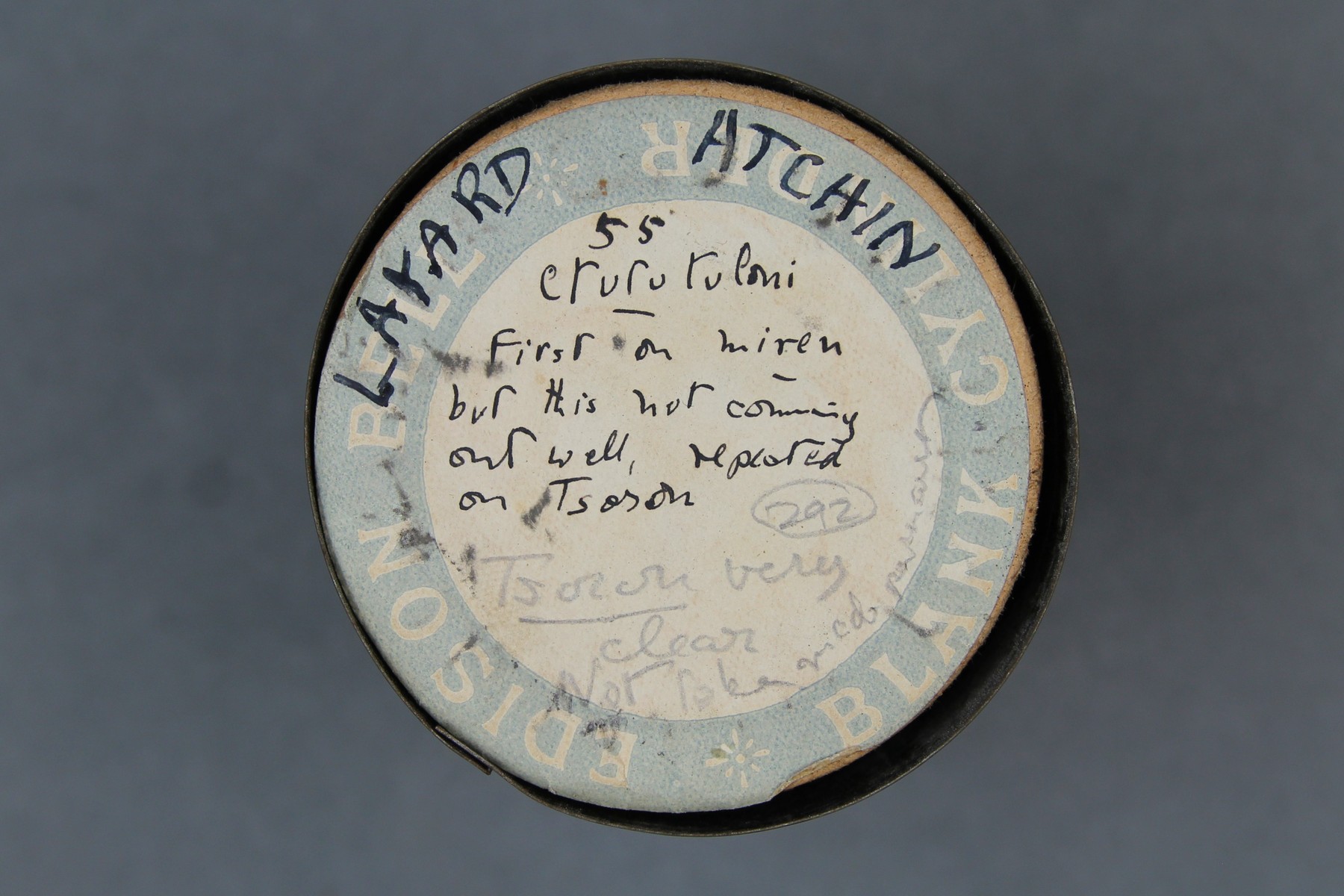     | Layard's fieldnotes are in the John Willoughby Layard papers (MSS 84) in the Special Collections & Archives of the University of California, San Diego. The music notes are compiled in a PDF titled ‘Unpublished Atchin book: “Folk Songs”: Annotated music books, with words and music, hand-written and typed notes, translations.’ from box 47, folder 8. This PDF is held by the British Library. | ||||||
| C177/293 | Welenimbek [1] | Unidentified (percussion); unidentified (male chorus) | Atchin, Malekula, New Hebrides Condominium (Vanuatu) | 28 September 1914 – 9 October 1915 | 1. Drumming with two shouts at end. 2-3. Male duet with drumming accompaniment. From Layard’s fieldnotes (page 19): “Welenimbek. When they cry they stop, and then start dancing again with a new song (see also 59)” | Good quality recording with clear signal and little surface noise. | Uripiv-Wala-Rano-Atchin | Field recordings | John Willoughby Layard, 1891-1974 | 4'11" | John Layard, 1914-1915 | Brown wax cylinder | John Layard 1914 Atchin, New Hebrides Cylinder Collection | British Library | 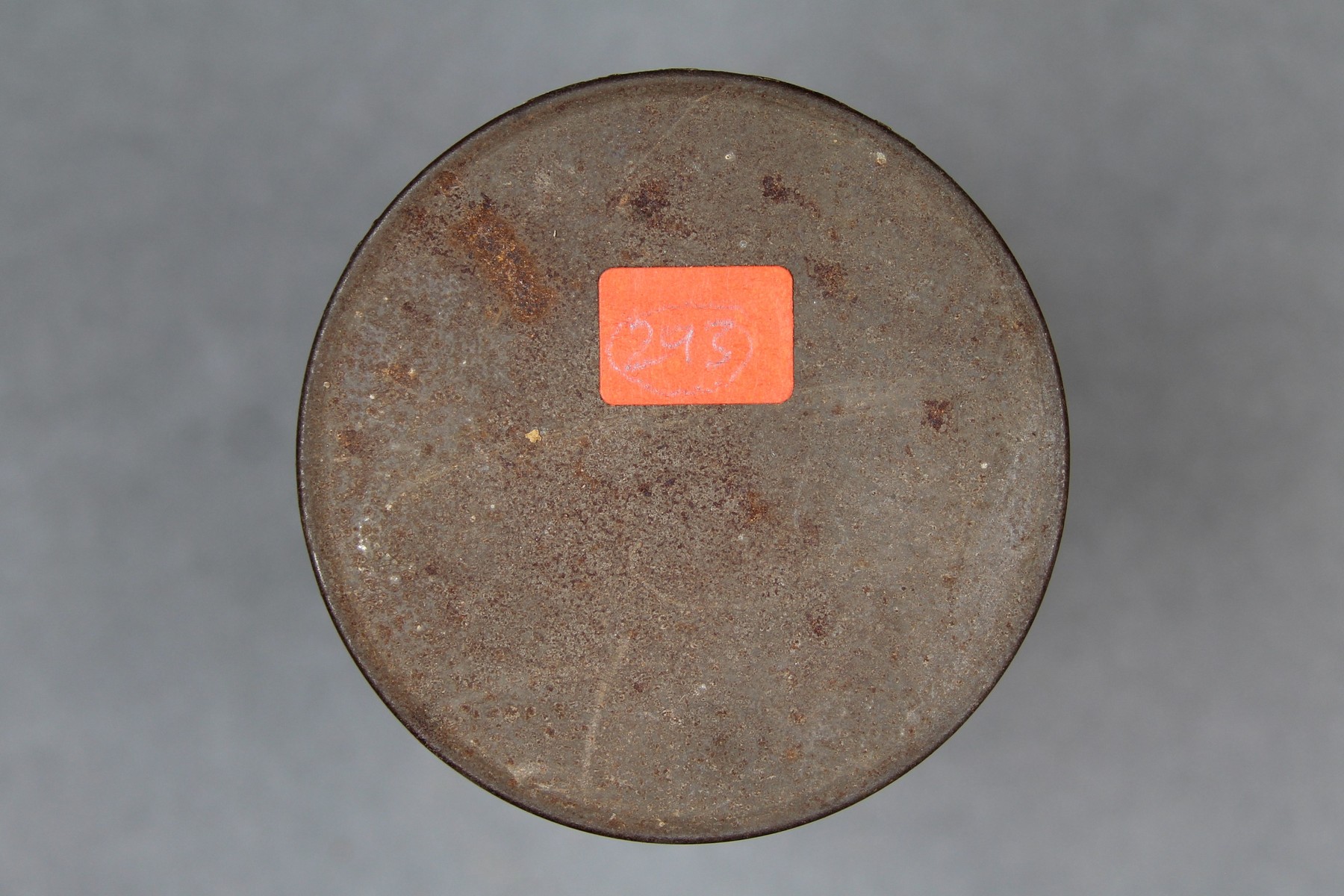 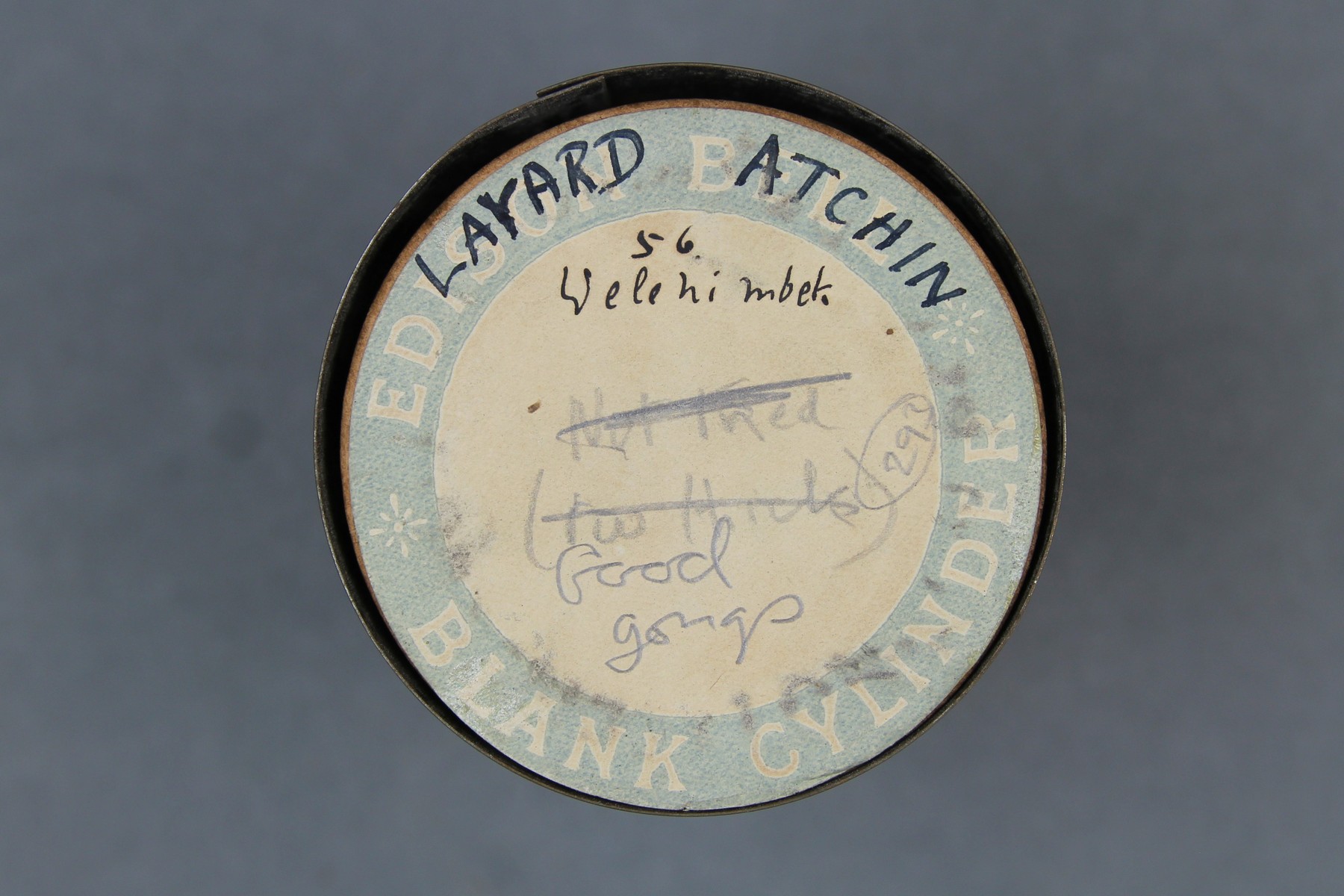     | Layard's fieldnotes are in the John Willoughby Layard papers (MSS 84) in the Special Collections & Archives of the University of California, San Diego. The music notes are compiled in a PDF titled ‘Unpublished Atchin book: “Folk Songs”: Annotated music books, with words and music, hand-written and typed notes, translations.’ from box 47, folder 8. This PDF is held by the British Library. | ||||||
| C177/294 | Selven [1] | Unidentified (percussion); unidentified (male chorus) | Atchin, Malekula, New Hebrides Condominium (Vanuatu) | 28 September 1914 – 9 October 1915 | 1. Male vocal group with drumming. 2. False start. 3. Male vocal group with shouts, whistles and gongs. From Layard’s fieldnotes (page 19): “Seluen, with another song and more fully. Wenen:- Ni-al we na-vül pwi ser ruru nimbwalep. Naus baus pwi awe wenu. ‘May the sun and moon shine and penetrate through the leaves. May the rain fall and cover the ground’. There is another verse: Se sal mele uri. Olewe pipi mouwat pal-pal atom re sela ghasi. ‘Let us shoot fish called pipi and mouwat and put them at the sacrificial posts and dance round them’.” | Reasonable quality recording but with some distortion. | Uripiv-Wala-Rano-Atchin | Field recordings | John Willoughby Layard, 1891-1974 | 4'26" | John Layard, 1914-1915 | Brown wax cylinder | John Layard 1914 Atchin, New Hebrides Cylinder Collection | British Library | 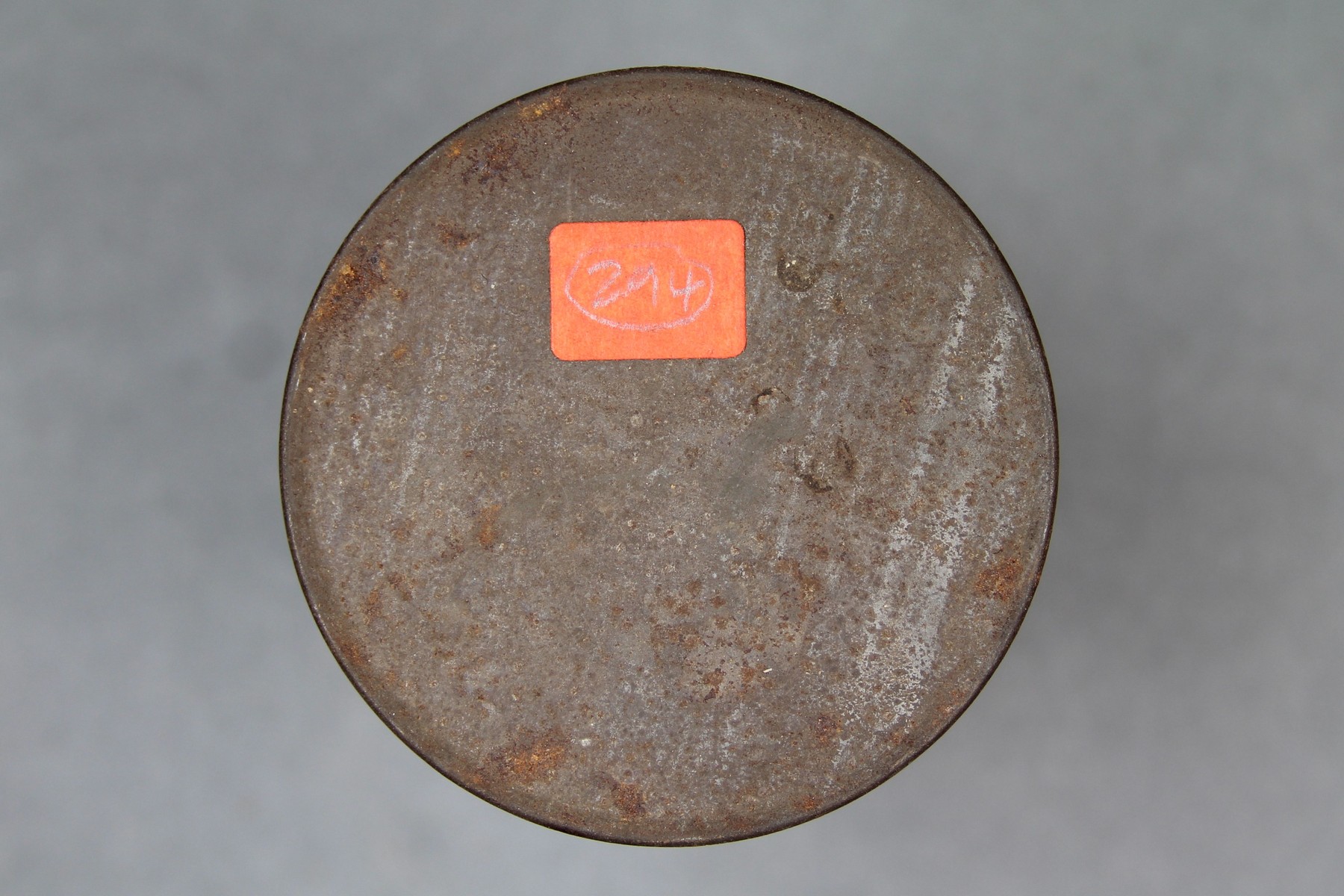 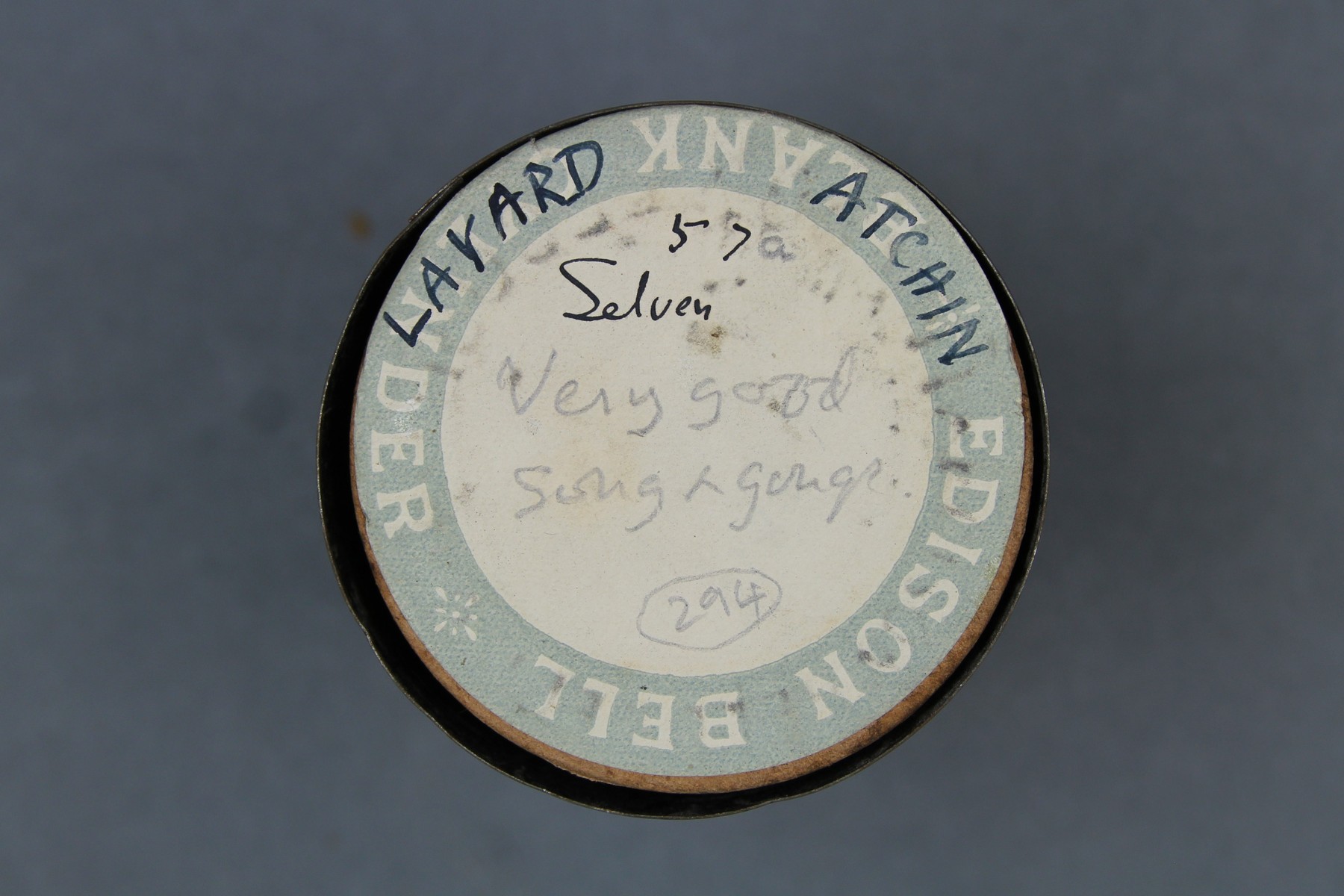     | Layard's fieldnotes are in the John Willoughby Layard papers (MSS 84) in the Special Collections & Archives of the University of California, San Diego. The music notes are compiled in a PDF titled ‘Unpublished Atchin book: “Folk Songs”: Annotated music books, with words and music, hand-written and typed notes, translations.’ from box 47, folder 8. This PDF is held by the British Library. | ||||||
| C177/295 | Selven [2] | Unidentified (percussion); unidentified (male chorus) | Atchin, Malekula, New Hebrides Condominium (Vanuatu) | 28 September 1914 – 9 October 1915 | 1. Male vocal group with drumming. From Layard’s fieldnotes (page 19): “Seluen, with another so ng and more fully. Wenen:- Ni-al we na-vül pwi ser ruru nimbwalep. Naus baus pwi awe wenu. ‘May the sun and moon shine and penetrate through the leaves. May the rain fall and cover the ground’. There is another verse: Se sal mele uri. Olewe pipi mouwat pal-pal atom re sela ghasi. ‘Let us shoot fish called pipi and mouwat and put them at the sacrificial posts and dance round them’.” | Reasonable quality recording but with some distortion. | Uripiv-Wala-Rano-Atchin | Field recordings | John Willoughby Layard, 1891-1974 | 2'32" | John Layard, 1914-1915 | Brown wax cylinder | John Layard 1914 Atchin, New Hebrides Cylinder Collection | British Library | 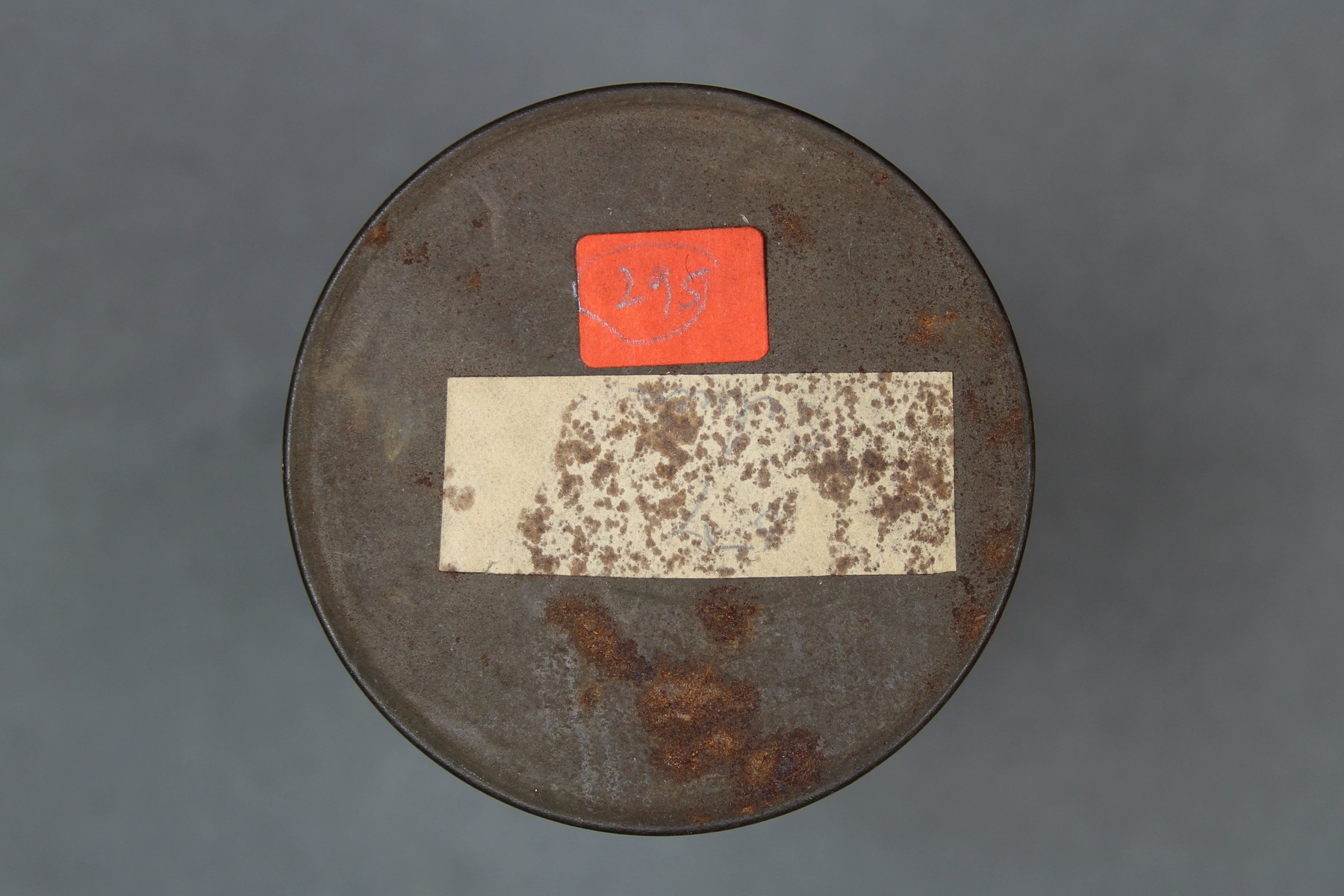      | Layard's fieldnotes are in the John Willoughby Layard papers (MSS 84) in the Special Collections & Archives of the University of California, San Diego. The music notes are compiled in a PDF titled ‘Unpublished Atchin book: “Folk Songs”: Annotated music books, with words and music, hand-written and typed notes, translations.’ from box 47, folder 8. This PDF is held by the British Library. | ||||||
| C177/296 | Dureinambwe | Unidentified (percussion); unidentified (male chorus) | Atchin, Malekula, New Hebrides Condominium (Vanuatu) | 28 September 1914 – 9 October 1915 | 1. Male vocal group with shouting and drumming. mbwe - gong ; nambwe - gong-signal (Capell and Layard 1980:119) From Layard’s fieldnotes (page 19): Durei na-mbwe. (Gong-raising),. Mish-mash tan-mwe-liw. Tamate o tai mish-mash na-mbuas pal ne winöv. ‘Mish-mash at (belonging to?) Tan-mwe-liw. The ghost (his ghost) cut this mish-mash and killed all the pigs.’” | Reasonable quality recording but with strong signal resulting in distortion. | Uripiv-Wala-Rano-Atchin | Field recordings | John Willoughby Layard, 1891-1974 | 4'50" | John Layard, 1914-1915 | Brown wax cylinder | John Layard 1914 Atchin, New Hebrides Cylinder Collection | British Library | 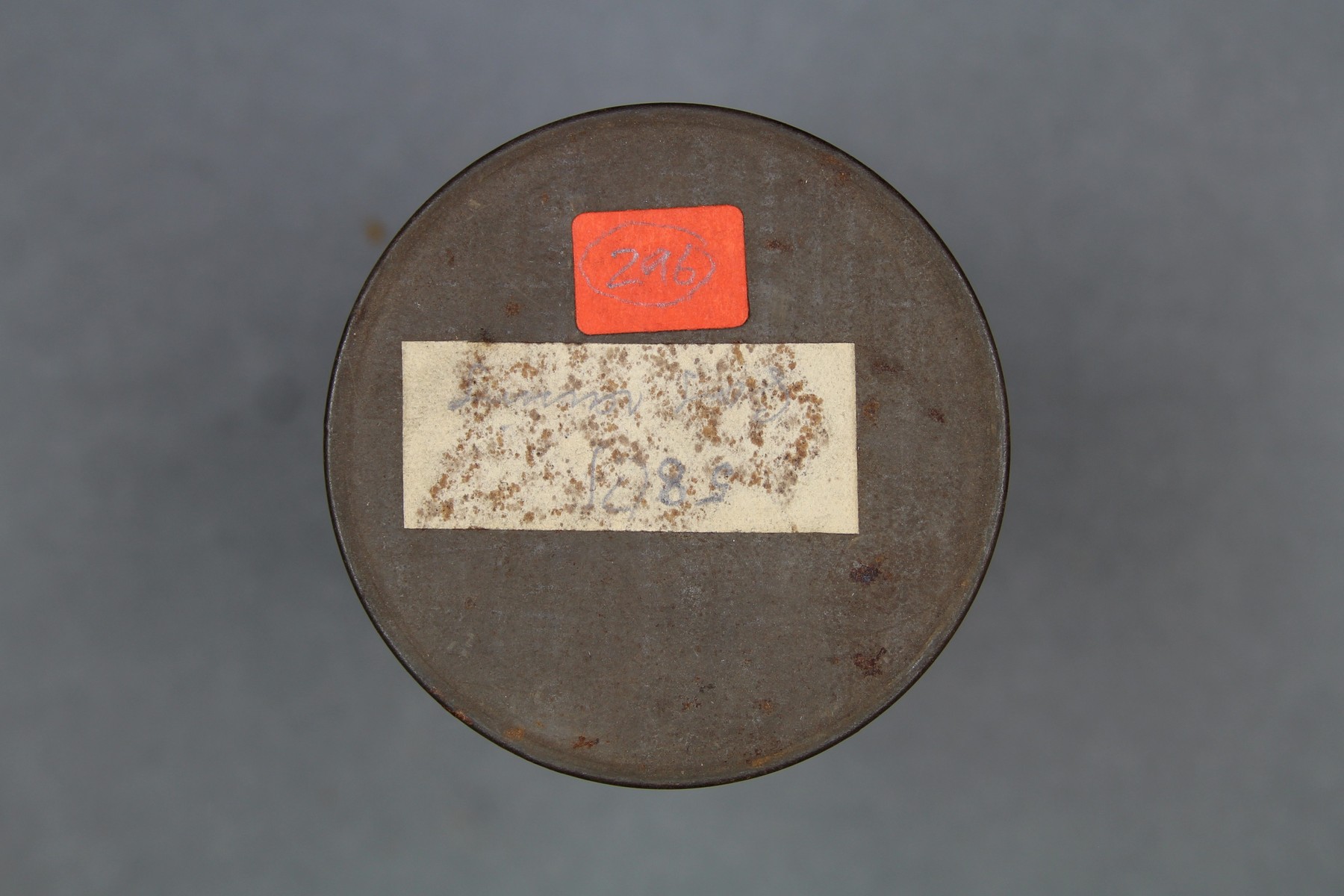 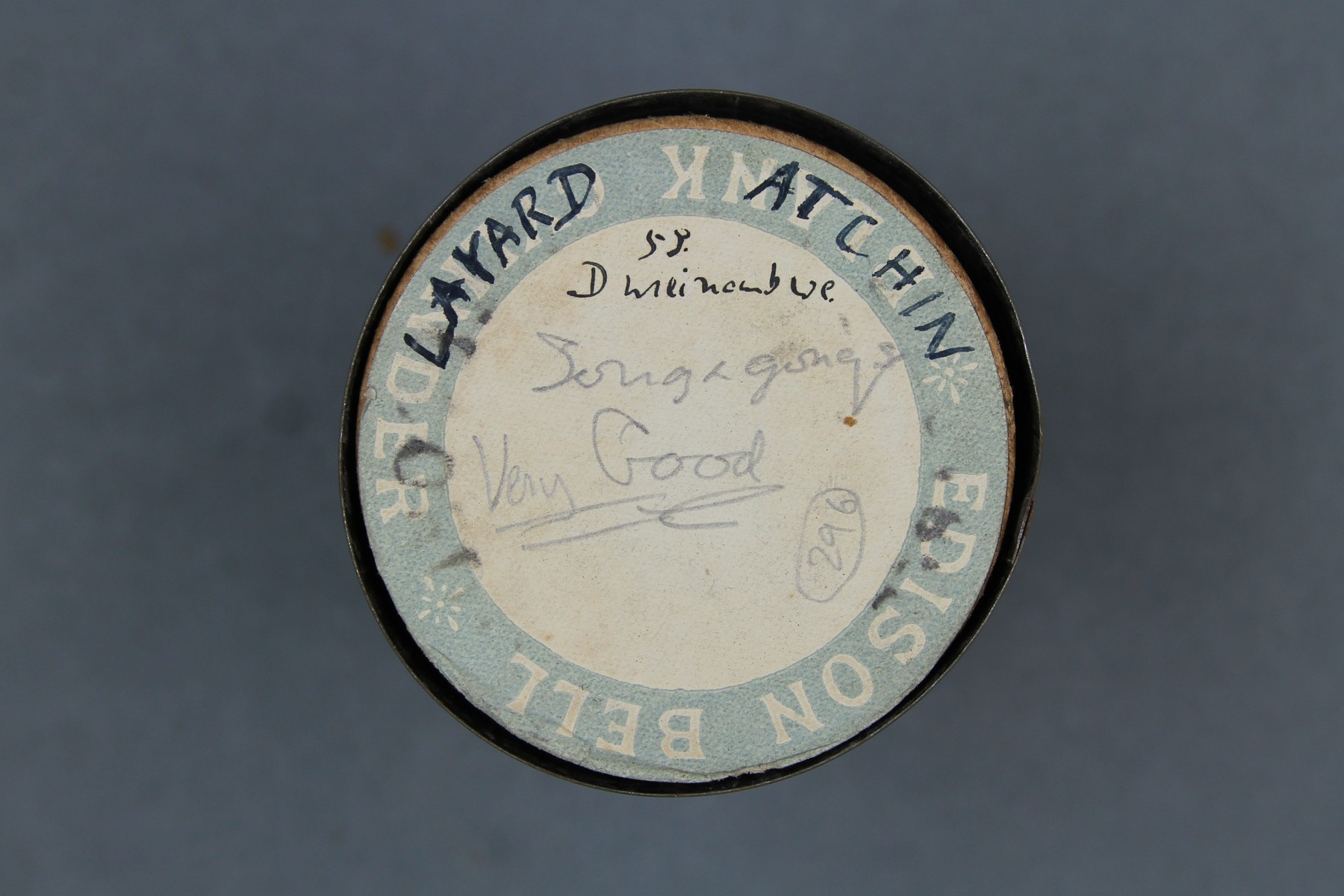     | Layard's fieldnotes are in the John Willoughby Layard papers (MSS 84) in the Special Collections & Archives of the University of California, San Diego. The music notes are compiled in a PDF titled ‘Unpublished Atchin book: “Folk Songs”: Annotated music books, with words and music, hand-written and typed notes, translations.’ from box 47, folder 8. This PDF is held by the British Library. | ||||||
| C177/297 | Welenimbek [2] | Unidentified (percussion); unidentified (male chorus) | Atchin, Malekula, New Hebrides Condominium (Vanuatu) | 28 September 1914 – 9 October 1915 | 1. Male vocal group with drumming. From Layard’s fieldnotes (page 19): "Welenimbek. (see also 56.) When silent or shouting they are running round. Savlang rov-romon. Merege romorum santsuri. Mo Nambuas. Rom sale na mesav. Tamangin oror tombat rom sal. ‘What wind? Mara takes us all pigs, float on the open sea.’ Tambangon --- men of Ambrym?” | Reasonable quality recording but with strong signal resulting in some distortion. | Uripiv-Wala-Rano-Atchin | Field recordings | John Willoughby Layard, 1891-1974 | 4'46" | John Layard, 1914-1915 | Brown wax cylinder | John Layard 1914 Atchin, New Hebrides Cylinder Collection | British Library | 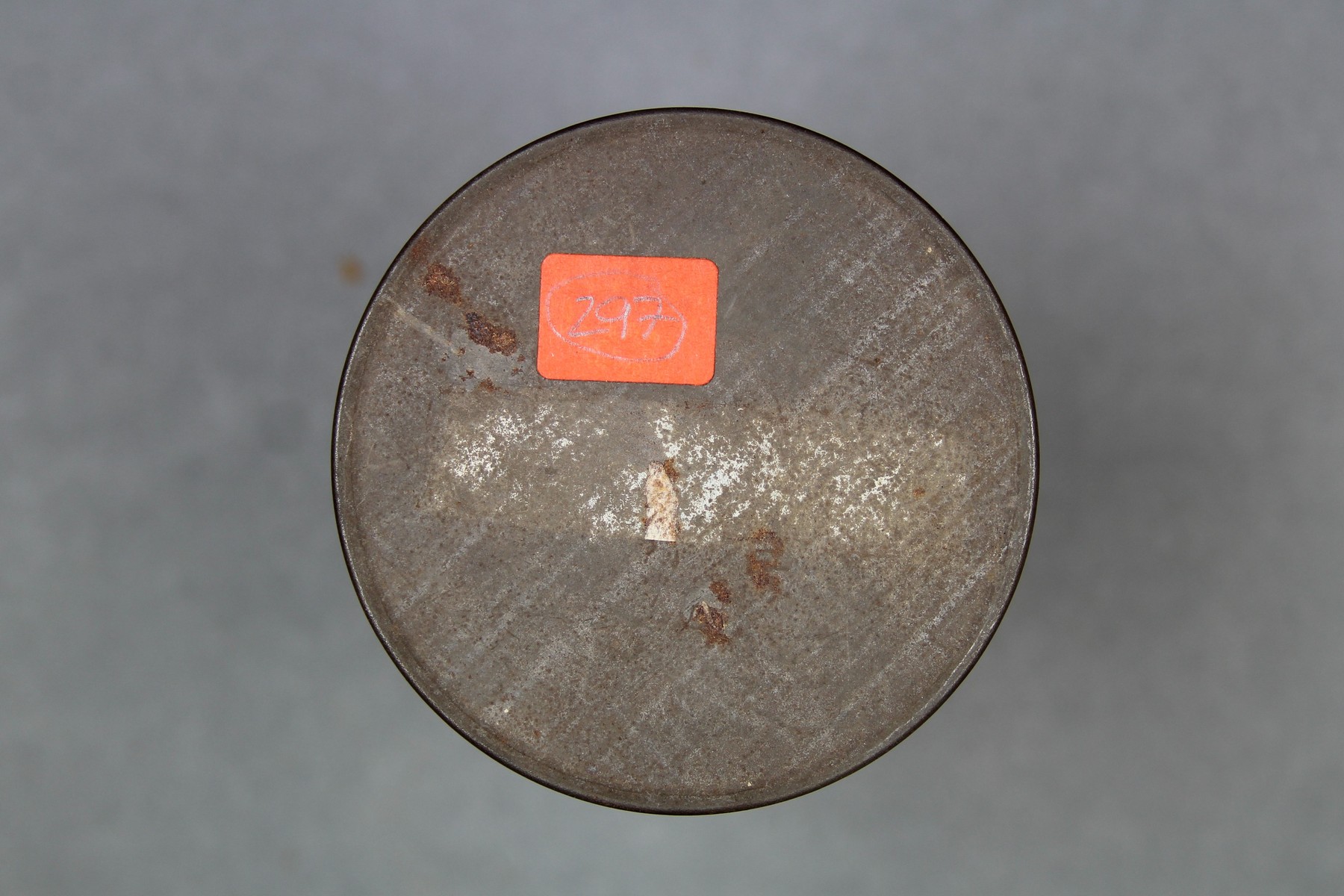 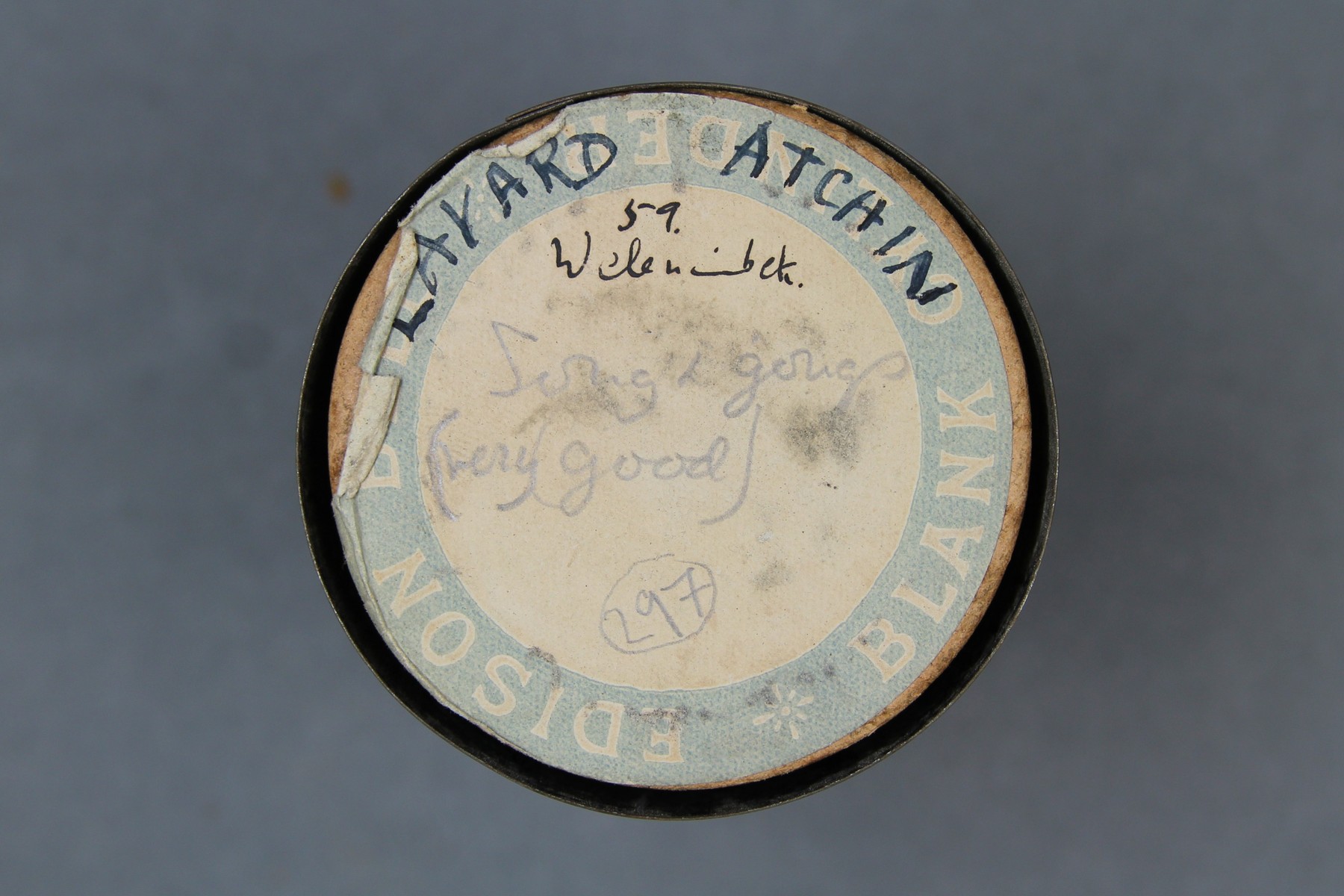     | Layard's fieldnotes are in the John Willoughby Layard papers (MSS 84) in the Special Collections & Archives of the University of California, San Diego. The music notes are compiled in a PDF titled ‘Unpublished Atchin book: “Folk Songs”: Annotated music books, with words and music, hand-written and typed notes, translations.’ from box 47, folder 8. This PDF is held by the British Library. | ||||||
| C177/298 | Welalen | Unidentified (percussion); unidentified (male chorus) | Atchin, Malekula, New Hebrides Condominium (Vanuatu) | 28 September 1914 – 9 October 1915 | 1. Ref note (probably A flat) followed by male vocal group and drumming. From Layard’s fieldnotes (page 19): “Welalen. Or lelek Meltego-to: or lelek lolo na’im: pu roror pie tsalil: (follows a 4th. stance meaning “all foreigners hear of it”) They stay (?gather) (with) Melteg-to: they stay (gather) at the house: he roofs ------ ------ outside’. Repeated with names of Rom-romon Nakur ? --- previous Singeremal occupiers Korton-mal of the ground?” | Reasonable quality recording but with strong signal resulting in some distortion. | Uripiv-Wala-Rano-Atchin | Field recordings | John Willoughby Layard, 1891-1974 | 5'05" | John Layard, 1914-1915 | Brown wax cylinder | John Layard 1914 Atchin, New Hebrides Cylinder Collection | British Library | 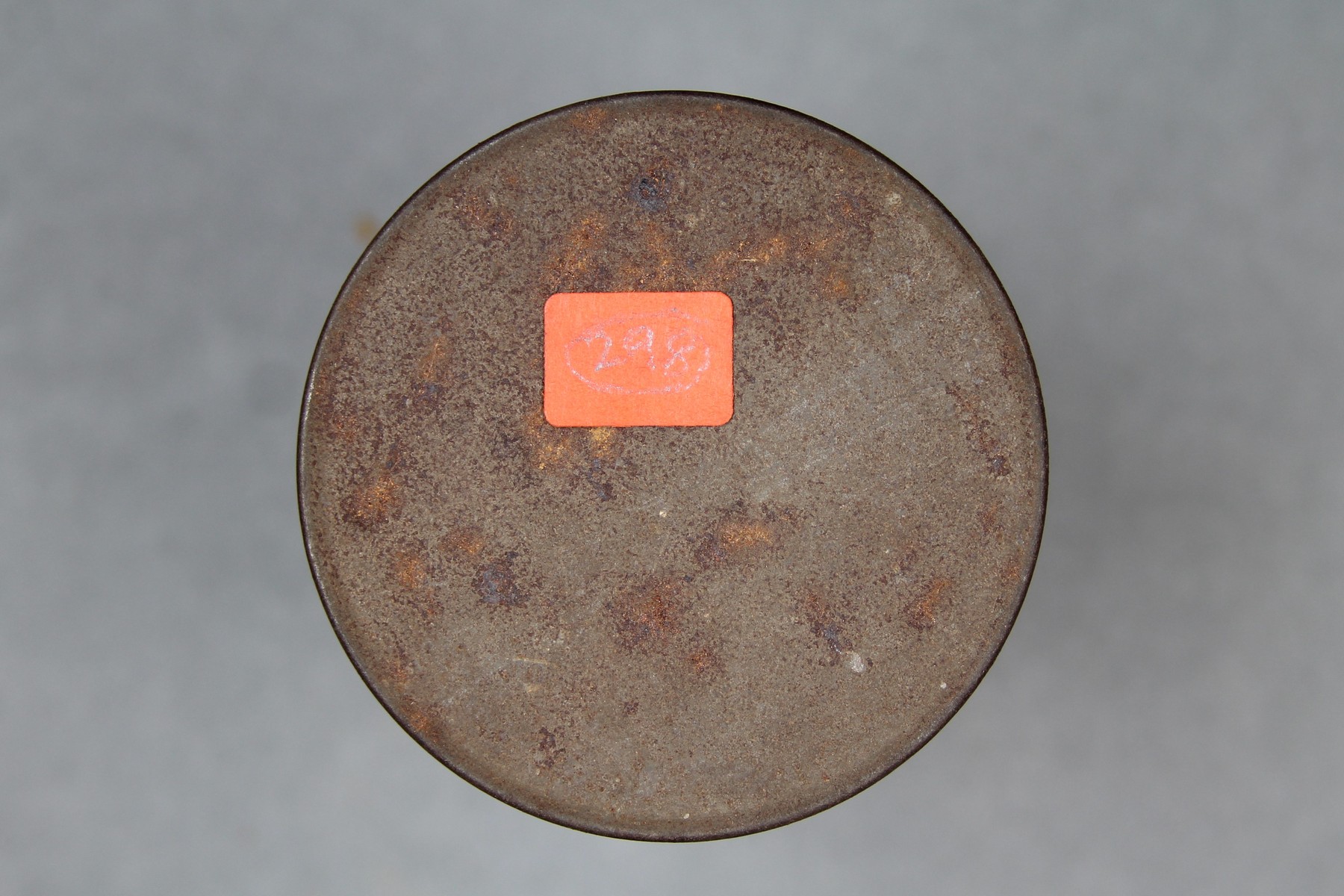 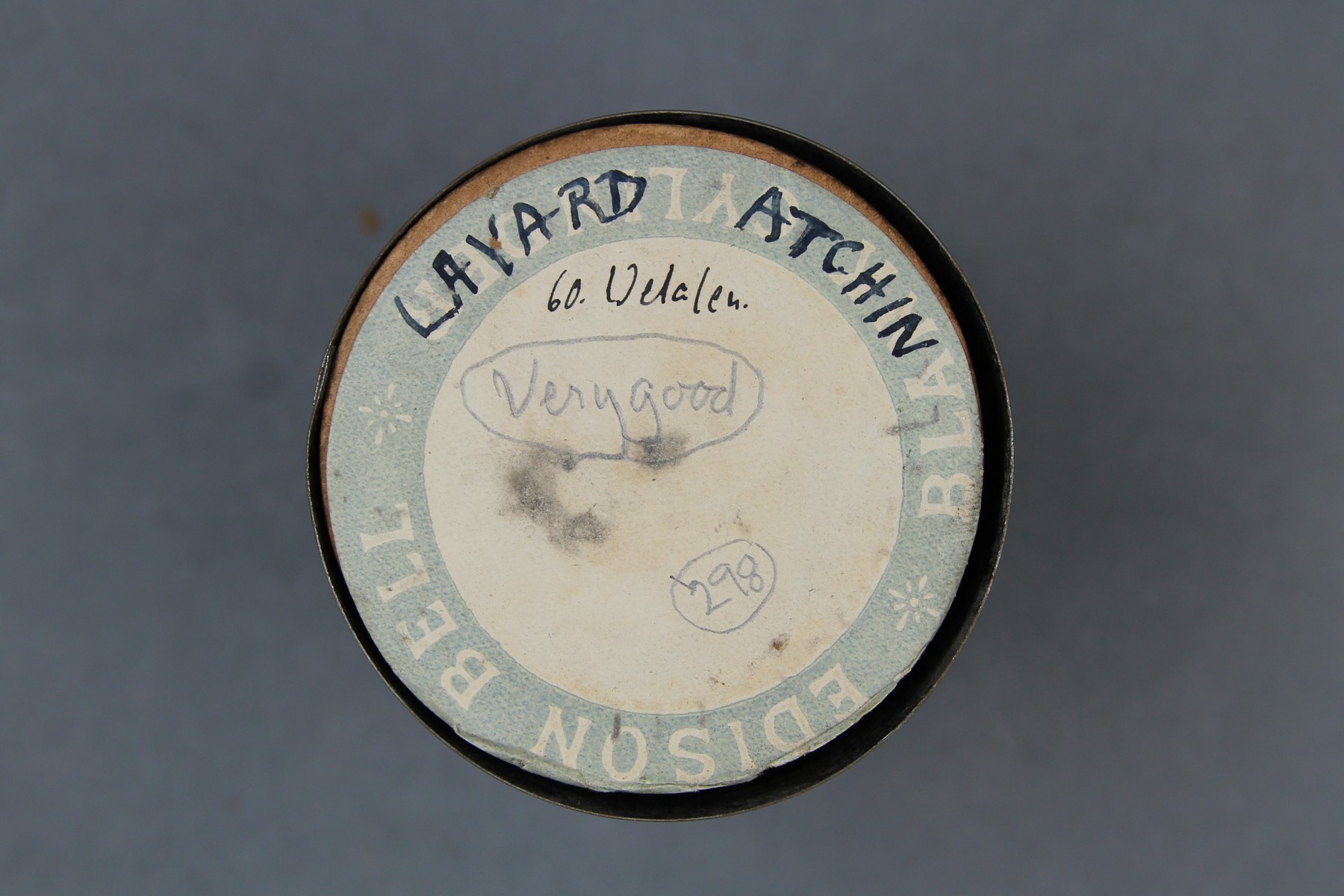 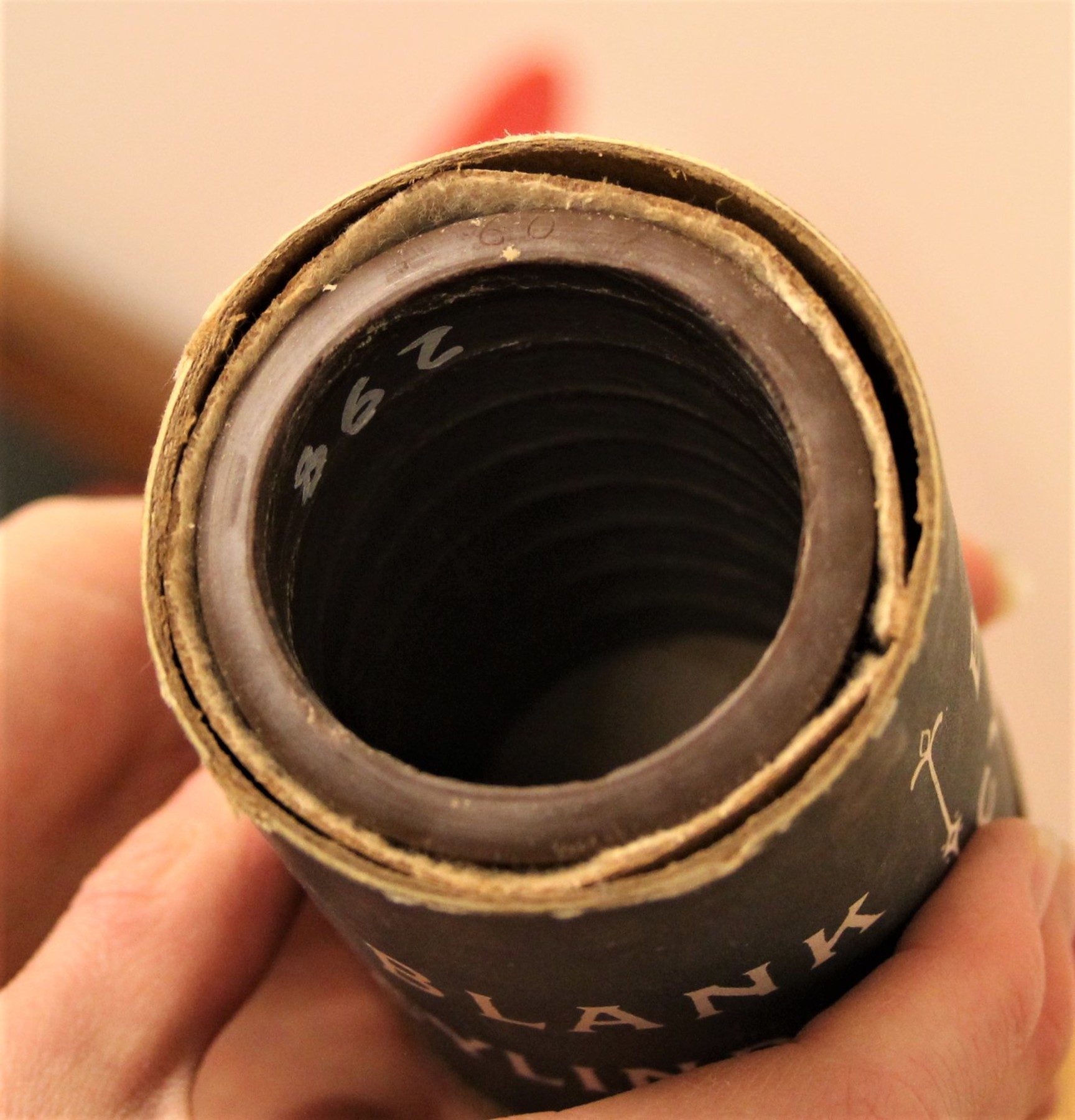    | Layard's fieldnotes are in the John Willoughby Layard papers (MSS 84) in the Special Collections & Archives of the University of California, San Diego. The music notes are compiled in a PDF titled ‘Unpublished Atchin book: “Folk Songs”: Annotated music books, with words and music, hand-written and typed notes, translations.’ from box 47, folder 8. This PDF is held by the British Library. | ||||||
| C671/320 | Set Oration for Que | Oméa Yaīnŏ (speaker); unidentified (chorus); unidentified (percussion) | Gondé, Houaïlou, North Province, New Caledonia | 30 November 1914 | 1. Male vocal solo with vocal group and drums. Set oration (hereditary) for Que. Omea Vaino (aged chief). ctd. on 0321. | From New Caledonia | Reasonable quality recording but with surface noise. | Field recordings | Montague, Paul Denys, 1890-1917 | 5'01" | Paul Montague, 1914 | Light brown wax cylinder, Edison Bell | Paul Montague 1914 Gondé, New Caledonia Cylinder Collection | British Library | 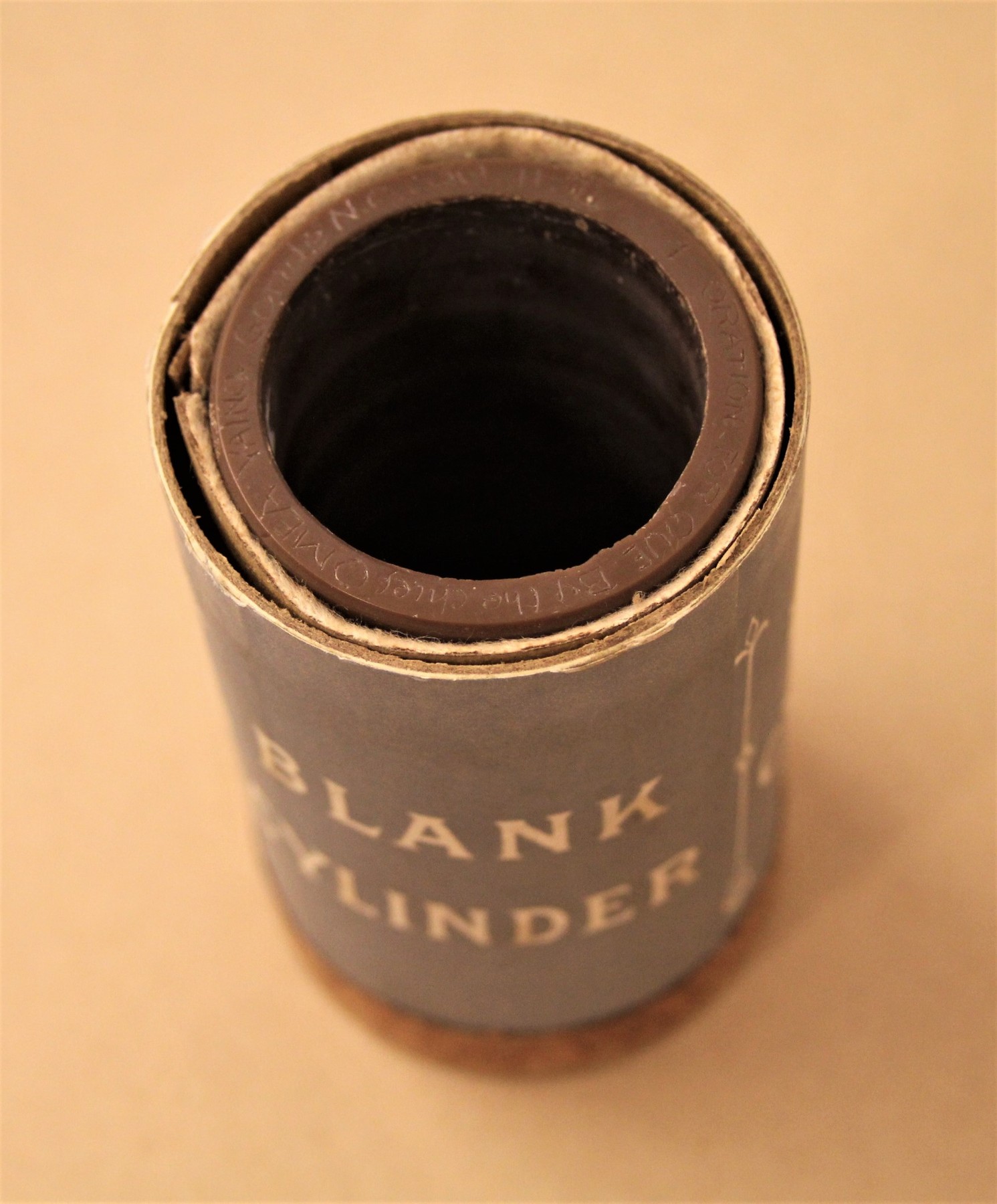 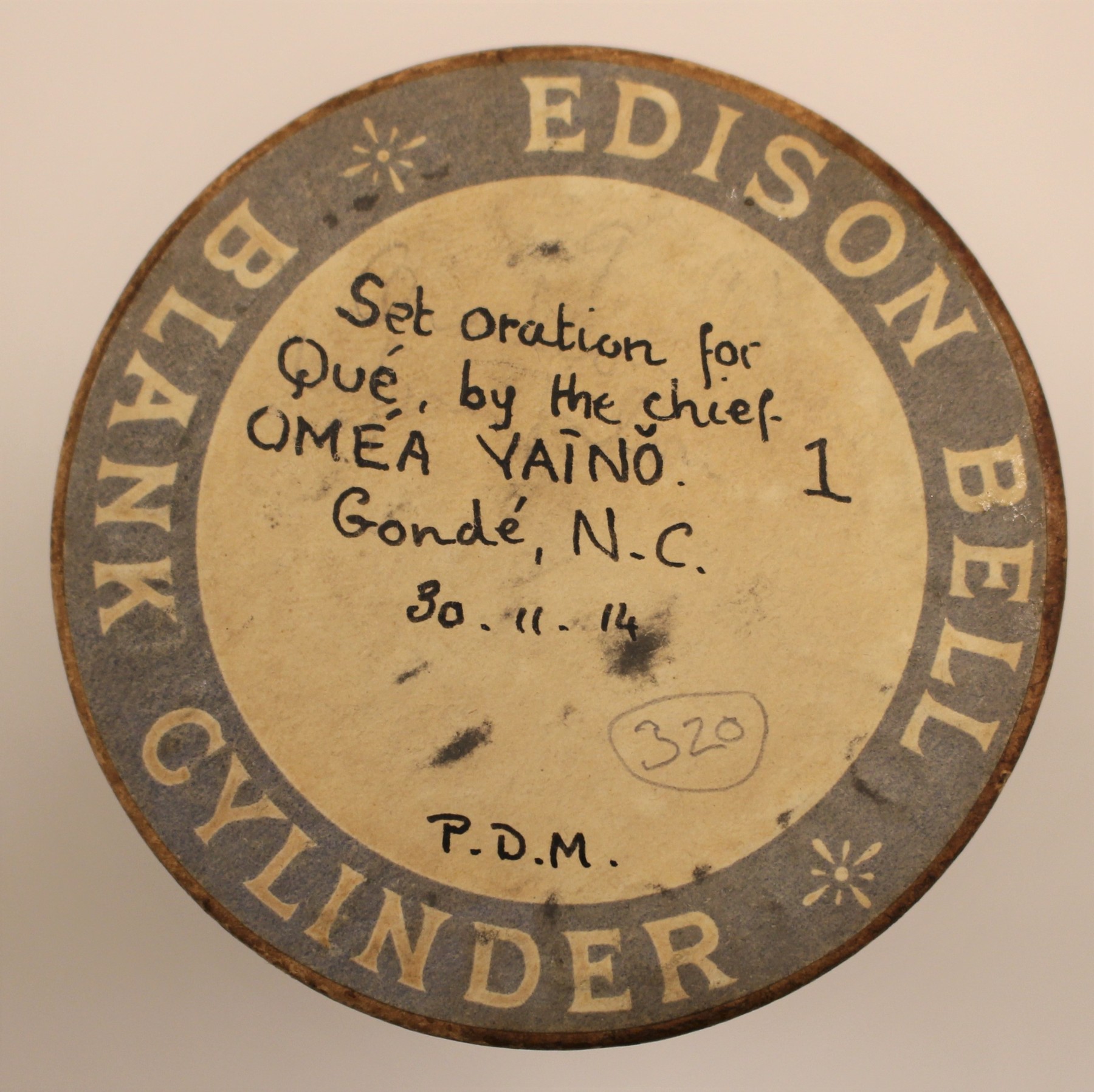 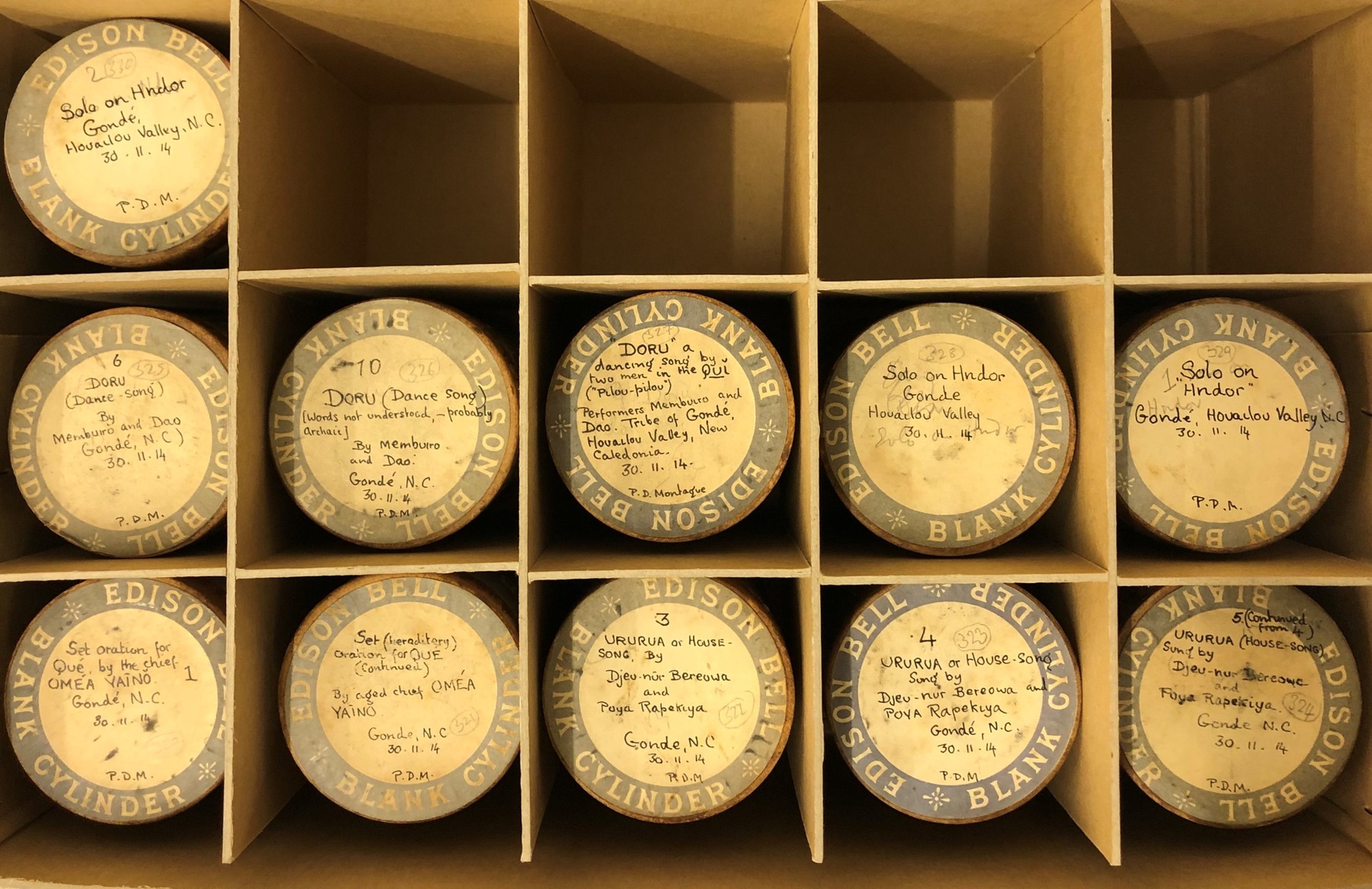    | |||||||
| C671/321 | Set Oration for Que | Oméa Yaīnŏ (speaker); unidentified (chorus); unidentified (percussion) | Gondé, Houaïlou, North Province, New Caledonia | 30 November 1914 | 1. Male vocal solo with vocal group and drums. Set oration (hereditary) for Que, ctd. . Omea Yaino (aged chief).- ctd. from 0320. | From New Caledonia | Reasonable quality recording but with surface noise. | Field recordings | Montague, Paul Denys, 1890-1917 | 2'16" | Paul Montague, 1914 | Light brown wax cylinder, Edison Bell | Paul Montague 1914 Gondé, New Caledonia Cylinder Collection | British Library | 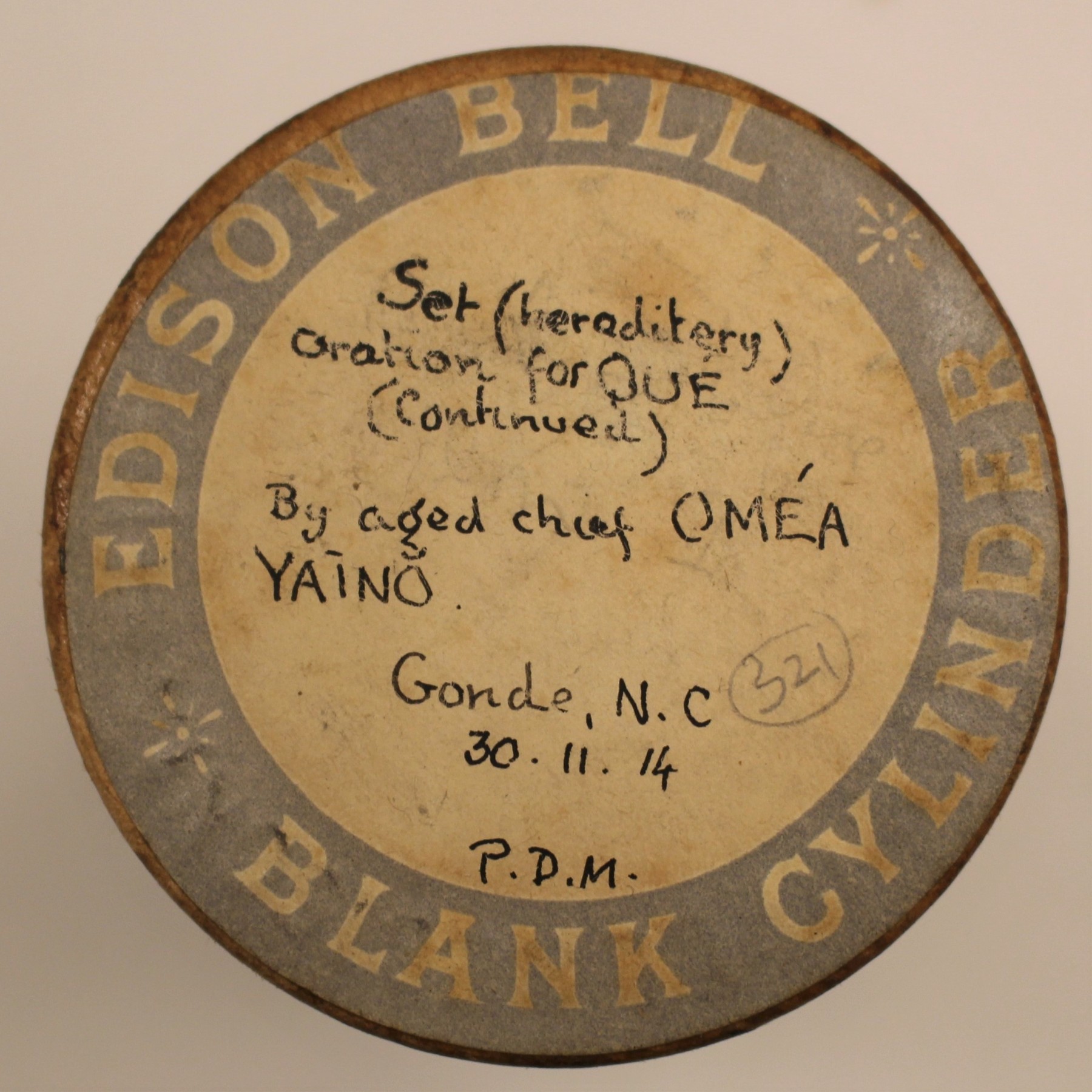      | |||||||
| C671/322 | Ururua or House Song | Djeu-Nūr Bereowa (singer); Poya Rapekiya (singer); unidentified (percussion) | Gondé, Houaïlou, North Province, New Caledonia | 30 November 1914 | 1. Male vocal duet, possibly accompanied by percussion. Ururua or House-song. Bereowa, Dje-nur and Rapekiya, Poya. cf. 0323. | From New Caledonia | Reasonable quality recording but with weak signal and surface noise. | Field recordings | Montague, Paul Denys, 1890-1917 | 3'37" | Paul Montague, 1914 | Light brown wax cylinder, Edison Bell | Paul Montague 1914 Gondé, New Caledonia Cylinder Collection | British Library | 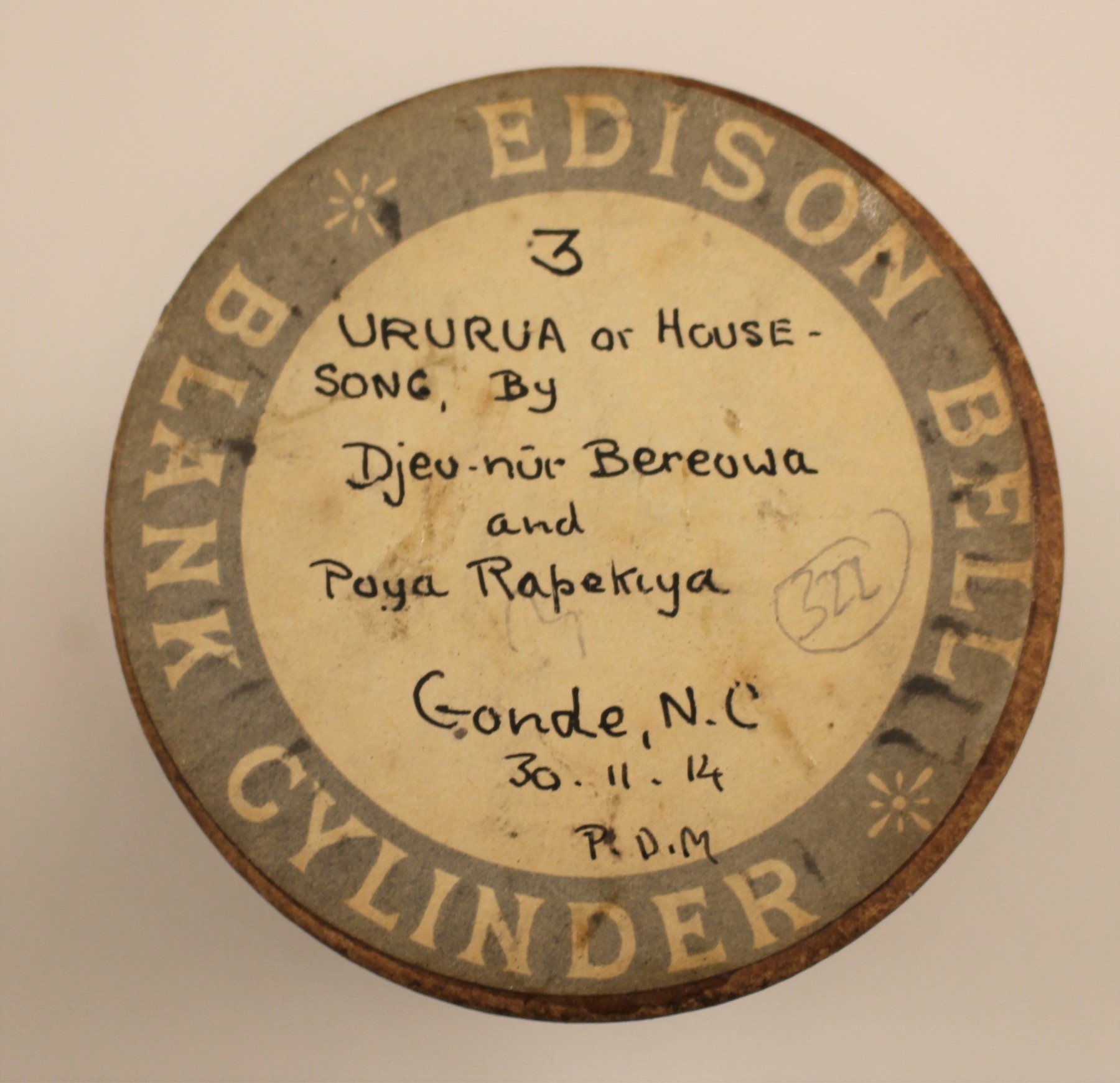 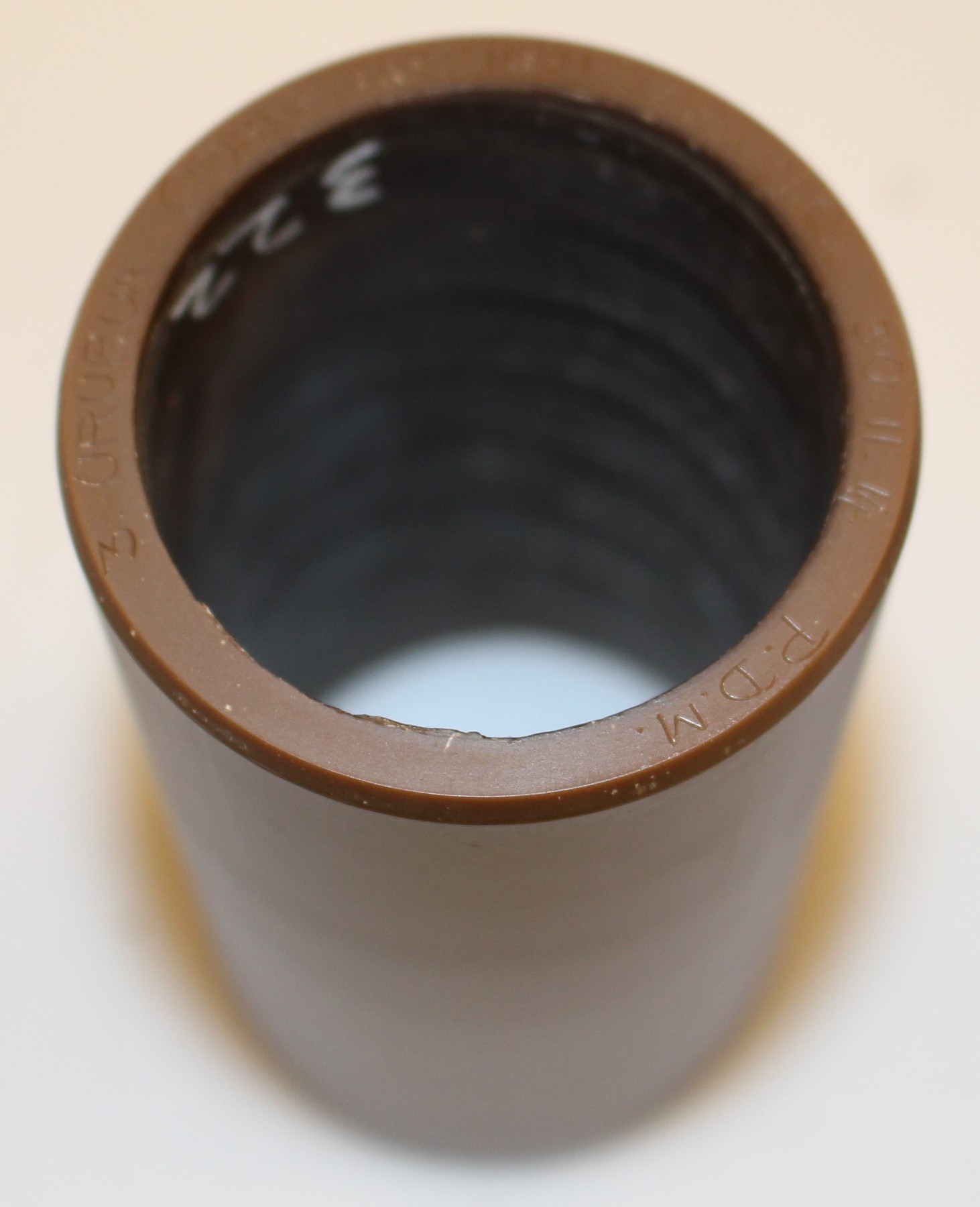     | |||||||
| C671/323 | Ururua or House Song | Djeu-Nūr Bereowa (singer); Poya Rapekiya (singer); unidentified (percussion) | Gondé, Houaïlou, North Province, New Caledonia | 30 November 1914 | 1. Male vocal duet, possibly accompanied by percussion. Ururua or House-song.- Bereowa, Dje-nur and Rapekiya, Poya.- cf. 0322, ctd. on 0324. | From New Caledonia | Reasonable quality recording but with weak signal and surface noise. | Field recordings | Montague, Paul Denys, 1890-1917 | 2'04" | Paul Montague, 1914 | Light brown wax cylinder, Edison Bell | Paul Montague 1914 Gondé, New Caledonia Cylinder Collection | British Library |       | |||||||
| C671/324 | Ururua or House Song | Djeu-Nūr Bereowa (singer); Poya Rapekiya (singer); unidentified (percussion) | Gondé, Houaïlou, North Province, New Caledonia | 30 November 1914 | 1. Male vocal duet, possibly accompanied by percussion. Ururua or House-song.- Bereowa, Dje-nur and Rapekiya, Poya.- ctd. from 0323. | From New Caledonia | Reasonable quality recording but with weak signal and surface noise. | Field recordings | Montague, Paul Denys, 1890-1917 | 2'07" | Paul Montague, 1914 | Light brown wax cylinder, Edison Bell | Paul Montague 1914 Gondé, New Caledonia Cylinder Collection | British Library | 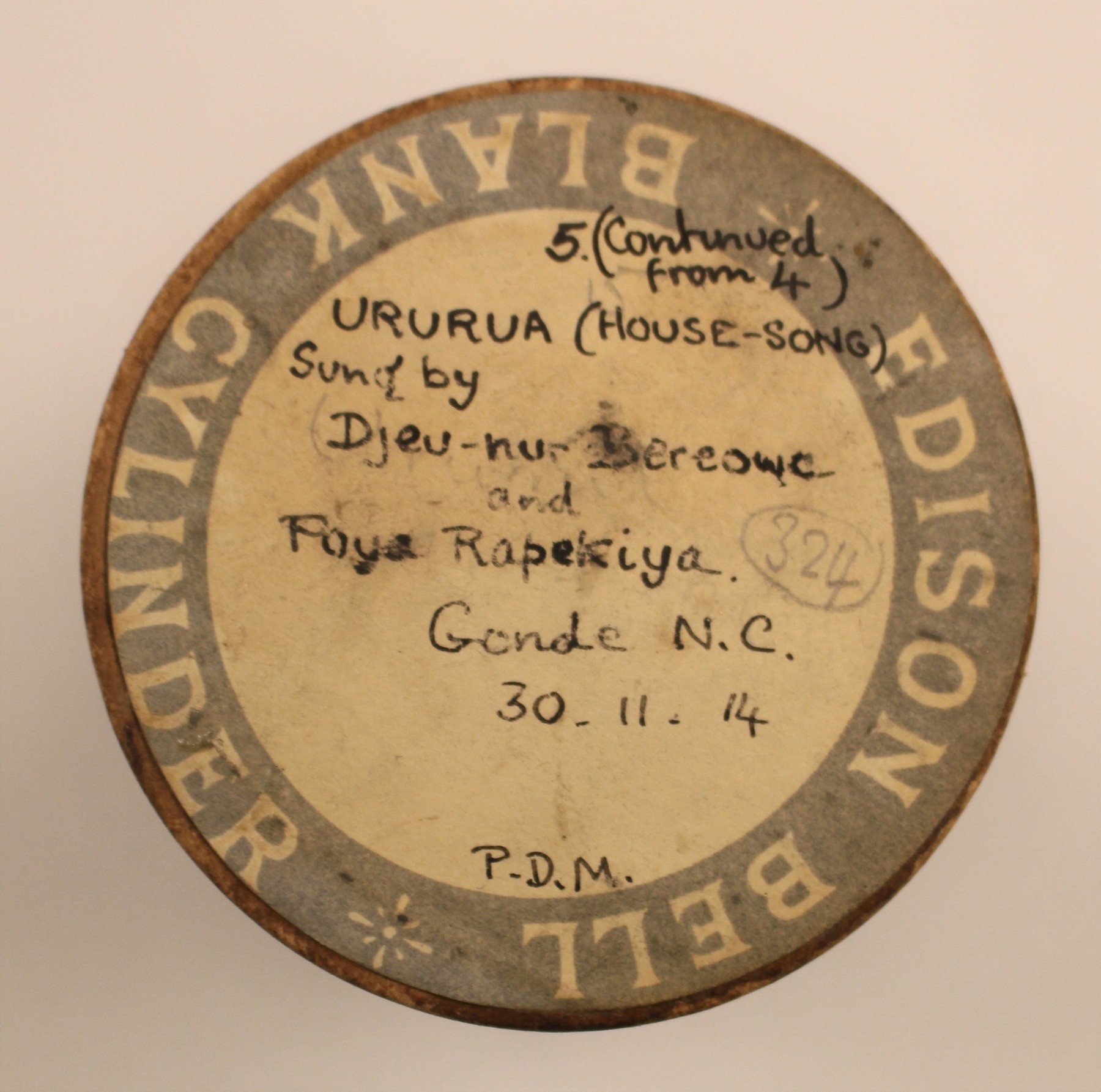 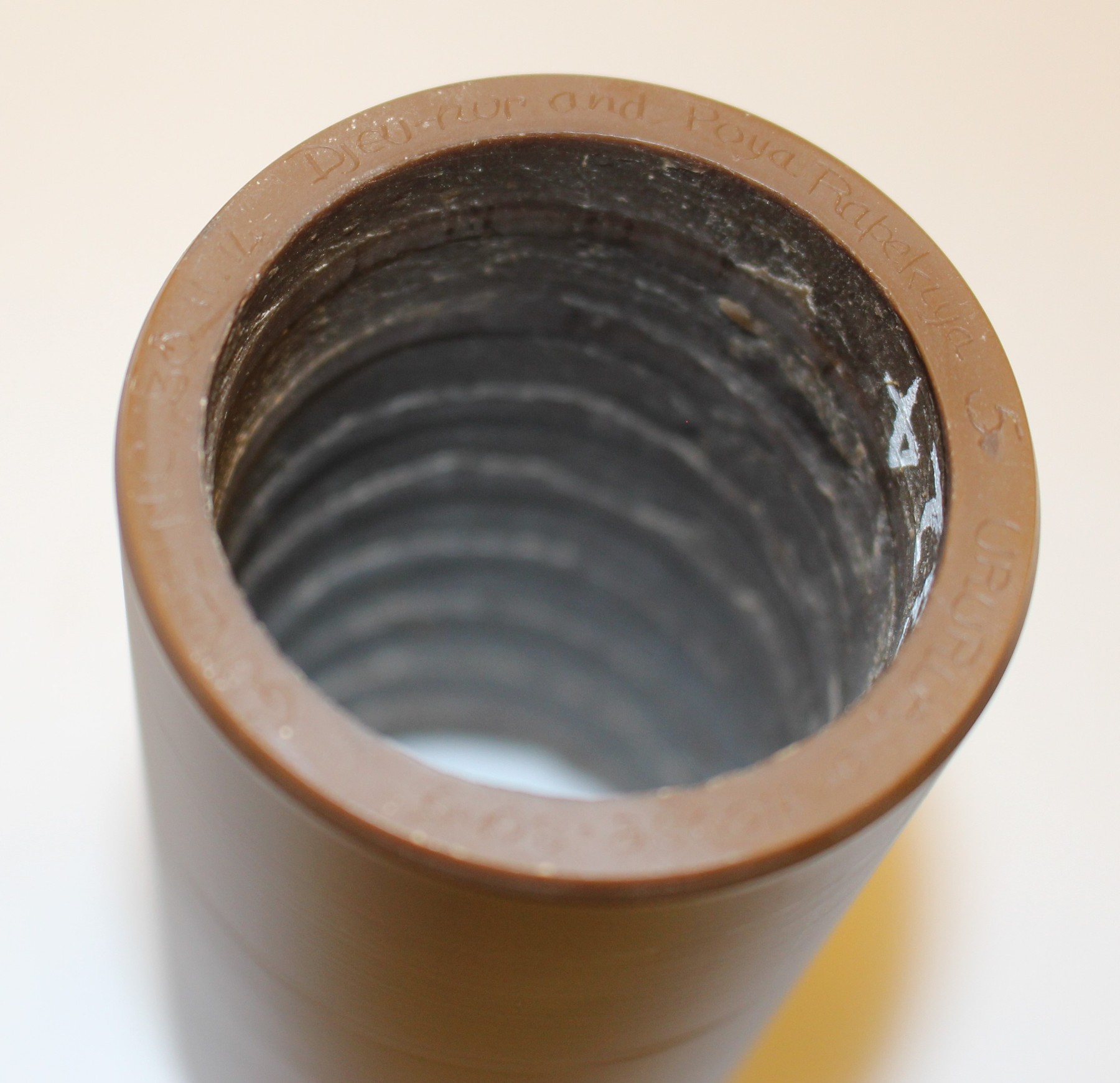     | |||||||
| C671/325 | Doru (Dance Song) | Membuiro (singer, male); Dao (singer, male); unidentified (percussion) | Gondé, Houaïlou, North Province, New Caledonia | 30 November 1914 | 1. Male vocal duet with percussion accompaniment. Doru (dance song). Membuiro and Dao. | From New Caledonia | Reasonable quality recording but with weak signal and surface noise. | Field recordings | Montague, Paul Denys, 1890-1917 | 5'12" | Paul Montague, 1914 | Light brown wax cylinder, Edison Bell | Paul Montague 1914 Gondé, New Caledonia Cylinder Collection | British Library | 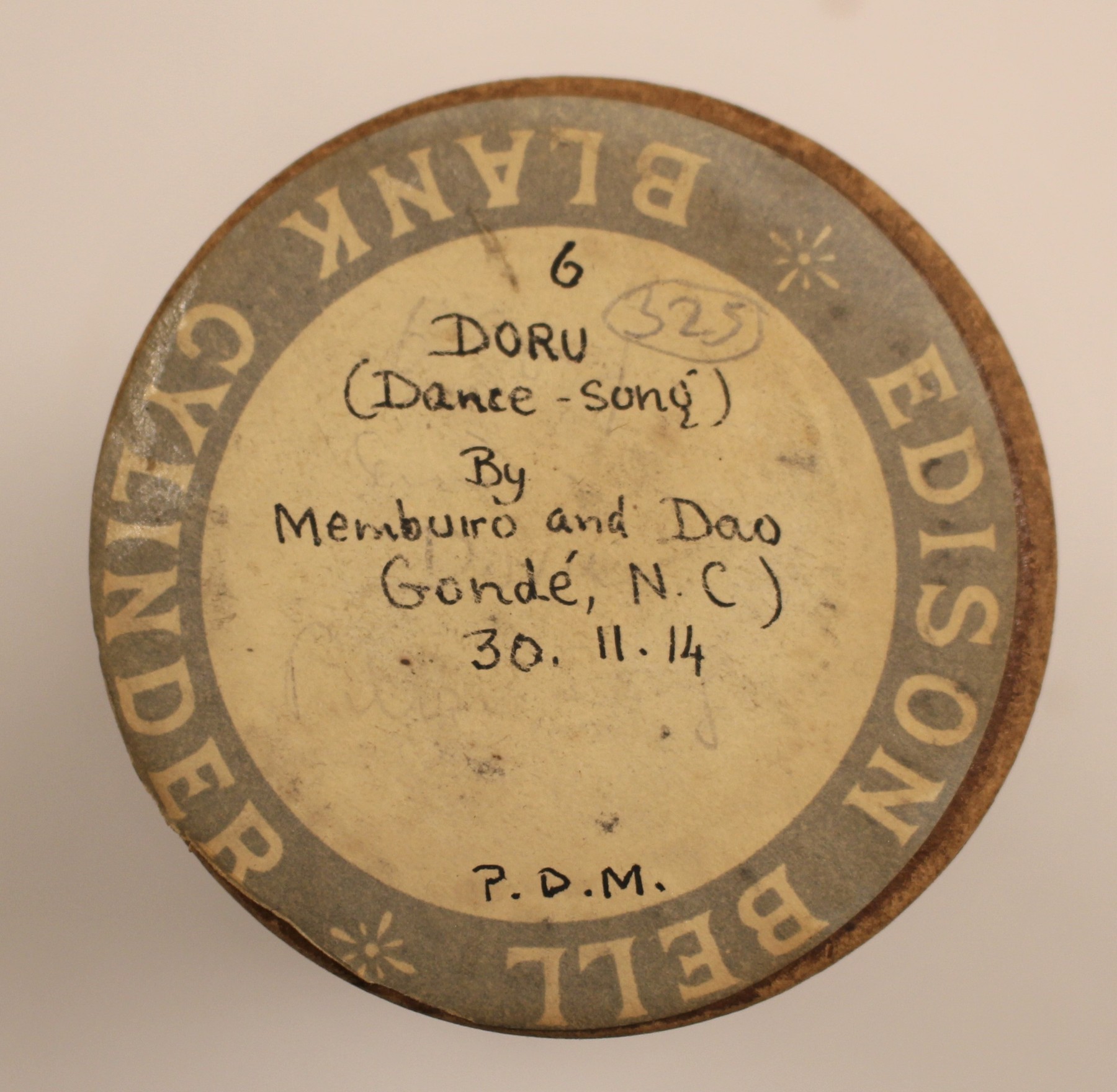      | |||||||
| C671/326 | Doru (Dance Song) | Membuiro (singer, male); Dao (singer, male); unidentified (percussion) | Gondé, Houaïlou, North Province, New Caledonia | 30 November 1914 | 1. Male vocal duet with percussion accompaniment. Doru (dance song) (words not understood, probably archaic). Membuiro and Dao. | From New Caledonia | Reasonable quality recording but with weak signal and surface noise. | Field recordings | Montague, Paul Denys, 1890-1917 | 2'14" | Paul Montague, 1914 | Light brown wax cylinder, Edison Bell | Paul Montague 1914 Gondé, New Caledonia Cylinder Collection | British Library | 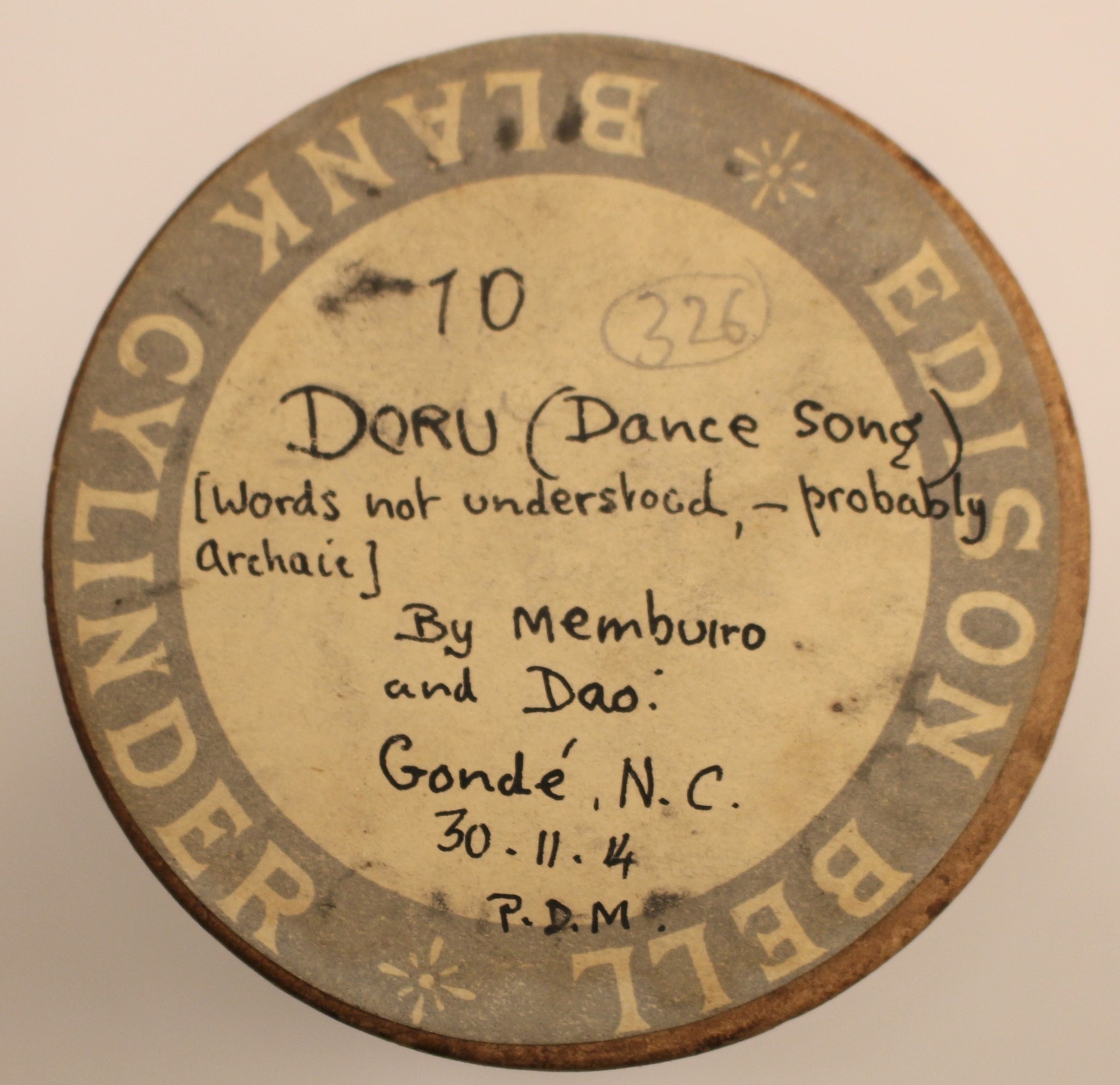 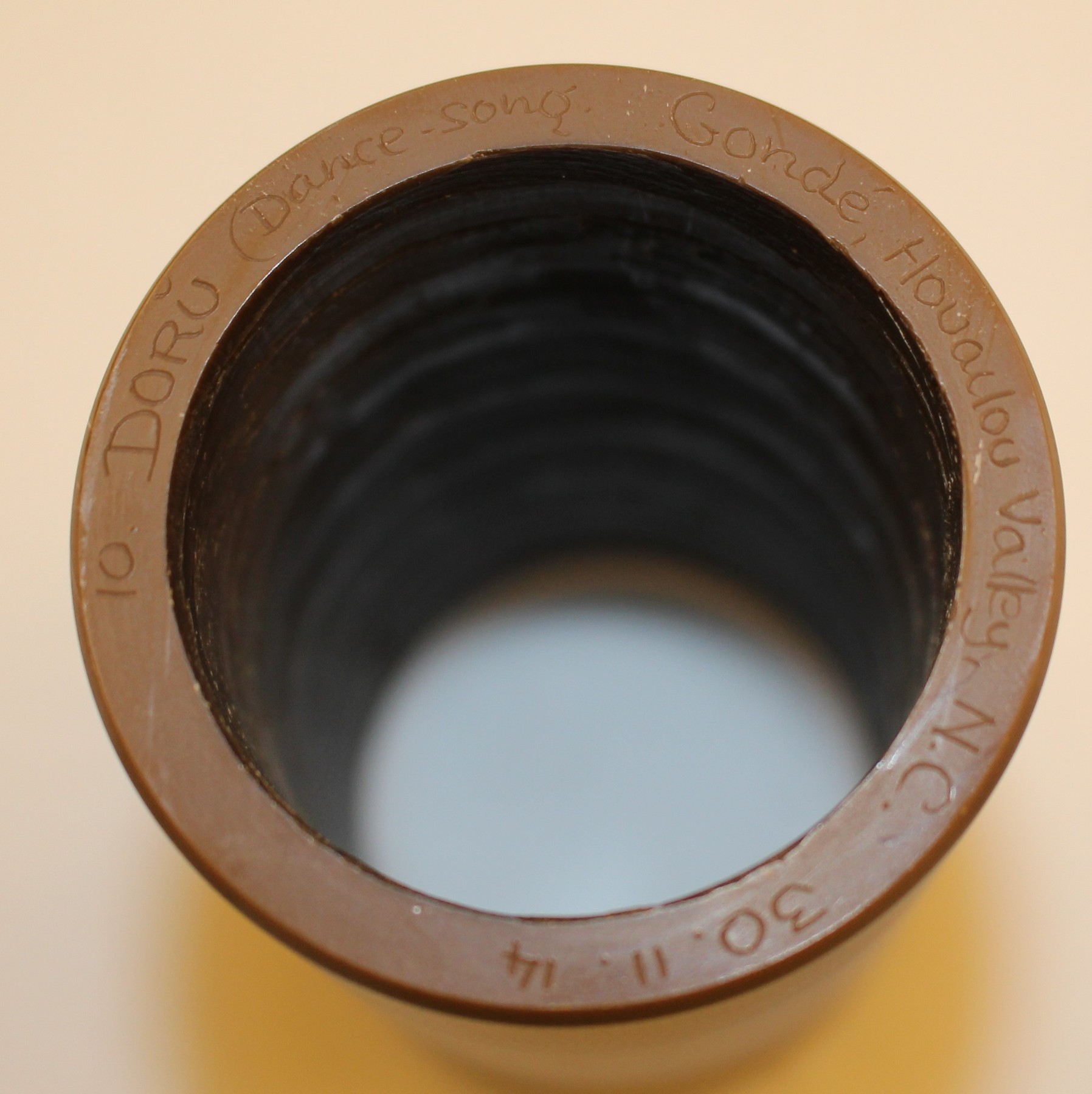     | |||||||
| C671/327 | Doru (Dance Song) | Membuiro (singer, male); Dao (singer, male); unidentified (percussion) | Gondé, Houaïlou, North Province, New Caledonia | 30 November 1914 | 1. Male vocal duet with percussion accompaniment. Doru: a dancing song by two men in the Qui (Pilou-pilou). Membuiro and Dao. | From New Caledonia | Reasonable quality recording but with weak signal and surface noise. | Field recordings | Montague, Paul Denys, 1890-1917 | 2'15" | Paul Montague, 1914 | Light brown wax cylinder, Edison Bell | Paul Montague 1914 Gondé, New Caledonia Cylinder Collection | British Library |  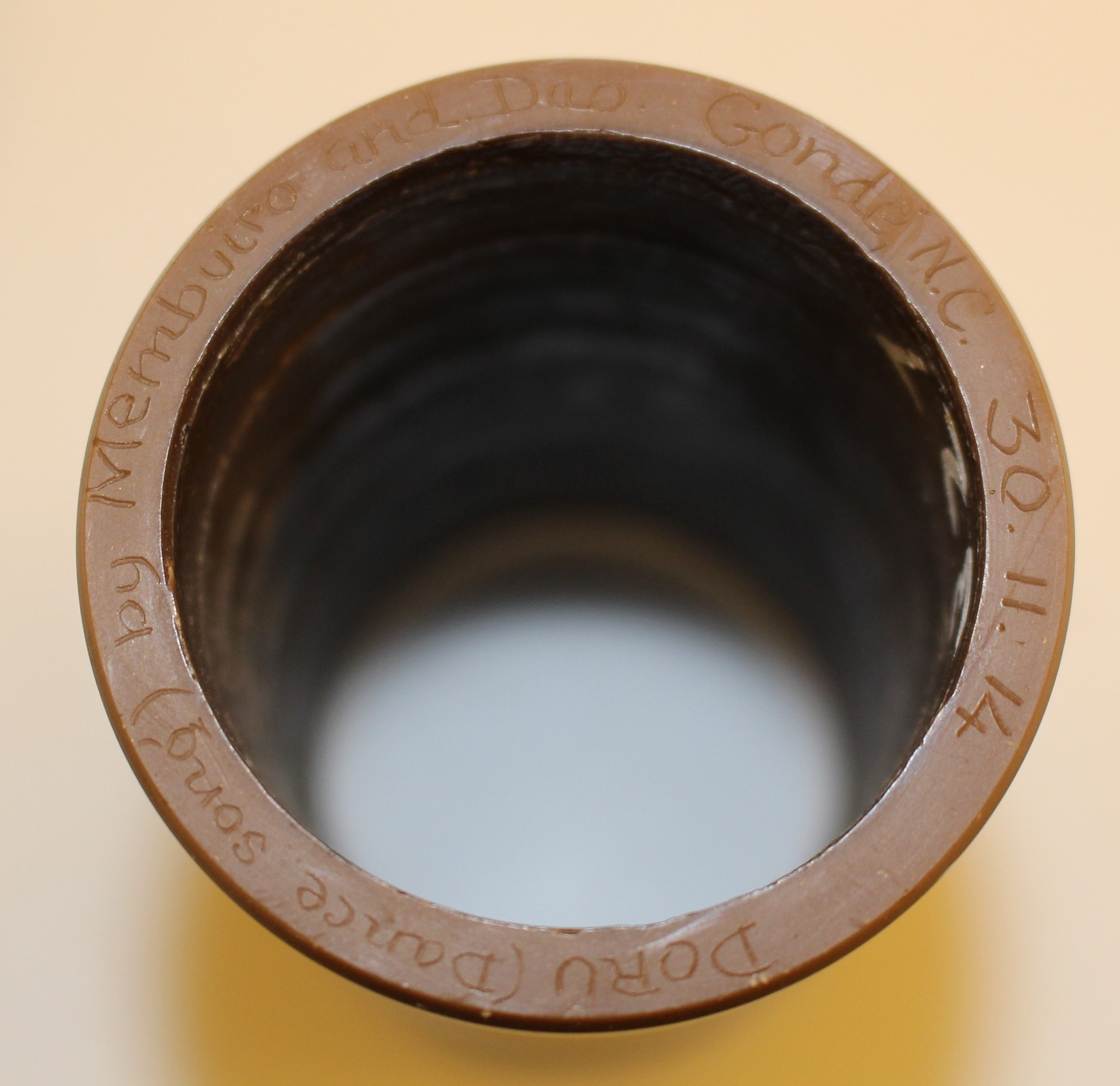     | |||||||
| C671/328 | Hndor Solo | Unidentified (flute) | Gondé, Houaïlou, North Province, New Caledonia | 30 November 1914 | 1. Unaccompanied Hndor solo (the Hndor is a flute made from a type of slender bamboo called Undovi). Ururua or House-song.- Bereowa, Dje-nur and Rapekiya, Poya.- cf. 0322, ctd. on 0324 | From New Caledonia | Reasonable quality recording but with weak signal and heavy surface noise. | Field recordings | Montague, Paul Denys, 1890-1917 | 3'40" | Paul Montague, 1914 | Light brown wax cylinder, Edison Bell | Paul Montague 1914 Gondé, New Caledonia Cylinder Collection | British Library |       | |||||||
| C671/329 | Hndor Solo | Unidentified (flute) | Gondé, Houaïlou, North Province, New Caledonia | 30 November 1914 | 1. Unaccompanied Hndor solo (the Hndor is a flute made from a type of slender bamboo called Undovi). Ururua or House-song.- Bereowa, Dje-nur and Rapekiya, Poya.- ctd. from 0323 | From New Caledonia | Reasonable quality recording but with weak signal and heavy surface noise. | Field recordings | Montague, Paul Denys, 1890-1917 | 2'13" | Paul Montague, 1914 | Light brown wax cylinder, Edison Bell | Paul Montague 1914 Gondé, New Caledonia Cylinder Collection | British Library | 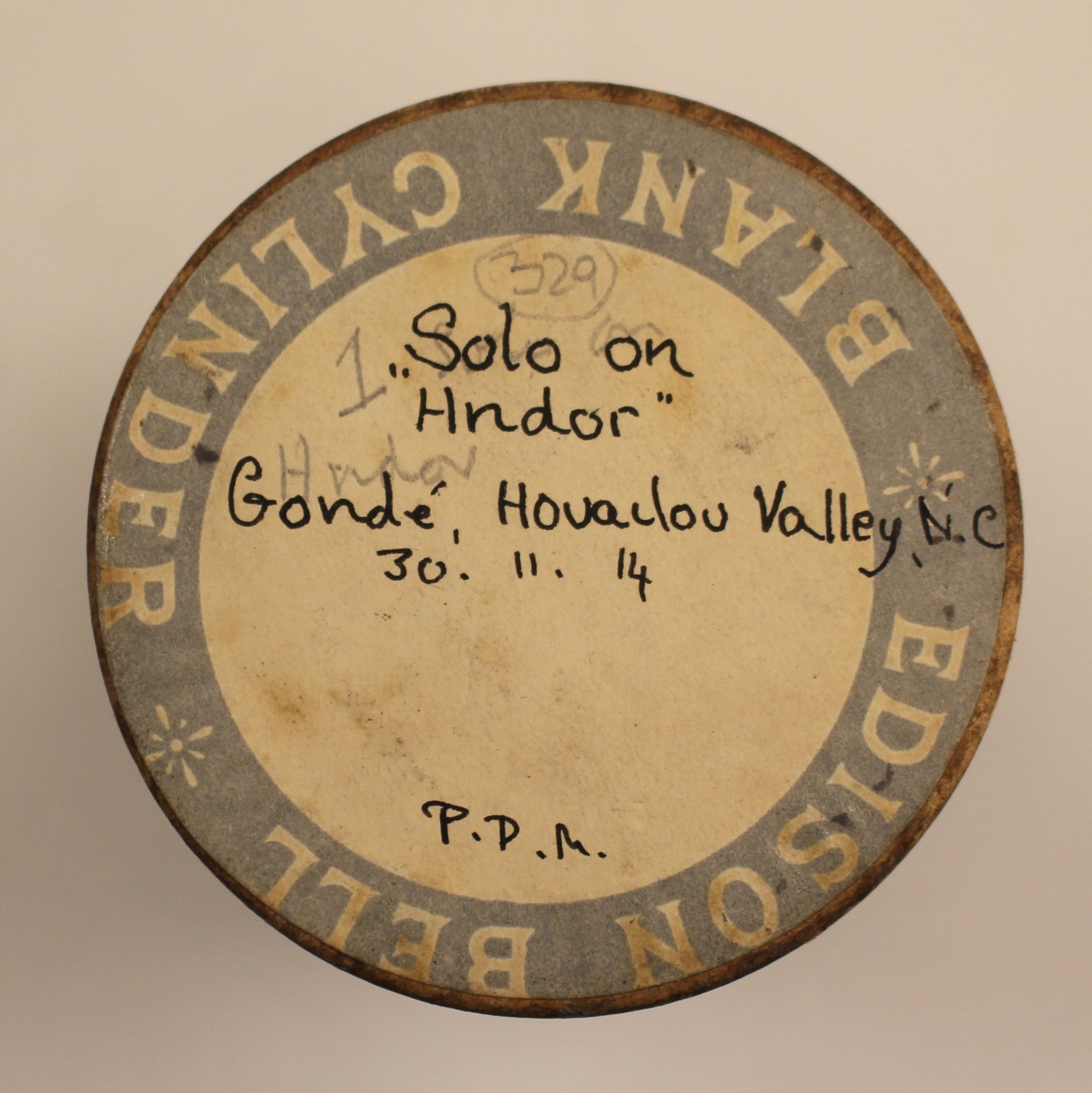      | |||||||
| C671/330 | Hndor Solo | Unidentified (flute) | Gondé, Houaïlou, North Province, New Caledonia | 30 November 1914 | 1. Unaccompanied Hndor solo (the Hndor is a flute made from a type of slender bamboo called Undovi). | From New Caledonia | Reasonable quality recording but with weak signal and heavy surface noise. | Field recordings | Montague, Paul Denys, 1890-1917 | 2'09" | Paul Montague, 1914 | Light brown wax cylinder, Edison Bell | Paul Montague 1914 Gondé, New Caledonia Cylinder Collection | British Library | 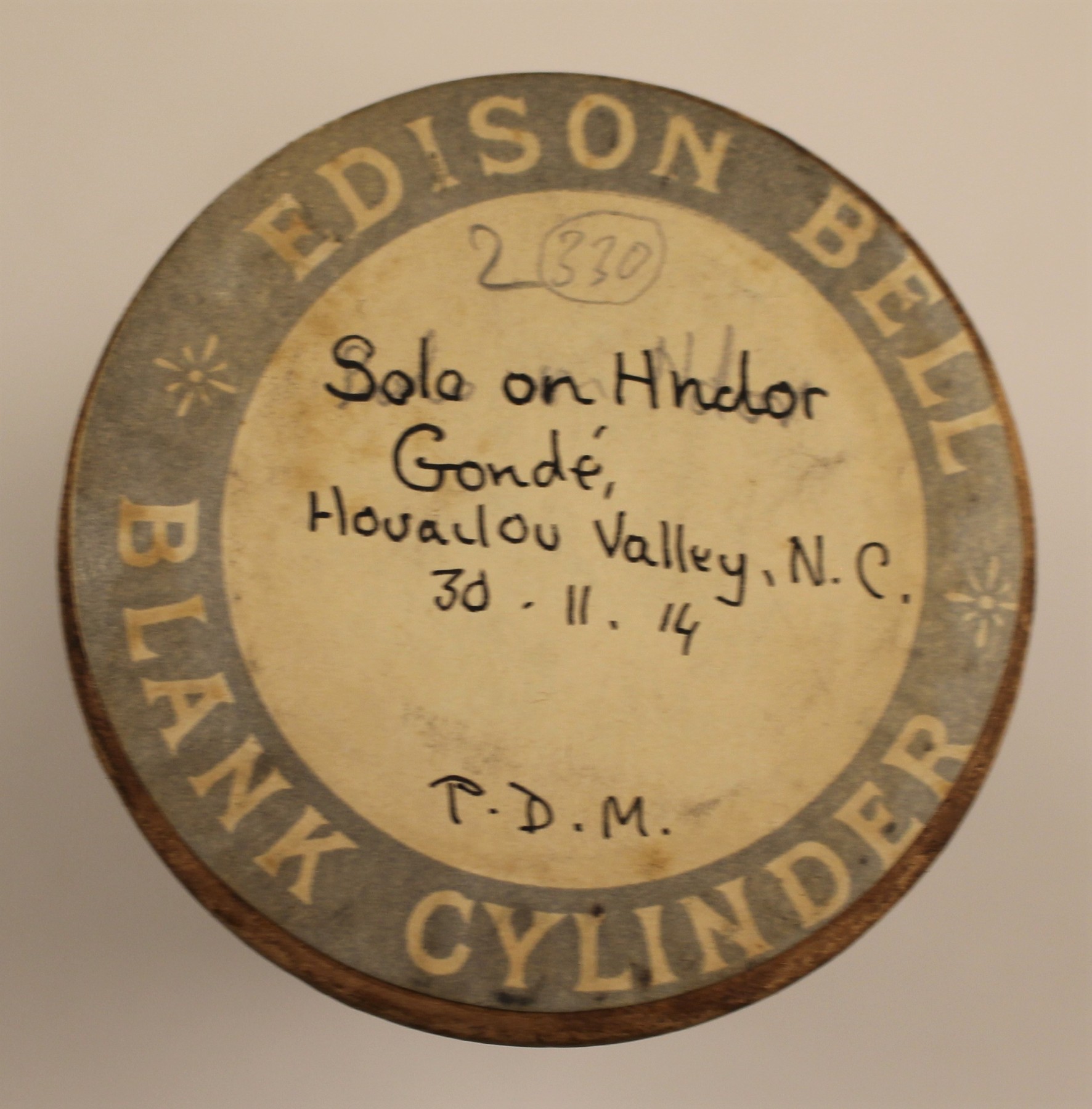 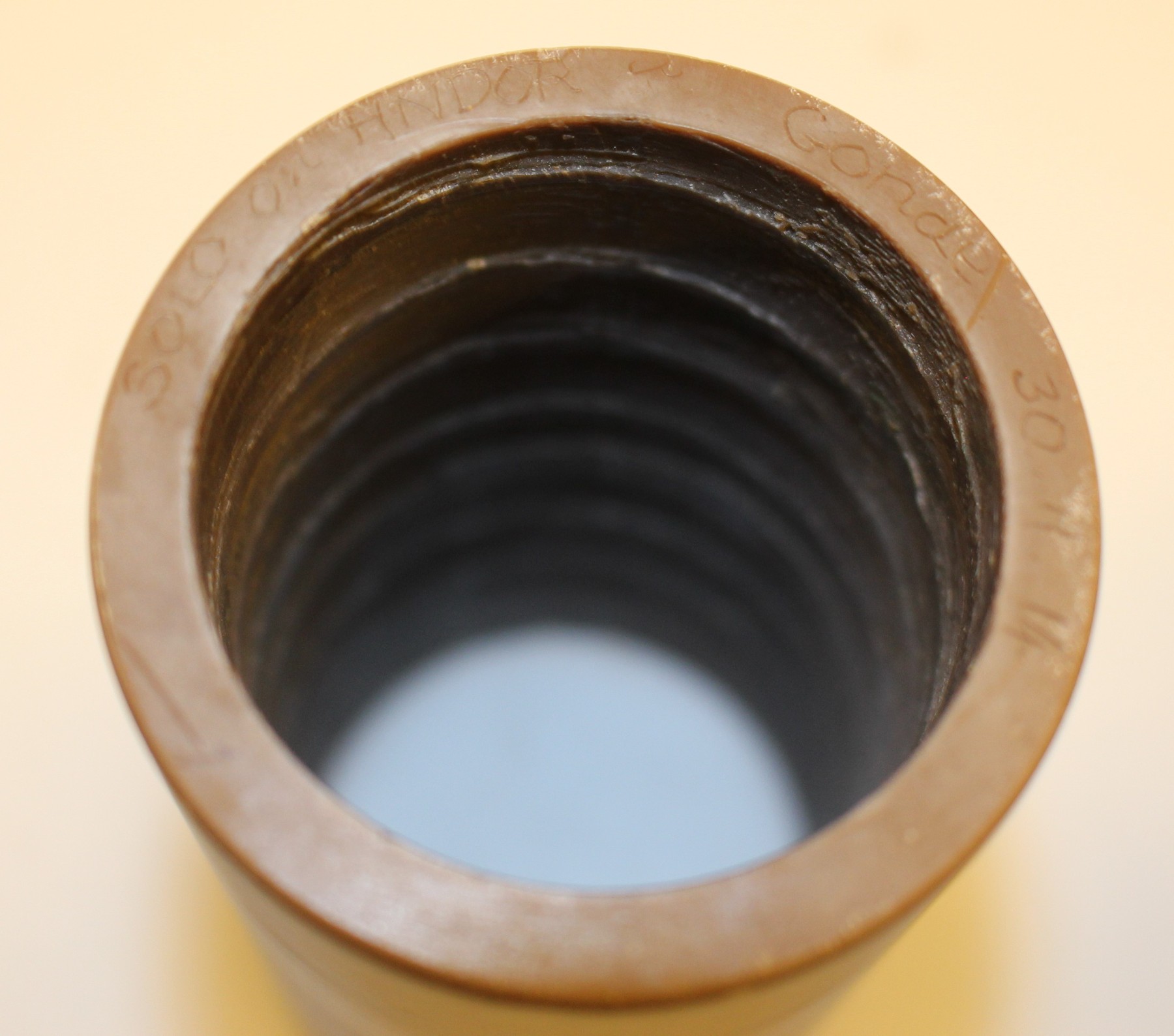     | |||||||
| C108/1406 | Yoni Yoni Kamerani | Unidentified (chorus) | Simbo Island, Western Province, British Solomon Islands Protectorate | 14 May 1908 – 01 January 1909 | 1. Announcement: "Yoni Yoni Kamerani[?]". 2. Ref tone. 3. Unaccompanied vocal group singing in harmony. This is probably goni, a traditional song or genre on Simbo. Kamerani indicates that it is the old style of this kind of song. | Simbo culture, Solomon Islands | Reasonable quality recording but with surface noise. | Simbo | Field recordings | Hocart, Arthur Maurice (1883-1939); Rivers, William Halse Rivers (1864-1922) | 2'43" | Percy Sladen Trust Expedition to the Solomon Islands, 1908 | Brown wax cylinder | WHR Rivers and Arthur M Hocart 1908 New Georgia Group, British Solomon Islands Protectorate Cylinder Collection | British Library | 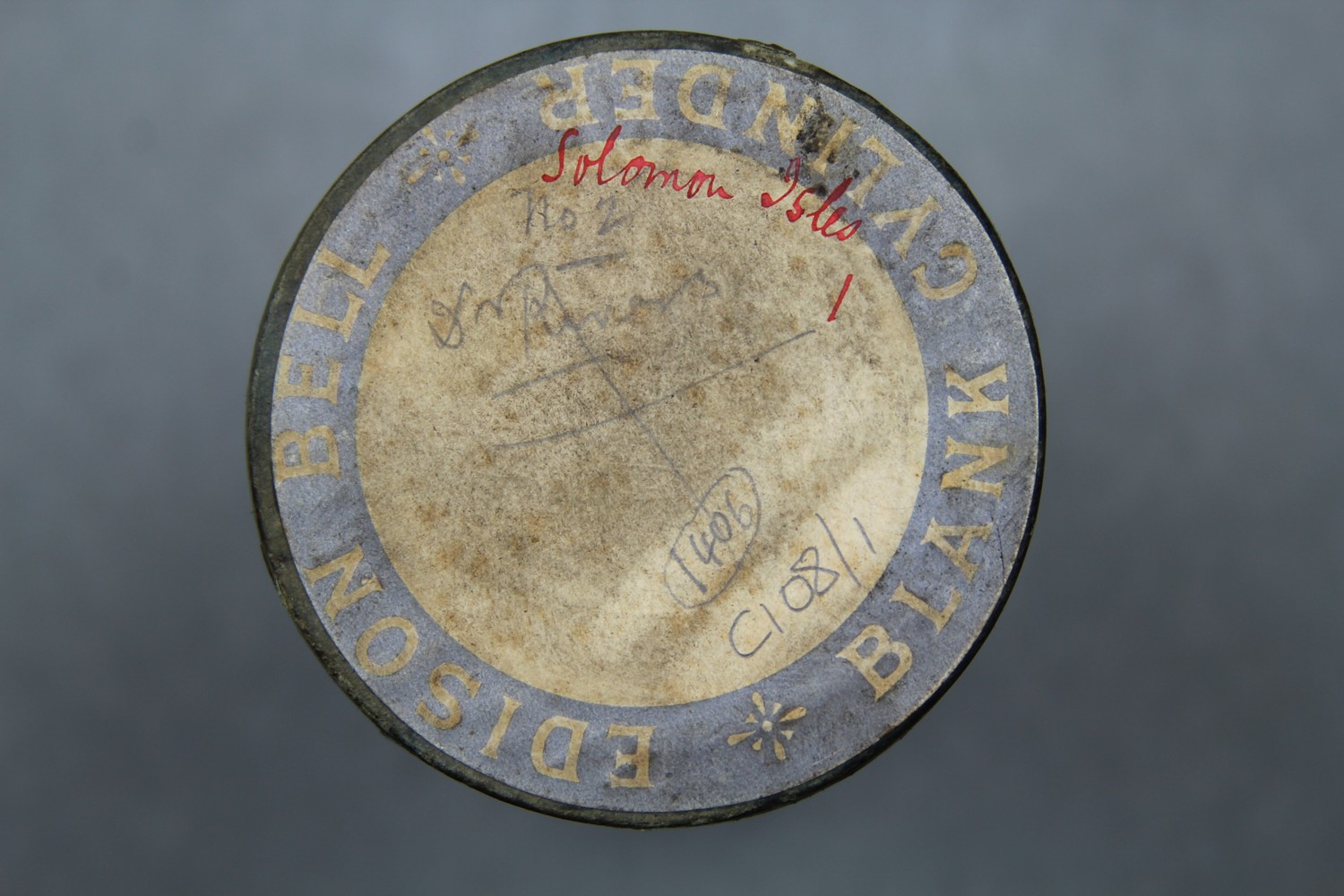 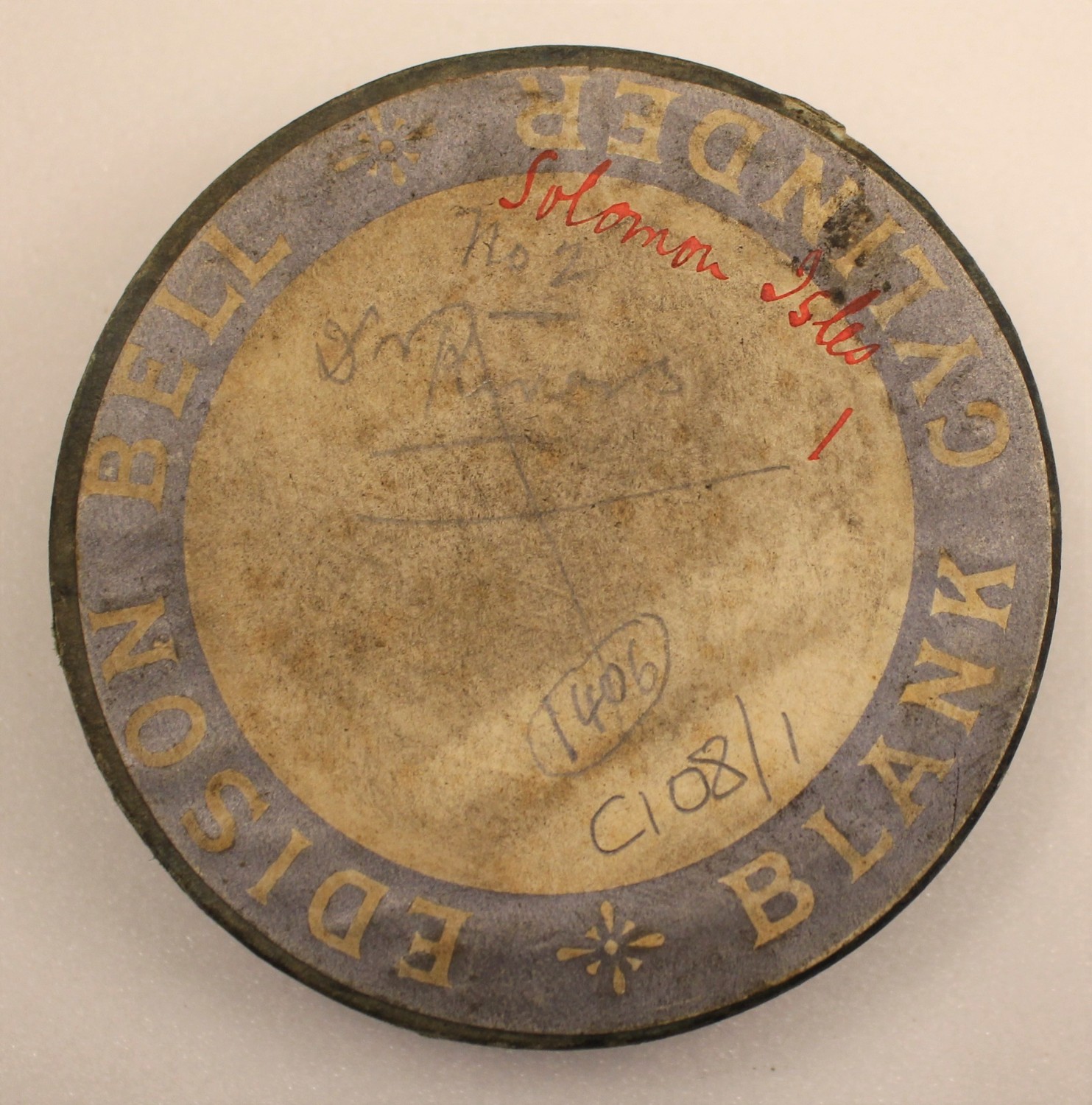     | Information on the goni songs can be found in A.M. Hocart's undated manuscript 'Music' in MS-Papers-0060, Alexander Turnbull Library, Wellington, New Zealand. | |||||
| C108/1407 | Panpipes | Unidentified (wind duet / pan pipes) | Simbo Island, Western Province, British Solomon Islands Protectorate | 14 May 1908 – 02 January 1909 | 1. Indecipherable announcement. 2. Ref note. 3. Unaccompanied panpipe duet. 4. Ascending panpipe scales. This may be the suke instrument of Simbo. Suke consisted of two bamboo pipes, one larger one smaller. | Simbo culture, Solomon Islands | Reasonable quality recording but with surface noise. | Simbo | Field recordings | Hocart, Arthur Maurice (1883-1939); Rivers, William Halse Rivers (1864-1922) | 2'51" | Percy Sladen Trust Expedition to the Solomon Islands, 1908 | Brown wax cylinder | WHR Rivers and Arthur M Hocart 1908 New Georgia Group, British Solomon Islands Protectorate Cylinder Collection | British Library | 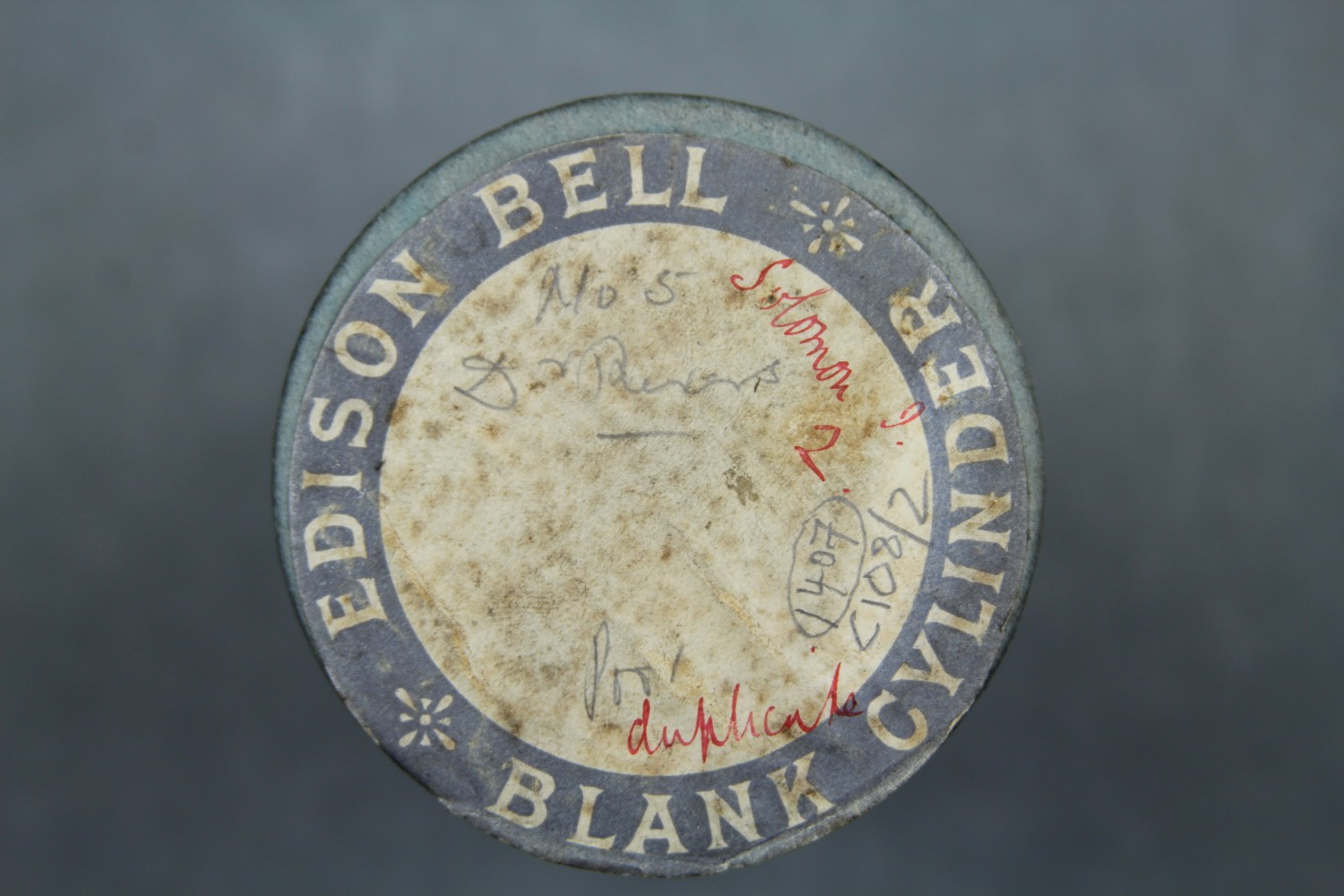 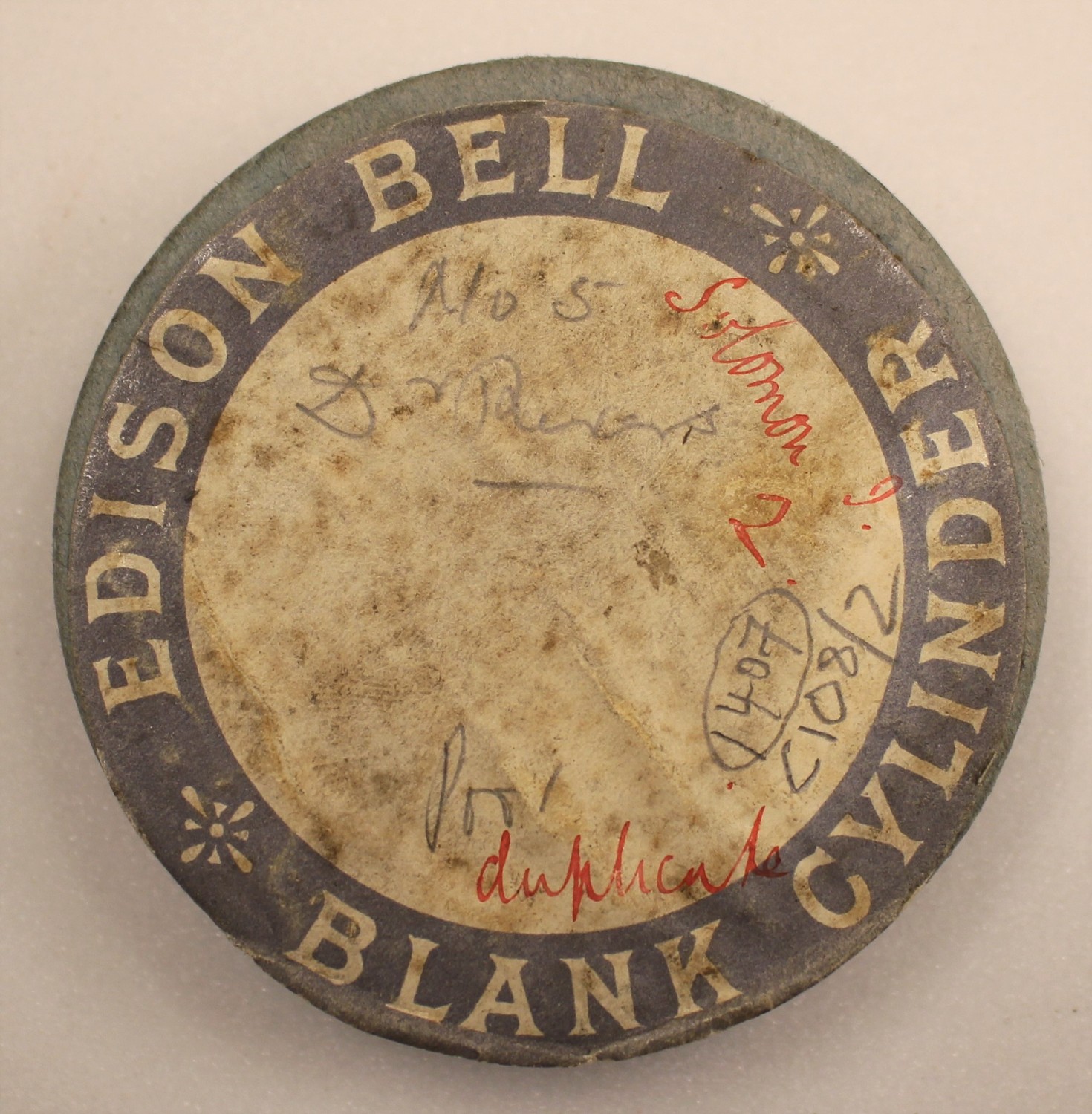 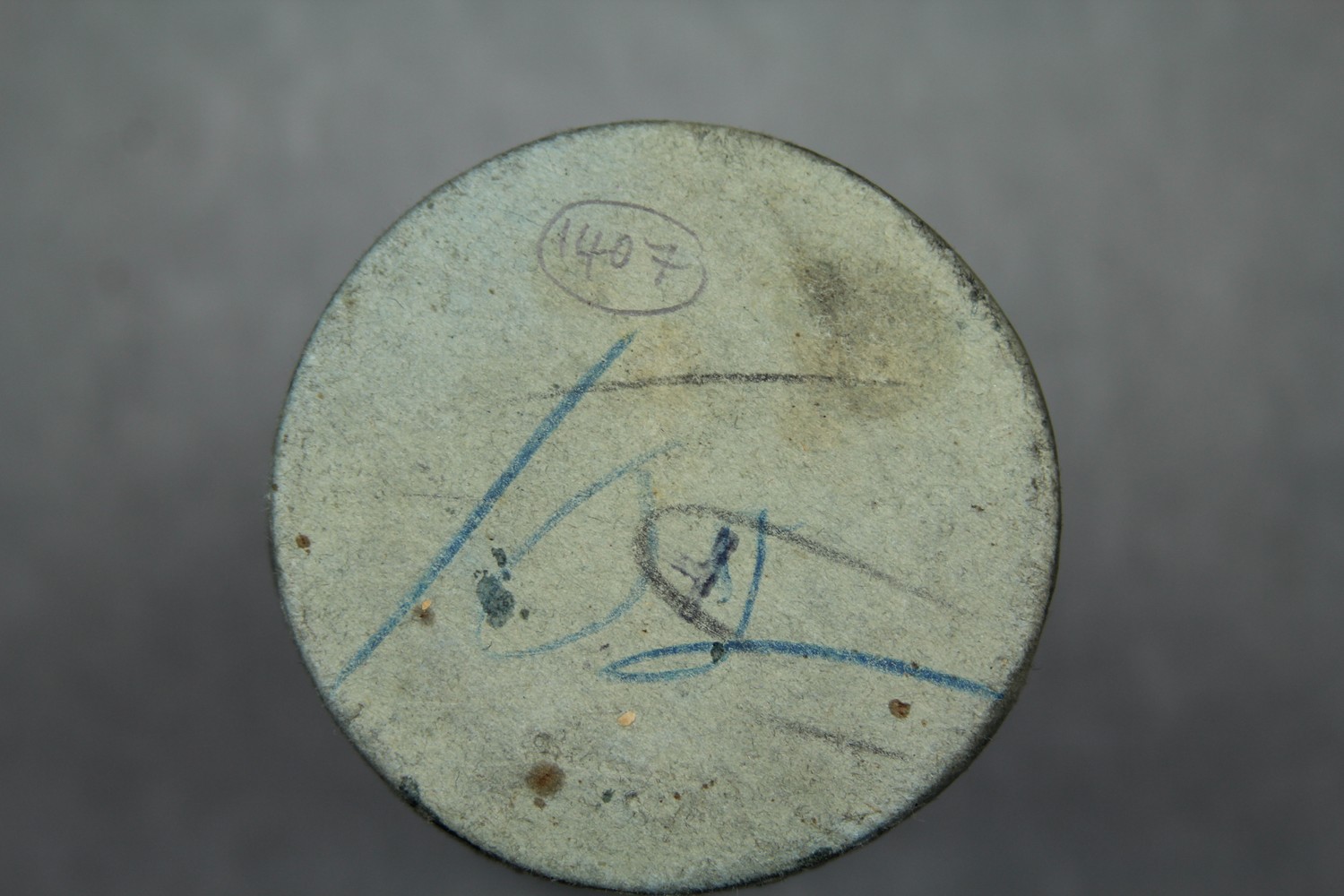    | The suke is described and pictured in Hocart (1931:318). Arthur Maurice Hocart. 1931. ‘Warfare in Eddystone of the Solomon Islands’. The Journal of the Royal Anthropological Institute of Great Britain and Ireland 61:301–324. | |||||
| C108/1409 | Yoni Yoni | Unidentified (chorus) | Simbo Island, Western Province, British Solomon Islands Protectorate | 14 May 1908 – 03 January 1909 | 1. Ref note. 2. Announcement: "Yoni Yoni[?]." 3. Unaccompanied vocal group singing in harmony. This is probably goni, a traditional song or genre on Simbo. | Simbo culture, Solomon Islands | Reasonable quality recording. | Simbo | Field recordings | Hocart, Arthur Maurice (1883-1939); Rivers, William Halse Rivers (1864-1922) | 2'40" | Percy Sladen Trust Expedition to the Solomon Islands, 1908 | Brown wax cylinder | WHR Rivers and Arthur M Hocart 1908 New Georgia Group, British Solomon Islands Protectorate Cylinder Collection | British Library | 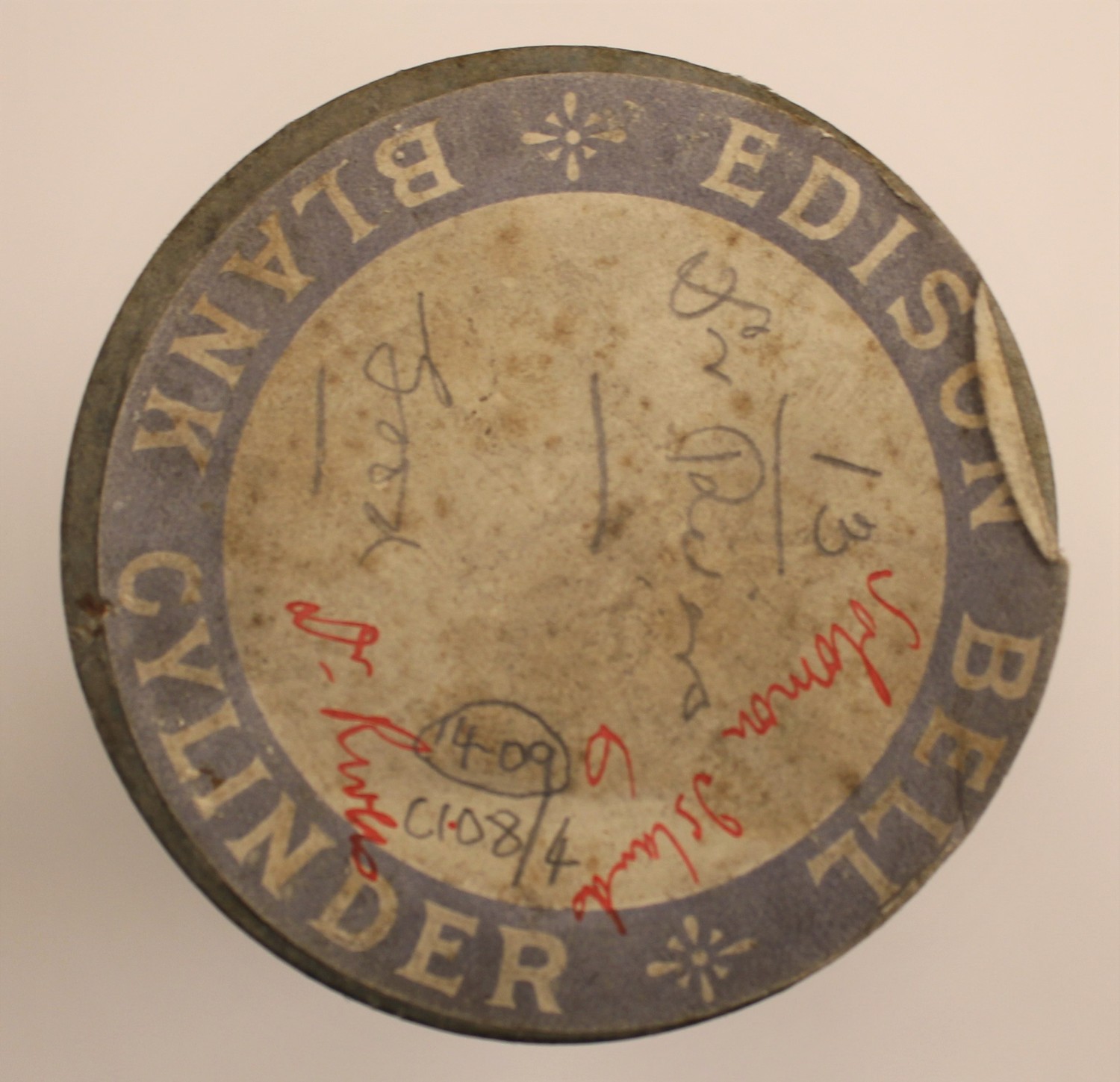 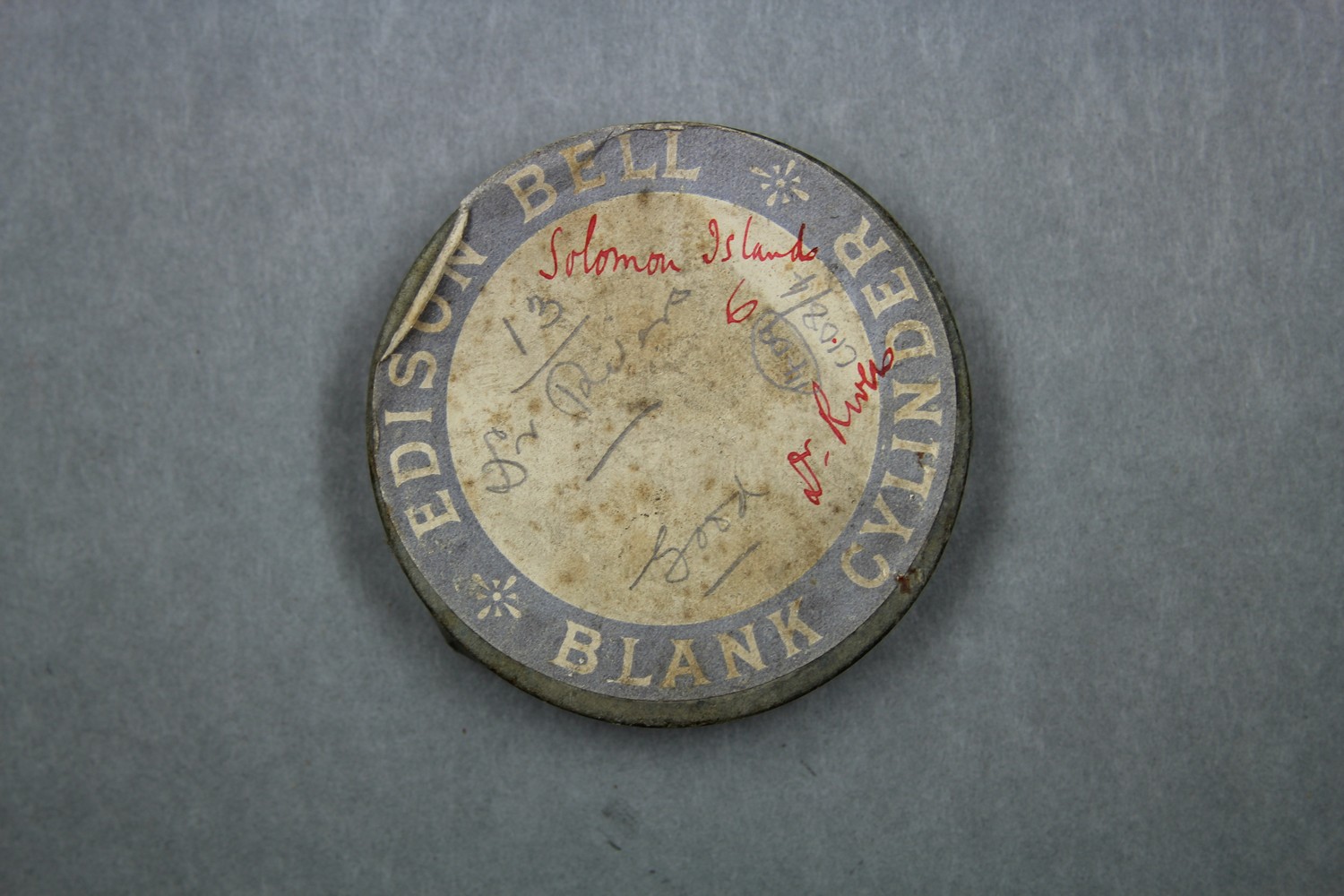     | Information on the goni songs can be found in A.M. Hocart's undated manuscript 'Music' in MS-Papers-0060, Alexander Turnbull Library, Wellington, New Zealand. | |||||
| C108/1410 | Baniatta, Simbo | Unidentified (chorus) | Simbo Island, Western Province, British Solomon Islands Protectorate | 14 May 1908 – 04 January 1909 | 1. Announcement: "Baniatta, Simbo". 2. Ref note. 3-4. Unaccompanied vocal group singing in harmony. These are probably mbanyata songs that had been brought to Simbo by men from the Baniata or Touo language area of south-west Rendova Island. | Simbo culture, Solomon Islands | Reasonable quality recording but with fluctuating speeds. | Simbo, Touo | Field recordings | Hocart, Arthur Maurice (1883-1939); Rivers, William Halse Rivers (1864-1922) | 2'41" | Percy Sladen Trust Expedition to the Solomon Islands, 1908 | Brown wax cylinder | WHR Rivers and Arthur M Hocart 1908 New Georgia Group, British Solomon Islands Protectorate Cylinder Collection | British Library |  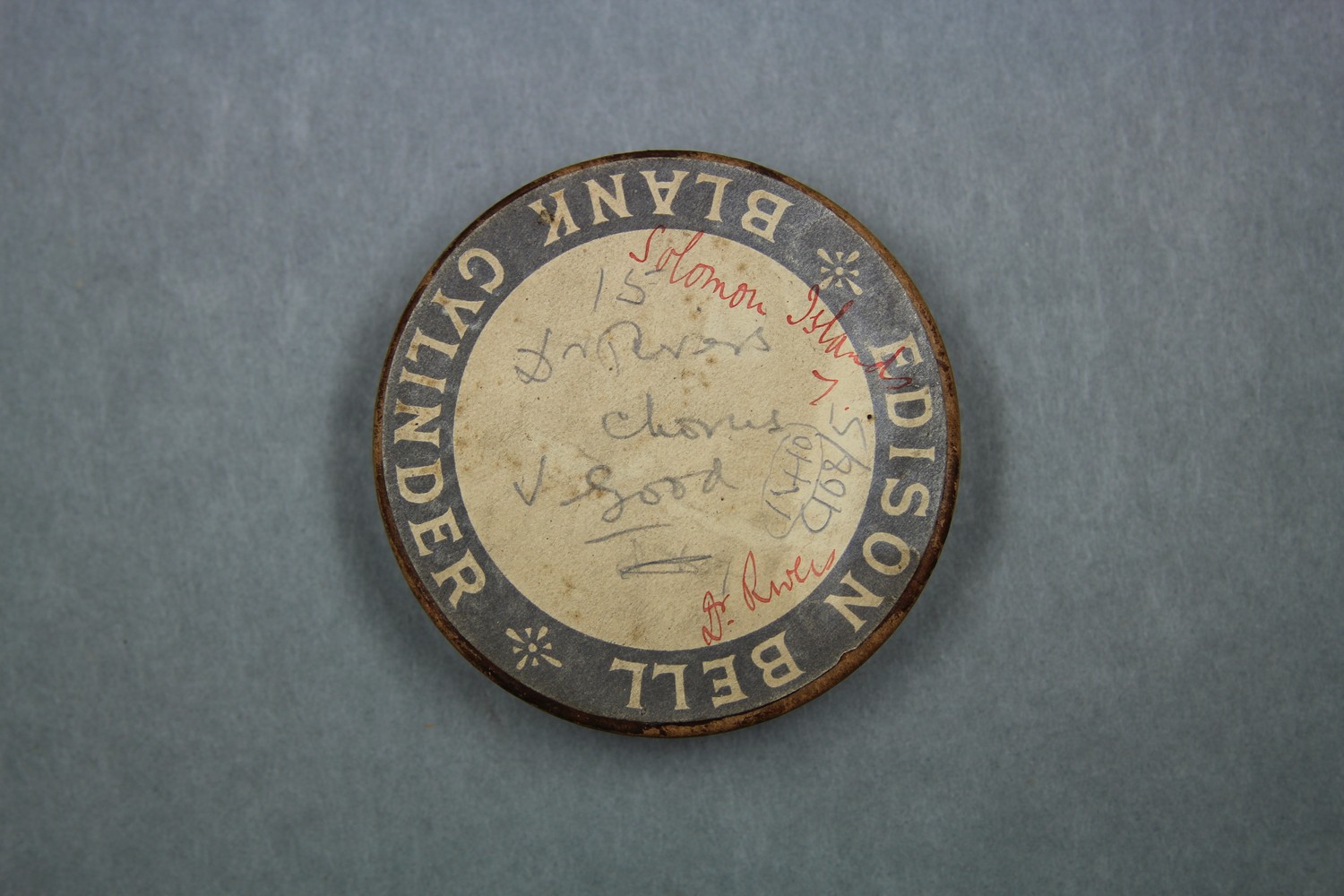     | Information on the mbanyata songs can be found in A.M. Hocart's undated manuscript 'Music' in MS-Papers-0060, Alexander Turnbull Library, Wellington, New Zealand. | |||||
| C108/1412 | Kera Ite | Unidentified (chorus) | Simbo Island, Western Province, British Solomon Islands Protectorate | 14 May 1908 – 05 January 1909 | 1. Ref note. 2. "Kera Ite". 3. Unaccompanied vocal group singing in harmony. The kera ite songs were described as "small songs" from Simbo. | Simbo culture, Solomon Islands | Reasonable quality recording. | Simbo | Field recordings | Hocart, Arthur Maurice (1883-1939); Rivers, William Halse Rivers (1864-1922) | 2'32" | Percy Sladen Trust Expedition to the Solomon Islands, 1908 | Brown wax cylinder | WHR Rivers and Arthur M Hocart 1908 New Georgia Group, British Solomon Islands Protectorate Cylinder Collection | British Library | 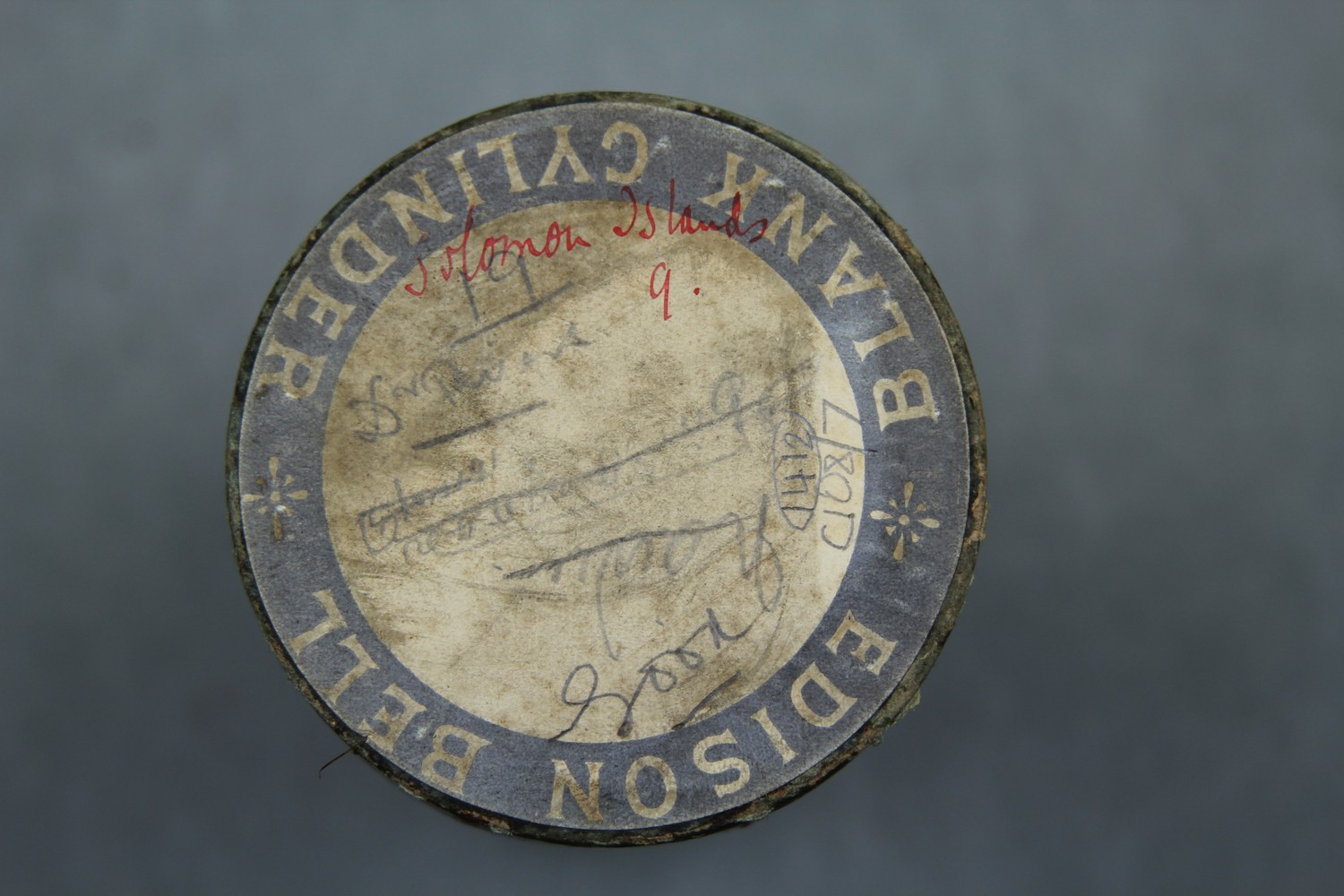 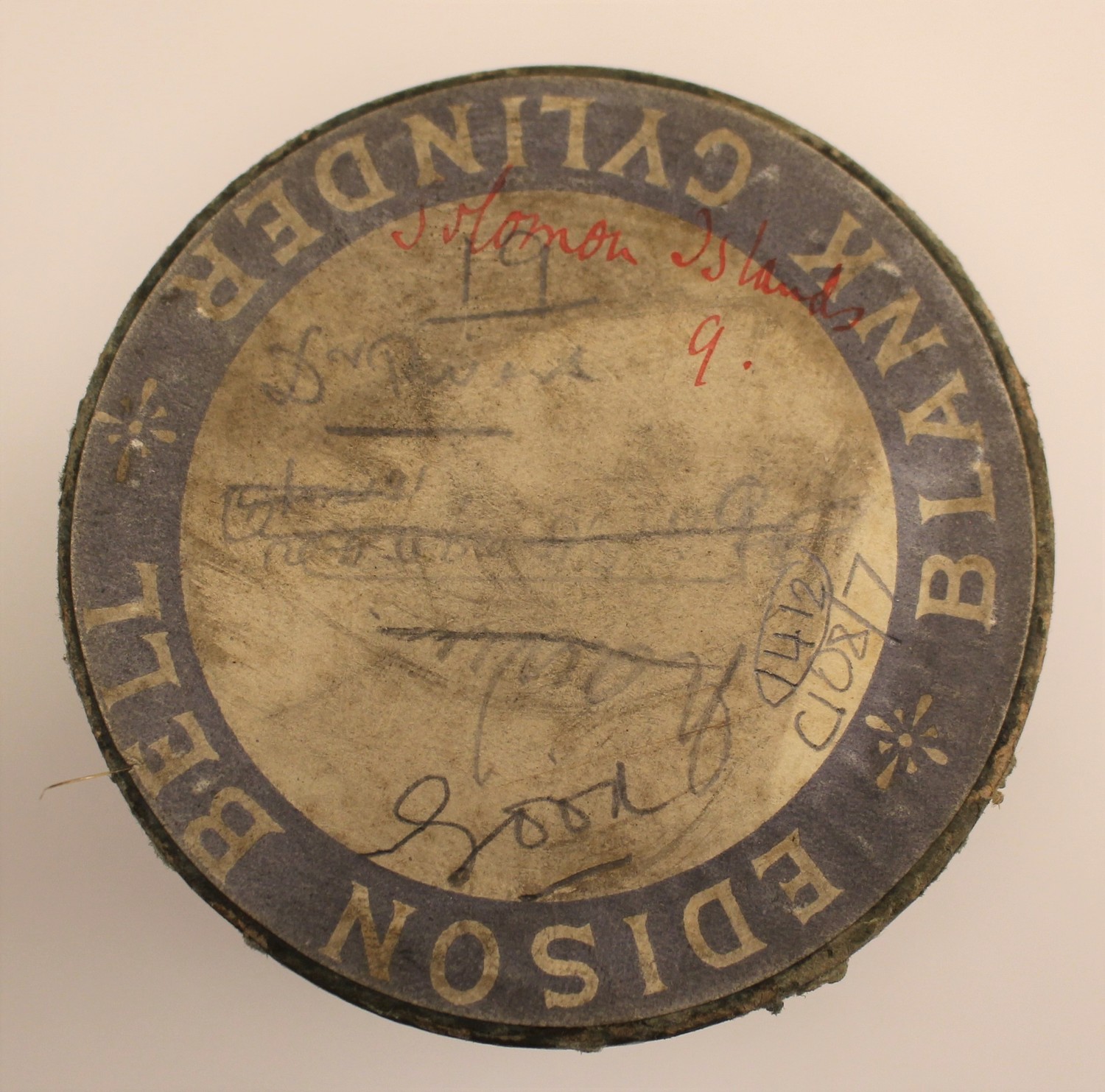 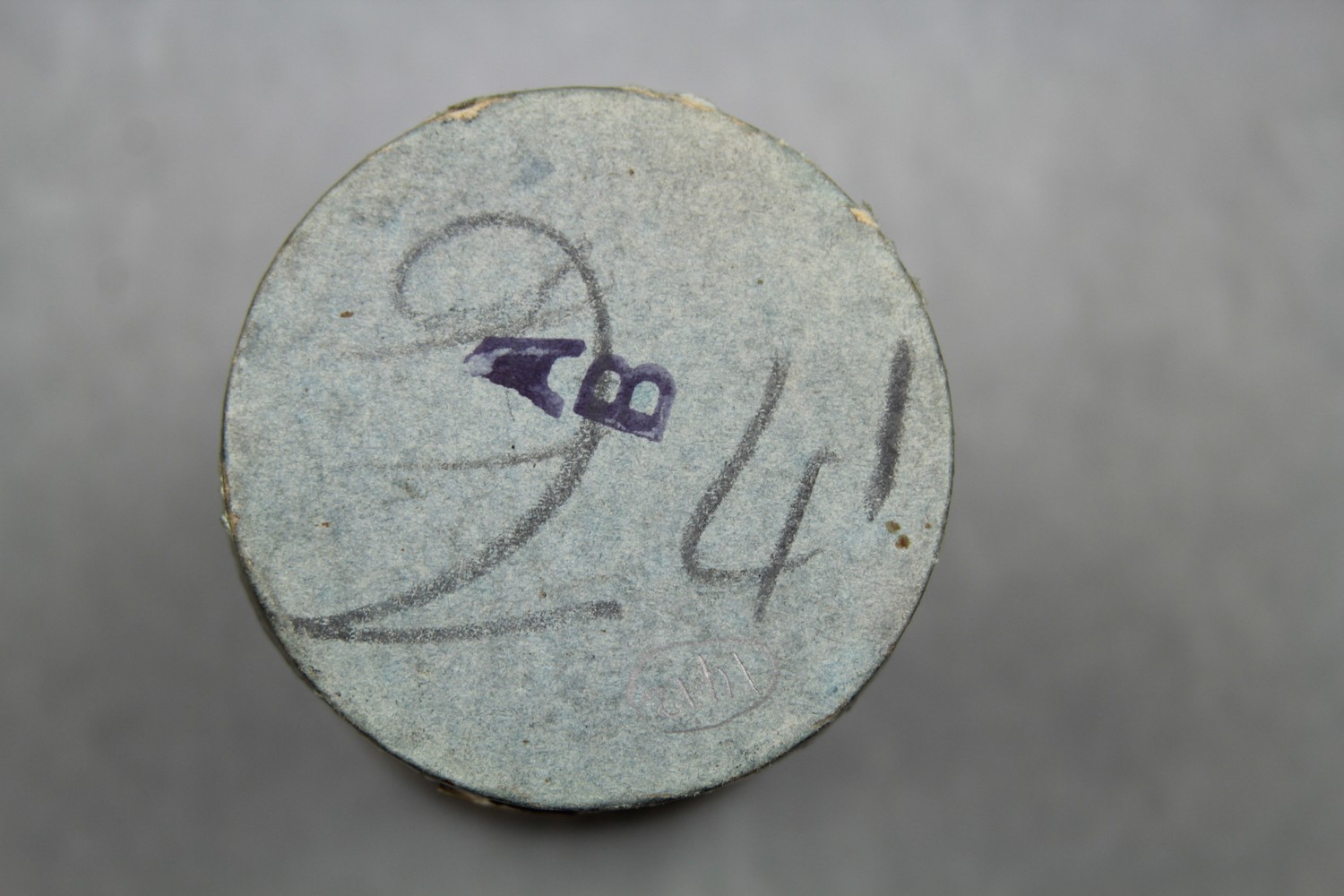    | Information on the kera ite songs can be found in A.M. Hocart's undated manuscript 'Music' in MS-Papers-0060, Alexander Turnbull Library, Wellington, New Zealand. | |||||
| C108/1413 | Kera Ite, Simbo and Baniatta | Unidentified (chorus); unidentified (singer) | Simbo Island, Western Province, British Solomon Islands Protectorate | 14 May 1908 – 06 January 1909 | 1. Announcement: "Kera Ite, Simbo." The first song is a kera ite song, described as "small songs" from Simbo. 2. Ref note. 3. Unaccompanied vocal group. The second is probably an mbanyata song that had been brought to Simbo by men from the Baniata or Touo language area of south-west Rendova Island. 4. "Baniatta." 5. Unaccompanied vocal solo. | Simbo culture, Solomon Islands | Reasonable quality recording but with speed fluctuations throughout. | Simbo, Touo | Field recordings | Hocart, Arthur Maurice (1883-1939); Rivers, William Halse Rivers (1864-1922) | 3'43" | Percy Sladen Trust Expedition to the Solomon Islands, 1908 | Brown wax cylinder | WHR Rivers and Arthur M Hocart 1908 New Georgia Group, British Solomon Islands Protectorate Cylinder Collection | British Library | 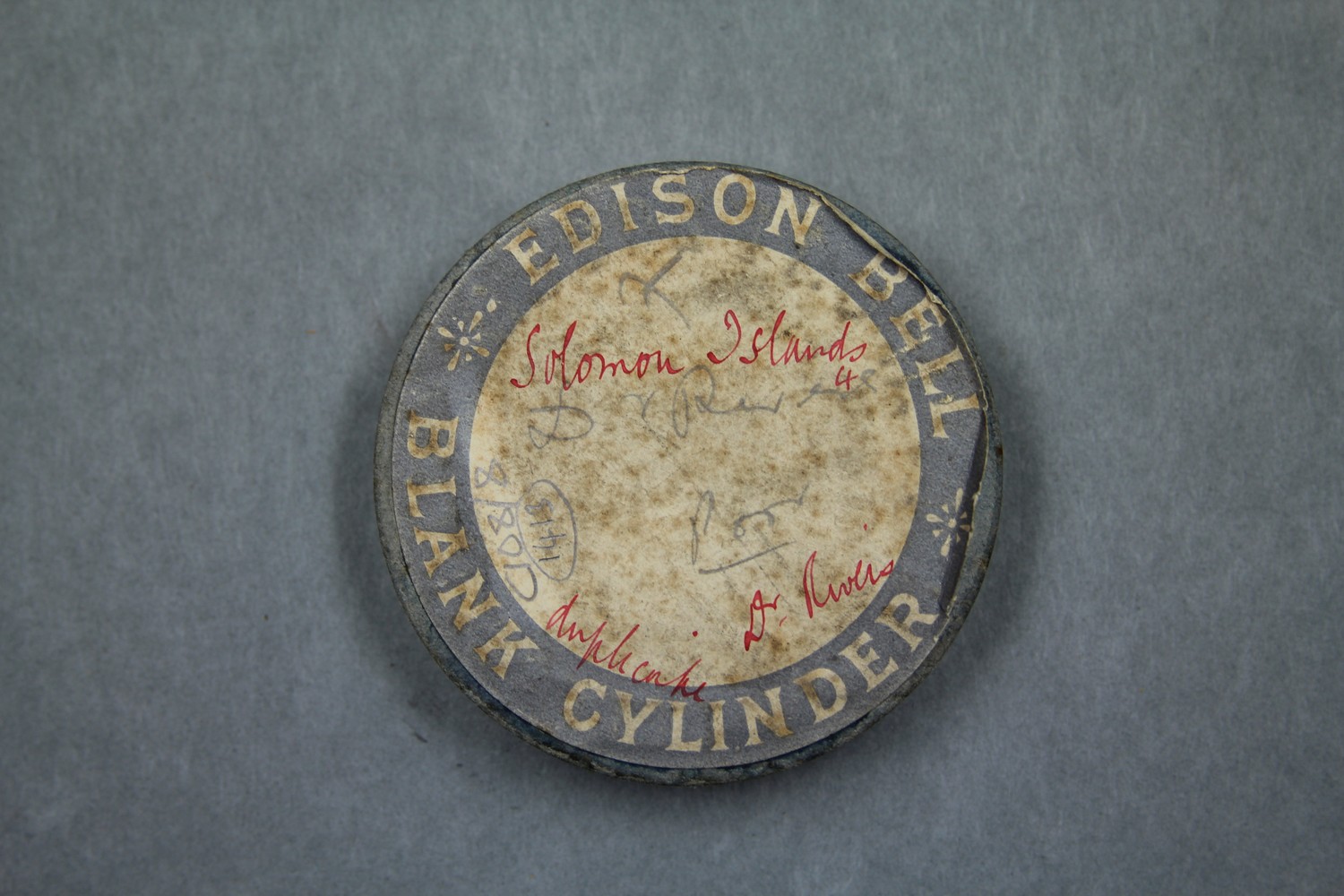  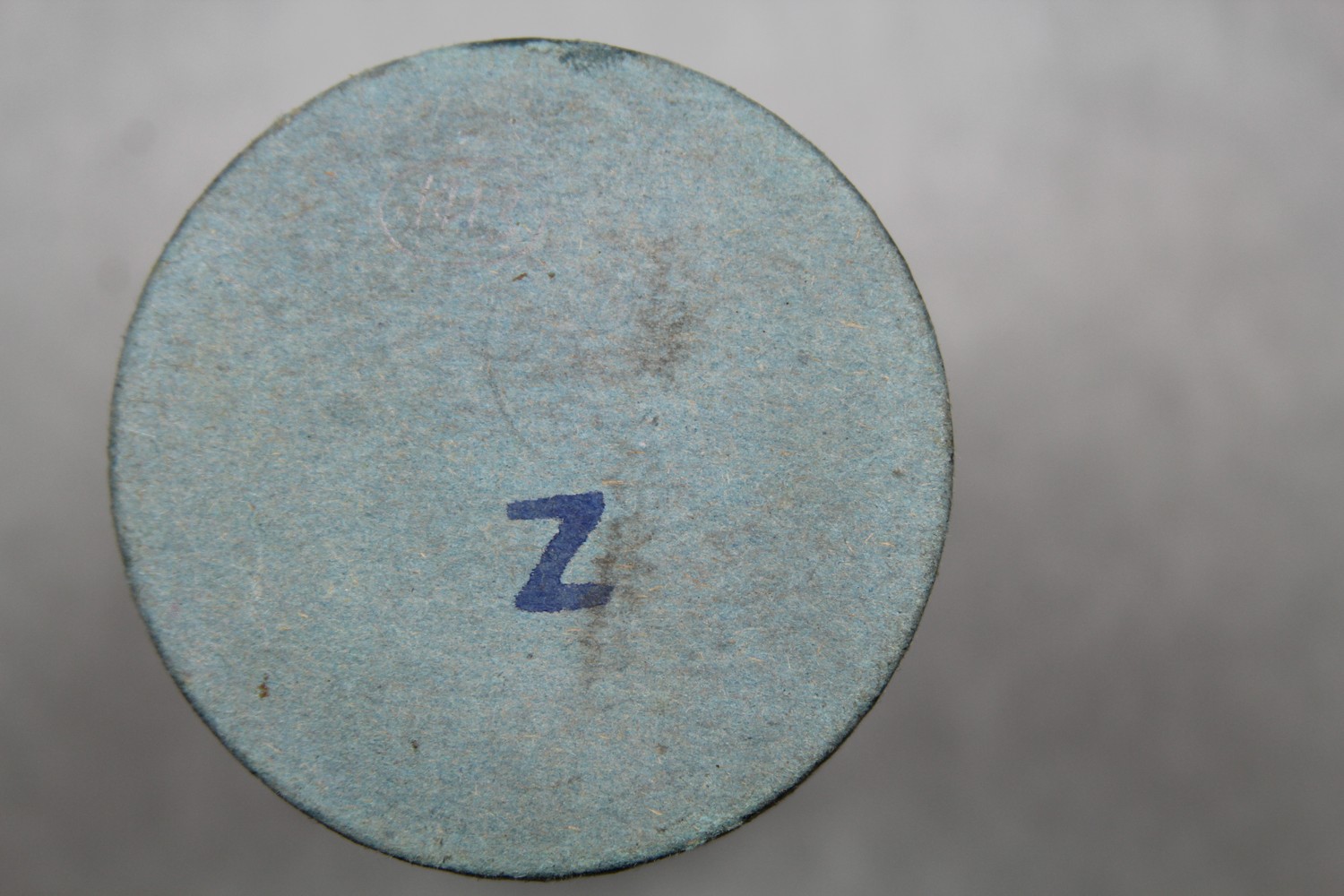    | Information on the mbanyata and kera ite songs can be found in A.M. Hocart's undated manuscript 'Music' in MS-Papers-0060, Alexander Turnbull Library, Wellington, New Zealand. | |||||
| C108/1408 | Unknown | Unidentified | Only the lid from the original cylinder box remains. | Percy Sladen Trust Expedition to the Solomon Islands, 1908 | Missing (lid only) | WHR Rivers and Arthur M Hocart 1908 New Georgia Group, British Solomon Islands Protectorate Cylinder Collection | British Library | 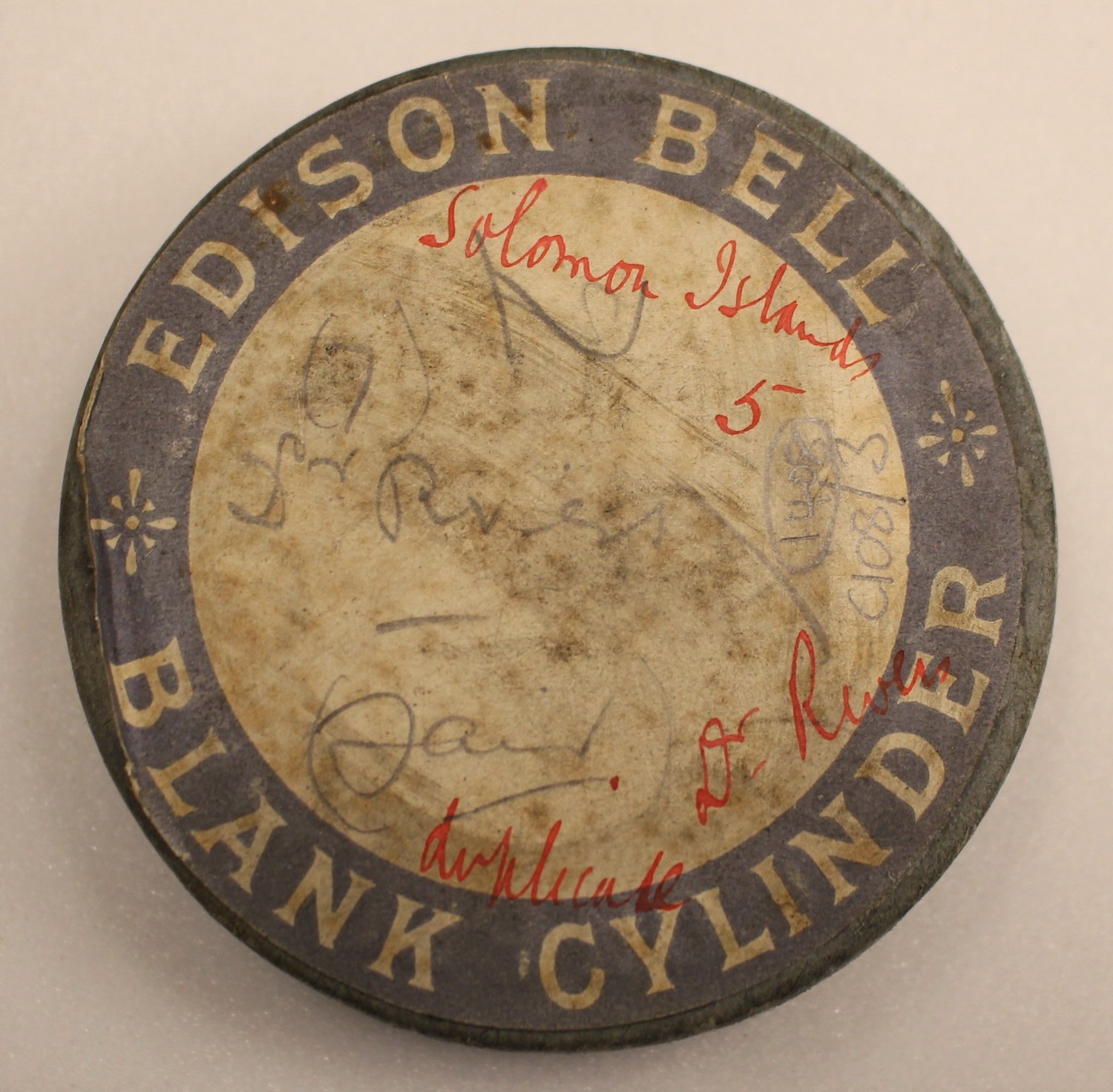 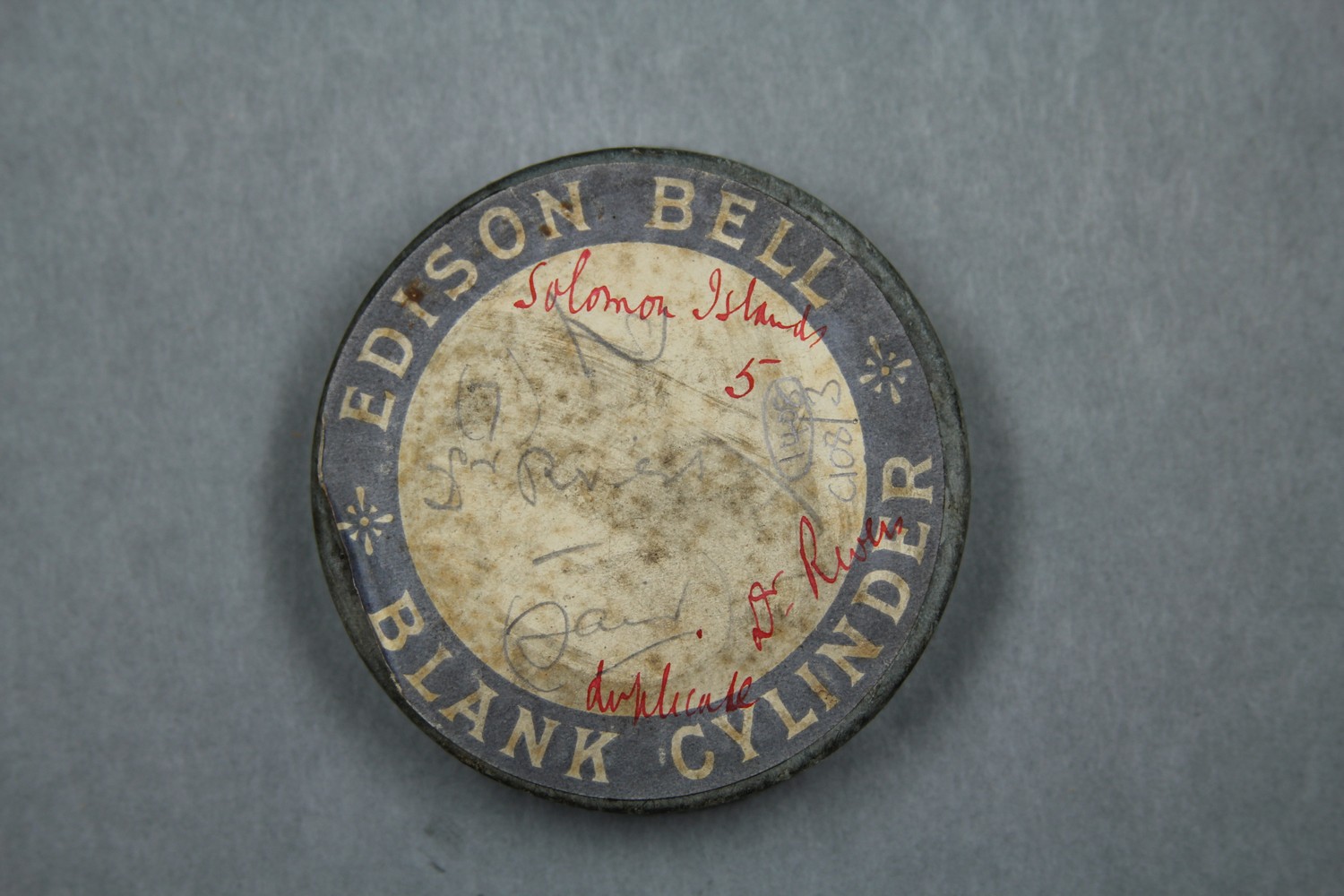     | Notes on some of these recordings can be found in A.M. Hocart's undated manuscript 'Music' in MS-Papers-0060, Alexander Turnbull Library, Wellington, New Zealand. | |||||||||||||
| C108/1411 | Unknown | Unidentified | Only the lid from the original cylinder box remains. | Percy Sladen Trust Expedition to the Solomon Islands, 1908 | Missing (lid only) | WHR Rivers and Arthur M Hocart 1908 New Georgia Group, British Solomon Islands Protectorate Cylinder Collection | British Library |  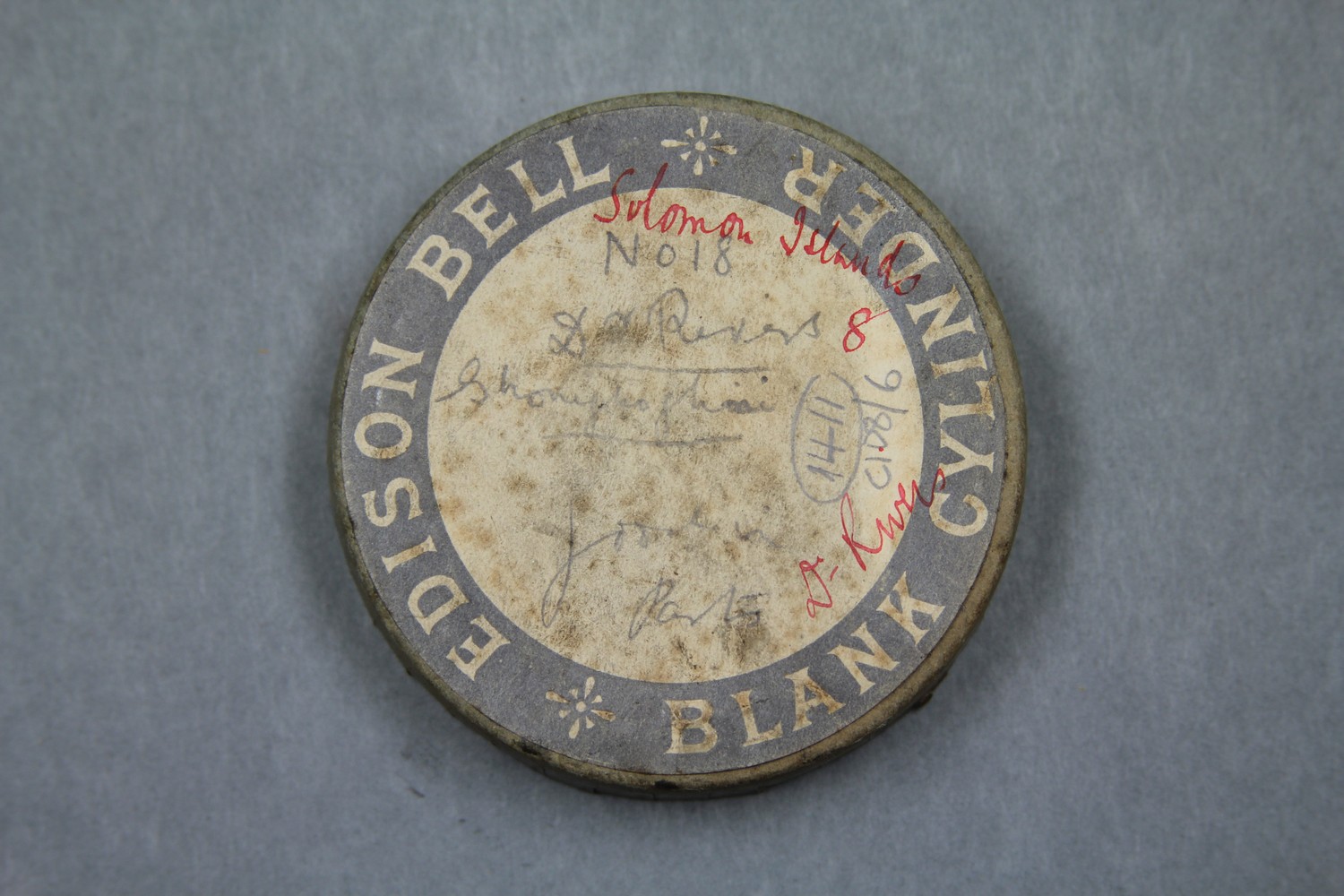     | Notes on some of these recordings can be found in A.M. Hocart's undated manuscript 'Music' in MS-Papers-0060, Alexander Turnbull Library, Wellington, New Zealand. | |||||||||||||
| C108/1414 | Unknown | Unidentified | Only the lid from the original cylinder box remains. | Percy Sladen Trust Expedition to the Solomon Islands, 1908 | Missing (lid only) | WHR Rivers and Arthur M Hocart 1908 New Georgia Group, British Solomon Islands Protectorate Cylinder Collection | British Library | 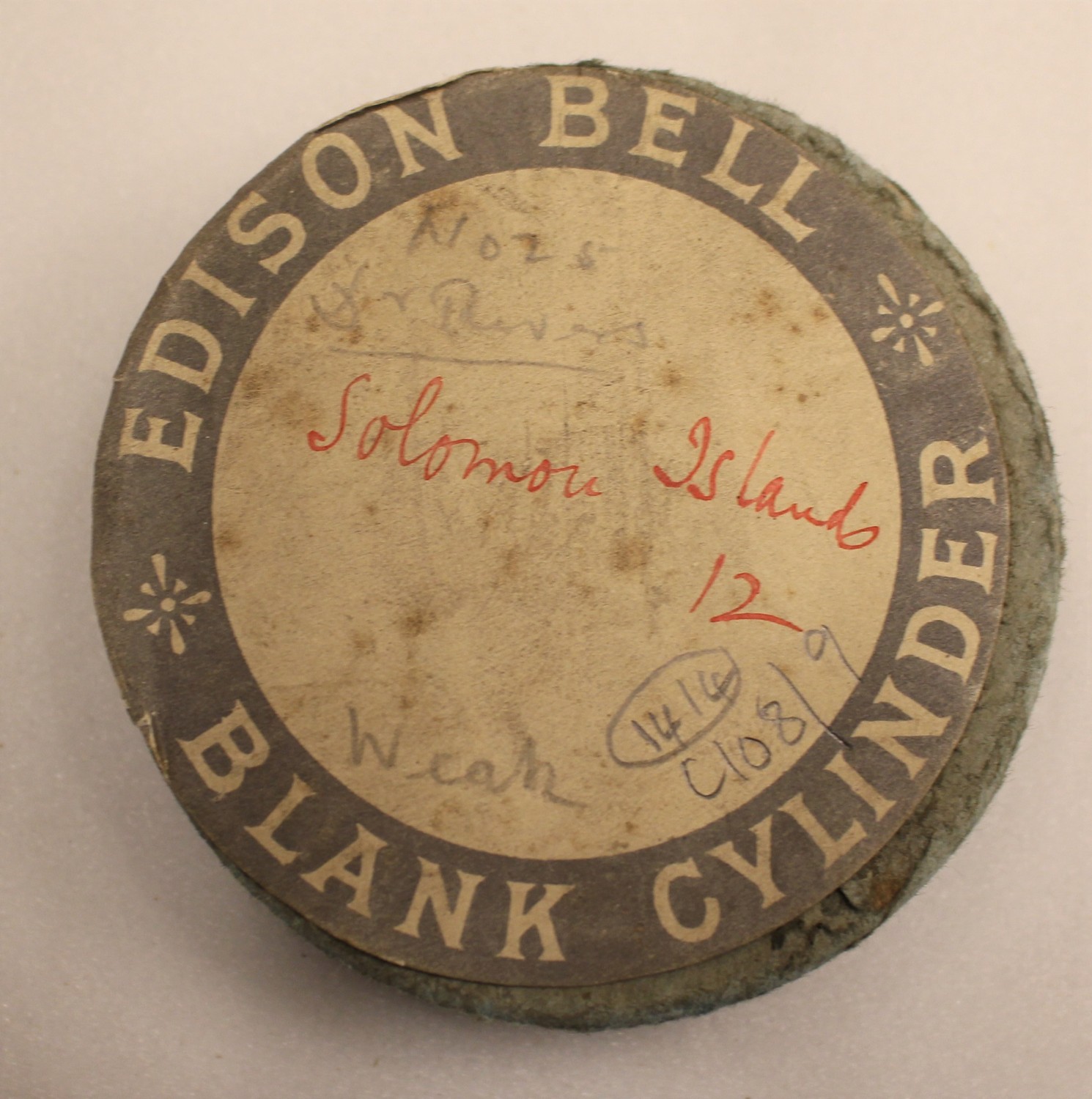      | Notes on some of these recordings can be found in A.M. Hocart's undated manuscript 'Music' in MS-Papers-0060, Alexander Turnbull Library, Wellington, New Zealand. | |||||||||||||
| C80/446 | Iba abara | Enoka (singer, male) | Mer / Murray Island, Torres Strait Islands | 10 May 1898 – 24 August 1898 | 1. Male vocal solo. No further information available. This corresponds to Charles S. Myers' Malu Song IV, which Alice Moyle could not previously identify within the Torres Strait cylinder collection. Myers identified 'Iba Abara' as a recording from Mer / Murray Island in correspondence with Erich von Hornbostel (Myers 1907). He described the recording as '[s]acred words softly sung after Funeral Song'. Transcription on cylinder insert note: Iba abara / lewer / + zogomer / Enoka. This note was labelled as 'A1' but in fact corresponds to this cylinder. | Very poor quality recording. The recording date range assumes that Myers is indeed the recordist and corresponds to the dates of Myer's stay on Mer / Murray Island. Myers (1912:240): 'With one or two exceptions the words of the Malu songs clearly belong to the language of the eastern islands.' | Field recordings | Myers, C. S. | 2'13" | 1898 Cambridge Anthropological Expedition to Torres Straits | Brown wax cylinder. Cardboard cylinder case. Edison Bell. | Alfred Cort Haddon 1898 Expedition (Torres Strait and British New Guinea) Cylinder Collection | British Library | 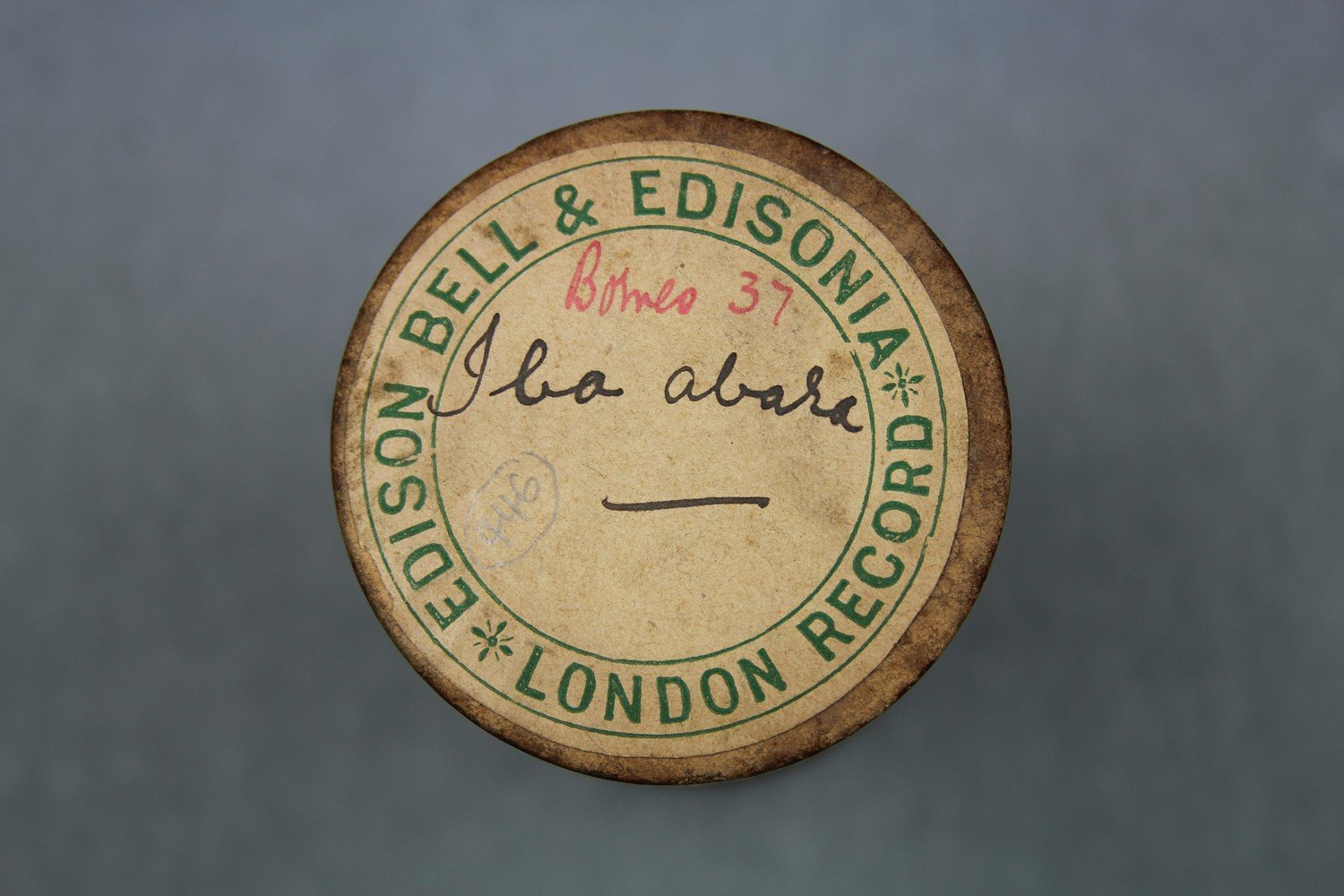      | The 1907 letter from Myers to von Hornbostel is held by the Berliner Phonogramm-Archiv, Ethnologisches Museum, Staatliche Museen zu Berlin. | |||||||
| C80/447 | Wei A | Unidentified (singer, male) | Mer / Murray Island, Torres Strait Islands | 10 May 1898 – 24 August 1898 | 1. Unaccompanied male vocal solo. Malu funeral song. This recording corresponds to Charles S. Myers' Malu Song II. Both Myers (1912) and Ray (1907) translate 'wei' as 'alas!' with Ray noting that this was an exclamation expressing sorrow. It is alternatively spelled 'weu'. Weii mentioned as part of Malu ceremonies (Myers & Haddon 1908:146). Sung to Air II published in Myers & Haddon (1908:151). Words and analysis published in Myers (1912: 247-248, 266). Musical notation included in Anthony Wilkin's field notebook as 'Song K' (1898:250). | Very poor recording. The recording date range assumes that Myers is indeed the recordist and corresponds to the dates of Myer's stay on Mer / Murray Island. Myers (1912:240): 'With one or two exceptions the words of the Malu songs clearly belong to the language of the eastern islands.' Apparently a copy of another cylinder which had repeating grooves and poor tracking. The duplicate could possibly be C80/1014, which is also a recording of Malu Song II and features similar distinctive extraneous noise on the recording. | Meriam Mir | Field recordings | Myers, C. S. | 2'05" | 1898 Cambridge Anthropological Expedition to Torres Straits | Brown wax cylinder. Cardboard cylinder case. Edisonia. | Alfred Cort Haddon 1898 Expedition (Torres Strait and British New Guinea) Cylinder Collection | British Library | 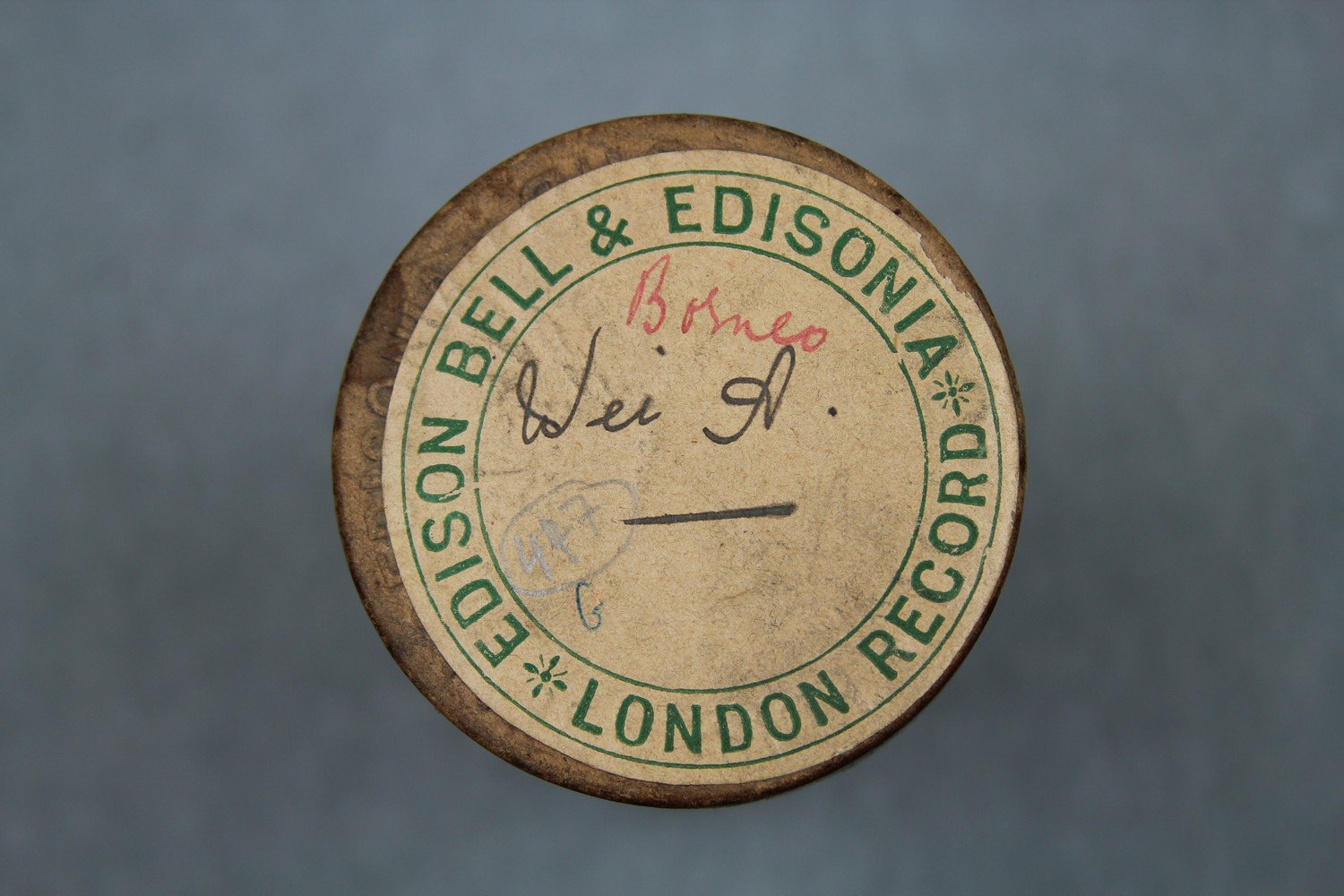      | Haddon, A.C. (ed.) 1907. Reports of the Cambridge Anthropological Expedition to Torres Strait: Volume III, The Languages of Torres Strait. Cambridge: Cambridge University Press. British Library shelfmark General Reference Collection YC.2011.b.631. | Haddon, A.C. (ed.) 1908. Reports of the Cambridge Anthropological Expedition to Torres Strait: Volume VI, Sociology, Magic and Religion of the Eastern Islanders. Cambridge: Cambridge University Press. British Library shelfmark General Reference Collection YC.2011.b.632. | Haddon, A.C. (ed.) 1912. Reports of the Cambridge Anthropological Expedition to Torres Strait: Volume IV, Arts and Crafts. Cambridge: Cambridge University Press. British Library shelfmark General Reference Collection YC.2011.b.634. | Wilkin, Anthony. 1898. Field Notebook [File 1027]. [manuscript] M2731-M2740: Torres Straits, 1888 - 1936, Cambridge University Library. See http://nla.gov.au/nla.obj-765702983 | |||
| C80/796 | Male vocal solo | Unidentified (singer, male) | Torres Strait Islands | 22 April 1898 – 15 November 1898 | 1-2. Unaccompanied male vocal solo. On lid is written: 'Title lost. ?Speech at end for Ray'. | Reasonable quality recording but with surface noise. As no specific recording location has been identified, the recording date range is based on when any members of the Cambridge Expedition were present in the Torres Strait in 1898. | Field recordings | 2'04" | 1898 Cambridge Anthropological Expedition to Torres Straits | Brown wax cylinder. Cardboard cylinder case. | Alfred Cort Haddon 1898 Expedition (Torres Strait and British New Guinea) Cylinder Collection | British Library | 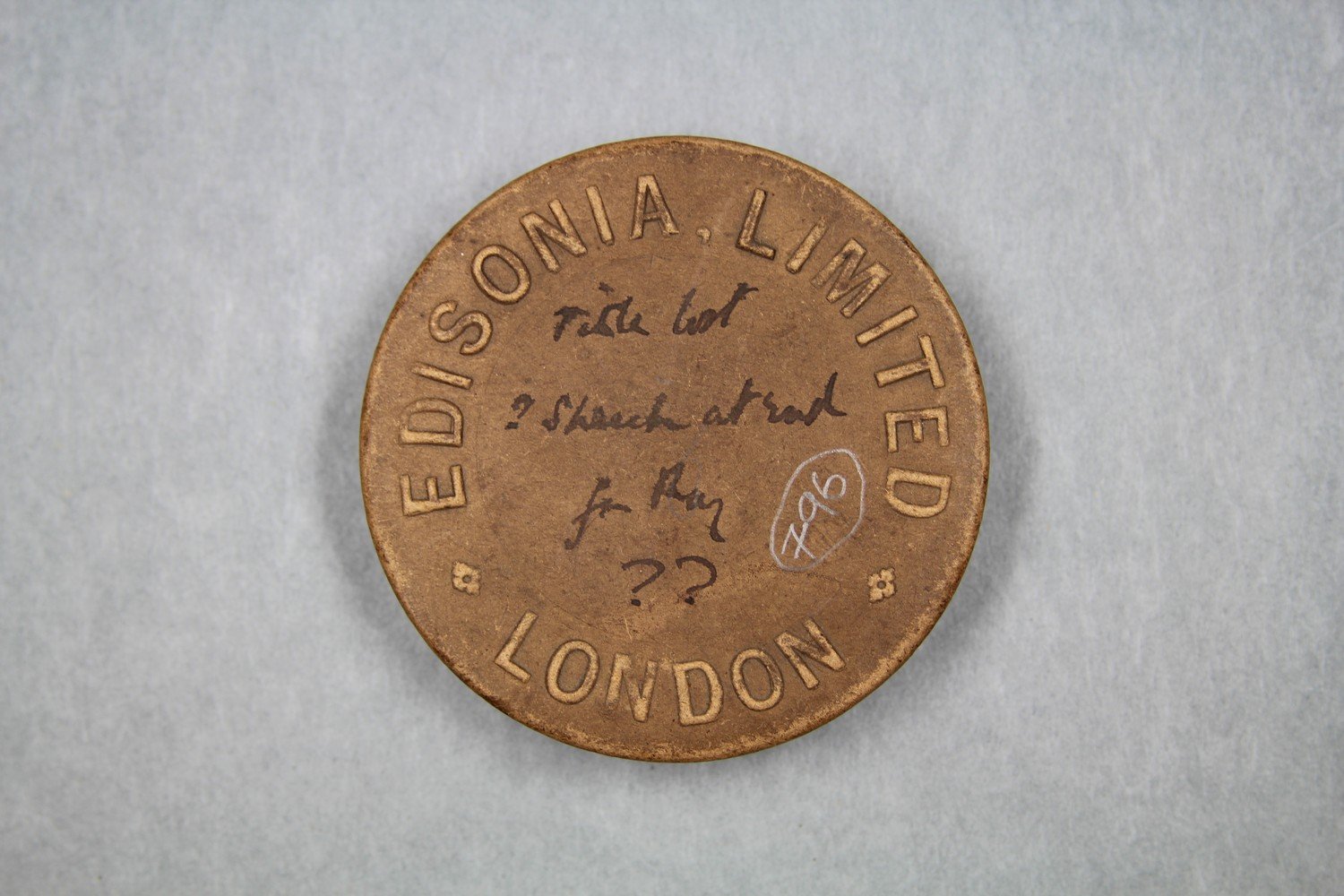      | |||||||||
| C80/816 | Vocal group | Unidentified (male chorus) | Torres Strait Islands, or British New Guinea | 22 April 1898 – 15 November 1898 | Unaccompanied mixed vocal group singing in harmony. No further information available. This may be a Torres Strait or New Guinea cylinder. The cylinder does not have a box and is bandaged at both ends. | Reasonable quality recording. As no specific recording location has been identified, the recording date range is based on when any members of the Cambridge Expedition were present in the Torres Strait or New Guinea in 1898. | Field recordings | 1'42' | 1898 Cambridge Anthropological Expedition to Torres Straits | Brown wax cylinder. No case. | Alfred Cort Haddon 1898 Expedition (Torres Strait and British New Guinea) Cylinder Collection | British Library | 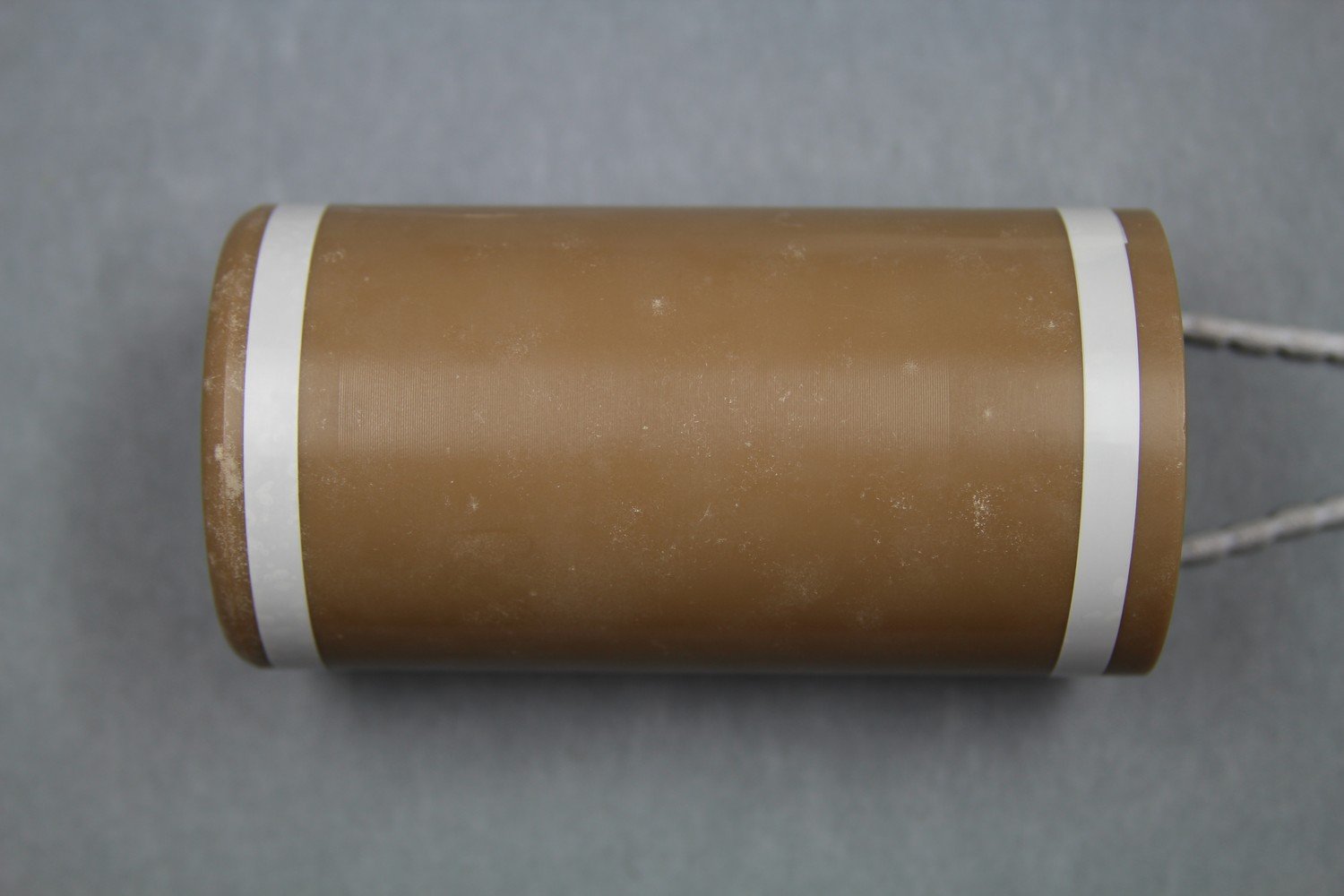      | |||||||||
| C80/818 | Polyglot | Unidentified (singer, male) | Torres Strait Islands | 22 April 1898 – 15 November 1898 | 1. Solo male speech. No further information available. The cylinder was previously identified as a 'stray' Torres Strait cylinder. | Poor quality recording with heavy surface noise. As no specific recording location has been identified, the recording date range is based on when any members of the Cambridge Expedition were present in the Torres Strait in 1898. | Field recordings | 2'17" | 1898 Cambridge Anthropological Expedition to Torres Straits | Brown wax cylinder. Metal cylinder case. | Alfred Cort Haddon 1898 Expedition (Torres Strait and British New Guinea) Cylinder Collection | British Library |  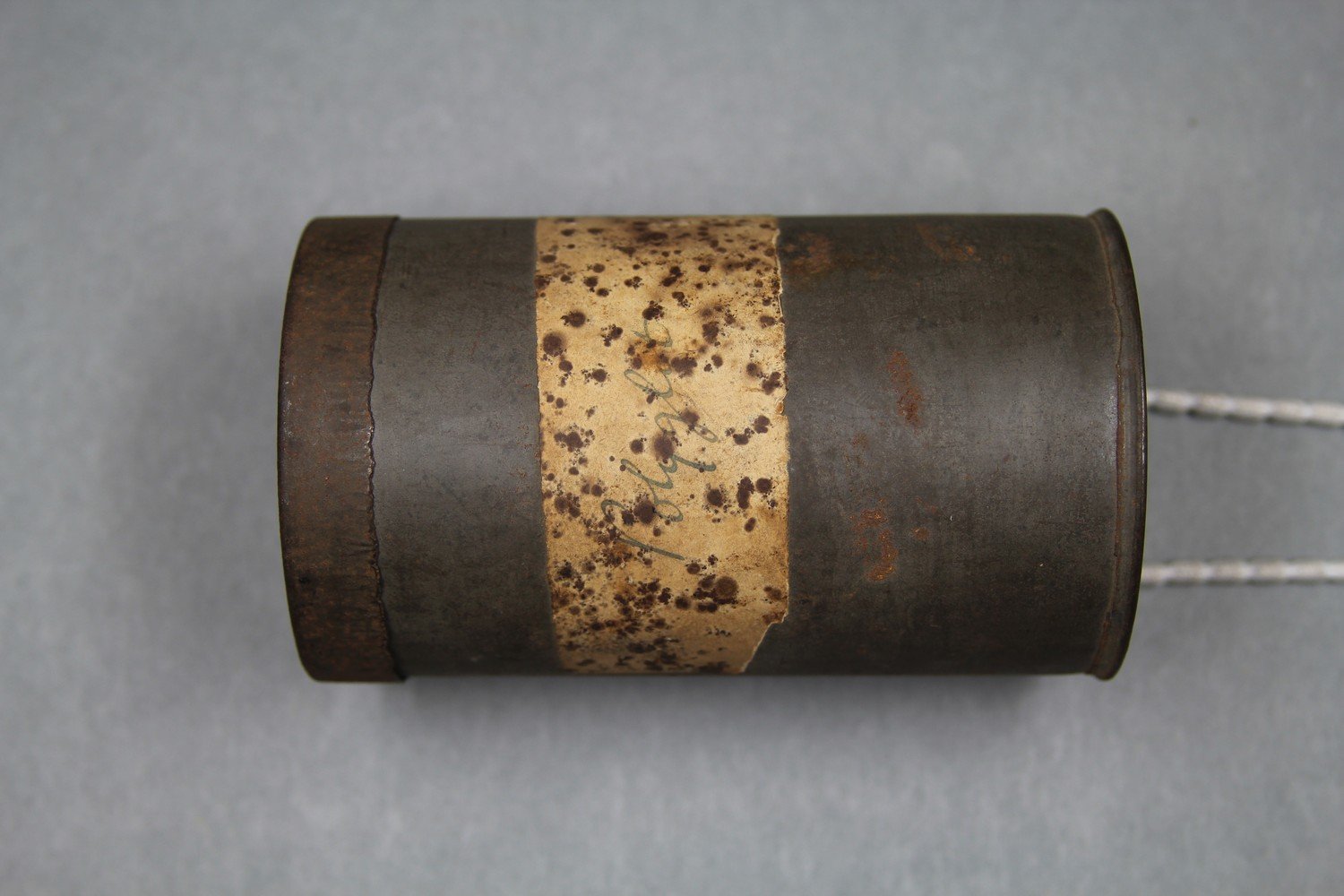 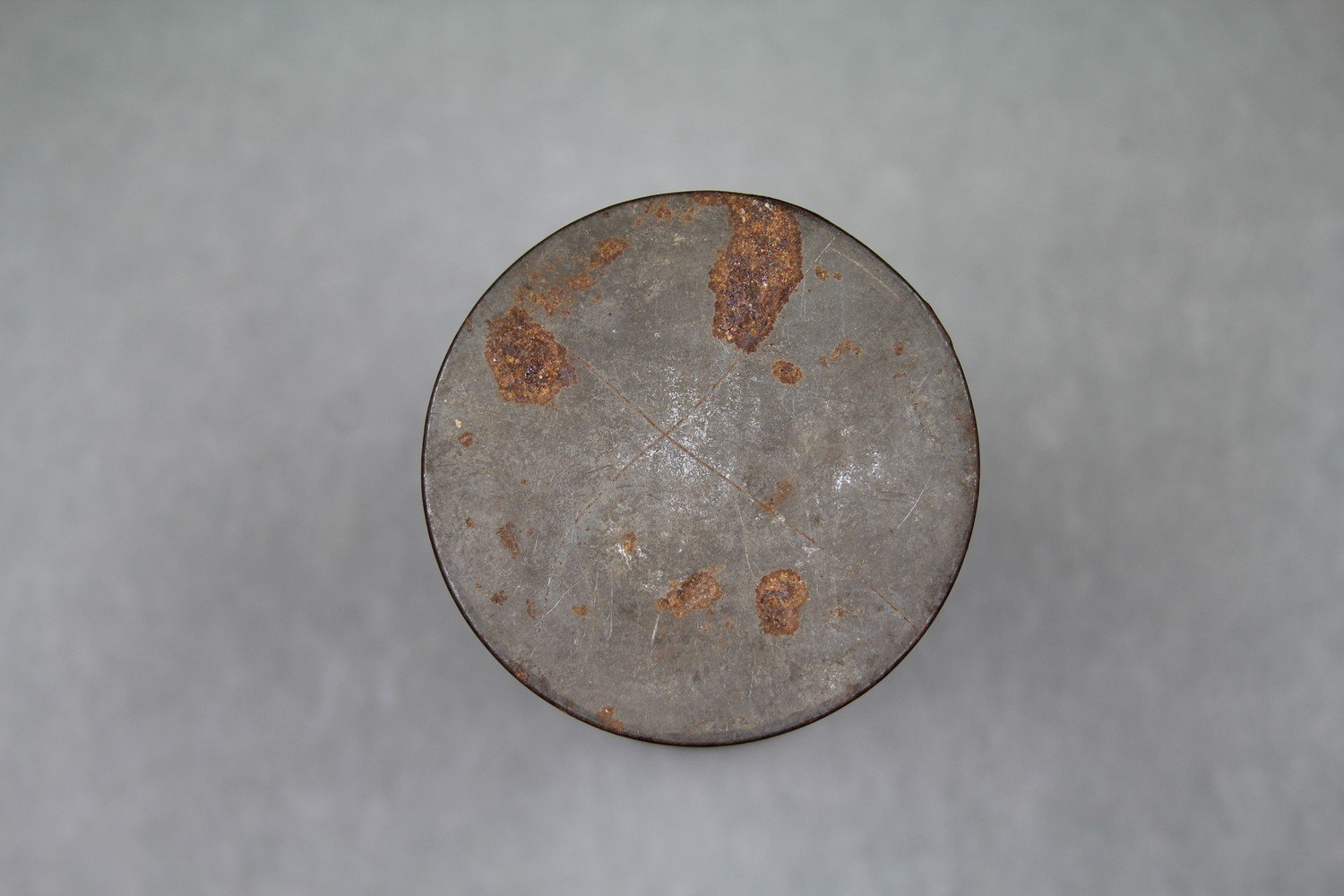    | |||||||||
| C80/1011 | Ulai Dzenarmarkai | Ulai (singer, male) | Mer / Murray Island, Torres Strait Islands | 10 May 1898 – 24 August 1898 | Unaccompanied male vocal solo. This cylinder has been bandaged at both ends. This recording corresponds to Charles S. Myers' Keber Song VII. The zera merkai [or markai] is a Keber ceremony (Ray 1907). The zera markai keber originated on Dauar / Dowar Island but was subsequently only practised in Sebeg and Er on Mer / Murray Island when a person had died. The participants represent ghosts (Myers & Haddon 1908:129). Alternatively, Haddon wrote that the zeramerkai was ‘always performed at the death of a Komet or Meurem person’ (Haddon 1935:119). Inscription on cylinder insert notes: 'Ulai: Dzenarmarkai. / VII zera markai / wau kubi uti sa'. On reverse: '[…] of dzenar (?Dziri[…] / ((kubi utisa)2 baiba ita)2 / were were tepe were waru gadga / were sidar gadga were tepe were / baua gadgar were'. Two small slips of perforated paper also found in cylinder: 'IX' and 'VII'. The cylinder insert notes suggests this recording is VII. Keber song VII was published in Myers & Haddon (1908:152) and discussed in Myers (1912:245, 268). Analysis of Song VII in Myers (1912: 252). | Reasonable quality recording but with some repeating grooves due to cracked and bandaged cylinder. The recording date range assumes that Myers is indeed the recordist and corresponds to the dates of Myer's stay on Mer / Murray Island. Myers (1912:240): 'the keber songs which, with the exception of Song XI, are invariably in the western language.' | Kala Lagaw Ya | Field recordings | Myers, C. S. | 2'07" | 1898 Cambridge Anthropological Expedition to Torres Straits | Brown wax cylinder. No case. | Alfred Cort Haddon 1898 Expedition (Torres Strait and British New Guinea) Cylinder Collection | British Library | 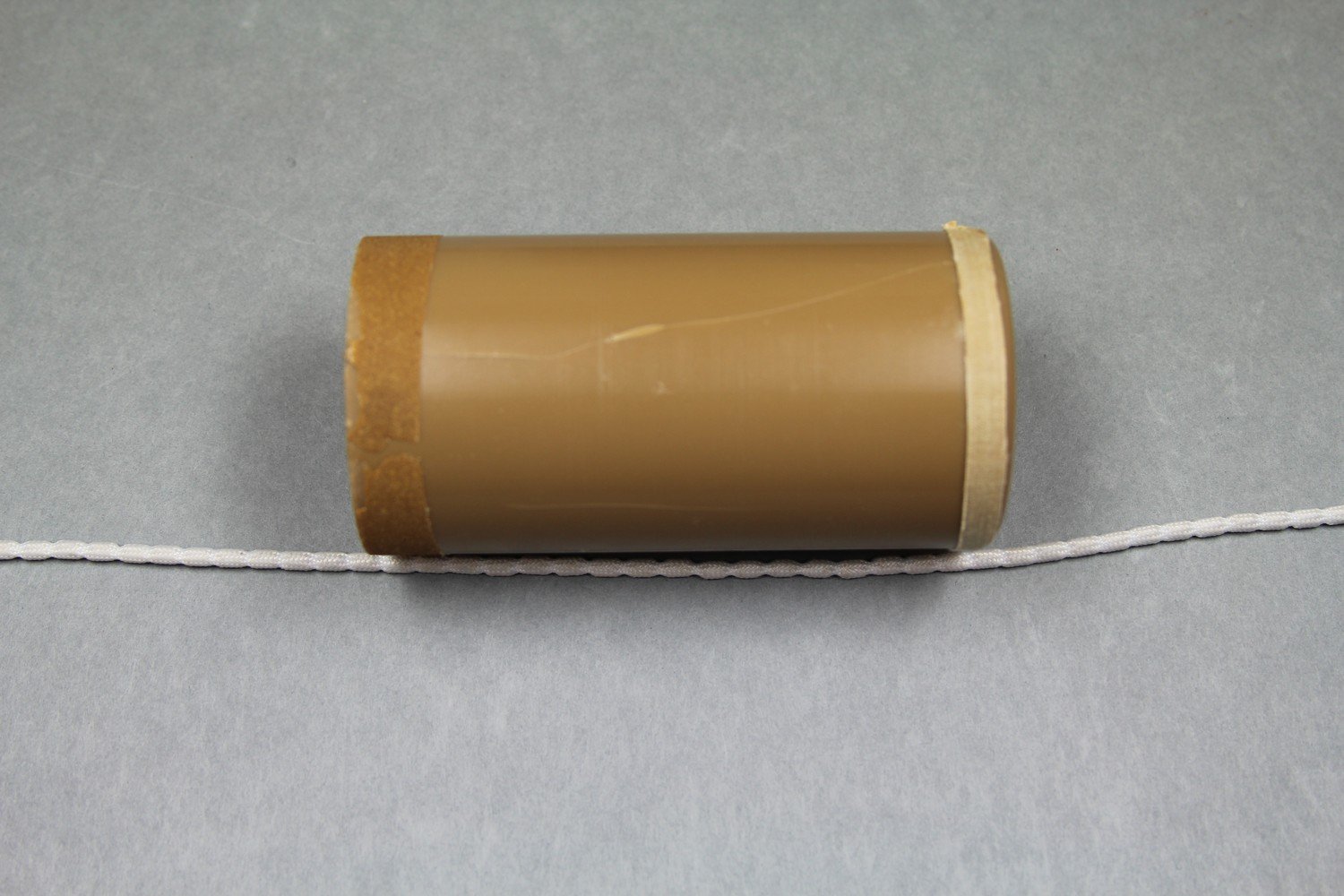 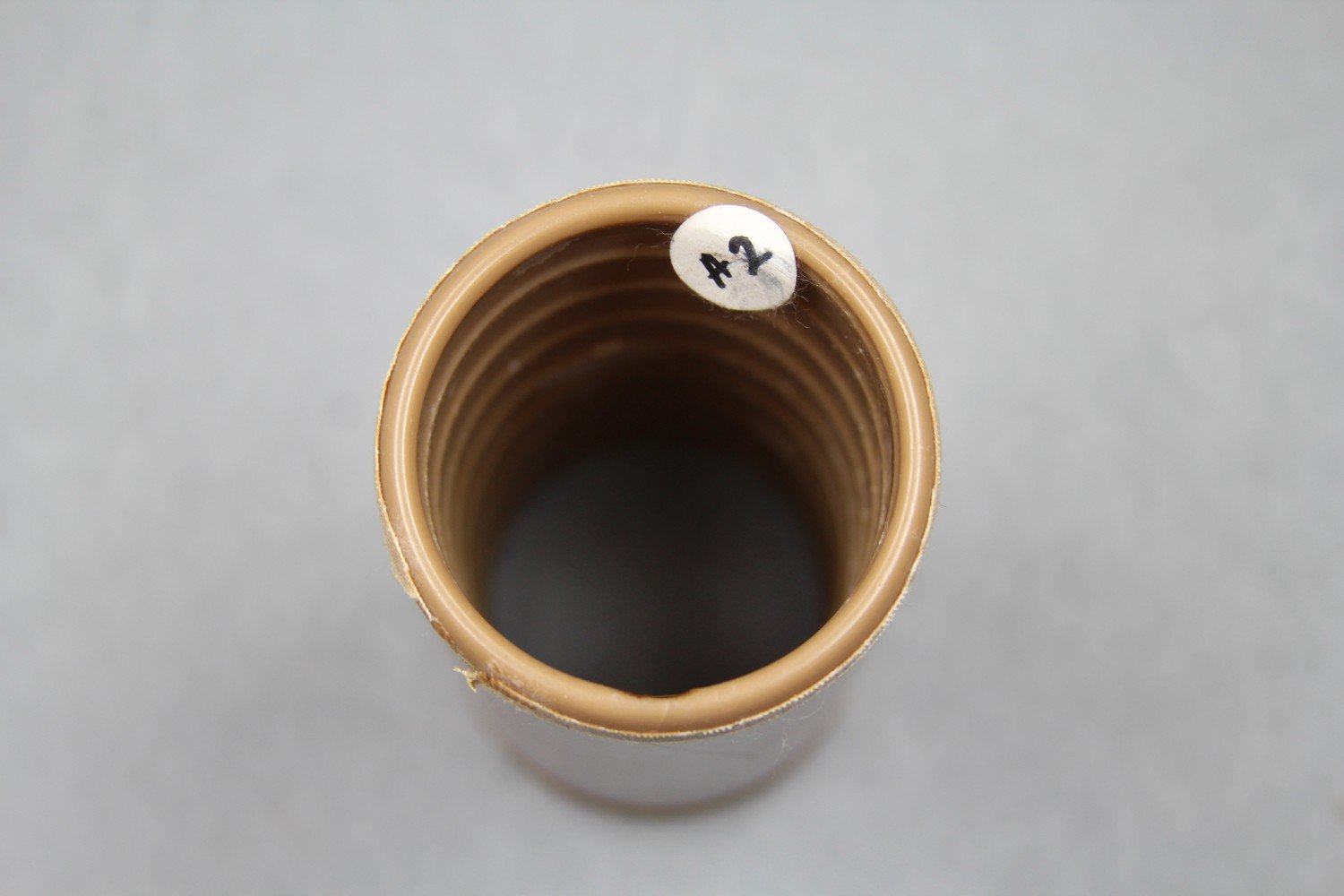 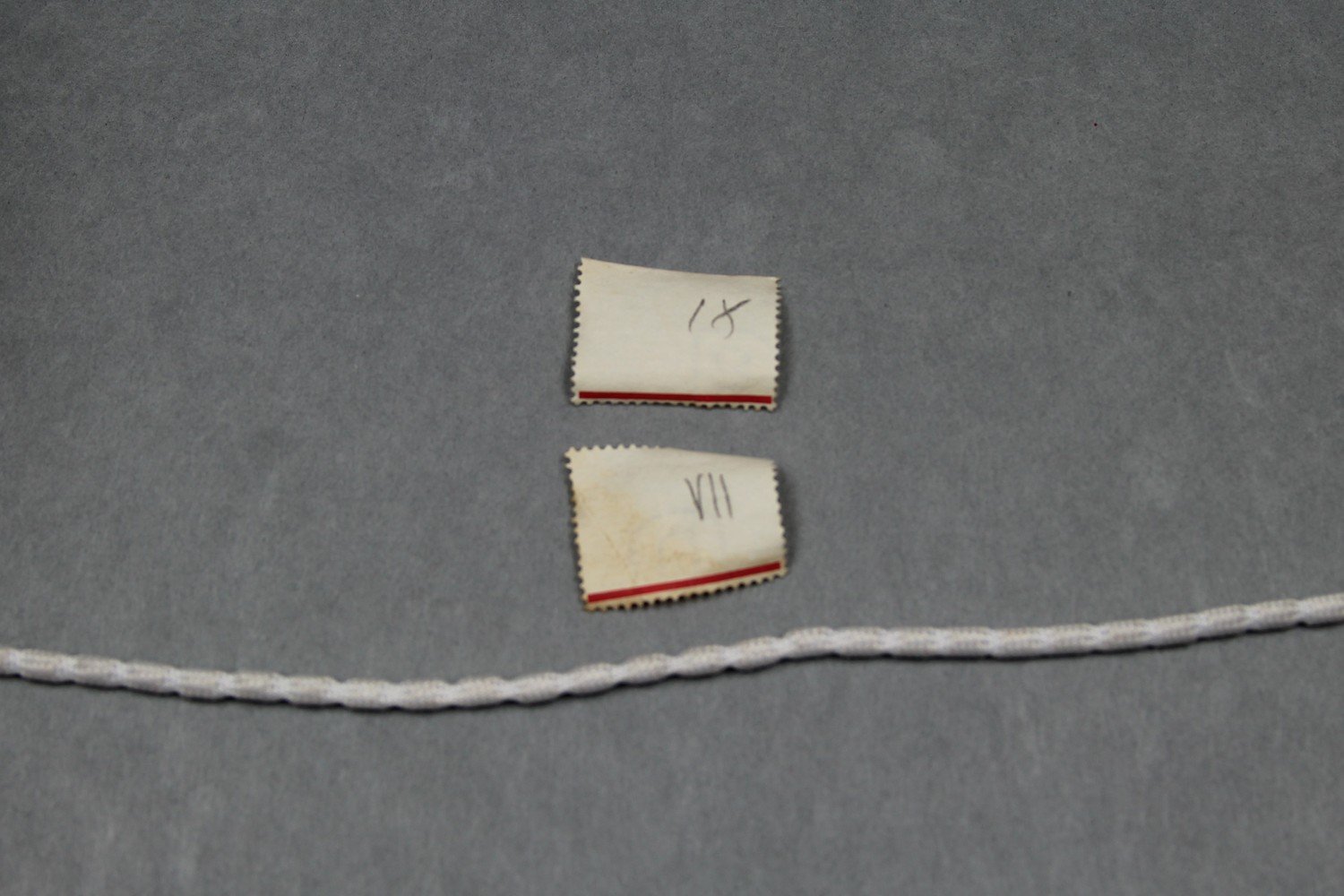 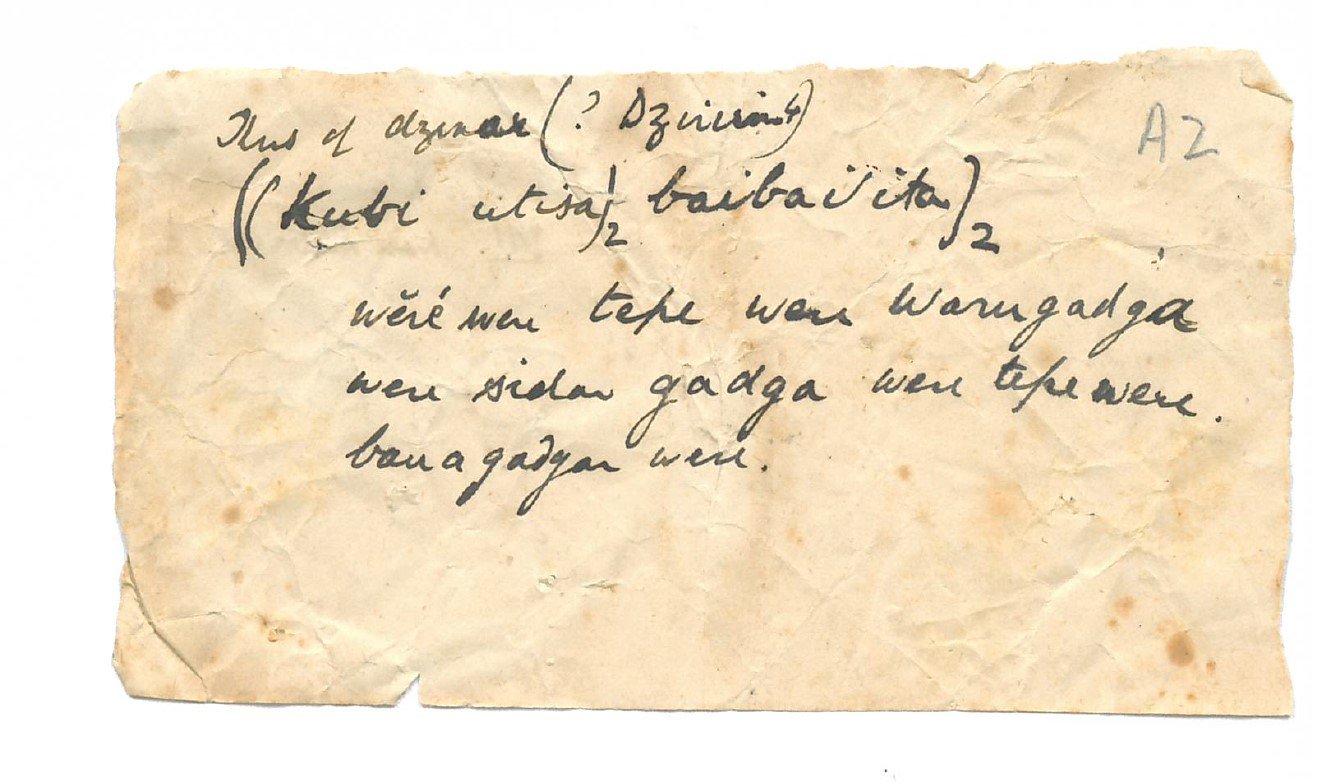   | Haddon, A.C. (ed.) 1907. Reports of the Cambridge Anthropological Expedition to Torres Strait: Volume III, The Languages of Torres Strait. Cambridge: Cambridge University Press. British Library shelfmark General Reference Collection YC.2011.b.631. | Haddon, A.C. (ed.) 1908. Reports of the Cambridge Anthropological Expedition to Torres Strait: Volume VI, Sociology, Magic and Religion of the Eastern Islanders. Cambridge: Cambridge University Press. British Library shelfmark General Reference Collection YC.2011.b.632. | Haddon, A.C. (ed.) 1912. Reports of the Cambridge Anthropological Expedition to Torres Strait: Volume IV, Arts and Crafts. Cambridge: Cambridge University Press. British Library shelfmark General Reference Collection YC.2011.b.634. | Haddon, A.C. (ed.) 1935. Reports of the Cambridge Anthropological Expedition to Torres Strait: Volume I, General Ethnography. Cambridge: Cambridge University Press. British Library shelfmark General Reference Collection YC.2011.b.630. | |||
| C80/1012 | Izib B | Ulai (singer, male); Wanu (singer, male) | Mer / Murray Island, Torres Strait Islands | 10 May 1898 – 24 August 1898 | Unaccompanied male vocal solo. This recording corresponds to Charles S. Myers' Malu Song III. In correspondence with Erich von Hornbostel, Myers describes Izib as a funeral song from Mer / Murray Island (Myers 1907). Izib was the creek at Kiam, Mer / Murray Island, from which Malu drank water (Haddon & Myers VI 1908:283, 299). Inscription on cylinder insert notes: 'Izib B / Ulai and Wanu.' One small slip of perforated paper: 'Izib B'. Words and musical notation published in Myers & Haddon (1908:150-151). Further analysis and song text available in Myers (1912:249, 266-267). | Poor quality with very weak signal and surface noise. The recording date range assumes that Myers is indeed the recordist and corresponds to the dates of Myer's stay on Mer / Murray Island. Myers (1912:240): 'With one or two exceptions the words of the Malu songs clearly belong to the language of the eastern islands.' C80/1012 (better quality) is the master whereas C80/1101 is a duplicate. | Meriam Mir | Field recordings | Myers, C. S. | 1'42" | 1898 Cambridge Anthropological Expedition to Torres Straits | Brown wax cylinder. No case. | Alfred Cort Haddon 1898 Expedition (Torres Strait and British New Guinea) Cylinder Collection | British Library | 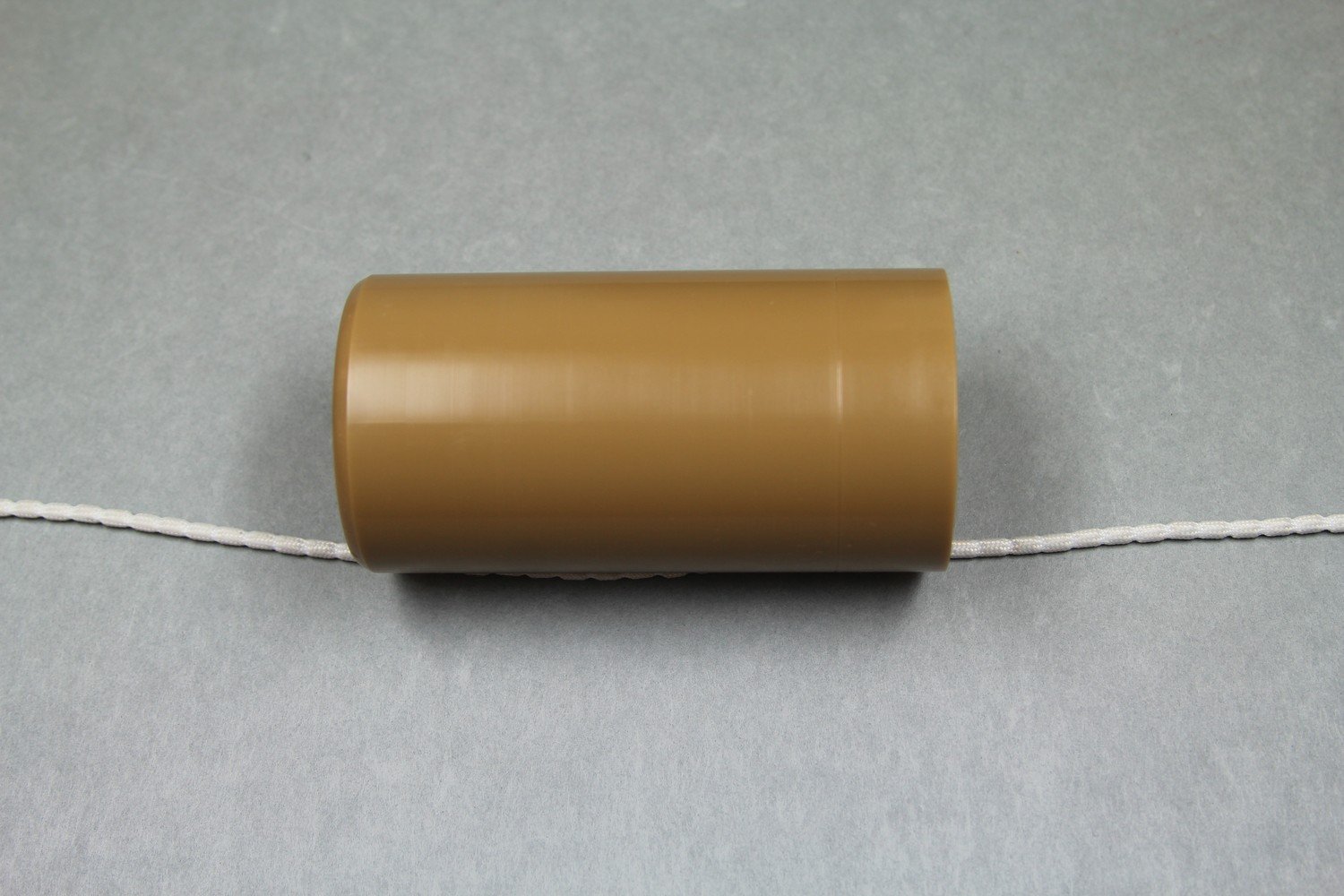   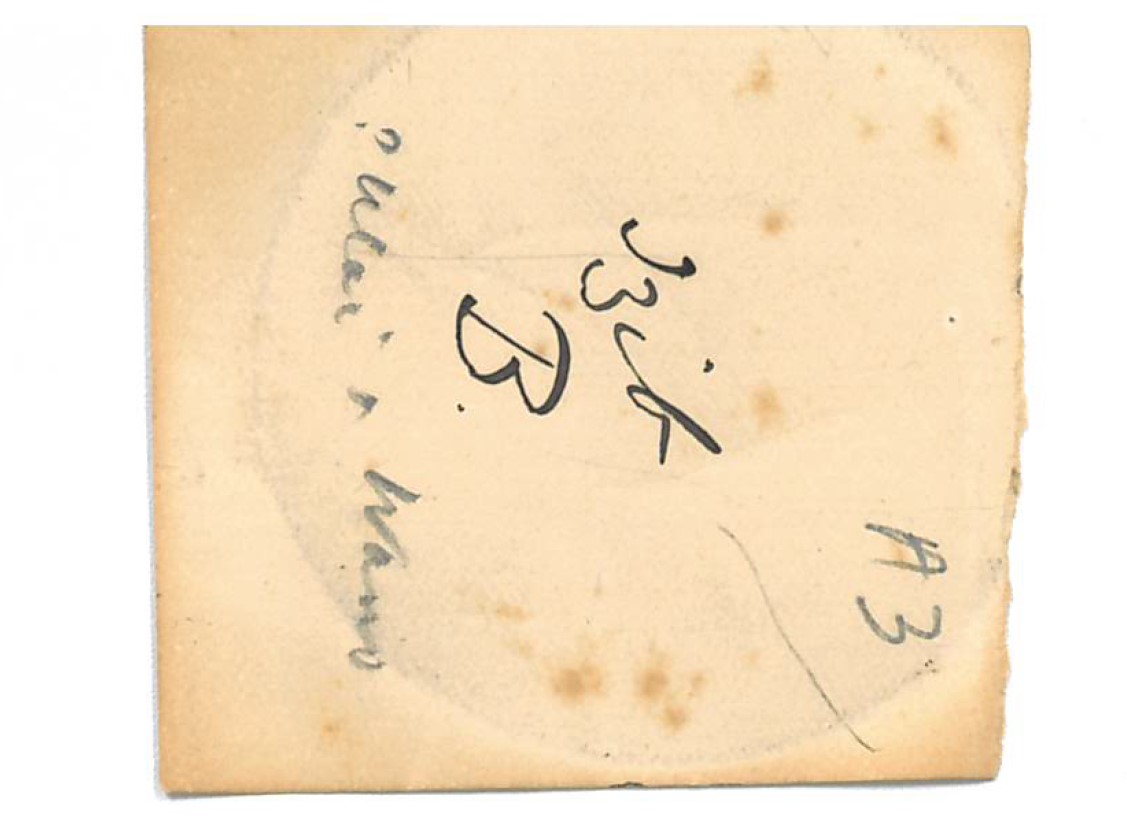   | Haddon, A.C. (ed.) 1908. Reports of the Cambridge Anthropological Expedition to Torres Strait: Volume VI, Sociology, Magic and Religion of the Eastern Islanders. Cambridge: Cambridge University Press. British Library shelfmark General Reference Collection YC.2011.b.632. | Haddon, A.C. (ed.) 1912. Reports of the Cambridge Anthropological Expedition to Torres Strait: Volume IV, Arts and Crafts. Cambridge: Cambridge University Press. British Library shelfmark General Reference Collection YC.2011.b.634. | The 1907 letter from Myers to von Hornbostel is held by the Berliner Phonogramm-Archiv, Ethnologisches Museum, Staatliche Museen zu Berlin. | ||||
| C80/1013 | Adud leluti C and C1 | Ulai (singer, male); Gasu (singer, male) | Mer / Murray Island, Torres Strait Islands | 10 May 1898 – 24 August 1898 | Male vocal group. Ulai and Gasu, later Gasu. This recording corresponds to Charles S. Myers' Malu Song IV A. Adud leluti translates to 'bad man' (Haddon & Myers 1908:297). Ray translates adud as 'bad' or 'evil' (Ray 1907:132). Song IV A was performed during the exhibition of the sacred Malu-Bomai masks and also during the dance of the Beizam Boai after the initiation ceremonies.” (Myers 1912:243). "The fourth song was uttered in a very low voice, and was followed by yet more highly sacred words which were quickly whispered so that no one may hear them save those who had been initiated into the Malu mysteries" (Myers & Haddon 1908:150). Inscription on cylinder insert notes: 'Adud leluti C and C1 / Drum / Ulai and Gasu / later Gasu'. One small slip of perforated paper: ‘Adud C 100’. Published and analysed in Myers (1912:249-251, 267). Words also published in Haddon & Myers (1908:297-299). Musical notation is also included in Anthony Wilkin's field notebook as 'Song H' (1898:251). | Reasonable quality recording but with surface noise. The recording date range assumes that Myers is indeed the recordist and corresponds to the dates of Myer's stay on Mer / Murray Island. Myers (1912:240): 'With one or two exceptions the words of the Malu songs clearly belong to the language of the eastern islands.' In Alice Moyle's 1985 audition sheets, she noted '[Poor quality at commencement. Gliding tones ( -i-ya:) / followed by "short high-pitched shouts", (Myers, 1912:250) A.M.]'. | Meriam Mir | Field recordings | Myers, C. S. | 2'01" | 1898 Cambridge Anthropological Expedition to Torres Straits | Brown wax cylinder. No case. | Alfred Cort Haddon 1898 Expedition (Torres Strait and British New Guinea) Cylinder Collection | British Library |  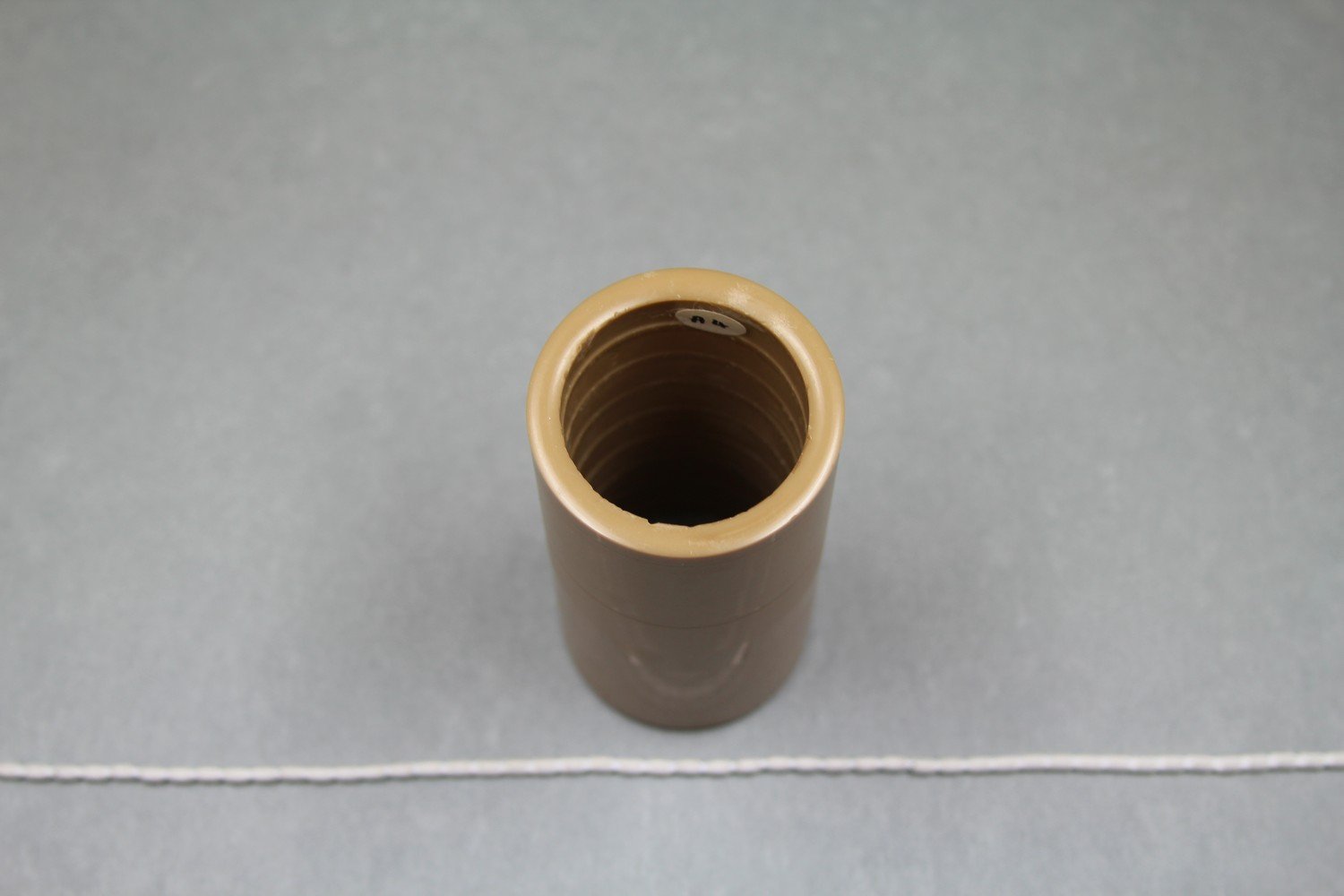 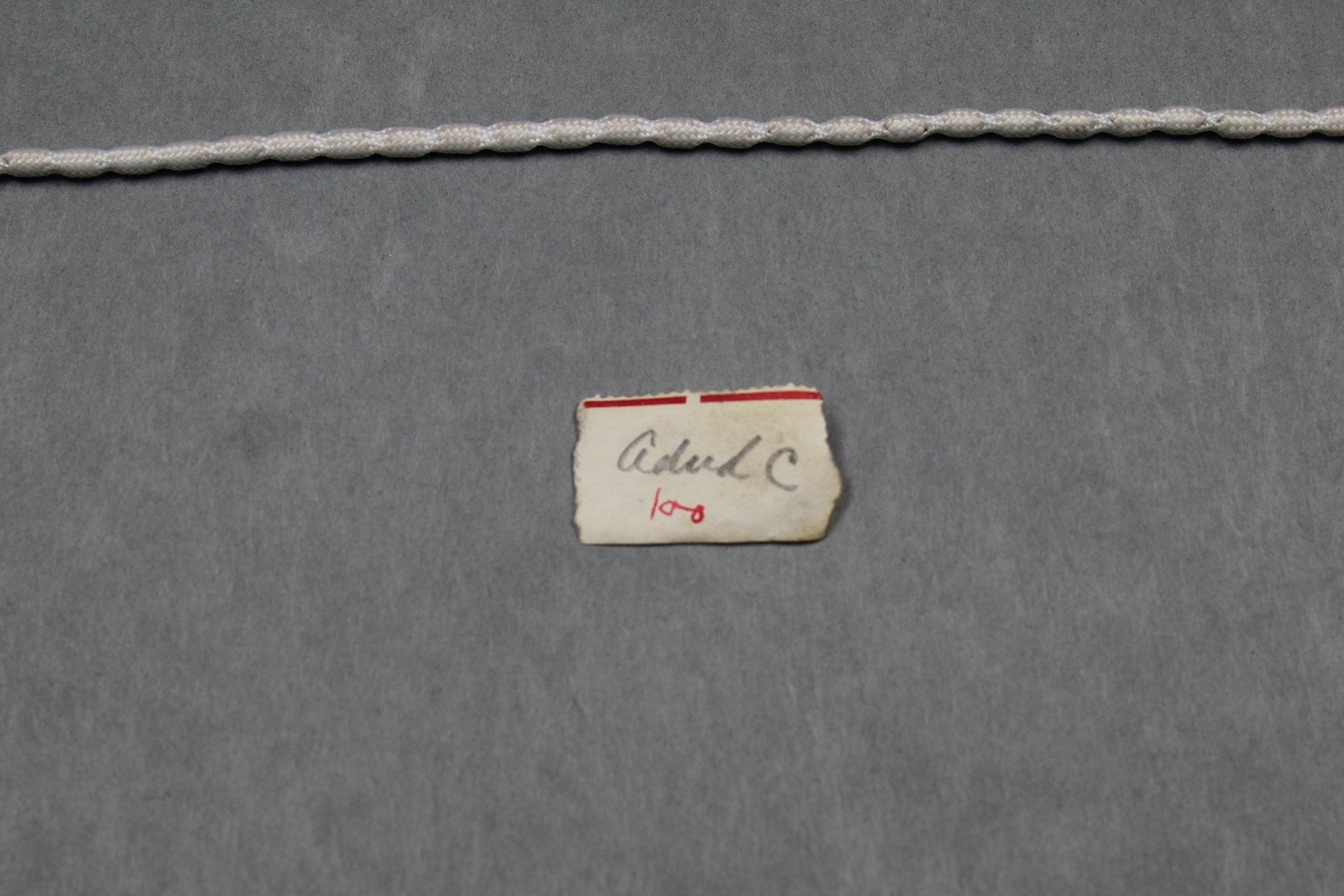 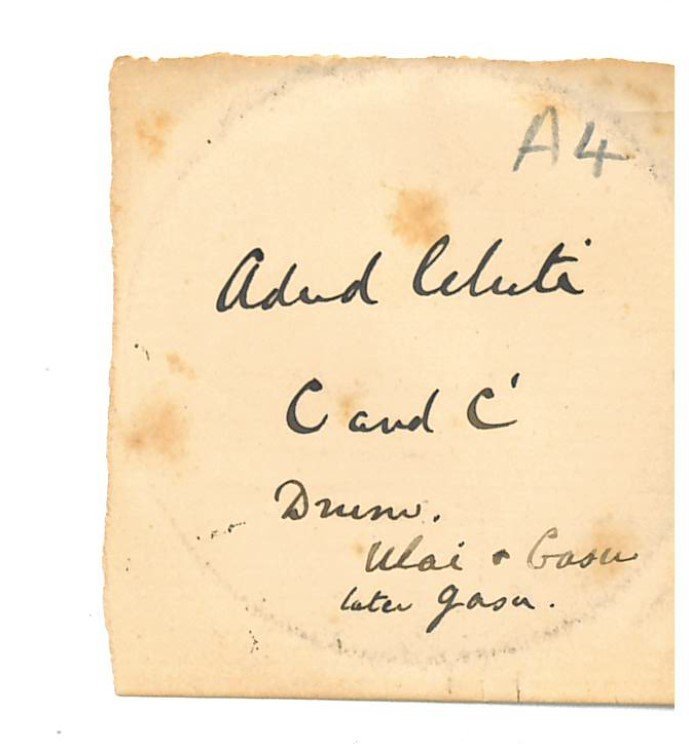   | Haddon, A.C. (ed.) 1907. Reports of the Cambridge Anthropological Expedition to Torres Strait: Volume III, The Languages of Torres Strait. Cambridge: Cambridge University Press. British Library shelfmark General Reference Collection YC.2011.b.631. | Haddon, A.C. (ed.) 1908. Reports of the Cambridge Anthropological Expedition to Torres Strait: Volume VI, Sociology, Magic and Religion of the Eastern Islanders. Cambridge: Cambridge University Press. British Library shelfmark General Reference Collection YC.2011.b.632. | Haddon, A.C. (ed.) 1912. Reports of the Cambridge Anthropological Expedition to Torres Strait: Volume IV, Arts and Crafts. Cambridge: Cambridge University Press. British Library shelfmark General Reference Collection YC.2011.b.634. | Wilkin, Anthony. 1898. Field Notebook [File 1027]. [manuscript] M2731-M2740: Torres Straits, 1888 - 1936, Cambridge University Library. See http://nla.gov.au/nla.obj-765702983 | Alice Moyle (AIAS, now AIATSIS) completed audition sheets for the Torres Strait cylinder collection in 1985. Copies of these are held at the British Library. | ||
| C80/1014 | Weii C | Gasu (singer, male) | Mer / Murray Island, Torres Strait Islands | 10 May 1898 – 24 August 1898 | 1. Unaccompanied male vocal solo. Malu funeral song. This recording corresponds to Charles S. Myers' Malu Song II. Both Myers (1912) and Ray (1907) translate 'wei' as 'alas!' with Ray noting that this was an exclamation expressing sorrow. It is alternatively spelled 'weu'. Weii mentioned as part of Malu ceremonies (Myers & Haddon 1908:146). Inscription on cylinder insert note: 'Weii C'. Two small slips of perforated paper: 'Adud A' and '97 Weii C' [number in red ink]. Sung to Air II published in Myers & Haddon (1908:151). Words and analysis published in Myers (1912: 247-248, 266). Musical notation included in Anthony Wilkin's field notebook as 'Song K' (1898:250). Three records were available of Song II, two of which were sung by Ulai and Gasu (Myers 1912:239). C80/1018 is Ulai and C80/1021 is Myers' own voice. Therefore, this must be Gasu. | Poor quality recording. The recording date range assumes that Myers is indeed the recordist and corresponds to the dates of Myer's stay on Mer / Murray Island. Myers (1912:240): 'With one or two exceptions the words of the Malu songs clearly belong to the language of the eastern islands.' | Meriam Mir | Field recordings | Myers, C. S. | 1'53" | 1898 Cambridge Anthropological Expedition to Torres Straits | Brown wax cylinder. No case. | Alfred Cort Haddon 1898 Expedition (Torres Strait and British New Guinea) Cylinder Collection | British Library | 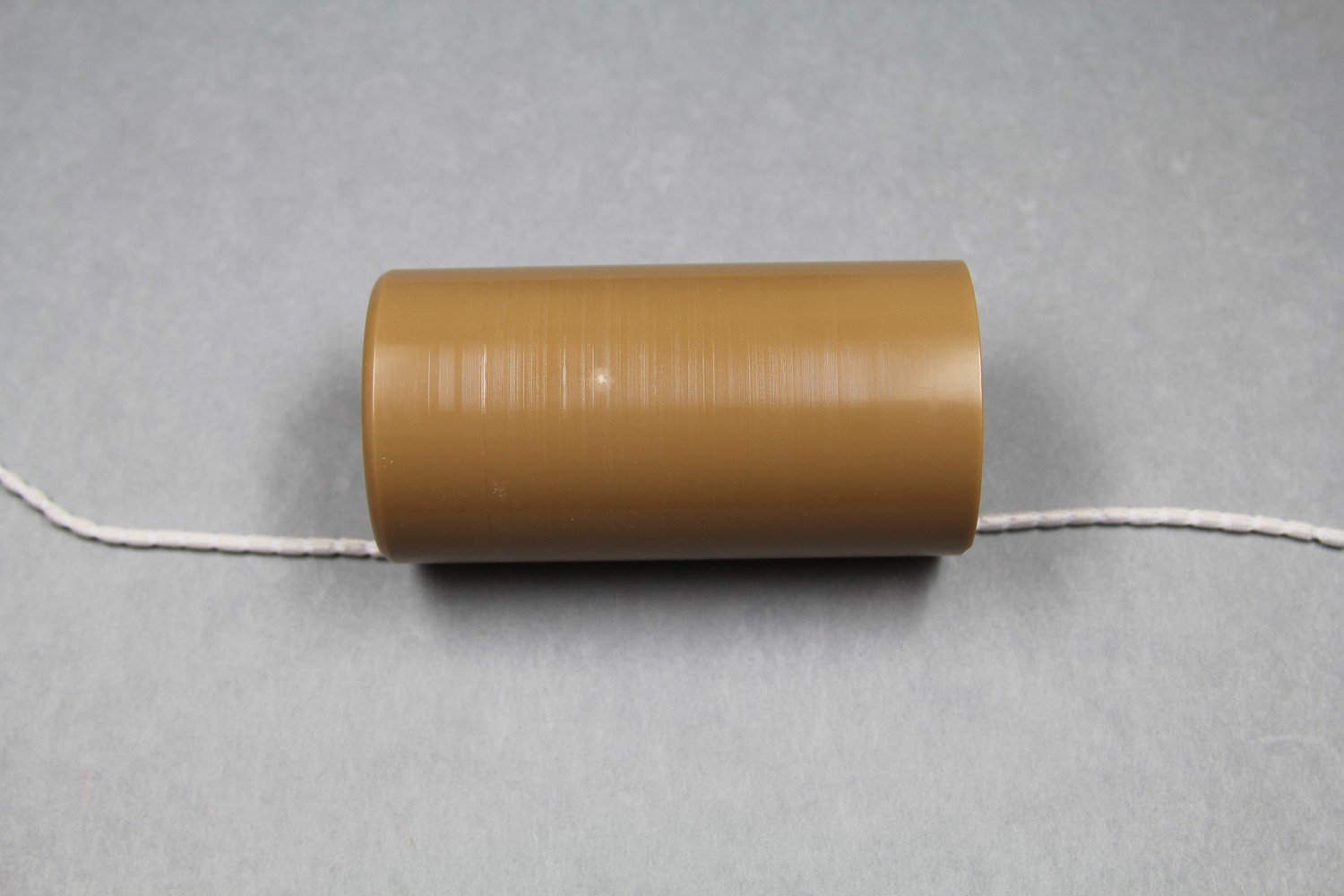 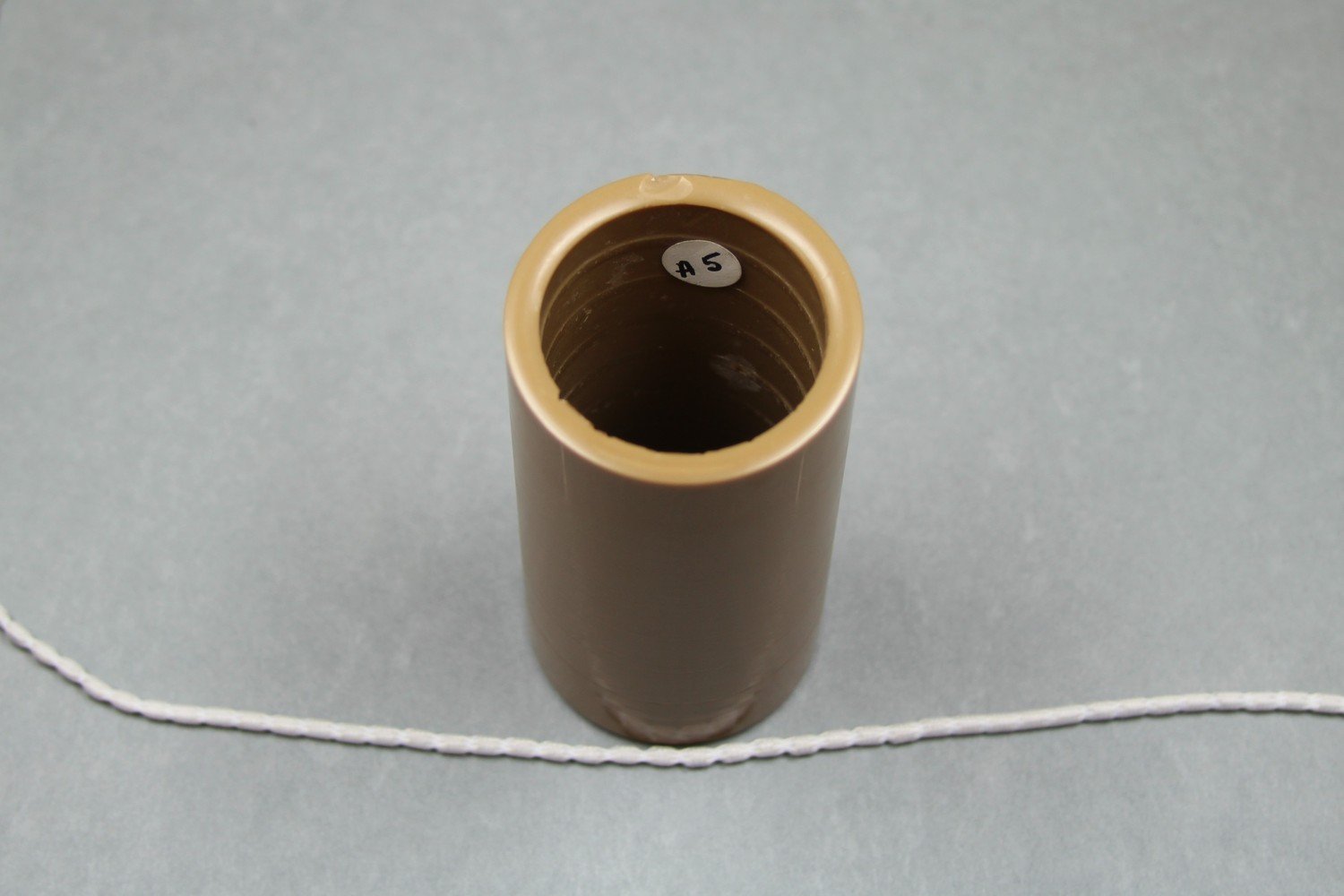 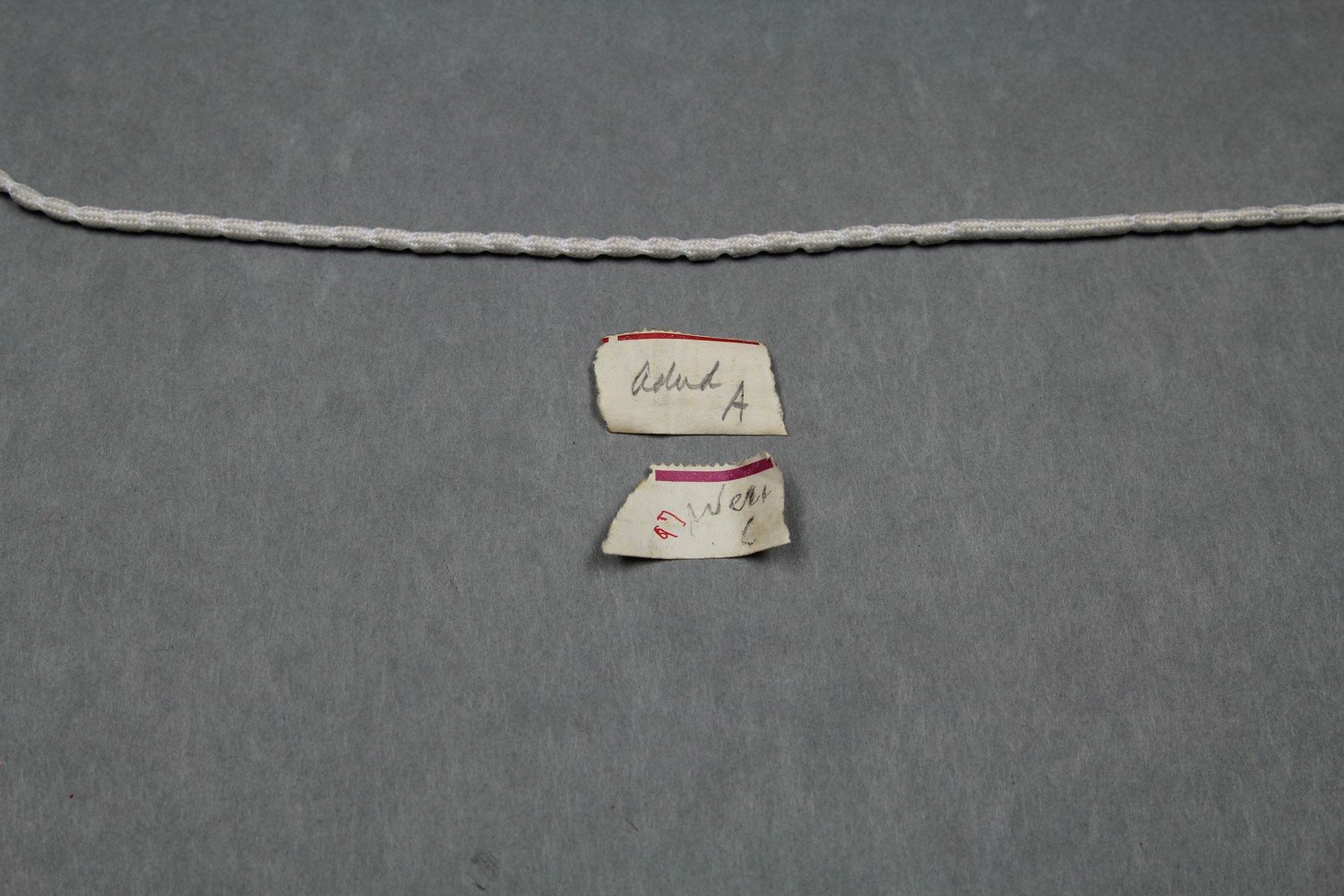 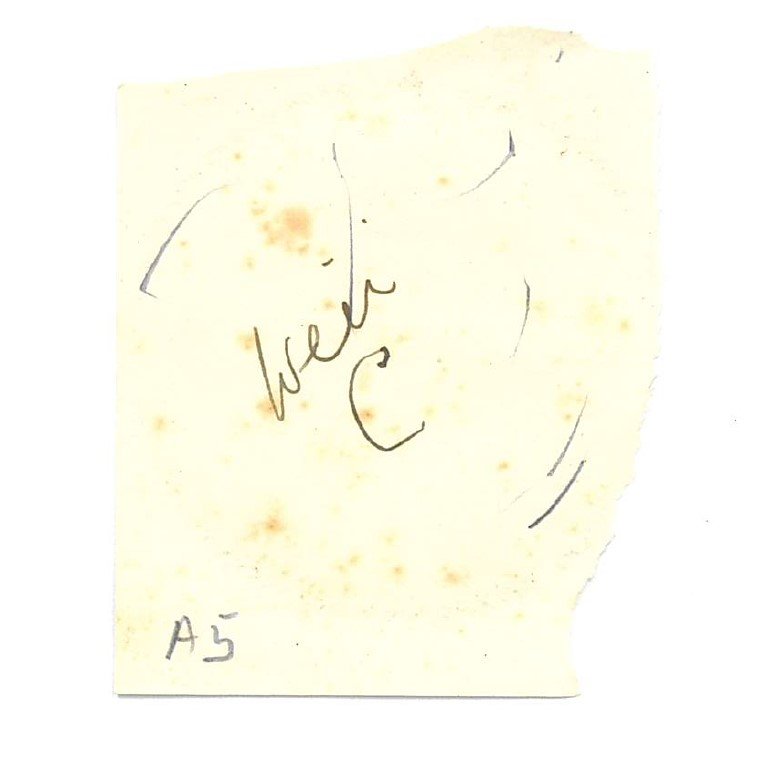   | Haddon, A.C. (ed.) 1907. Reports of the Cambridge Anthropological Expedition to Torres Strait: Volume III, The Languages of Torres Strait. Cambridge: Cambridge University Press. British Library shelfmark General Reference Collection YC.2011.b.631. | Haddon, A.C. (ed.) 1908. Reports of the Cambridge Anthropological Expedition to Torres Strait: Volume VI, Sociology, Magic and Religion of the Eastern Islanders. Cambridge: Cambridge University Press. British Library shelfmark General Reference Collection YC.2011.b.632. | Haddon, A.C. (ed.) 1912. Reports of the Cambridge Anthropological Expedition to Torres Strait: Volume IV, Arts and Crafts. Cambridge: Cambridge University Press. British Library shelfmark General Reference Collection YC.2011.b.634. | Alice Moyle (AIAS, now AIATSIS) completed audition sheets for the Torres Strait cylinder collection in 1985. Copies of these are held at the British Library. | |||
| C80/1016 | Adud leluti B | Ulai (singer, male) | Mer / Murray Island, Torres Strait Islands | 10 May 1898 – 24 August 1898 | The recording date range assumes that Myers is indeed the recordist and corresponds to the dates of Myer's stay on Mer / Murray Island. Myers (1912:240): 'With one or two exceptions the words of the Malu songs clearly belong to the language of the eastern islands.' In Alice Moyle's 1985 audition sheets, she noted '[Poor quality at commencement. Gliding tones ( -i-ya:) / followed by "short high-pitched shouts", (Myers, 1912:250) A.M.]'. See also A4 [C80/1013]. C80/1016 (better quality), C80/1097 and C80/1098 are duplicates). | Meriam Mir | Field recordings | Myers, C. S. | 2'07" | 1898 Cambridge Anthropological Expedition to Torres Straits | Brown wax cylinder. No case. | Alfred Cort Haddon 1898 Expedition (Torres Strait and British New Guinea) Cylinder Collection | British Library |   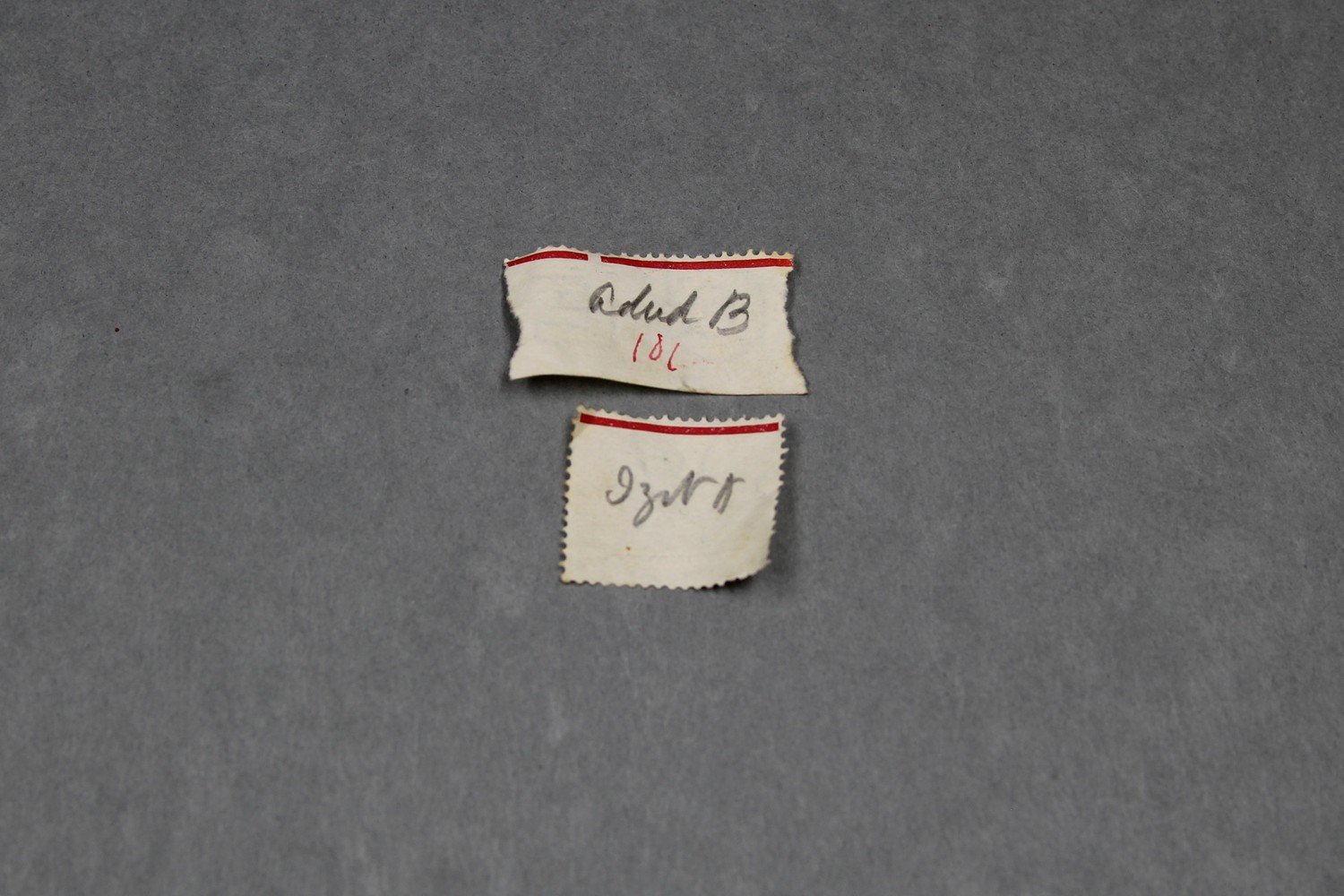 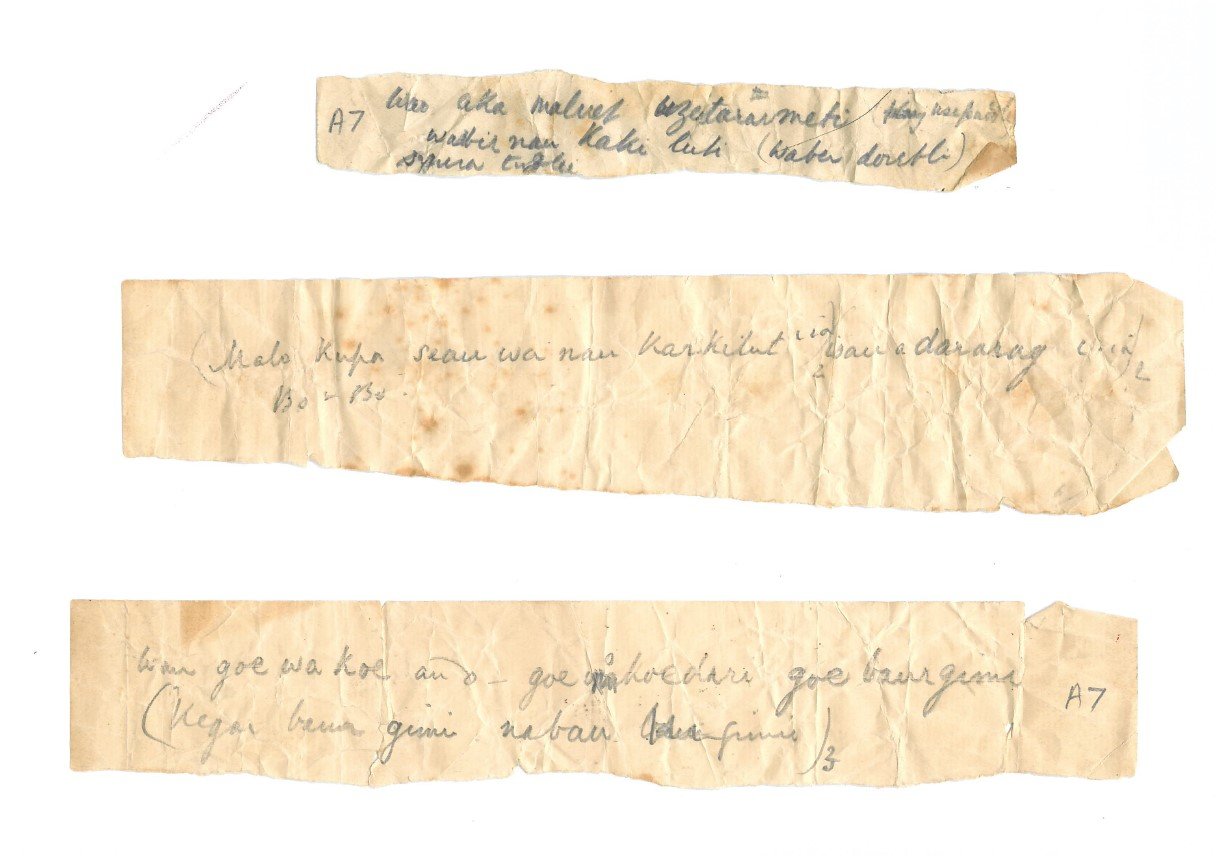   | Haddon, A.C. (ed.) 1907. Reports of the Cambridge Anthropological Expedition to Torres Strait: Volume III, The Languages of Torres Strait. Cambridge: Cambridge University Press. British Library shelfmark General Reference Collection YC.2011.b.631. | Haddon, A.C. (ed.) 1908. Reports of the Cambridge Anthropological Expedition to Torres Strait: Volume VI, Sociology, Magic and Religion of the Eastern Islanders. Cambridge: Cambridge University Press. British Library shelfmark General Reference Collection YC.2011.b.632. | Haddon, A.C. (ed.) 1912. Reports of the Cambridge Anthropological Expedition to Torres Strait: Volume IV, Arts and Crafts. Cambridge: Cambridge University Press. British Library shelfmark General Reference Collection YC.2011.b.634. | Wilkin, Anthony. 1898. Field Notebook [File 1027]. [manuscript] M2731-M2740: Torres Straits, 1888 - 1936, Cambridge University Library. See http://nla.gov.au/nla.obj-765702983 | ||||
| C80/1017 | Billy Gasu | Gasu (singer, male) ? | Mer / Murray Island, Torres Strait Islands | 10 May 1898 – 24 August 1898 | Male vocal solo. Inscription on cardboard insert note: 'Billy Gasu / Old Dauar sitting song / v. good / pua pua Er'. One small slip of perforated paper: 'pua pua 96' [number in red ink]. This recording corresponds to Charles S. Myers' Keber song XIII (variant). Song XIII ‘is an old song from the island of Dauar, sung by Gasu’ (Myers 1912:240). Words, translation, notation and analysis published by Myers (1912:246, 253, 268). Gasu and Billy Gasu are two different people; Billy Gasu was originally from Dauar / Dowar Island and not Mer / Murray Island (Haddon 1908:209). | Reasonable quality recording but with noisy surface due to mould on cylinder. The recording date range assumes that Myers is indeed the recordist and corresponds to the dates of Myer's stay on Mer / Murray Island. Myers (1912:240): 'the keber songs which, with the exception of Song XI, are invariably in the western language.' Billy Gasu was on Mer / Murray Island at the time of the Cambridge Expedition (Rivers 1901:9). | Kala Lagaw Ya | Field recordings | Myers, C. S. | 2'06" | 1898 Cambridge Anthropological Expedition to Torres Straits | Brown wax cylinder. No case. | Alfred Cort Haddon 1898 Expedition (Torres Strait and British New Guinea) Cylinder Collection | British Library | 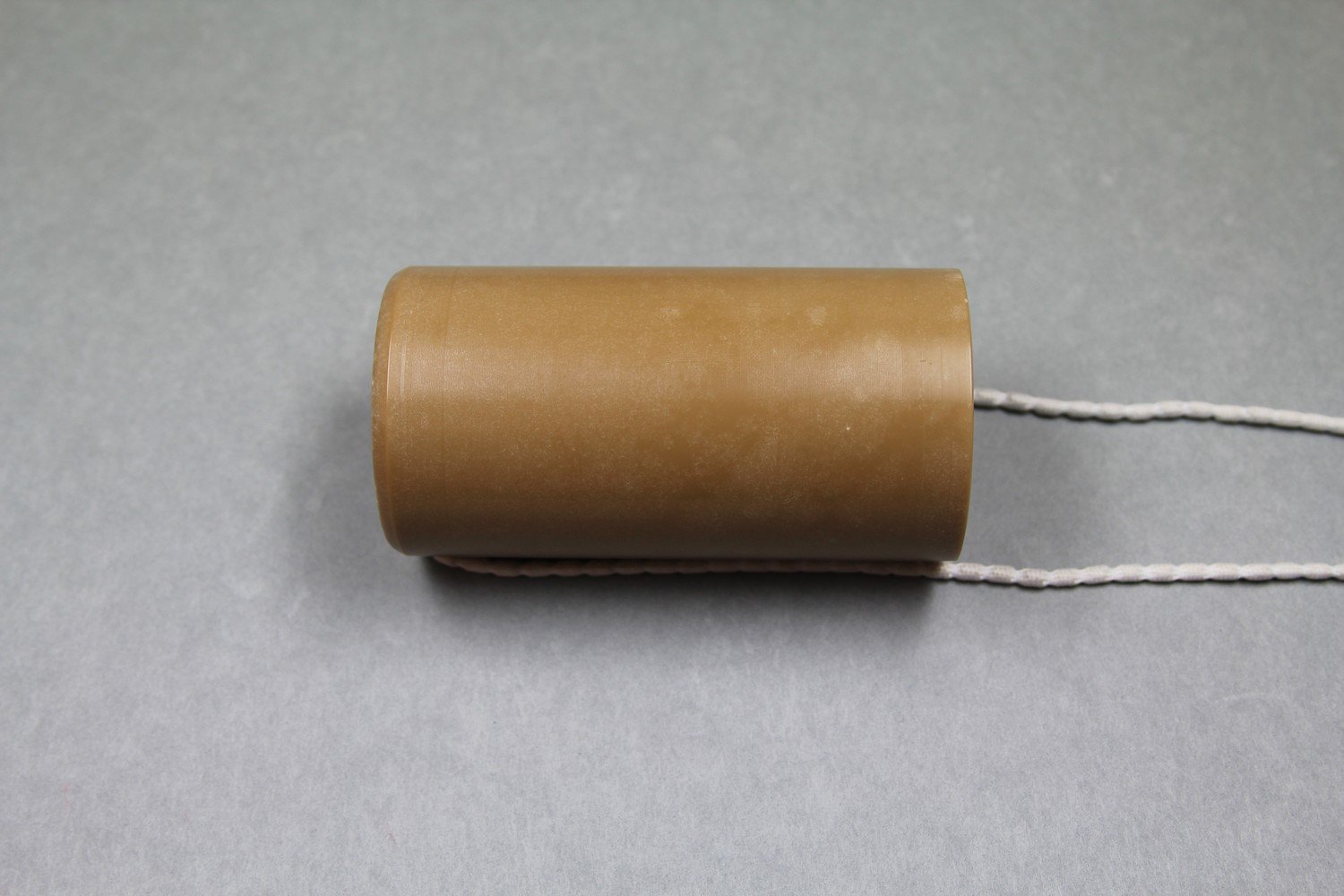 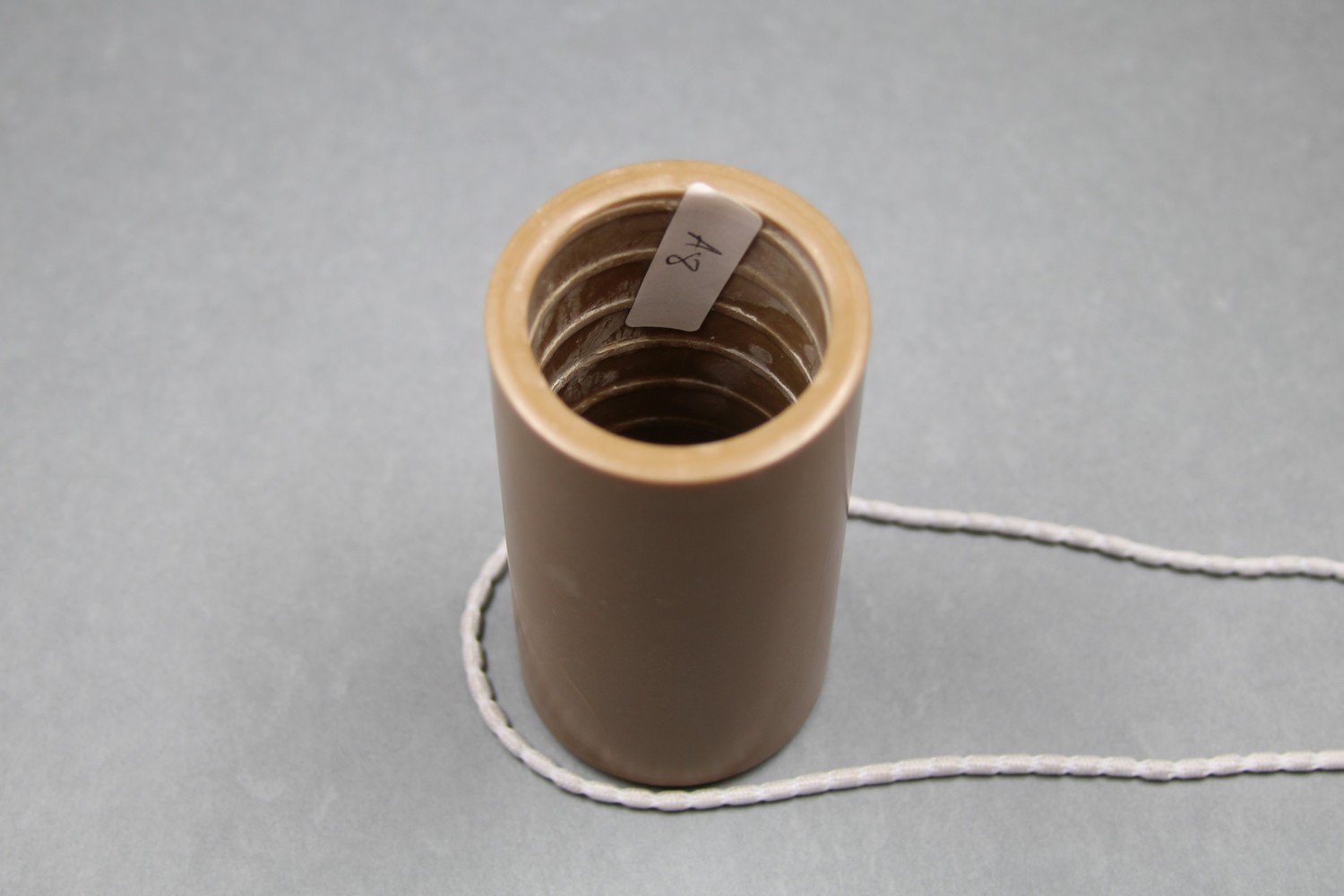 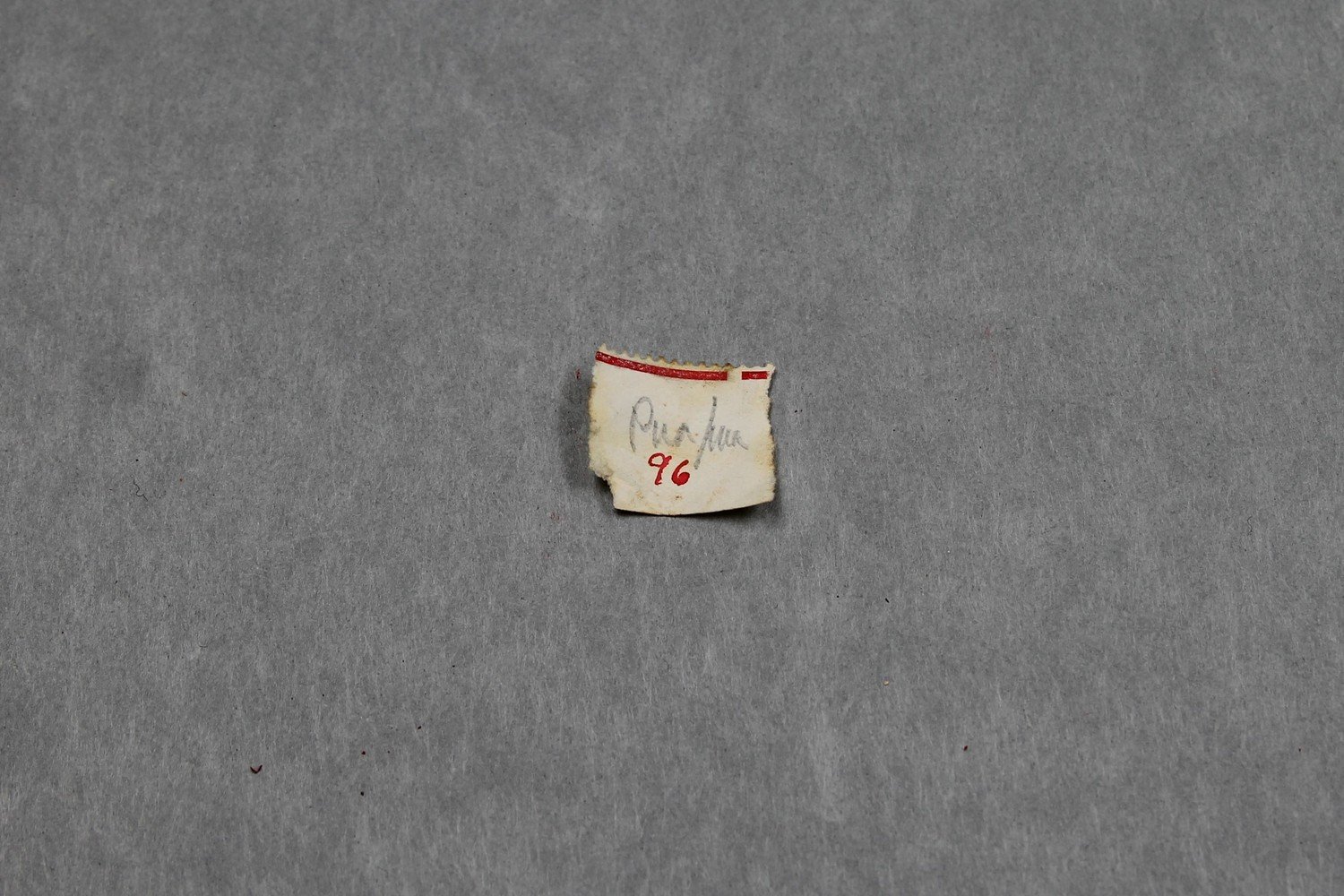    | Haddon, A.C. (ed.) 1912. Reports of the Cambridge Anthropological Expedition to Torres Strait: Volume IV, Arts and Crafts. Cambridge: Cambridge University Press. British Library shelfmark General Reference Collection YC.2011.b.634. | ||||||
| C80/1018 | Weii B | Ulai (singer, male) | Mer / Murray Island, Torres Strait Islands | 10 May 1898 – 24 August 1898 | This song is titled 'Adud leluti A' in Alice Moyle's 1985 audition sheets. Malu funeral song. This recording corresponds to Charles S. Myers' Malu Song II. Both Myers (1912) and Ray (1907) translate 'wei' as 'alas!' with Ray noting that this was an exclamation expressing sorrow. It is alternatively spelled 'weu'. Weii mentioned as part of Malu ceremonies (Myers & Haddon 1908:146). Inscription on cylinder insert notes: 'Ulai / Weii / B’. On reverse: ‘wau o weluba o lewerlewera / o mariba / tamera o gulaba tamera / o wei.’ One small slip of perforated paper: 'weii B'. Sung to Air II published in Myers & Haddon (1908:151). Words, notation and analysis published in Myers (1912: 244, 247-248, 266). Musical notation included in Anthony Wilkin's field notebook as 'Song K' (1898:250). Three records were available of Song II, two of which were sung by Ulai and Gasu (Myers 1912:239). C80/1014 is Gasu, C80/1021 is Myers' own voice. Therefore, this must be Ulai. | Poor quality recording with weak signal and surface noise. The recording date range assumes that Myers is indeed the recordist and corresponds to the dates of Myer's stay on Mer / Murray Island. Myers (1912:240): 'With one or two exceptions the words of the Malu songs clearly belong to the language of the eastern islands.' From Alice Moyle's 1985 audition sheets: 'Differs from the A5 rendering of Song II' [C80/1014]. | Meriam Mir | Field recordings | Myers, C. S. | 1'31" | 1898 Cambridge Anthropological Expedition to Torres Straits | Brown wax cylinder. No case. | Alfred Cort Haddon 1898 Expedition (Torres Strait and British New Guinea) Cylinder Collection | British Library |   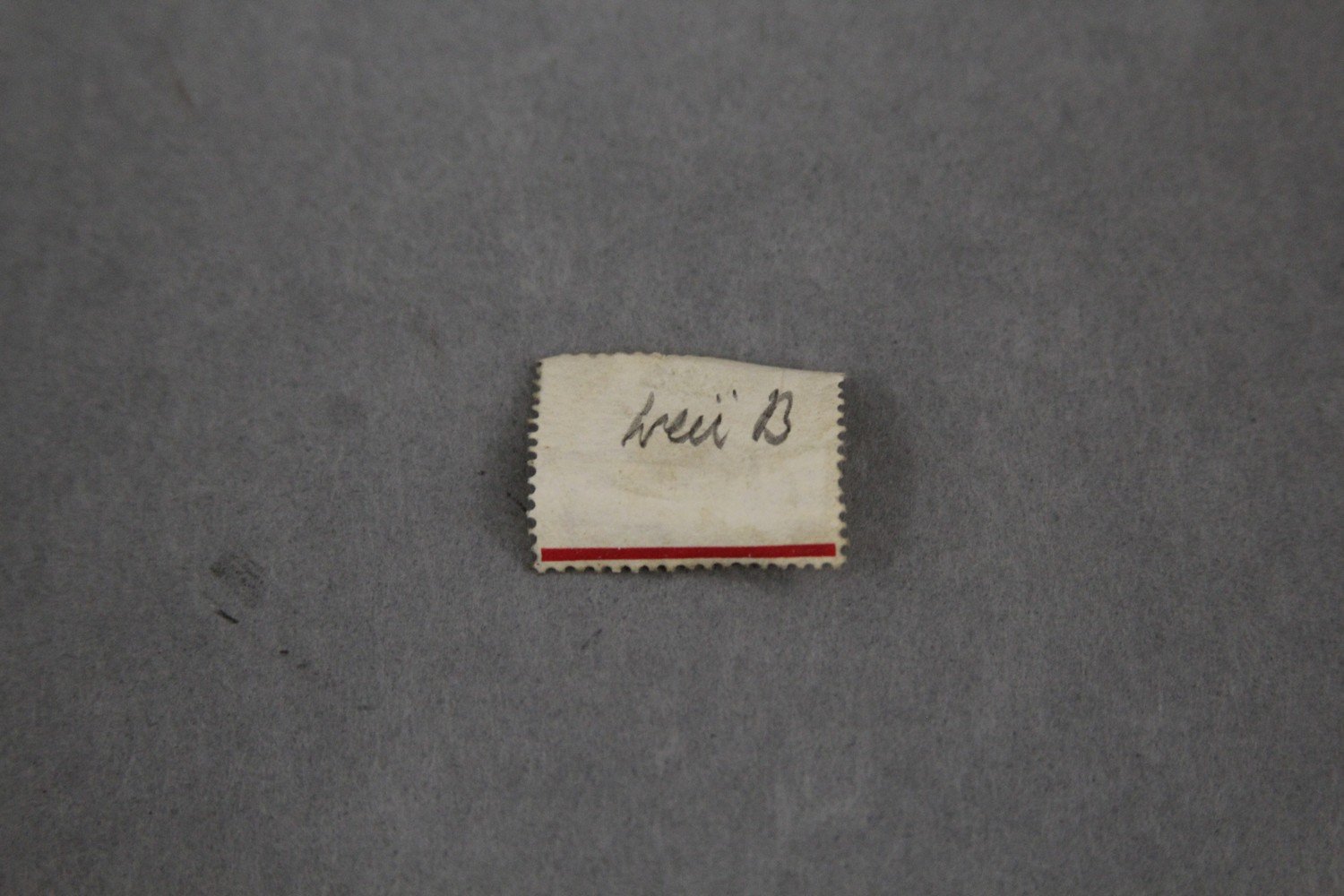 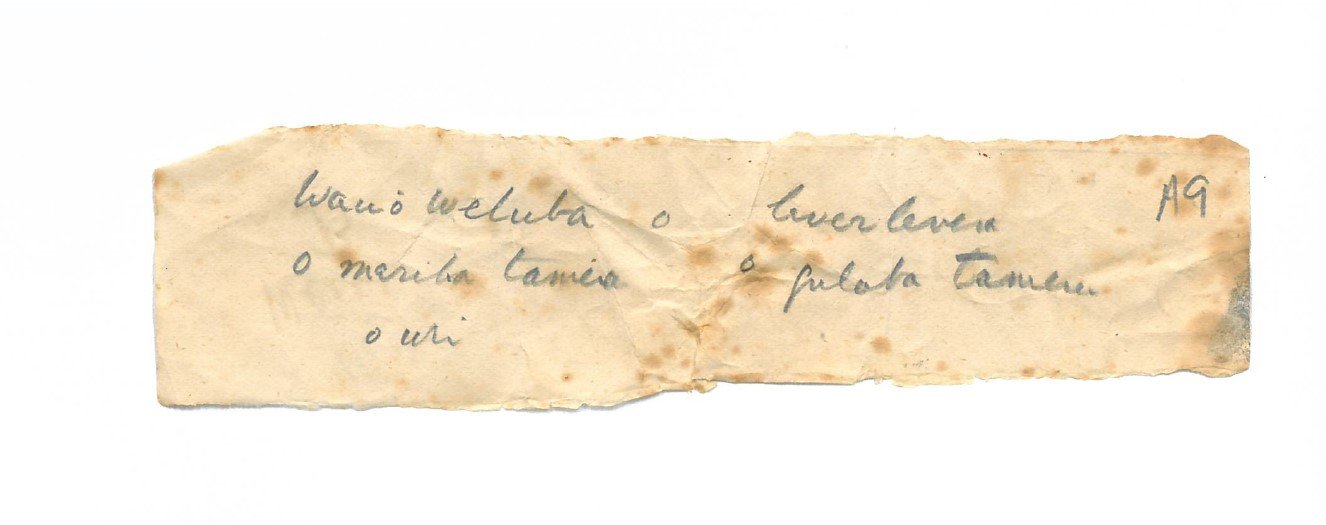   | Haddon, A.C. (ed.) 1907. Reports of the Cambridge Anthropological Expedition to Torres Strait: Volume III, The Languages of Torres Strait. Cambridge: Cambridge University Press. British Library shelfmark General Reference Collection YC.2011.b.631. | Haddon, A.C. (ed.) 1908. Reports of the Cambridge Anthropological Expedition to Torres Strait: Volume VI, Sociology, Magic and Religion of the Eastern Islanders. Cambridge: Cambridge University Press. British Library shelfmark General Reference Collection YC.2011.b.632. | Haddon, A.C. (ed.) 1912. Reports of the Cambridge Anthropological Expedition to Torres Strait: Volume IV, Arts and Crafts. Cambridge: Cambridge University Press. British Library shelfmark General Reference Collection YC.2011.b.634. | Wilkin, Anthony. 1898. Field Notebook [File 1027]. [manuscript] M2731-M2740: Torres Straits, 1888 - 1936, Cambridge University Library. See http://nla.gov.au/nla.obj-765702983 | Alice Moyle (AIAS, now AIATSIS) completed audition sheets for the Torres Strait cylinder collection in 1985. Copies of these are held at the British Library. | ||
| C80/1019 | Adud leluti | Ulai (singer, male); Gasu (singer, male) | Mer / Murray Island, Torres Strait Islands | 10 May 1898 – 24 August 1898 | This cylinder has been bandaged on one end. Transcription and translation on cylinder insert note: 'Adud leluti / A.' On reverse: 'Wau aka Maluet adud leluti / (yea) (indeed) (bad) (man) / Adud teregeti warbir nau / (bad) (teeth) (well) / kareki lut I a warbia / (haul [illeg]) / derebele segura atuglei / (dig) (song) (man stand round).' This recording corresponds to Charles S. Myers' Malu Song IV A. Adud leluti translates to 'bad man' (Haddon & Myers 1908:297). Ray translates adud as 'bad' or 'evil' (Ray 1907:132). Song IV A was performed during the exhibition of the sacred Malu-Bomai masks and also during the dance of the Beizam Boai after the initiation ceremonies.”(Myers 1912:243)."The fourth song was uttered in a very low voice, and was followed by yet more highly sacred words which were quickly whispered so that no one may hear them save those who had been initiated into the Malu mysteries" (Myers & Haddon 1908:150). Published and analysed in Myers (1912:249-251, 267). Words also published in Haddon & Myers (1908:297-299). Musical notation is also included in Anthony Wilkin's field notebook as Song H (1898:251). Three records were obtained, two sung by Ulai and Gasu (Myers 1912:239-240). | Reasonable quality recording but with some surface noise due to cracked and bandaged cylinder. The recording date range assumes that Myers is indeed the recordist and corresponds to the dates of Myer's stay on Mer / Murray Island. Myers (1912:240): 'With one or two exceptions the words of the Malu songs clearly belong to the language of the eastern islands.' From Alice Moyle's 1985 audition sheets: 'Poor quality at commencement. Gliding tones (i-ya:)…Ends "short high-pitched shouts" cf. A4 and A7' [C80/1013 and C80/1016] C80/1019 (better quality) and C80/1095 are duplicates. | Meriam Mir | Field recordings | Myers, C. S. | 1'48" | 1898 Cambridge Anthropological Expedition to Torres Straits | Brown wax cylinder. No case. | Alfred Cort Haddon 1898 Expedition (Torres Strait and British New Guinea) Cylinder Collection | British Library | 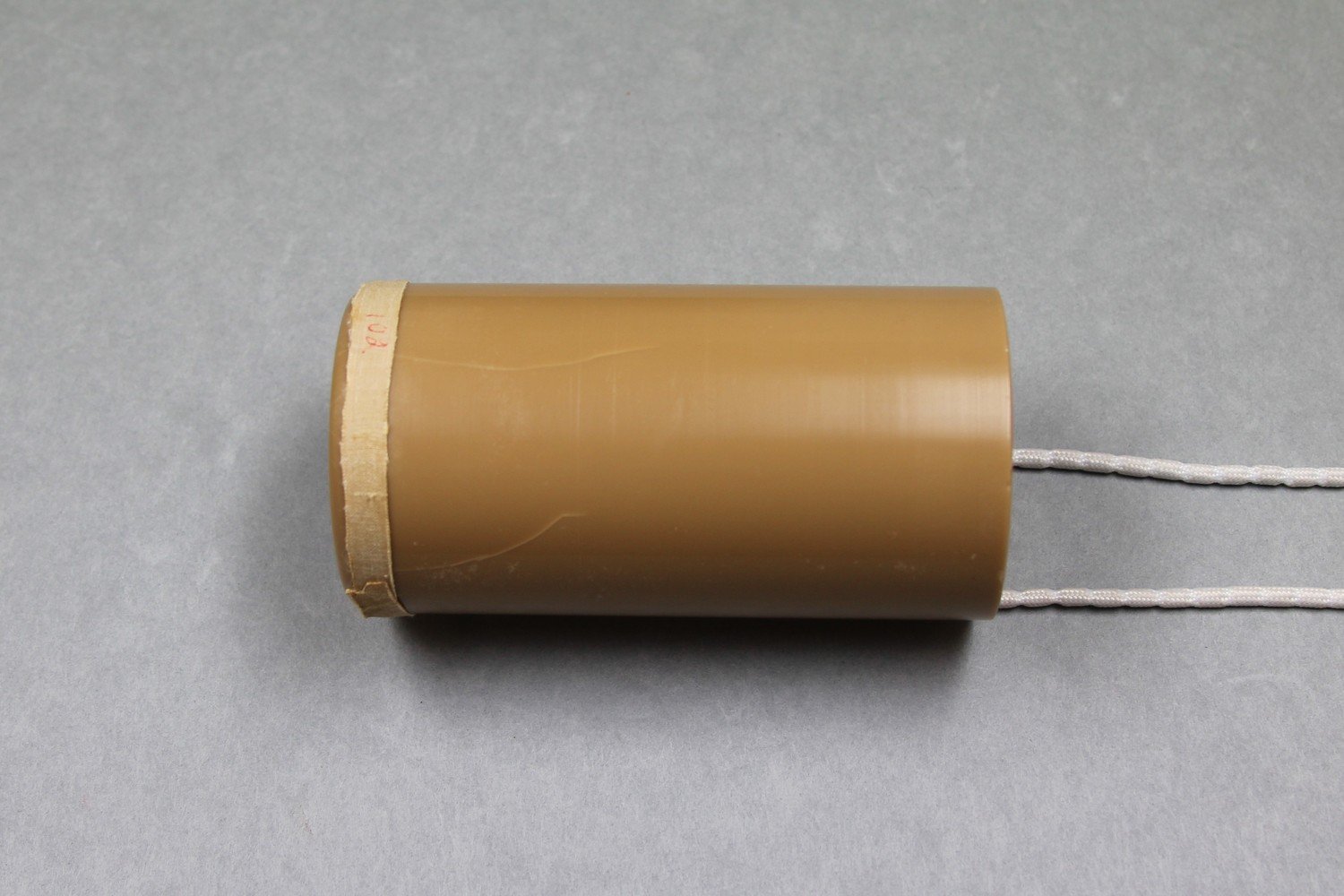 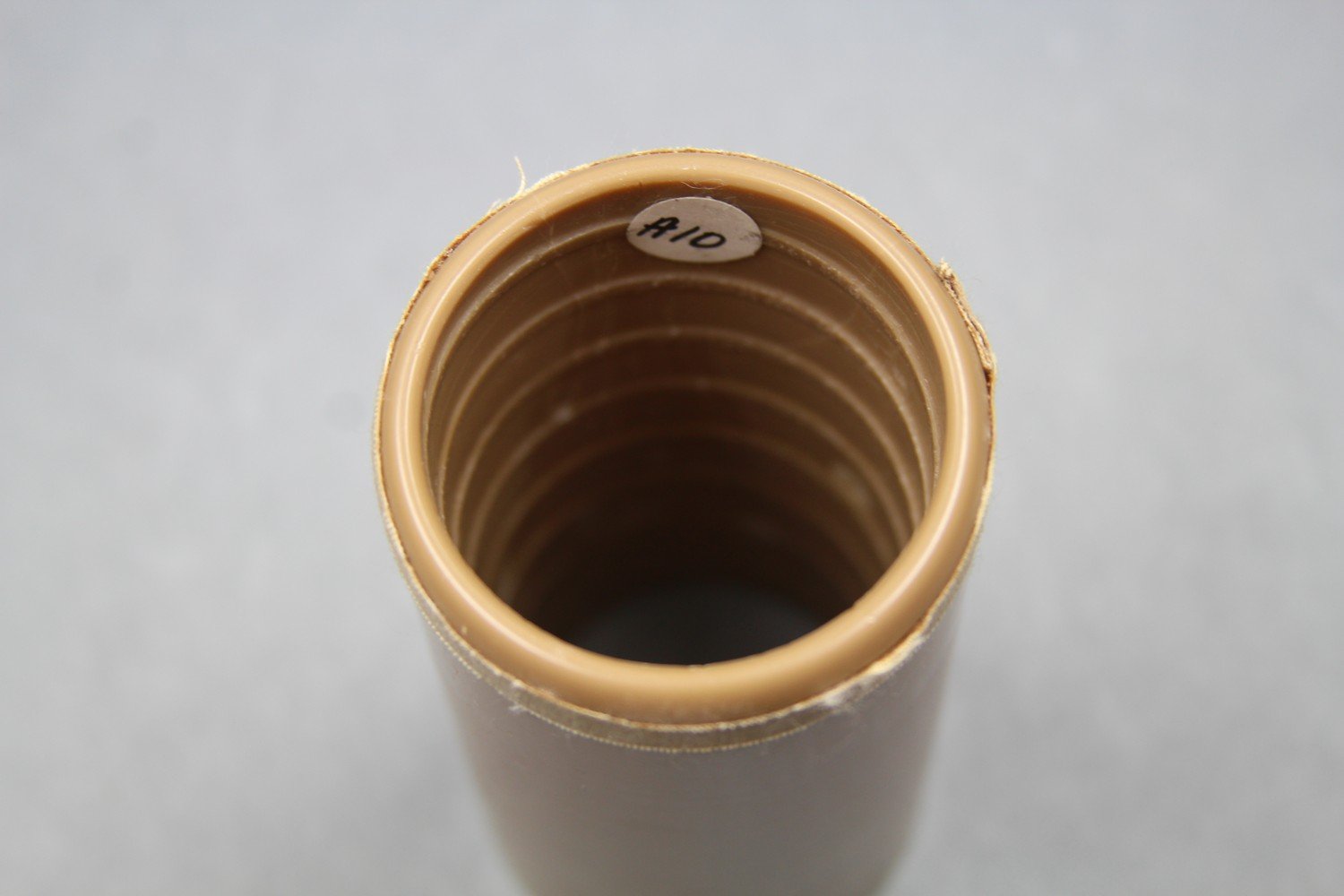     | Haddon, A.C. (ed.) 1907. Reports of the Cambridge Anthropological Expedition to Torres Strait: Volume III, The Languages of Torres Strait. Cambridge: Cambridge University Press. British Library shelfmark General Reference Collection YC.2011.b.631. | Haddon, A.C. (ed.) 1908. Reports of the Cambridge Anthropological Expedition to Torres Strait: Volume VI, Sociology, Magic and Religion of the Eastern Islanders. Cambridge: Cambridge University Press. British Library shelfmark General Reference Collection YC.2011.b.632. | Haddon, A.C. (ed.) 1912. Reports of the Cambridge Anthropological Expedition to Torres Strait: Volume IV, Arts and Crafts. Cambridge: Cambridge University Press. British Library shelfmark General Reference Collection YC.2011.b.634. | Wilkin, Anthony. 1898. Field Notebook [File 1027]. [manuscript] M2731-M2740: Torres Straits, 1888 - 1936, Cambridge University Library. See http://nla.gov.au/nla.obj-765702983 | Alice Moyle (AIAS, now AIATSIS) completed audition sheets for the Torres Strait cylinder collection in 1985. Copies of these are held at the British Library. | ||
| C80/1020 | Emarer A | Ulai (singer, male) | Mer / Murray Island, Torres Strait Islands | 10 May 1898 – 24 August 1898 | 1. Male vocal solo, accompanied by percussion. Inscription on cylinder insert note: 'Emarer / A'. One small slip of perforated paper: 'Emarer A 45' [number in red ink]. Malu funeral song. This recording corresponds to Charles S. Myers' Malu Song I. Published in Myers & Haddon (1908:150-151). Words, translation and analysis published in Myers (1912:244, 247, 266). Musical notation included in Anthony Wilkin's field notebook as Song G (1898:250). | Good quality recording. The recording date range assumes that Myers is indeed the recordist and corresponds to the dates of Myer's stay on Mer / Murray Island. Myers (1912:240): 'With one or two exceptions the words of the Malu songs clearly belong to the language of the eastern islands.' | Meriam Mir | Field recordings | Myers, C. S. | 1'41" | 1898 Cambridge Anthropological Expedition to Torres Straits | Brown wax cylinder. No case. | Alfred Cort Haddon 1898 Expedition (Torres Strait and British New Guinea) Cylinder Collection | British Library | 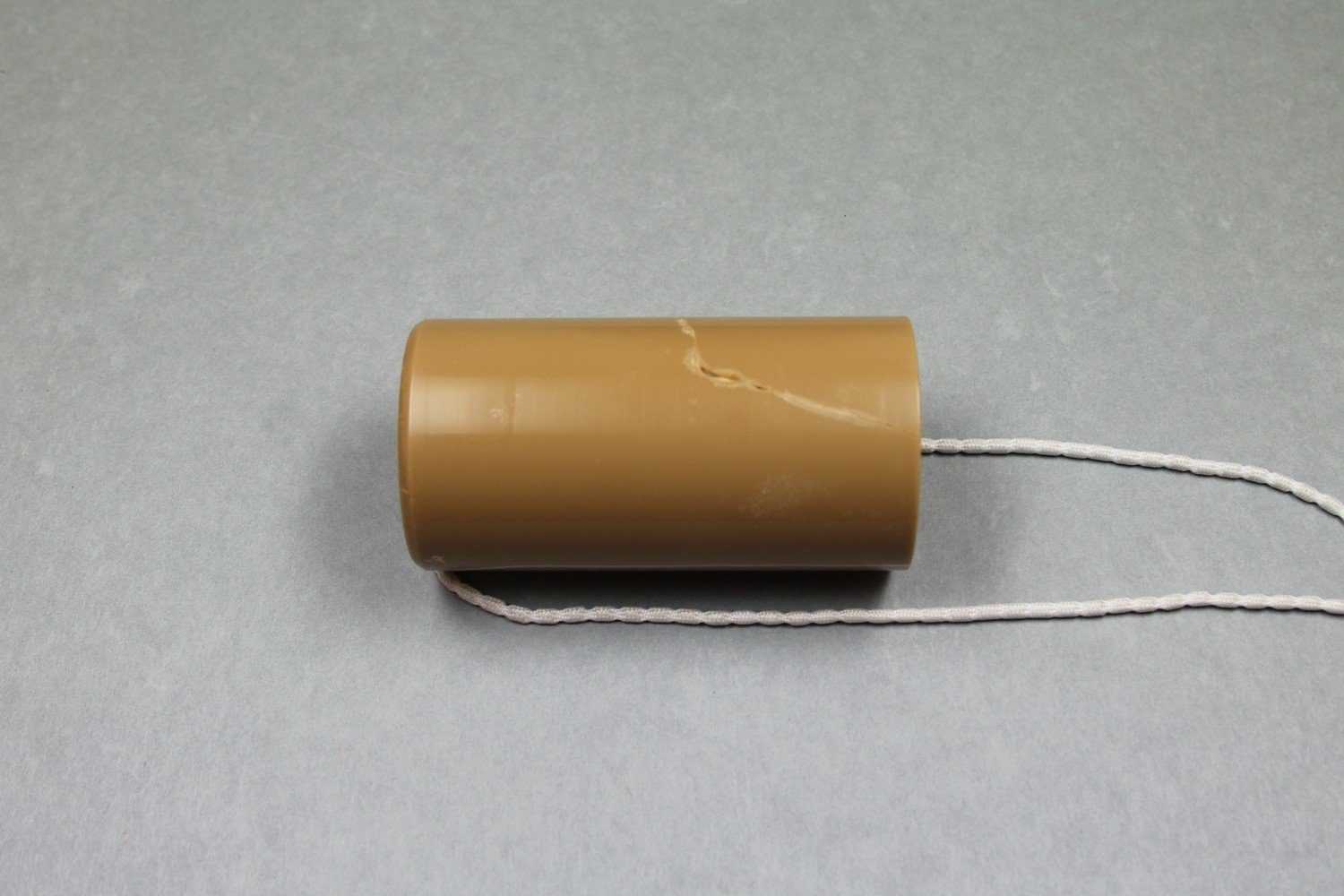  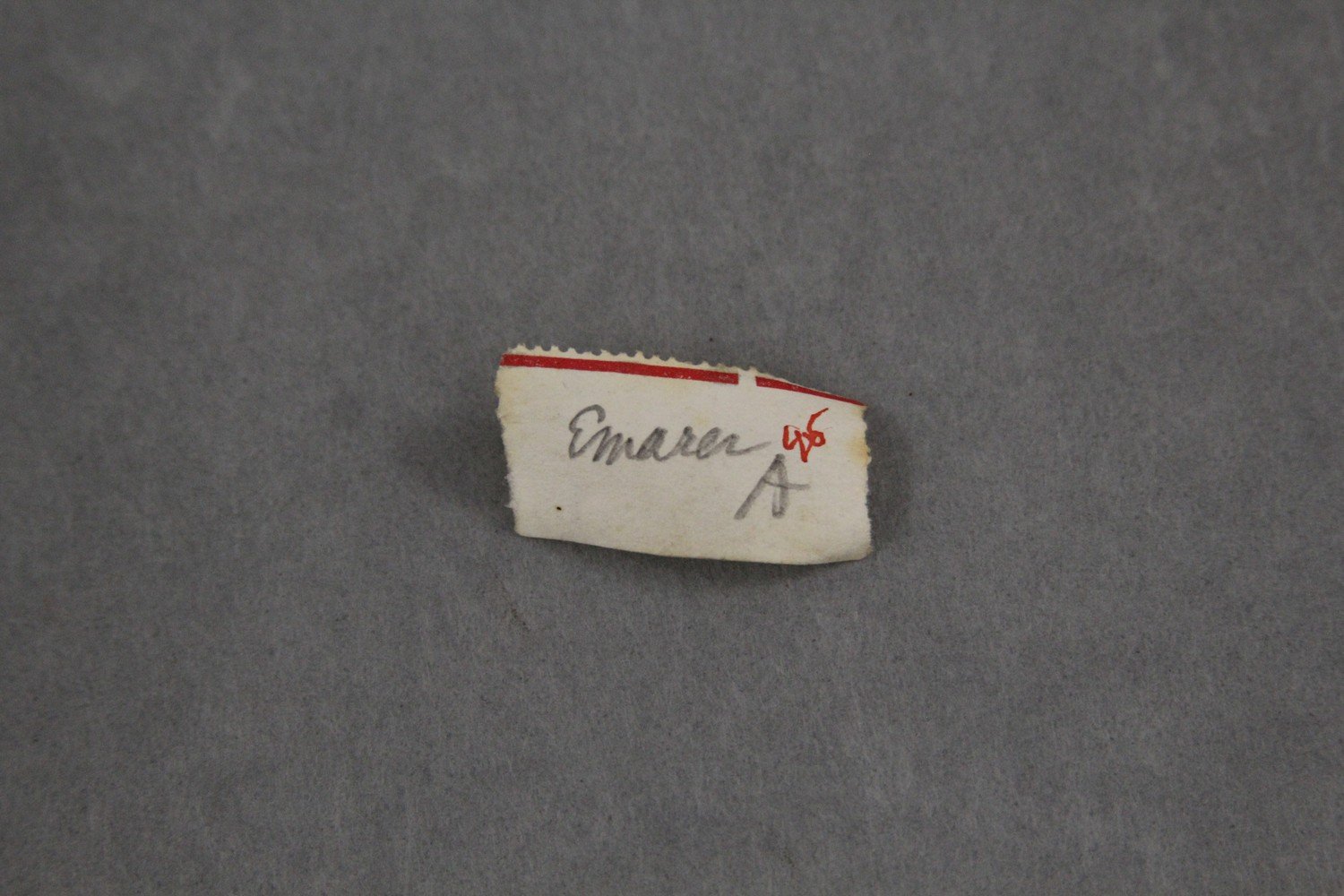    | Haddon, A.C. (ed.) 1908. Reports of the Cambridge Anthropological Expedition to Torres Strait: Volume VI, Sociology, Magic and Religion of the Eastern Islanders. Cambridge: Cambridge University Press. British Library shelfmark General Reference Collection YC.2011.b.632. | Haddon, A.C. (ed.) 1912. Reports of the Cambridge Anthropological Expedition to Torres Strait: Volume IV, Arts and Crafts. Cambridge: Cambridge University Press. British Library shelfmark General Reference Collection YC.2011.b.634. | Wilkin, Anthony. 1898. Field Notebook [File 1027]. [manuscript] M2731-M2740: Torres Straits, 1888 - 1936, Cambridge University Library. See http://nla.gov.au/nla.obj-765702983 | ||||
| C80/1021 | Weii A | Myers, C. S. (singer, male) | Mer / Murray Island, Torres Strait Islands | 10 May 1898 – 24 August 1898 | 1-2. Unaccompanied male (probably Myers himself) vocal solo. Inscription on cylinder insert notes: 'Weii / A'. One small slip of perforated paper: 'Weii A'. Malu funeral song. This recording corresponds to Charles S. Myers' Malu Song II. Both Myers (1912) and Ray (1907) translate 'wei' as 'alas!' with Ray noting that this was an exclamation expressing sorrow. It is alternatively spelled 'weu'. Weii mentioned as part of Malu ceremonies (Myers & Haddon 1908:146). Sung to Air II published in Myers & Haddon (1908:151). Words and analysis published in Myers (1912: 247-248, 266). Musical notation included in Anthony Wilkin's field notebook as 'Song K' (1898:250). Three records were available of Song II, two of which were sung by Ulai and Gasu (Myers 1912:239). C80/1018 is Ulai, C80/1014 is Gasu. | Reasonable quality recording. The recording date range assumes that Myers is indeed the recordist and corresponds to the dates of Myer's stay on Mer / Murray Island. Myers (1912:240): 'With one or two exceptions the words of the Malu songs clearly belong to the language of the eastern islands.' | Meriam Mir | Field recordings | Myers, C. S. | 1'37" | 1898 Cambridge Anthropological Expedition to Torres Straits | Brown wax cylinder. No case. | Alfred Cort Haddon 1898 Expedition (Torres Strait and British New Guinea) Cylinder Collection | British Library | 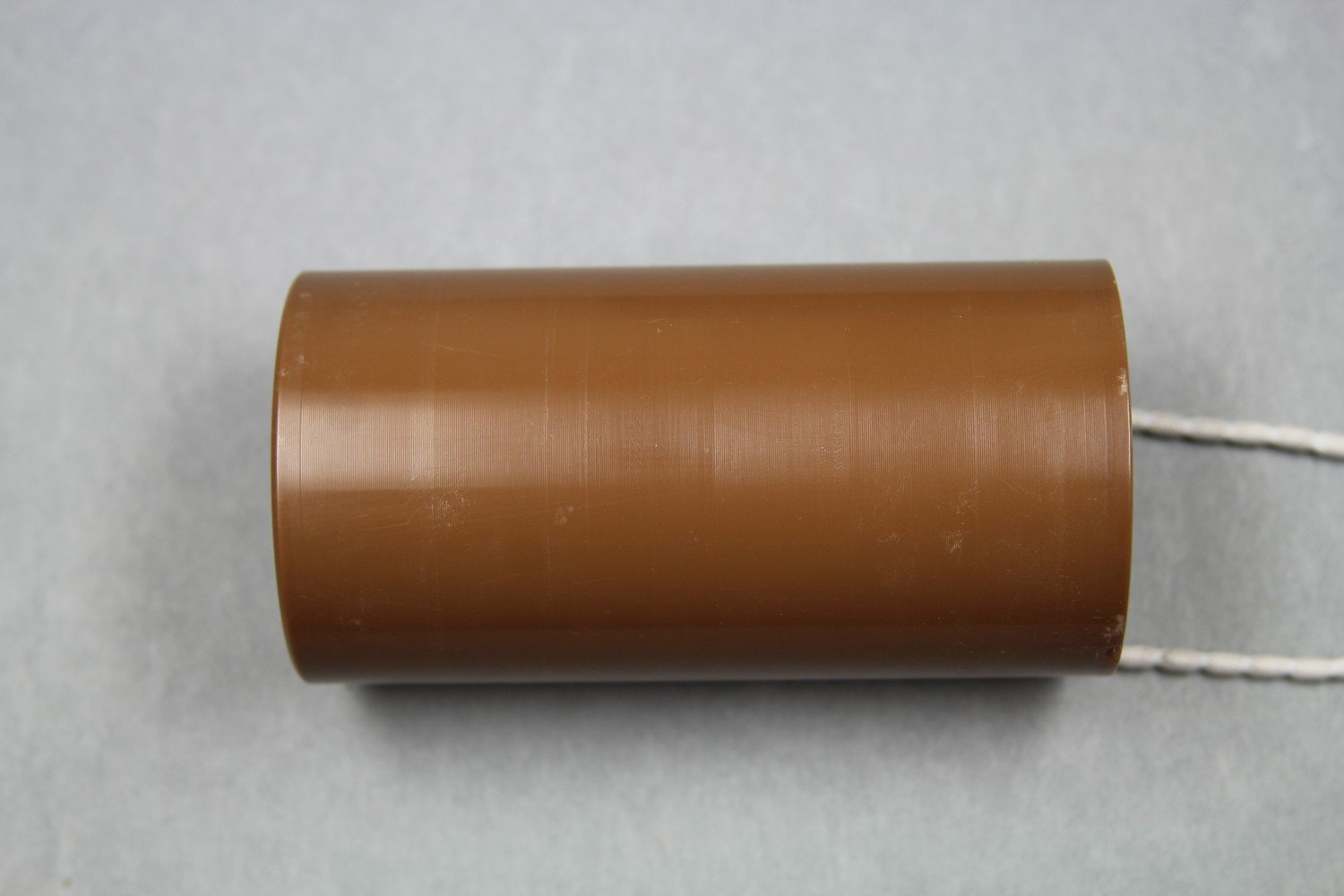  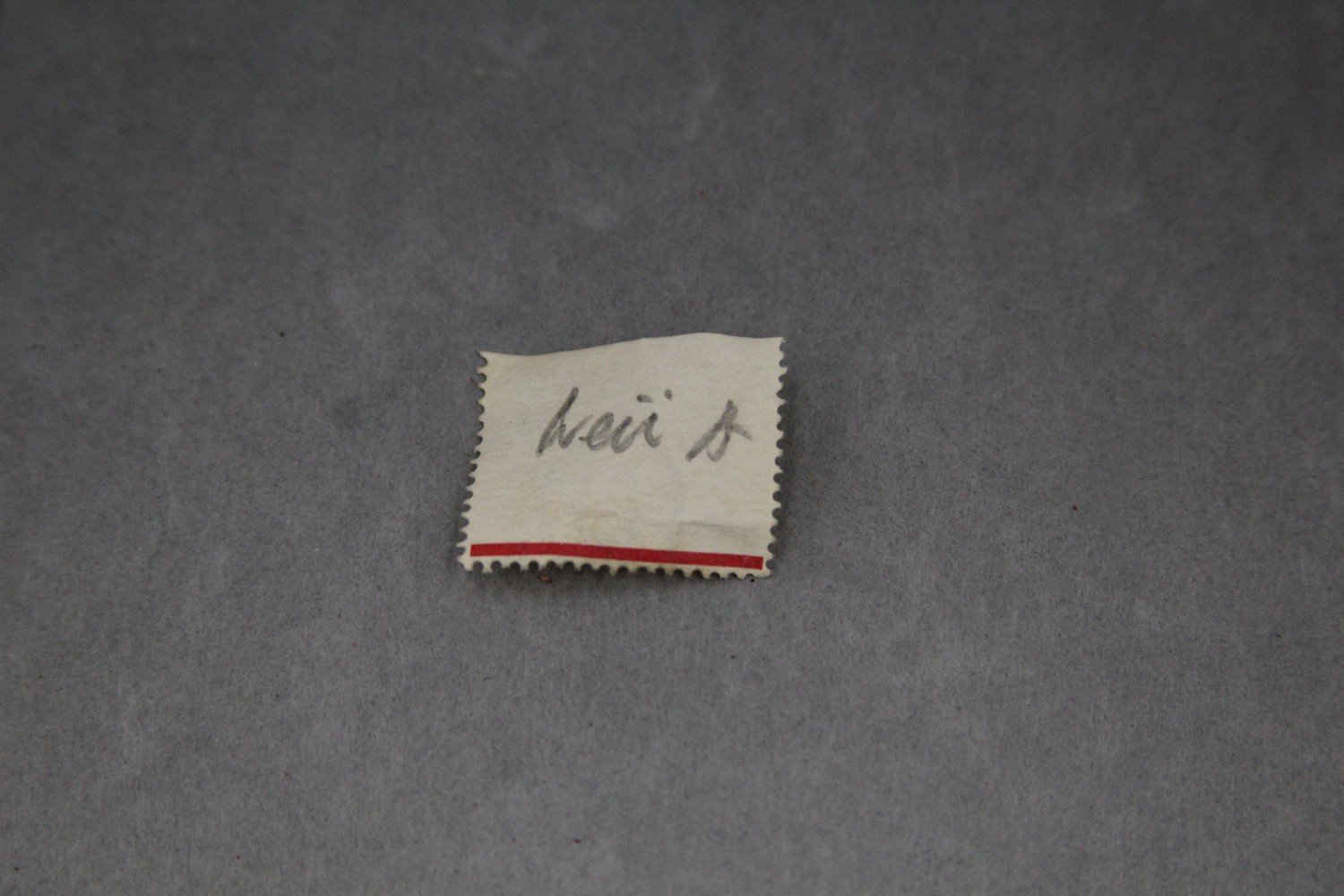 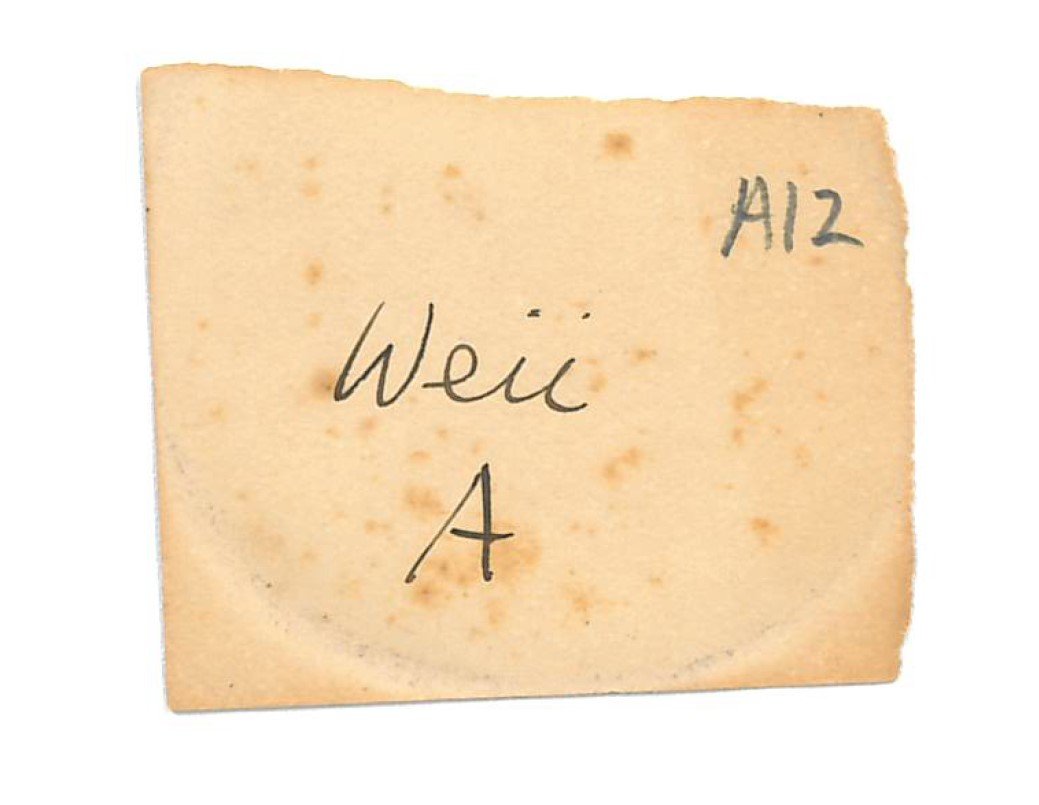   | Haddon, A.C. (ed.) 1907. Reports of the Cambridge Anthropological Expedition to Torres Strait: Volume III, The Languages of Torres Strait. Cambridge: Cambridge University Press. British Library shelfmark General Reference Collection YC.2011.b.631. | Haddon, A.C. (ed.) 1908. Reports of the Cambridge Anthropological Expedition to Torres Strait: Volume VI, Sociology, Magic and Religion of the Eastern Islanders. Cambridge: Cambridge University Press. British Library shelfmark General Reference Collection YC.2011.b.632. | Haddon, A.C. (ed.) 1912. Reports of the Cambridge Anthropological Expedition to Torres Strait: Volume IV, Arts and Crafts. Cambridge: Cambridge University Press. British Library shelfmark General Reference Collection YC.2011.b.634. | Wilkin, Anthony. 1898. Field Notebook [File 1027]. [manuscript] M2731-M2740: Torres Straits, 1888 - 1936, Cambridge University Library. See http://nla.gov.au/nla.obj-765702983 | |||
| C80/1022 | Meket Siriam | Wanu (singer, male) | Mer / Murray Island, Torres Strait Islands | 10 May 1898 – 24 August 1898 | 1-2. Unaccompanied male vocal solo. Inscription on insert notes: 'meketsiriam. / Uanu / (?confusion with Ca / Dz Da / IX'. This recording corresponds to Charles S. Myers' Keber Song IX. Myers was unable to obtain the words for this song (1912:240). The Meket Siriam [or Ziriam] was an initiation ceremony and “a small zogo like Malu” (Ray 1907:152). 'siriam' or 'ziriam' may refer to the ‘name of turtle zogo; au nei [generic or broader name] for a number of ceremonies held in various places, and probably connected with mourning’ (Ray 1907:160). Musical notation and analysis in Myers (1912:245, 252). Mentioned in Myers & Haddon (1908:150, 152). | Reasonable quality recording but with surface noise - stylus lifted and redropped between tracks. The recording date range assumes that Myers is indeed the recordist and corresponds to the dates of Myer's stay on Mer / Murray Island. Myers (1912:240): 'the keber songs which, with the exception of Song XI, are invariably in the western language.' | Kala Lagaw Ya | Field recordings | Myers, C. S. | 1'51" | 1898 Cambridge Anthropological Expedition to Torres Straits | Brown wax cylinder. No case. | Alfred Cort Haddon 1898 Expedition (Torres Strait and British New Guinea) Cylinder Collection | British Library | 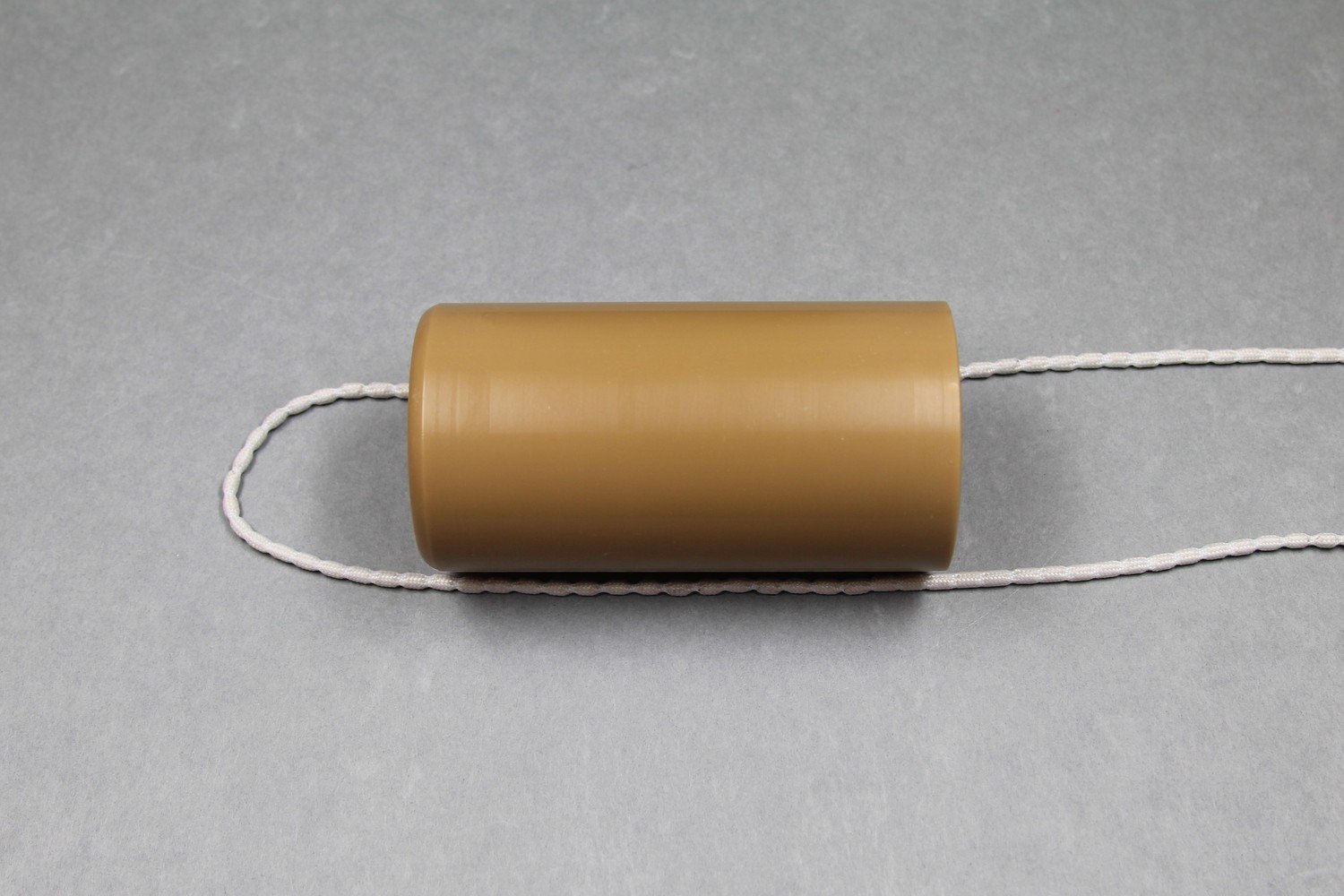  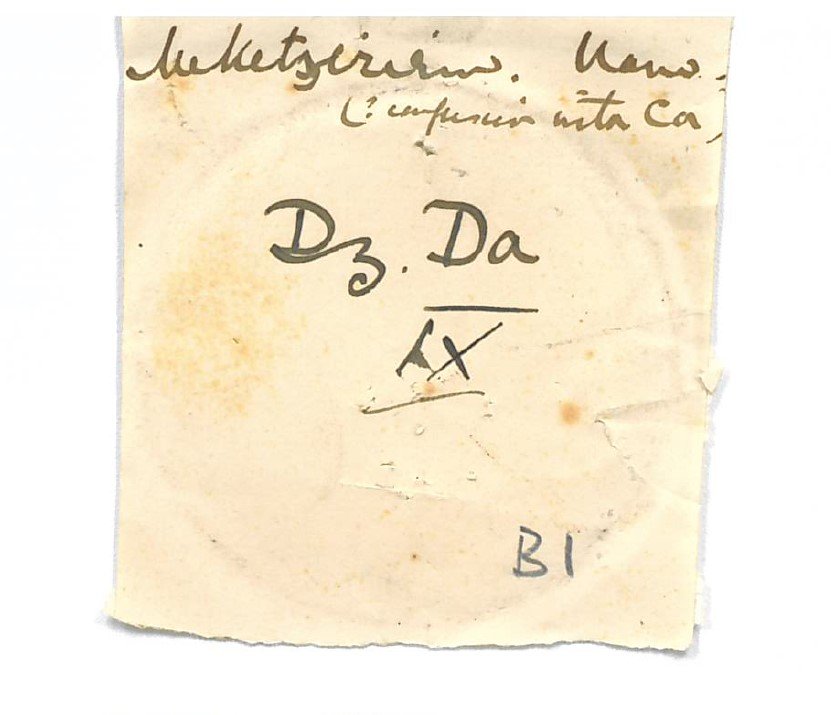    | Haddon, A.C. (ed.) 1907. Reports of the Cambridge Anthropological Expedition to Torres Strait: Volume III, The Languages of Torres Strait. Cambridge: Cambridge University Press. British Library shelfmark General Reference Collection YC.2011.b.631. | Haddon, A.C. (ed.) 1908. Reports of the Cambridge Anthropological Expedition to Torres Strait: Volume VI, Sociology, Magic and Religion of the Eastern Islanders. Cambridge: Cambridge University Press. British Library shelfmark General Reference Collection YC.2011.b.632. | Haddon, A.C. (ed.) 1912. Reports of the Cambridge Anthropological Expedition to Torres Strait: Volume IV, Arts and Crafts. Cambridge: Cambridge University Press. British Library shelfmark General Reference Collection YC.2011.b.634. | ||||
| C80/1023 | Secular Song | Ulai (singer, male) ?; Matud / Matuot (composer) | Mer / Murray Island, Torres Strait Islands | 10 May 1898 – 24 August 1898 | 1. Unaccompanied male vocal solo. Inscription on insert notes: 'XV / Mauot’s / kolap nabulva / song'. On reverse: ‘Boa – Introd. Recog at Yam / Kolap song by Matuot’. One small slip of perforated paper: 'V 82' [number in red ink]. Likely displaced from C80/1024. Kolap = ‘the seed or bean of sirip…; a stone teetotum or top’ (Ray 1907:149). ‘Recog at Yam’ suggests this recording may have been played elsewhere. This recording corresponds to Charles S. Myers' Secular Song XV. Song XV was 'given' to Myers as composed by Murray Islander Matud, then deceased. Later information showed that the song had been introduced by Matud from Erub / Darnley Island; Matud first sang this song at a Miriam marriage feast. In turn, it had been previously brought to Erub / Darnley Island from Masig / Yorke Island (Myers 1912:241). Kolap spinning had "recently been the fashionable excuse for an island gathering" (Myers 1898:87). Myers (1898:68): Men "will arrange themselves in a ring, + will squat there for hours on the sand, spinning their tops on plates" and may "sing some old song in the course of the spin". Analysis, words and translation in Myers (1912:254, 268). The kolap songs were recorded by Myers on Mer / Murray Island (Ray 1907:50; Haddon 1912:285-286). | Reasonable quality recording but with weak signal and surface noise. The recording date range assumes that Myers is indeed the recordist and corresponds to the dates of Myer's stay on Mer / Murray Island. This song is in the ‘Western language’ i.e. Kala Lagaw Ya (Haddon 1912:288). From Alice Moyle's 1985 audition sheets: [cf. Myers "Secular Song IV" A.M.]'. Moyle interpreted the insert note as mentioning 'ulai'. However, the singer is not clear. | Kala Lagaw Ya | Field recordings | Myers, C. S. | 1'48" | 1898 Cambridge Anthropological Expedition to Torres Straits | Brown wax cylinder. No case. | Alfred Cort Haddon 1898 Expedition (Torres Strait and British New Guinea) Cylinder Collection | British Library | 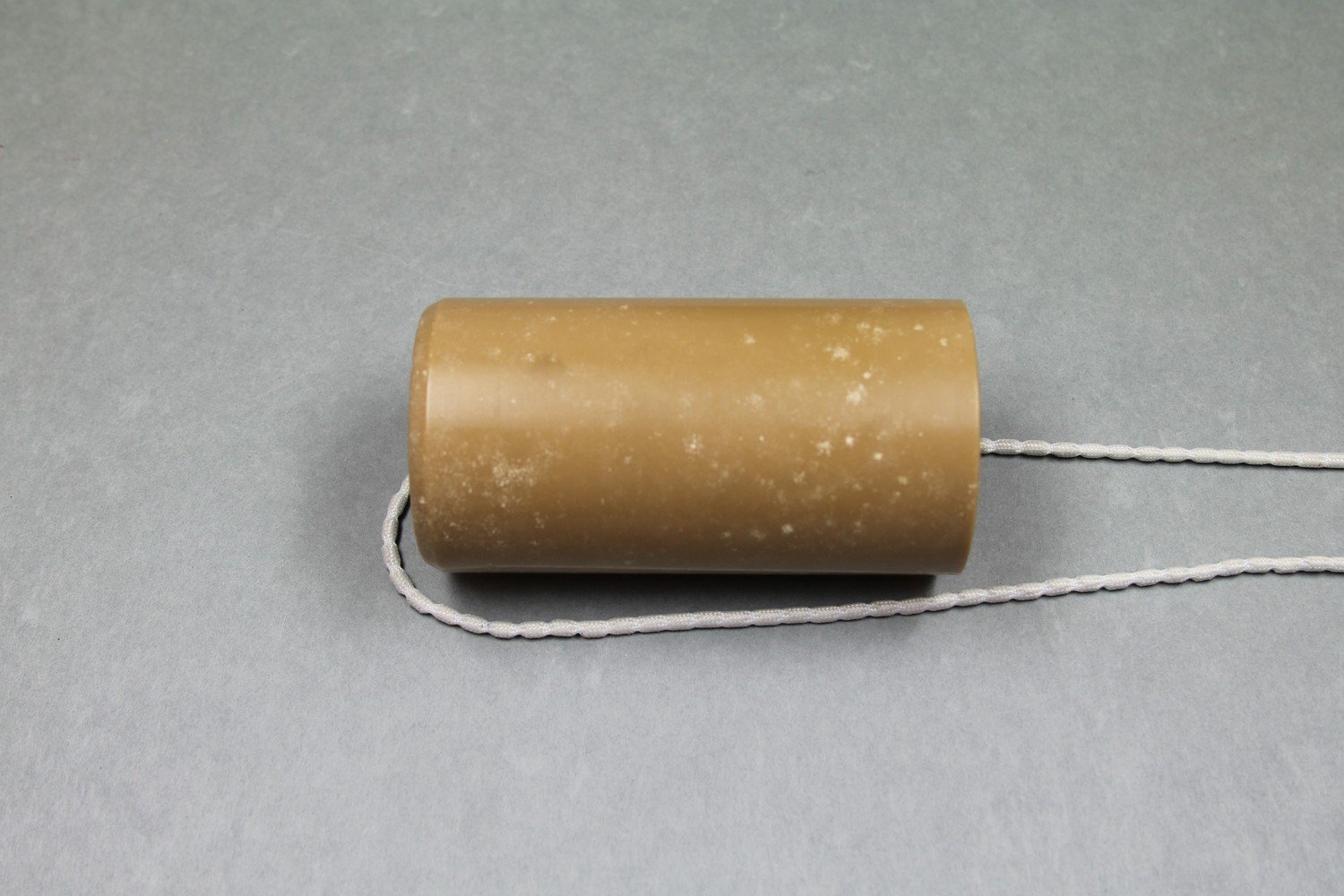 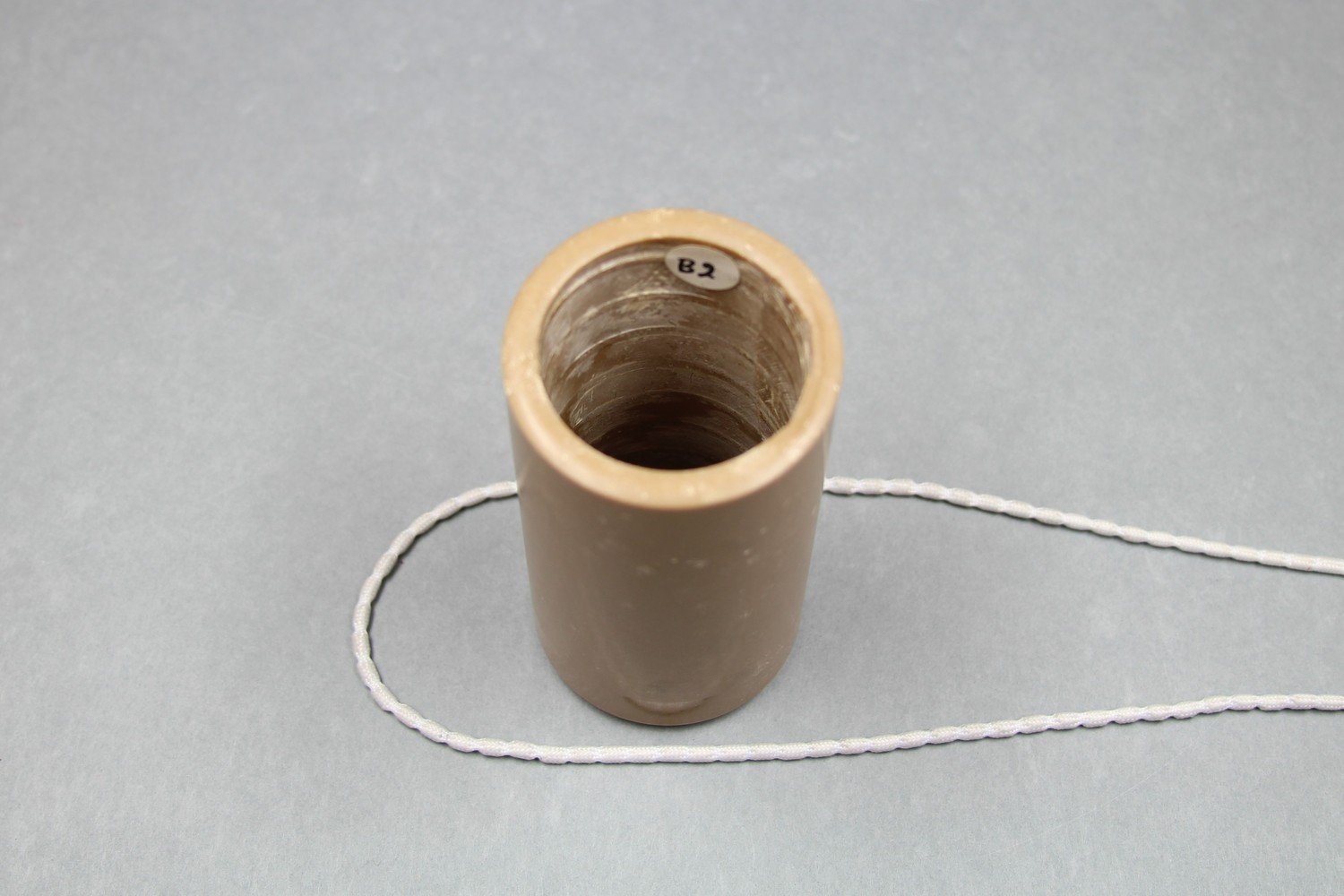 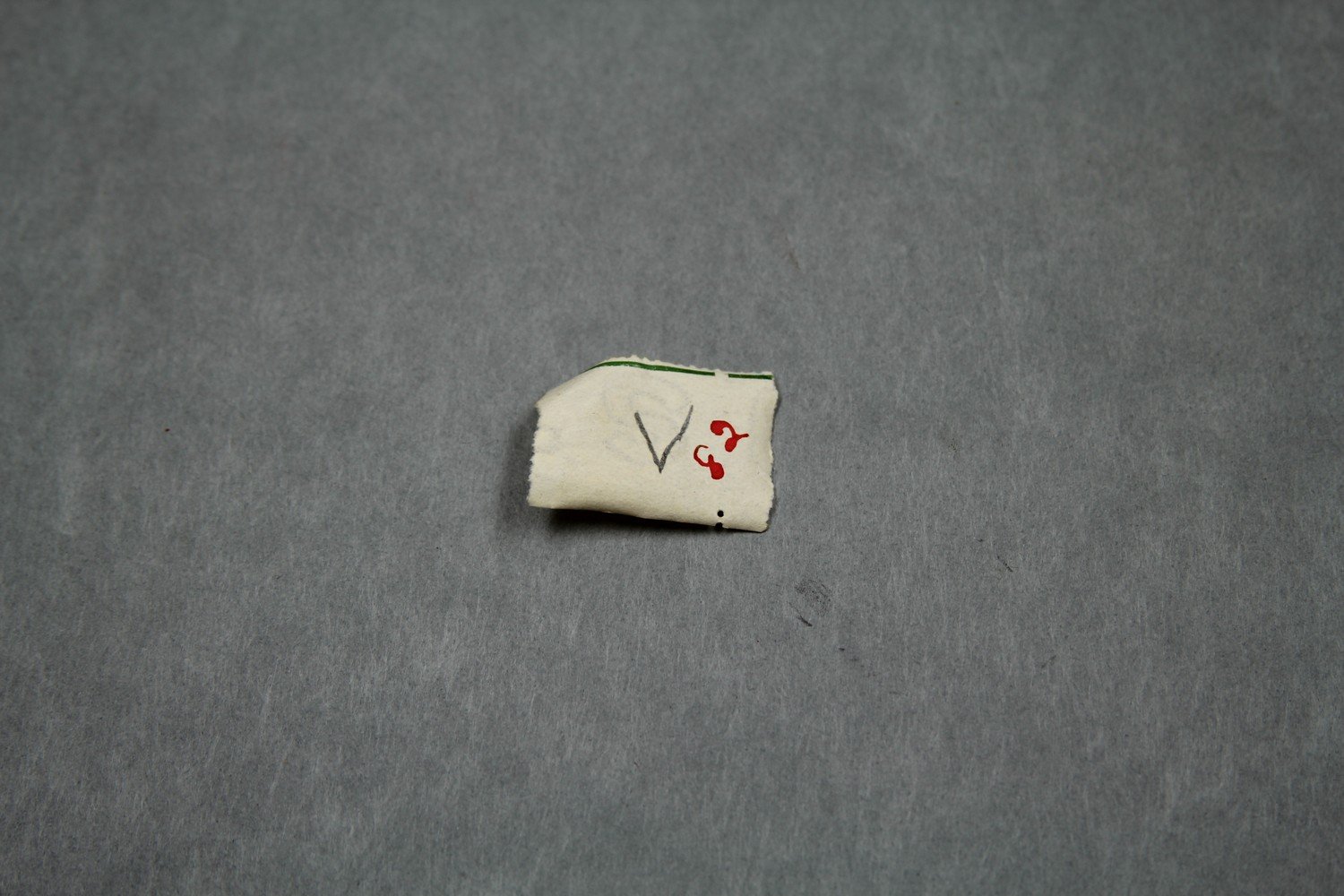    | Haddon, A.C. (ed.) 1907. Reports of the Cambridge Anthropological Expedition to Torres Strait: Volume III, The Languages of Torres Strait. Cambridge: Cambridge University Press. British Library shelfmark General Reference Collection YC.2011.b.631. | Haddon, A.C. (ed.) 1912. Reports of the Cambridge Anthropological Expedition to Torres Strait: Volume IV, Arts and Crafts. Cambridge: Cambridge University Press. British Library shelfmark General Reference Collection YC.2011.b.634. | Myers, C. S. 1898-1899. Journal on Torres Straits anthropological expedition. [manuscript] Haddon Papers. ADD 8073. Cambridge: Cambridge University Library. | Alice Moyle (AIAS, now AIATSIS) completed audition sheets for the Torres Strait cylinder collection in 1985. Copies of these are held at the British Library. | |||
| C80/1024 | Keber death song | Ulai (singer, male) | Mer / Murray Island, Torres Strait Islands | 10 May 1898 – 24 August 1898 | 1-2. Unaccompanied male vocal solo. Inscription on insert notes: 'Ulai. Keber death song / Keb Aa / V / uwa kodiata lagata[?]'. One small slip of perforated paper: 'XV 83' [number in red ink]. Likely displaced from C80/1023. This recording corresponds to Charles S. Myers' Keber Song V. Published with amended lyrics in Myers & Haddon (1908: 152). Words, translation and analysis published in Myers (1912:251, 268). | Reasonable quality recording but with surface noise - stylus lifted and redropped between tracks. The recording date range assumes that Myers is indeed the recordist and corresponds to the dates of Myer's stay on Mer / Murray Island. Myers (1912:240): 'the keber songs which, with the exception of Song XI, are invariably in the western language.' | Kala Lagaw Ya | Field recordings | Myers, C. S. | 1'24" | 1898 Cambridge Anthropological Expedition to Torres Straits | Brown wax cylinder. No case. | Alfred Cort Haddon 1898 Expedition (Torres Strait and British New Guinea) Cylinder Collection | British Library | 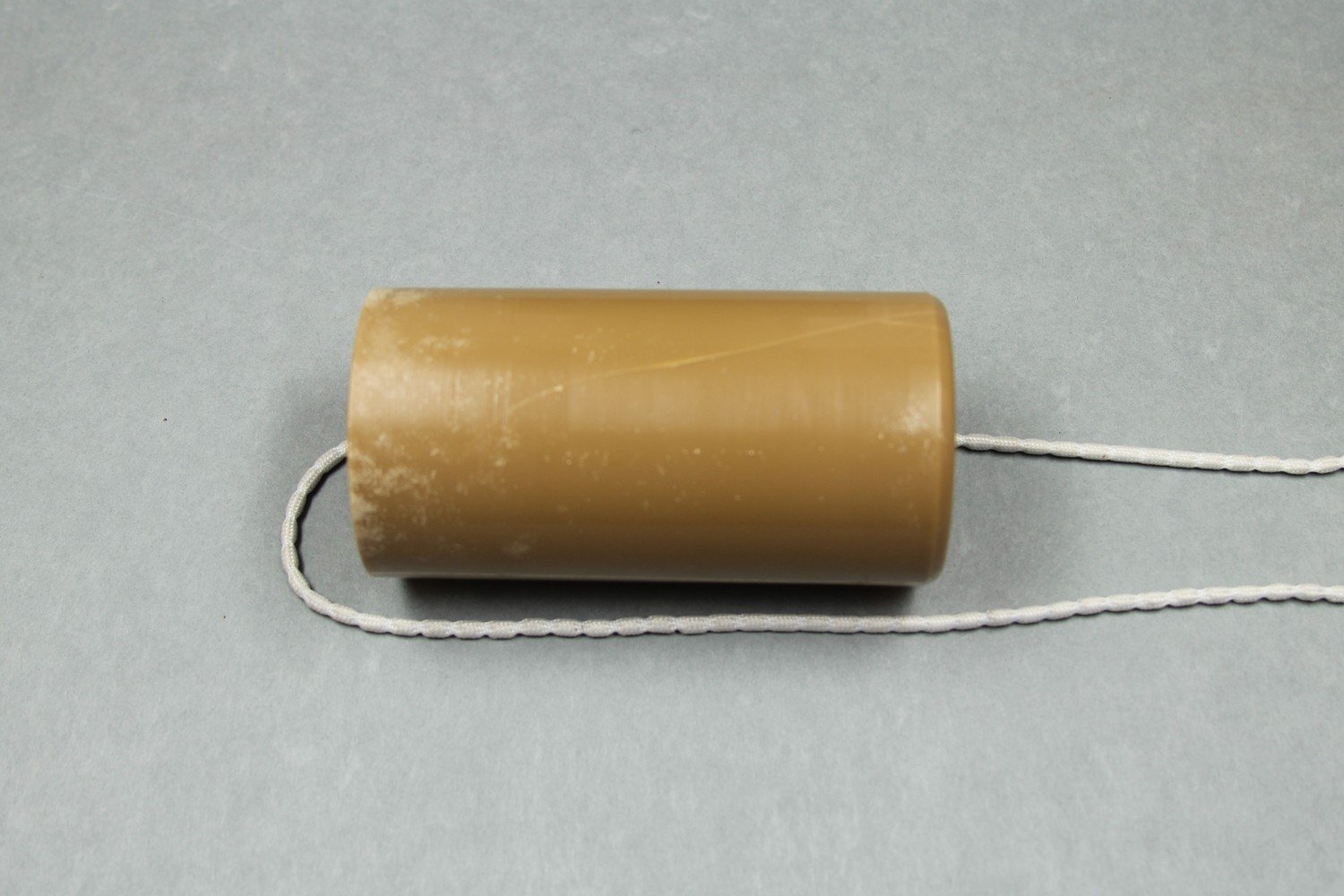 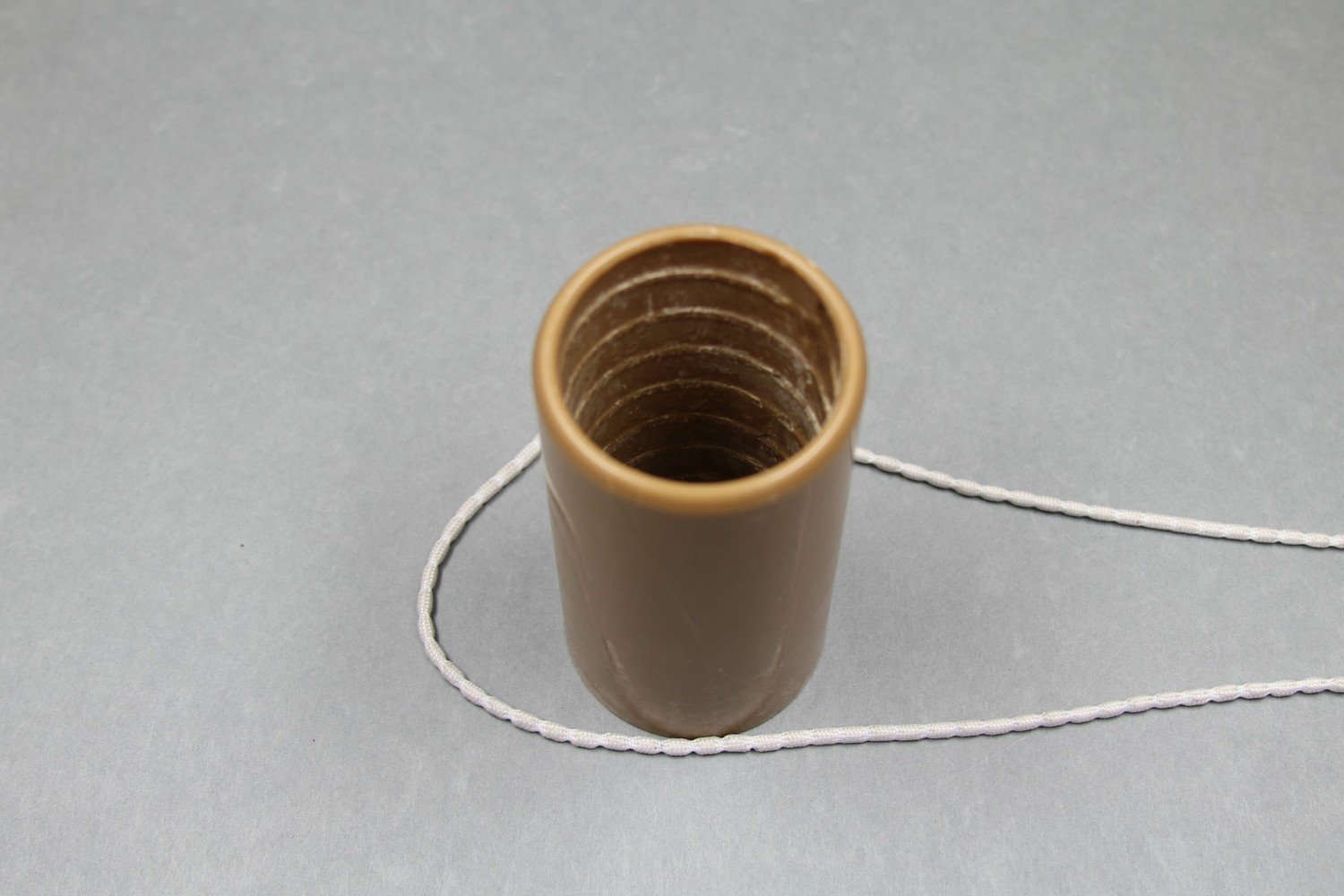 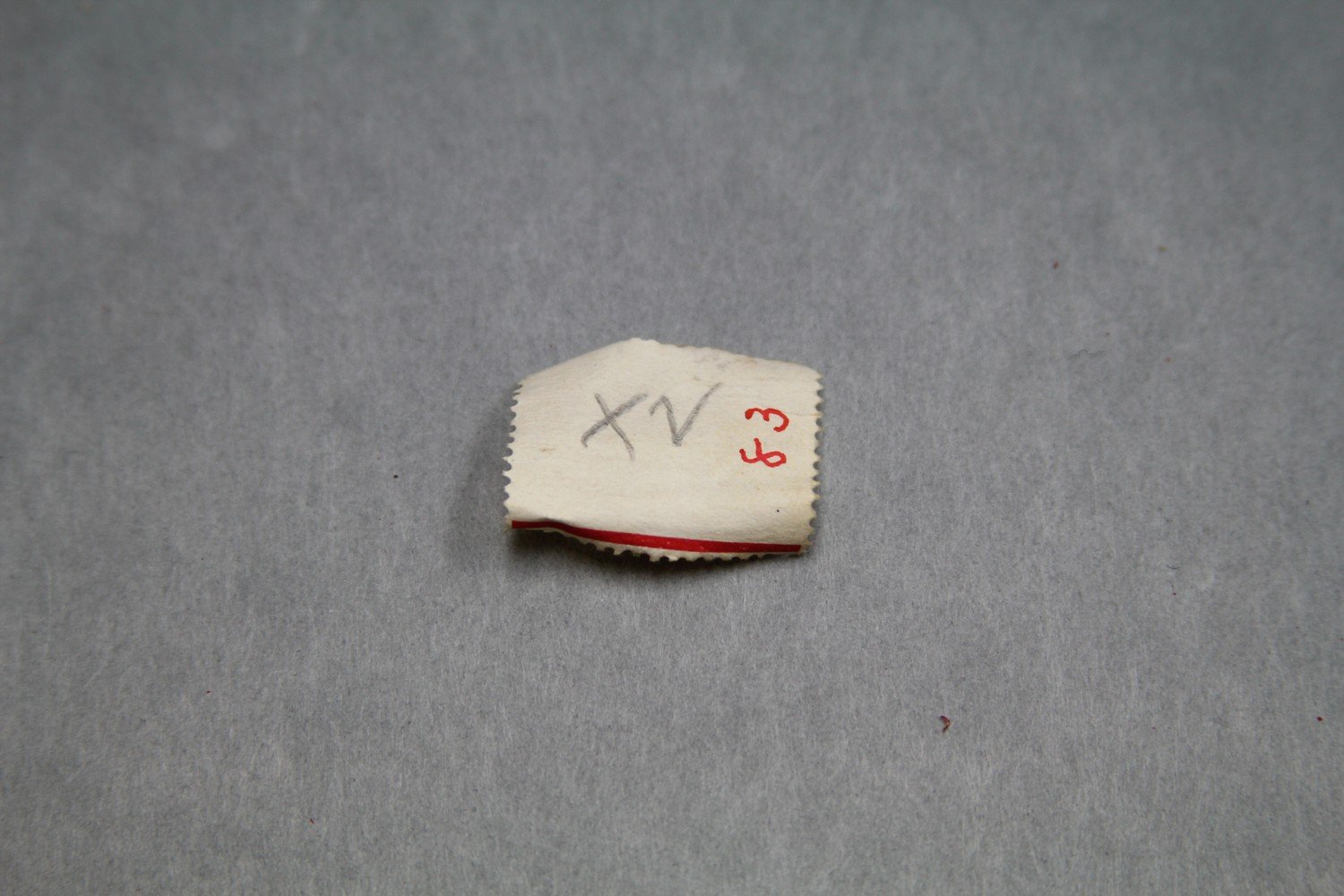 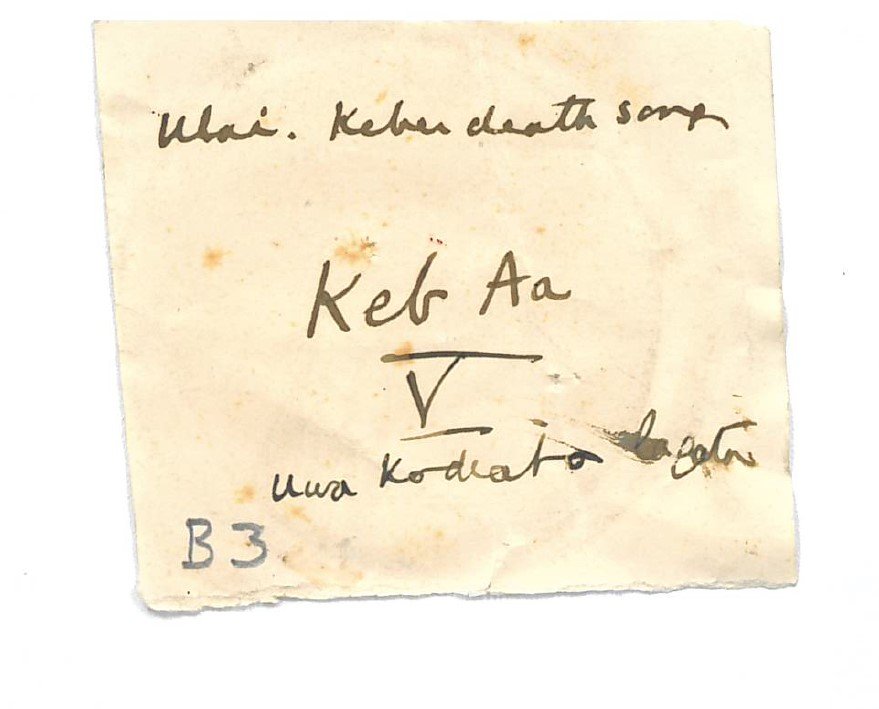   | Haddon, A.C. (ed.) 1908. Reports of the Cambridge Anthropological Expedition to Torres Strait: Volume VI, Sociology, Magic and Religion of the Eastern Islanders. Cambridge: Cambridge University Press. British Library shelfmark General Reference Collection YC.2011.b.632. | Haddon, A.C. (ed.) 1912. Reports of the Cambridge Anthropological Expedition to Torres Strait: Volume IV, Arts and Crafts. Cambridge: Cambridge University Press. British Library shelfmark General Reference Collection YC.2011.b.634. | |||||
| C80/1025 | Meket siriam | Wanu (singer, male) | Mer / Murray Island, Torres Strait Islands | 10 May 1898 – 24 August 1898 | 1. Unaccompanied male vocal solo. Inscription on insert note: 'Wanu / meket - siriam / Dz Ca / VIII - / meluba Dudiei'. This recording corresponds to Charles S. Myers' Keber Song VIII. Myers was unable to obtain the words for this song (1912:240). The Meket Siriam [or Ziriam] was an initiation ceremony and “a small zogo like Malu” (Ray 1907:152). 'siriam' or 'ziriam' may refer to the ‘name of turtle zogo; au nei [generic or broader name] for a number of ceremonies held in various places, and probably connected with mourning’ (Ray 1907:160). Musical notation and analysis in Myers (1912: 252, 268). Published in Myers & Haddon (1908:150, 152). Sung by Wanu (Myers 1912:240) | Reasonable quality recording but with surface noise. The recording date range assumes that Myers is indeed the recordist and corresponds to the dates of Myer's stay on Mer / Murray Island. Myers (1912:240): 'the keber songs which, with the exception of Song XI, are invariably in the western language.' | Kala Lagaw Ya | Field recordings | Myers, C. S. | 1'50" | 1898 Cambridge Anthropological Expedition to Torres Straits | Brown wax cylinder. No case. | Alfred Cort Haddon 1898 Expedition (Torres Strait and British New Guinea) Cylinder Collection | British Library | 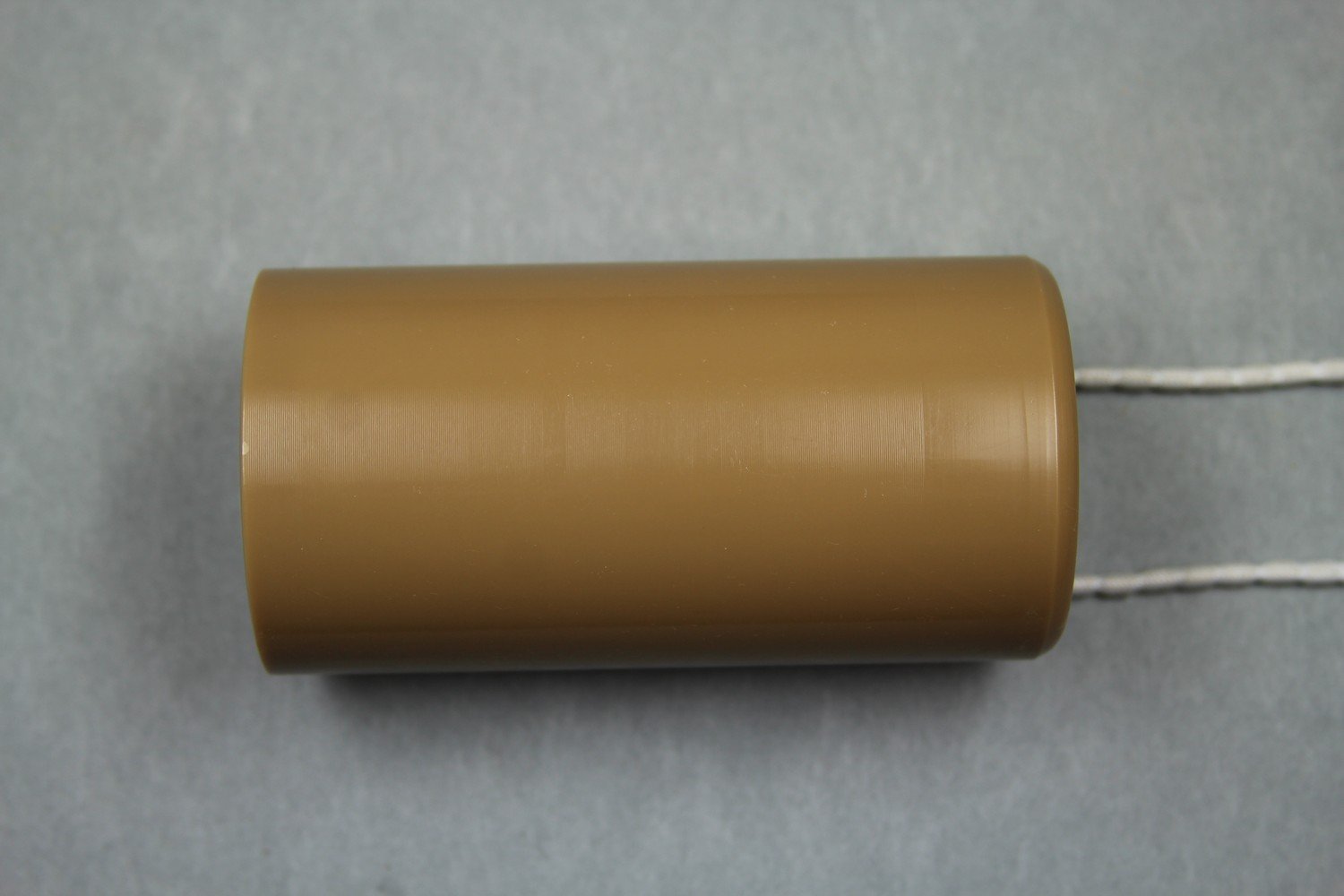 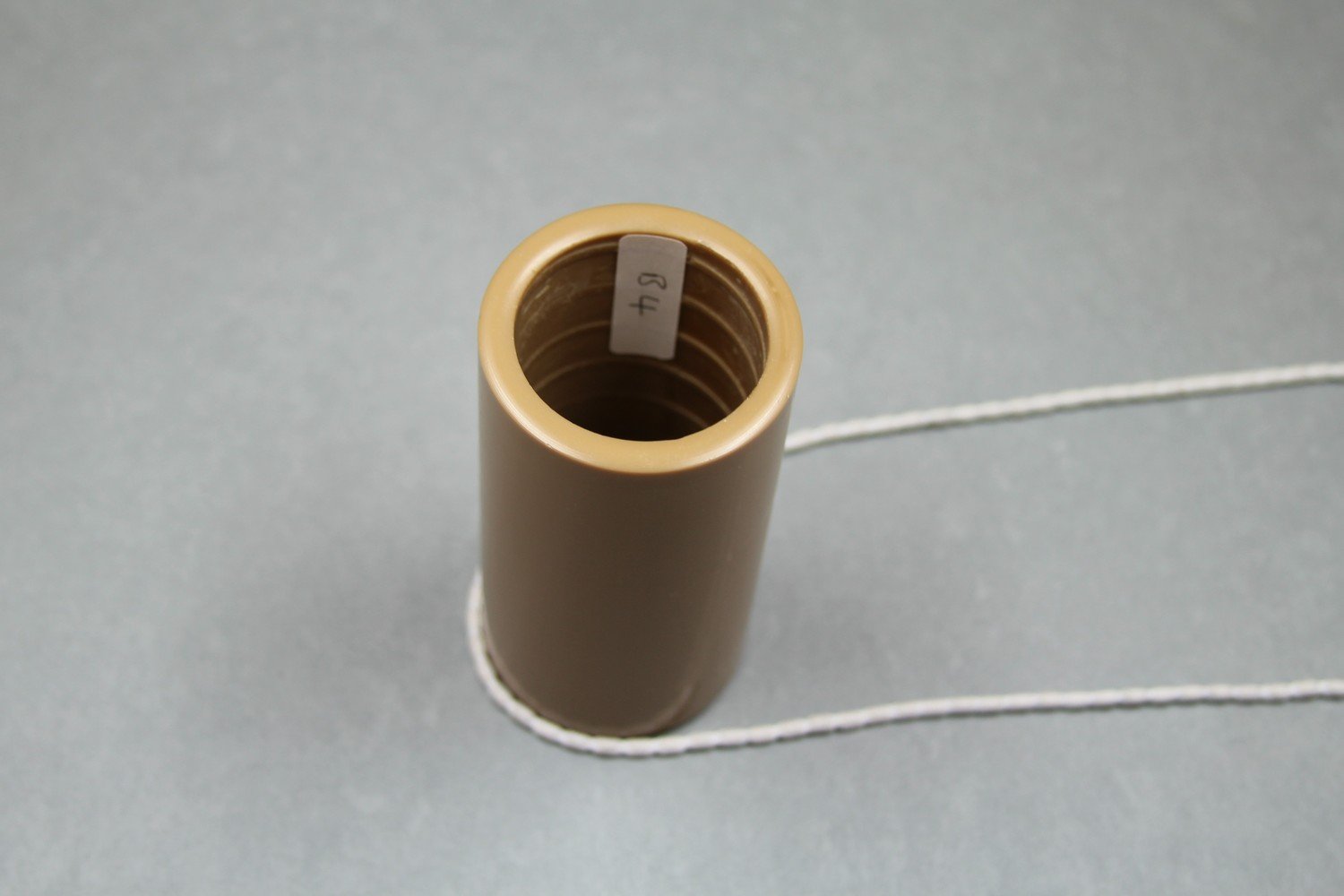     | Haddon, A.C. (ed.) 1907. Reports of the Cambridge Anthropological Expedition to Torres Strait: Volume III, The Languages of Torres Strait. Cambridge: Cambridge University Press. British Library shelfmark General Reference Collection YC.2011.b.631. | Haddon, A.C. (ed.) 1908. Reports of the Cambridge Anthropological Expedition to Torres Strait: Volume VI, Sociology, Magic and Religion of the Eastern Islanders. Cambridge: Cambridge University Press. British Library shelfmark General Reference Collection YC.2011.b.632. | Haddon, A.C. (ed.) 1912. Reports of the Cambridge Anthropological Expedition to Torres Strait: Volume IV, Arts and Crafts. Cambridge: Cambridge University Press. British Library shelfmark General Reference Collection YC.2011.b.634. | ||||
| C80/1026 | Dimer | Joe Brown (singer, male); Ulai (singer, male) | Mer / Murray Island, Torres Strait Islands | 10 May 1898 – 24 August 1898 | 1. Unaccompanied male vocal solo. Funeral song. Inscription on insert notes: 'Dimer / Dz Ga’ and ‘Joe Brown + Ulai / Dimer'. One small slip of perforated paper: 'Dimer 84' [number in red ink]. This recording corresponds to Charles S. Myers' Keber Song XI. Song XI belonged to the people of Sebeg (Myers & Haddon (1908:150). This recording was previously described as Song IX in SAMI but as Song XI by Moyle (1985). According to the insert notes, this recording is performed by Joe Brown and Ulai. Myers specifically stated that Song IX was Wanu (1912:240). Ray stated that 'dim(i)ri' or 'dimrida' meant 'to tie together, fasten together, sew' (1907:139). Myers witnessed Joe Brown and Ulai performing on 24 May 1898: they "sit with the dari on their heads, sit vis à vis in the middle of a ring of drummers and singers. Their legs are crossed with feet against the opposite thighs. Ulai and Joe sing at the top of their voices a tune brought from Tud (Warrior I.) about the wind (guba, Tud word)" (Myers 1898:56). It is not clear which exact song was performed. Musical notation, translation and analysis in Myers (1912:245, 252-253, 268). Mentioned in Myers & Haddon (1908:150, 153). | Good quality recording. The recording date range assumes that Myers is indeed the recordist and corresponds to the dates of Myer's stay on Mer / Murray Island. Myers (1912:240): 'the keber songs which, with the exception of Song XI, are invariably in the western language.' In the same volume, Haddon suggested that "the words are really in the Western language though some may have subsequently become modified so as to approach in sound to Meriam words" (1912:286). | Meriam Mir | Field recordings | Myers, C. S. | 2'07" | 1898 Cambridge Anthropological Expedition to Torres Straits | Brown wax cylinder. No case. | Alfred Cort Haddon 1898 Expedition (Torres Strait and British New Guinea) Cylinder Collection | British Library | 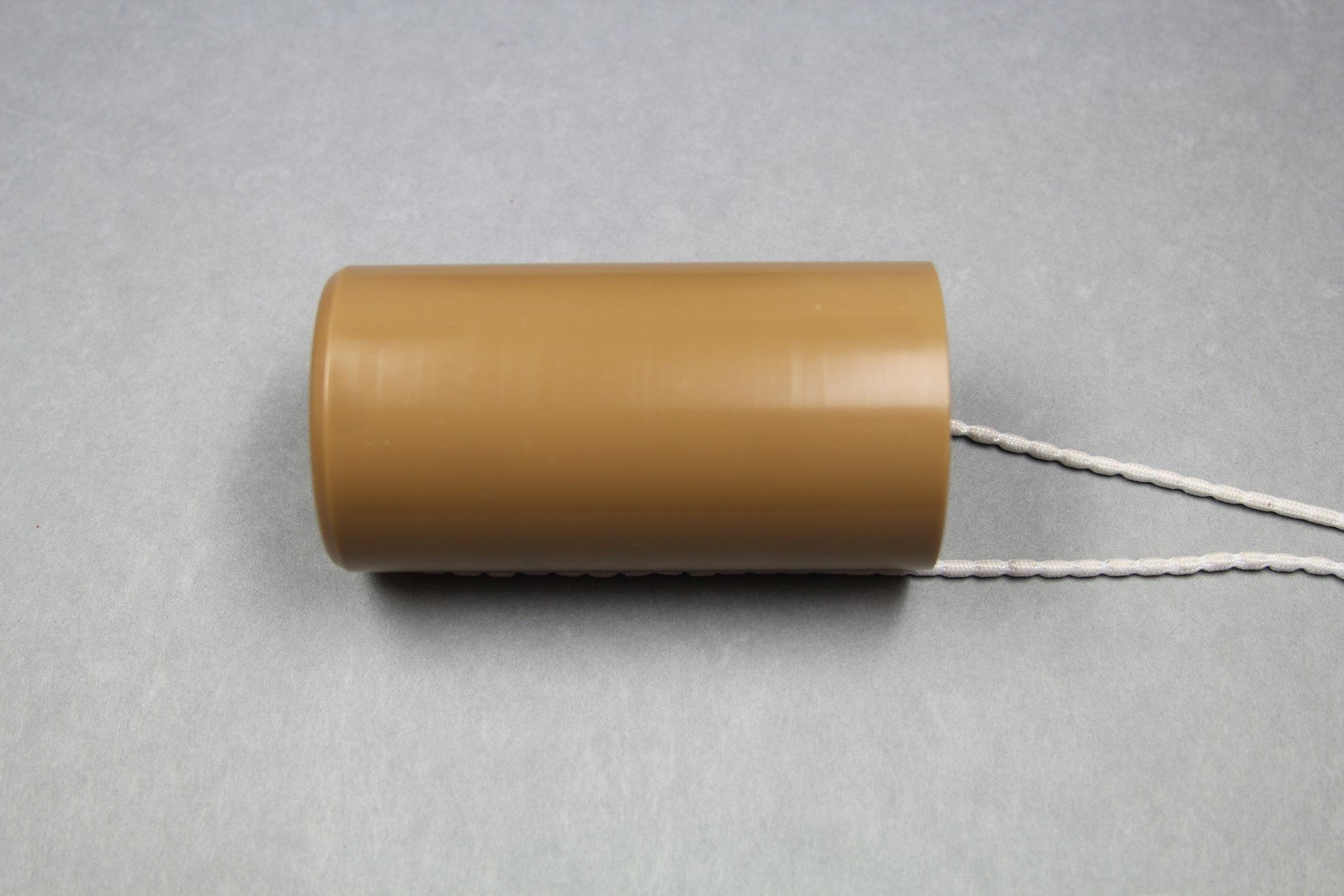 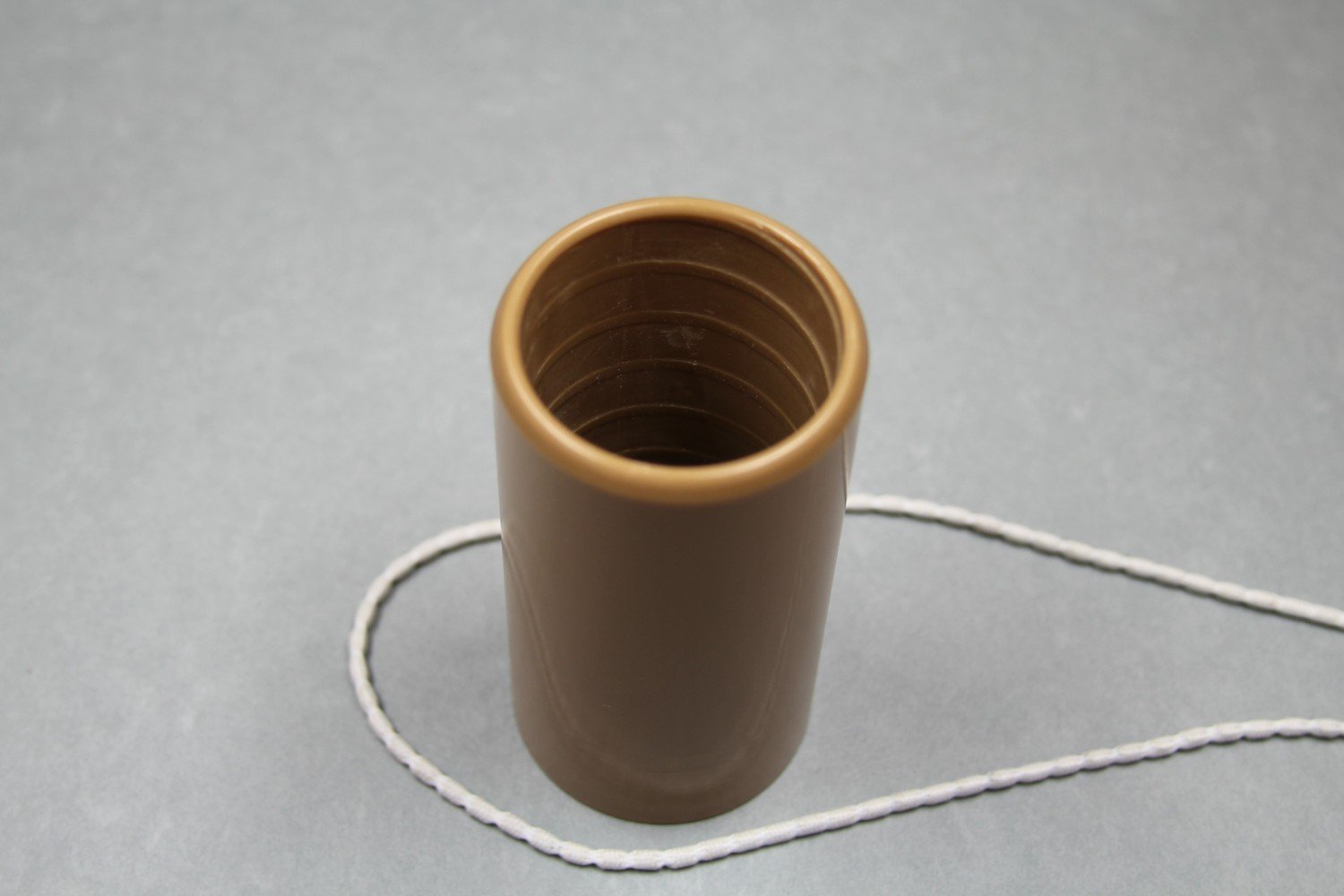 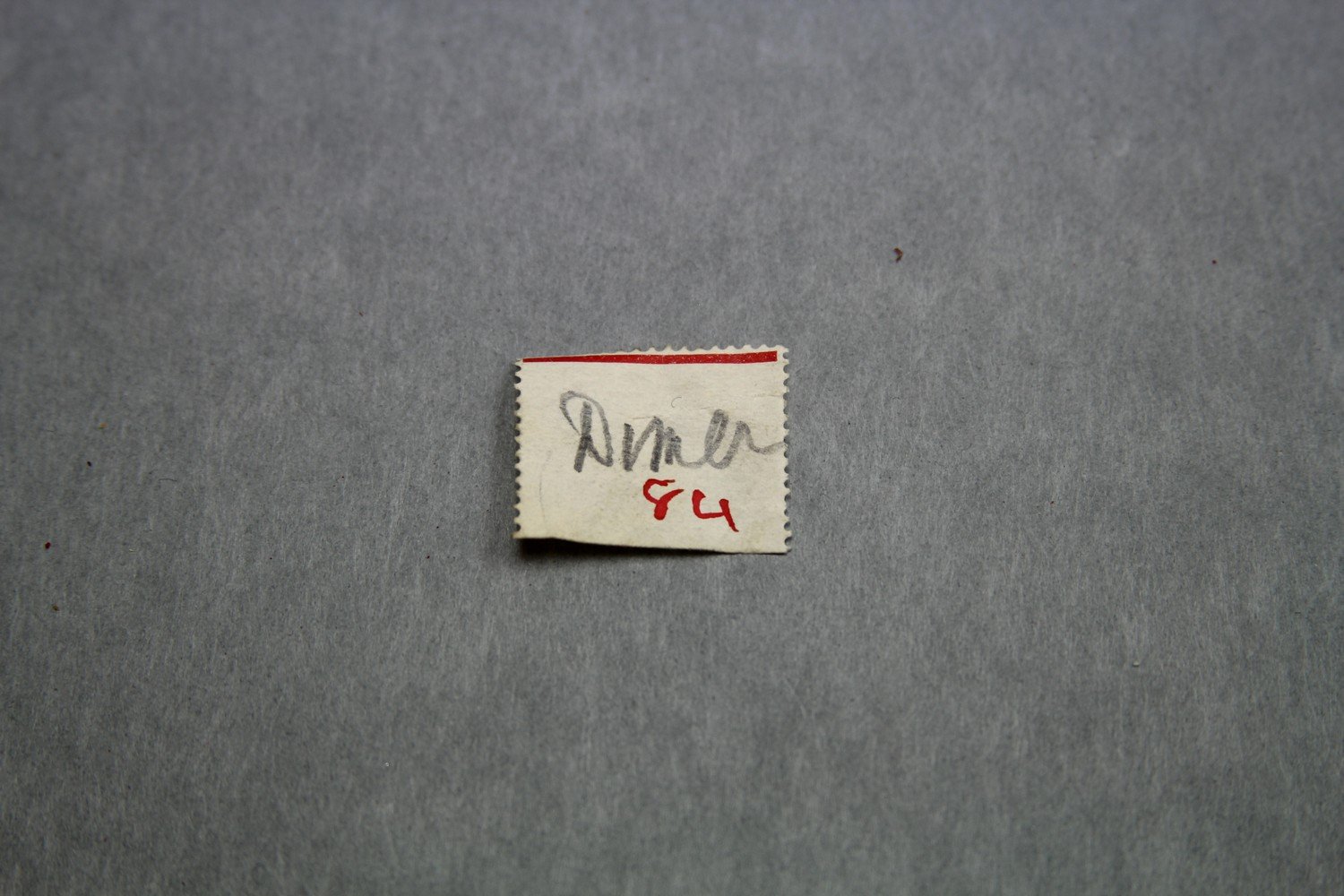 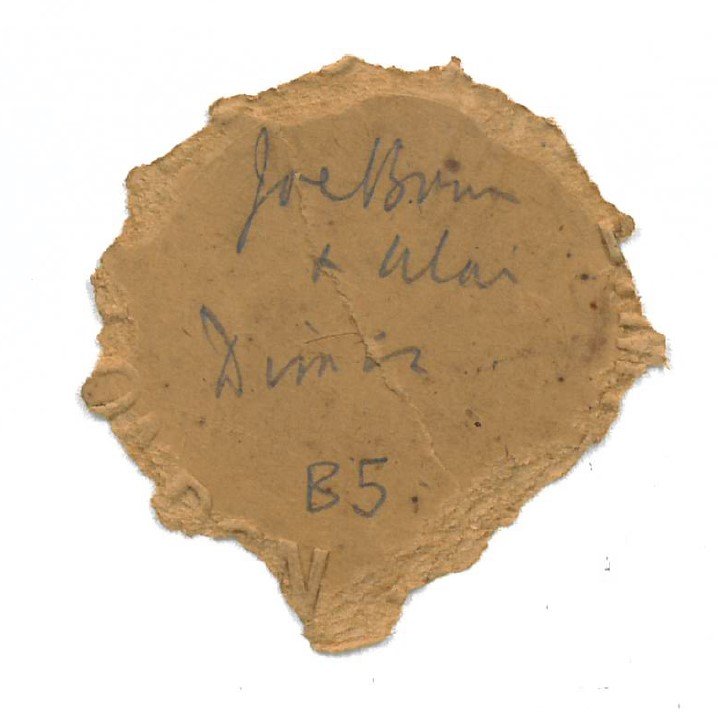   | Haddon, A.C. (ed.) 1907. Reports of the Cambridge Anthropological Expedition to Torres Strait: Volume III, The Languages of Torres Strait. Cambridge: Cambridge University Press. British Library shelfmark General Reference Collection YC.2011.b.631. | Haddon, A.C. (ed.) 1908. Reports of the Cambridge Anthropological Expedition to Torres Strait: Volume VI, Sociology, Magic and Religion of the Eastern Islanders. Cambridge: Cambridge University Press. British Library shelfmark General Reference Collection YC.2011.b.632. | Haddon, A.C. (ed.) 1912. Reports of the Cambridge Anthropological Expedition to Torres Strait: Volume IV, Arts and Crafts. Cambridge: Cambridge University Press. British Library shelfmark General Reference Collection YC.2011.b.634. | Myers, C. S. 1898-1899. Journal on Torres Straits anthropological expedition. [manuscript] Haddon Papers. ADD 8073. Cambridge: Cambridge University Library. | |||
| C80/1027 | Boi-Grass song | Boa (composer) | Mer / Murray Island, Torres Strait Islands | 10 May 1898 – 24 August 1898 | 1-2. Unaccompanied male vocal solo. This cylinder has been bandaged on one end. Inscription on insert notes: 'Boi-Grass Song / known at Tud / XVIII / Iribo - New Song / Murray Is.' One small slip of perforated paper: 'XVIII'. This recording corresponds to Charles S. Myers' Secular Song XVIII. He noted that the song appeared to have been introduced by Boa and was known at Tutu [Tudu Island / Warrior Islet] (Myers 1912:240). "boi" may refer to the leaves of a coconut palm; a basket made of the coconut palm leaf, or the inner thatch of roof and walls (Ray 1907:92; 1912). This is in the Mabuiag language. Translation and analysis by Myers (1912: 254-255, 268). | Reasonable quality recording but with surface noise due to cracked cylinder and mould patches. The recording date range assumes that Myers is indeed the recordist and corresponds to the dates of Myer's stay on Mer / Murray Island. | Kala Lagaw Ya (The words are 'clearly of the western language' i.e. Kalaw Lagaw Ya. (Myers 1912:241). Myers also noted that the song was introduced from Muralug, and so the dialect could be Kawalgaw Ya [AUSTLANG code Y5].) | Field recordings | Myers, C. S. | 2'08" | 1898 Cambridge Anthropological Expedition to Torres Straits | Brown wax cylinder. No case. | Alfred Cort Haddon 1898 Expedition (Torres Strait and British New Guinea) Cylinder Collection | British Library | 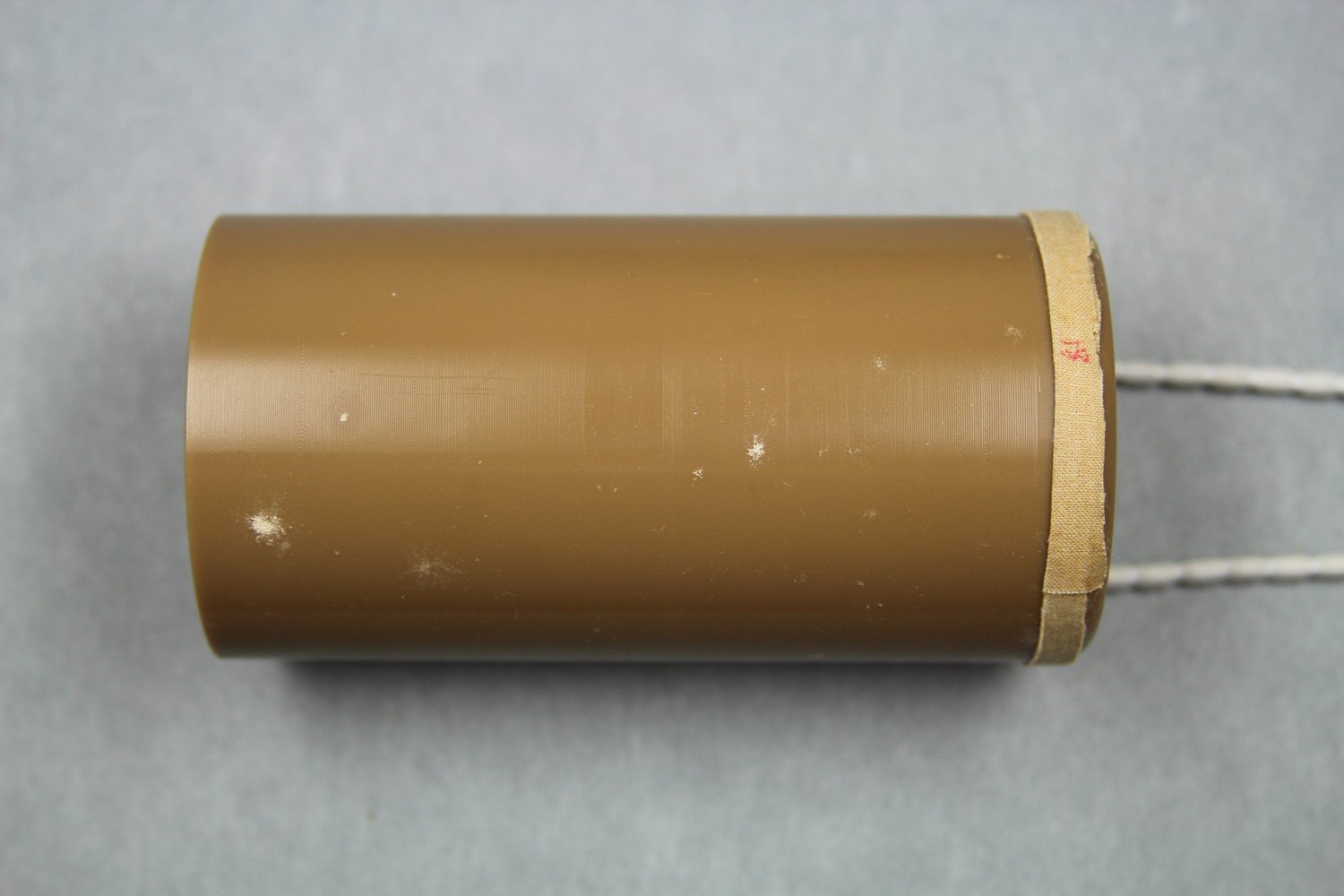 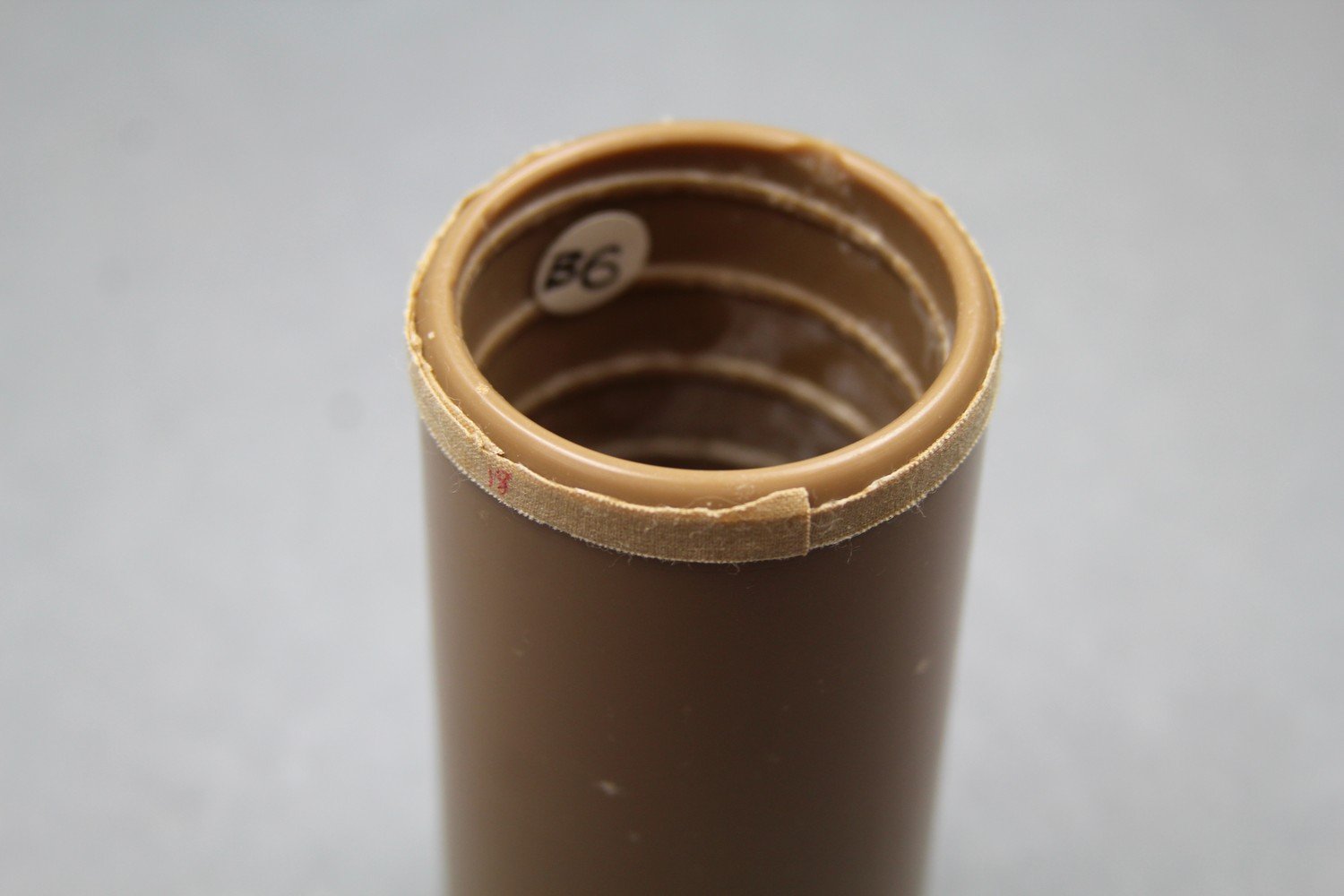 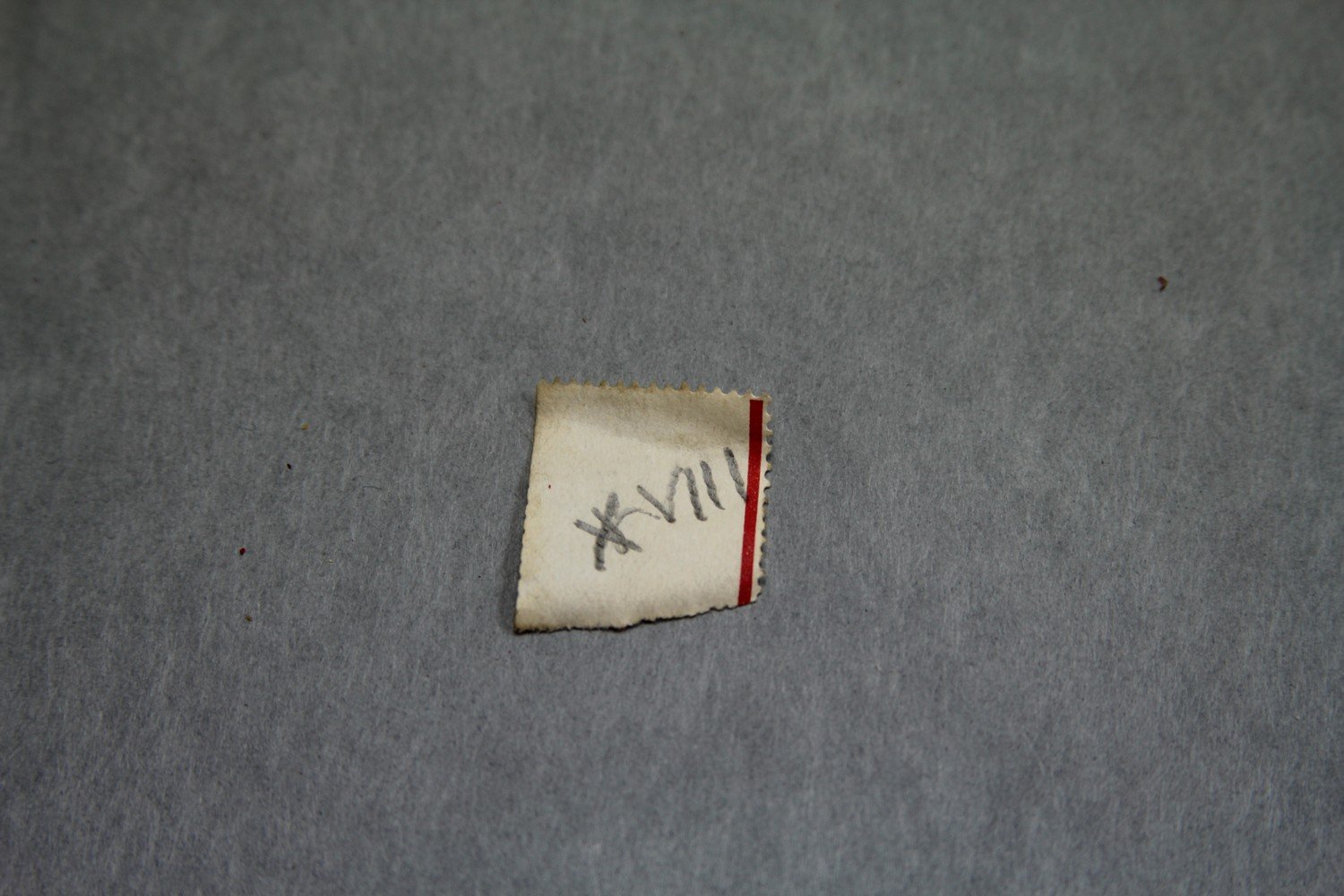    | Haddon, A.C. (ed.) 1907. Reports of the Cambridge Anthropological Expedition to Torres Strait: Volume III, The Languages of Torres Strait. Cambridge: Cambridge University Press. British Library shelfmark General Reference Collection YC.2011.b.631. | Haddon, A.C. (ed.) 1912. Reports of the Cambridge Anthropological Expedition to Torres Strait: Volume IV, Arts and Crafts. Cambridge: Cambridge University Press. British Library shelfmark General Reference Collection YC.2011.b.634. | |||||
| C80/1028 | Male vocal solo | Unidentified (singer, male); unidentified (percussion) | Mer / Murray Island, Torres Strait Islands | 6 May 1898 – 8 September 1898 | Male vocal solo, with percussion accompaniment. No further information available. | Poor quality recording with heavy surface noise due to mould on cylinder. As the recordist has not been identified, the recording date range corresponds to when any of the Expedition members were on Mer / Murray Island. From Alice Moyle's 1985 audition sheets: '[Drum clearly audible.] No documentation.' Moyle identified this cylinder as a Mer / Murray Island cylinder. | Field recordings | 2'08" | 1898 Cambridge Anthropological Expedition to Torres Straits | Brown wax cylinder. No case. | Alfred Cort Haddon 1898 Expedition (Torres Strait and British New Guinea) Cylinder Collection | British Library | 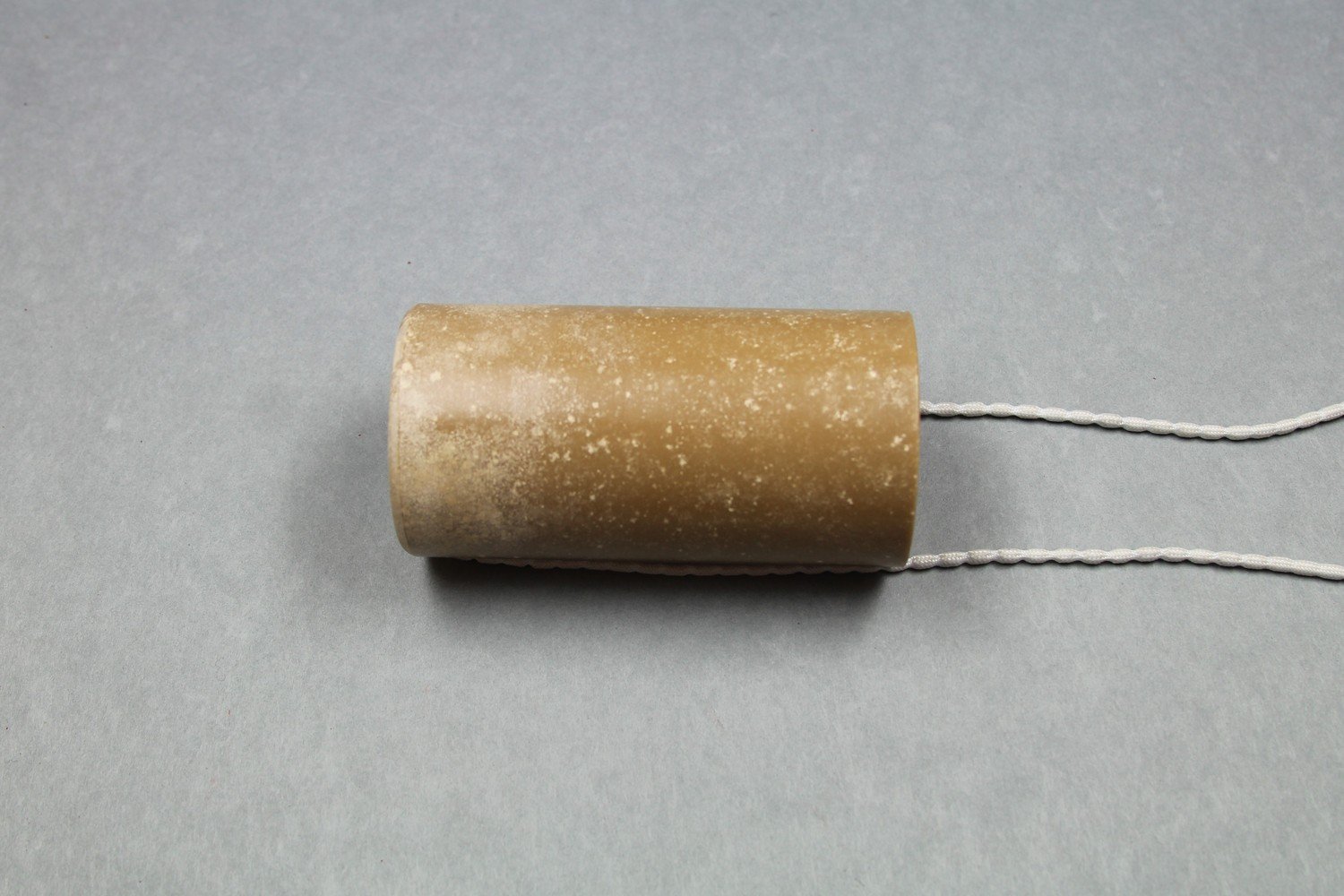 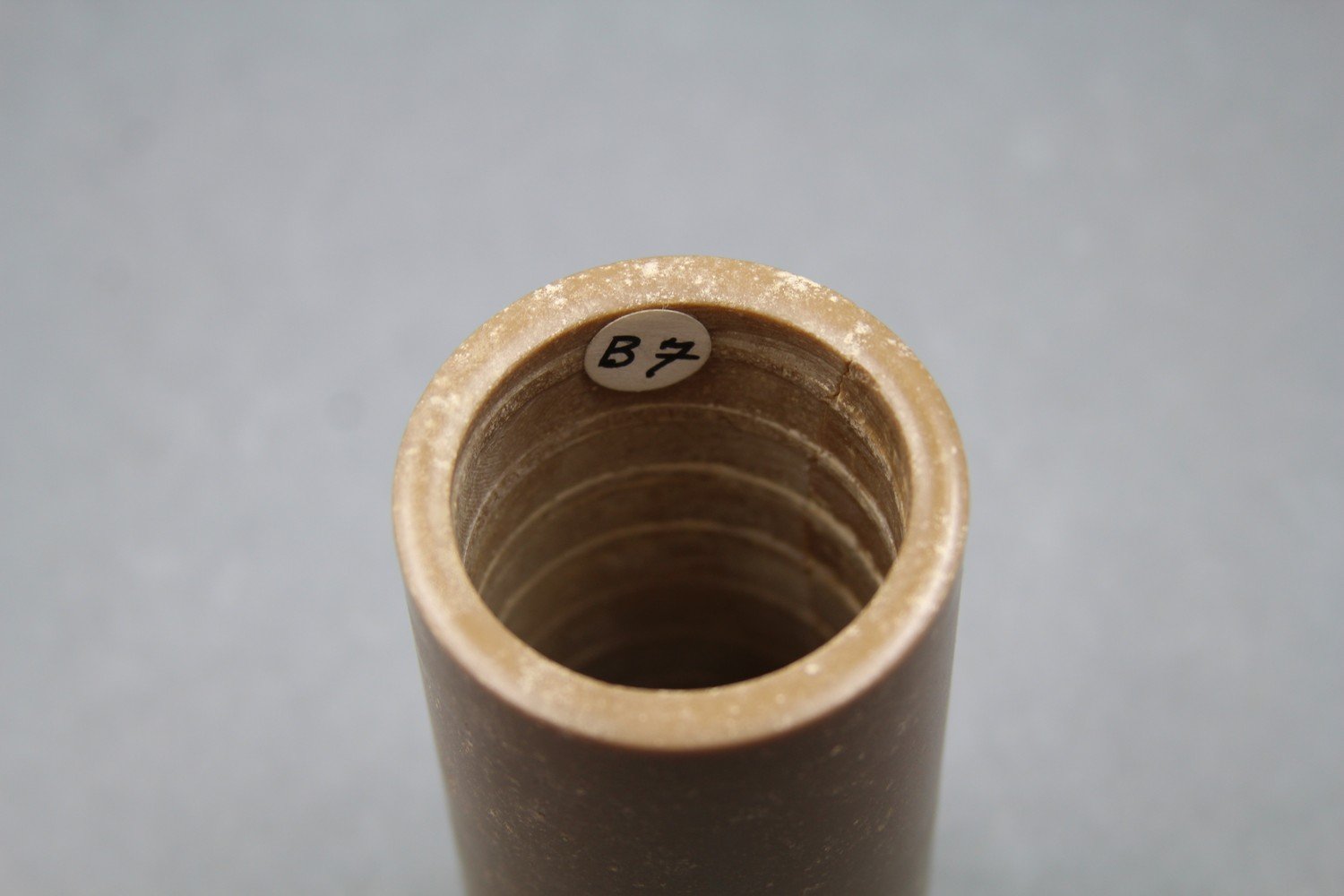     | Alice Moyle (AIAS, now AIATSIS) completed audition sheets for the Torres Strait cylinder collection in 1985. Copies of these are held at the British Library. | ||||||||
| C80/1029 | Male vocal solo | Ari (singer, male, Mamoose of Mer / Murray Island) | Mer / Murray Island, Torres Strait Islands | 10 May 1898 – 24 August 1898 | Unaccompanied male vocal solo. Inscription on insert notes: ‘Dz Fa’ and ‘Dzenamarkai / [illeg] V / Mamoose’. Small slip of perforated paper: ‘Dz FA’ This recording corresponds to Charles S. Myers' Keber Song V. Published with amended lyrics in Myers & Haddon (1908: 152). Words, translation and analysis published in Myers (1912:251, 268). | Reasonable quality recording but with weak signal and surface noise. The recording date range assumes that Myers is indeed the recordist and corresponds to the dates of Myer's stay on Mer / Murray Island. | Kala Lagaw Ya | Field recordings | Myers, C. S. | 2'03" | 1898 Cambridge Anthropological Expedition to Torres Straits | Brown wax cylinder. No case. | Alfred Cort Haddon 1898 Expedition (Torres Strait and British New Guinea) Cylinder Collection | British Library | 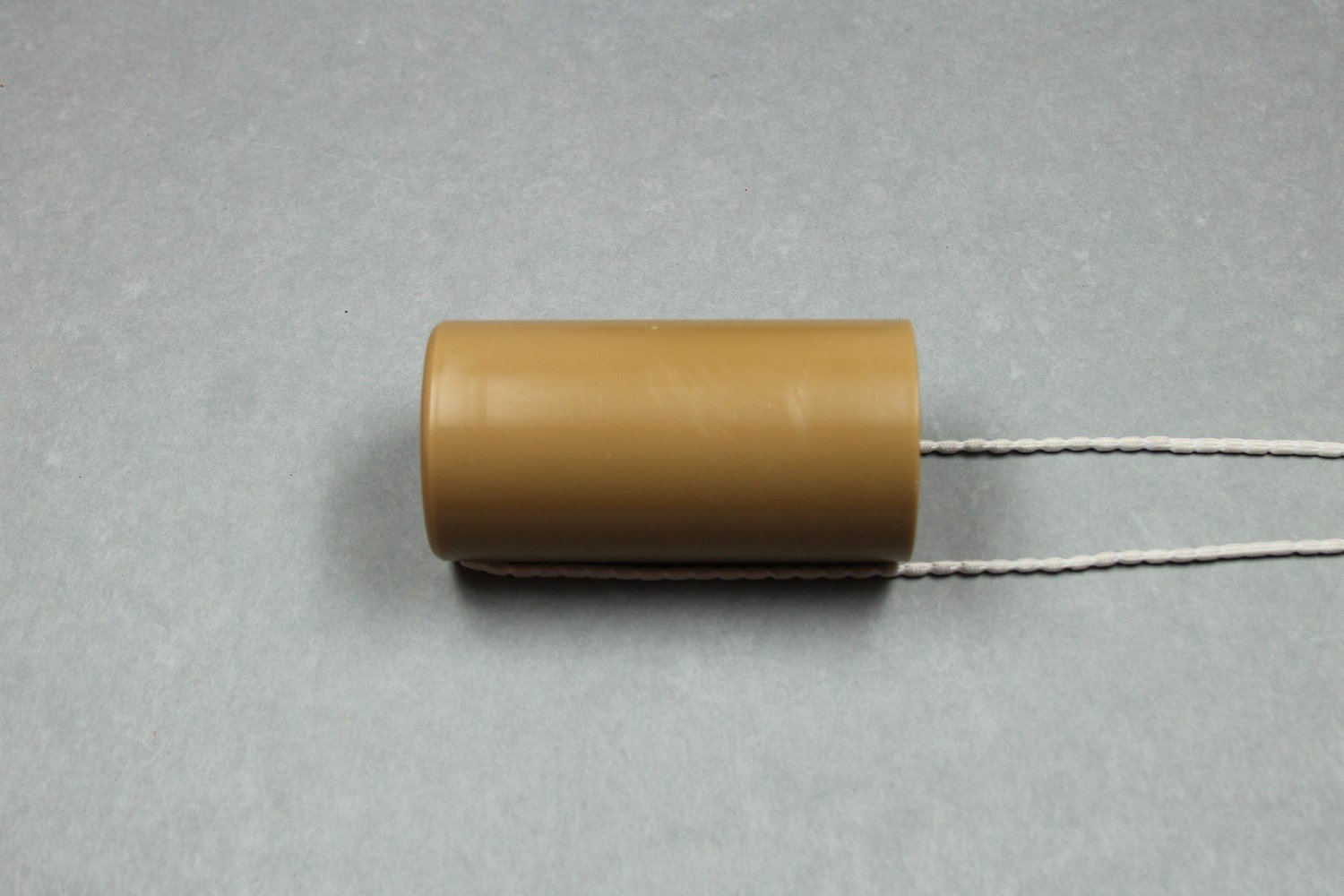 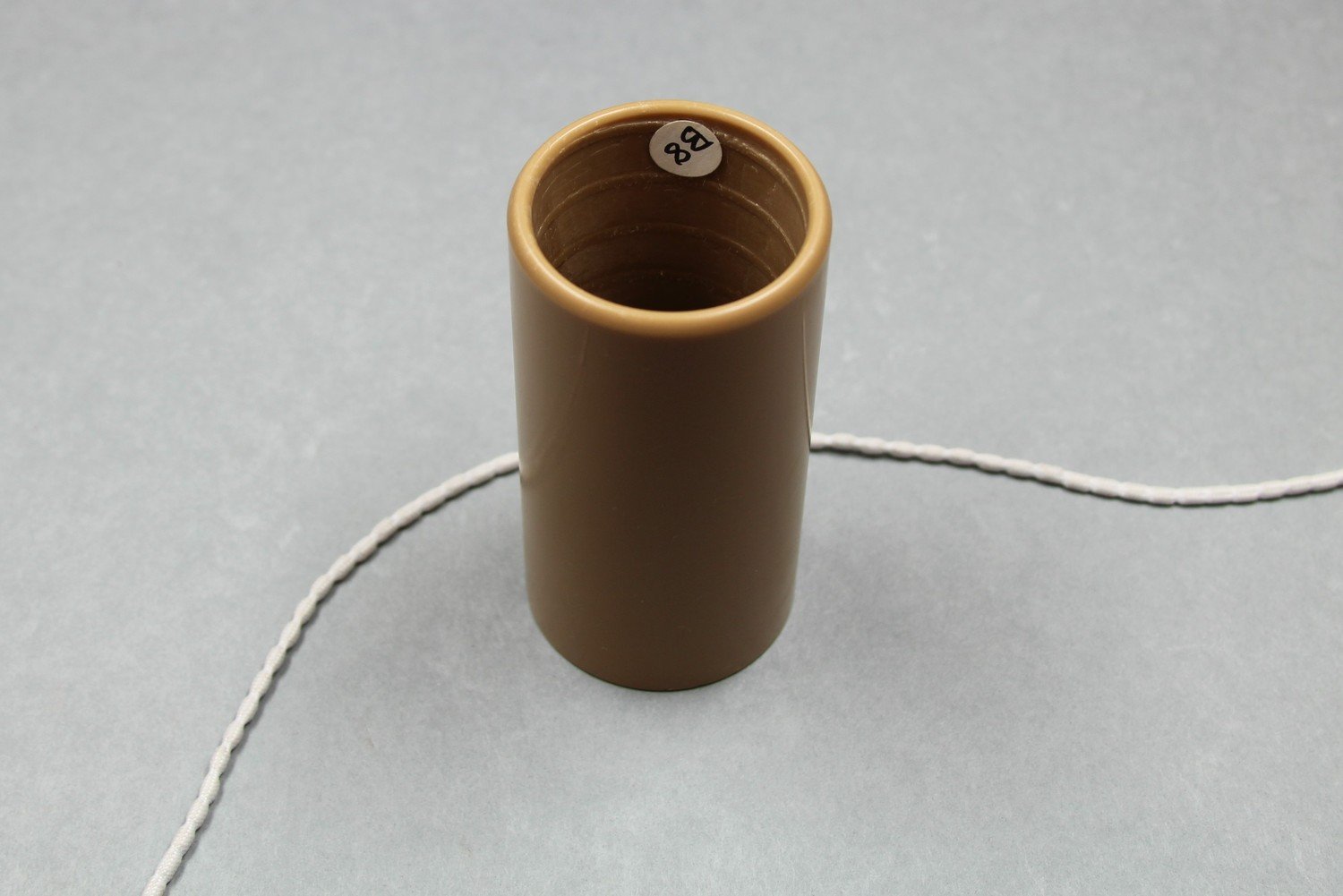 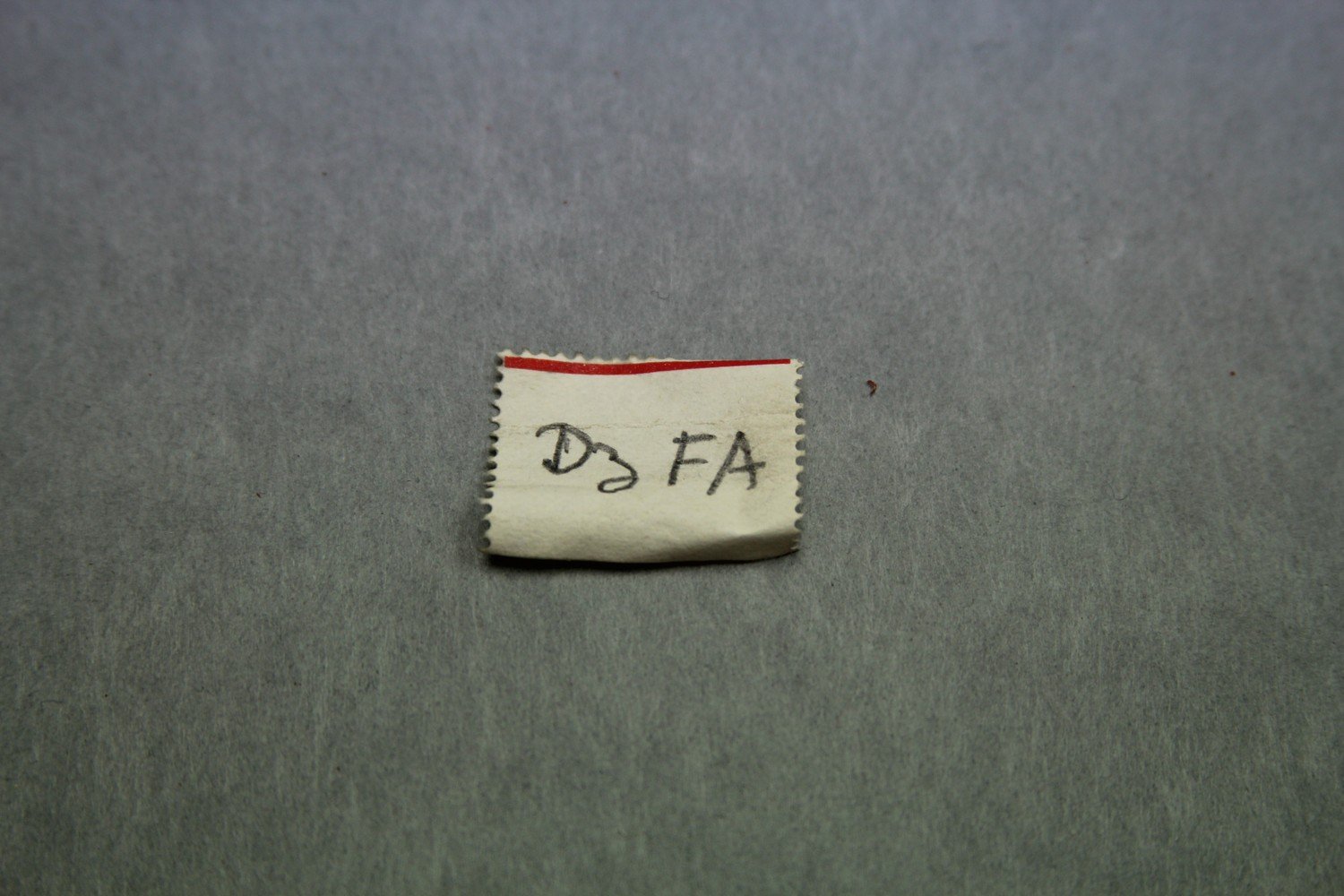 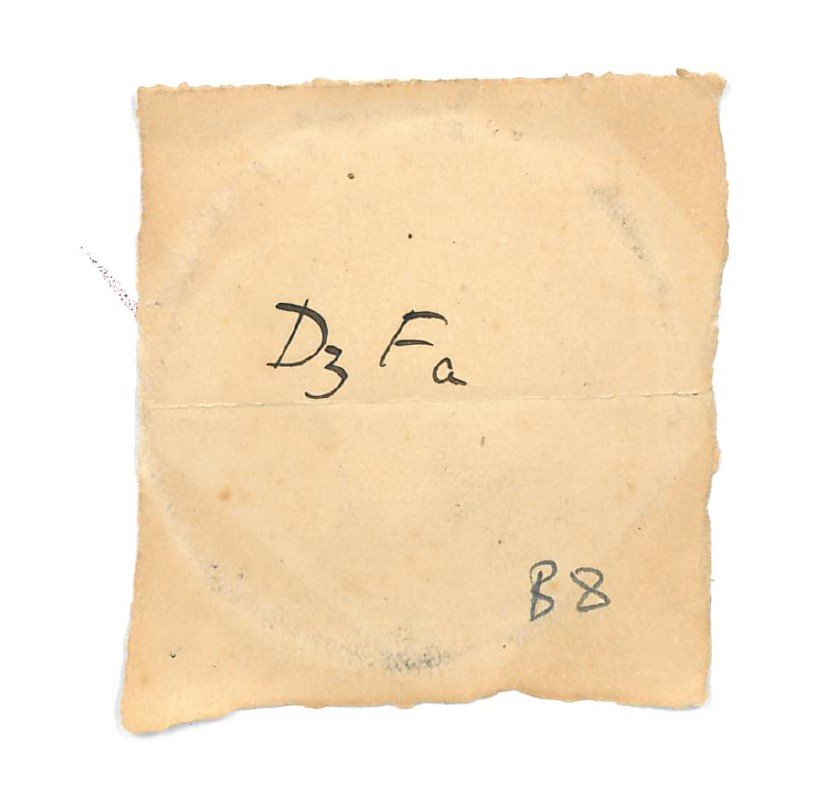   | Haddon, A.C. (ed.) 1908. Reports of the Cambridge Anthropological Expedition to Torres Strait: Volume VI, Sociology, Magic and Religion of the Eastern Islanders. Cambridge: Cambridge University Press. British Library shelfmark General Reference Collection YC.2011.b.632. | Haddon, A.C. (ed.) 1912. Reports of the Cambridge Anthropological Expedition to Torres Strait: Volume IV, Arts and Crafts. Cambridge: Cambridge University Press. British Library shelfmark General Reference Collection YC.2011.b.634. | |||||
| C80/1030 | Secular Song | Akoko (composer) | Mer / Murray Island, Torres Strait Islands | 10 May 1898 – 24 August 1898 | This cylinder has been bandaged on one end. Inscription on insert note: 'Song XVI / Aqoko of Las / Batem[?] daiseda.' On reverse: (Babem mena daiseda) 2 é á wa / new song: made Akoko / of Las'. This recording corresponds to Charles S. Myers' Secular Song XVI. This song was composed by Akoko and was a ‘new song from Las’ (Myers 1912:240). Akoko was noted as able to dream new songs and was recognised by the Islanders as a composer (1912:241). Published and analysed by Myers (1912:246, 254, 268). | Reasonable quality recording but with surface noise. The recording date range assumes that Myers is indeed the recordist and corresponds to the dates of Myer's stay on Mer / Murray Island. The words of the song are in Meriam Mìr (Myers 1912:241). | Meriam Mir | Field recordings | Myers, C. S. | 1'47" | 1898 Cambridge Anthropological Expedition to Torres Straits | Brown wax cylinder. No case. | Alfred Cort Haddon 1898 Expedition (Torres Strait and British New Guinea) Cylinder Collection | British Library | 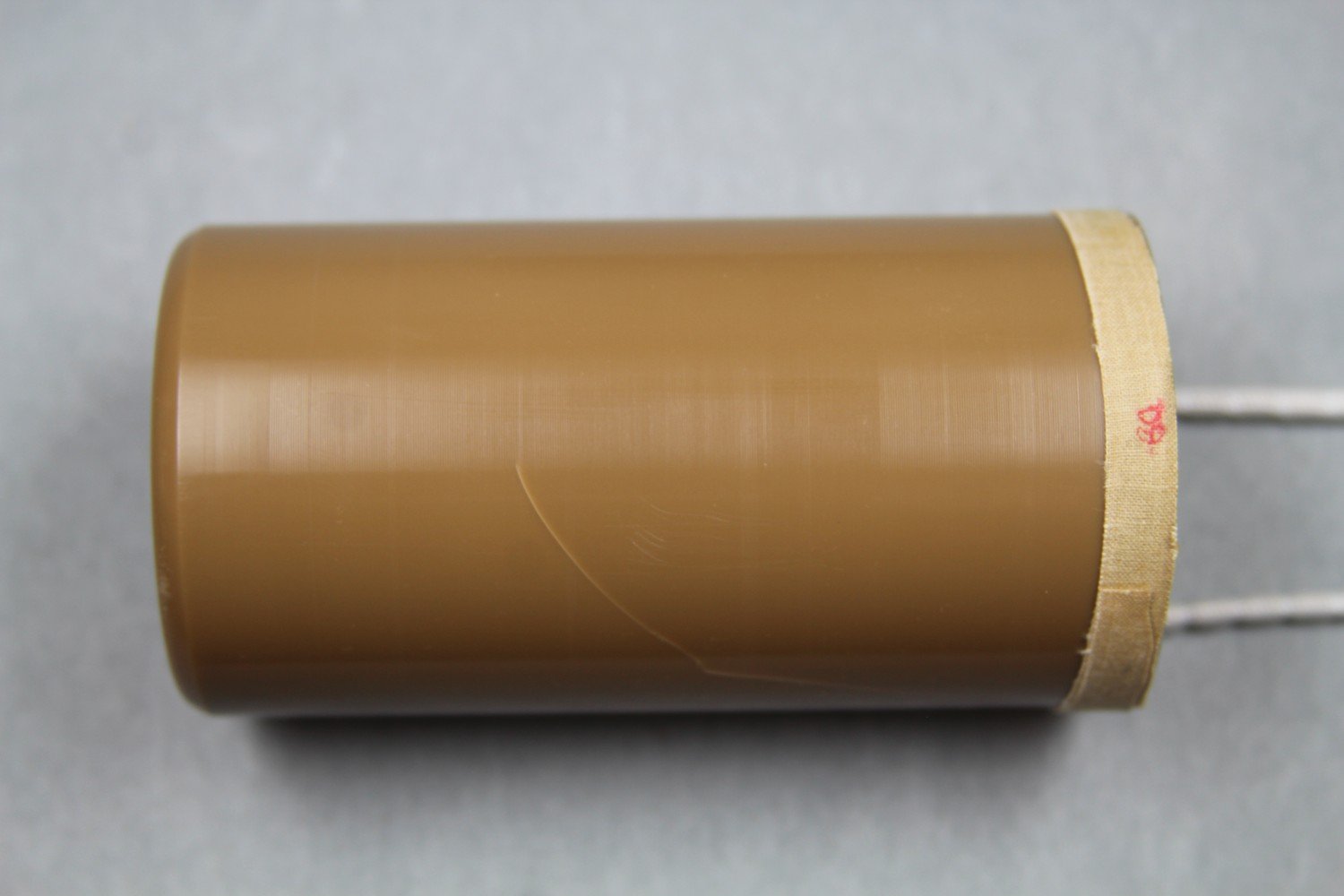  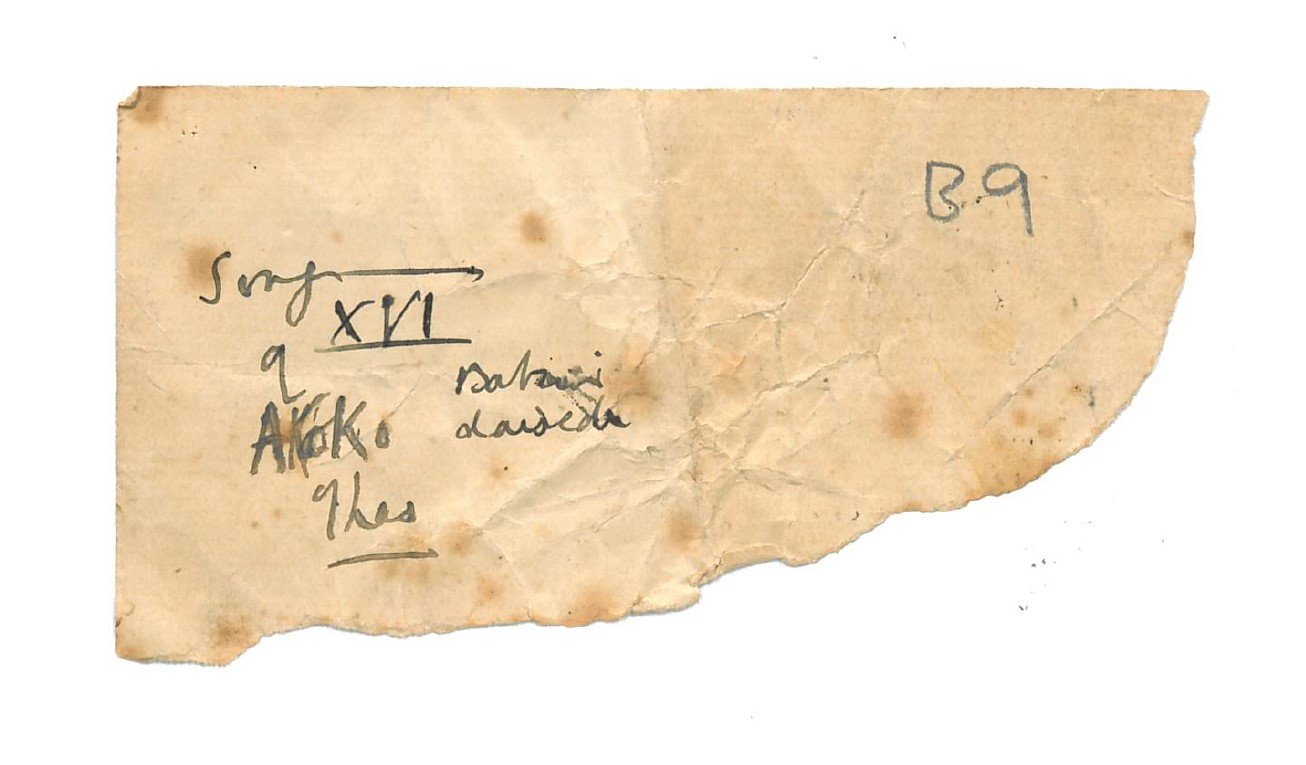    | Haddon, A.C. (ed.) 1912. Reports of the Cambridge Anthropological Expedition to Torres Strait: Volume IV, Arts and Crafts. Cambridge: Cambridge University Press. British Library shelfmark General Reference Collection YC.2011.b.634. | ||||||
| C80/1031 | Keber Song | Joe Brown (singer, male); Ulai (singer, male) | Mer / Murray Island, Torres Strait Islands | 10 May 1898 – 24 August 1898 | 1-2. Male vocal solo. Inscription on insert notes: 'Song Dz Aa / Dz Aa / Joe Brown / Ulai / [illeg] of Dzenamarkai'. One small slip of perforated paper: 'Dz AA 87' [number in red ink]. This recording corresponds to Charles S. Myers' Keber: Song VI. Myers was unable to obtain words (1912:240). Myers witnessed Joe Brown and Ulai performing on 24 May 1898: they "sit with the dari on their heads, sit vis à vis in the middle of a ring of drummers and singers. Their legs are crossed with feet against the opposite thighs. Ulai and Joe sing at the top of their voices a tune brought from Tud (Warrior I.) about the wind (guba, Tud word)" (Myers 1898:56). It is not clear which exact song was performed. Published in Myers & Haddon (1908:150, 152). Analysis of Song VI in Myers (1912:251-252). | Reasonable quality recording. The recording date range assumes that Myers is indeed the recordist and corresponds to the dates of Myer's stay on Mer / Murray Island. | Kala Lagaw Ya | Field recordings | Myers, C. S. | 2'13" | 1898 Cambridge Anthropological Expedition to Torres Straits | Brown wax cylinder. No case. | Alfred Cort Haddon 1898 Expedition (Torres Strait and British New Guinea) Cylinder Collection | British Library | 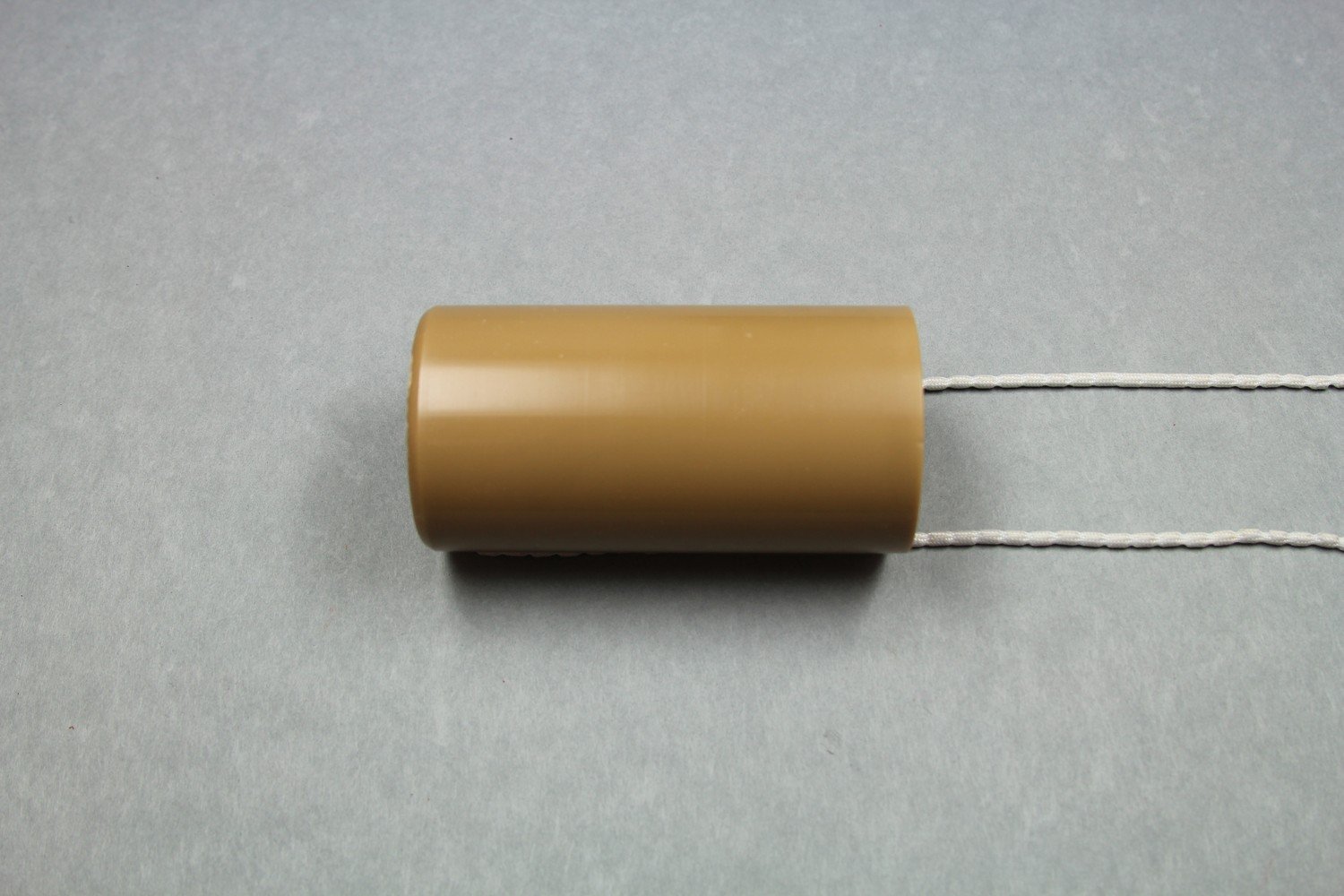 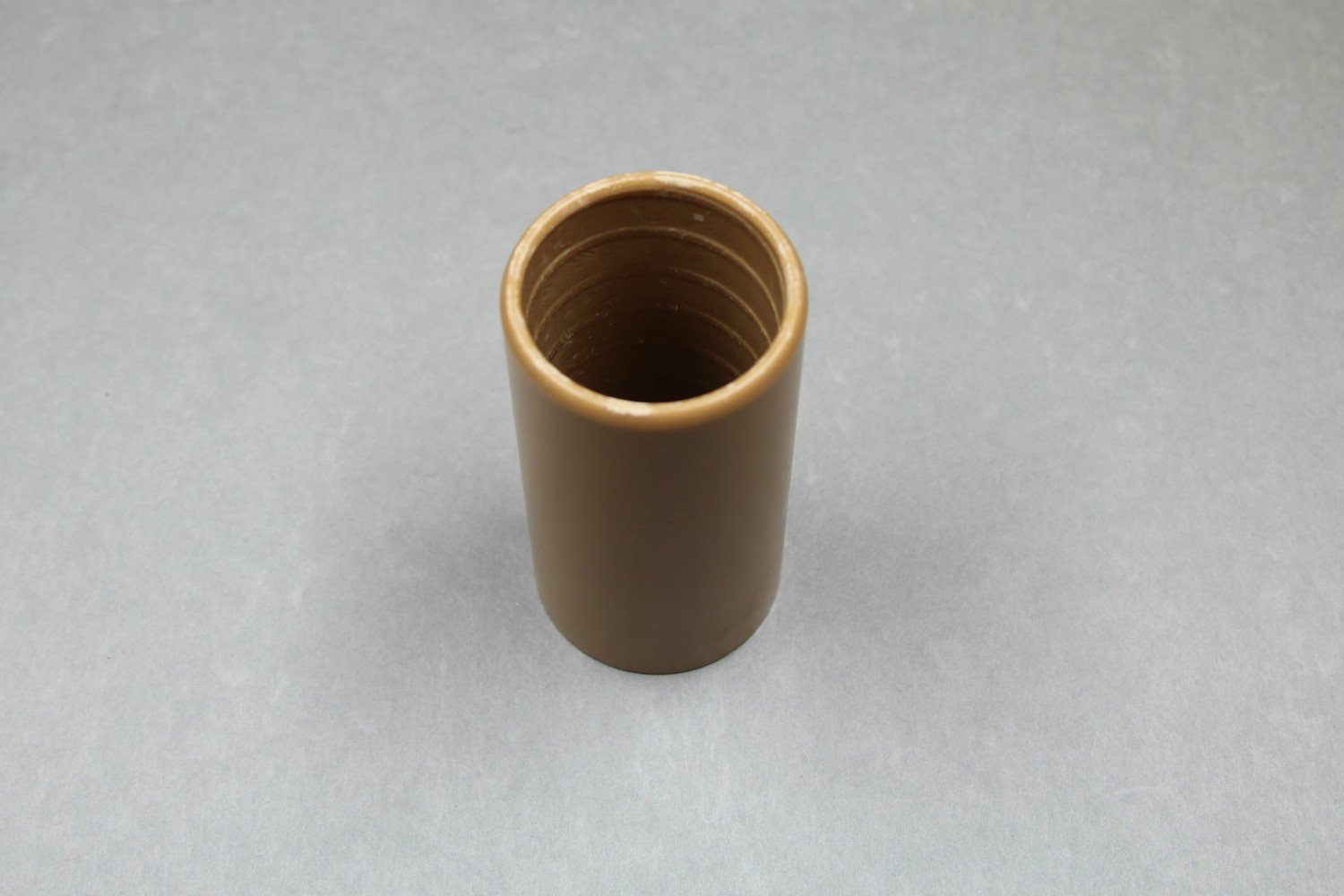 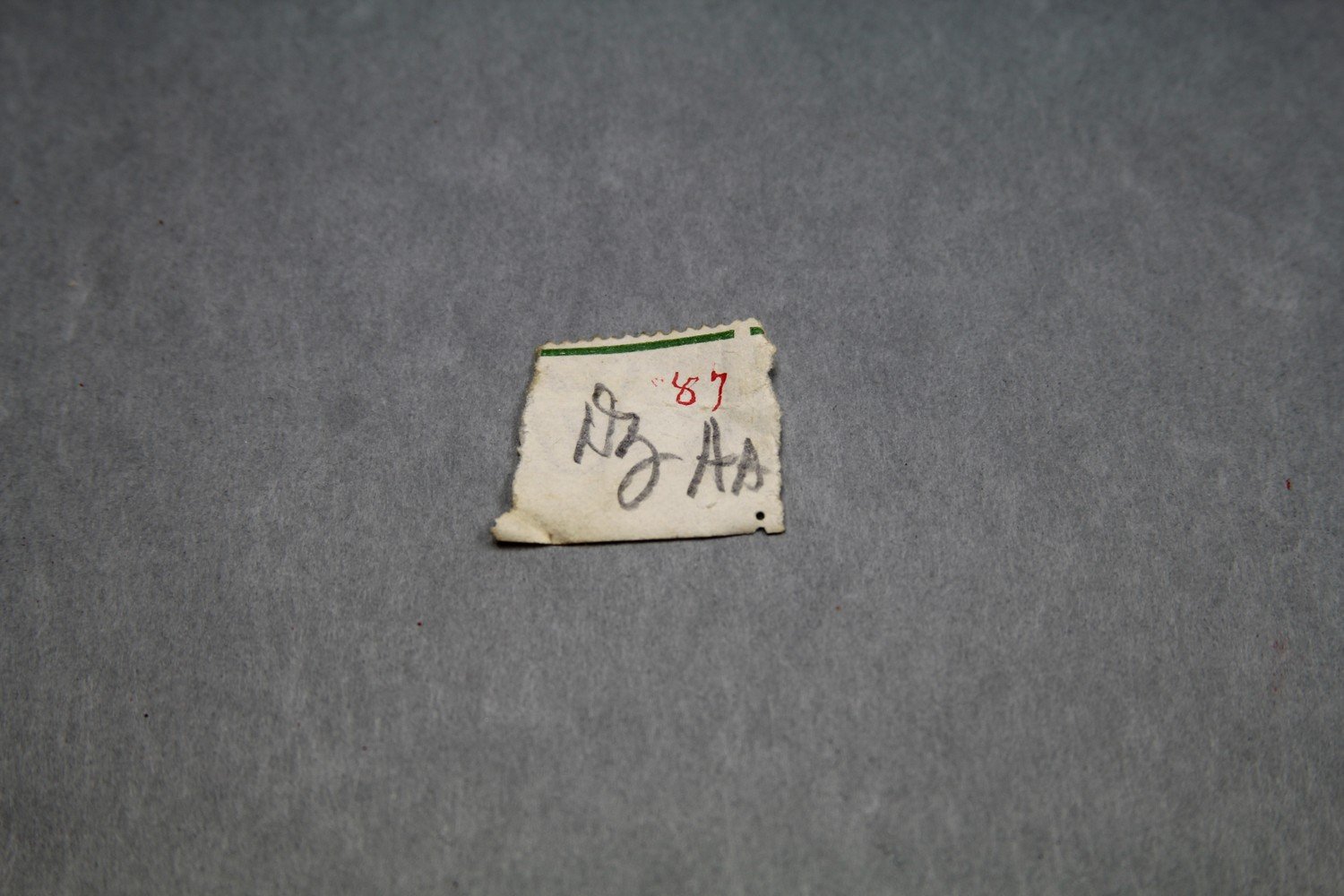 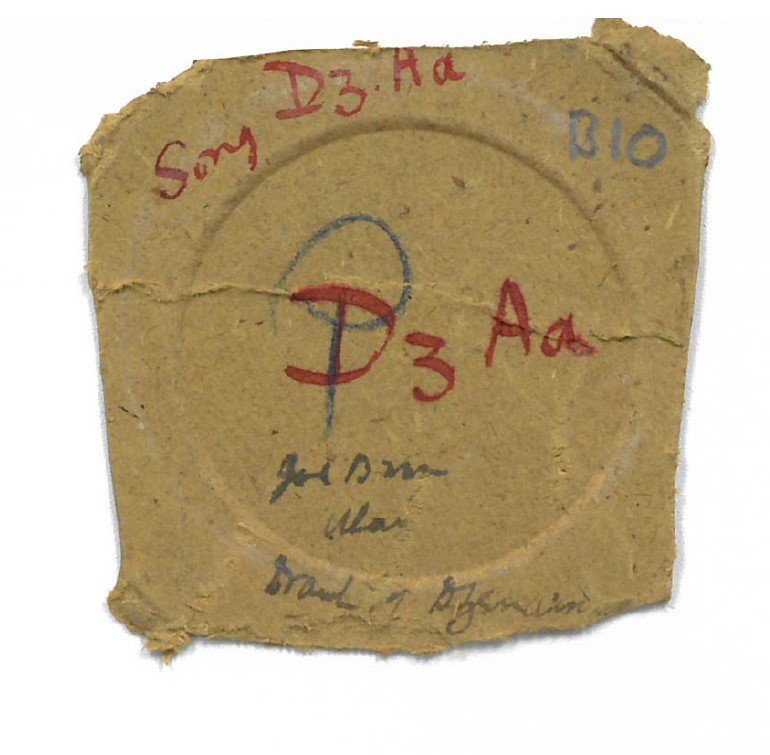   | Haddon, A.C. (ed.) 1908. Reports of the Cambridge Anthropological Expedition to Torres Strait: Volume VI, Sociology, Magic and Religion of the Eastern Islanders. Cambridge: Cambridge University Press. British Library shelfmark General Reference Collection YC.2011.b.632. | Haddon, A.C. (ed.) 1912. Reports of the Cambridge Anthropological Expedition to Torres Strait: Volume IV, Arts and Crafts. Cambridge: Cambridge University Press. British Library shelfmark General Reference Collection YC.2011.b.634. | Myers, C. S. 1898-1899. Journal on Torres Straits anthropological expedition. [manuscript] Haddon Papers. ADD 8073. Cambridge: Cambridge University Library. | ||||
| C80/1032 | Song by Joe Brown | Ulai (singer, male); Joe Brown (composer) | Mer / Murray Island, Torres Strait Islands | 10 May 1898 – 24 August 1898 | 1-3. Unaccompanied male vocal solo. Inscription on insert notes (almost illegible): 1. 'Dz Ea / ? Dzin[illeg] Ulai / ? Kolap'. 2.'Joe Brown / Ulai / 3[?] [illeg]'. 3. 'Ulai / song by Joe Brown / [illeg] / old kolap [illeg] song'. 4. 'Drawl. fruit [?]. Dimer [illeg]. / [illeg] / Dzenamarkai / [illeg] / Th[illeg] malásĭka fĕrásika ūmuru / keweia ba isiaba bauwálsika / naigaia / (umura kiwua naigaia) 2 / u.k.n.u.k. / i.m.i.t.i.m.i.t.u.k.n.'. This recording corresponds to Charles S. Myers' Secular Song XIV, which is a kolap song (Myers 1912:240). Kolap spinning had "recently been the fashionable excuse for an island gathering" (Myers 1898:87). Myers (1898:68): Men "will arrange themselves in a ring, + will squat there for hours on the sand, spinning their tops on plates" and may "sing some old song in the course of the spin". This song was sung while people sat in a circle and span kolap or tops (Myers 1912:240). Top spinning also known as kolap omen (Haddon 1912:315). Kolap spinning had "recently been the fashionable excuse for an island gathering" (Myers 1898:87). Words on inserts seem to correspond to Song XIV published by Myers (1912:253, 268). The kolap songs were recorded by Myers on Mer / Murray Island (Ray 1907:50; Haddon 1912:285-286). | Reasonable quality recording. The recording date range assumes that Myers is indeed the recordist and corresponds to the dates of Myer's stay on Mer / Murray Island. | Meriam Mir | Field recordings | Myers, C. S. | 2'17" | 1898 Cambridge Anthropological Expedition to Torres Straits | Brown wax cylinder. No case. | Alfred Cort Haddon 1898 Expedition (Torres Strait and British New Guinea) Cylinder Collection | British Library | 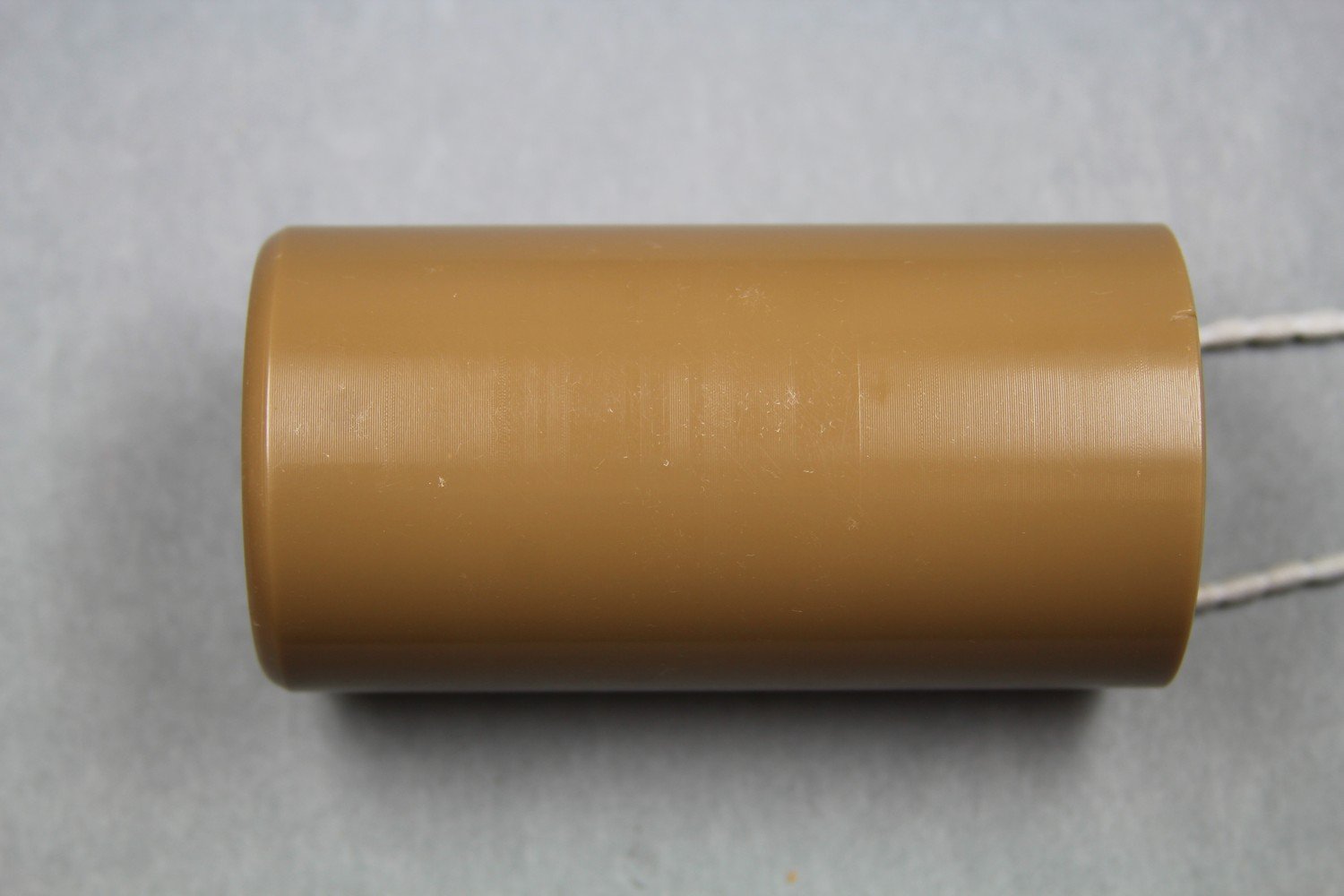 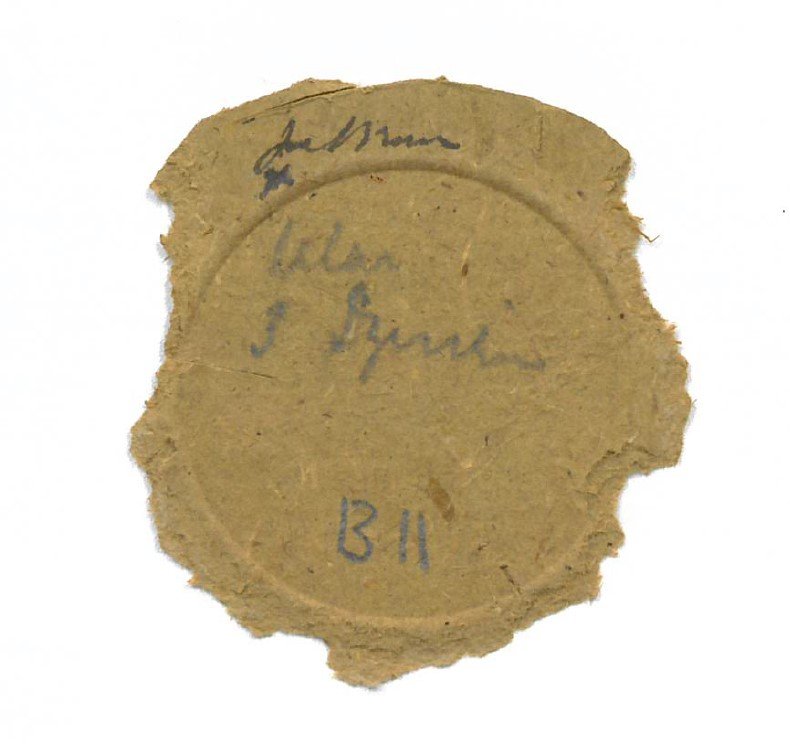     | Haddon, A.C. (ed.) 1912. Reports of the Cambridge Anthropological Expedition to Torres Strait: Volume IV, Arts and Crafts. Cambridge: Cambridge University Press. British Library shelfmark General Reference Collection YC.2011.b.634. | Myers, C. S. 1898-1899. Journal on Torres Straits anthropological expedition. [manuscript] Haddon Papers. ADD 8073. Cambridge: Cambridge University Library. | |||||
| C80/1033 | Joe Brown's Song | Joe Brown (singer, male); Joe Brown (composer) | Mer / Murray Island, Torres Strait Islands | 10 May 1898 – 24 August 1898 | Unaccompanied male vocal solo. Inscription on insert notes: 'XVII / Joe Brown's song.' One small slip of perforated paper: 'XVII 79' [number in red ink]. This recording corresponds to Charles S. Myers' Secular Song XVII. Joe Brown both sang and claimed to have composed the song (Myers 1912:240). This recording was previously described as as song XVI on SAMI. However, XVII is noted on the paper cylinder insert and also noted by Moyle (1985). Analysis and translation published by Myers (1912:254, 268). | Reasonable quality recording. The recording date range assumes that Myers is indeed the recordist and corresponds to the dates of Myer's stay on Mer / Murray Island. One of the words of this song is in Meriam Mìr (Myers 1912:241). | Meriam Mir | Field recordings | Myers, C. S. | 2'02" | 1898 Cambridge Anthropological Expedition to Torres Straits | Brown wax cylinder. No case. | Alfred Cort Haddon 1898 Expedition (Torres Strait and British New Guinea) Cylinder Collection | British Library | 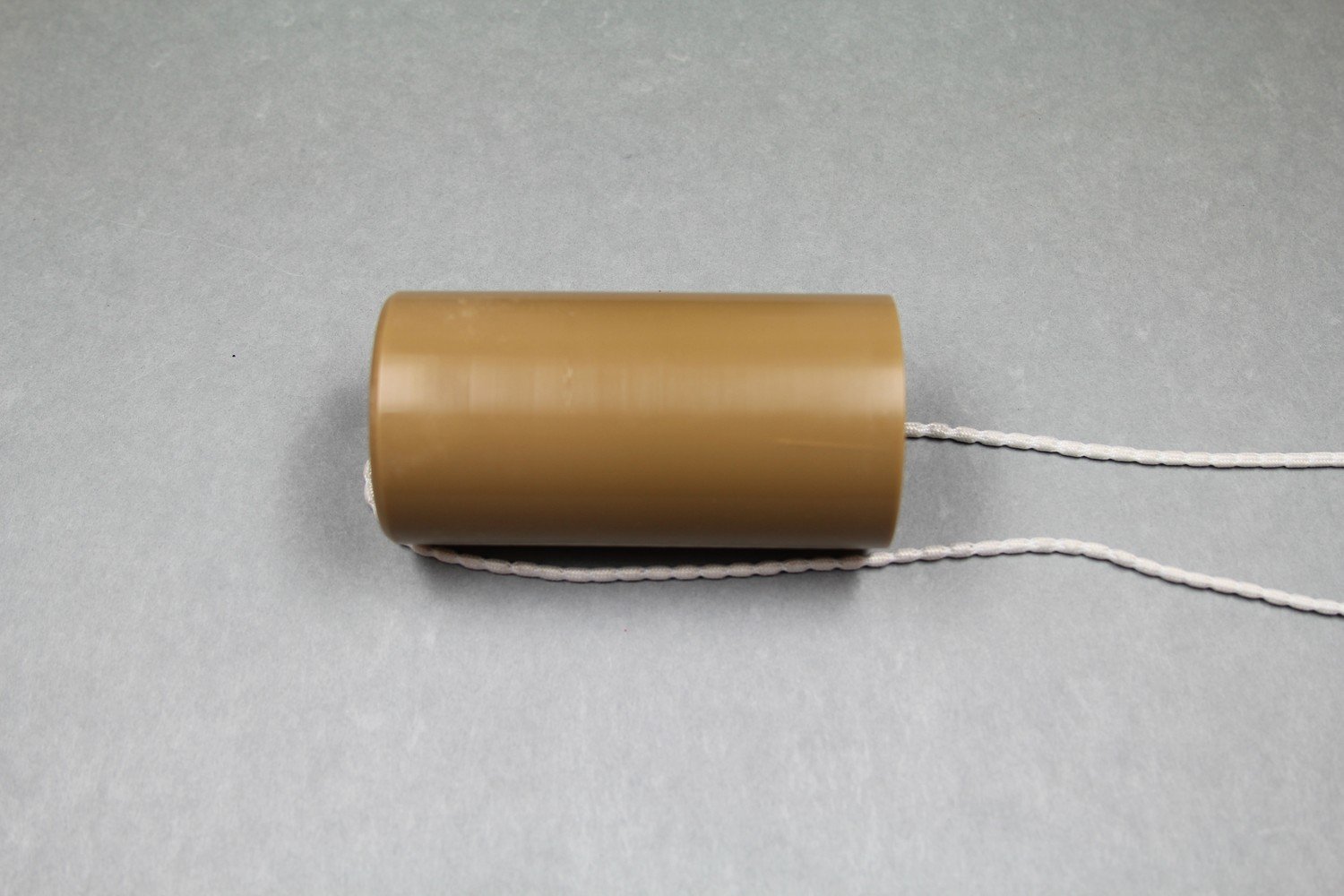 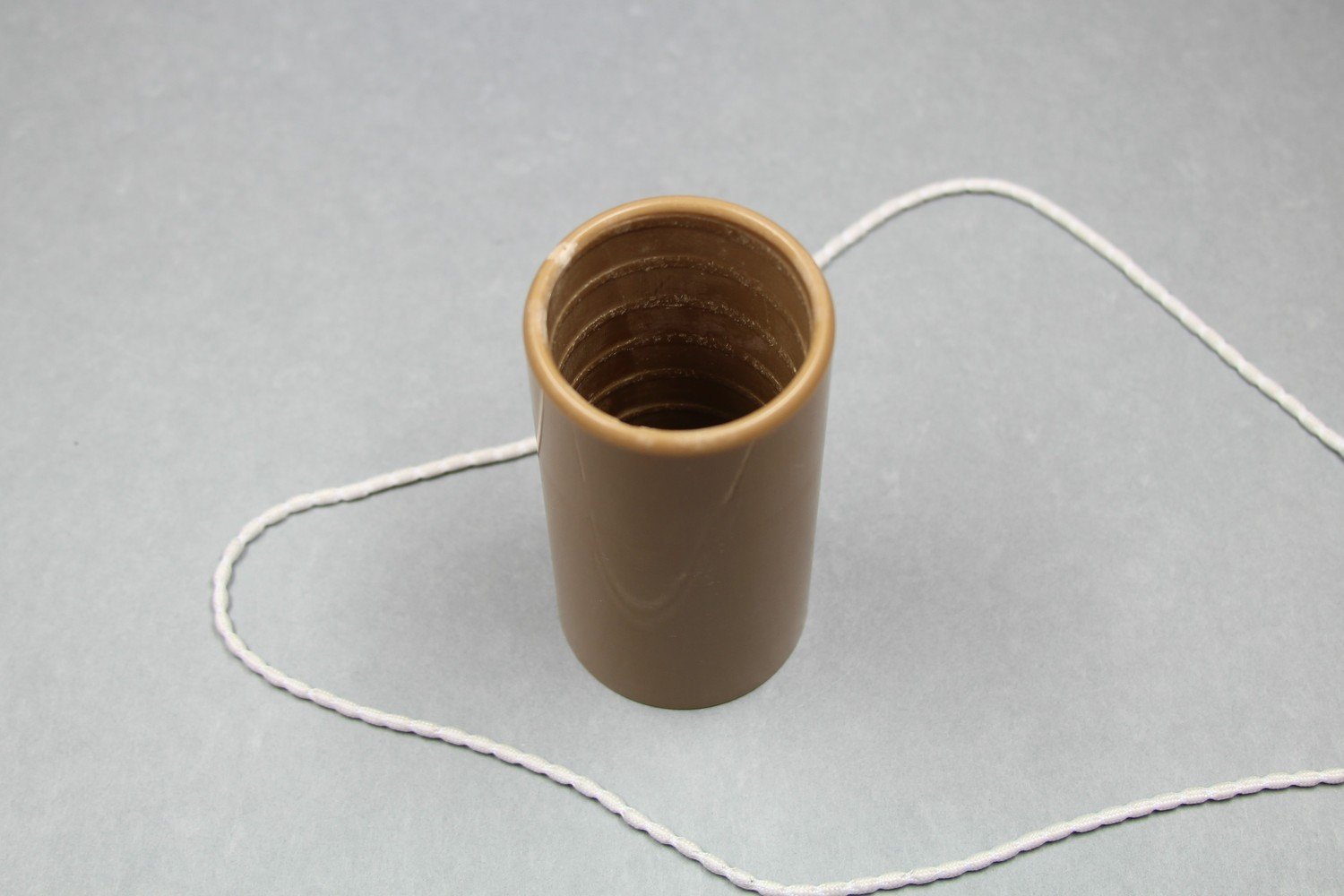 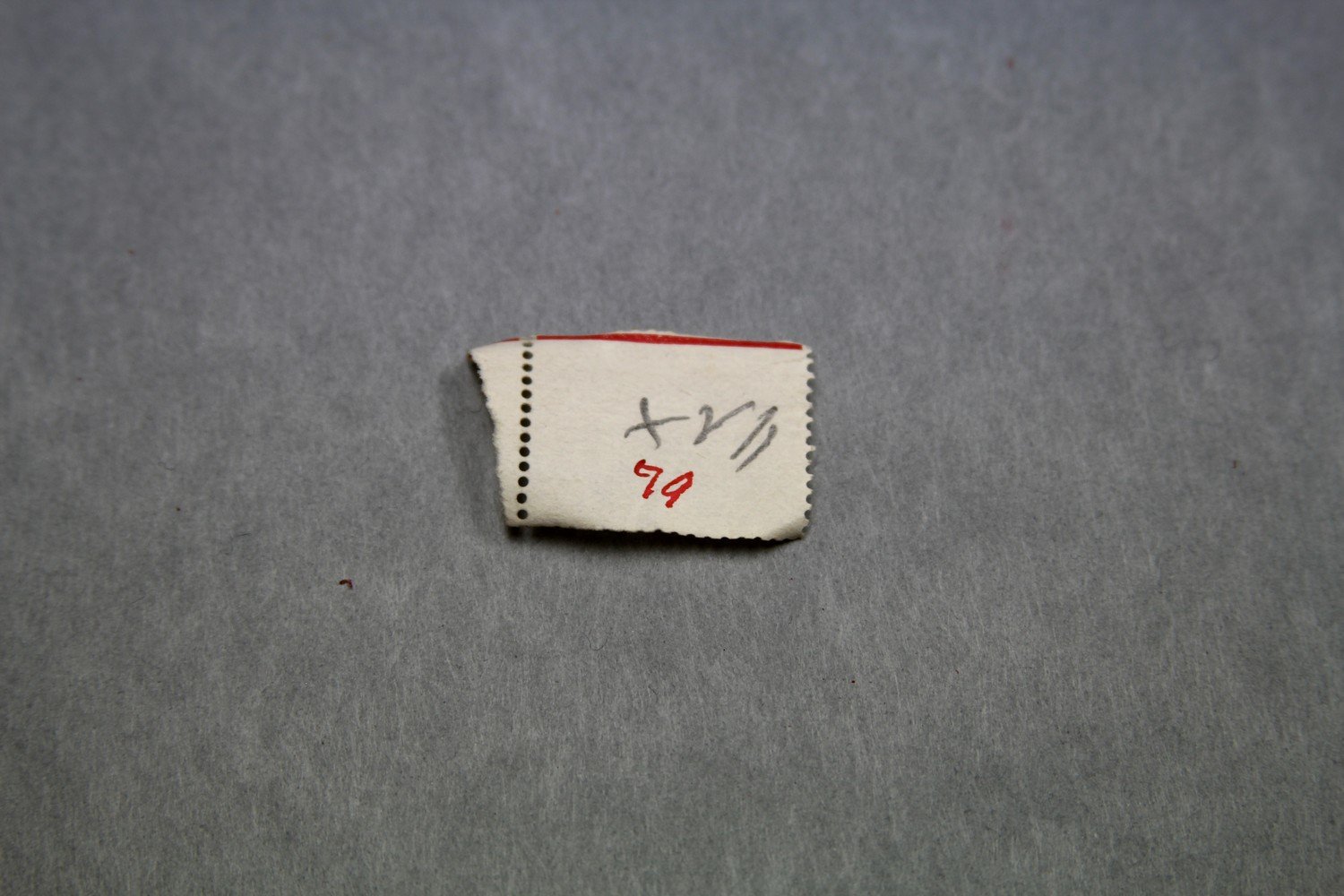 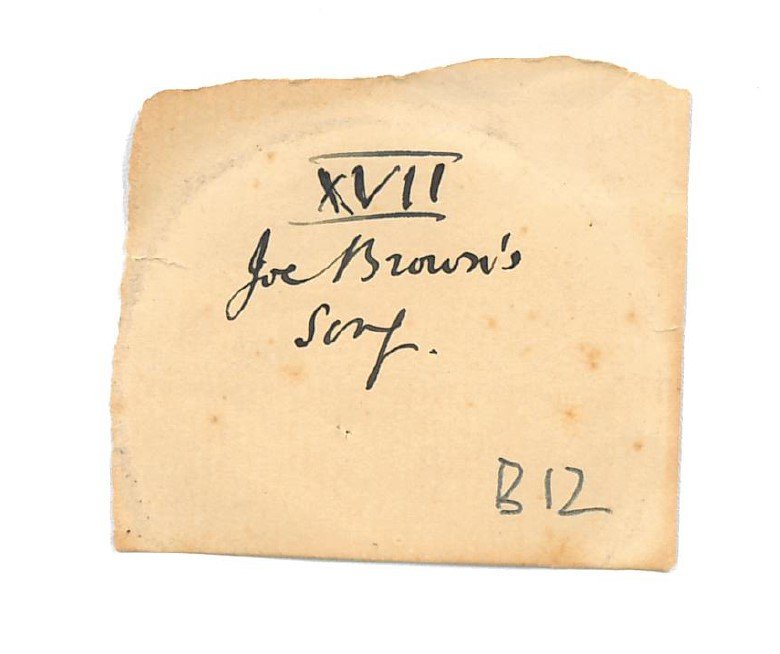   | Haddon, A.C. (ed.) 1912. Reports of the Cambridge Anthropological Expedition to Torres Strait: Volume IV, Arts and Crafts. Cambridge: Cambridge University Press. British Library shelfmark General Reference Collection YC.2011.b.634. | Moyle, A. 1985. The Torres Strait phonograph recordings: a preliminary listing of contents. Australian Aboriginal Studies 2, pp. 53-57. | |||||
| C80/1036 | Mabuiag Speech | Nomoa (speaker, male, Mamoose of Mabuiag) | Mabuiag / Jervis Island, Torres Strait Islands | 16 October 1898 ? | 1. Announcement: "[…] Nomoa […] mamoose at Mabuiag". 2. Unaccompanied solo male speech. Lid: ‘Mabuiag Speech’. Ray recorded a speech by Nomoa, Mamoose of Mabuiag, on 16 October 1898. Ray described it as 'A poor performance, chiefly a lament' (1898:89). | Poor quality recording with weak signal and surface noise. The recording date corresponds to the dates that Expedition members visited Mabuiag / Jervis Island. | Kala Lagaw Ya | Field recordings | Ray, Sidney H. | 1'58" | 1898 Cambridge Anthropological Expedition to Torres Straits | Brown wax cylinder. Cardboard cylinder case. Edisonia. | Alfred Cort Haddon 1898 Expedition (Torres Strait and British New Guinea) Cylinder Collection | British Library |       | Haddon, A.C. (ed.) 1907. Reports of the Cambridge Anthropological Expedition to Torres Strait: Volume III, The Languages of Torres Strait. Cambridge: Cambridge University Press. British Library shelfmark General Reference Collection YC.2011.b.631. | Ray, S.H. 1898-89. Journal: Torres Straits Expedition 1898-99. [manuscript] Copies of journals and correspondence of Sidney Herbert Ray. MS 380314. London: SOAS Library. | |||||
| C80/1037 | Jimmy Rice's song | Jimmy Rice (singer, male) | Mer / Murray Island, Torres Strait Islands | 10 May 1898 – 24 August 1898 | 1. Unaccompanied male vocal solo. Inscription on lid: ‘not transcribable'. Inscription on side: ‘Jimmy Rice’s Song ?original’. Ray notes that Jimmy Rice was present during the evening of 28 July 1898 where Ulai and others sang into Myer's phonograph (1898:81). However, there is no evidence linking this recording to that exact date. Ray notes that Jimmy Rice was present during the evening of 28 July 1898 where Ulai and others sang into Myer's phonograph (1898:81). However, there is no evidence linking this recording to that exact date. | Poor quality recording with weak signal and short duration. The recording date range assumes that Myers is indeed the recordist and corresponds to the dates of Myer's stay on Mer / Murray Island. | Meriam Mir | Field recordings | Myers, C. S. | 0'41" | 1898 Cambridge Anthropological Expedition to Torres Straits | Brown wax cylinder. Cardboard cylinder case. Edisonia. | Alfred Cort Haddon 1898 Expedition (Torres Strait and British New Guinea) Cylinder Collection | British Library | 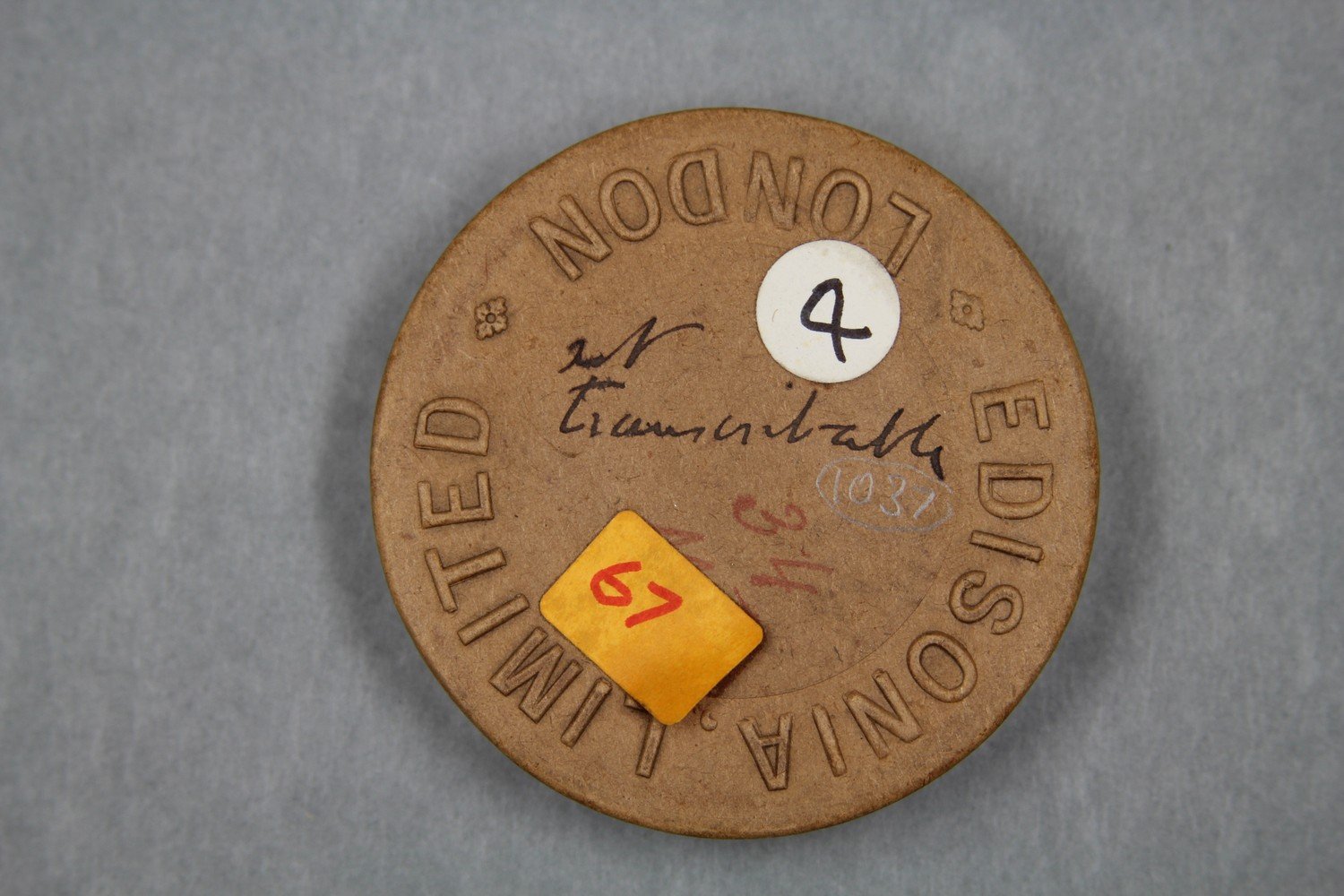 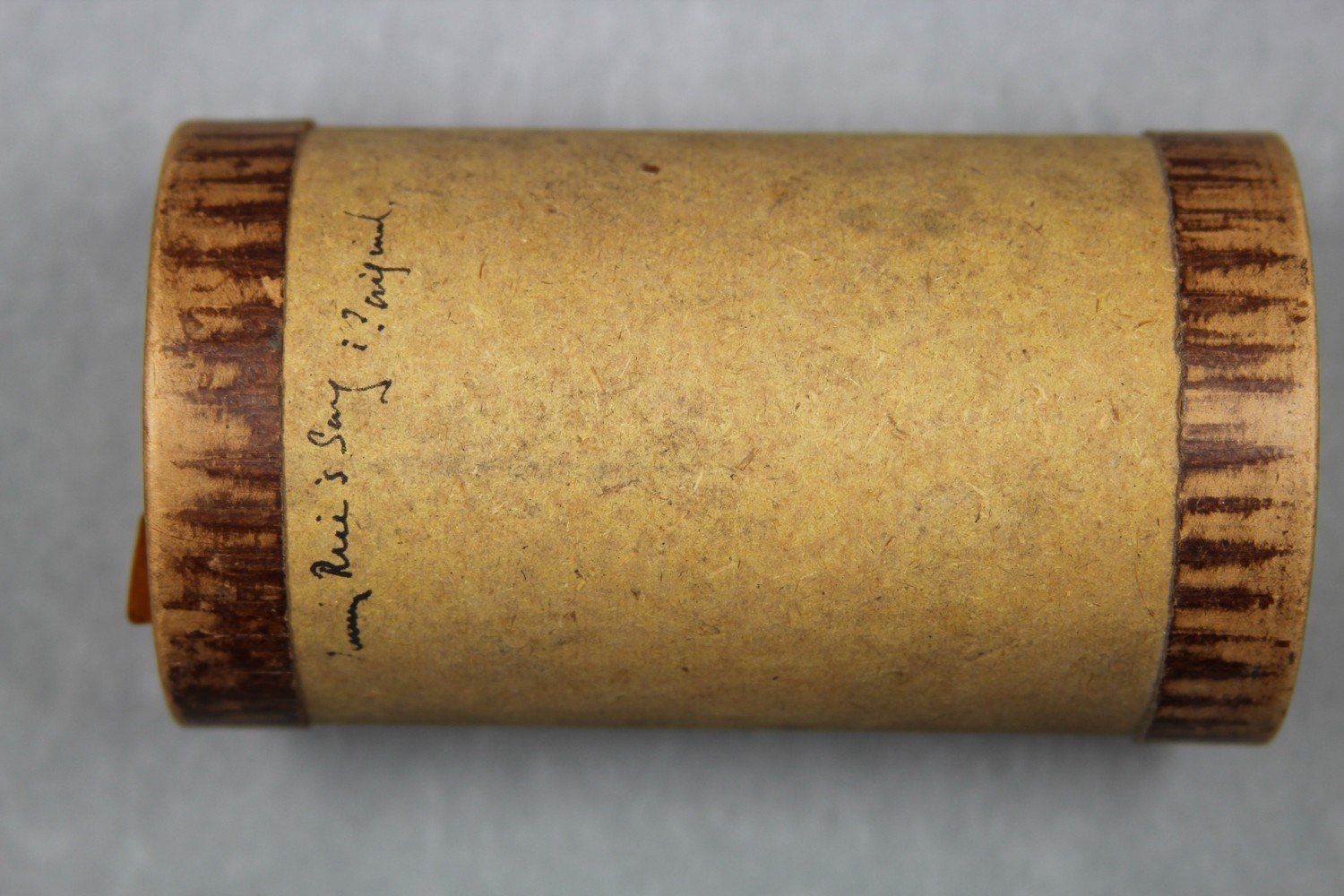     | Myers, C. S. 1898-1899. Journal on Torres Straits anthropological expedition. [manuscript] Haddon Papers. ADD 8073. Cambridge: Cambridge University Library. | ||||||
| C80/1038 | [Song by Uano] | John 'Jack' Bruce (singer, male); Wanu (singer, male) | Mer / Murray Island, Torres Strait Islands | 10 May 1898 – 24 August 1898 | 1-2. Unaccompanied male vocal solo. Inscription on base: ‘Not transcribable. A. Bruce. Self. Uano alone singing song...[indecipherable]…Zeramarkai of Sebeg.' The reference to 'Zeramarkai of Sebeg' suggests this is a keber song. The zera merkai [or markai] is a keber ceremony (Ray 1907). The zera markai keber originated on Dauar / Dowar Island but was subsequently only practised in Sebeg and Er on Mer / Murray Island when a person had died. The participants represent ghosts (Myers & Haddon 1908:129). Alternatively, Haddon wrote that the zeramerkai was ‘always performed at the death of a Komet or Meurem person’ (Haddon 1935:119). Myers wrote that Wanu performed the keber songs VIII and IX (1912:240). However, those songs were connected to the meket siriam, whereas this recording is connected to the zera markai. This recording could therefore possibly be a version of the keber songs VI, VII, X or XI (as labelled by Myers). | The inscription 'Bruce' may refer to John 'Jack' S. Bruce, the only European resident on Mer / Murray Island and was the island’s schoolmaster and magistrate. He was also the main local consultant to Haddon (Kuklick 1998:162). Bruce was appointed in 1885 but was “more or less Protector of the island’s population from 1892-1923” (Beckett 1987:187, Philp 1999:59). Haddon writes about Bruce in the first volume of the Cambridge Reports (1935:100-101). | Poor quality recording with surface noise due to cracked and bandaged cylinder. The recording date range assumes that Myers is indeed the recordist and corresponds to the dates of Myer's stay on Mer / Murray Island. | Field recordings | Myers, C. S. | 1'26" | 1898 Cambridge Anthropological Expedition to Torres Straits | Brown wax cylinder. Cardboard cylinder case. | Alfred Cort Haddon 1898 Expedition (Torres Strait and British New Guinea) Cylinder Collection | British Library | 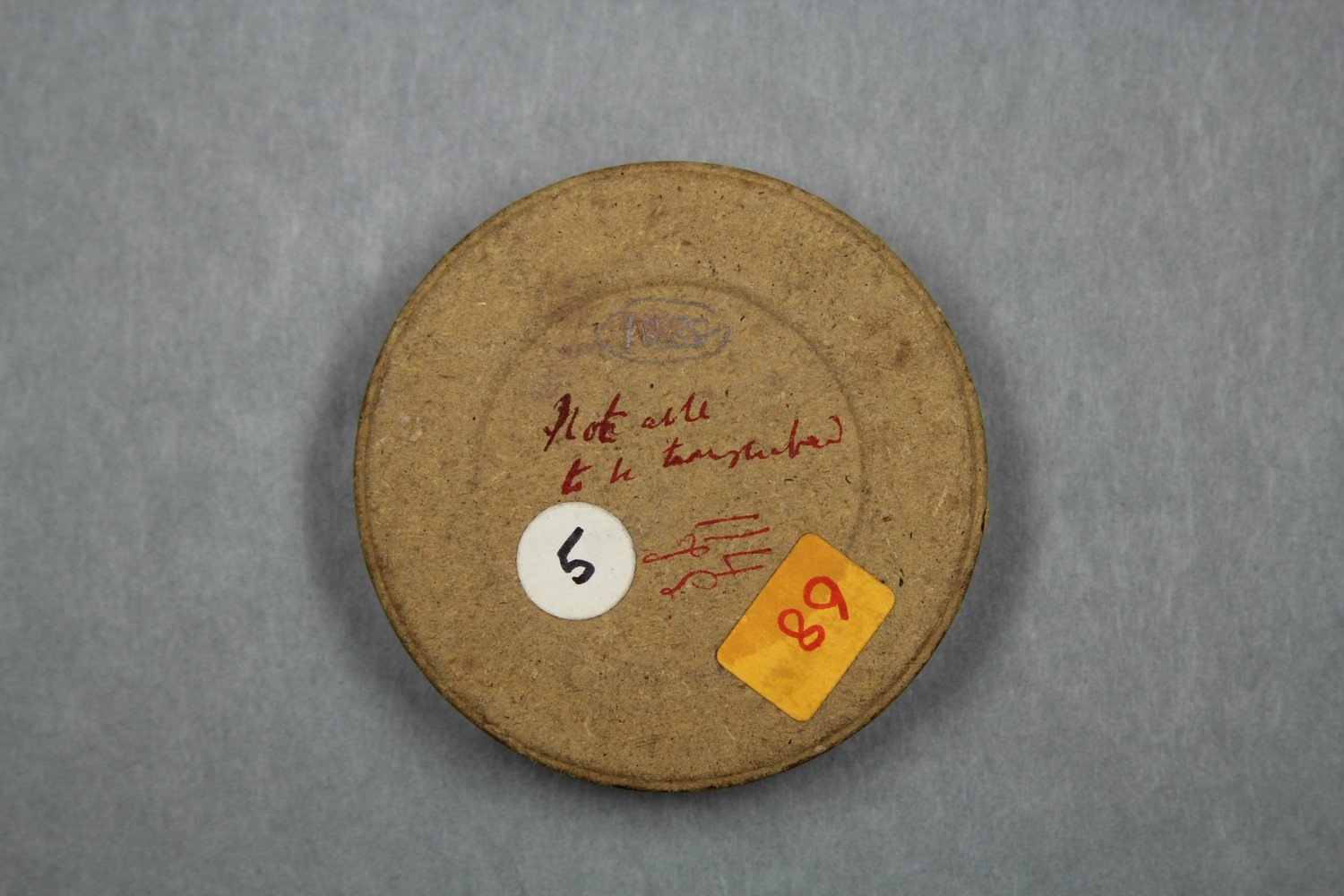 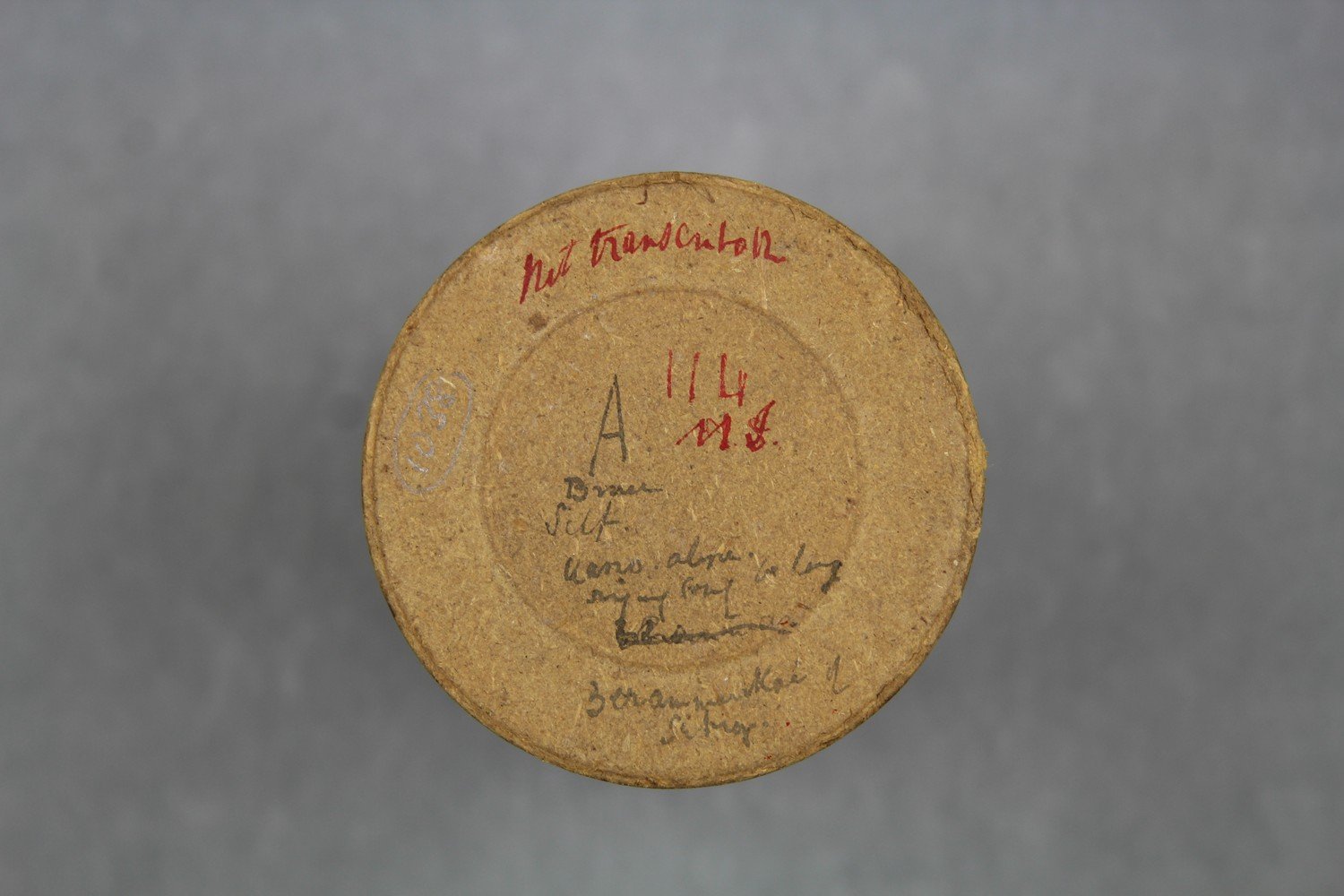     | Beckett, Jeremy. 1987. Torres Strait Islanders: Custom and colonialism. Cambridge: Cambridge University Press. British Library shelfmark General Reference Collection YC.1988.a.5739 | Haddon, A.C. (ed.) 1907. Reports of the Cambridge Anthropological Expedition to Torres Strait: Volume III, The Languages of Torres Strait. Cambridge: Cambridge University Press. British Library shelfmark General Reference Collection YC.2011.b.631. | Haddon, A.C. (ed.) 1912. Reports of the Cambridge Anthropological Expedition to Torres Strait: Volume IV, Arts and Crafts. Cambridge: Cambridge University Press. British Library shelfmark General Reference Collection YC.2011.b.634. | Haddon, A.C. (ed.) 1935. Reports of the Cambridge Anthropological Expedition to Torres Strait: Volume I, General Ethnography. Cambridge: Cambridge University Press. British Library shelfmark General Reference Collection YC.2011.b.630. | Kuklick, Henrika. 1998. “Fieldworkers and physiologists.” In: Herle, A & Rouse, S (eds.) Cambridge and the Torres Strait: Centenary Essays on the 1898 Anthropological Expedition. pp. 158–180. British Library shelfmark General Reference Collection YC.1998.b.5990. | Philp, Jude. 1999. “Everything as it used to be:” Re-creating Torres Strait Islander History in 1898. The Cambridge Journal of Anthropology, Vol. 21, No. 1, pp. 58–78. | |
| C80/1039 | Male vocal solo | Unidentified (singer, male) | Torres Strait Islands | 22 April 1898 – 15 November 1898 | 1. Unaccompanied male speech. No further information. Broken cylinder. | Very poor quality due to broken and bandaged cylinder - almost inaudible. As no specific recording location has been identified, the recording date range is based on when any members of the Cambridge Expedition were present in the Torres Strait in 1898. | Field recordings | 1'32" | 1898 Cambridge Anthropological Expedition to Torres Straits | Brown wax cylinder. Metal cylinder case. | Alfred Cort Haddon 1898 Expedition (Torres Strait and British New Guinea) Cylinder Collection | British Library | 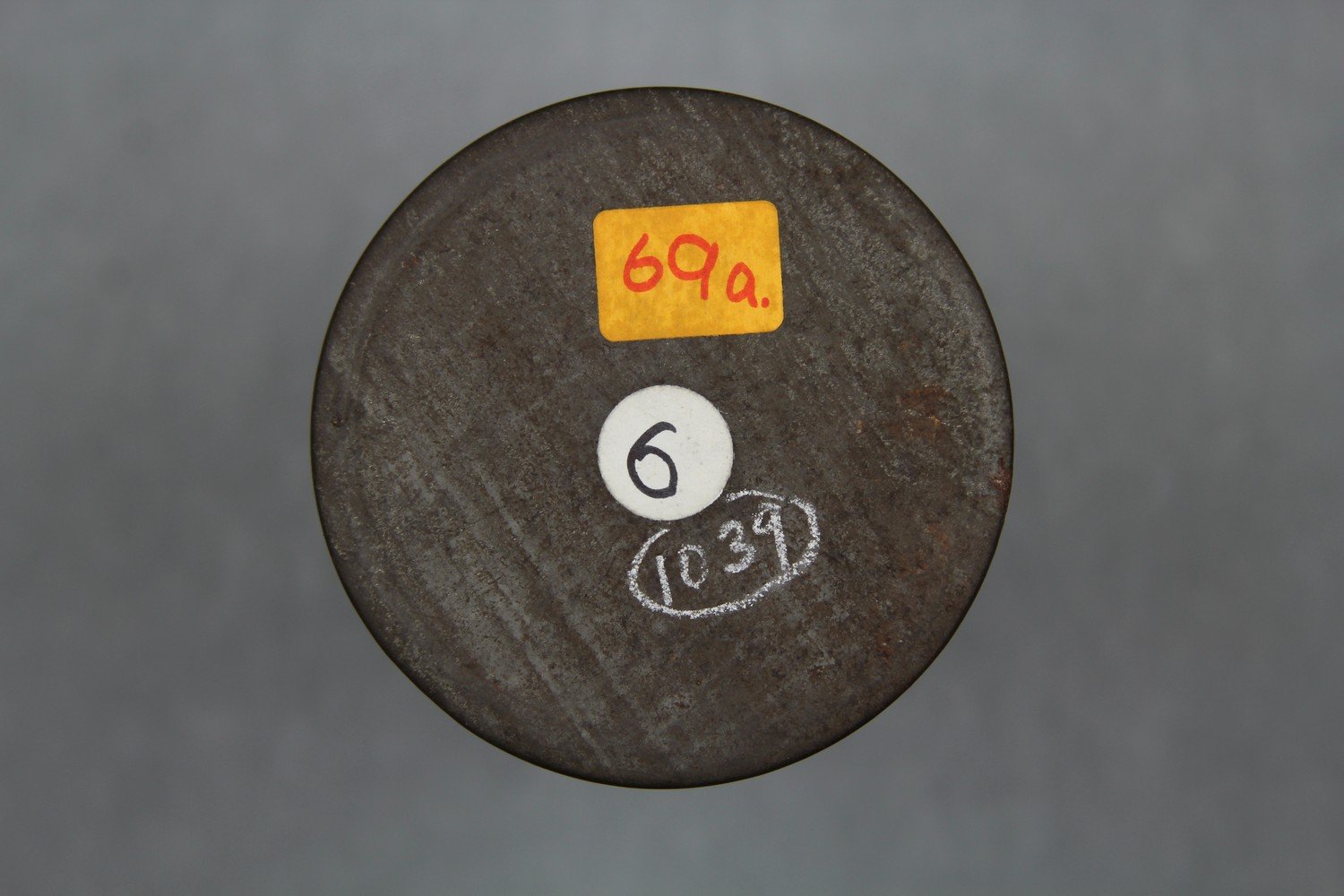      | |||||||||
| C80/1040 | Mabuiag Speech | Unidentified (singer, male) | Mabuiag / Jervis Island, Torres Strait Islands | 3 October 1898 – 22 October 1898 | 1. Announcement: "[indecipherable] ..., Mabuiag". 2. Unaccompanied male vocal solo. Ray’s work on Mabuiag was based on material from Tom (Noboa), Ned (Waria) and Peter (Papi) (Ray 1907:7). | Reasonable quality recording but with weak signal and heavy surface noise. The recording date corresponds to the dates that Expedition members visited Mabuiag / Jervis Island. | Kala Lagaw Ya | Field recordings | Ray, Sidney H. | 1'57" | 1898 Cambridge Anthropological Expedition to Torres Straits | Brown wax cylinder. Metal cylinder case. | Alfred Cort Haddon 1898 Expedition (Torres Strait and British New Guinea) Cylinder Collection | British Library | 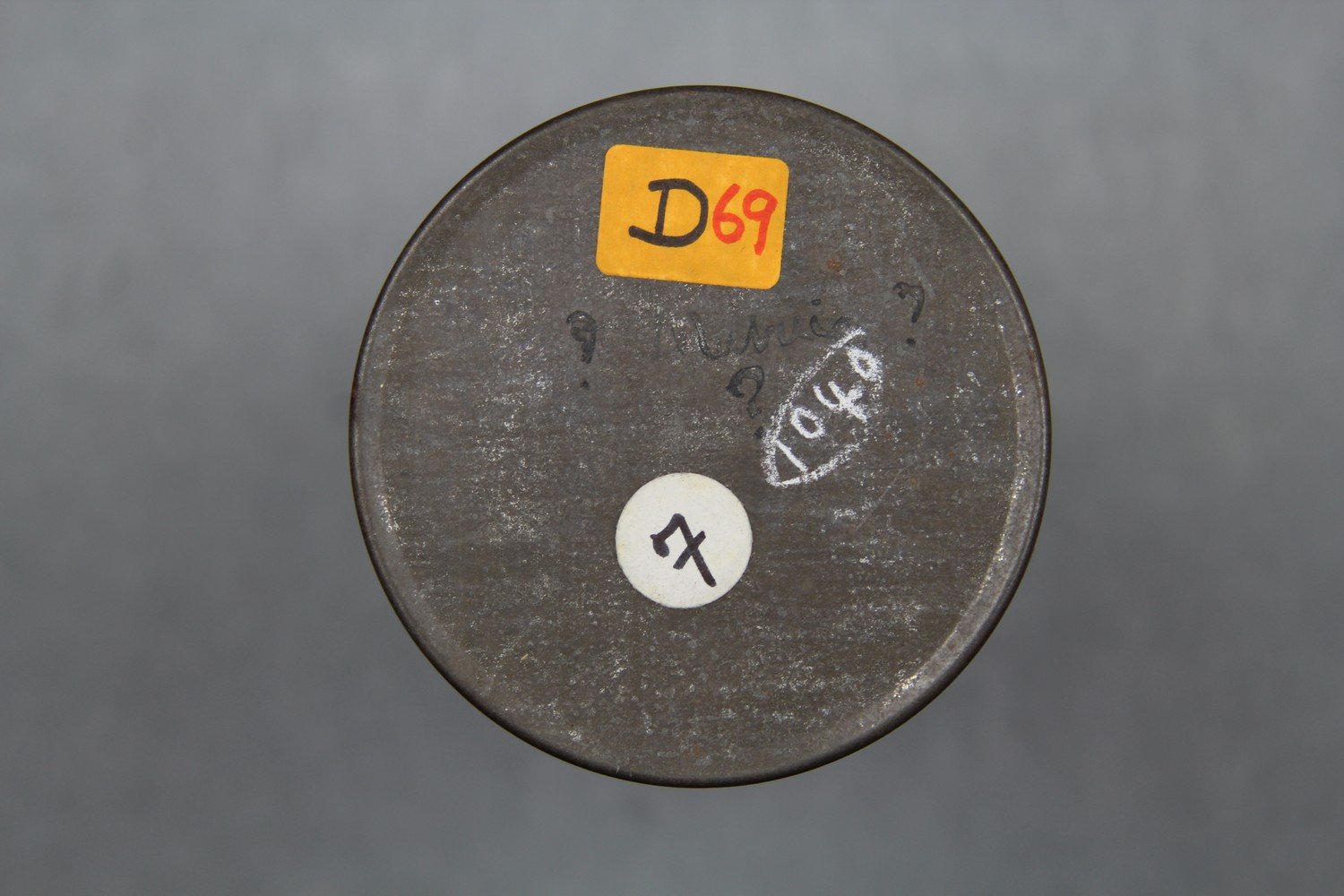      | Haddon, A.C. (ed.) 1907. Reports of the Cambridge Anthropological Expedition to Torres Strait: Volume III, The Languages of Torres Strait. Cambridge: Cambridge University Press. British Library shelfmark General Reference Collection YC.2011.b.631. | ||||||
| C80/1041 | Story of Amipuru | Waria (speaker, male) | Mabuiag / Jervis Island, Torres Strait Islands | 20 October 1898 ? | 1. Announcement: "Amipurungu amaik. Story told by Waria. Mabuiag". 2. Solo male speech. Inscription on inserts: 'Amipurungu umaik / Story told by Waria / Mabuiag' and ‘Prayer – Mamus / of Mabuiag’. This second insert may be from C80/1059. Ray obtained this account from Waria (1907:190). A transcription and translation of the story exists in Vol III of the Cambridge Reports (Ray 1907:220). Waria's original manuscript is part of the Haddon Papers held at Cambridge University Library. A digitised version is also available online via Trove (Series 1000-1999, File 1046, http://nla.gov.au/nla.obj-1263136977). Ray recorded songs on Mabuiag, Yam and Saibai (Myers 1912:261) | Reasonable quality recording. Ray mentions his work with Waria in journal entries dated 17, 19 and 20 October (1898:89-90). He notes that Waria wrote the story of Amipuru on 20 October 1898. | Kala Lagaw Ya | Field recordings | Ray, Sidney H. | 2'38" | 1898 Cambridge Anthropological Expedition to Torres Straits | Brown wax cylinder. Metal cylinder case. | Alfred Cort Haddon 1898 Expedition (Torres Strait and British New Guinea) Cylinder Collection | British Library |  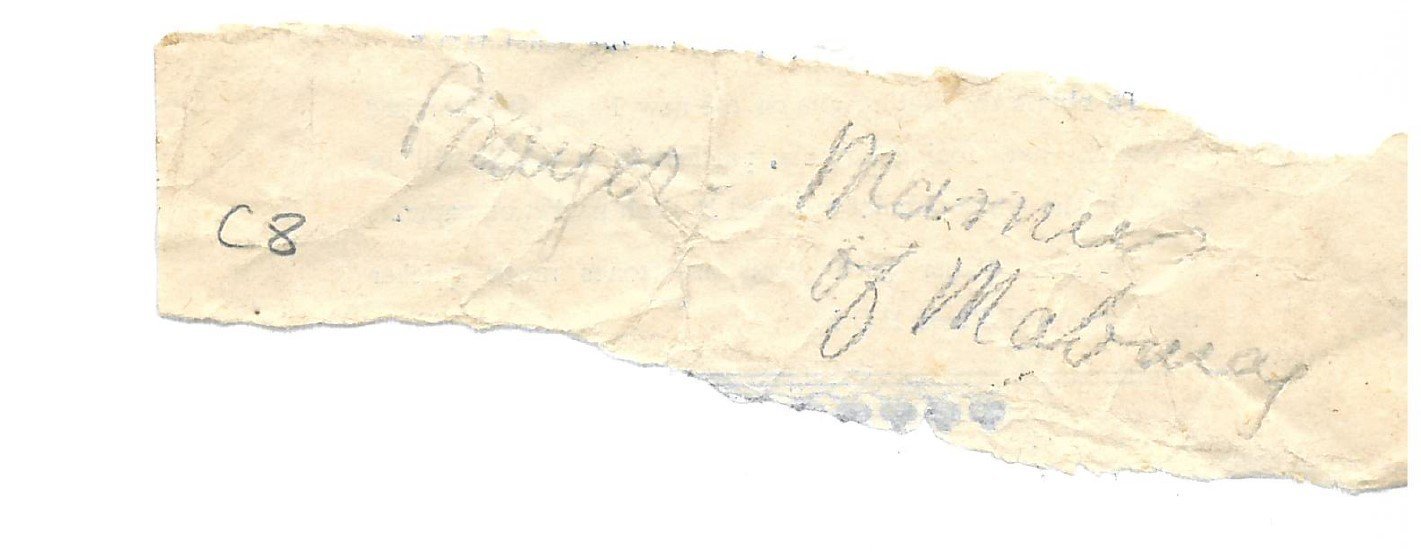     | Haddon, A.C. (ed.) 1907. Reports of the Cambridge Anthropological Expedition to Torres Strait: Volume III, The Languages of Torres Strait. Cambridge: Cambridge University Press. British Library shelfmark General Reference Collection YC.2011.b.631. | Ray, S.H. 1898-99. Journal: Torres Straits Expedition 1898-99. [manuscript] Copies of journals and correspondence of Sidney Herbert Ray. MS 380314. London: SOAS Library. | |||||
| C80/1043 | Story | Unidentified (speaker, male) | Mabuiag / Jervis Island, Torres Strait Islands | 3 October 1898 – 22 October 1898 | 1. Announcement: "Story about [indecipherable] by [indecipherable]." 2. Solo male speech. Ray’s work on Mabuiag was based on material from Tom (Noboa), Ned (Waria) and Peter (Papi) (Ray 1907:7). Ray recorded songs on Mabuiag, Yam and Saibai (Myers 1912:261). | Reasonable quality recording but with surface noise. The recording date corresponds to the dates that Expedition members visited Mabuiag / Jervis Island. From Alice Moyle's 1985 audition sheets: '[2nd voice ends with fragment of singing. A.M.]'. | Kala Lagaw Ya | Field recordings | Ray, Sidney H. | 2'13" | 1898 Cambridge Anthropological Expedition to Torres Straits | Brown wax cylinder. Metal cylinder case. | Alfred Cort Haddon 1898 Expedition (Torres Strait and British New Guinea) Cylinder Collection | British Library | 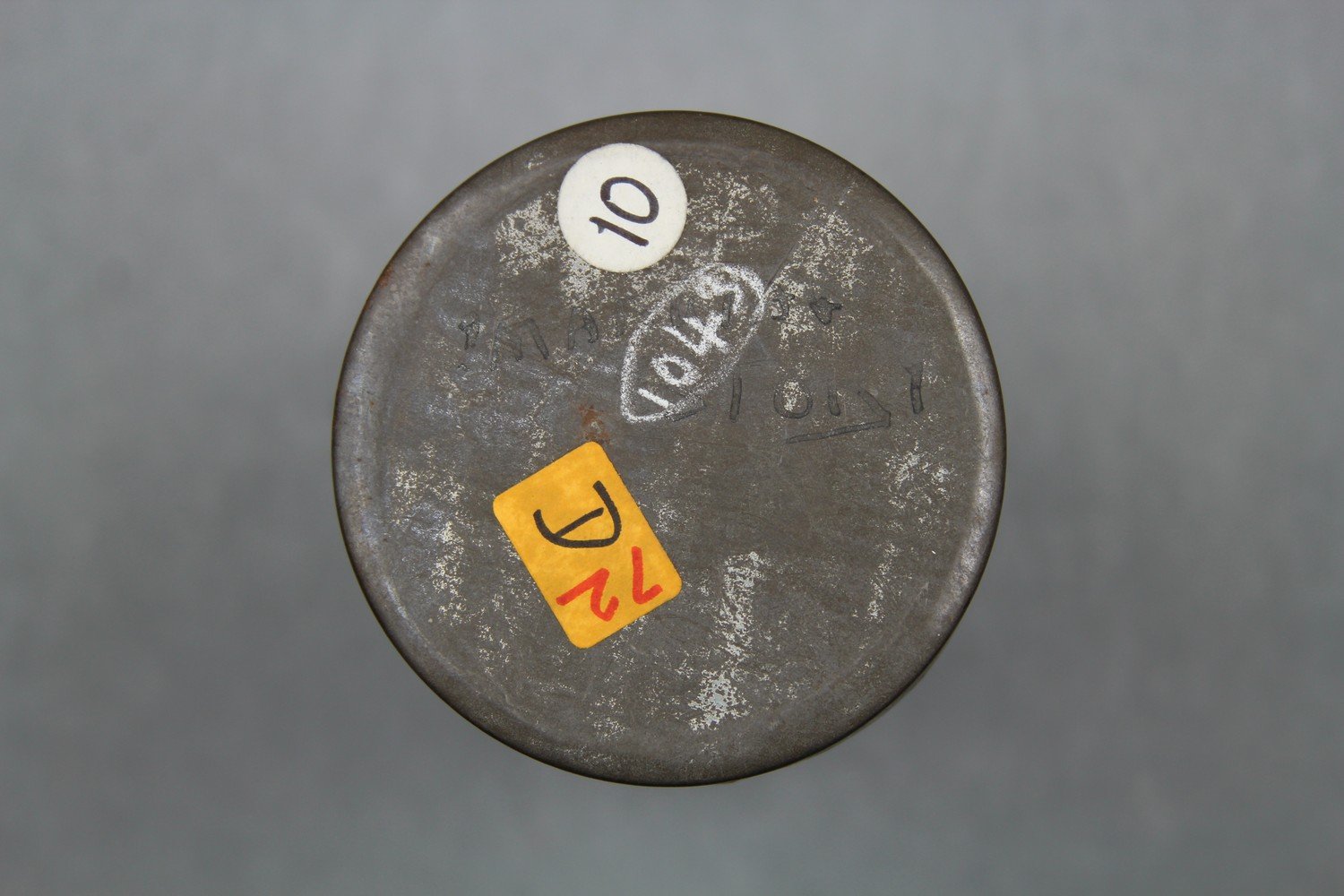      | Haddon, A.C. (ed.) 1907. Reports of the Cambridge Anthropological Expedition to Torres Strait: Volume III, The Languages of Torres Strait. Cambridge: Cambridge University Press. British Library shelfmark General Reference Collection YC.2011.b.631. | Haddon, A.C. (ed.) 1912. Reports of the Cambridge Anthropological Expedition to Torres Strait: Volume IV, Arts and Crafts. Cambridge: Cambridge University Press. British Library shelfmark General Reference Collection YC.2011.b.634. | Alice Moyle (AIAS, now AIATSIS) completed audition sheets for the Torres Strait cylinder collection in 1985. Copies of these are held at the British Library. | ||||
| C80/1045 | About Saibai | Jack Assaii (speaker, male) | Saibai Island, Torres Strait Islands | 23 October 1898 – 24 October 1898 | 1. Announcement: "About Saibai, by Jack Assaii." 2. Male speech. No further information. Ray recorded songs on Mabuiag, Yam and Saibai (Myers 1912:261). | Poor quality recording with weak signal and heavy surface noise. The recording date range is based on when Haddon, Seligman and Ray travelled to Saibai. Haddon notes in his journal that on Monday 24 October 1898, "Ray worked the phonograph & got some new records" (1898:253). In his journal, Ray describes working with Jack and recording cylinders on 23 and 24 October (1898:90). | Kala Lagaw Ya (Possibly Kalaw Kawaw Ya, a variety of Kala Lagaw Ya spoke on Saibai.) | Field recordings | Ray, Sidney H. | 2'10" | 1898 Cambridge Anthropological Expedition to Torres Straits | Brown wax cylinder. Metal cylinder case. | Alfred Cort Haddon 1898 Expedition (Torres Strait and British New Guinea) Cylinder Collection | British Library | 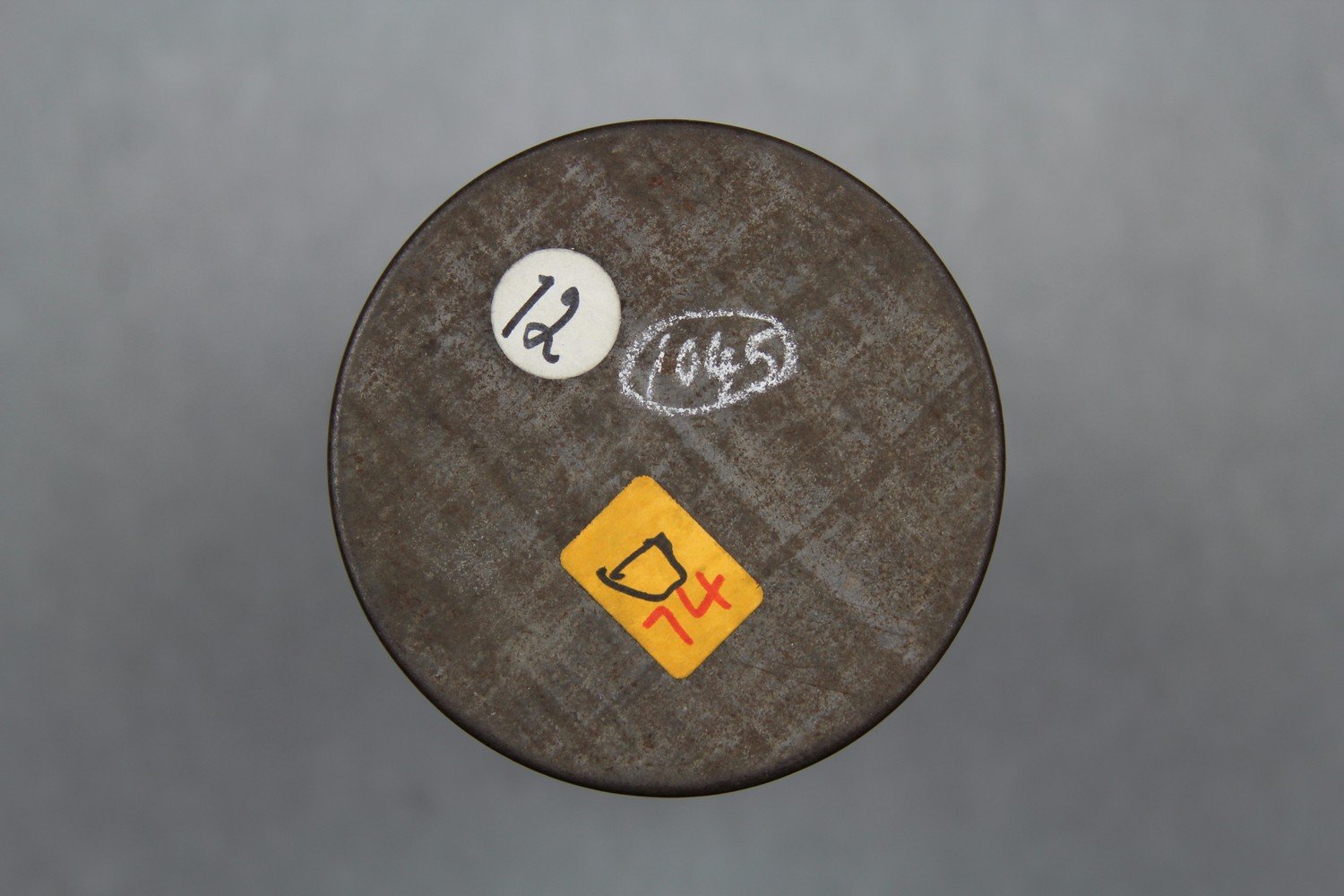      | Haddon, A.C. (ed.) 1912. Reports of the Cambridge Anthropological Expedition to Torres Strait: Volume IV, Arts and Crafts. Cambridge: Cambridge University Press. British Library shelfmark General Reference Collection YC.2011.b.634. | Ray, S.H. 1898-99. Journal: Torres Straits Expedition 1898-99. [manuscript] Copies of journals and correspondence of Sidney Herbert Ray. MS 380314. London: SOAS Library. | Haddon, A.C. 1898-89. Journal. [manuscript] MS.HADDON. Cambridge: Cambridge University Library. | ||||
| C80/1046 | Sagula na Puidam | Keken Nubora [Keke Nguru?] (singer) | Mabuiag / Jervis Island, Torres Strait Islands | 3 October 1898 – 22 October 1898 | 1. Announcement: "Sagula na Puidam, sung by Keken Nubora." 2. Unaccompanied male vocal. No further information This recording possibly corresponds to Charles S. Myers' Mabuiag Song IV. He translated this to ‘Ga’s play’s song’ (1912:269). According to Ray (1907), 'sagul' is 'a play; dancing' and nau-puidai ‘to sing’. Possibly a playing or dancing song (Ray 1907:120). | Reasonable quality recording but with weak signal and heavy surface noise. The recording date corresponds to the dates that Expedition members visited Mabuiag / Jervis Island. From Alice Moyle's 1985 audition sheets: Notes name as 'Keken Bubora'. Moyle (1985) also identified this cylinder as from Mabuiag. | Kala Lagaw Ya | Field recordings | Ray, Sidney H. | 2'05" | 1898 Cambridge Anthropological Expedition to Torres Straits | Brown wax cylinder. Metal cylinder case. | Alfred Cort Haddon 1898 Expedition (Torres Strait and British New Guinea) Cylinder Collection | British Library | 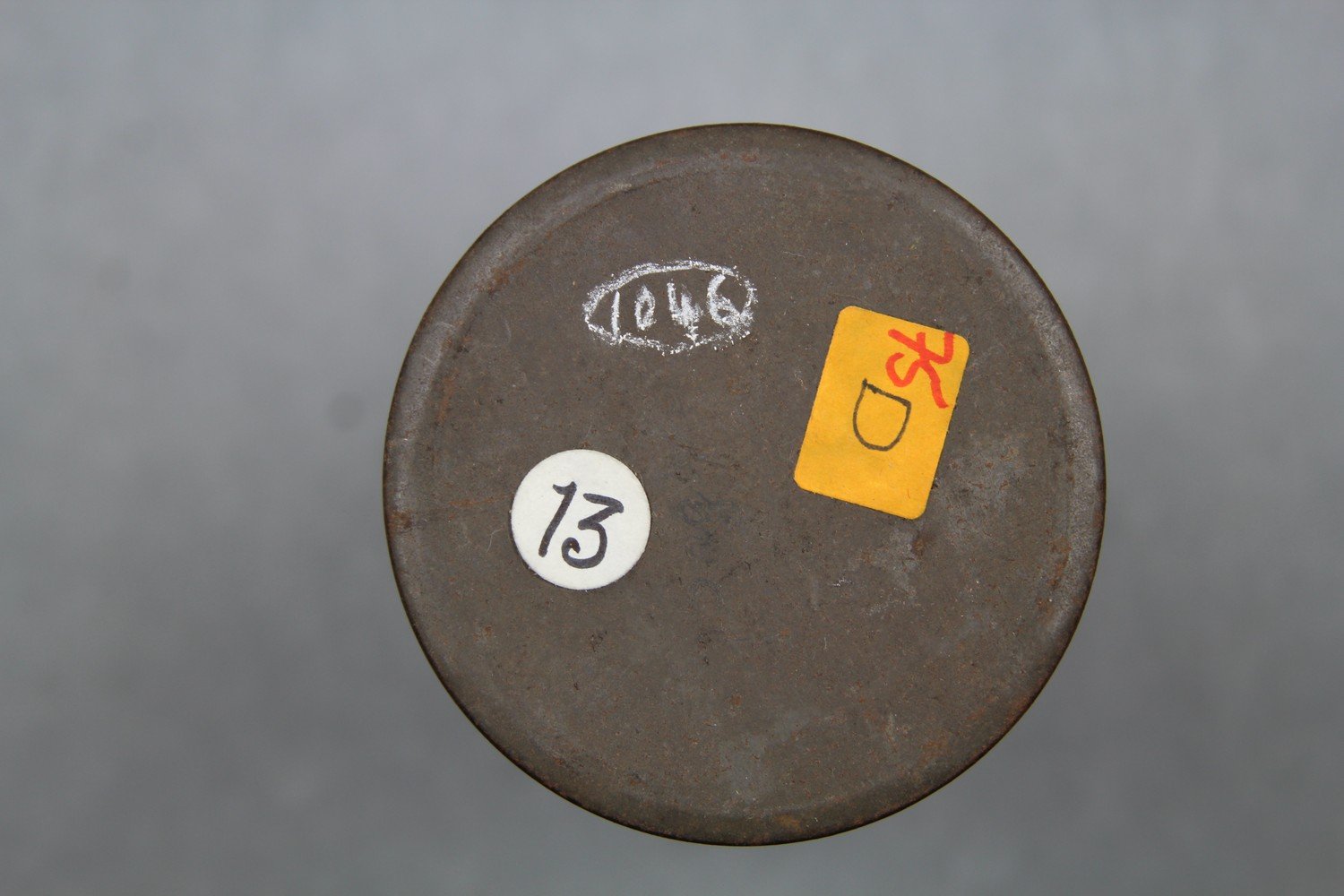      | Haddon, A.C. (ed.) 1907. Reports of the Cambridge Anthropological Expedition to Torres Strait: Volume III, The Languages of Torres Strait. Cambridge: Cambridge University Press. British Library shelfmark General Reference Collection YC.2011.b.631. | Haddon, A.C. (ed.) 1912. Reports of the Cambridge Anthropological Expedition to Torres Strait: Volume IV, Arts and Crafts. Cambridge: Cambridge University Press. British Library shelfmark General Reference Collection YC.2011.b.634. | Alice Moyle (AIAS, now AIATSIS) completed audition sheets for the Torres Strait cylinder collection in 1985. Copies of these are held at the British Library. | Moyle, A. 1985. The Torres Strait phonograph recordings: a preliminary listing of contents. Australian Aboriginal Studies 2, pp. 53-57. | |||
| C80/1047 | Push Canoe | Gasu (singer, male) | Mer / Murray Island, Torres Strait Islands | 10 May 1898 – 24 August 1898 | Male vocal solo. Inscription on insert notes (now no longer available): 'Song IVA: Malu. Gasu Malu / 'push canoe''. Inscription on side: ‘Gasu. Malu “Push canoe”. This recording corresponds to Charles S. Myers' Malu Song IV A. Adud leluti translates to 'bad man' (Haddon & Myers 1908:297). Ray translates adud as 'bad' or 'evil' (Ray 1907:132). Three records were obtained, two sung by Ulai and Gasu (Myers 1912:239-240). Song IV A was performed during the exhibition of the sacred Malu-Bomai masks and also during the dance of the Beizam Boai after the initiation ceremonies.” (Myers 1912:243). "The fourth song was uttered in a very low voice, and was followed by yet more highly sacred words which were quickly whispered so that no one may hear them save those who had been initiated into the Malu mysteries" (Myers & Haddon 1908:150). Published and analysed in Myers (1912:249-251, 267). Words also published in Haddon & Myers (1908:297-299). Musical notation is also included in Anthony Wilkin's field notebook as Song H (1898:251). | Reasonable quality recording. The recording date range assumes that Myers is indeed the recordist and corresponds to the dates of Myer's stay on Mer / Murray Island. In Alice Moyle's 1985 audition sheets, she linked this cylinder to other similar recordings: A4, A7, A10, C103, C104, C105, C105A. | Meriam Mir | Field recordings | Myers, C. S. | 1'54" | 1898 Cambridge Anthropological Expedition to Torres Straits | Brown wax cylinder. Cardboard cylinder case. Edisonia. | Alfred Cort Haddon 1898 Expedition (Torres Strait and British New Guinea) Cylinder Collection | British Library | 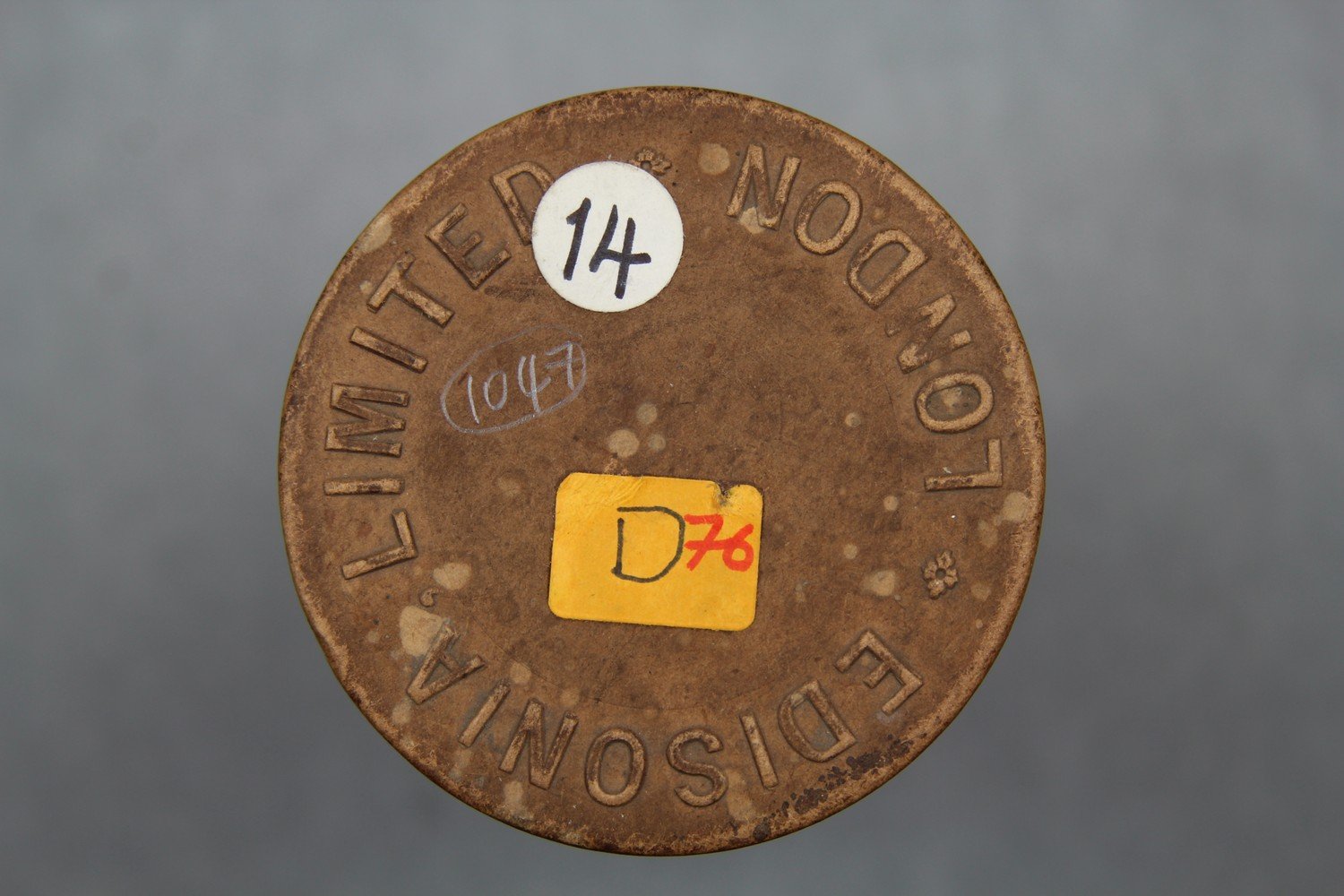 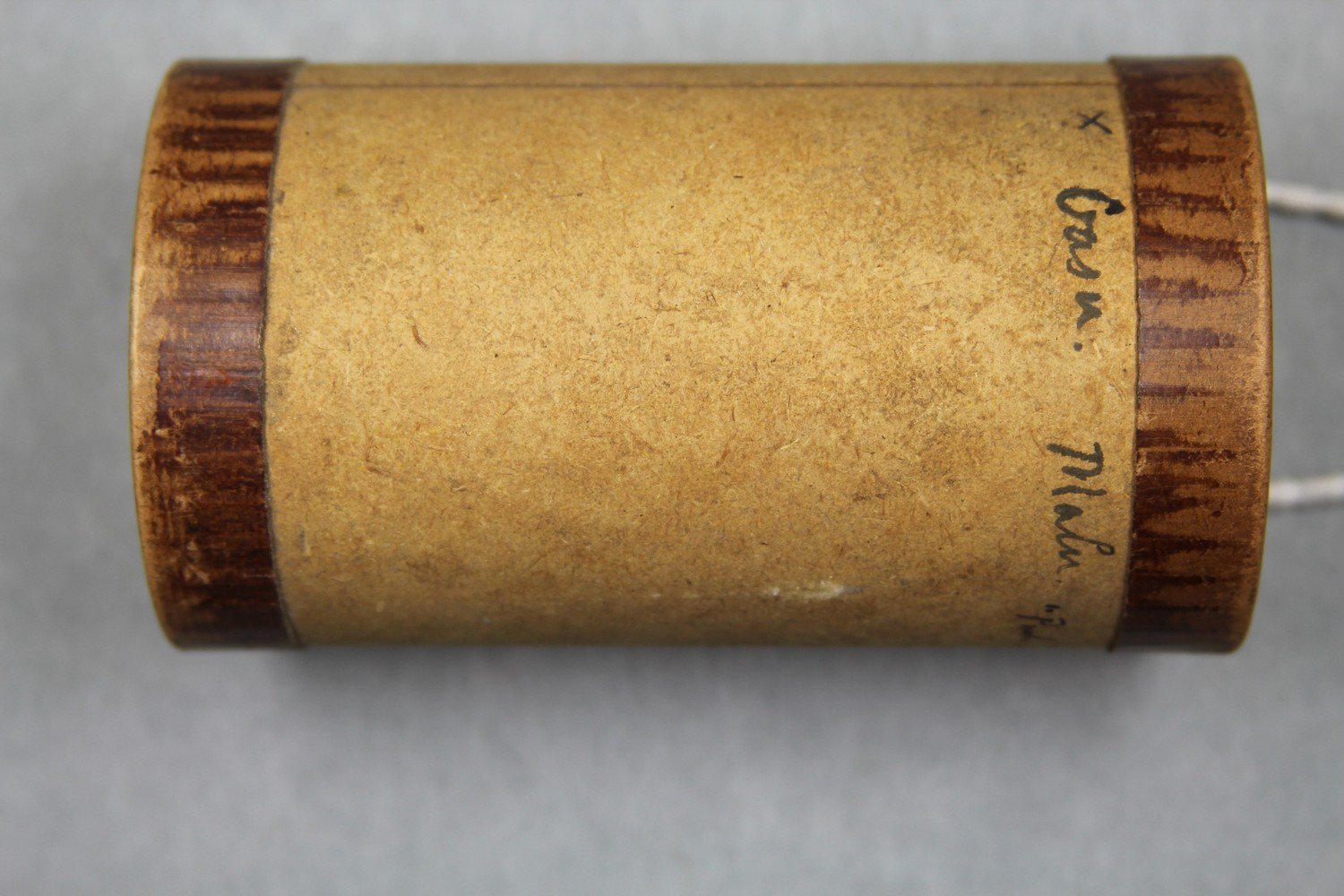     | Haddon, A.C. (ed.) 1907. Reports of the Cambridge Anthropological Expedition to Torres Strait: Volume III, The Languages of Torres Strait. Cambridge: Cambridge University Press. British Library shelfmark General Reference Collection YC.2011.b.631. | Haddon, A.C. (ed.) 1908. Reports of the Cambridge Anthropological Expedition to Torres Strait: Volume VI, Sociology, Magic and Religion of the Eastern Islanders. Cambridge: Cambridge University Press. British Library shelfmark General Reference Collection YC.2011.b.632. | Haddon, A.C. (ed.) 1912. Reports of the Cambridge Anthropological Expedition to Torres Strait: Volume IV, Arts and Crafts. Cambridge: Cambridge University Press. British Library shelfmark General Reference Collection YC.2011.b.634. | Wilkin, Anthony. 1898. Field Notebook [File 1027]. [manuscript] M2731-M2740: Torres Straits, 1888 - 1936, Cambridge University Library. See http://nla.gov.au/nla.obj-765702983 | Alice Moyle (AIAS, now AIATSIS) completed audition sheets for the Torres Strait cylinder collection in 1985. Copies of these are held at the British Library. | ||
| C80/1048 | Wei | Gasu (singer, male); Ulai (singer, male); Ari (singer, male, Mamoose of Mer / Murray Island) | Mer / Murray Island, Torres Strait Islands | 10 May 1898 – 24 August 1898 | Male vocal group. No further information available. Inscription on side: 'Malo “Wai”. Gasu. Ulai. Lin/Hin (?). Ari'. This is likely a Malu song based on its title. Both Myers (1912) and Ray (1907) translate 'wei' as 'alas!' with Ray noting that this was an exclamation expressing sorrow. Alternatively spelled weu. | Very poor quality due to broken cylinder. The recording date range assumes that Myers is indeed the recordist and corresponds to the dates of Myer's stay on Mer / Murray Island. Myers (1912:240): 'With one or two exceptions the words of the Malu songs clearly belong to the language of the eastern islands.' | Meriam Mir | Field recordings | Myers, C. S. | 1'10" | 1898 Cambridge Anthropological Expedition to Torres Straits | Brown wax cylinder. Cardboard cylinder case. | Alfred Cort Haddon 1898 Expedition (Torres Strait and British New Guinea) Cylinder Collection | British Library |  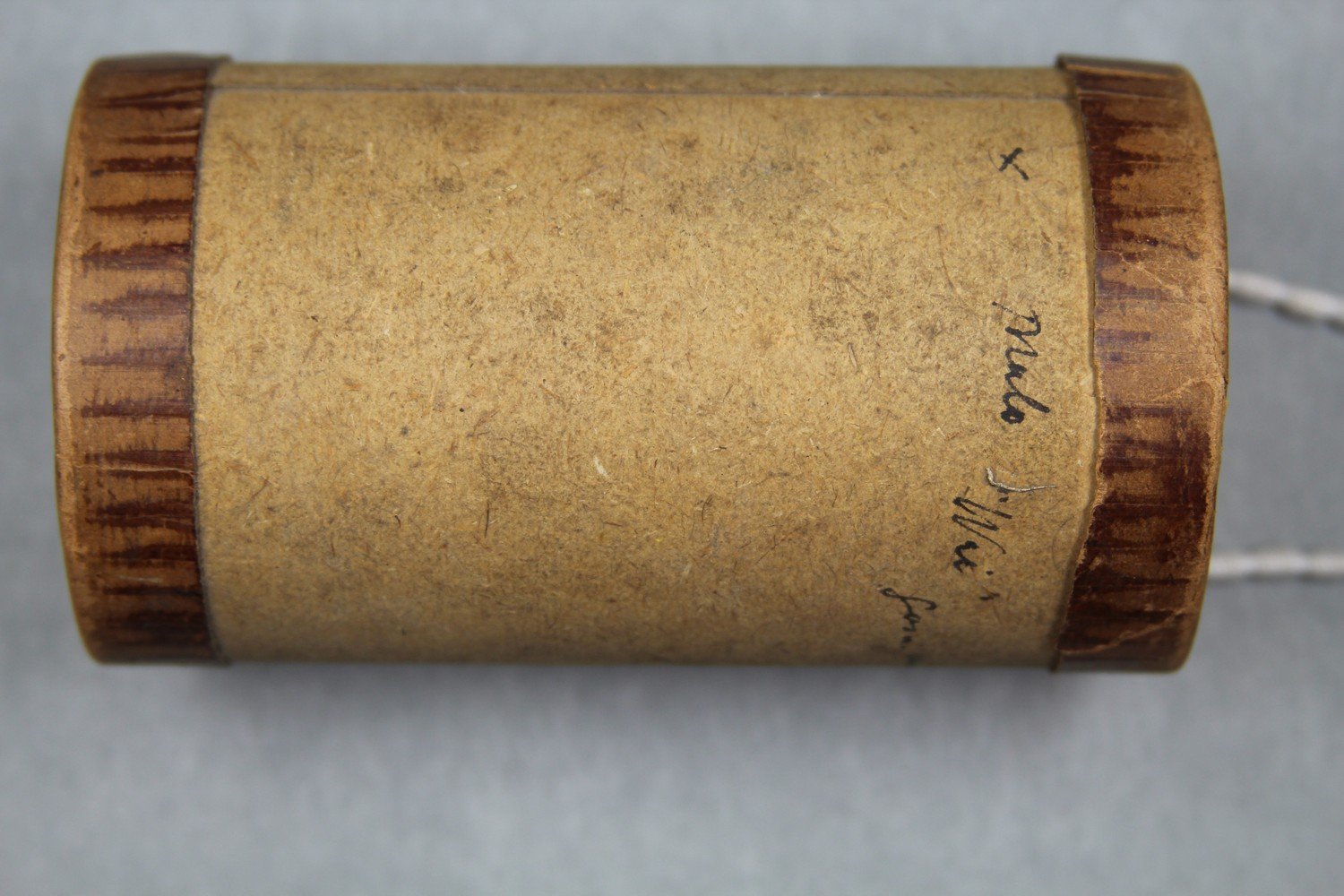 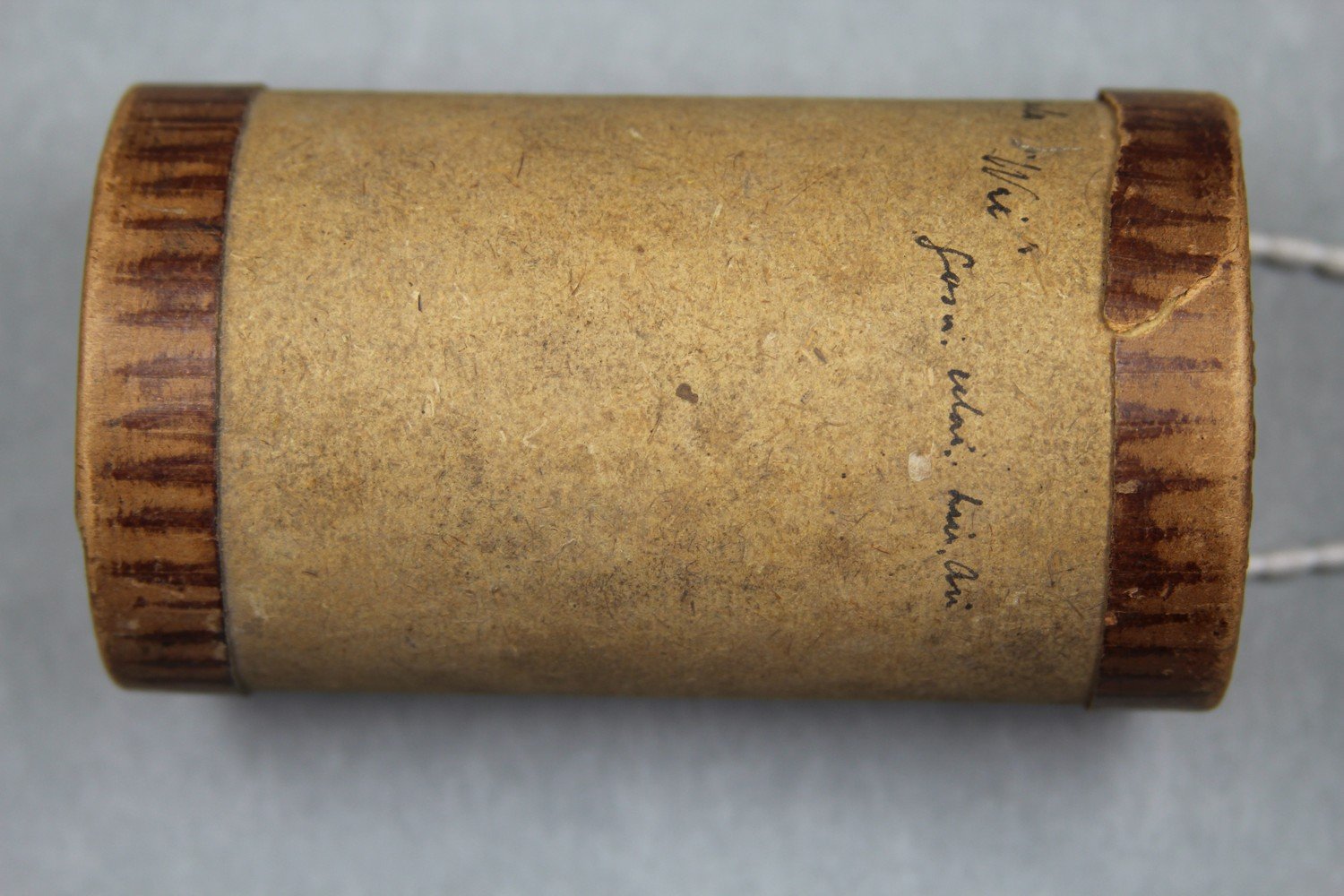    | Haddon, A.C. (ed.) 1907. Reports of the Cambridge Anthropological Expedition to Torres Strait: Volume III, The Languages of Torres Strait. Cambridge: Cambridge University Press. British Library shelfmark General Reference Collection YC.2011.b.631. | Haddon, A.C. (ed.) 1912. Reports of the Cambridge Anthropological Expedition to Torres Strait: Volume IV, Arts and Crafts. Cambridge: Cambridge University Press. British Library shelfmark General Reference Collection YC.2011.b.634. | |||||
| C80/1049 | Wrestling Song | Minami, S. (singer, male) | Torres Strait Islands | 22 April 1898 – 15 November 1898 | 1. Announcement: "Sumo Jinku, wrestling song by S. Minami". 2. Unaccompanied male vocal solo. This is a Japanese song, with 'jinku' meaning ‘song' (Ferranti, et al. 2001 via Grove Music Online). Inscription on insert notes: 'Sumo Jinku / Wrestling song / by S. Minami.' On reverse: previous notes from recordist. The paper must have been reused. | Poor quality recording with weak signal and surface noise. As no specific recording location has been identified, the recording date range is based on when any members of the Cambridge Expedition were present in the Torres Strait in 1898. However, Sidney Ray noted that he attended a 'conversazione' given by Japanese Christians on Thursday Island on 29 April 1898 (1898:34-35). Japanese songs (described as uda [sic]) were performed with shamisen accompaniment. | Japanese | Field recordings | 1'53" | 1898 Cambridge Anthropological Expedition to Torres Straits | Brown wax cylinder. Metal cylinder case. | Alfred Cort Haddon 1898 Expedition (Torres Strait and British New Guinea) Cylinder Collection | British Library |       | Ray, S.H. 1898-99. Journal: Torres Straits Expedition 1898-99. [manuscript] Copies of journals and correspondence of Sidney Herbert Ray. MS 380314. London: SOAS Library. | |||||||
| C80/1050 | Hunting Song | Minami, S. (singer, male) | Torres Strait Islands | 22 April 1898 – 15 November 1898 | 1. Announcement: "Hunting song, Kariudo uta, by S. Minami." 2. Unaccompanied male vocal solo. This is a Japanese song, with 'kariudo uta' translating to 'hunter song'. Inscription on insert notes: 'Hunting Song / Kariudo Uta / by S. Minami.' | Reasonable quality recording. As no specific recording location has been identified, the recording date range is based on when any members of the Cambridge Expedition were present in the Torres Strait in 1898. However, Sidney Ray noted that he attended a 'conversazione' given by Japanese Christians on Thursday Island on 29 April 1898 (1898:34-35). Japanese songs (described as uda [sic]) were performed with shamisen accompaniment. | Japanese | Field recordings | 2'43" | 1898 Cambridge Anthropological Expedition to Torres Straits | Brown wax cylinder. Metal cylinder case. | Alfred Cort Haddon 1898 Expedition (Torres Strait and British New Guinea) Cylinder Collection | British Library | 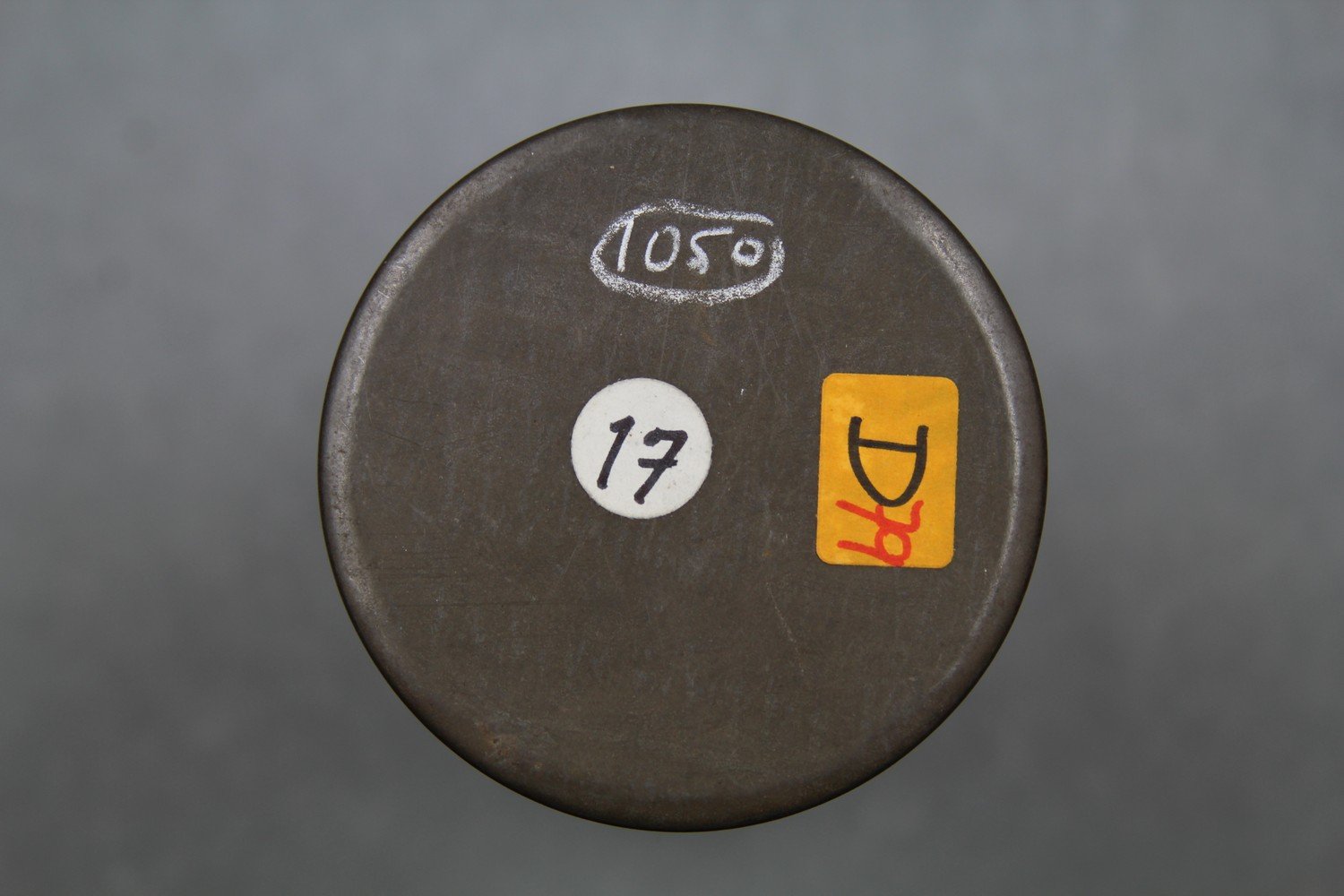      | Ray, S.H. 1898-99. Journal: Torres Straits Expedition 1898-99. [manuscript] Copies of journals and correspondence of Sidney Herbert Ray. MS 380314. London: SOAS Library. | |||||||
| C80/1051 | Workman's Song | Fujita, K. (singer, male) | Torres Strait Islands | 22 April 1898 – 15 November 1898 | 1. Announcement: "[Indecipherable] … by K Fujita". 2. Unaccompanied male vocal solo. 3. Indec. announcement. 4. Unaccompanied male vocal solo. Inserted in the cylinder were two notes: '1) Music/Murray[?] for Dauar cliffs. / 2 [illeg] / cave drawing / HMS Sheldrake / pearls'. 2) [on reverse] workman's song / Dokata Bushi'; 3) Tud {male sign} / Murray I.? / -- child / -- Bamba / Dauar / Murray I 1845 Fly / 1889 Mission, / Tut [illeg] / Saibai -- / Murray --'; [on reverse] 4) Aho darakia / Fools' sermon / by K. Fujita'. This is a Japanese song, with 'bushi' meaning ‘tune, melody' (Ferranti, et al. 2001 via Grove Music Online). 'Dokata' translates to 'labourer, construction worker'. The latter is noted as derogatory ( https://en.wiktionary.org/wiki/%E5%9C%9F%E6%96%B9#Japanese). 阿呆 or 'aho' is a slang word meaning 'fool'. It is more commonly used in the Kansai region of Japan (https://ja.wikipedia.org/wiki/%E9%98%BF%E5%91%86). H.M.S. Fly was commanded by Captain F.P. Blackwood, 1842-46. The narrative (Jukes 1847) mentions Muralug, Nagir, Yam, Umaga, Damut, Kodal, Masig, Erub and Mer (Haddon 1935:12). Haddon presented a copy of a plate in Juke's "Voyage of the 'Fly'" during a lantern slide entertainment on Mer / Murray Island (Haddon 1898:67; 1901:37). | Reasonable quality recording As no specific recording location has been identified, the recording date range is based on when any members of the Cambridge Expedition were present in the Torres Strait in 1898. However, Sidney Ray noted that he attended a 'conversazione' given by Japanese Christians on Thursday Island on 29 April 1898 (1898:34-35). Japanese songs (described as uda [sic]) were performed with shamisen accompaniment. | Japanese | Field recordings | 2'02" | 1898 Cambridge Anthropological Expedition to Torres Straits | Brown wax cylinder. Metal cylinder case. | Alfred Cort Haddon 1898 Expedition (Torres Strait and British New Guinea) Cylinder Collection | British Library | 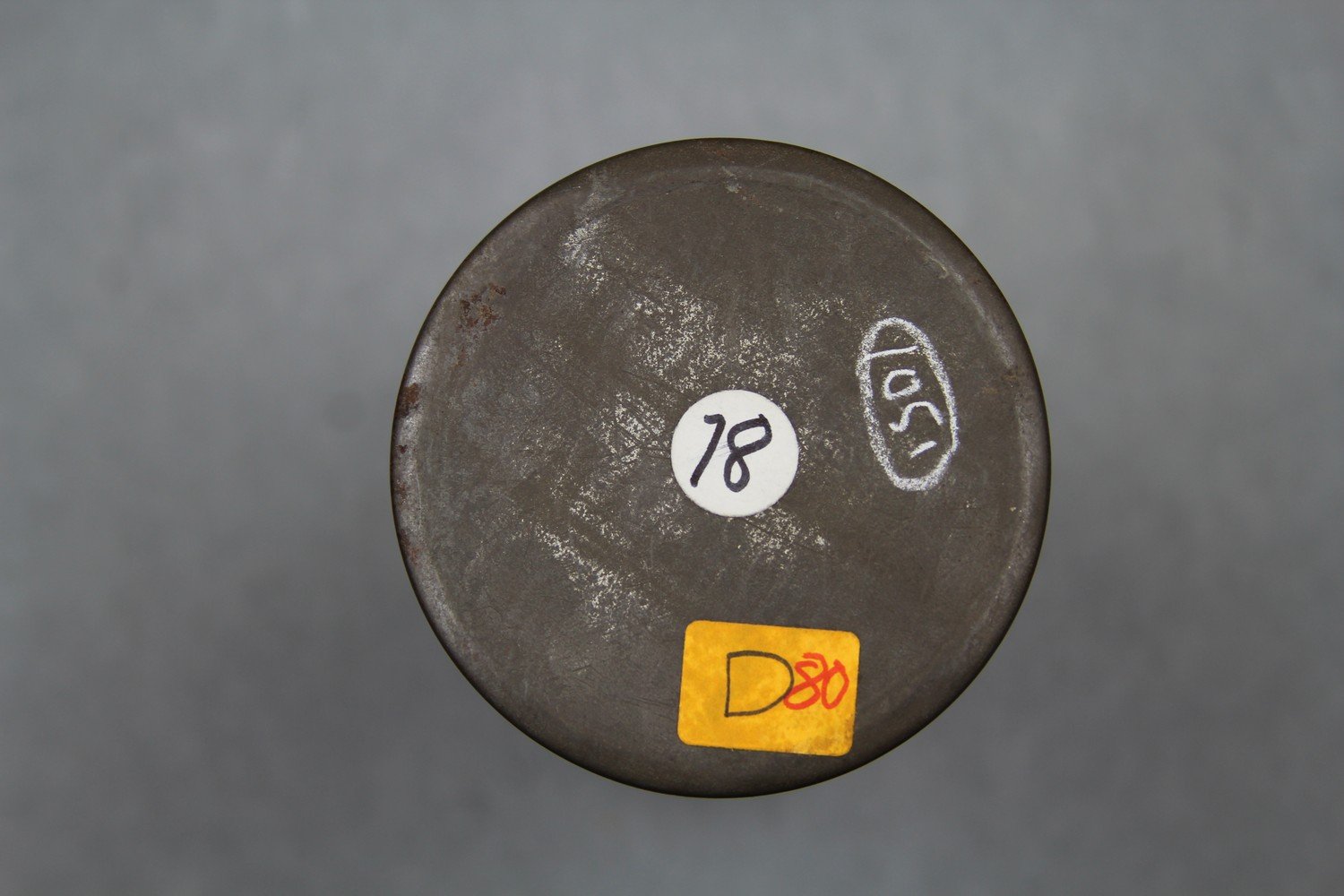 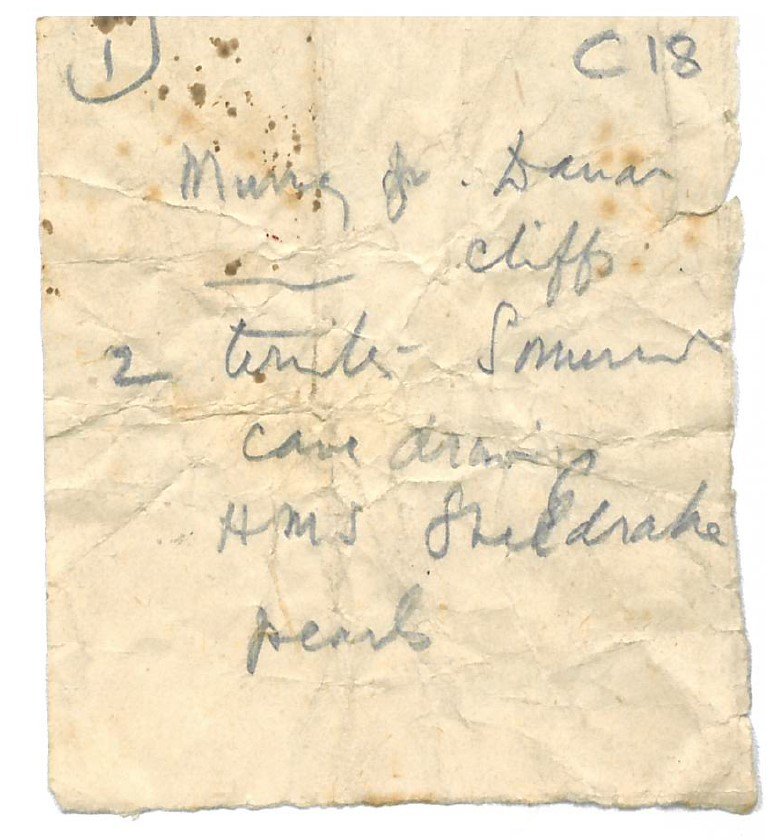     | Ray, S.H. 1898-99. Journal: Torres Straits Expedition 1898-99. [manuscript] Copies of journals and correspondence of Sidney Herbert Ray. MS 380314. London: SOAS Library. | Haddon, A.C. 1898-89. Journal. [manuscript] MS.HADDON. Cambridge: Cambridge University Library. | Haddon, A.C. (ed.) 1935. Reports of the Cambridge Anthropological Expedition to Torres Strait: Volume I, General Ethnography. Cambridge: Cambridge University Press. British Library shelfmark General Reference Collection YC.2011.b.630. | |||||
| C80/1053 | Mai | Magina / Mugena (singer); Baidi (singer); Woido (singer) | Iama / Yam Island, Torres Strait Islands ? | 26 October 1898 ? | 1. Announcement: "Mai, sung [indecipherable]... 2. Unaccompanied male vocal solo. mai' could refer to ‘pearl shell, nacre of pearl oyster’ and ‘the crescentic chest ornament made of pearl shell’ (Ray 1907:109, 151). Inscription on insert notes: 'Mai / sung by Magina, Baidi, / Woido / Yama'. There are two women named Mugena on Yam. The performer could also be Magina, a woman from Mabuiag and married to Peter, another contributor (V 1904:143, 227). However, the cylinder note mentions Yam. | Poor quality recording with weak signal and heavy surface noise. The recording date is based on the date range provided for all recordings that were made on Iama, even if the recording location is unconfirmed. Ray noted on 26 October that he 'obtained some records but singers too low' on his visit to Yam (1898:90). | Possibly Kulkalgaw Ya, a variety of Kala Lagaw Ya, spoken on Iama / Yam Island. | Field recordings | Ray, Sidney H. | 2'26" | 1898 Cambridge Anthropological Expedition to Torres Straits | Brown wax cylinder. Metal cylinder case. | Alfred Cort Haddon 1898 Expedition (Torres Strait and British New Guinea) Cylinder Collection | British Library |       | Ray, S.H. 1898-99. Journal: Torres Straits Expedition 1898-99. [manuscript] Copies of journals and correspondence of Sidney Herbert Ray. MS 380314. London: SOAS Library. | Haddon, A.C. (ed.) 1907. Reports of the Cambridge Anthropological Expedition to Torres Strait: Volume III, The Languages of Torres Strait. Cambridge: Cambridge University Press. British Library shelfmark General Reference Collection YC.2011.b.631. | Haddon, A.C. (ed.) 1904. Reports of the Cambridge Anthropological Expedition to Torres Strait: Volume V, Sociology, Magic and Religion of the Western Islanders. Cambridge: Cambridge University Press. British Library shelfmark General Reference Collection YC.2011.b.633. | ||||
| C80/1054 | Brass Babelu | Babelu (performer, male) | Mer / Murray Island, Torres Strait Islands | 10 May 1898 – 24 August 1898 | 1. Male vocal solo, possibly with percussion accompaniment. Inscription on insert note: 'C21 / Brass / Babelu'. Sticker: ‘A__on Eoot(?) / Brass Babelu’. | Babelu performed the Tur siriam keber, as witnessed by Myers at the dance festival on 24 May 1898 (1908:133). Babelu also known as Mamuru (Rivers 1908:78). | Poor quality recording with weak signal and surface noise. The recording date range assumes that Myers is indeed the recordist and corresponds to the dates of Myer's stay on Mer / Murray Island. | Meriam Mir | Field recordings | Myers, C. S. | 1'38" | 1898 Cambridge Anthropological Expedition to Torres Straits | Brown wax cylinder. Metal cylinder case. | Alfred Cort Haddon 1898 Expedition (Torres Strait and British New Guinea) Cylinder Collection | British Library | 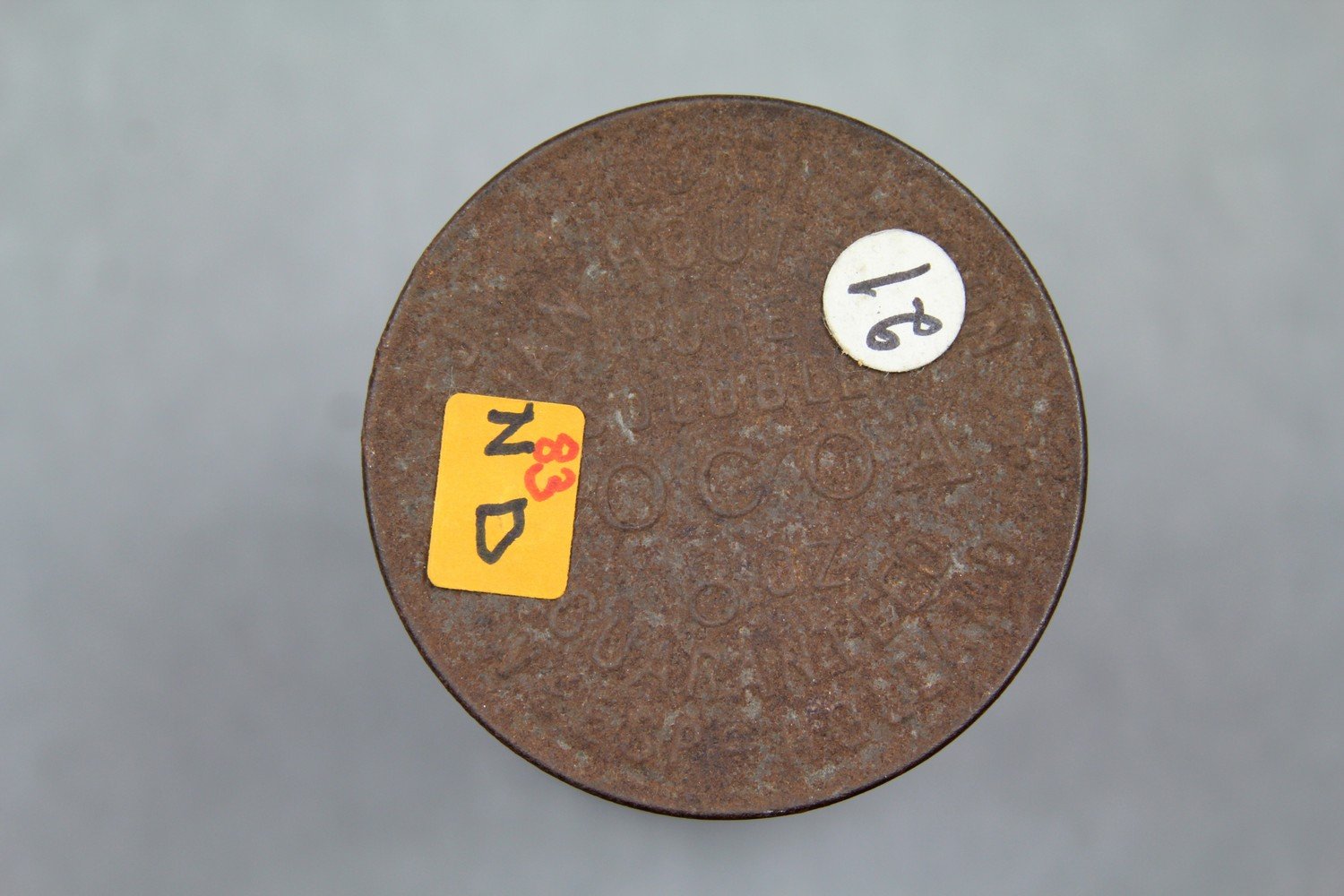  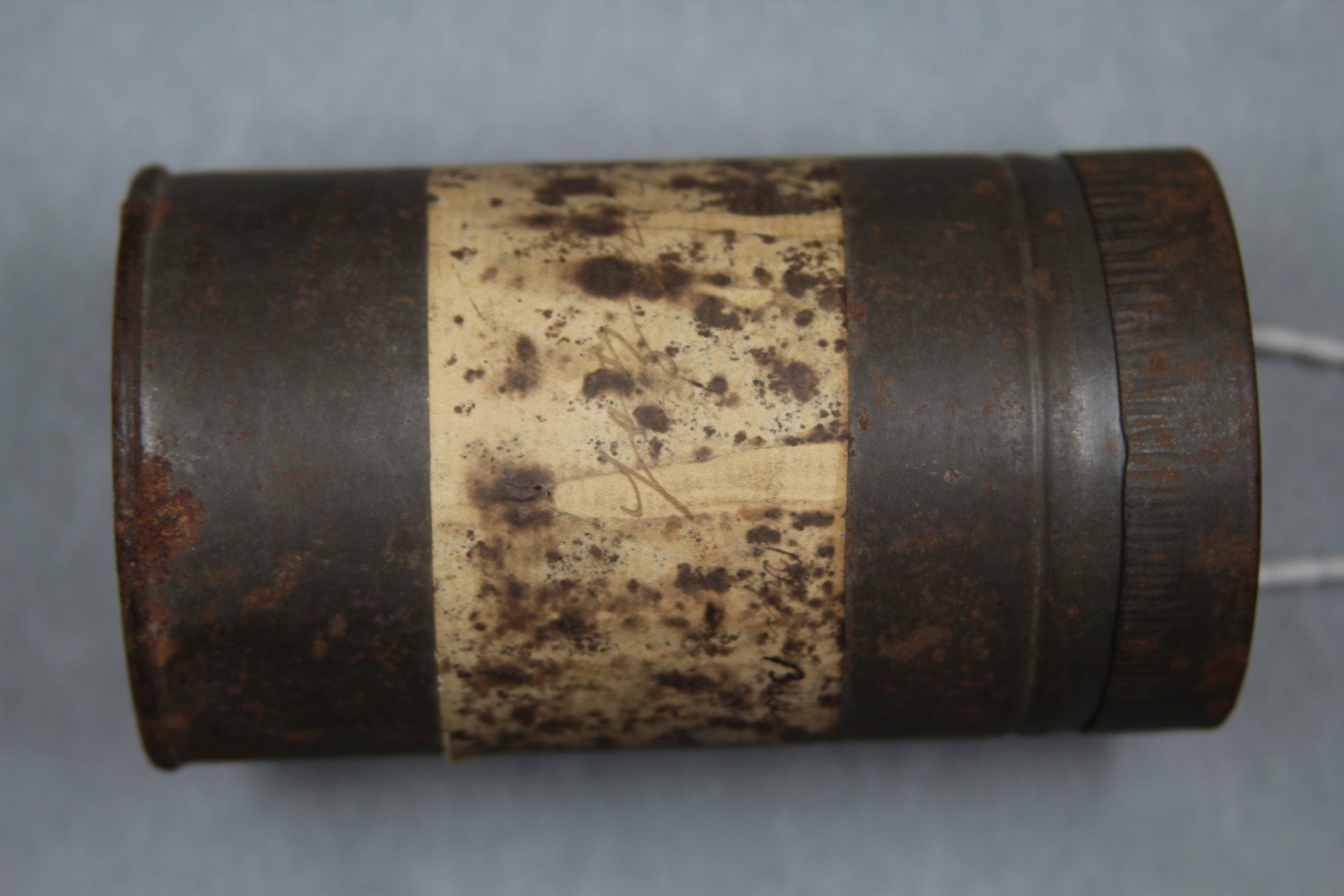 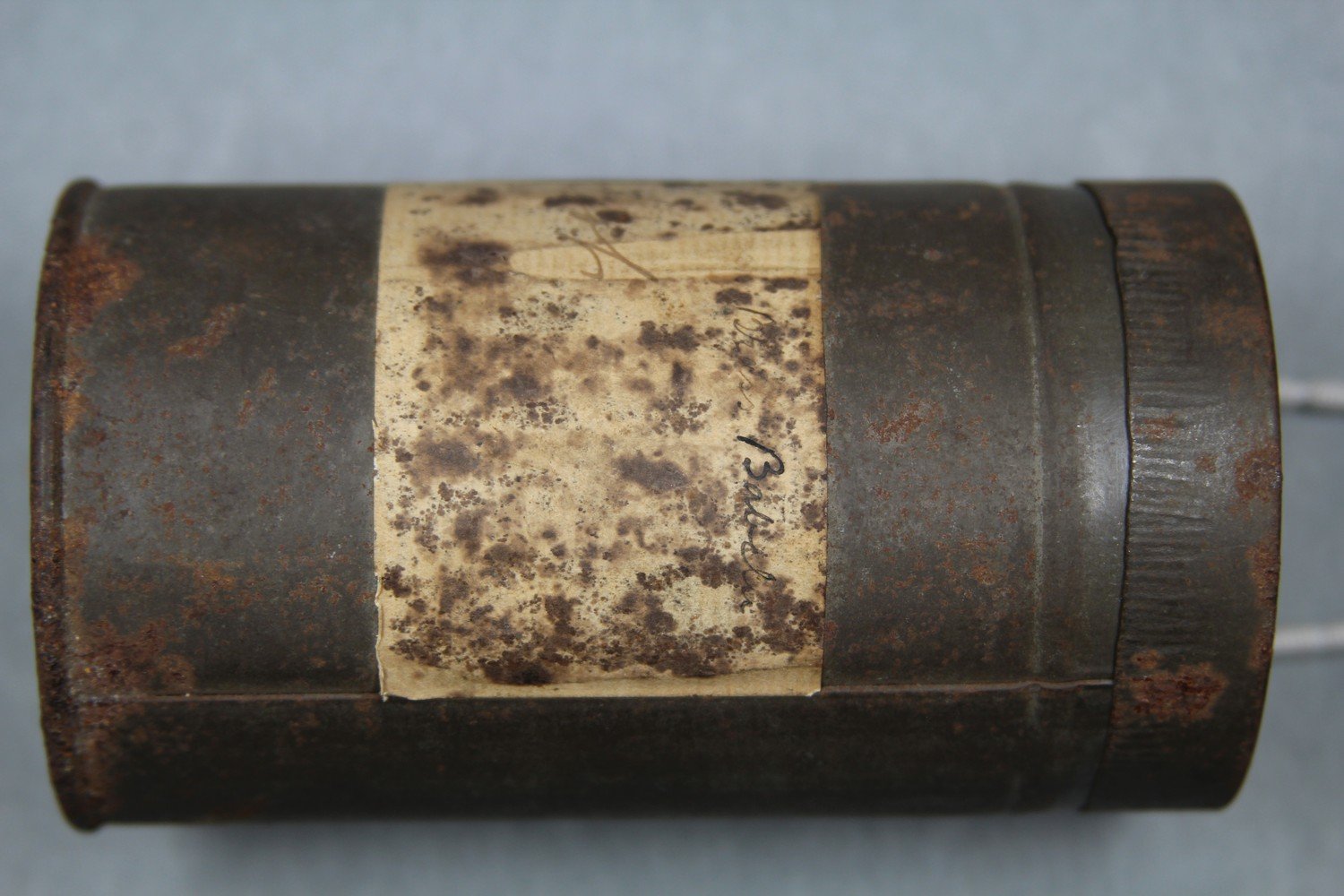   | Haddon, A.C. (ed.) 1908. Reports of the Cambridge Anthropological Expedition to Torres Strait: Volume VI, Sociology, Magic and Religion of the Eastern Islanders. Cambridge: Cambridge University Press. British Library shelfmark General Reference Collection YC.2011.b.632. | |||||
| C80/1055 | Samoan | Finau (singer, male) | Mer / Murray Island, Torres Strait Islands | 6 May 1898 – 8 September 1898 | 1. Announcement: "Samoan song by Finau [?]". 2. Unaccompanied male vocal solo. Cylinder box has the word 'Samoan' [not present], and has the wrong lid, which has 'Wei a' written on it. This does not match contents of cylinder. Cardboard lid on metal tin. Sticker: ‘Wa___g’. | Poor quality recording with heavy surface noise. As no specific recording location has been identified, the recording date range is based on when any members of the Cambridge Expedition were present in the Torres Strait in 1898. | Samoan | Field recordings | 2'18" | 1898 Cambridge Anthropological Expedition to Torres Straits | Brown wax cylinder. Cardboard lid on metal tin. | Alfred Cort Haddon 1898 Expedition (Torres Strait and British New Guinea) Cylinder Collection | British Library | 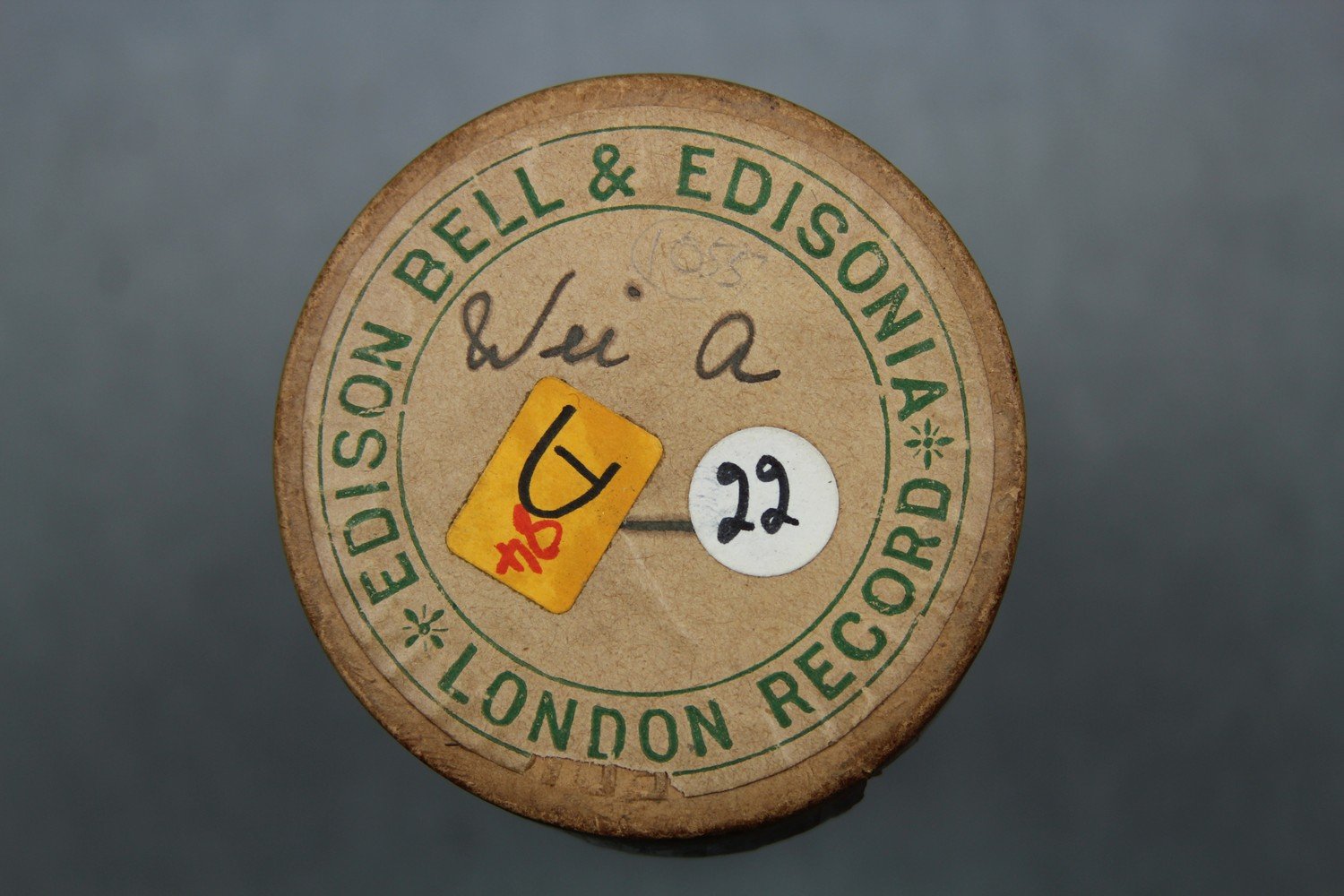 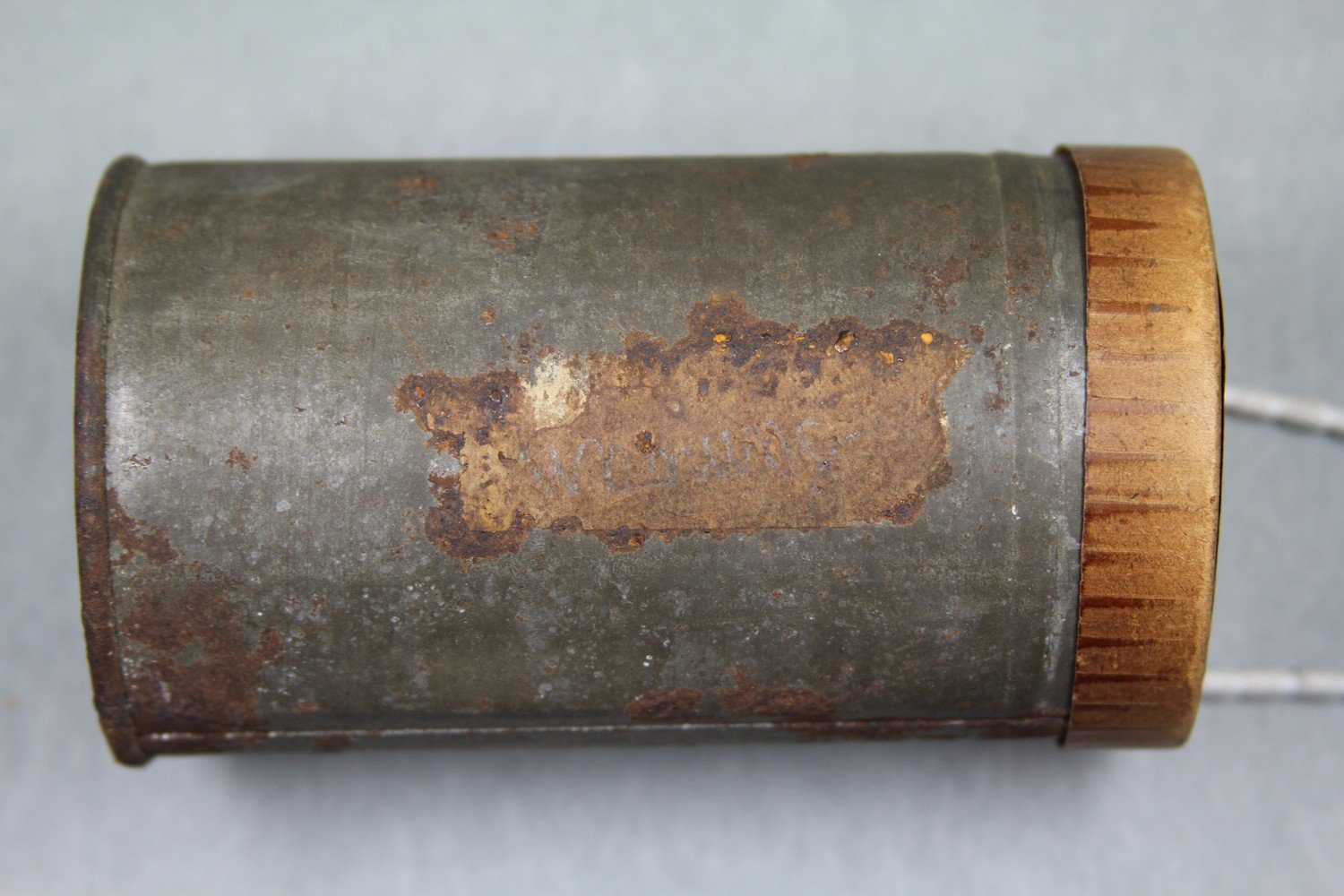     | ||||||||
| C80/1059 | Prayer Mamus | Nomoa (speaker, male, Mamoose of Mabuiag) | Mabuiag / Jervis Island, Torres Strait Islands | 16 October 1898 ? | 1. Announcement: "Prayer, [indecipherable]..." 2. Solo male speech. No further information available. C80/1041 may have the insert that is meant for this cylinder. The cylinder inscription suggests the performer is the Mamoose of Mabuiag, Nomoa. | Reasonable quality recording but with weak signal and surface noise. Ray describes recording Mamus Nomoa in his journal on 16 October 1898 (1898:89). | Kala Lagaw Ya | Field recordings | Ray, Sidney H. | 2'10" | 1898 Cambridge Anthropological Expedition to Torres Straits | Brown wax cylinder. Cardboard cylinder case. | Alfred Cort Haddon 1898 Expedition (Torres Strait and British New Guinea) Cylinder Collection | British Library | 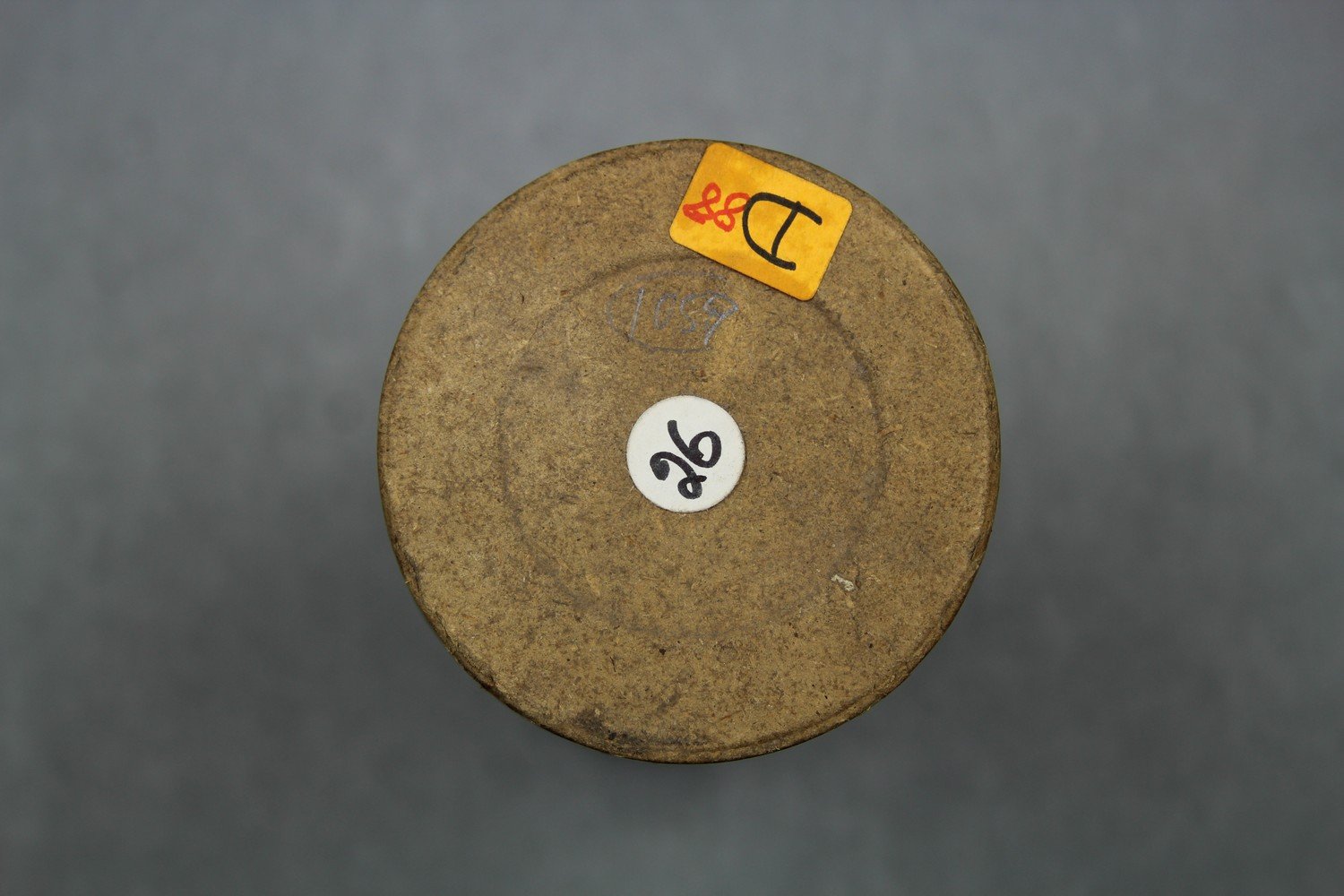 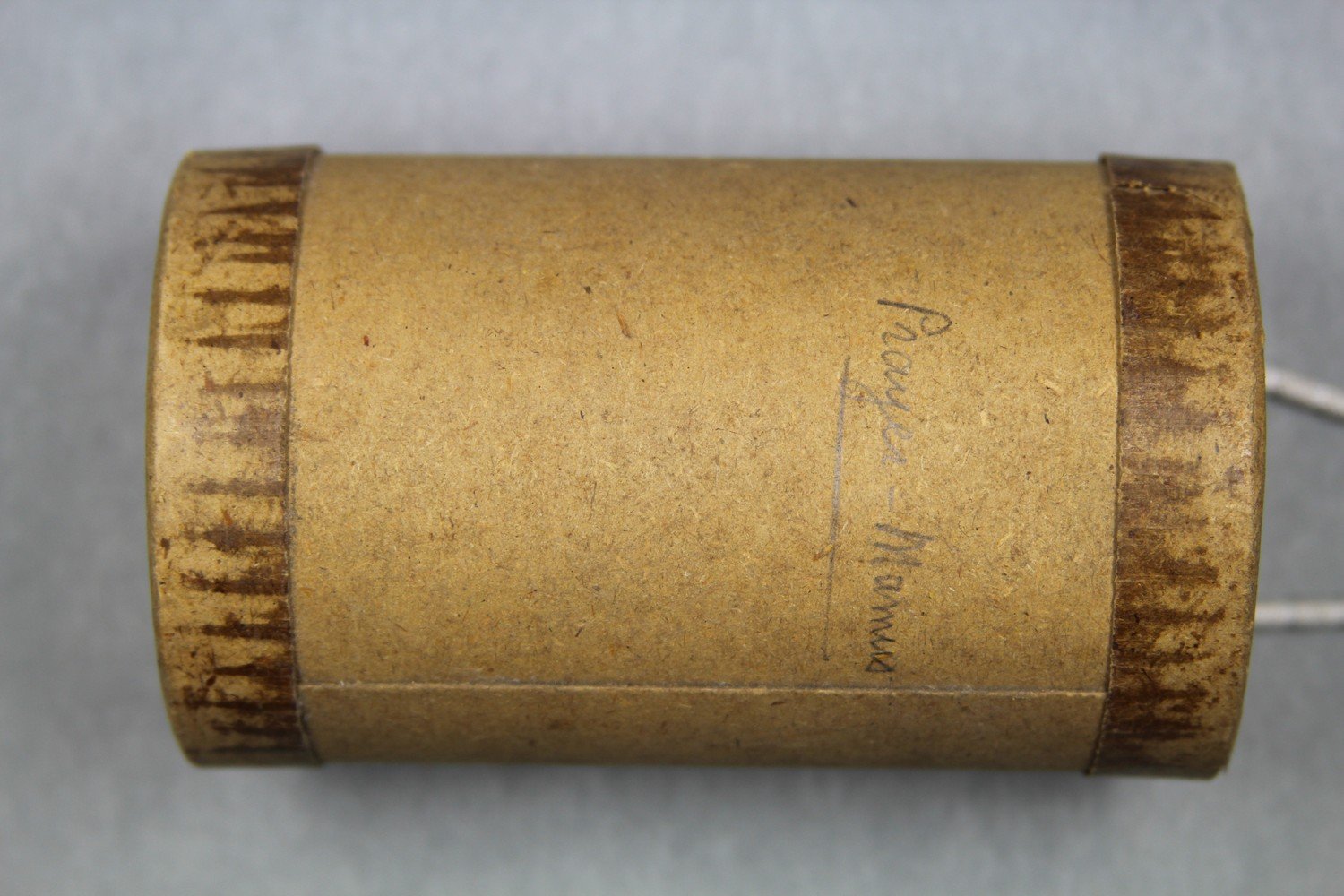     | Ray, S.H. 1898-99. Journal: Torres Straits Expedition 1898-99. [manuscript] Copies of journals and correspondence of Sidney Herbert Ray. MS 380314. London: SOAS Library. | ||||||
| C80/1060 | Story of Shark | Jimmy Dei (speaker, male, police sergeant) | Mer / Murray Island, Torres Strait Islands | 6 May 1898 – 8 September 1898 | 1. Announcement: "Story about a shark… [indecipherable]. Sergeant Day, Murray Island". 2. Story about a shark. The term 'neur wer' refers to a constellation of two stars "which makes big wind and rain" (Ray 1907:155, Haddon 1935:132-133). | Poor quality recording with weak signal and surface noise. As the recordist has not been identified, the recording date range corresponds to when any of the Expedition members were on Mer / Murray Island. | Meriam Mir | Field recordings | 2'17" | 1898 Cambridge Anthropological Expedition to Torres Straits | Brown wax cylinder. Cardboard cylinder case. | Alfred Cort Haddon 1898 Expedition (Torres Strait and British New Guinea) Cylinder Collection | British Library | 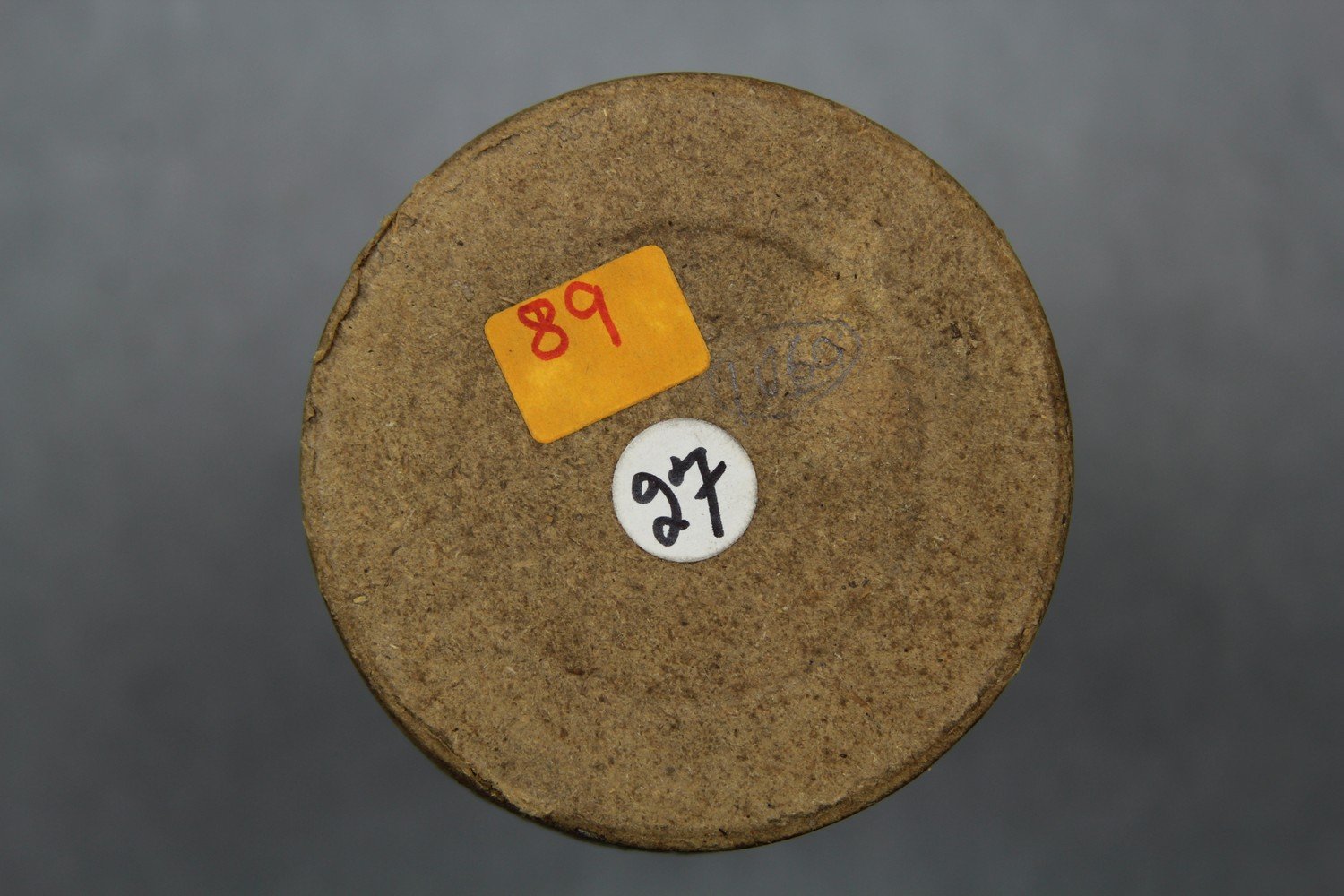 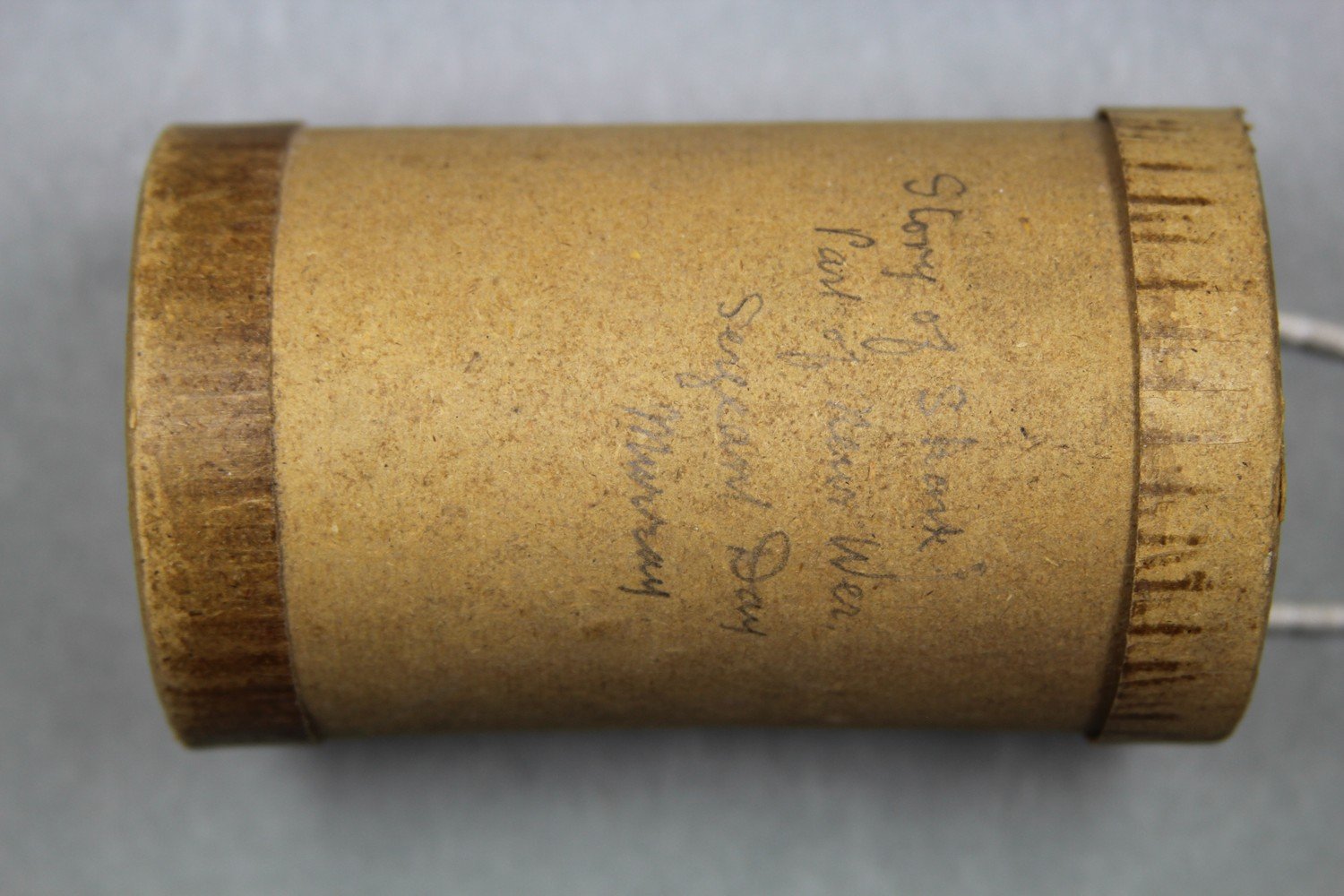     | ||||||||
| C80/1061 | Rotuma Songs | George Roki (singer, male) | Mer / Murray Island, Torres Strait Islands | 5 September 1898 ? | 1. Announcement: "Rotuma songs by George Roki." 2. Unaccompanied male vocal solo. | Reasonable quality recording with strong signal but also surface noise. Ray describes recording George Roki in his journal on 5 September 1898 (1898:86). | Rotuman | Field recordings | Ray, Sidney H. | 2'08" | 1898 Cambridge Anthropological Expedition to Torres Straits | Brown wax cylinder. Metal cylinder case. | Alfred Cort Haddon 1898 Expedition (Torres Strait and British New Guinea) Cylinder Collection | British Library | 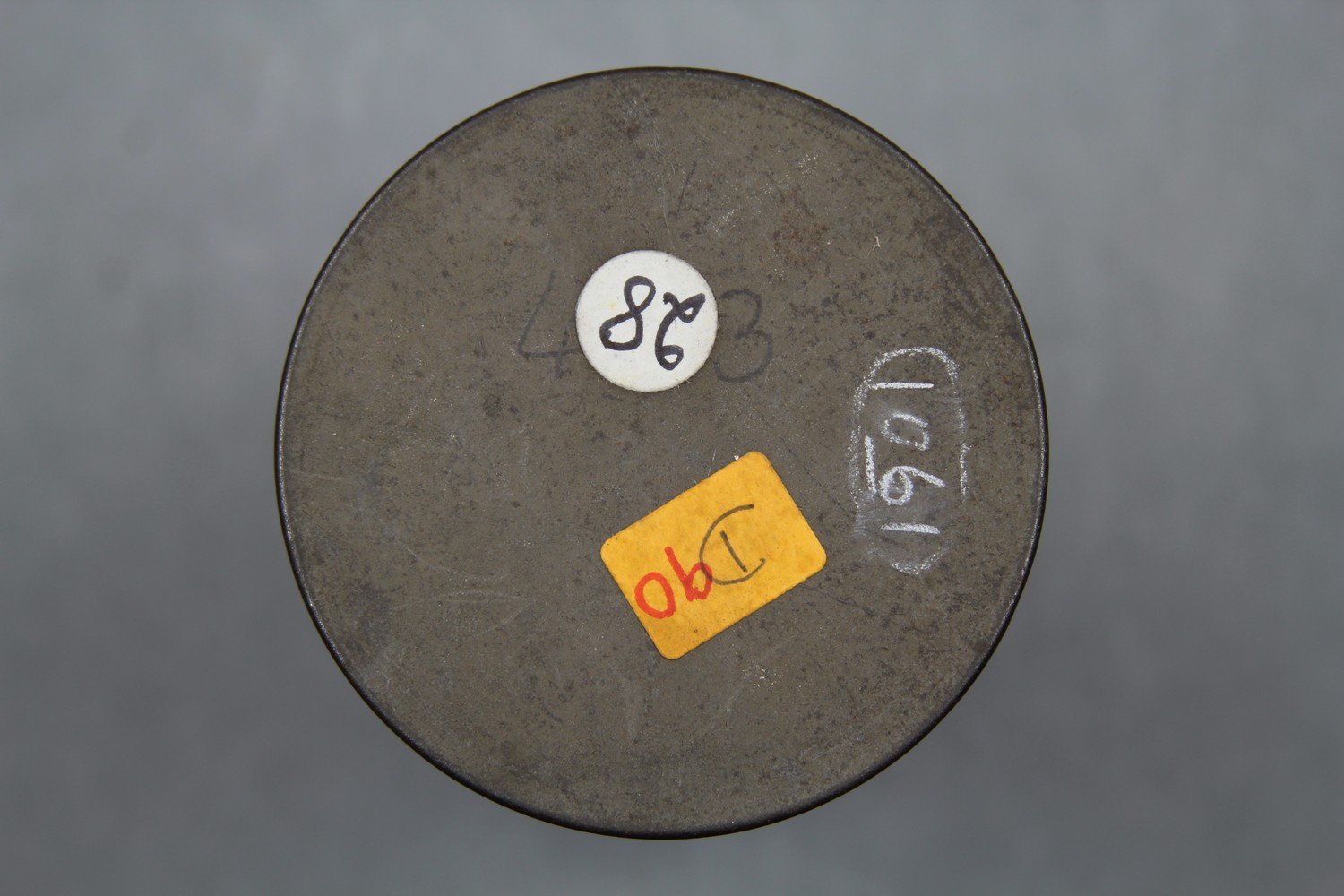 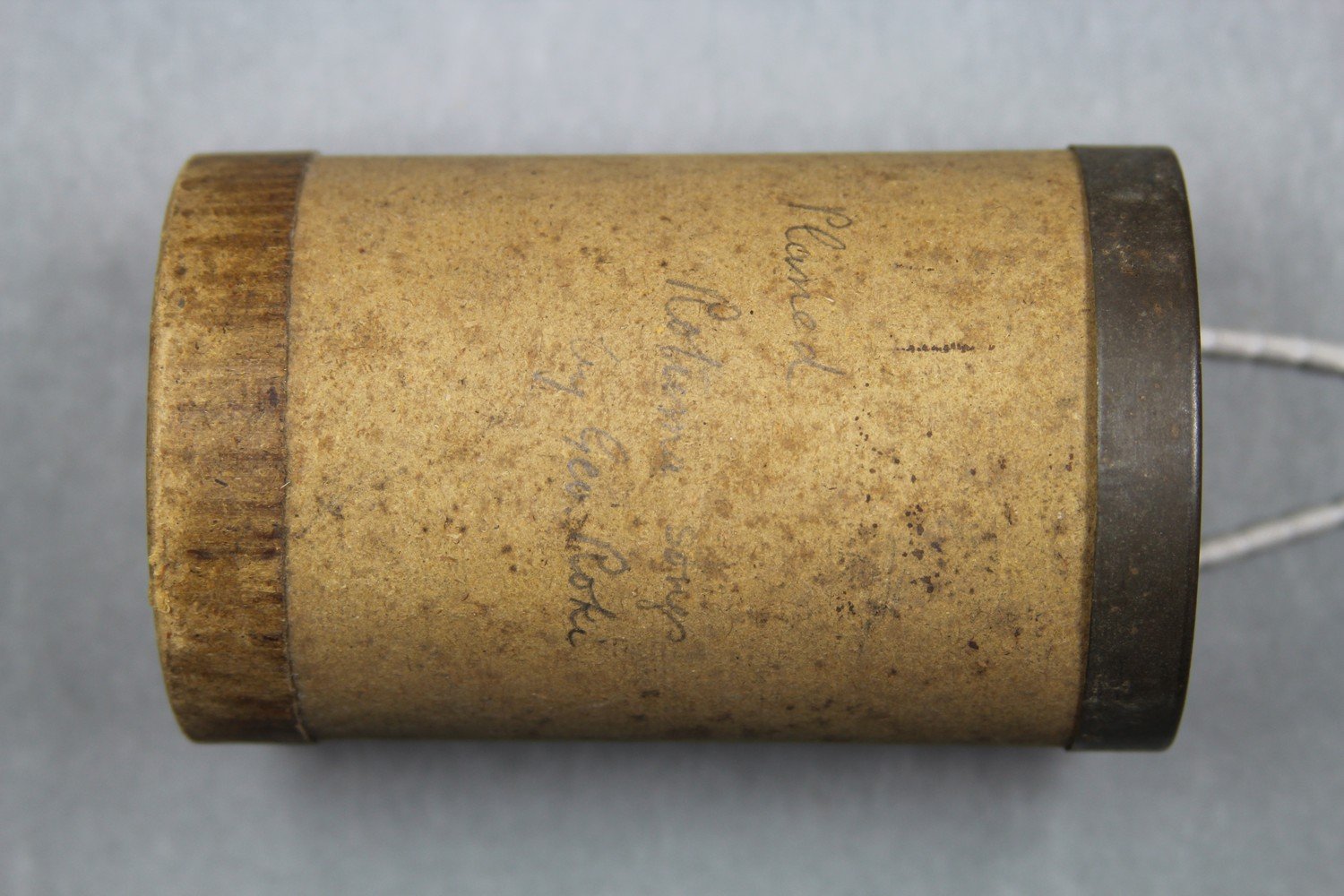     | Ray, S.H. 1898-99. Journal: Torres Straits Expedition 1898-99. [manuscript] Copies of journals and correspondence of Sidney Herbert Ray. MS 380314. London: SOAS Library. | ||||||
| C80/1063 | Male speech | Unidentified (speaker, male) | Torres Strait Islands | 22 April 1898 – 15 November 1898 | 1. Indecipherable announcement. 2. Solo male speech. No further information available. Both Moyle and previous cataloguing in SAMI noted that this cylinder is blank. However, there is a recording and there is extremely faint speech. | Poor quality recording with weak signal and surface noise. As no specific recording location has been identified, the recording date range is based on when any members of the Cambridge Expedition were present in the Torres Strait in 1898. | Field recordings | 1'41" | 1898 Cambridge Anthropological Expedition to Torres Straits | Brown wax cylinder. Metal cylinder case. | Alfred Cort Haddon 1898 Expedition (Torres Strait and British New Guinea) Cylinder Collection | British Library | 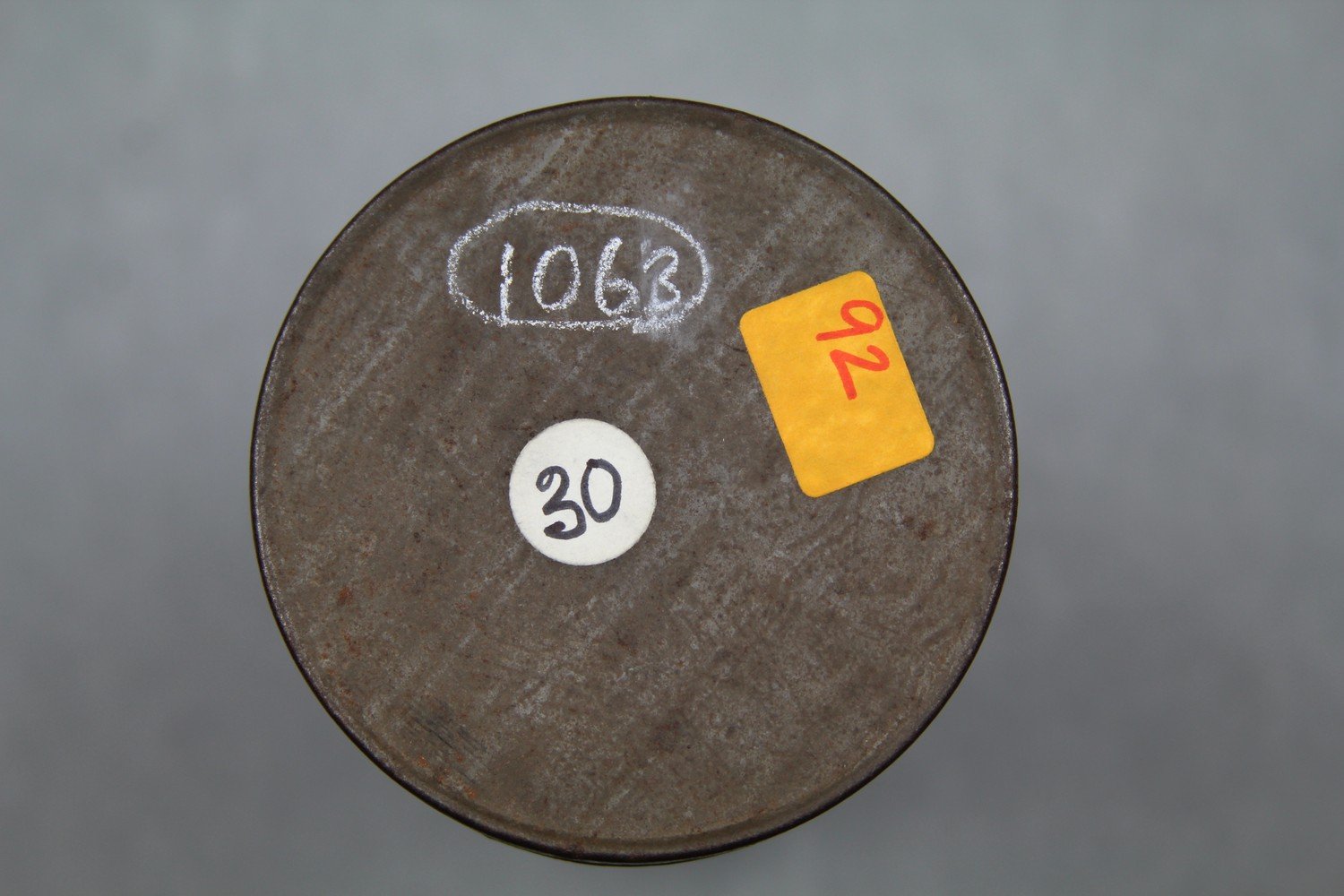      | Alice Moyle (AIAS, now AIATSIS) completed audition sheets for the Torres Strait cylinder collection in 1985. Copies of these are held at the British Library. | ||||||||
| C80/1064 | Male vocal solo | Unidentified (singer, male) | Mabuiag / Jervis Island, Torres Strait Islands | 3 October 1898 – 22 October 1898 | 1. Announcement: "Waiat song from Mabuiag". 2. Unaccompanied male vocal solo. No further information available. Based on the announcement, this song could be similar to C80/1072, also a Waiat song. | Reasonable quality recording but with surface noise. The recording date corresponds to the dates that Expedition members visited Mabuiag / Jervis Island. | Kala Lagaw Ya | Field recordings | Ray, Sidney H. | 1'54" | 1898 Cambridge Anthropological Expedition to Torres Straits | Brown wax cylinder. Metal cylinder case. | Alfred Cort Haddon 1898 Expedition (Torres Strait and British New Guinea) Cylinder Collection | British Library | 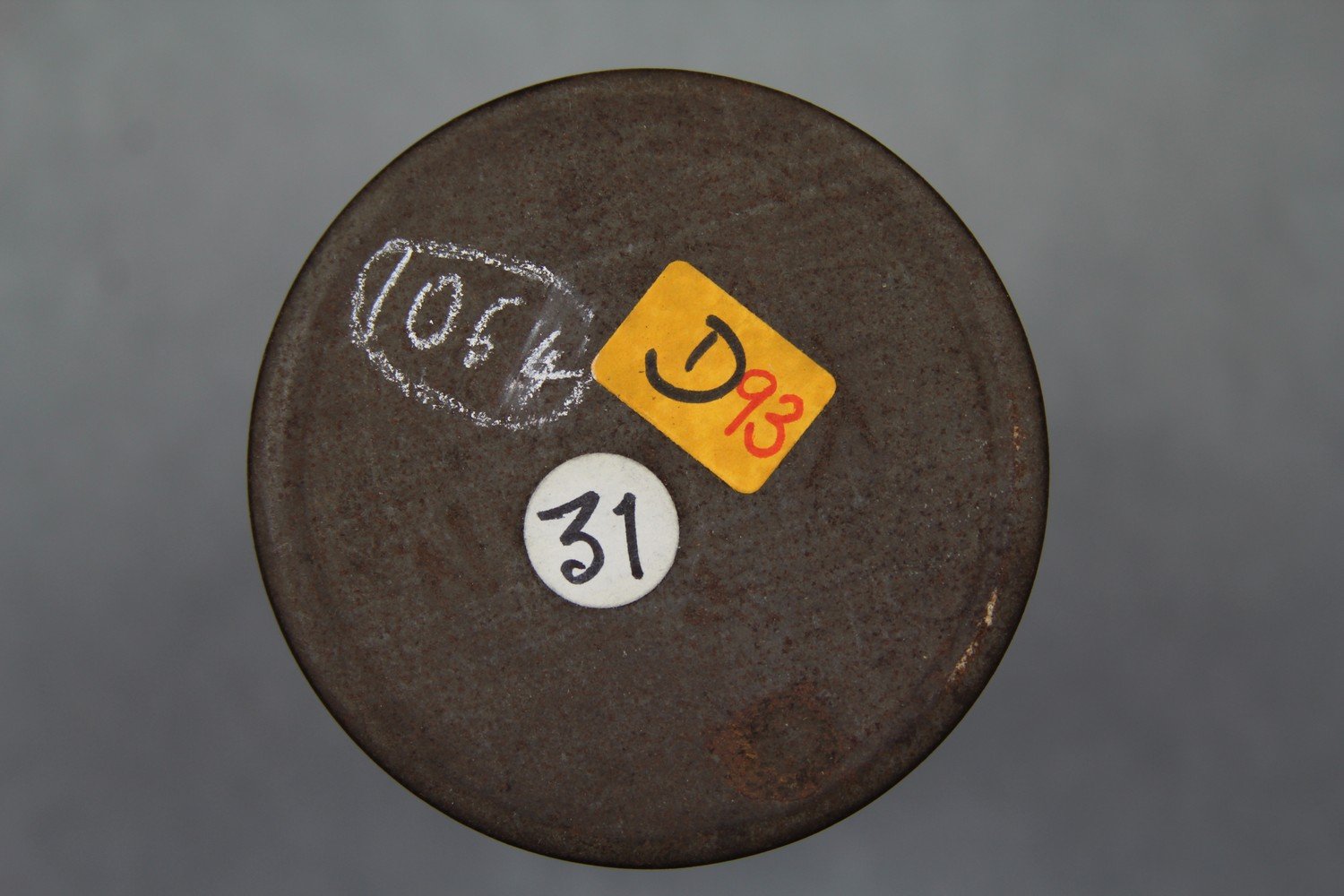      | |||||||
| C80/1065 | Band music | Unidentified (ensemble) | England, UK | Not after 10 March 1898 | 1. Announcement: "[indecipherable] march, play by [indecipherable] on [indecipherable]." 2. European band music. This cylinder may have been recorded prior to leaving for the Torres Strait as an example of recorded music. Ray notes that band music was played as part of evening entertainment on Mer, Torres Strait Islands, on 13 May 1898 (1898:38-39). Haddon notes that European orchestral marches were played in Mekeo [New Guinea] on 17 July 1898 (1901:273). | Reasonable quality recording with strong signal but also surface noise. From Alice Moyle's 1985 audition sheets: 'No documentation. The container and wrappings resemble those of the preceding cylinders. A.M. / This cylinder is obviously not part of the Torres Strait collection but was in the same box. M. "……March, played by ….."'. | 2'41" | 1898 Cambridge Anthropological Expedition to Torres Straits | Brown wax cylinder. Metal cylinder case. | Alfred Cort Haddon 1898 Expedition (Torres Strait and British New Guinea) Cylinder Collection | British Library | 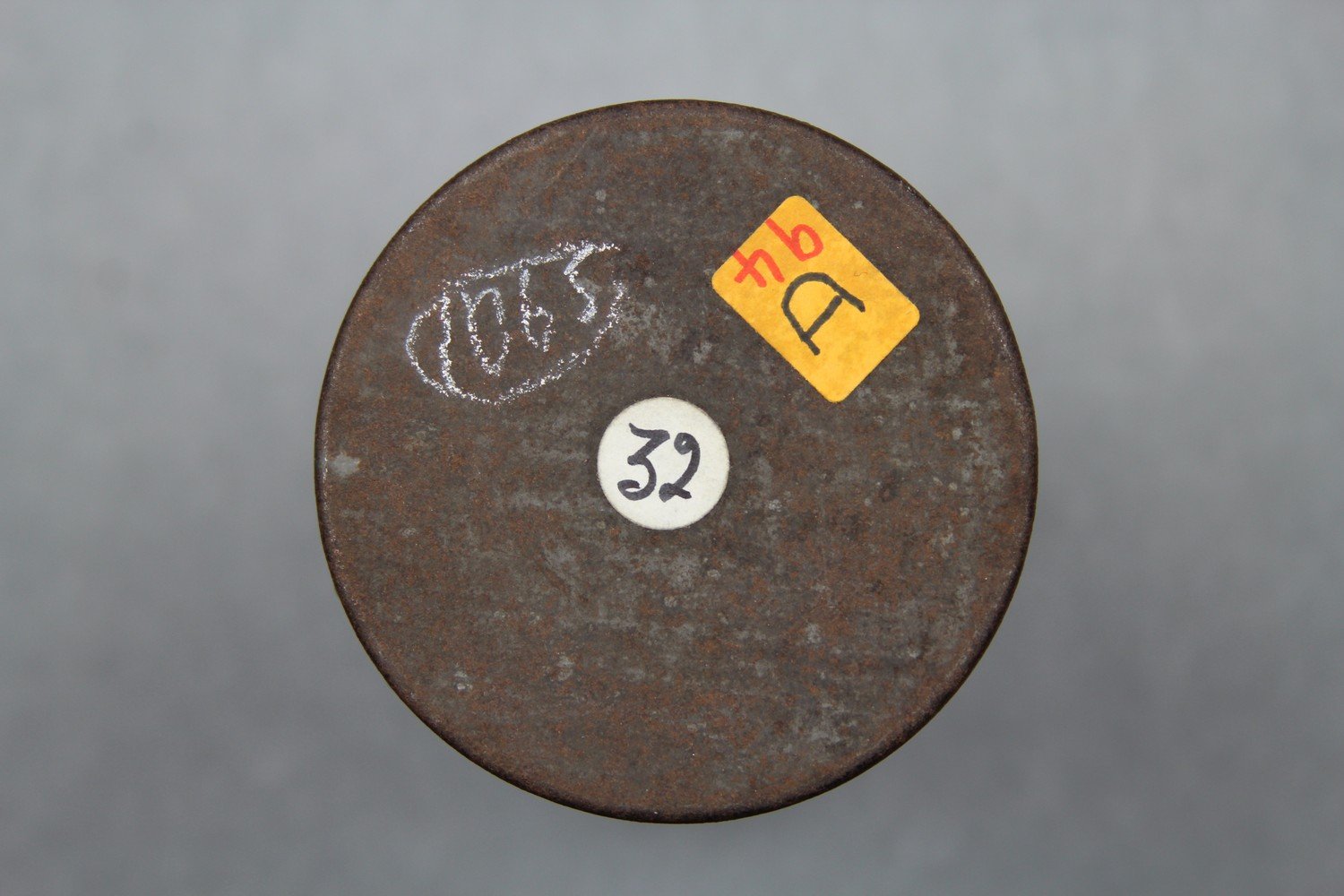      | Ray, S.H. 1898-99. Journal: Torres Straits Expedition 1898-99. [manuscript] Copies of journals and correspondence of Sidney Herbert Ray. MS 380314. London: SOAS Library. | Haddon, A.C. 1901. Head-Hunters. Black, White and Brown. London: Metheun & Co. General Reference Collection 010055.e.28. | Alice Moyle (AIAS, now AIATSIS) completed audition sheets for the Torres Strait cylinder collection in 1985. Copies of these are held at the British Library. | |||||||
| C80/1067 | Songs about kwoiam | Gizu (singer, male) ? | Mabuiag / Jervis Island, Torres Strait Islands | 7 October 1898 ? | 1. Announcement: "Ur kawar. Songs about kwoiam by Gizu [?]." 2. Unaccompanied male vocal solo. Inscription on insert note: 'Songs - Kwoiam / Ur Kawar - bo / 32 T.S.'. This recording corresponds to Charles S. Myers' Mabuiag: Song XIII. Songs XI (C80/1072) and XIII are ‘presumably oldest’ and are ‘distinctly simpler in character than the others of the Mabuiag group’ (Myers 1912:263). Analysis and text in Myers (1912:253, 269). Possible notation in Myers (1912:262). Ray did not know the age of these songs but surmised they must be old. Song XIII = ‘Sea and island – song from Kwoiam’ (Myers 1912:262). Haddon mentions the Pibi kap or "Kwoiam's dance" (1901:131). This was a war dance that was performed after a successful fight. Haddon describes the dress of the performers as well as the dance itself. ‘The Saga of Kwoiam’ is given in Haddon (1904:67-83. 110-111, 117-118). The Cult of Kwoiam is described in Haddon and Wilkin (1904:367-373) and Haddon (1935:380-385). Ray notes that he recorded two songs ('Good records') by Gizu on 7 October 1898 (Ray 1898:89). | Reasonable quality recording but with surface noise. Ray mentions in his journal that he recorded two songs by Gizu on 7 October (1898:89). These may include C80/1067, 1072 or 1081. From Alice Moyle's 1985 audition sheets: Noted as 32 T.S. in the audition sheet, not C32 [European band music]. | Kala Lagaw Ya | Field recordings | Ray, Sidney H. | 2'15" | 1898 Cambridge Anthropological Expedition to Torres Straits | Brown wax cylinder. Metal cylinder case. | Alfred Cort Haddon 1898 Expedition (Torres Strait and British New Guinea) Cylinder Collection | British Library | 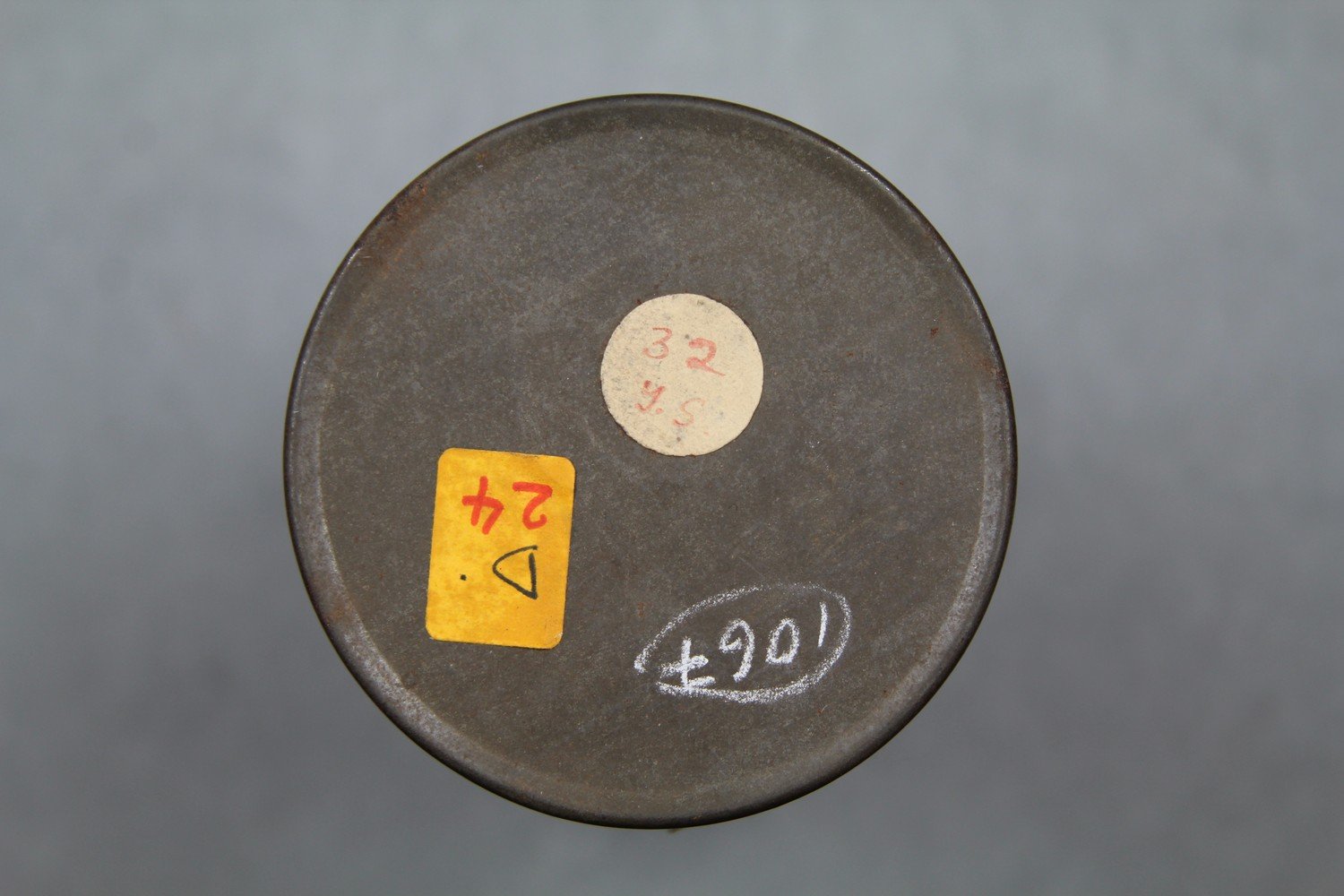      | Ray, S.H. 1898-99. Journal: Torres Straits Expedition 1898-99. [manuscript] Copies of journals and correspondence of Sidney Herbert Ray. MS 380314. London: SOAS Library. | Haddon, A.C. 1901. Head-Hunters. Black, White and Brown. London: Metheun & Co. General Reference Collection 010055.e.28. | Haddon, A.C. (ed.) 1904. Reports of the Cambridge Anthropological Expedition to Torres Strait: Volume V, Sociology, Magic and Religion of the Western Islanders. Cambridge: Cambridge University Press. British Library shelfmark General Reference Collection YC.2011.b.633. | Haddon, A.C. (ed.) 1912. Reports of the Cambridge Anthropological Expedition to Torres Strait: Volume IV, Arts and Crafts. Cambridge: Cambridge University Press. British Library shelfmark General Reference Collection YC.2011.b.634. | Haddon, A.C. (ed.) 1935. Reports of the Cambridge Anthropological Expedition to Torres Strait: Volume I, General Ethnography. Cambridge: Cambridge University Press. British Library shelfmark General Reference Collection YC.2011.b.630. | Alice Moyle (AIAS, now AIATSIS) completed audition sheets for the Torres Strait cylinder collection in 1985. Copies of these are held at the British Library. | |
| C80/1068 | Wail at Death | Unidentified (speaker, male); unidentified (singer, male) | Mabuiag / Jervis Island, Torres Strait Islands | 3 October 1898 – 22 October 1898 | 1. Announcement: "Crying at death. Mabuiag." 2. Unaccompanied male vocal solo. Inscription on insert note: 'Wail at Death / Mabuiag / C52 / 52 TS'. Haddon mentions the death of Waria's baby on Mabuiag (1901:123). It cannot be confirmed whether this recording is related to the same event. | Reasonable quality recording. The recording date corresponds to the dates that Expedition members visited Mabuiag / Jervis Island. | Field recordings | Ray, Sidney H. | 2'29" | 1898 Cambridge Anthropological Expedition to Torres Straits | Brown wax cylinder. Metal cylinder case. | Alfred Cort Haddon 1898 Expedition (Torres Strait and British New Guinea) Cylinder Collection | British Library | 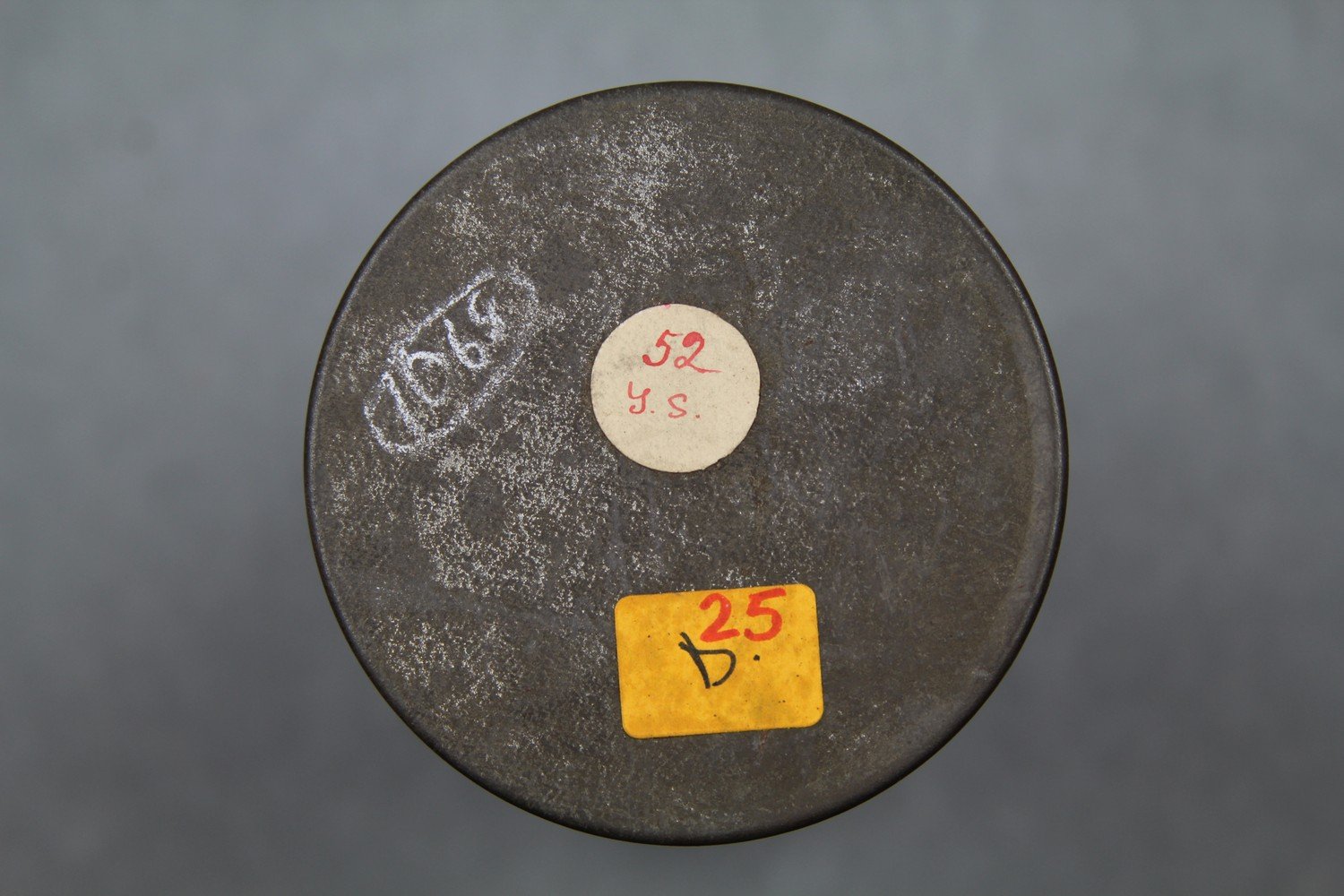 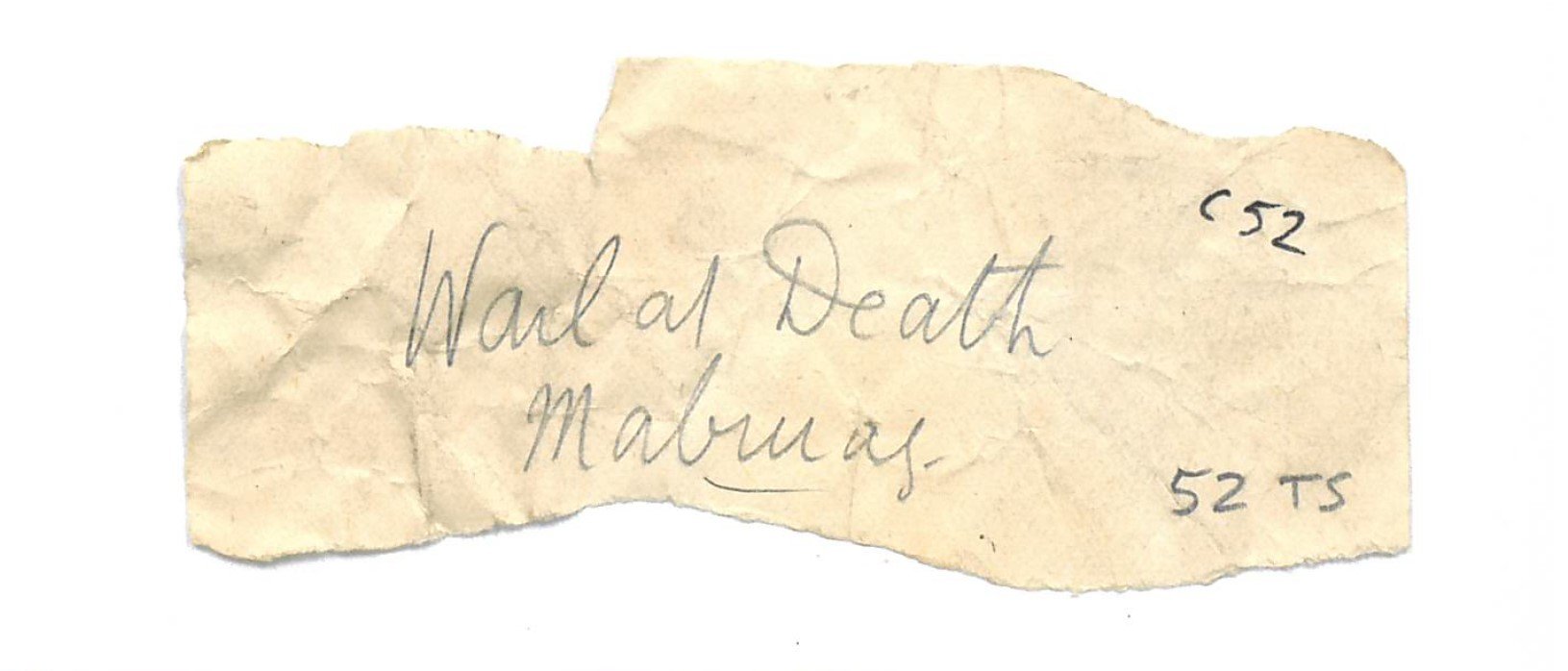     | Haddon, A.C. 1901. Head-Hunters. Black, White and Brown. London: Metheun & Co. General Reference Collection 010055.e.28. | |||||||
| C80/1069 | Ngata kabaunau pudaiki | Peter (singer, male) | Mabuiag / Jervis Island, Torres Strait Islands | 3 October 1898 – 22 October 1898 | 1. Announcement: "Ngata kbaunau pidaiki, sung by Pita, Mabuiag." 2. Unaccompanied male vocal solo. Inscription on insert notes: 'Ngata kabaunau pudaiki / Pita / 53 T.S.'. This recording corresponds to Charles S. Myers' Mabuiag Song III. Songs III and IV (C80/1070) are described as ‘dance songs’ (Myers 1912:264). Notation, words and translation in Myers (1912:262, 269). ‘The secular dance par excellence throughout Torres Straits was called kab (kab eri = to dance). These dances had mostly a cyclic form. They started with a sung prelude in moderate tempo. Then followed a chant with a descending chromatic line with faster drumbeats while the dancers approached from behind the waus i.e., the grass screen behind which they prepared for the dance.” (Laade 1977:1). According to Ray (1907), ngata may mean ‘clean’ or the 1SG pronoun 'I'. kab(a) is ‘a dance’ and nau-puidai ‘to sing’. | Good quality recording with strong signal. The recording date corresponds to the dates that Expedition members visited Mabuiag / Jervis Island. Ray mentions his work with Peter in journal entries from 15 to 18 October 1898. This involved language work and producing recordings using the phonograph (1898:89-90). | Kala Lagaw Ya | Field recordings | Ray, Sidney H. | 2'13" | 1898 Cambridge Anthropological Expedition to Torres Straits | Brown wax cylinder. Metal cylinder case. | Alfred Cort Haddon 1898 Expedition (Torres Strait and British New Guinea) Cylinder Collection | British Library |       | Ray, S.H. 1898-99. Journal: Torres Straits Expedition 1898-99. [manuscript] Copies of journals and correspondence of Sidney Herbert Ray. MS 380314. London: SOAS Library. | Haddon, A.C. (ed.) 1907. Reports of the Cambridge Anthropological Expedition to Torres Strait: Volume III, The Languages of Torres Strait. Cambridge: Cambridge University Press. British Library shelfmark General Reference Collection YC.2011.b.631. | Haddon, A.C. (ed.) 1912. Reports of the Cambridge Anthropological Expedition to Torres Strait: Volume IV, Arts and Crafts. Cambridge: Cambridge University Press. British Library shelfmark General Reference Collection YC.2011.b.634. | Laade, Wolfgang. 1977. Traditional Songs of the Western Torres Straits, South Pacific. Folkways Records Album No. FE 4025 [sleeve notes] New York: Folkways Records. British Library Sound Archive shelfmark 1LP0083172. See http://www.si.edu/folkways | |||
| C80/1070 | Gana Sagulau Nau | Peter (singer, male) | Mabuiag / Jervis Island, Torres Strait Islands | 3 October 1898 – 22 October 1898 | 1. Announcement: "Gana Sagalau Nau, sung by Pita, Mabuiag." 2. Unaccompanied male vocal solo. Inscription on insert note: 'Gana Sagulau Nau / Wom in man out / 54 T.S.'. This recording corresponds to Charles S. Myers' Mabuiag: Song IV. Songs IV and III (C80/1069) are described as ‘dance songs’ (Myers 1912:264).Notation, words and translation in Myers (1912:262, 269). Myers translates the title as ‘Ga’s play’s song’ (1912:269). 'sagul' may translate to ‘play ; dancing’ (Ray 1907:120). | Good quality recording with strong signal. The recording date corresponds to the dates that Expedition members visited Mabuiag / Jervis Island. Ray mentions his work with Peter in journal entries from 15 to 18 October 1898. This involved language work and producing recordings using the phonograph (1898:89-90). | Kala Lagaw Ya | Field recordings | Ray, Sidney H. | 2'18" | 1898 Cambridge Anthropological Expedition to Torres Straits | Brown wax cylinder. Metal cylinder case. | Alfred Cort Haddon 1898 Expedition (Torres Strait and British New Guinea) Cylinder Collection | British Library | 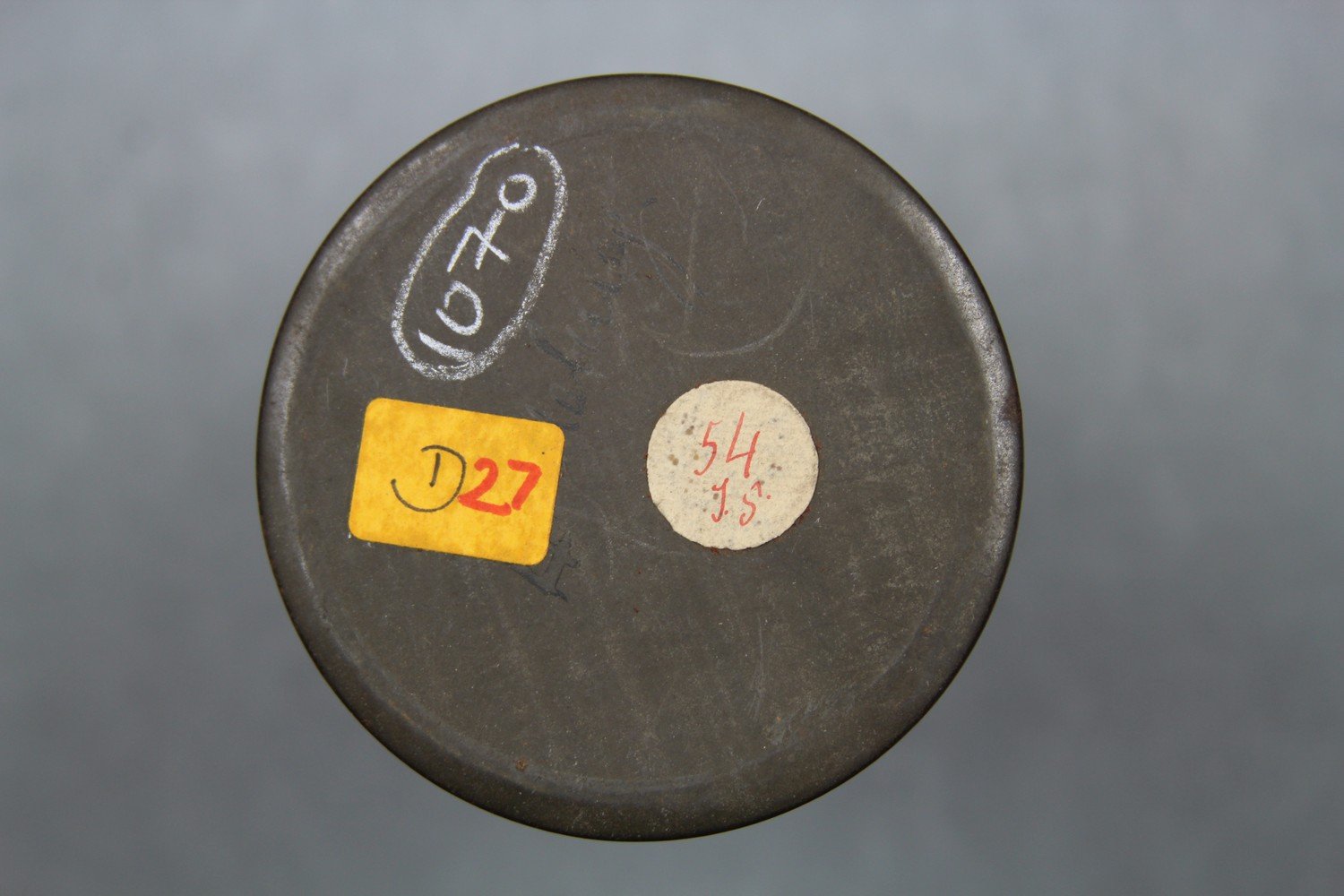 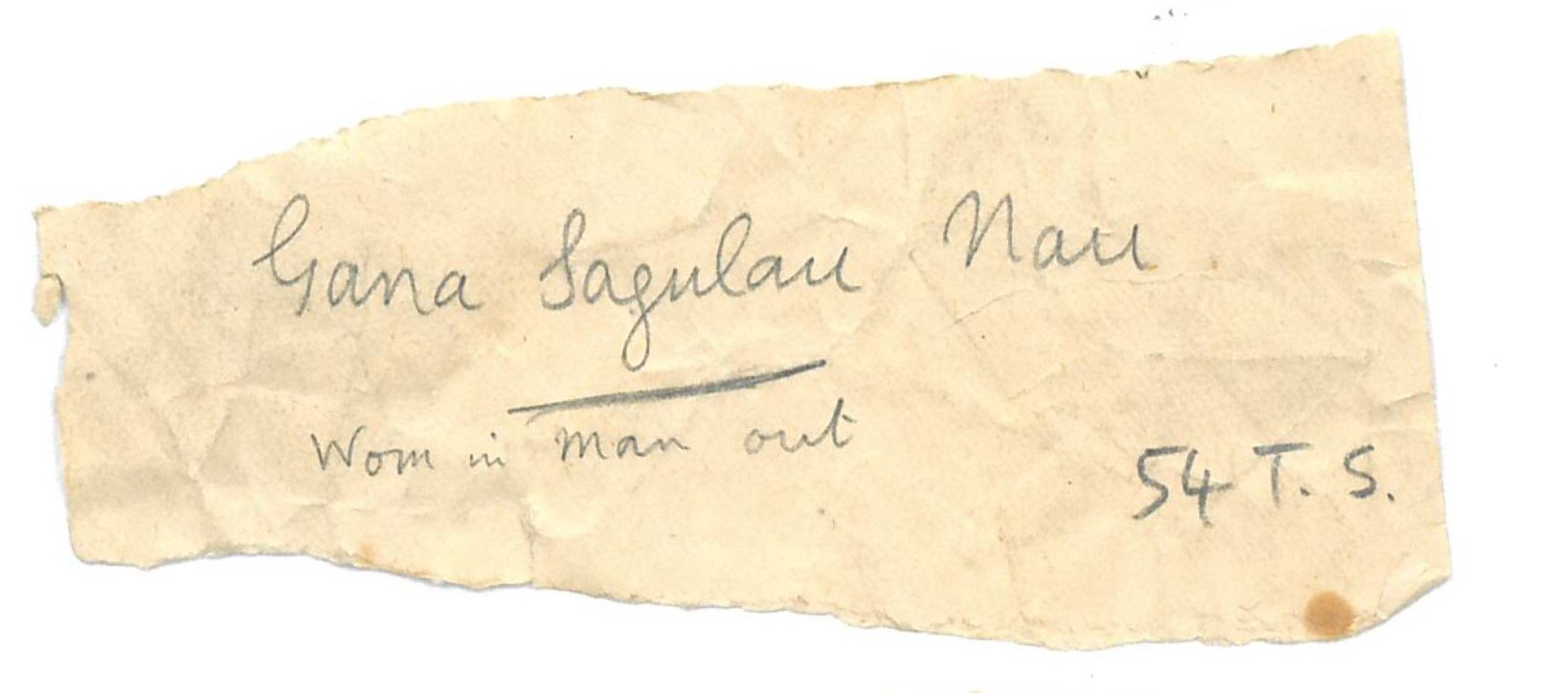     | Ray, S.H. 1898-99. Journal: Torres Straits Expedition 1898-99. [manuscript] Copies of journals and correspondence of Sidney Herbert Ray. MS 380314. London: SOAS Library. | Haddon, A.C. (ed.) 1912. Reports of the Cambridge Anthropological Expedition to Torres Strait: Volume IV, Arts and Crafts. Cambridge: Cambridge University Press. British Library shelfmark General Reference Collection YC.2011.b.634. | |||||
| C80/1071 | Songs of Kwoiam | Unidentified (singer, male) | Mabuiag / Jervis Island, Torres Strait Islands | 3 October 1898 – 22 October 1898 | 1. Announcement: '[indecipherable] ... songs of Kwoiam ... [indecipherable]." 2. Unaccompanied male vocal solo. Inscription on lid: ’13 Mabuiag’. Inscription on insert notes: 'Ur kawar / 55 T.S.' This recording corresponds to Charles S. Myers' Mabuiag Song XIII. Songs XI (C80/1072) and XIII are ‘presumably oldest’ and are ‘distinctly simpler in character than the others of the Mabuiag group’ (Myers 1912:263). Ray did not know the age of these songs but surmised they must be old. Song XIII = ‘Sea and island – song from Kwoiam’ (Myers 1912:262). Haddon mentioned the Pibi kap or "Kwoiam's dance" (1901:131). This was a war dance that was performed after a successful fight. Haddon describes the dress of the performers as well as the dance itself. Notation, analysis and song text in Myers (1912:253, 262, 269). ‘The Saga of Kwoiam’ is given in Haddon (1904:67-83. 110-111, 117-118). The Cult of Kwoiam is described in Haddon and Wilkin (1904:367-373) and Haddon (1935:380-385). | Good quality recording with strong signal. The recording date corresponds to the dates that Expedition members visited Mabuiag / Jervis Island. | Kala Lagaw Ya | Field recordings | Ray, Sidney H. | 2'19" | 1898 Cambridge Anthropological Expedition to Torres Straits | Brown wax cylinder. Metal cylinder case. | Alfred Cort Haddon 1898 Expedition (Torres Strait and British New Guinea) Cylinder Collection | British Library | 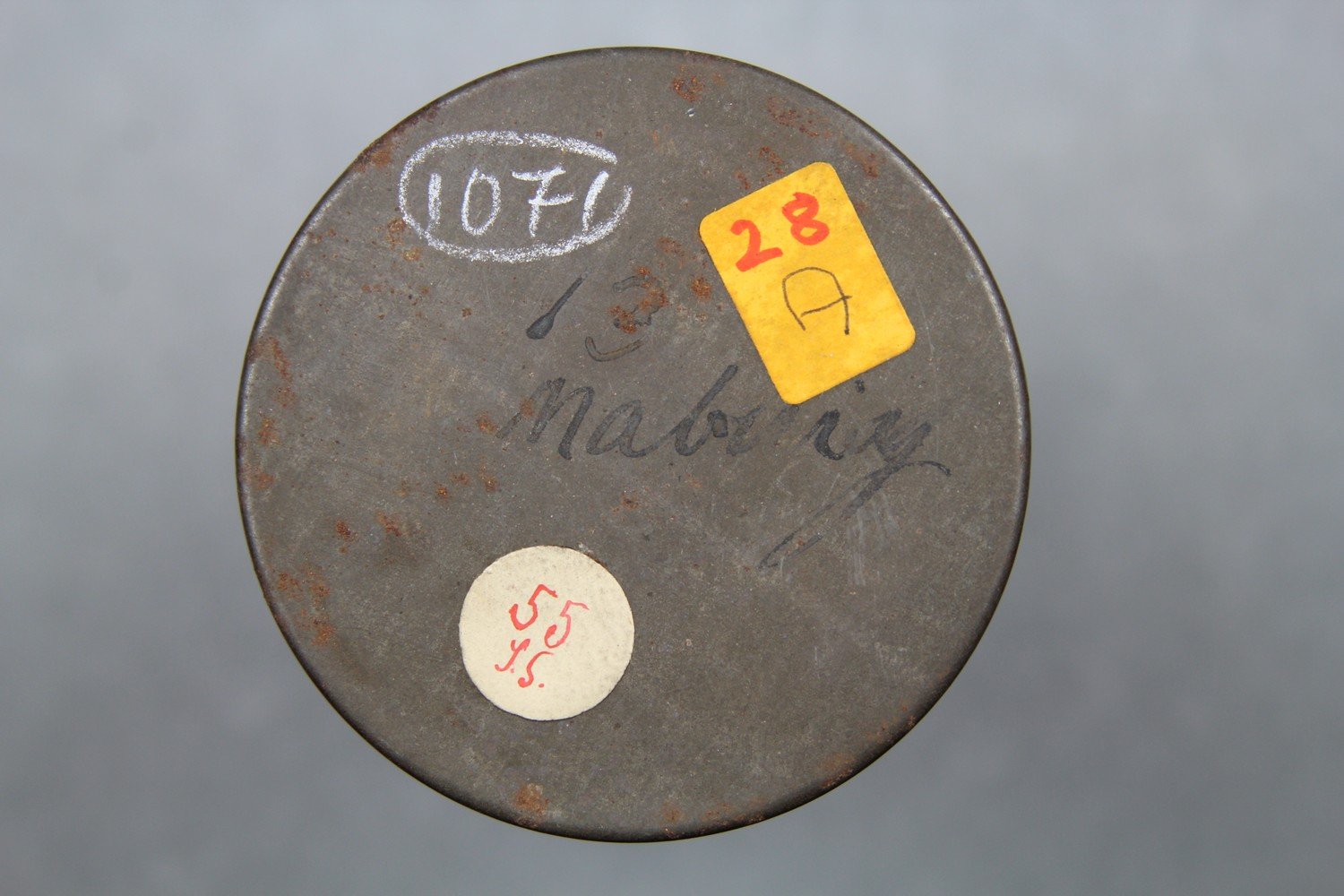      | Haddon, A.C. 1901. Head-Hunters. Black, White and Brown. London: Metheun & Co. General Reference Collection 010055.e.28. | Haddon, A.C. (ed.) 1904. Reports of the Cambridge Anthropological Expedition to Torres Strait: Volume V, Sociology, Magic and Religion of the Western Islanders. Cambridge: Cambridge University Press. British Library shelfmark General Reference Collection YC.2011.b.633. | Haddon, A.C. (ed.) 1912. Reports of the Cambridge Anthropological Expedition to Torres Strait: Volume IV, Arts and Crafts. Cambridge: Cambridge University Press. British Library shelfmark General Reference Collection YC.2011.b.634. | Haddon, A.C. (ed.) 1935. Reports of the Cambridge Anthropological Expedition to Torres Strait: Volume I, General Ethnography. Cambridge: Cambridge University Press. British Library shelfmark General Reference Collection YC.2011.b.630. | |||
| C80/1072 | Dance of Dead Man | Gizu (singer, male) | Mabuiag / Jervis Island, Torres Strait Islands | 7 October 1898 ? | 1. Announcement: "Waitana nga puidaik, sung by Gizu". 2. Unaccompanied male vocal solo. Inscription on insert notes: 'Waitana nga puidaik. / Dance of Dead man / 56 T.S.'. This recording corresponds to Charles S. Myers' Mabuiag Song XI. Title given as ‘Waiat song – dance of dead men’ in Myers (1912:261-262). Songs XI and XIII (possibly C80/1067 or C80/1071) are ‘presumably oldest’ and are ‘distinctly simpler in character than the others of the Mabuiag group’ (Myers 1912:263). This song ‘bears a resemblance to the keber group of the Murray Island songs’, especially songs V, XI and XIII. (Myers 1912:263). Analysis, words and partial translation of Song XI in Myers (1912:252-253, 269). | Good quality recording with strong signal. Ray notes that he recorded two songs ('Good records') by Gizu on 7 October 1898 (Ray 1898:89). These may include C80/1067, 1072 or 1081. | Kala Lagaw Ya | Field recordings | Ray, Sidney H. | 2'04" | 1898 Cambridge Anthropological Expedition to Torres Straits | Brown wax cylinder. Metal cylinder case. | Alfred Cort Haddon 1898 Expedition (Torres Strait and British New Guinea) Cylinder Collection | British Library | 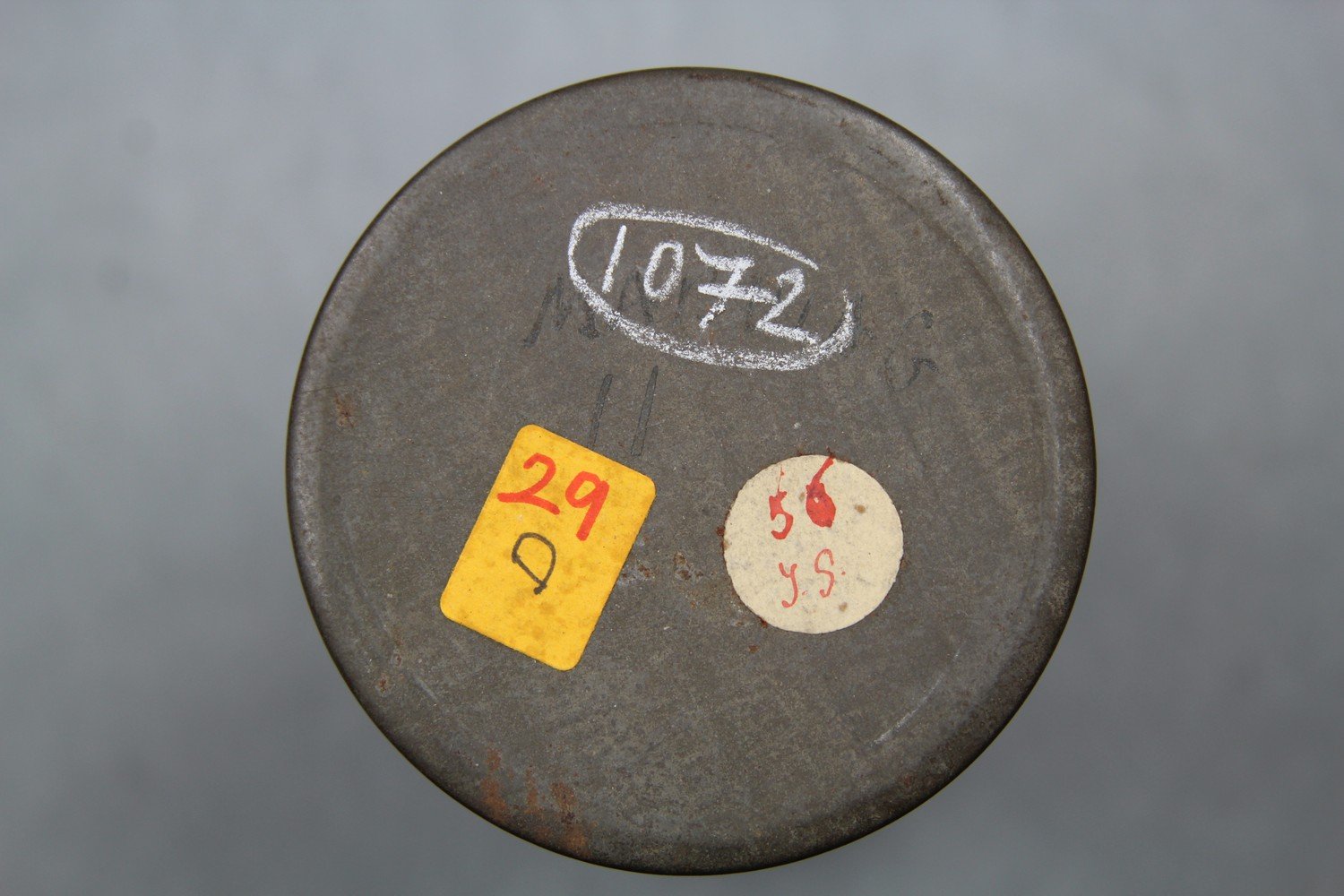      | Ray, S.H. 1898-99. Journal: Torres Straits Expedition 1898-99. [manuscript] Copies of journals and correspondence of Sidney Herbert Ray. MS 380314. London: SOAS Library. | Haddon, A.C. (ed.) 1912. Reports of the Cambridge Anthropological Expedition to Torres Strait: Volume IV, Arts and Crafts. Cambridge: Cambridge University Press. British Library shelfmark General Reference Collection YC.2011.b.634. | |||||
| C80/1073 | Crying at Death | Unidentified (singer, male) | Mabuiag / Jervis Island, Torres Strait Islands | 3 October 1898 – 22 October 1898 | 1. Announcement: "Crying at death, Mabuiag." 2. Unaccompanied male vocal solo. Inscription on insert notes: 'Waitana nga puidaik. / Dance of Dead man / 56 T.S.'. Haddon wrote of the death of Waria’s infant son on Mabuiag on 31 September (1898:231). It cannot be confirmed whether this recording is related to the same event. | Good quality recording with strong signal. The recording date corresponds to the dates that Expedition members visited Mabuiag / Jervis Island. | Field recordings | Ray, Sidney H. | 1'40" | 1898 Cambridge Anthropological Expedition to Torres Straits | Brown wax cylinder. Metal cylinder case. | Alfred Cort Haddon 1898 Expedition (Torres Strait and British New Guinea) Cylinder Collection | British Library | 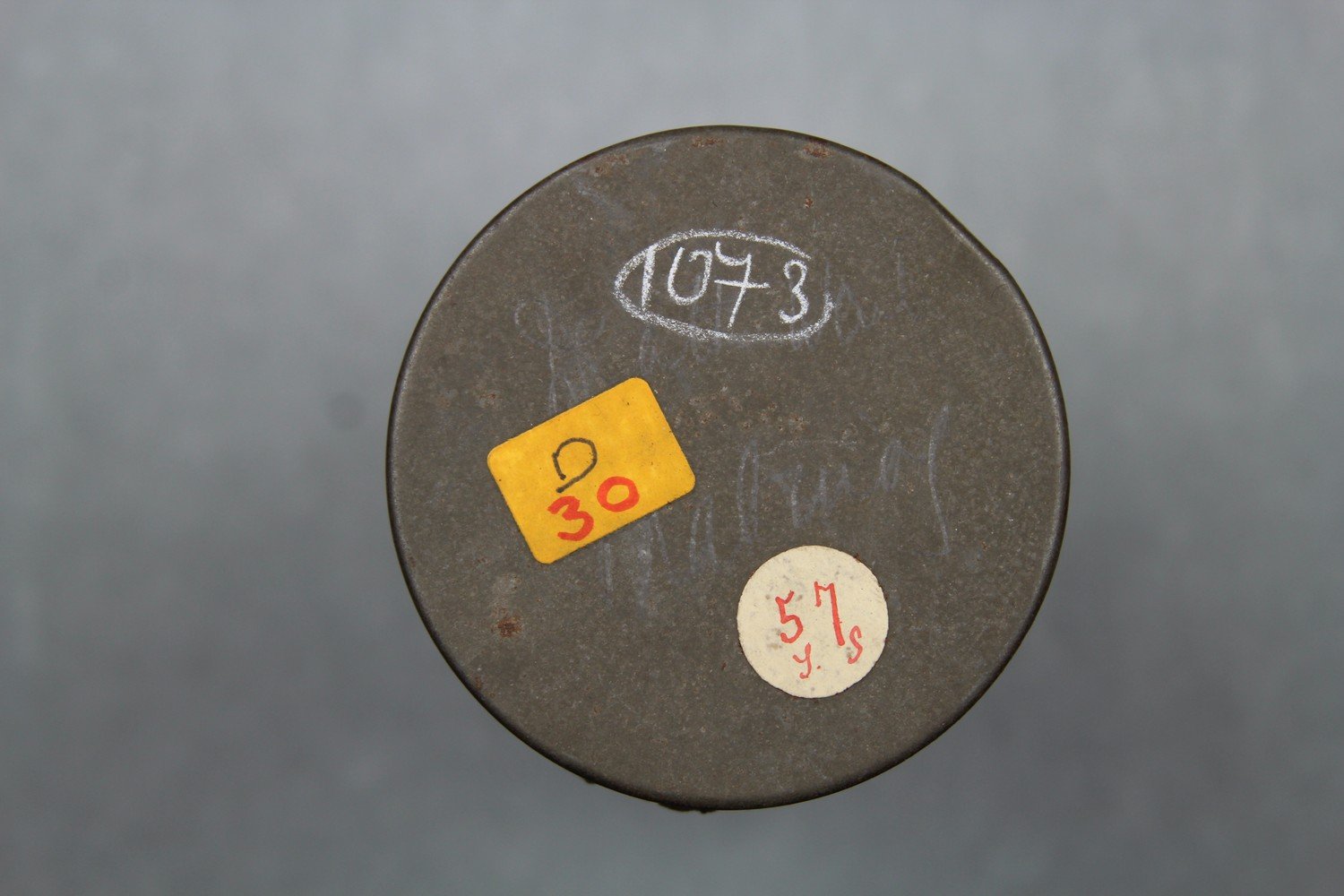 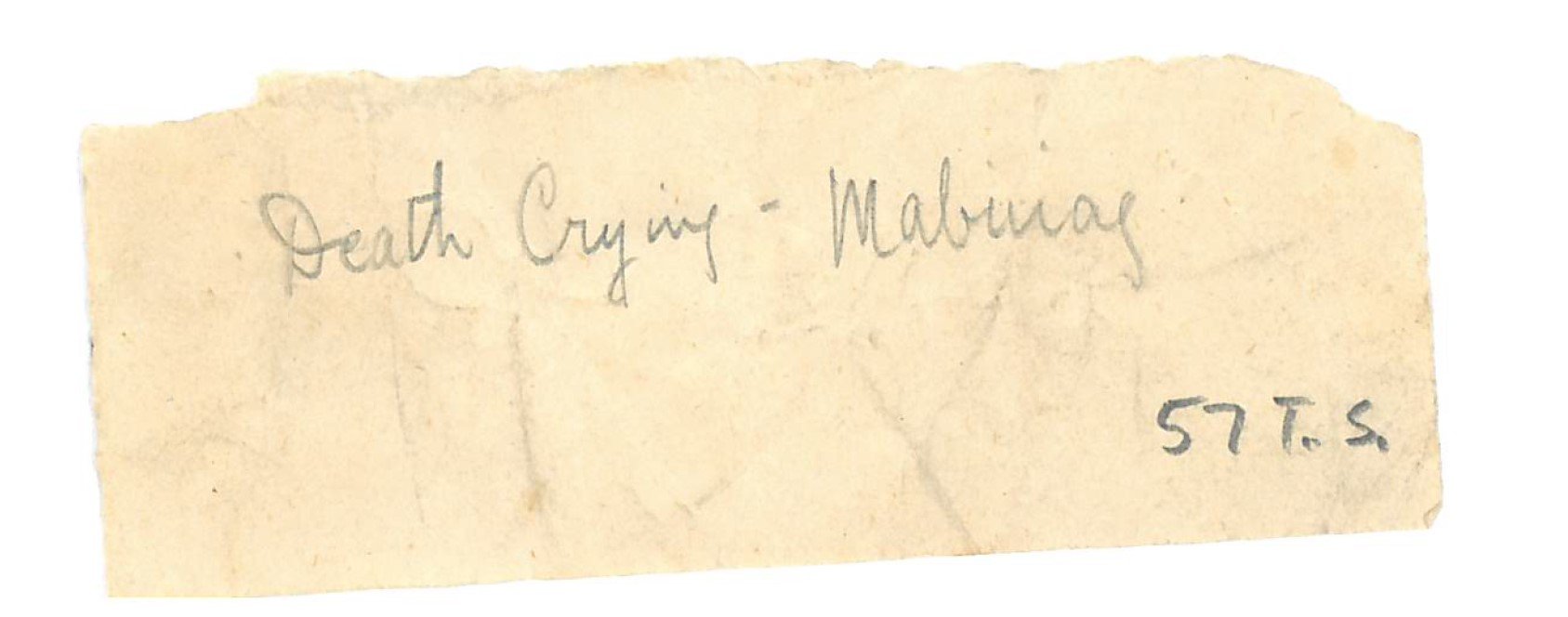     | Haddon, A.C. 1898-89. Journal. [manuscript] MS.HADDON. Cambridge: Cambridge University Library. | |||||||
| C80/1074 | Mabuiag Song | Peter (singer, male) | Mabuiag / Jervis Island, Torres Strait Islands | 3 October 1898 – 22 October 1898 | 1. Announcement: "Mabuiag song, by Pita." 2. Unaccompanied male vocal solo. This recording corresponds to Charles S. Myers' Mabuiag Song XIV. Possible notation in Myers (1912:263) and further discussion on p. 264. Words and translation provided in Myers (1912:269). Wooden madub are ritual objects placed in gardens to ensure successful crops. Usually representing a man but sometimes women (Haddon 1935:358). The madub of Mabuiag are discussed in Haddon, Seligmann and Wilkin (1904:345-347). | Good quality recording with strong signal but some speed fluctuation. The recording date corresponds to the dates that Expedition members visited Mabuiag / Jervis Island. Ray mentions his work with Peter in journal entries from 15 to 18 October 1898. This involved language work and producing recordings using the phonograph (1898:89-90). | Kala Lagaw Ya | Field recordings | Ray, Sidney H. | 2'20" | 1898 Cambridge Anthropological Expedition to Torres Straits | Brown wax cylinder. Metal cylinder case. | Alfred Cort Haddon 1898 Expedition (Torres Strait and British New Guinea) Cylinder Collection | British Library | 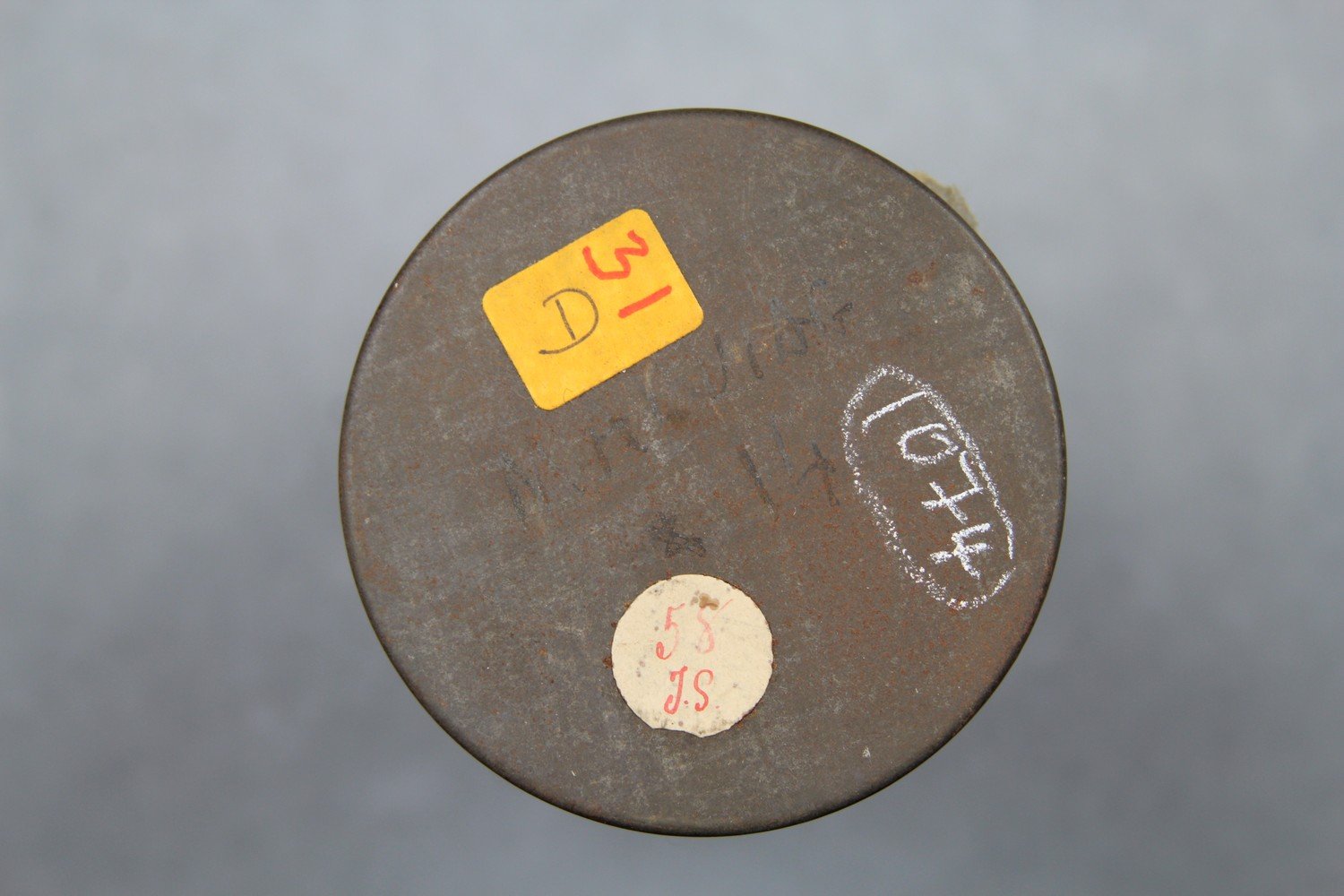     | Ray, S.H. 1898-99. Journal: Torres Straits Expedition 1898-99. [manuscript] Copies of journals and correspondence of Sidney Herbert Ray. MS 380314. London: SOAS Library. | Haddon, A.C. (ed.) 1904. Reports of the Cambridge Anthropological Expedition to Torres Strait: Volume V, Sociology, Magic and Religion of the Western Islanders. Cambridge: Cambridge University Press. British Library shelfmark General Reference Collection YC.2011.b.633. | Haddon, A.C. (ed.) 1912. Reports of the Cambridge Anthropological Expedition to Torres Strait: Volume IV, Arts and Crafts. Cambridge: Cambridge University Press. British Library shelfmark General Reference Collection YC.2011.b.634. | Haddon, A.C. (ed.) 1935. Reports of the Cambridge Anthropological Expedition to Torres Strait: Volume I, General Ethnography. Cambridge: Cambridge University Press. British Library shelfmark General Reference Collection YC.2011.b.630. | |||
| C80/1075 | Wailing at Mabuiag | Mikul (speaker, female) | Mabuiag / Jervis Island, Torres Strait Islands | 3 October 1898 – 22 October 1898 | 1. Announcement: "Wailing at Mabuiag, by Mikul." 2. Female vocal solo. Inscription on insert notes: 'Wailing – Mabuiag, / by Mikul 2 / 59 T.S.'. Haddon mentions the death of Waria's baby on Mabuiag (1901:123). It cannot be confirmed whether this recording is related to the same event. | Reasonable quality recording with strong signal but with speed fluctuation. The recording date corresponds to the dates that Expedition members visited Mabuiag / Jervis Island. | Field recordings | Ray, Sidney H. | 2'28" | 1898 Cambridge Anthropological Expedition to Torres Straits | Brown wax cylinder. Metal cylinder case. | Alfred Cort Haddon 1898 Expedition (Torres Strait and British New Guinea) Cylinder Collection | British Library | 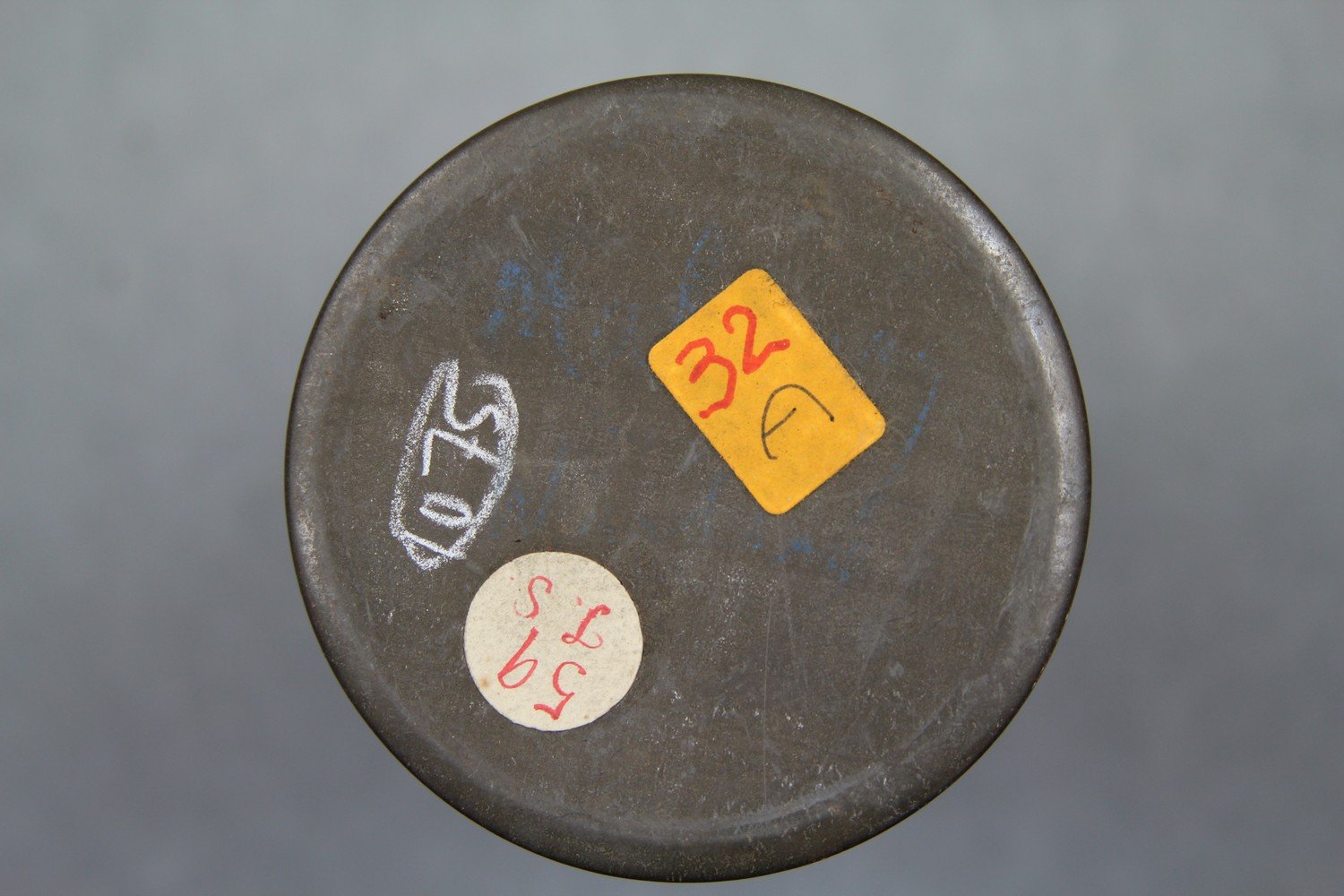      | Haddon, A.C. 1901. Head-Hunters. Black, White and Brown. London: Metheun & Co. General Reference Collection 010055.e.28. | |||||||
| C80/1076 | Na puidam purda | Wap (singer, male) | Saibai Island, Torres Strait Islands | 23 October 1898 – 24 October 1898 | 1. Announcement: "Na puidam purda, sung by Wap, Saibai." 2. Unaccompanied male vocal solo. Inscription on insert notes: 'Na puidan 30, / Sung by Wap / Saibai / 60 T.S.'. Ray (1907:30): 'nau-puidai' translate to ‘to sing’. | Reasonable quality recording. The recording date range is based on when Haddon, Seligman and Ray travelled to Saibai. Ray recorded with the phonograph on 23 and 24 October (Haddon 1898:253; Ray 1898:90). From Alice Moyle's 1985 audition sheets: '[Hymn-like, shows European influence. Ends abruptly. A.M.].' | Kala Lagaw Ya (Possibly Kalaw Kawaw Ya, a variety of Kala Lagaw Ya spoke on Saibai.) | Field recordings | Ray, Sidney H. | 2'14" | 1898 Cambridge Anthropological Expedition to Torres Straits | Brown wax cylinder. Metal cylinder case. | Alfred Cort Haddon 1898 Expedition (Torres Strait and British New Guinea) Cylinder Collection | British Library | 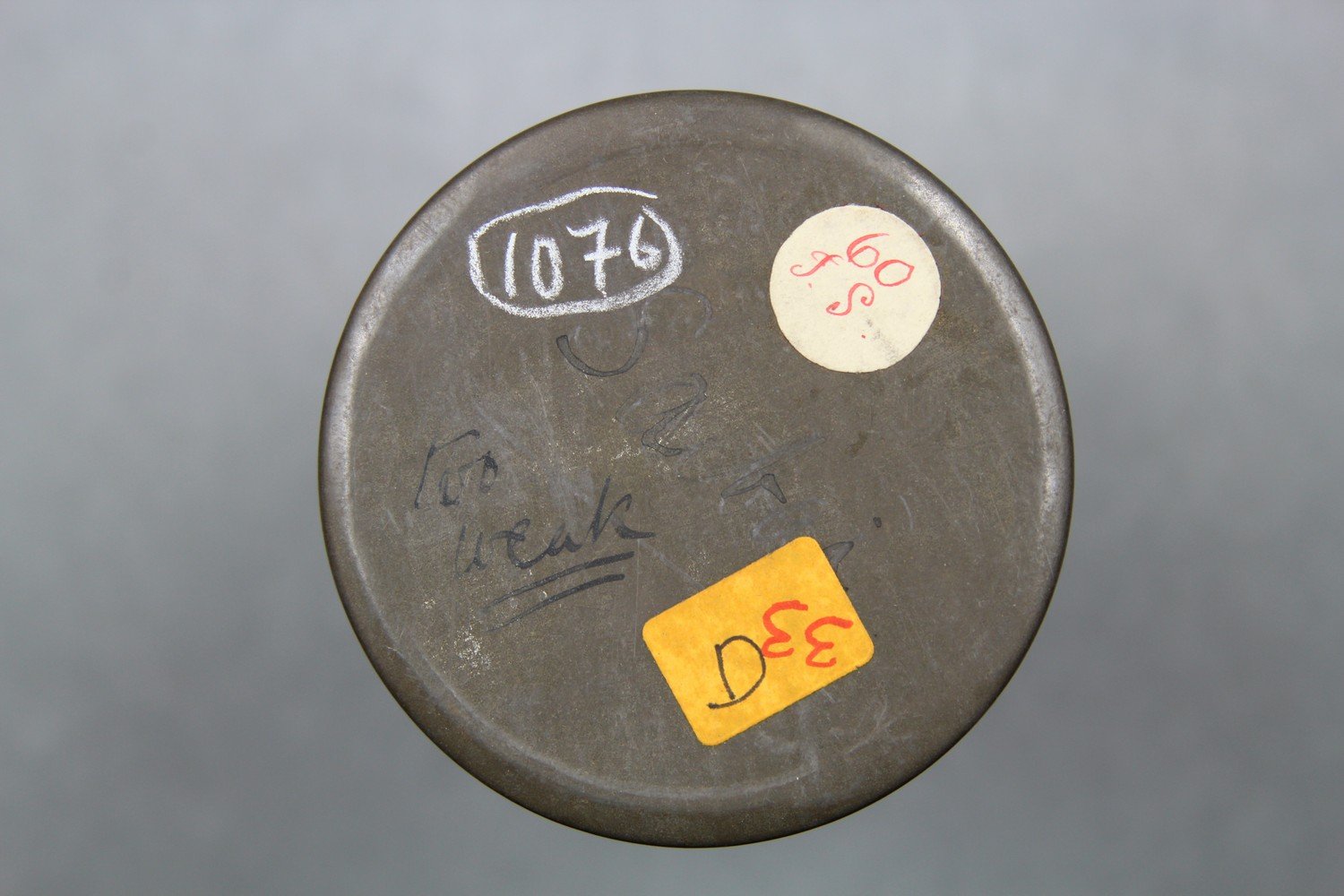      | nau poidan 30 is noted on contemporary documentation held at the British Library, possibly created by Myers. | Haddon, A.C. (ed.) 1907. Reports of the Cambridge Anthropological Expedition to Torres Strait: Volume III, The Languages of Torres Strait. Cambridge: Cambridge University Press. British Library shelfmark General Reference Collection YC.2011.b.631. | Alice Moyle (AIAS, now AIATSIS) completed audition sheets for the Torres Strait cylinder collection in 1985. Copies of these are held at the British Library. | ||||
| C80/1077 | Maduba na puidam | Gemetu (singer, male) | Saibai Island, Torres Strait Islands | 23 October 1898 – 24 October 1898 | 1. Announcement: "Maduba na puidam, sung by Gemetu, Saibai". 2. Unaccompanied male vocal solo. This recording corresponds to Charles S. Myers' Saibai Song II. Words and translation published in Myers (1912:269). Wooden madub are ritual objects placed in gardens to ensure successful crops. Usually representing a man but sometimes women (Haddon 1935:358). The madub of Mabuiag are discussed in Haddon, Seligmann and Wilkin (1904:345-347). | Reasonable quality recording but with weak signal. The recording date range is based on when Haddon, Seligman and Ray travelled to Saibai. Ray recorded with the phonograph on 23 and 24 October (Haddon 1898:253; Ray 1898:90). From Alice Moyle's 1985 audition sheets: '[Container not sighted. A.M.]'. | Kala Lagaw Ya (Possibly Kalaw Kawaw Ya, a variety of Kala Lagaw Ya spoke on Saibai.) | Field recordings | Ray, Sidney H. | 2'24" | 1898 Cambridge Anthropological Expedition to Torres Straits | Brown wax cylinder. Metal cylinder case. | Alfred Cort Haddon 1898 Expedition (Torres Strait and British New Guinea) Cylinder Collection | British Library | 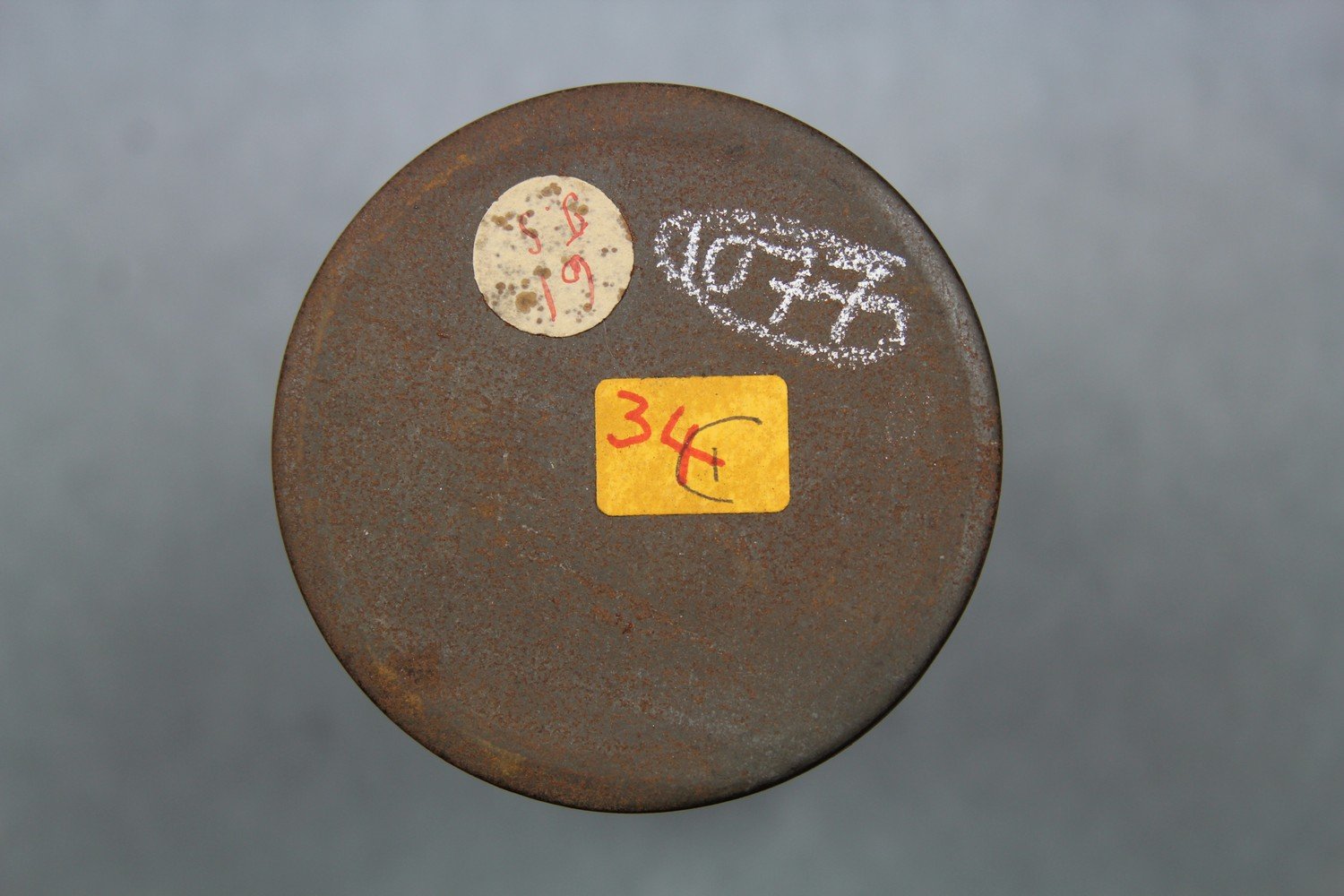      | Ray, S.H. 1898-99. Journal: Torres Straits Expedition 1898-99. [manuscript] Copies of journals and correspondence of Sidney Herbert Ray. MS 380314. London: SOAS Library. | Haddon, A.C. 1898-89. Journal. [manuscript] MS.HADDON. Cambridge: Cambridge University Library. | Haddon, A.C. (ed.) 1904. Reports of the Cambridge Anthropological Expedition to Torres Strait: Volume V, Sociology, Magic and Religion of the Western Islanders. Cambridge: Cambridge University Press. British Library shelfmark General Reference Collection YC.2011.b.633. | Haddon, A.C. (ed.) 1912. Reports of the Cambridge Anthropological Expedition to Torres Strait: Volume IV, Arts and Crafts. Cambridge: Cambridge University Press. British Library shelfmark General Reference Collection YC.2011.b.634. | Haddon, A.C. (ed.) 1935. Reports of the Cambridge Anthropological Expedition to Torres Strait: Volume I, General Ethnography. Cambridge: Cambridge University Press. British Library shelfmark General Reference Collection YC.2011.b.630. | Alice Moyle (AIAS, now AIATSIS) completed audition sheets for the Torres Strait cylinder collection in 1985. Copies of these are held at the British Library. | |
| C80/1078 | Mawa na puidam | Kinaur (singer, male) | Saibai Island, Torres Strait Islands | 23 October 1898 – 24 October 1898 | 1. Announcement: "Mawa na puidam, sung by Kinaur, Saibai." 2. Unaccompanied male vocal solo. Inscription on insert notes: 'Mawa na puidan / sung by Kinaur - / Saibai / 62 T.S. This recording corresponds to Charles S. Myers' Saibai Song I. Words and translation published in Myers (1912:269). Myers has notations for two versions of Saibai, 1A and 1B (1912:263). It is not yet clear which recording corresponds to which version. The mawa ceremony of the Western islands is discussed in Haddon, Seligmann and Wilkin; ‘A similar custom occurred in Saibai, where it took place when the food in the gardens was ripe.’ (1904:348-349). The title could be 'Mauwau na puidam' (‘Mask song’) as given in Marriner (2009). | Reasonable quality recording but with weak signal and surface noise. The recording date range is based on when Haddon, Seligman and Ray travelled to Saibai. Ray recorded with the phonograph on 23 and 24 October (Haddon 1898:253; Ray 1898:90). | Kala Lagaw Ya (Possibly Kalaw Kawaw Ya, a variety of Kala Lagaw Ya spoke on Saibai.) | Field recordings | Ray, Sidney H. | 1'40" | 1898 Cambridge Anthropological Expedition to Torres Straits | Brown wax cylinder. Metal cylinder case. | Alfred Cort Haddon 1898 Expedition (Torres Strait and British New Guinea) Cylinder Collection | British Library | 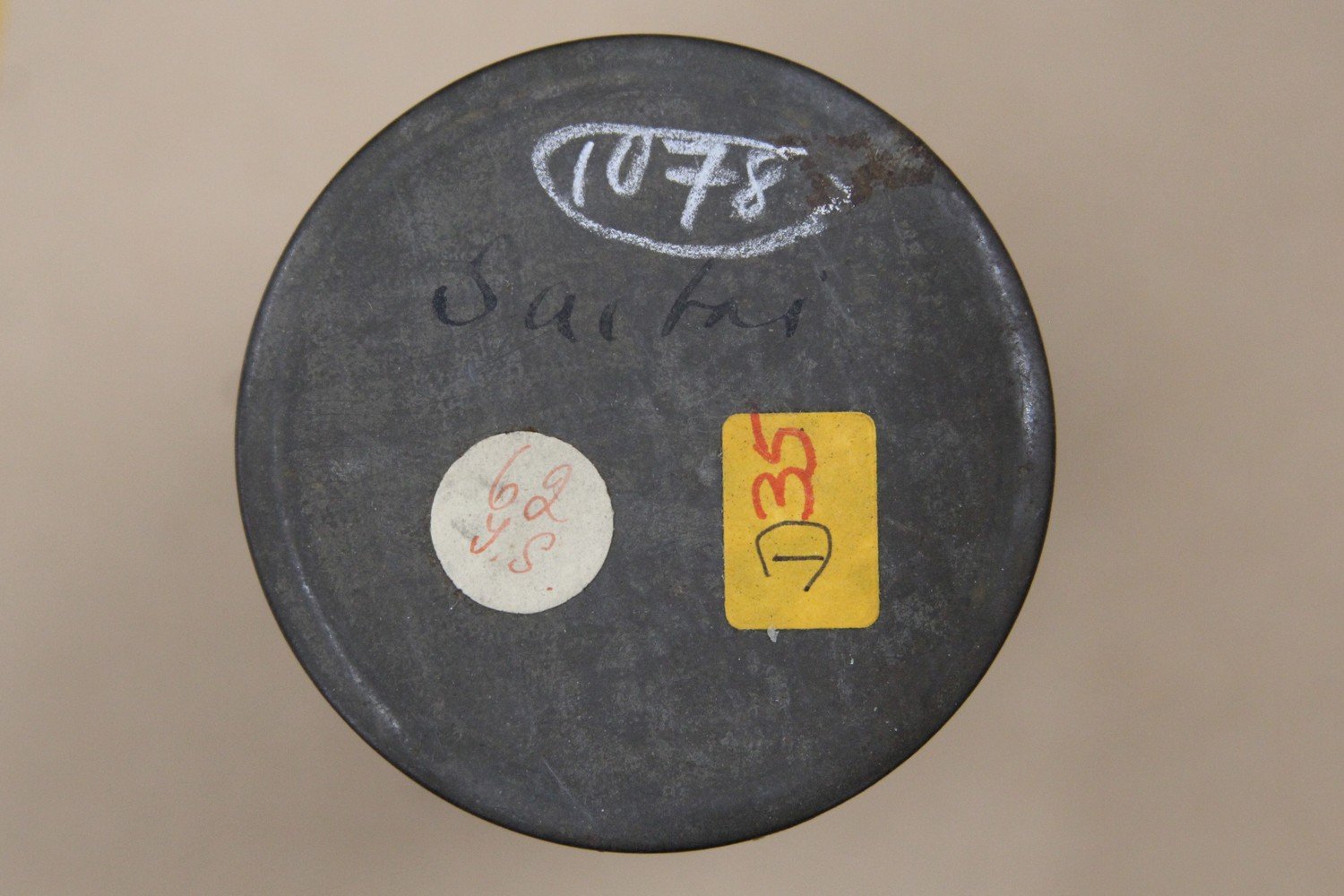 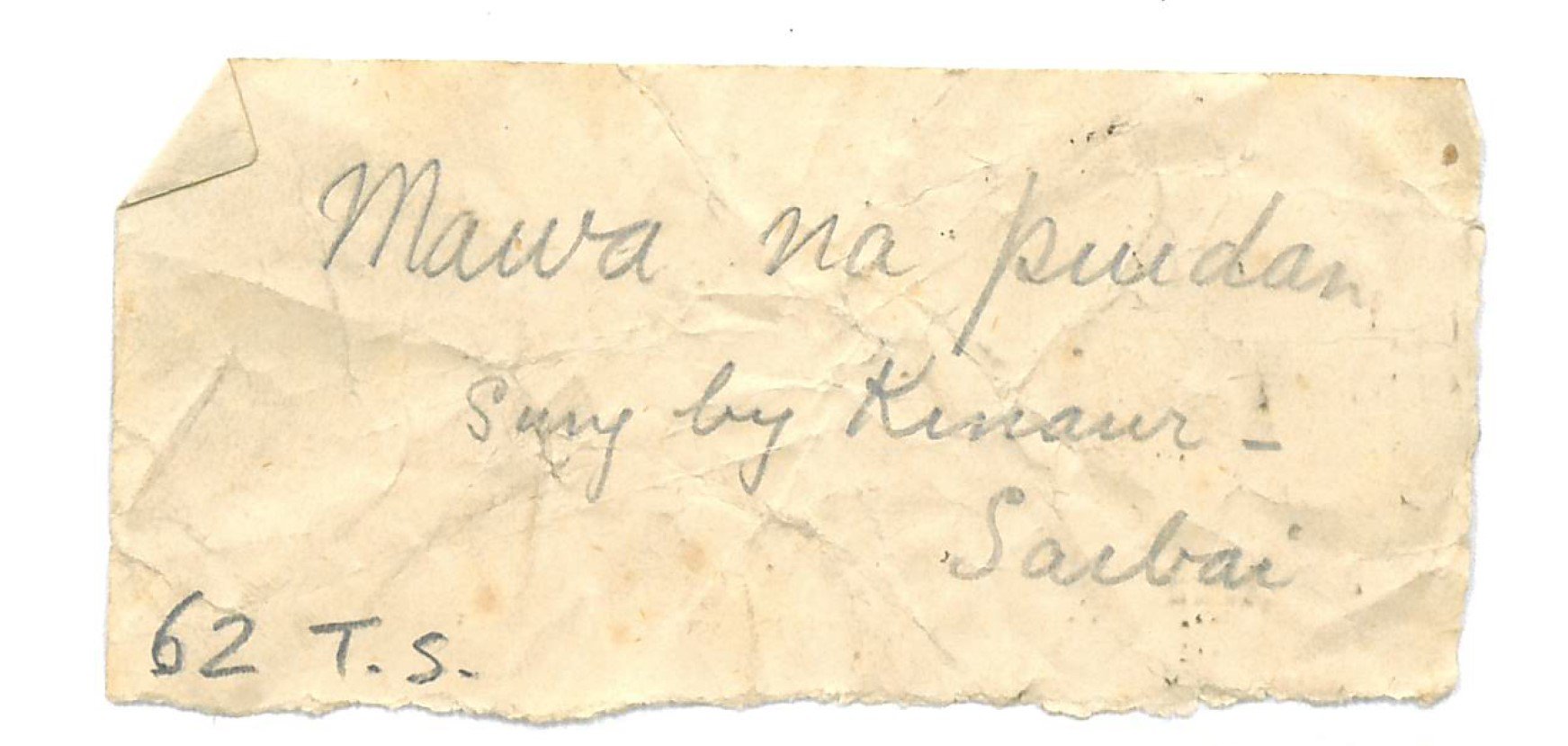     | Ray, S.H. 1898-99. Journal: Torres Straits Expedition 1898-99. [manuscript] Copies of journals and correspondence of Sidney Herbert Ray. MS 380314. London: SOAS Library. | Haddon, A.C. 1898-89. Journal. [manuscript] MS.HADDON. Cambridge: Cambridge University Library. | Haddon, A.C. (ed.) 1904. Reports of the Cambridge Anthropological Expedition to Torres Strait: Volume V, Sociology, Magic and Religion of the Western Islanders. Cambridge: Cambridge University Press. British Library shelfmark General Reference Collection YC.2011.b.633. | Haddon, A.C. (ed.) 1912. Reports of the Cambridge Anthropological Expedition to Torres Strait: Volume IV, Arts and Crafts. Cambridge: Cambridge University Press. British Library shelfmark General Reference Collection YC.2011.b.634. | Marriner, K. 2009. Who Do You Think You Are? [PDF] ATOM. | ||
| C80/1079 | Mawau na puidam | Gemetu (singer, male) | Saibai Island, Torres Strait Islands | 23 October 1898 – 24 October 1898 | 1. Announcement: "Mawau na puidam, sung by Gemetu, Saibai." 2. Unaccompanied male vocal solo. 3. "Na puidam." 4. Unaccompanied male vocal solo. Inscription on insert note: 'Mawau na puidan / sung by / Gemetu / Saibai / 63 T.S.'. This recording corresponds to Charles S. Myers' Saibai Song I. Words and translation published in Myers (1912:269). Myers has notations for two versions of Saibai, 1A and 1B (1912:263). It is not yet clear which recording corresponds to which version. The mawa ceremony of the Western islands is discussed in Haddon, Seligmann and Wilkin; ‘A similar custom occurred in Saibai, where it took place when the food in the gardens was ripe.’ (1904:348-349). | Good quality recording but with some surface noise. The recording date range is based on when Haddon, Seligman and Ray travelled to Saibai. Ray recorded with the phonograph on 23 and 24 October (Haddon 1898:253; Ray 1898:90). | Kala Lagaw Ya (Possibly Kalaw Kawaw Ya, a variety of Kala Lagaw Ya spoke on Saibai.) | Field recordings | Ray, Sidney H. | 2'13" | 1898 Cambridge Anthropological Expedition to Torres Straits | Brown wax cylinder. Metal cylinder case. | Alfred Cort Haddon 1898 Expedition (Torres Strait and British New Guinea) Cylinder Collection | British Library | 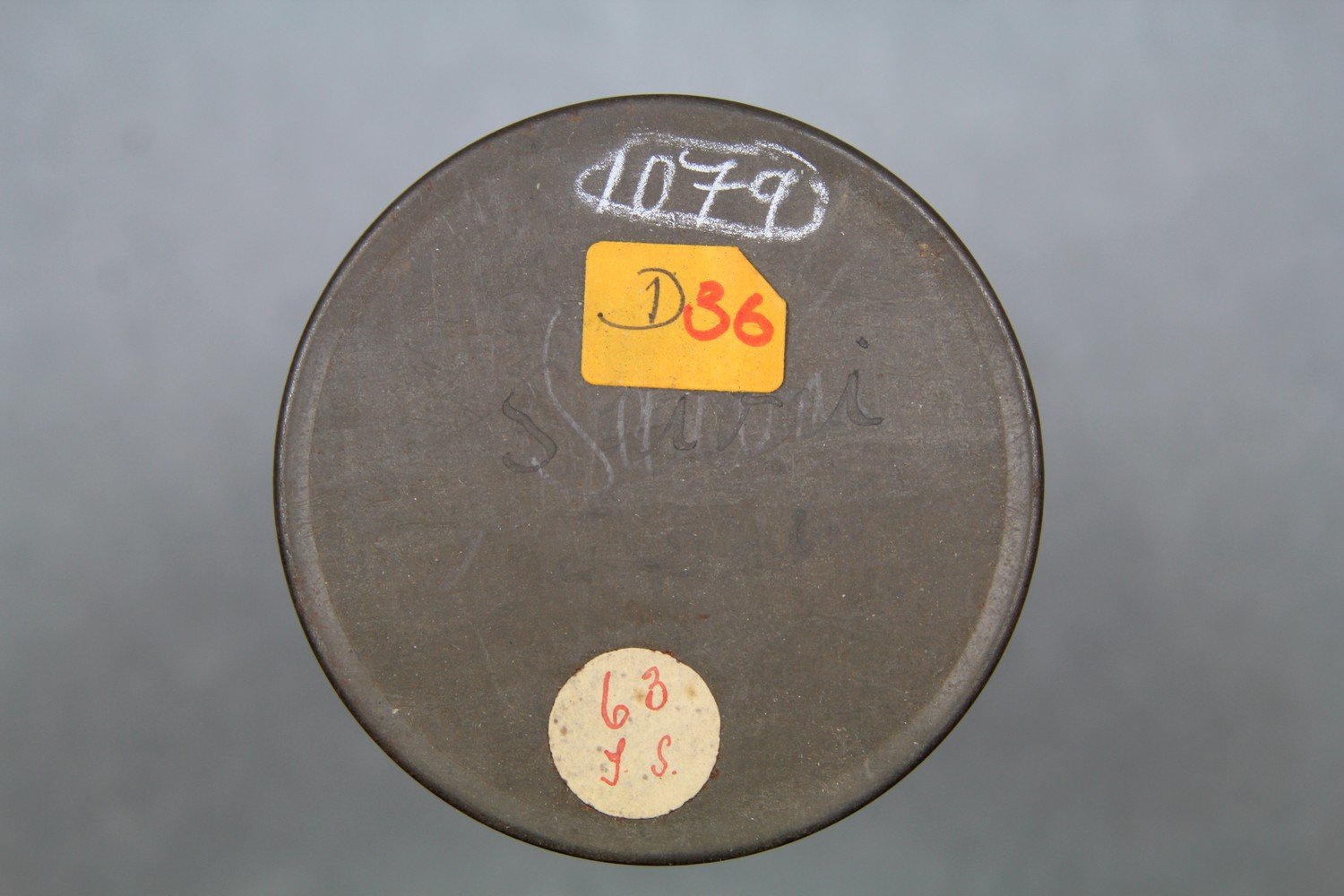      | Ray, S.H. 1898-99. Journal: Torres Straits Expedition 1898-99. [manuscript] Copies of journals and correspondence of Sidney Herbert Ray. MS 380314. London: SOAS Library. | Haddon, A.C. 1898-89. Journal. [manuscript] MS.HADDON. Cambridge: Cambridge University Library. | Haddon, A.C. (ed.) 1904. Reports of the Cambridge Anthropological Expedition to Torres Strait: Volume V, Sociology, Magic and Religion of the Western Islanders. Cambridge: Cambridge University Press. British Library shelfmark General Reference Collection YC.2011.b.633. | Haddon, A.C. (ed.) 1912. Reports of the Cambridge Anthropological Expedition to Torres Strait: Volume IV, Arts and Crafts. Cambridge: Cambridge University Press. British Library shelfmark General Reference Collection YC.2011.b.634. | |||
| C80/1080 | Nau poida | Aimab (singer, male) | Saibai Island, Torres Strait Islands | 23 October 1898 – 24 October 1898 | 1. Announcement: "Nau poida 6 [?], sung by Aimab, Saibai." 2. Unaccompanied male vocal solo. Inscription on insert notes: 'Nau paidan 6 / Sung by Aimab / Saibai / 64 T.S.'. The title is similar to 'nau-puidai', which translates to ‘to sing’ (Ray 1907:30) | Reasonable quality recording. The recording date range is based on when Haddon, Seligman and Ray travelled to Saibai. Ray recorded with the phonograph on 23 and 24 October (Haddon 1898:253; Ray 1898:90). | Kala Lagaw Ya (Possibly Kalaw Kawaw Ya, a variety of Kala Lagaw Ya spoke on Saibai.) | Field recordings | Ray, Sidney H. | 1'47" | 1898 Cambridge Anthropological Expedition to Torres Straits | Brown wax cylinder. Metal cylinder case. | Alfred Cort Haddon 1898 Expedition (Torres Strait and British New Guinea) Cylinder Collection | British Library |  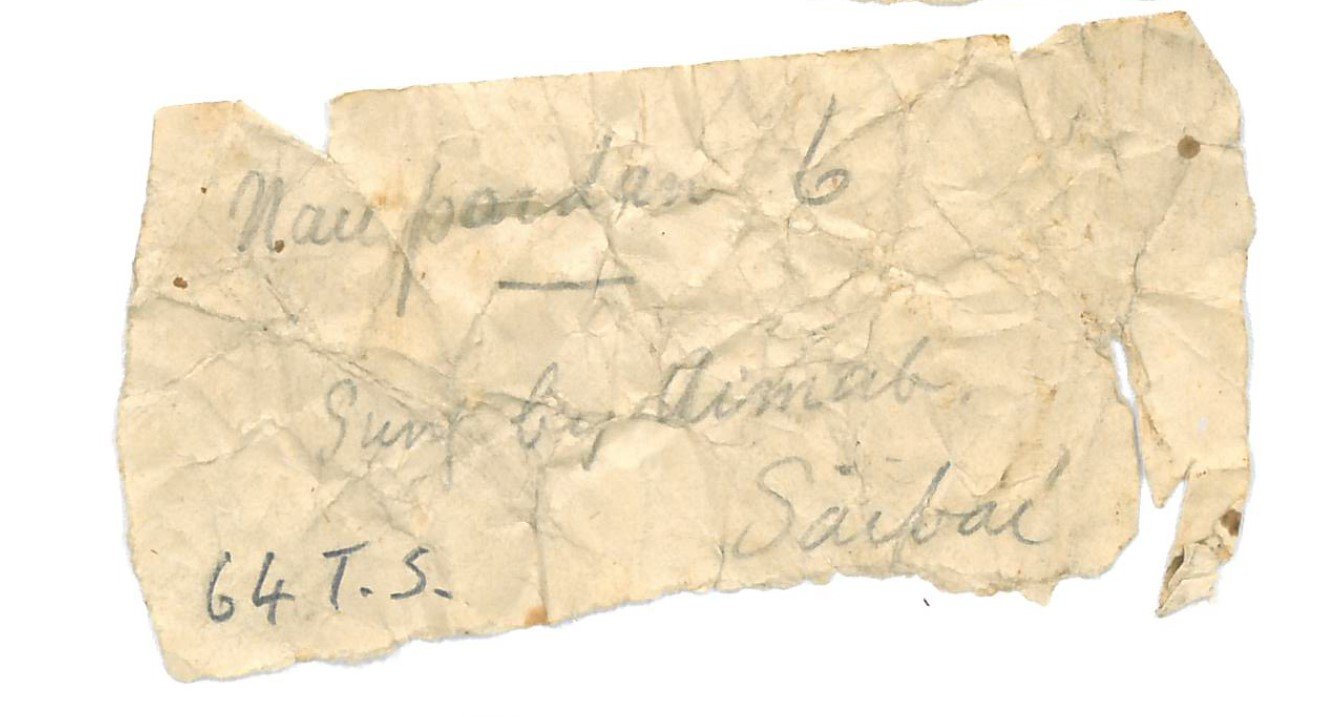     | nau poidam. ? A hymn is noted on contemporary documentation held at the British Library, possibly created by Myers. | ||||||
| C80/1081 | Korara kwiku puidaik | Gizu (singer, male); Maino (singer, male, Mamoose of Tudu / Warrior Islet and Iama / Yam Island) | Torres Strait Islands | 3 October 1898 – 22 October 1898 | 1. Announcement: "Korara kwiku puidaik, sung by Gizu." 2. Unaccompanied male vocal solo. 3. "Karara kwiku puidaik, sung by Maino." 4. Unaccompanied male vocal solo [probably retake of 2.]. This recording corresponds to Charles S. Myers' Mabuiag Song IX. Possibly a crocodile mask dance belonging to the Kodal augad or crocodile clan. A version of the 'kulai kuiku kab' or ‘crocodile dance’ is in Laade (1977:4). Ray noted that 'kora' [Tudu dialect] corresponds to 'kodal' ‘crocodile’. 'kuik(u), kwik' translates to ‘head’. 'Nau-puidai' translates 'to sing' (Ray 1907:38). The term 'mariget' translates to 'ghost hand', a 'decreed individual' who 'takes on the role of primary organiser and planner' following a death in the community e.g. announcements, funeral planning. (Fitzpatrick (2000) 1.6 Tombstone ceremonies: Identity and political integration, pg. 37). Two individuals with the name Mariget (also known as Sandy or Waime) are noted in the Mabuiag genealogies (Rivers Vol V Tables 2A and 3A 1904:125). Men would exchange names with each other (and sometimes their wives and children too). Mariget is also mentioned in Vol IV (1912:xiv;221). Inscription on insert notes: 'Korara kwiku puidaik / by Gizu Mariget. / 65 T.S.' There does not seem to be evidence that Gizu and Maino were in the same location with Ray during the 1898 Cambridge Expedition. Gizu was recorded on Mabuiag. The two tracks may have been recorded on separate occasions. | Reasonable quality recording with strong signal but also some speed fluctuation. As no specific recording location has been identified, the recording date range is based on when any members of the Cambridge Expedition were present in the Torres Strait in 1898. Ray notes that he recorded two songs ('Good records') by Gizu on 7 October 1898 (Ray 1898:89). These may be C80/1072 and 1081, or possibly C80/1067. | Kala Lagaw Ya (Possibly Kulkalgaw Ya, a variety of Kala Lagaw Ya, spoken on Iama / Yam Island. Maino, one of the performers, was the Mamoose of Tudu / Warrior Islet and Iama / Yam Island.) | Field recordings | Ray, Sidney H. | 2'20" | 1898 Cambridge Anthropological Expedition to Torres Straits | Brown wax cylinder. Metal cylinder case. | Alfred Cort Haddon 1898 Expedition (Torres Strait and British New Guinea) Cylinder Collection | British Library | 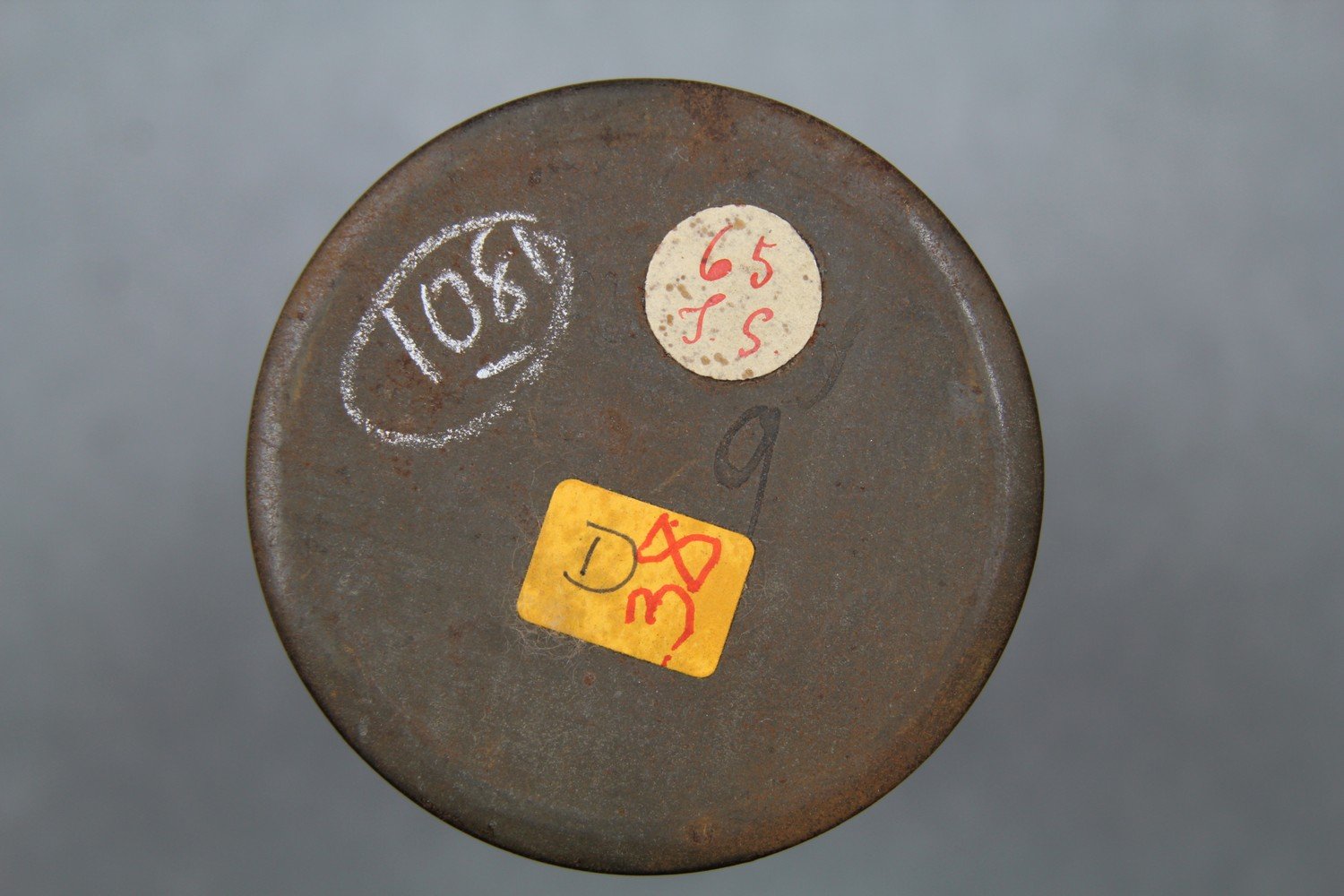 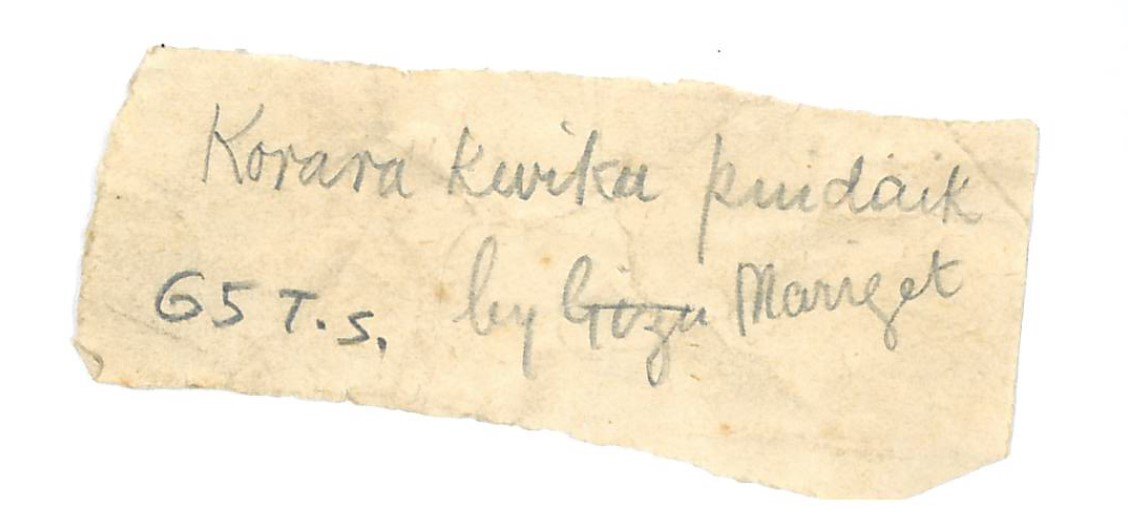     | Ray, S.H. 1898-99. Journal: Torres Straits Expedition 1898-99. [manuscript] Copies of journals and correspondence of Sidney Herbert Ray. MS 380314. London: SOAS Library. | Haddon, A.C. (ed.) 1907. Reports of the Cambridge Anthropological Expedition to Torres Strait: Volume III, The Languages of Torres Strait. Cambridge: Cambridge University Press. British Library shelfmark General Reference Collection YC.2011.b.631. | Laade, Wolfgang. 1977. Traditional Songs of the Western Torres Straits, South Pacific. Folkways Records Album No. FE 4025 [sleeve notes] New York: Folkways Records. British Library Sound Archive shelfmark 1LP0083172. See http://www.si.edu/folkways | ||||
| C80/1091 | Funeral Song | Unidentified (singer, male) | Mer / Murray Island, Torres Strait Islands | 10 May 1898 – 24 August 1898 | 1-2. Unaccompanied male vocal solo. Inscription on insert notes: 1) Nogle / Funeral song / Tud’; 2) A death song from Tud: Sung in Mer as secular / song on death of a nogle [illeg] / “one of the people”. / Sung also as babanet (prelude before dance)'; 3) (O d…[?] mauatosikata[?] back pudemawa waia) 2 / (tanaba waliguba gol[…?]) mina / [illeg] mask / Song long ago introduced from Tud’ (v. off[?])’. This recording corresponds to Charles S. Myers' Keber Song XIII A. Notation and analysis of Song XIII A in Myers (1912:246, 253). This song was introduced from Tutu [Tudu Island / Warrior Islet] (Myers 1912:240). Sung at the funeral of a nogle, ‘one of the people’ who was not zogo le or tami le [assistants to the zogo le]. The zogo le were entitled to wear the Malo-Bomai masks, persons with sacred or divine power; person with power to discern the movement of cosmic energy' [https://www.mabonativetitle.com/info/meriamWords.htm]. Also used as a babanet, or prelude to a dance (Myers 1912:239, 240, 268). | Reasonable quality recording The recording date range assumes that Myers is indeed the recordist and corresponds to the dates of Myer's stay on Mer / Murray Island. | Meriam Mir | Field recordings | Myers, C. S. | 2'15" | 1898 Cambridge Anthropological Expedition to Torres Straits | Brown wax cylinder. Metal cylinder case. | Alfred Cort Haddon 1898 Expedition (Torres Strait and British New Guinea) Cylinder Collection | British Library | 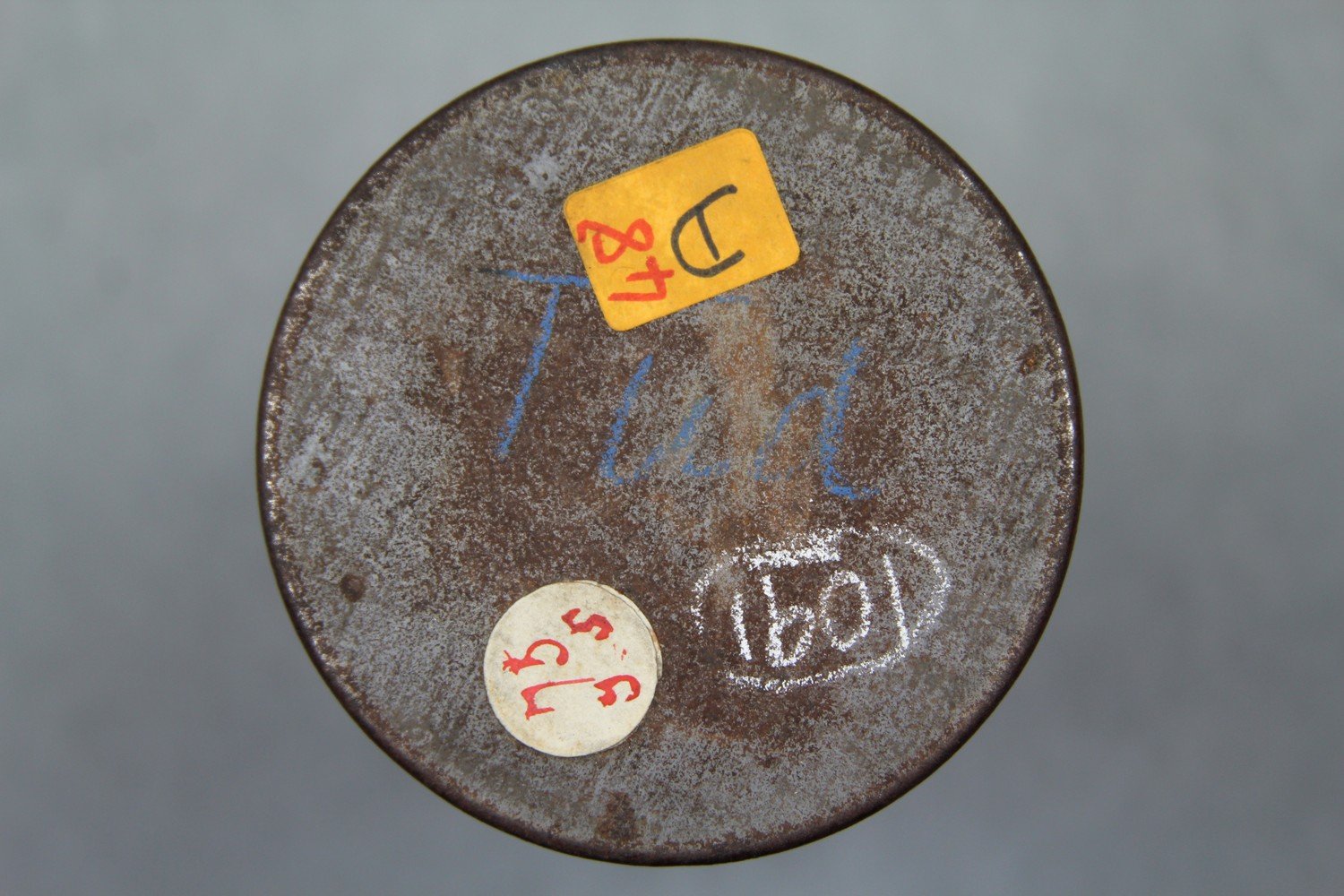 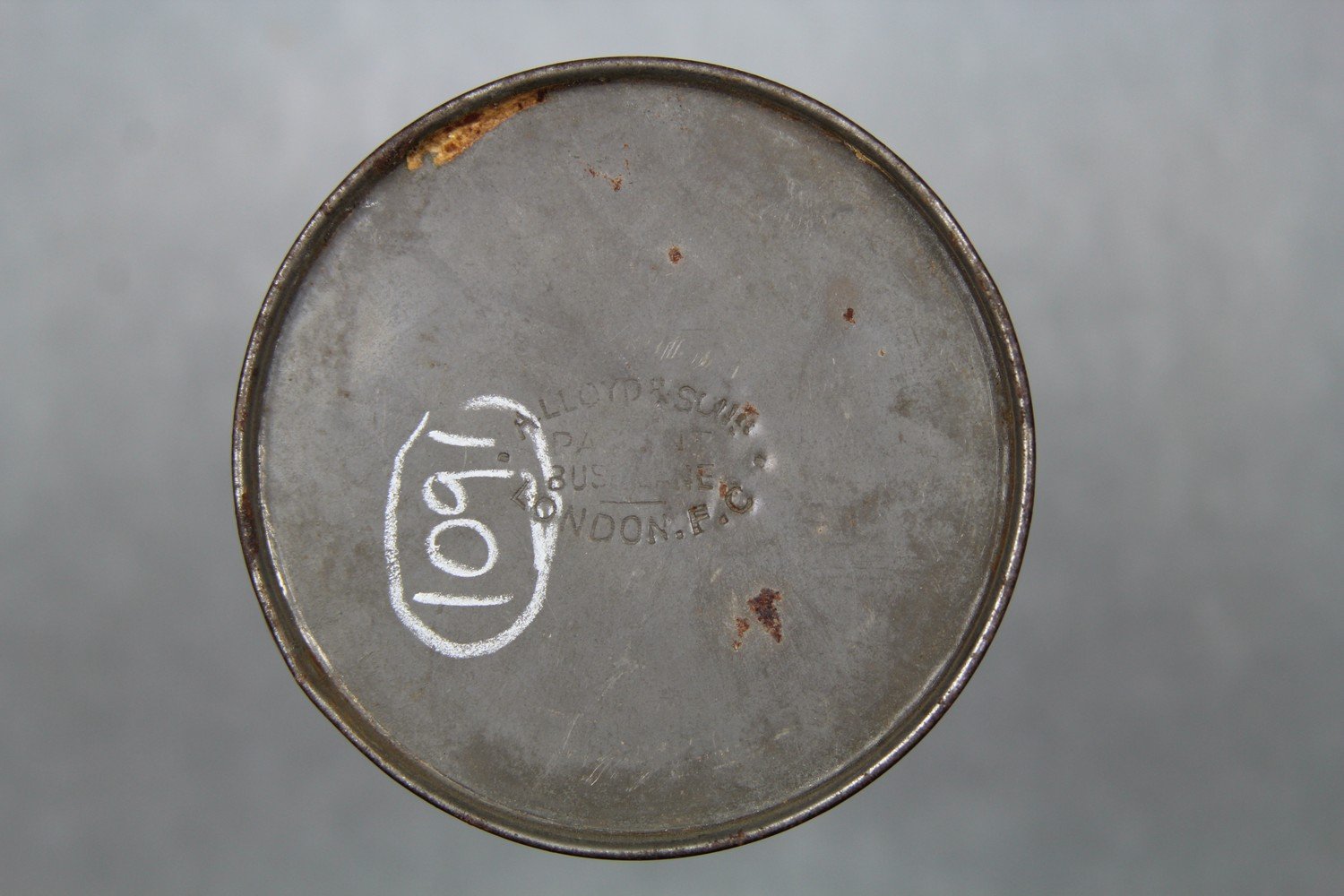 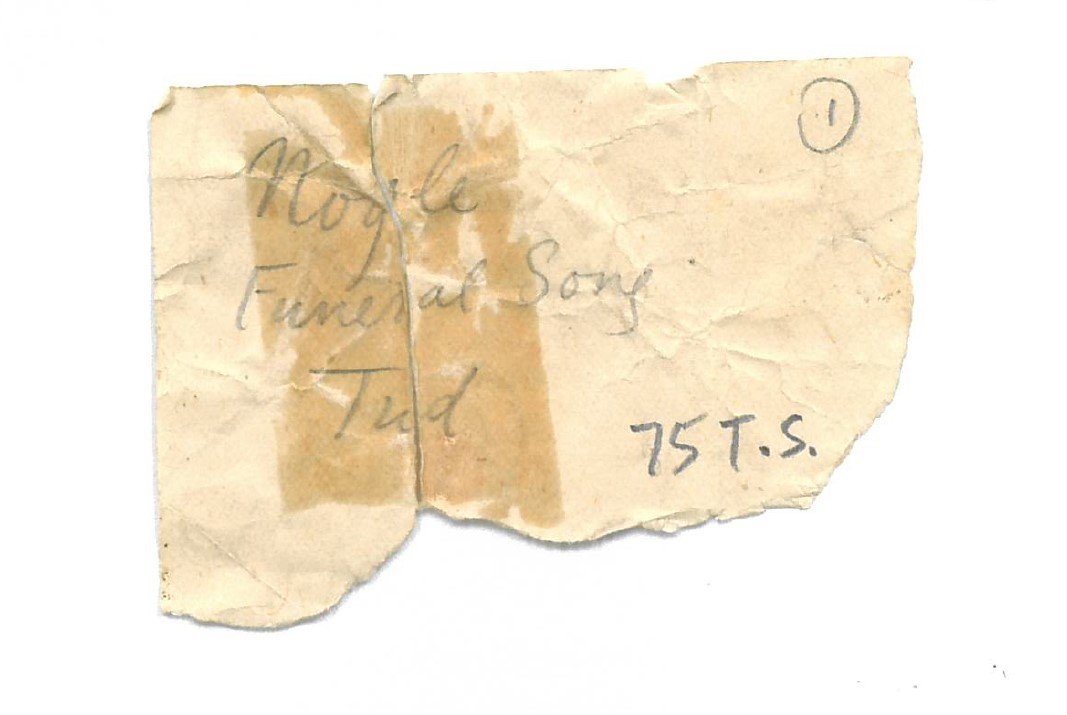    | Haddon, A.C. (ed.) 1912. Reports of the Cambridge Anthropological Expedition to Torres Strait: Volume IV, Arts and Crafts. Cambridge: Cambridge University Press. British Library shelfmark General Reference Collection YC.2011.b.634. | ||||||
| C80/1092 | Song from Yam Island | Bodu / Bogu (singer, male) | Iama / Yam Island, Torres Strait Islands | 26 October 1898 ? | 1. "[indecipherable], sung by Bodu/Bogu [?], Yam." 2. Unaccompanied male vocal solo. This recording corresponds to Charles S. Myers' Yam Song I. | Reasonable quality recording but with weak signal and surface noise. Haddon, Seligman and Ray visited Iama / Yam Island on 22 October 1898 to pick up Maino and a policeman called Kaikai before heading to Saibai on the same day (Haddon 1901:xiii, 170). They returned to Iama on 25 October and left on 27 October (Haddon 1898:254, 257 – 258). Ray noted that he 'obtained some records but singers too low' on 26 October during his visit to Iama (1898:90) | Kala Lagaw Ya (Possibly Kulkalgaw Ya, a variety of Kala Lagaw Ya, spoken on Iama / Yam Island.) | Field recordings | Ray, Sidney H. | 2'15" | 1898 Cambridge Anthropological Expedition to Torres Straits | Brown wax cylinder. Cardboard cylinder case. | Alfred Cort Haddon 1898 Expedition (Torres Strait and British New Guinea) Cylinder Collection | British Library | 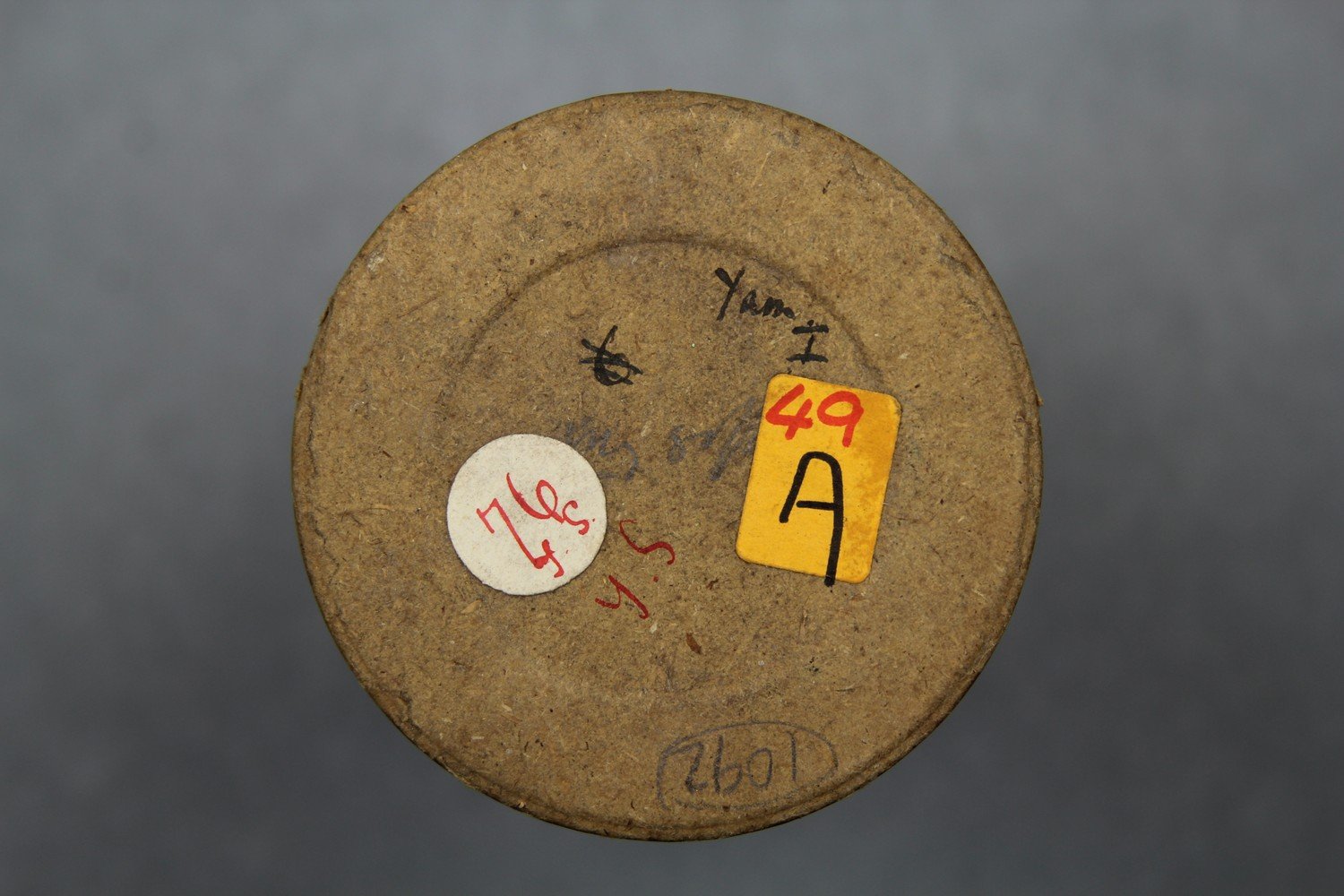      | Ray, S.H. 1898-99. Journal: Torres Straits Expedition 1898-99. [manuscript] Copies of journals and correspondence of Sidney Herbert Ray. MS 380314. London: SOAS Library. | Haddon, A.C. 1898-89. Journal. [manuscript] MS.HADDON. Cambridge: Cambridge University Library. | Haddon, A.C. 1901. Head-Hunters. Black, White and Brown. London: Metheun & Co. General Reference Collection 010055.e.28. | Haddon, A.C. (ed.) 1912. Reports of the Cambridge Anthropological Expedition to Torres Strait: Volume IV, Arts and Crafts. Cambridge: Cambridge University Press. British Library shelfmark General Reference Collection YC.2011.b.634. | |||
| C80/1093 | Yam II | Maino (singer, male, Mamoose of Tudu / Warrior Islet and Iama / Yam Island) | Iama / Yam Island, Torres Strait Islands ? | 22 October 1898, 25 October 1898, or 27 October 1898 | 1. Announcement: "Yamaz sibared, sung by Maino of Yam." 2. Unaccompanied male vocal solo. No further information available. Inscription on insert: ‘Yamaz sibared / sung by Maino / of Yama’. This recording corresponds to Charles S. Myers' Yam Song II. Notation, words and translation published in Myers (1912:263, 269). Discussion of Yam songs in Myers (1912:264). Yamazi barid is translated as 'along Yam Id. Cuscus'. | Good quality recording with strong signal but some surface noise. Haddon, Seligman and Ray visited Iama / Yam Island on 22 October 1898 to pick up Maino and a policeman called Kaikai before heading to Saibai on the same day (Haddon 1901:xiii, 170). They returned to Iama on 25 October and left on 27 October (Haddon 1898:254, 257 – 258). Ray noted that he 'obtained some records but singers too low' on 26 October during his visit to Iama (1898:90) | Kala Lagaw Ya (Possibly Kulkalgaw Ya, a variety of Kala Lagaw Ya, spoken on Iama / Yam Island.) | Field recordings | Ray, Sidney H. | 1'43" | 1898 Cambridge Anthropological Expedition to Torres Straits | Brown wax cylinder. Cardboard cylinder case. | Alfred Cort Haddon 1898 Expedition (Torres Strait and British New Guinea) Cylinder Collection | British Library | 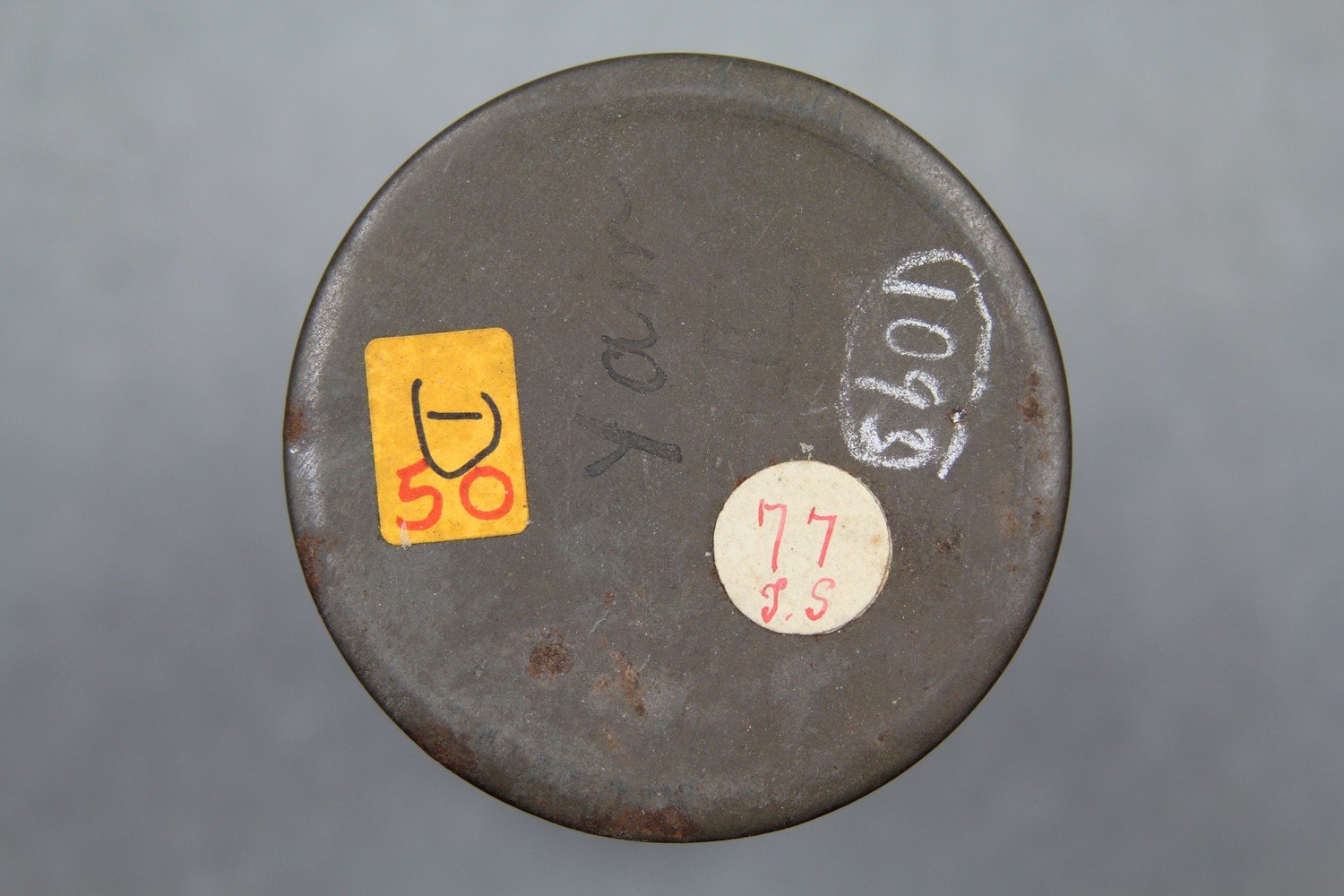 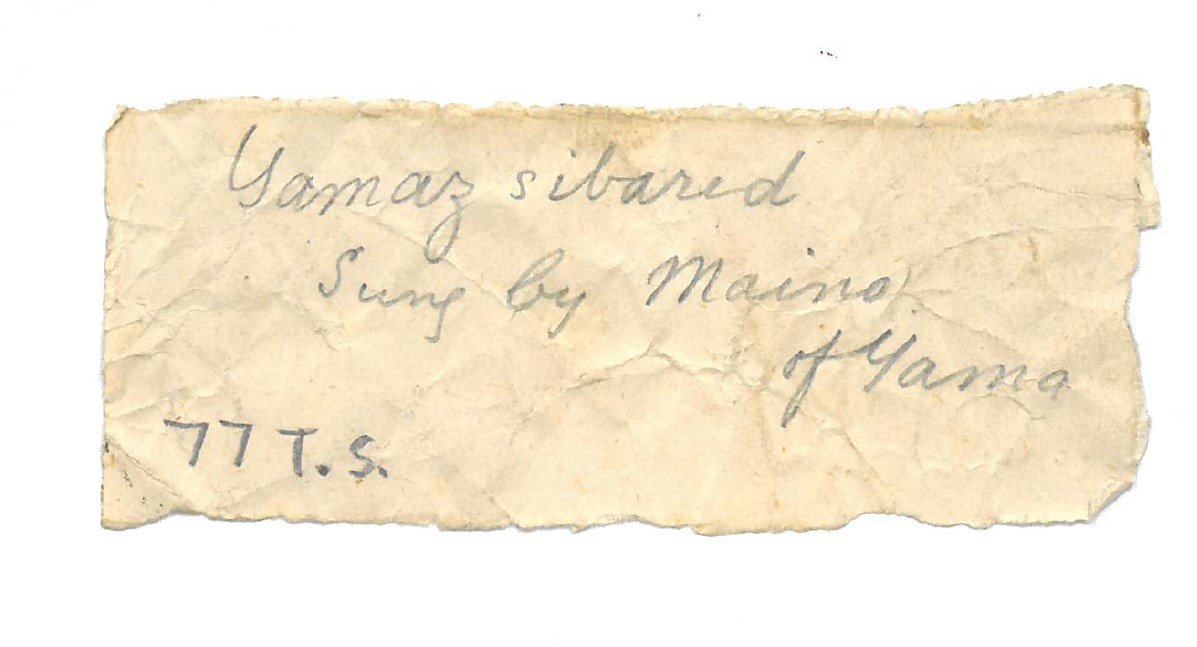     | Ray, S.H. 1898-99. Journal: Torres Straits Expedition 1898-99. [manuscript] Copies of journals and correspondence of Sidney Herbert Ray. MS 380314. London: SOAS Library. | Haddon, A.C. 1898-89. Journal. [manuscript] MS.HADDON. Cambridge: Cambridge University Library. | Haddon, A.C. 1901. Head-Hunters. Black, White and Brown. London: Metheun & Co. General Reference Collection 010055.e.28. | ||||
| C80/1095 | Adud leluti A | Ulai (singer, male); Gasu (singer, male) | Mer / Murray Island, Torres Strait Islands | 10 May 1898 – 24 August 1898 | Transcription and translation on cylinder insert notes: 'Adud leluti A. On reverse: Wau aka Maluet adud leluti / (yea) (indeed) (malu) (bad) (man) / Adud teregeti Warbir naukarik / (bad) (teeth) (Warbir) (haul me out) / leluti Warbir derebele / (man) (dug out) / segura tuglei / (song) (stand round).' This recording corresponds to Charles S. Myers' Malu Song IV A. Adud leluti translates to 'bad man' (Haddon & Myers 1908:297). Ray translates adud as 'bad' or 'evil' (Ray 1907:132). Song IV A was performed during the exhibition of the sacred Malu-Bomai masks and also during the dance of the Beizam Boai after the initiation ceremonies.” (Myers 1912:243). "The fourth song was uttered in a very low voice, and was followed by yet more highly sacred words which were quickly whispered so that no one may hear them save those who had been initiated into the Malu mysteries" (Myers & Haddon 1908:150). Published and analysed in Myers (1912:249-251, 267). Words also published in Haddon & Myers (1908:297-299). Musical notation is also included in Anthony Wilkin's field notebook as Song H (1898:251). | Reasonable quality recording but with some surface noise due to cracked and bandaged cylinder. The recording date range assumes that Myers is indeed the recordist and corresponds to the dates of Myer's stay on Mer / Murray Island. C80/1019 (better quality) and C80/1095 are duplicates. From Alice Moyle's 1985 audition sheets: Noted as C103. Links to A4, A7 and A10. | Meriam Mir | Field recordings | Myers, C. S. | 1'47" | 1898 Cambridge Anthropological Expedition to Torres Straits | Brown wax cylinder. Cardboard cylinder case. EBE green label. | Alfred Cort Haddon 1898 Expedition (Torres Strait and British New Guinea) Cylinder Collection | British Library |   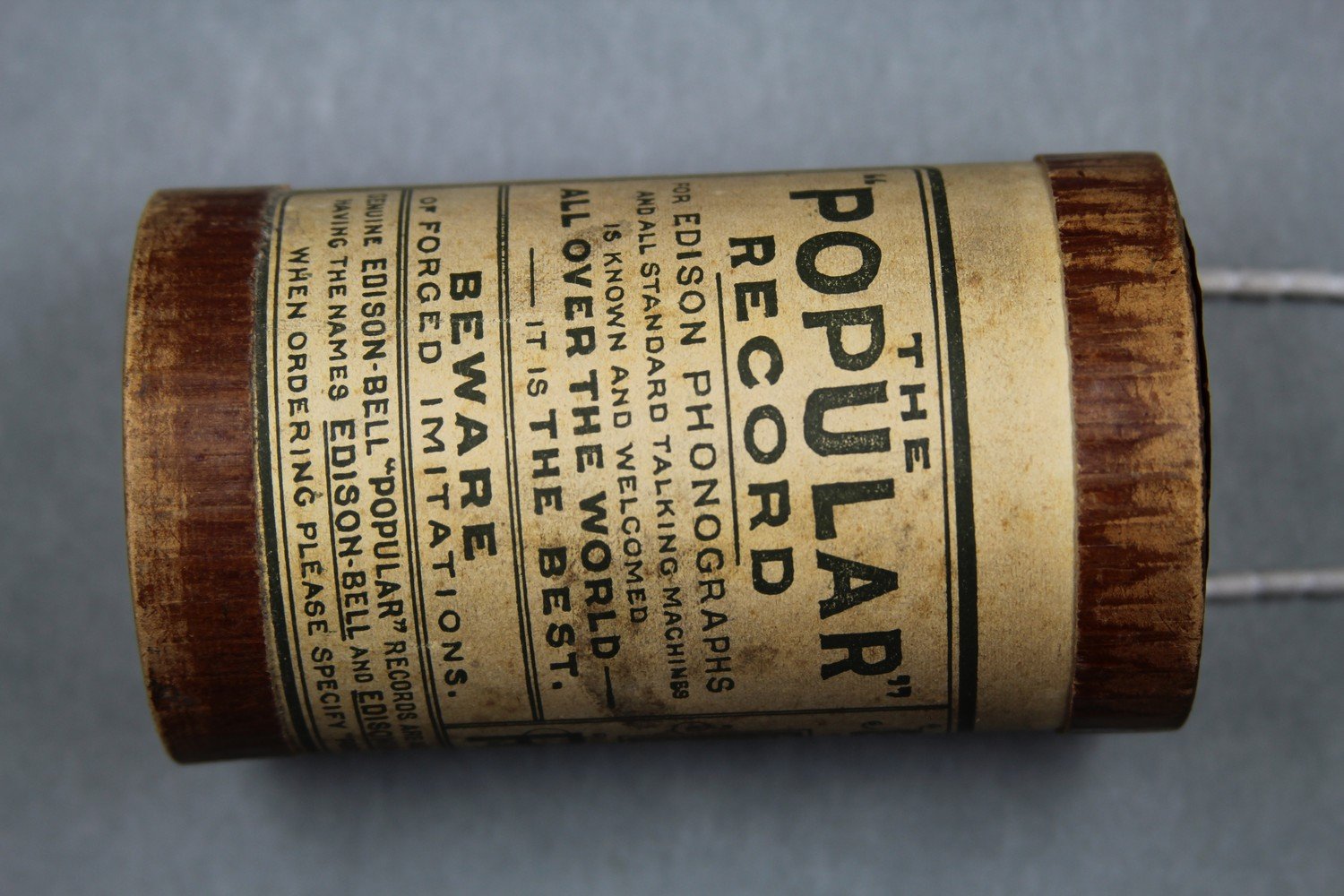 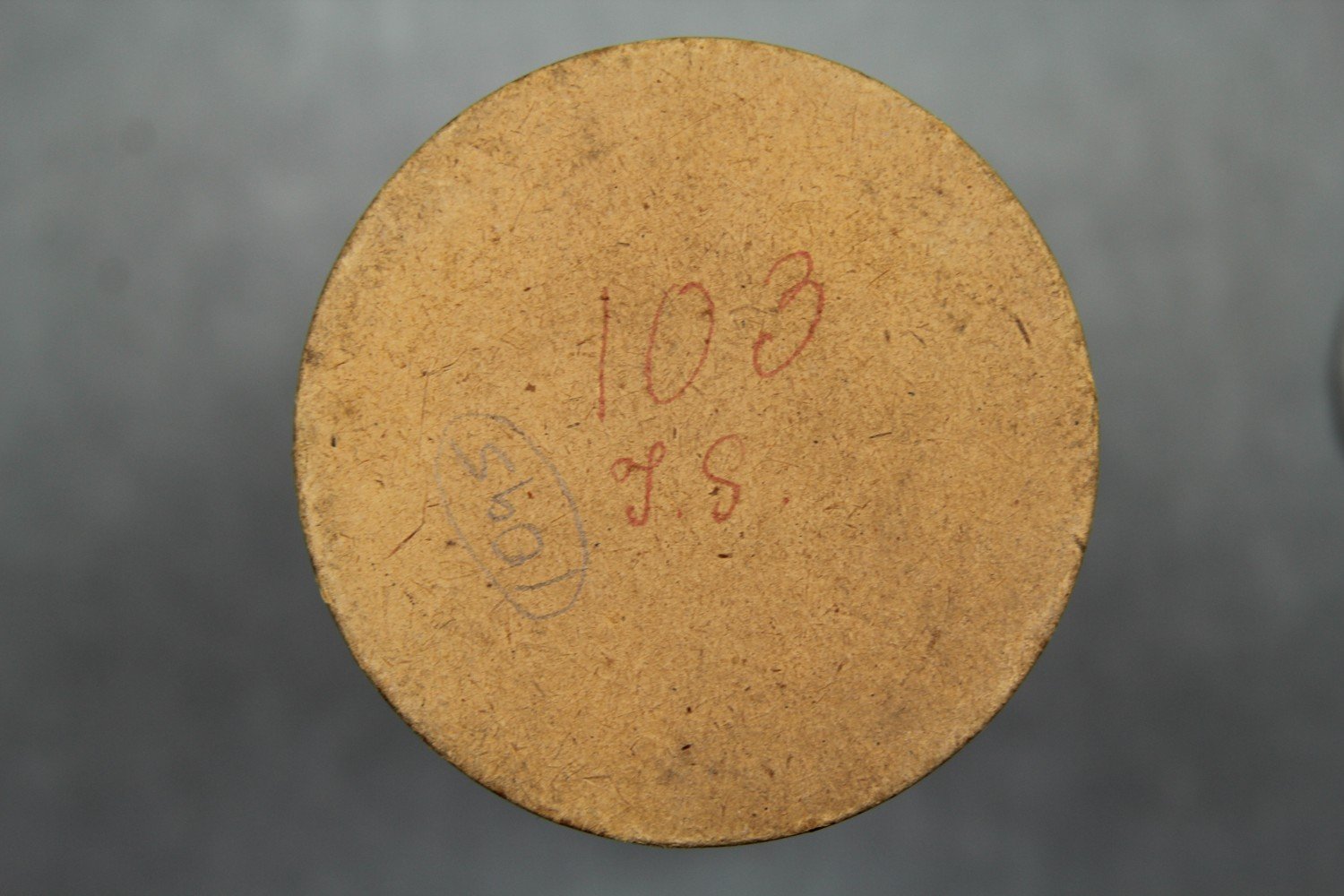   | Haddon, A.C. (ed.) 1907. Reports of the Cambridge Anthropological Expedition to Torres Strait: Volume III, The Languages of Torres Strait. Cambridge: Cambridge University Press. British Library shelfmark General Reference Collection YC.2011.b.631. | Haddon, A.C. (ed.) 1908. Reports of the Cambridge Anthropological Expedition to Torres Strait: Volume VI, Sociology, Magic and Religion of the Eastern Islanders. Cambridge: Cambridge University Press. British Library shelfmark General Reference Collection YC.2011.b.632. | Haddon, A.C. (ed.) 1912. Reports of the Cambridge Anthropological Expedition to Torres Strait: Volume IV, Arts and Crafts. Cambridge: Cambridge University Press. British Library shelfmark General Reference Collection YC.2011.b.634. | Wilkin, Anthony. 1898. Field Notebook [File 1027]. [manuscript] M2731-M2740: Torres Straits, 1888 - 1936, Cambridge University Library. See http://nla.gov.au/nla.obj-765702983 | Alice Moyle (AIAS, now AIATSIS) completed audition sheets for the Torres Strait cylinder collection in 1985. Copies of these are held at the British Library. | ||
| C80/1096 | Adud leluti | Myers, C. S. (singer, male) | Mer / Murray Island, Torres Strait Islands | 10 May 1898 – 24 August 1898 | Recording of Myers singing Adud leluti. Transcription on A7 cylinder insert notes: 1. 'same tune/time[?]. On reverse: 'wau aka Maluet uzer taurameti / Warbir naukarik leluti / Warbir dereble segura tuglei'. 2. Adud leluti / B / Ulai.' On reverse: '(Malo kupa seau wa nau karkilut)2 (wau a dararag [...])2 Bo: Bu:'. 3. 'Wau goe wa koe au o - goe okoedari goe baur gima (Kegar baua gimi nabau [...] gimi[?])3. This recording corresponds to Charles S. Myers' Malu Song IV A. Adud leluti translates to 'bad man' (Haddon & Myers 1908:297). Ray translates adud as 'bad' or 'evil' (Ray 1907:132). Song IV A was performed during the exhibition of the sacred Malu-Bomai masks and also during the dance of the Beizam Boai after the initiation ceremonies.” (Myers 1912:243). "The fourth song was uttered in a very low voice, and was followed by yet more highly sacred words which were quickly whispered so that no one may hear them save those who had been initiated into the Malu mysteries" (Myers & Haddon 1908:150). Published and analysed in Myers (1912:249-251, 267). Words also published in Haddon & Myers (1908:297-299). Musical notation is also included in Anthony Wilkin's field notebook as Song H (1898:251). | Reasonable quality but short recording. The recording date range assumes that Myers is indeed the recordist and corresponds to the dates of Myer's stay on Mer / Murray Island. | Meriam Mir | Field recordings | Myers, C. S. | 1'24" | 1898 Cambridge Anthropological Expedition to Torres Straits | Brown wax cylinder. Cardboard cylinder case. | Alfred Cort Haddon 1898 Expedition (Torres Strait and British New Guinea) Cylinder Collection | British Library | 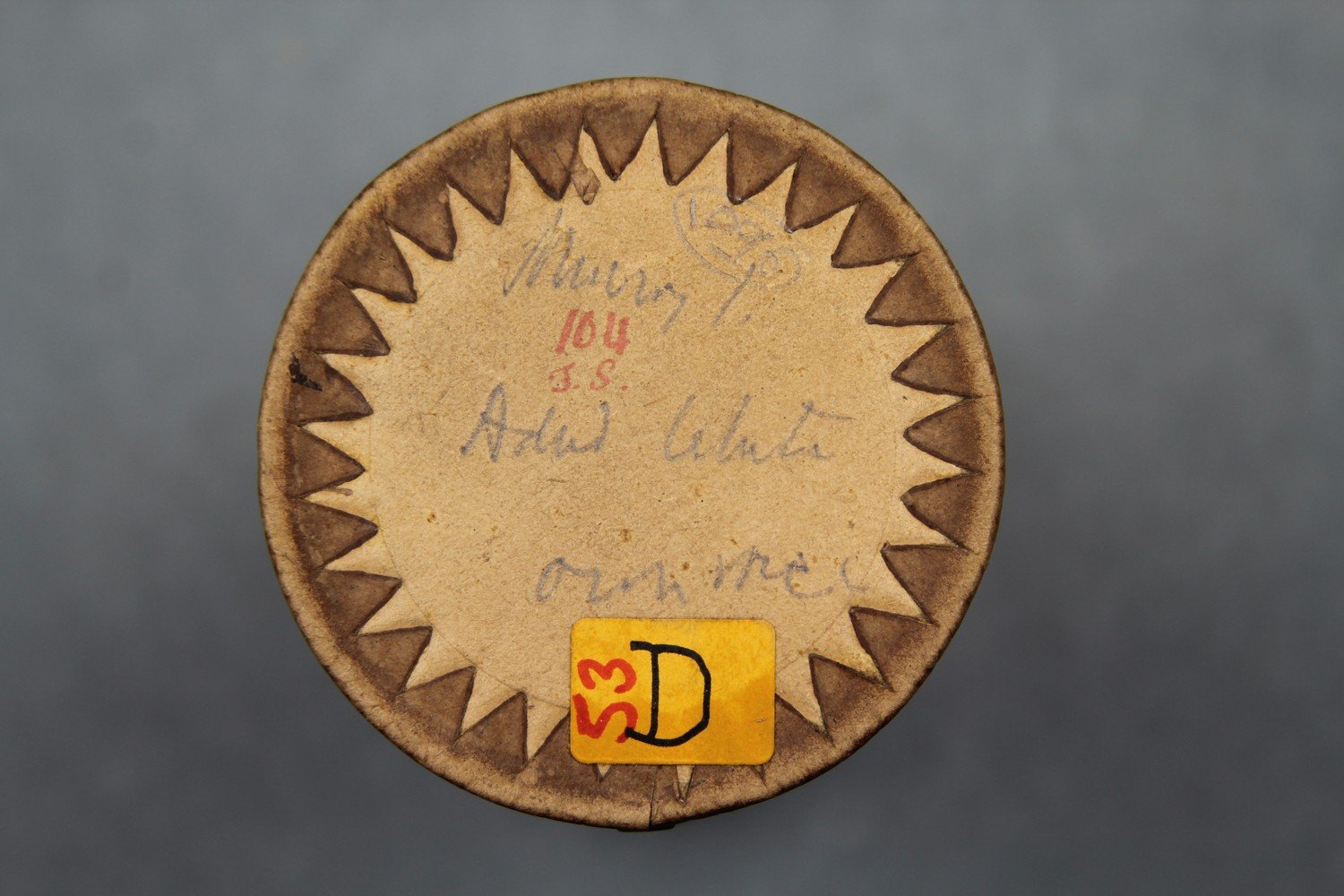      | Haddon, A.C. (ed.) 1907. Reports of the Cambridge Anthropological Expedition to Torres Strait: Volume III, The Languages of Torres Strait. Cambridge: Cambridge University Press. British Library shelfmark General Reference Collection YC.2011.b.631. | Haddon, A.C. (ed.) 1908. Reports of the Cambridge Anthropological Expedition to Torres Strait: Volume VI, Sociology, Magic and Religion of the Eastern Islanders. Cambridge: Cambridge University Press. British Library shelfmark General Reference Collection YC.2011.b.632. | Haddon, A.C. (ed.) 1912. Reports of the Cambridge Anthropological Expedition to Torres Strait: Volume IV, Arts and Crafts. Cambridge: Cambridge University Press. British Library shelfmark General Reference Collection YC.2011.b.634. | Wilkin, Anthony. 1898. Field Notebook [File 1027]. [manuscript] M2731-M2740: Torres Straits, 1888 - 1936, Cambridge University Library. See http://nla.gov.au/nla.obj-765702983 | |||
| C80/1097 | Adud leluti B | Ulai (singer, male) | Mer / Murray Island, Torres Strait Islands | 10 May 1898 – 24 August 1898 | Inscription on lid: ‘Adud B’. Transcription on A7 cylinder insert notes: 'Adud leluti / B Ulai / (Malu kupa isauado neukarik leluti a) / Bo: Bu: / Wau goi wakoi goi ko eidrariei goi / baugem / Kegar baugem e na baugem) / wau aka Maluet uzer taurameti / Warbir naukarik leluti / Warbir dereble segura tuglei / Izi K Adud B.' This recording corresponds to Charles S. Myers' Malu Song IV A. Adud leluti translates to 'bad man' (Haddon & Myers 1908:297). Ray translates adud as 'bad' or 'evil' (Ray 1907:132). Song IV A was performed during the exhibition of the sacred Malu-Bomai masks and also during the dance of the Beizam Boai after the initiation ceremonies.” (Myers 1912:243). "The fourth song was uttered in a very low voice, and was followed by yet more highly sacred words which were quickly whispered so that no one may hear them save those who had been initiated into the Malu mysteries" (Myers & Haddon 1908:150). Published and analysed in Myers (1912:249-251, 267). Words also published in Haddon & Myers (1908:297-299). Musical notation is also included in Anthony Wilkin's field notebook as Song H (1898:251). | The recording date range assumes that Myers is indeed the recordist and corresponds to the dates of Myer's stay on Mer / Murray Island. C80/1016 (better quality), C80/1097 and C80/1098 are duplicates. | Meriam Mir | Field recordings | Myers, C. S. | 2'14" | 1898 Cambridge Anthropological Expedition to Torres Straits | Brown wax cylinder. Cardboard cylinder case. EBE green label. | Alfred Cort Haddon 1898 Expedition (Torres Strait and British New Guinea) Cylinder Collection | British Library | 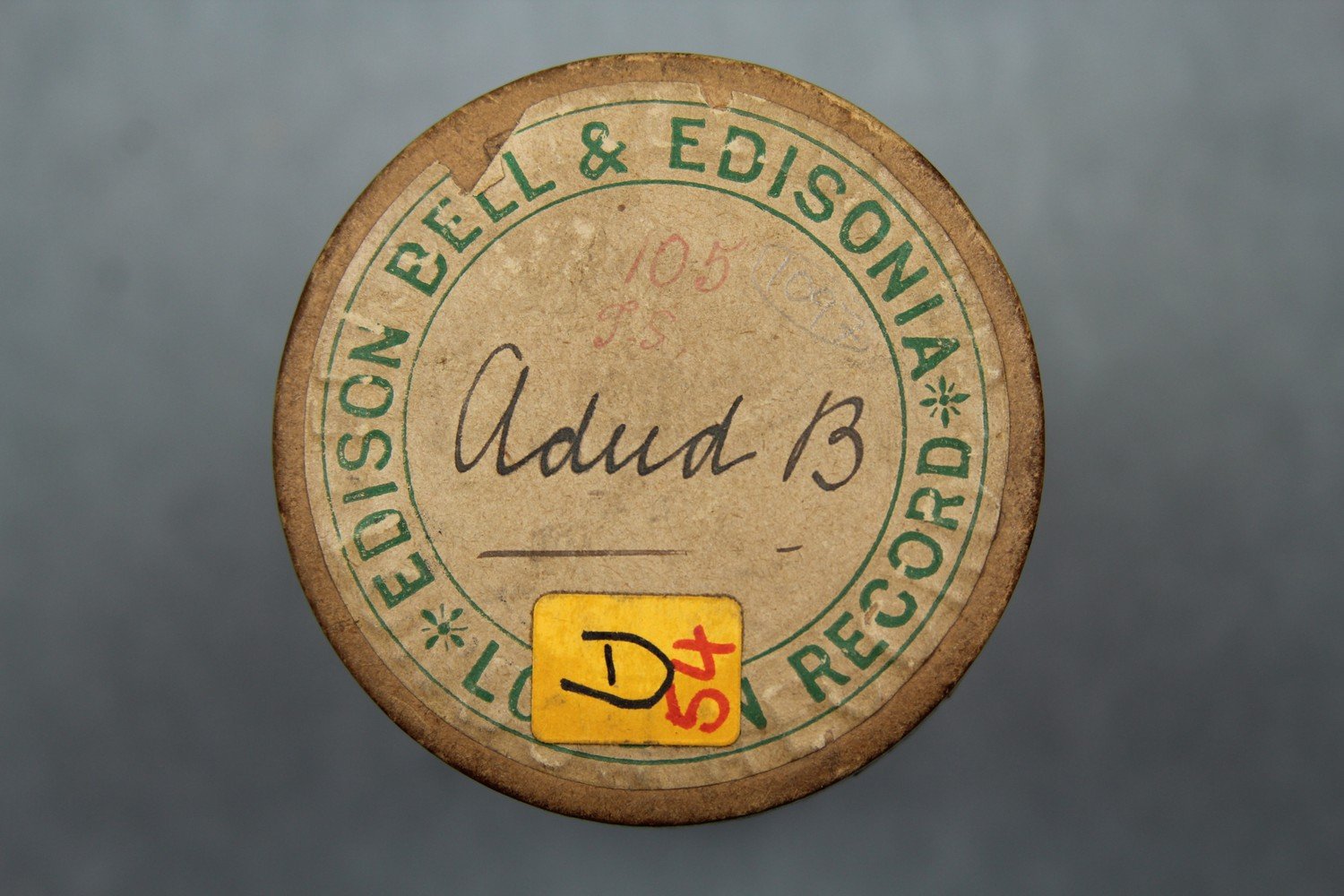 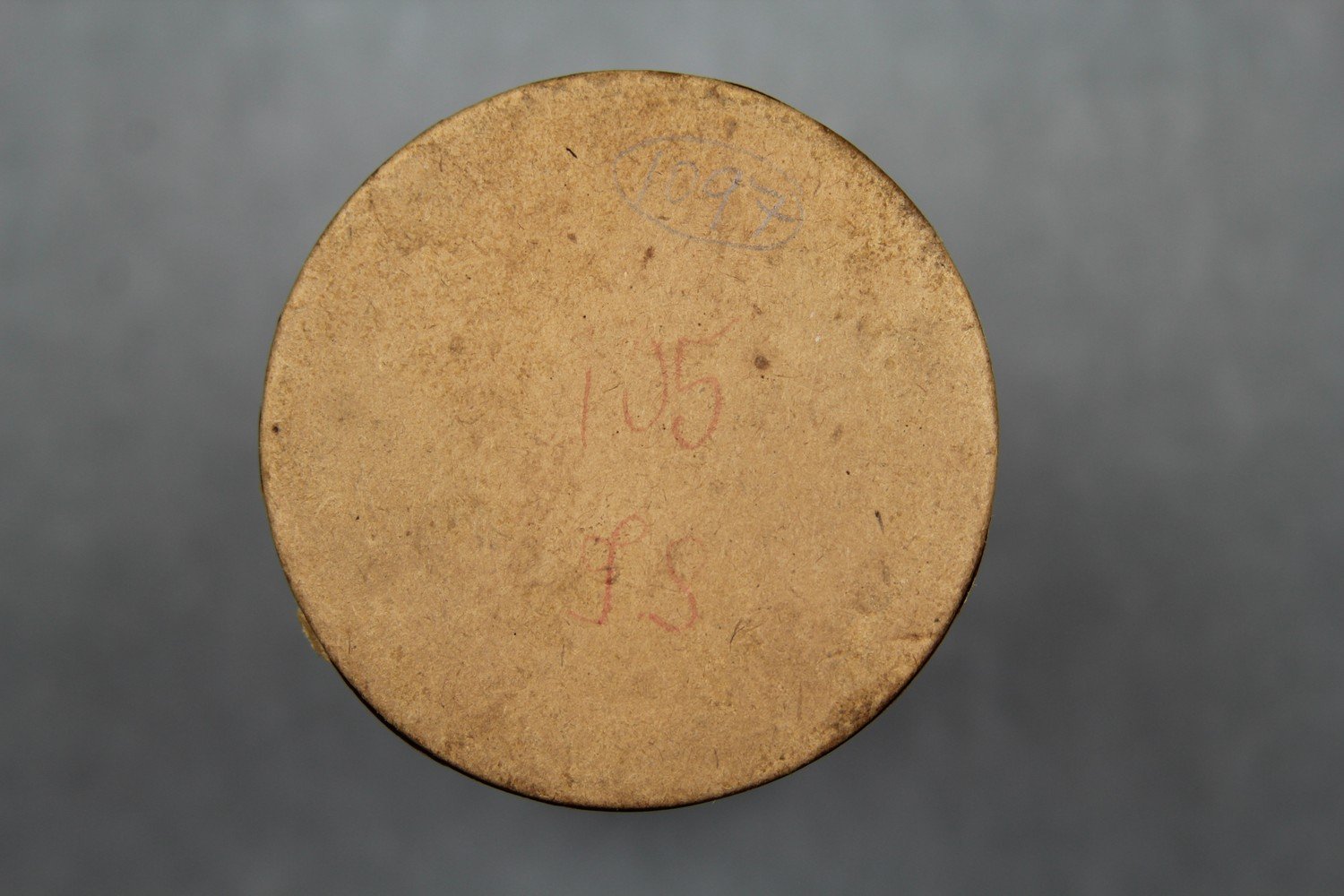     | Haddon, A.C. (ed.) 1907. Reports of the Cambridge Anthropological Expedition to Torres Strait: Volume III, The Languages of Torres Strait. Cambridge: Cambridge University Press. British Library shelfmark General Reference Collection YC.2011.b.631. | Haddon, A.C. (ed.) 1908. Reports of the Cambridge Anthropological Expedition to Torres Strait: Volume VI, Sociology, Magic and Religion of the Eastern Islanders. Cambridge: Cambridge University Press. British Library shelfmark General Reference Collection YC.2011.b.632. | Haddon, A.C. (ed.) 1912. Reports of the Cambridge Anthropological Expedition to Torres Strait: Volume IV, Arts and Crafts. Cambridge: Cambridge University Press. British Library shelfmark General Reference Collection YC.2011.b.634. | Wilkin, Anthony. 1898. Field Notebook [File 1027]. [manuscript] M2731-M2740: Torres Straits, 1888 - 1936, Cambridge University Library. See http://nla.gov.au/nla.obj-765702983 | |||
| C80/1098 | Adud leluti B | Ulai (singer, male) | Mer / Murray Island, Torres Strait Islands | 10 May 1898 – 24 August 1898 | Transcription on A7 cylinder insert notes: 'Adud leluti / B Ulai / (Malu kupa isauado neukarik leluti a) / Bo: Bu: / Wau goi wakoi goi ko eidrariei goi / baugem / Kegar baugem e na baugem) / wau aka Maluet uzer taurameti / Warbir naukarik leluti / Warbir dereble segura tuglei / Izi K Adud B.' This recording corresponds to Charles S. Myers' Malu Song IV A. Adud leluti translates to 'bad man' (Haddon & Myers 1908:297). Ray translates adud as 'bad' or 'evil' (Ray 1907:132). Song IV A was performed during the exhibition of the sacred Malu-Bomai masks and also during the dance of the Beizam Boai after the initiation ceremonies.” (Myers 1912:243). "The fourth song was uttered in a very low voice, and was followed by yet more highly sacred words which were quickly whispered so that no one may hear them save those who had been initiated into the Malu mysteries" (Myers & Haddon 1908:150). Published and analysed in Myers (1912:249-251, 267). Words also published in Haddon & Myers (1908:297-299). Musical notation is also included in Anthony Wilkin's field notebook as Song H (1898:251). | The recording date range assumes that Myers is indeed the recordist and corresponds to the dates of Myer's stay on Mer / Murray Island. C80/1016 (better quality), C80/1097 and C80/1098 are duplicate). | Meriam Mir | Field recordings | Myers, C. S. | 2'06" | 1898 Cambridge Anthropological Expedition to Torres Straits | Brown wax cylinder. Cardboard cylinder case. EBE green label. | Alfred Cort Haddon 1898 Expedition (Torres Strait and British New Guinea) Cylinder Collection | British Library | 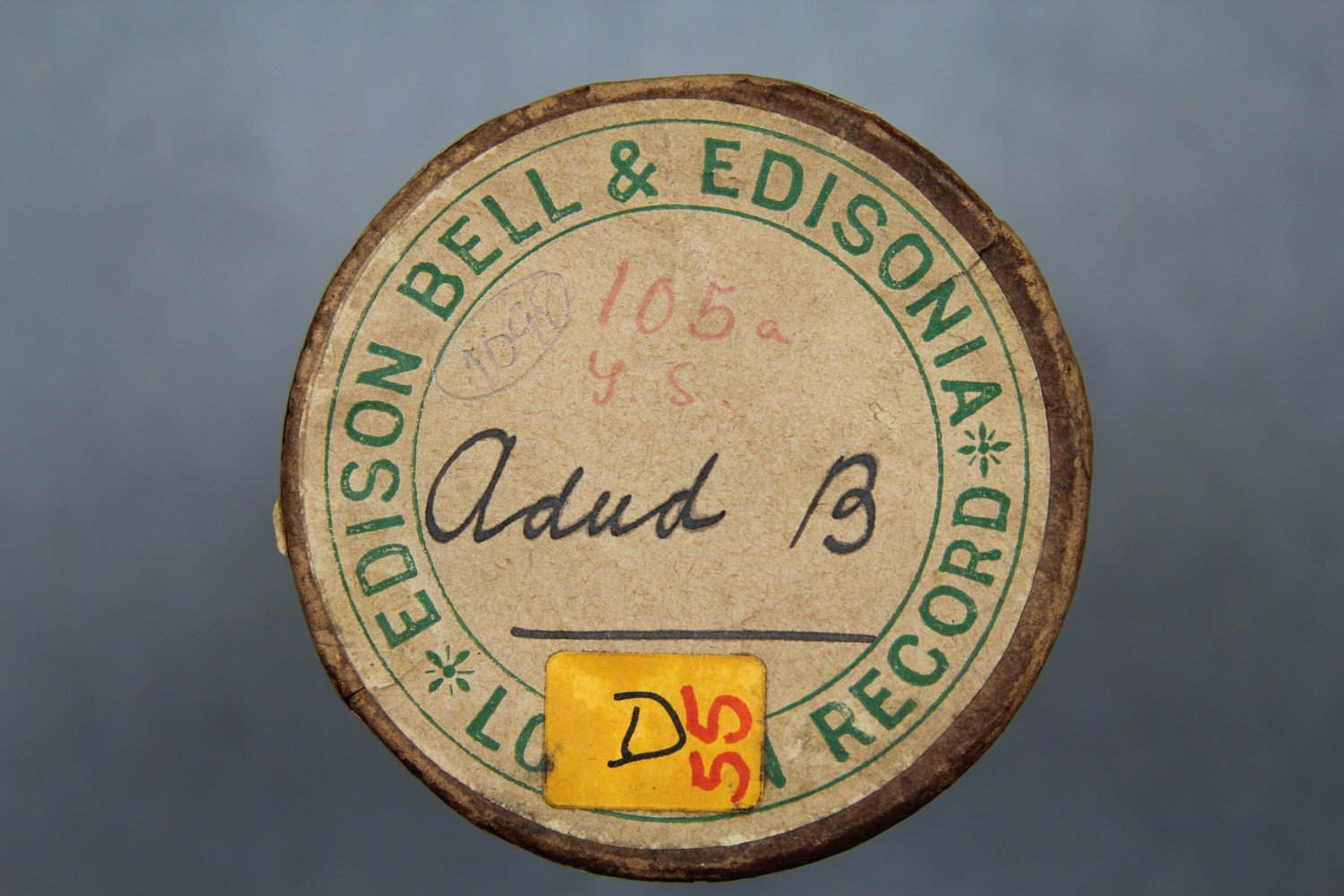      | Haddon, A.C. (ed.) 1907. Reports of the Cambridge Anthropological Expedition to Torres Strait: Volume III, The Languages of Torres Strait. Cambridge: Cambridge University Press. British Library shelfmark General Reference Collection YC.2011.b.631. | Haddon, A.C. (ed.) 1908. Reports of the Cambridge Anthropological Expedition to Torres Strait: Volume VI, Sociology, Magic and Religion of the Eastern Islanders. Cambridge: Cambridge University Press. British Library shelfmark General Reference Collection YC.2011.b.632. | Haddon, A.C. (ed.) 1912. Reports of the Cambridge Anthropological Expedition to Torres Strait: Volume IV, Arts and Crafts. Cambridge: Cambridge University Press. British Library shelfmark General Reference Collection YC.2011.b.634. | Wilkin, Anthony. 1898. Field Notebook [File 1027]. [manuscript] M2731-M2740: Torres Straits, 1888 - 1936, Cambridge University Library. See http://nla.gov.au/nla.obj-765702983 | |||
| C80/1099 | Izib A | Unidentified (singer, male) | Mer / Murray Island, Torres Strait Islands | 10 May 1898 – 24 August 1898 | Unaccompanied male vocal solo. Transcription on cylinder insert notes (now no longer available): 'Izib A.' This recording corresponds to Charles S. Myers' Malu Song III. In correspondence with Erich von Hornbostel, Myers describes Izib as a funeral song from Mer / Murray Island (Myers 1907). Izib was the creek at Kiam, Mer / Murray Island, from which Malu drank water (Haddon & Myers VI 1908:283, 299). Words and musical notation published in Myers & Haddon (1908:150-151). Further analysis and song text available in Myers (1912:249, 266-267). | Reasonable quality recording but with weak signal and surface noise. The recording date range assumes that Myers is indeed the recordist and corresponds to the dates of Myer's stay on Mer / Murray Island. C80/1099 is a duplicate of C80/1015, which is broken. | Meriam Mir | Field recordings | Myers, C. S. | 1'52" | 1898 Cambridge Anthropological Expedition to Torres Straits | Brown wax cylinder. Cardboard cylinder case. EBE green label. | Alfred Cort Haddon 1898 Expedition (Torres Strait and British New Guinea) Cylinder Collection | British Library |       | Haddon, A.C. (ed.) 1907. Reports of the Cambridge Anthropological Expedition to Torres Strait: Volume III, The Languages of Torres Strait. Cambridge: Cambridge University Press. British Library shelfmark General Reference Collection YC.2011.b.631. | Haddon, A.C. (ed.) 1908. Reports of the Cambridge Anthropological Expedition to Torres Strait: Volume VI, Sociology, Magic and Religion of the Eastern Islanders. Cambridge: Cambridge University Press. British Library shelfmark General Reference Collection YC.2011.b.632. | Haddon, A.C. (ed.) 1912. Reports of the Cambridge Anthropological Expedition to Torres Strait: Volume IV, Arts and Crafts. Cambridge: Cambridge University Press. British Library shelfmark General Reference Collection YC.2011.b.634. | The 1907 letter from Myers to von Hornbostel is held by the Berliner Phonogramm-Archiv, Ethnologisches Museum, Staatliche Museen zu Berlin. | |||
| C80/1101 | Izib B | Ulai (singer, male); Wanu (singer, male) | Mer / Murray Island, Torres Strait Islands | 10 May 1898 – 24 August 1898 | Unaccompanied male vocal group. Inscription on A3 cylinder insert notes: 'Izib B / Ulai and Wanu.' This recording corresponds to Charles S. Myers' Malu Song III. In correspondence with Erich von Hornbostel, Myers describes Izib as a funeral song from Mer / Murray Island (Myers 1907). Izib was the creek at Kiam, Mer / Murray Island, from which Malu drank water (Haddon & Myers VI 1908:283, 299). Words and musical notation published in Myers & Haddon (1908:150-151). Further analysis and song text available in Myers (1912:249, 266-267). | Poor quality with very weak signal and surface noise. The recording date range assumes that Myers is indeed the recordist and corresponds to the dates of Myer's stay on Mer / Murray Island. C80/1012 (better quality) is the master, C80/1101 is a duplicate. | Meriam Mir | Field recordings | Myers, C. S. | 1'41" | 1898 Cambridge Anthropological Expedition to Torres Straits | Brown wax cylinder. Cardboard cylinder case. EBE green label. | Alfred Cort Haddon 1898 Expedition (Torres Strait and British New Guinea) Cylinder Collection | British Library |  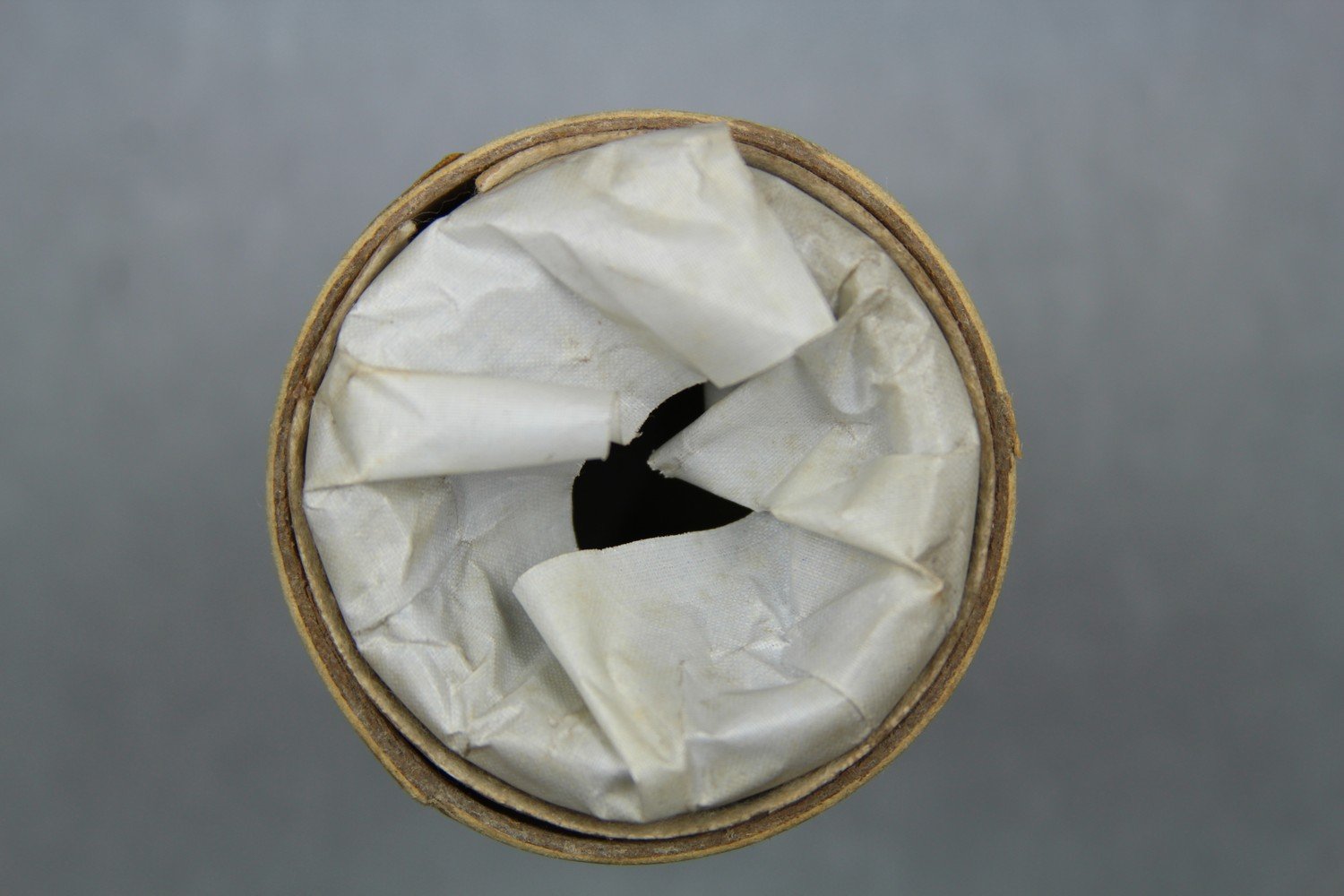     | Haddon, A.C. (ed.) 1907. Reports of the Cambridge Anthropological Expedition to Torres Strait: Volume III, The Languages of Torres Strait. Cambridge: Cambridge University Press. British Library shelfmark General Reference Collection YC.2011.b.631. | Haddon, A.C. (ed.) 1908. Reports of the Cambridge Anthropological Expedition to Torres Strait: Volume VI, Sociology, Magic and Religion of the Eastern Islanders. Cambridge: Cambridge University Press. British Library shelfmark General Reference Collection YC.2011.b.632. | Haddon, A.C. (ed.) 1912. Reports of the Cambridge Anthropological Expedition to Torres Strait: Volume IV, Arts and Crafts. Cambridge: Cambridge University Press. British Library shelfmark General Reference Collection YC.2011.b.634. | The 1907 letter from Myers to von Hornbostel is held by the Berliner Phonogramm-Archiv, Ethnologisches Museum, Staatliche Museen zu Berlin. | |||
| C80/1102 | Weii OV | Myers, C. S. (singer, male) | Mer / Murray Island, Torres Strait Islands | 10 May 1898 – 24 August 1898 | Male vocal solo (probably voice of C.S. Myers), accompanied by percussion. Inscription on insert notes (now no longer available): 'Weii OV [probably meaning Myers' own voice]'. This recording corresponds to Charles S. Myers' Malu Song II. Both Myers (1912) and Ray (1907) translate 'wei' as 'alas!' with Ray noting that this was an exclamation expressing sorrow. It is alternatively spelled 'weu'. Sung to Air II published in Myers & Haddon (1908:151). Words and analysis published in Myers (1912: 247-248, 266). Musical notation included in Anthony Wilkin's field notebook as 'Song K' (1898:250). | Good quality recording. The recording date range assumes that Myers is indeed the recordist and corresponds to the dates of Myer's stay on Mer / Murray Island. From Alice Moyle's 1985 audition sheets: '[cf. Myers: "Song II". A.M.] [Voice and drum very clear. A.M.]'. | Meriam Mir | Field recordings | Myers, C. S. | 1'31" | 1898 Cambridge Anthropological Expedition to Torres Straits | Brown wax cylinder. Cardboard cylinder case. | Alfred Cort Haddon 1898 Expedition (Torres Strait and British New Guinea) Cylinder Collection | British Library | 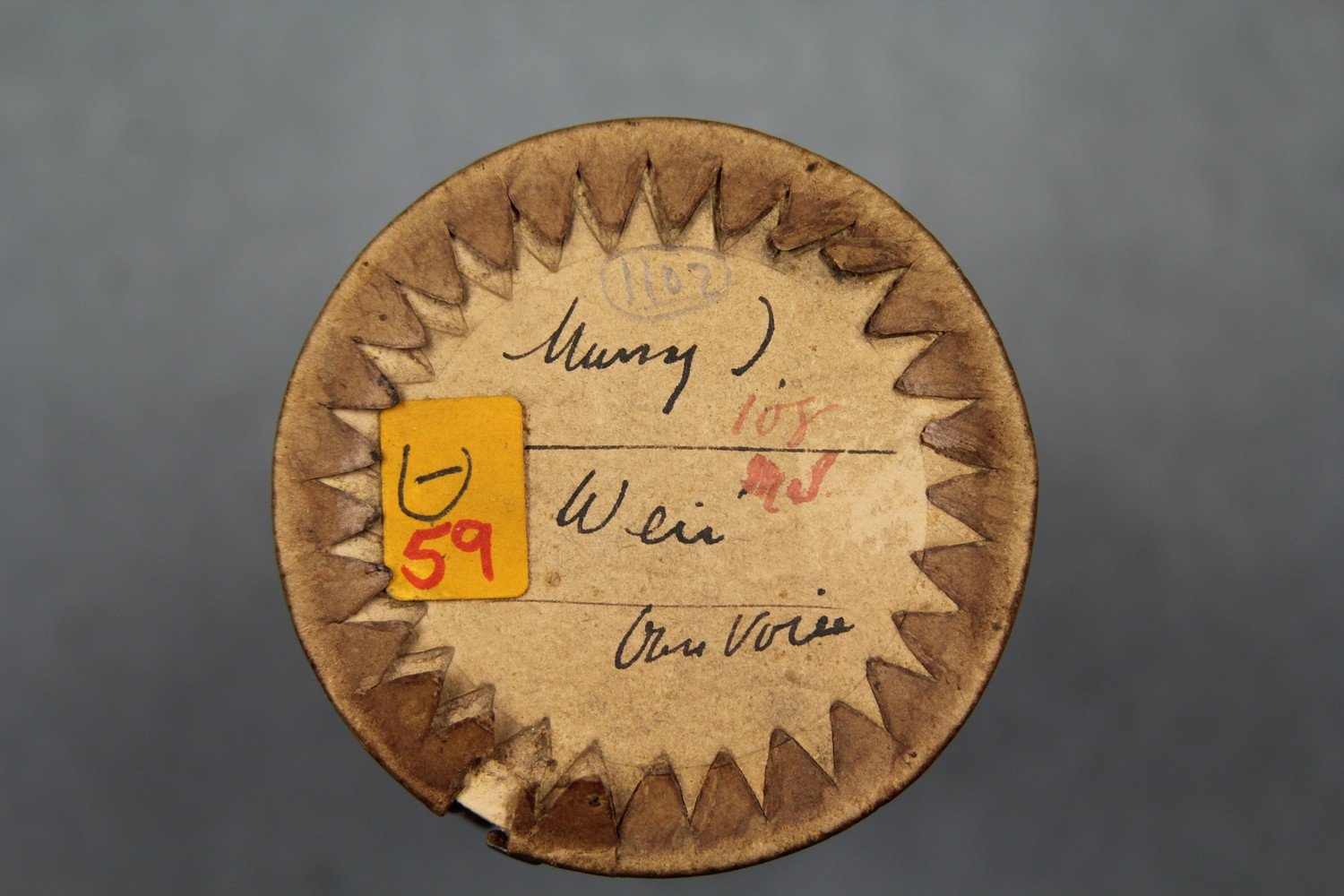 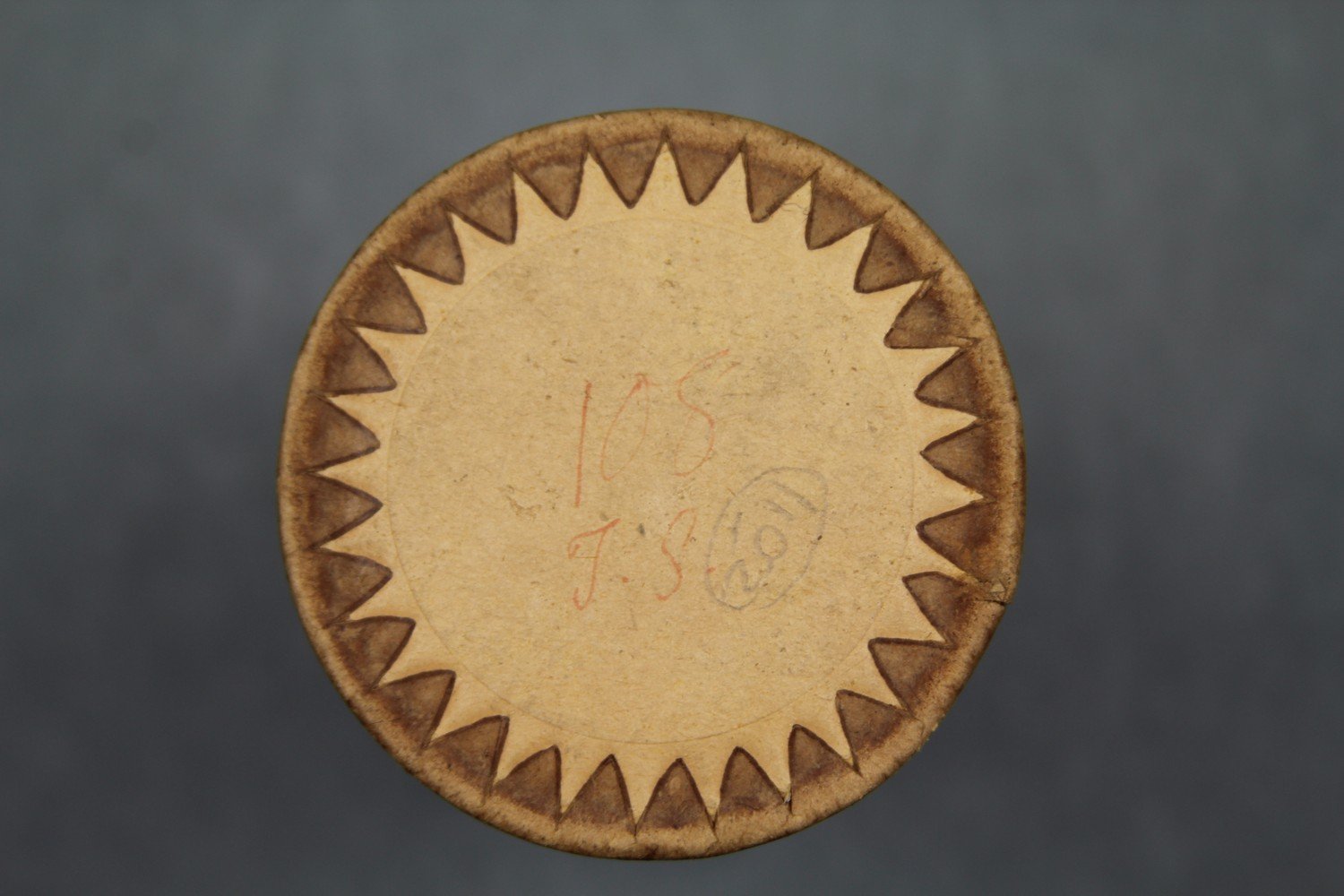     | Haddon, A.C. (ed.) 1907. Reports of the Cambridge Anthropological Expedition to Torres Strait: Volume III, The Languages of Torres Strait. Cambridge: Cambridge University Press. British Library shelfmark General Reference Collection YC.2011.b.631. | Haddon, A.C. (ed.) 1908. Reports of the Cambridge Anthropological Expedition to Torres Strait: Volume VI, Sociology, Magic and Religion of the Eastern Islanders. Cambridge: Cambridge University Press. British Library shelfmark General Reference Collection YC.2011.b.632. | Haddon, A.C. (ed.) 1912. Reports of the Cambridge Anthropological Expedition to Torres Strait: Volume IV, Arts and Crafts. Cambridge: Cambridge University Press. British Library shelfmark General Reference Collection YC.2011.b.634. | Wilkin, Anthony. 1898. Field Notebook [File 1027]. [manuscript] M2731-M2740: Torres Straits, 1888 - 1936, Cambridge University Library. See http://nla.gov.au/nla.obj-765702983 | Alice Moyle (AIAS, now AIATSIS) completed audition sheets for the Torres Strait cylinder collection in 1985. Copies of these are held at the British Library. | ||
| C80/1103 | Emarer | Myers, C. S. (singer, male) | Mer / Murray Island, Torres Strait Islands | 10 May 1898 – 24 August 1898 | Male vocal solo (probably voice of C.S. Myers), with percussion accompaniment. Inscription on insert notes (now no longer available): 'Murray I / Emarer / OV [own voice]'. This recording corresponds to Charles S. Myers' Malu Song I. Possibly a version of C80/1020. Published in Myers & Haddon (1908:150-151). Words, translation and analysis published in Myers (1912:244, 247, 266). Musical notation included in Anthony Wilkin's field notebook as Song G (1898:250). The word 'emare' means 'to sway' and is a Malu word (Ray 1907:140). | Reasonable quality recording. The recording date range assumes that Myers is indeed the recordist and corresponds to the dates of Myer's stay on Mer / Murray Island. From Alice Moyle's 1985 audition sheets: '[cf. Myers: "Song I". A.M.] [Voice and drum very clear. A.M.]'. | Meriam Mir | Field recordings | Myers, C. S. | 1'45" | 1898 Cambridge Anthropological Expedition to Torres Straits | Brown wax cylinder. Cardboard cylinder case. | Alfred Cort Haddon 1898 Expedition (Torres Strait and British New Guinea) Cylinder Collection | British Library | 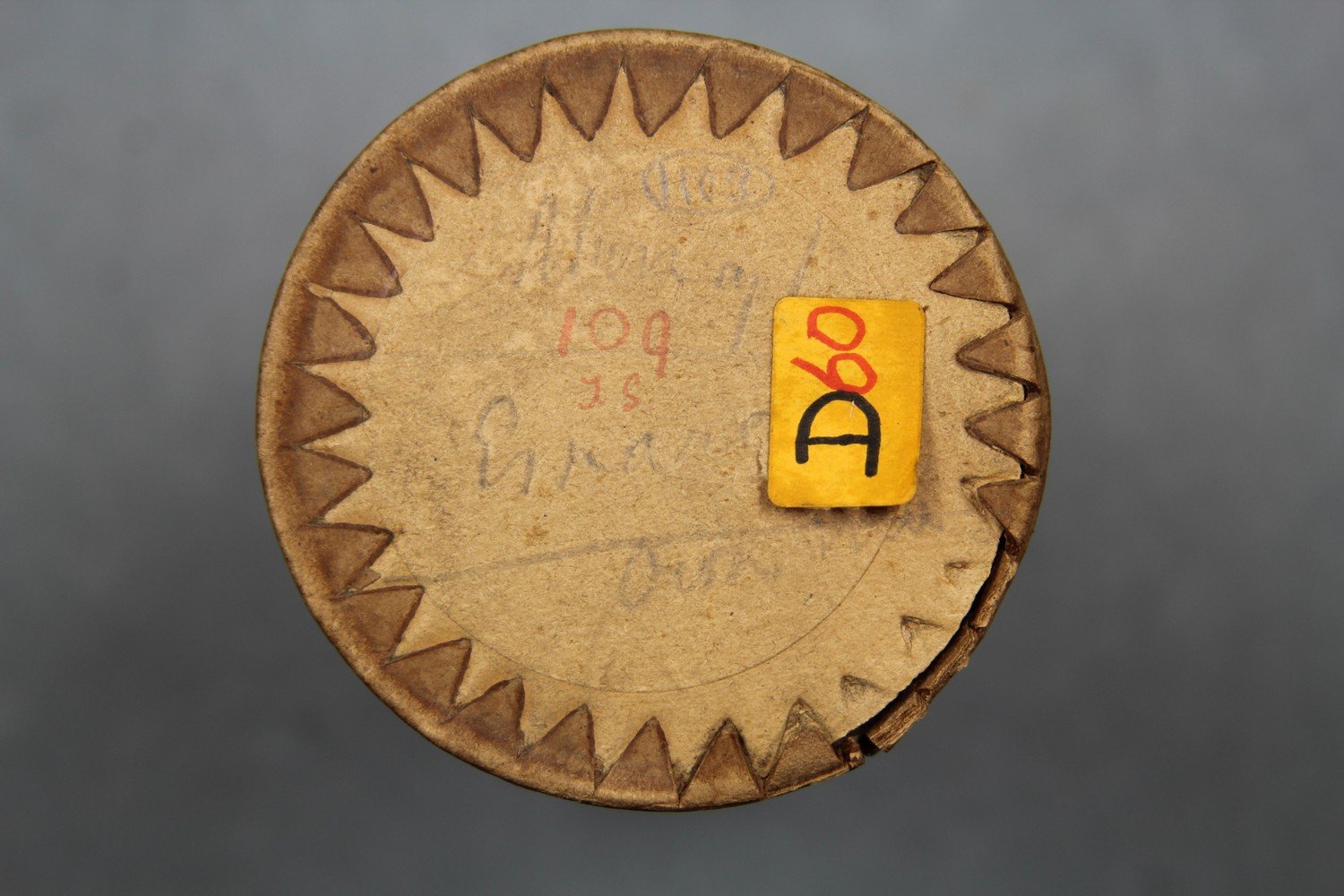      | Haddon, A.C. (ed.) 1907. Reports of the Cambridge Anthropological Expedition to Torres Strait: Volume III, The Languages of Torres Strait. Cambridge: Cambridge University Press. British Library shelfmark General Reference Collection YC.2011.b.631. | Haddon, A.C. (ed.) 1908. Reports of the Cambridge Anthropological Expedition to Torres Strait: Volume VI, Sociology, Magic and Religion of the Eastern Islanders. Cambridge: Cambridge University Press. British Library shelfmark General Reference Collection YC.2011.b.632. | Haddon, A.C. (ed.) 1912. Reports of the Cambridge Anthropological Expedition to Torres Strait: Volume IV, Arts and Crafts. Cambridge: Cambridge University Press. British Library shelfmark General Reference Collection YC.2011.b.634. | Wilkin, Anthony. 1898. Field Notebook [File 1027]. [manuscript] M2731-M2740: Torres Straits, 1888 - 1936, Cambridge University Library. See http://nla.gov.au/nla.obj-765702983 | Alice Moyle (AIAS, now AIATSIS) completed audition sheets for the Torres Strait cylinder collection in 1985. Copies of these are held at the British Library. | ||
| C80/1104 | Death Wail | Unidentified (chorus) | Mer / Murray Island, Torres Strait Islands | 6 May 1898 – 8 September 1898 | 1. Unaccompanied vocal group. Myers described the death of Morris, son of Billy, on Mer / Murray Island in June 1898 and the death of George Rotuma’s baby on the night of 14 August 1898 (Myers 1898:67-68, 112). Myers’ described the crying and ‘wailing’ that followed the news of the deaths. Haddon also described attending a funeral of a woman on Mer (1901:93-94). | Good quality recording. As the recordist has not been identified, the recording date range corresponds to when any of the Expedition members were on Mer / Murray Island. | Meriam Mir | Field recordings | 2'23" | 1898 Cambridge Anthropological Expedition to Torres Straits | Brown wax cylinder. Cardboard cylinder case. Edisonia. | Alfred Cort Haddon 1898 Expedition (Torres Strait and British New Guinea) Cylinder Collection | British Library | 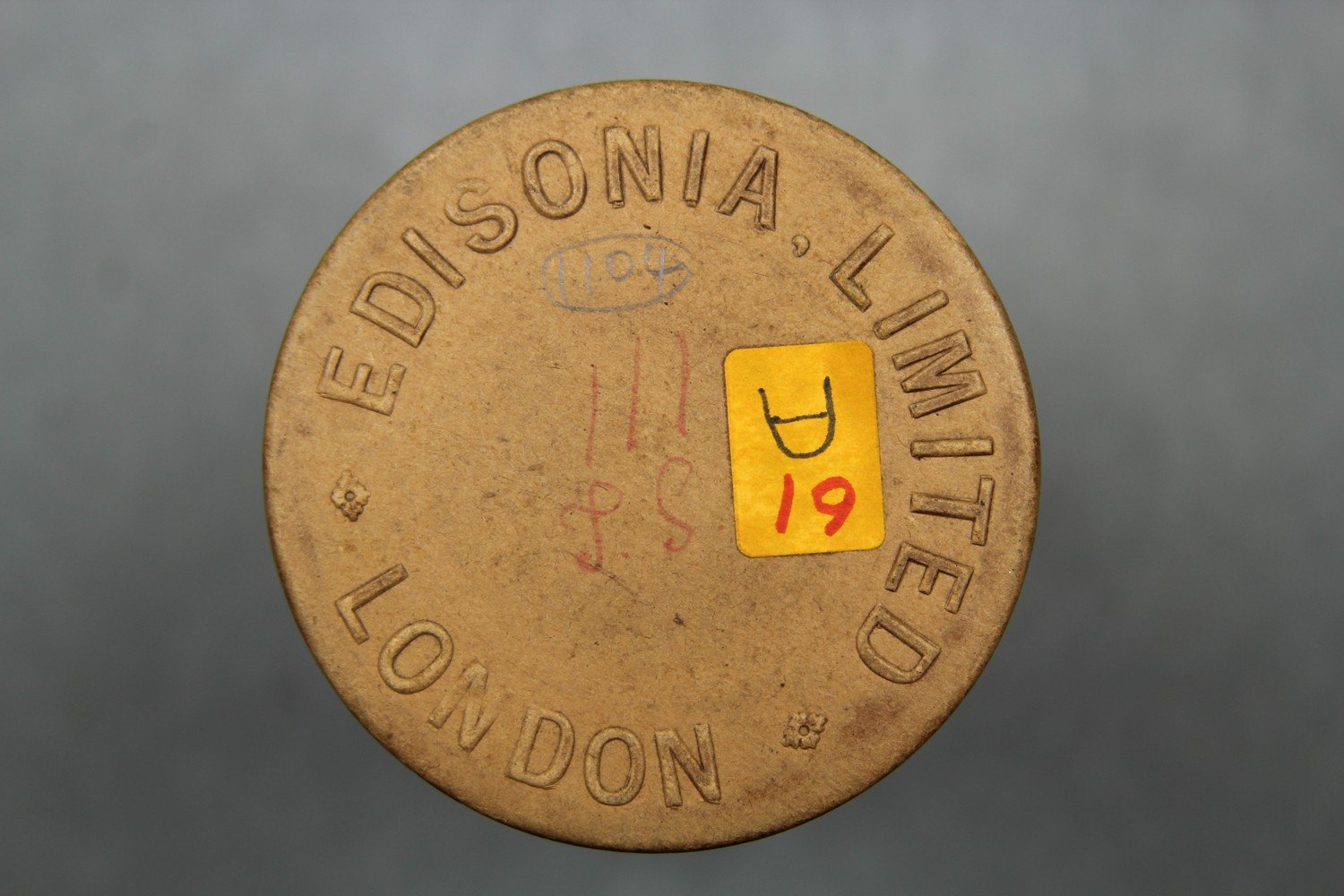 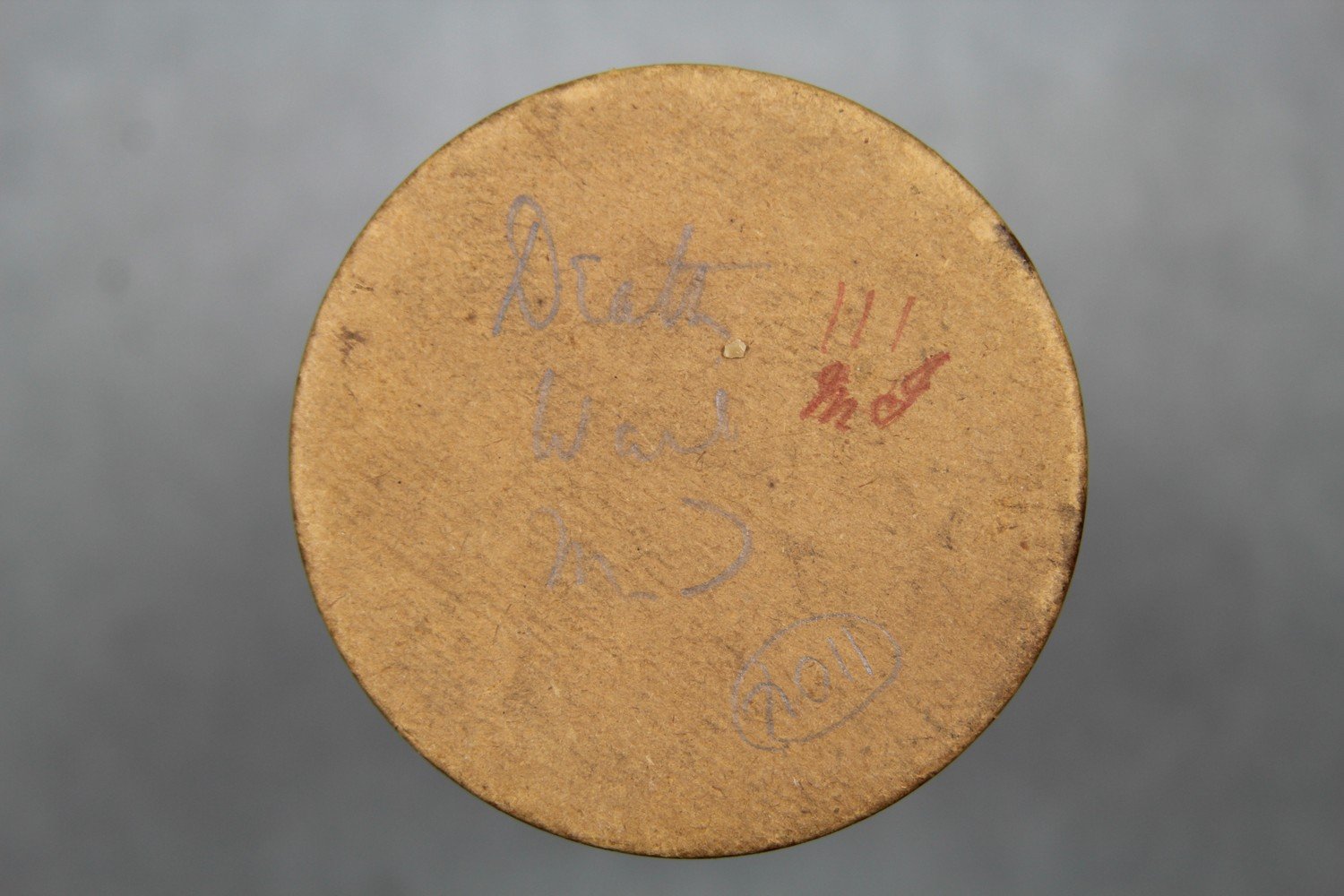     | Myers, C. S. 1898-1899. Journal on Torres Straits anthropological expedition. [manuscript] Haddon Papers. ADD 8073. Cambridge: Cambridge University Library. | Haddon, A.C. 1901. Head-Hunters. Black, White and Brown. London: Metheun & Co. General Reference Collection 010055.e.28. | ||||||
| C80/1105 | Iriam | Myers, C. S. (singer, male) | Mer / Murray Island, Torres Strait Islands | 10 May 1898 – 24 August 1898 | Male vocal solo (probably the voice of C.S. Myers), unaccompanied. Inscription on insert notes (now no longer available): 'Song III: Malu / Iriam / own [probably meaning own voice]'. This recording corresponds to Charles S. Myers' Malu Song III. In correspondence with Erich von Hornbostel, Myers describes Izib as a funeral song from Mer / Murray Island (Myers 1907). Izib was the creek at Kiam, Mer / Murray Island, from which Malu drank water (Haddon & Myers VI 1908:283, 299). Words and musical notation published in Myers & Haddon (1908:150-151). Further analysis and song text available in Myers (1912:249, 266-267). Myers noted 'eiriam' as translating to 'ye two drink'. Alternatively, it could be 'Iruam', who made Warbir/Warber, a water-hole at Las, Mer / Murray Island (1912:267). | Reasonable quality recording. The recording date range assumes that Myers is indeed the recordist and corresponds to the dates of Myer's stay on Mer / Murray Island. Other recordings of this song include C80/1012 and C80/1015 (also duplicated in C80/1099). From Alice Moyle's 1985 audition sheets: '[cf. Myers: "Song III". A.M.]'. | Meriam Mir | Field recordings | Myers, C. S. | 1'04" | 1898 Cambridge Anthropological Expedition to Torres Straits | Brown wax cylinder. Cardboard cylinder case. | Alfred Cort Haddon 1898 Expedition (Torres Strait and British New Guinea) Cylinder Collection | British Library | 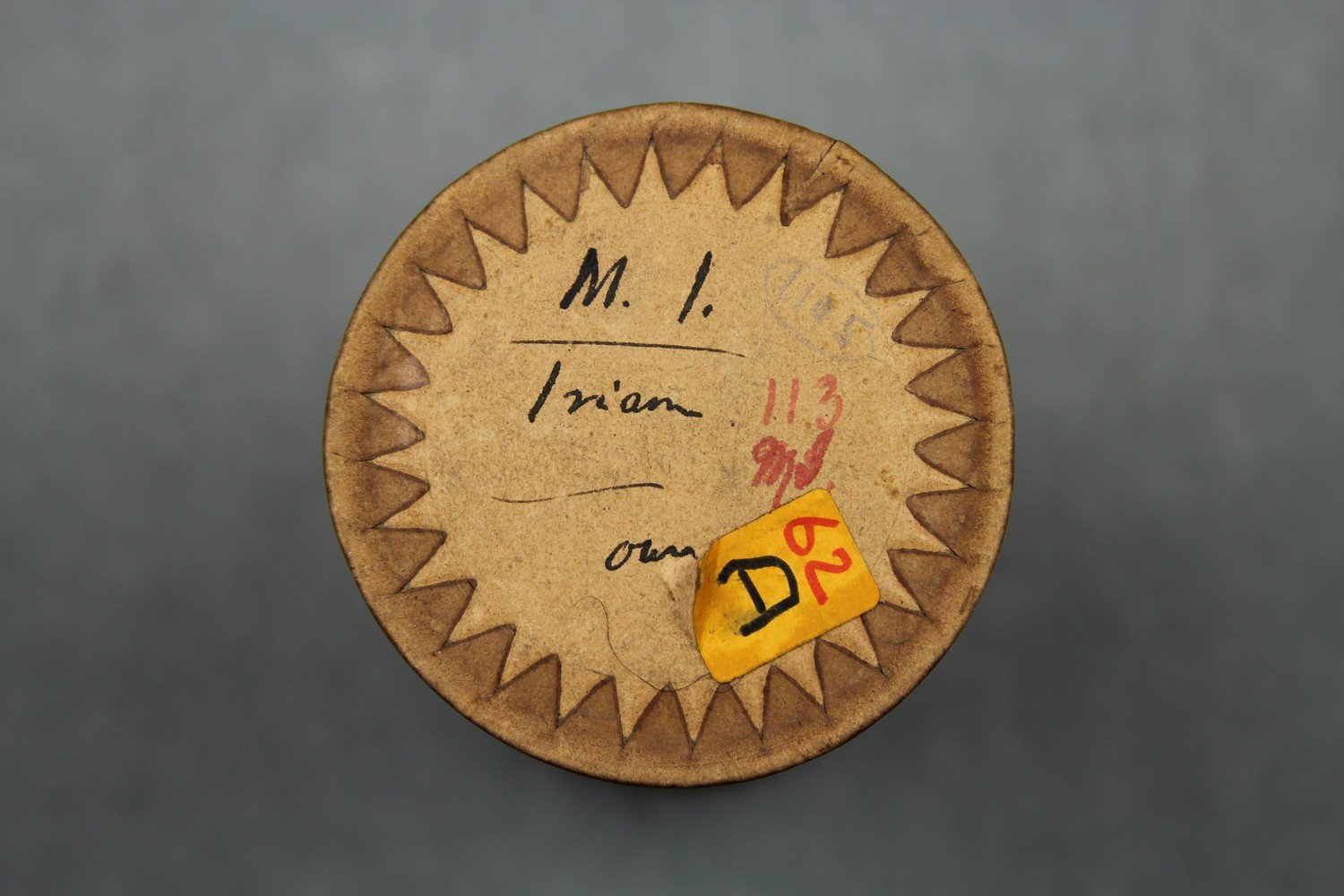      | Haddon, A.C. (ed.) 1907. Reports of the Cambridge Anthropological Expedition to Torres Strait: Volume III, The Languages of Torres Strait. Cambridge: Cambridge University Press. British Library shelfmark General Reference Collection YC.2011.b.631. | Haddon, A.C. (ed.) 1908. Reports of the Cambridge Anthropological Expedition to Torres Strait: Volume VI, Sociology, Magic and Religion of the Eastern Islanders. Cambridge: Cambridge University Press. British Library shelfmark General Reference Collection YC.2011.b.632. | Haddon, A.C. (ed.) 1912. Reports of the Cambridge Anthropological Expedition to Torres Strait: Volume IV, Arts and Crafts. Cambridge: Cambridge University Press. British Library shelfmark General Reference Collection YC.2011.b.634. | The 1907 letter from Myers to von Hornbostel is held by the Berliner Phonogramm-Archiv, Ethnologisches Museum, Staatliche Museen zu Berlin. | Alice Moyle (AIAS, now AIATSIS) completed audition sheets for the Torres Strait cylinder collection in 1985. Copies of these are held at the British Library. | ||
| C80/1107 | Kolap Matubia Song | Matu (singer, male); Joe Brown (singer, male); unidentified (singer, male) | Mer / Murray Island, Torres Strait Islands | 10 May 1898 – 24 August 1898 | Male vocal solo. Inscription on lid: ‘A badly sung Kolap matubia / not worth using [illeg] / Kolap song old by Matu / [illeg]’. Kolap spinning had "recently been the fashionable excuse for an island gathering" (Myers 1898:87). Myers (1898:68): Men "will arrange themselves in a ring, + will squat there for hours on the sand, spinning their tops on plates" and may "sing some old song in the course of the spin". The kolap songs were recorded by Myers on Mer / Murray Island (Ray 1907:50; Haddon 1912:285-286). | Reasonable quality recording with repeating grooves at approximately 1.35 and occasional low audibility. The recording date range assumes that Myers is indeed the recordist and corresponds to the dates of Myer's stay on Mer / Murray Island. | Kala Lagaw Ya (Ray noted that the kolap songs ‘appear[ed] to have been originally in the Western language, and since corrupted’ (1907:50). All of the recorded kolap songs contained Western words. It is not clear whether they are also sung in Meriam Mir.) | Field recordings | Myers, C. S. | 2'26" | 1898 Cambridge Anthropological Expedition to Torres Straits | Brown wax cylinder. Cardboard cylinder case. | Alfred Cort Haddon 1898 Expedition (Torres Strait and British New Guinea) Cylinder Collection | British Library |  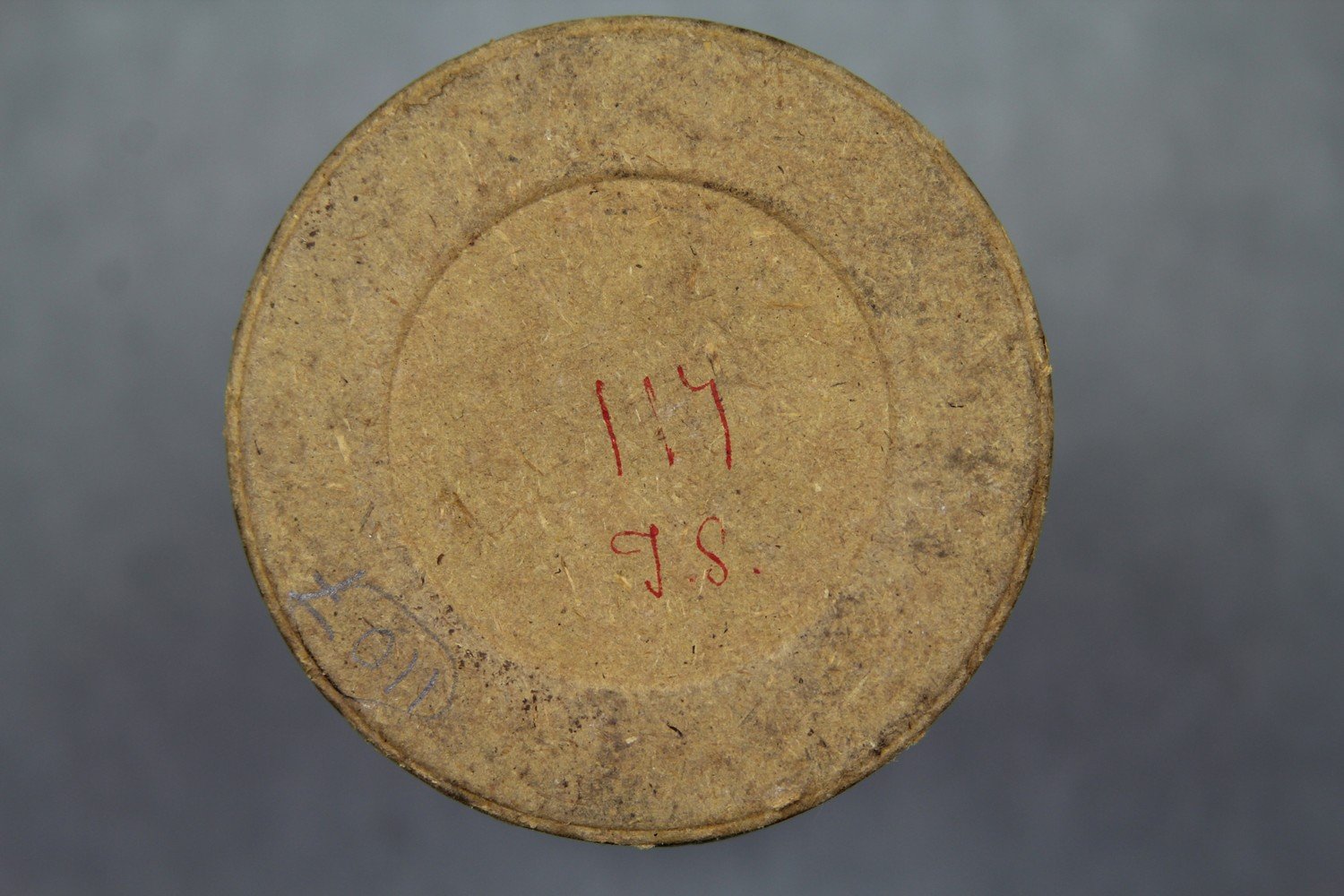 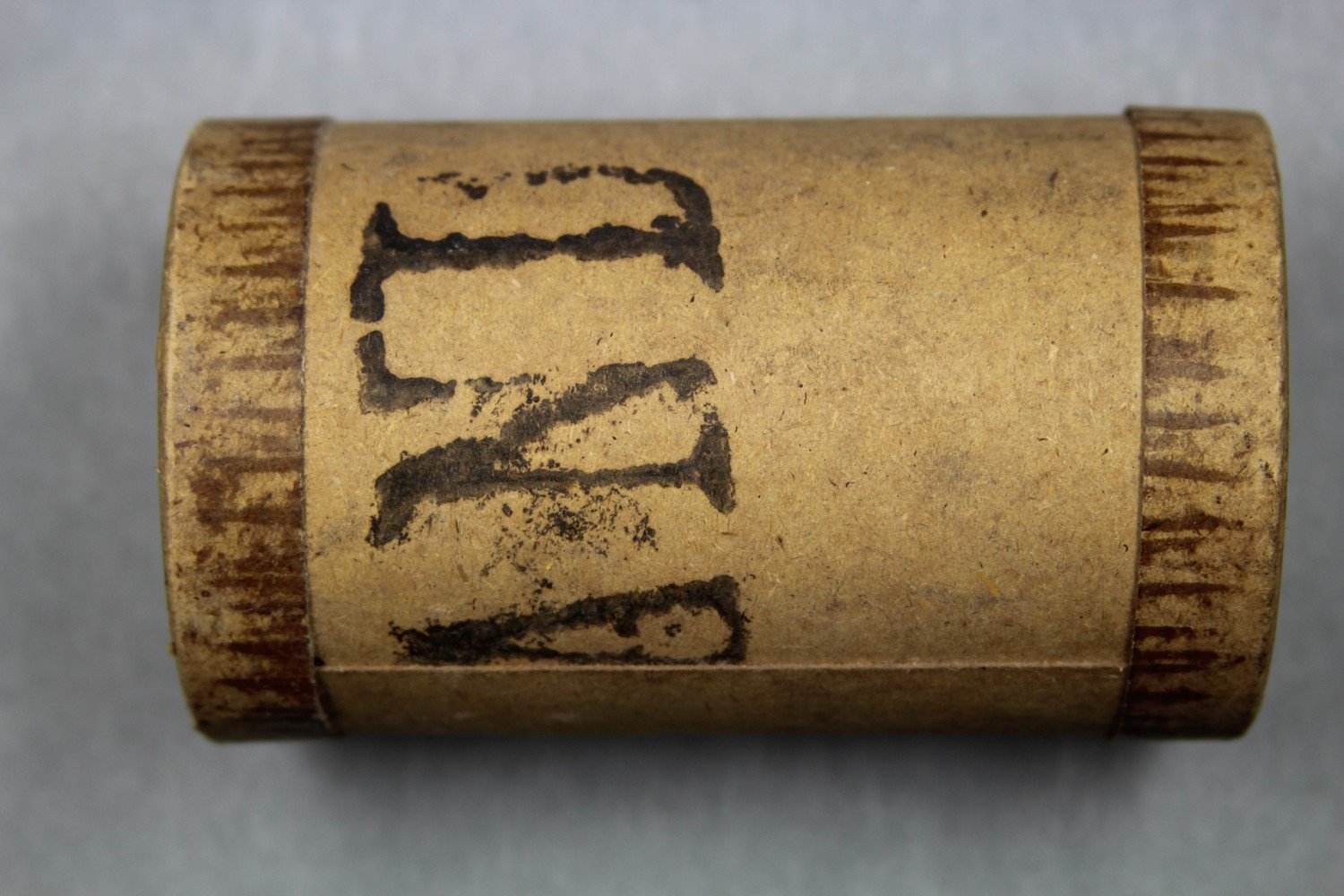    | Myers, C. S. 1898-1899. Journal on Torres Straits anthropological expedition. [manuscript] Haddon Papers. ADD 8073. Cambridge: Cambridge University Library. | Haddon, A.C. (ed.) 1907. Reports of the Cambridge Anthropological Expedition to Torres Strait: Volume III, The Languages of Torres Strait. Cambridge: Cambridge University Press. British Library shelfmark General Reference Collection YC.2011.b.631. | Haddon, A.C. (ed.) 1912. Reports of the Cambridge Anthropological Expedition to Torres Strait: Volume IV, Arts and Crafts. Cambridge: Cambridge University Press. British Library shelfmark General Reference Collection YC.2011.b.634. | ||||
| C80/1482 | Ali and Ontong | Mahmoud Ali (singer, male); Charlie Ontong (singer, male) | Torres Strait Islands | 23 May 1898 – 20 July 1898 | 1. Announcement: "Song, by Mahmoud Ali." 2. Unaccompanied male vocal solo. 3. "Song by Charlie Ontong." 4. Unaccompanied male vocal solo. | Reasonable quality recording but with surface noise. It is not clear whether Ali was present only on the outward journey from Mer / Murray Island to New Guinea or whether he was present for the entire New Guinea trip. The date range reflects the entire New Guinea leg. | Field recordings | 3'09" | 1898 Cambridge Anthropological Expedition to Torres Straits | Brown wax cylinder. Cardboard cylinder case. | Alfred Cort Haddon 1898 Expedition (Torres Strait and British New Guinea) Cylinder Collection | British Library | 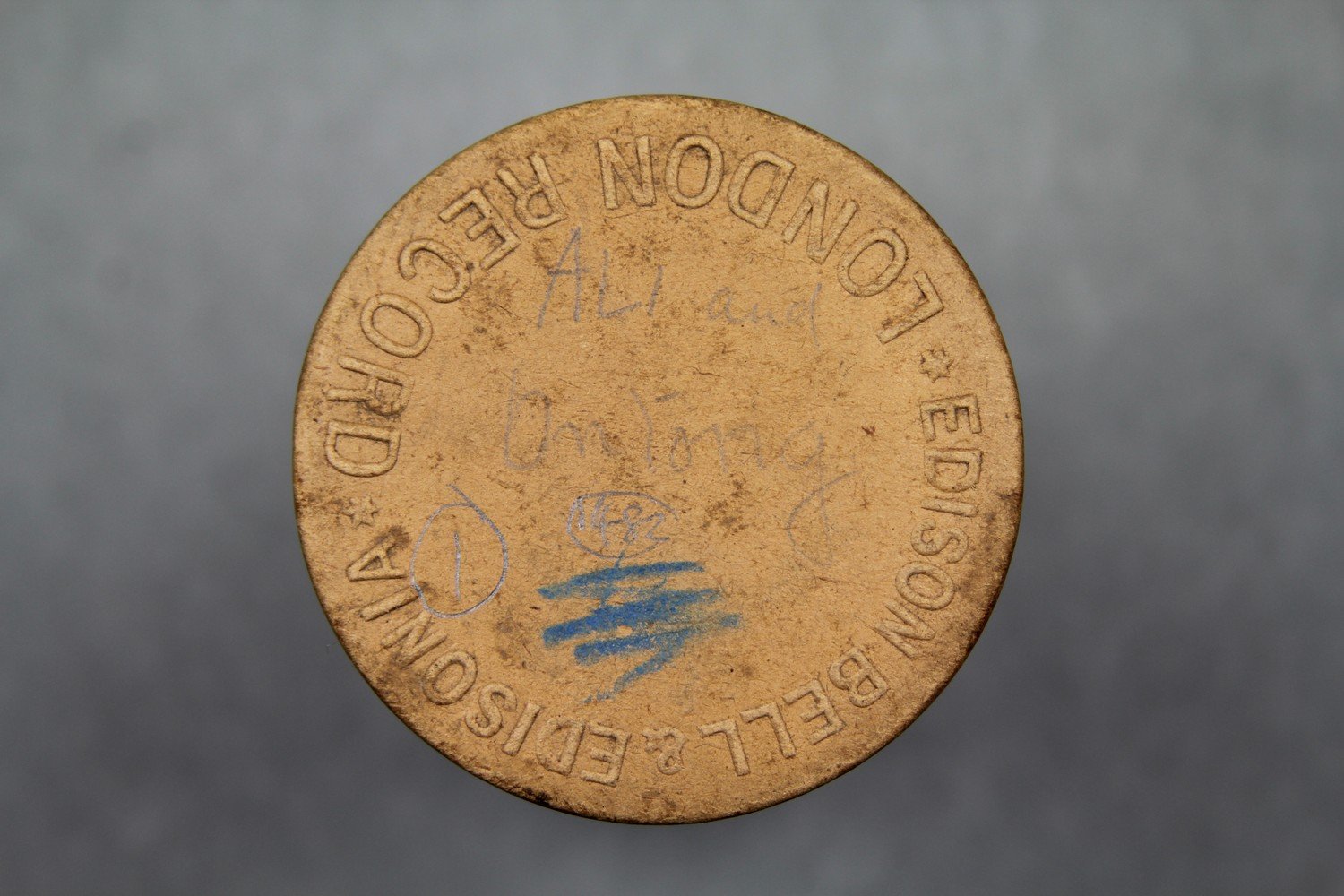      | |||||||||
| C80/1483 | Home Sweet Home | Unidentified (male chorus) | Mer / Murray Island, Torres Strait Islands | 6 May 1898 – 8 September 1898 | 1. "Home Sweet Home, Murray Island". 2. Male vocal group, unaccompanied. Seems to be a version of Home, Sweet Home composed by Sir Henry Bishop and adapted from John Howard Payne’s 1823 opera 'Clari, or the Maid of Milan'. | Good quality recording, though with some surface noise. As the recordist has not been identified, the recording date range corresponds to when any of the Expedition members were on Mer / Murray Island. | English | Field recordings | 1'57" | 1898 Cambridge Anthropological Expedition to Torres Straits | Brown wax cylinder. Cardboard cylinder case. | Alfred Cort Haddon 1898 Expedition (Torres Strait and British New Guinea) Cylinder Collection | British Library |  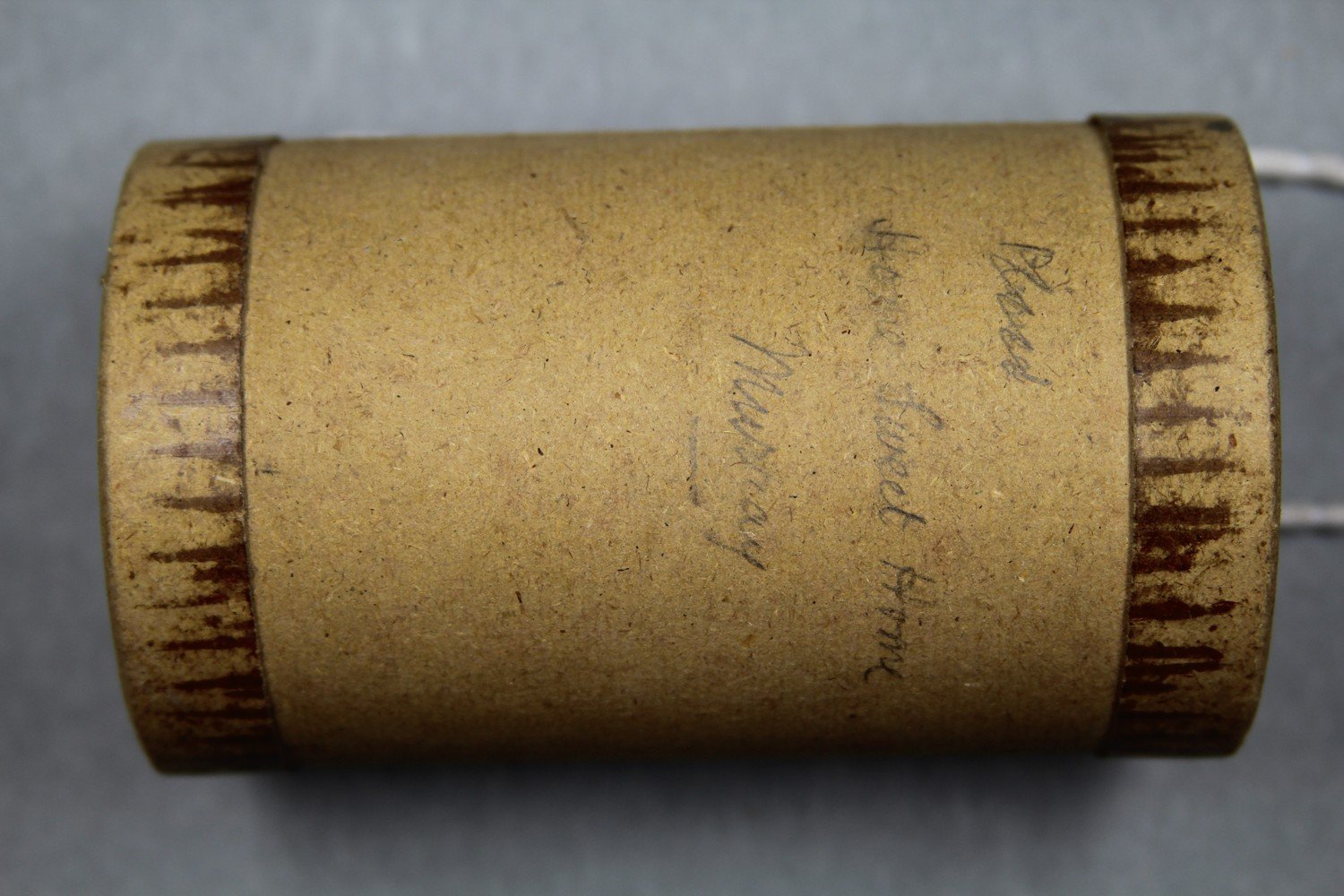     | ||||||||
| C80/1484 | Solo male vocal | Unidentified (singer, male) | 22 April 1898 – 15 November 1898 | 1-2. Unaccompanied male vocal solo. This may not be a Torres Strait cylinder, as noted by Will Prentice (2001) in documentation held at the British Library. It seems that '110' has been etched on the rim of cylinder. | Reasonable quality recording but with weak signal. As no specific recording location has been identified, the recording date range is based on when any members of the Cambridge Expedition were present in the Torres Strait in 1898. | Field recordings | 2'20" | 1898 Cambridge Anthropological Expedition to Torres Straits | Brown wax cylinder. Cardboard cylinder case. | Alfred Cort Haddon 1898 Expedition (Torres Strait and British New Guinea) Cylinder Collection | British Library | 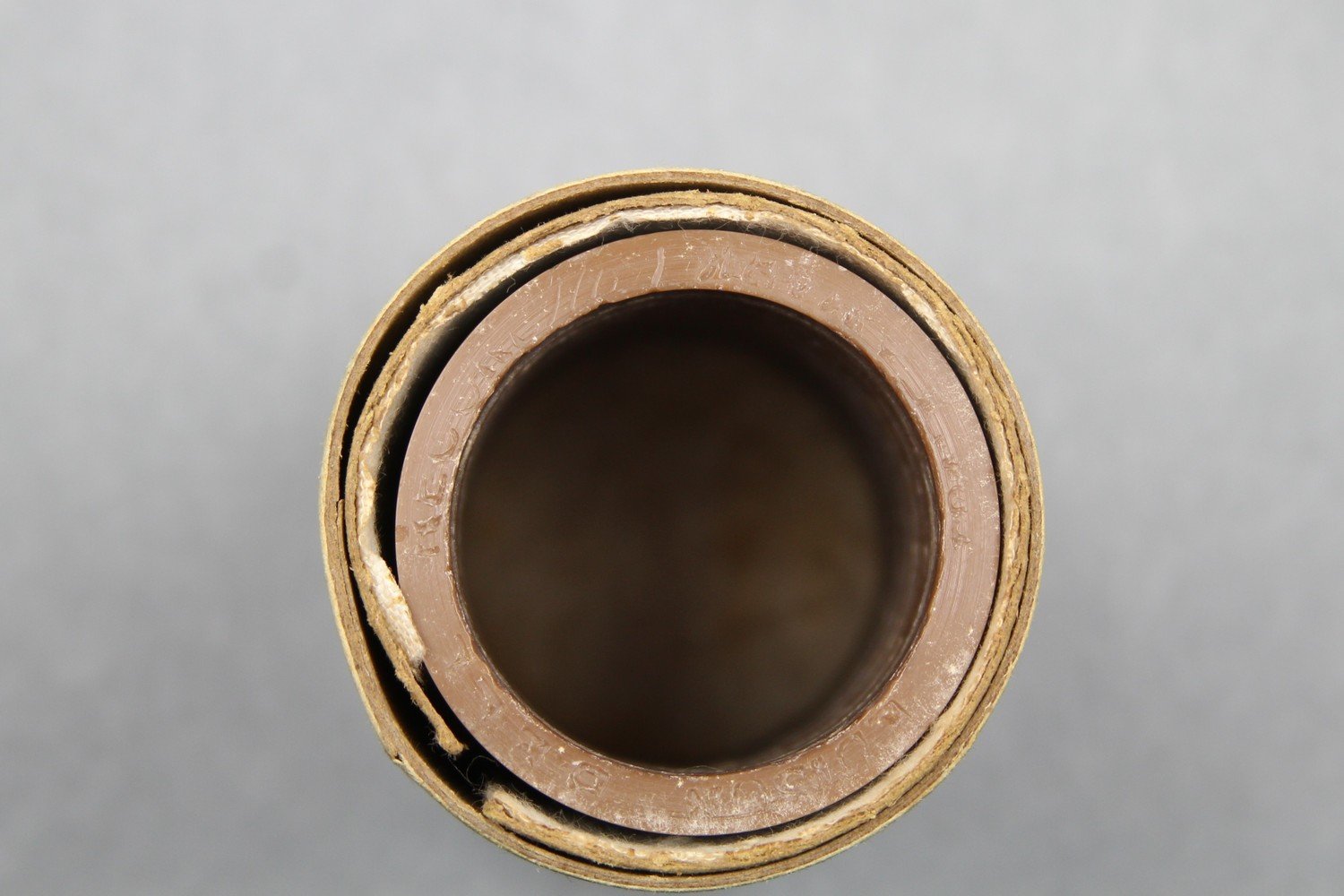      | ||||||||||
| C80/1485 | Auld Lang Syne | Sidney H. Ray (speaker, male); unidentified (speaker, male); unidentified (chorus) | Richmond Road, Ilford, Essex, England, UK | 15 February 1898 ? | 1-2. Vocal demonstration of phonograph (or graphophone) - wishing Mr. Ray success on his journey. Probably two different male speakers. 3. Mr. Ray's reply followed by laughter. 4. Vocal group singing "Auld Lang Syne" with piano. | Good quality recording. The recording date for this cylinder was probably taken from C80/1489, which is a similar farewell recording involving Sidney Ray. | English | Ray, Sidney H. | 2'38" | 1898 Cambridge Anthropological Expedition to Torres Straits | Brown wax cylinder. Cardboard cylinder case. | Alfred Cort Haddon 1898 Expedition (Torres Strait and British New Guinea) Cylinder Collection | British Library | 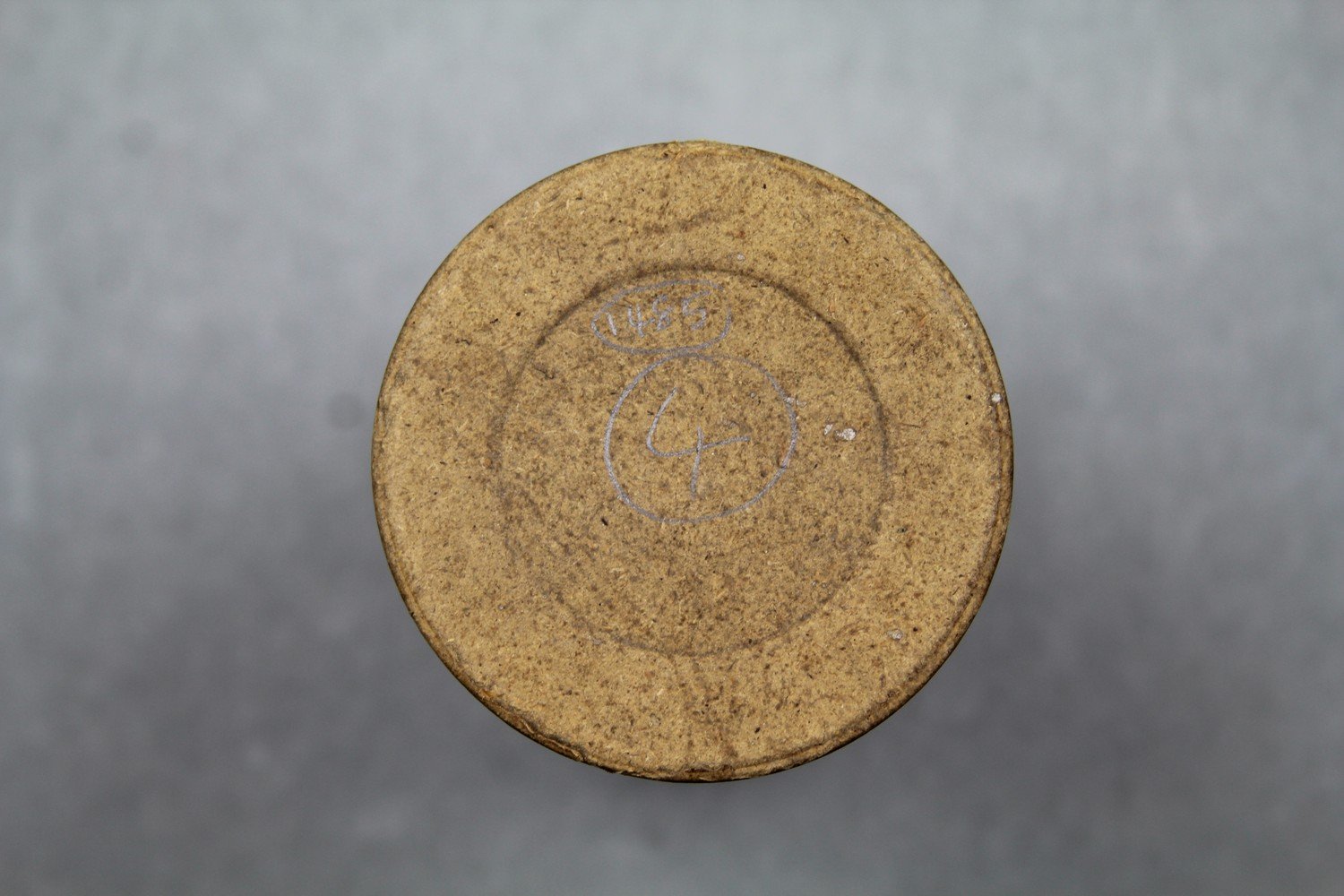      | ||||||||
| C80/1488 | Samoan song | Finau (singer, male) | Mer / Murray Island, Torres Strait Islands | 6 May 1898 – 8 September 1898 | 1. Announcement: "Samoan Song, by Finau". 2. Unaccompanied male vocal solo. | Reasonable quality recording. As no specific recording location has been identified, the recording date range is based on when any members of the Cambridge Expedition were present in the Torres Strait in 1898. | Samoan | Field recordings | 1'22" | 1898 Cambridge Anthropological Expedition to Torres Straits | Brown wax cylinder. Cardboard cylinder case. | Alfred Cort Haddon 1898 Expedition (Torres Strait and British New Guinea) Cylinder Collection | British Library |  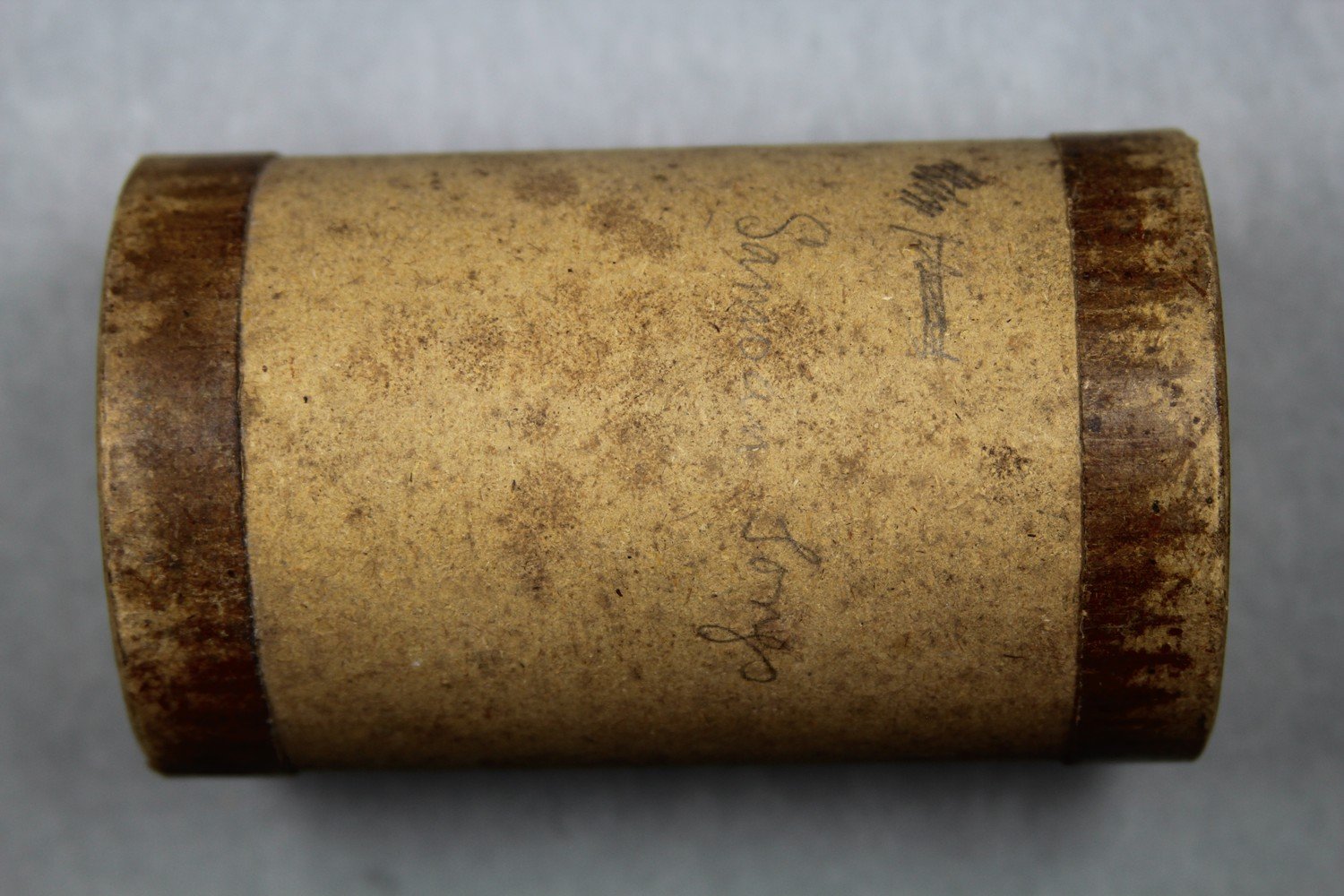     | ||||||||
| C80/1489 | Yeomans Wedding | Sidney H. Ray (speaker, male); unidentified (speaker, male) | Ilford, Essex, England, UK | 15 February 1898 | 1. Yeoman's Song (words Hayes, music Poniatowski) sung by male vocal solo, piano accompaniment. 2. Announcement from Sidney Ray, that a few friends are gathered around (address indecipherable) who wish him success on the journey to the Torres Strait and New Guinea. | Good quality recording. | English | Ray, Sidney H. | 2'51" | 1898 Cambridge Anthropological Expedition to Torres Straits | Brown wax cylinder. Cardboard cylinder case. | Alfred Cort Haddon 1898 Expedition (Torres Strait and British New Guinea) Cylinder Collection | British Library | 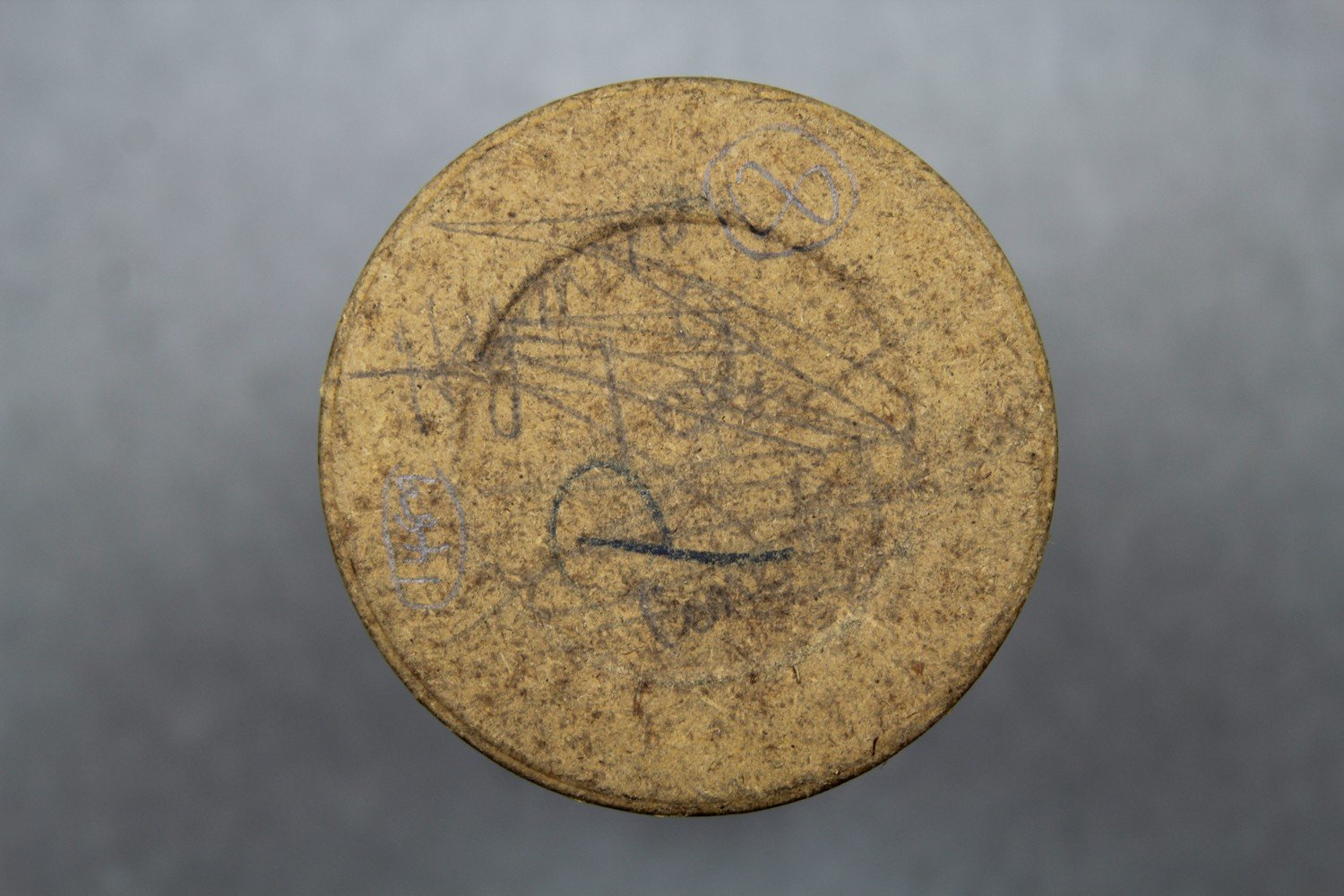 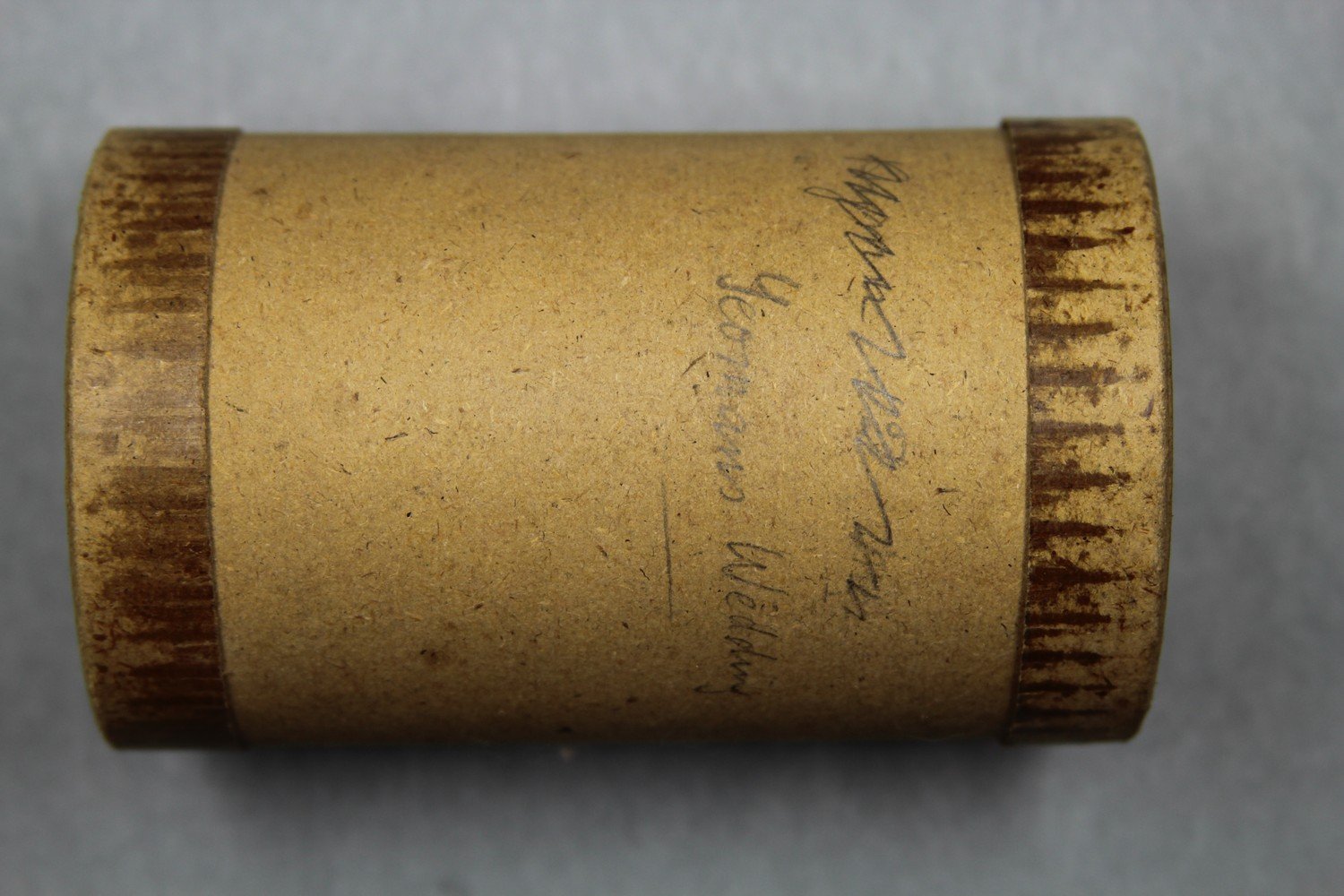     | ||||||||
| C80/1493 | Male vocal solo | Unidentified (singer, male) | 22 April 1898 – 15 November 1898 | 1. Announcement: "A [indecipherable] village song". 2. Unaccompanied male vocal solo. 3. "Another [?] song". 4. Unaccompanied male vocal solo. This may not be a Torres Strait cylinder. | Reasonable quality recording but with surface noise. As no specific recording location has been identified, the recording date range is based on when any members of the Cambridge Expedition were present in the Torres Strait in 1898. | Field recordings | 2'17" | 1898 Cambridge Anthropological Expedition to Torres Straits | Brown wax cylinder. Cardboard cylinder case. | Alfred Cort Haddon 1898 Expedition (Torres Strait and British New Guinea) Cylinder Collection | British Library |       | ||||||||||
| C80/1495 | Kaper Kaper Story | Unidentified (singer, male) | Torres Strait Islands | 22 April 1898 – 15 November 1898 | 1. Unaccompanied male vocal solo. Seskip is mentioned in folk tale 21 Kaperkaper, the Cannibal (Haddon 1908 VI:53). This story was also recorded on Mer / Murray Island in 1968 (Lawrie 1970:316-317). Seskip was her youngest daughter. They lived on the hill at Babud. Female figurine in the Museum of Archaeology and Anthropology, Cambridge. | Very short recording with weak signal - possibly cylinder is a badly shaved blank. As no specific recording location has been identified, the recording date range is based on when any members of the Cambridge Expedition were present in the Torres Strait in 1898. | Field recordings | 0'29" | 1898 Cambridge Anthropological Expedition to Torres Straits | Brown wax cylinder. Cardboard cylinder case. | Alfred Cort Haddon 1898 Expedition (Torres Strait and British New Guinea) Cylinder Collection | British Library | 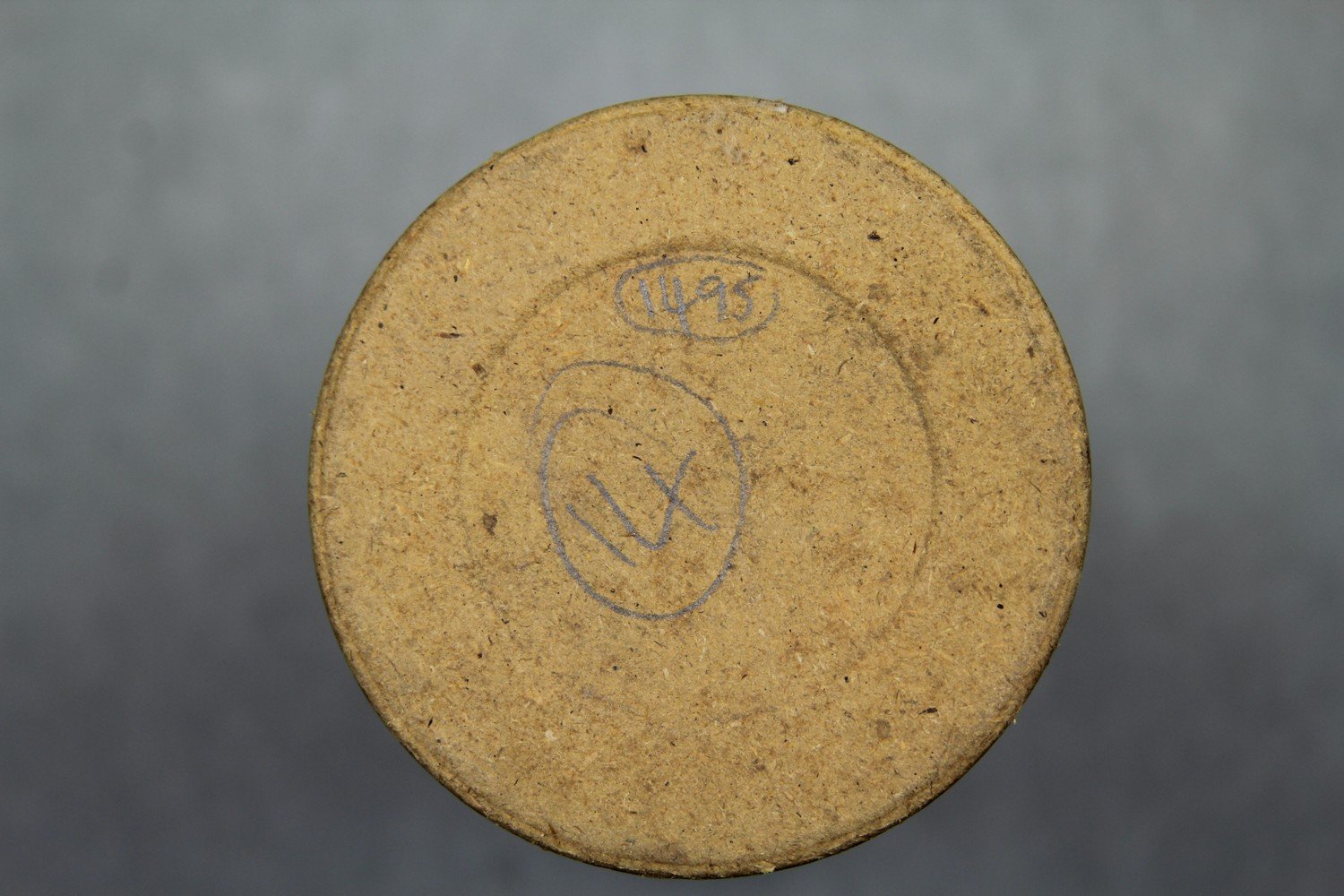 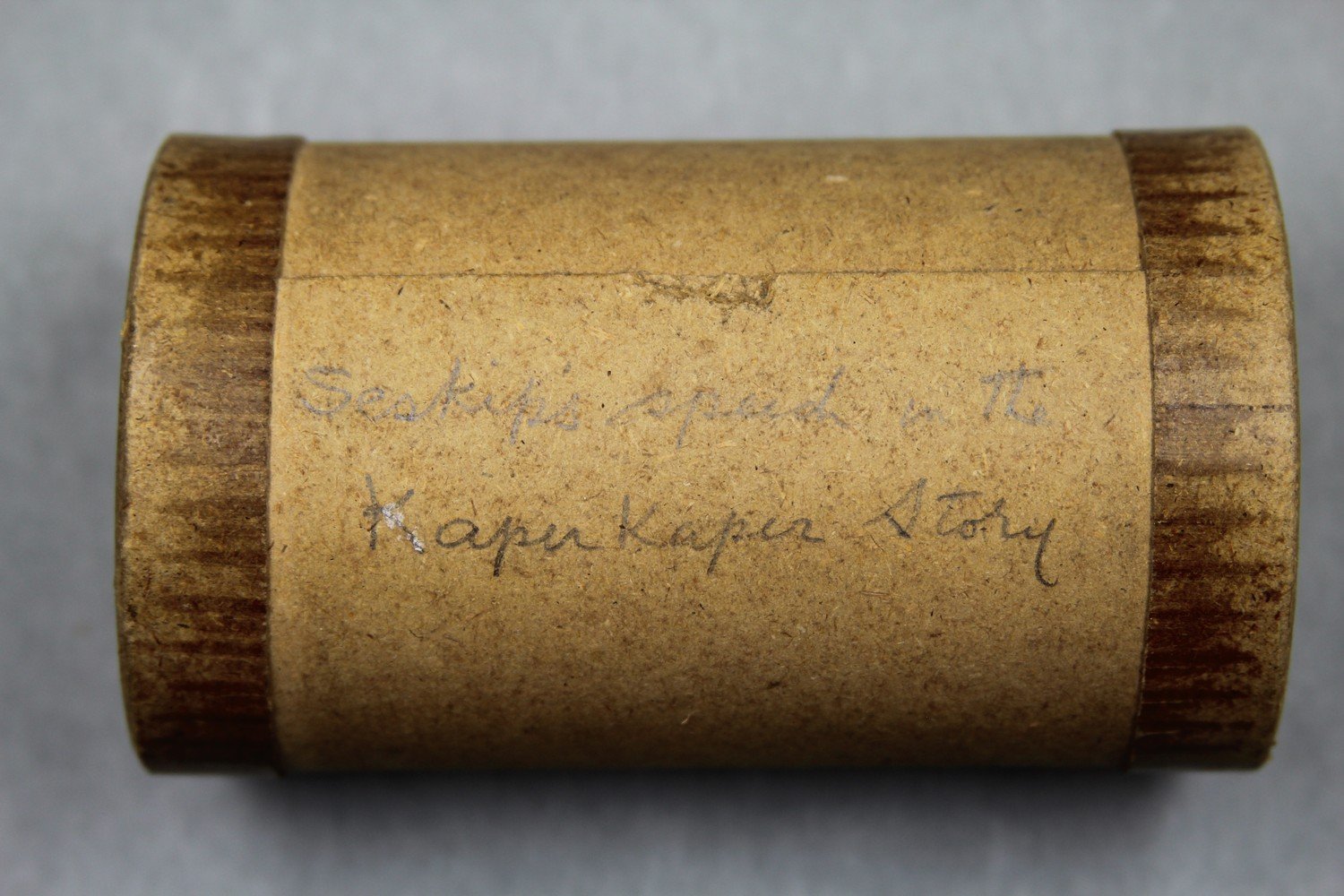     | Haddon, A.C. (ed.) 1908. Reports of the Cambridge Anthropological Expedition to Torres Strait: Volume VI, Sociology, Magic and Religion of the Eastern Islanders. Cambridge: Cambridge University Press. British Library shelfmark General Reference Collection YC.2011.b.632. | Lawrie, Margaret. 1970. Myths and Legends of Torres Strait / Songs from Torres Strait. St. Lucia, Queensland: University of Queensland Press. British Library shelfmark General Reference Collection Cup.24.r.9. | |||||||
| C80/1497 | Naval brigade | Unidentified (chorus) | Torres Strait Islands | 22 April 1898 – 15 November 1898 | 1. Truncated, indecipherable announcement. 2. Unaccompanied mixed voice choir. This cylinder has the same previous C62 shelfmark as C680/1496. They are different recordings. | As no specific recording location has been identified, the recording date range is based on when any members of the Cambridge Expedition were present in the Torres Strait in 1898. | Field recordings | 2'38" | 1898 Cambridge Anthropological Expedition to Torres Straits | Brown wax cylinder. Cardboard cylinder case. | Alfred Cort Haddon 1898 Expedition (Torres Strait and British New Guinea) Cylinder Collection | British Library | 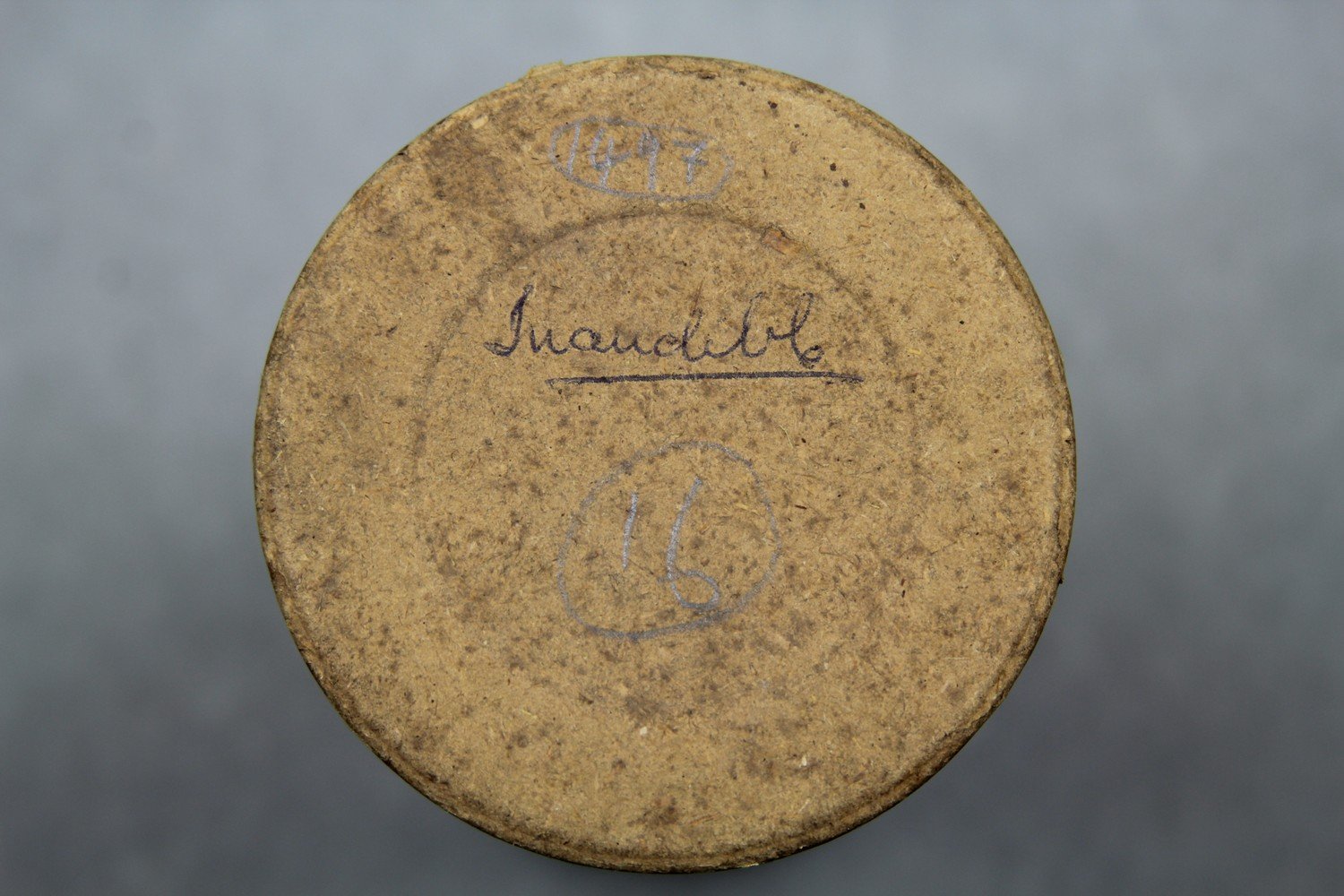 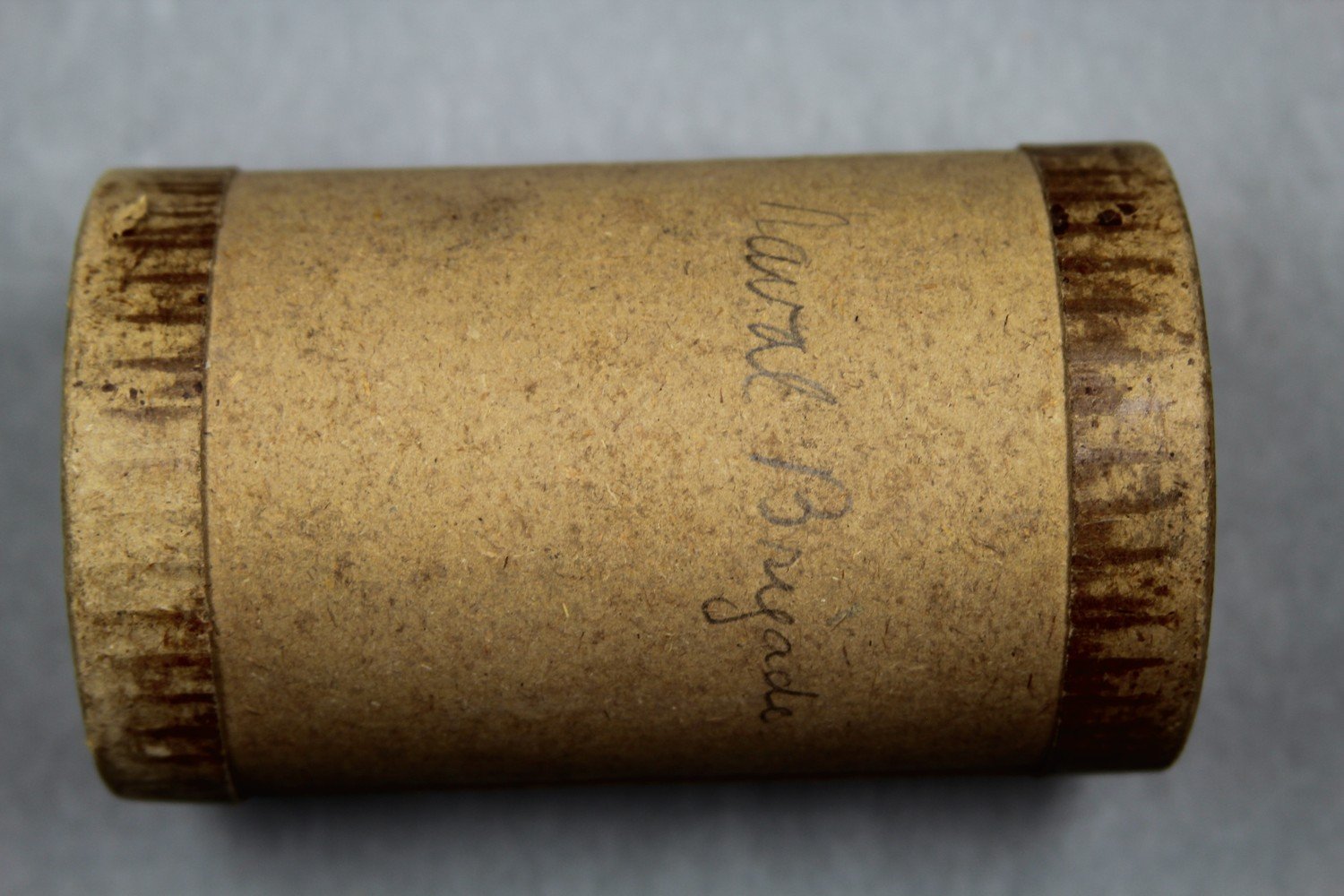     | |||||||||
| C80/797 | Male vocal solo | Wanu (singer, male) | Mer / Murray Island, Torres Strait Islands | 06 May 1898 – 08 September 1898 | 1. Announcement: "kamut [wed?] cat's cradle song, by Wano, Murray Island". 2. Unaccompanied male vocal solo. Cat's cradle songs were called 'kamut' on Mer / Murray Island (Haddon 1912:320) | Poor quality recording with weak signal and surface noise. As the recordist has not been identified, the recording date range corresponds to when any of the Expedition members were on Mer / Murray Island. | Kala Lagaw Ya. Ray noted that the kamut or cat's cradle songs contained words from the Western language (1907:50). It is not clear whether they are also sung in Meriam Mir. | Field recordings | 1'54" | 1898 Cambridge Anthropological Expedition to Torres Straits | Brown wax cylinder. Cardboard cylinder case. | Alfred Cort Haddon 1898 Expedition (Torres Strait and British New Guinea) Cylinder Collection | British Library | 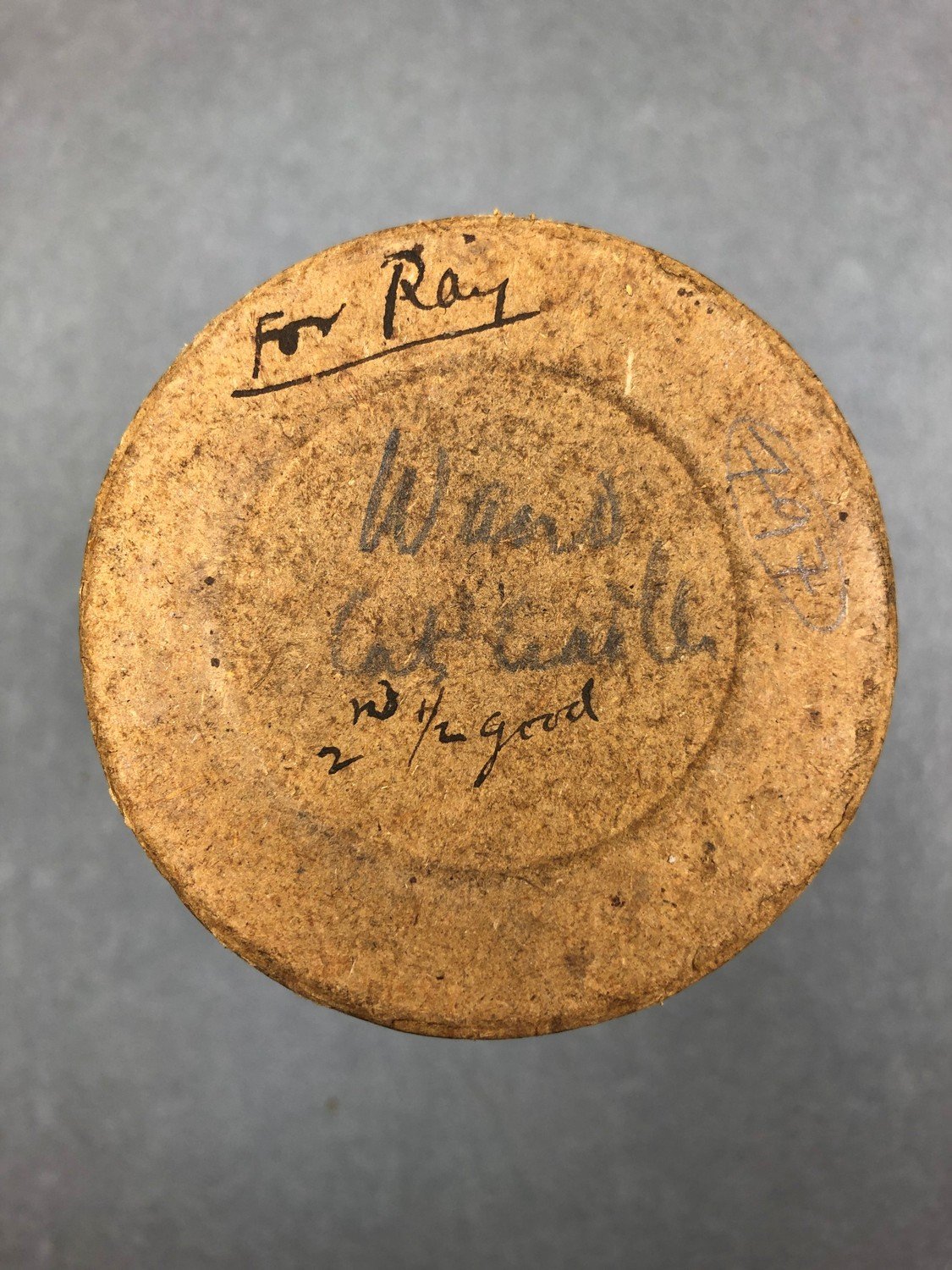 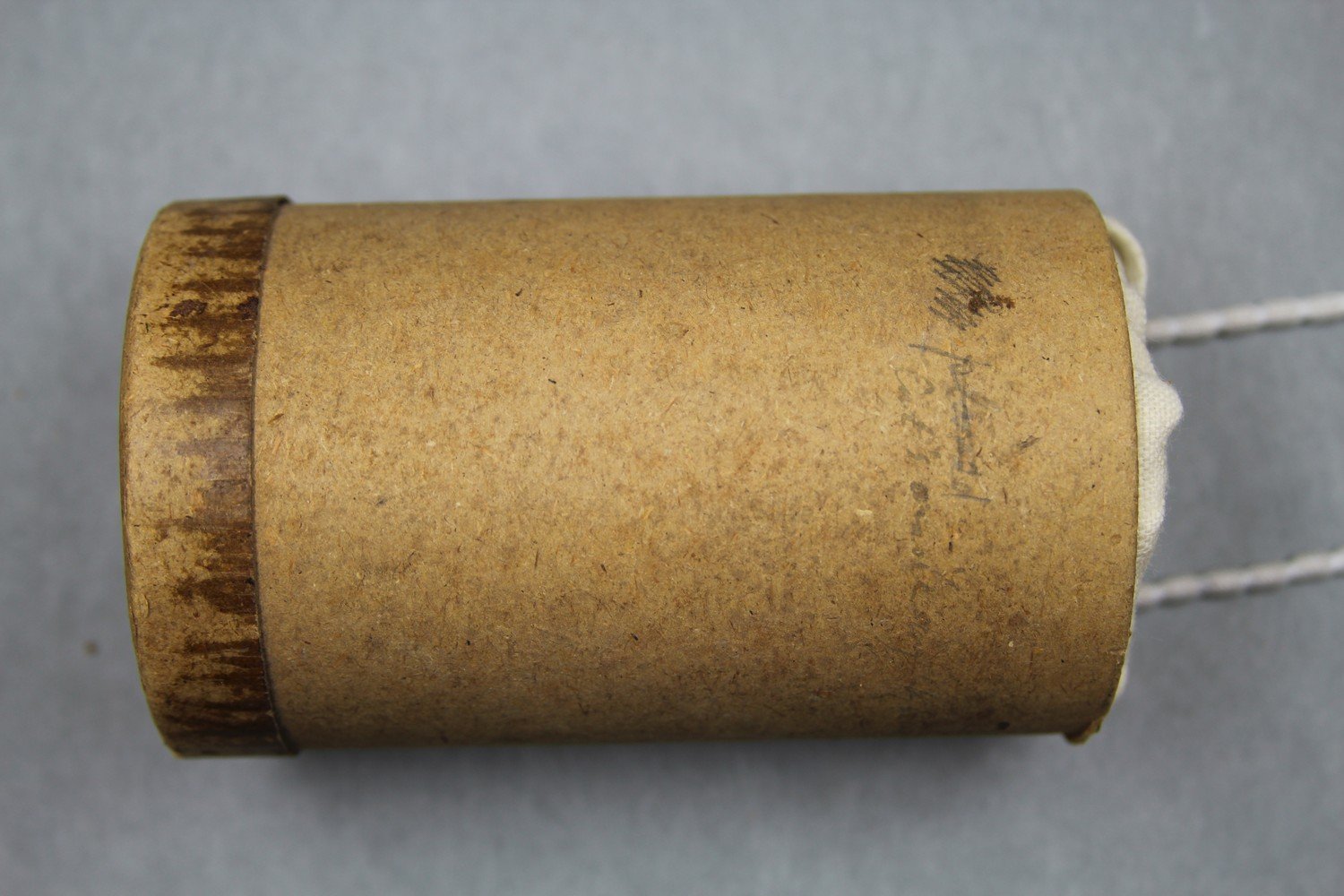 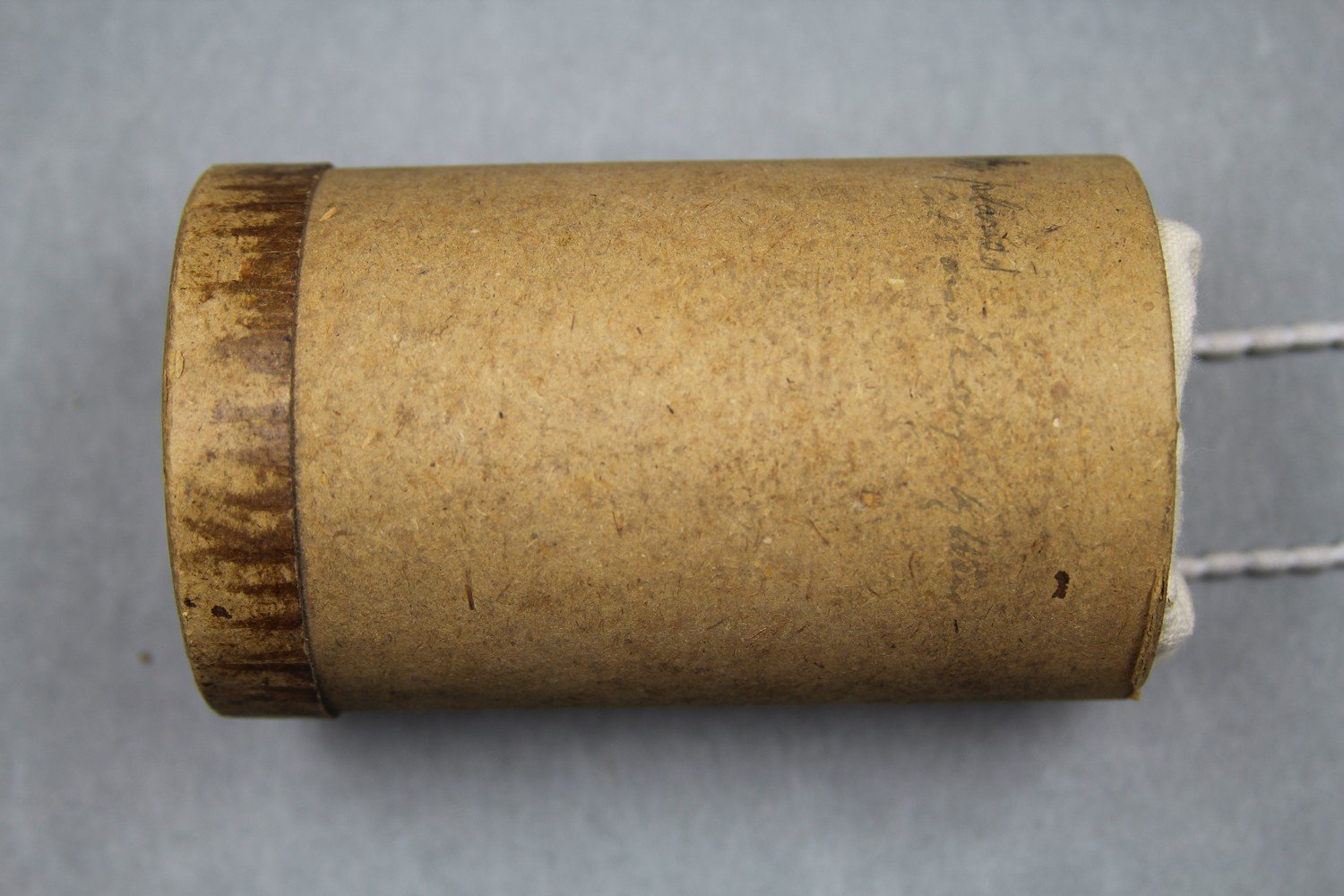    | Haddon, A.C. (ed.) 1907. Reports of the Cambridge Anthropological Expedition to Torres Strait: Volume III, The Languages of Torres Strait. Cambridge: Cambridge University Press. British Library shelfmark General Reference Collection YC.2011.b.631. | Haddon, A.C. (ed.) 1912. Reports of the Cambridge Anthropological Expedition to Torres Strait: Volume IV, Arts and Crafts. Cambridge: Cambridge University Press. British Library shelfmark General Reference Collection YC.2011.b.634. | ||||||
| C80/722 | Rotuma Songs | George Roki (singer, male) | Mer / Murray Island, Torres Strait Islands | 05 September 1898 ? | 1. Announcement: "Rotuma songs by George Roki." 2. Unaccompanied male vocal solo. (C680/743). George Roki sang Rotuma songs into the phonograph with Sidney Ray on 5 September 1898 (Ray 1898:86). Information on cylinder: 'Rotuma Songs. George Roki.' | Reasonable quality recording. As the recordist has not been identified, the recording date range corresponds to when any of the Expedition members were on Mer / Murray Island. Ray describes recording George Roki in his journal on 5 September 1898 (1898:86). | Rotuman | Field recordings | Ray, Sidney | 3'09" | 1898 Cambridge Anthropological Expedition to Torres Straits | Brown wax cylinder. Cardboard cylinder case. | Alfred Cort Haddon 1898 Expedition (Torres Strait and British New Guinea) Cylinder Collection | British Library |       | Ray, S.H. 1898-99. Journal: Torres Straits Expedition 1898-99. [manuscript] Copies of journals and correspondence of Sidney Herbert Ray. MS 380314. London: SOAS Library. | ||||||
| C80/1008 | Male vocal solo | Unidentified (singer, male) | Mer / Murray Island, Torres Strait Islands | 06 May 1898 – 08 September 1898 | 1. Unaccompanied male vocal solo, singing and talking. No further information available. This cylinder was previously considered a stray cylinder from one of the African or Pacific Rim collections. It seems that this cylinder has been placed in the wrong case. This recording possibly corresponds to Charles S. Myers' Malu Song IV A. It may be a duplicate of an existing recording or another version. Adud leluti translates to 'bad man' (Haddon & Myers 1908:297). Ray translates adud as 'bad' or 'evil' (Ray 1907:132). Song IV A was performed during the exhibition of the sacred Malu-Bomai masks and also during the dance of the Beizam Boai after the initiation ceremonies.” (Myers 1912:243). "The fourth song was uttered in a very low voice, and was followed by yet more highly sacred words which were quickly whispered so that no one may hear them save those who had been initiated into the Malu mysteries" (Myers & Haddon 1908:150). Published and analysed in Myers (1912:249-251, 267). Words also published in Haddon & Myers (1908:297-299). Musical notation is also included in Anthony Wilkin's field notebook as 'Song H' (1898:251). | Reasonable quality recording but occasionally weak signal. The recording date range assumes that Myers is indeed the recordist and corresponds to the dates of Myer's stay on Mer / Murray Island. The recording date range assumes that Myers is indeed the recordist and corresponds to the dates of Myer's stay on Mer / Murray Island. | Field recordings | Myers, C. S. | 1'57" | 1898 Cambridge Anthropological Expedition to Torres Straits | Brown wax cylinder. Cardboard cylinder case. | Alfred Cort Haddon 1898 Expedition (Torres Strait and British New Guinea) Cylinder Collection | British Library | 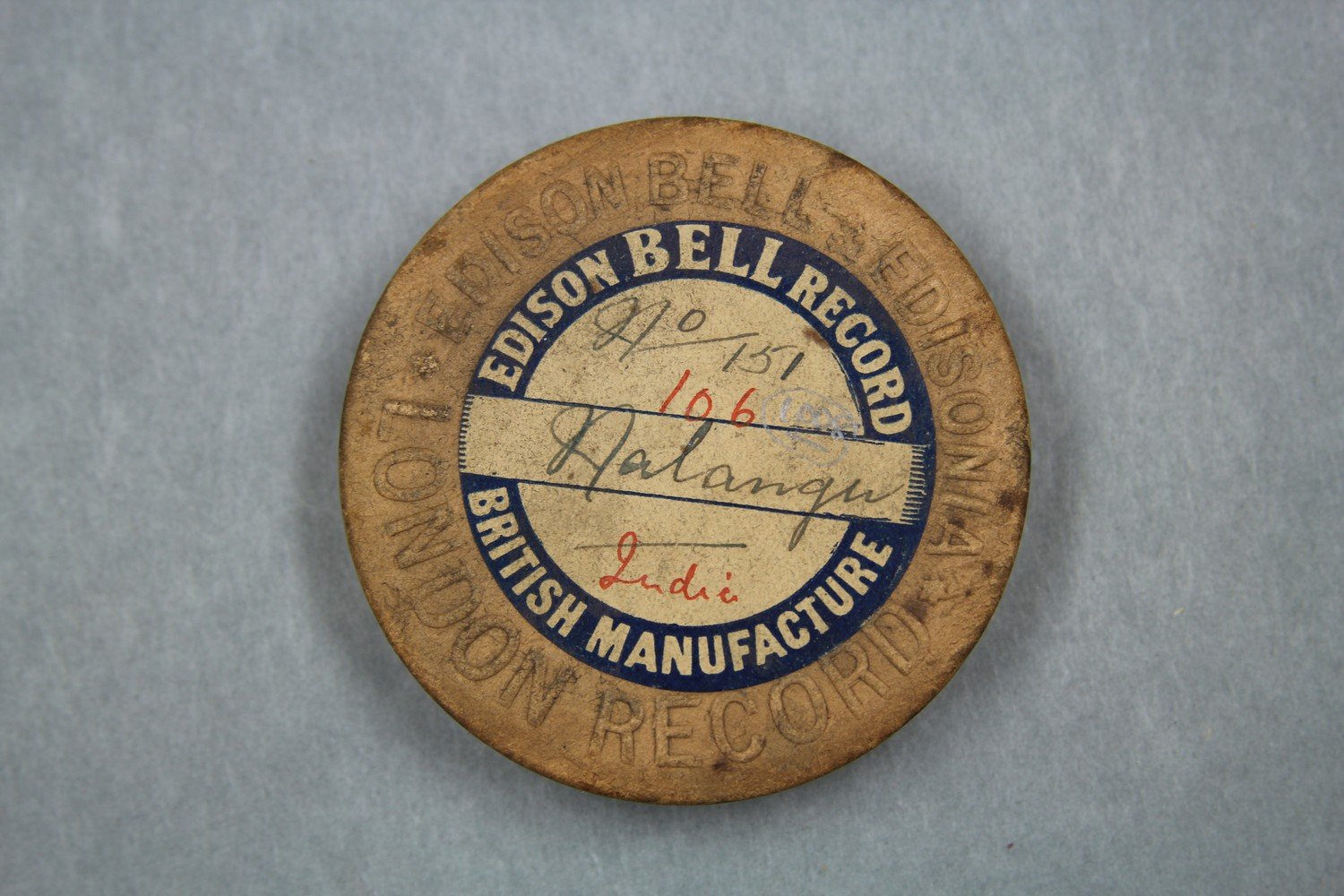      | Haddon, A.C. (ed.) 1907. Reports of the Cambridge Anthropological Expedition to Torres Strait: Volume III, The Languages of Torres Strait. Cambridge: Cambridge University Press. British Library shelfmark General Reference Collection YC.2011.b.631. | Haddon, A.C. (ed.) 1912. Reports of the Cambridge Anthropological Expedition to Torres Strait: Volume IV, Arts and Crafts. Cambridge: Cambridge University Press. British Library shelfmark General Reference Collection YC.2011.b.634. | ||||||
| C83/1510 | Native Song "Gala" by 30 Saltwater Women of Mala. Part 1 | Unidentified (chorus, female) | British Solomon Islands Protectorate | December 1904 – January 1915 | Female vocal group, unaccompanied. | From Langalanga Lagoon, Malaita, Solomon Islands | Cylinder chipped and bandaged, but reasonable quality recording. | Wala | Field recordings | Edge-Partington, Thomas William, 1883–1920 | 2'29" | Thomas Edge-Partington, 1909-1914 | Brown wax cylinder | C83 Thomas Edge-Partington 1909-1914 British Solomon Islands Protectorate Cylinder Collection | British Library | 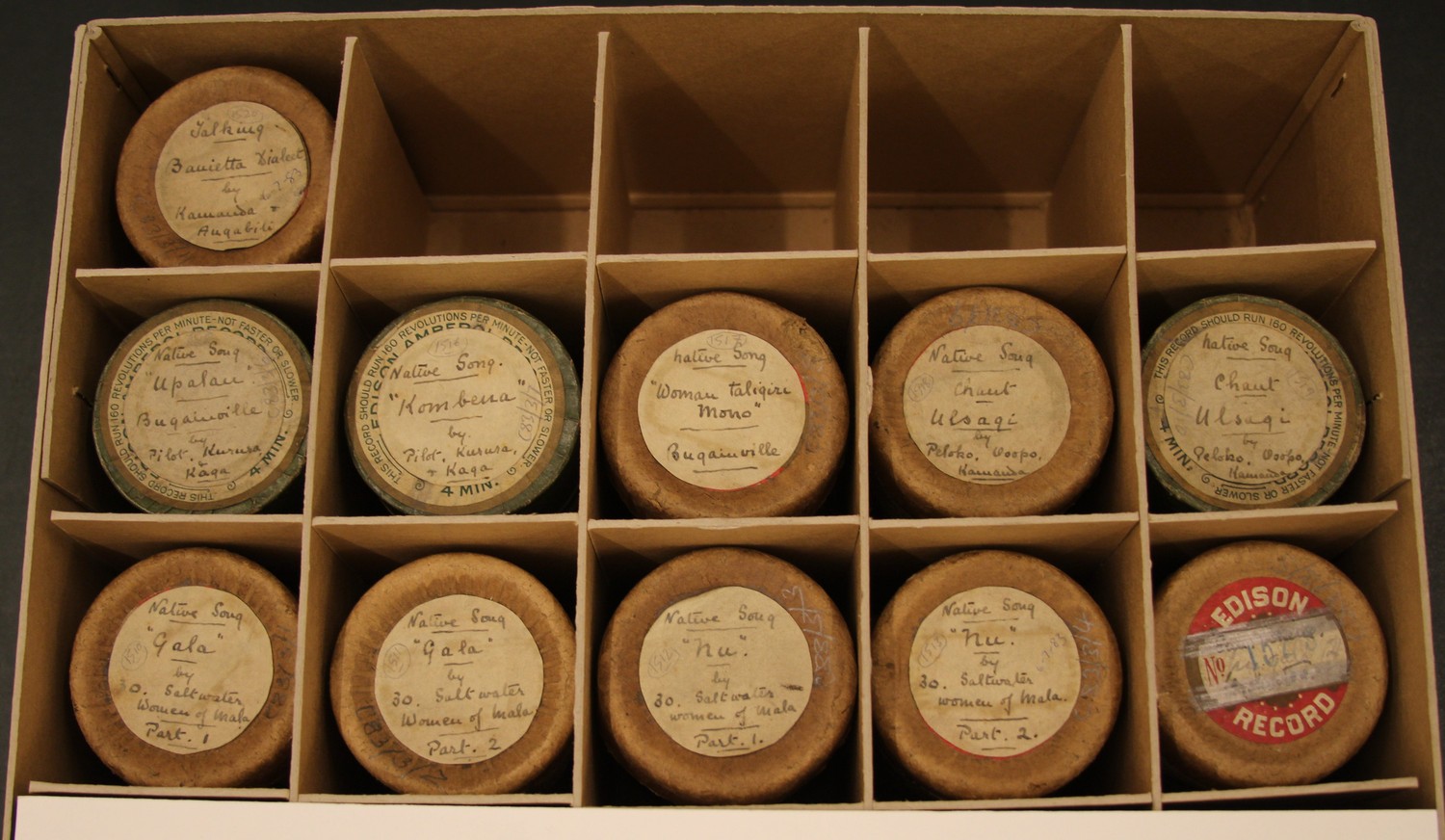 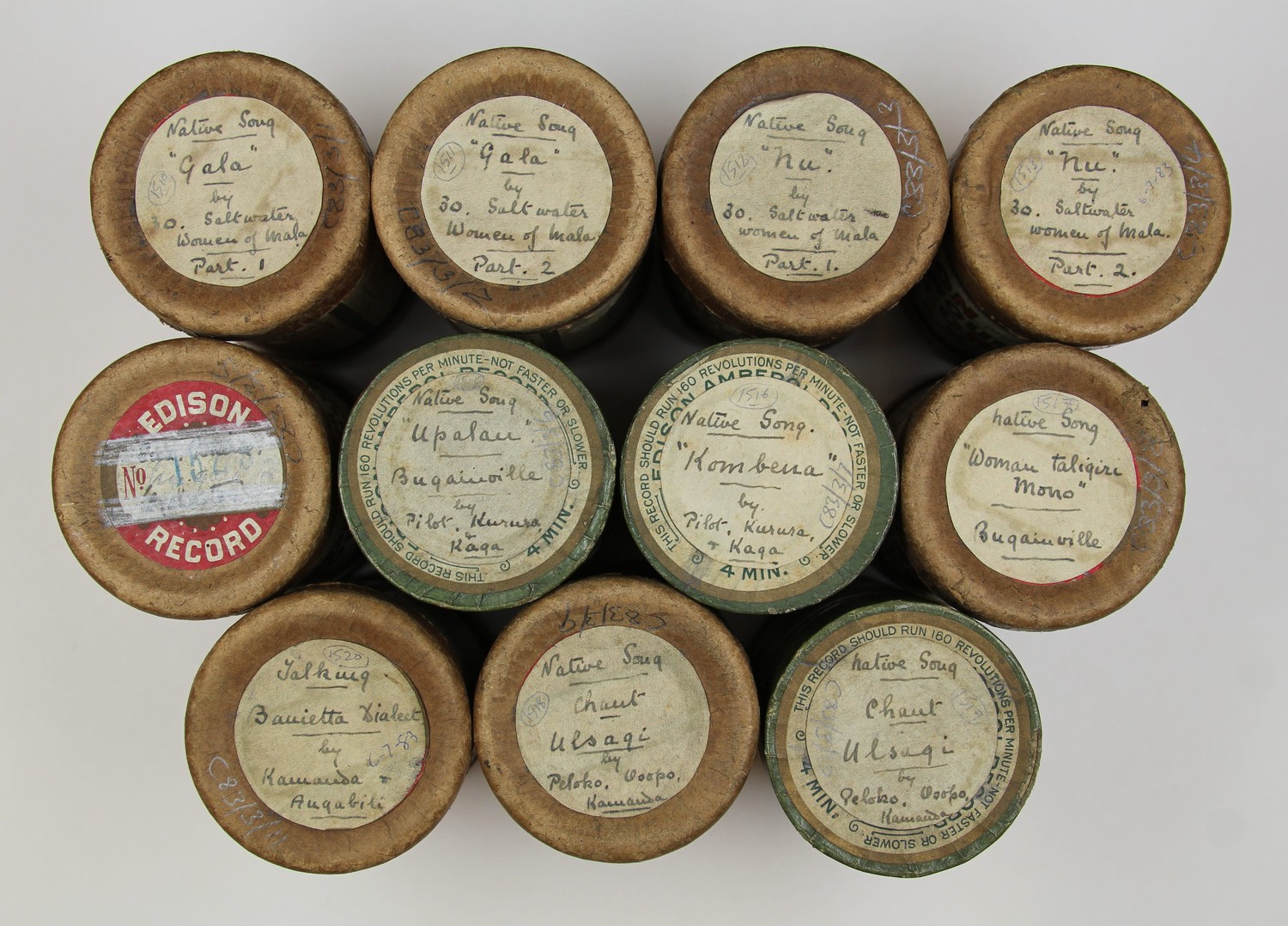 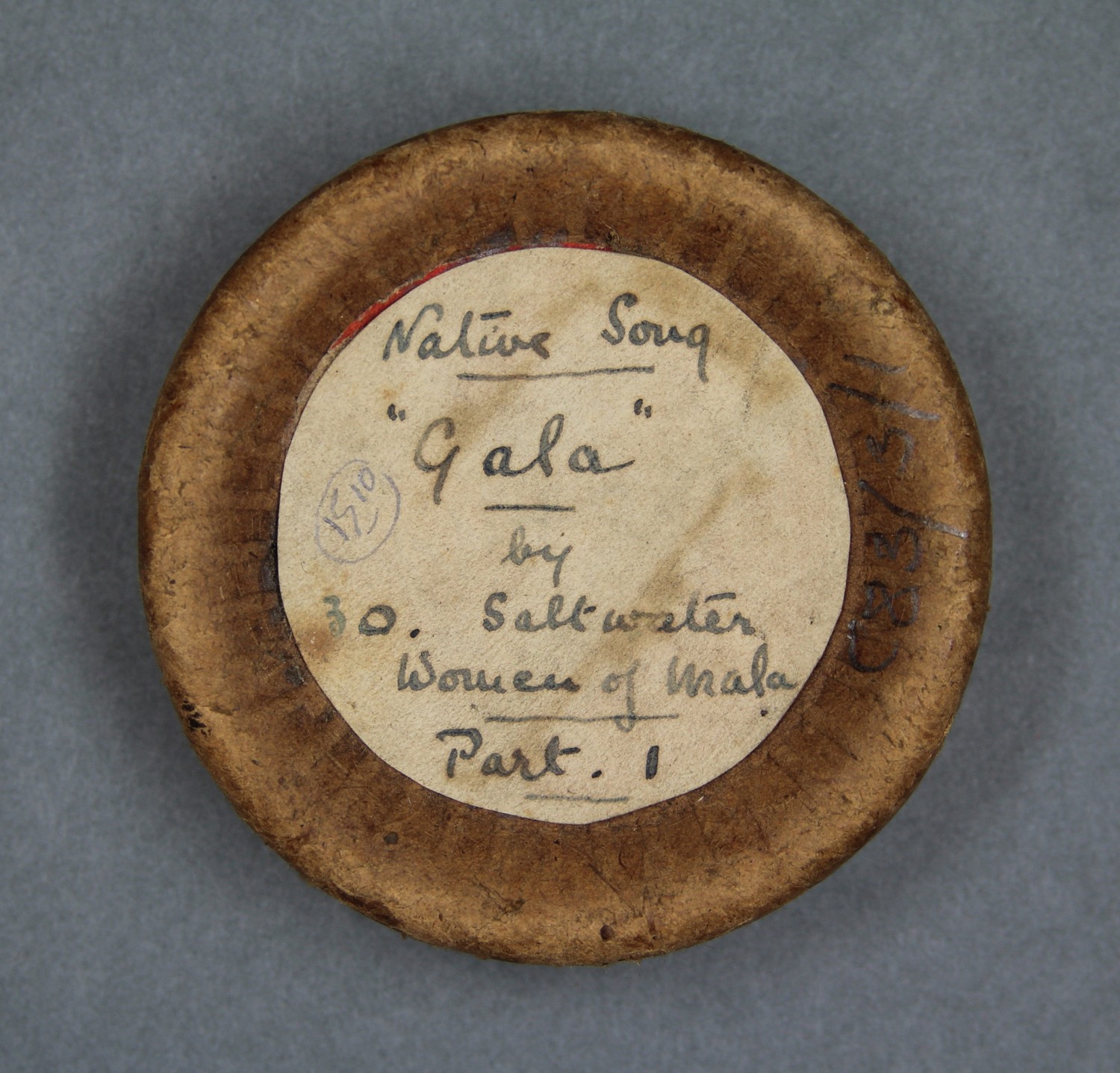 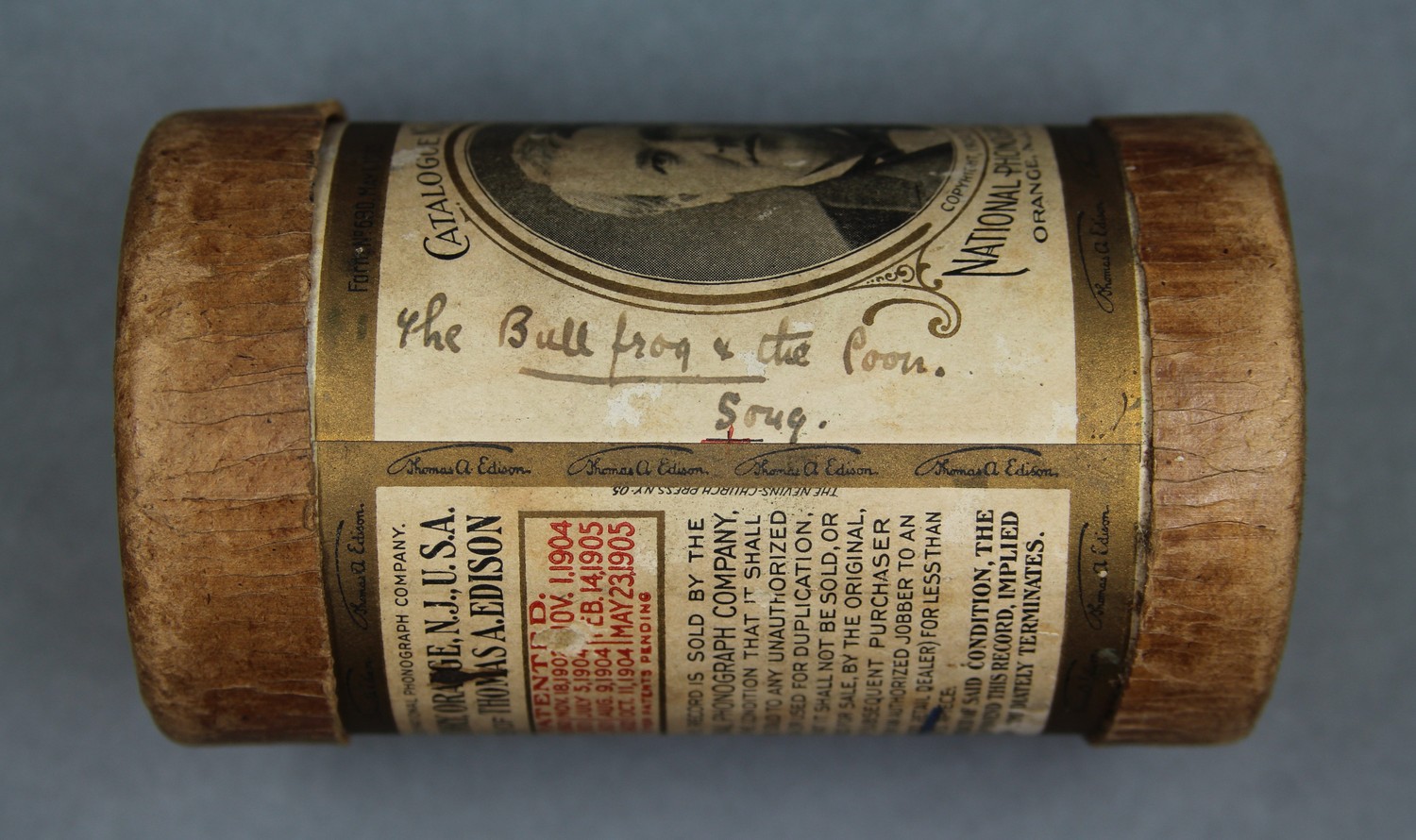 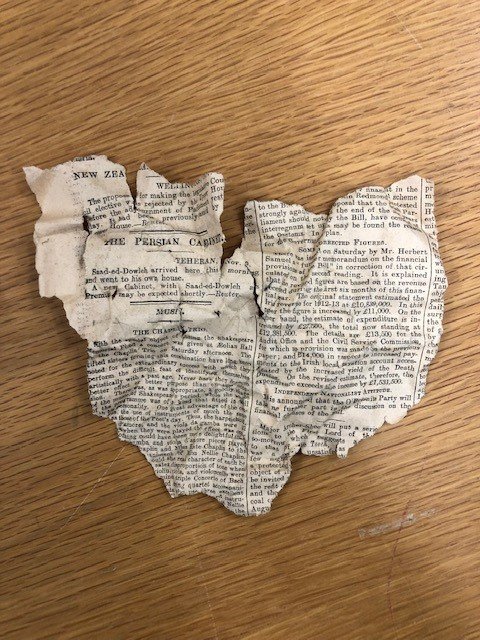  | ||||||
| C83/1511 | Native Song "Gala" by 30 Saltwater Women of Mala. Part 2 | Unidentified (chorus, female) | British Solomon Islands Protectorate | December 1904 – January 1915 | Female vocal group, unaccompanied. | From Langalanga Lagoon, Malaita, Solomon Islands | Wala | Field recordings | Edge-Partington, Thomas William, 1883–1920 | 2'36" | Thomas Edge-Partington, 1909-1914 | Brown wax cylinder | C83 Thomas Edge-Partington 1909-1914 British Solomon Islands Protectorate Cylinder Collection | British Library |   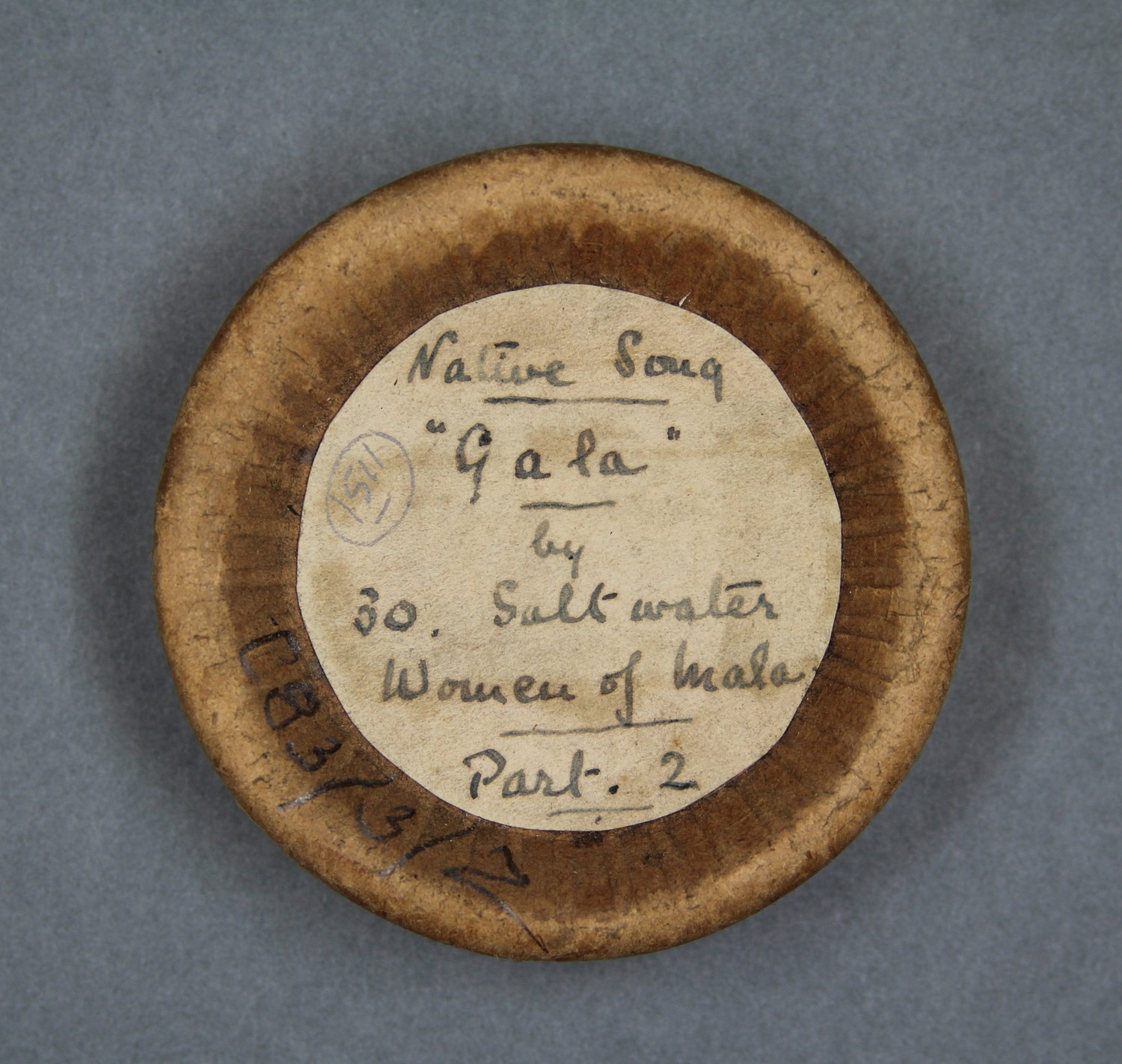    | |||||||
| C83/1512 | Native Song "Nu", by 30 Saltwater women of Mala. Part 1 | Unidentified (chorus, female) | British Solomon Islands Protectorate | December 1904 – January 1915 | Female vocal group, unaccompanied. | From Langalanga Lagoon, Malaita, Solomon Islands | Wala | Field recordings | Edge-Partington, Thomas William, 1883–1920 | 2'35" | Thomas Edge-Partington, 1909-1914 | Brown wax cylinder | C83 Thomas Edge-Partington 1909-1914 British Solomon Islands Protectorate Cylinder Collection | British Library |   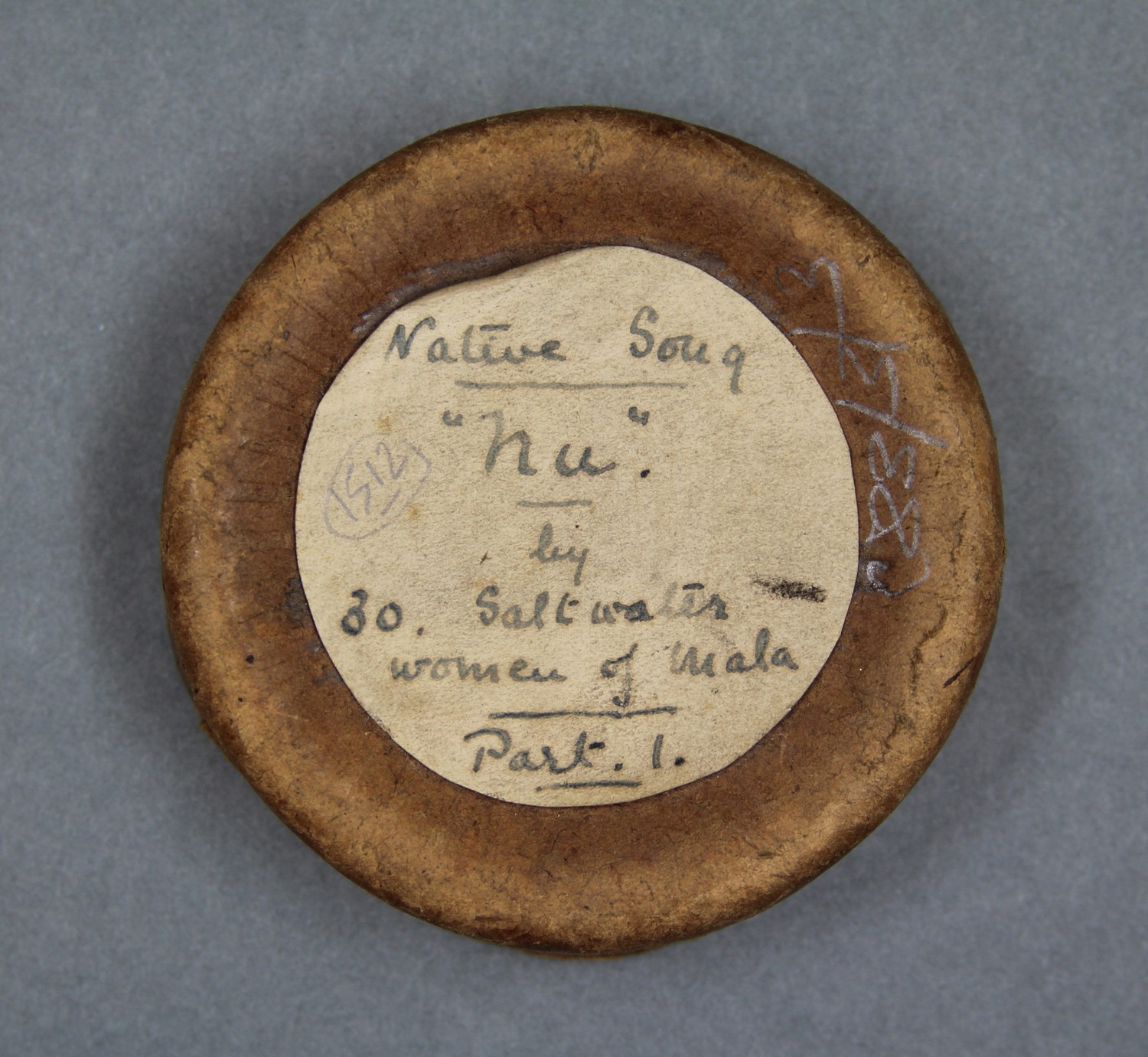    | |||||||
| C83/1513 | Native Song "Nu", by 30 Saltwater women of Mala. Part 2 | Unidentified (chorus, female) | British Solomon Islands Protectorate | December 1904 – January 1915 | Female vocal group, unaccompanied. | From Langalanga Lagoon, Malaita, Solomon Islands | Wala | Field recordings | Edge-Partington, Thomas William, 1883–1920 | 2'35" | Thomas Edge-Partington, 1909-1914 | Brown wax cylinder | C83 Thomas Edge-Partington 1909-1914 British Solomon Islands Protectorate Cylinder Collection | British Library |       | |||||||
| C83/1514 | Nu. Gala (2) | Unidentified (chorus) | British Solomon Islands Protectorate | December 1904 – January 1915 | Vocal group, unaccompanied. | From Langalanga Lagoon, Malaita, Solomon Islands | Reasonable quality recording. | Wala | Field recordings | Edge-Partington, Thomas William, 1883–1920 | 2'35" | Thomas Edge-Partington, 1909-1914 | Brown wax cylinder | C83 Thomas Edge-Partington 1909-1914 British Solomon Islands Protectorate Cylinder Collection | British Library |   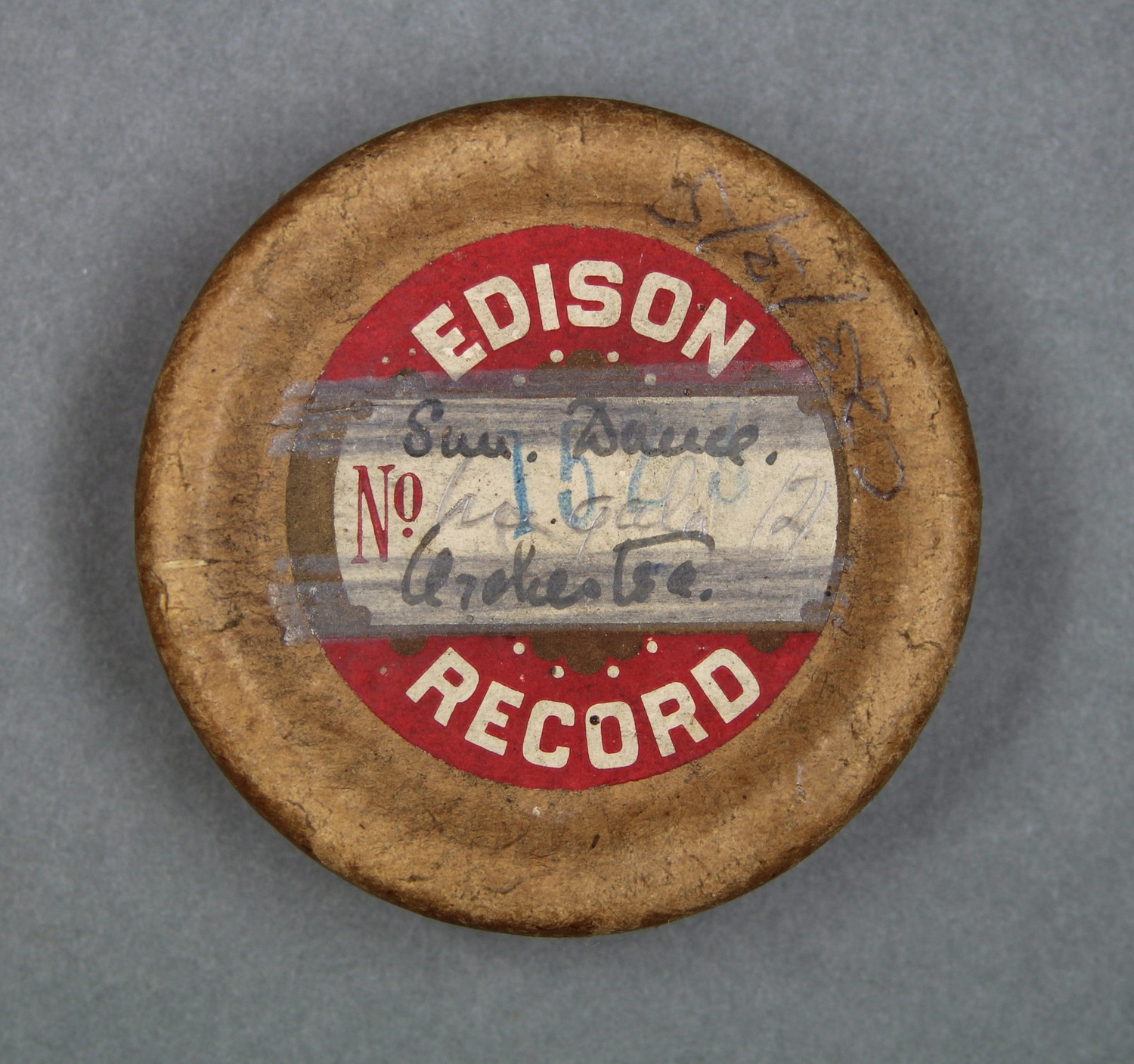    | ||||||
| C83/1515 | Native Song "Upalau". Bugainville by Pilot, Kurura, + Kaga | Pilot (singer, male); Kurura (singer, male); Kaga (singer, male) | British Solomon Islands Protectorate | December 1904 – January 1915 | 1. Announcement: "Upalau". 2. Male vocal trio, unaccompanied. | From Alu / Shortland Island, Solomon Islands | Reasonable quality recording. | Field recordings | Edge-Partington, Thomas William, 1883–1920 | 2'33" | Thomas Edge-Partington, 1909-1914 | Brown wax cylinder | C83 Thomas Edge-Partington 1909-1914 British Solomon Islands Protectorate Cylinder Collection | British Library |       | |||||||
| C83/1516 | Native Song. "Kombena" by Pilot, Kurura, + Kaga. | Pilot (singer, male); Kurura (singer, male); Kaga (singer, male) | British Solomon Islands Protectorate | December 1904 – January 1915 | 1. Announcement: "Kom, kombena by Pilot, Kurura and Kaga". 2. Male vocal trio, unaccompanied. | From Alu / Shortland Island, Solomon Islands | Good quality recording. | Field recordings | Edge-Partington, Thomas William, 1883–1920 | 2'24" | Thomas Edge-Partington, 1909-1914 | Brown wax cylinder | C83 Thomas Edge-Partington 1909-1914 British Solomon Islands Protectorate Cylinder Collection | British Library |   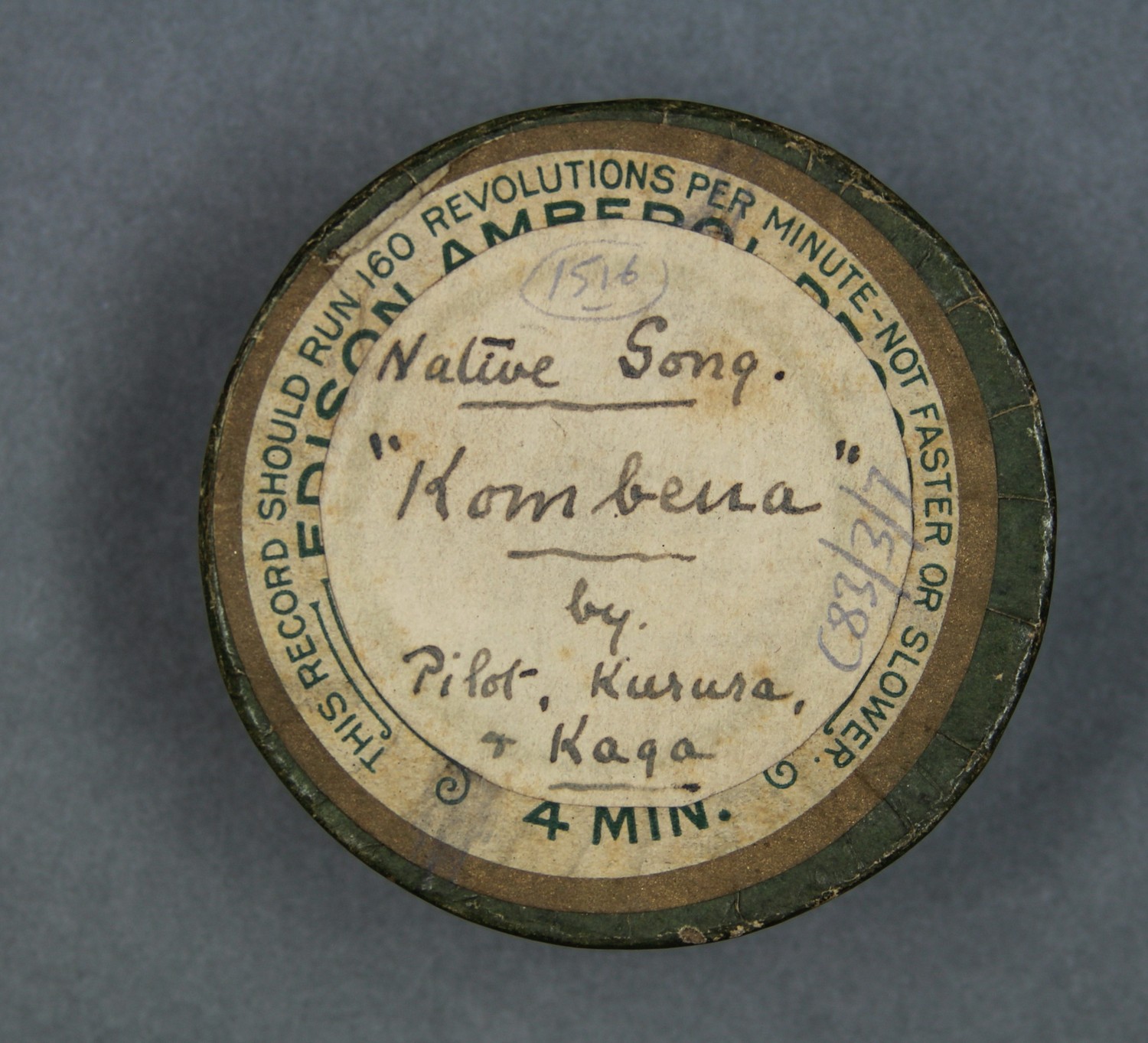    | |||||||
| C83/1517 | Native Song "Woman taligiri Mono" Bugainville. | Unidentified (chorus) | British Solomon Islands Protectorate | December 1904 – January 1915 | 1. Vocal group, unaccompanied. | From Mono, Solomon Islands | Field recordings | Edge-Partington, Thomas William, 1883–1920 | 2'06" | Thomas Edge-Partington, 1909-1914 | Brown wax cylinder | C83 Thomas Edge-Partington 1909-1914 British Solomon Islands Protectorate Cylinder Collection | British Library |   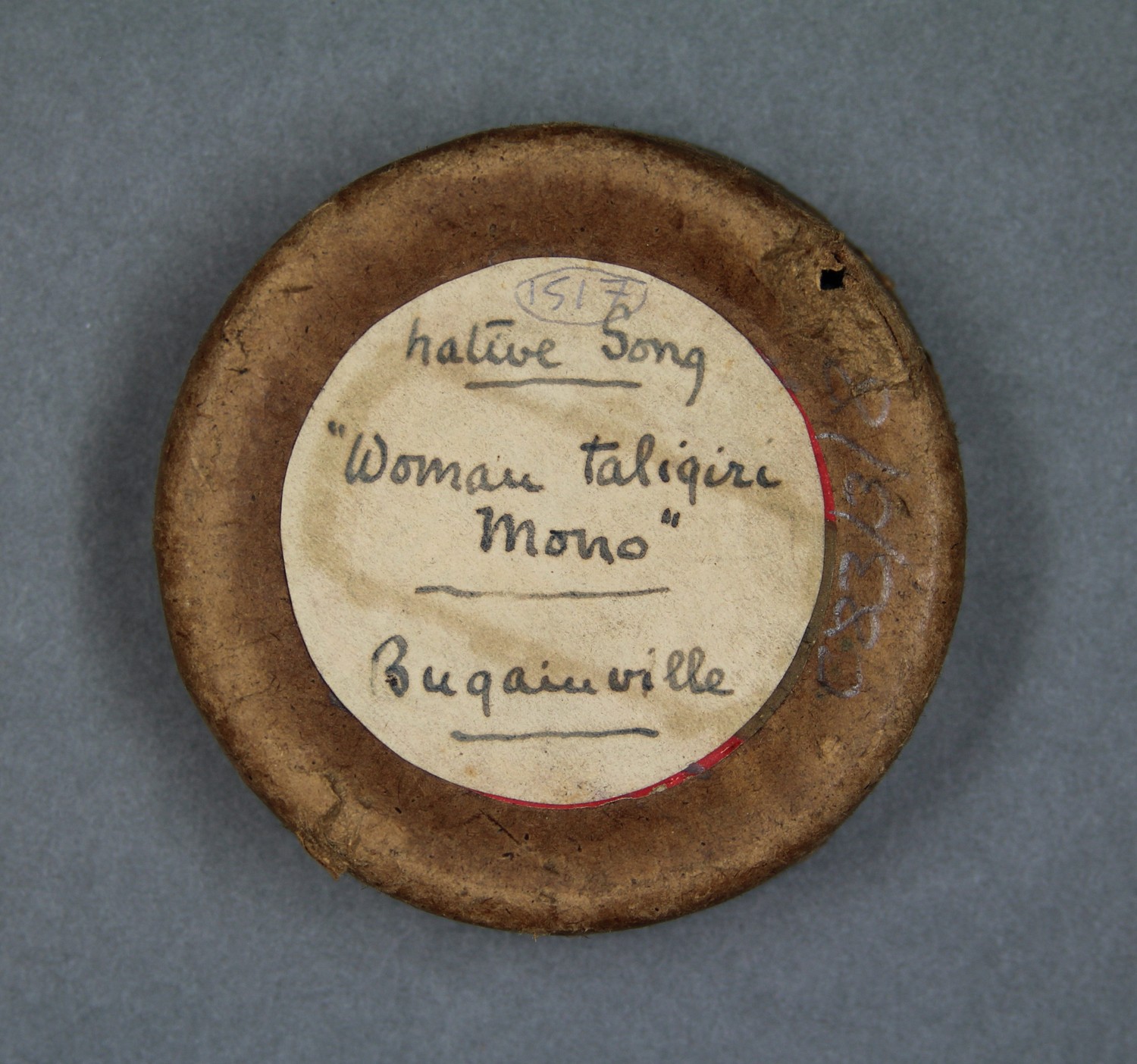    | ||||||||
| C83/1518 | Native Song Chant Ulsagi, by Peloko, Usopo, Kamanda | Peloko (singer, male); Usopo (singer, male); Kamanda (singer, male) | British Solomon Islands Protectorate | December 1904 – January 1915 | 1. Announcement: "Peloko, Usopo [indecipherable]". 2. Male vocal trio, unaccompanied. NOTE: Chant Uisai originally transcribed from lid as Chaut Ulsagi but corrected by cataloguers to Chant Uisai ["Uisai" is the name for both the north eastern part of Buin district and the dialect of Buin language spoken in that region.] | From Marovo Lagoon, New Georgia, Solomon Islands | Marovo | Field recordings | Edge-Partington, Thomas William, 1883–1920 | 2'23" | Thomas Edge-Partington, 1909-1914 | Brown wax cylinder | C83 Thomas Edge-Partington 1909-1914 British Solomon Islands Protectorate Cylinder Collection | British Library |       | |||||||
| C83/1519 | Native Song Chant Ulsagi, by Peloko, Usopo, Kamanda | Peloko (singer, male); Usopo (singer, male); Kamanda (singer, male) | British Solomon Islands Protectorate | December 1904 – January 1915 | 1. Announcement: "Kera kera [indecipherable.] Ulsagi; Peloko, Usopo, Kumanda". 2. Vocal trio, unaccompanied. | From Marovo Lagoon, New Georgia, Solomon Islands | Marovo | Field recordings | Edge-Partington, Thomas William, 1883–1920 | 2'23" | Thomas Edge-Partington, 1909-1914 | Brown wax cylinder | C83 Thomas Edge-Partington 1909-1914 British Solomon Islands Protectorate Cylinder Collection | British Library |       | |||||||
| C83/1520 | Talking Banietta Dialect by Kamanda + Angabili | Kamanda (speaker, male); Angabili (speaker, male) | British Solomon Islands Protectorate | December 1904 – January 1915 | 1. Male vocal dialogue. | From Rendova, New Georgia, Solomon Islands | The language is possibly Touo | Field recordings | Edge-Partington, Thomas William, 1883–1920 | 2'34" | Thomas Edge-Partington, 1909-1914 | Brown wax cylinder | C83 Thomas Edge-Partington 1909-1914 British Solomon Islands Protectorate Cylinder Collection | British Library |   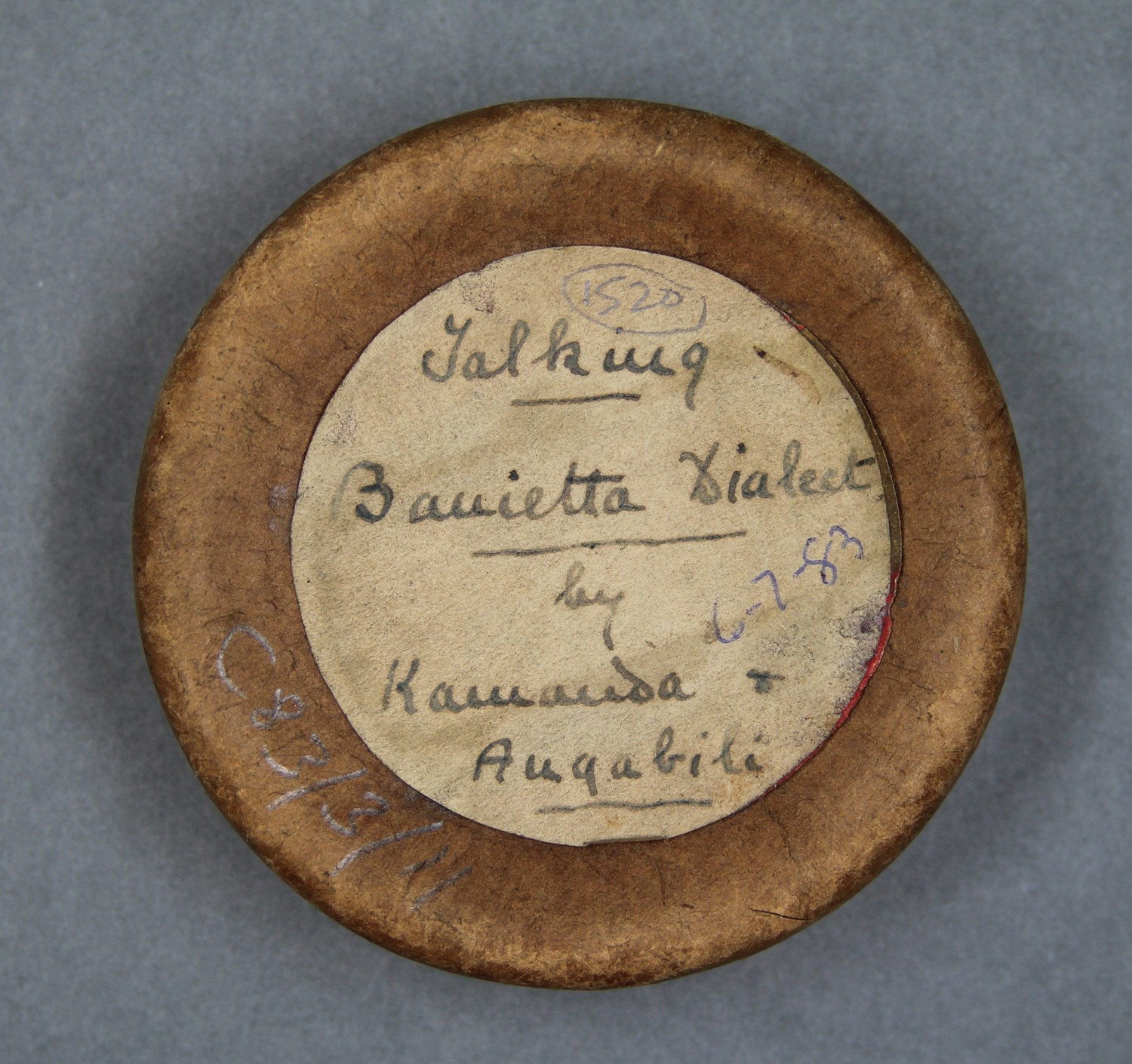 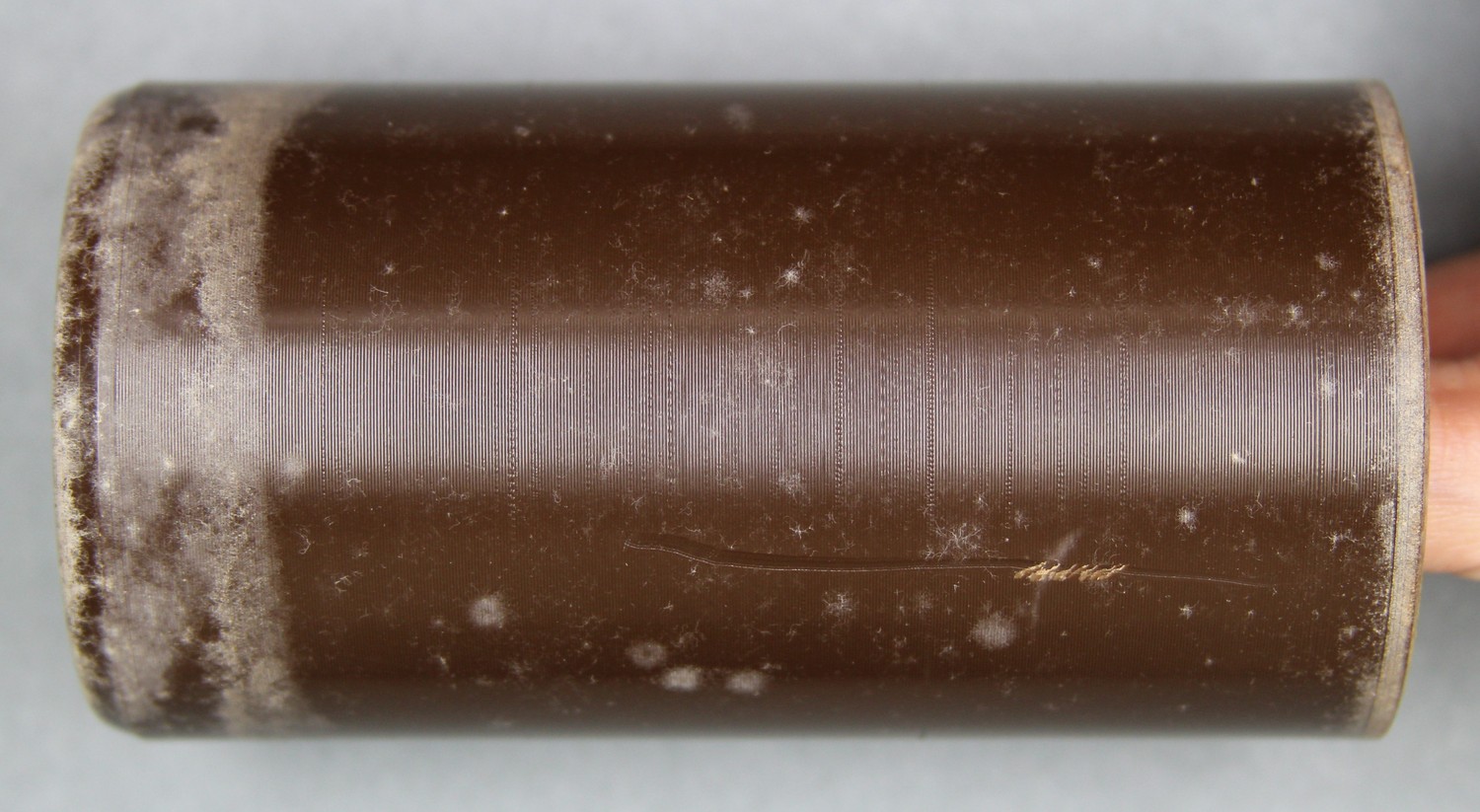 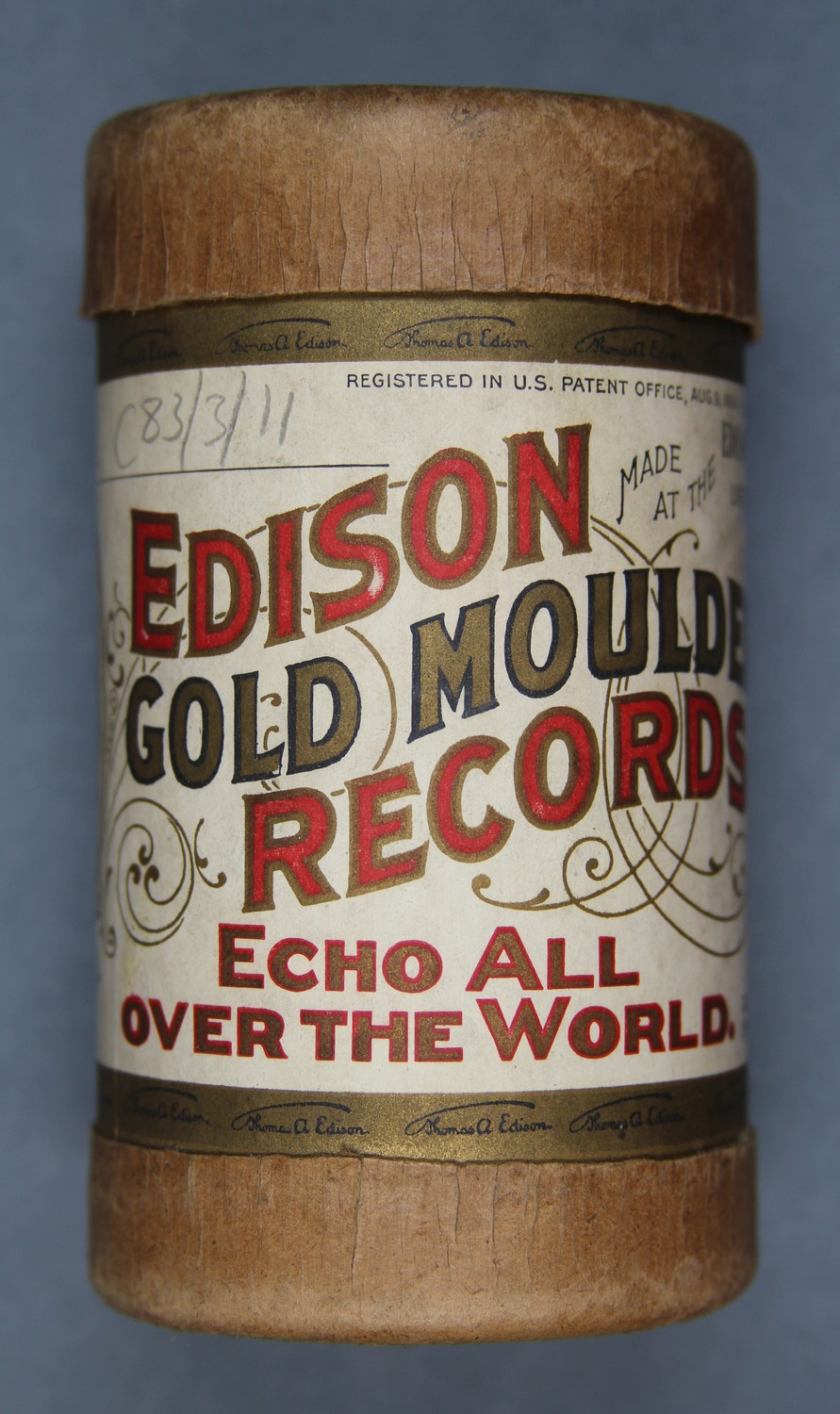  | |||||||
| C83/1498 | Iakokae-Iako / Miamielu | Miriam of Malavau (singer, female) | Port Vila, Efate, New Hebrides Condominium | January 1924 – June 1924 | 1. The song to warn Iakokae-Iako. Solo female vocal, unaccompanied. 2. Miamielu: solo female vocal, unaccompanied. | From Malavau (Efate), Vanuatu | Reasonable recording | Raff, Eric Maitland Kirk (1892-1927) | 3'56" | Eric Raff, 1924 | Black wax cylinder | Eric Raff 1924 Efate, New Hebrides Cylinder Collection | British Library |  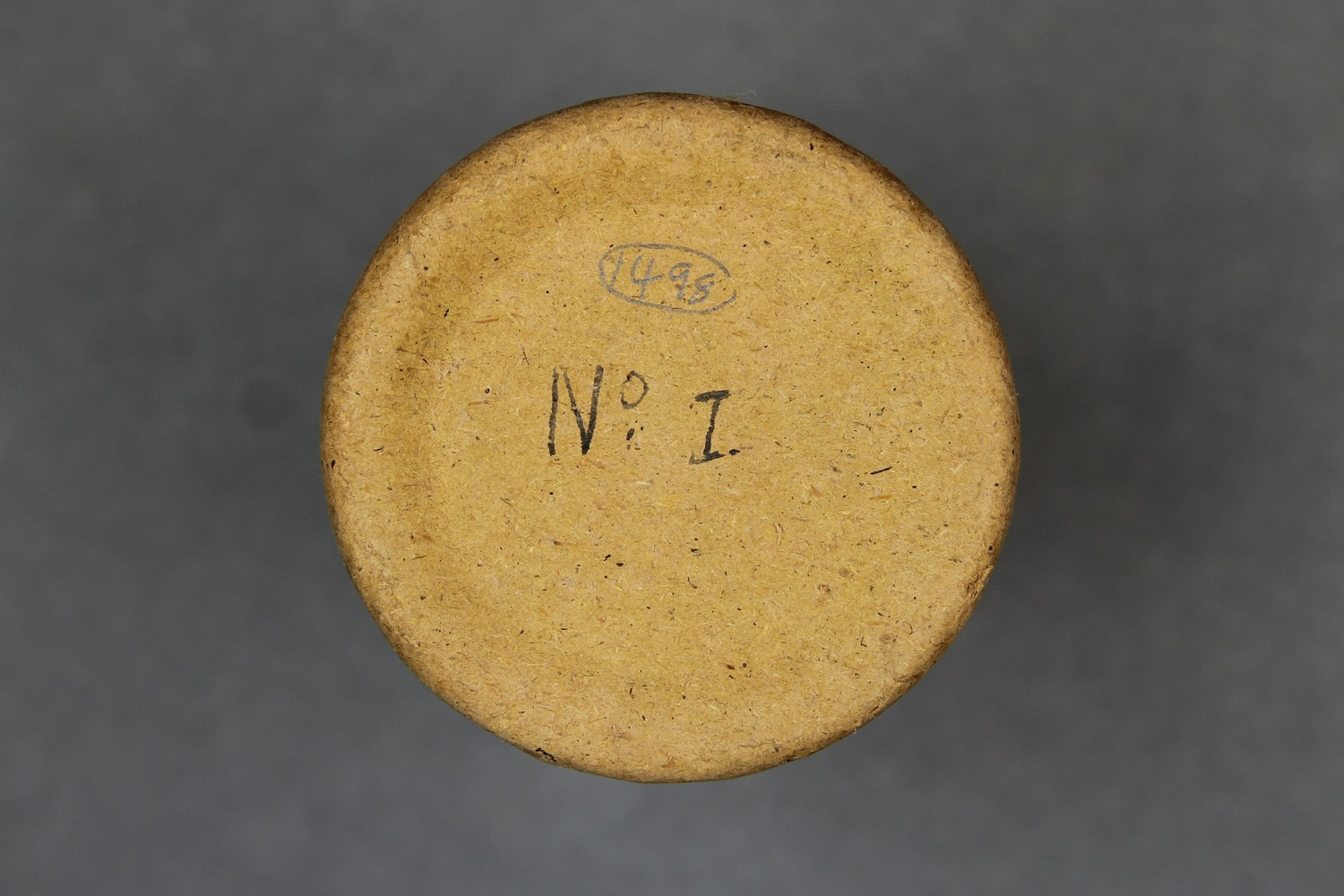 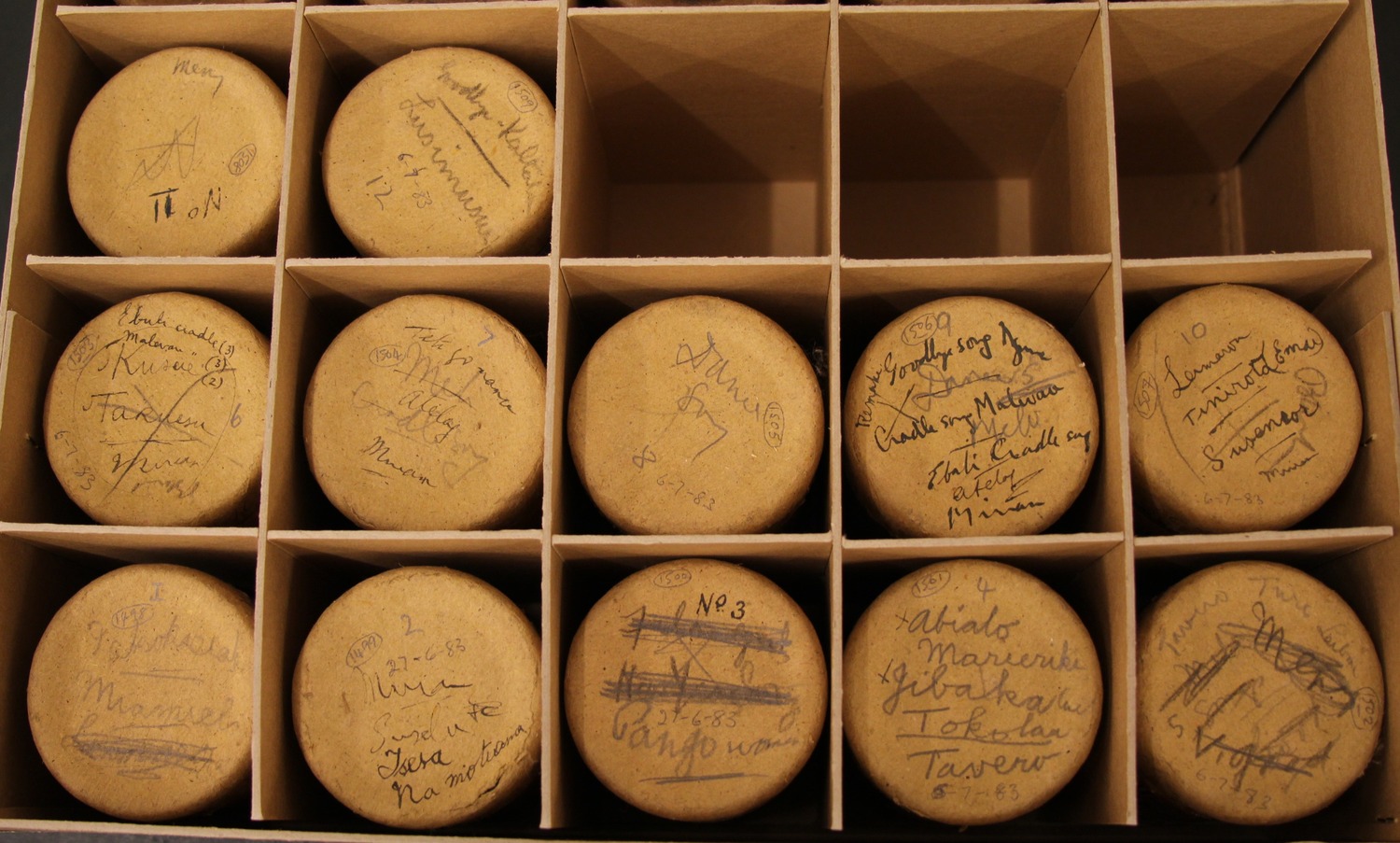 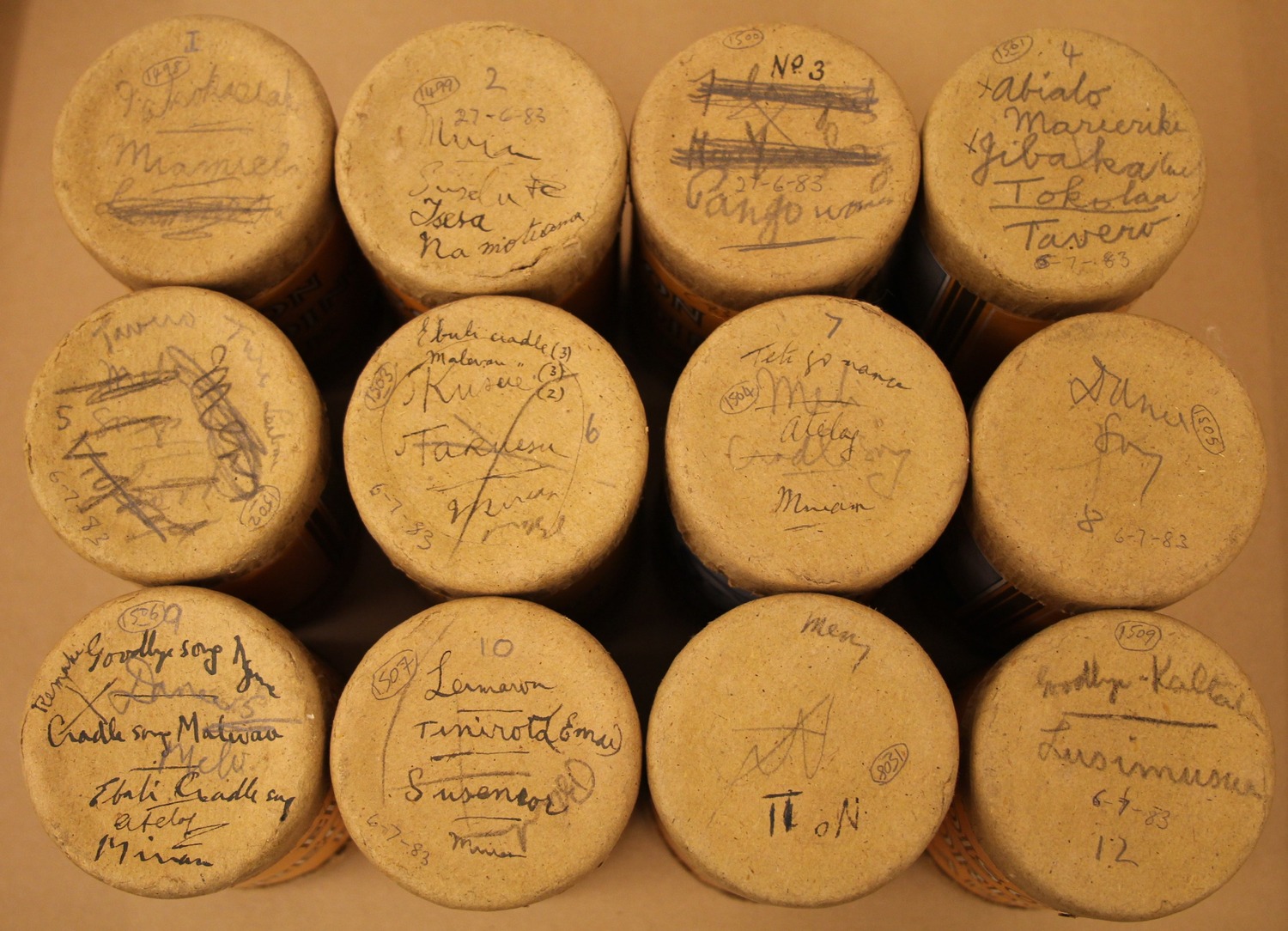 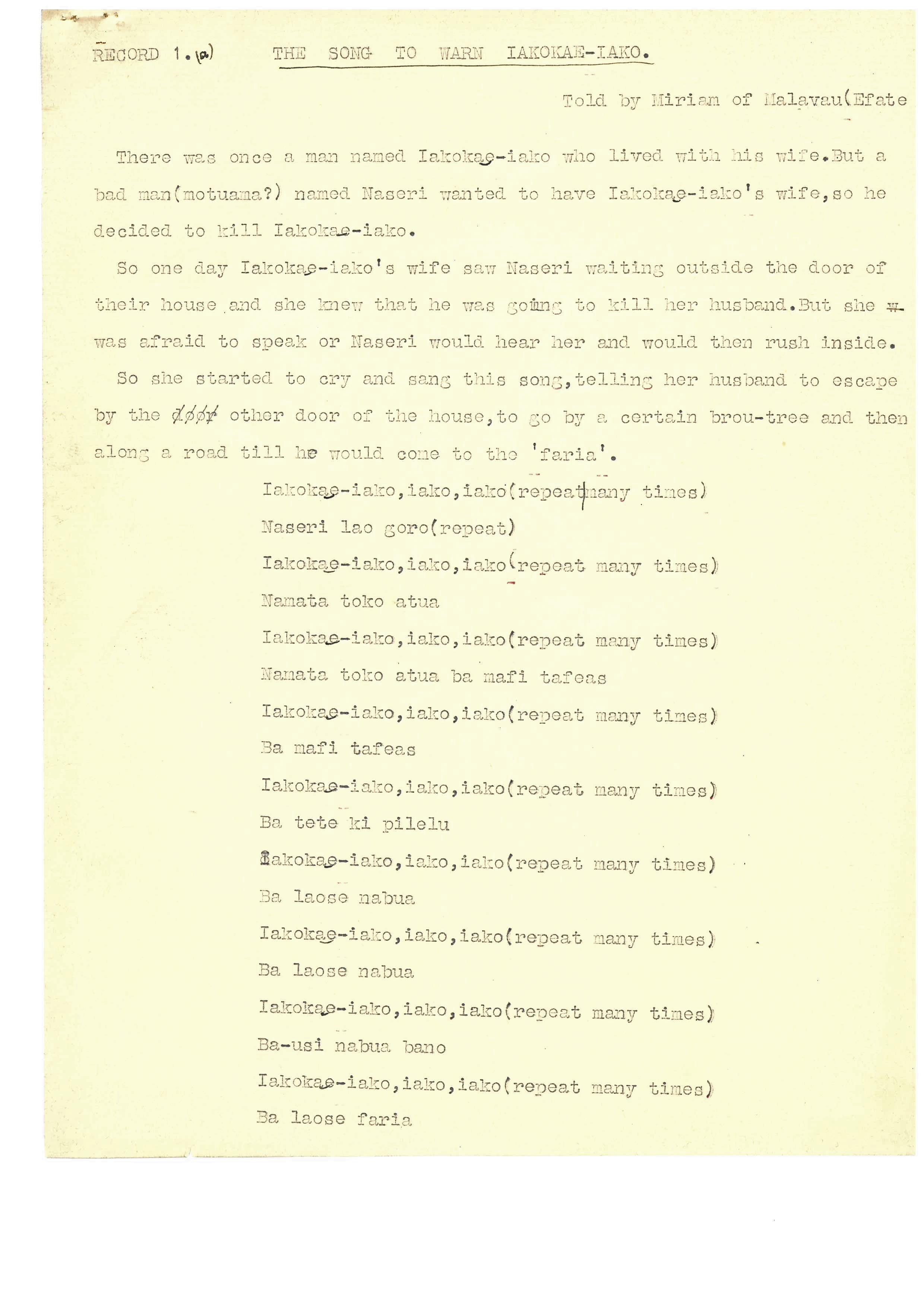 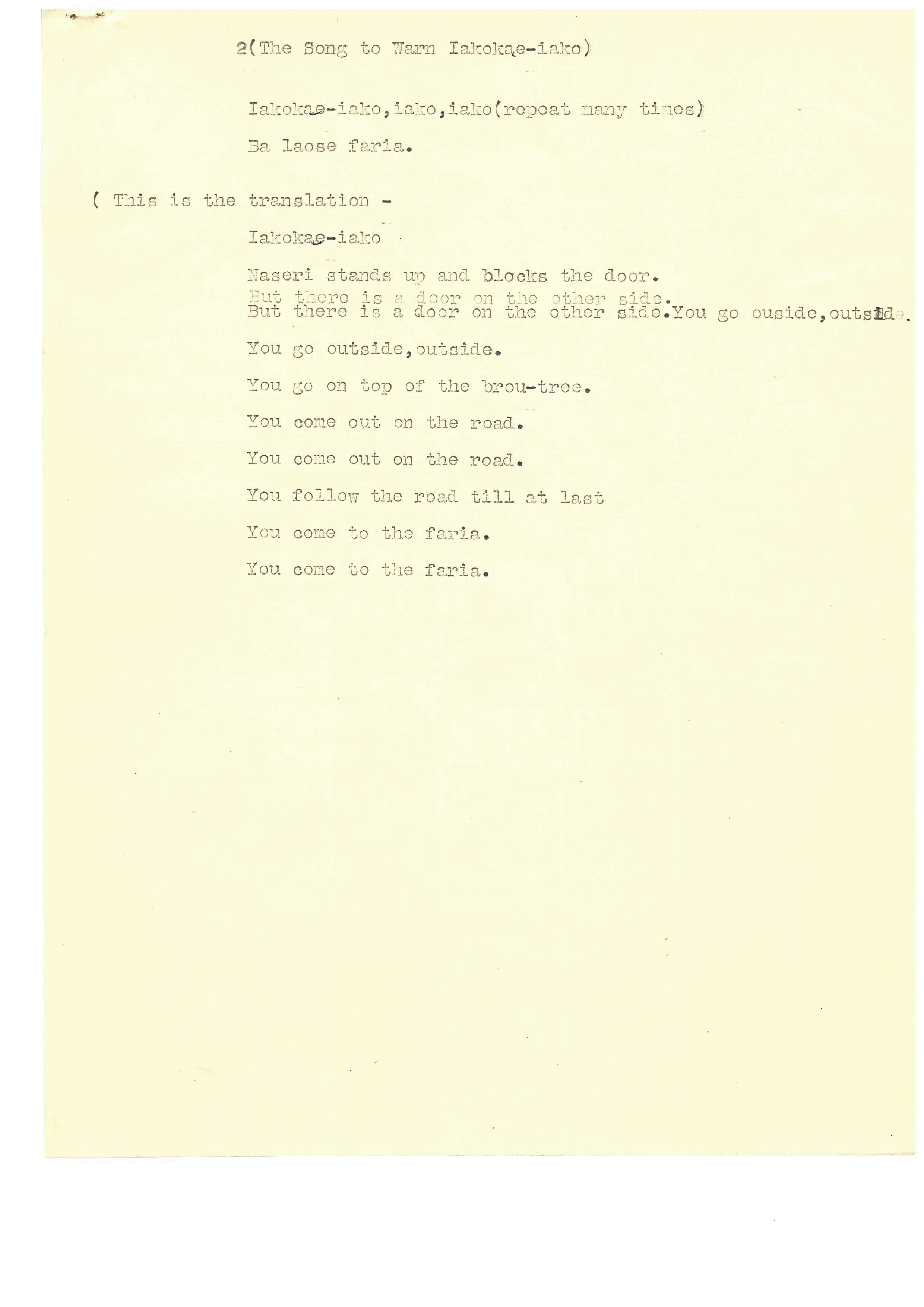  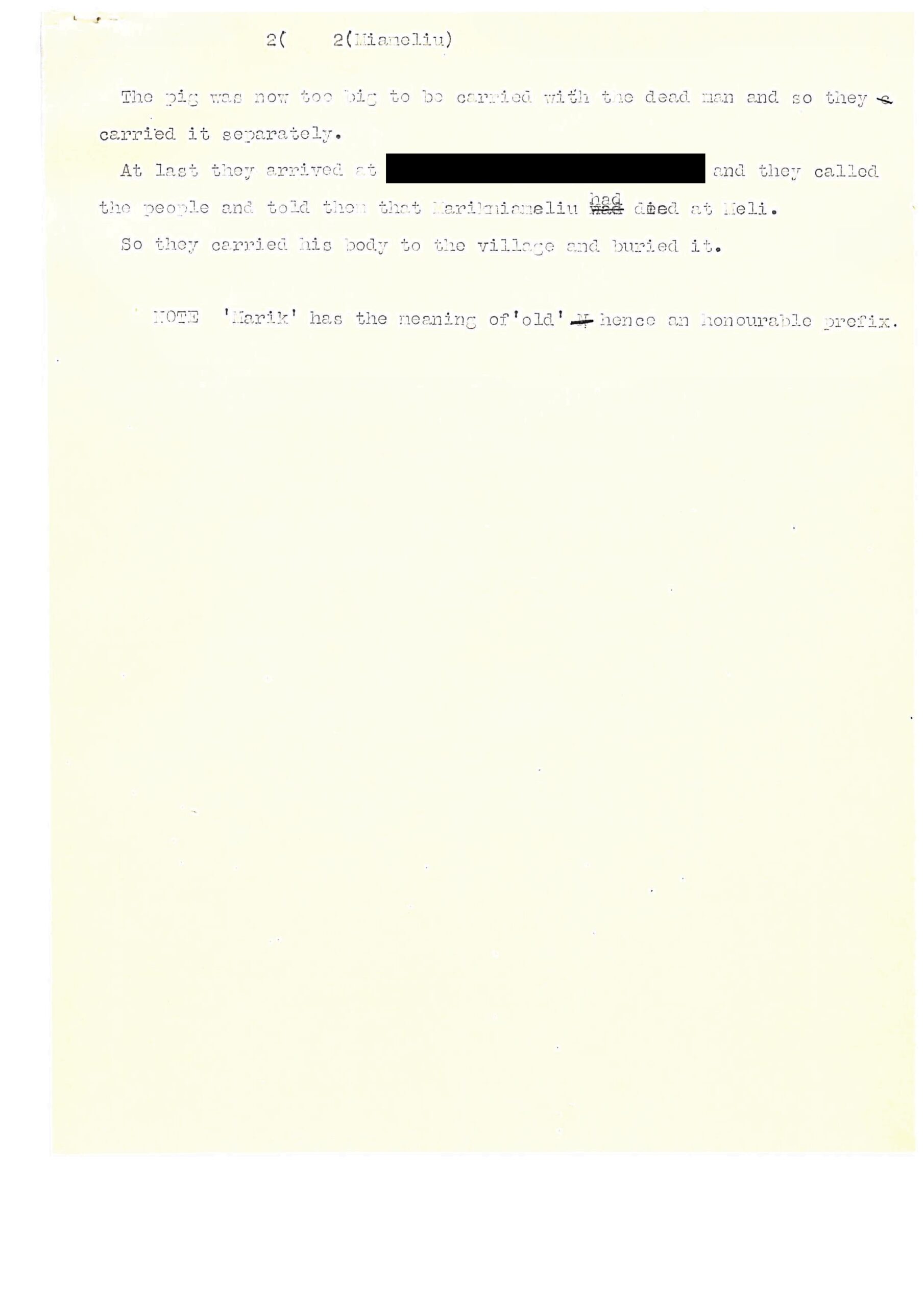 | Related notes, transcriptions and translations held by the British Library Sound Archive | |||||||
| C83/1499 | The Motuama and the Suseli / Mapuli, the pigeon / The woman of Laosa | Miriam of Malavau (singer, female) | Port Vila, Efate, New Hebrides Condominium | January 1924 – June 1924 | 1. The Motuama and the Suseli - solo female vocal, unaccompanied. 2. Mapuli, the pigeon - solo female vocal, unaccompanied. 3. The woman of Laosa - solo female vocal, unaccompanied. | From Malavau (Efate), Vanuatu | Raff, Eric Maitland Kirk (1892-1927) | 5'15" | Eric Raff, 1924 | Black wax cylinder | Eric Raff 1924 Efate, New Hebrides Cylinder Collection | British Library | 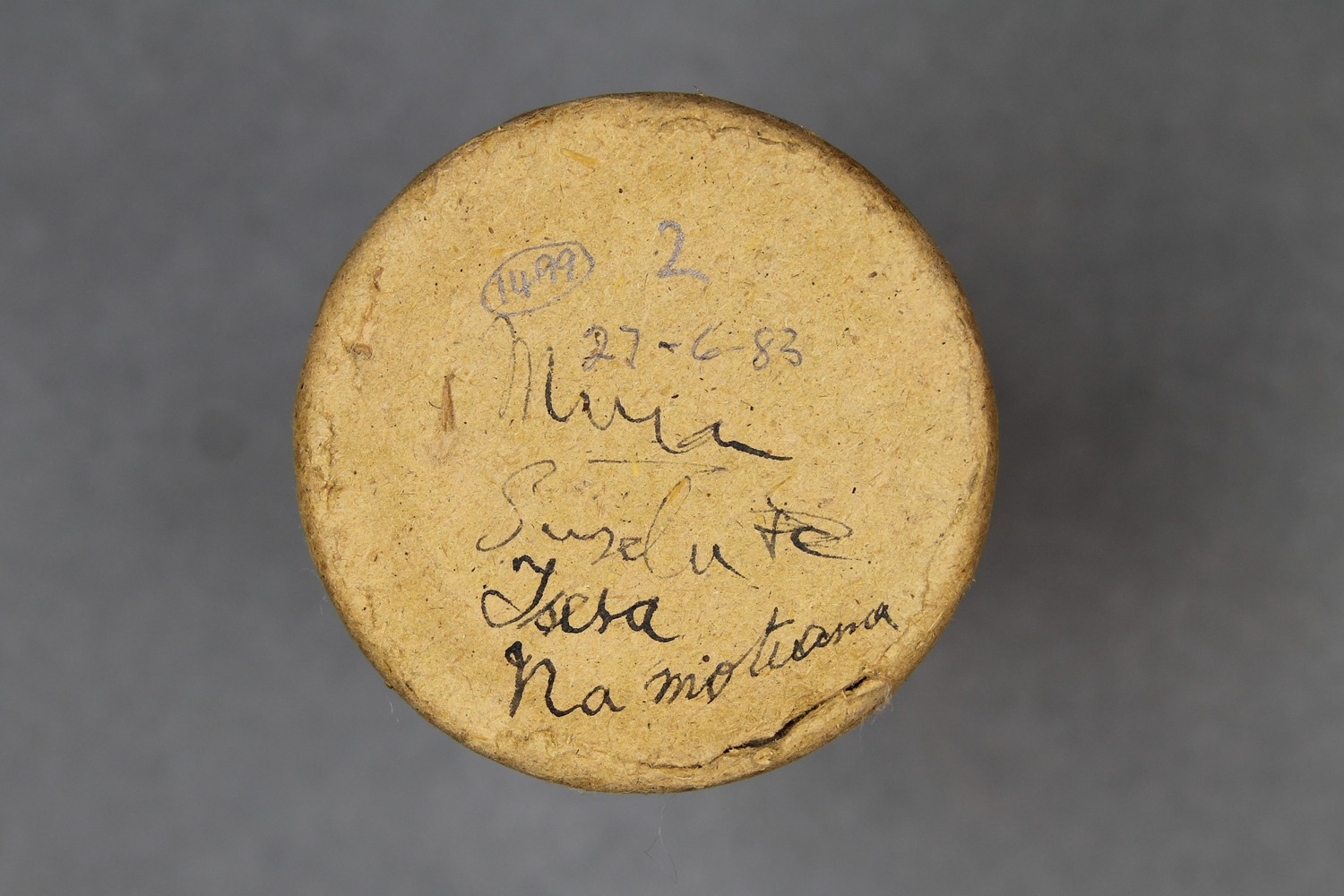 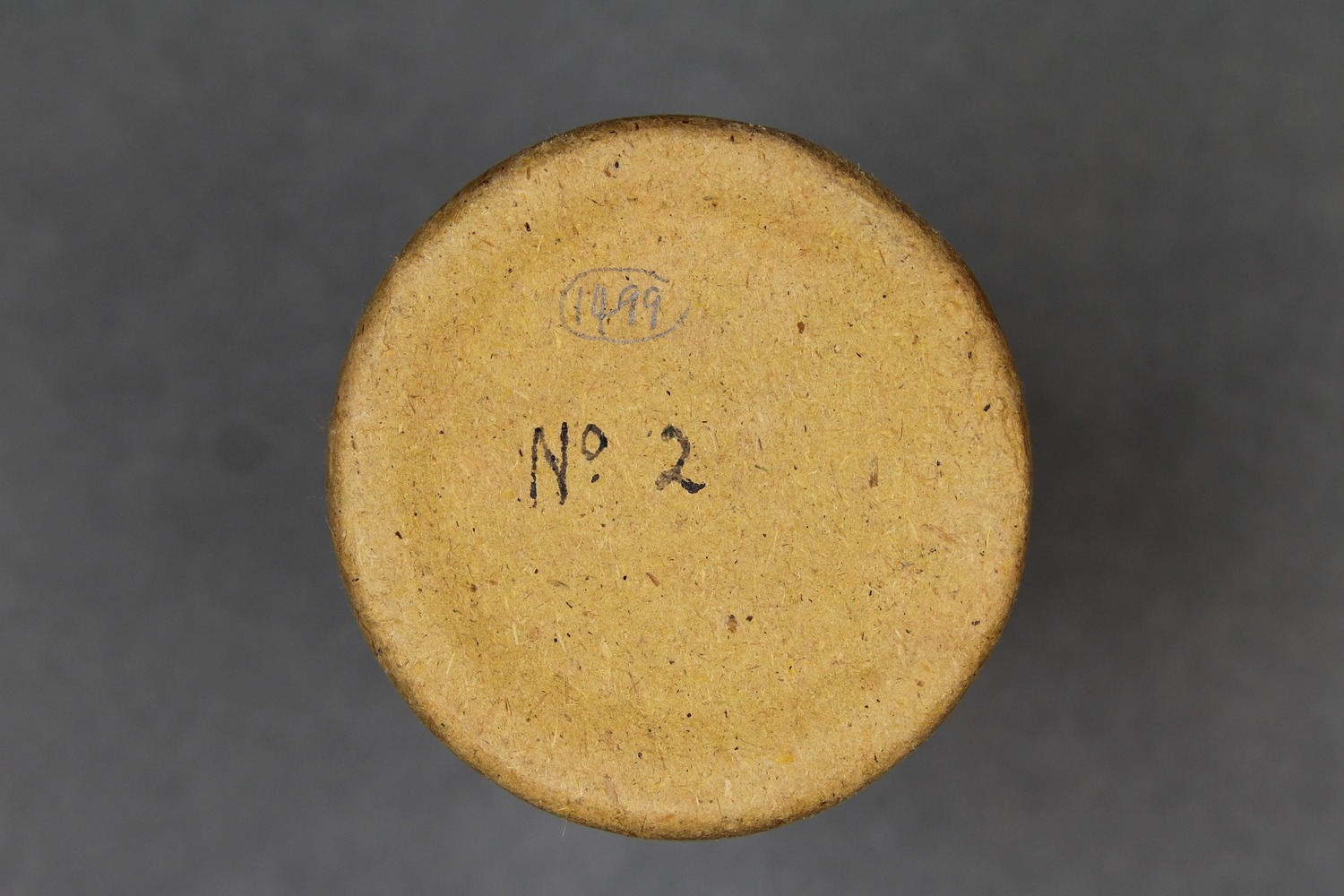   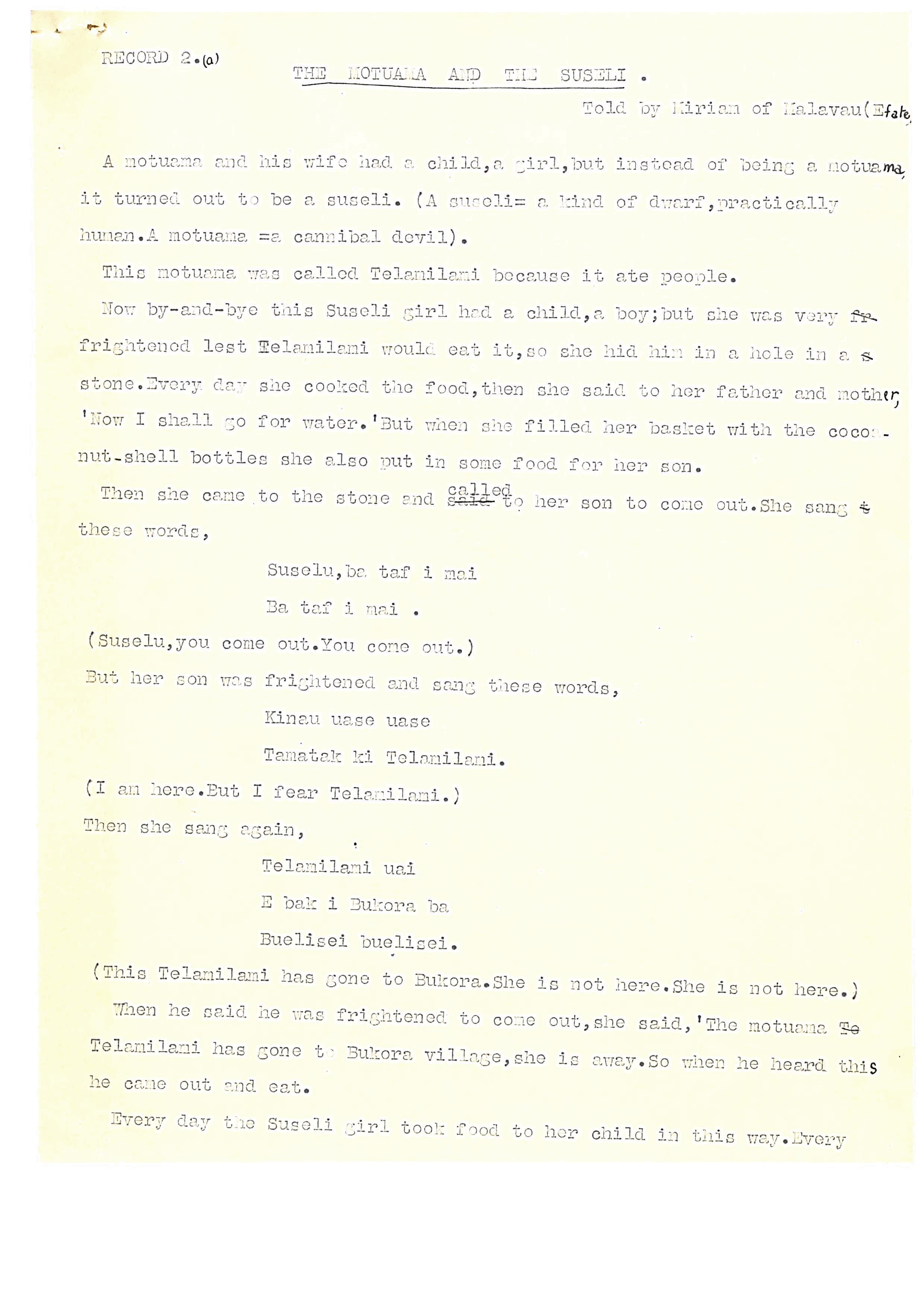 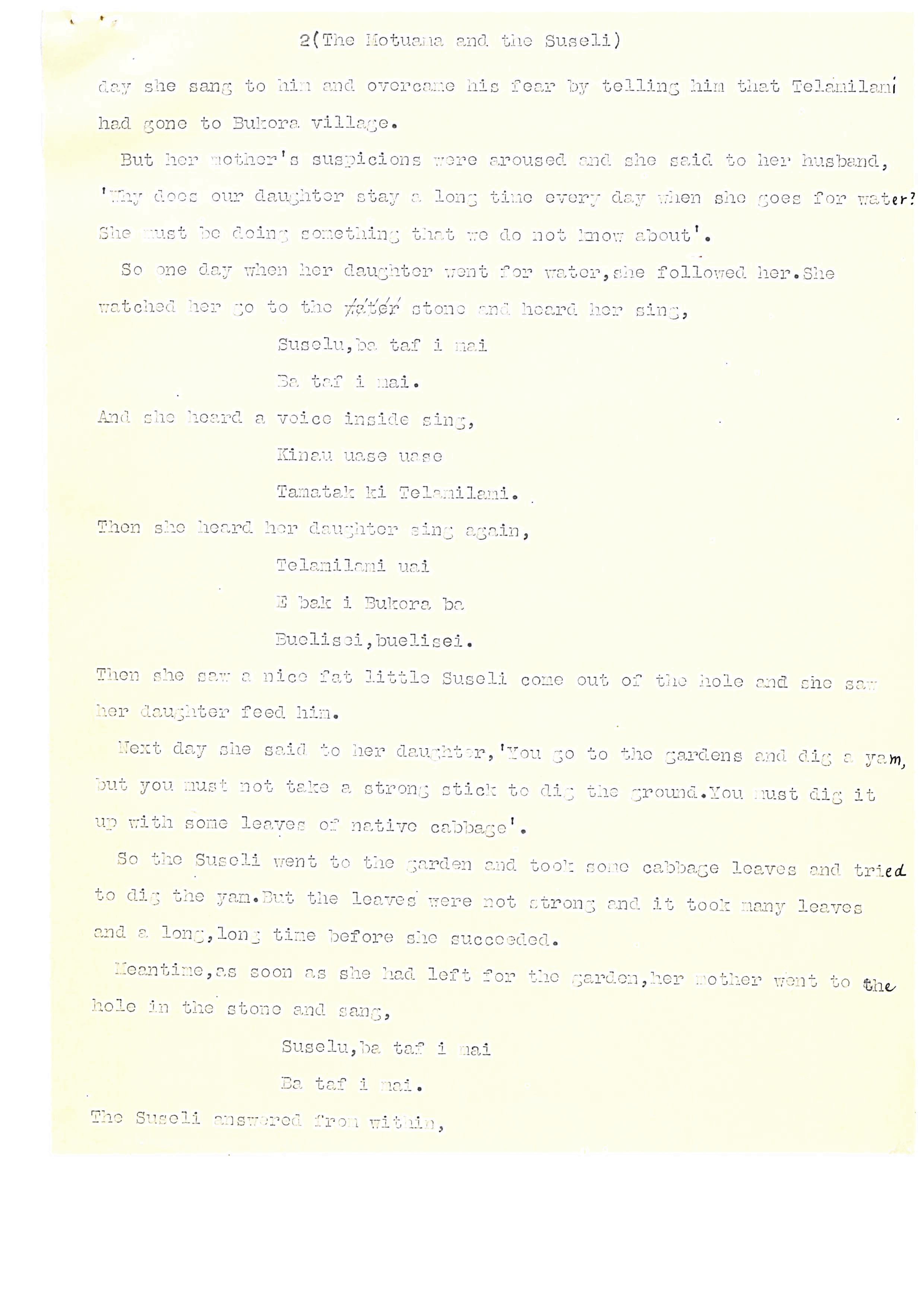 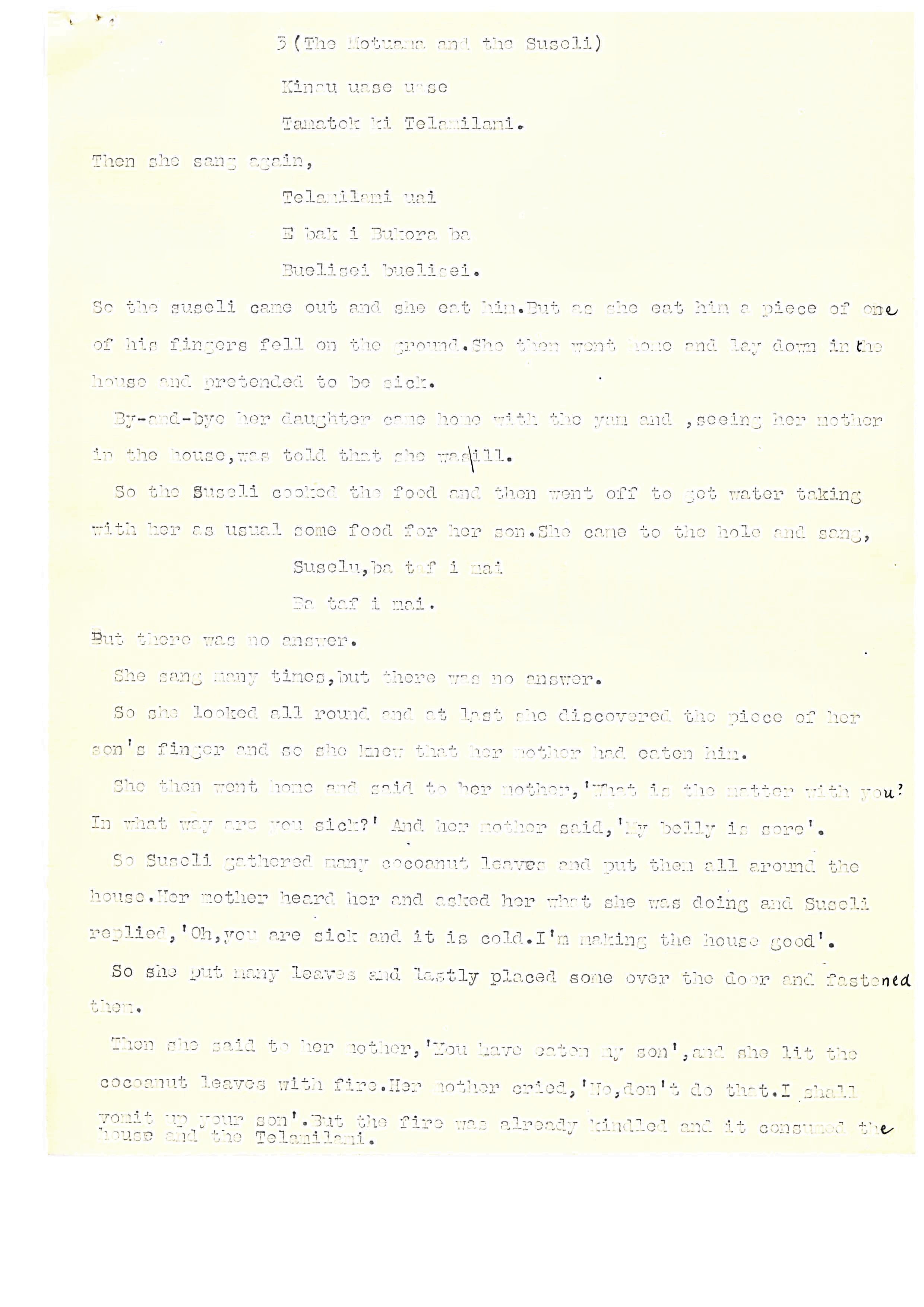 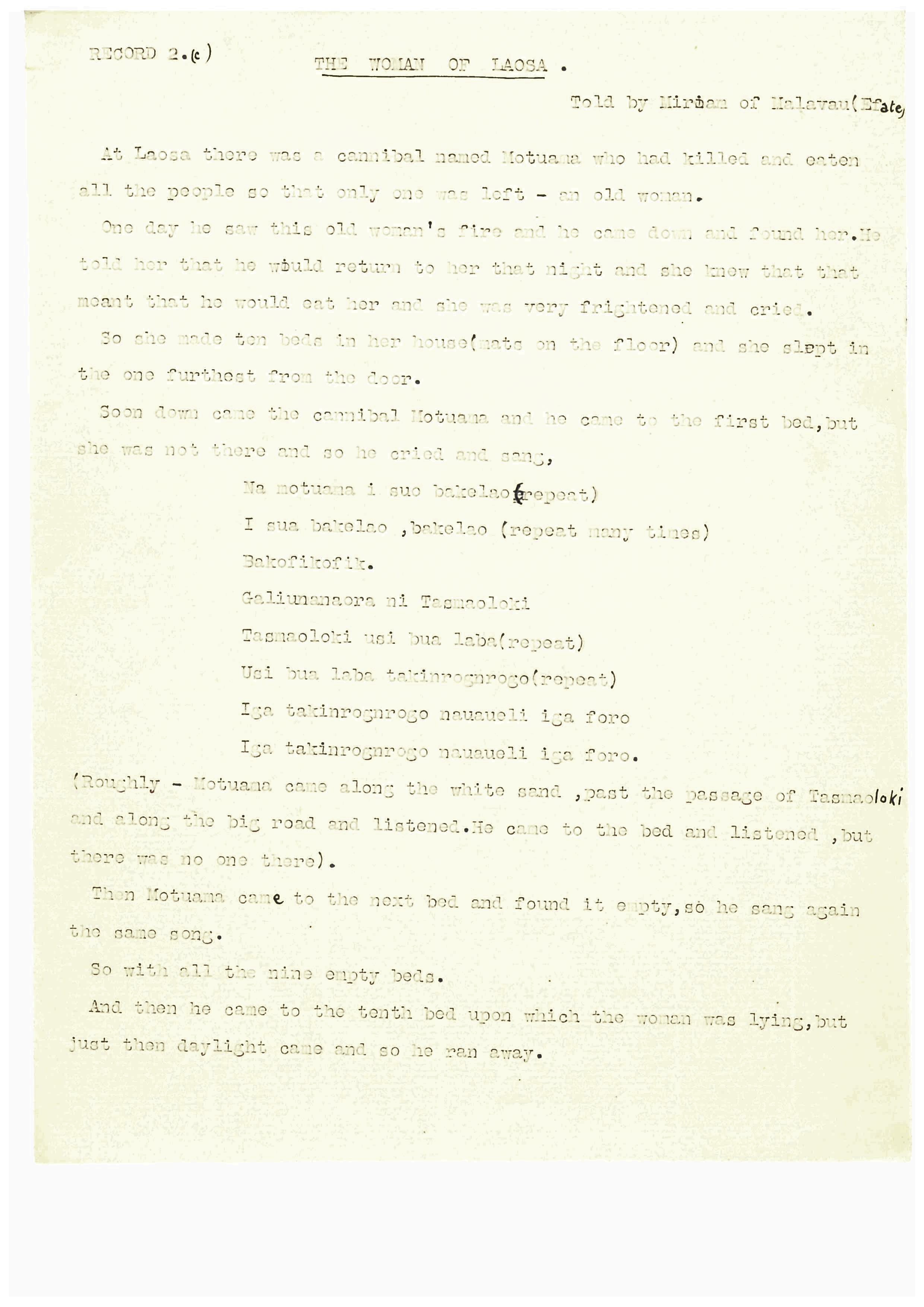   | Related notes, transcriptions and translations held by the British Library Sound Archive | ||||||||
| C83/1500 | Pango Women: [unidentified song] / Supe uao uao riki / Tariuiauia / Canoe song | Unidentified singers (female) | Port Vila, Efate, New Hebrides Condominium | January 1924 – June 1924 | 1. Unknown (female group vocal). 2. Supe uao uao riki (female group vocal). 3. Tariuiauia (female group vocal). 4. Canoe song (female group vocal). | Singers from Vanuatu; Pango, Efate | Reasonable quality recording | Raff, Eric Maitland Kirk (1892-1927) | 4'47" | Eric Raff, 1924 | Black wax cylinder | Eric Raff 1924 Efate, New Hebrides Cylinder Collection | British Library |  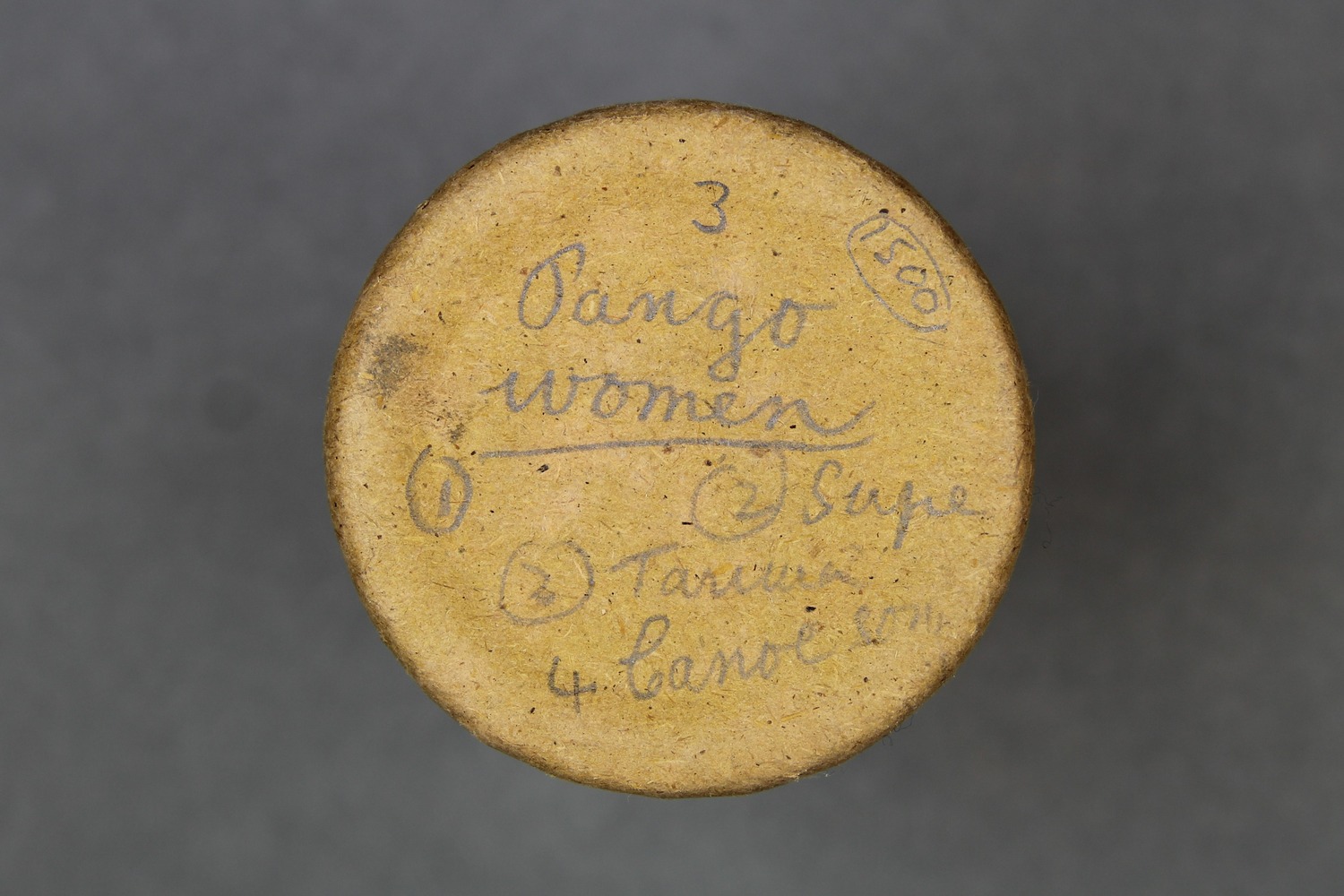    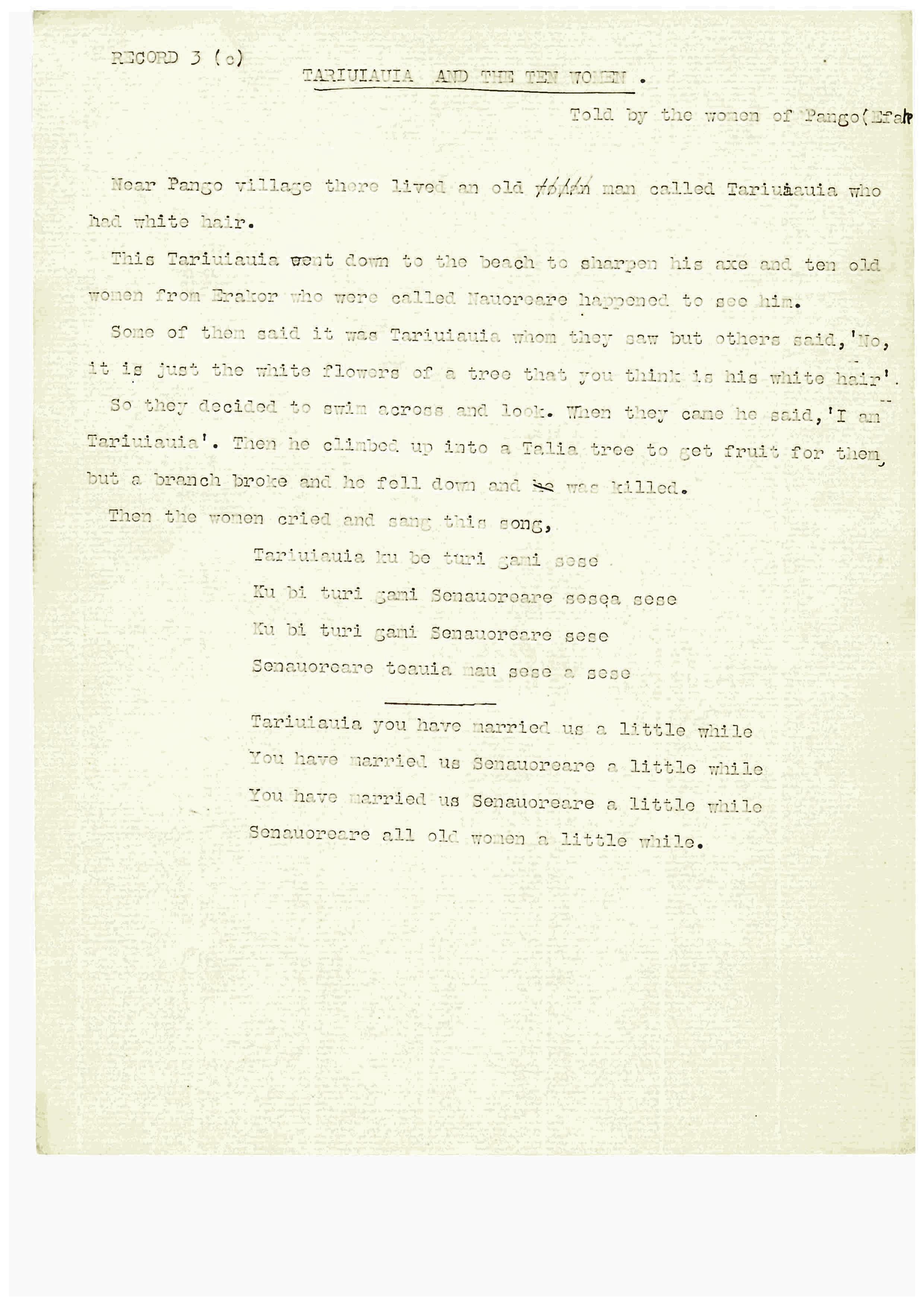 | Related notes, transcriptions and translations held by the British Library Sound Archive | |||||||
| C83/1501 | Abialo / Marieriki / Jibika Tuili / Tokolau | Tavero of Meli (singer, male) | Port Vila, Efate, New Hebrides Condominium | January 1924 – June 1924 | 1. Abialo (solo male vocal). 2. Marieriki (solo male vocal). 3. Jibika Tuili (solo male vocal). 4. Tokolau (solo male vocal). | From Meli, Vanuatu | Reasonable quality recording | Raff, Eric Maitland Kirk (1892-1927) | 5'05" | Eric Raff, 1924 | Black wax cylinder | Eric Raff 1924 Efate, New Hebrides Cylinder Collection | British Library | 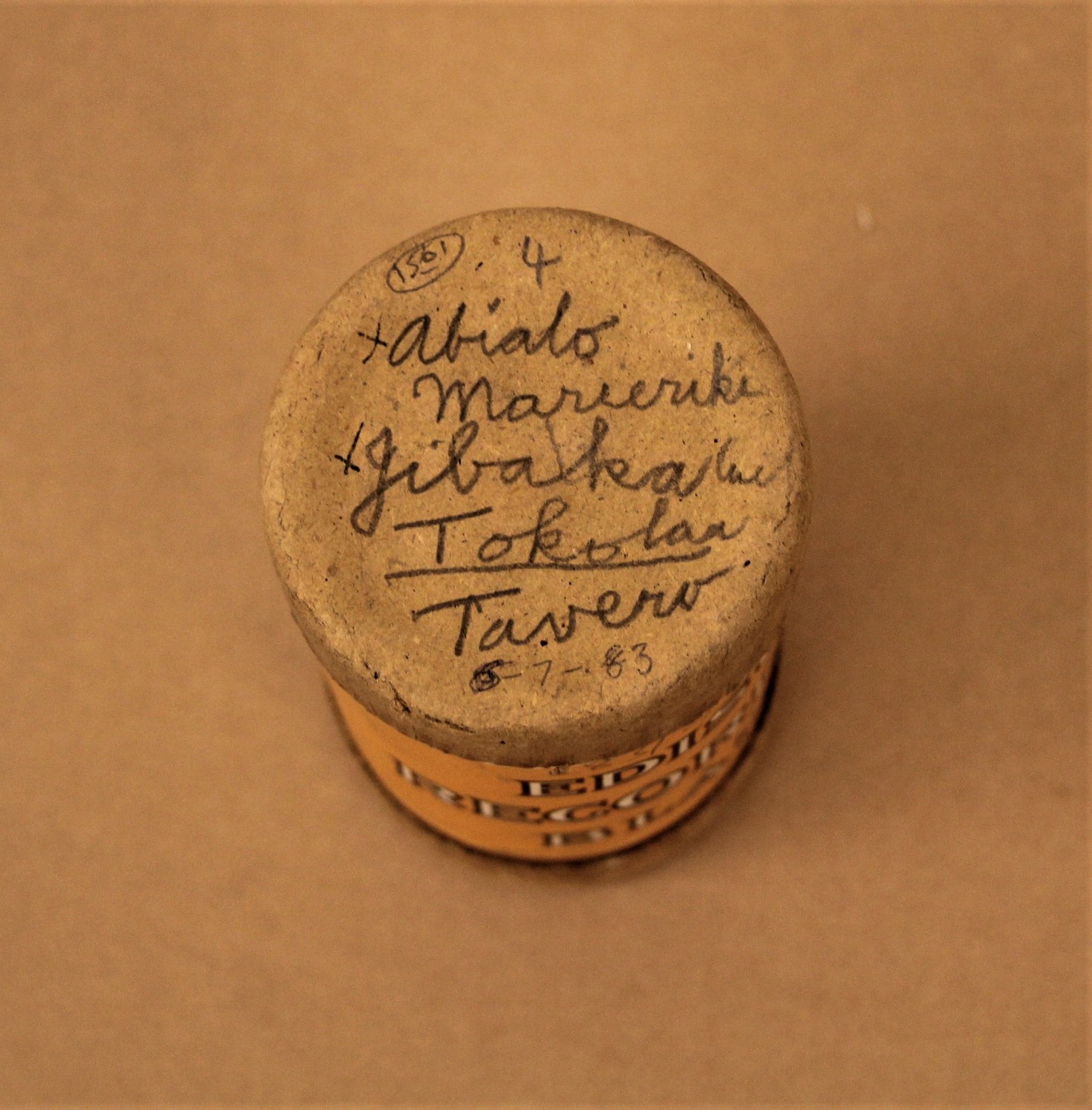   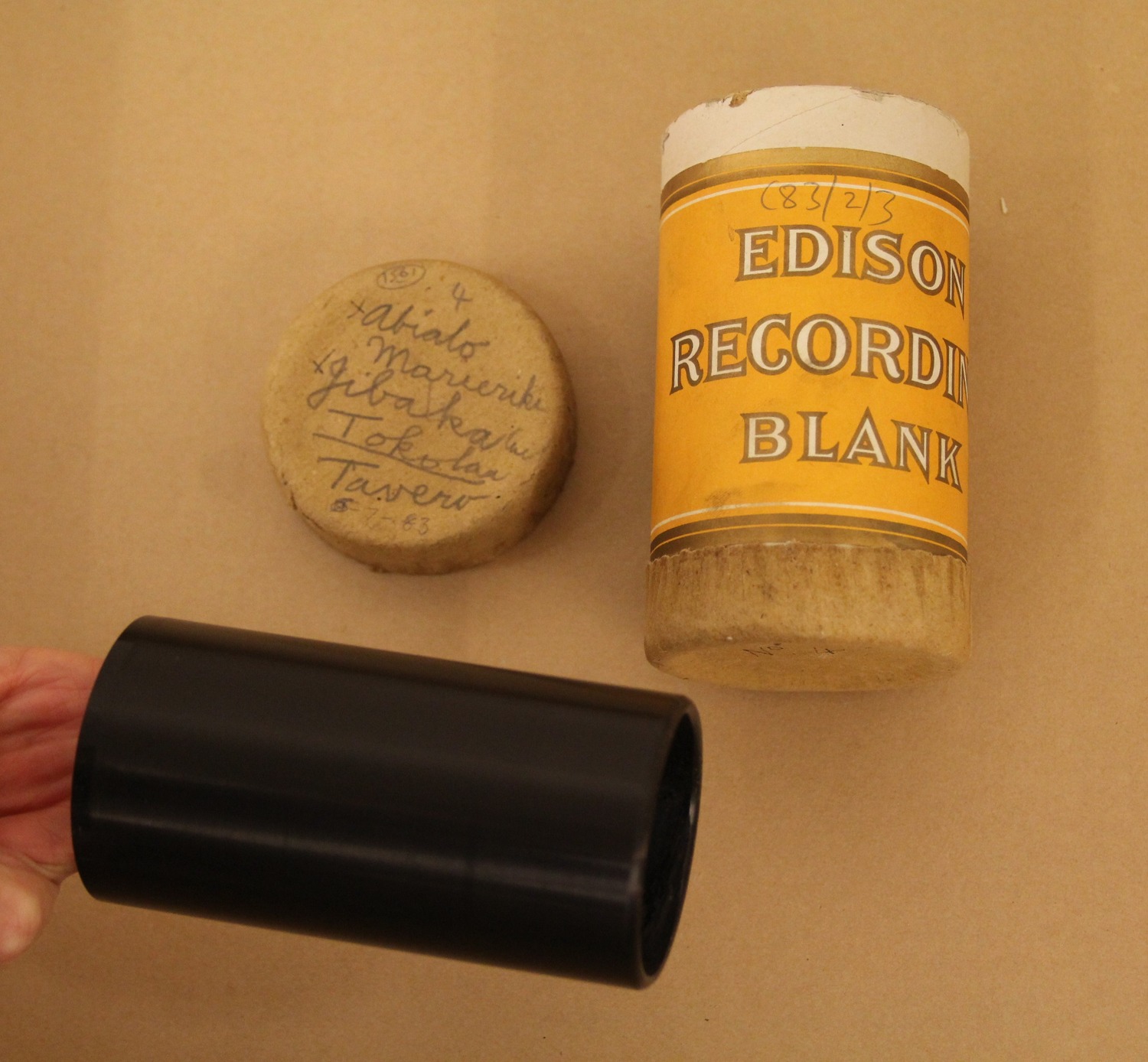   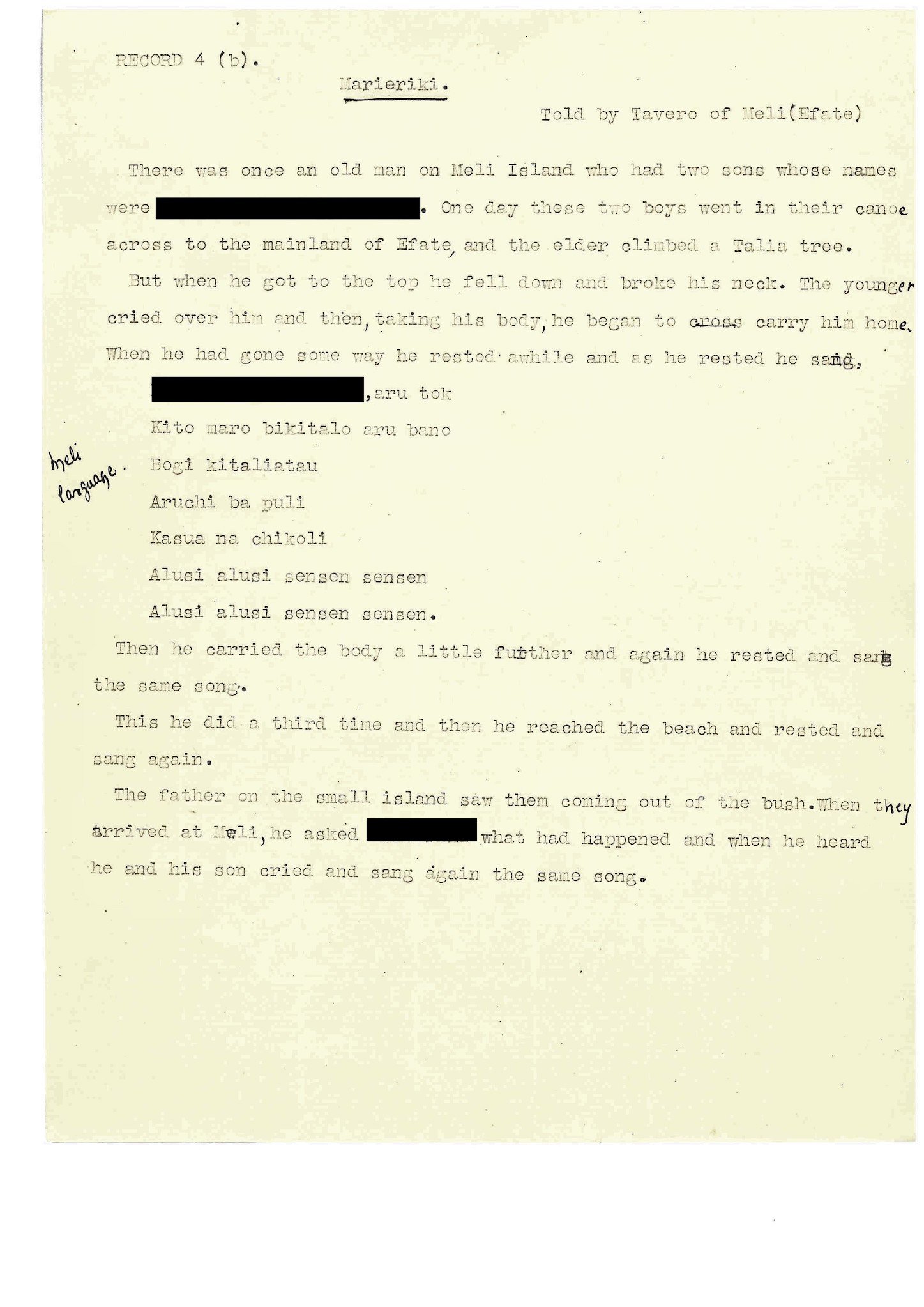 | Related notes, transcriptions and translations held by the British Library Sound Archive | |||||||
| C83/1502 | Teromairaga / New Year song / Avau Elusi | Tavero of Meli (singer, male); Leiboni of Meli (singer); Turi of Leleppa (singer) | Port Vila, Efate, New Hebrides Condominium | January 1924 – June 1924 | 1. Teromairaga (group vocal). 2. New Year song (group vocal). 3. Avau Elusi (group vocal). | Singers from Meli, Vanuatu and Leleppa, Vanuatu | Reasonable quality recording | Raff, Eric Maitland Kirk (1892-1927) | 5'15" | Eric Raff, 1924 | Black wax cylinder | Eric Raff 1924 Efate, New Hebrides Cylinder Collection | British Library | 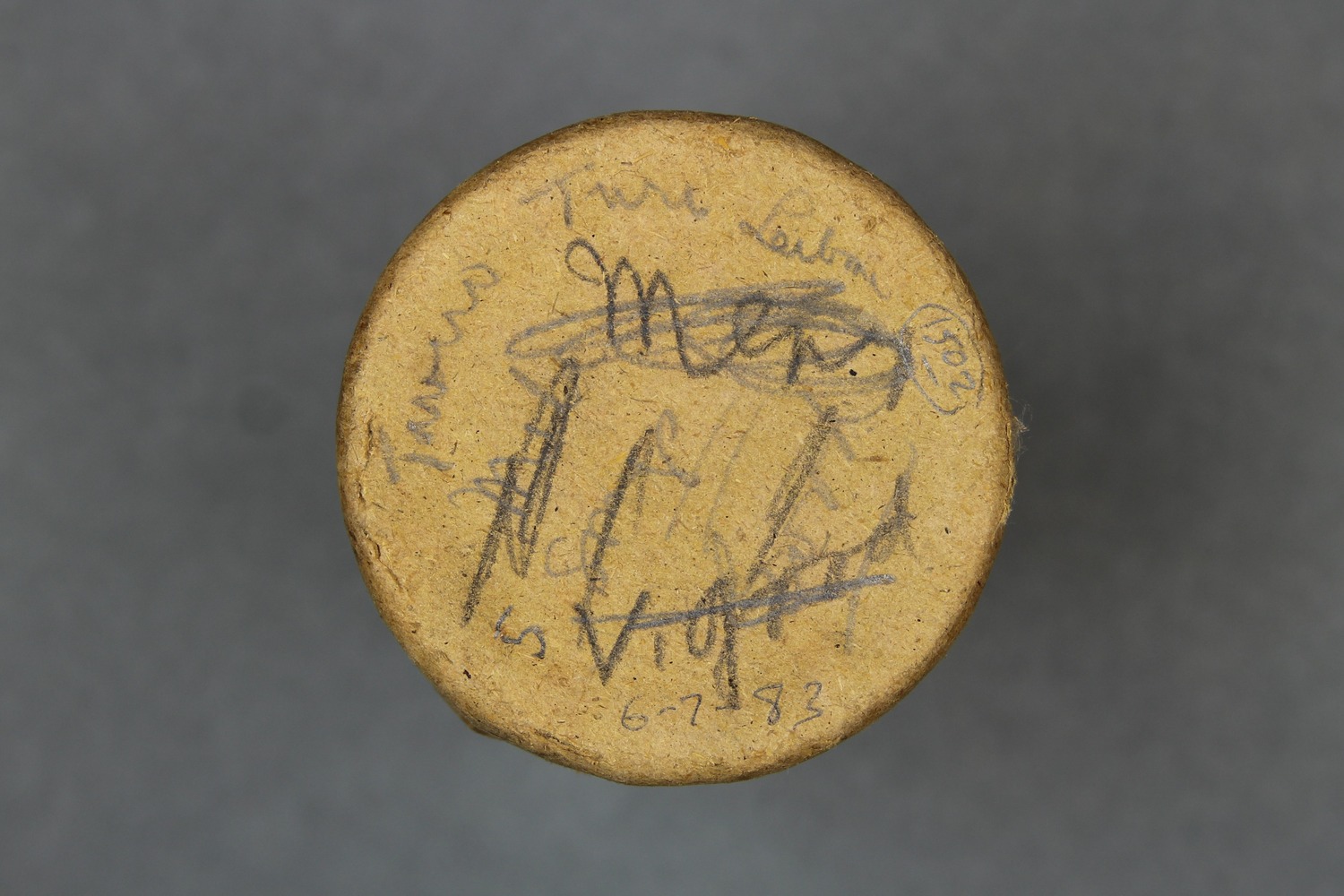 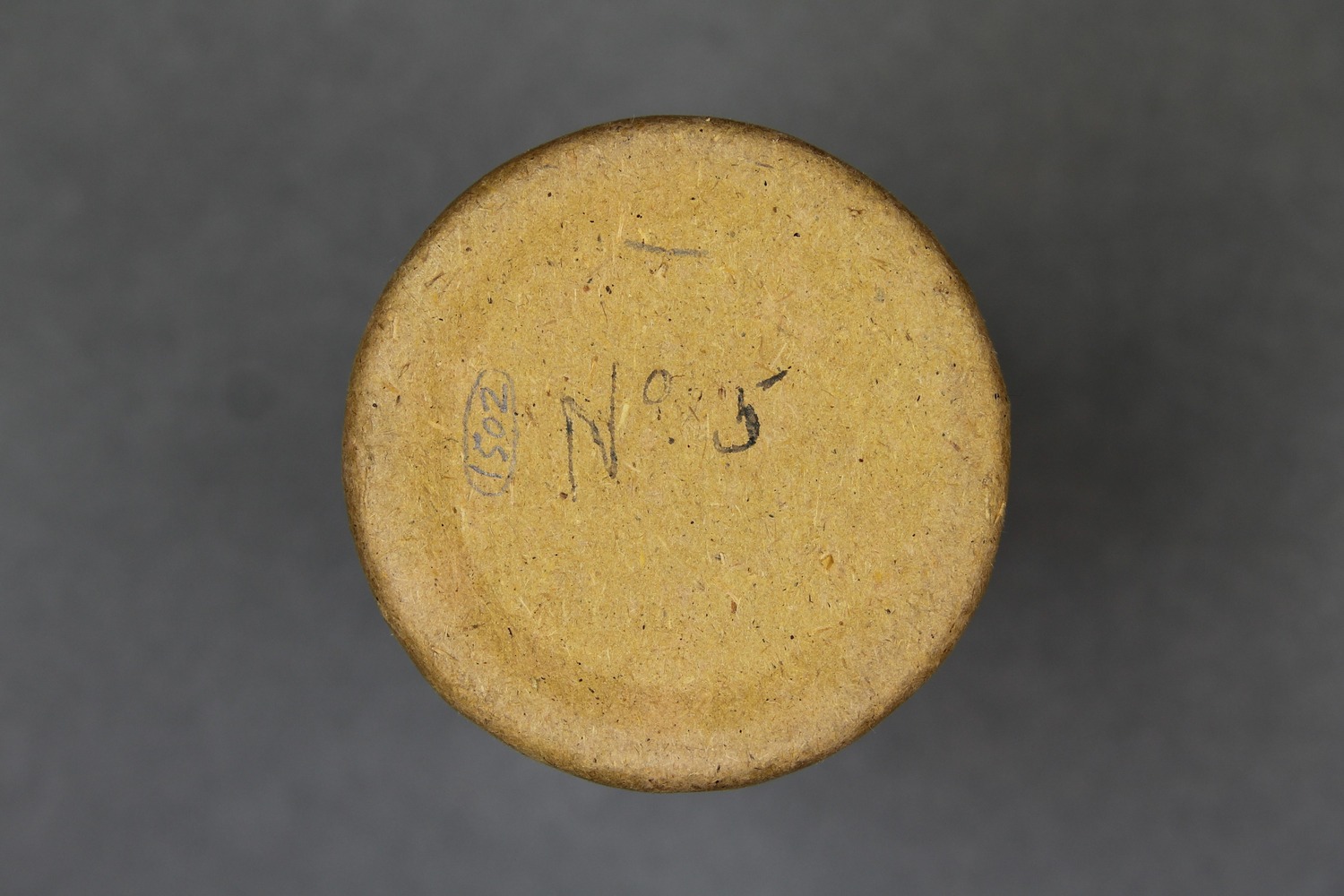   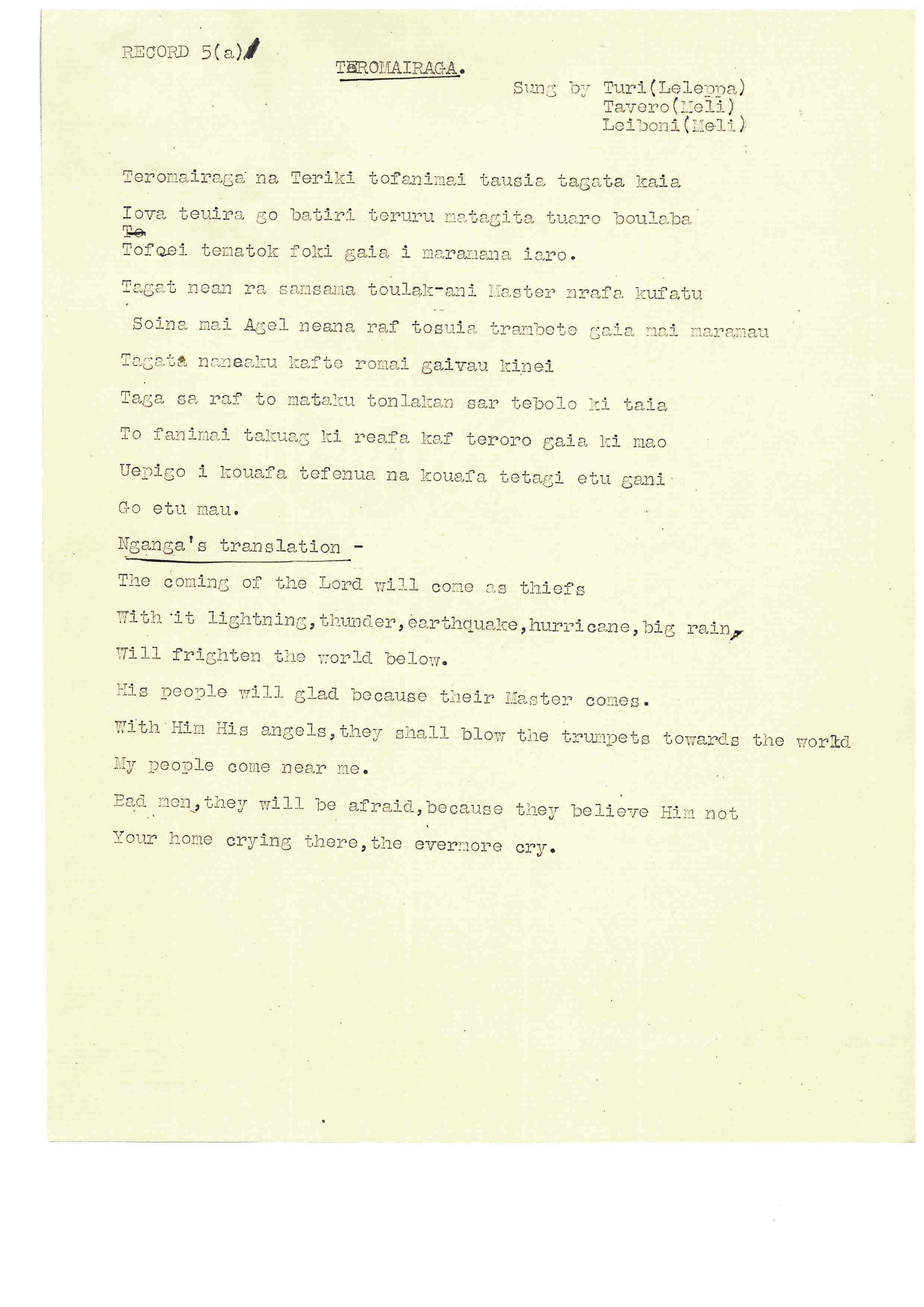  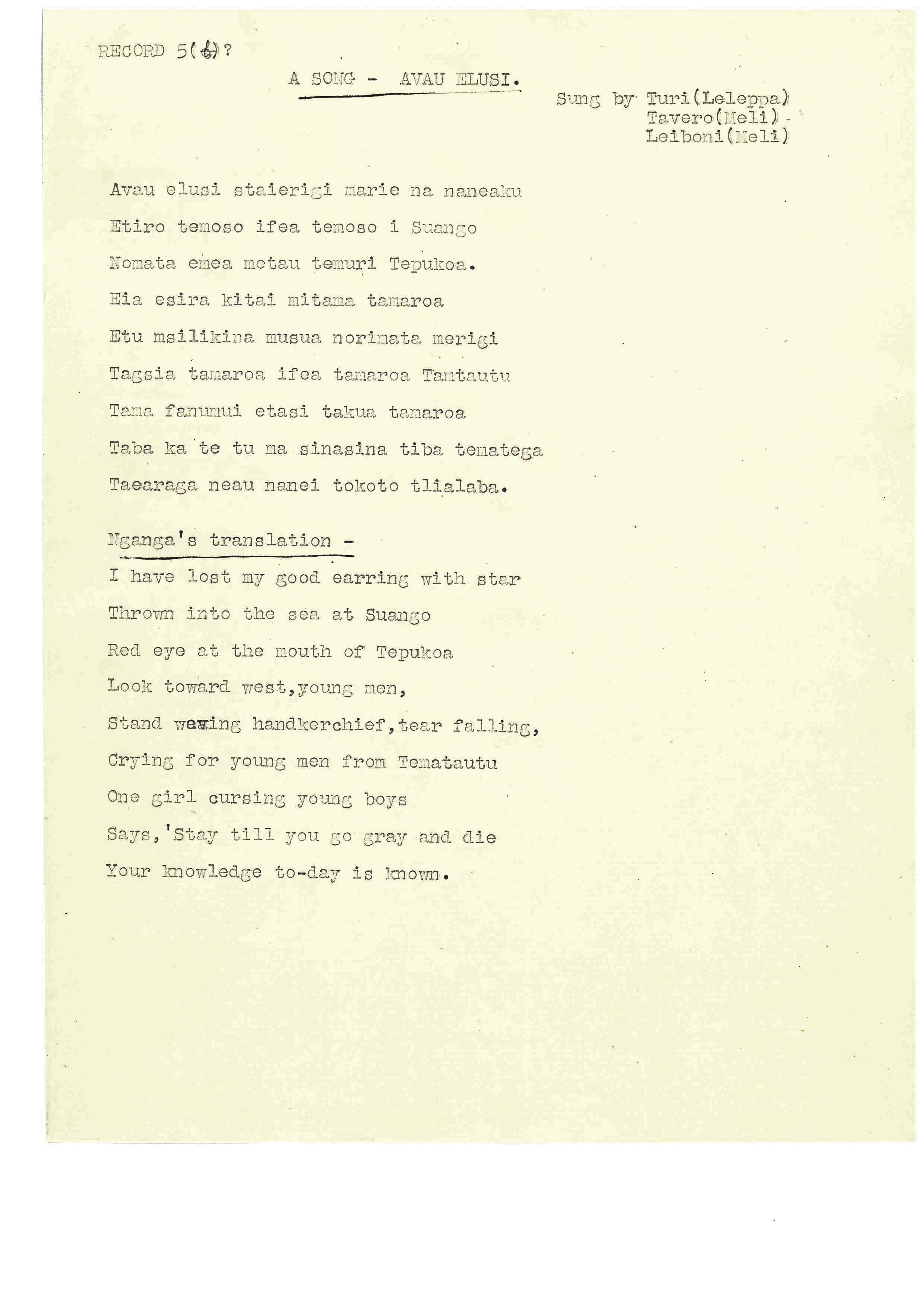 | Related notes, transcriptions and translations held by the British Library Sound Archive | |||||||
| C83/1503 | Cradle Songs | Miriam of Malavau (singer, female) | Port Vila, Efate, New Hebrides Condominium | January 1924 – June 1924 | 1. Solo female vocal. Four cradle songs sung by Miriam of Maravau (Efate Island). Lid info: ‘Ebuki cradle (3) / Malavau (3) / Kusue (2) / Takuesa.’ | From Malavau (Efate), Vanuatu | Reasonable quality recording | Raff, Eric Maitland Kirk (1892-1927) | 5'52" | Eric Raff, 1924 | Black wax cylinder | Eric Raff 1924 Efate, New Hebrides Cylinder Collection | British Library |  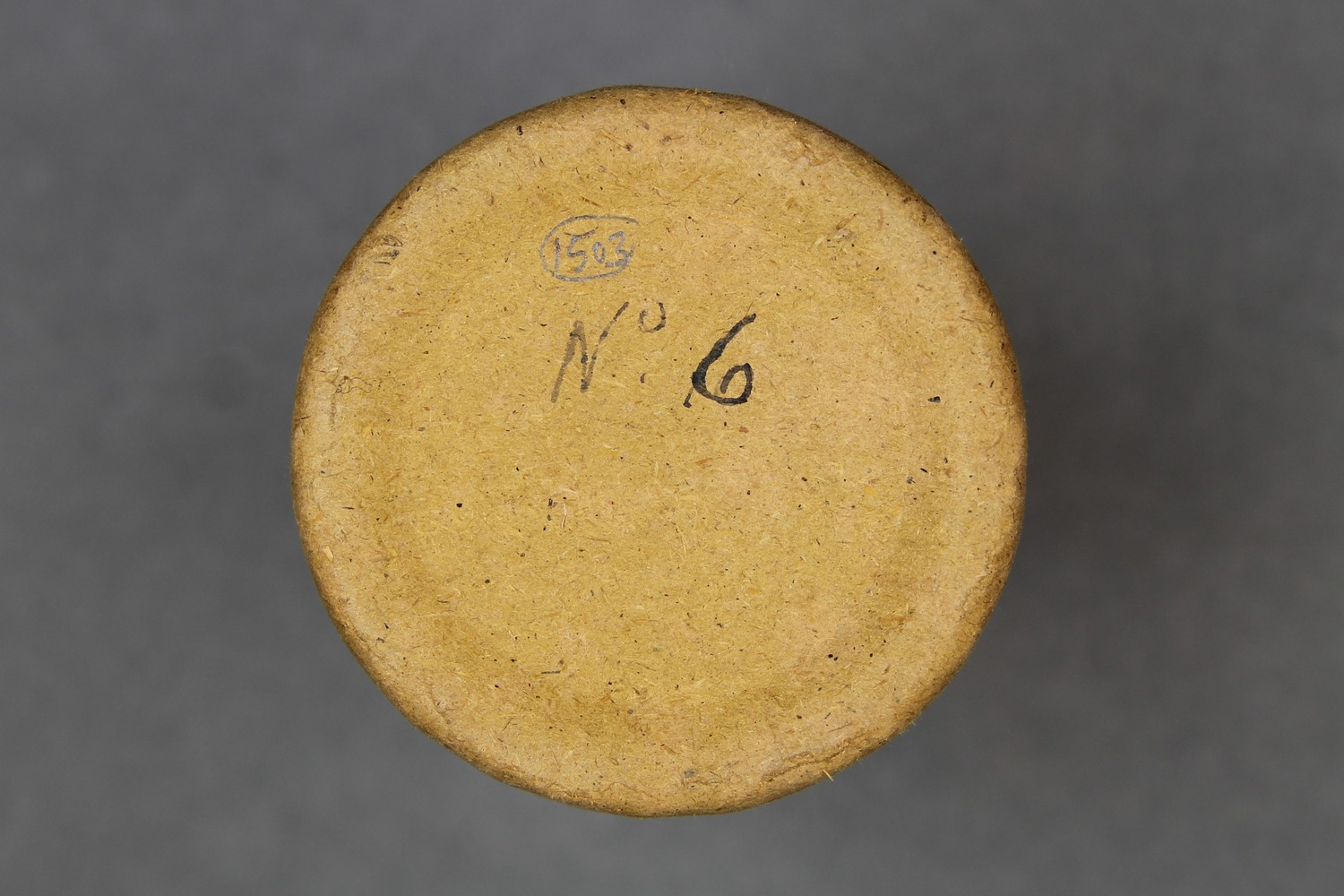   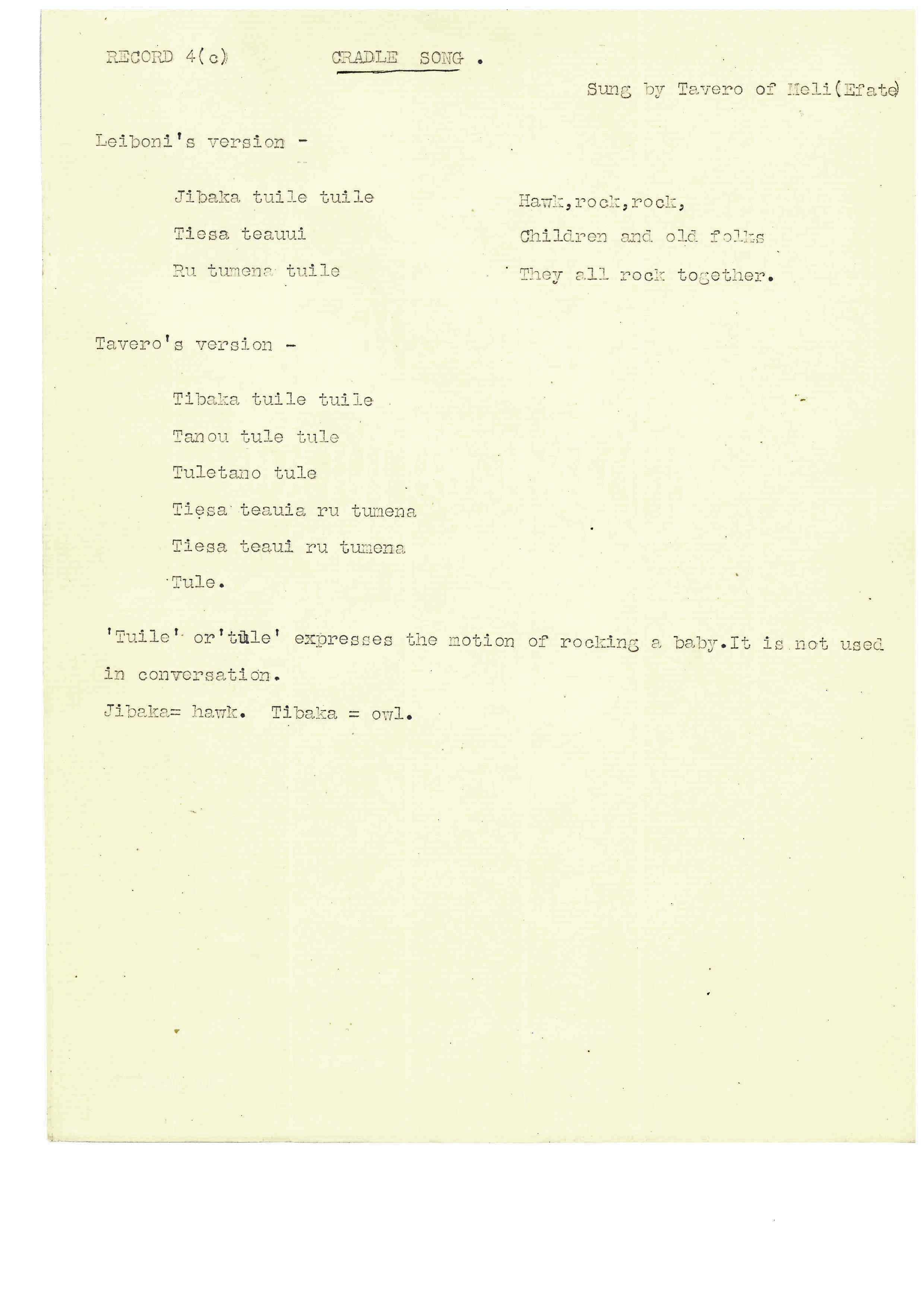  | Related notes, transcriptions and translations held by the British Library Sound Archive | |||||||
| C83/1505 | Dance Songs | Unidentified (male chorus); unidentified (percussion) | Port Vila, Efate, New Hebrides Condominium | January 1924 – June 1924 | 1. Male vocal group accompanied by percussion. | Singers from Vanuatu; Efate | Good quality recording | Raff, Eric Maitland Kirk (1892-1927) | 3'58" | Eric Raff, 1924 | Black wax cylinder | Eric Raff 1924 Efate, New Hebrides Cylinder Collection | British Library | 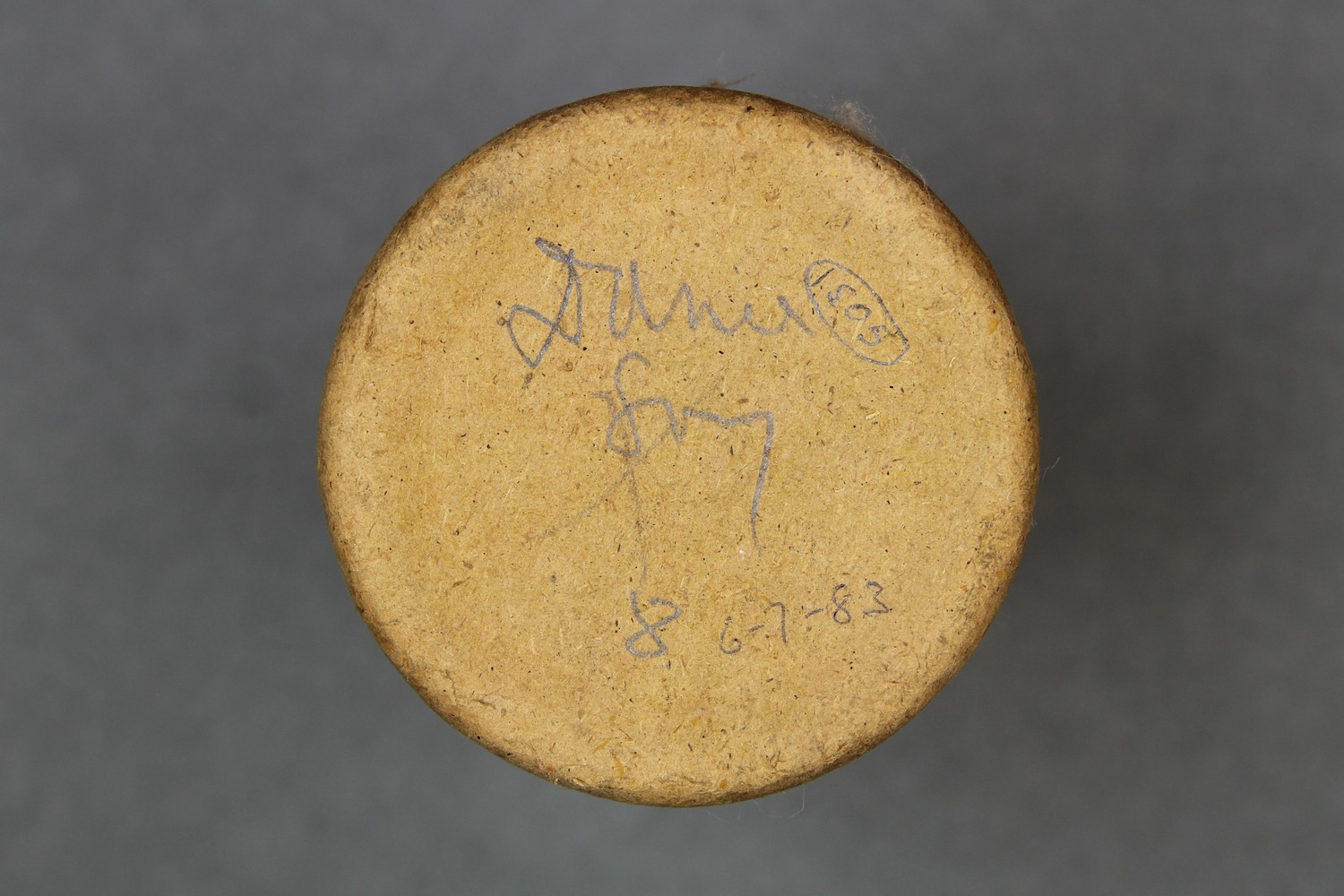  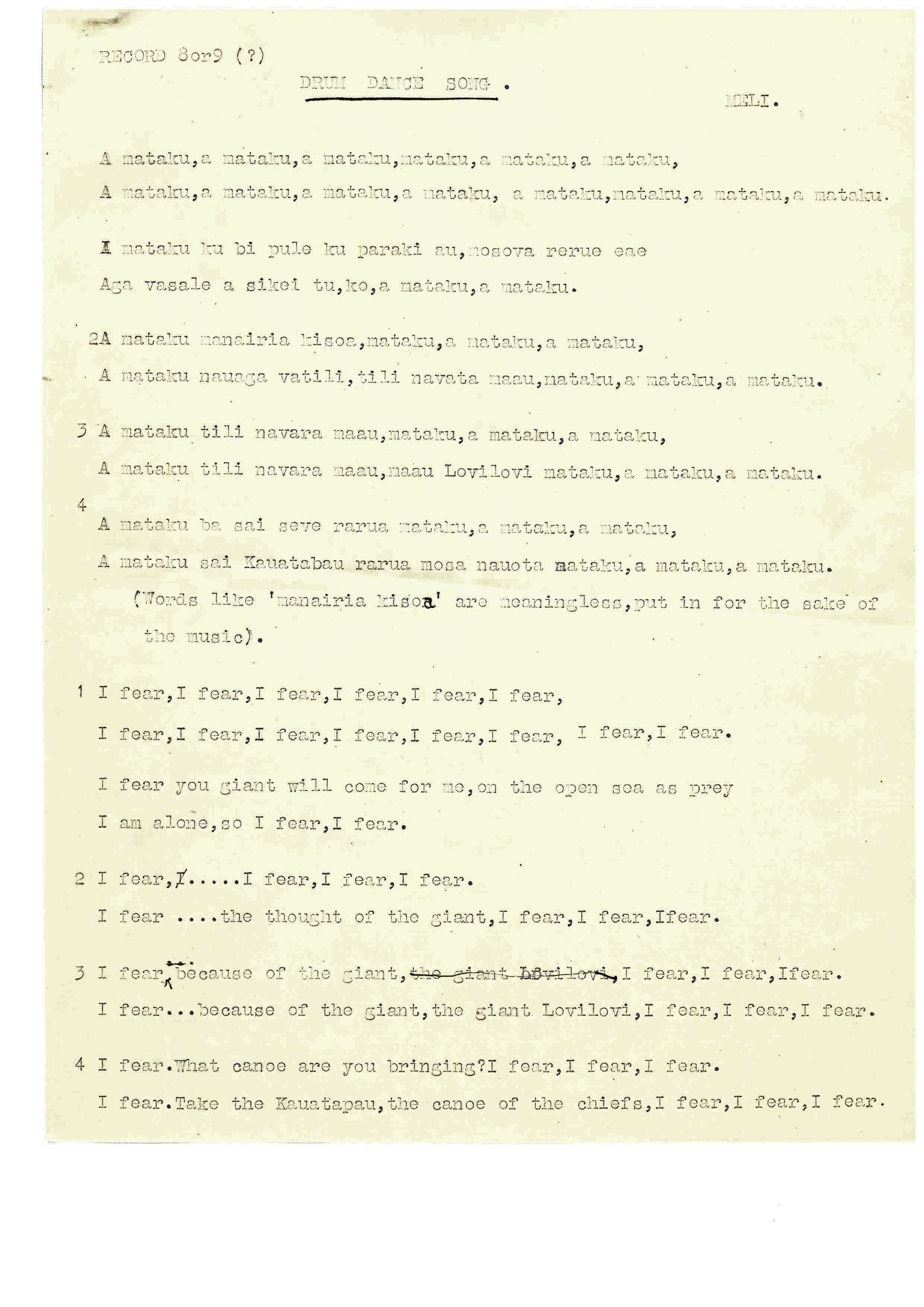 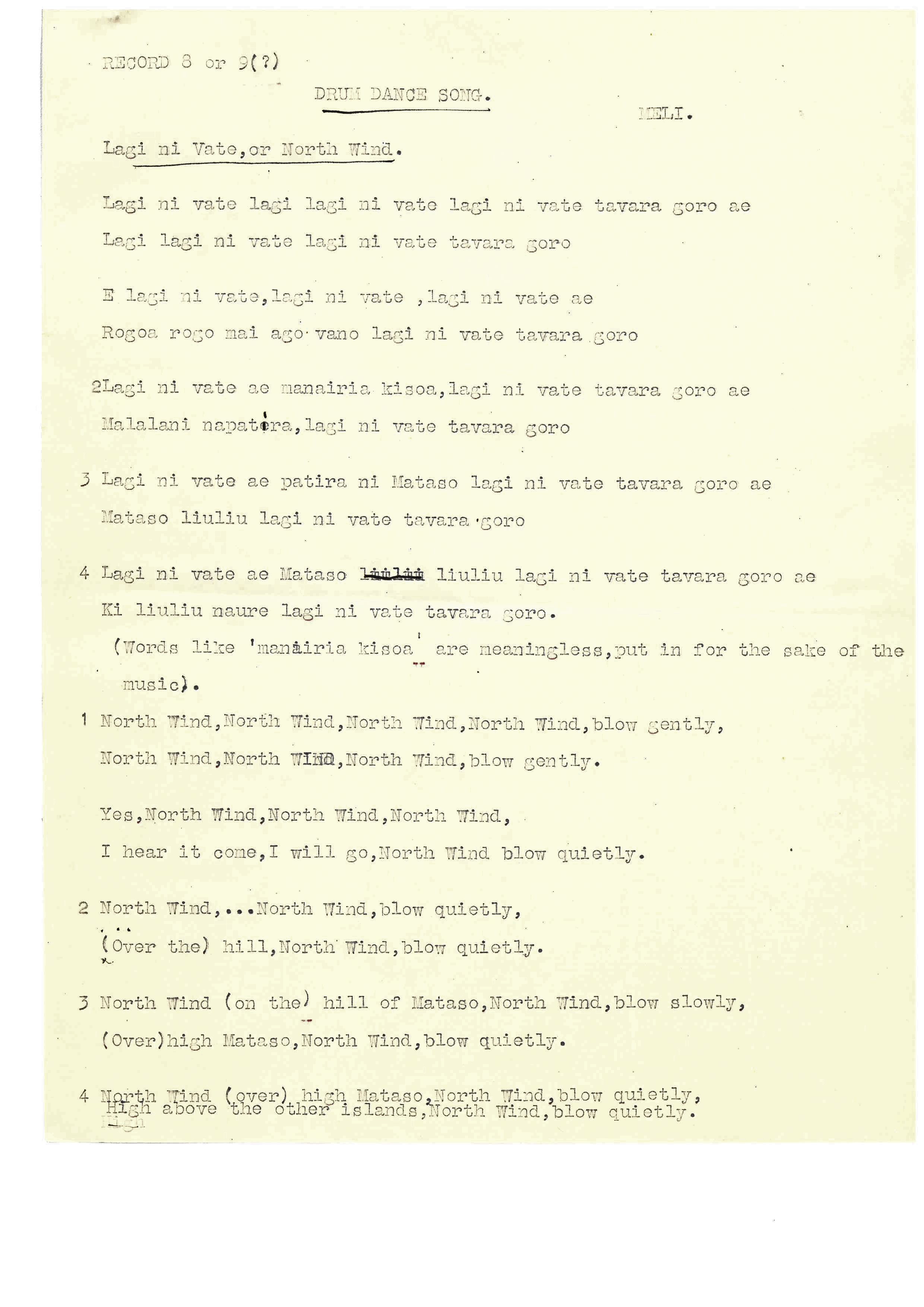   | Related notes, transcriptions and translations held by the British Library Sound Archive | |||||||
| C83/1507 | Leimaron / Tinirota (Emai) / Sesenror | Miriam of Malavau (singer, female) | Port Vila, Efate, New Hebrides Condominium | January 1924 – June 1924 | 1. Leimaron (solo female vocal). 2. Tinirota (Emai) (solo female vocal). 3. Sesenror (solo female vocal). | From Malavau (Efate), Vanuatu | Reasonable quality recording | Raff, Eric Maitland Kirk (1892-1927) | 5'03" | Eric Raff, 1924 | Black wax cylinder | Eric Raff 1924 Efate, New Hebrides Cylinder Collection | British Library | 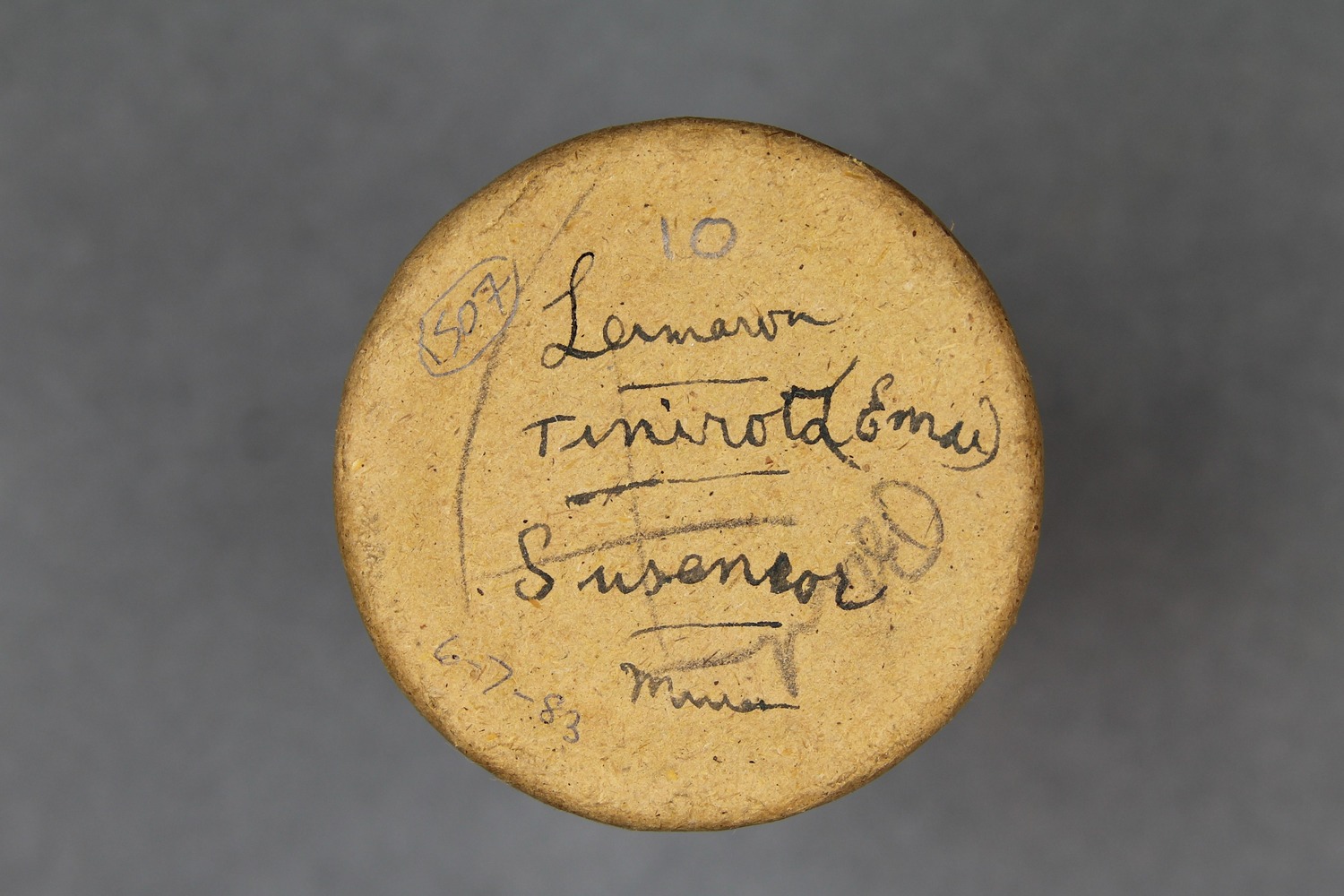 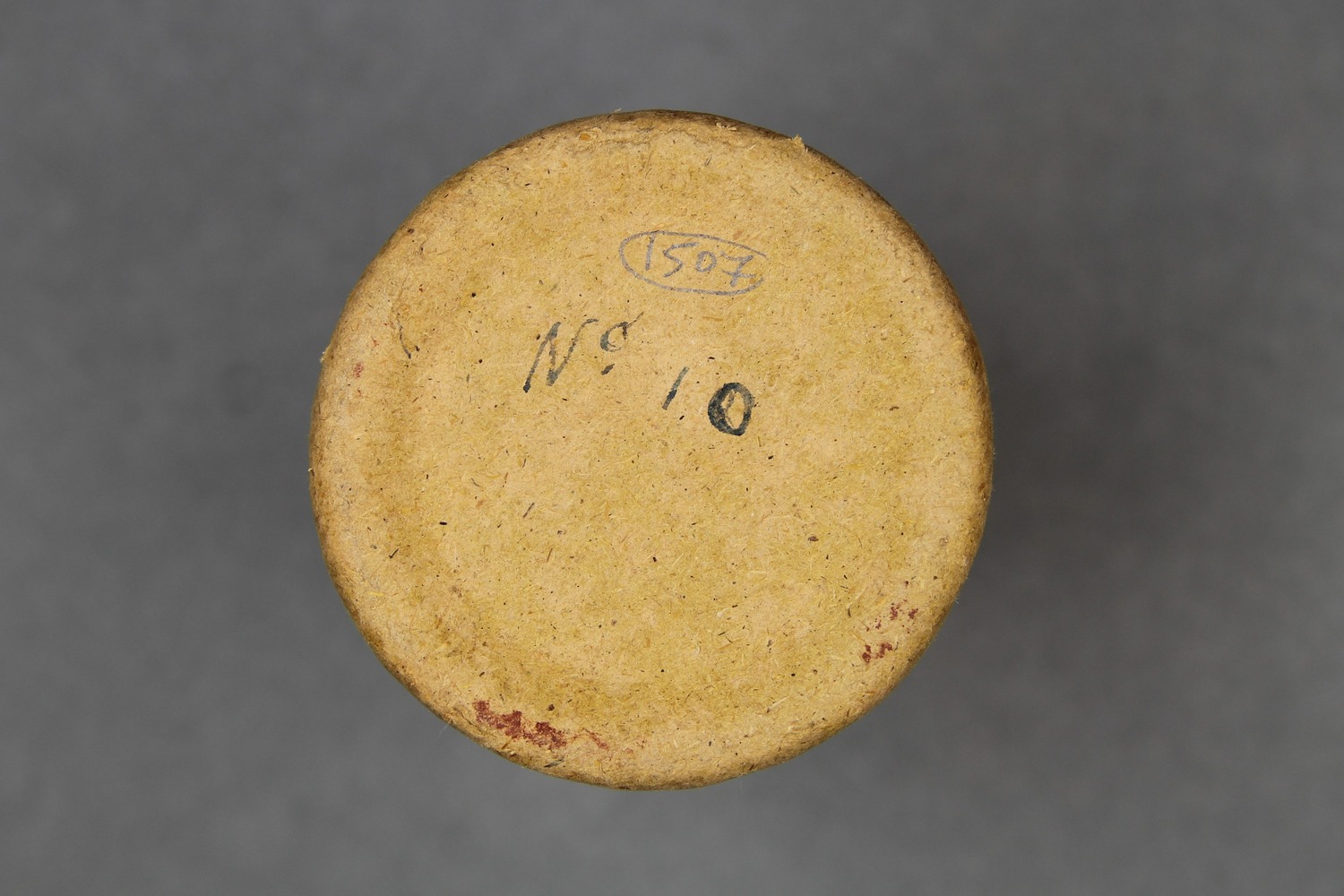 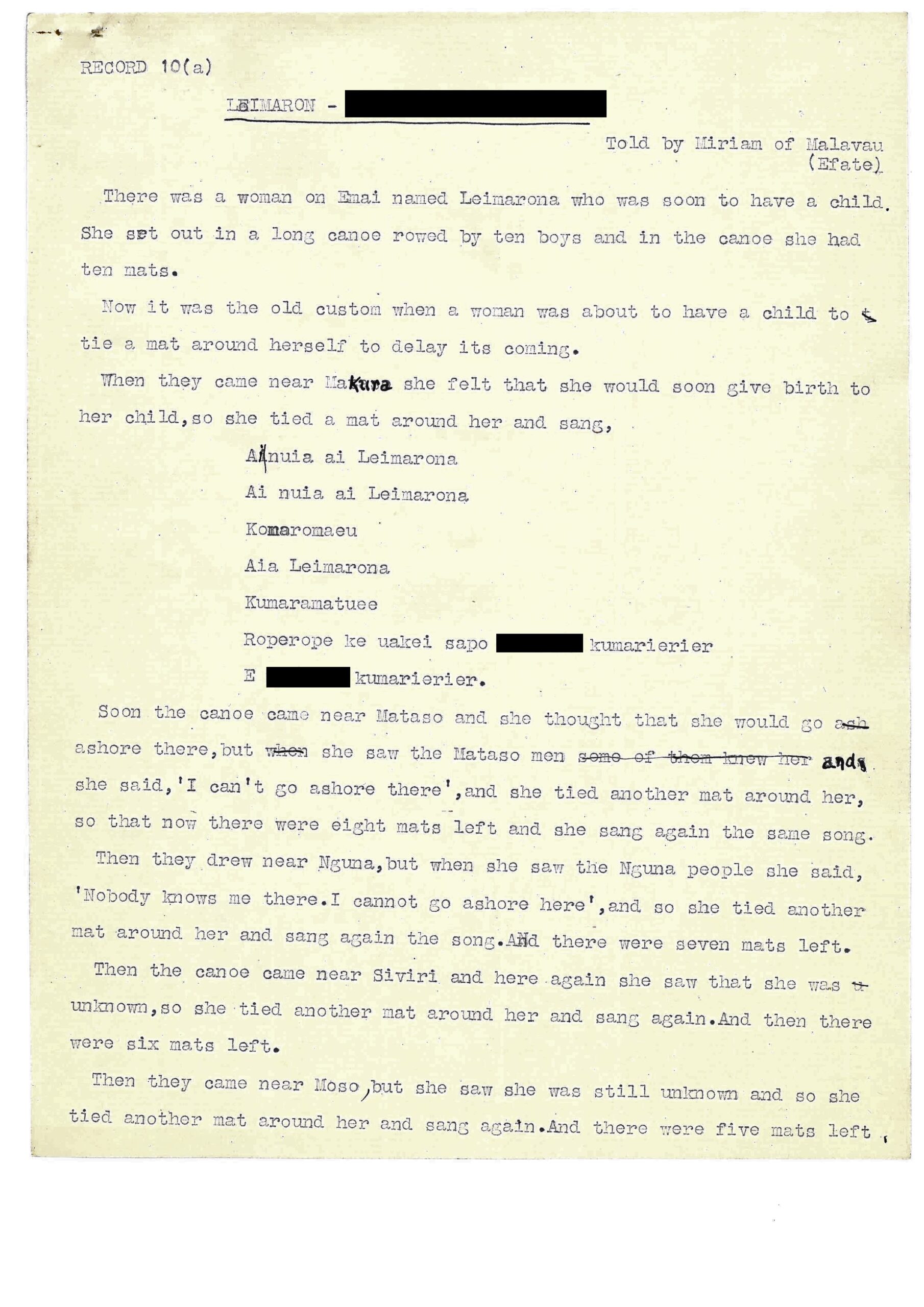 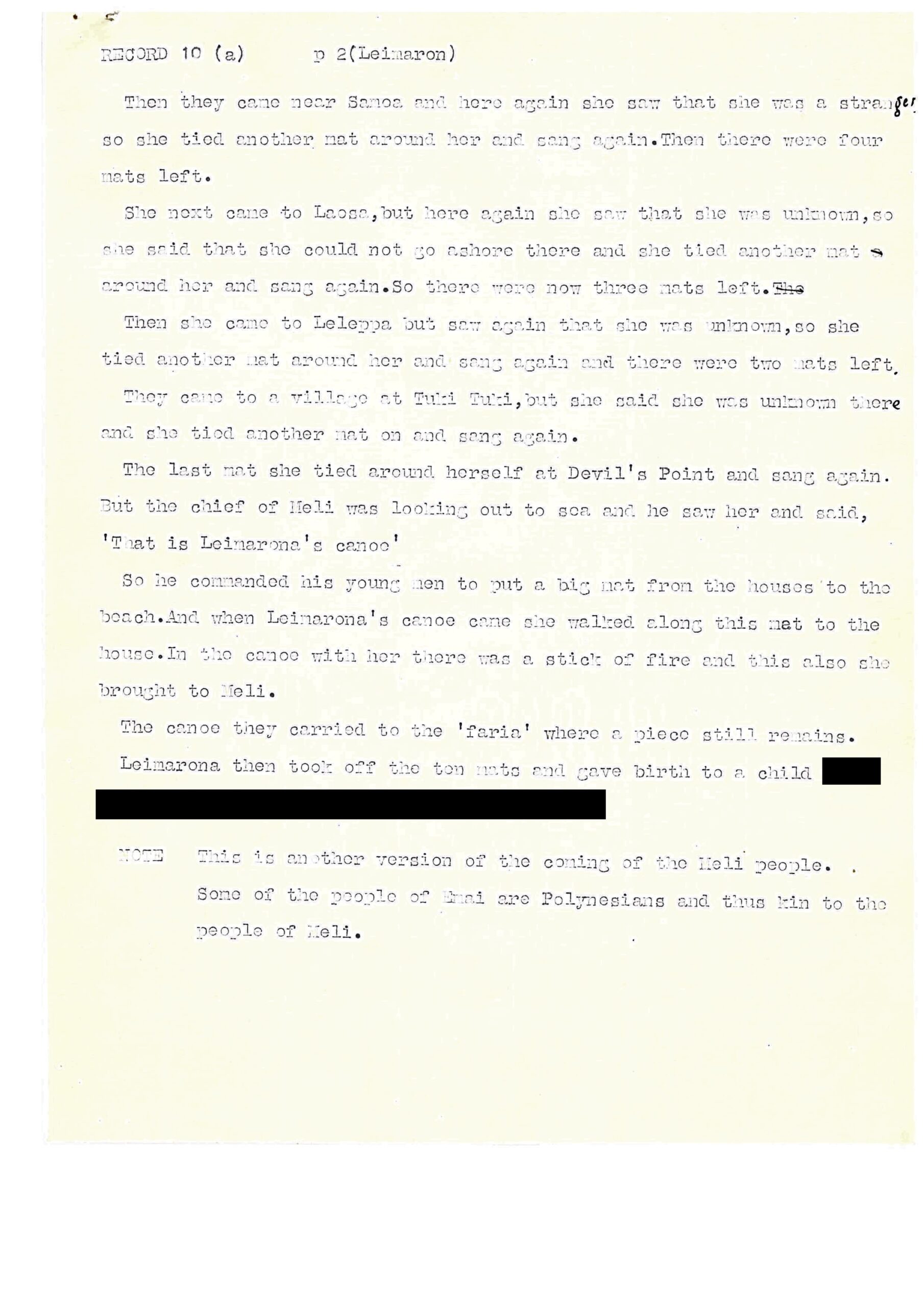 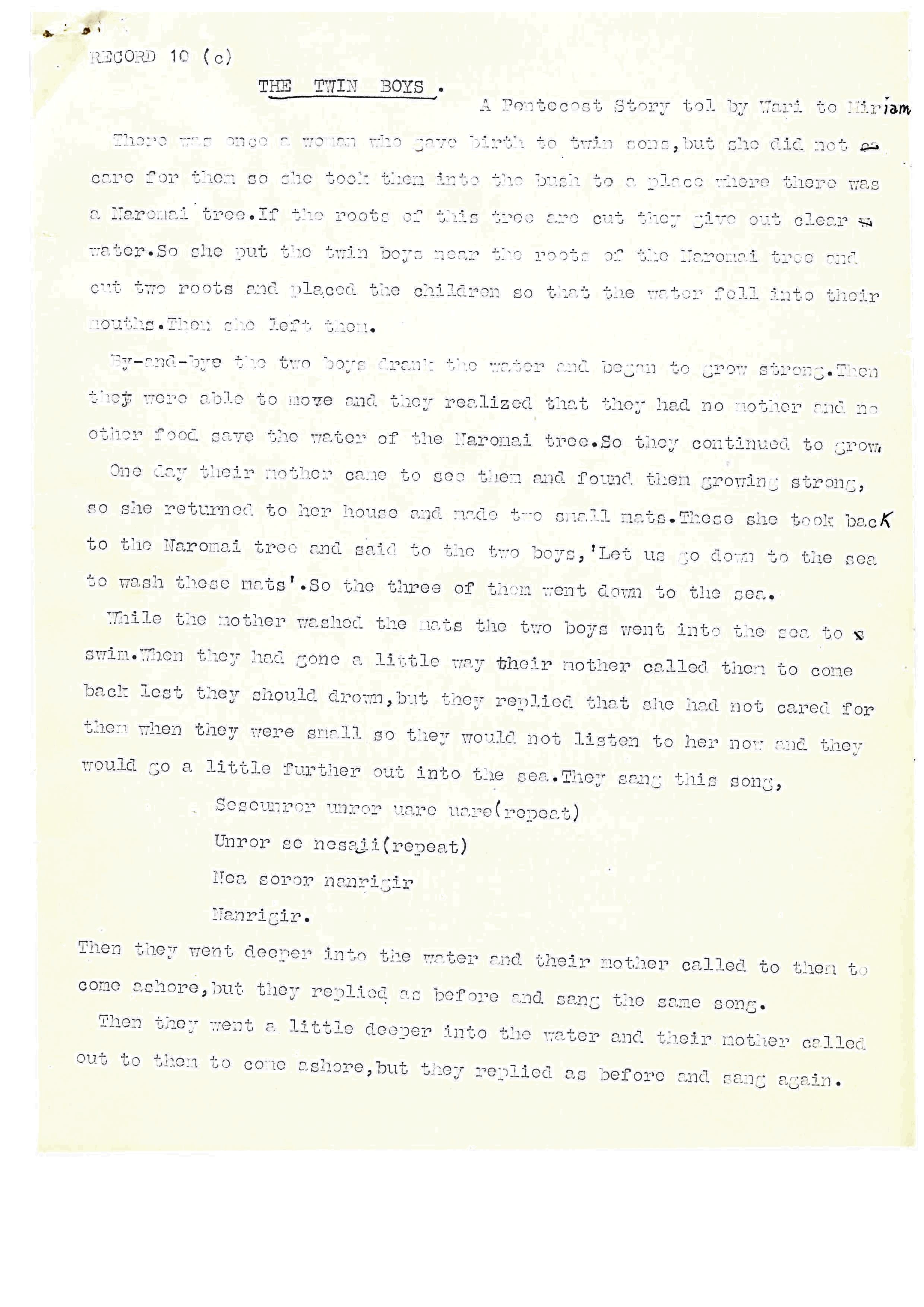 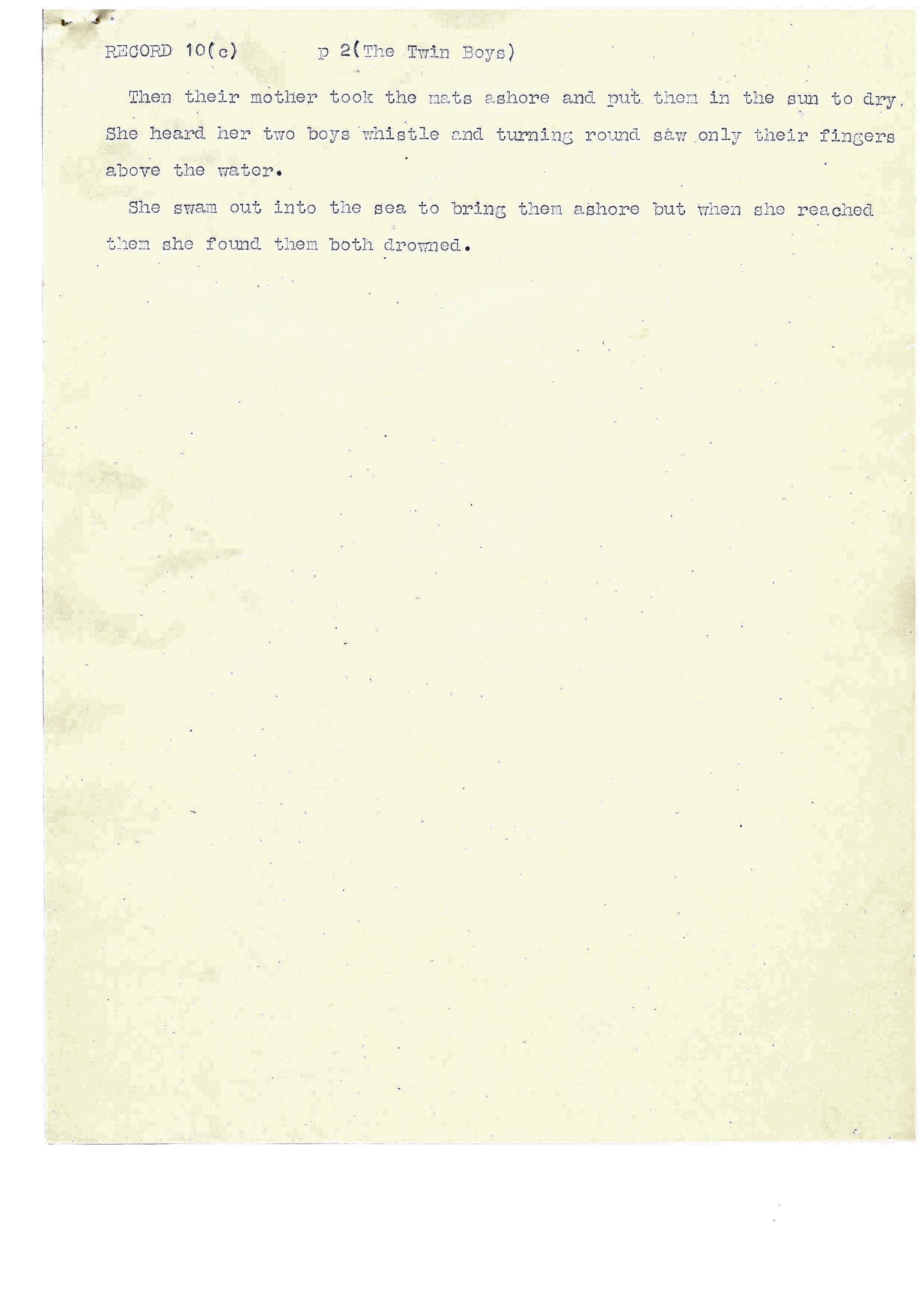   | Related notes, transcriptions and translations held by the British Library Sound Archive | |||||||
| C83/1509 | Goodbye Song / Lusimusua | Kaltaban of Meli (singer, female); unidentified (chorus, female) | Port Vila, Efate, New Hebrides Condominium | January 1924 – June 1924 | 1. Goodbye Song (solo female vocal, unaccompanied). No information available. 2. Lusimusua (female vocal duet?, unaccompanied). No information available. | Singers from Vanuatu; Meli | Good quality recording | Raff, Eric Maitland Kirk (1892-1927) | 5'17" | Eric Raff, 1924 | Black wax cylinder | Eric Raff 1924 Efate, New Hebrides Cylinder Collection | British Library | 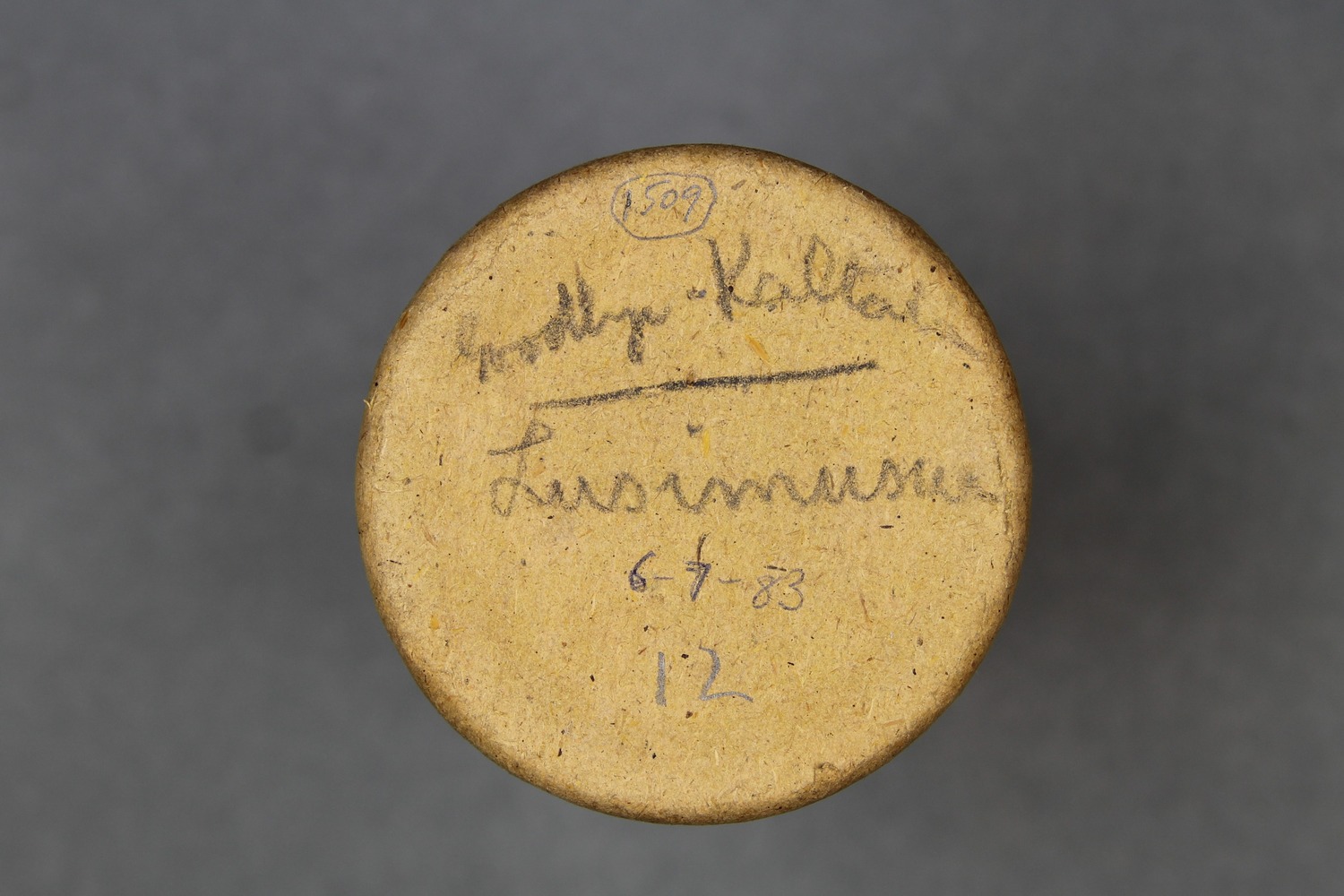 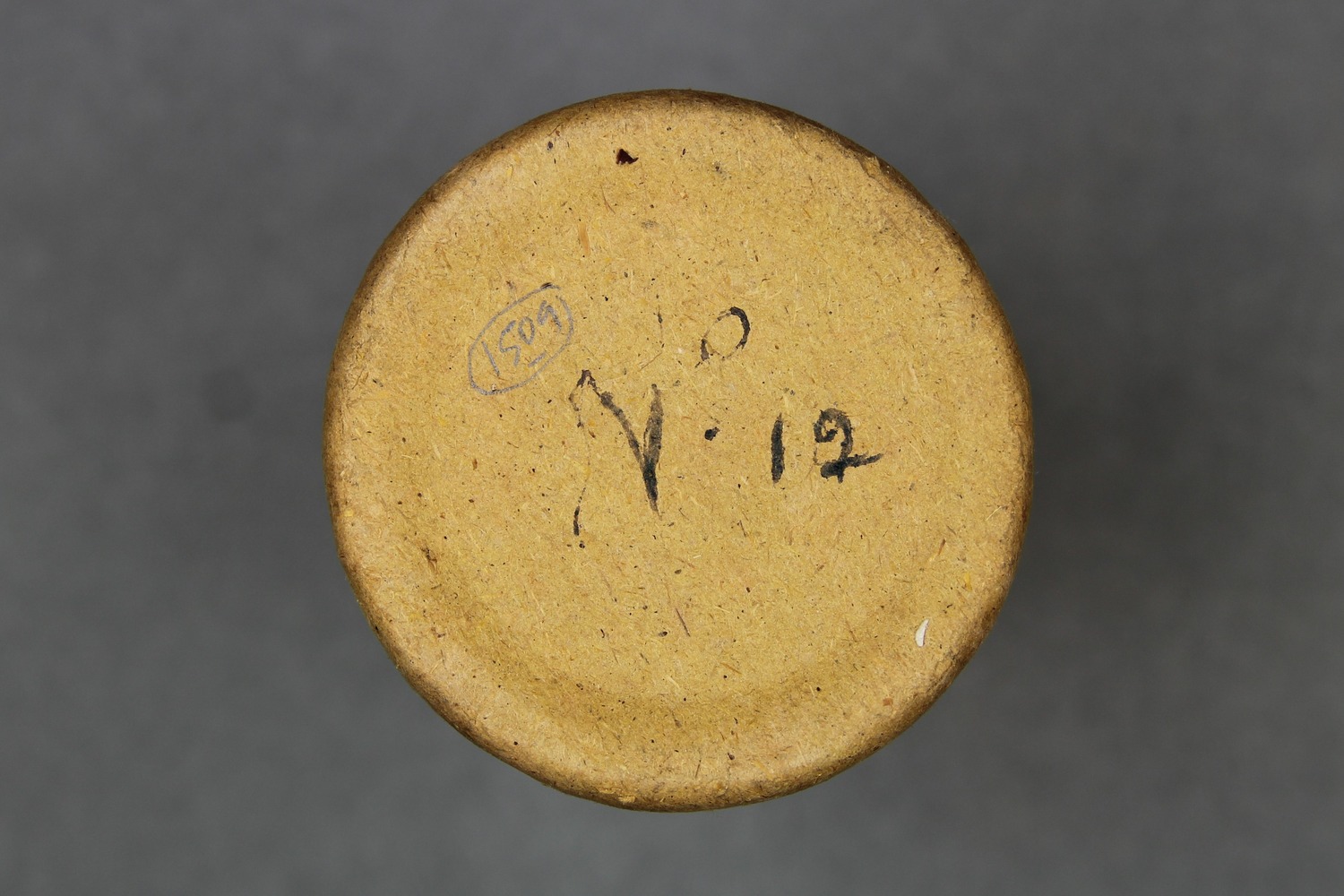     | Related notes, transcriptions and translations held by the British Library Sound Archive | |||||||
| C80/1015 | Izib A | Unidentified | Mer / Murray Island, Torres Strait Islands | 10 May 1898 – 24 August 1898 | Broken cylinder. This cylinder was broken by the time that Alice Moyle re-identified the Torres Strait cylinders in 1978. Inscription on cylinder insert note: Waw isib iriam isiba […] waw isibe […] / erdirker eguader. On reverse: Izib / A. / Ulai. This recording corresponds to Charles S. Myers' Malu Song III. It would have been recorded by Myers on Mer / Murray Island. In correspondence with Erich von Hornbostel, Myers describes Izib as a funeral song from Mer / Murray Island (Myers 1907). Izib was the creek at Kiam, Mer / Murray Island, from which Malu drank water (Haddon & Myers VI 1908:283, 299). C80/1099 is a duplicate of this cylinder. | The recording date range assumes that Myers is indeed the recordist and corresponds to the dates of Myer's stay on Mer / Murray Island. | Field recordings | Myers, C. S. | 1898 Cambridge Anthropological Expedition to Torres Straits | Brown wax cylinder. No case. | Alfred Cort Haddon 1898 Expedition (Torres Strait and British New Guinea) Cylinder Collection | British Library | 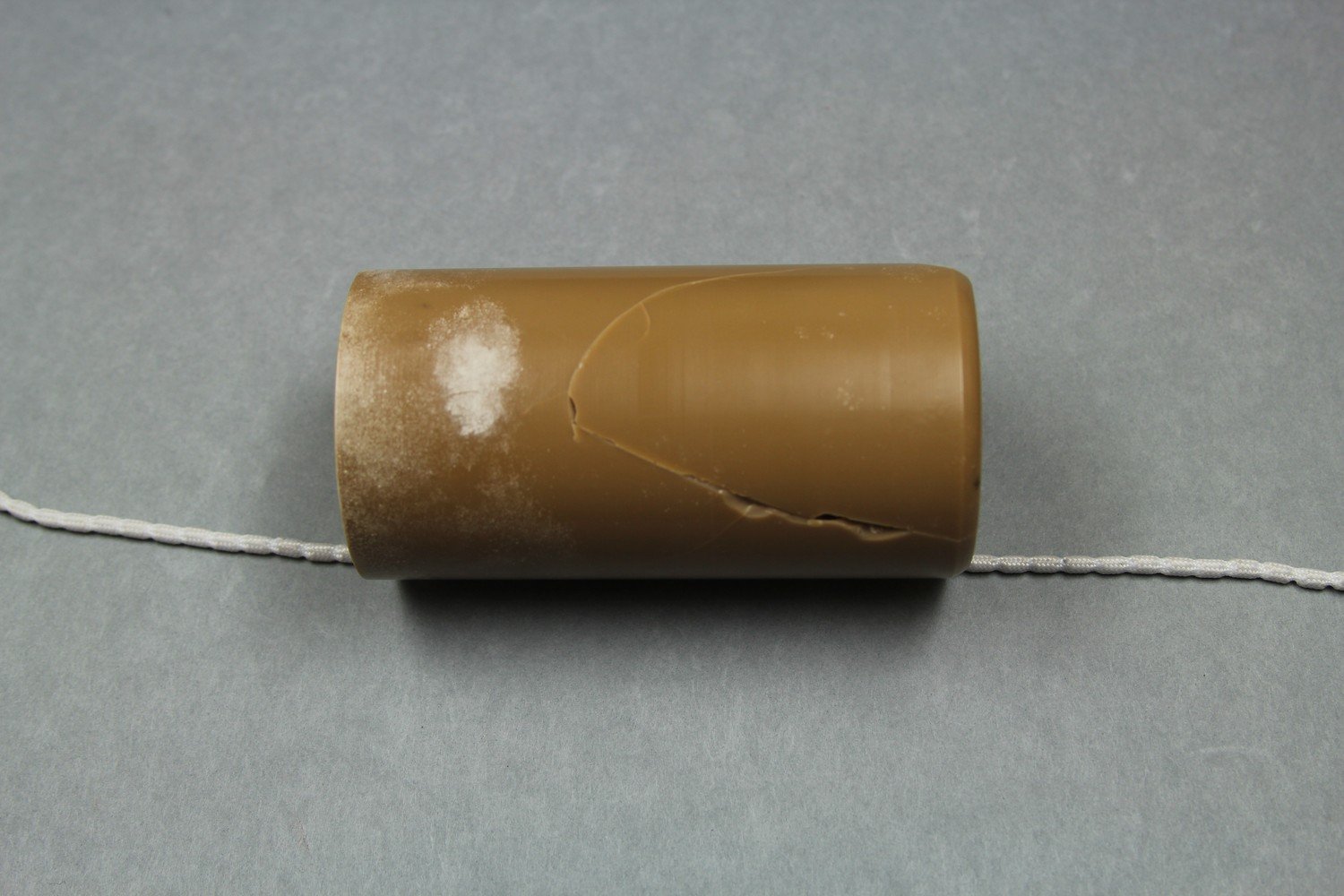 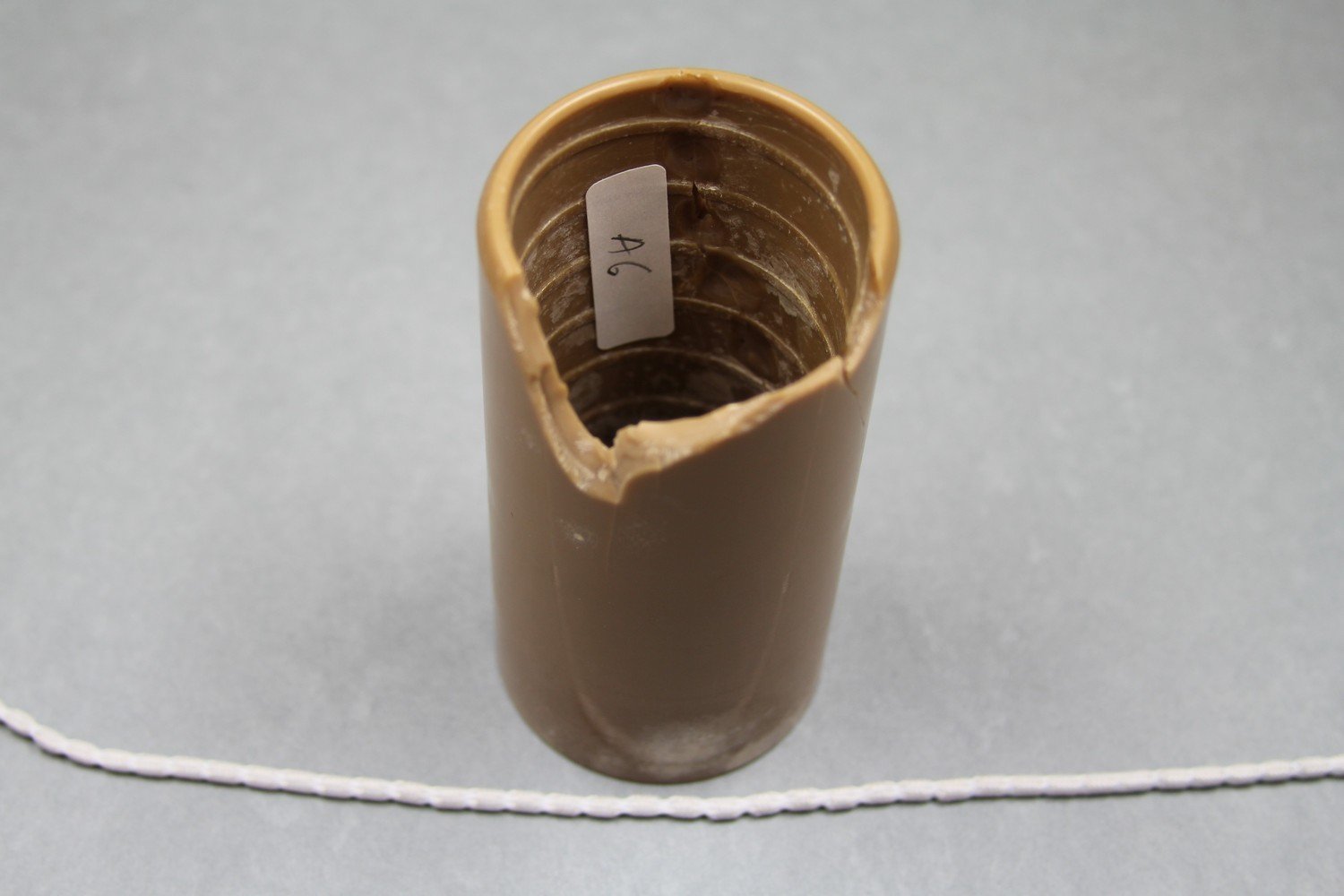     | |||||||||
| C80/1044 | [No title] | Unidentified | Broken cylinder - unable to be digitised. Not included in Alice Moyle's 1985 audition sheet. It was probably broken before this time. | Field recordings | 1898 Cambridge Anthropological Expedition to Torres Straits | Brown wax cylinder. Metal cylinder case. | Alfred Cort Haddon 1898 Expedition (Torres Strait and British New Guinea) Cylinder Collection | British Library | 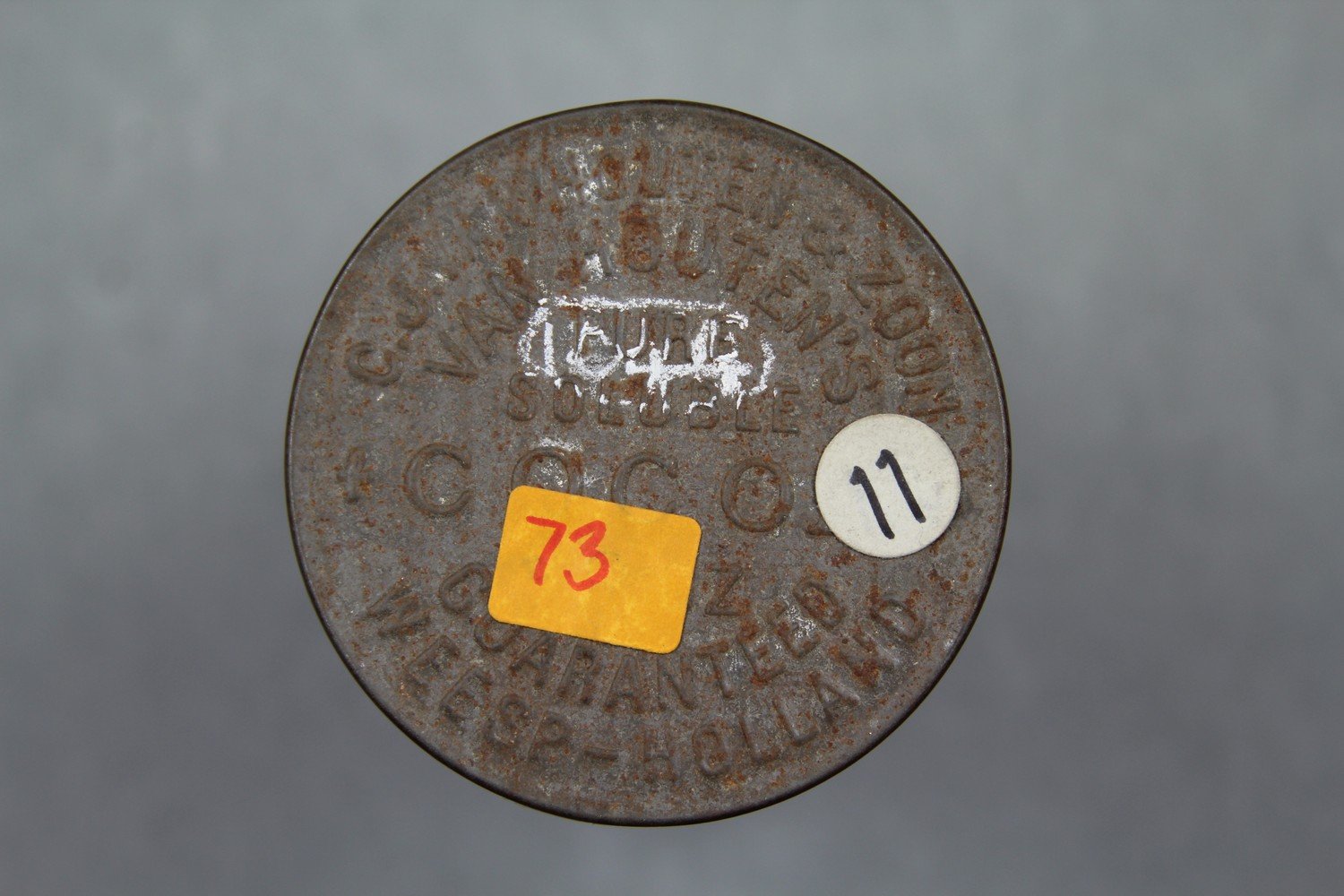 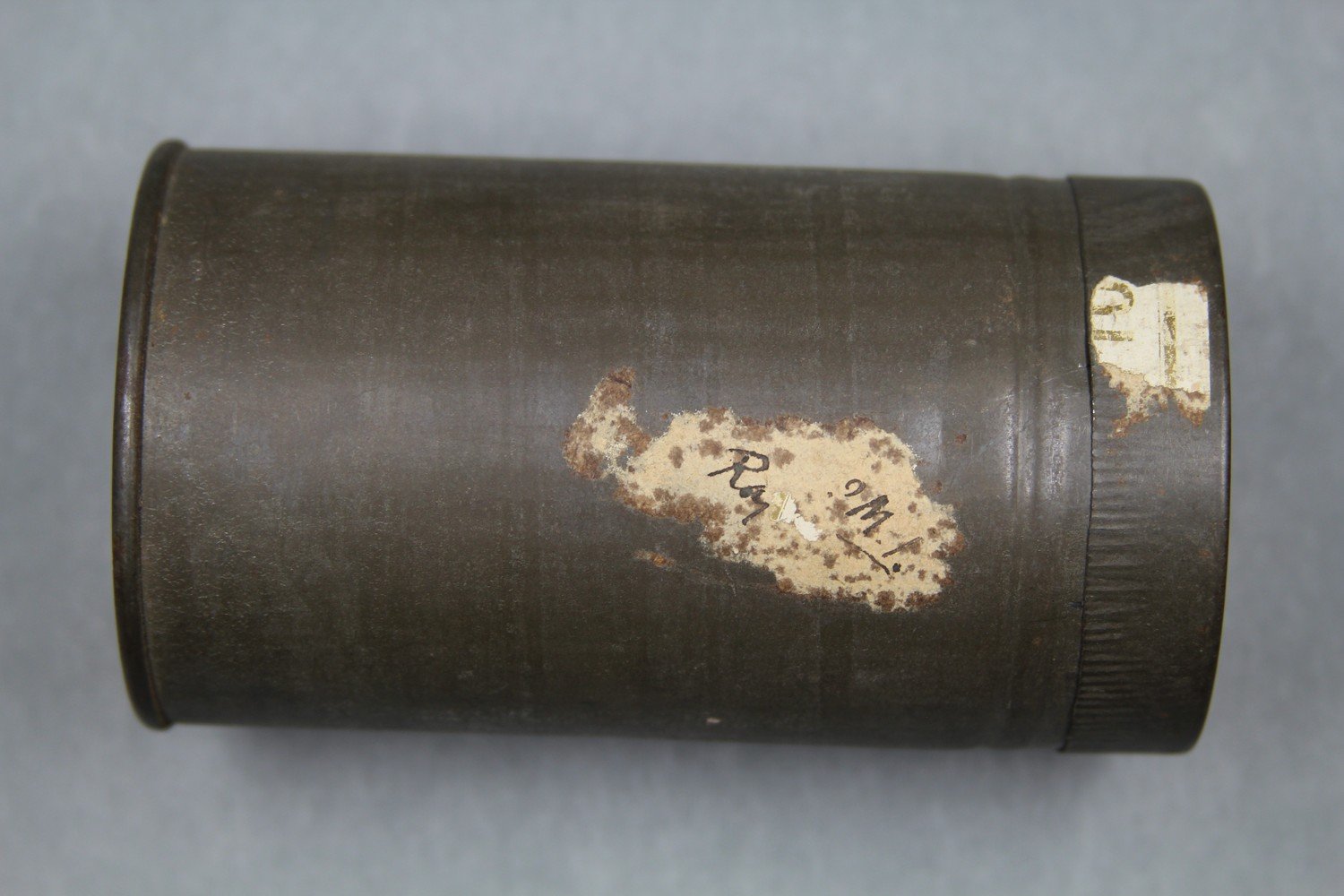     | |||||||||||||
| C80/1056 | Violin solo | Unidentified | before 13 May 1898 | Broken cylinder - unable to be digitised. Inscription on insert note: 'Myers - Violin solo'. In his journal, Haddon noted on 13 May 1898 that Myers' violin had become water-damaged and was "spoilt for this trip" (1898:66). Myers played the violin on the evening of 7 May during a visit to Captain Hammond on Erub / Darnley Island (Myers 1898:44). This cylinder must have been recorded before 1898-05-13. | Field recordings | 1898 Cambridge Anthropological Expedition to Torres Straits | Brown wax cylinder | Alfred Cort Haddon 1898 Expedition (Torres Strait and British New Guinea) Cylinder Collection | British Library |       | ||||||||||||
| C80/1057 | [No title] | Unidentified | Broken cylinder - unable to be digitised. | Field recordings | 1898 Cambridge Anthropological Expedition to Torres Straits | Brown wax cylinder | Alfred Cort Haddon 1898 Expedition (Torres Strait and British New Guinea) Cylinder Collection | British Library | 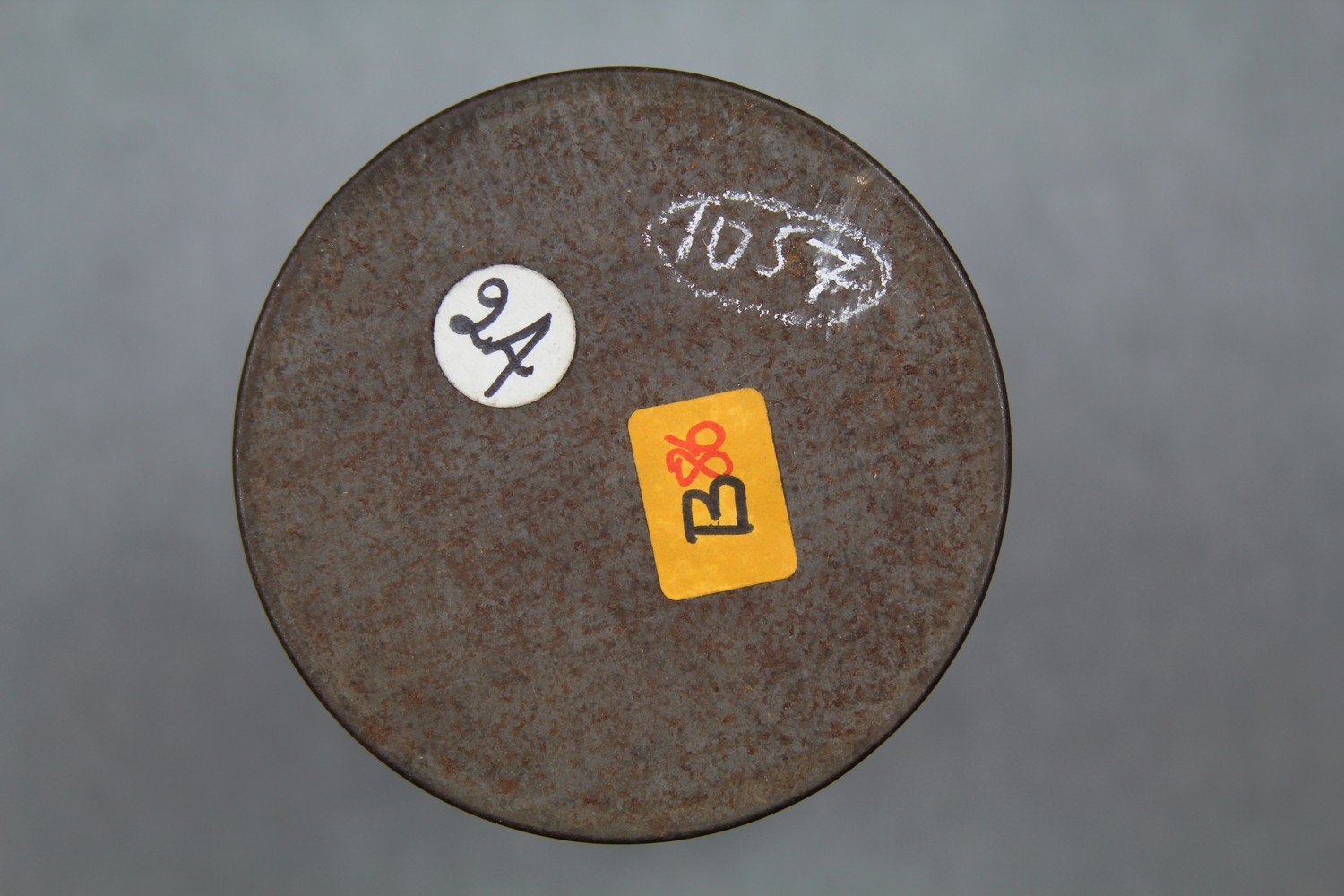      | |||||||||||||
| C80/1066 | [No title] | Unidentified | Unable to be digitised. Possibly a blank cylinder. Previous description in SAMI noted that this is similar to the Layard cylinders and may be of a later date. We will need to check this cylinder again. | Field recordings | 1898 Cambridge Anthropological Expedition to Torres Straits | Brown wax cylinder. Metal cylinder case. | Alfred Cort Haddon 1898 Expedition (Torres Strait and British New Guinea) Cylinder Collection | British Library | 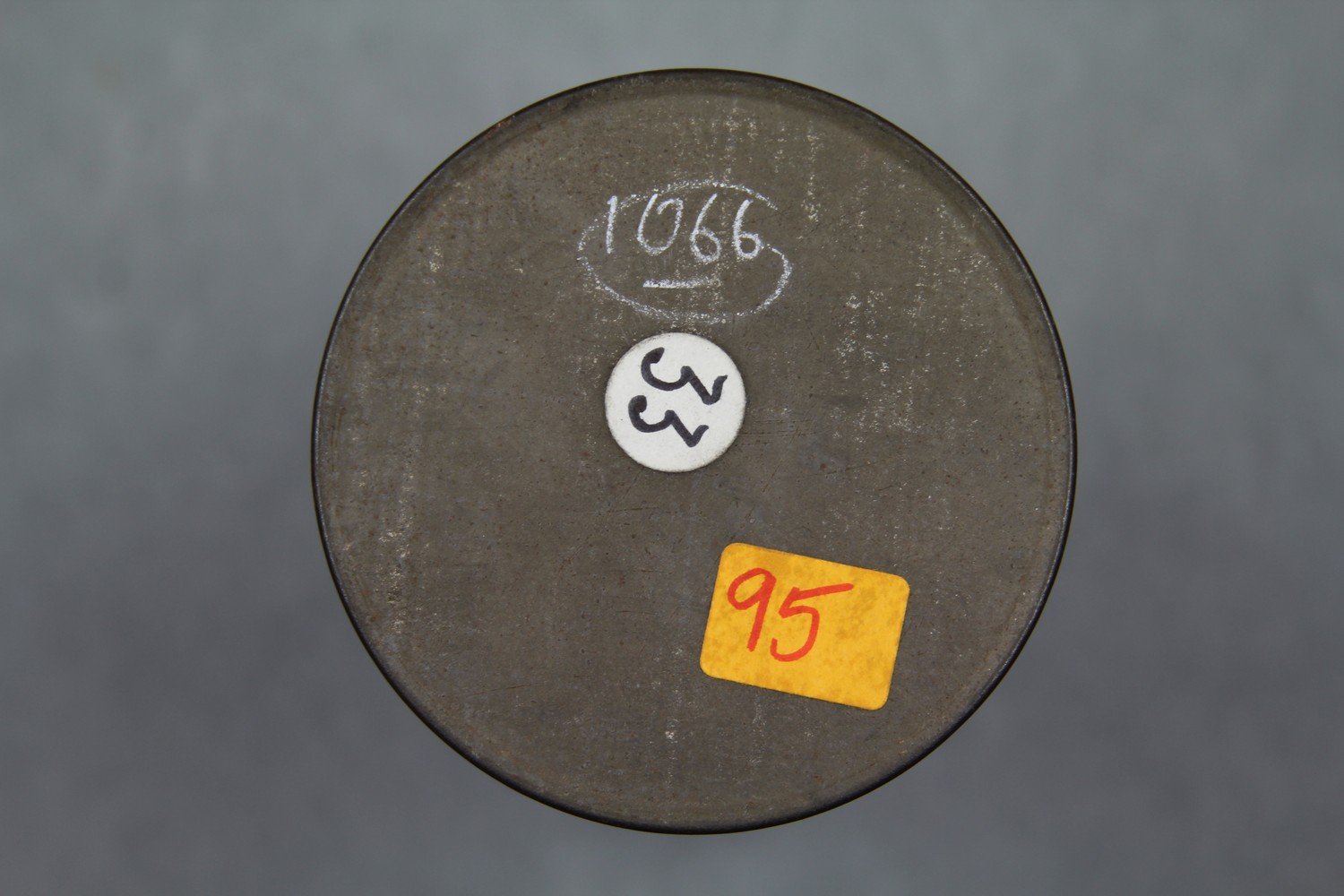      | |||||||||||||
| C80/1106 | [No title] | Ari (singer, male, Mamoose of Mer / Murray Island) | Mer / Murray Island, Torres Strait Islands | 10 May 1898 – 24 August 1898 | Broken cylinder - unable to be digitised. This cylinder probably corresponds to Charles S. Myers' Keber Song X. 'dimer' also mentioned for C80/1026 and C80/1032. Not included in Alice Moyle's 1985 audition sheet. It was probably broken before this time. | The recording date range assumes that Myers is indeed the recordist and corresponds to the dates of Myer's stay on Mer / Murray Island. | Field recordings | Myers, C. S. | 1898 Cambridge Anthropological Expedition to Torres Straits | Brown wax cylinder. Cardboard cylinder case. | Alfred Cort Haddon 1898 Expedition (Torres Strait and British New Guinea) Cylinder Collection | British Library | 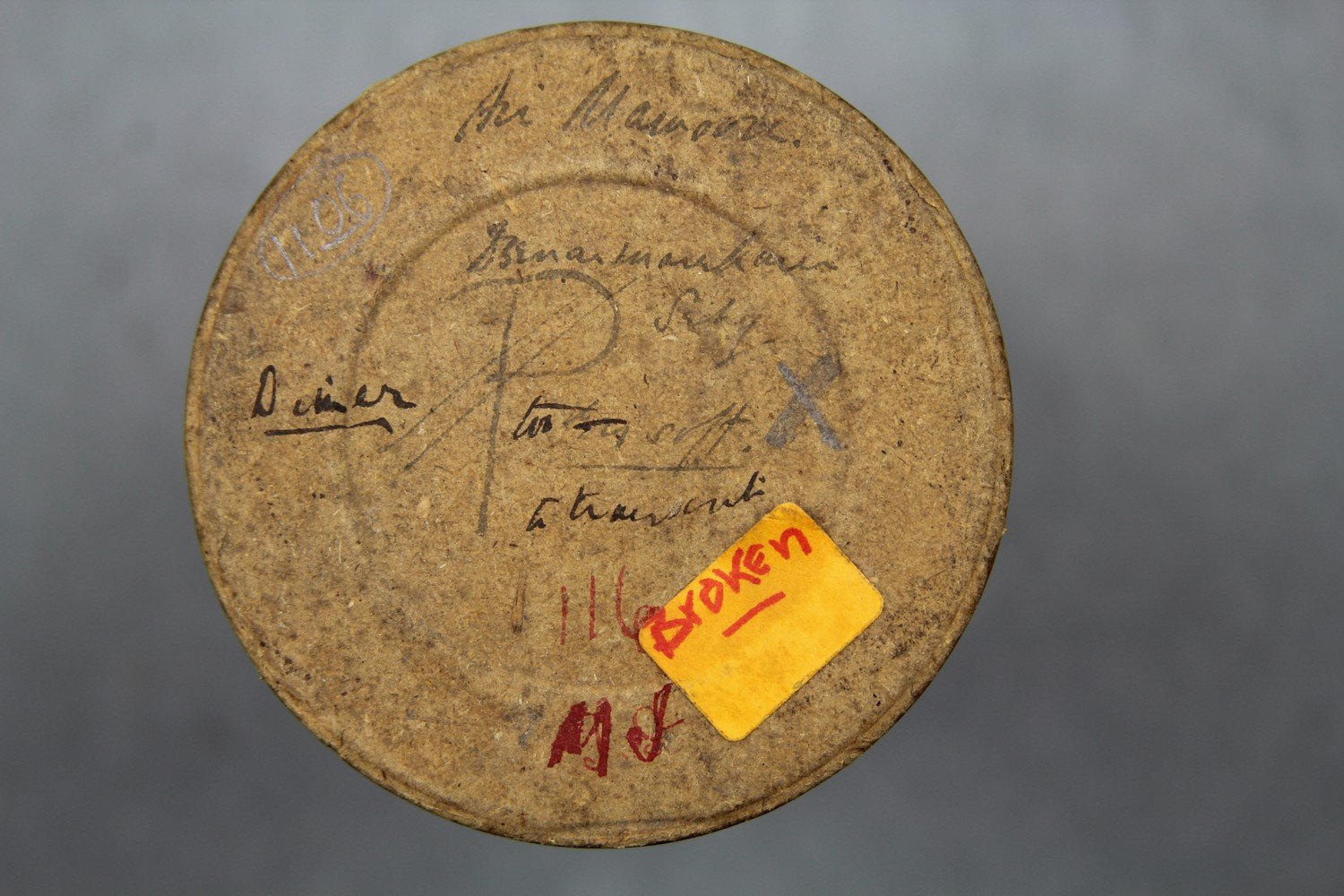 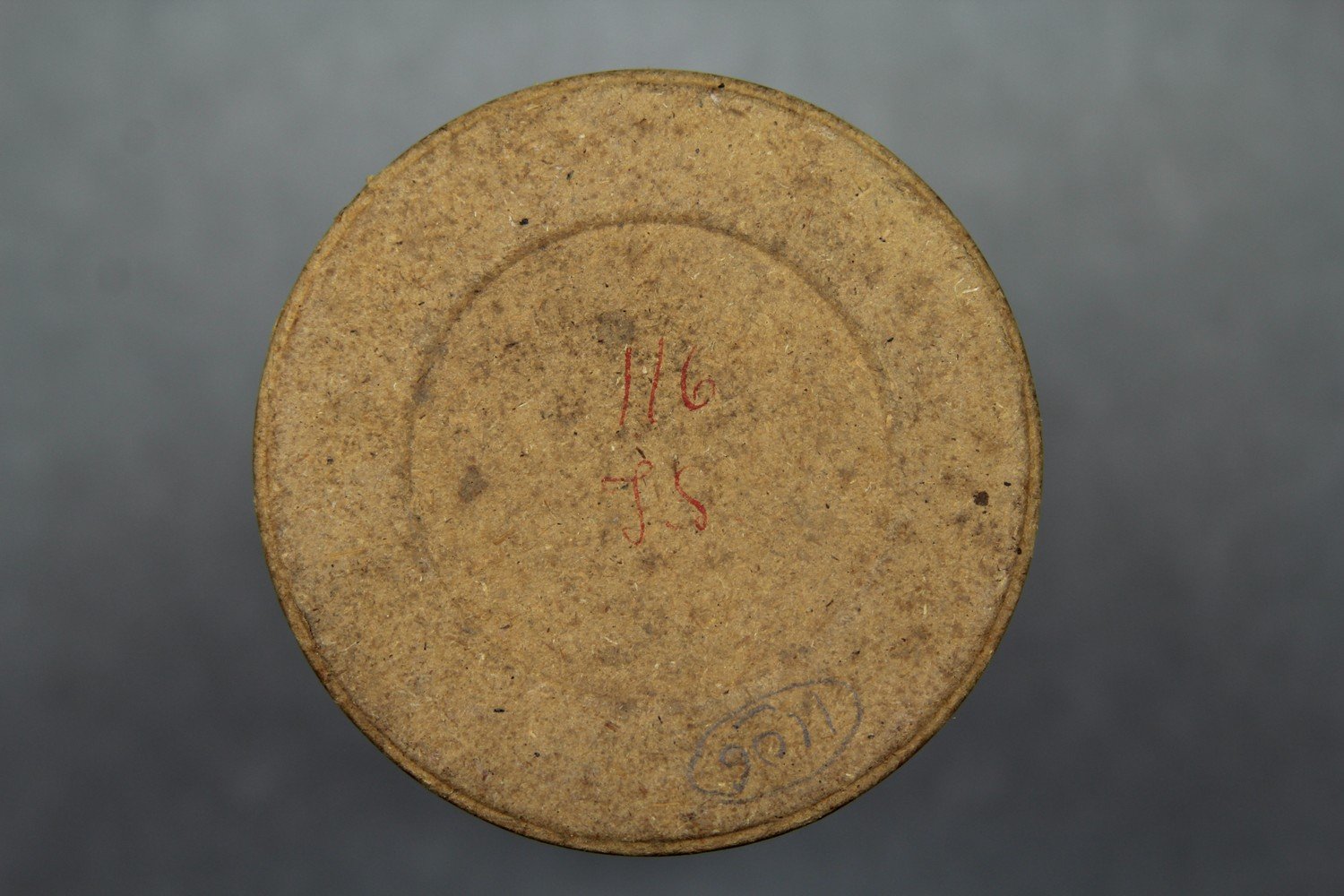     | |||||||||
| C80/1494 | [No title] | Ulai (singer, male) | Mer / Murray Island, Torres Strait Islands | 10 May 1898 – 24 August 1898 | Broken cylinder - unable to be digitised. | The recording date range assumes that Myers is indeed the recordist and corresponds to the dates of Myer's stay on Mer / Murray Island. | Field recordings | Myers, C. S. | 1898 Cambridge Anthropological Expedition to Torres Straits | Brown wax cylinder | Alfred Cort Haddon 1898 Expedition (Torres Strait and British New Guinea) Cylinder Collection | British Library | 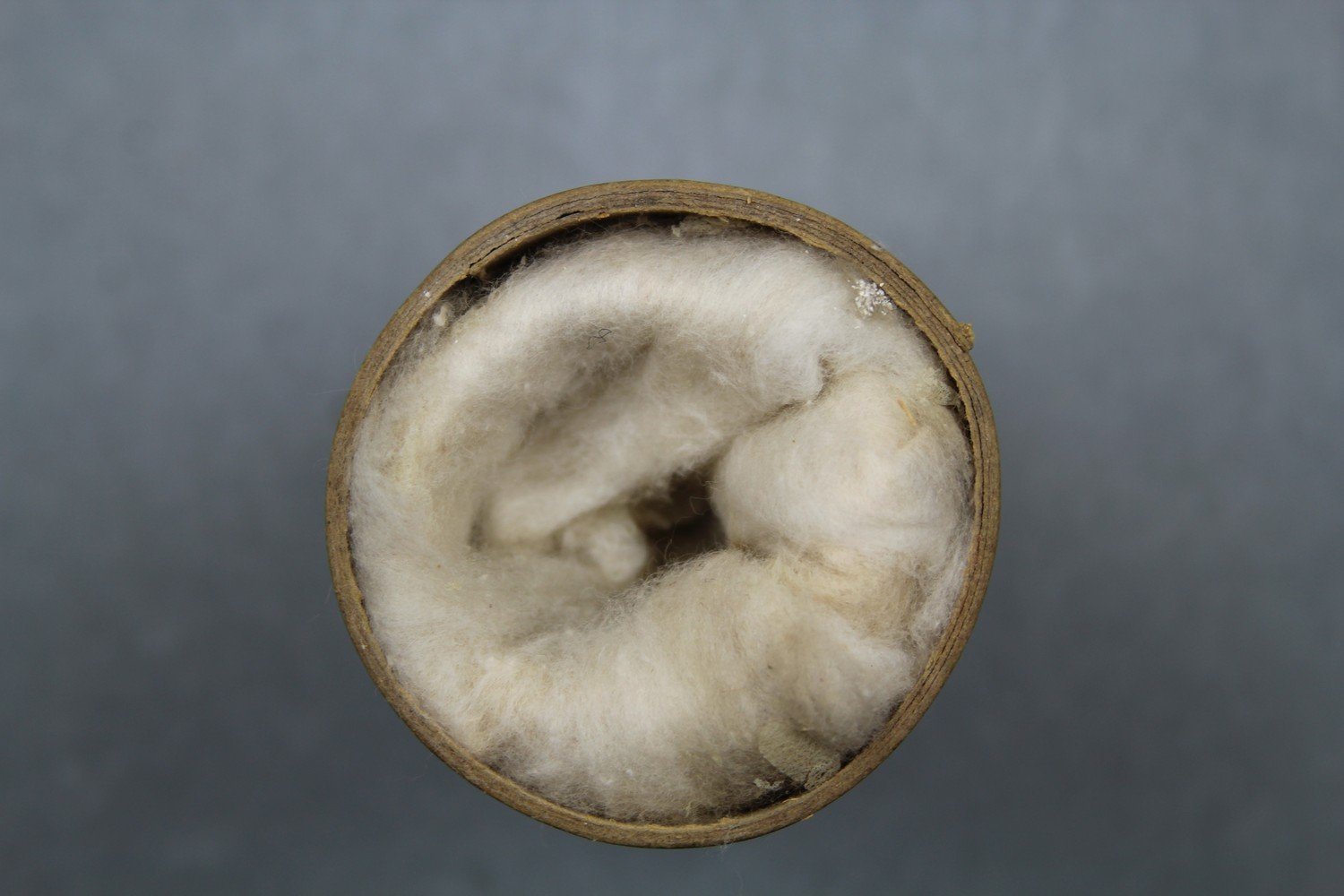 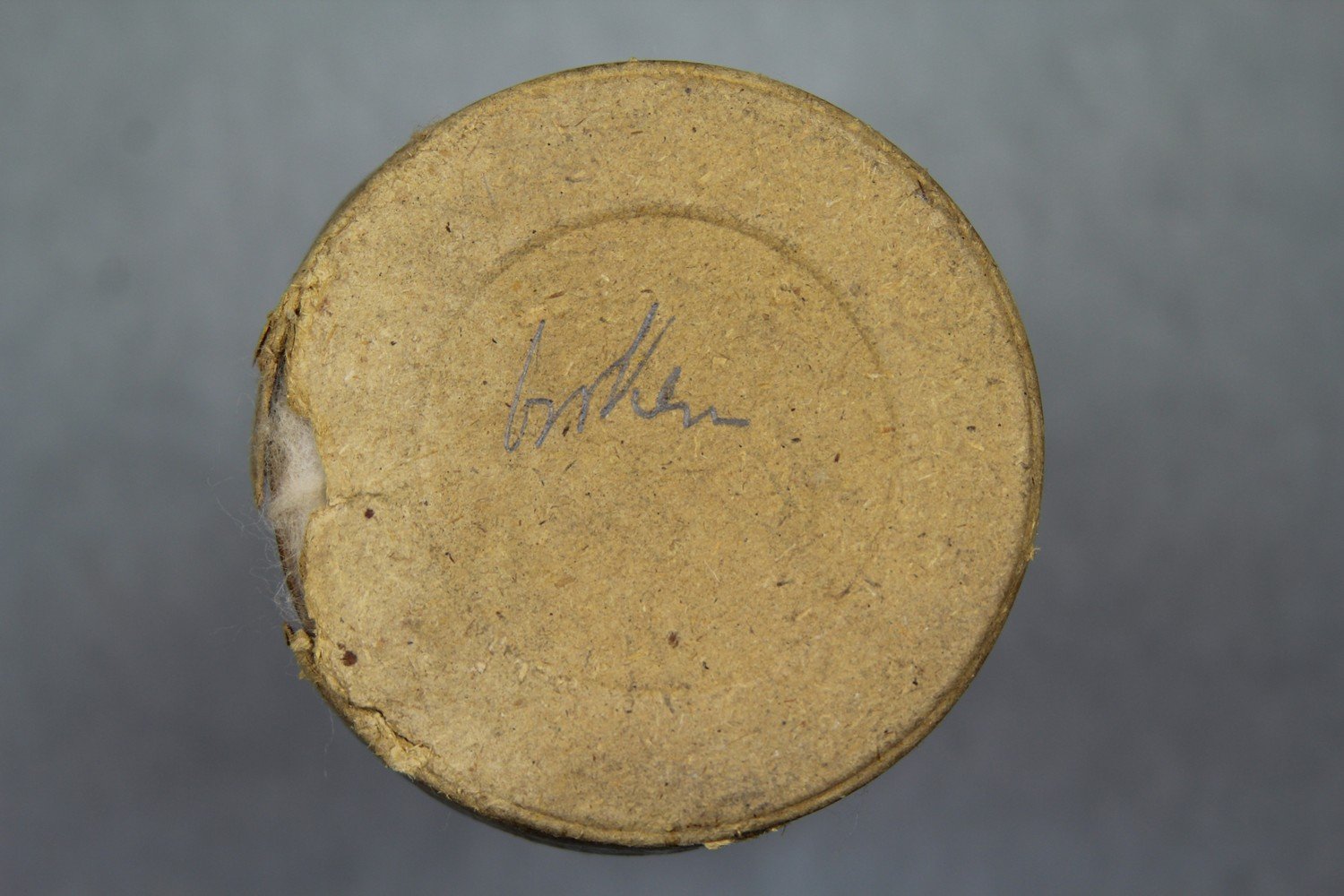     | |||||||||
| C108/381 | Ghoni Simbo [1] | Mbana (singer, male); unidentified (singer) | Simbo Island, Western Province, British Solomon Islands Protectorate | 14 May 1908 – 05 January 1909 | 1. Ref note. 2. Male vocal group. 3. Indecipherable announcement. 4. Unaccompanied male vocal group. This is probably goni, a traditional song or genre on Simbo. | Simbo culture, Solomon Islands | Reasonable quality recording but with weak signal and surface noise. | Simbo | Field recordings | Hocart, Arthur Maurice (1883-1939); Rivers, William Halse Rivers (1864-1922) | 2'34" | Percy Sladen Trust Expedition to the Solomon Islands, 1908 | Brown wax cylinder | WHR Rivers and Arthur M Hocart 1908 New Georgia Group, British Solomon Islands Protectorate Cylinder Collection | British Library | 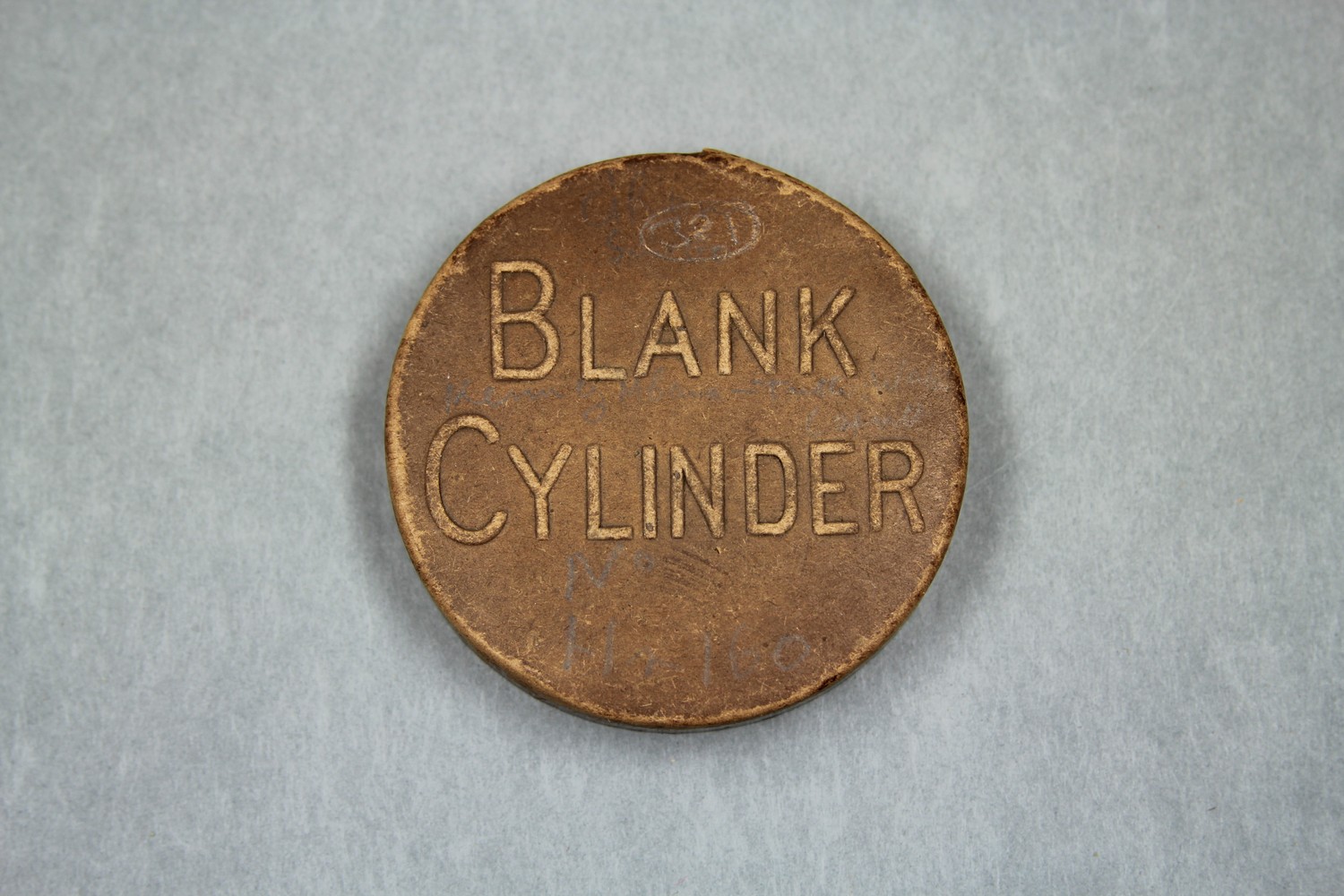 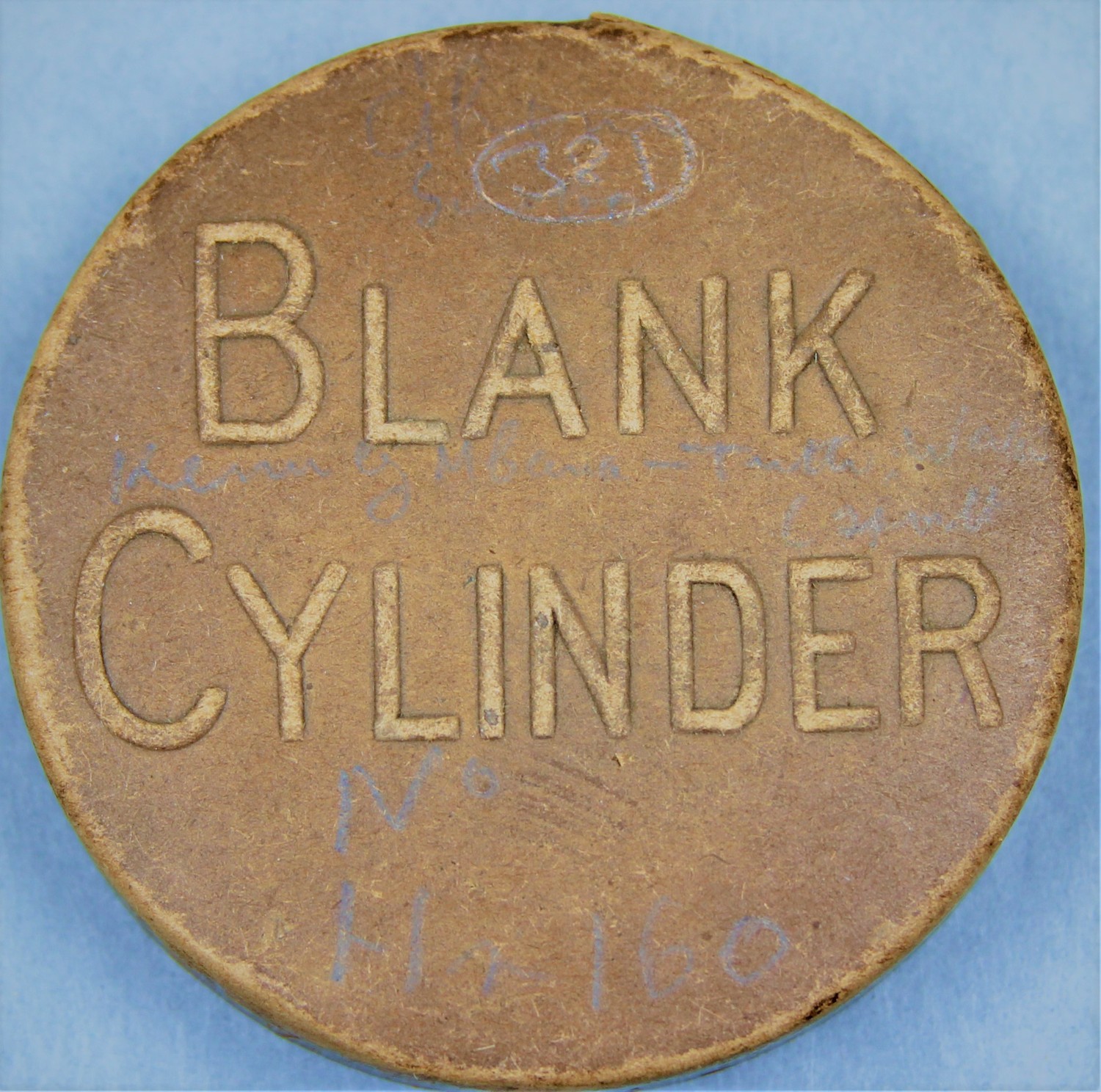 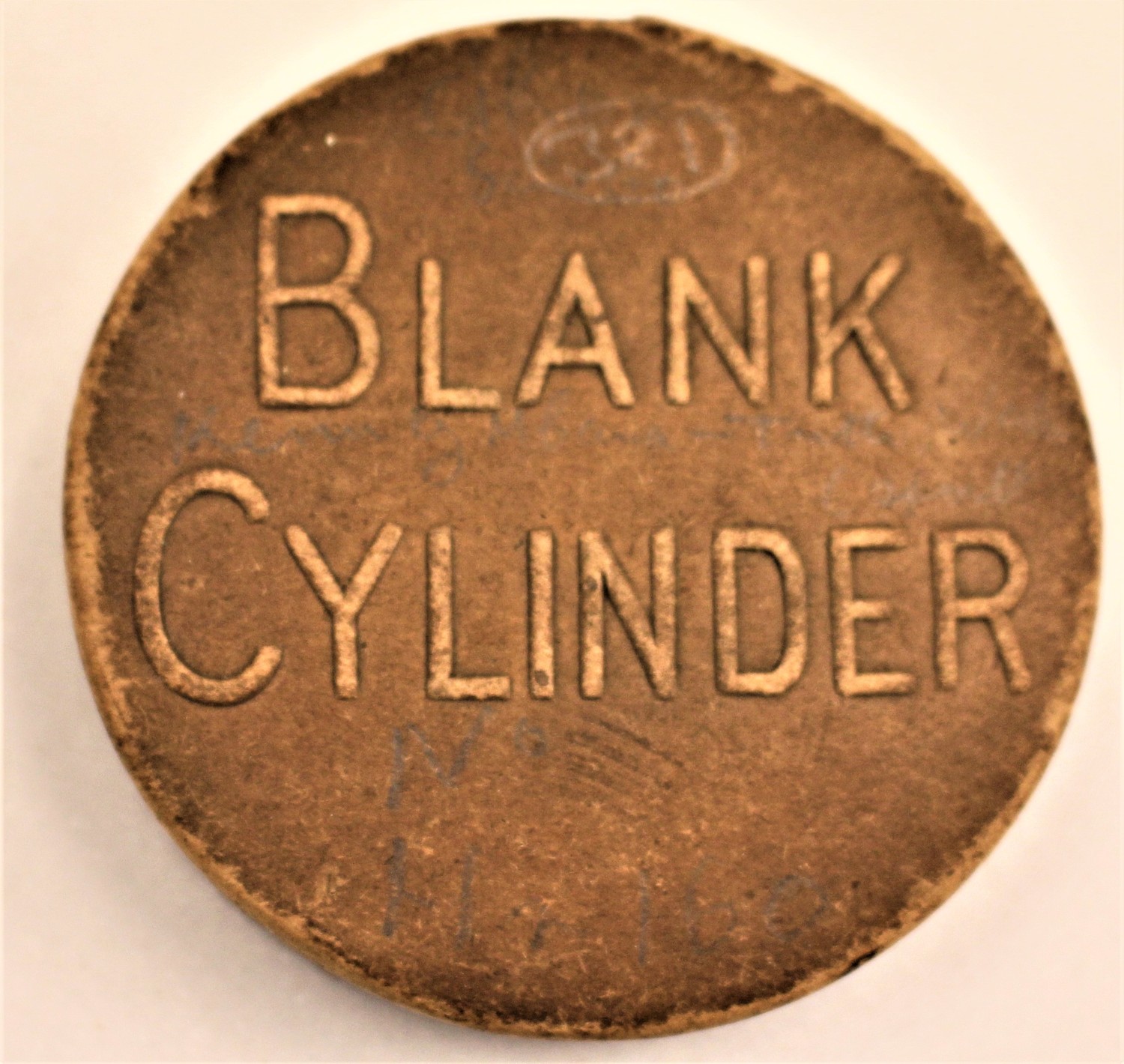 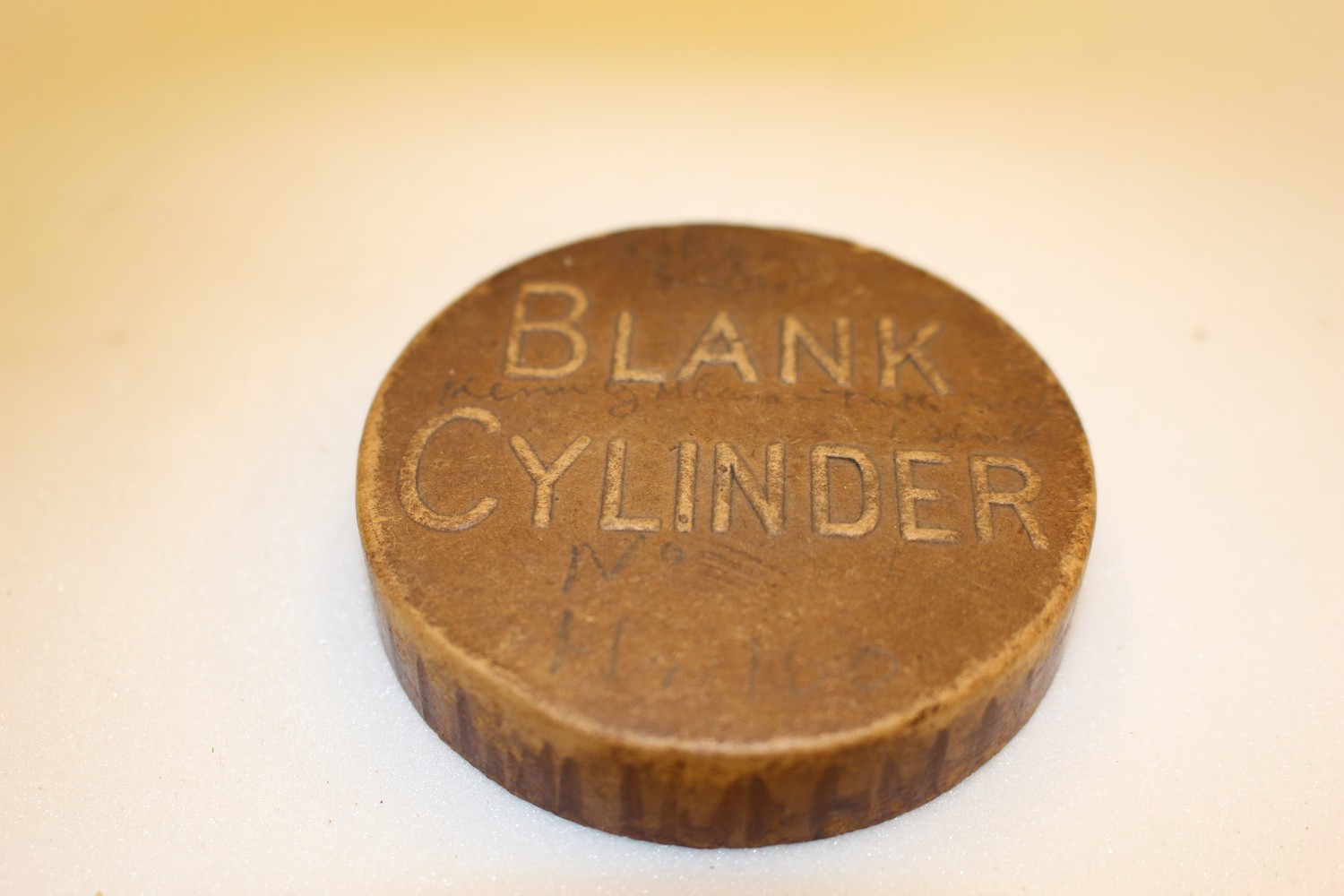   | Notes on this recording can be found in A.M. Hocart's undated manuscript 'Music' in MS-Papers-0060, Alexander Turnbull Library, Wellington, New Zealand. | |||||
| C108/382 | Ghoni Simbo [2] | Mbana (singer, male); Leoki (singer, male) | Simbo Island, Western Province, British Solomon Islands Protectorate | 14 May 1908 – 05 January 1909 | 1. Unaccompanied male vocal group. This is a goni song, a traditional song or genre on Simbo. | Simbo culture, Solomon Islands | Reasonable quality but short recording due to broken cylinder. | Simbo | Field recordings | Hocart, Arthur Maurice (1883-1939); Rivers, William Halse Rivers (1864-1922) | 1'25" | Percy Sladen Trust Expedition to the Solomon Islands, 1908 | Brown wax cylinder | WHR Rivers and Arthur M Hocart 1908 New Georgia Group, British Solomon Islands Protectorate Cylinder Collection | British Library | 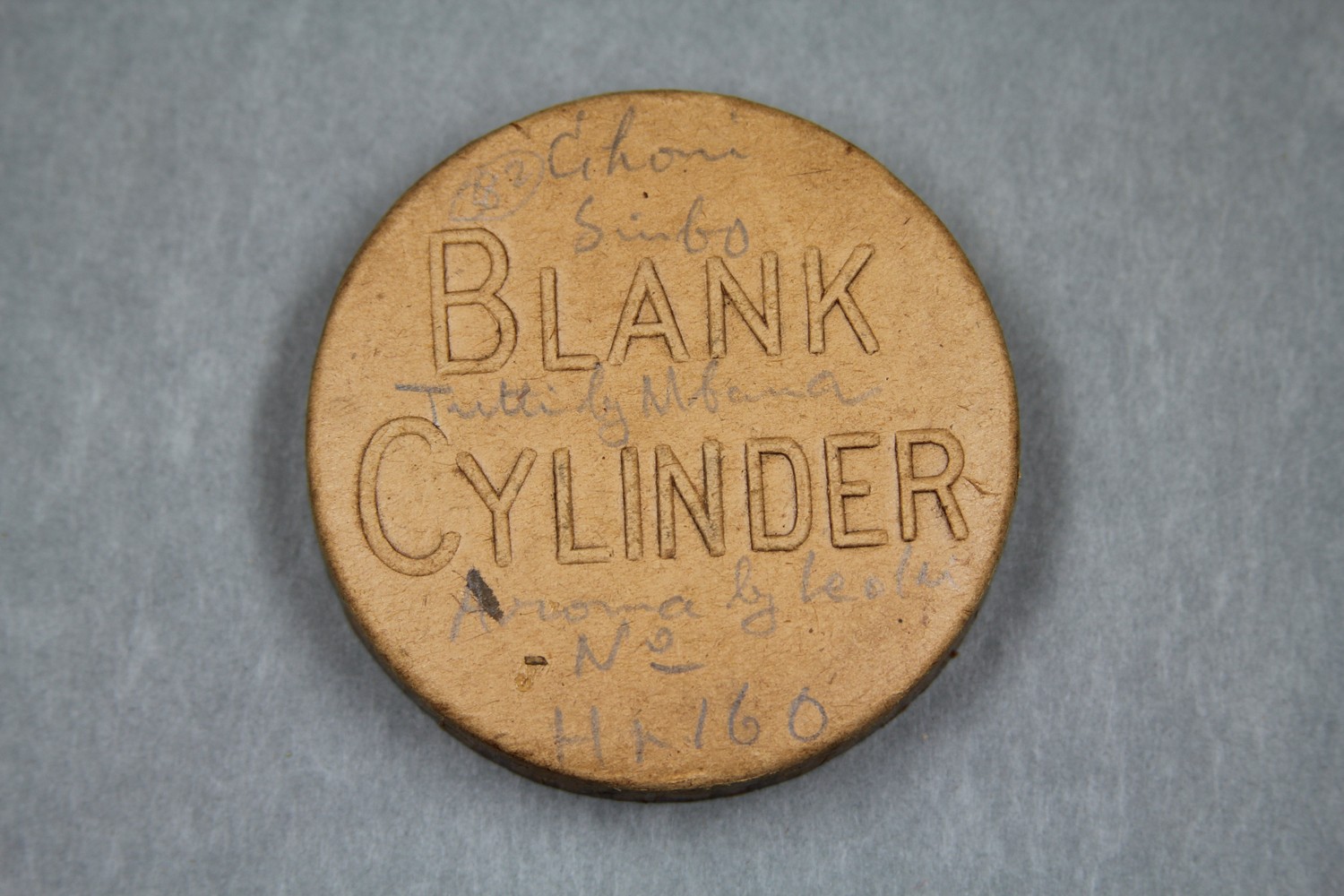 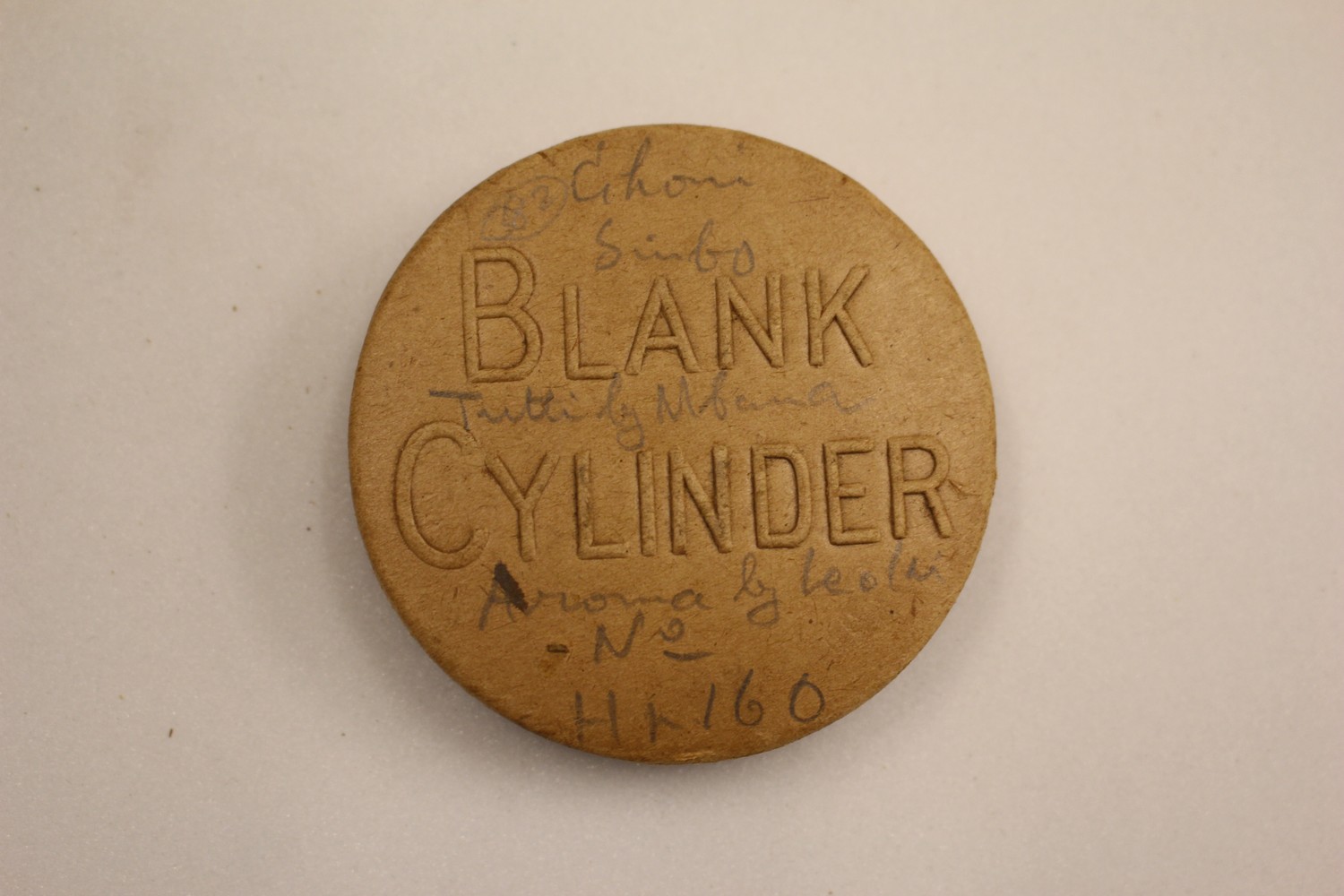 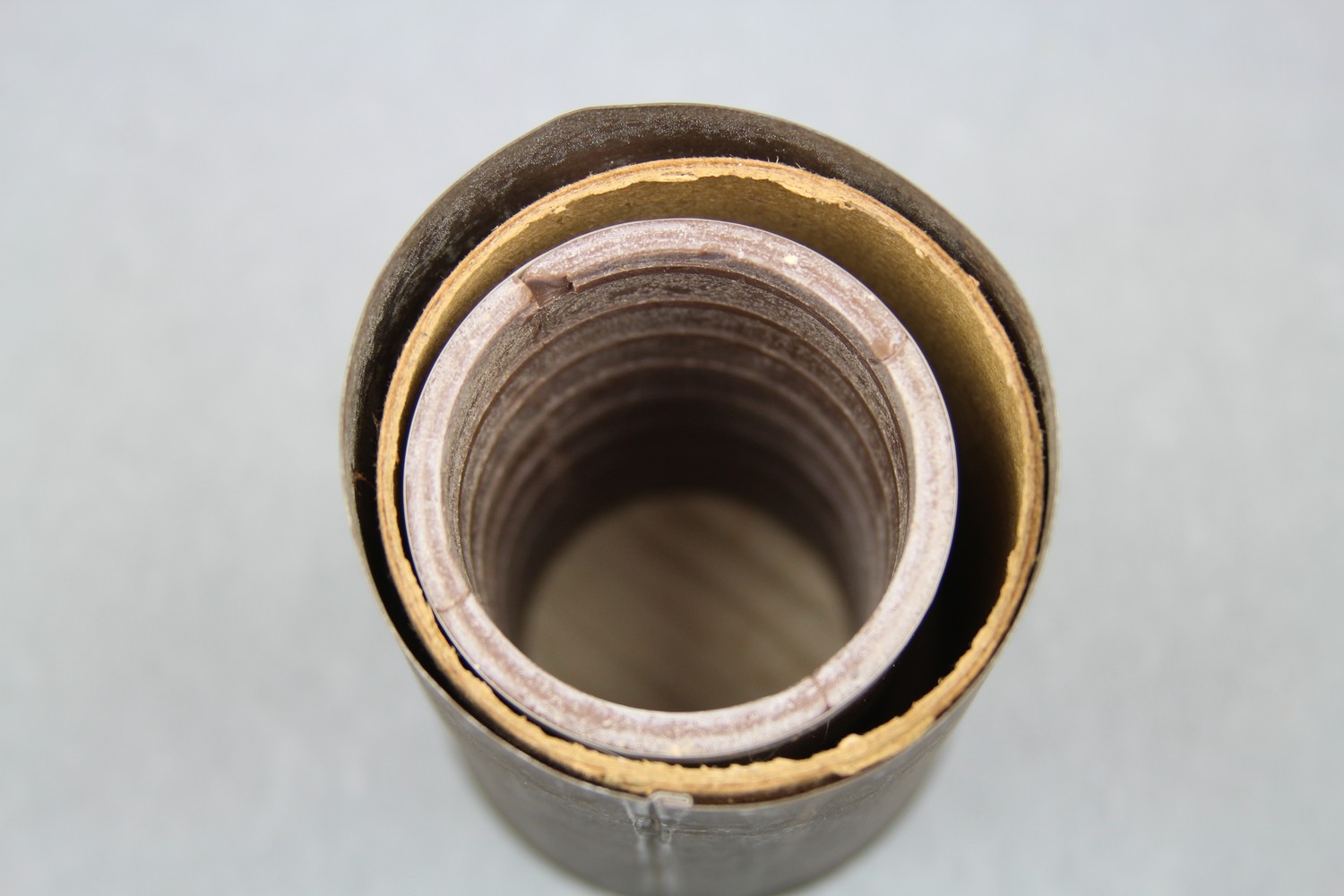    | Notes on this recording can be found in A.M. Hocart's undated manuscript 'Music' in MS-Papers-0060, Alexander Turnbull Library, Wellington, New Zealand. | |||||
| C108/771 | Mbaruku [2] | Munjoro (flute, male) | Ndovele, Vella Lavella, Western Province, British Solomon Islands Protectorate | 01 September 1908 – 30 September 1908 | 1. Ref note. 2. Flute duet. This is a flute duet known as "Mbaruku" - the pigeon | Ndovele culture, Solomon Islands | Poor quality recording with weak signal and surface noise. | Field recordings | Hocart, Arthur Maurice (1883-1939); Rivers, William Halse Rivers (1864-1922) | 2'14" | Percy Sladen Trust Expedition to the Solomon Islands, 1908 | Black wax cylinder | WHR Rivers and Arthur M Hocart 1908 New Georgia Group, British Solomon Islands Protectorate Cylinder Collection | British Library | 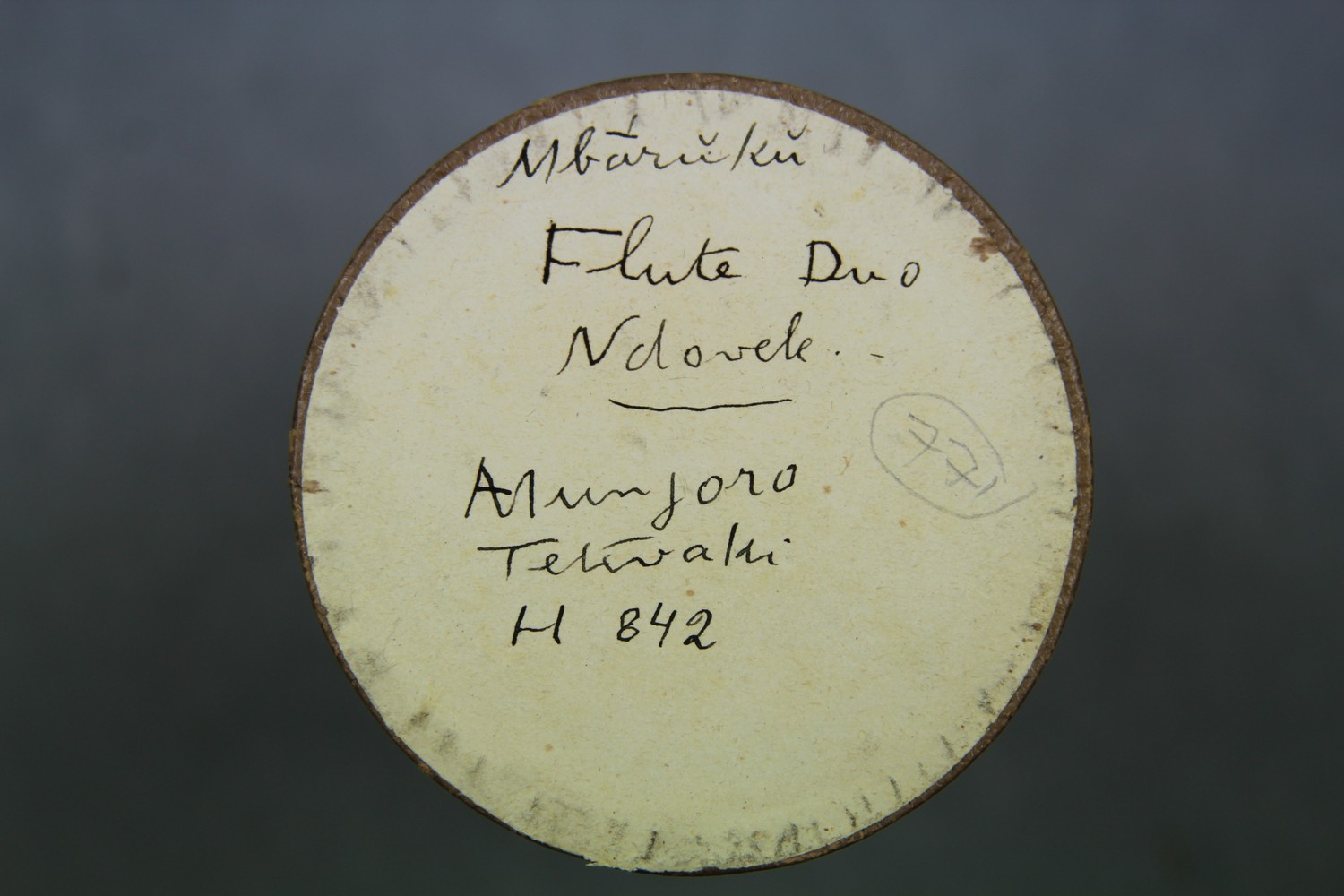 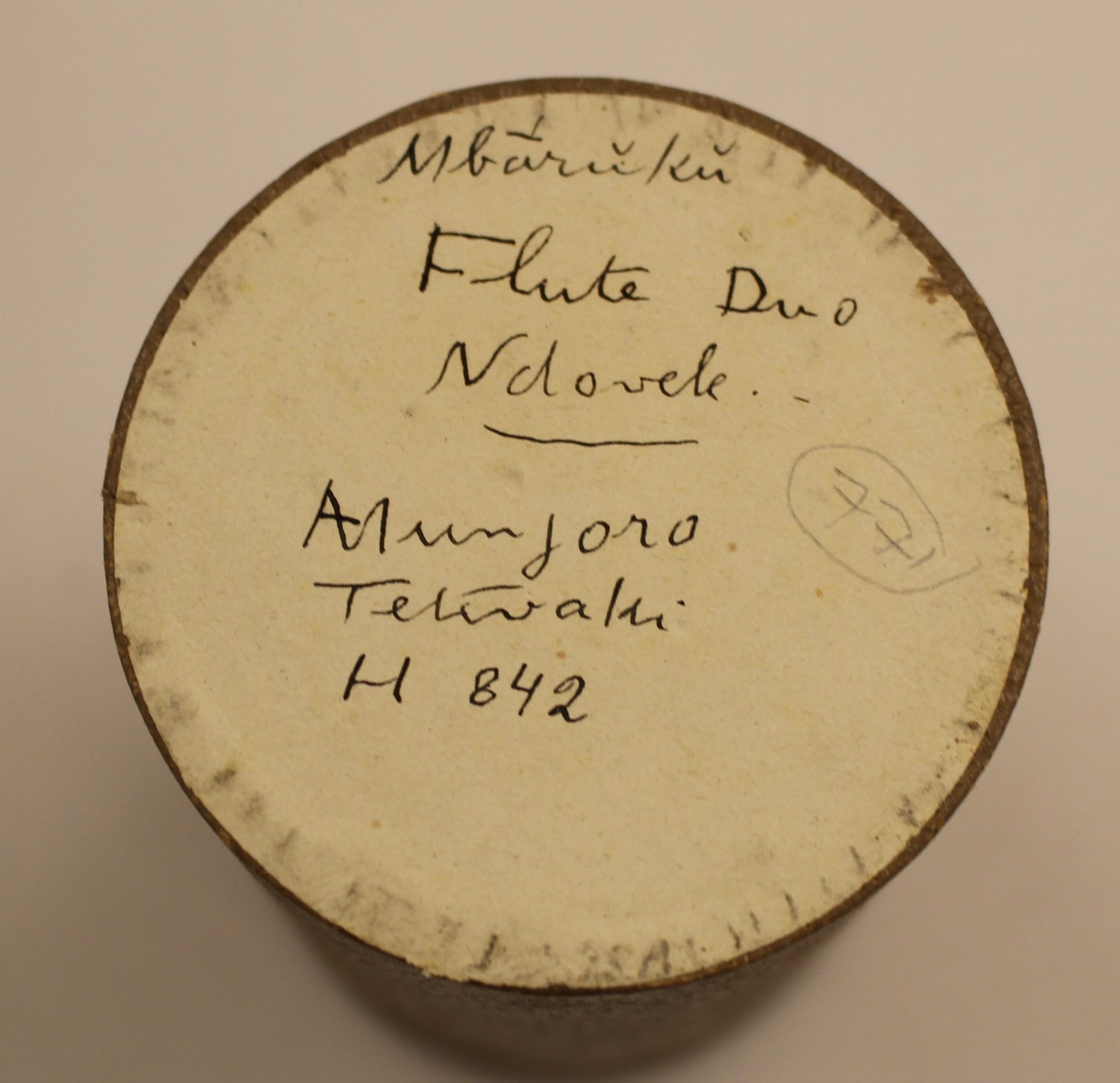 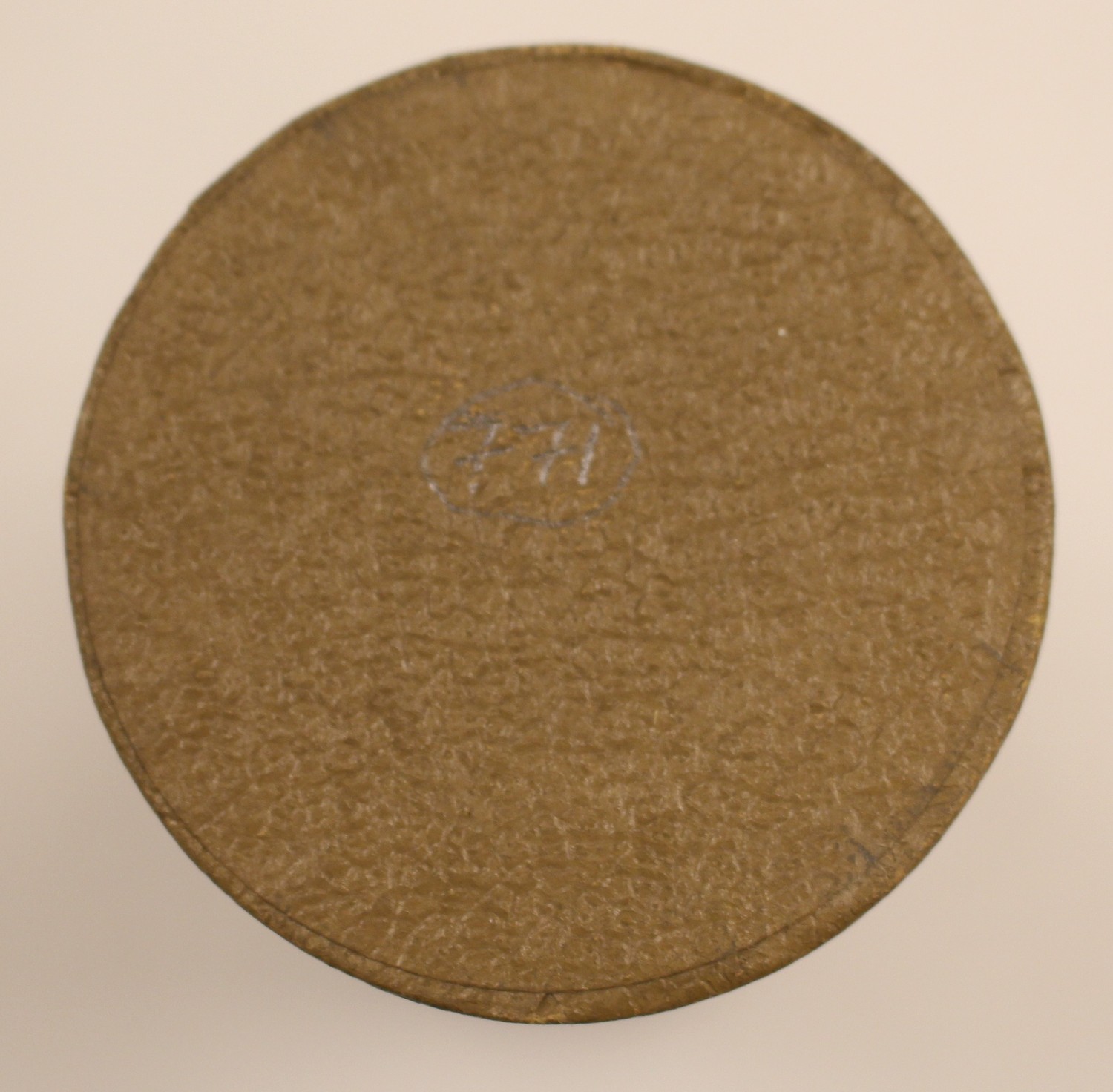 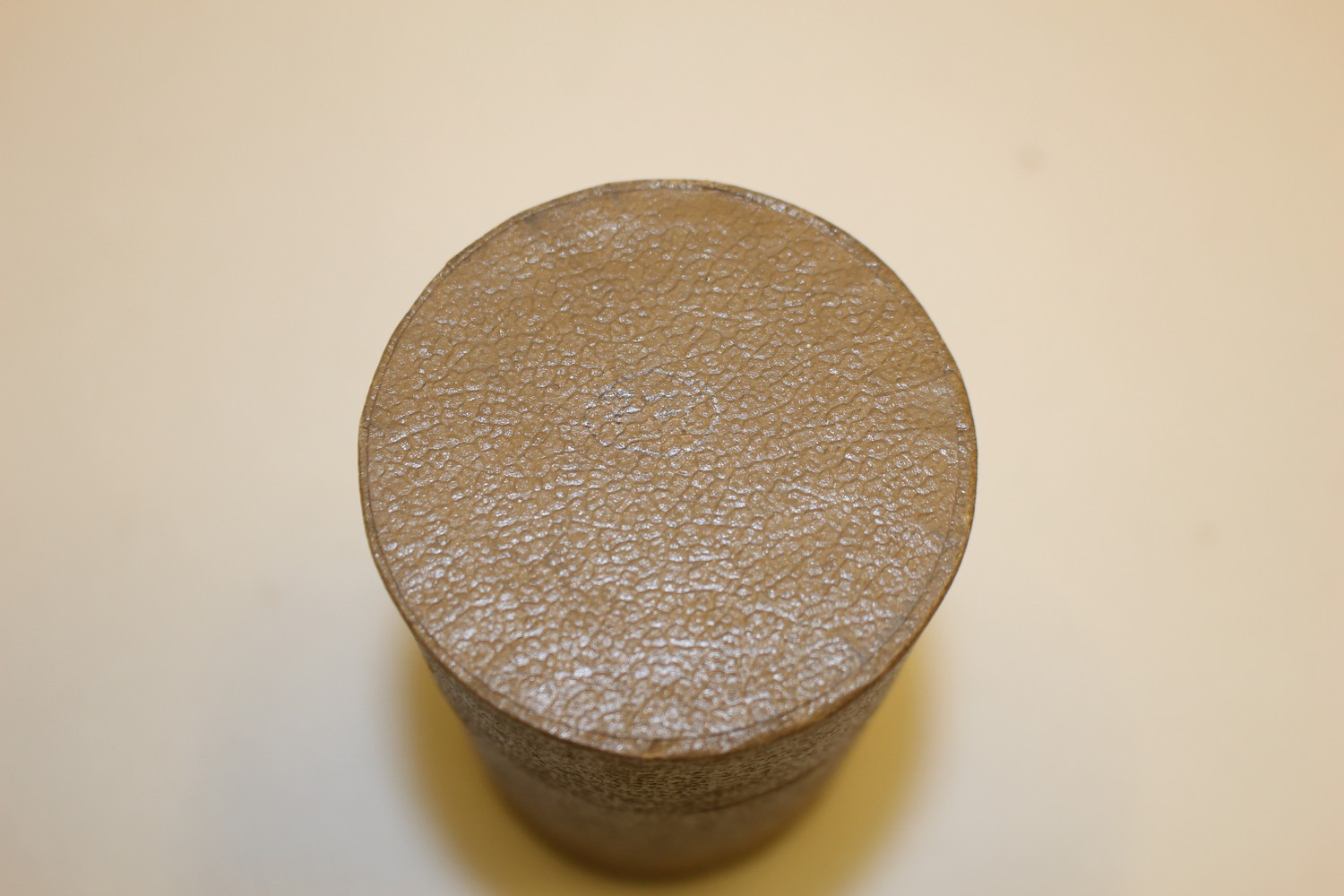   | Notes on this recording can be found in A.M. Hocart's Fieldnotes (pg 842) and in his undated manuscript 'Music' in MS-Papers-0060, Alexander Turnbull Library, Wellington, New Zealand | ||||||
| C108/772 | Sirumbai | Munjoro (singer, male) | Ndovele, Vella Lavella, Western Province, British Solomon Islands Protectorate | 01 September 1908 – 30 September 1908 | 1. Ref tone. 2. Male vocal solo. 3. Announcement: "Sirumbai, Ndowele". This song is titled "Sirumbai" and is from the village of Sirumbai. | Ndovele culture, Solomon Islands | Poor quality recording with weak signal and surface noise. | Field recordings | Hocart, Arthur Maurice (1883-1939); Rivers, William Halse Rivers (1864-1922) | 2'27" | Percy Sladen Trust Expedition to the Solomon Islands, 1908 | Black wax cylinder | WHR Rivers and Arthur M Hocart 1908 New Georgia Group, British Solomon Islands Protectorate Cylinder Collection | British Library | 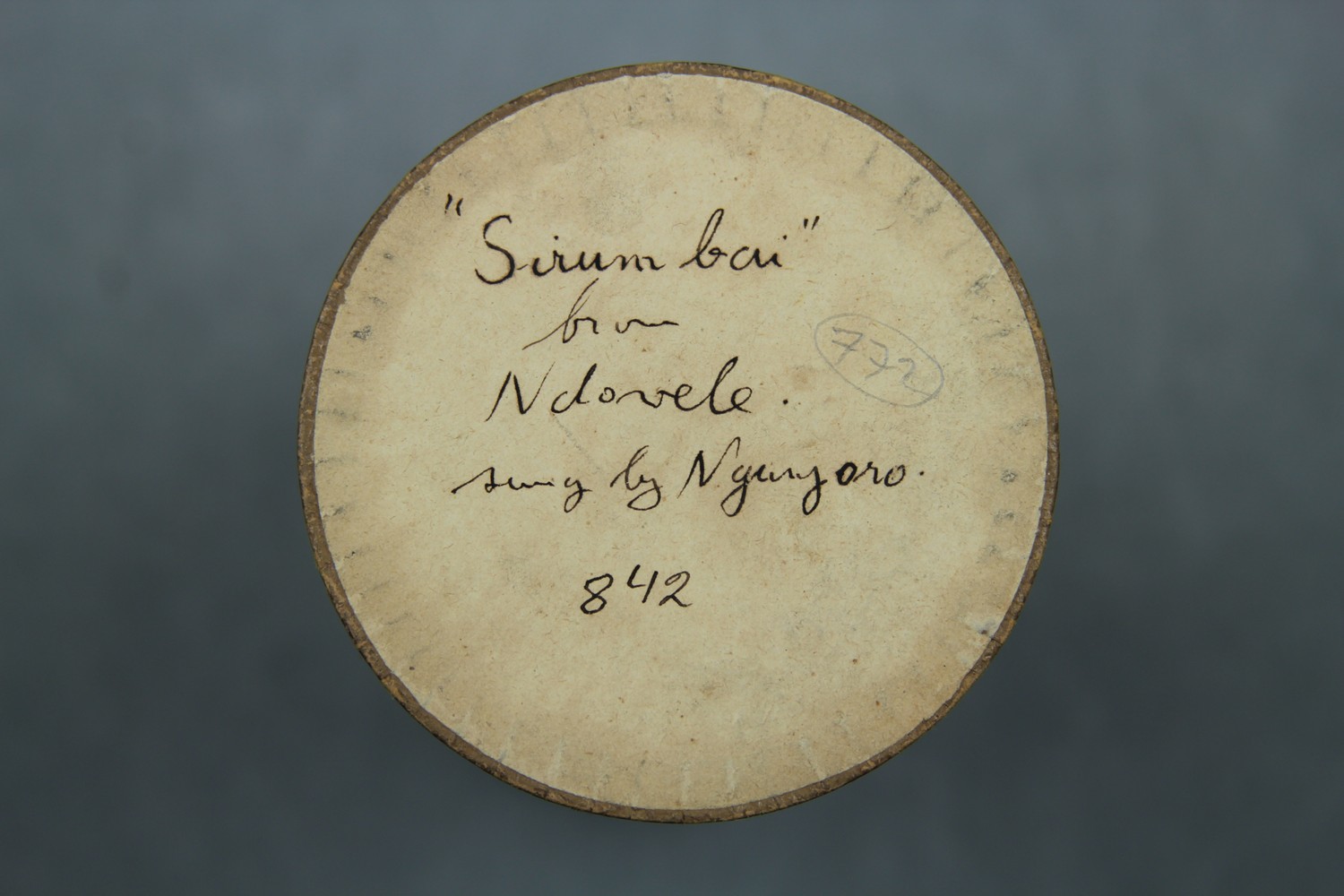 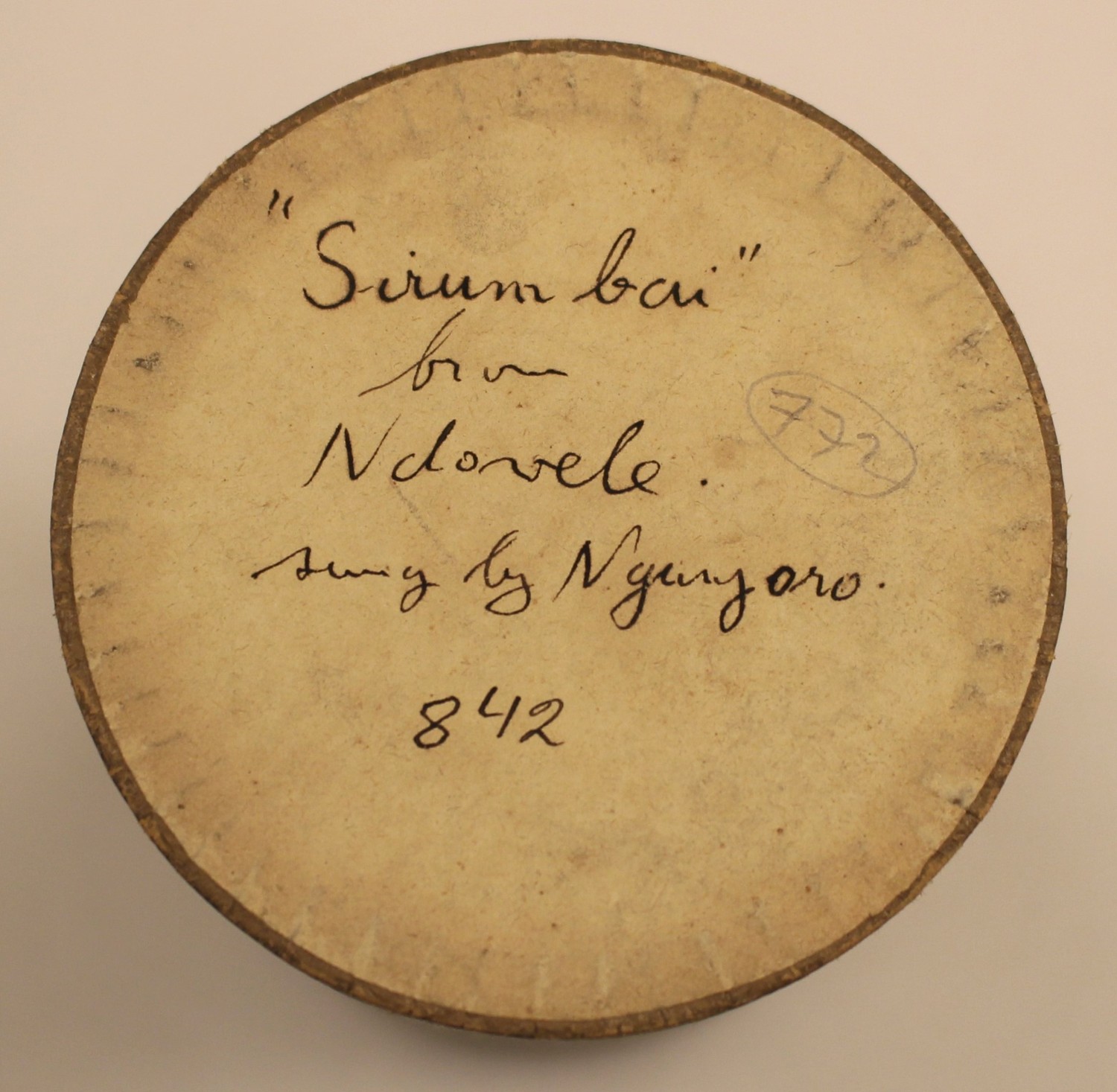     | Notes on this recording can be found in A.M. Hocart's Fieldnotes (pg 842) and in his undated manuscript 'Music' in MS-Papers-0060, Alexander Turnbull Library, Wellington, New Zealand | ||||||
| C108/773 | Wa Take and Wurawura | Unidentified (chorus) | Simbo Island, Western Province, British Solomon Islands Protectorate | 14 May 1908 – 05 January 1909 | 1. Ref note. 2. Announcement: "Wa Take[?]". 3. Unaccompanied choir singing in harmony. 4. Ref note. 5. Announcement: "Wurawura". 6. Choir. | Simbo culture, Solomon Islands | Reasonable quality recording but with heavy surface noise. | Simbo | Field recordings | Hocart, Arthur Maurice (1883-1939); Rivers, William Halse Rivers (1864-1922) | 2'26" | Percy Sladen Trust Expedition to the Solomon Islands, 1908 | Black wax cylinder | WHR Rivers and Arthur M Hocart 1908 New Georgia Group, British Solomon Islands Protectorate Cylinder Collection | British Library | 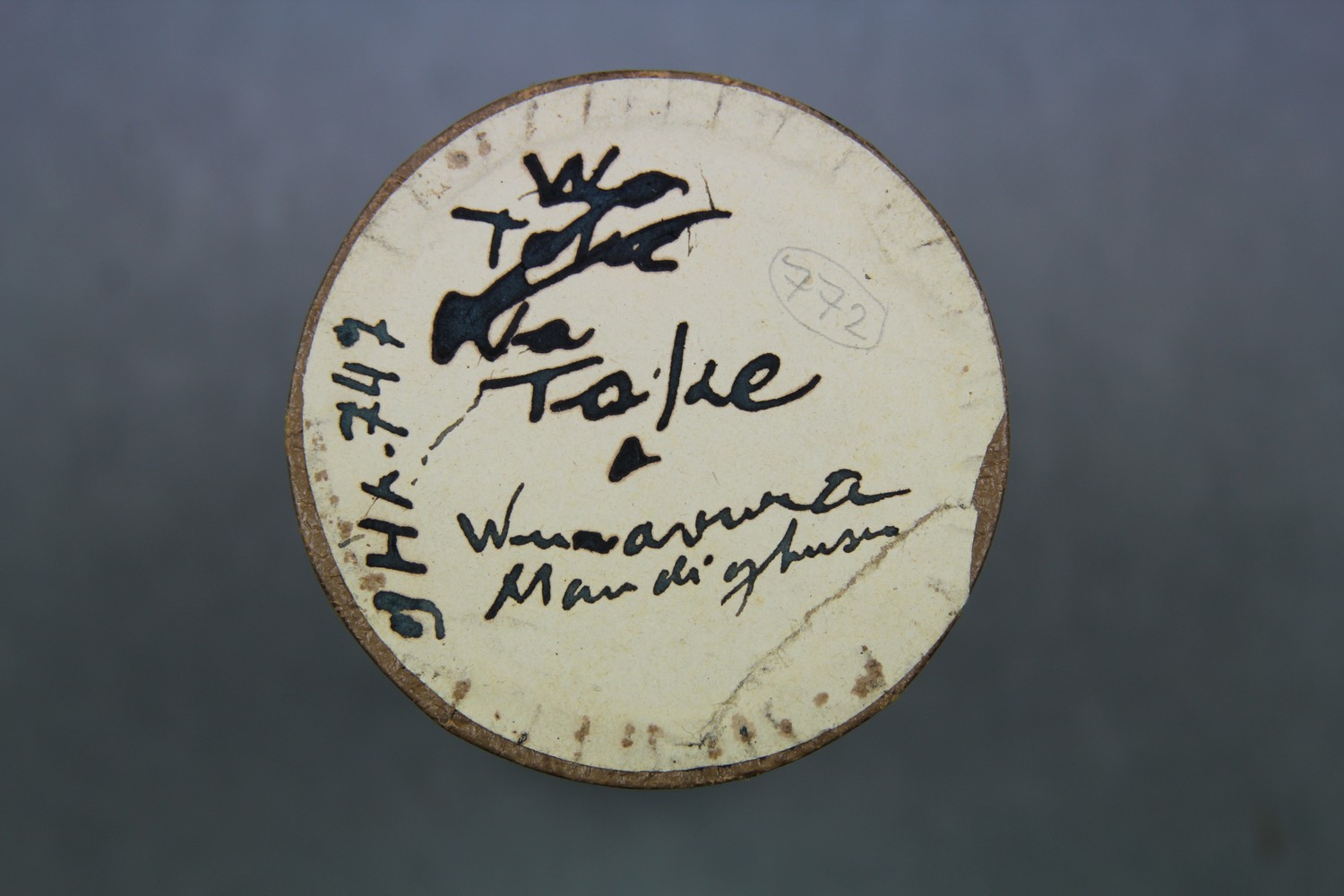 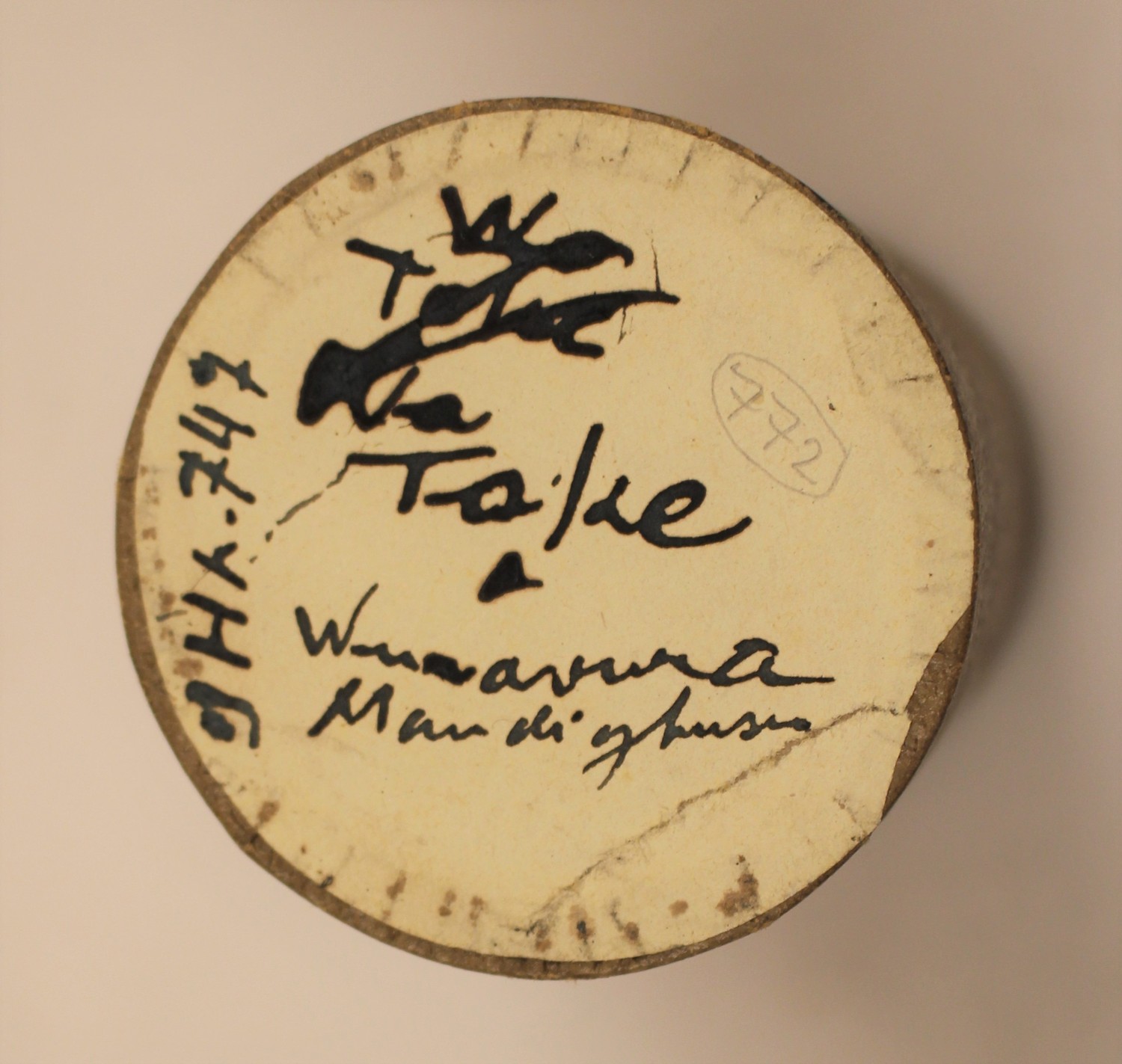 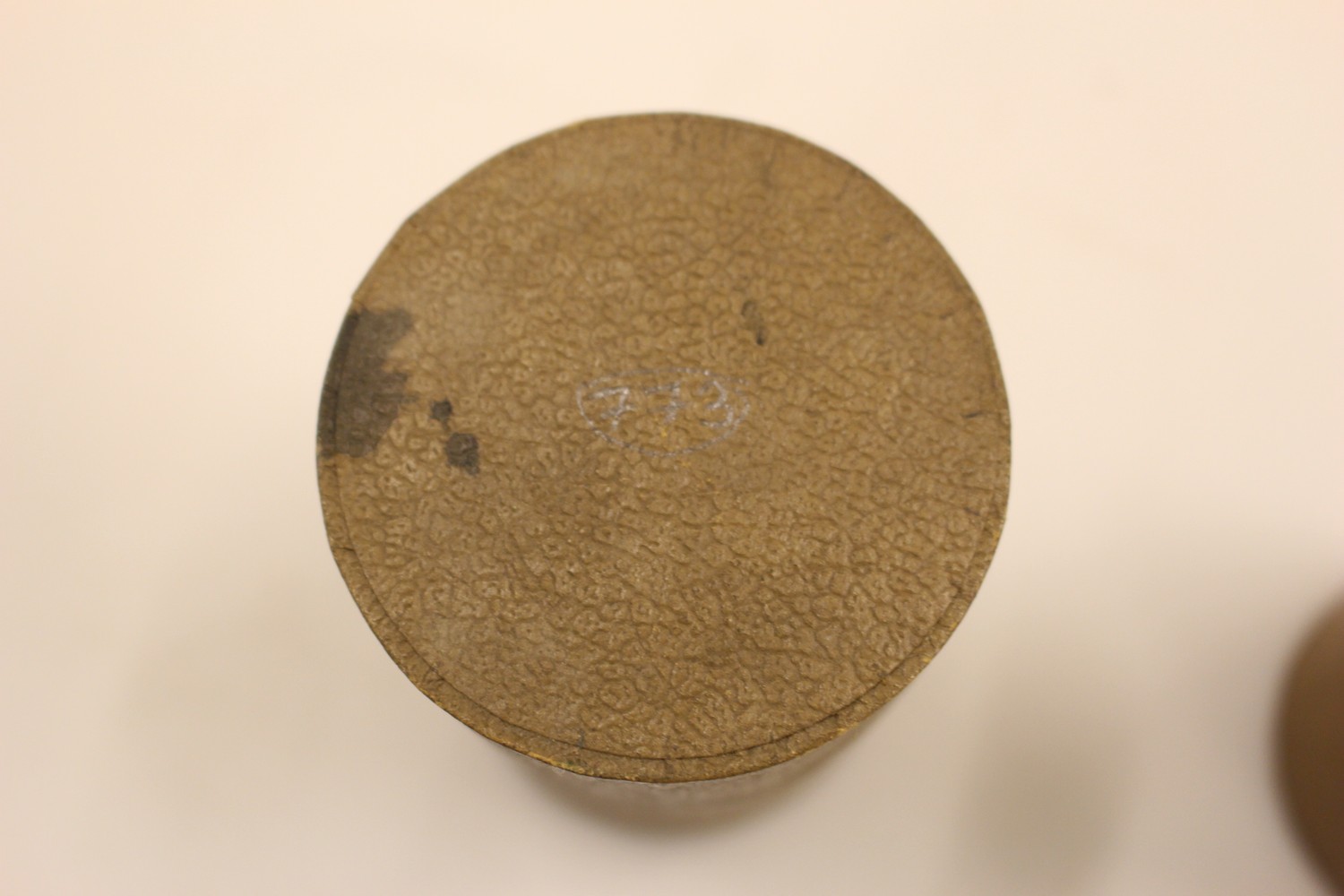    | Notes on this recording can be found in A.M. Hocart's undated manuscript 'Music' in MS-Papers-0060, Alexander Turnbull Library, Wellington, New Zealand. | |||||
| C108/770 | Mbaruku [1] | Unidentified | The contents of this cylinder do not relate to the description on its box, probably due to an accidental mix-up. | Percy Sladen Trust Expedition to the Solomon Islands, 1908 | Black wax cylinder | WHR Rivers and Arthur M Hocart 1908 New Georgia Group, British Solomon Islands Protectorate Cylinder Collection | British Library | 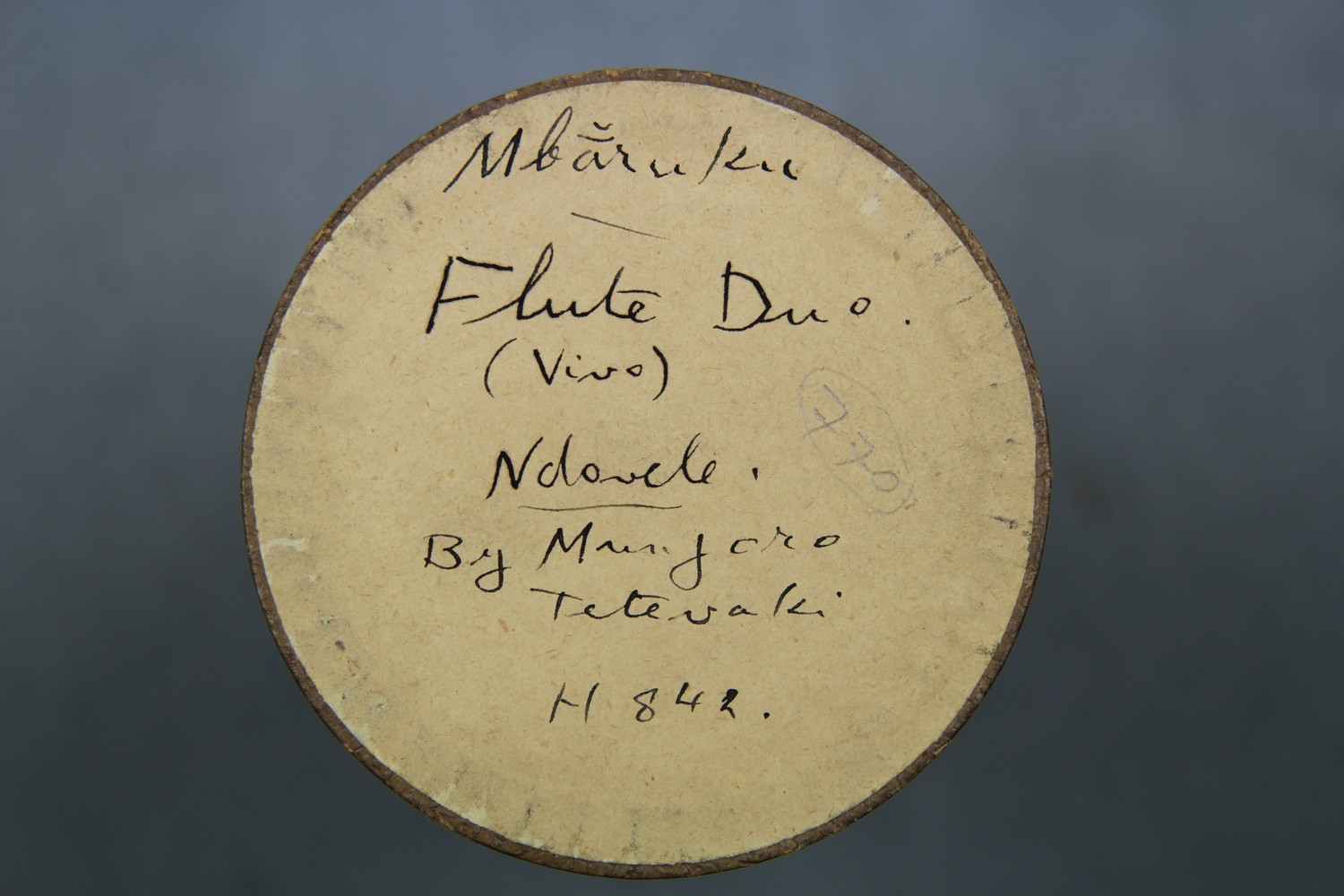 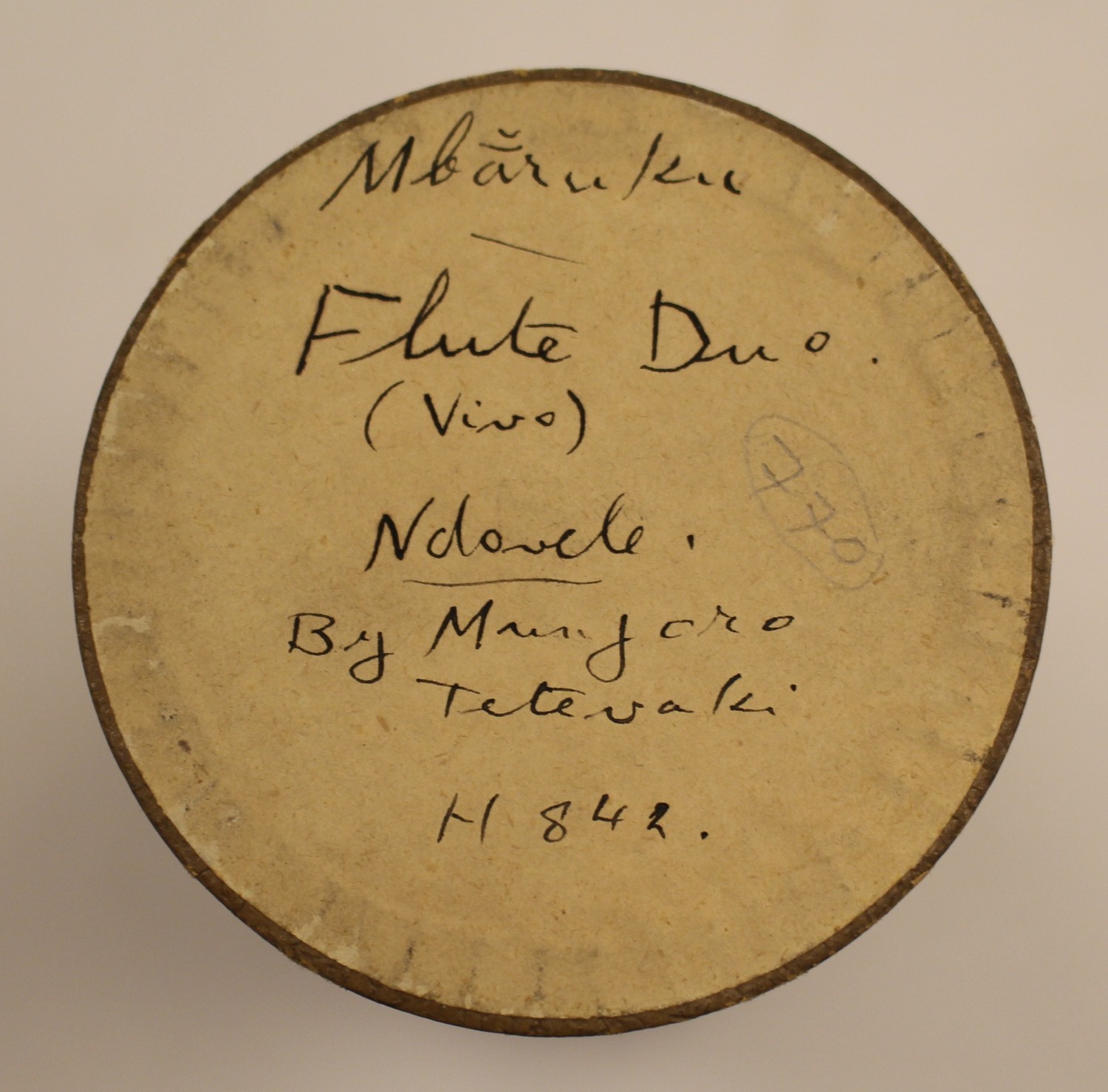 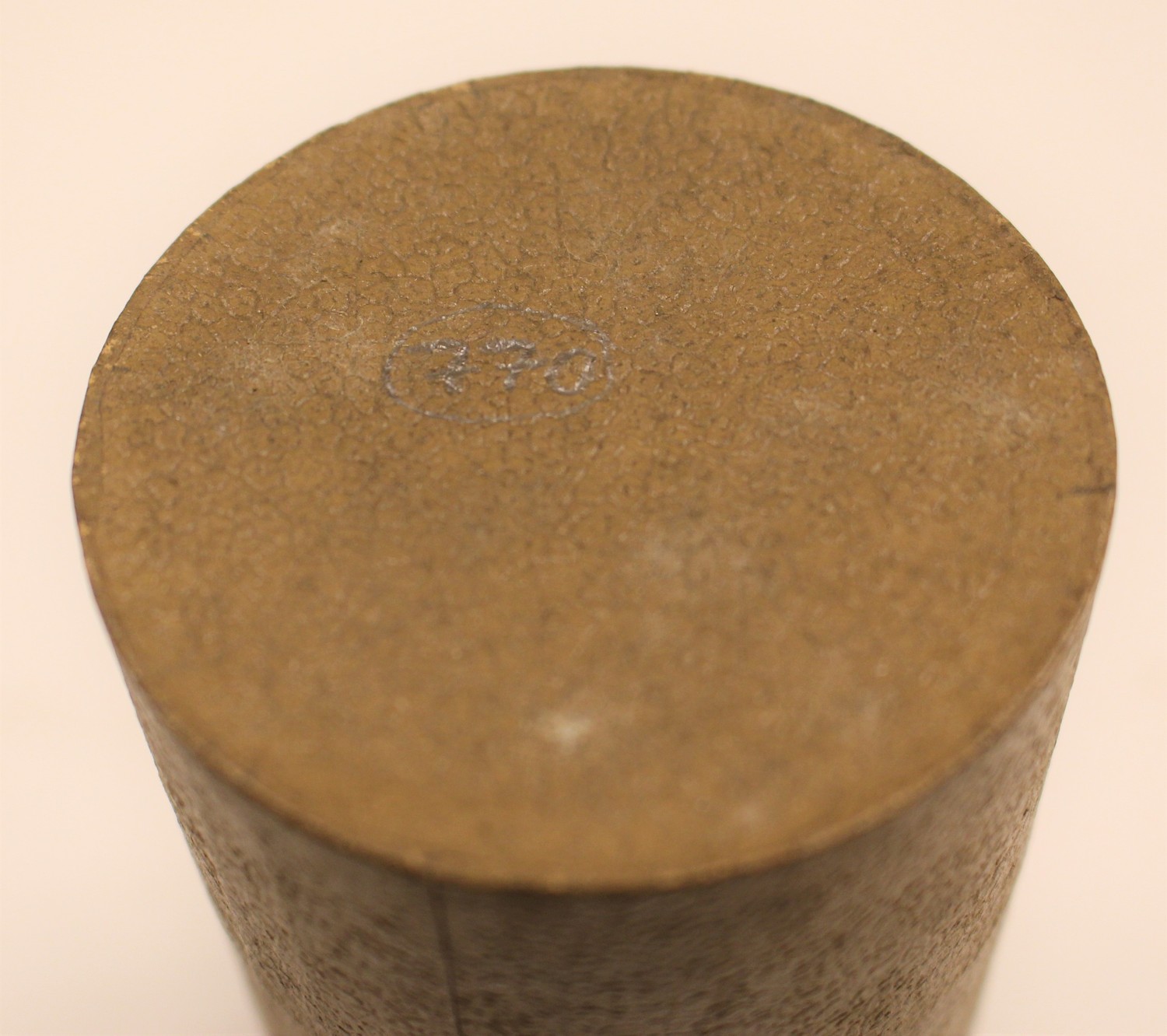 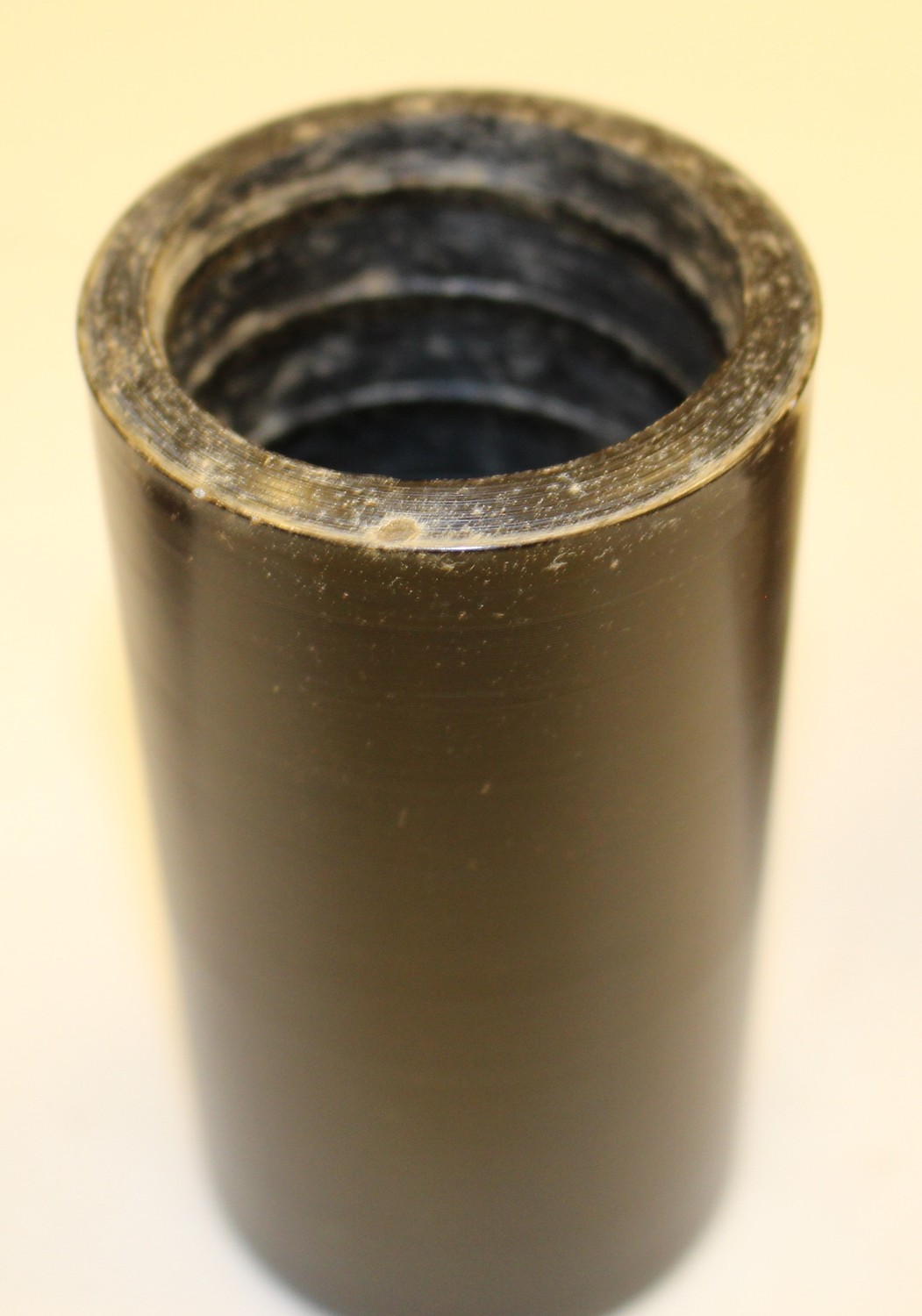   | ||||||||||||||
| C108/376 | No 1. Ranongga | Unidentified (aerophones) | Simbo Island, Western Province, British Solomon Islands Protectorate | 14 May 1908 – 13 June 1908 | 1. Aerophones. This is probably a song from Ranongga. | Ranongga culture, Solomon Islands | Reasonable quality recording but with surface noise due to cracked cylinder. | Field recordings | Rivers, William Halse Rivers (1864-1922); Hocart, Arthur Maurice, (1883–1939) | 2'06" | Percy Sladen Trust Expedition to the Solomon Islands, 1908 | Brown wax cylinder | WHR Rivers and Arthur M Hocart 1908 New Georgia Group, British Solomon Islands Protectorate Cylinder Collection | British Library | 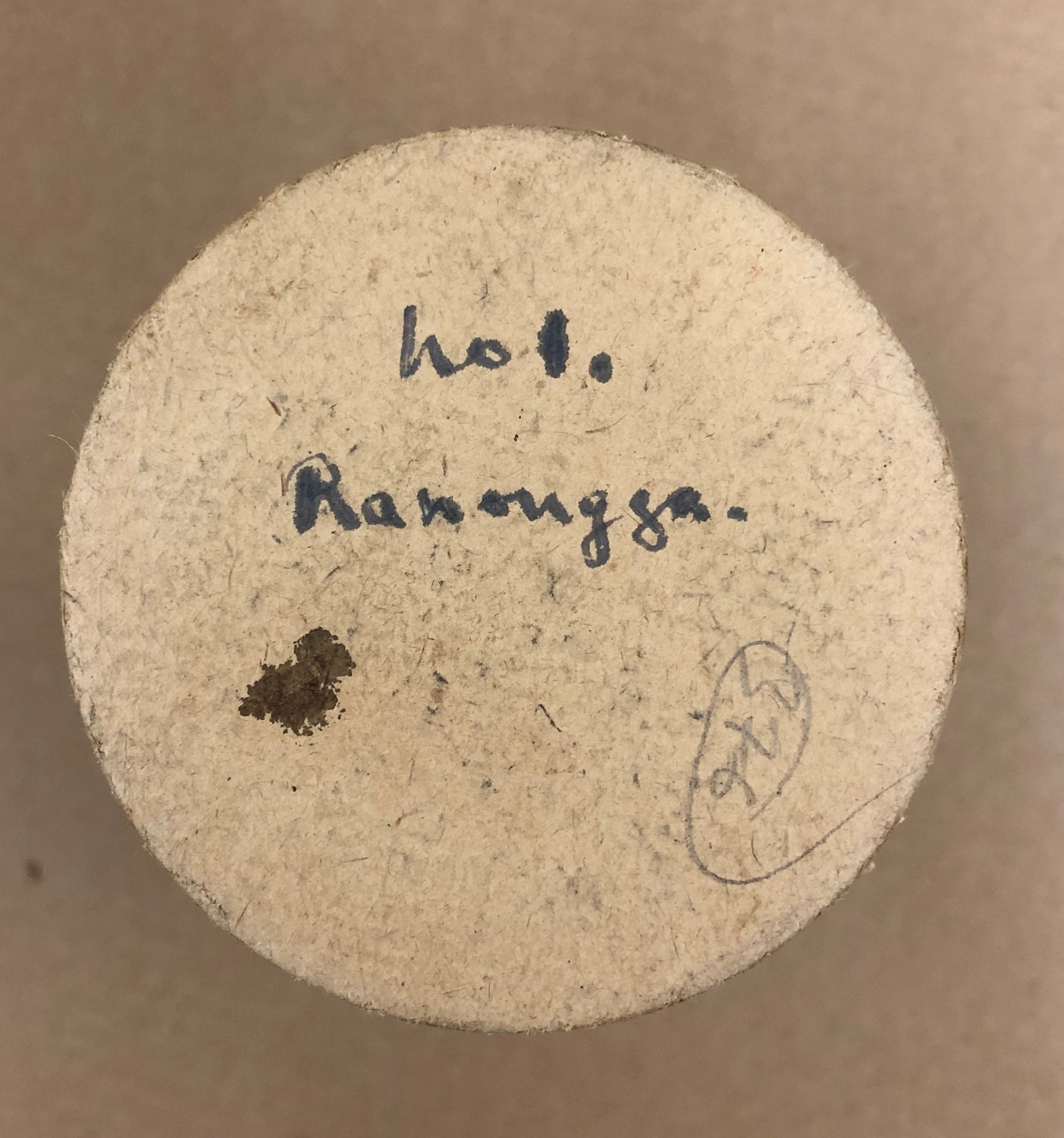  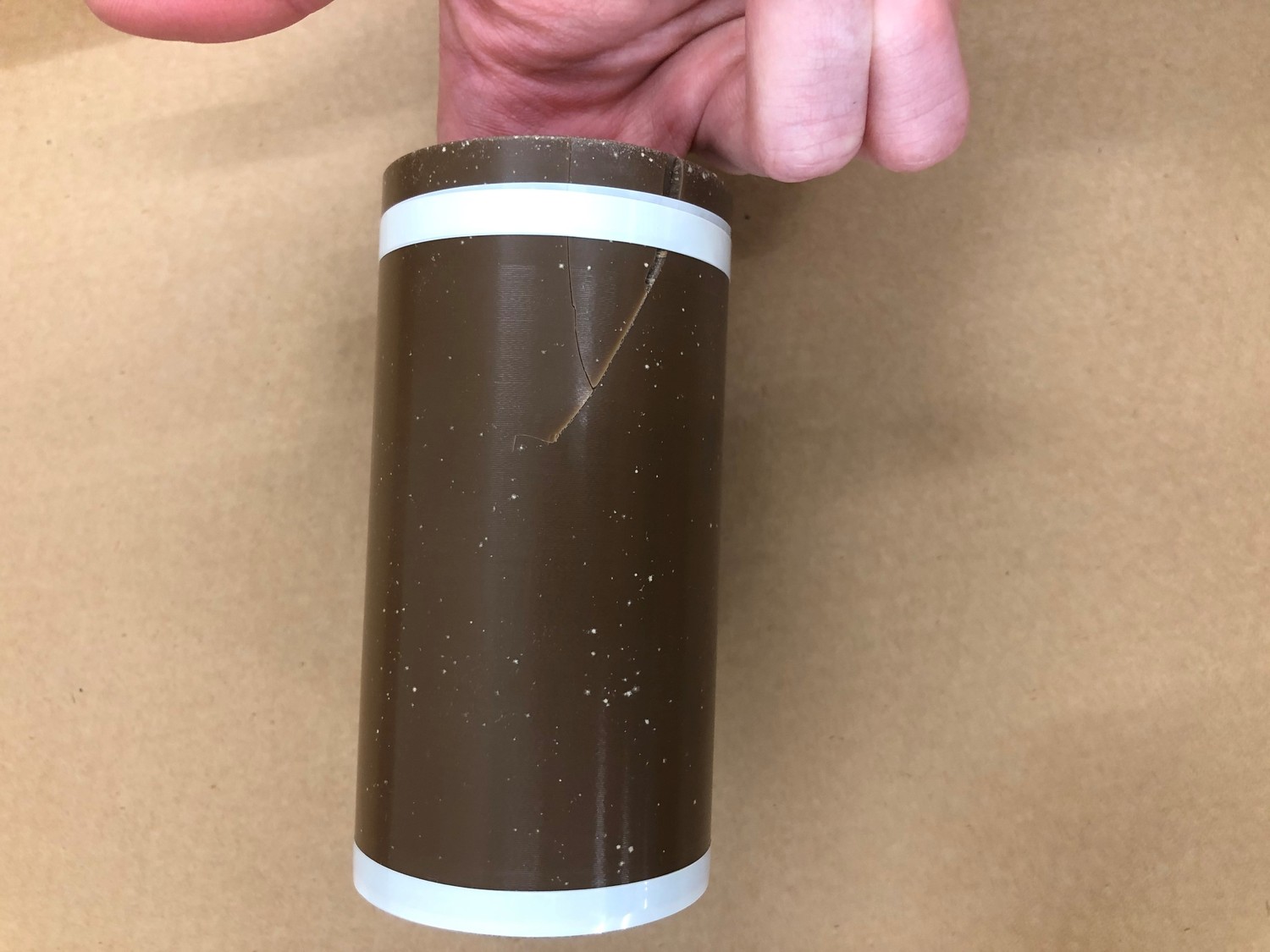    | These cylinders are referenced in WHR Rivers' Field notes (12070-12073). In: Haddon Papers 12000-12086. W.H.R. Rivers Collection. Box 129. Rare Manuscripts Collection, Cambridge University Library. | ||||||
| C108/377 | No 5. Ranongga | Unidentified | Simbo Island, Western Province, British Solomon Islands Protectorate | 14 May 1908 – 05 January 1909 | This cylinder has not been digitised as it is badly cracked. | Ranongga culture, Solomon Islands | Field recordings | Rivers, William Halse Rivers (1864-1922); Hocart, Arthur Maurice, (1883–1939) | Percy Sladen Trust Expedition to the Solomon Islands, 1908 | Brown wax cylinder | WHR Rivers and Arthur M Hocart 1908 New Georgia Group, British Solomon Islands Protectorate Cylinder Collection | British Library | 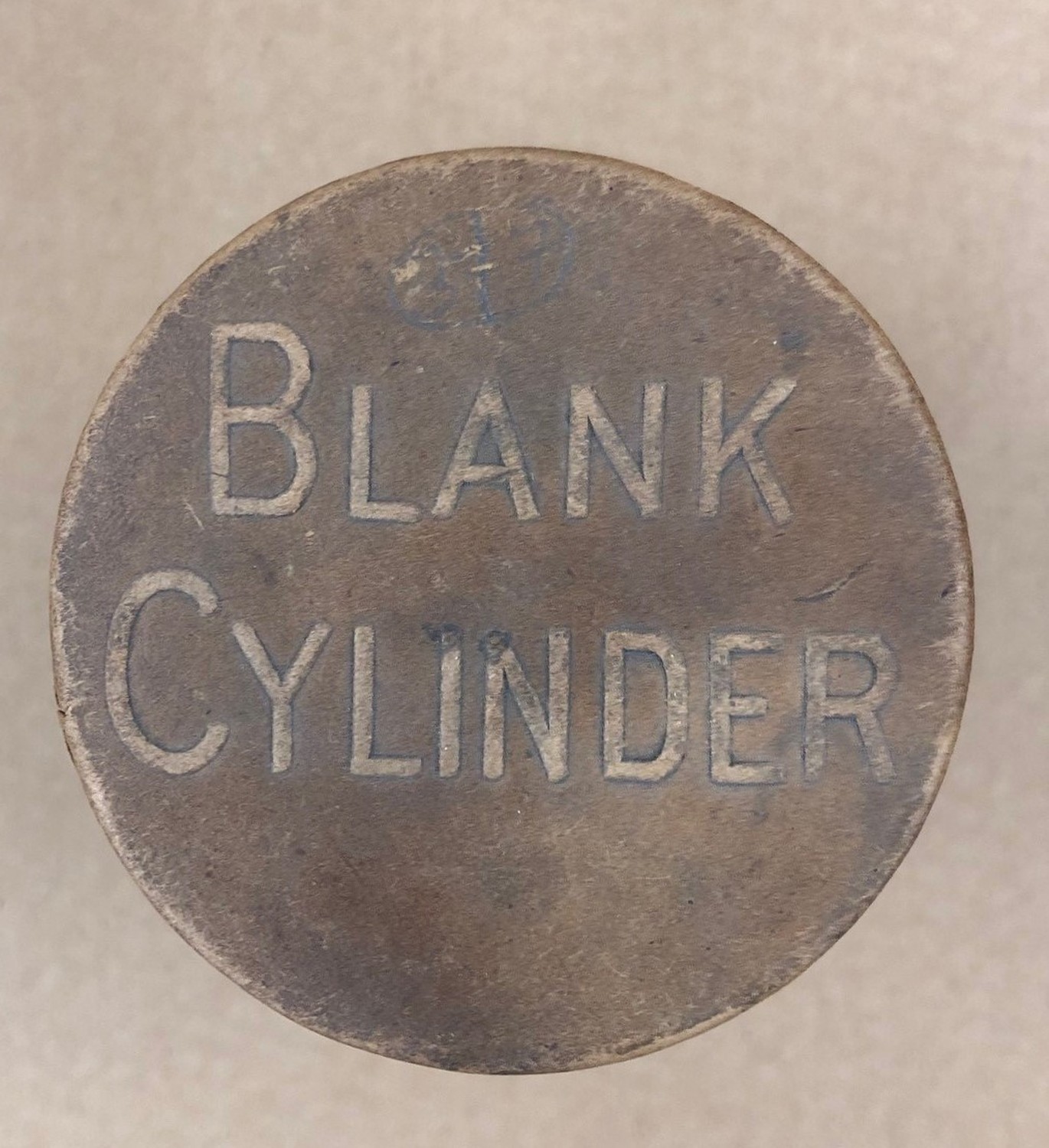 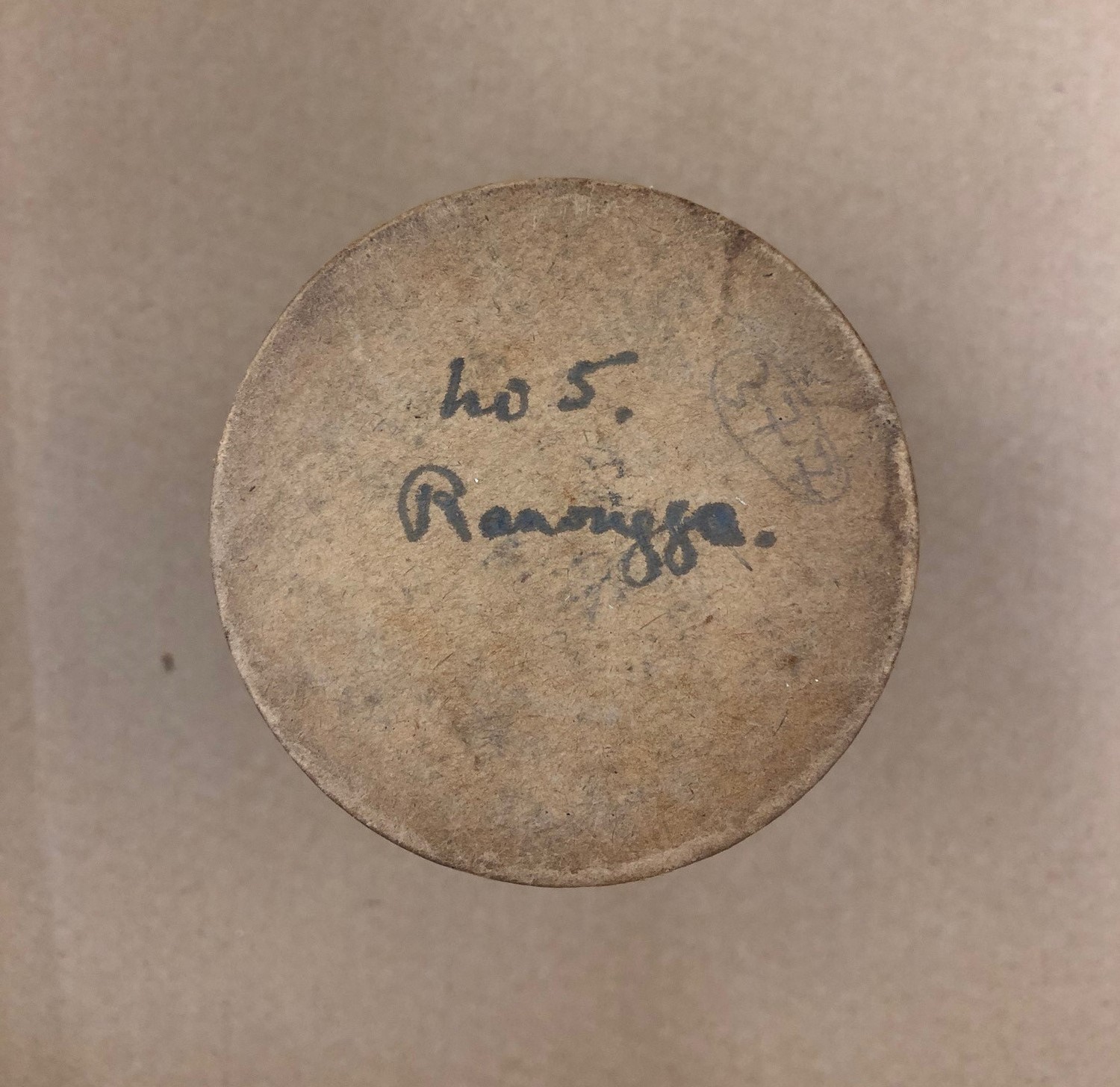 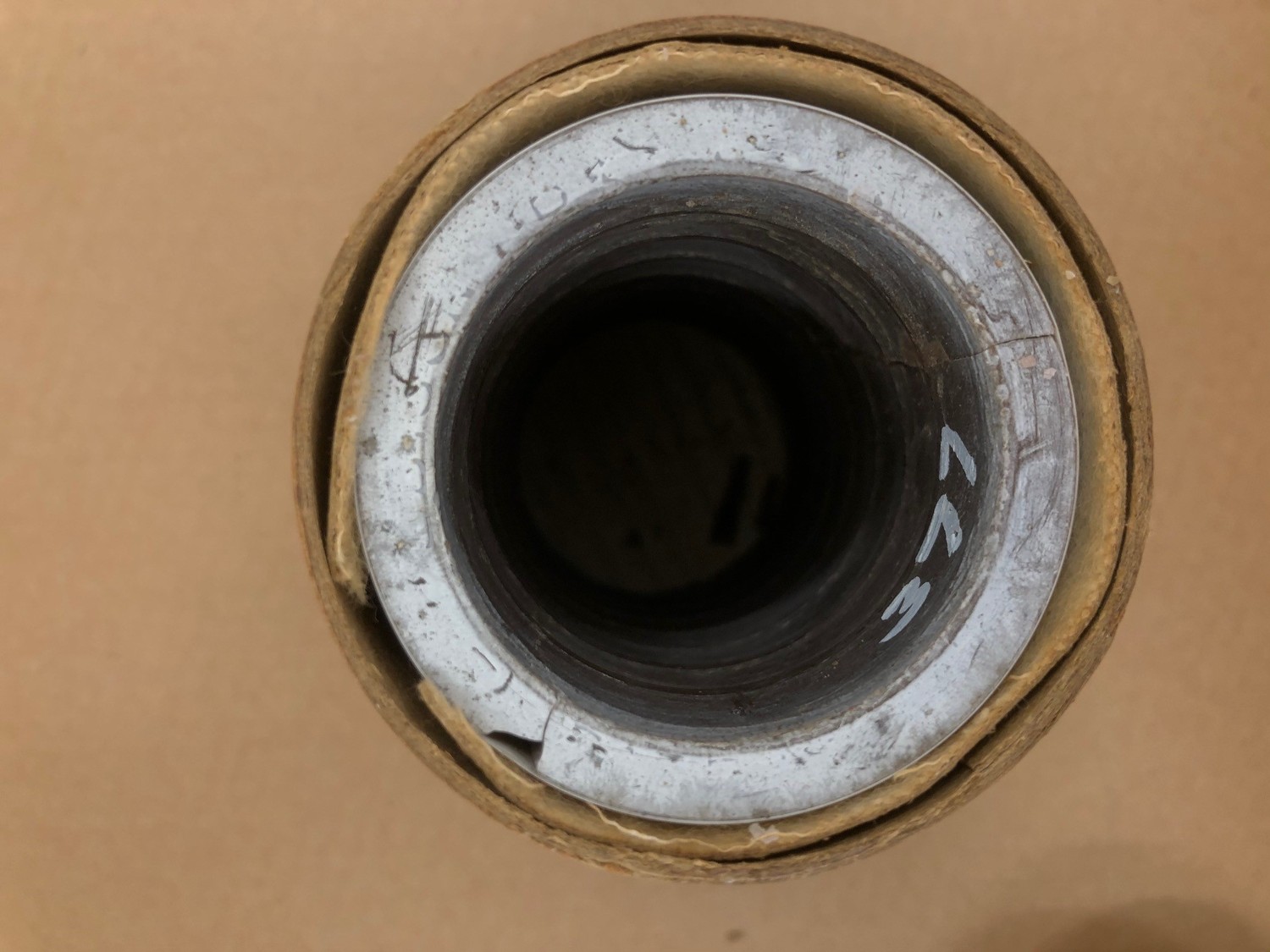 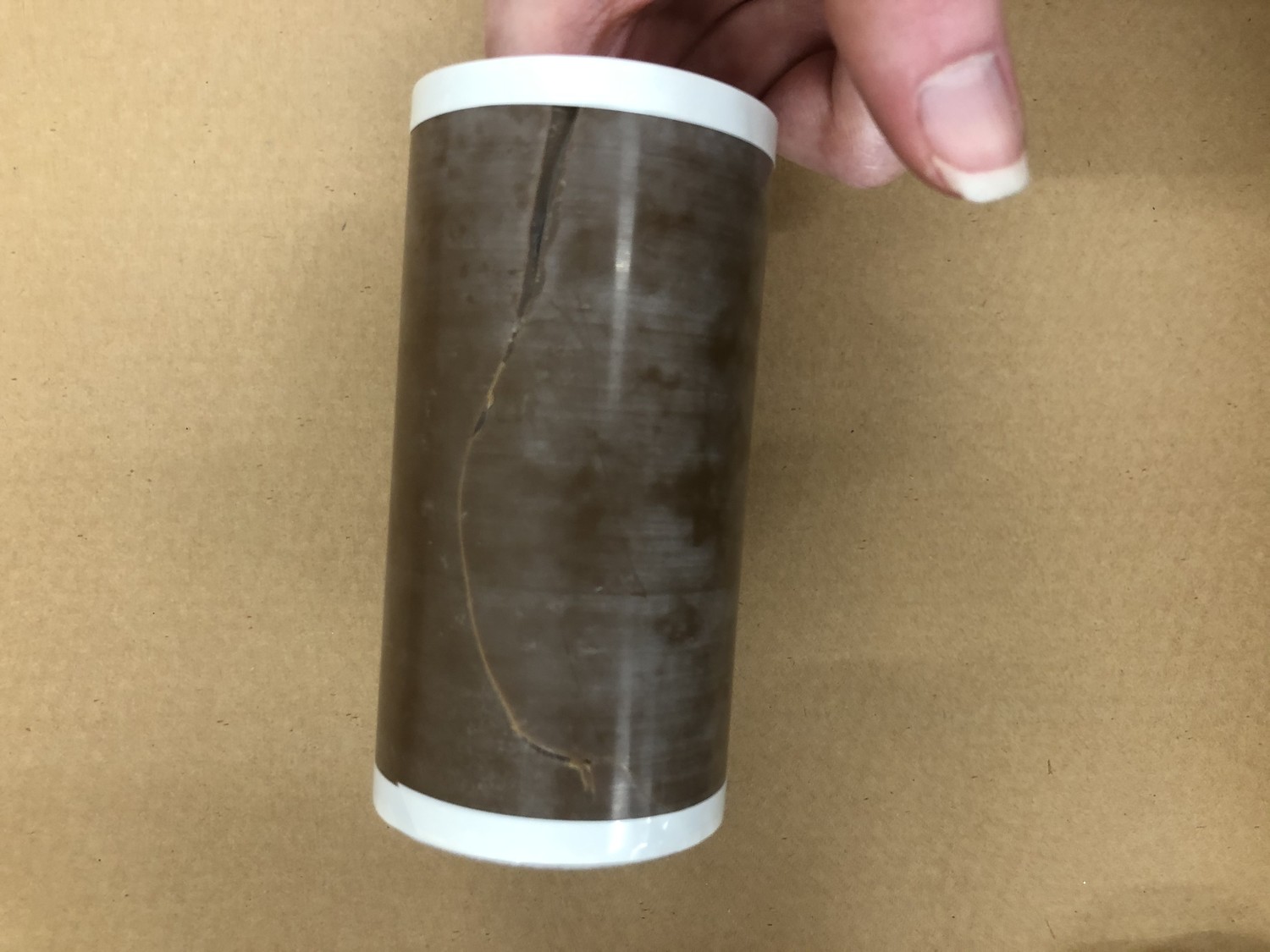   | These cylinders are referenced in WHR Rivers' Field notes (12070-12073). In: Haddon Papers 12000-12086. W.H.R. Rivers Collection. Box 129. Rare Manuscripts Collection, Cambridge University Library. | ||||||||
| C108/378 | No 7. Simbo | Pandanjiru (performer, male); Mbana (performer, male) | Simbo Island, Western Province, British Solomon Islands Protectorate | 13 June 1908 | 1. Ref note. 2. Aerophones (possibly bamboo flutes) playing long notes in harmony. This is probably a tune called meru-meru, played on a Keivu (type of flute). | Simbo culture, Solomon Islands | Reasonable quality recording but with surface noise due to cracked and bandaged cylinder. | Field recordings | Rivers, William Halse Rivers (1864-1922); Hocart, Arthur Maurice, (1883–1939) | 2'33" | Percy Sladen Trust Expedition to the Solomon Islands, 1908 | Brown wax cylinder | WHR Rivers and Arthur M Hocart 1908 New Georgia Group, British Solomon Islands Protectorate Cylinder Collection | British Library | 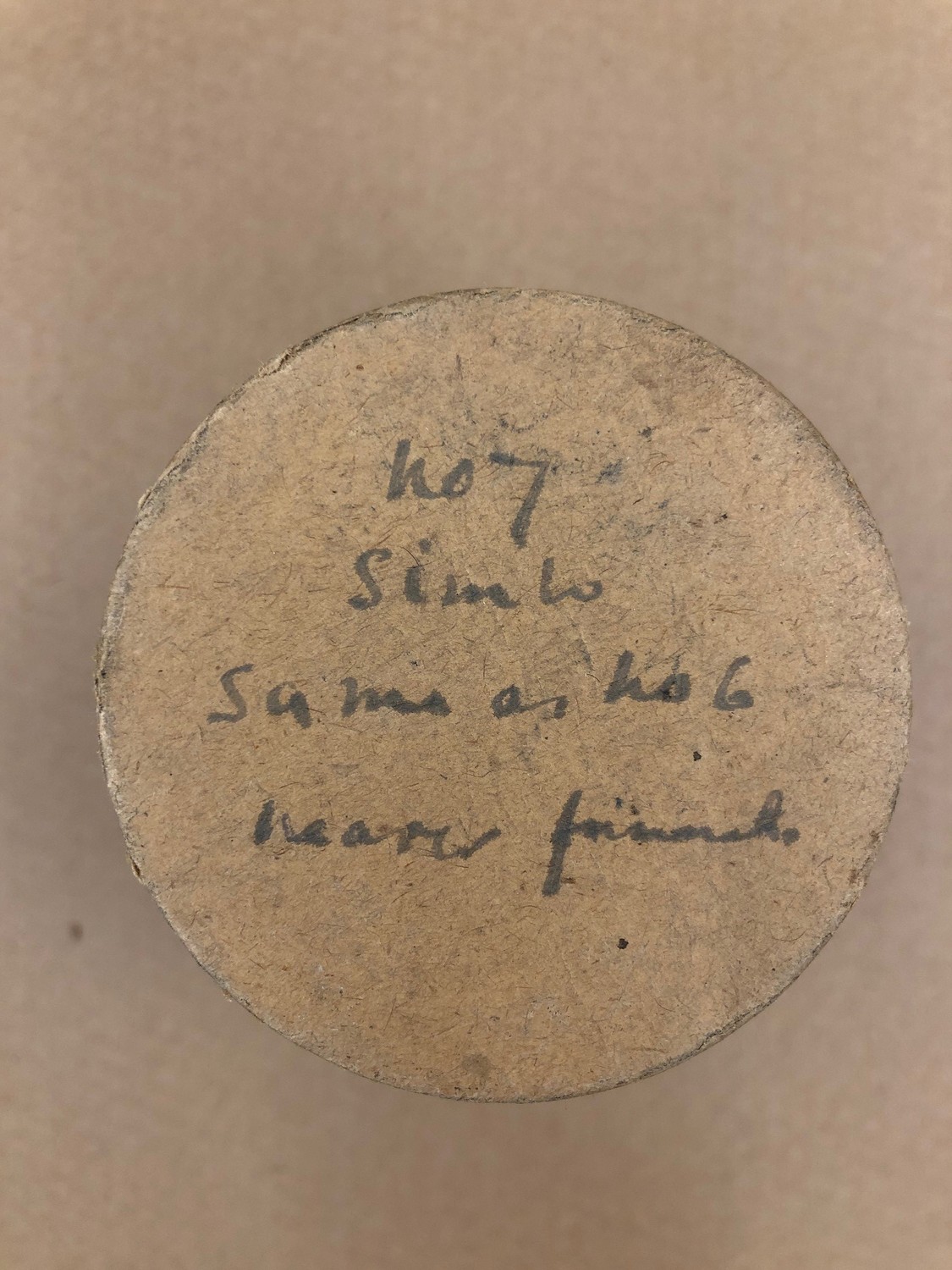 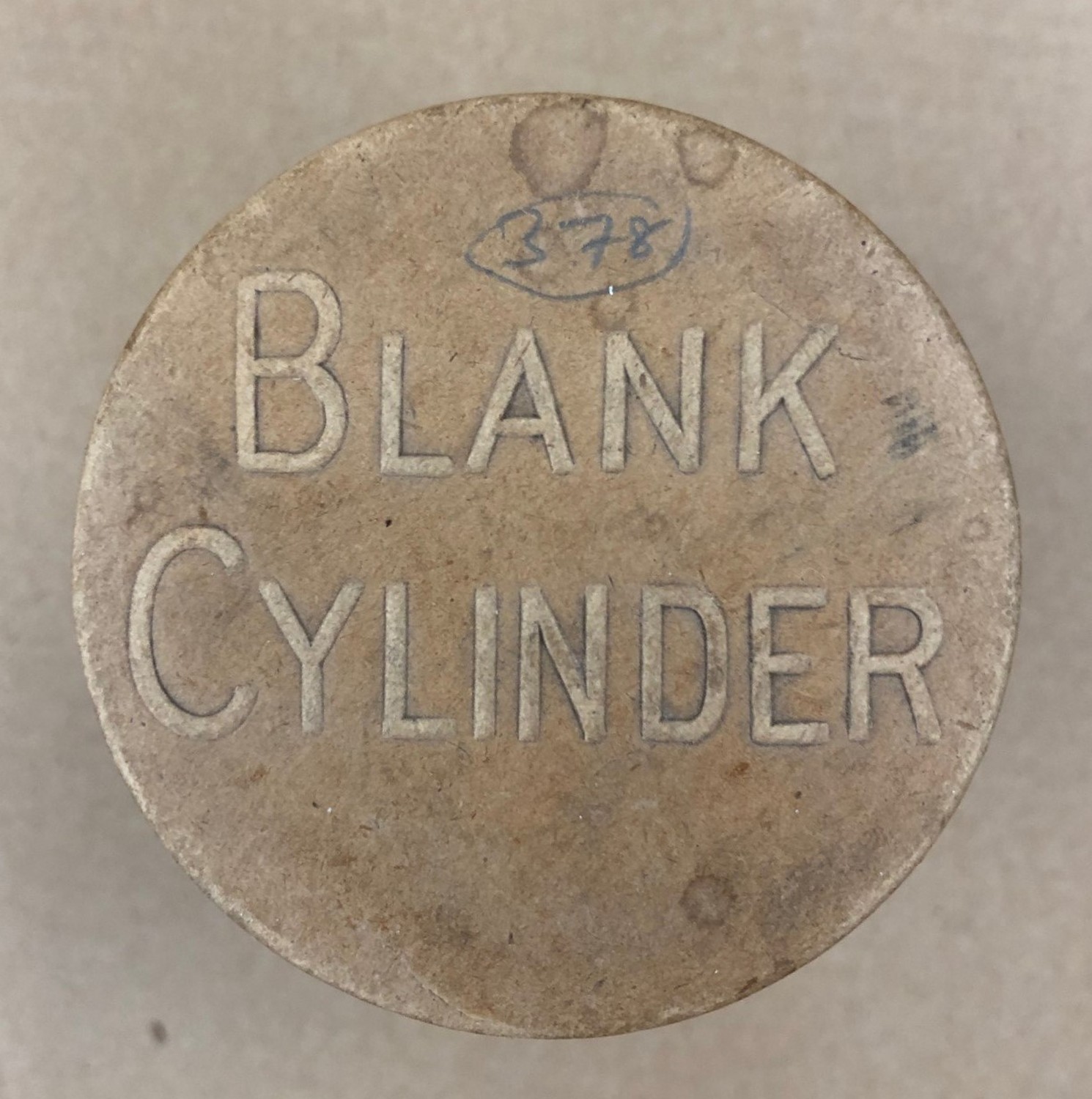 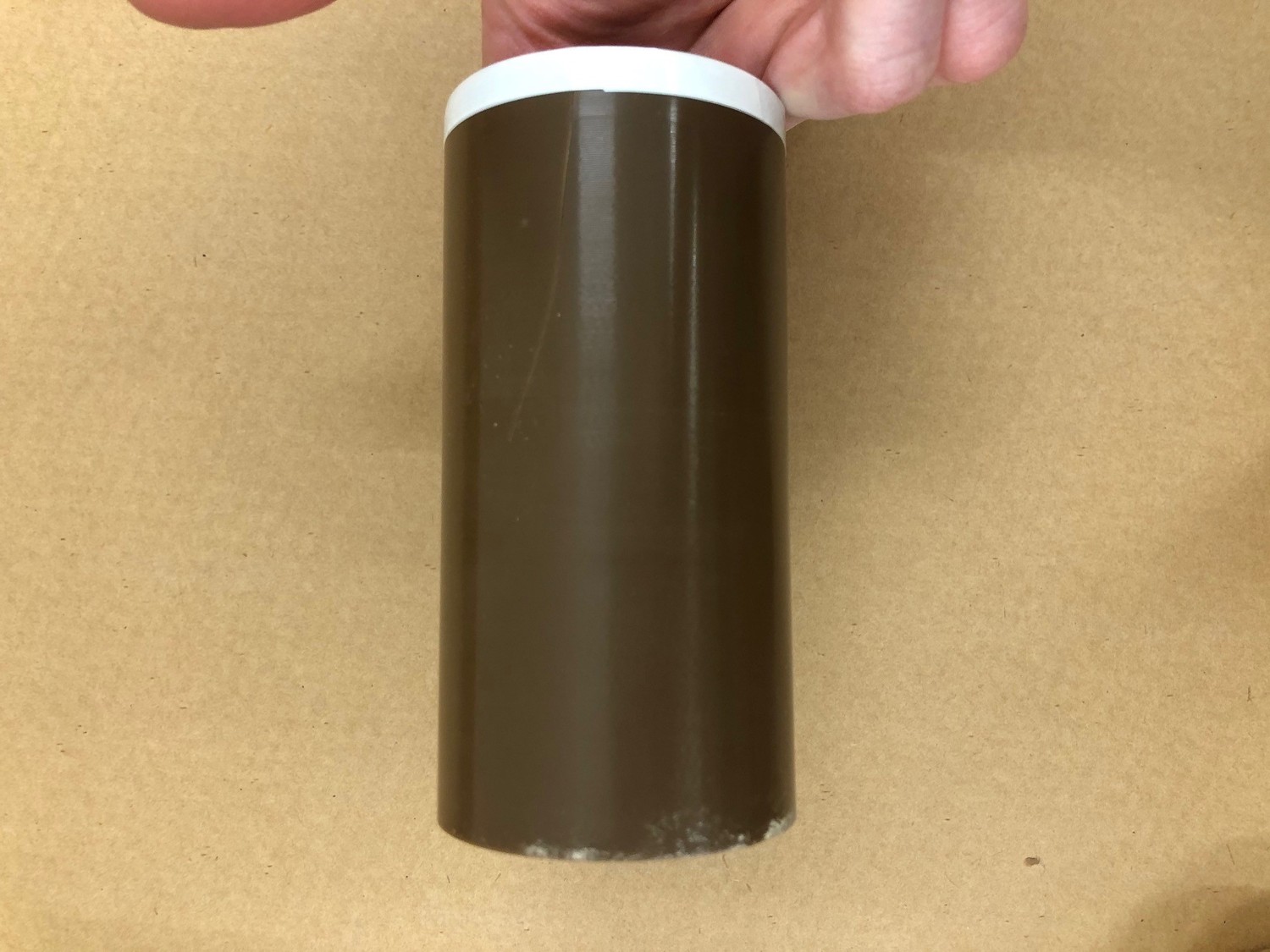    | These cylinders are referenced in WHR Rivers' Field notes (12070-12073). In: Haddon Papers 12000-12086. W.H.R. Rivers Collection. Box 129. Rare Manuscripts Collection, Cambridge University Library. | ||||||
| C83/1504 | The Ragged Prince - Tete Go Mama / Atelag | Miriam of Malavau (singer, female) | Port Vila, Efate, New Hebrides Condominium | January 1924 – June 1924 | From Malavau (Efate), Vanuatu | This cylinder is broken and could not be digitised. | Raff, Eric Maitland Kirk (1892-1927) | Eric Raff, 1924 | Black wax cylinder | Eric Raff 1924 Efate, New Hebrides Cylinder Collection | British Library | 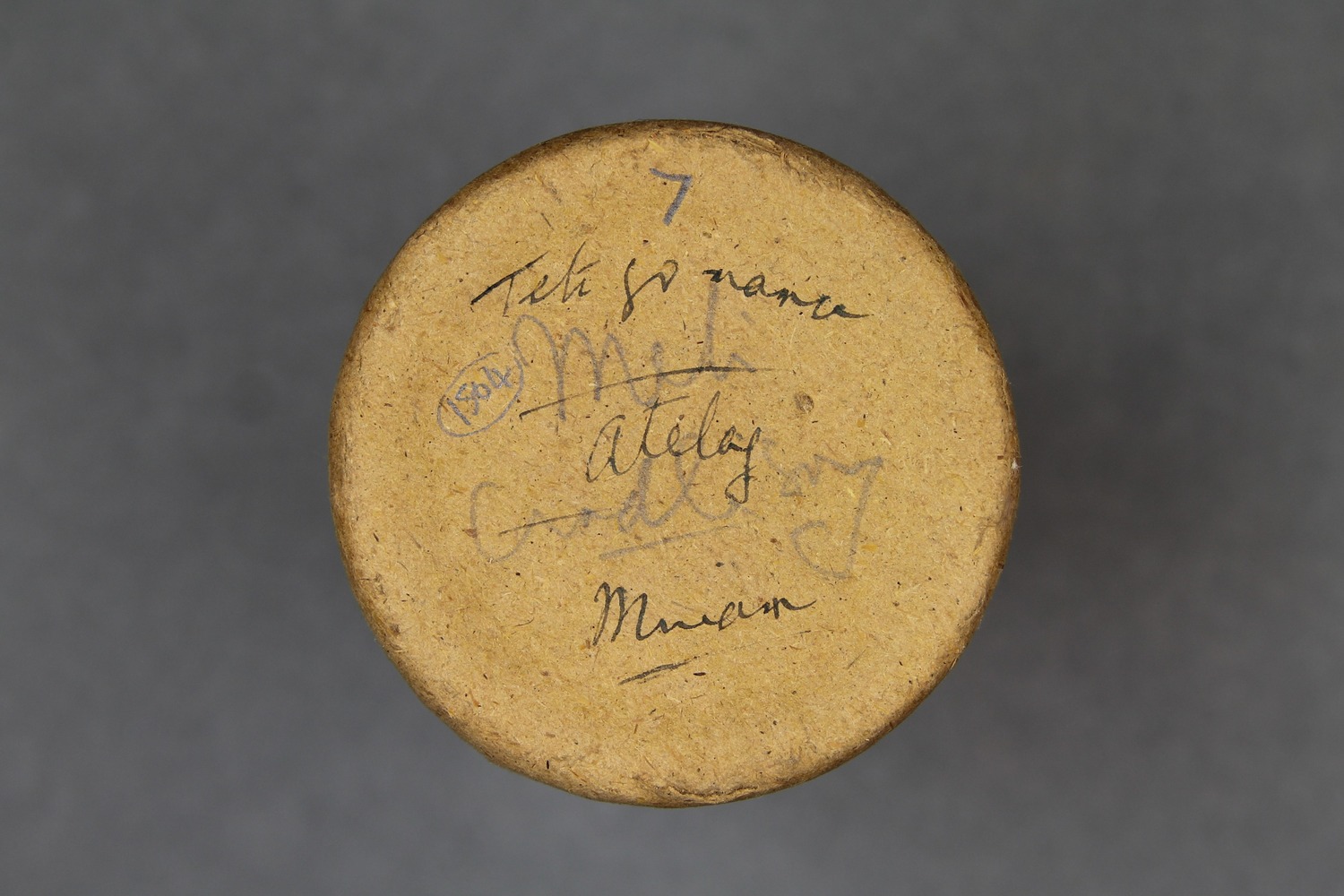  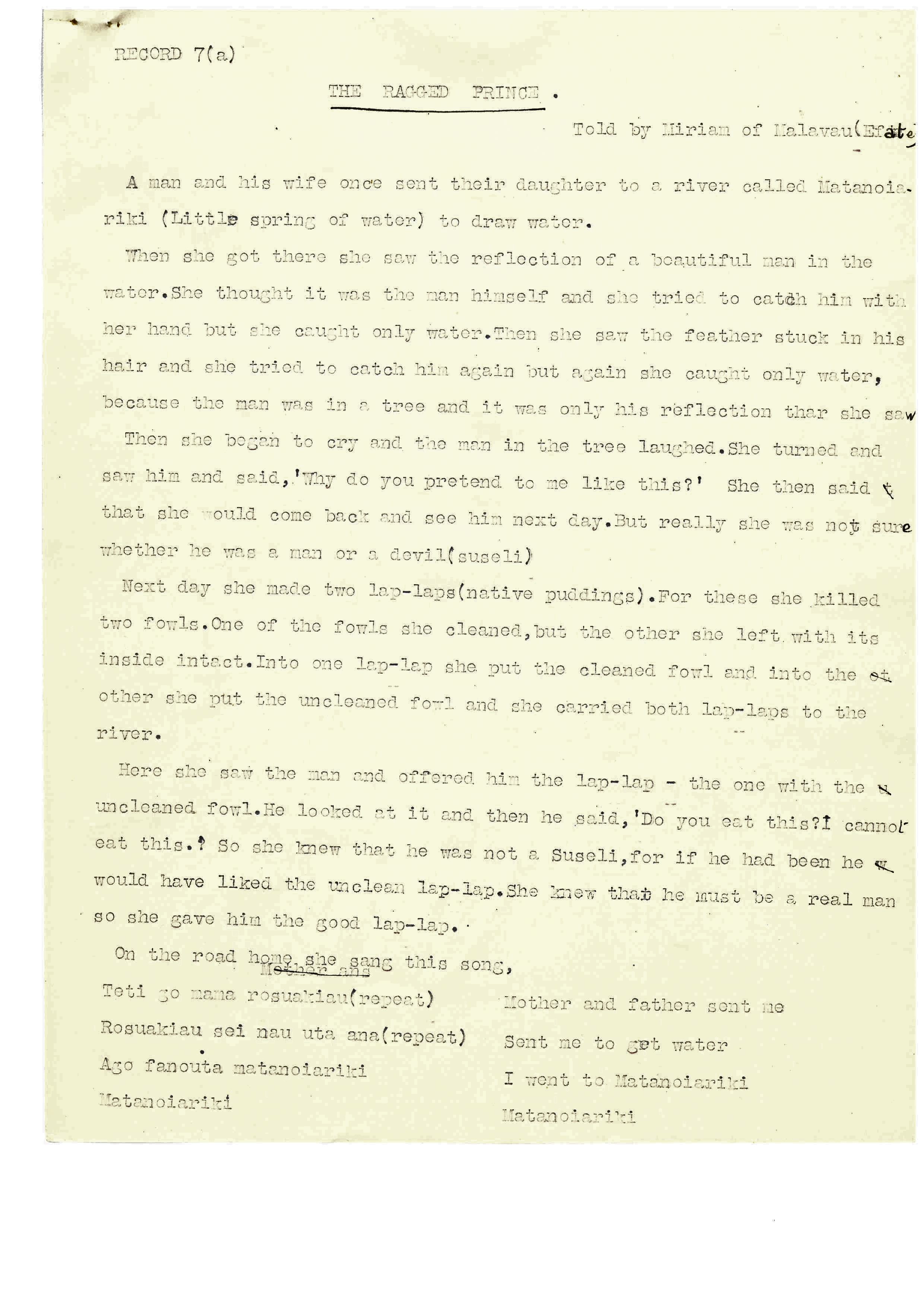 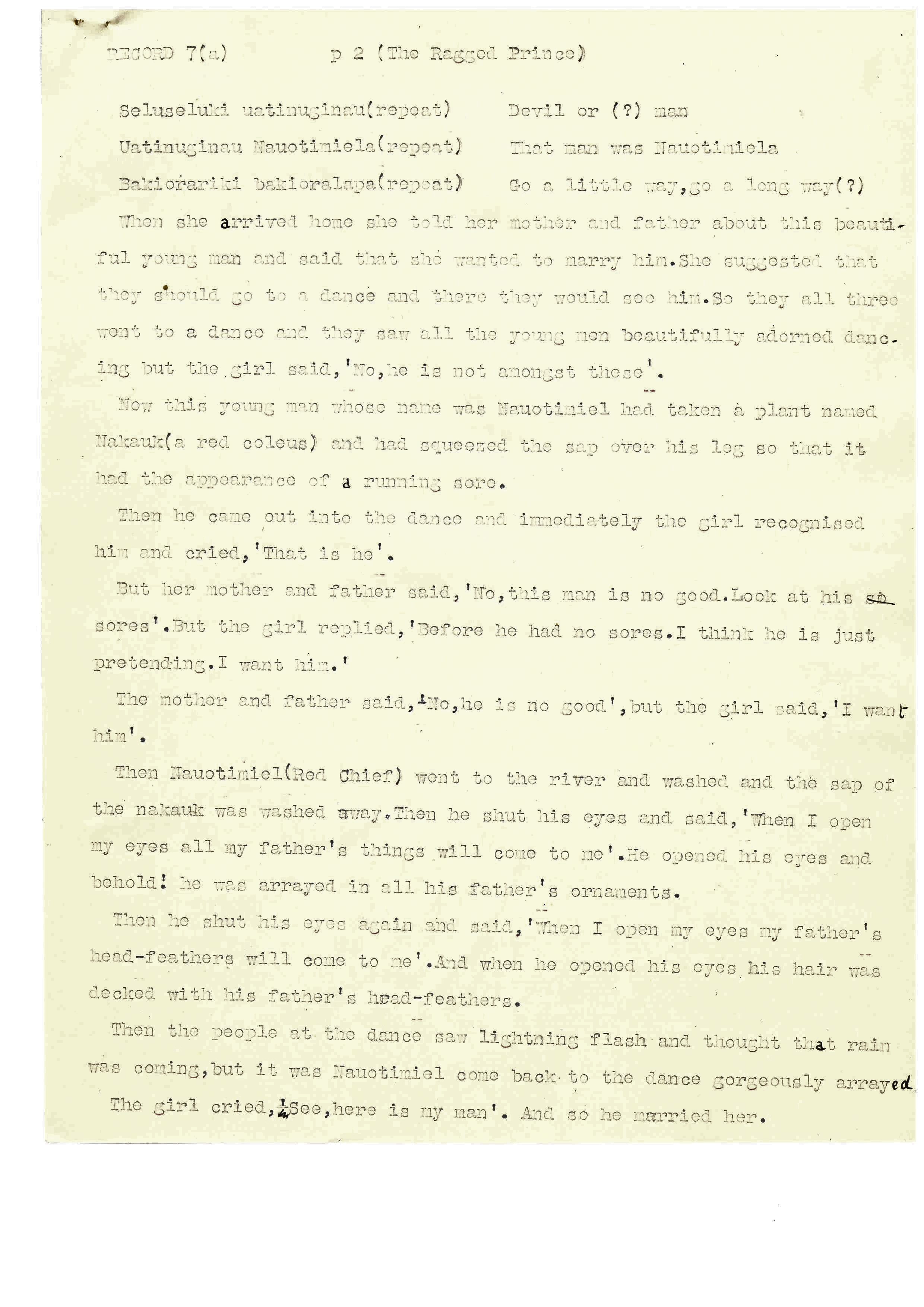   | Notes, transcriptions and translations produced by the recordist, held by the British Library’s Sound Archive | |||||||||
| C83/1506 | Dance Songs | Unidentified | Port Vila, Efate, New Hebrides Condominium | January 1924 – June 1924 | This cylinder is broken and could not be digitised. | Raff, Eric Maitland Kirk (1892-1927) | Eric Raff, 1924 | Black wax cylinder | Eric Raff 1924 Efate, New Hebrides Cylinder Collection | British Library | 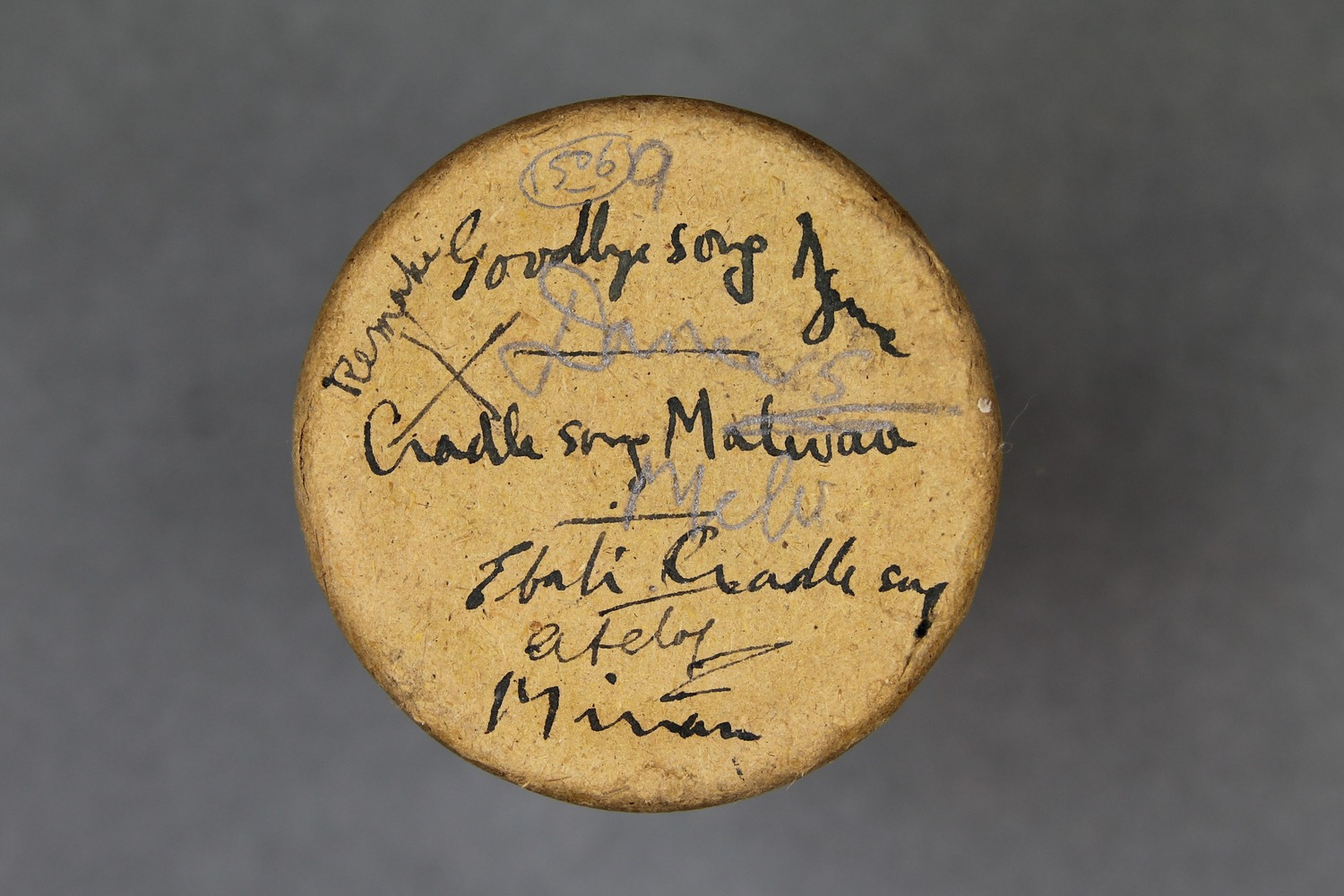 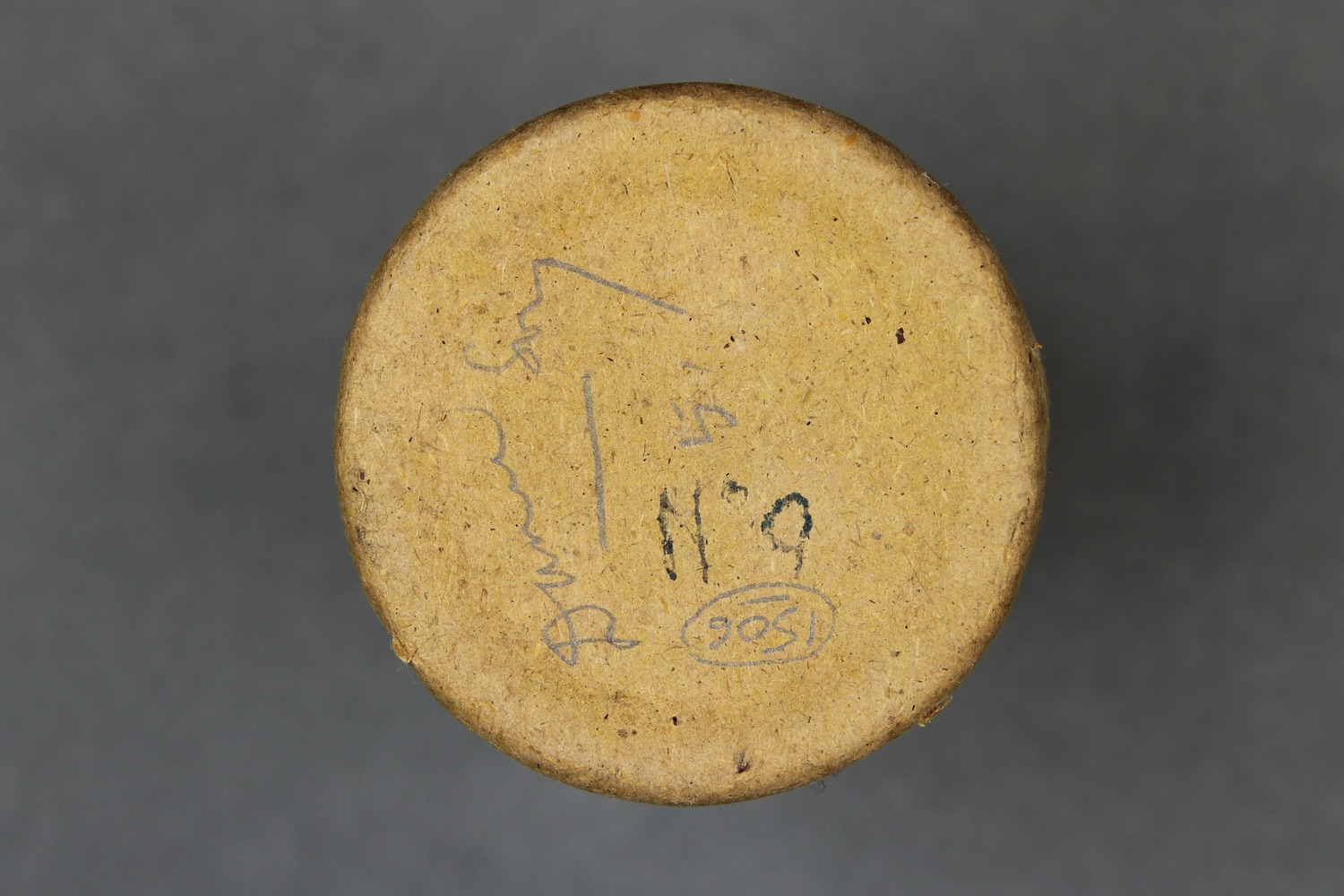 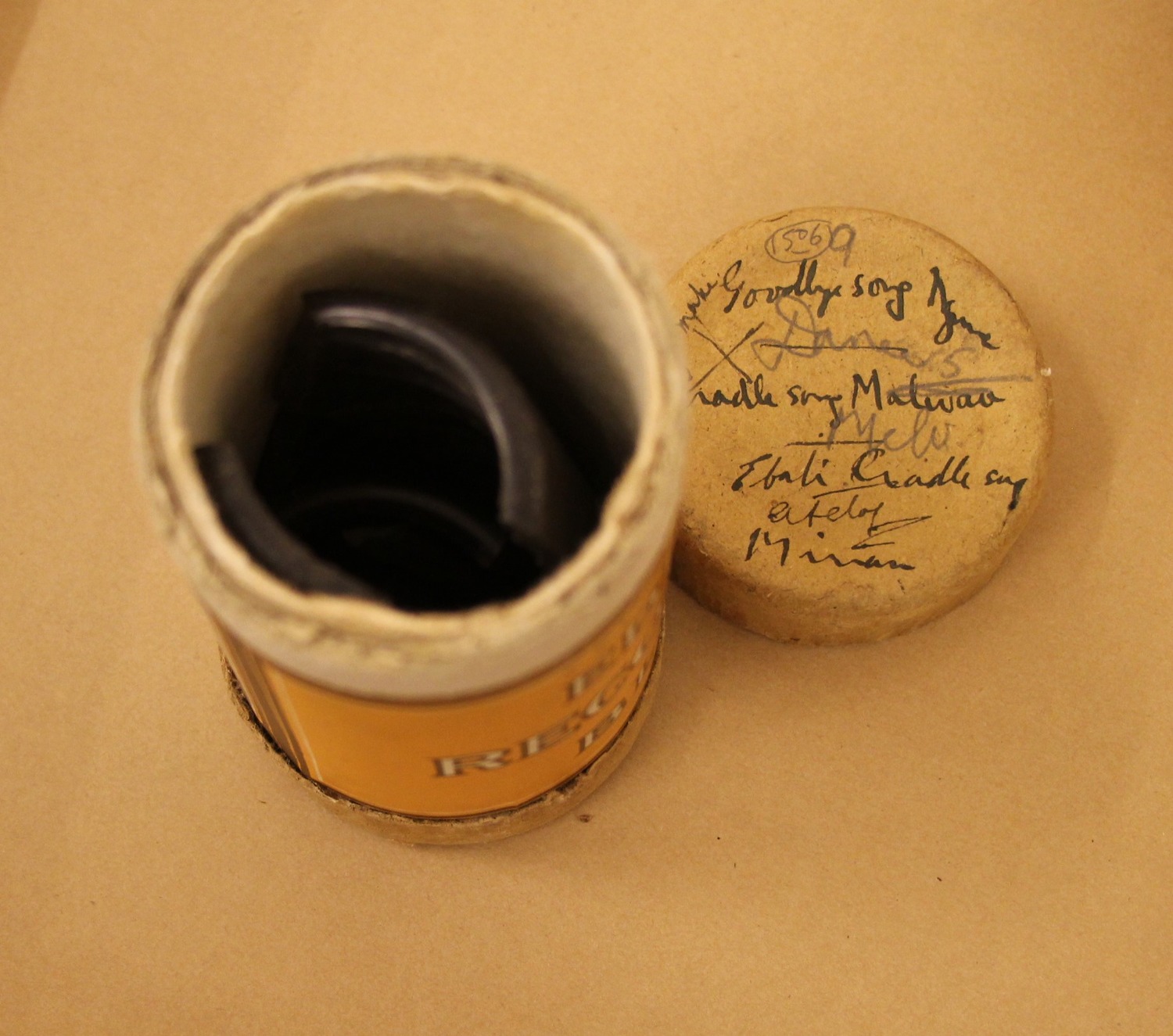     | Notes, transcriptions and translations produced by the recordist, held by the British Library’s Sound Archive | ||||||||||
| C83/1508 | Song - Meny of Fila | Unidentified | Port Vila, Efate, New Hebrides Condominium | January 1924 – June 1924 | This cylinder is broken and could not be digitised. | Raff, Eric Maitland Kirk (1892-1927) | Eric Raff, 1924 | Black wax cylinder | Eric Raff 1924 Efate, New Hebrides Cylinder Collection | British Library | 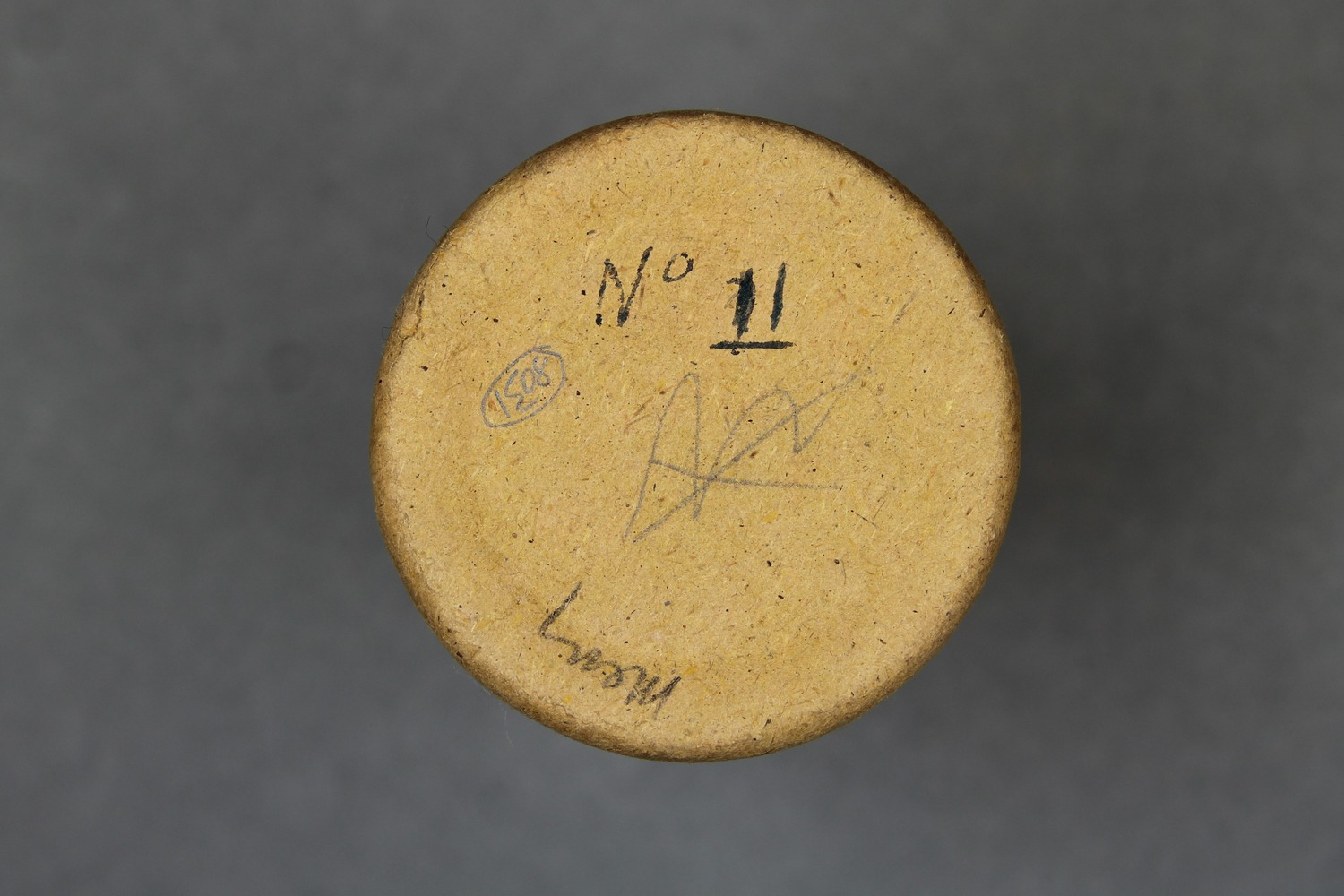 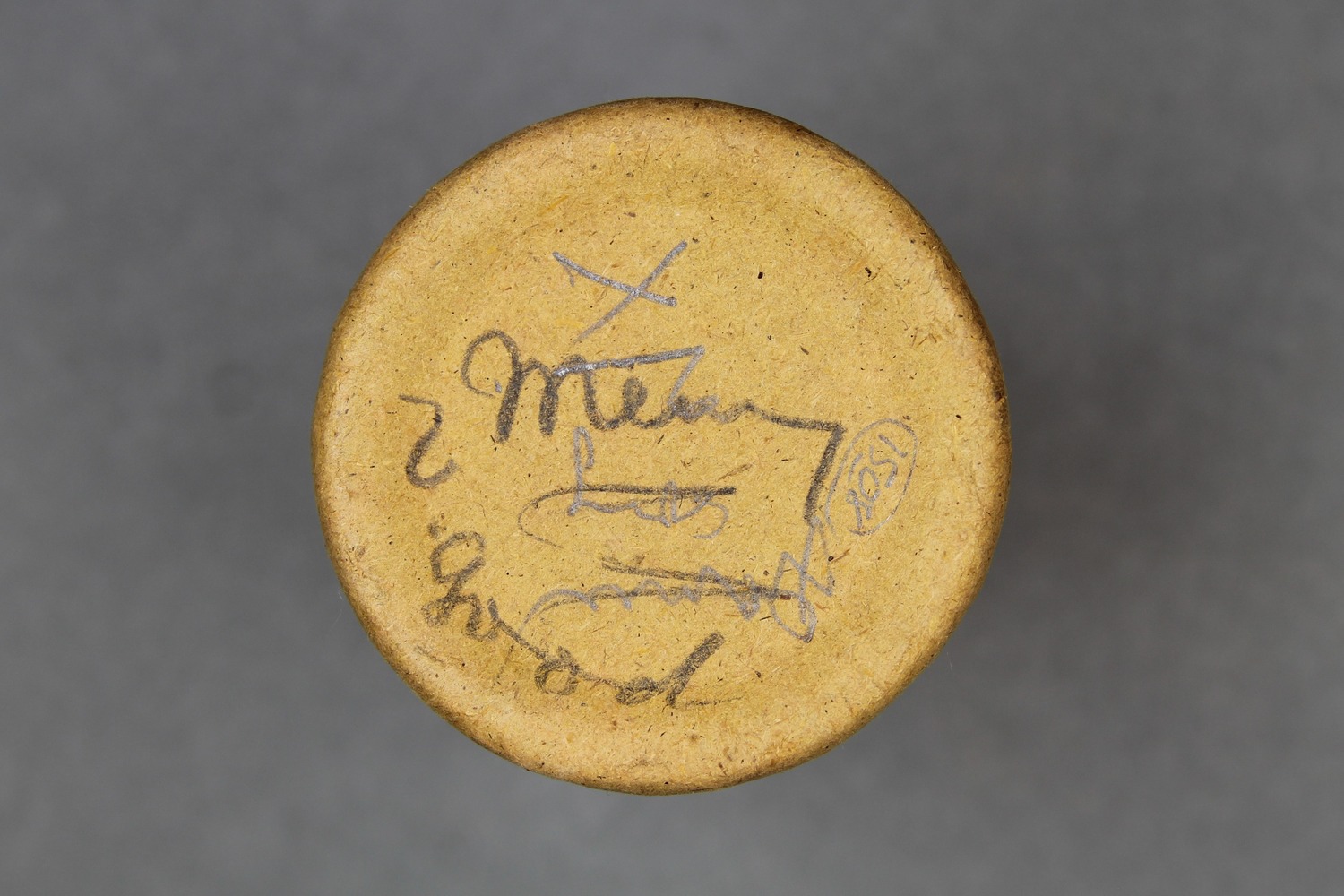     | Notes, transcriptions and translations produced by the recordist, held by the British Library’s Sound Archive | ||||||||||
| C80/471 | Ali and Ontong | Ali, Mahmoud (singer, male); Ontong, Charlie (singer, male) | Torres Strait Islands, Colony of Queensland | 23 May 1898 – 20 July 1898 | 1. Announcement: "Song, by Mahmoud Ali." 2. Unaccompanied male vocal solo. 3. Announcement: "Song by Charlie Ontong." 4. Unaccompanied male vocal solo. No further information. | From Indonesia; Malaysia | Very poor quality recording - almost inaudible. It is not clear whether Ali was present only on the outward journey from Mer / Murray Island to New Guinea or whether he was present for the entire New Guinea trip. The date range reflects the entire New Guinea leg. C80/471 and C80/479 (better quality) are duplicates. | Field recordings | 3'20" | 1898 Cambridge Anthropological Expedition to Torres Straits | Brown wax cylinder, Edison Bell | Alfred Cort Haddon 1898 Expedition (Torres Strait and British New Guinea) Cylinder Collection | British Library | 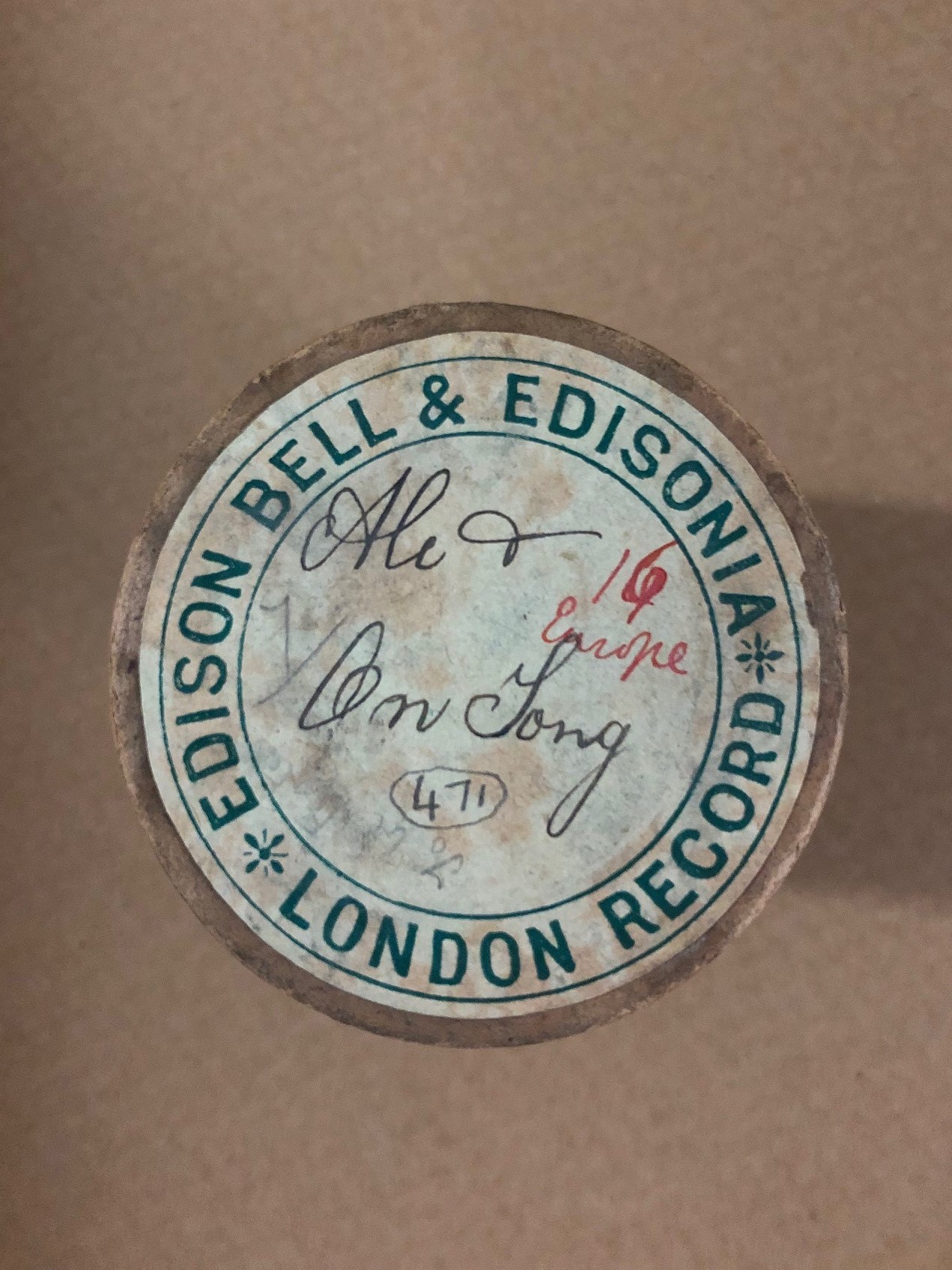      | ||||||||
| C80/479 | Ali and Ontong | Ali, Mahmoud (singer, male); Ontong, Charlie (singer, male) | Torres Strait Islands, Colony of Queensland | 23 May 1898 – 20 July 1898 | 1. Announcement: "Song, by Mahmoud Ali." 2. Unaccompanied male vocal solo. 3. Announcement: "Song by Charlie Ontong." 4. Unaccompanied male vocal solo. No further information. | From Indonesia; Malaysia | Reasonable quality recording but with weak signal and surface noise. It is not clear whether Ali was present only on the outward journey from Mer / Murray Island to New Guinea or whether he was present for the entire New Guinea trip. The date range reflects the entire New Guinea leg. C80/471 and C80/479 (better quality) are duplicates. | Field recordings | 3'45" | 1898 Cambridge Anthropological Expedition to Torres Straits | Brown wax cylinder, Edison Bell | Alfred Cort Haddon 1898 Expedition (Torres Strait and British New Guinea) Cylinder Collection | British Library | 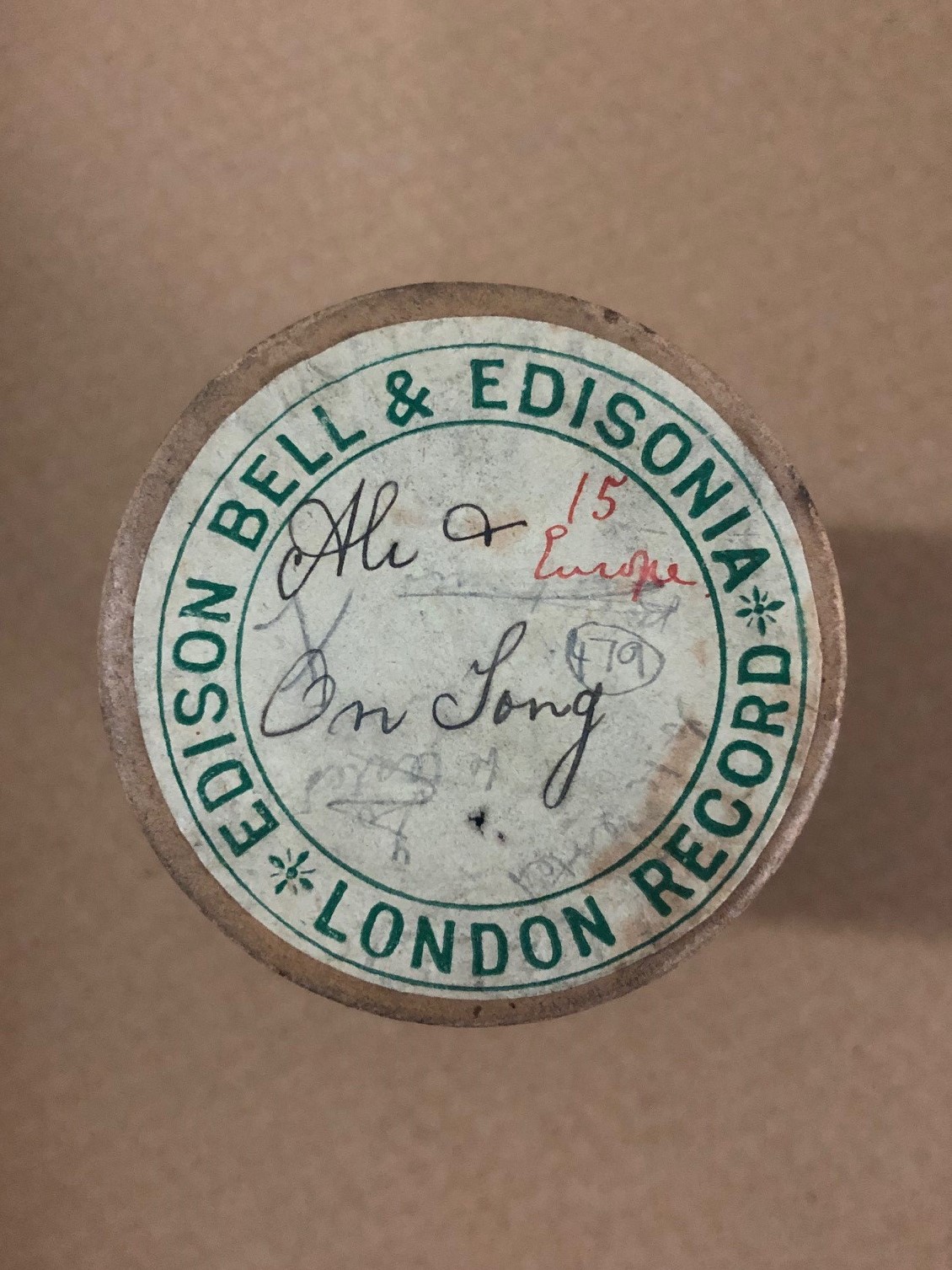      | ||||||||
| C80/1492 | Mota, Florida & Bugotu | Unidentified (speaker, male); Ray, Sidney Herbert (speaker, male) | 1898 | 1. Announcement: "Two extracts from letters from Mota and Nggela […]". 2. Male speech. 3. Announcement: “[…] Nggela”. 4. Male speech. 5. Announcement "Piece of writing from Bugotu, Isabel, Solomon Islands". 6. Male speech. No further information. Mota is an island and part of the Banks Islands of Vanuatu. Mota is also the name of the language spoken on the island. Florida Island or Nggela Sule is part of the Nggela Islands or Florida Islands of Central Province, Solomon Islands. Bugotu (or Bughotu) is a language spoken on Santa Isabel (or Ysabel) Island, Solomon Islands. Bugotu is also a district at the eastern end of Santa Isabel. | From Solomon Islands; Vanuatu | It is possible that this cylinder was recorded by Sidney H. Ray. Ray referenced Mota, Florida and Bugotu in Vol III of the Cambridge Reports and the inscription on the cylinder box also seems to correspond to Ray’s handwriting. It is likely that Ray is the speaker for the first four parts of the recording, although the final two parts seem to be a different unidentified speaker. Ray published an extract of Mota (along with a brief reference to Florida) in an earlier article (Somerville & Ray 1897). | Bughotu; Mota; Gela | Field recordings | Ray, Sidney H. | 2'55" | 1898 Cambridge Anthropological Expedition to Torres Straits | Brown wax cylinder | Alfred Cort Haddon 1898 Expedition (Torres Strait and British New Guinea) Cylinder Collection | British Library | 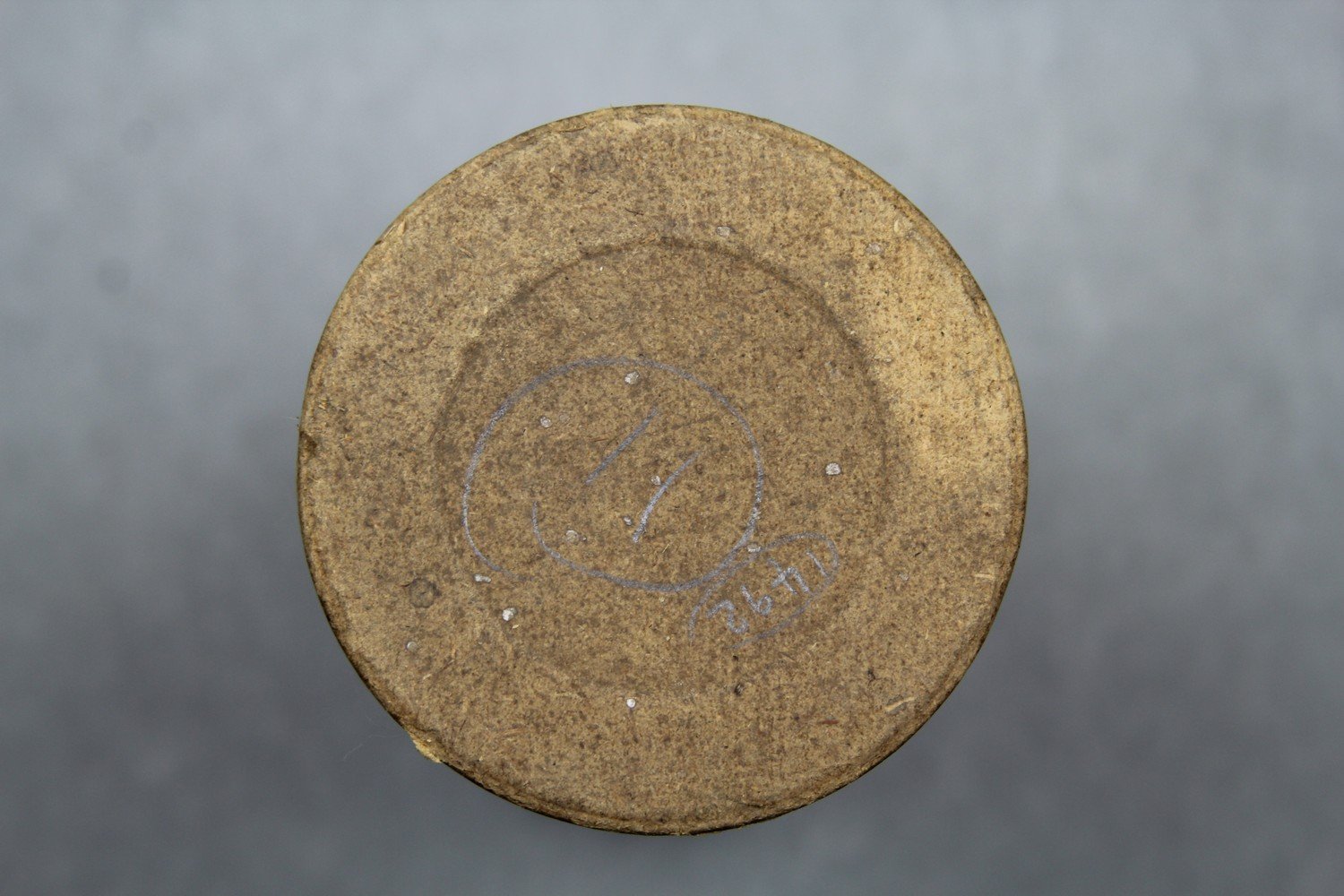 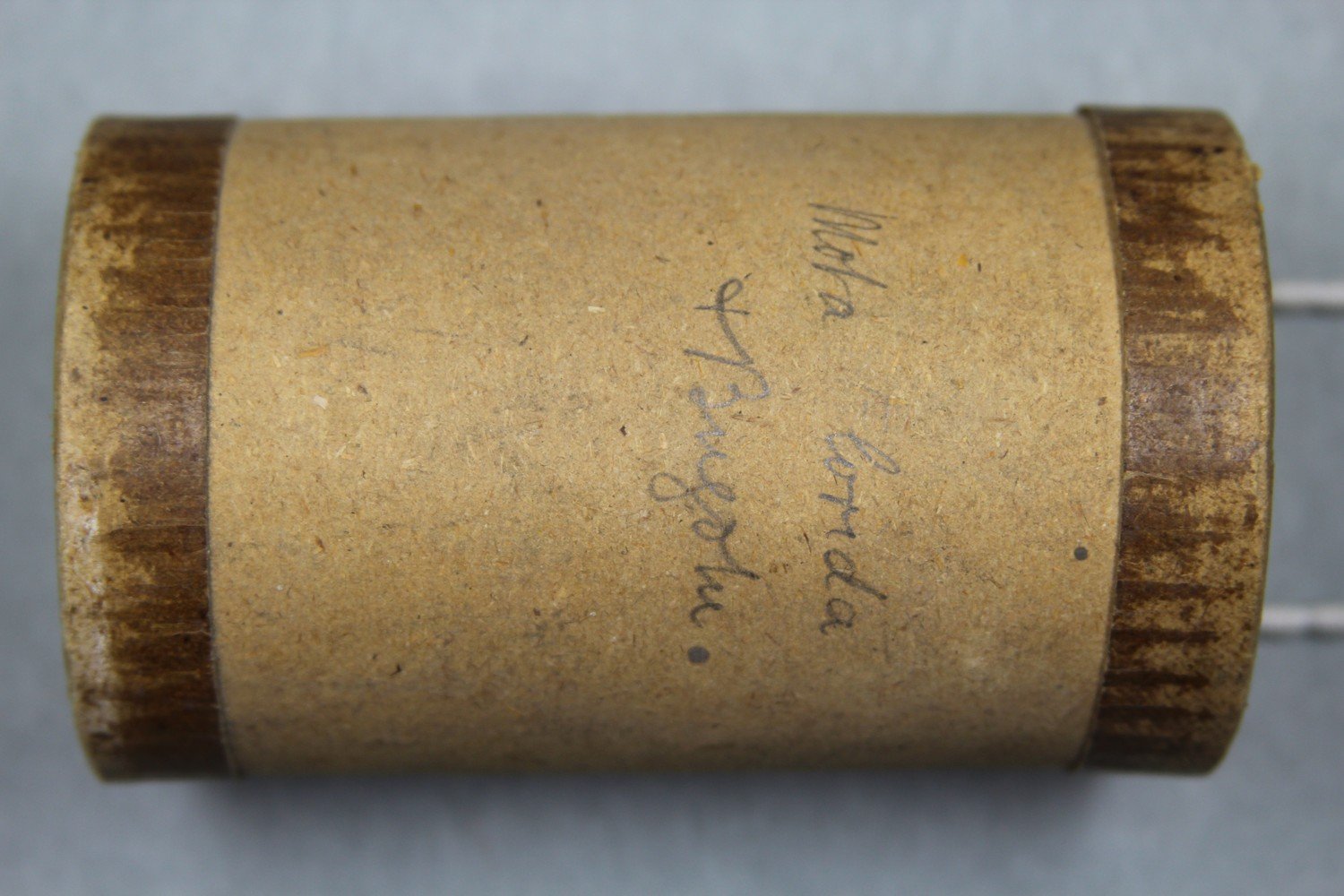     | Ray, Sidney Herbert. 1907. Reports of the Cambridge Anthropological Expedition to Torres Strait: Volume III, The Languages of Torres Strait. Cambridge: Cambridge University Press. British Library shelfmark General Reference Collection YC.2011.b.631. |
